Members’ Finds, July to December 2022
Following the success and popularity of our experimental Members' Finds project which has now been running for almost two years, here is our new page for July to December 2022 to which members are again invited to contribute. Please email Penny photos of anything you find - even of species already on previous lists. Try to illustrate all aspects of the fruit body, also remember not to reduce the photo size and to include the date, site, substrate, habitat plus any other useful features such as size, smell, etc. All extra clues are vital when identifying solely from photos. Ideally, try to collect at least one specimen and retain in a pot until you've heard back from Penny in case it might be needed for further investigation - records of rarities are of no use without voucher material as we have discovered to our cost previously.
HAPPY HUNTING!
Please bear in mind that only collections having the scope symbol  have been fully examined in order to make a determination. No guarantee can therefore be given on any identifications which don't show this symbol though all photos are checked and selected by Penny to the best of her ability. Basic accompanying notes are also Penny's. When a species has already been covered on a previous Members' Finds page a reference to that entry will be given rather than duplicating the identification tips.
have been fully examined in order to make a determination. No guarantee can therefore be given on any identifications which don't show this symbol though all photos are checked and selected by Penny to the best of her ability. Basic accompanying notes are also Penny's. When a species has already been covered on a previous Members' Finds page a reference to that entry will be given rather than duplicating the identification tips.
A regularly updated list of entries is provided in a choice of Latin binomial or English common names to facilitate the location of a particular species. There is also now a Masterlist available to facilitate previous locations of a particular species within the Finds pages.
•  Only entries marked with this symbol have been microscopically examined. There is no guarantee on identifications made of entries lacking this symbol though all photos are checked and selected by Penny to the best of her ability. Basic accompanying notes are also Penny's.
Only entries marked with this symbol have been microscopically examined. There is no guarantee on identifications made of entries lacking this symbol though all photos are checked and selected by Penny to the best of her ability. Basic accompanying notes are also Penny's.
•  Entries marked with this symbol have been confirmed or identified using DNA sequencing.
Entries marked with this symbol have been confirmed or identified using DNA sequencing.
Click on thumbnail to see full size
For the complete and regularly updated list of entries click Latin or English
For the LATIN MASTERLIST of Members' Finds since its inception click Masterlist.pdf Masterlist.xls
Contributors / Photographers: Allan, Paul; Catterson, John; Corran, Rob; Cullington, Penny; Dodd, Lisa; Dodsworth, Joanna; Douglas, Greg; Ebdon, Sarah; Ewan, Jackie; Ferguson, Gill; Fletcher, Neil; Goby, Paul; Grimbly, Chris; Knight, Tony; Launder, Jesper; Lawrence, Caroline; Long, Justin; Ness, Russell; Newcombe, Jackie; Nicholson, Wendy; Padmore, Andrew; Plummer, Stephen; Read, Helen; Schafer, Derek; Seward, Linda; Simpson, Bob; Webb, Barry; Williams, Claire; Wills, Jim.
Entries with a green background indicate rare sightings 57 |
Entries with a yellow background indicate species new to Buckinghamshire 24
|
Entries with a blue background indicate species new to UK 4
|
December 31st 2022
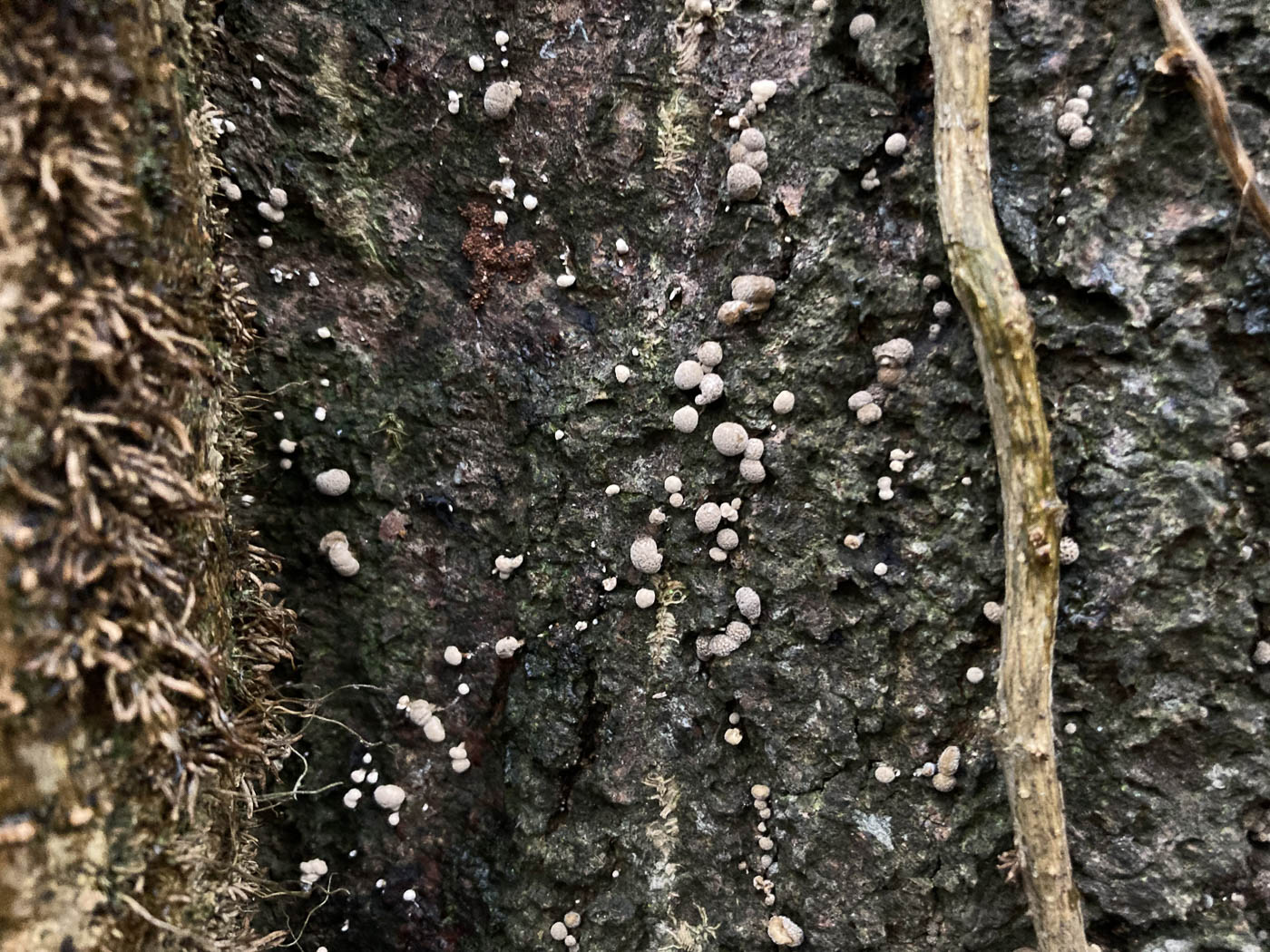
 |
December 31st Phleogena faginea (Fenugreek Stalkball) 
On trunks of both Beech and Birch at Burnham Beeches Russell Ness found these tiny 'slime-mould-like' fungi amongst the crevices in the bark. He managed to extricate a few (photo 2) to take home and examine and to confirm that they weren't - for instance - a species of Physarum though they look extraordinarily like one! He described them as having tough little fruitbodies, quite rubbery and with solid centres, and also noted the strong 'curry' smell as he opened their pot, so these unusual basidomycetes are very different from slime moulds for which they are undoubtedly often mistaken. We have two previous entries in Finds: 2021 January 28th and 2020 January 12th
|
December 30th 2022
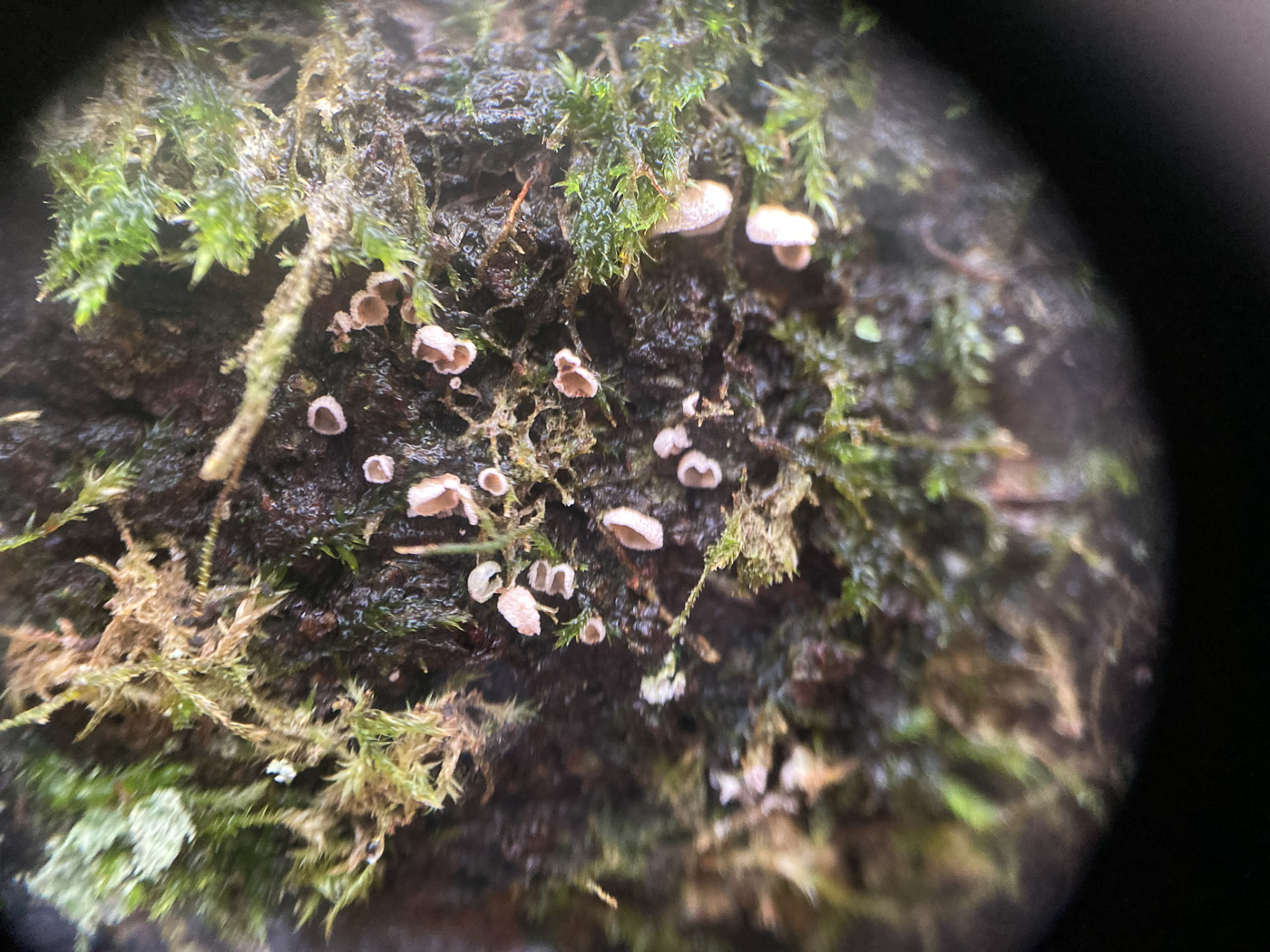
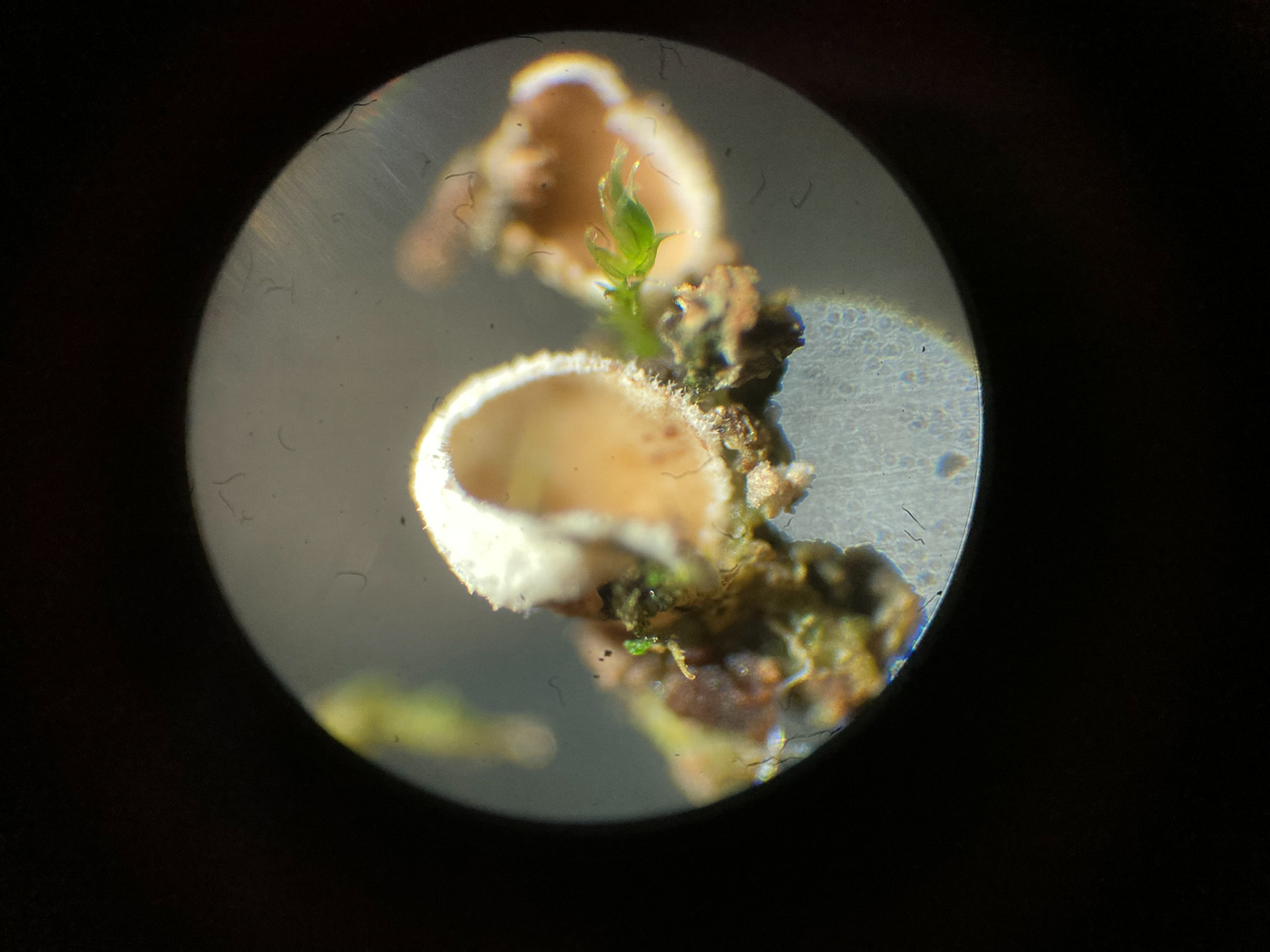 |
December 30th Chromocyphella muscicola (Moss Ear) 
Amongst the moss on various trunks in Burnham Beeches Russell Ness found several colonies of these tiny 'ears' , only 3mm across at most - not often recorded and with just one previous county record from Rushbeds Wood in 2001 (therefore new to the site today). This is a Basidiomycete, a genus of about 5 species all associating with moss.
|
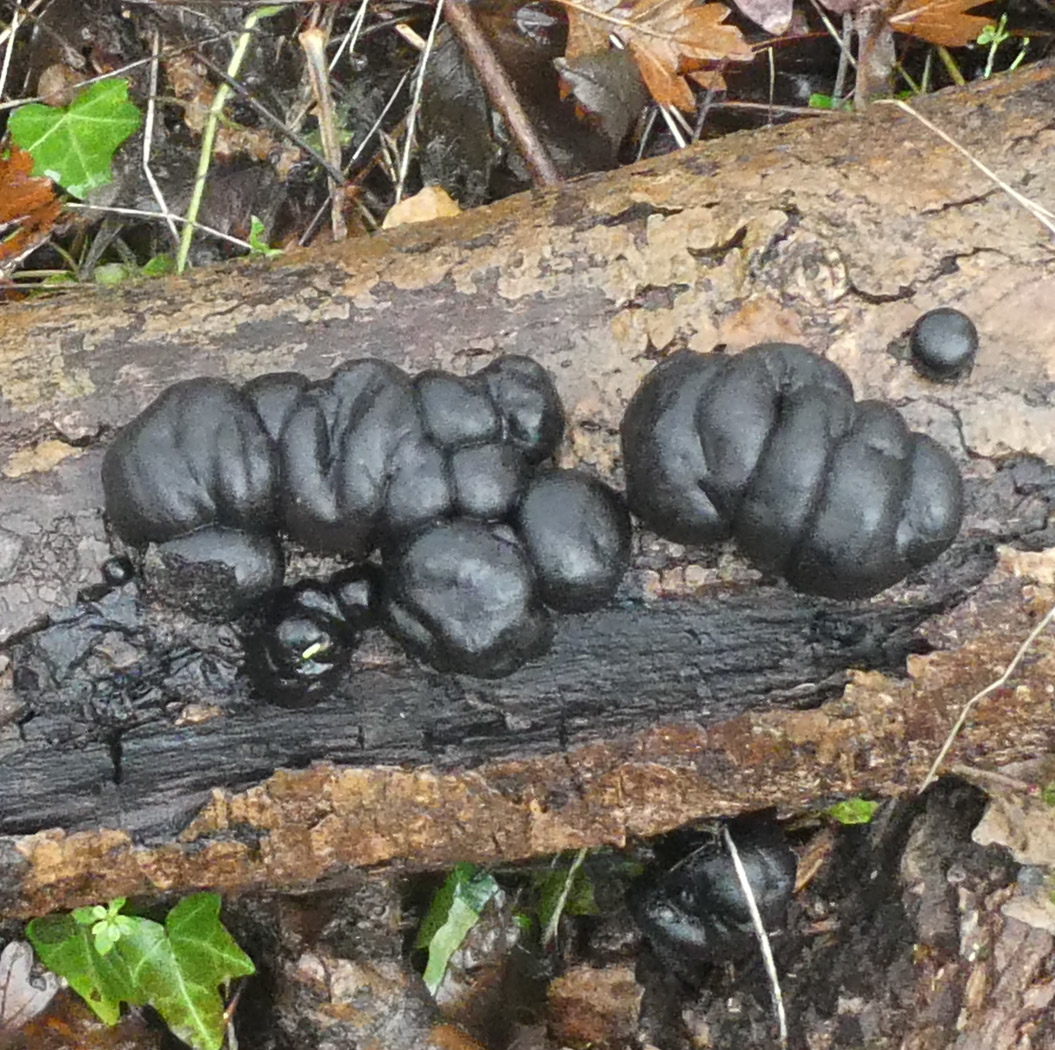 |
December 30th Daldinia concentrica (King Alfred's Cakes)
On a felled log (presumed to be Ash) in woodland near Chalfont St. Peter Jim Wills noticed this nice display of mature 'burnt cakes'. The species can be found commonly on Ash at all times of the year. See the Masterlist for other examples which show the cocoa brown immature fruitbodies as well as the concentric rings within.
|
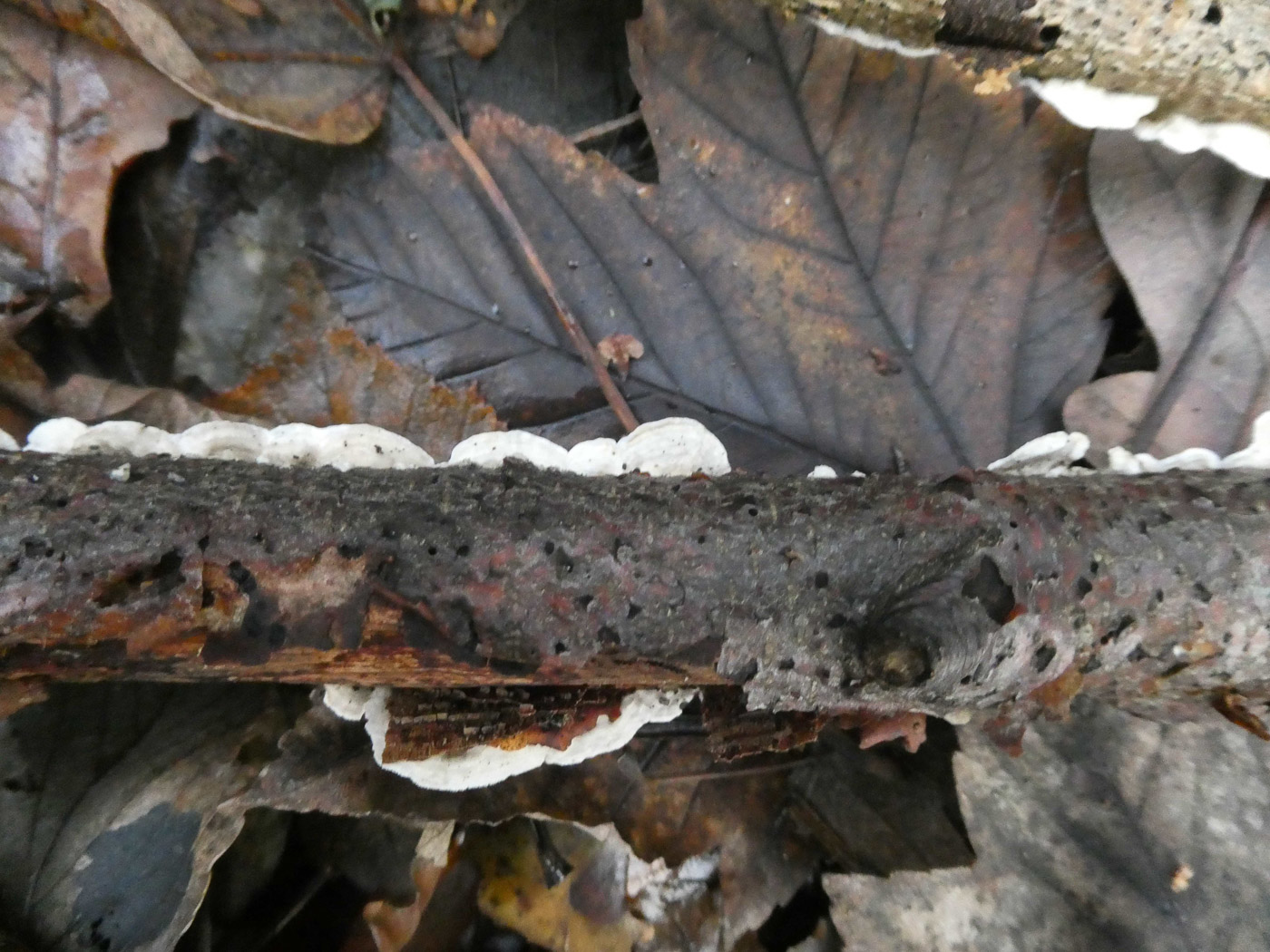
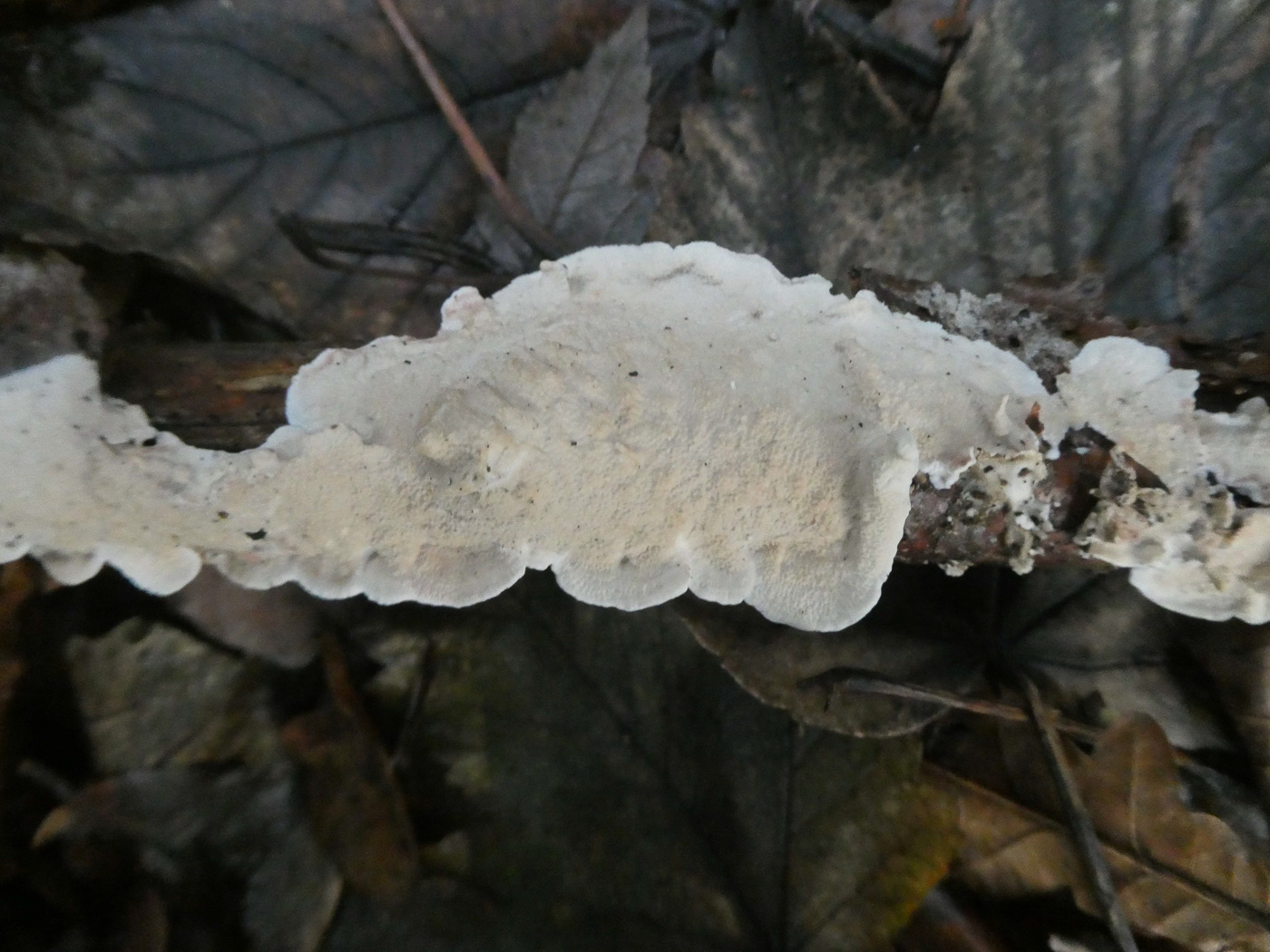
 |
December 30th Byssomerulius corium (Netted Crust) 
In woodland near Chalfont St. Peter Jim Wills noticed the white edges of this common corticioid species protruding from the underside of a deciduous fallen twig (photo 1). Turning it over revealed the complete flattish fruitbody (photo 2) and nearby he found a more mature example which had developed the typical reticulated surface reflected in its common name (photo 3). Another feature to help confirm its identity in the field is that it peels off its substrate very easily. Jim also checked the spore shape and size. See also in Finds 2020 Jan 6th.
|
December 29th 2022

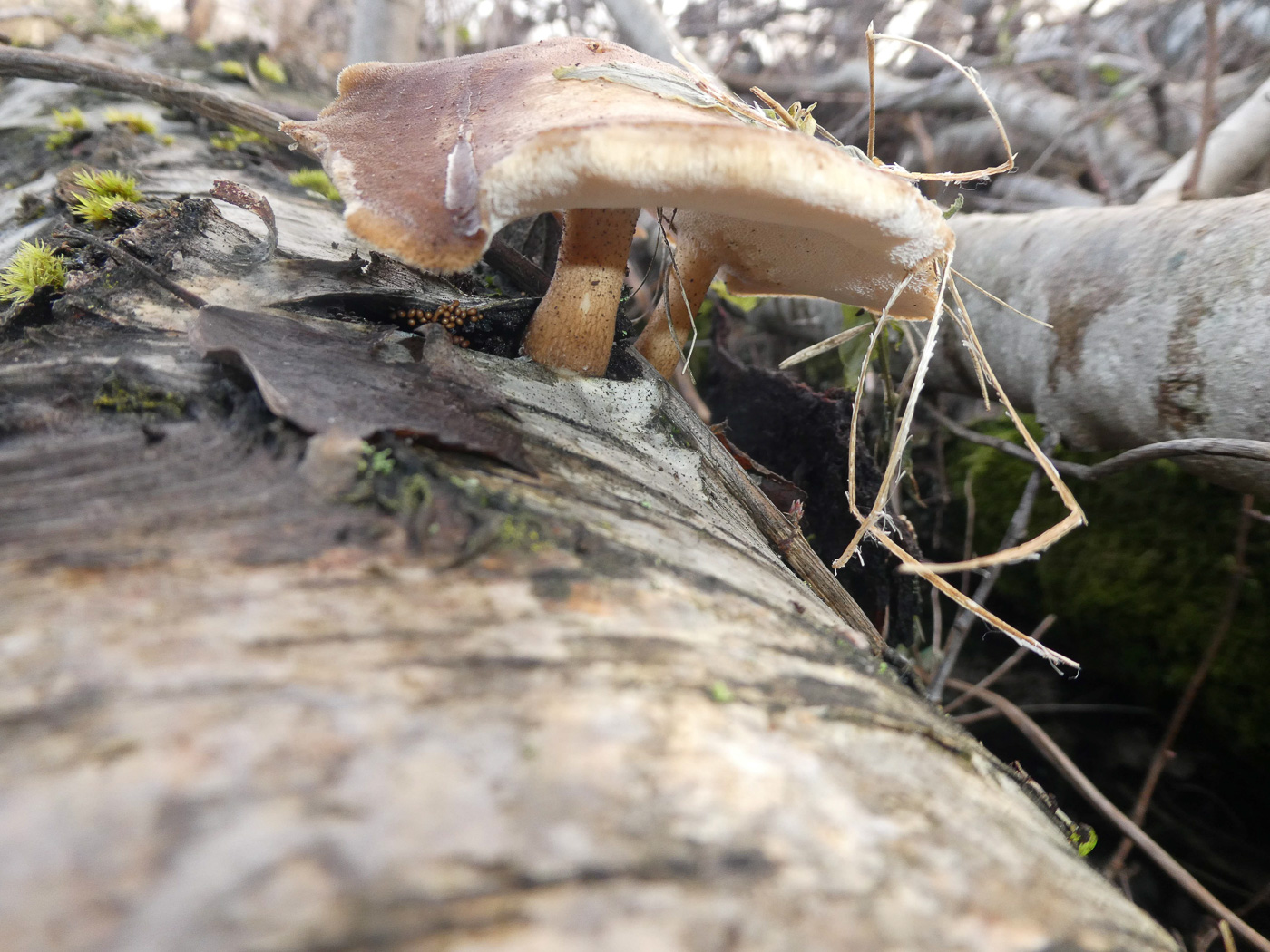
 |
December 29th Lentinus brumalis (Winter Polypore)
On fallen Birch at Stoke Common Jim Wills noticed these Polypores – better known as Polyporus brumalis - which lack the black stem base of the much commoner P. leptocephalus. Though by no means confined to fruiting in the winter months, the species certainly occurs more frequently at this time which helps to separate it from the very similar Lentinus striatulus (previously Polyporus ciliatus) which occurs more frequently in the summer months.
|
December 28th 2022
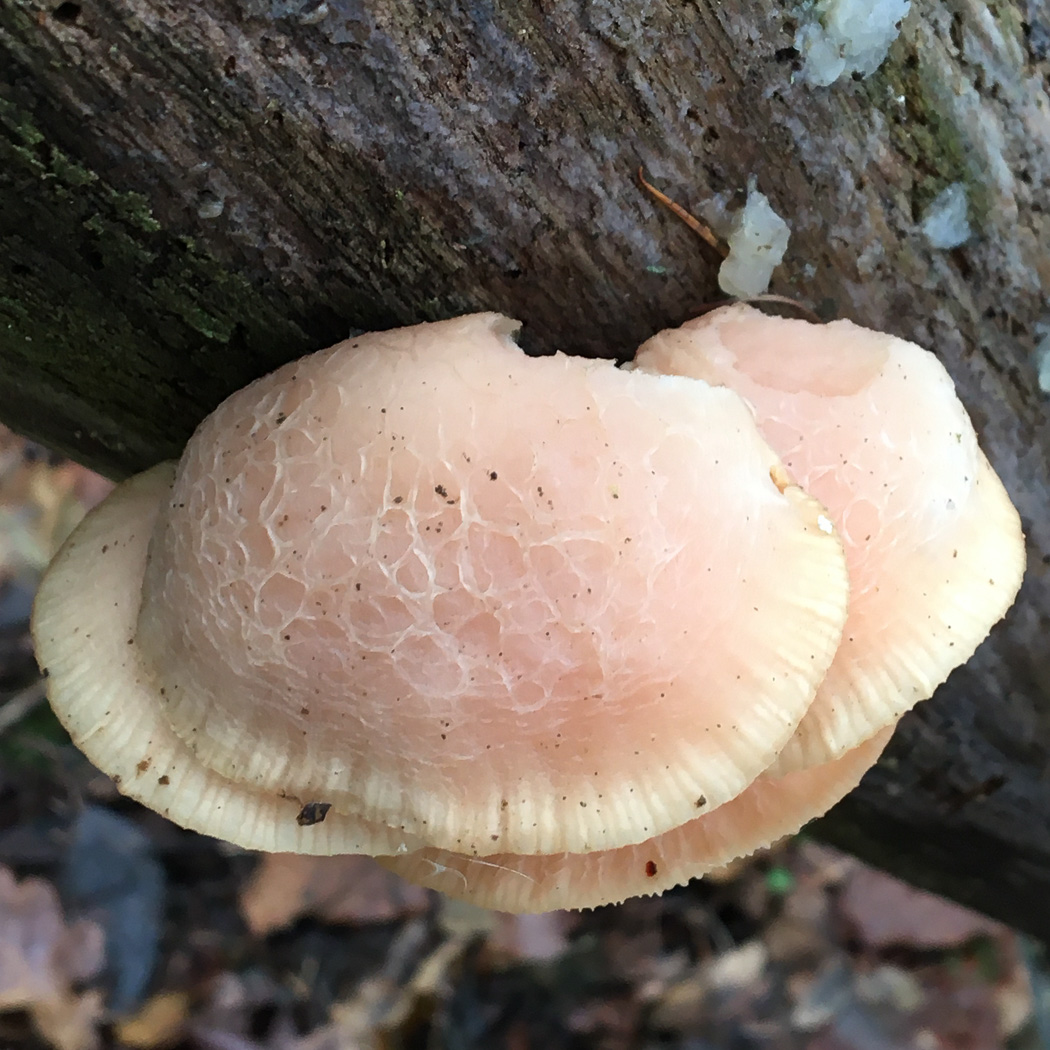
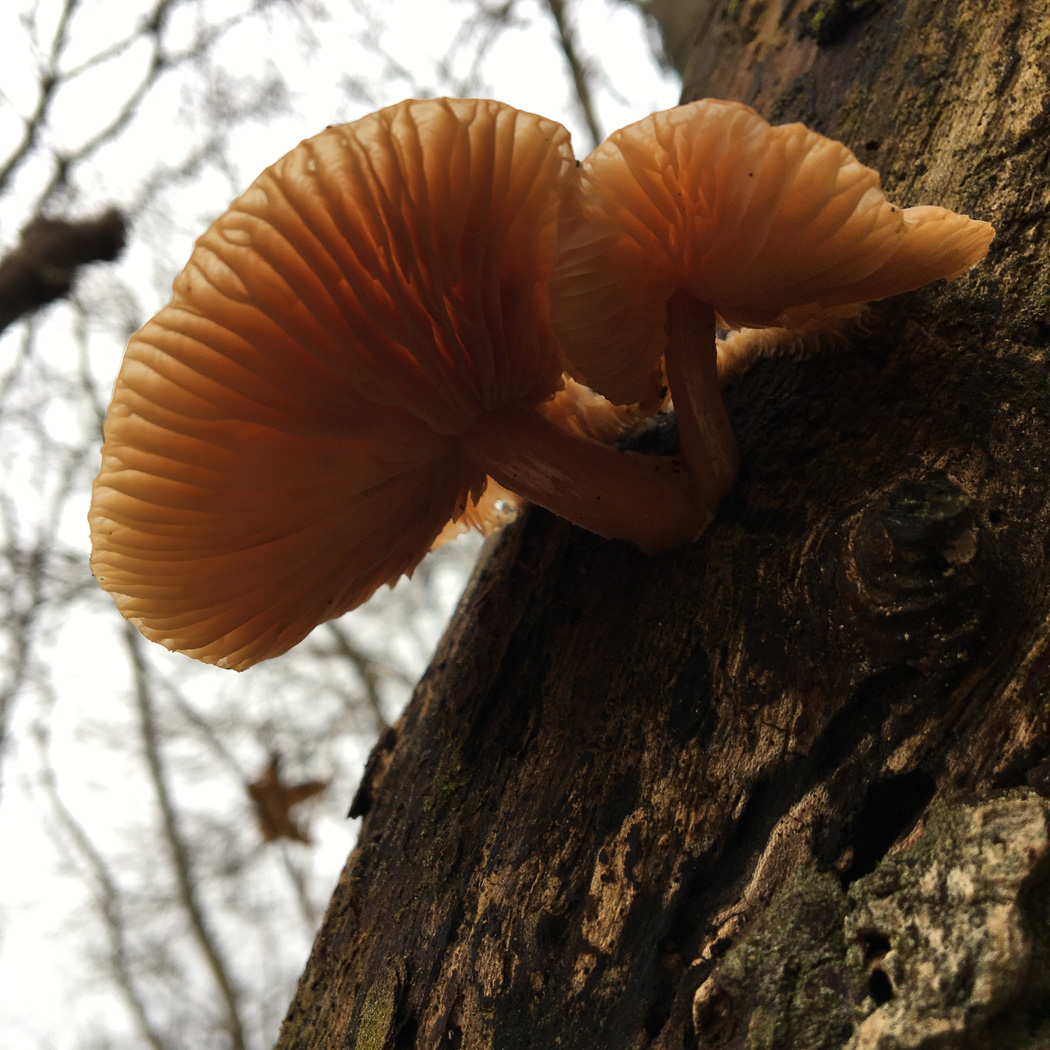
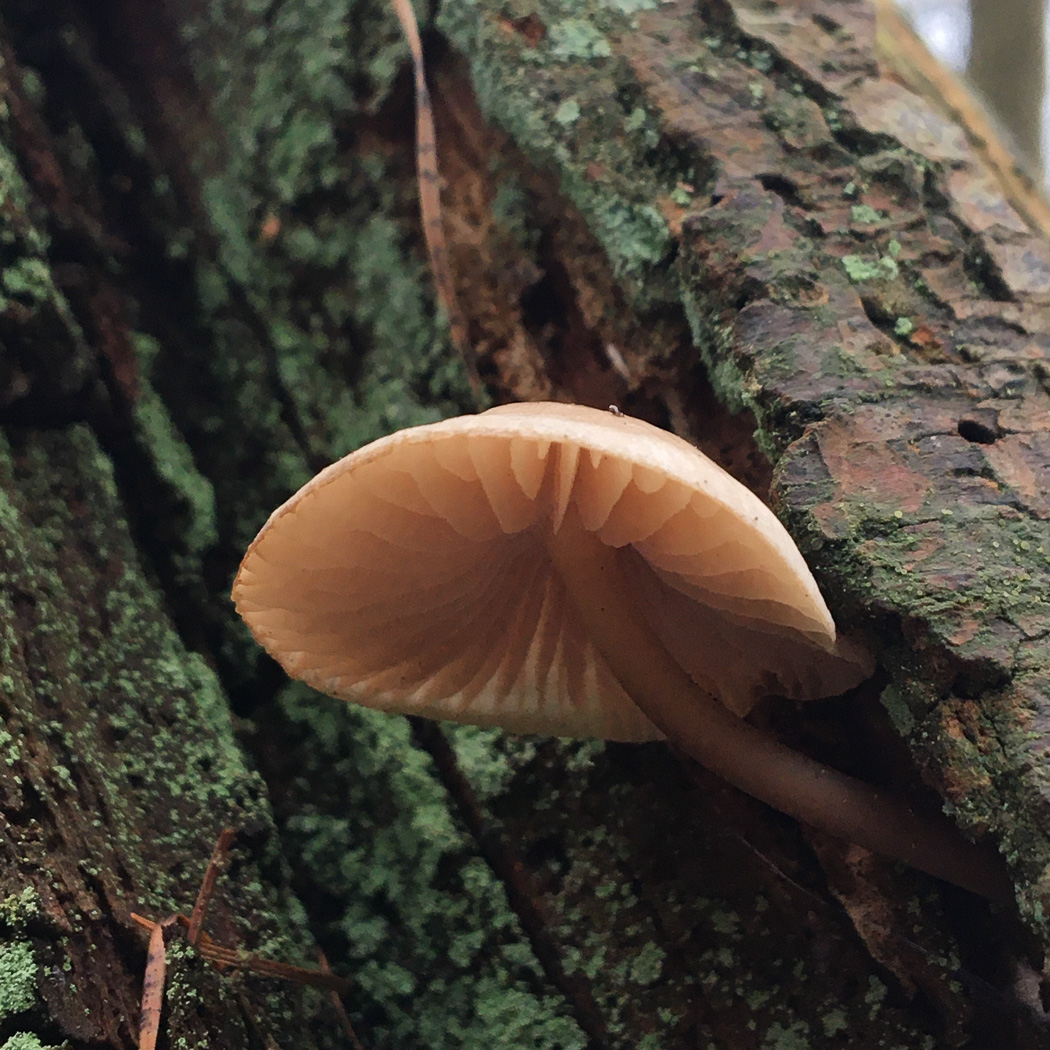 |
December 28th Rhodotus palmatus (Wrinkled Peach)
In Bernwood Forest new member Chris Grimbly came across this distinctive species presumably fruiting on fallen Elm (though there are now records of it occurring on hardwoods other than Elm). The typical reticulation is nicely visible on these mature caps - a nice find so late in the season.
|
December 24th 2022
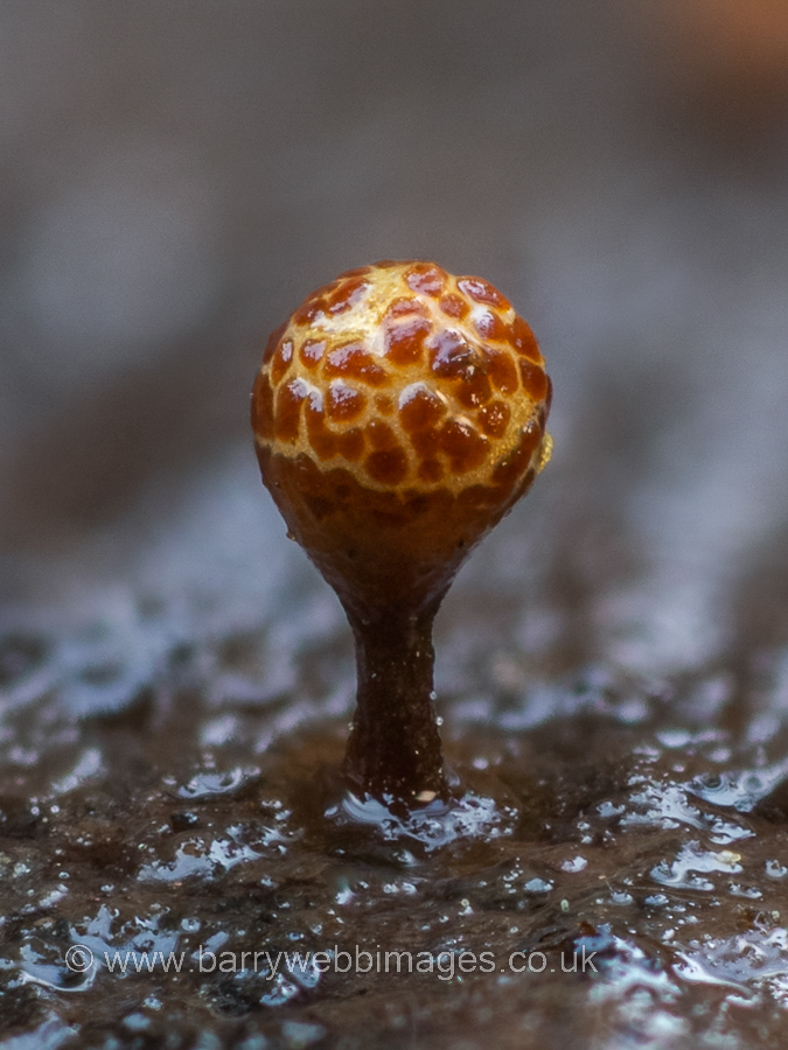 |
December 24th Trichia flavicoma (a rare slime mould with no common name) 
On a pile of old prunings (Osmanthus, Laurel, Yew) at Hedgerley Green Barry Webb spotted this really tiny species - less that 1mm tall. It is rarely recorded (no doubt due to its miniscule size) and is new to the county. Barry's identification was confirmed when he sent both macro- and microphotos to expert Edvin Johannesen.
|
December 23rd 2022
 |
December 23rd Physarum utriculare (a slime mould with no common name)
On a fallen Beech trunk in Burnham Beeches Russell Ness found this impressive display of a slime mould until recently known as Badhamia utricularis. The plasmodium (slimy) stage of the species forms bright mustard yellow threads / veins which can cover large areas before settling down as here to develop mature spores. Not rare, it is a very eye-catching species.
|
December 14th 2022

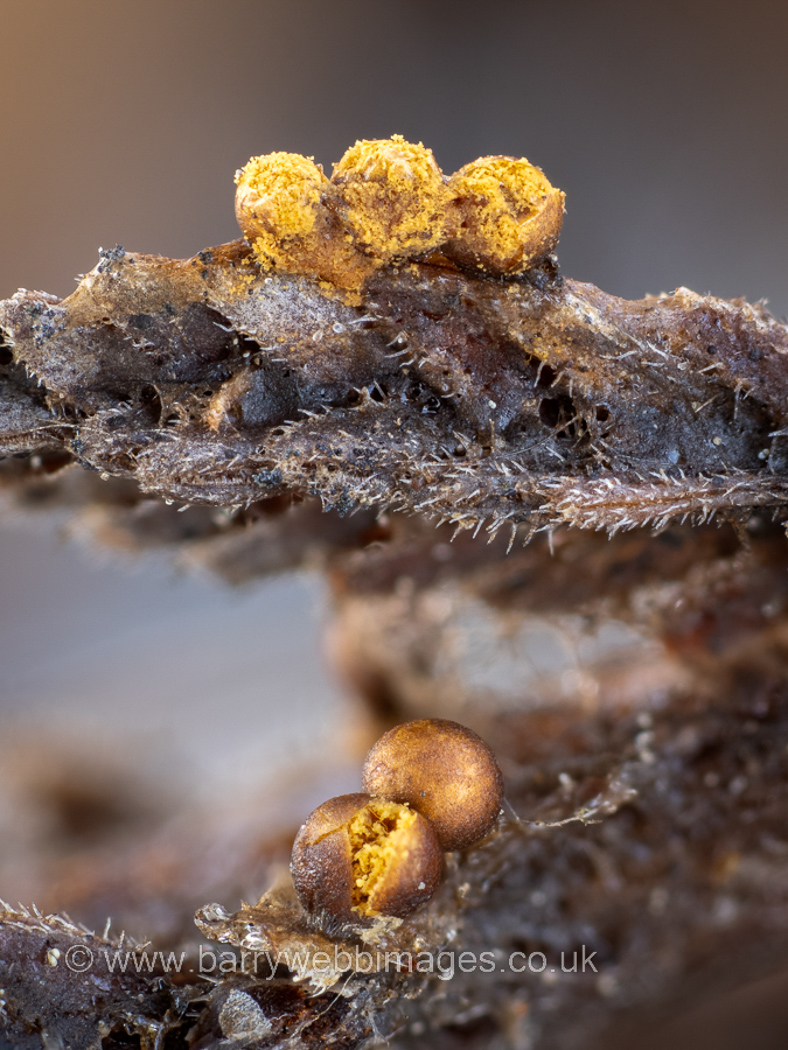 |
December 14th Trichia contorta var. attenuata (a rare Slime Mould with no common name) 
Barry Webb noticed this tiny species growing low down on live Heather stems at Stoke Common with snow still on the ground. He then sent both macro and micro photos to Myxomycete expert Edvin Johannesen who was able to identify it straight away from his images. We have two previous county records for T. contorta var. contorta but this is a first for this very rare variety for which there appear to be extremely few national records.
|
December 8th 2022
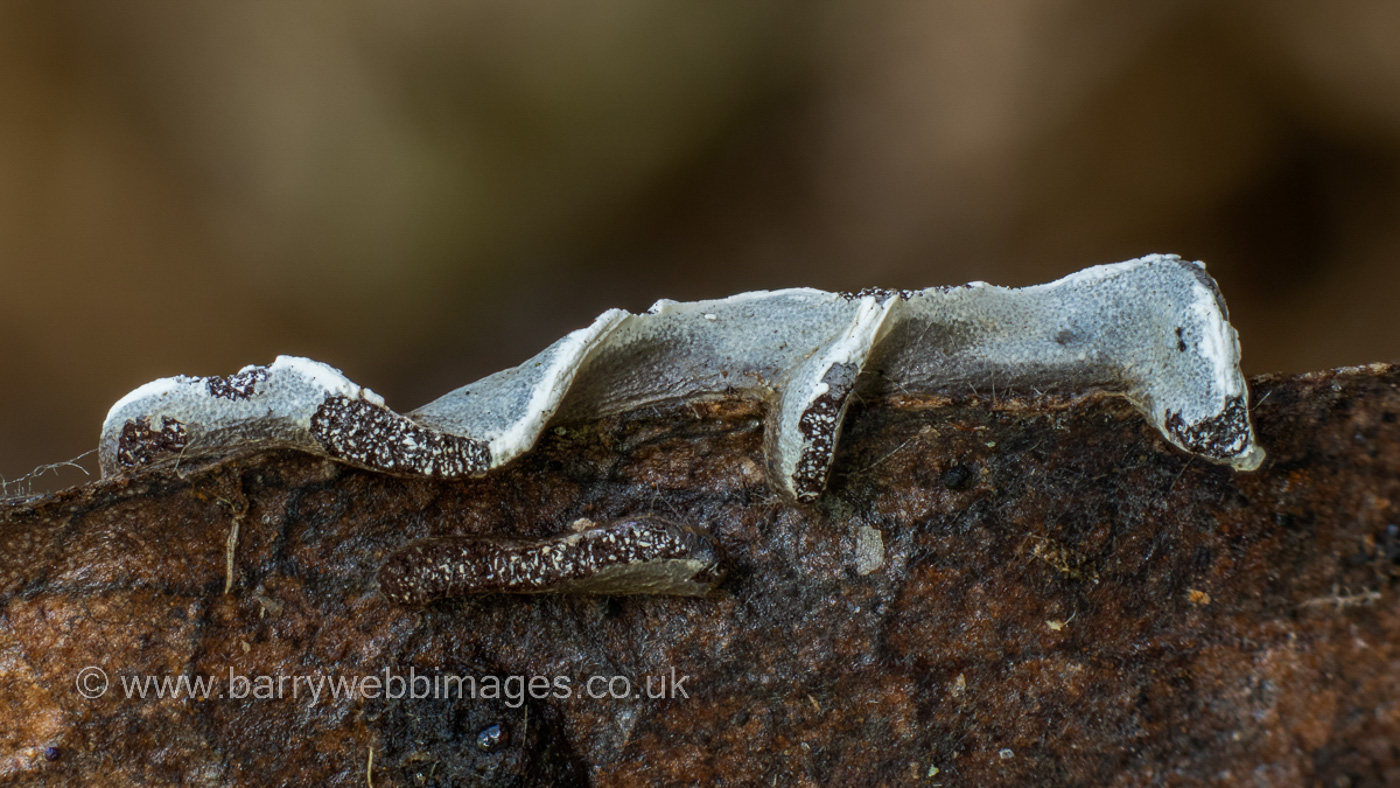 |
December 8th Physarum bivalve (an unusual Slime mould with no common name) 
In leaf litter at Burnham Beeches Barry Webb found this tiny strip of a slime mould species, new to him and to the site and with just one previous county record when identified by expert Bruce Ing from a specimen sent him by Penny in 2014 from Carpenters Wood. Barry's collection was identified by expert Edvin Johannesen from his macro- and microphotos.
|
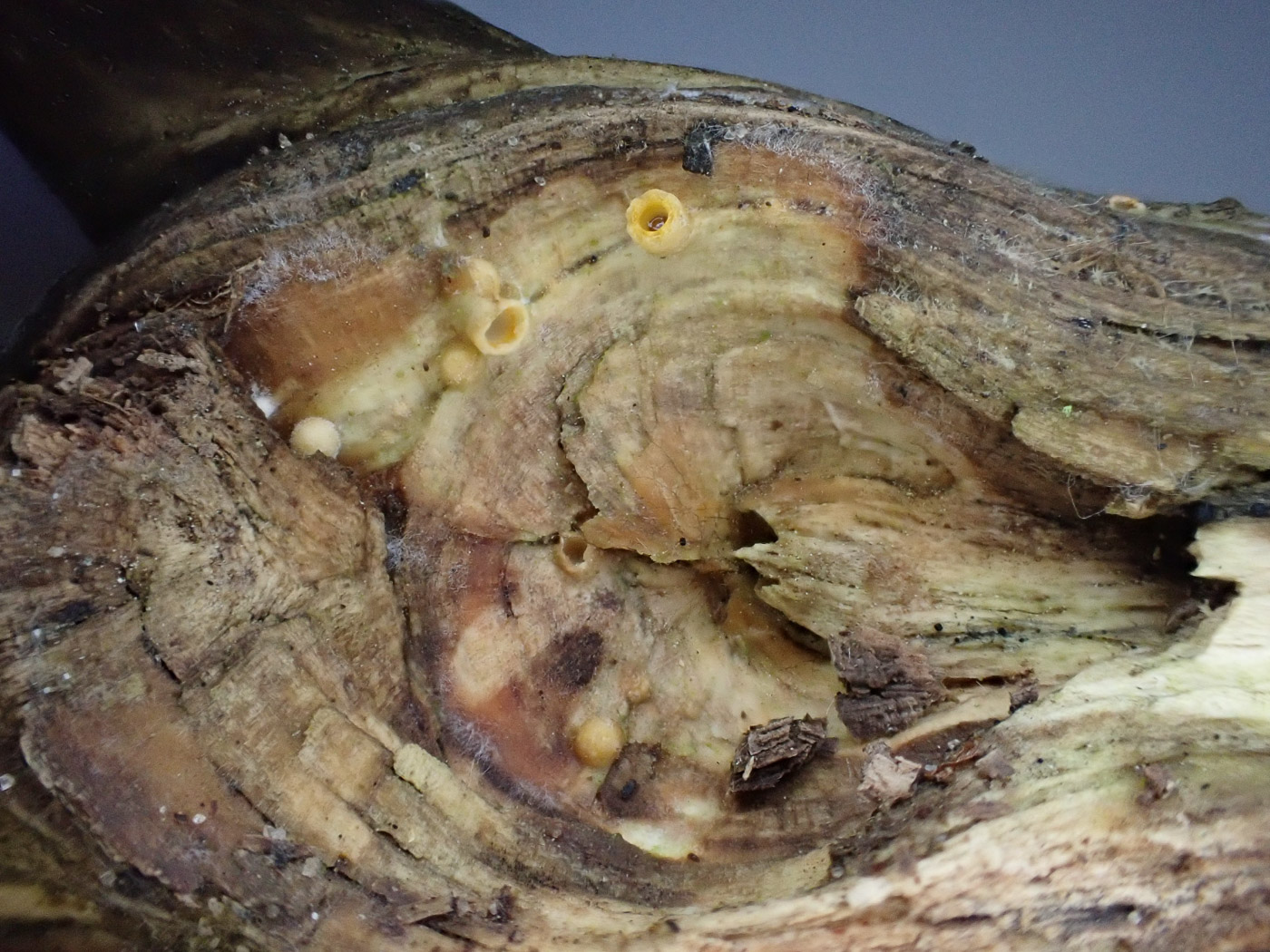
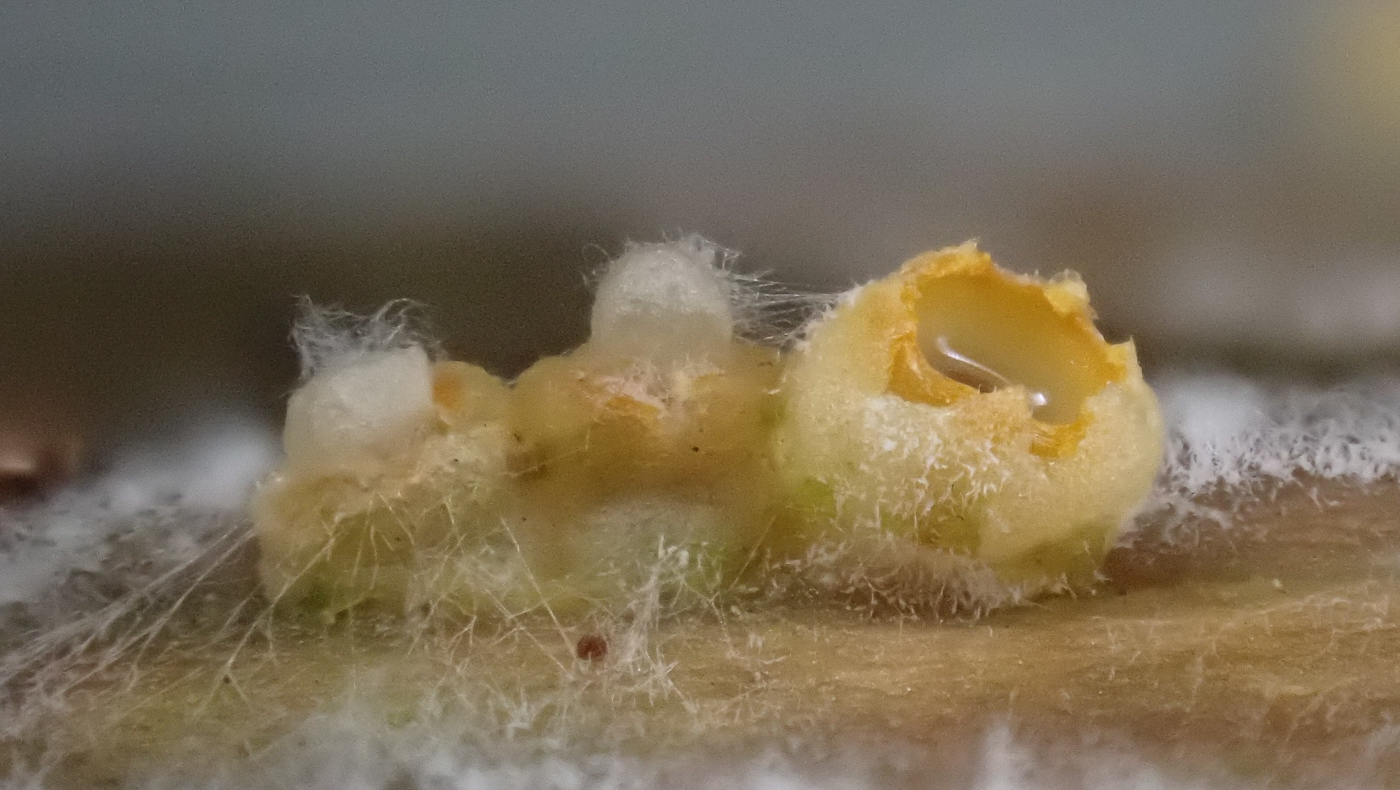
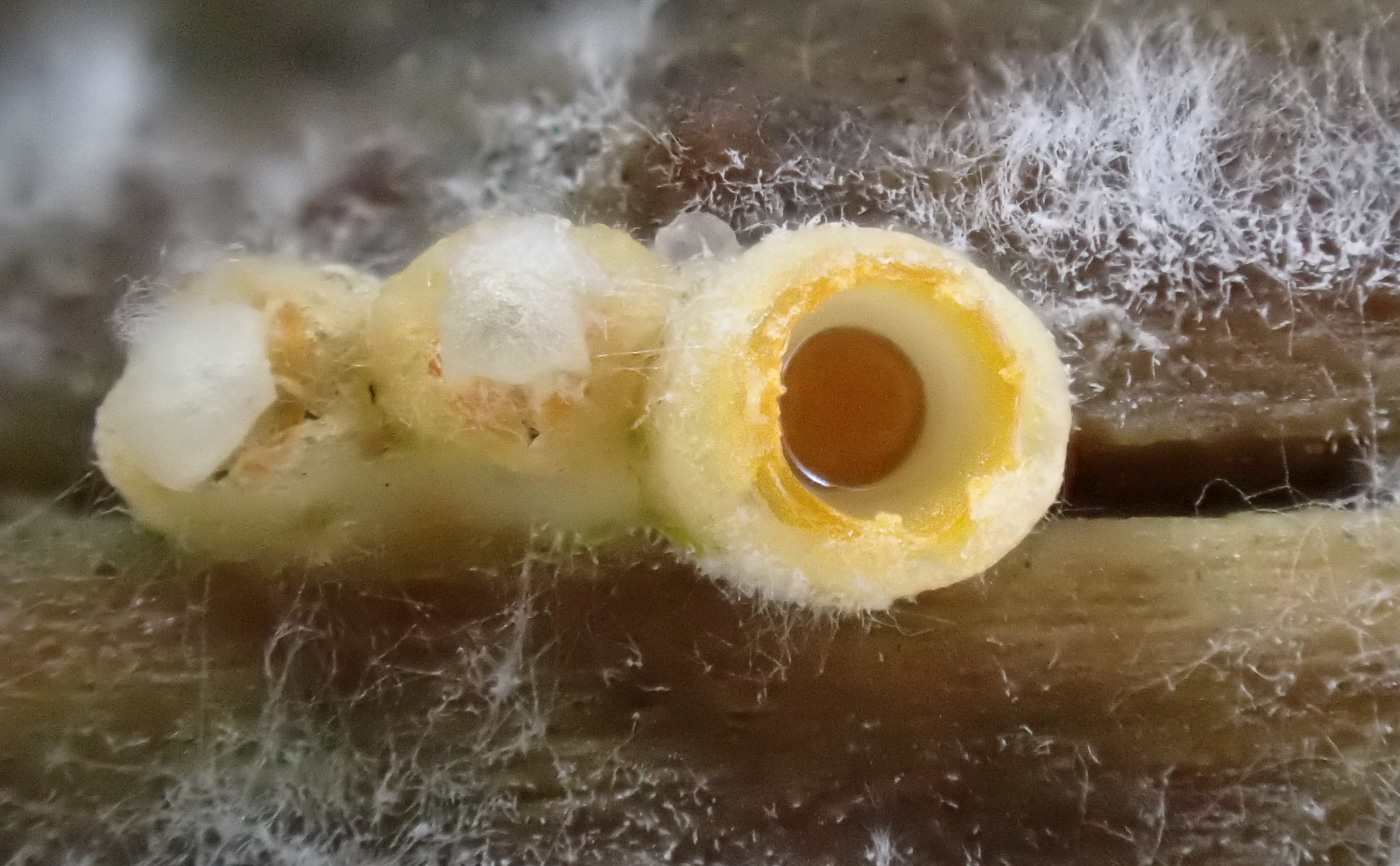 |
December 8th Sphaerobolus stellatus ( Shooting Star) 
When clearing out some old specimens at home, Stephen Plummer came across a rotting bare stick collected from Apsley Heath on a previous visit which he noticed now had some intriguing tiny fungi growing on it. At first at a loss, he then wondered if this might be related to the Birds Nest fungi and when checking it out came across a really good match for his find. This is indeed a Gasteromycete species, as are the Birds Nests, but is quite unique in its method of spore dispersal. Penny learnt that once it opens out, despite being only 2 mm across it shoots the whole of the central part (containing the spores) several metres away! To find out more, there are some videos online. Another common name for it is Cannonball Fungus. What a lucky chance to discover it! This is new to the county.
|
December 6th 2022
 |
December 6th Ramariopsis kunzii (Ivory Coral) 
In St. Giles Churchyard Penny and Claire Williams found two or three clusters of this attractive but small white grassland Coral - a species which is not that common though easily overlooked or misidentified. Rather like a white version of Clavulinopsis corniculata, it is not related and there are several quite similar white species hence the need to check which of these you have by the size, shape and ornamentation of the spores. (The photo is Claire's.) See in Finds 2021 December 01, also 2022 November 17th.
|
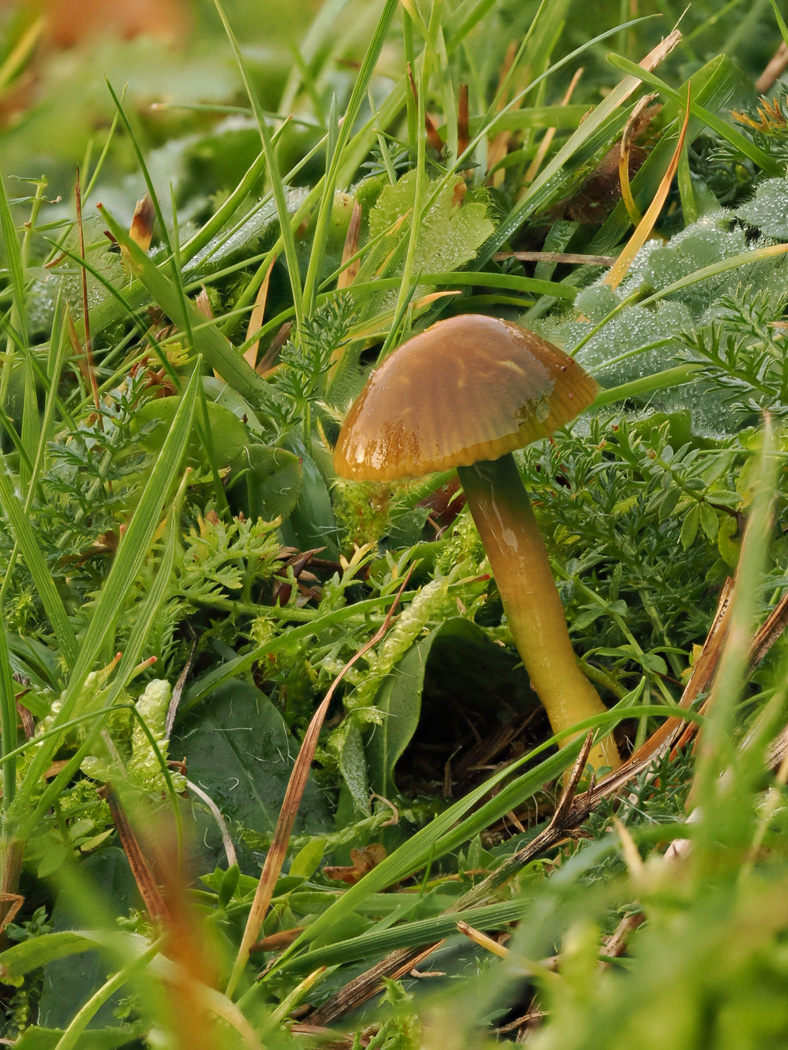 |
December 6th Gliophorus psittacinus (Parrot Waxcap)
Having failed to find this common Waxcap in the adjacent Stoke Poges Memorial Gardens, Penny and Claire Williams moved into St Giles Churchyard where Claire found just this single rather brown specimen. The green tints at the stem apex left no doubt as to its identity, however.
See the Masterlist for other more typical mages.
|
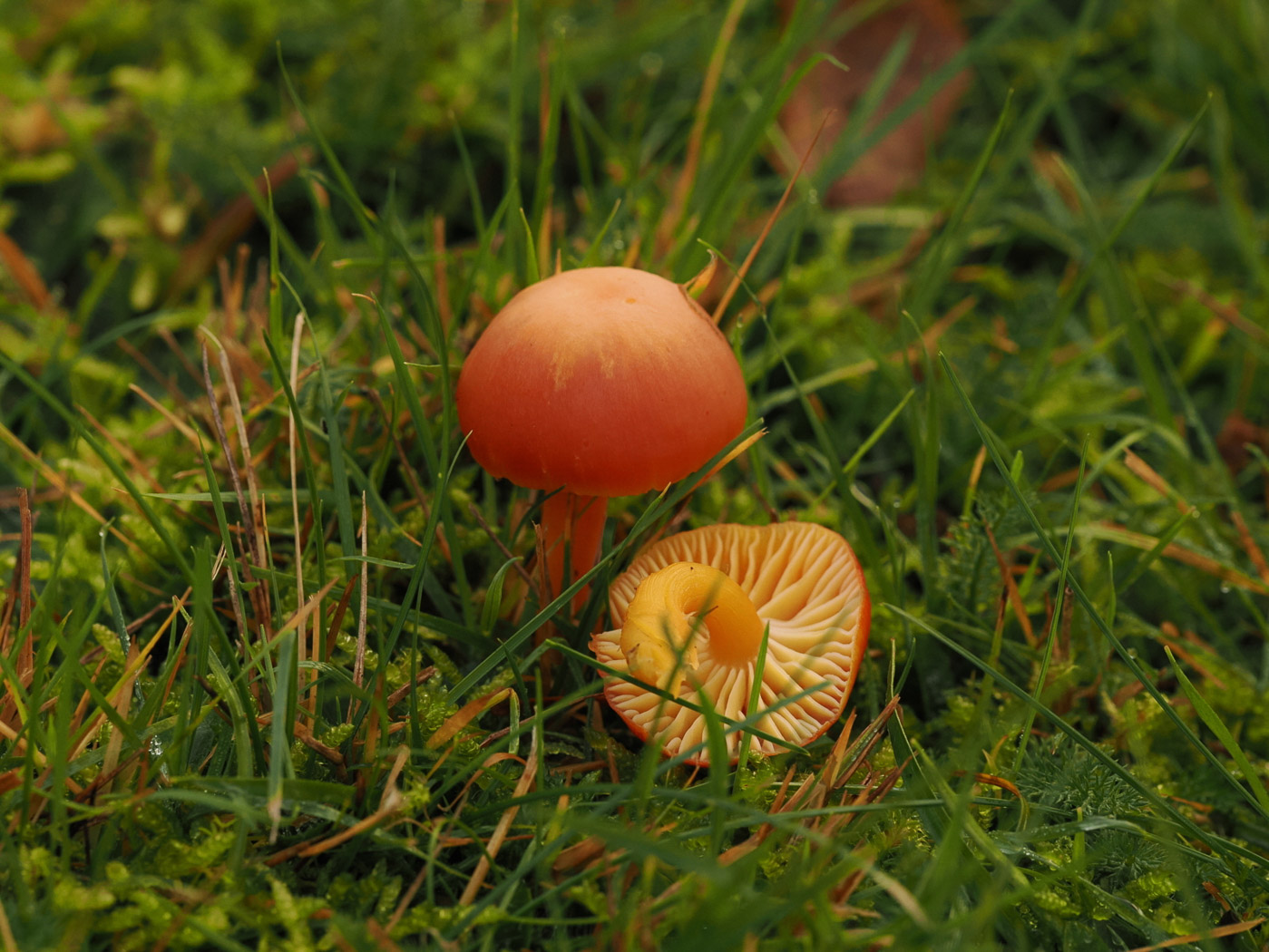 |
December 6th Hygrocybe reidii (Honey Waxcap)
In St. Giles Churchyard Penny found just these two specimens which to her looked too orange in colour with gills too pale for H. coccinea (Scarlet Waxcap) which was also fruiting nearby. The give-away smell was missing, however, until it had dried out for several hours after collection when a bit of gill tissue was mashed a bit to reveal its smell of honey. (The photo is Claire Williams's.) See in Finds 2020 October 30th for another example.
|

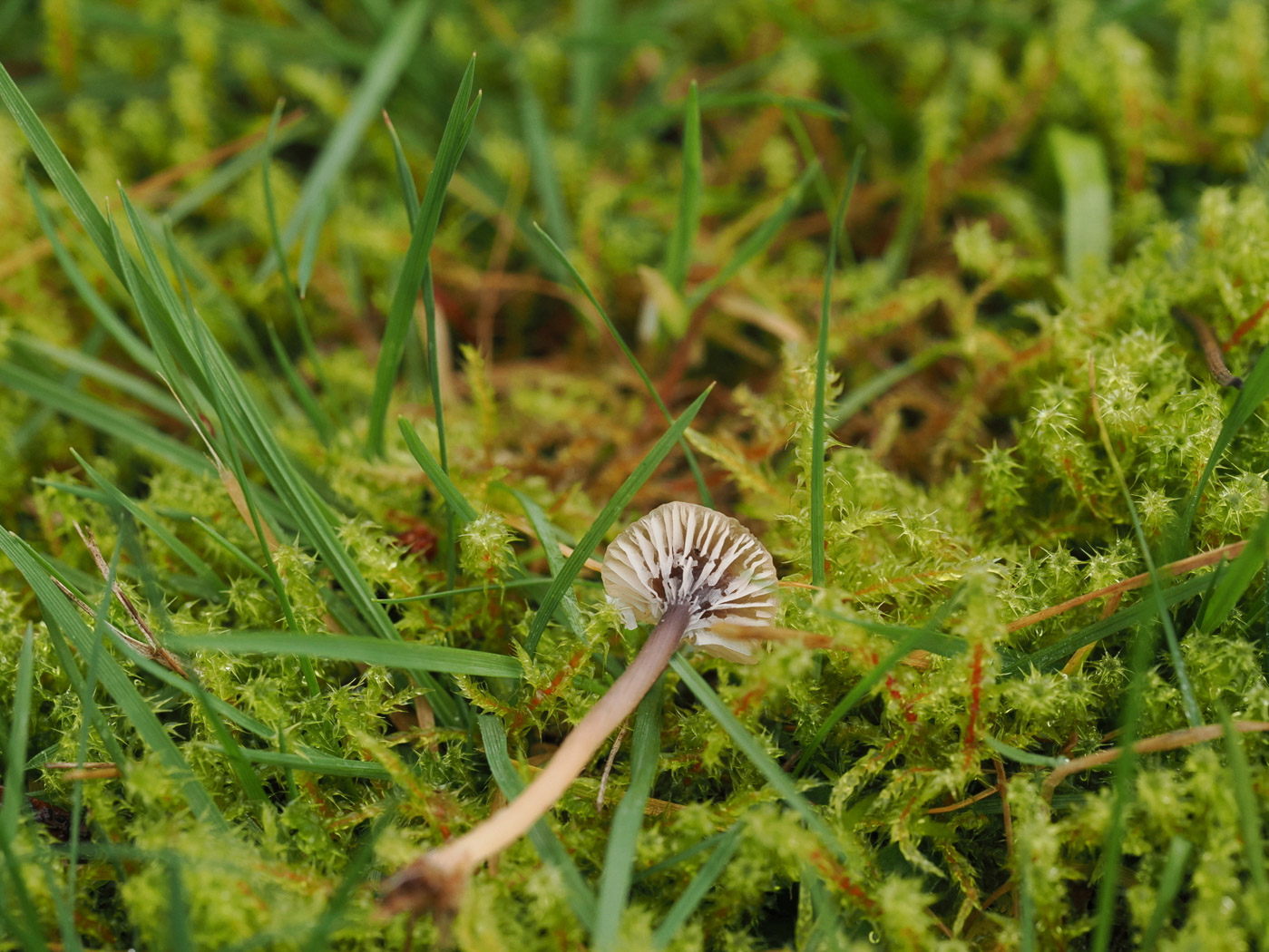 |
December 6th Rickenella swartzii (Collared Mosscap)
In St. Giles Churchyard Penny found just this one singleton in the moss. This is a pretty little Mycenoid species, similar to R. fibula (Orange Mosscap) but with a dark cap centre, pale decurrent gills and also a dark stem apex. It is far less common than the orange species. See in Finds 2020 November 2nd and 2021 June 30th.
|
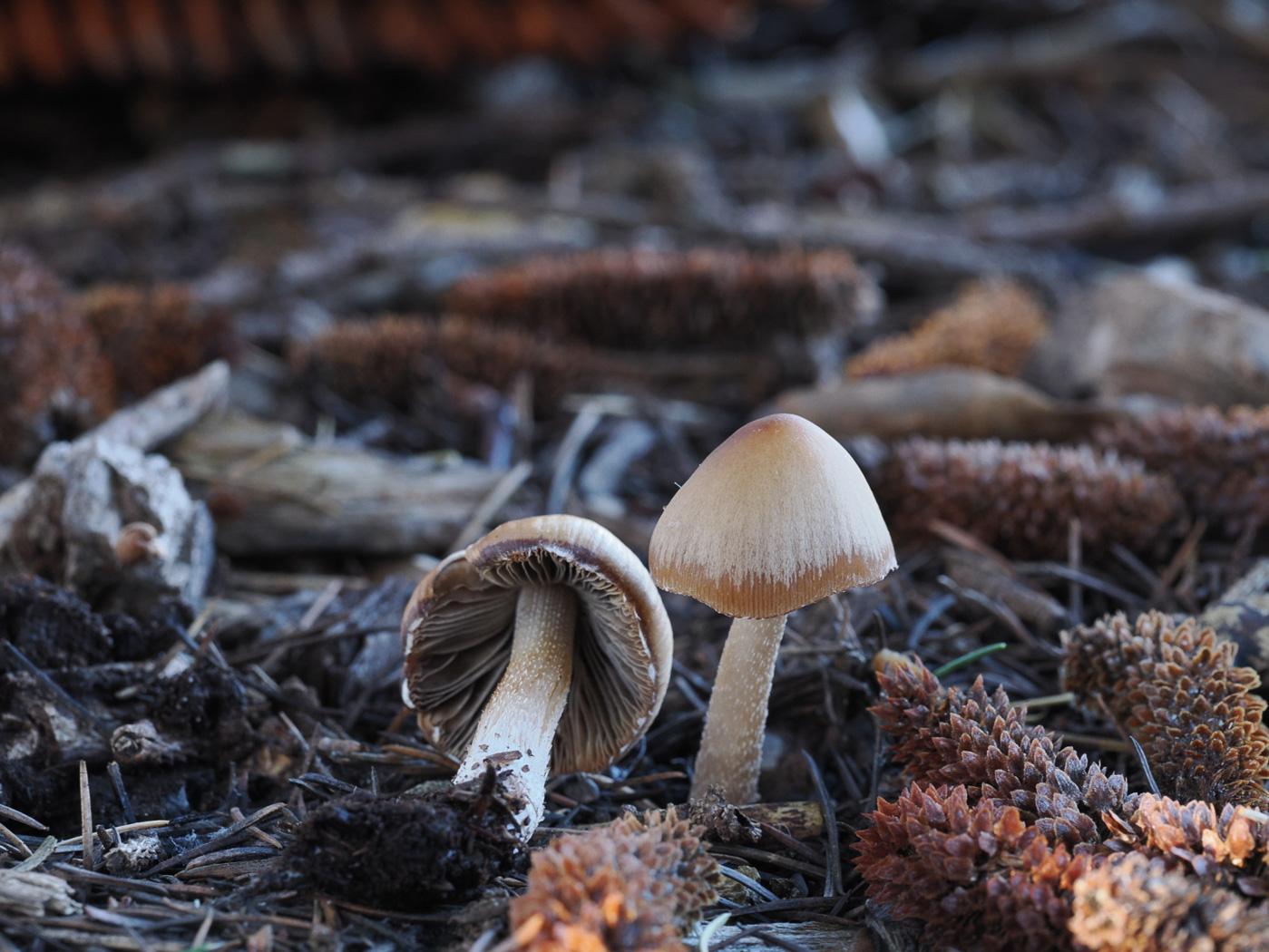 |
December 6th Psathyrella lutensis (a Brittlestem with no common name) 
In woodchip under a large Cedar at Stoke Poges Memorial Gardens Penny noticed what she thought at first was a pair of Inocybe species (Fibrecaps) but turning one over revealed grey gills rather than beige-brown indicating possibly a Psathyrella (Brittlestem). At home this proved to be the case and the gill cells led in the key to this unusual species for which we have just two previous records - one of these from this site in 2016. The species is strongly hygrophanous hence the pale cap which in this species is striate in the outer half with white veil remnants often attaching to the rim - visible here. The photo is Claire Williams's. This is a new entry for Finds.
|
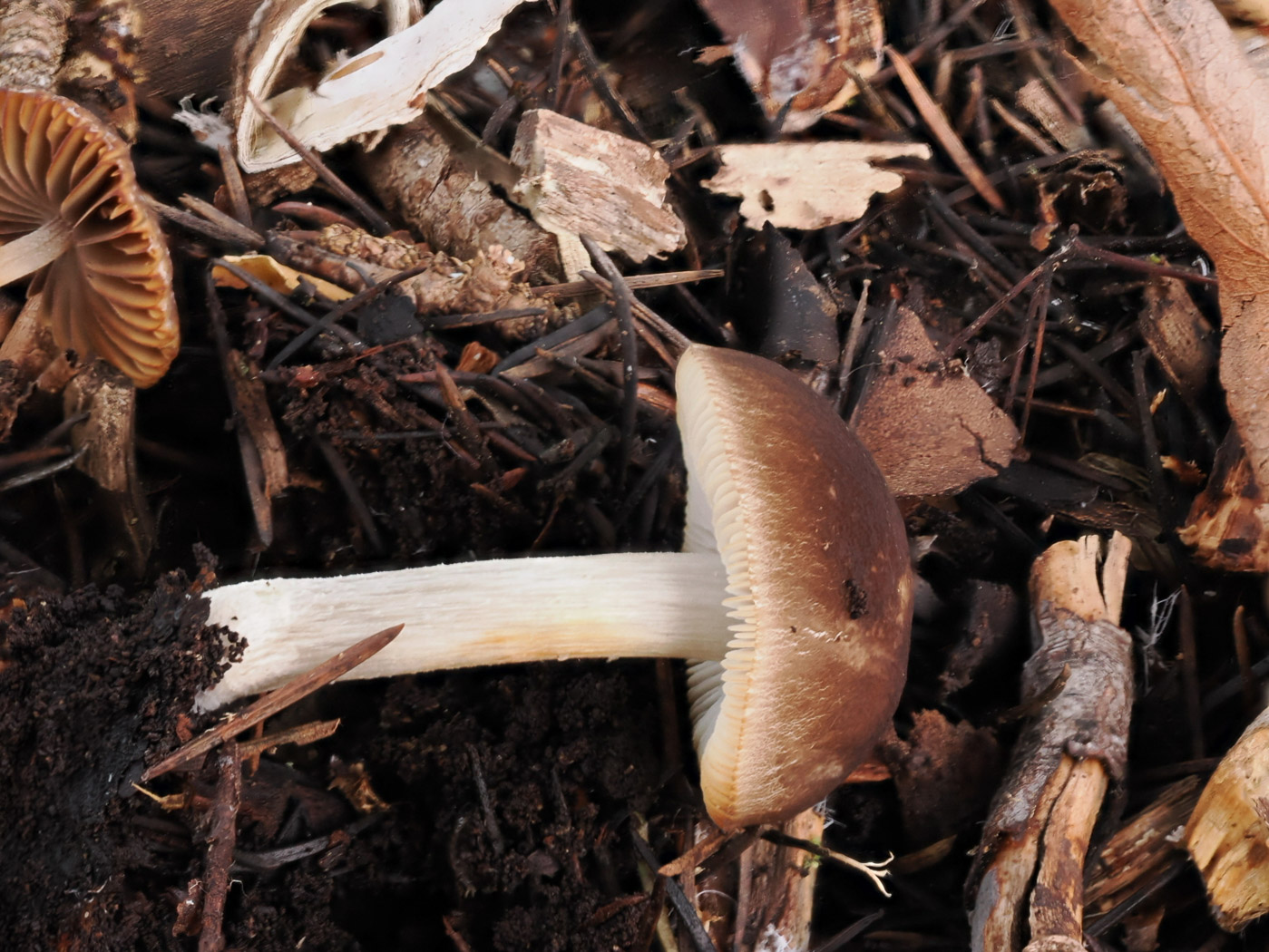
 |
December 6th Pluteus phlebophorus (Wrinkled Shield) 
At Stoke Poges Memorial Gardens Penny noticed this dark brown velvety cap in thick woodchip under Cedar and was at first utterly confused as to its genus. The pale gills were very strongly ventricose and crowded rendering their attachment to the stem indiscernable so it was not until a sporeprint revealed their pale pink-brown colour and she checked the cuticle cells that she realised it had to be Pluteus. It then keyed out straightforwardly though the cap is (a) darker brown and (b) not wrinkled a the centre as described, furthermore this is a species of deciduous wood indicating that the woodchip beneath this Cedar was not in fact derived from conifer. The photos are Claire Williams's (but please overlook the extra mushroom visible in photo 1). See also in Finds 2020 October 12th for comparison.
|
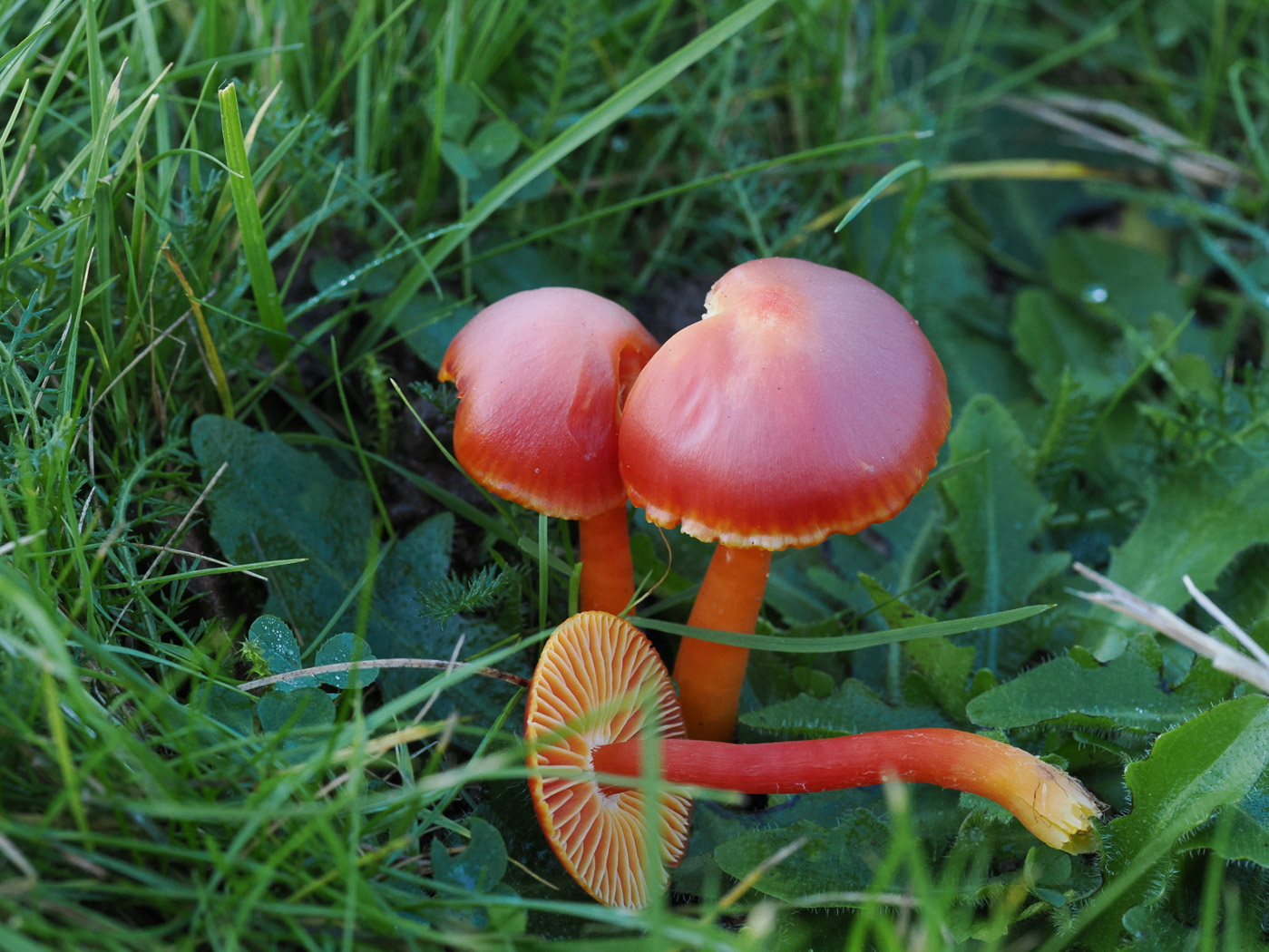 |
December 6th Hygrocybe coccinea (Scarlet Waxcap)
In the lawns at Stoke Poges Memorial Gardens Penny and Claire Williams found just a few examples of this normally very common Waxcap which seems to have been quite scarce this autumn. (The photo is Claire's.) See the Masterlist for further examples.
|
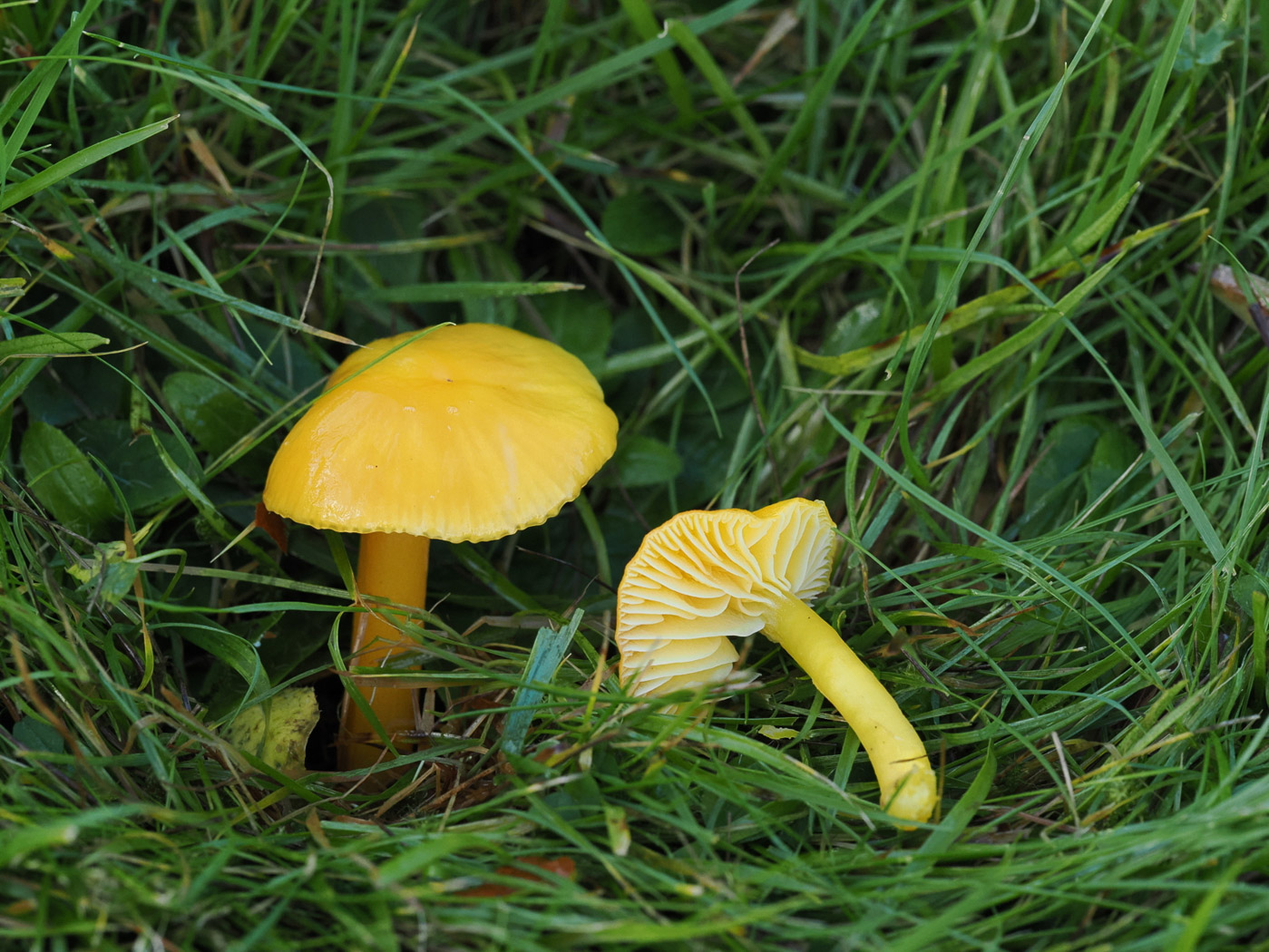
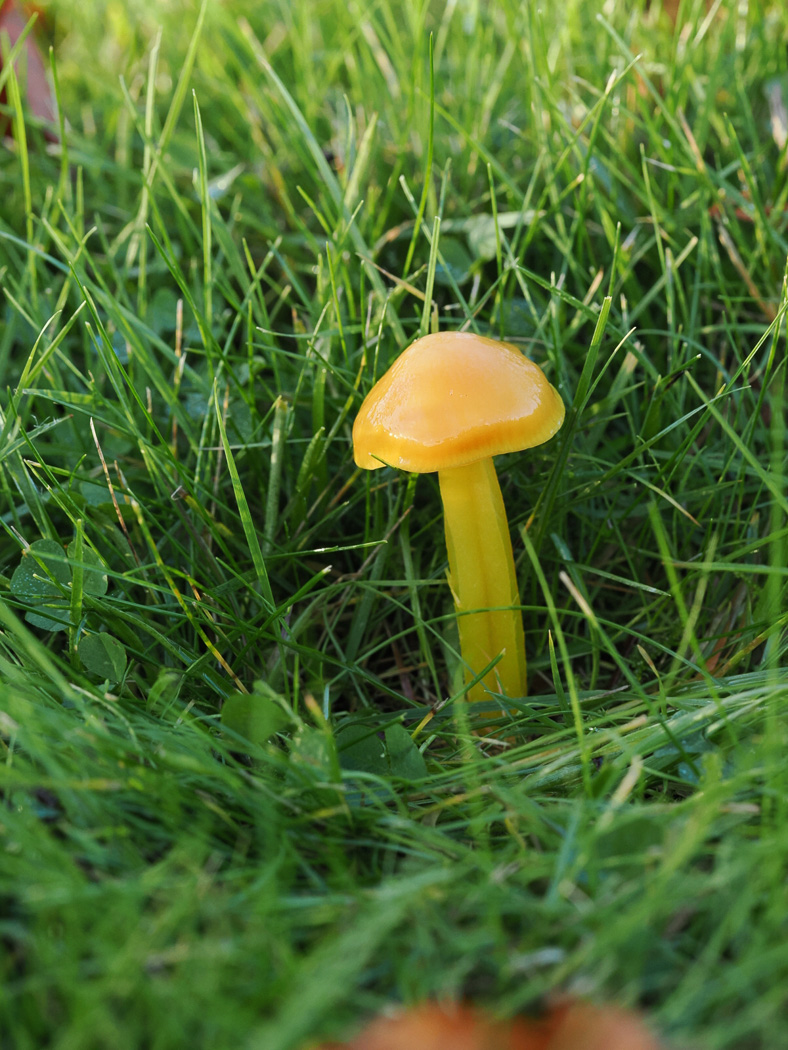 |
December 6th Hygrocybe chlorophana (Golden Waxcap)
In the lawns at Stoke Poges Memorial Gardens Penny and Claire Williams found quite a few specimens of this species showing quite nicely. This was one of only 5 Waxcap species today which was somewhat disappointing compared to other years here. (The photos are Claire's.) See the Masterlist for further examples.
|
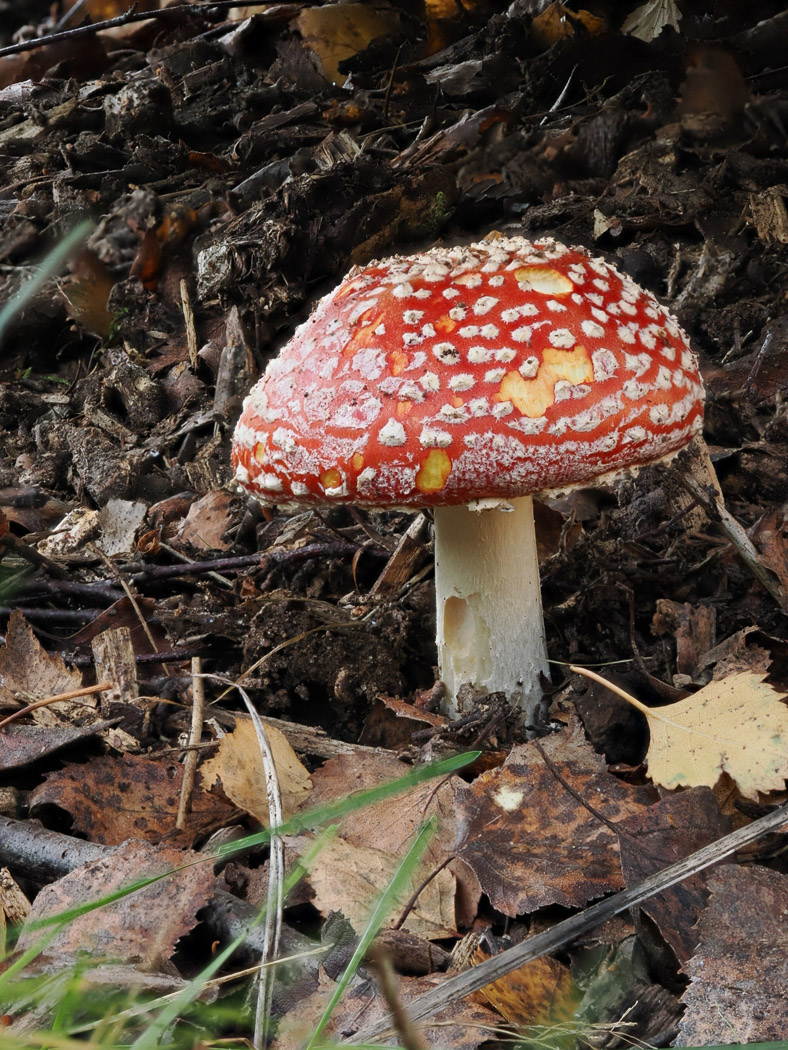 |
December 6th Amanita muscaria (Fly Agaric)
Claire Williams was delighted to find this common species still making an appearance under Birch at Stoke Poges Memorial Gardens and couldn't resist the photo! Penny included the species in Finds on November 27th, commenting on the fact that this was notable so late in the season, but today's find beats that record easily! See the Masterlist for other examples and comments.
|
 |
December 6th Collybiopsis villosipes (a rare mushroom with few national records as yet)  
At Stoke Poges Memorial Gardens Penny found a few examples of this species in the lawns, one which seems to fruit here regularly but a rarity elsewhere, its identity confirmed by DNA sequencing several years ago. It is Mycenoid in shape and size though dark brown in cap and gills despite its white spores, and has a finely furry stem - only just visible with a handlens. See also in Finds 202 October 29th, also 2021 October 25th - both collections from this site.
|
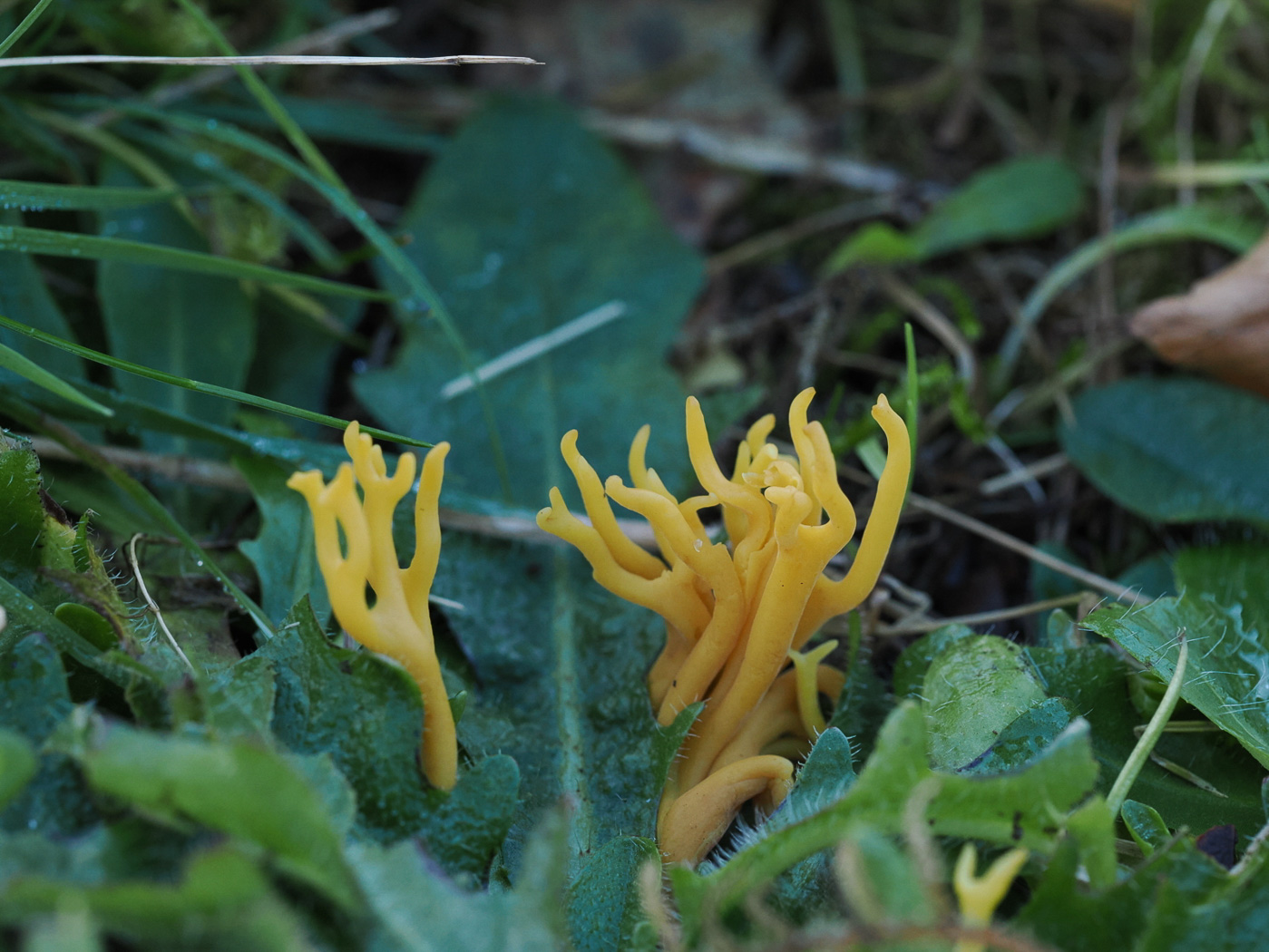 |
December 6th Clavulinopsis corniculata (Meadow Coral)
At Stoke Poges Memorial Gardens Penny found a few clumps of this species coming up in the lawns. Unlike the more common yellow unbranched Clavulinopsis species this one does not need a scope to identify; its thin curly branching coral-like tops, arising from a thicker single base are unlike any other yellow Coral species. (The photo is Claire Williams's.) We have quite a few other Finds images available, found from the Masterlist.
|

 |
December 6th Mycena aetites (Drab Bonnet) 
At Stoke Poges Memorial Gardens Penny found this group of grassland Bonnets just managing to make it above the height of the grass, hence their rather long stems. This is one of the larger exclusively grassland bonnets, recognisable from its grey colours (both cap and gills) but faint radishy smell - not to be confused with M. leptocephala (Nitrous Bonnet), also greyish but with a strong bleachy smell, found in both woodland litter and grassland. If in doubt try crushing the gills before testing for the smell: the bleachy smell of Nitrous Bonnet is very distinctive. The safest way is, as always, to check the gill edge with a scope, however. Both species are very common. See also in Finds 2020 October 28th.
|
December 3rd 2022
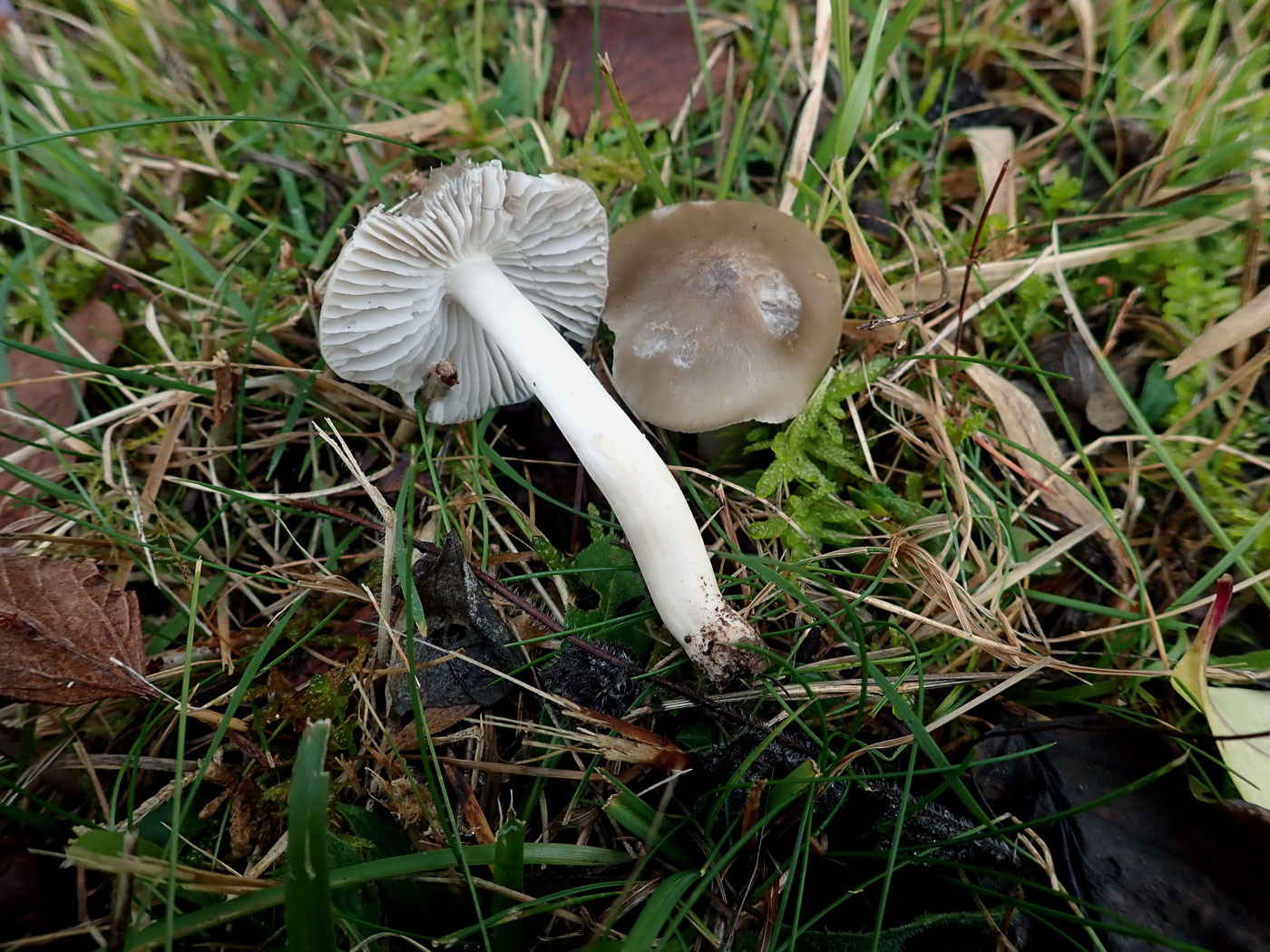 |
December 3rd Cuphophyllus fornicatus (Earthy Waxcap)
At Ragpits Reserve Penny found just these two specimens: similar to C. colemannianus also found here today but distinctly greyer and lacking the decurrent gills of that species. Another grey Waxcap is G. irrigatus (Slimy Waxcap) but that species is intensely slimy (the stem almost resisting be picked!) in contrast to the dry species today. We have just a handful of sites for it but it was new to Ragpits today. See in Finds 2020 November 13th when it was new to Prestwood churchyard.
|
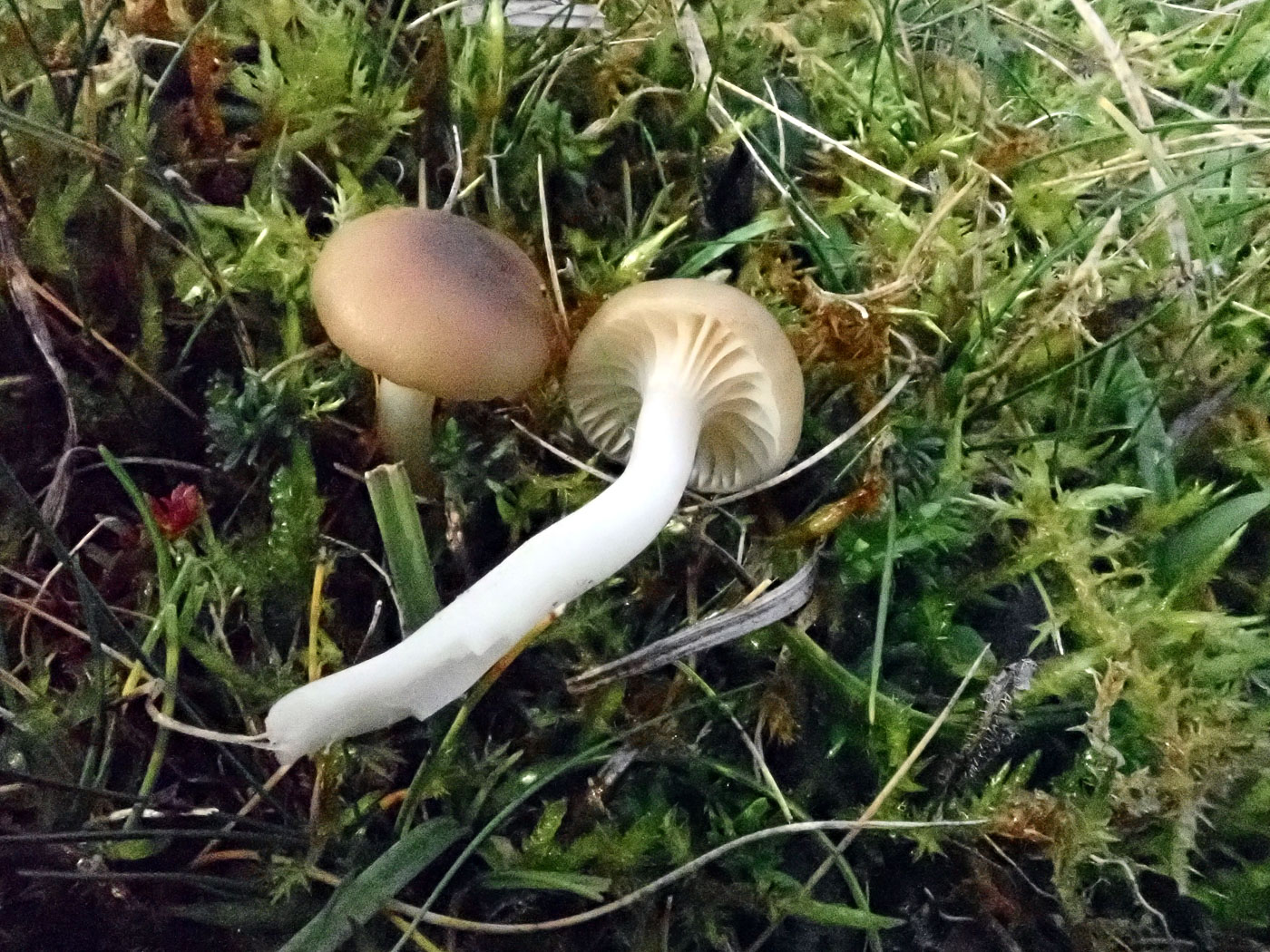
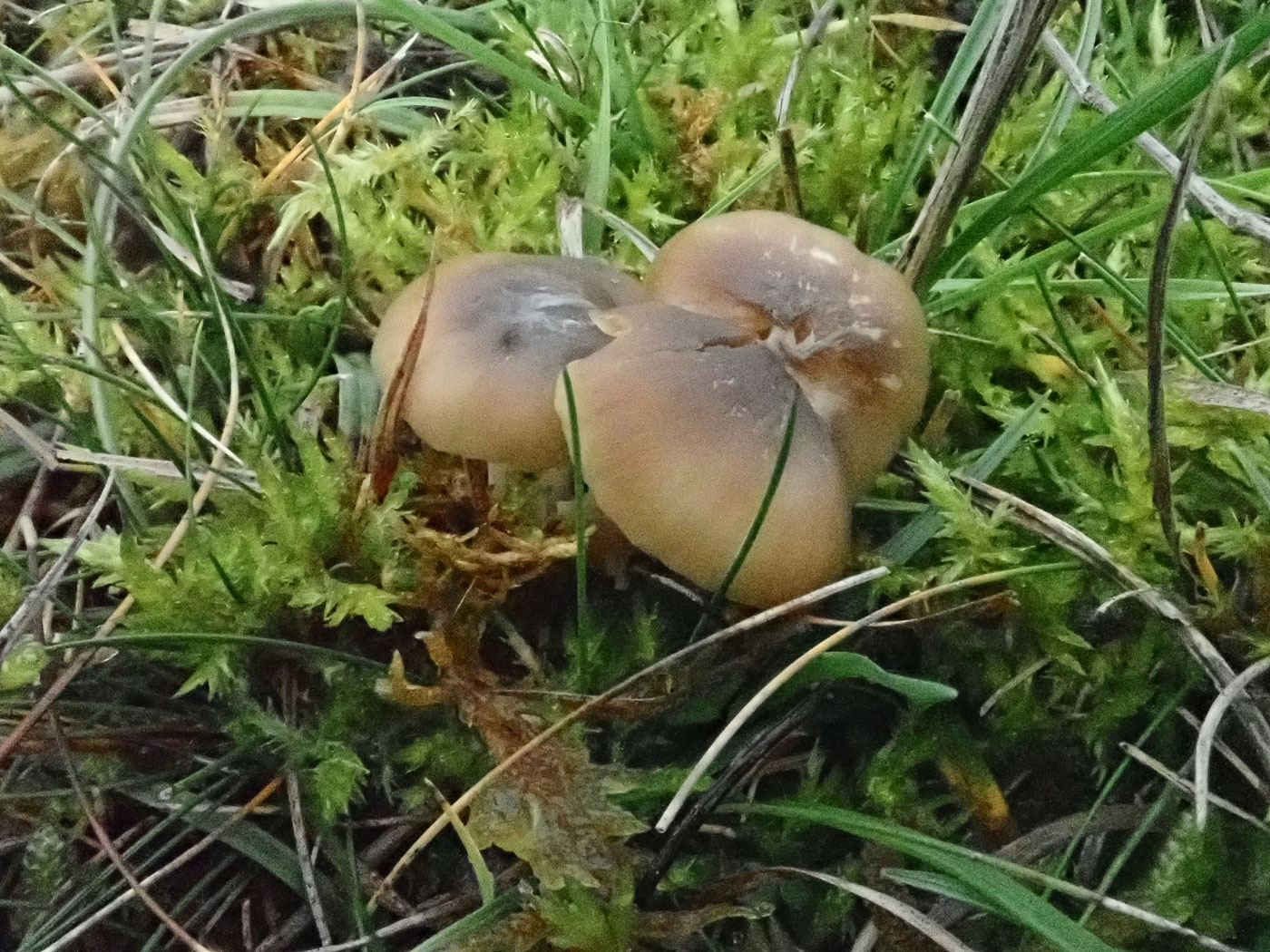
 |
December 3rd Cuphophyllus colemannianus (Toasted Waxcap)
At Ragpits Reserve Penny found just a few of these which are usually to be found here though often not elsewhere. The brown dry caps and pale buff to brown decurrent gills are diagnostic. See in Finds 2020 October 25th for a further example.
|
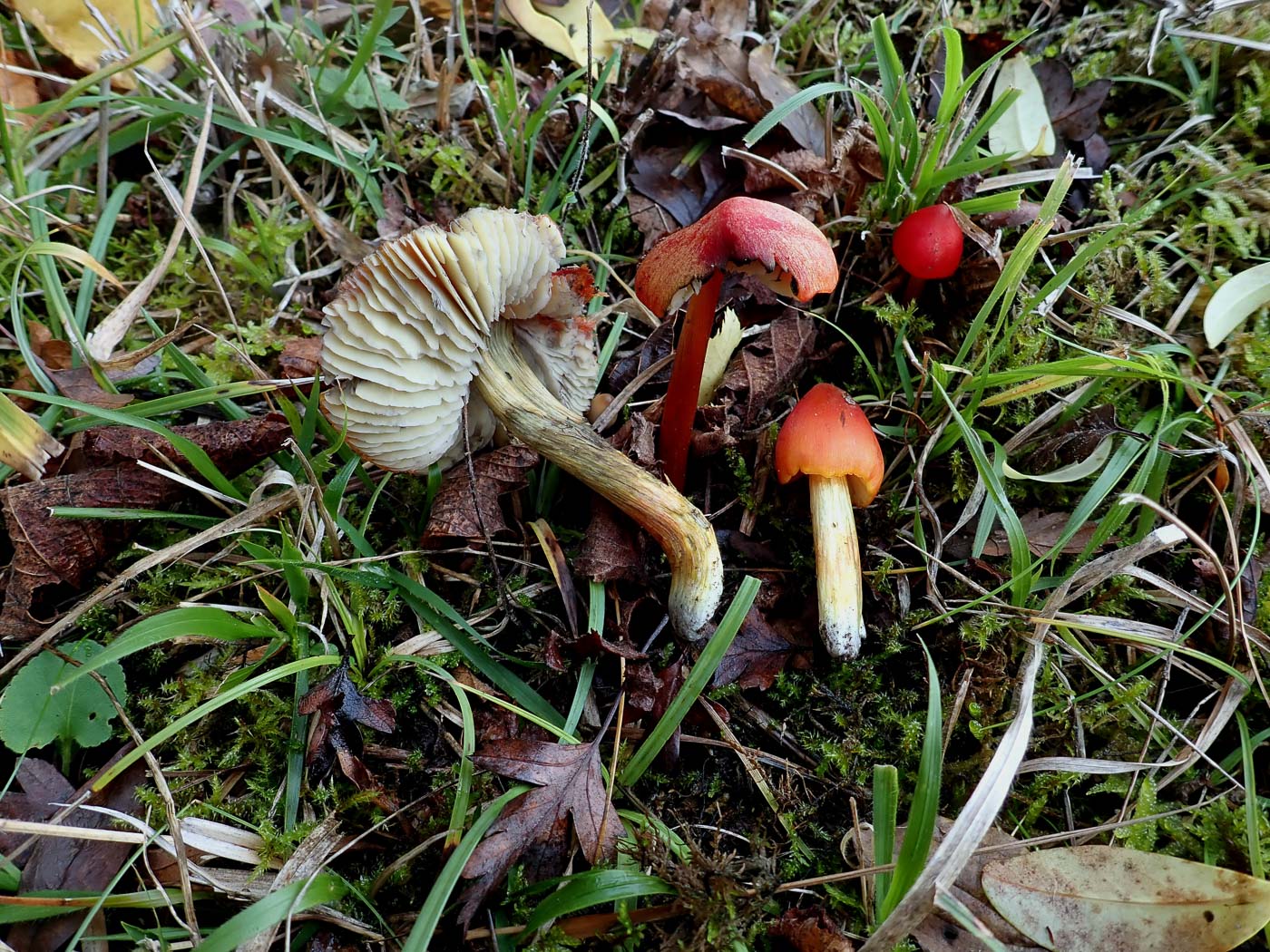
 |
December 3rd Hygrocybe conica (Blackening Waxcap)
At Ragpits Reserve Penny found quite a few of this common species, including some well past their sell-by date but at least showing just how black the species can become! Diagnostic features are the slightly streaky (acutely) conical cap varying between red, orange or yellow, and the longish stem often yellowish but soon blackening especially when handled. See the Masterlist for further examples.
|
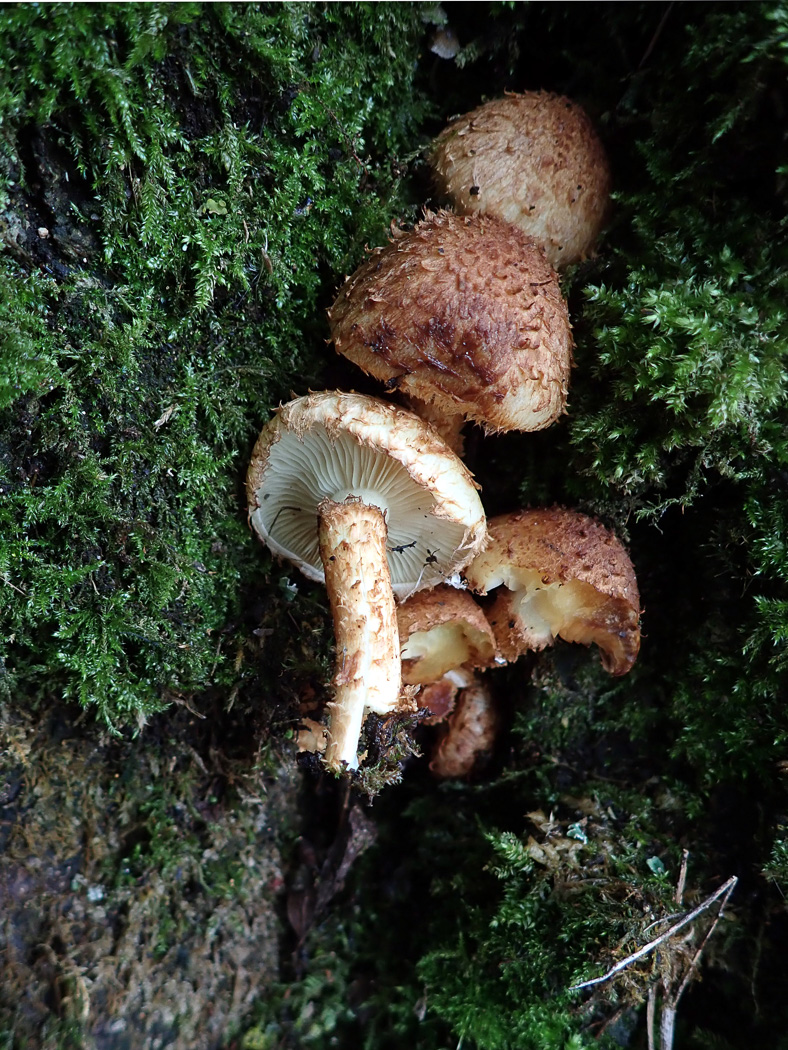
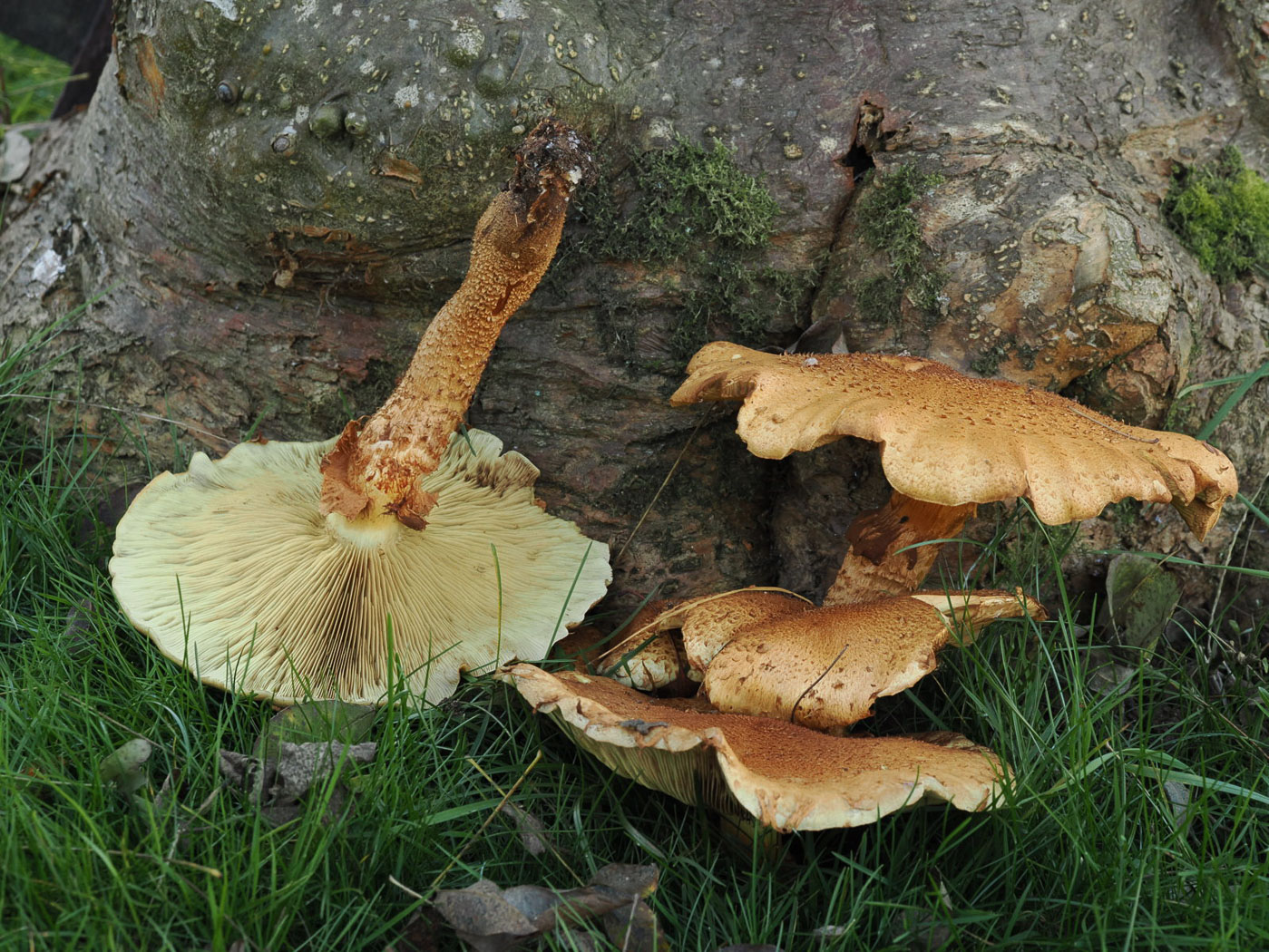 |
December 3rd Pholiota squarrosa (Shaggy Scalycap)
In the cleft of a deciduous trunk at Weston Turville Reservoir Penny was surprised to find this species just starting to fruit this late in the season. No doubt the lack of frost so far has allowed many species to carry on fruiting for longer than normal - perhaps making up for lost time when September was so hot and dry. Photo 2 (by Claire Williams) is of a mature collection found three days later at Stoke Poges Memorial Gardens, growing at the base of Willow. See the Masterlist for several other examples of this common clustered species.
|
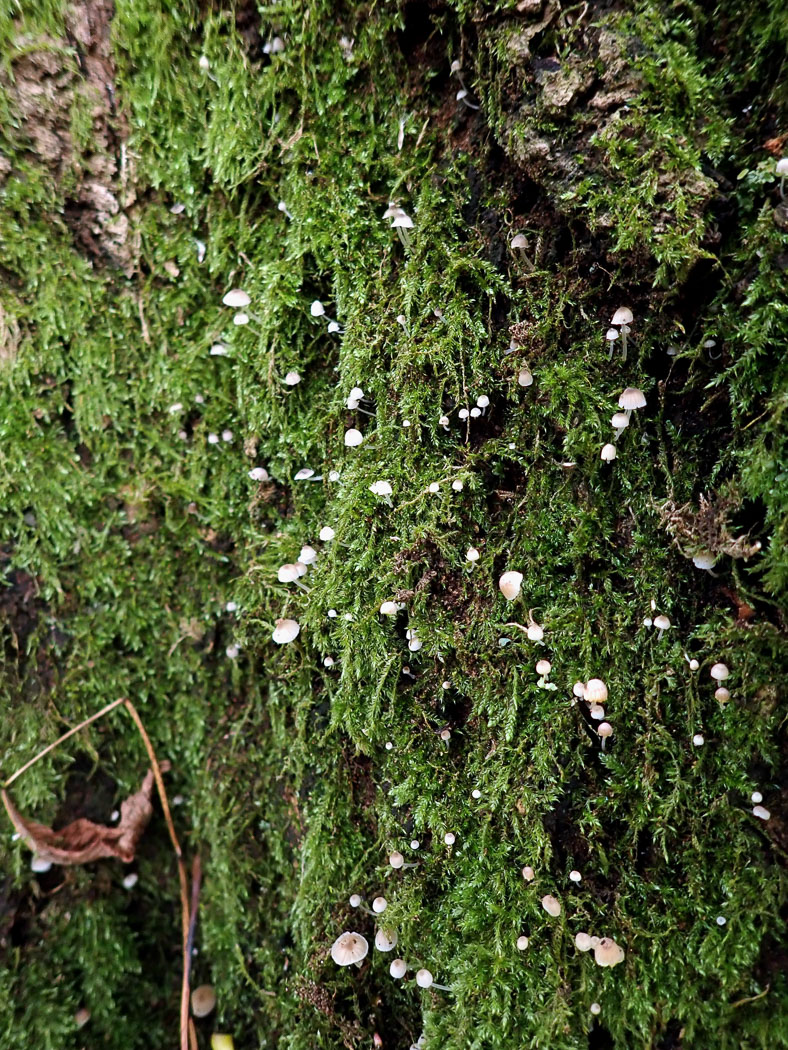
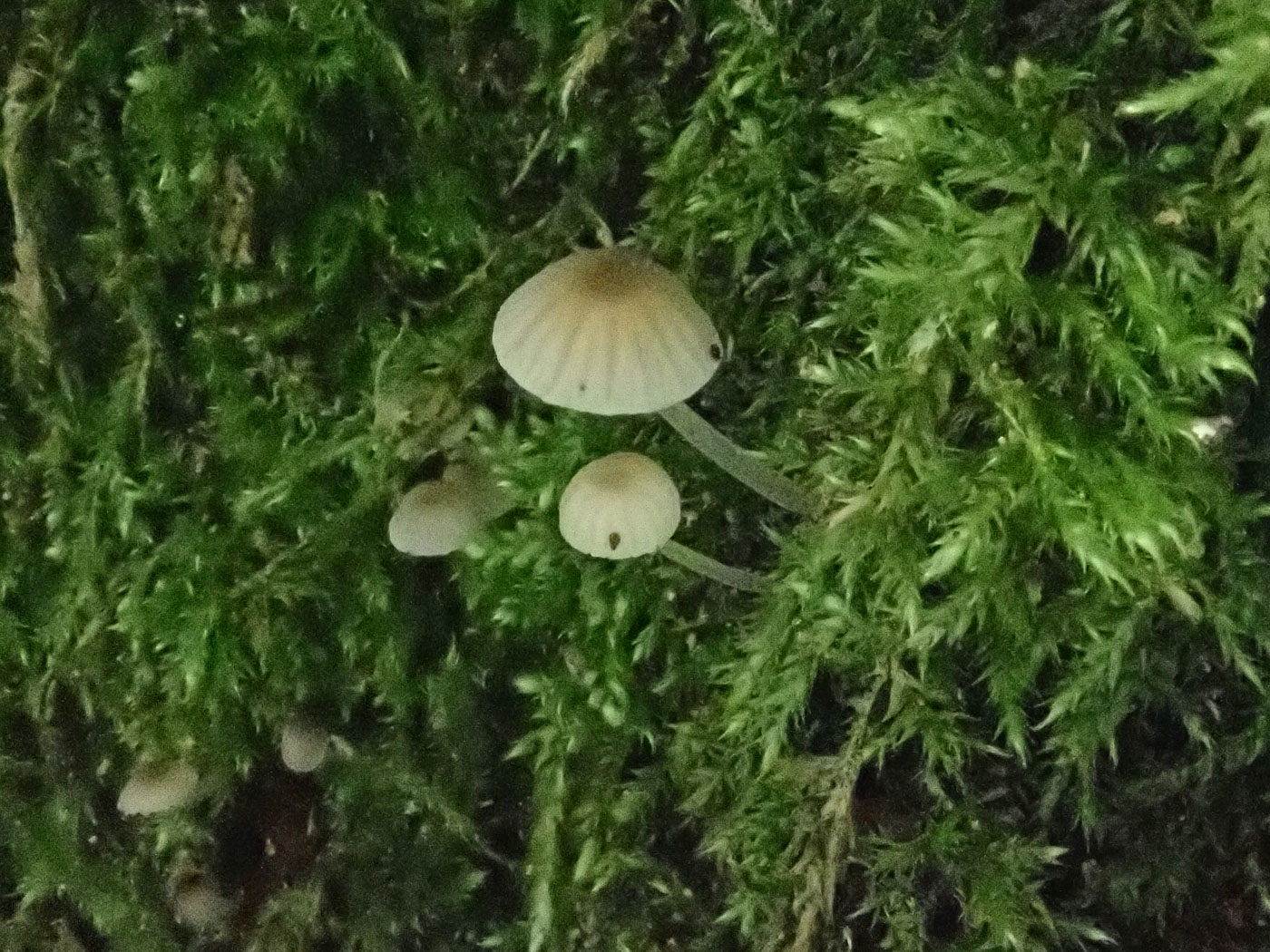
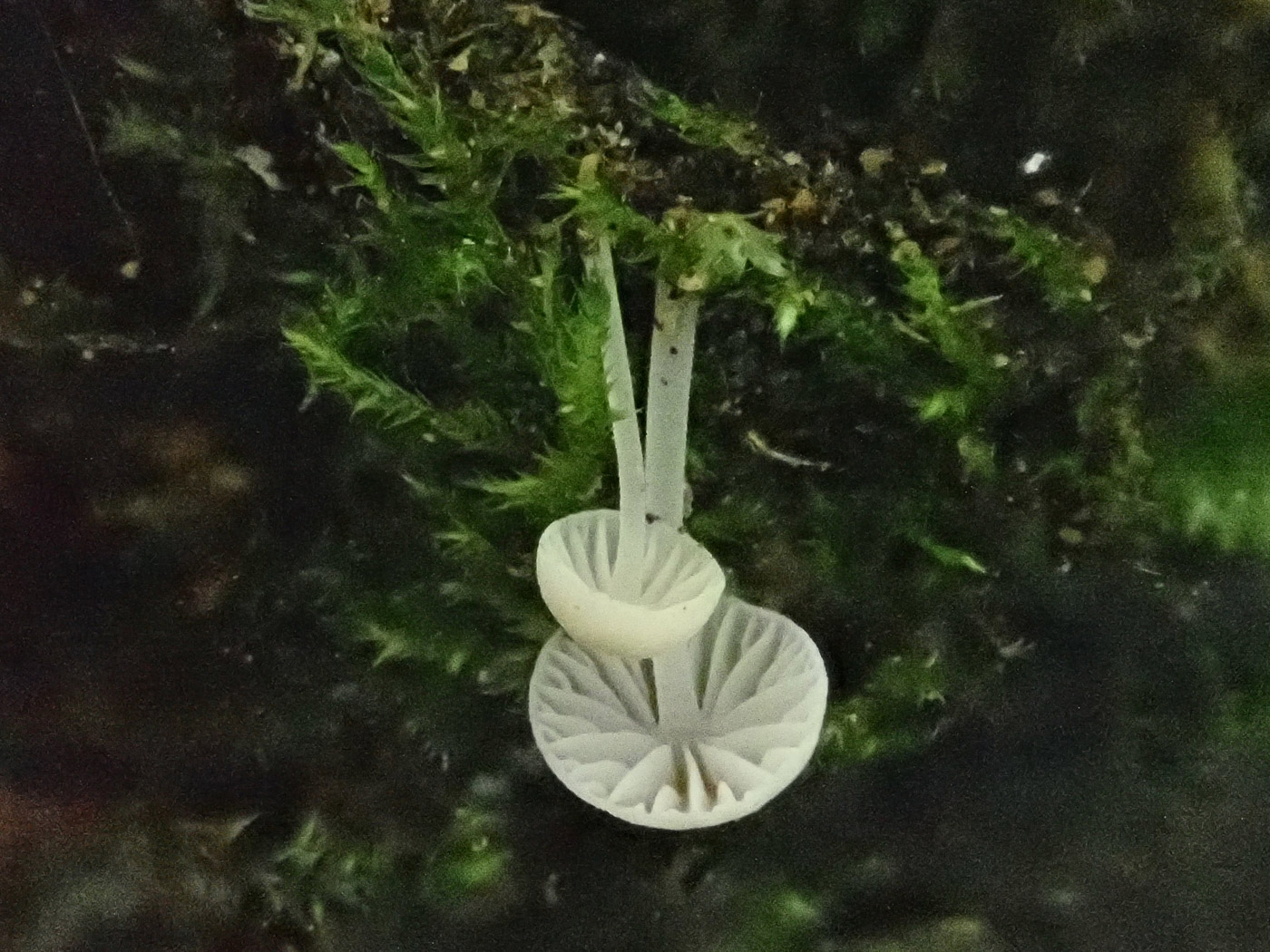 |
December 3rd Mycena hiemalis (a Bonnet with no common name) 
Low down on a mossy Willow trunk at Weston Turville Reservoir Penny noticed a swarm of tiny Bonnets, wondered about M. speirea (Bark Bonnet) owing to their beige colour with darker cap centre, but on turning one over noticed that the gills were not decurrent thus eliminating that species and suggesting the very similar M. hiemalis. This was confirmed by the cells found on the gill edge with a scope at home. The species is quite common and favours exactly this substrate, ie mossy deciduous standing trunks, and though initially very similar to M. speirea, the lack of decurrent gills are key to its recognition. This is a new entry for Finds.
|


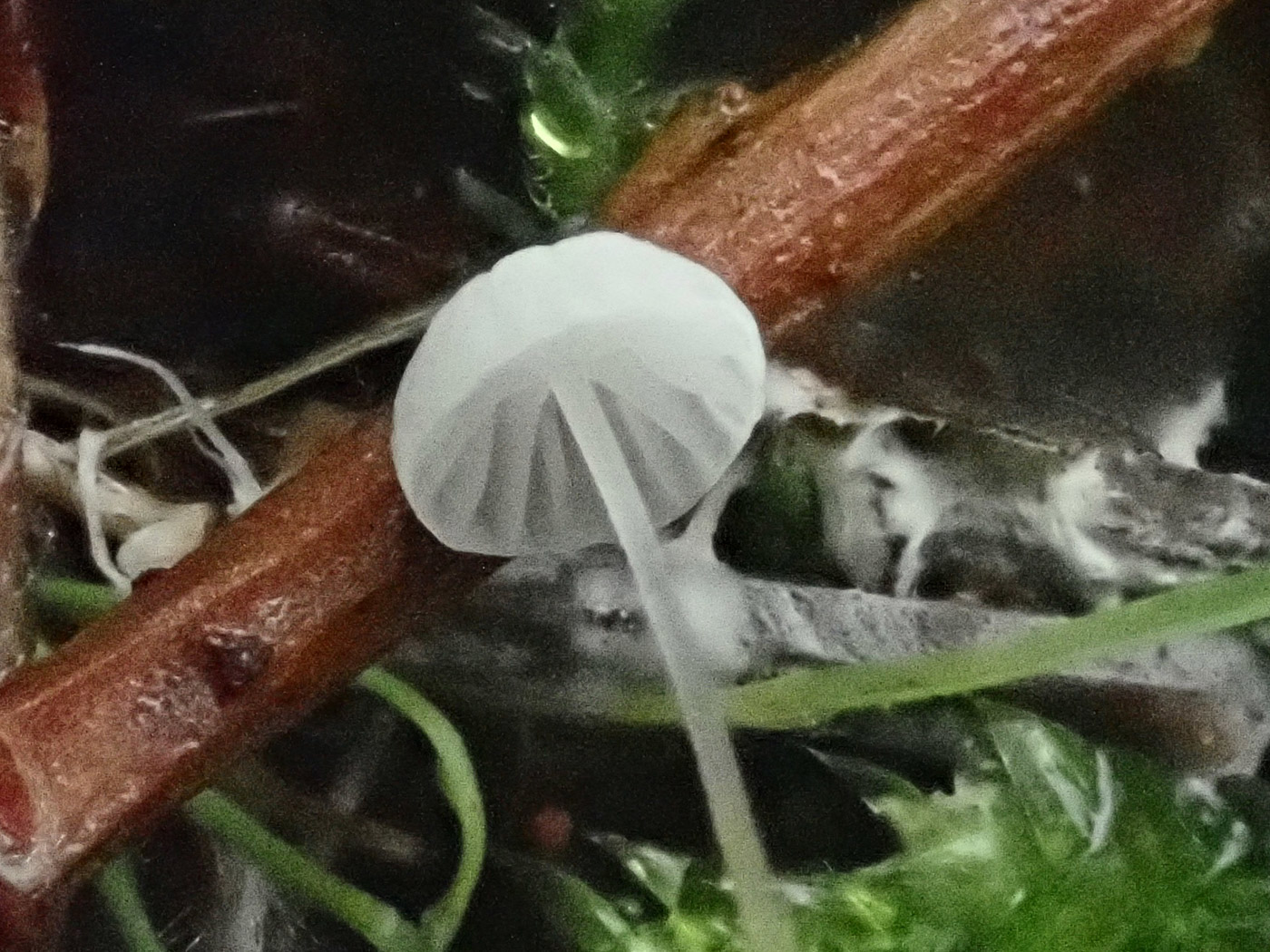 |
December 3rd Marasmius setosus (Hairy Stem Parachute) 
At Weston Turville Reservoir Penny noticed a few of these tiny bright white caps glistening amongst the damp leaf litter under Willow near the water's edge (photo 1). Photo 2 shows their typical Marasmius stems once extracted from the vegetation, ie hairlike in thickness, white at the apex then gradually yellowish to ochre to reddish or black lower down - unlike Mycena stems which tedn to remain white throughout. Photo 3 shows the somewhat Mycena-like gills, however. The extremely finely hairy stem is not easy to see even with a handlens but the brilliant white cap, though at most 4mm across, is not difficult to spot amongst deciduous leaf litter. Though common this is a new entry for Finds.
|
 |
December 3rd Kuehneromyces mutabilis (Sheathed Woodtuft) 
On the end of a large deciduous log at Weston Turville Reservoir Penny found this large fruiting of a common clustering wood-inhabiting species - one that can be confused with Galerina marginata (Funeral Bell) which occurs in similar form fallen wood though has larger distinctly ornamented spores. The caps of today's species are strongly hygrophanous, often giving a two-tone effect with much paler centre (just visible in the top left-hand specimen in photo 1) which also helps to separate the two species in the field. Both species are in Finds for comparison - see the Masterlist for details.
|

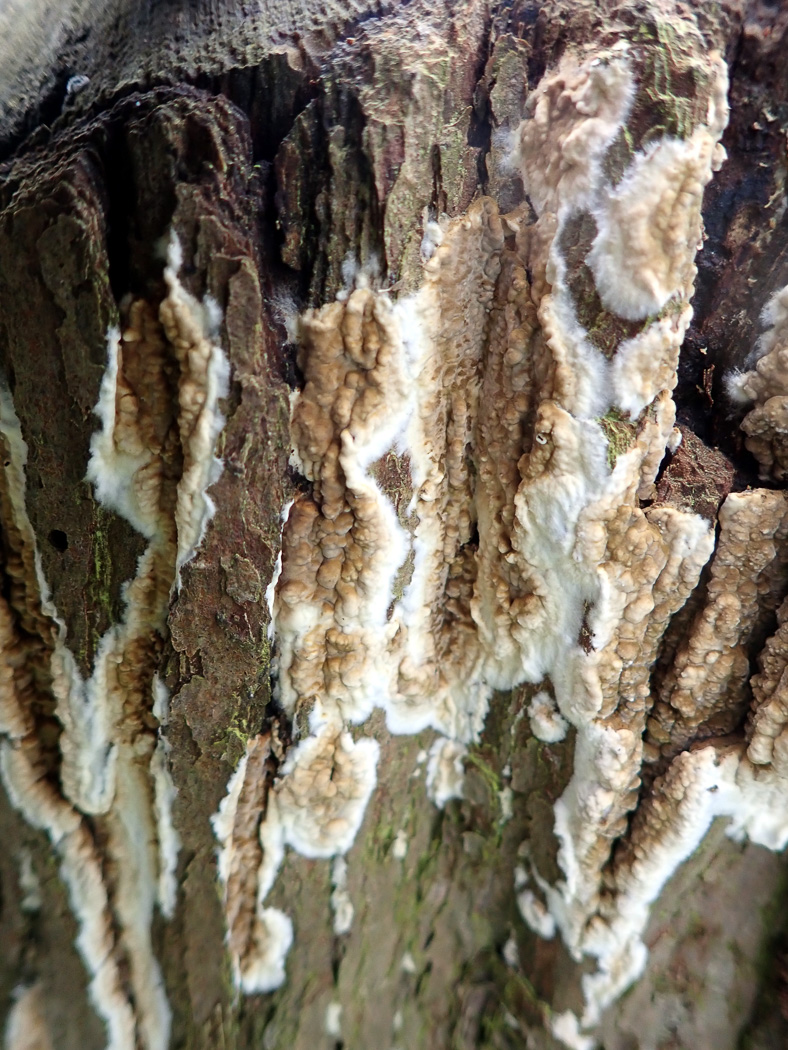 |
December 3rd Coniophora putiana (Wet Rot)
On a deciduous stump at Weston Turville Reservoir Penny noticed this generous patch of a common corticioid species - one you don't want to discover in your home! It can attack damp untreated wood in cellars and the like. Typical of it is the white finely fringed edge and, as it matures, the wrinkled cream to dirty ochre-olive centre. It occurs on both deciduous and coniferous woods. See also Finds 2020 November 2nd.
|
December 2nd 2022
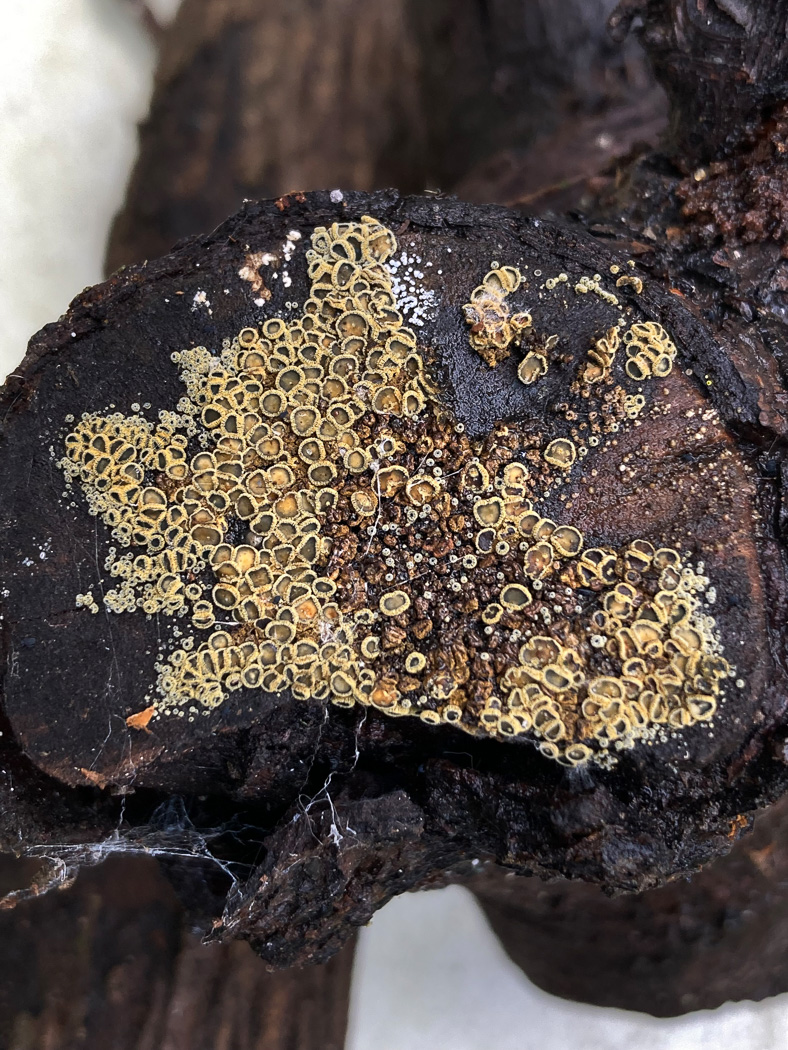

 |
December 2nd Neodasyscypha cerina (an Ascomycete with no common name) 
In his garden in Cippenham Russell Ness has been watching the development of this swarm of interesting little cup fungi on the cut end of a log in a wood pile, which he identified using Ellis & Ellis. As cup fungi go, this is certainly a striking and individual species with its almost Mollisia-like centre but having a distinctly frilly edge. Previously in genus Dasyscyphus, this is our second county record though the species appears to be not that uncommon. See Finds 2021 Jan 12th for Barry Webb's image when he suggested it should be named 'Lemon Tarts' - very apt!
|
December 1st 2022
 |
December 1st Hemitrichia serpula (a rare Slime Mould with no common name)
At Hedgerley Green Barry Webb was excited to find this rare species growing on a fallen Laurel leaf. Not only new to the county, it is a species with few UK records though with climate change it is beginning to occur naturally in woodland rather than in hothouses. Its shape and form certainly make it distinctive and to Penny it is reminiscent of a tiny Cadbury's 'Curly Wurly'!
|
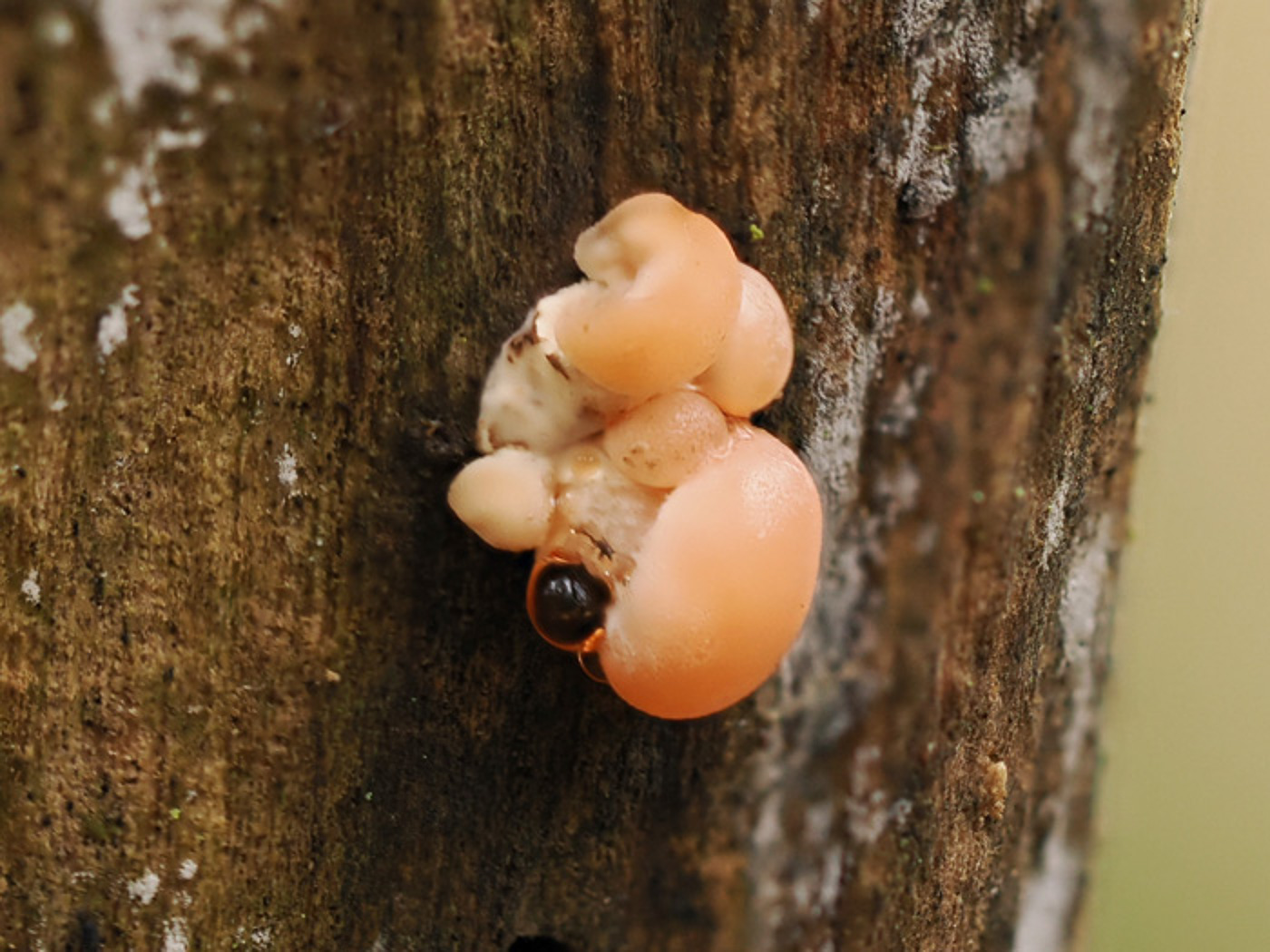
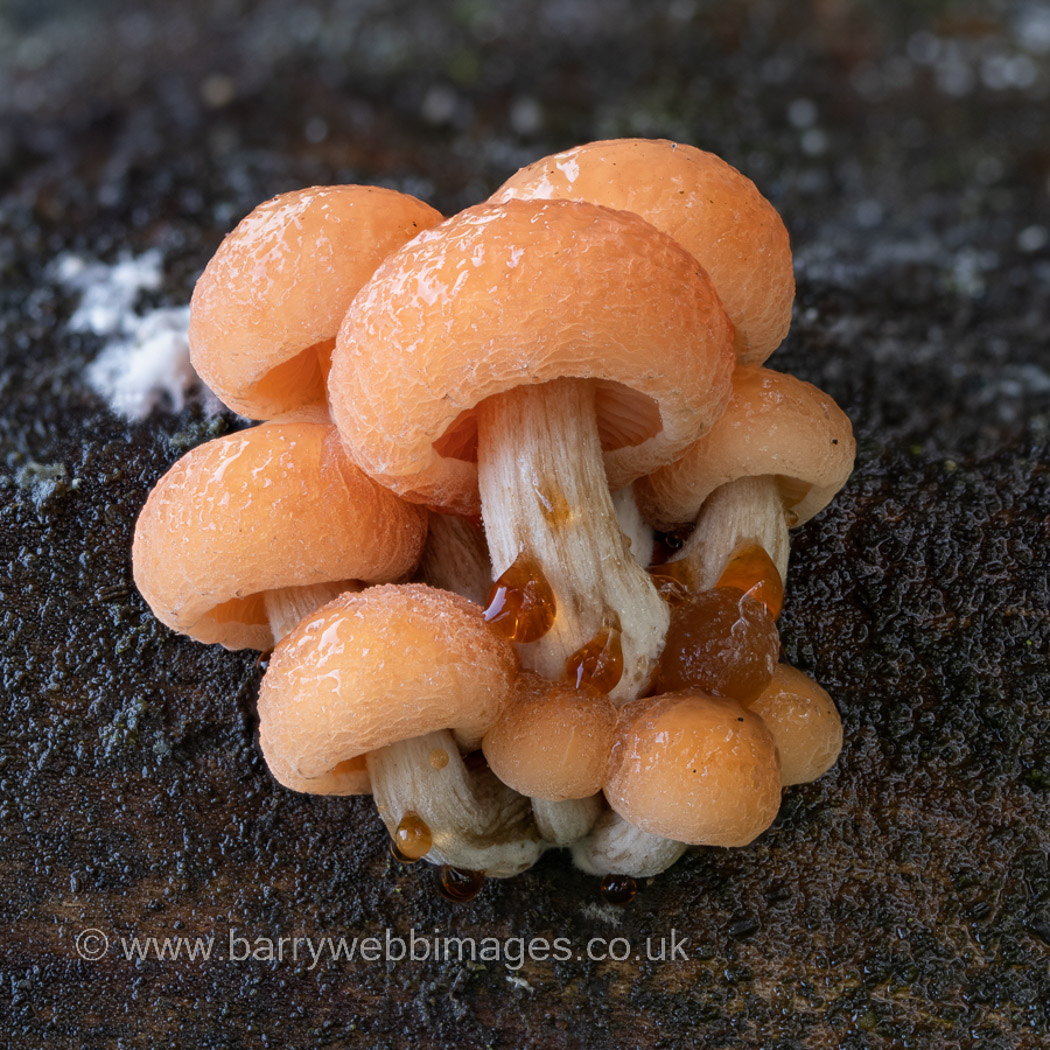 |
December 1st Rhodotus palmatus (Wrinkled Peach)
In Hughenden Valley, presumably on Wych Elm, Claire Williams noticed a small cluster of this beautiful and uncommon species just starting to emerge - a species she's found at this spot before. Photo 2 is Barry Webb's, taken a couple of weeks earlier at Hedgerley Common. See the Masterlist for further examples.
|

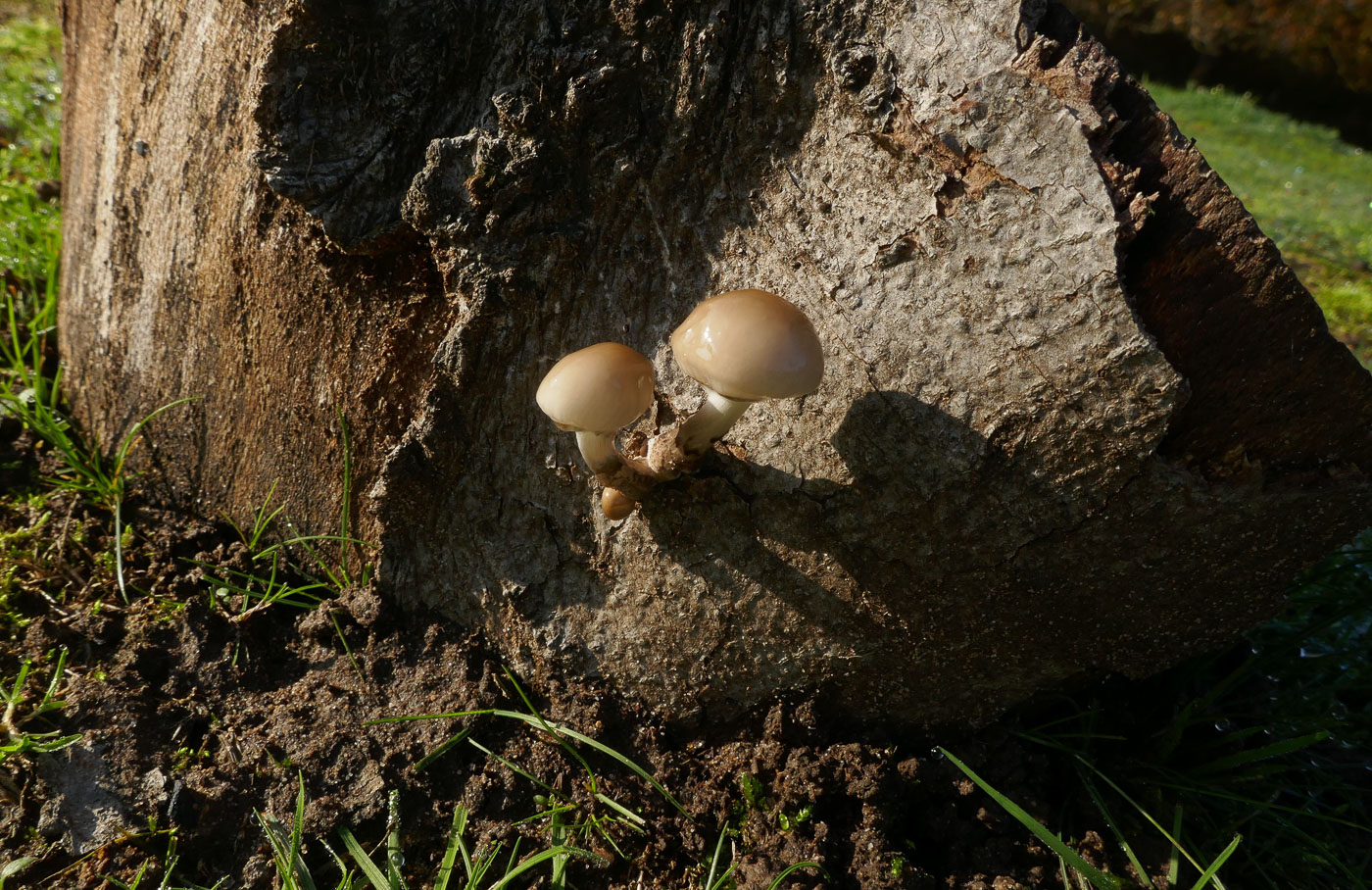 |
December 1st Mucidula mucida (Porcelain Fungus)
On a Beech log at Stampwell Farm Jackie Ewan noticed this late though fresh fruiting. The species (previously in genus Oudemansiella) is easy to recognise when mature, being shiny white translucent, very slimy and with a ring on the stem, always on Beech, but can confuse when immature. Hence these useful images showing the ring not yet formed as such but still attached to the cap edge to protect the young gills, also the grey-brown cap colour - see the tiny button visible at the stem base in photo 1, also the larger caps in photo 2. See the Masterlist for several other images.
|
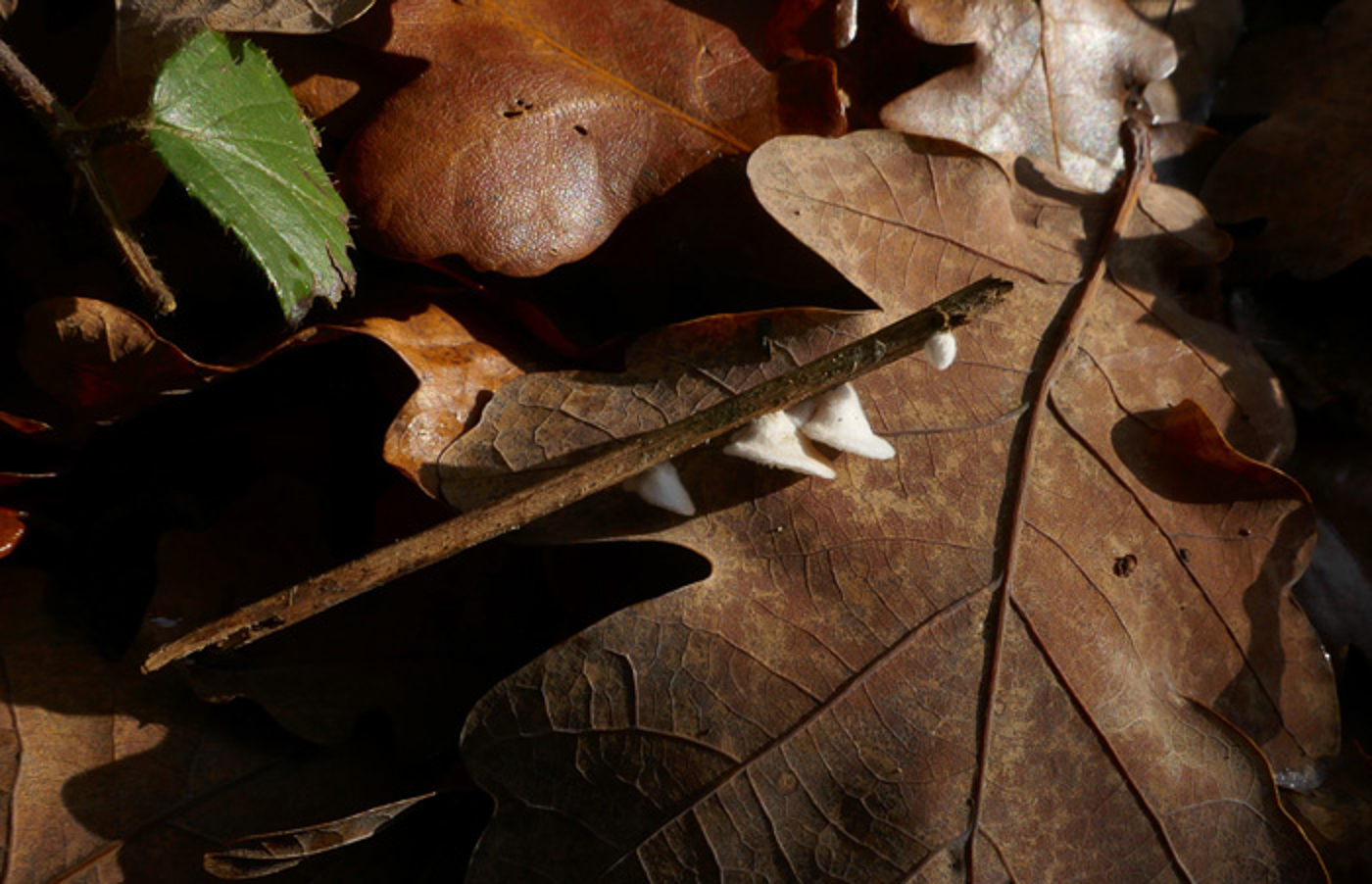
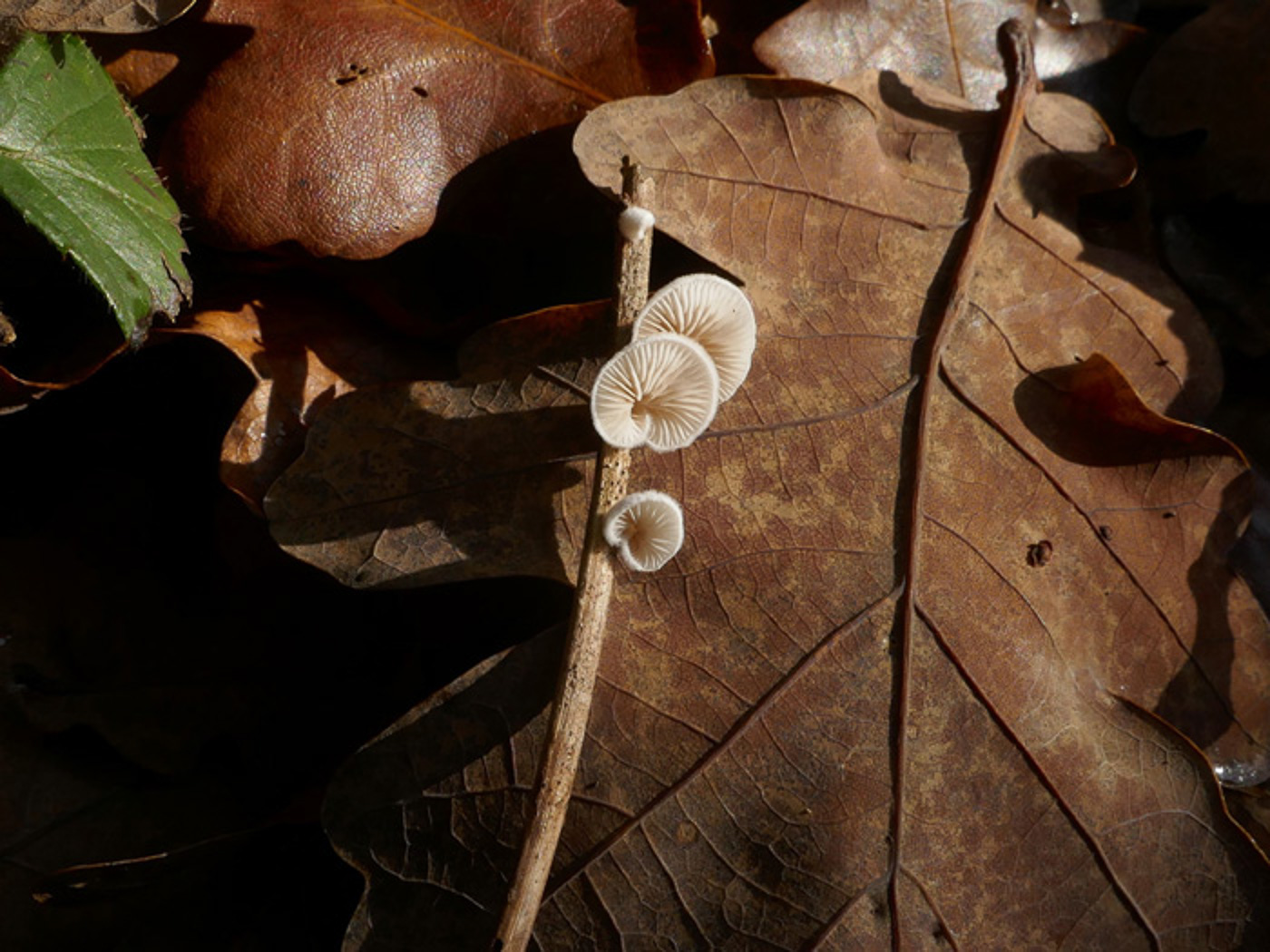 |
December 1st Crepidotus variabilis (Variable Oysterling) 
At Stampwell Farm Jackie Ewan found this Oysterling on a twig in Oak leaf litter. This is one of our two commonest Oysterlings, the other being C. cesatii (Roundspored Oysterling). However, common or not, they both need a scope to name them to species, occurring as they do in very similar woodland habitats. We have just single entries for both species from 2020 in Finds: October 8th for C. cesatii and October 18th for C. variabilis.
|
November 30th 2022
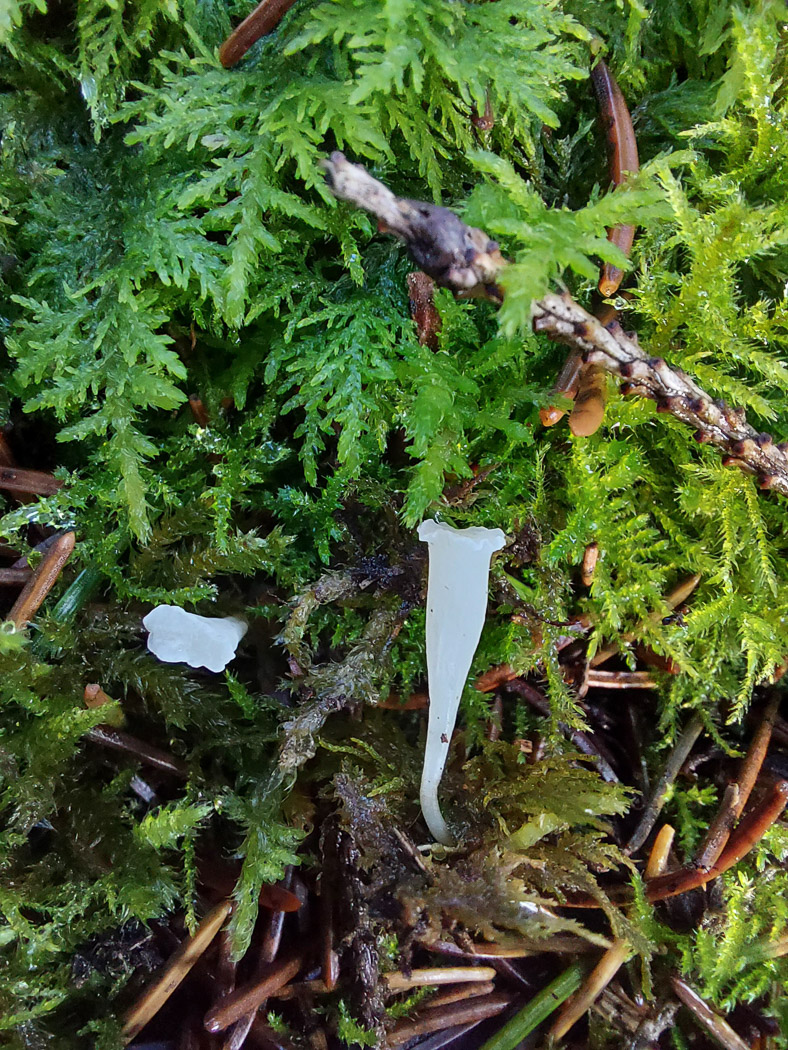
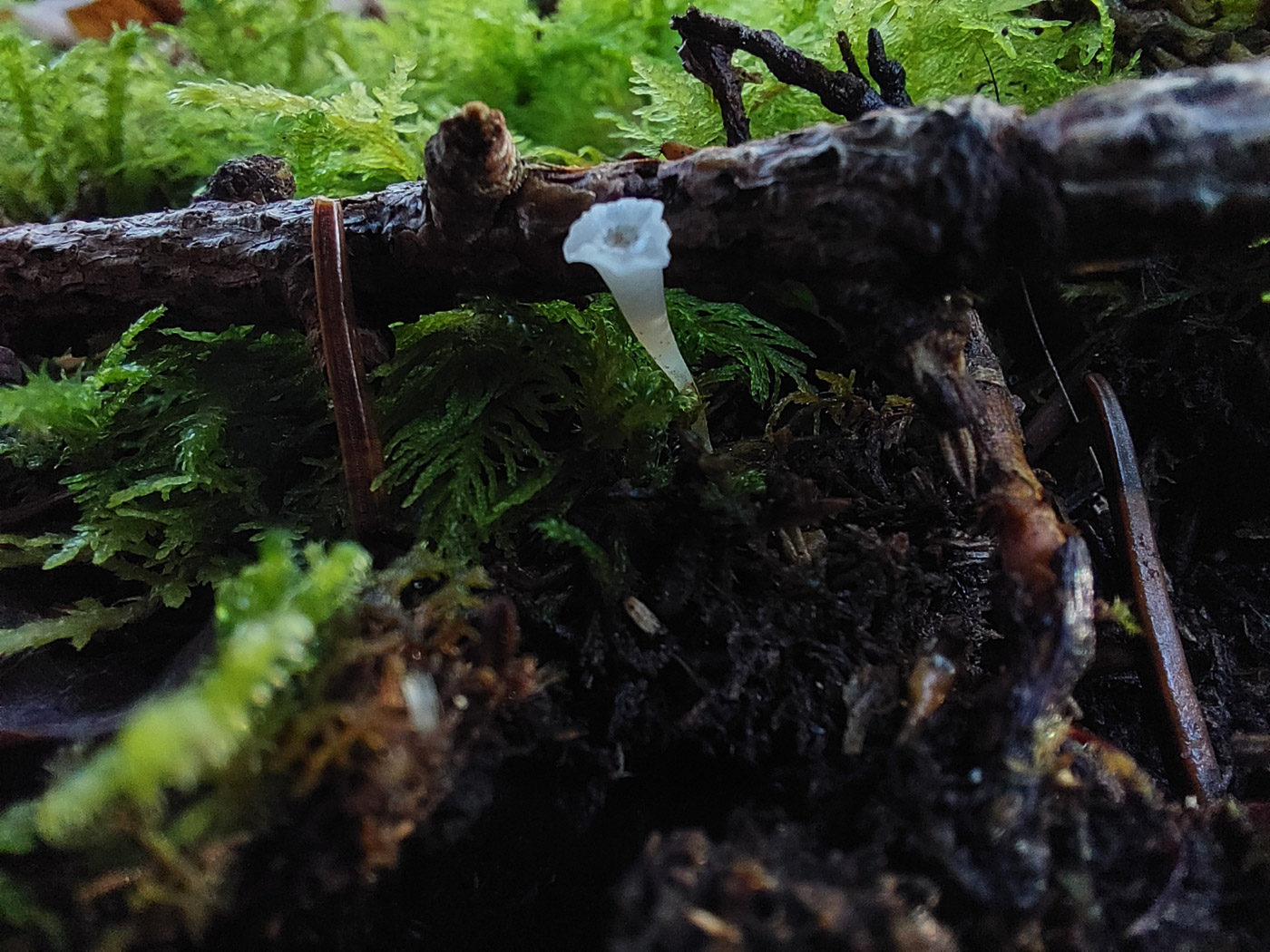 |
November 30th Clavicorona taxophila (a Clavarioid species with no common name)
In conifer litter at Bernwood Forest Jesper Launder picked out this unusual and beautiful tiny white fungus which was new to the county last year. Resembling a champagne flute with a slightly frilly edge it is unmistakable if you can find it! See our previous two collections in Finds 2021 Dec 12th and 30th.
|
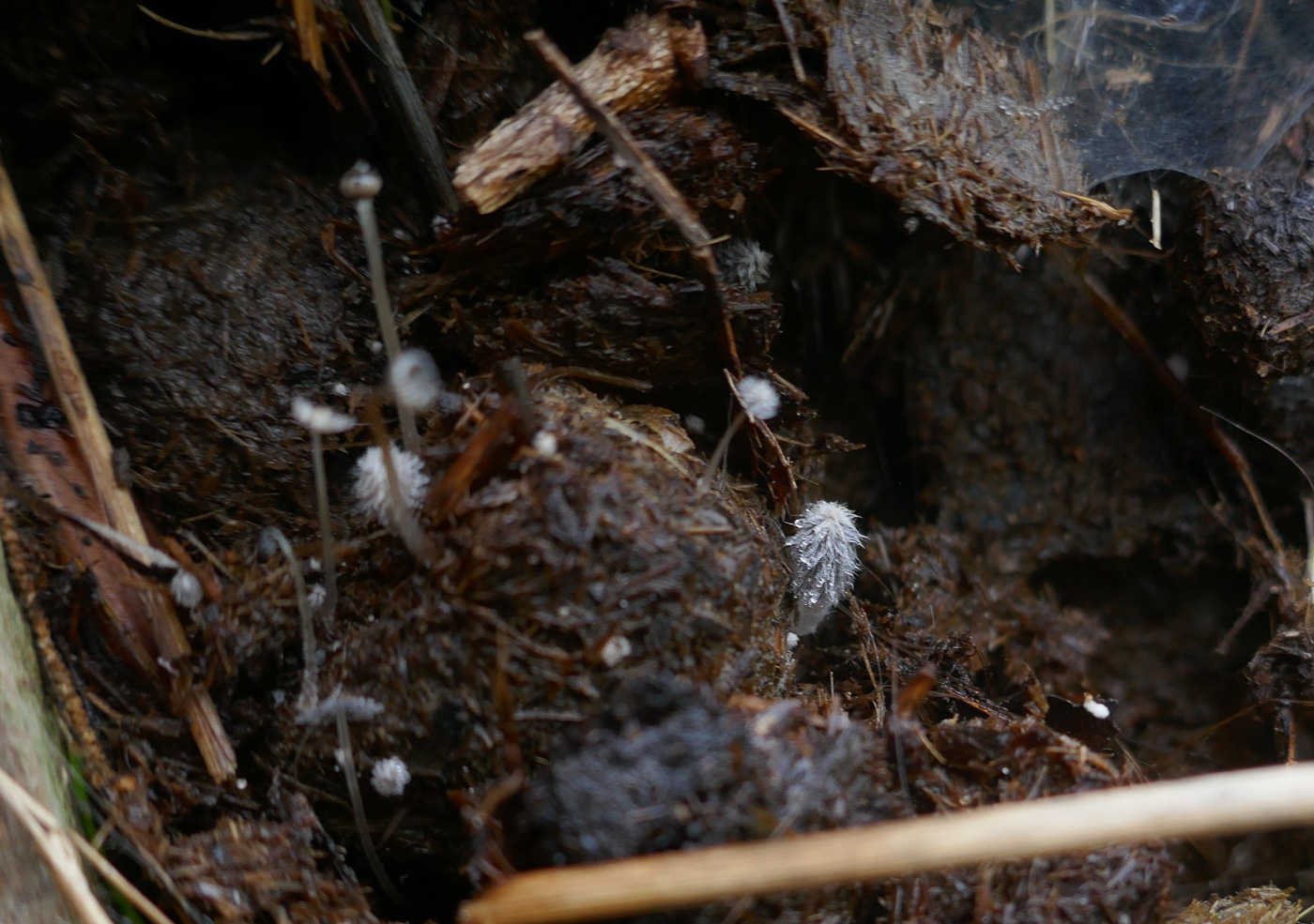
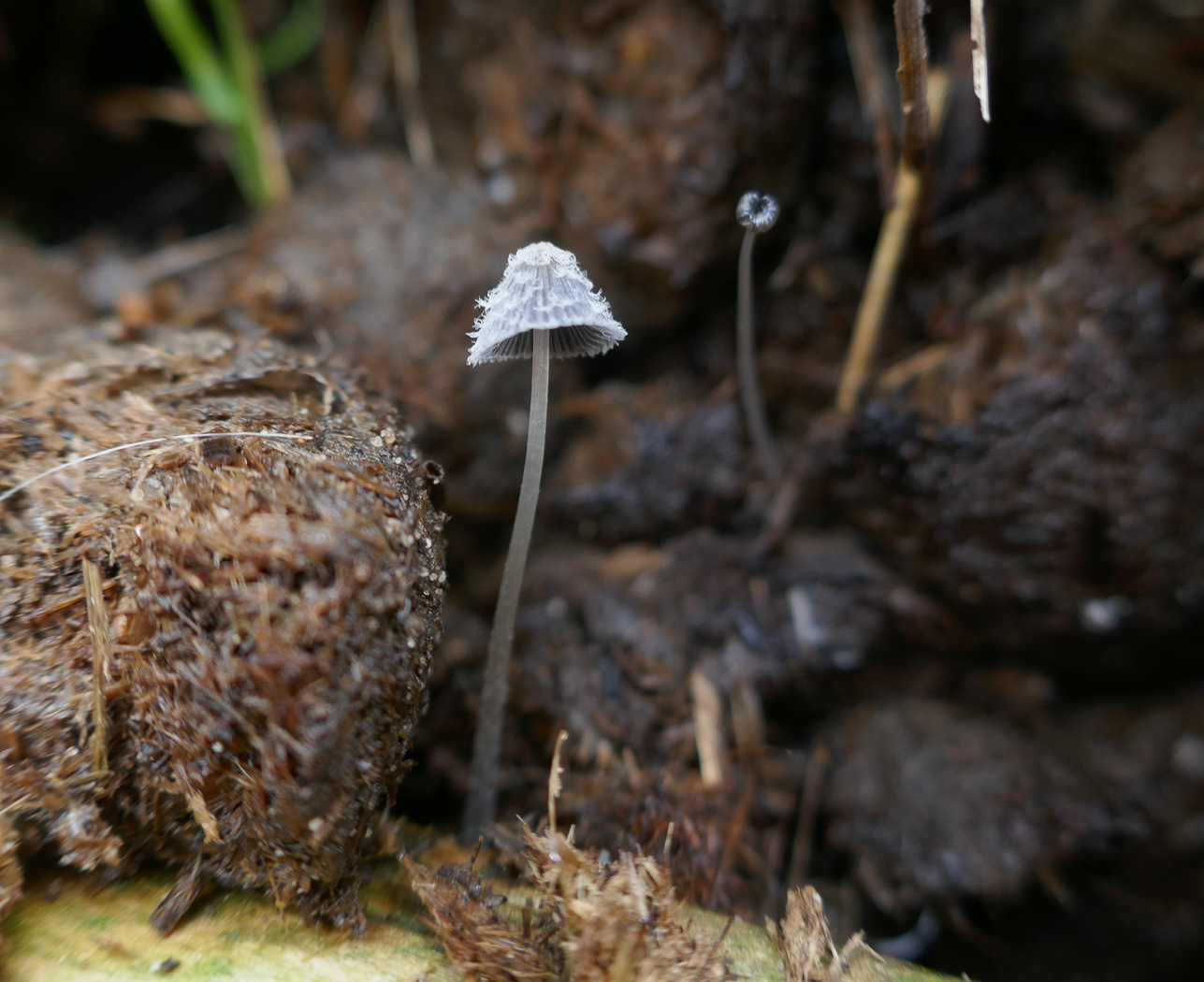
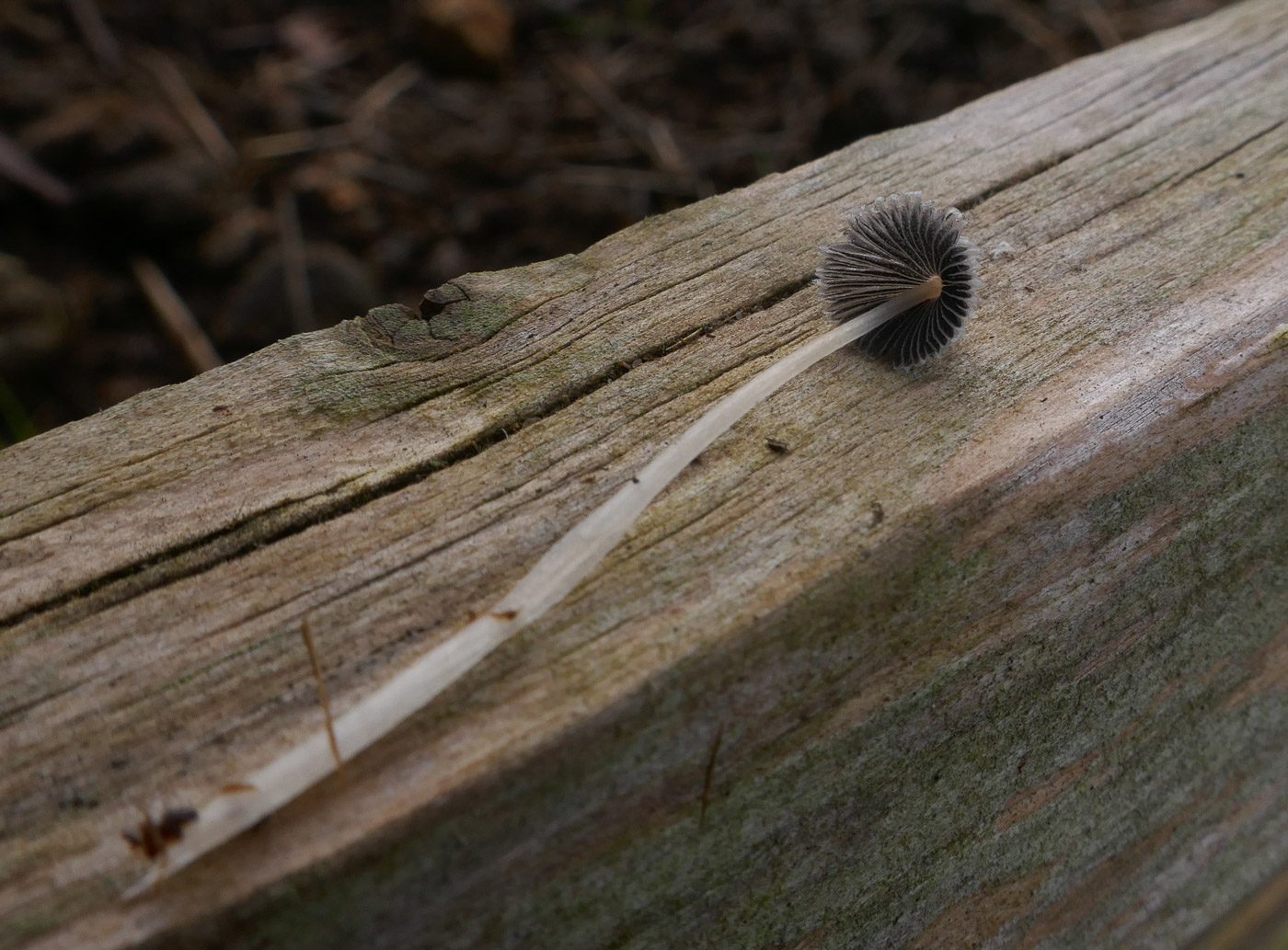 |
November 30th Coprinopsis radiata (an Inkcap with no common name) 
On a dung heap at Stampwell Farm Jackie Ewan noticed these small Inkcaps coming up and then checked the microscopy. The photos were then sent to Derek to confirm the identification. The species is apparently common on rotting straw, dung heaps etc though we don't have that many county records and this is a first for Finds.
|

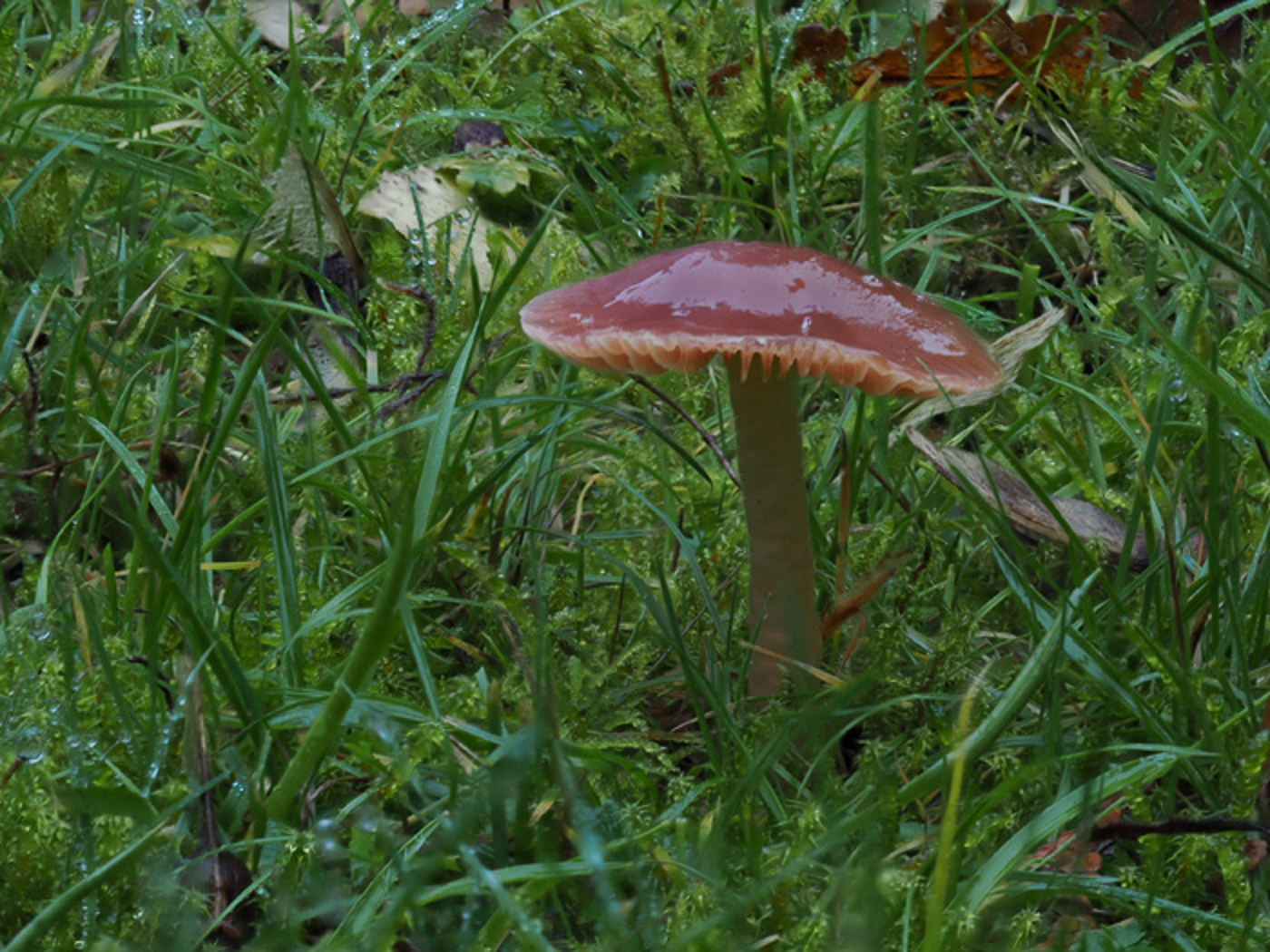
 |
November 30th Gliophorus reginae (Jubilee Waxcap)
In Lacey Green Churchyard Sarah Ebdon had been hoping for the appearance of this rare Waxcap which she found fruiting here in good numbers last winter. She and Claire Williams were delighted when it did so! It is closely related to G. psittacinus (Parrot Waxcap) but only in recent years established as a species in its own right, having no sign of green even at the stem apex and sometimes with a sign of yellowing at the stem base (though this was not very clearly in evidence today - photo 3). If you have a local patch where Waxcaps are found, this is definitely one to watch out for now. See also Finds 2020 November 23rd and 2021 January 12th. (Photos 1 and 2 are Claire's, photo 3 is Sarah's.)
|
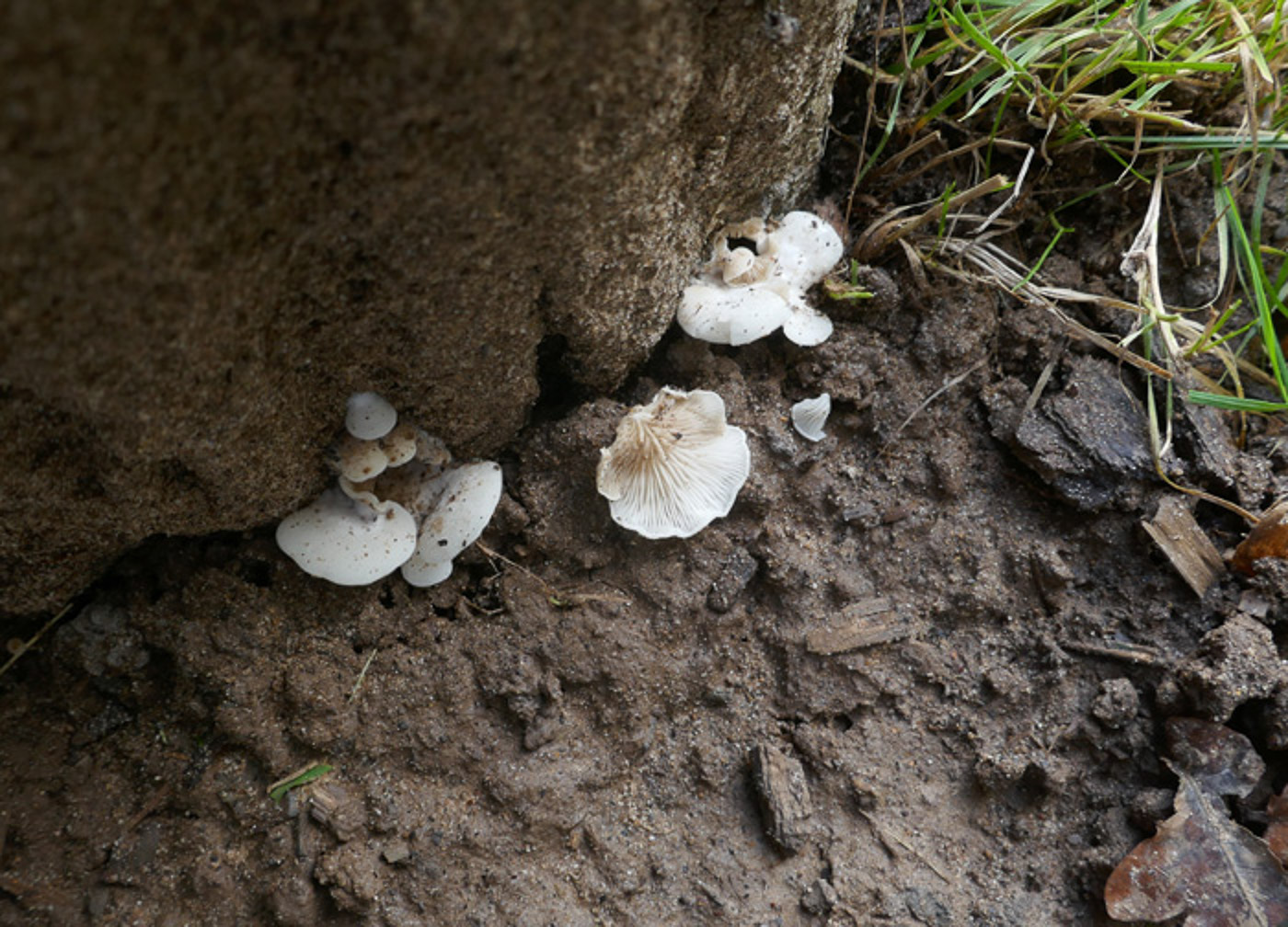 |
November 30th Crepidotus caspari (Pale Oysterling) 
At Stampwell Farm Jackie Ewan found this Oysterling growing on an old Ash log, and identified it (as one has to) by spore size and ornamentation, also other microscopic features. This is a genus of pretty delicate little virtually stemless mushrooms, the species of which are extremely similar - hence the essential use of a scope. This species (previously C. autochthonus) is one we record less frequently than others and is new to Finds. Compare with others of the genus using the Masterlist.
|
November 29th 2022
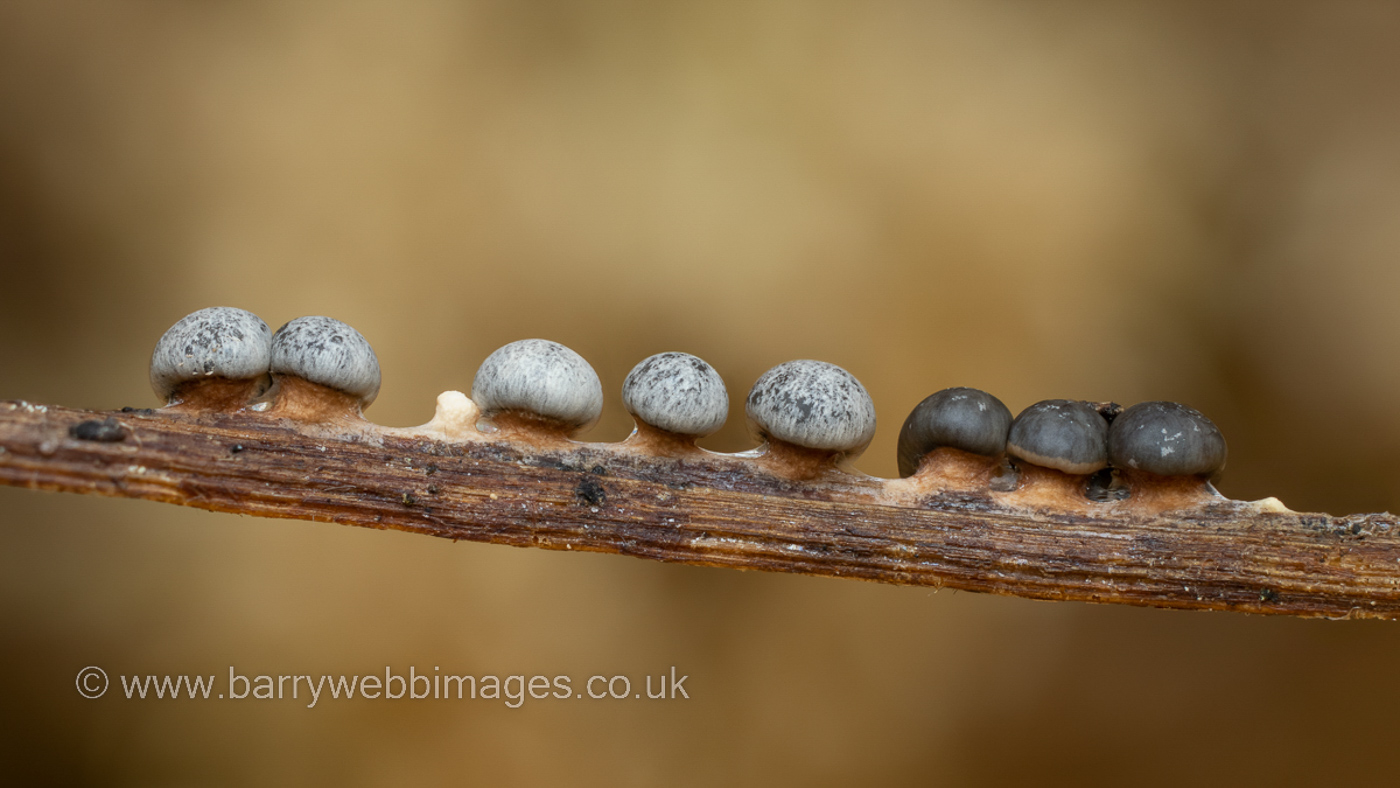 |
November 29th Diderma umbilicatum (a Slime Mould with no common name)
At Burnham Beeches Barry Webb found this unusual Slime mould on twigs in deciduous leaf litter, a species that was new to the county when he found it at Hodgemoor Woods earlier this year (see Finds 2022 January 12th). The short stout stalk help to make it recognisable in the field.
|
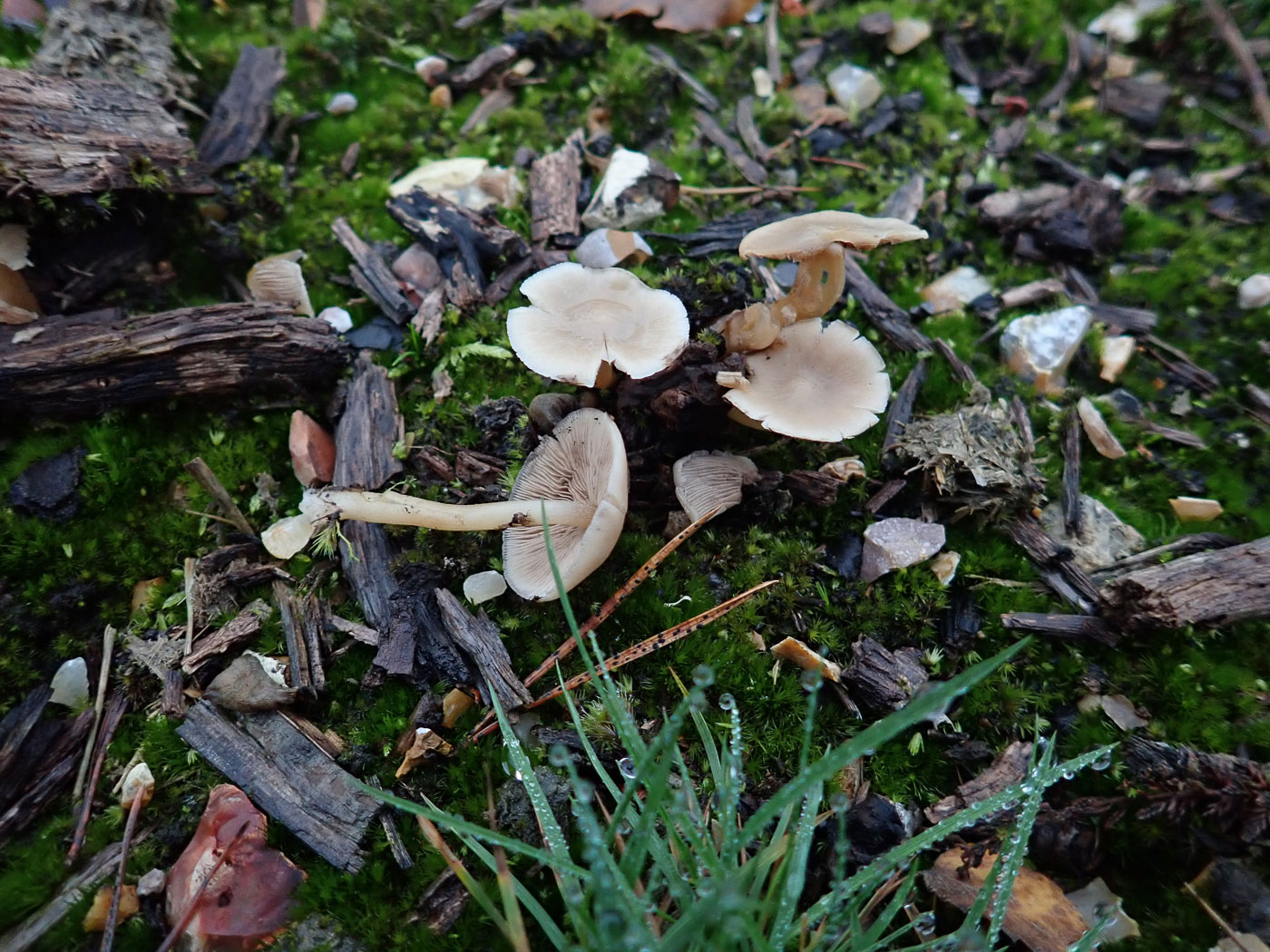

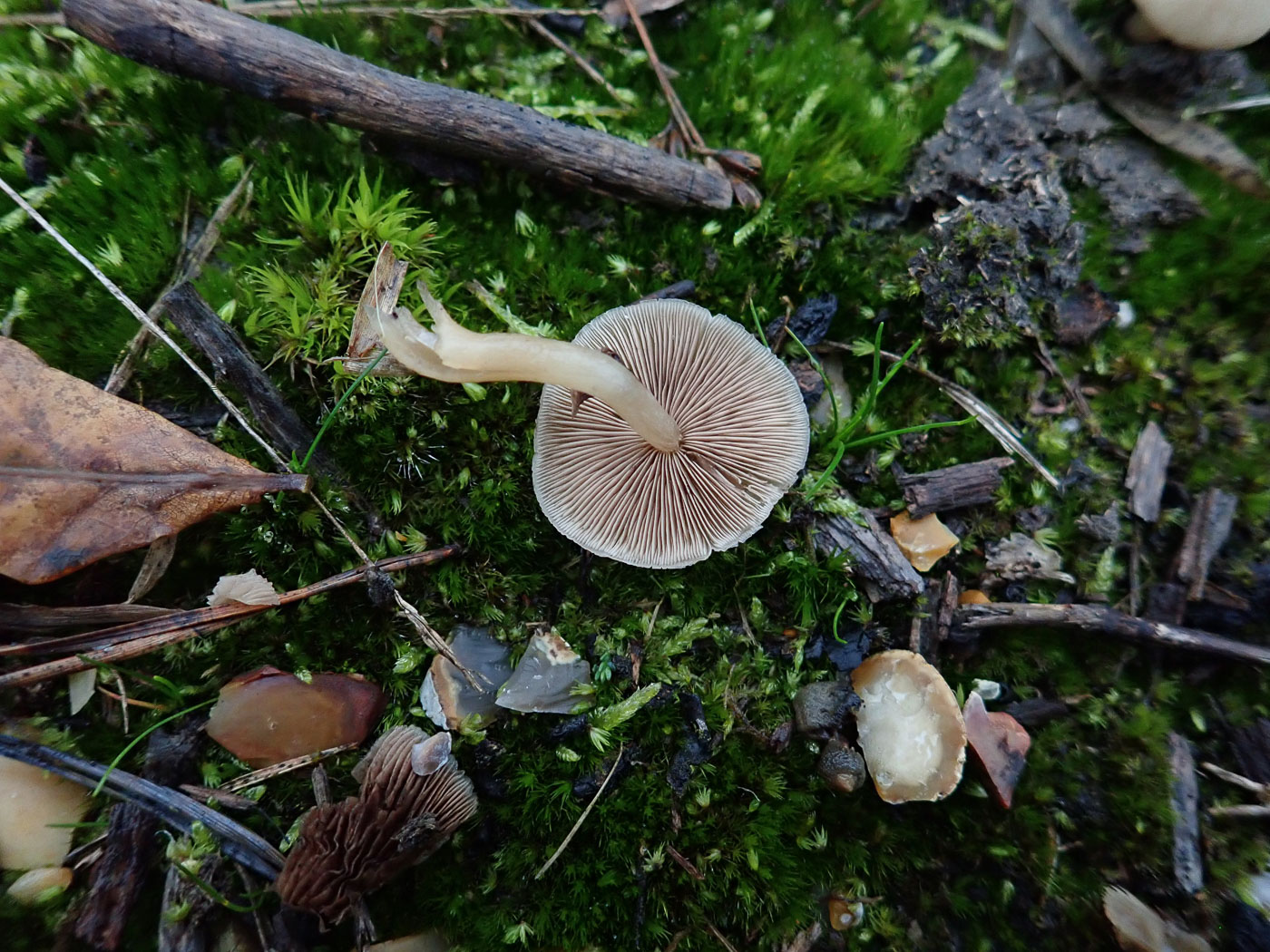 |
November 29th Psathyrella laevissima (Slender Stump Brittlegill) 
At Stoke Common in a disturbed area with a lot of shredded woody remains, also burnt patches, Penny came across this cluster of smallish LBJs which looked unfamiliar. At home a spore print revealed dark brown spores despite the rather pale almost pinkish-buff gills, also with a scope she found particularly interesting cells on the flat gill surface which led her to the genus Psathyrella. It then keyed straight out to this unusual species which she'd found only a couple of times previously in the county. The species is similar to the very common P. piluliformis (Common Stump Brittlegill), sharing with it very small spores for the genus, crowded rather shallow gills, a strongly hygrophanous cap and its clustered habit on fallen deciduous wood. The key difference is the remarkable pleurocystidia (on the gill face) which tend to have a rostrum (a 'tail' or short spike) - occasionally two - extending from their tips. This is the first entry for Finds.
|
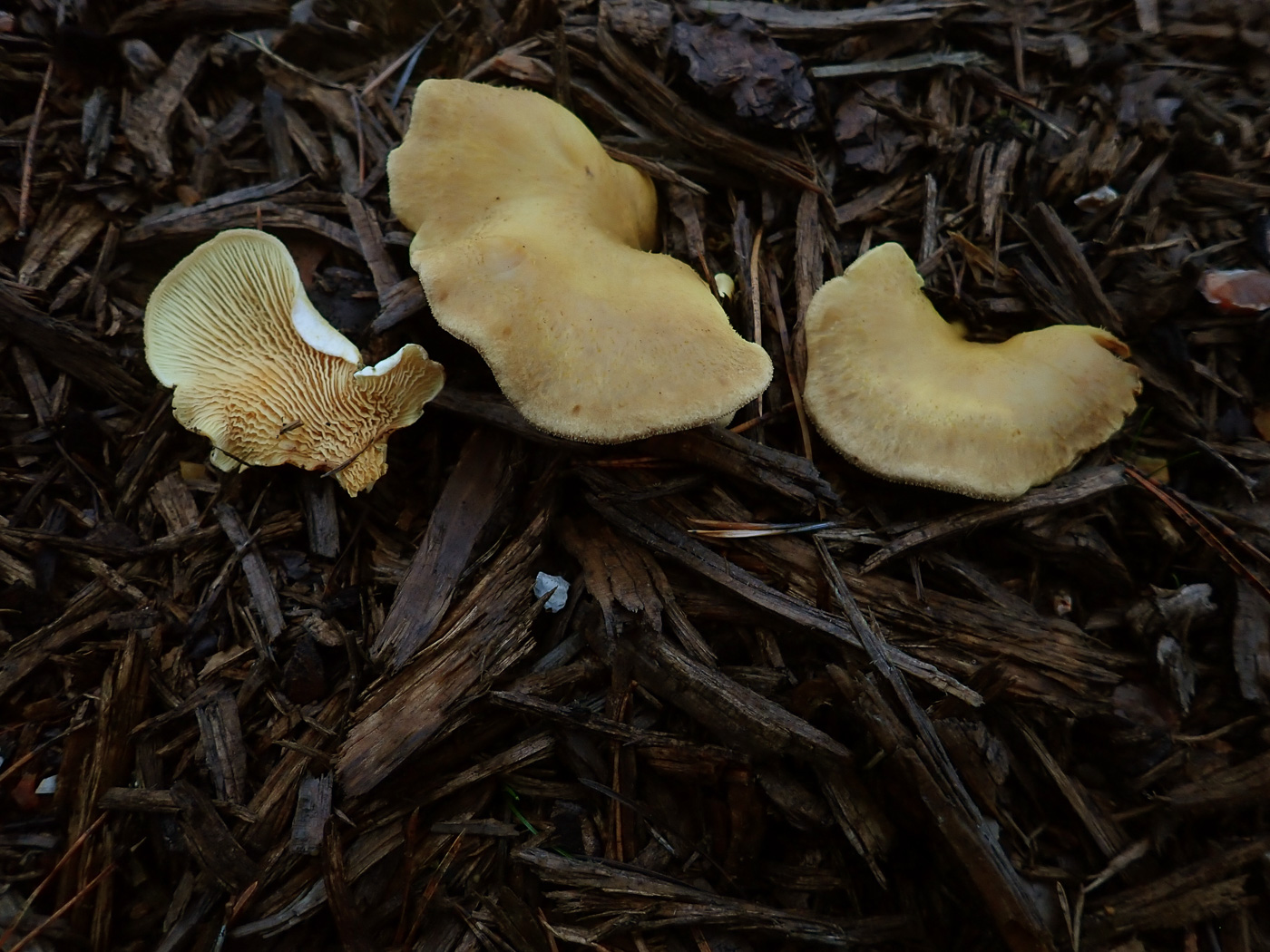
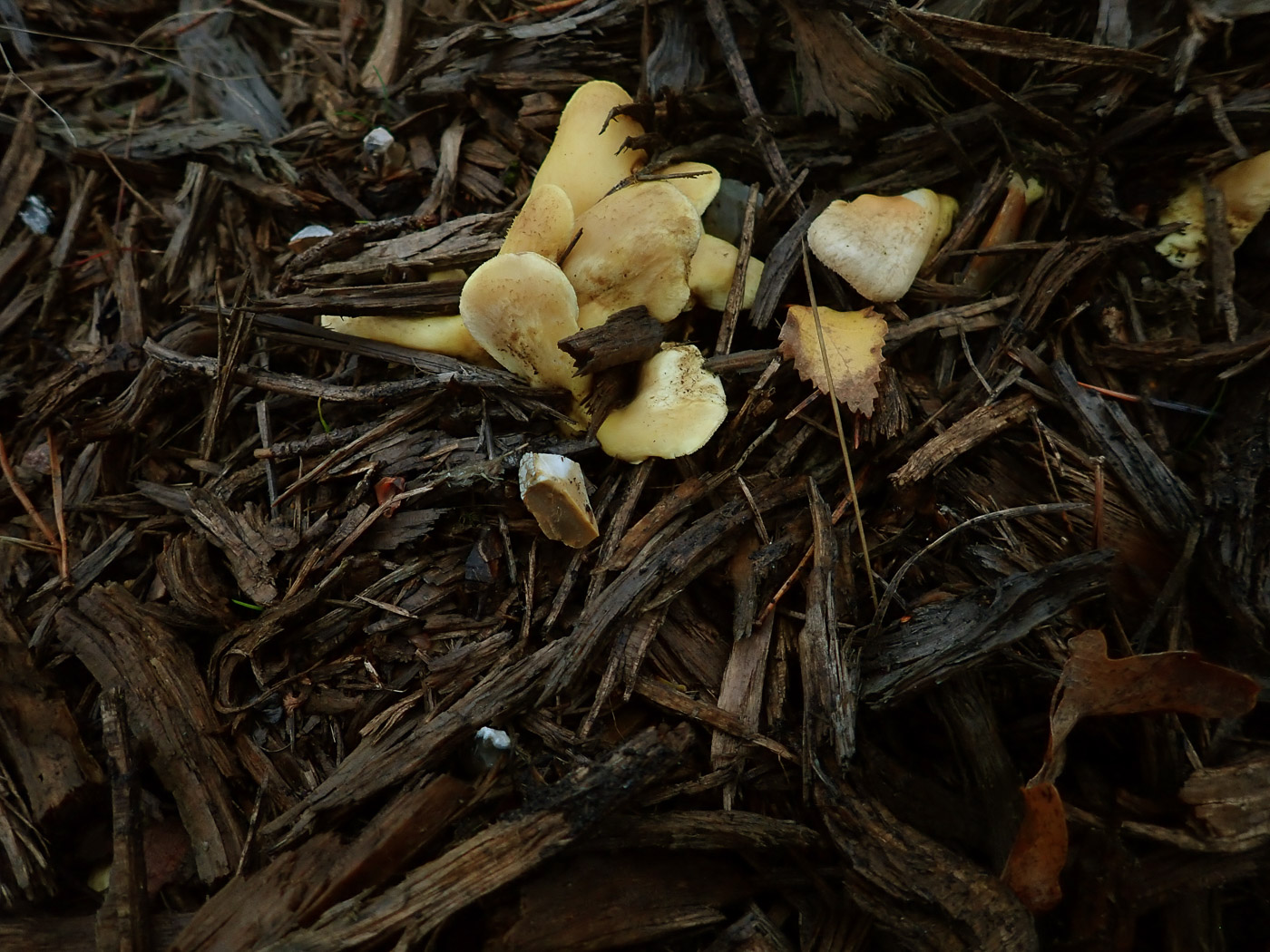
 |
November 29th Tapinella panuoides (Oyster Rollrim) 
At Stoke Common in a disturbed area with a lot of shredded Pine debris Penny noticed this cluster of ochre caps which looked unusual. Turning one over the lack of any stem and 'Pleurotoid' shape (like an Oyster Mushroom) then rang a bell and the ochre gills which are crowded, forking and also somewhat wavy all fitted with this quite unusual species. We have a handful of previous county sites for the species with one record from here in 2010. See also Finds 2020 October 15th and November 17th.
|
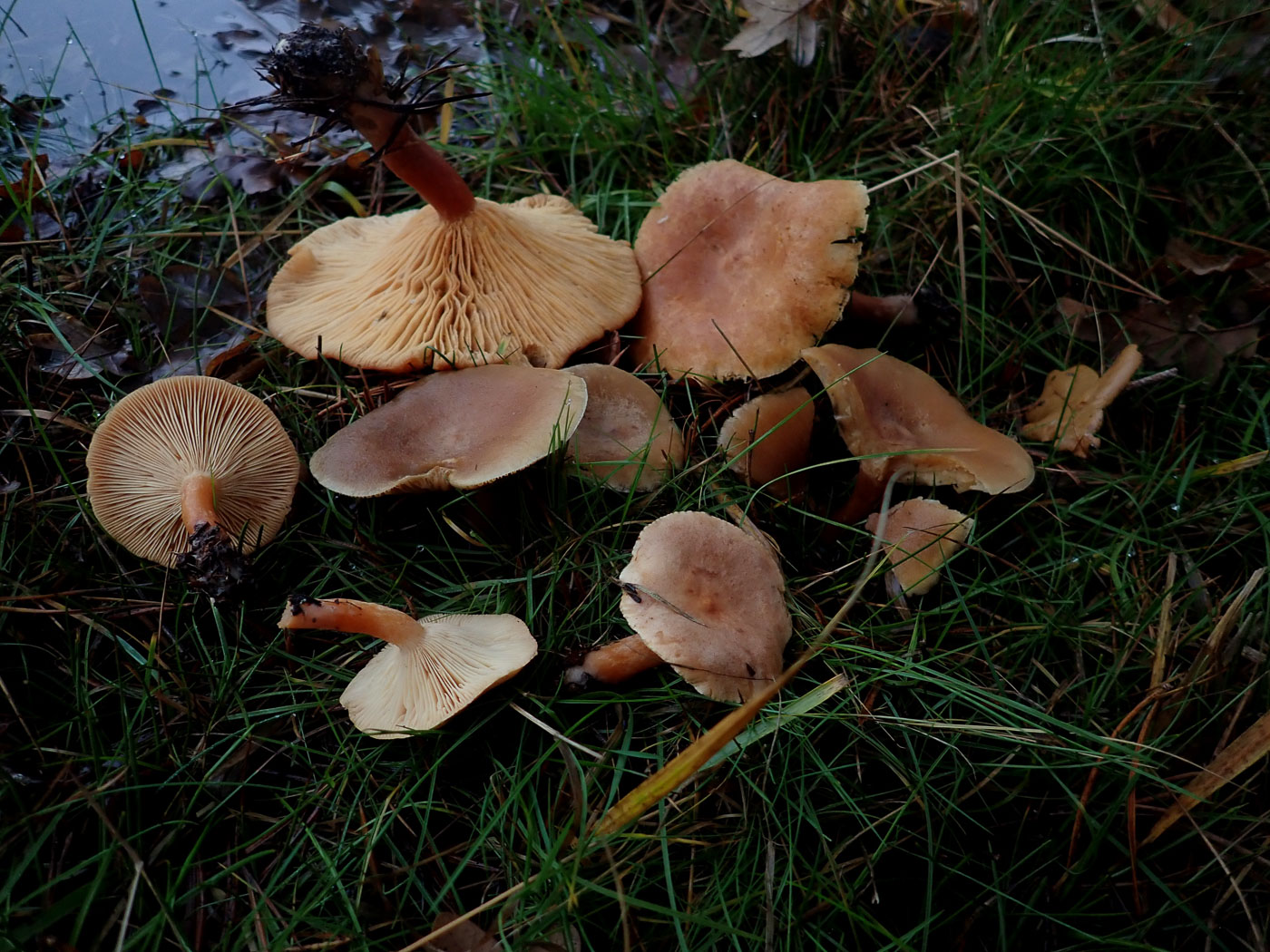 |
November 29th Lactarius helvus (Fenugreek Milkcap)
Under the Pines at Stoke Common this species was much in evidence though often huge (12 cm across or more). At first Penny was nonplussed by it owing the size, lack of typical curry smell, also no sign of latex (though in this species it is entirely colourless so often missed). Eventually a few younger more typical examples turned up which were less soggy and weathered - conditions at the site were extremely wet with much of it under water. See the Masterlist for further examples.
|
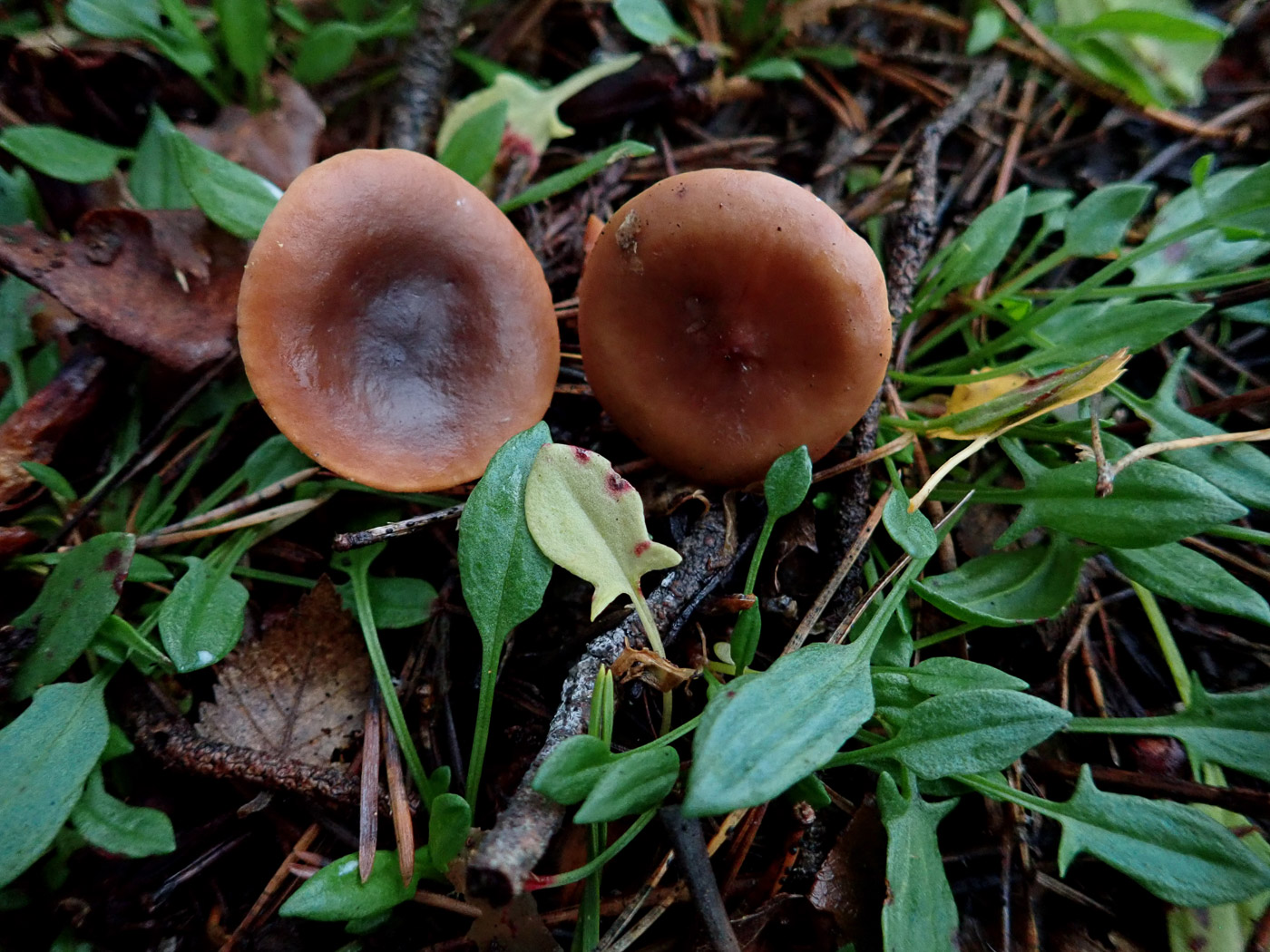
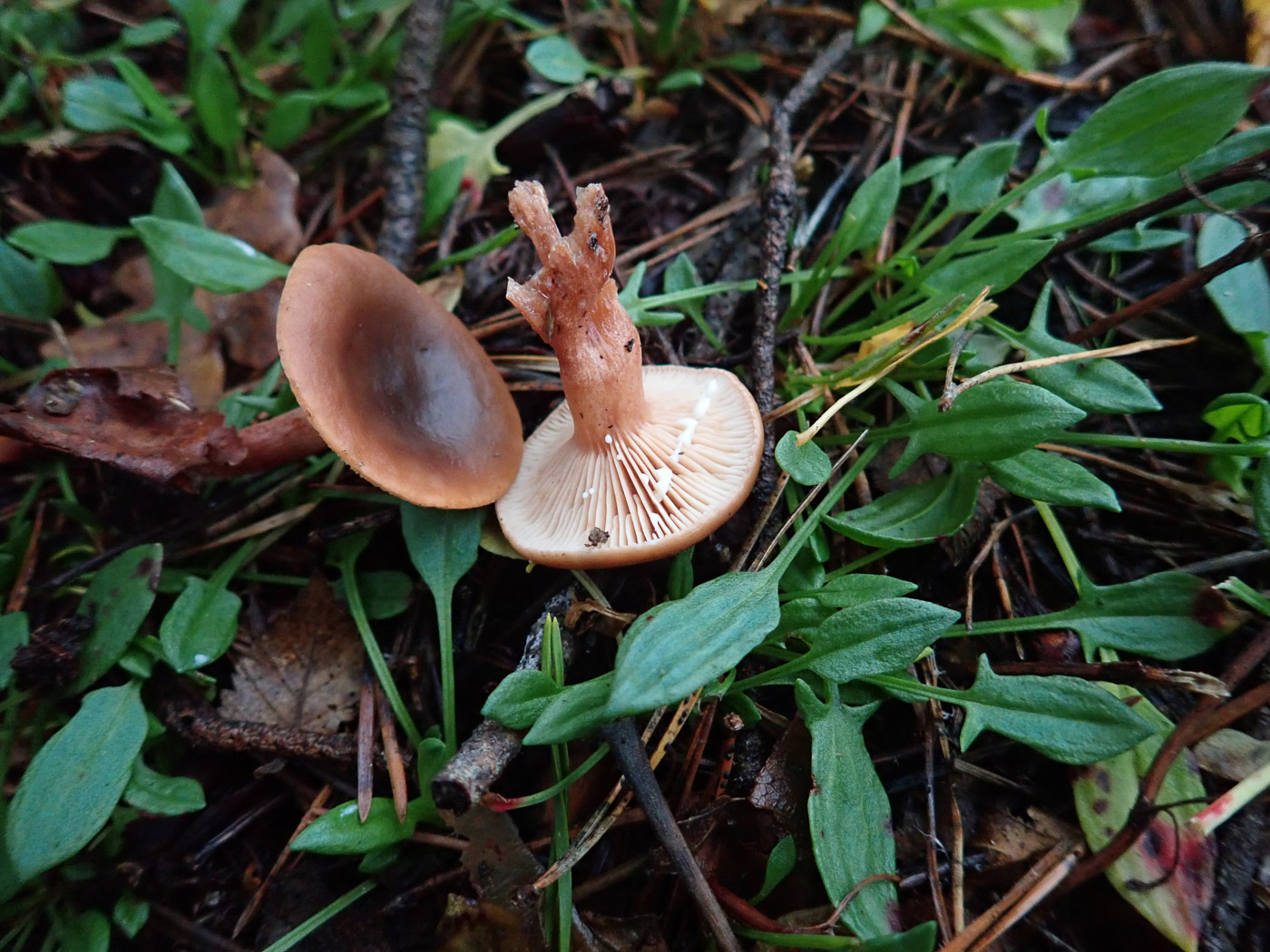 |
November 29th Lactarius hepaticus (Liver Milkcap)
This was another Milkcap still fruiting at Stoke Common under Pine and found by Penny. It is host specific to Pine and has a rich dark brown smooth cap, the milk wil turn slightly yellow on a hankie (as in L. tabidus) and it has a similar smell to L. quietus. We have just one previous Finds entry: 2020 November 3rd.
|

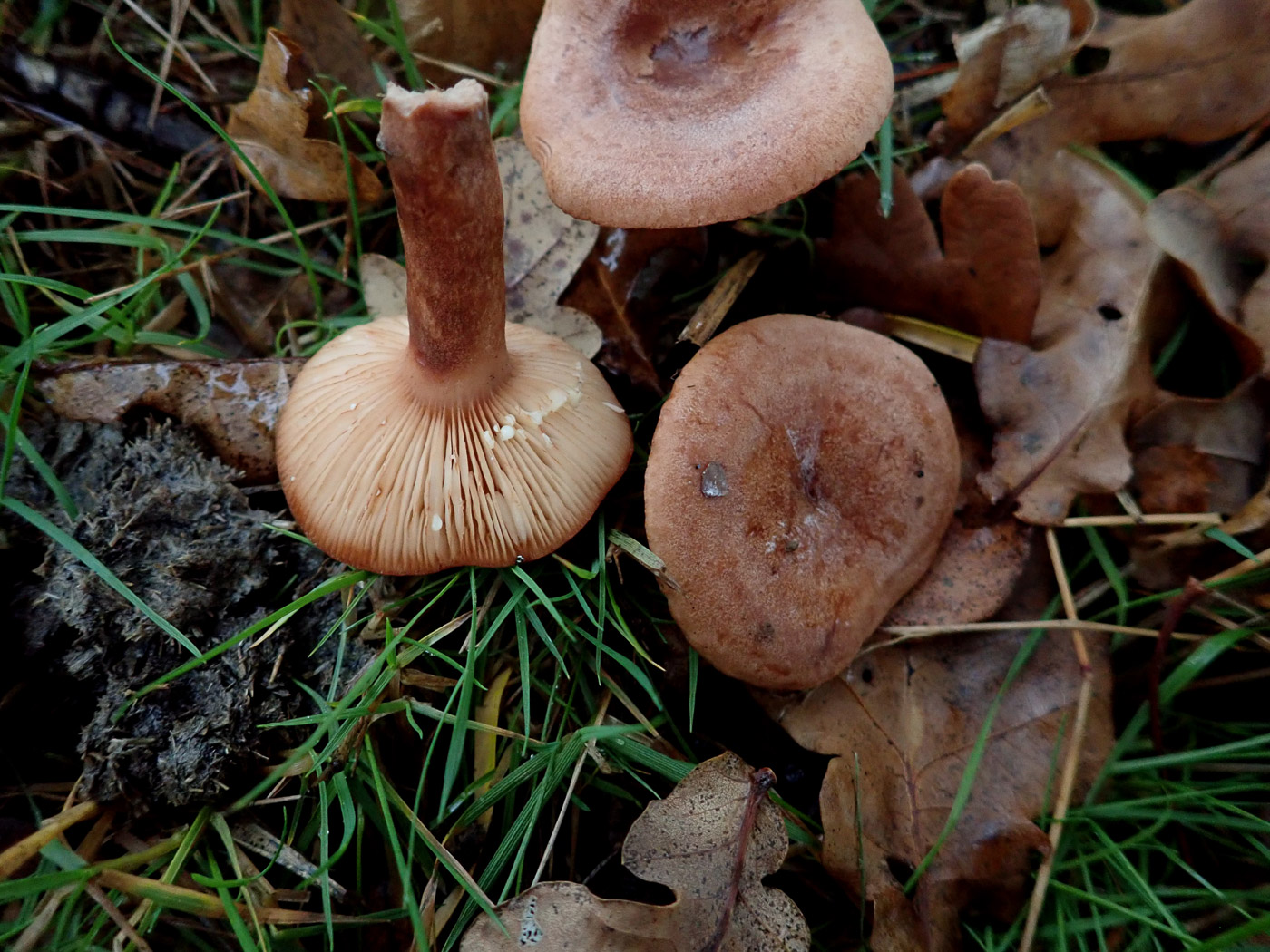 |
November 29th Lactarius quietus (Oakbug Milkcap)
Penny found this species still making an appearance under Oak at Stoke Common. This is one of our commonest Milkcaps yet we only have one other example on Finds (2020 September 12th), hence the inclusion of the photo today especially as the caps were showing the typical zoning which is one of its main features - the other being its distinctive smell which sadly we can't demonstrate here!
|
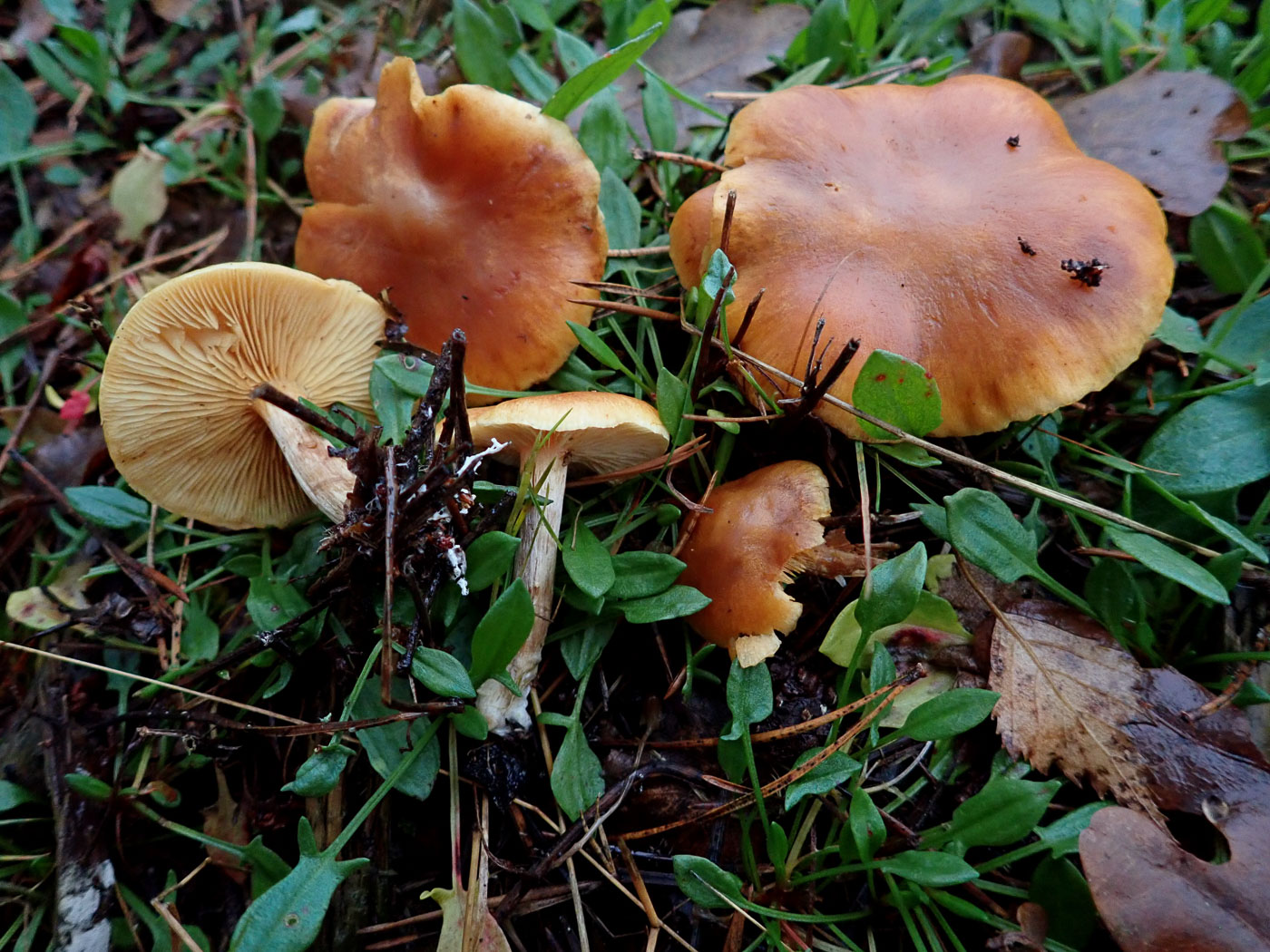 |
November 29th Gymnopilus pentrans (Common Rustgill)
At Stoke Common Penny found this species had grown quite large in places and was looking surprisingly bright orange, often on woody remnants of Pine where trees had been grubbed up. See also in Finds 2020 October 30th and 2021 December 30th.
|
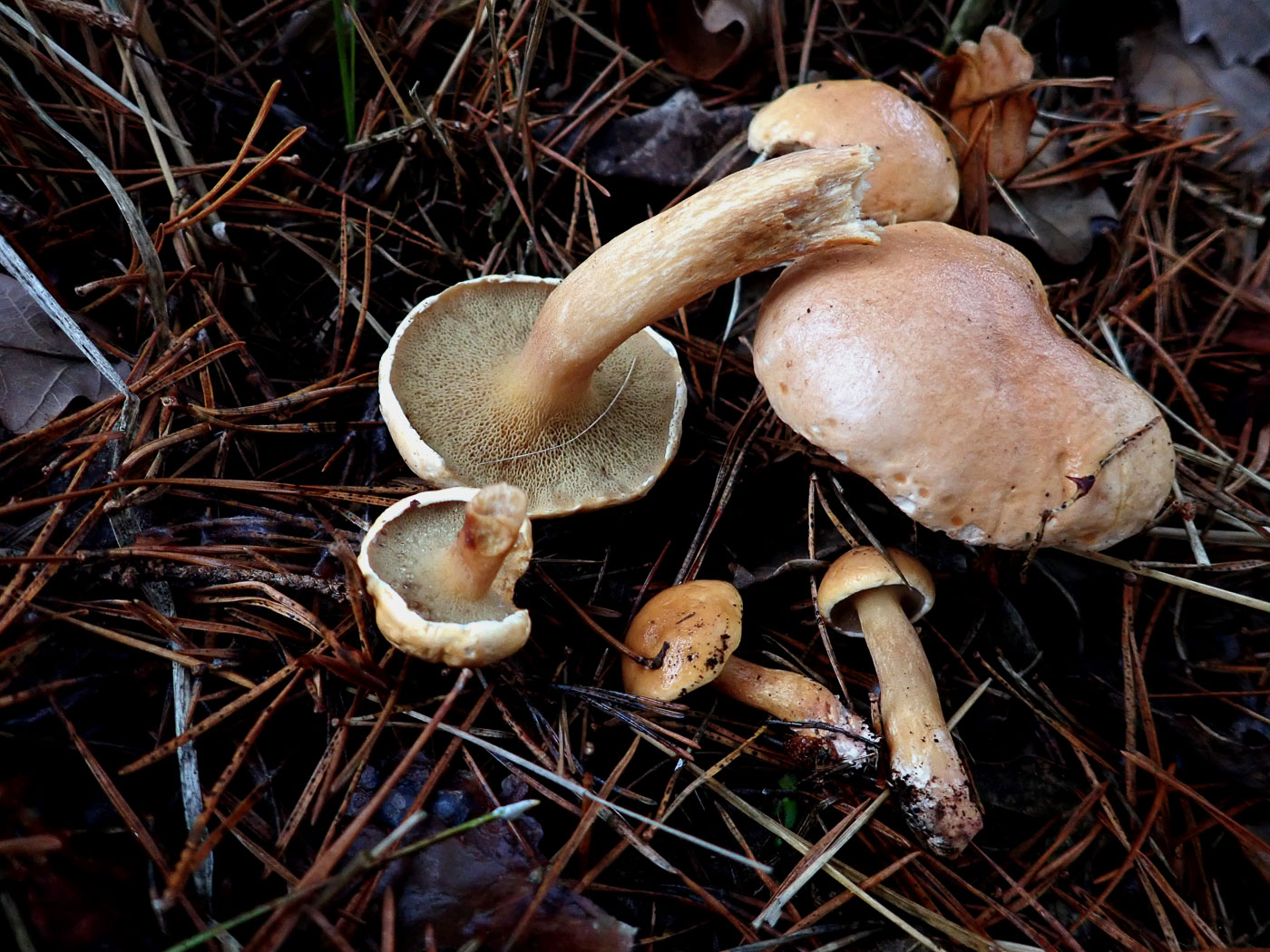 |
November 29th Suillus bovinus (Bovine Bolete)
At Stoke Common this is a regular fruiter under the many Pines with which it is host specific, but Penny was surprised to find such a range of specimens in good conditions at the moment - much of the site being under water as often happens here. There was no sign, however, of its companion agaric, Gomphidius roseus (Rosy Spike) - always worth a good hunt around for if you find this particular Bolete. See the Finds Masterlist for further entries.
|
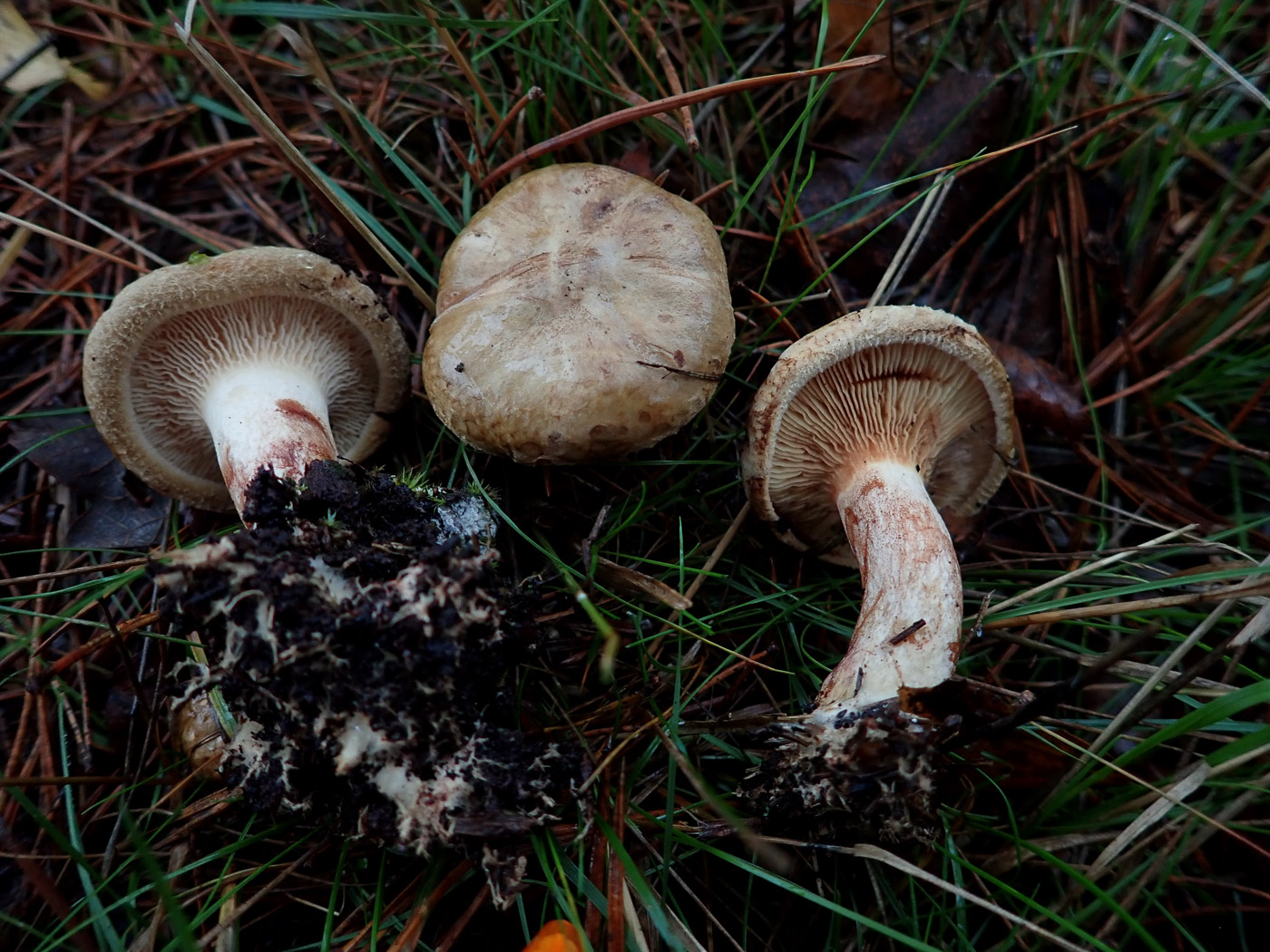 |
November 29th Paxillus involutus (Brown Rollrim)
Under Pine and Birch at Stoke Common Penny was surprised to find fresh fruitbodies of this species despite the very soggy conditions. The species is an easy one to recognise when young and typically tightly inrolled as here but often confuses when older and considerably larger. It often occurs under Birch - probably its commonest host tree. See the Finds Masterlist for further entries.
|
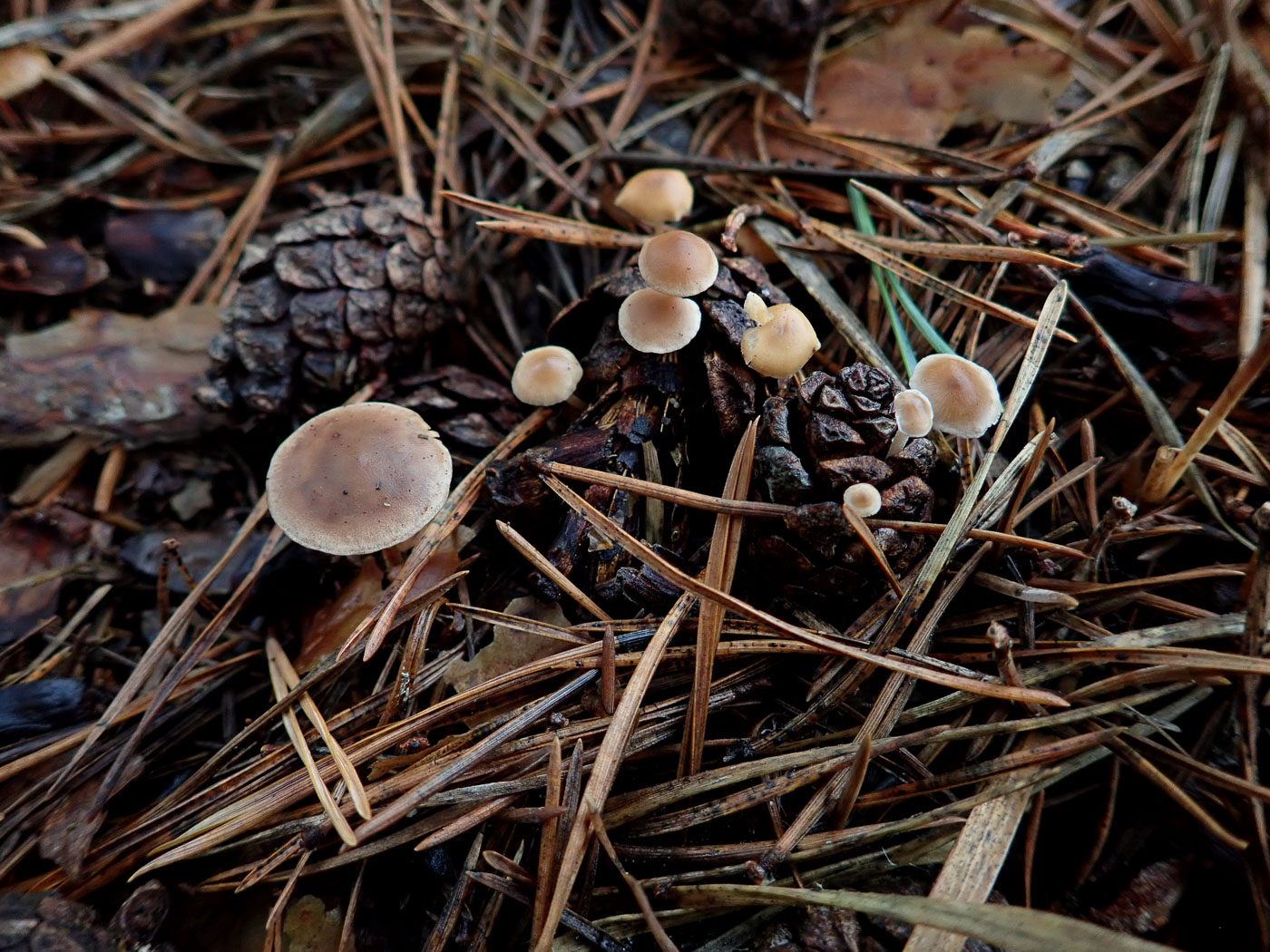
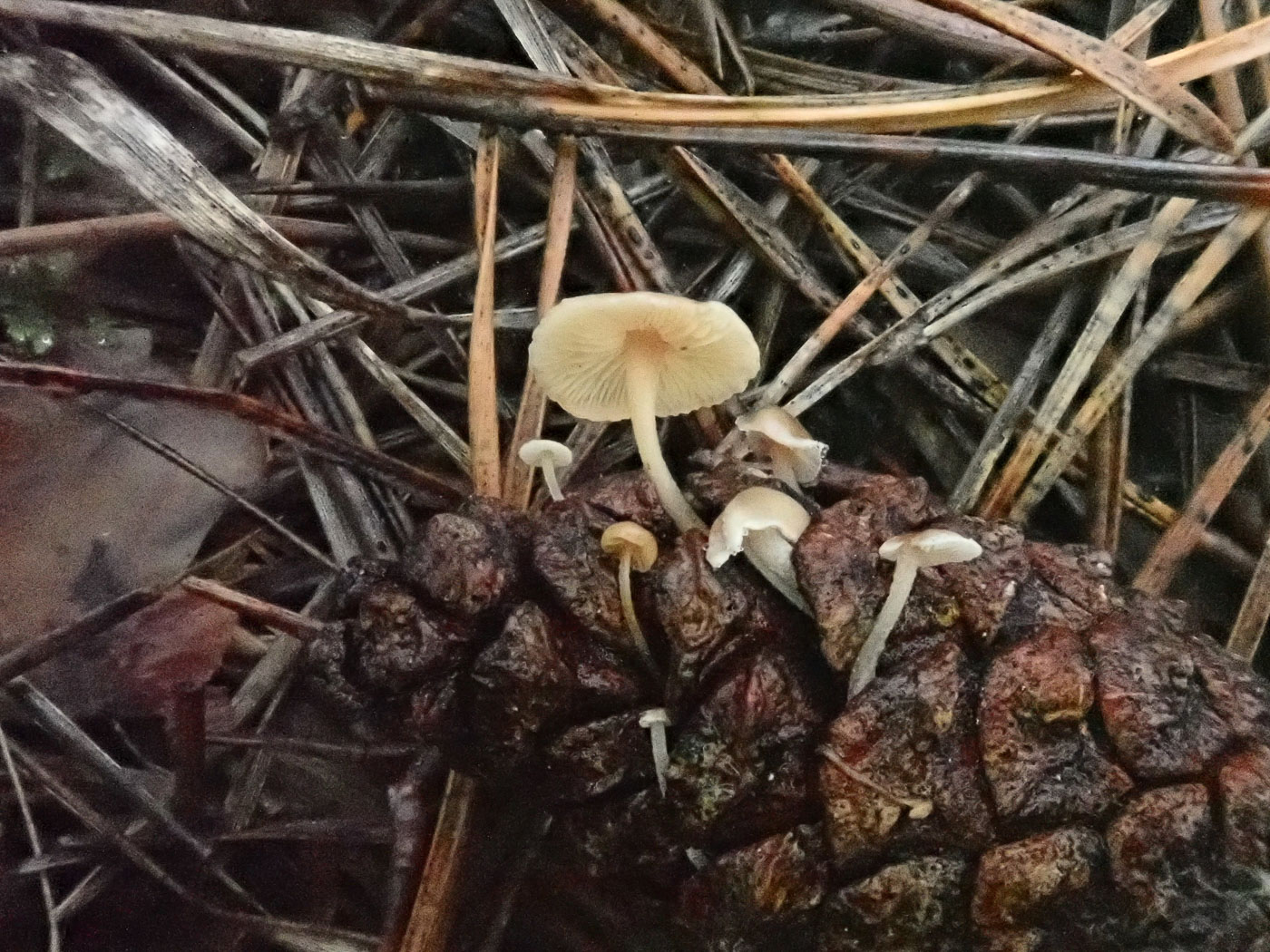
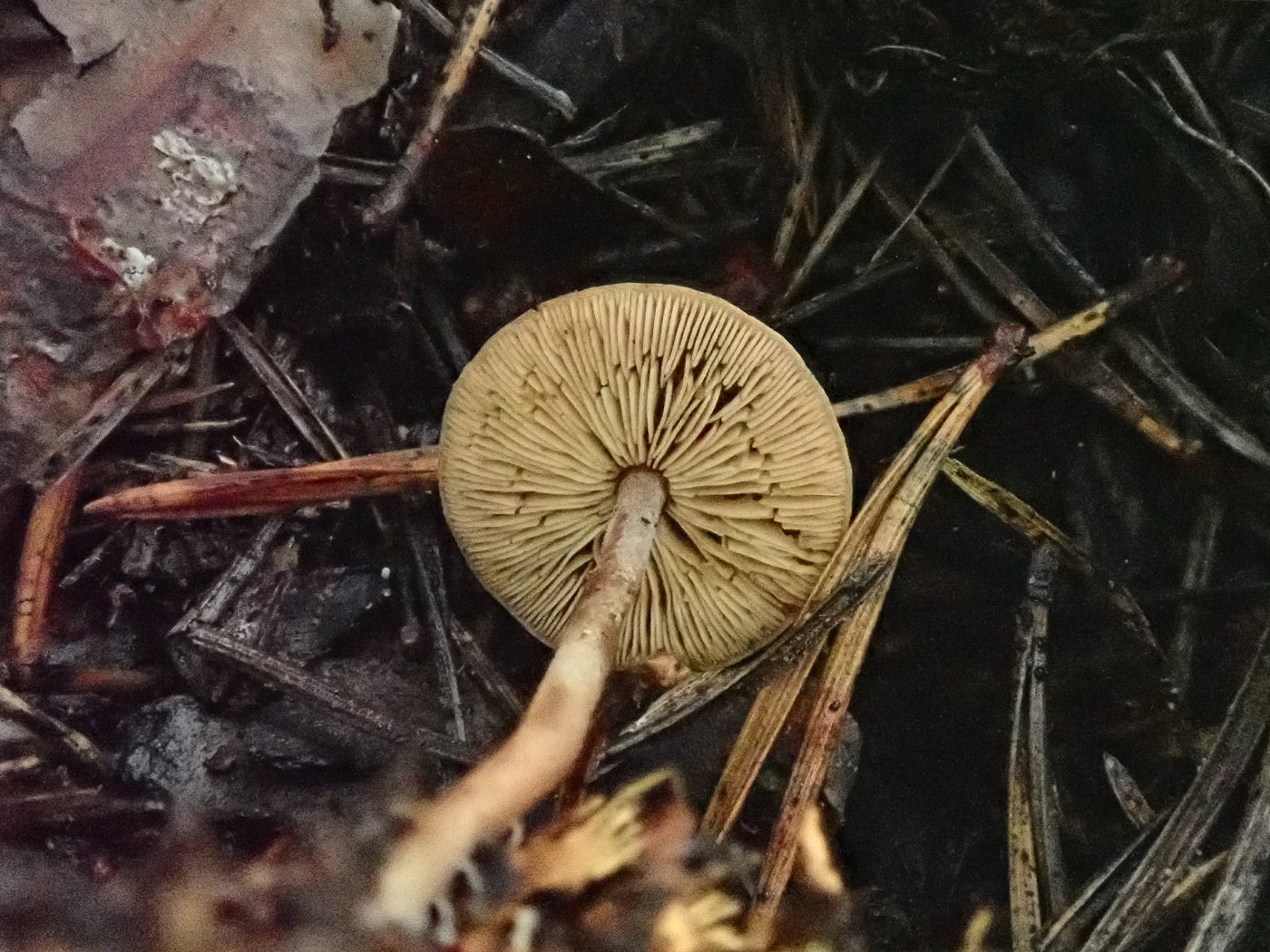 |
November 29th Baeospora myosura (Conifercone Cap)
Under the many Pines at Stoke Common this LBJ species was really common despite the very flooded conditions - it was on the cones in large numbers. The only other genus with which it might be confused if given this substrate is Strobilurus, and the features to look for to separate the two are the very crowded buff gills of the Baeospora, seen here in photo 3, also the evenly buff stem - in Strobilurus the stem is white above then yellowish ochre below. (There are very distinct microscopic differences also.) We have one previous Finds entry: 2020 October 5th, also for comparison two for S. esculentus: 2021 November 13th and 2022 January 1st.
|
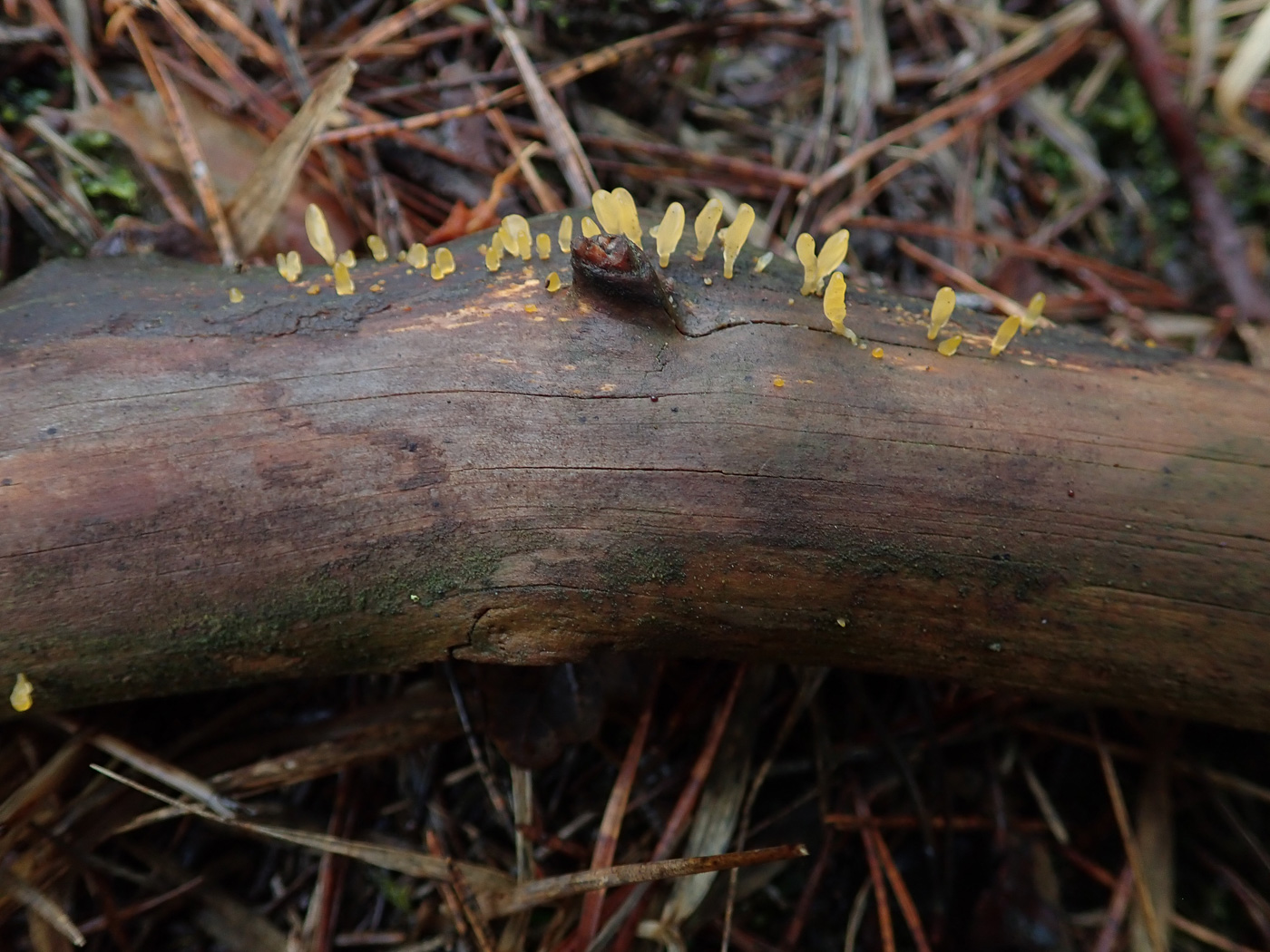
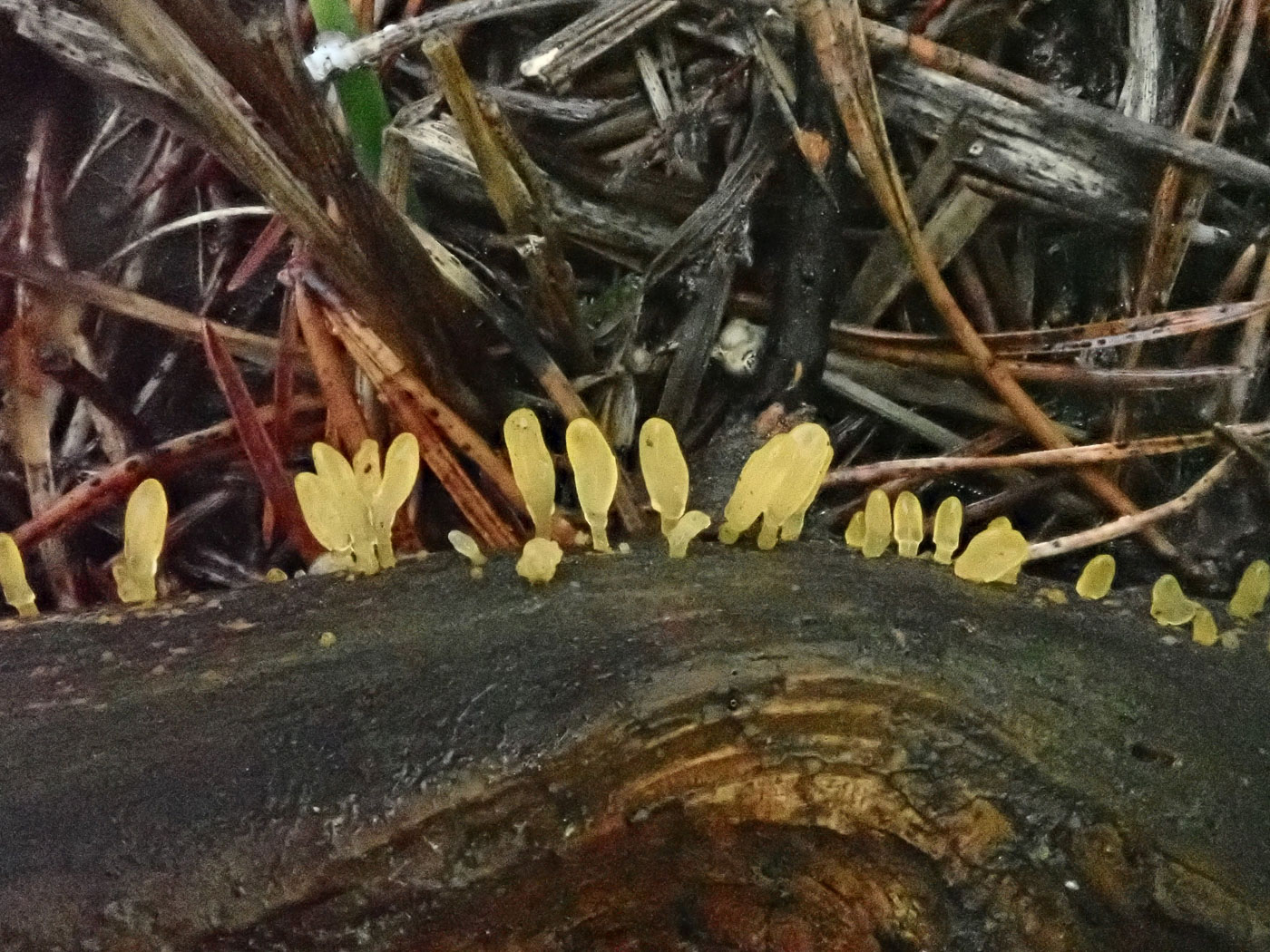 |
November 29th Calocera pallidospathulata (Pale Stagshorn)
On a bare fallen Pine branch at Stoke Common Penny found this common species which is fairly obviously paler than other Stagshorns and can be found on both deciduous and coniferous woods. However, there could well be confusion with C. glossoides (no common name) when on deciduous wood as both have somewhat flattened heads and tend to have an obvious thinner stem, but if bright yellow then you could well have C. glossoides - a species we rarely record, possibly mistakenly. See also Finds 2020 October 3rd.
|
November 28th 2022
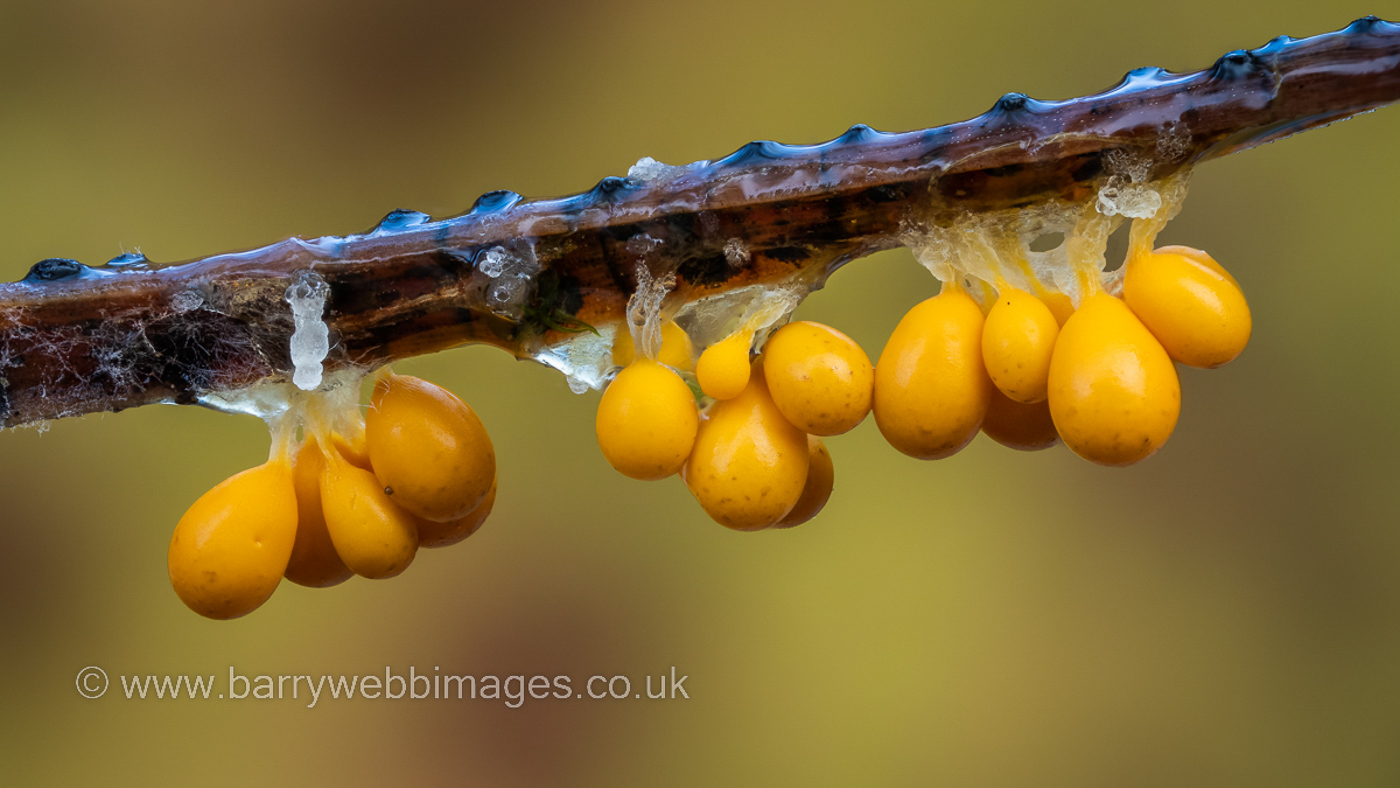
 |
November 28th Leocarpus fragilis (a Slime Mould with no common name)
At Burnham Beeches Barry Webb found this quite common Slime Mould growing in plant litter under Pine on the edge of the Mire. Bright yellow in early stages, it swarms over vegetation, liberally coating it, then gradually darkens to chestnut brown when fully mature and photo 2 still has a way to go before that stage. See also in Finds 2020 December 2nd.
|
November 27th 2022

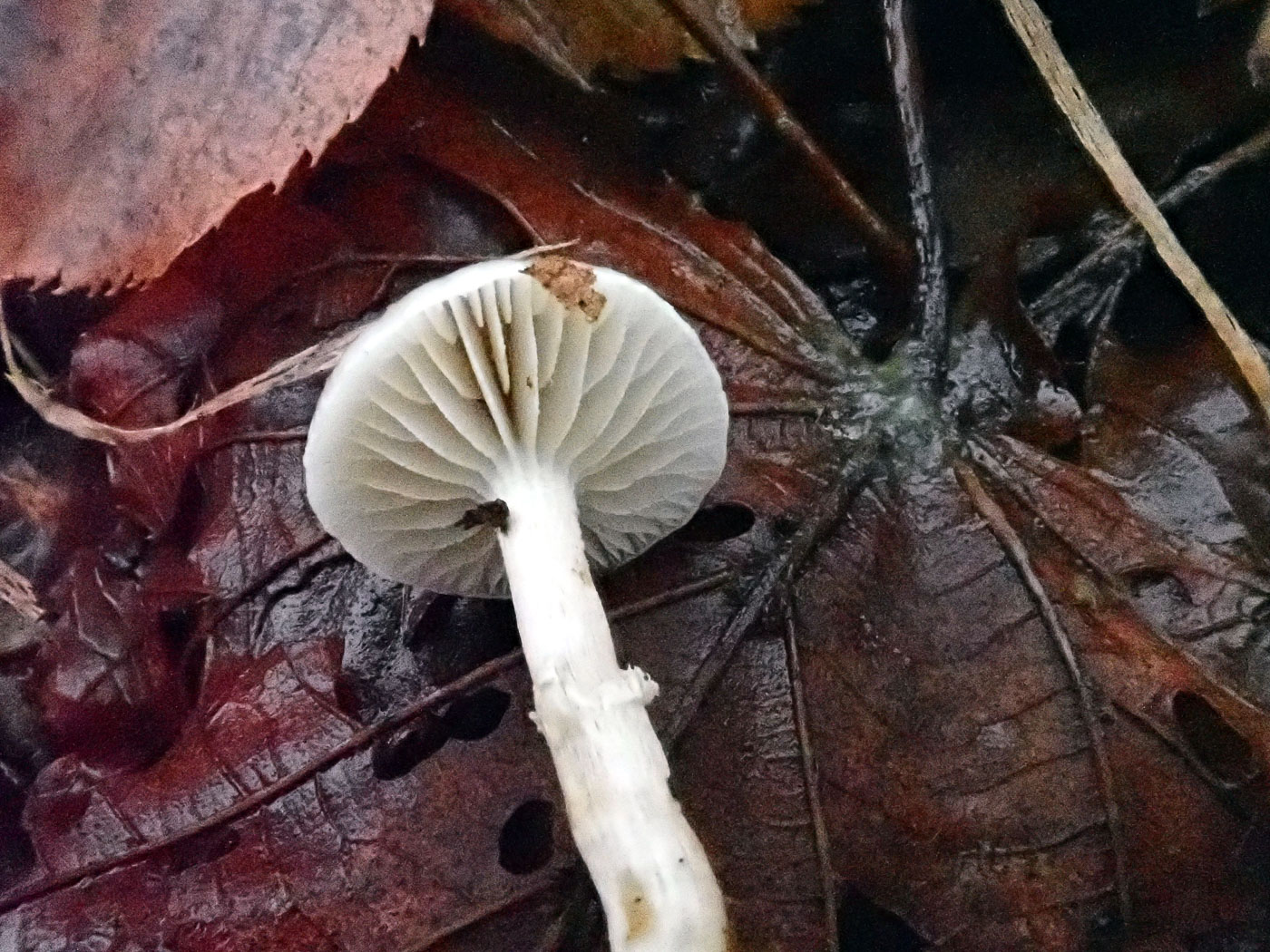 |
November 27th Meottomyces dissimulans (a rare agaric with no common name) 
Amongst thick leaf litter under Lime at Turville Heath Penny noticed this small brown cap, about 1.5 cm across. At the time she was stuck for a genus and it remained a complete mystery till a sporeprint the following morning revealed quite dark brown spores despite the pale gills. She'd already taken note of the slimy cap surface, clearly much darker in the centre, the signs of ring zone on the dry stem, also the presence of rather varied subcapitate to almost gnarled gill cells and small smooth ellipsoid spores. So flicking through Kibby vol 3 (how one does when clutching at straws) she came across M. dissimulans which instantly rang a bell: this was an unusual winter fruiting species featured in a Field Mycology article (by Nick Legon - vol 13 (1)) and subsequently found new to the county by Derek in December 2014. All the features Penny'd found fitted like a glove - very satisfactory! So this is our second county record and a new entry for Finds. It's interesting to observe that on the same day she should find this winter species almost alongside Amanita muscaria - see the entry below.
|
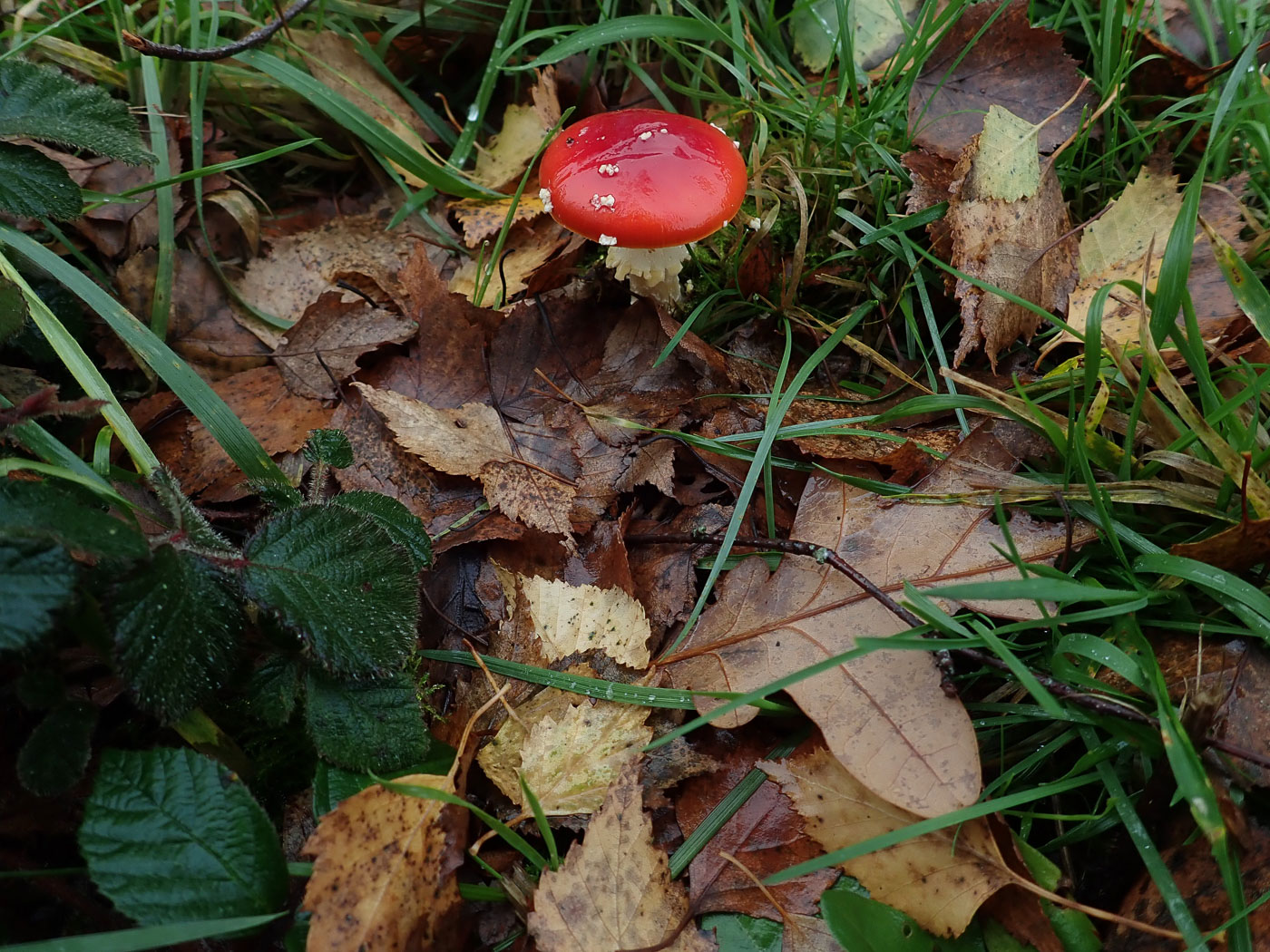
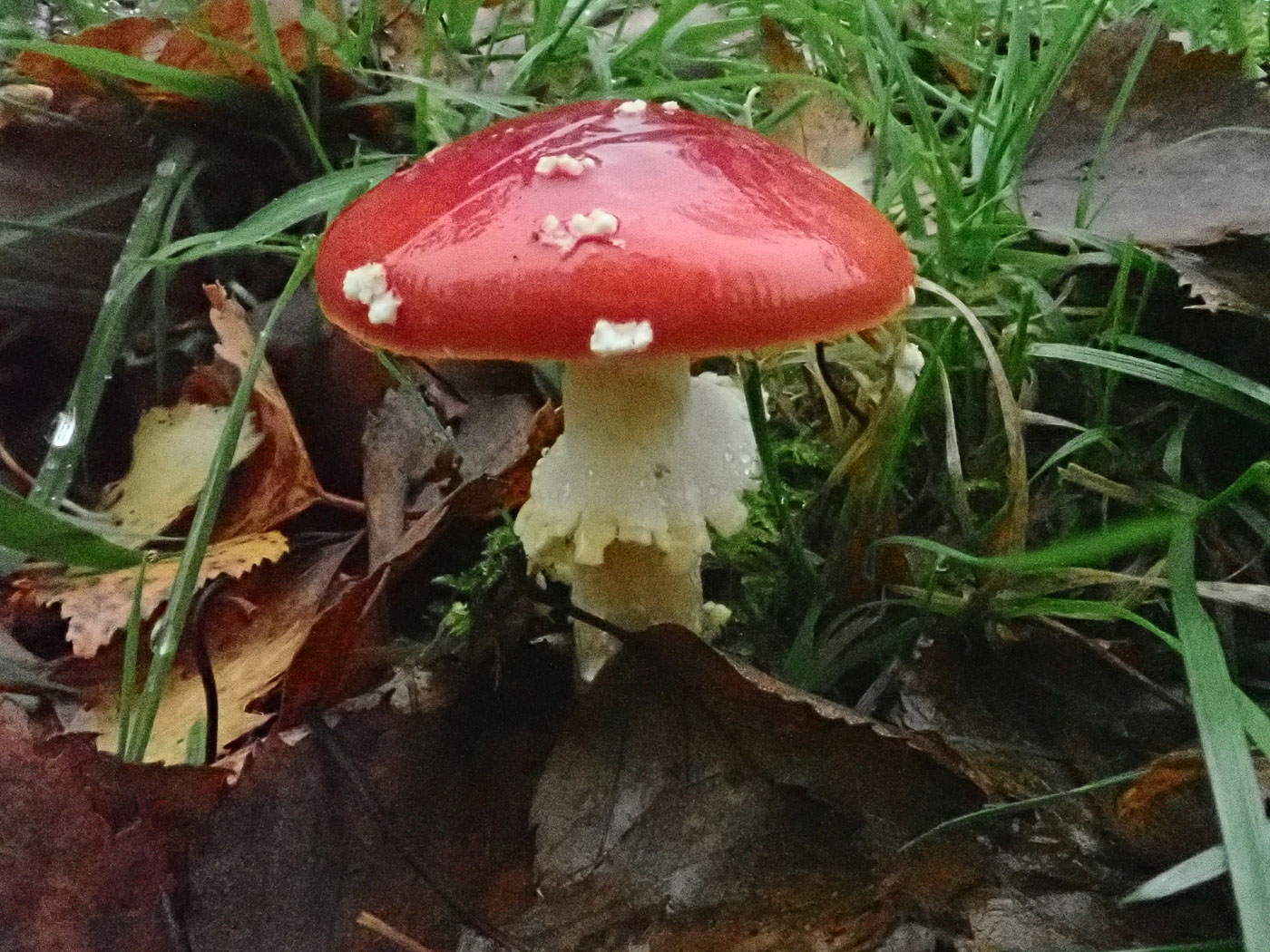 |
November 27th Amanita muscaria (Fly Agaric)
Well, this small singleton was a welcome surprise under Birch at Turville Heath, found by Penny. Browsing through the couple of hundred odd county records in our database the latest autumn date the species has been recorded was November 13th - two years ago at this same site! Can we take this as yet another indication that the main fruiting season for fungi is gradually moving later in the year? See the Masterlist for further images though none are from November.
|
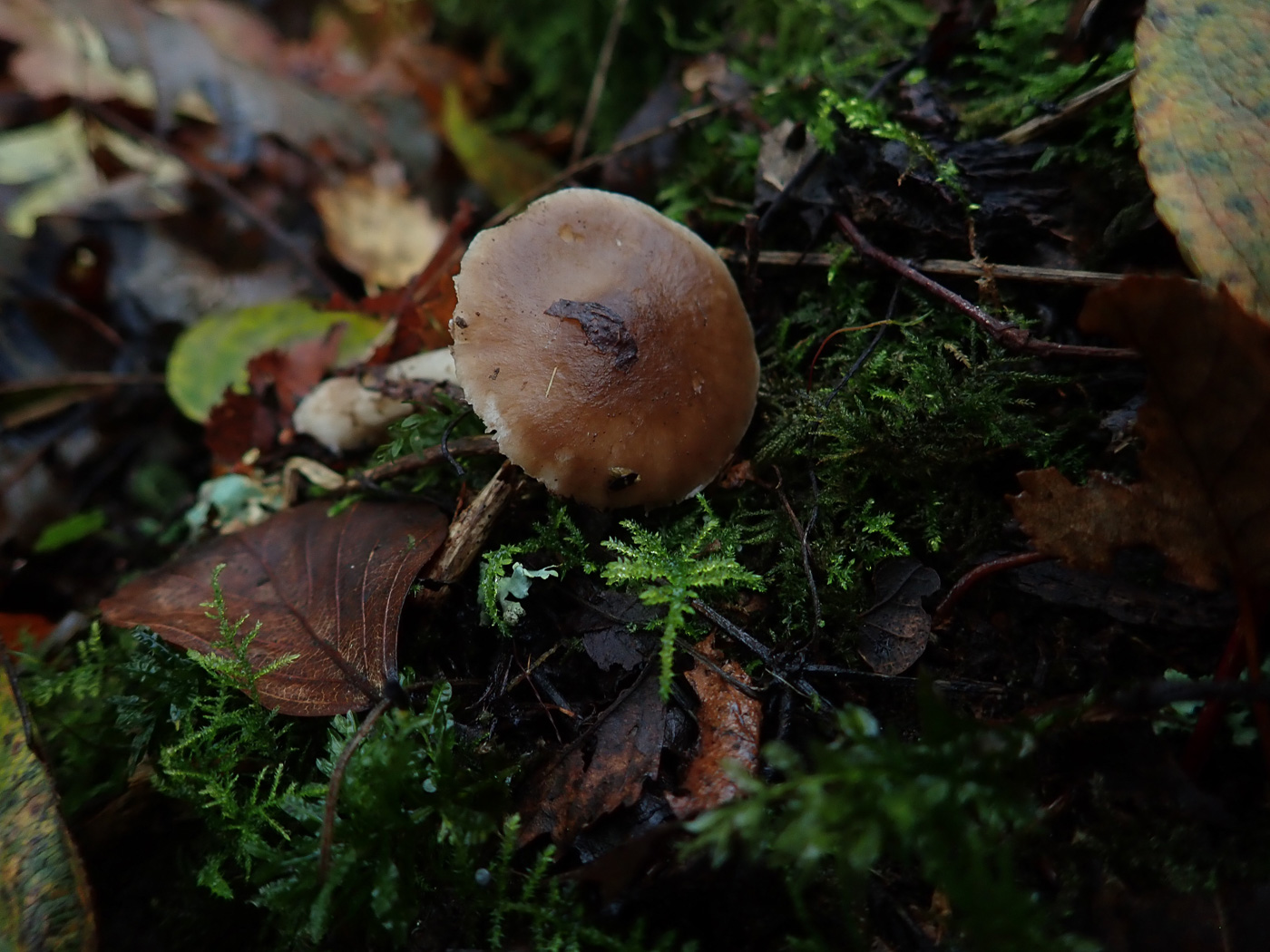
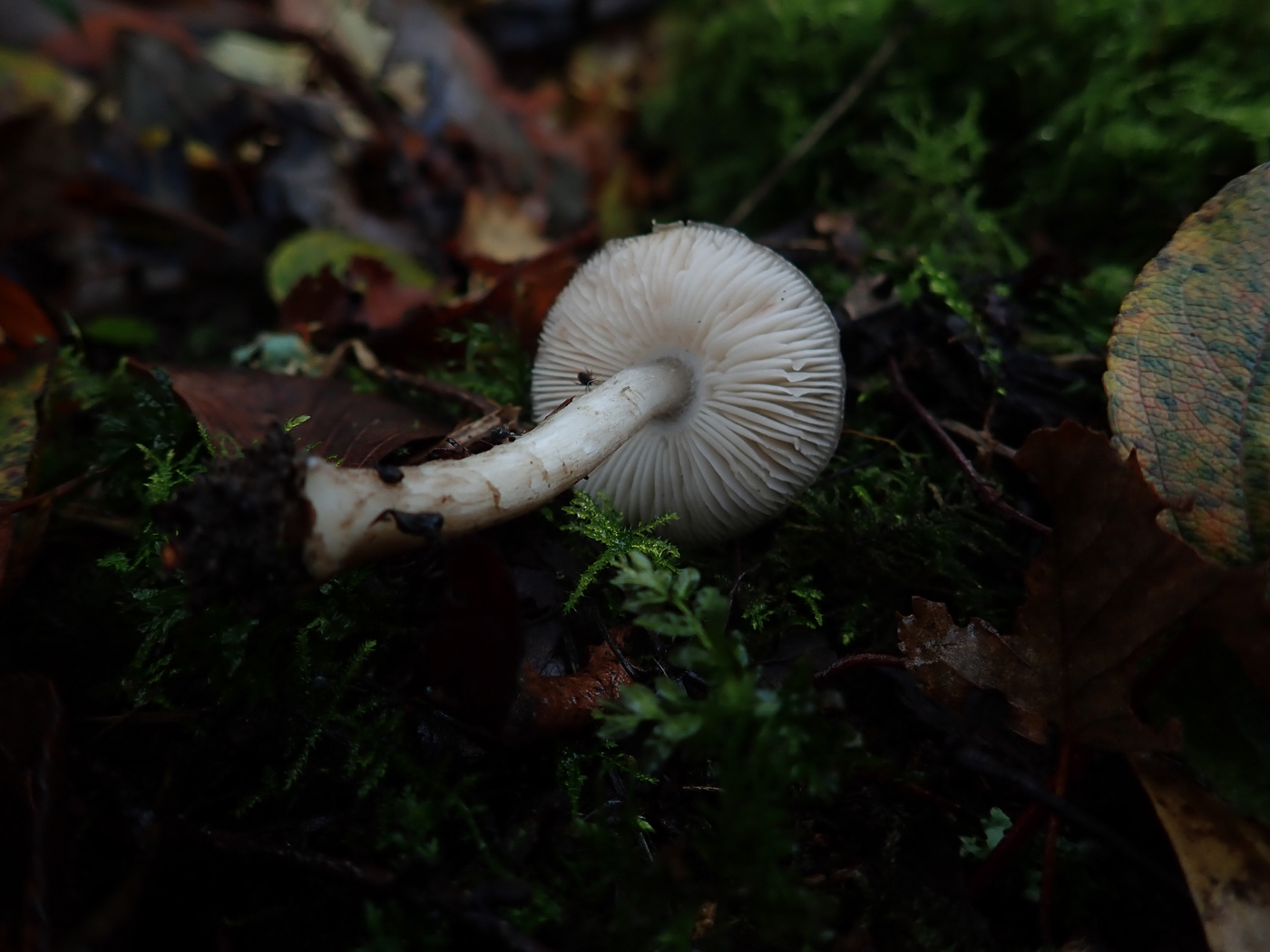 |
November 27th Pluteus ephebeus (Sooty Shield) 
Near the base of Willow in Turville Heath Penny noticed this brown cap, about 2.5 cm across, and turning it over realised the free pinkish gills made it a species of Shield which would need a scope to determine. Once you realise you have a smallish Shield the critical character to assess - and almost the first requirement in any key - is the make-up of the cap cuticle: basically either of long thin cylindrical cells, of round cells or a combination of the two. Today's species has the former and therefore keys out very easily. We have two previous entries in Finds: 2020 December 2nd and 2022 September 23rd.
|
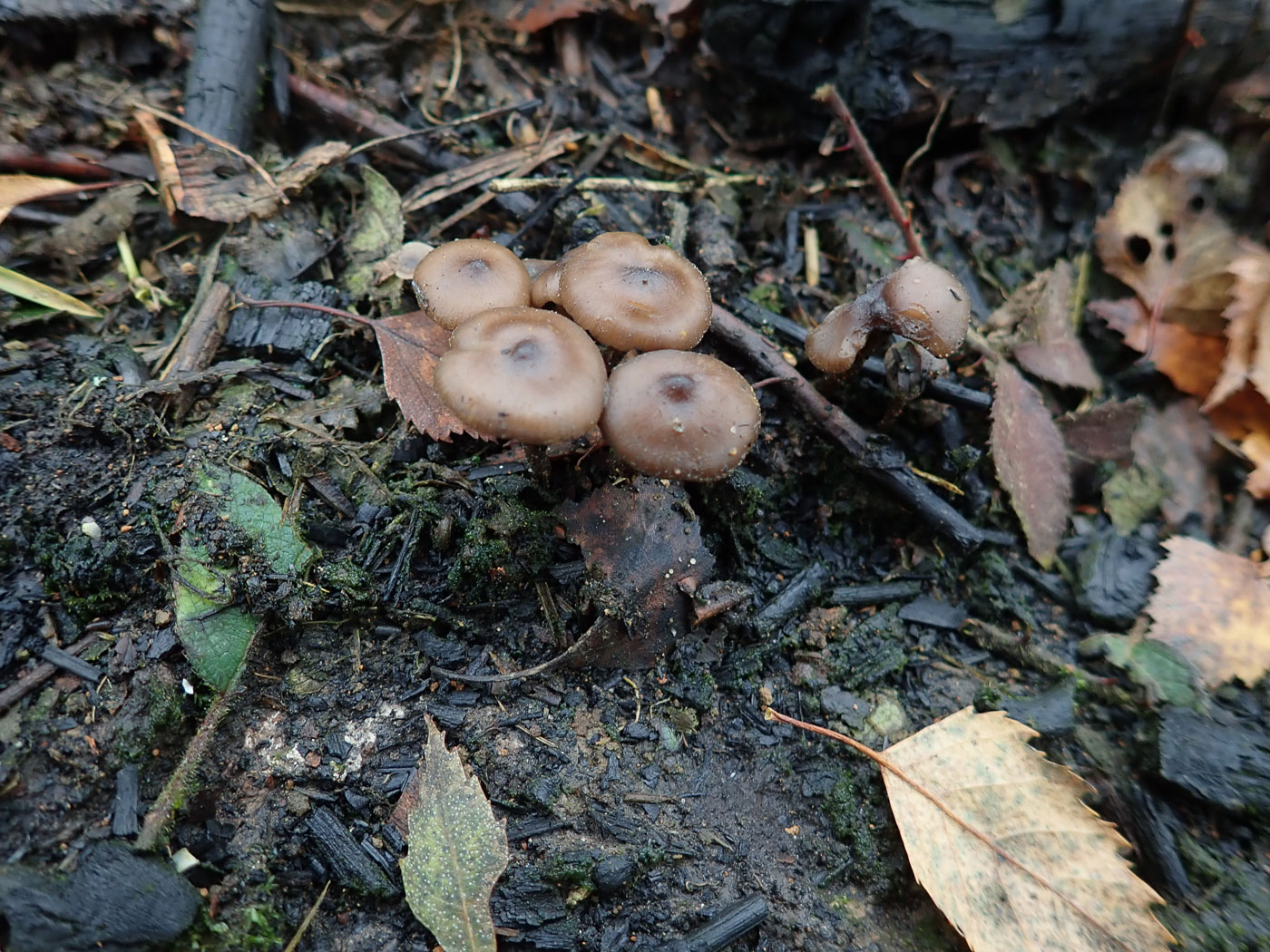
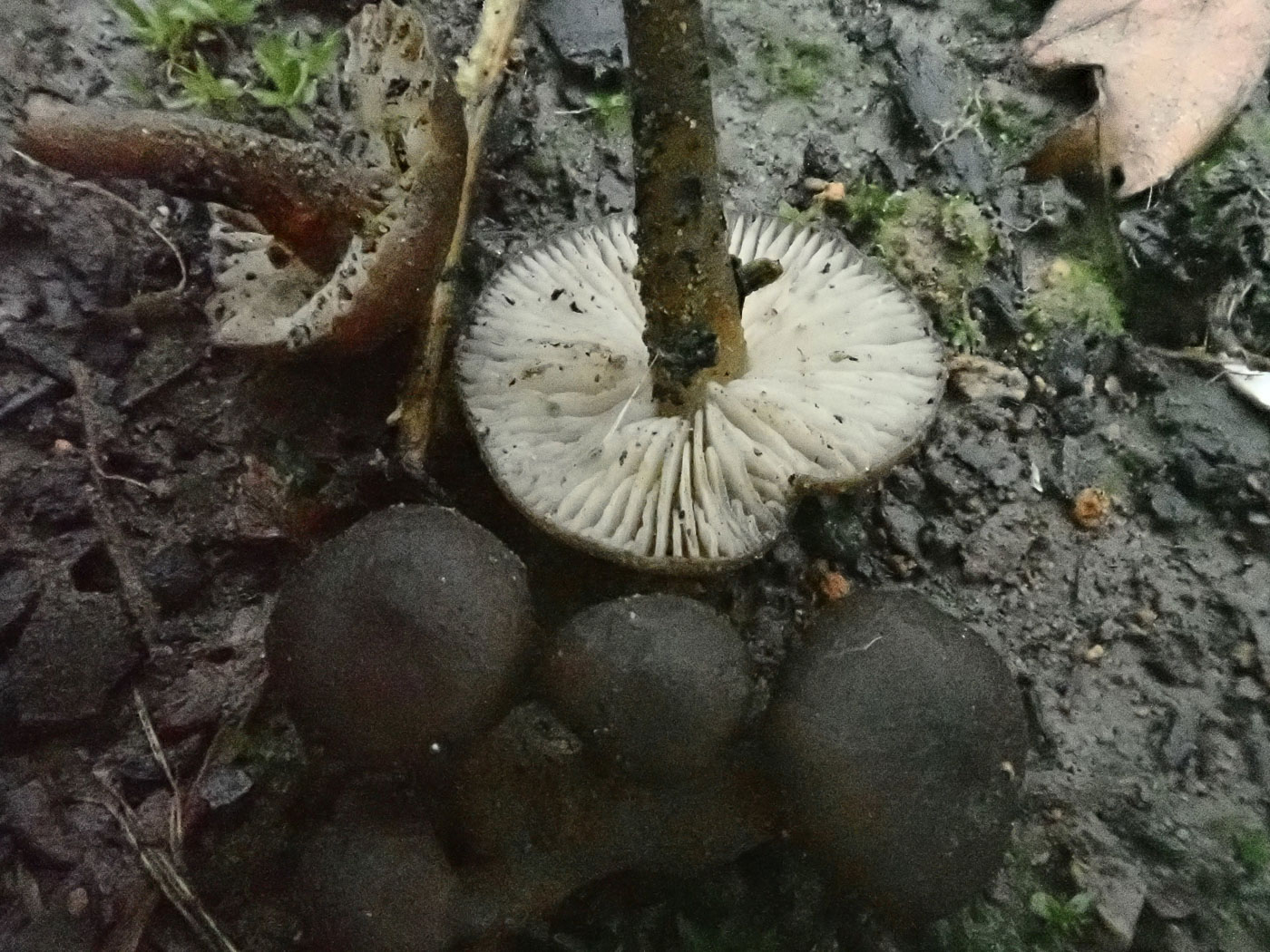 |
November 27th Tephrocybe atrata (a Greyling with no common name) 
Noticing a patch of burnt ground at Turville Heath Penny had a good search for anything coming up there and was rewarded! There was a small cluster of rather dark inconspicuous LBJs which she realised would probably be interesting. A scope revealed small ellipsoid smooth spores which separated it from the several other Greylings found on old bonfire sites which have either round or ornamented spores. We have just 4 previous county records though the species is not rare, and this is a new species for Finds.
|
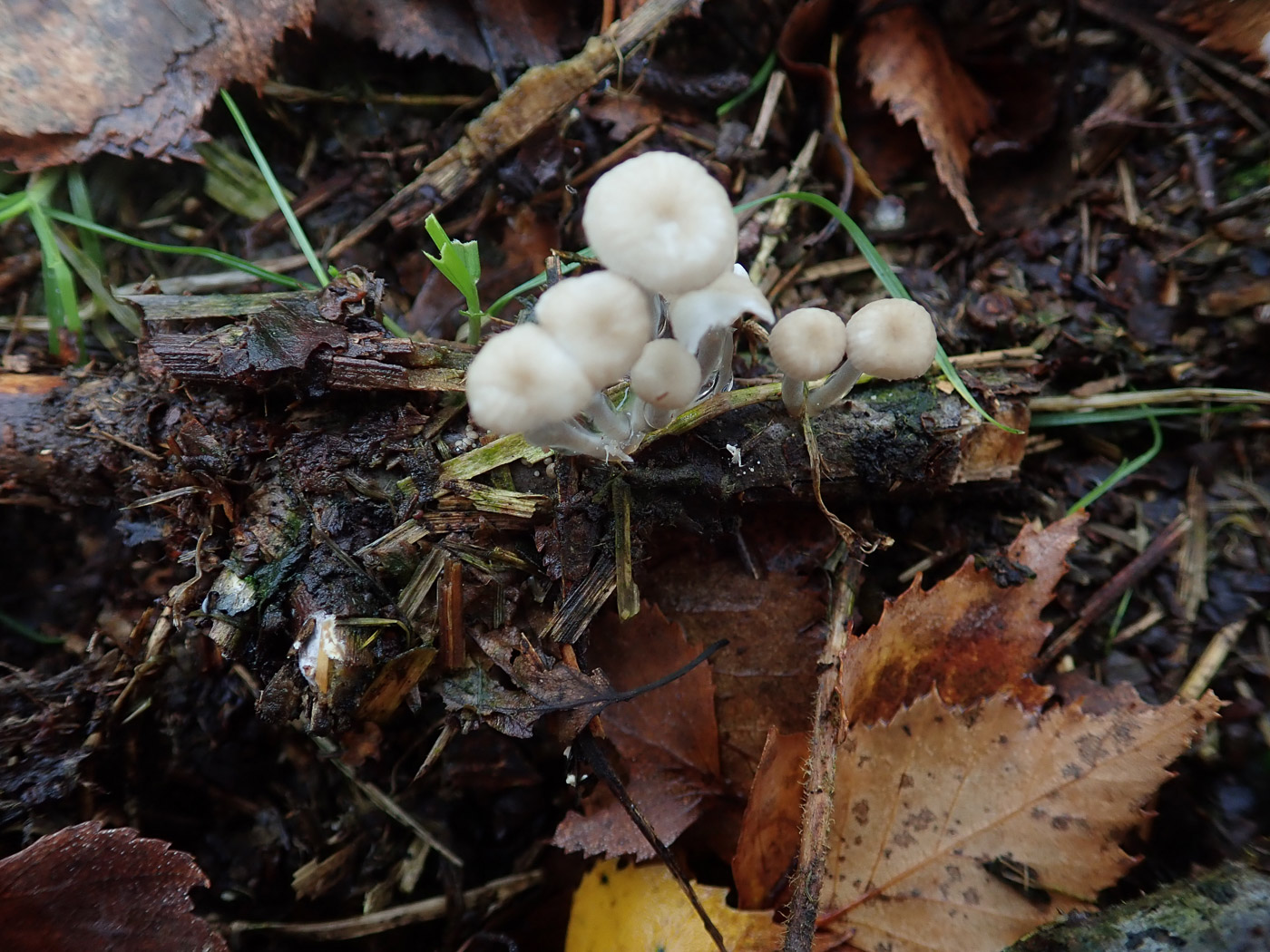
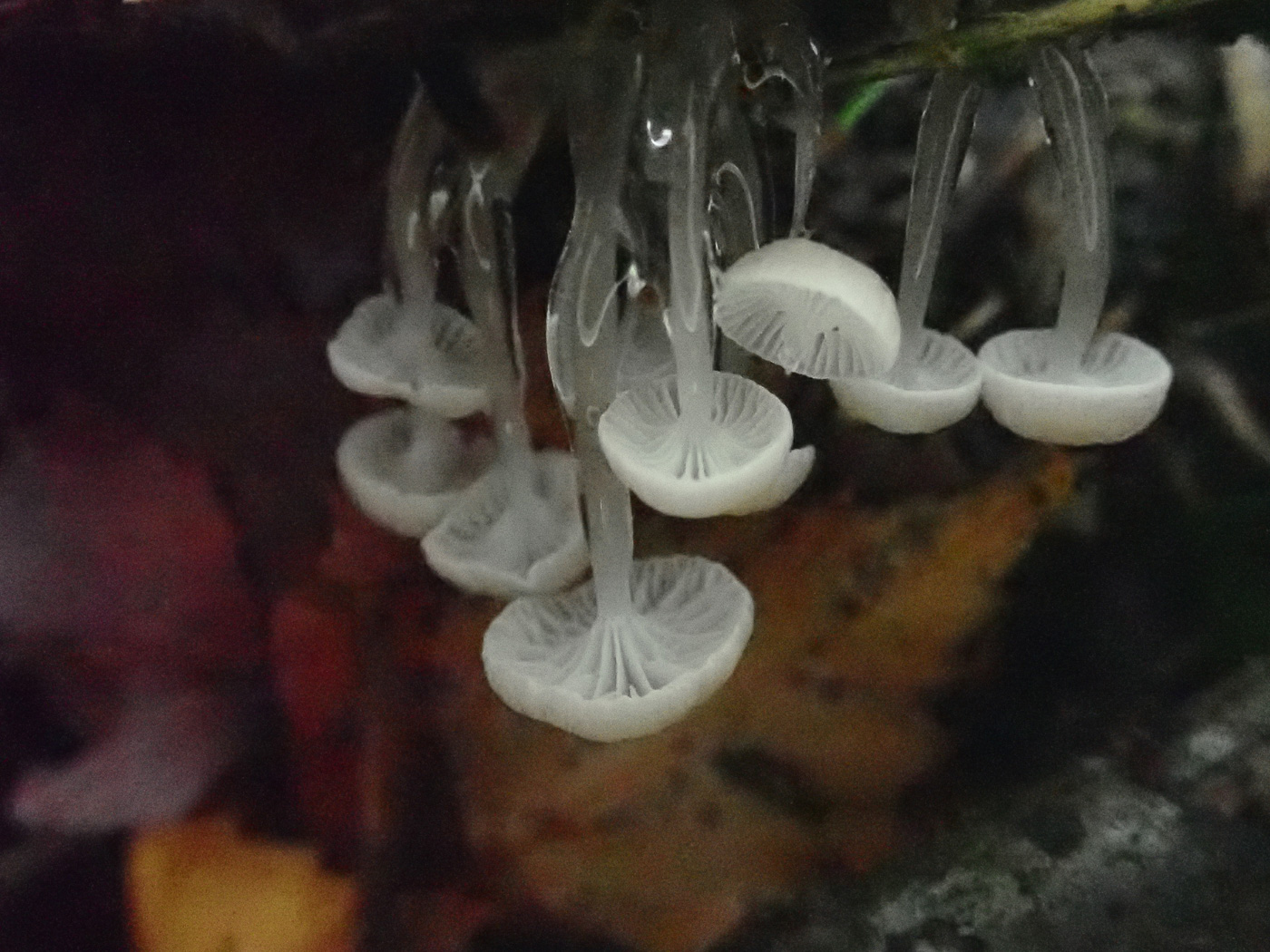
 |
November 27th Roridomyces roridus (Dripping Bonnet)
At Turville Heath Penny found this little cluster of Bonnets in woody debris on the ground and took the first photo thinking the species was quite possibly M. speirea (see that species below). It was not until she turned it over, noticed the prickly substrate was an old Bramble stem and that the stems of the collection were glistening with slime that she realised her error! There are clear similarities between the two species, notably the small size, the pale off-white caps with slightly darker centre (see photo 3) and the clearly decurrent gills. But R. roridus (previously in genus Mycena) is alone amongst Bonnets in having a thick layer of shiny slime (really thick after recent rain as here!), making it unmistakable once it's noticed. Rather than mossy logs it favours woody debris and Bramble stems in particular. This is a first entry for Finds though the species is considered not rare but occasional and is always nice to find.
|
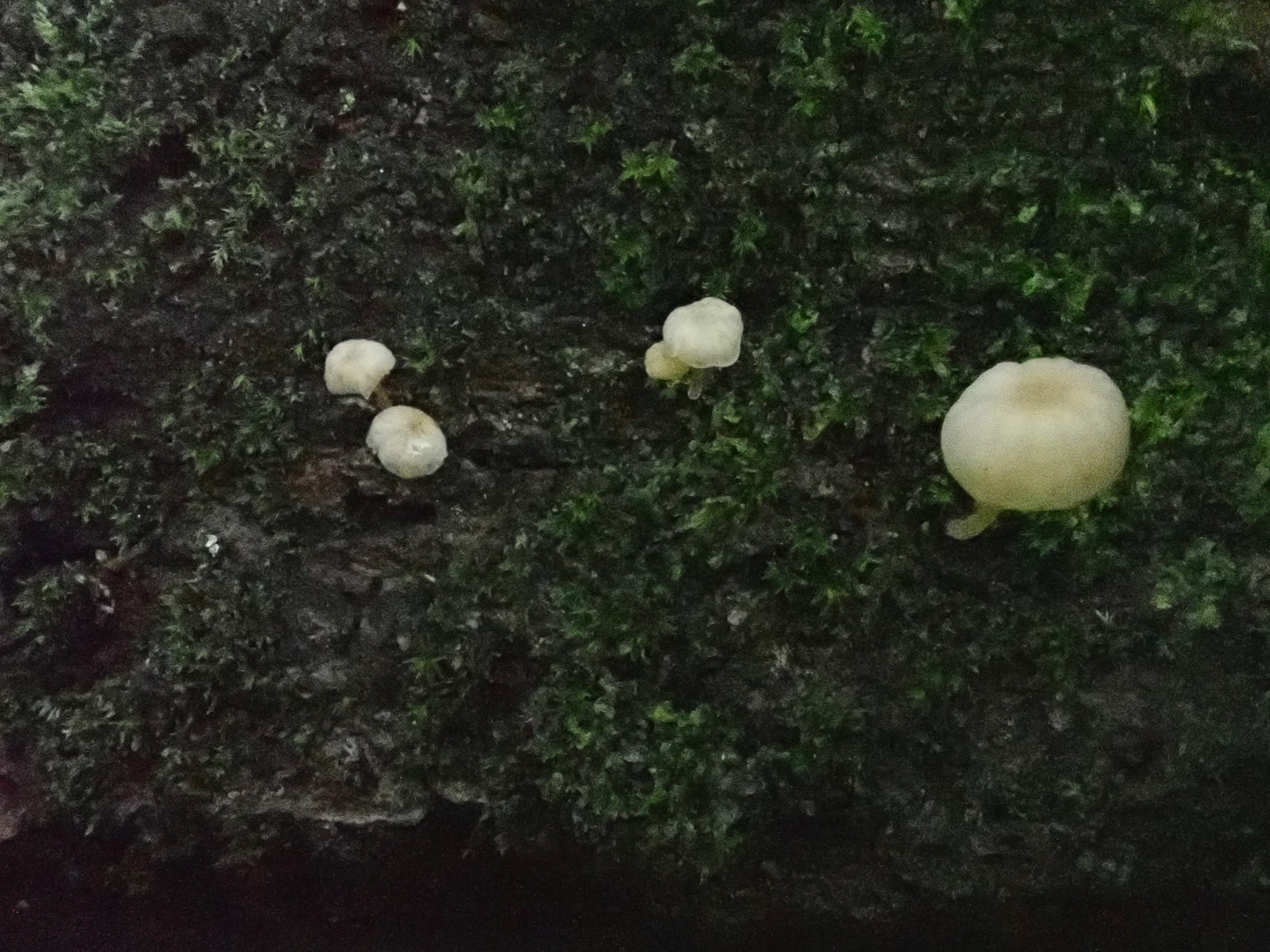
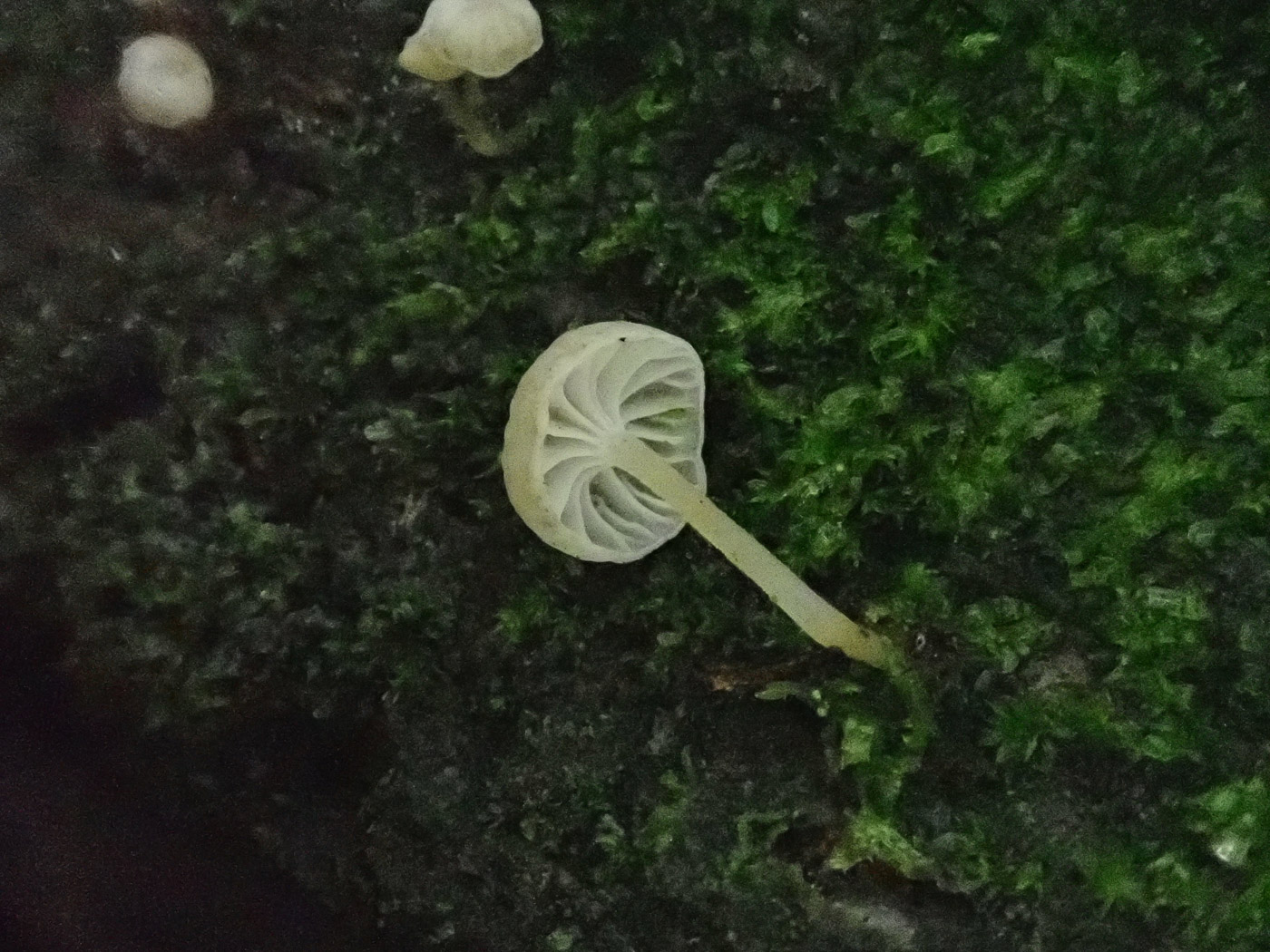 |
November 27th Mycena speirea (Bark Bonnet) 
On a mossy Willow trunk at Turville Heath Penny spotted just a few of this common wood-inhabiting Bonnet and took the opportunity to photograph it. It is one which with experience can be named fairly safely in the field (though she did check it today). Compared to other similar small wood-inhabiting Bonnets the cap is just off white, has a clear brown slightly sunken central dot and the gills are quite widely spaced and very obviously decurrent. (Compare with Mycena olida below, also with R. roridus above.) Incidentally, both this species and M. olida are now moved to genus Phloeomana. also Find 2020 October 14th.
|
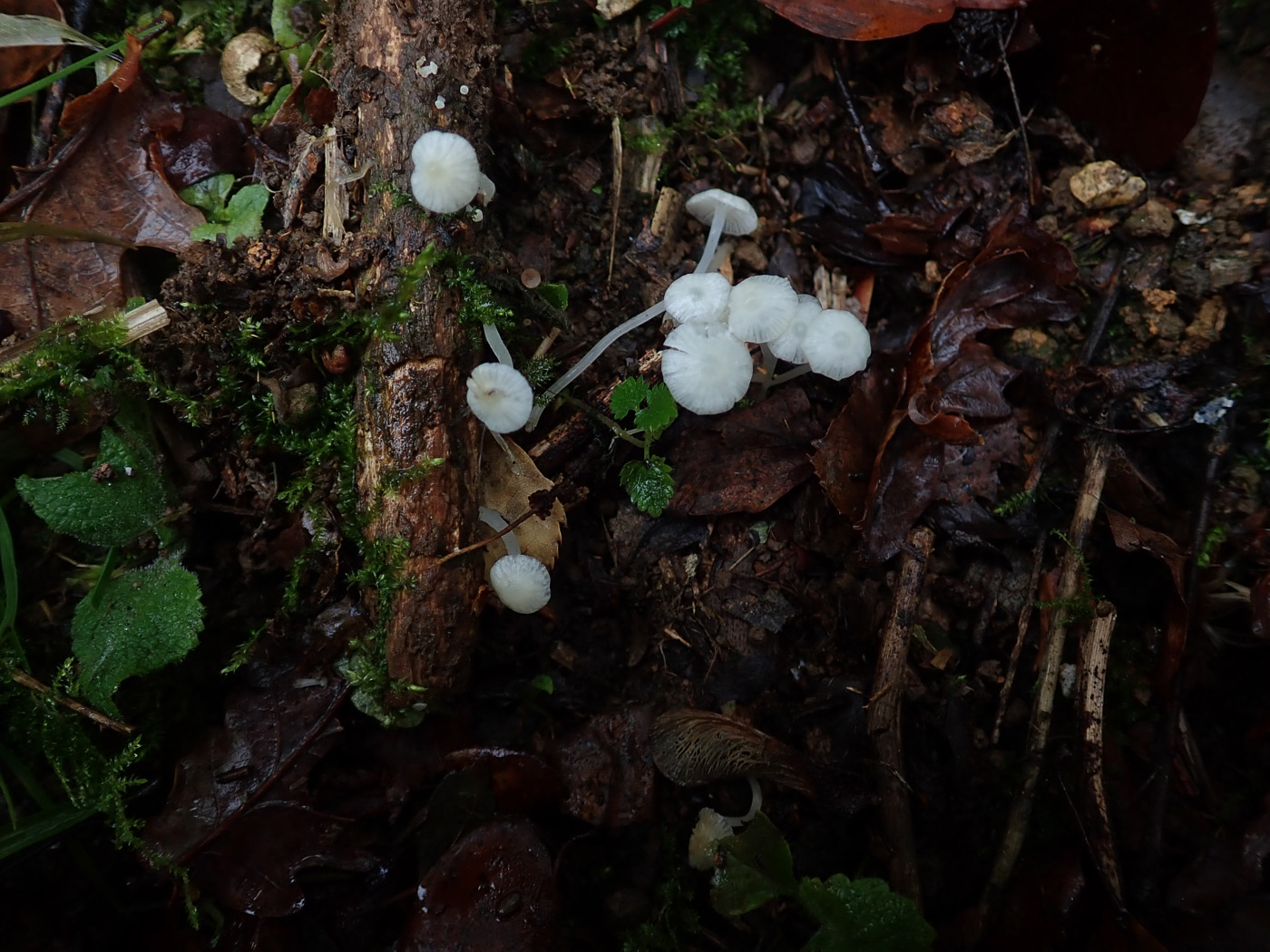
 |
November 27th Mycena olida (Rancid Bonnet) 
At Turville Heath Penny came across a tight cluster of smallish white Bonnets on some woody remains. It is quite a common white wood-inhabiting Bonnet with a preference for mossy logs and exposed roots, and can be separated in the field from the equally common M. speirea (Bark Bonnet) by its white cap with no brown central dot and the much less obviously decurrent gills. (Compare with the entry above.) Its mealy smell is difficult to detect and therefore not a particularly useful character. There is a name change here: It is now moved to genus Phloeomana! This is our first entry for Finds.
|

 |
November 27th Mycena galopus var. leucogala  (Milking Bonnet) (Milking Bonnet)
At Turville Heath under Oak Penny noticed this dark-capped singleton in disturbed soil and woody debris. Both cap and stem were equally dark which put her in mind of this particular species - one of two unusual varieties of the Milking Bonnet, the other being entirely white - but damaging the stem produced no sign of the white latex which normally exudes to confirm ones ID. At home, however, the long fusiform gill cells left her in no doubt, nor was she surprised having come across Milking Bonnets which entirely lack any white latex before. See Finds 2022 January 4th for an example of the species in its normal brown state - this is the first entry of the darker variety.
|
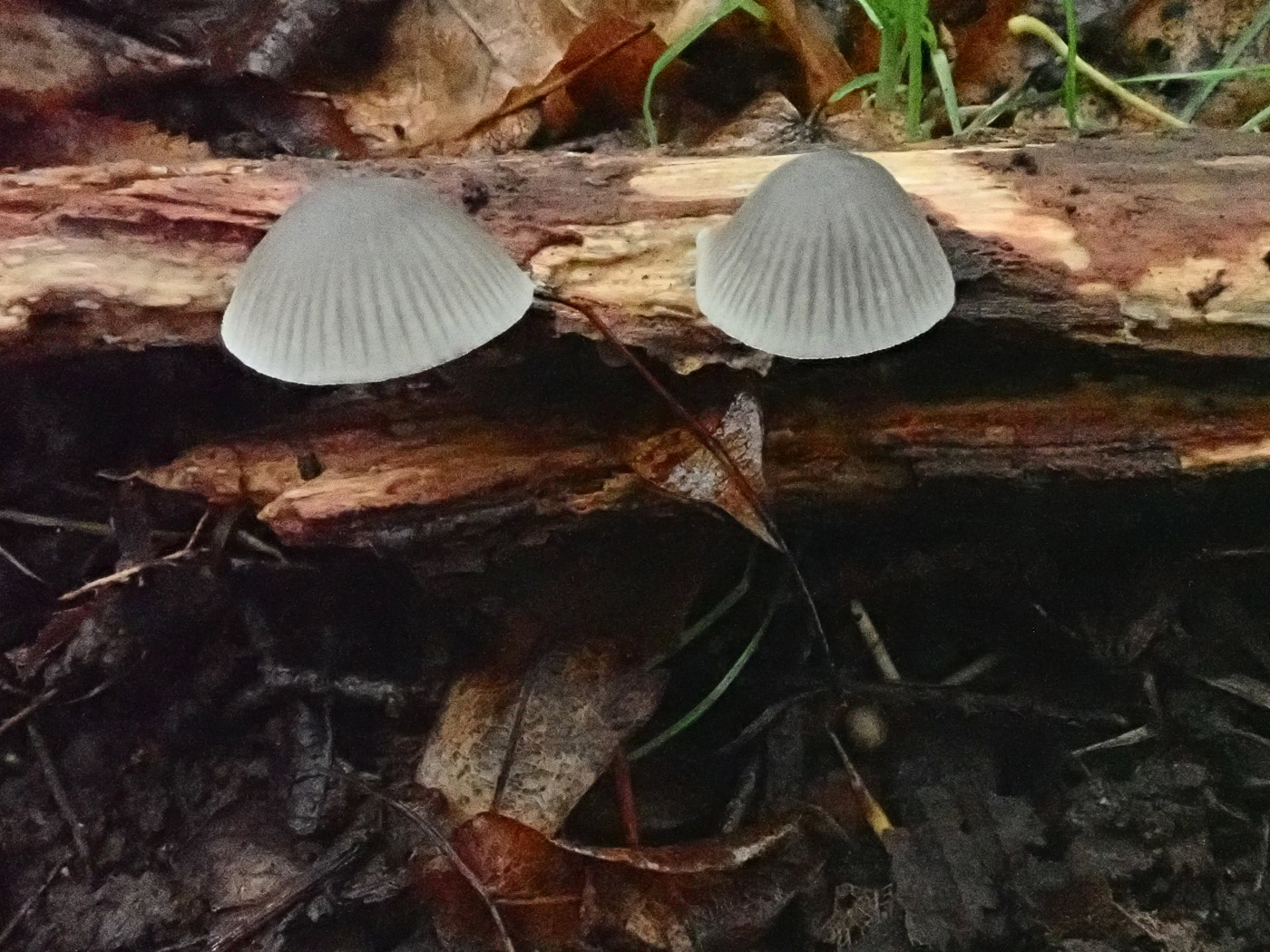
 |
November 27th Mycena arcangeliana (Angel's Bonnet) 
At Turville Heath Penny saw this pair growing out of the side of a stick, probably Lime. She suspected they were this common wood-inhabiting Bonnet and turning it over to reveal the rather dark purplish stems also strengthened this theory - later confirmed with a scope and by the smell of iodoform emanating from its pot as it dried out. We find it most commonly in large groups on fallen Beech. less often in ones or twos on other deciduous woods. See also Finds 2020 October 10th.
|
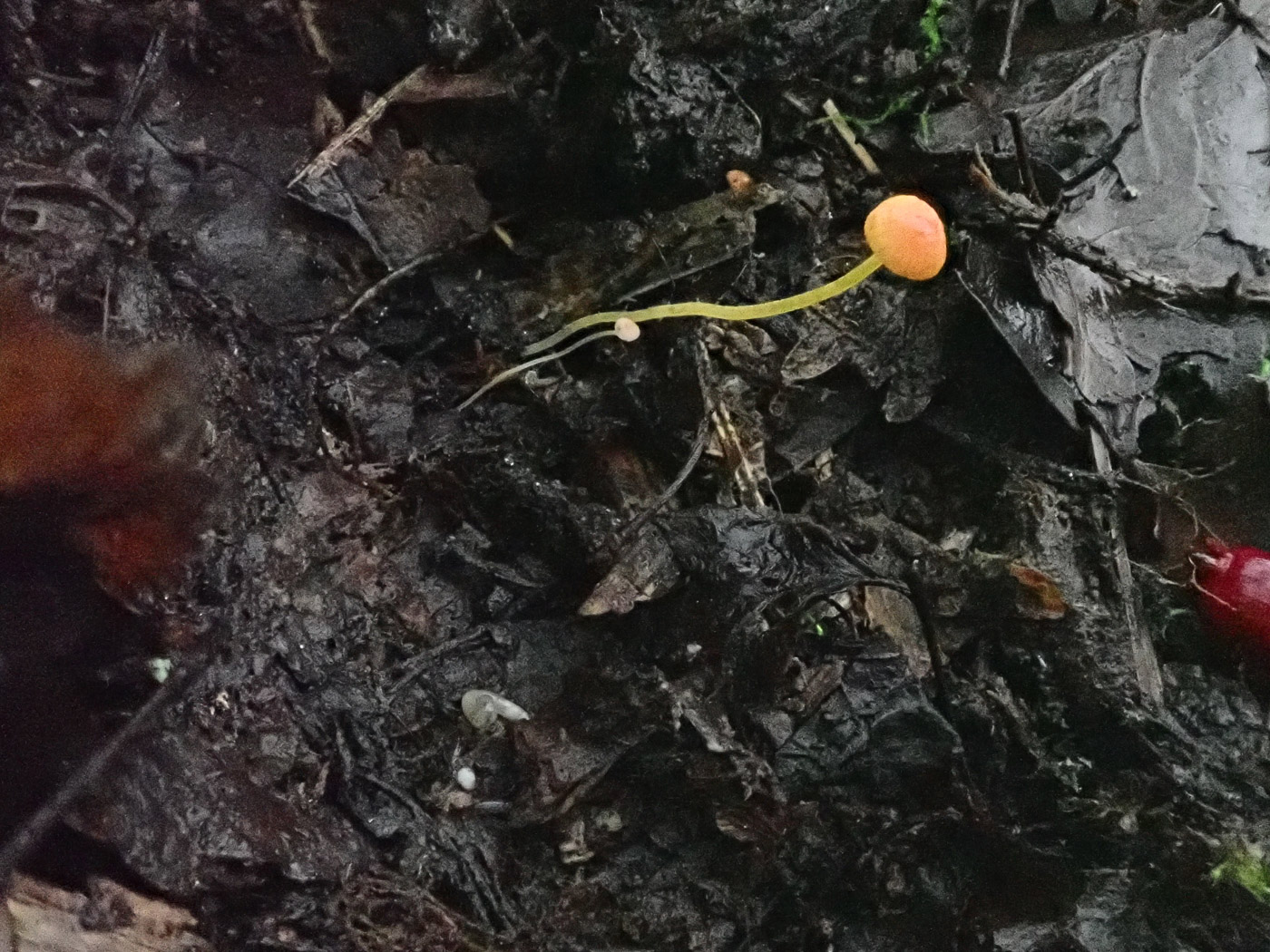 |
November 27th Mycena acicula (Orange Bonnet)
Amongst a pile of woody remains at Turville Heath Penny uncovered this brightly coloured tiny Bonnet - always a delight to find and an easy one to recognise with its orange cap and yellow stem. If the stem is not yellow and it has decurrent gills you probably have the very common Rickenella fibula IMoss Cap), but other than that species there is nothing else to be confused with it. See the Masterlist for several other examples.
|
 |
November 27th Dacrymyces stillatus (Jelly Spot)
At Turville Heath Penny found a few spots of this very common dull orange jelly fungus on a bare deciduous log. It forms colonies of tiny roundish soft lumps on both conifer and deciduous woods, posts, wooden steps - any bare damp wood. See also Finds 2020 October 11th.
|
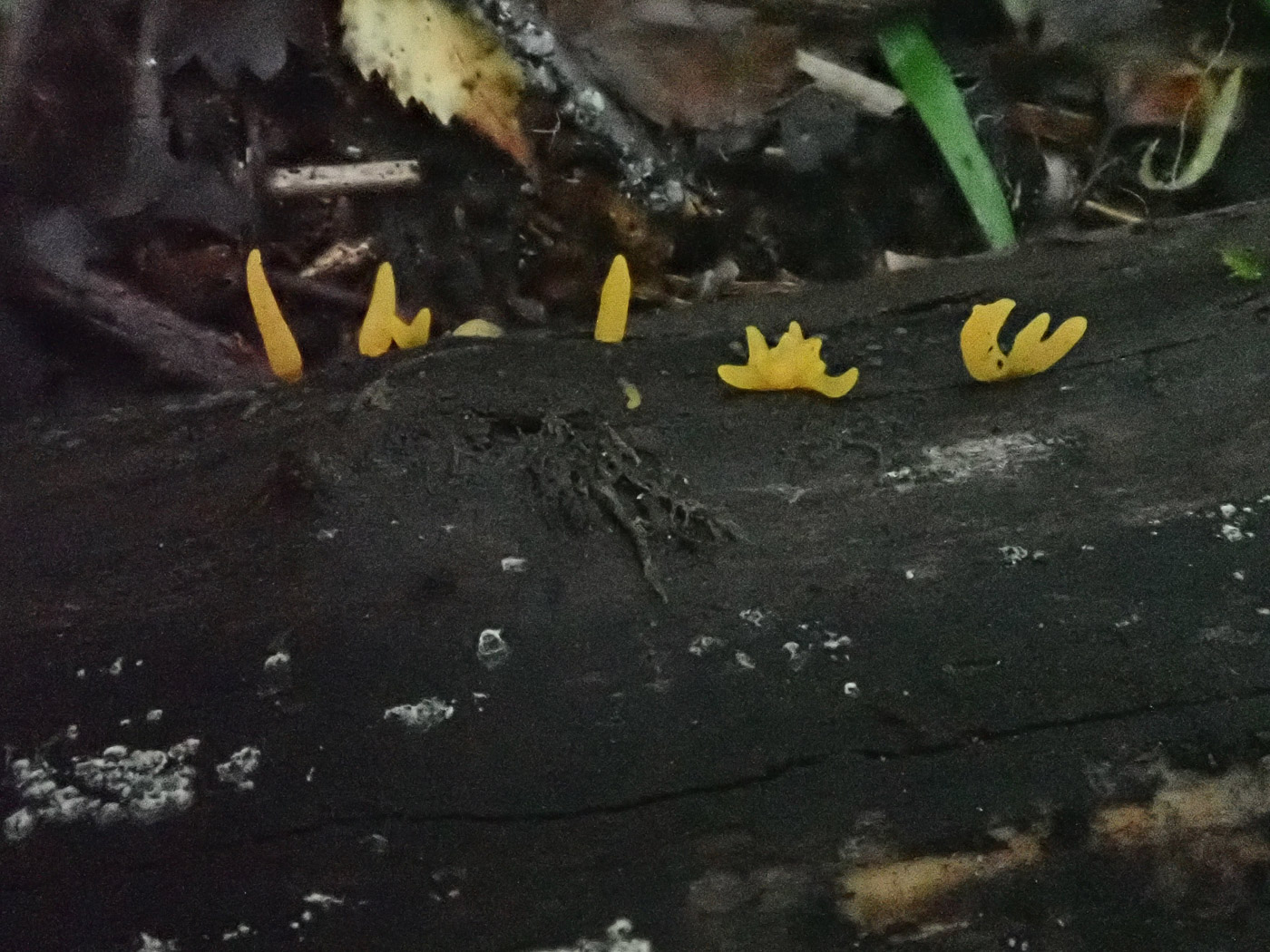 |
November 27th Calocera cornea (Small Stagshorn)
At Turville Heath Penny found a small cluster of this bright yellow species of jelly fungus on a bare deciduous log. In some years we see the species much less frequently than the two other species - C. viscosa and C. pallidospathulata - but this autumn it has been much in evidence. It differs from the others in being small, less than 1 cm tall, unbranching and slightly spiky. See the Masterlist for several other examples.
|

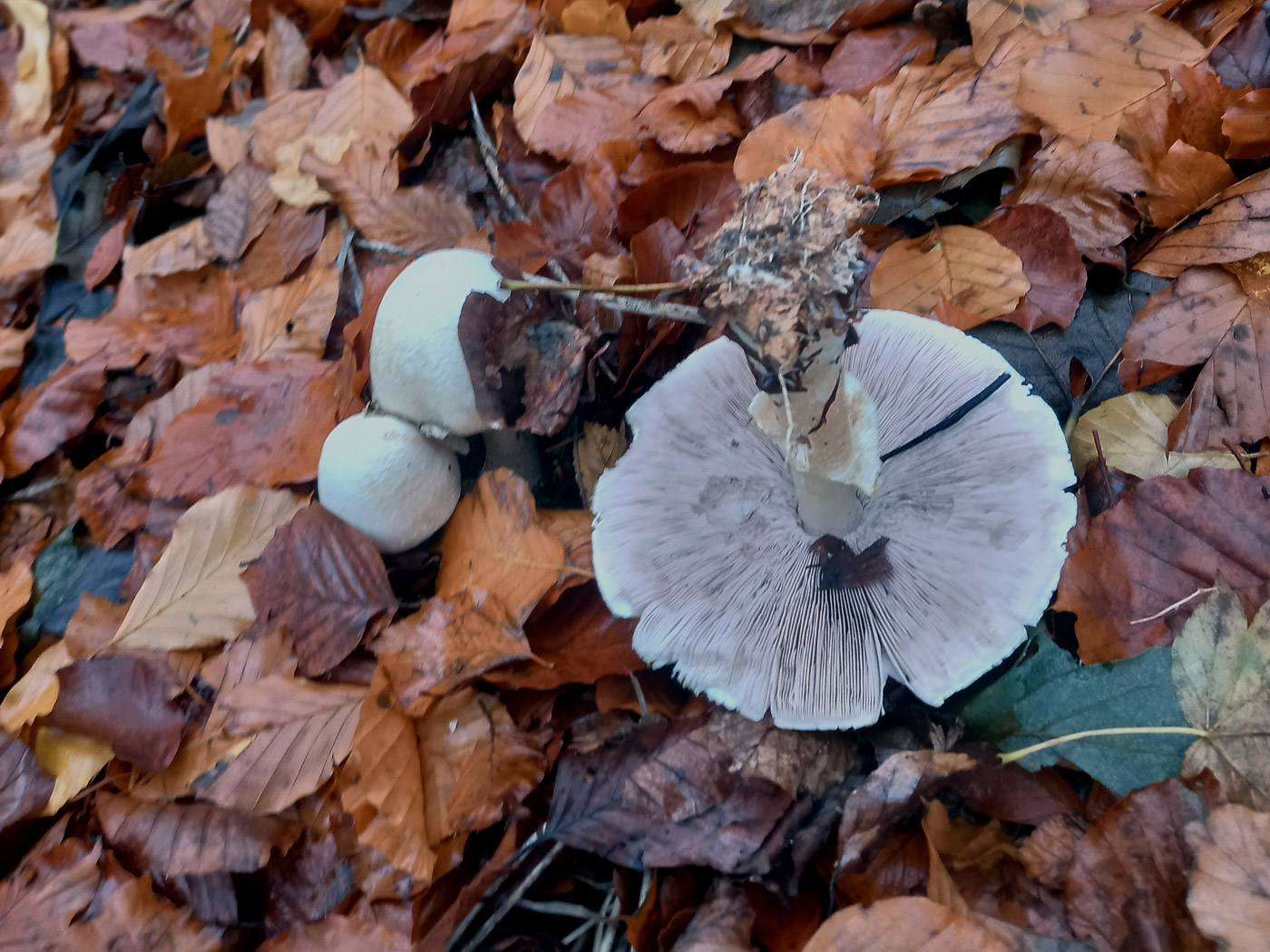 |
November 27th Agaricus sylvicola (Wood Mushroom)
In Captains Wood near Chesham Greg Douglas found good numbers of this fairly common Mushroom coming up under Beech in an area where they'd fruited a few weeks ago. The species is quite similar to A. arvensis (Horse Mushroom), ie quite large with a smooth white cap which yellows a bit when scratched, also a sweet 'mushroomy' smell, but the ring is flimsier and the stem tends to have a swollen base, also the gills are on the grey side even when young and never bright pink. It occurs only in woodland whereas A. arvensis favours more open grassy woodland edges, hedgerows. See also Finds 2021 November 17th.
|
November 26th 2022
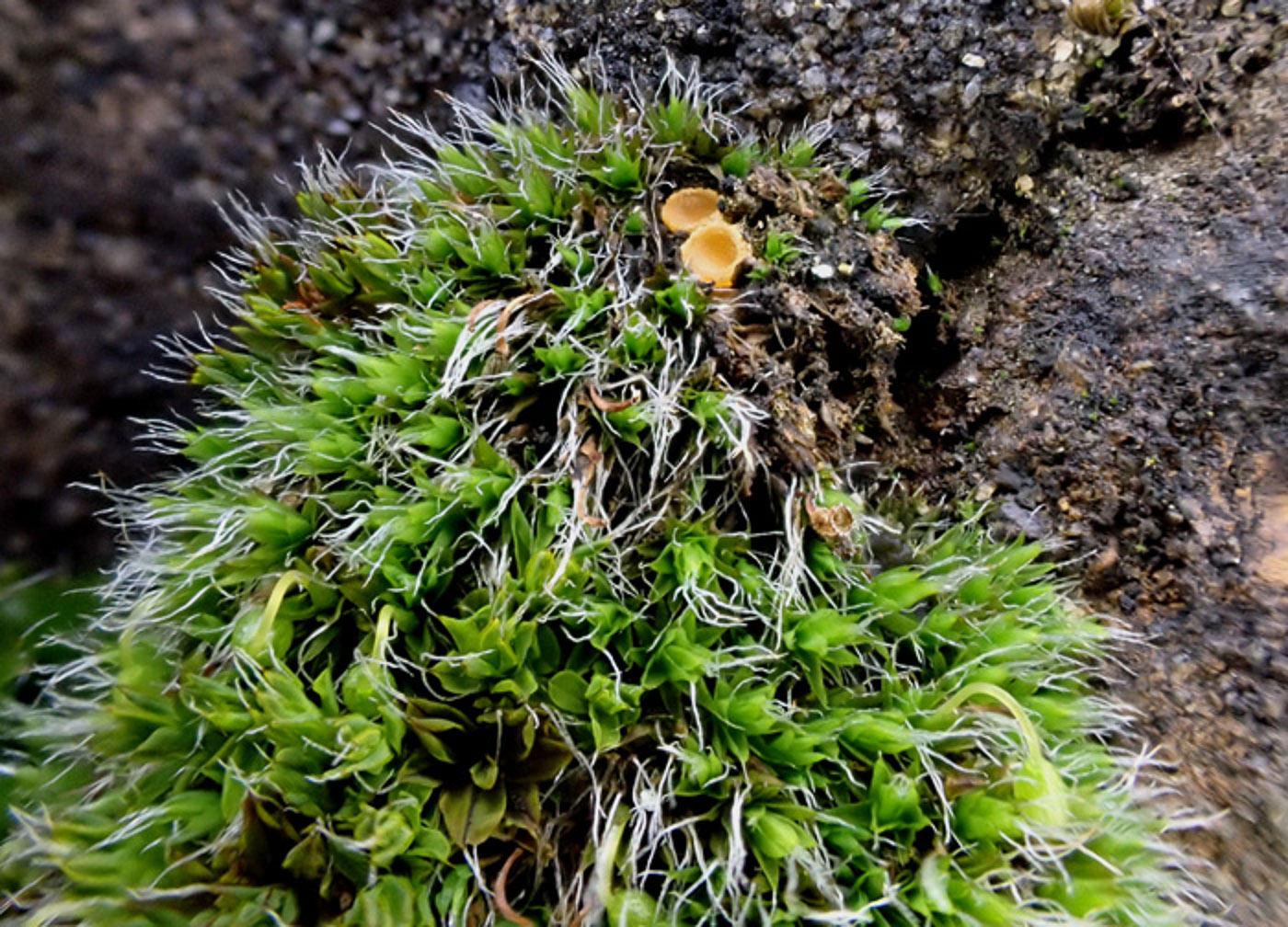
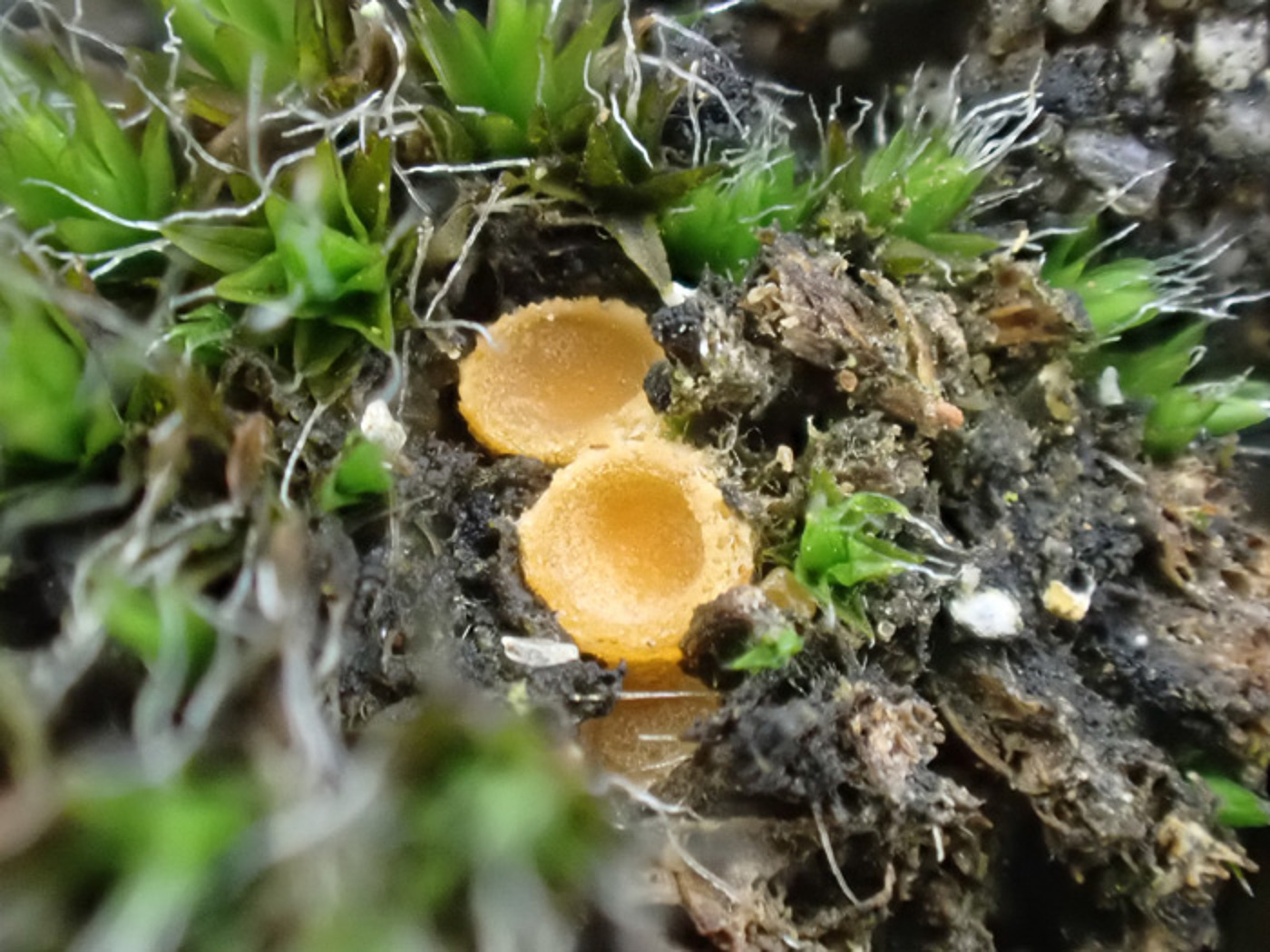
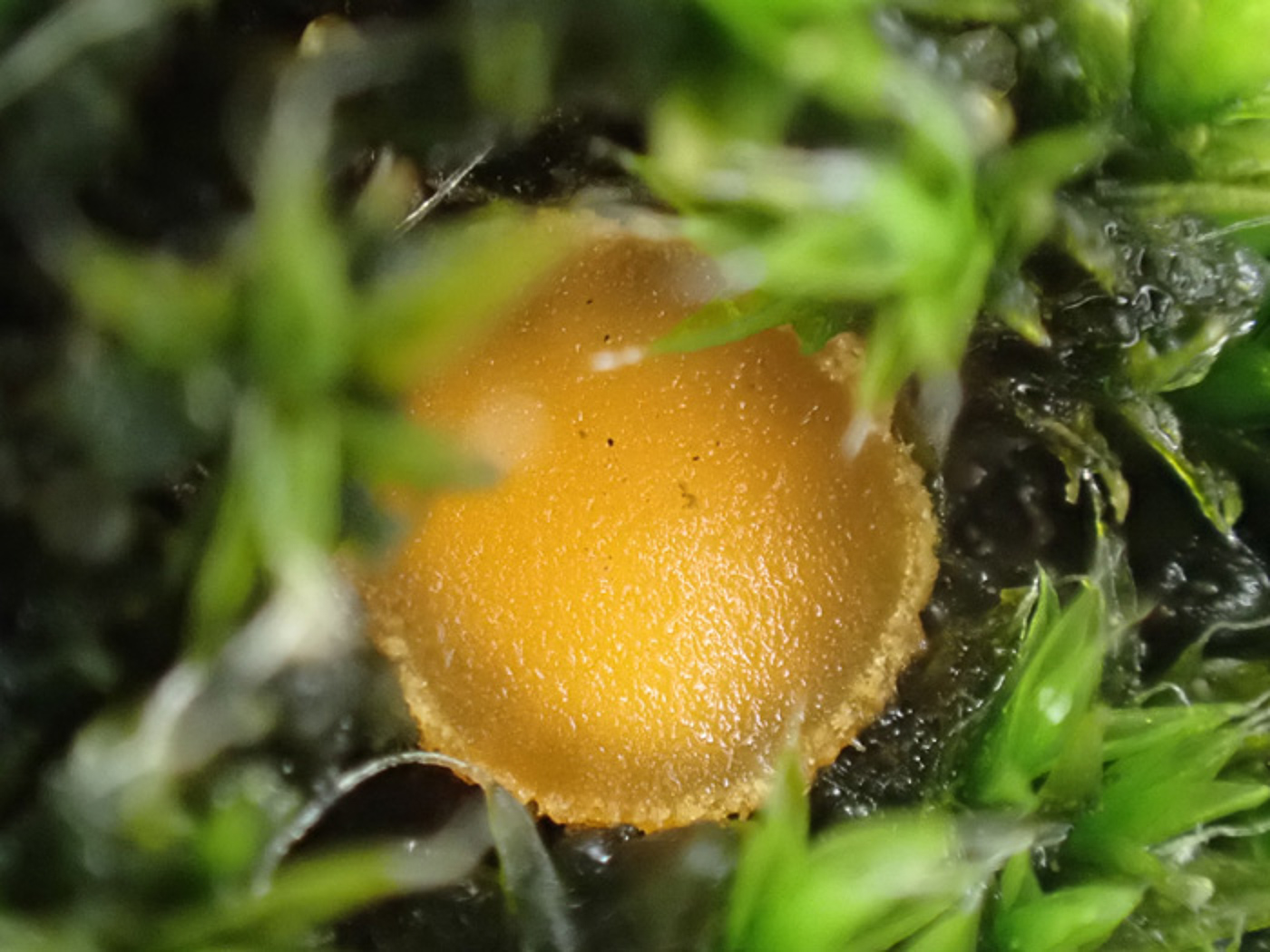 |
November 26th Octospora musci-muralis (a rare Ascomycete with no common name) 
At Little Brickhill Churchyard Stephen Plummer went searching amongst the gravestones for the bryophyte moss Grimmia pulvinata with one object in mind: to find this rarely recorded fungus which associates with it. He struck lucky with his third clump! There are very few national records of this species and it is new to the county. Quite a find!
|

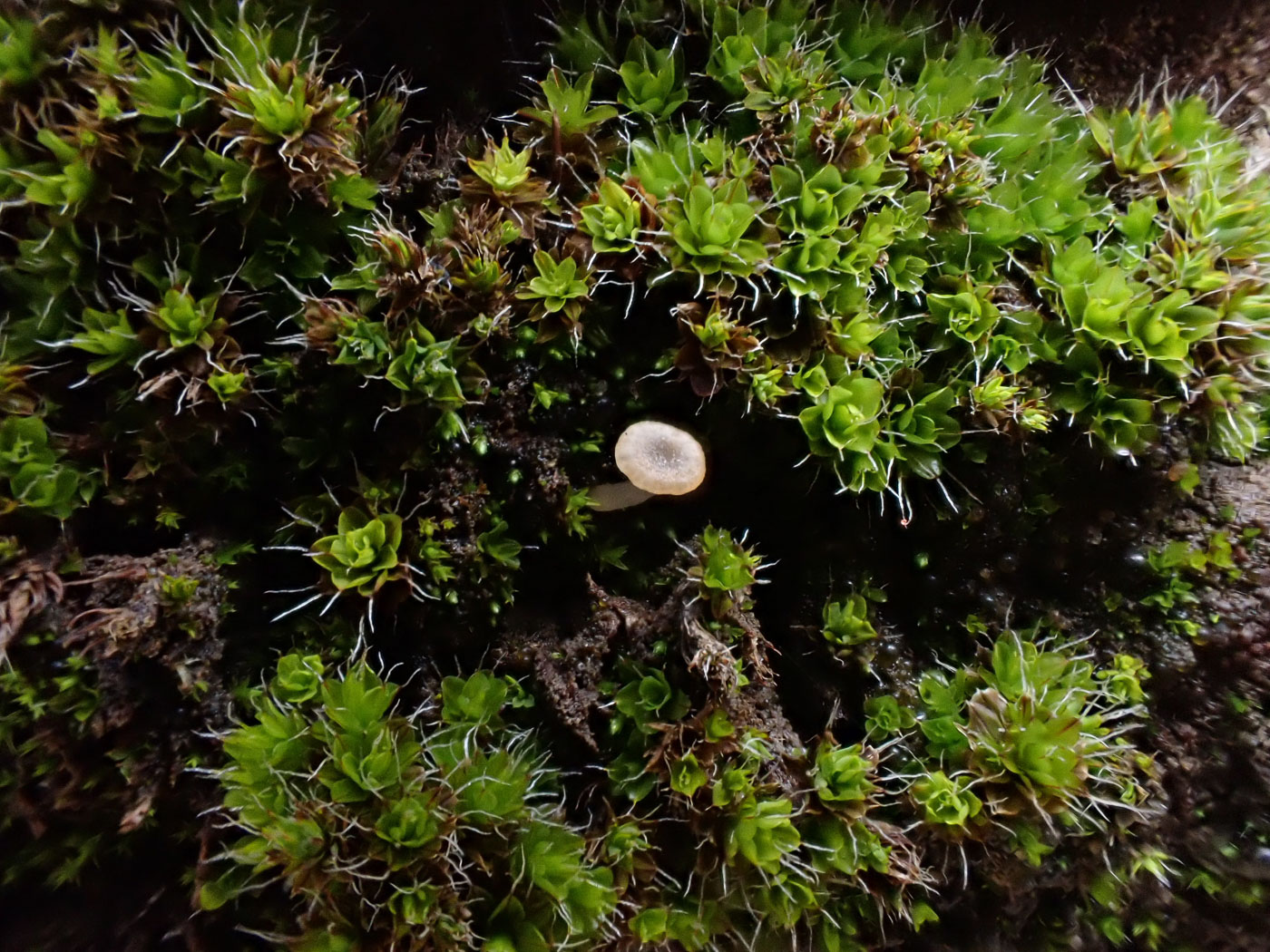

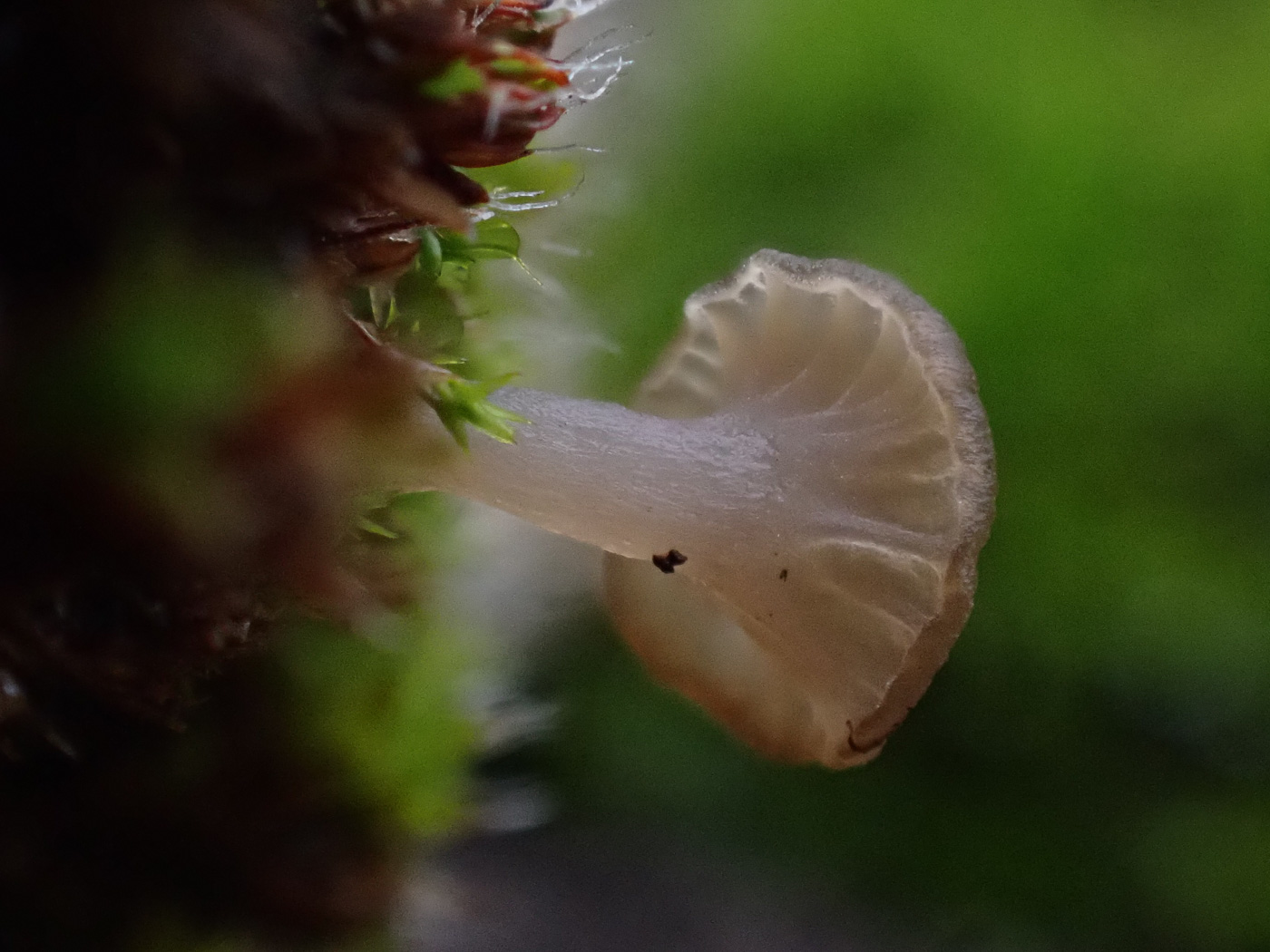 |
November 26th Arrhenia rickenii (a species of Navel with no common name) 
At Little Brickhill Churchyard Stephen Plummer noticed this tiny umbilicate species just visible in a patch of thick moss (photo1). This is a rare species (we have just one previous county record) though is easily missed for obvious reasons. It is saprophytic on moss, one of several such species associated with moss, lichen and liverworts, often needing care to identify taking note of the specific host species. See also in Finds 2020 November 30th, also compare with other species of Arrhenia illustrated in Finds.
|

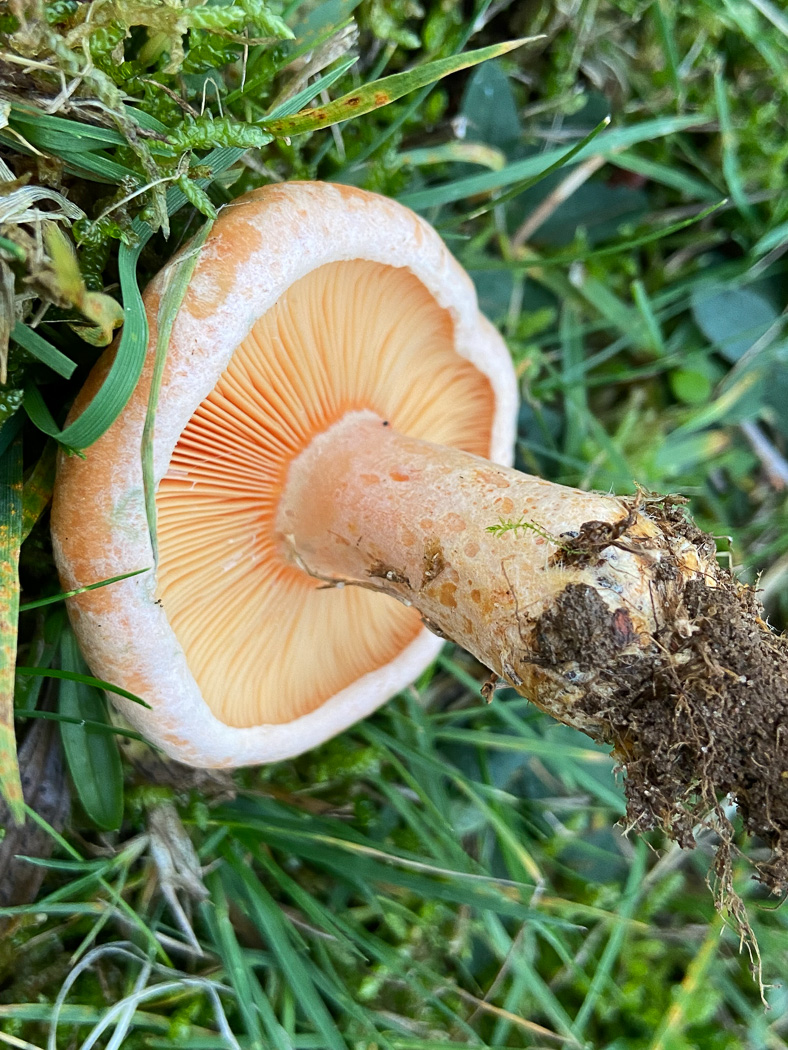
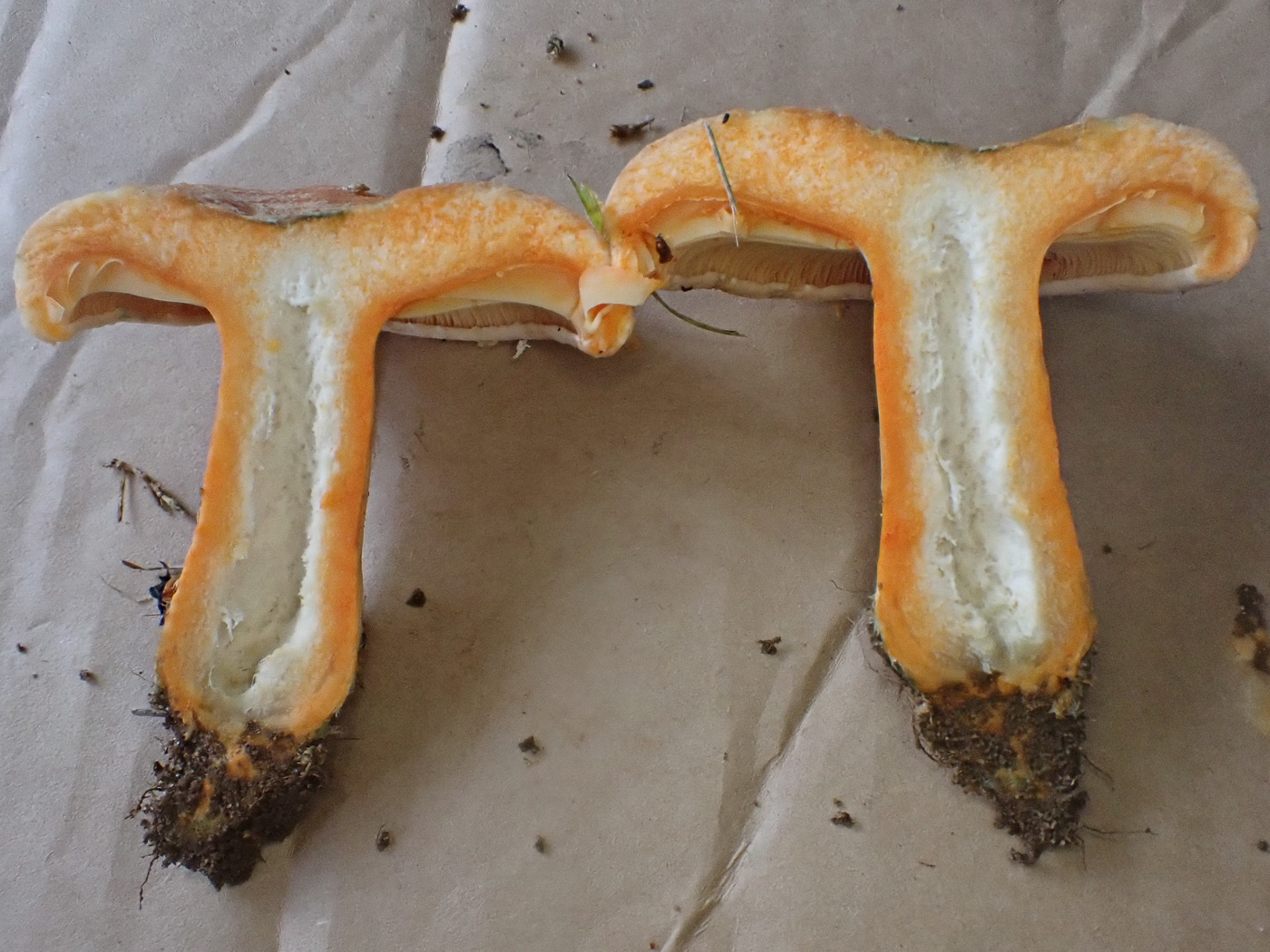
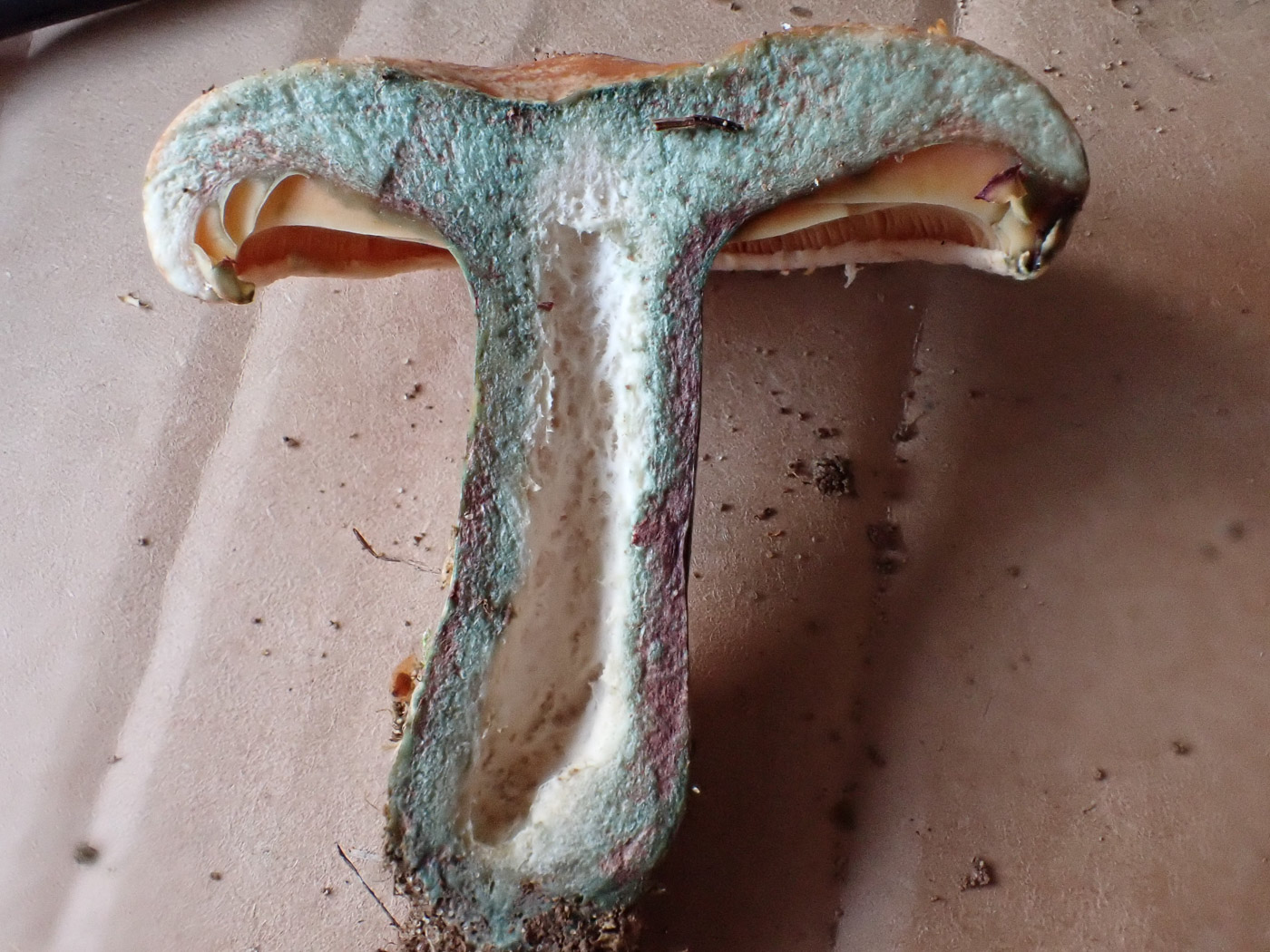 |
November 26th Lactarius deliciosus (not semisanguifluus) (Saffron Milkcap)
At Little Brickhill Churchyard Stephen Plummer found this fresh specimen under Pine, assumed it was L. deliciosus (correctly as it happens), took his photos and only thought to test for the wine-red colour change in the stem flesh a couple of days later - the test which separates these two Pine associating members of this group of Milkcaps, ie those having orange latex. More photos were taken, and he noted no immediate change (photo 3) but overnight the wine-red reaction was clearly present (photo 4). However, further research has uncovered that all of this group will react in this way given enough time, but to prove you have L. semisanguifluus rather than L. deliciosus the colour change once the flesh is exposed to air needs to be apparent within 10 minutes - a fact which is not always mentioned in texts. Hence Stephen's experience here has proved a very useful exercise and also brings into doubt our Finds entries for L. semisanguifluus. See the Masterlist for examples of both species bearing the above discovery in mind!
|

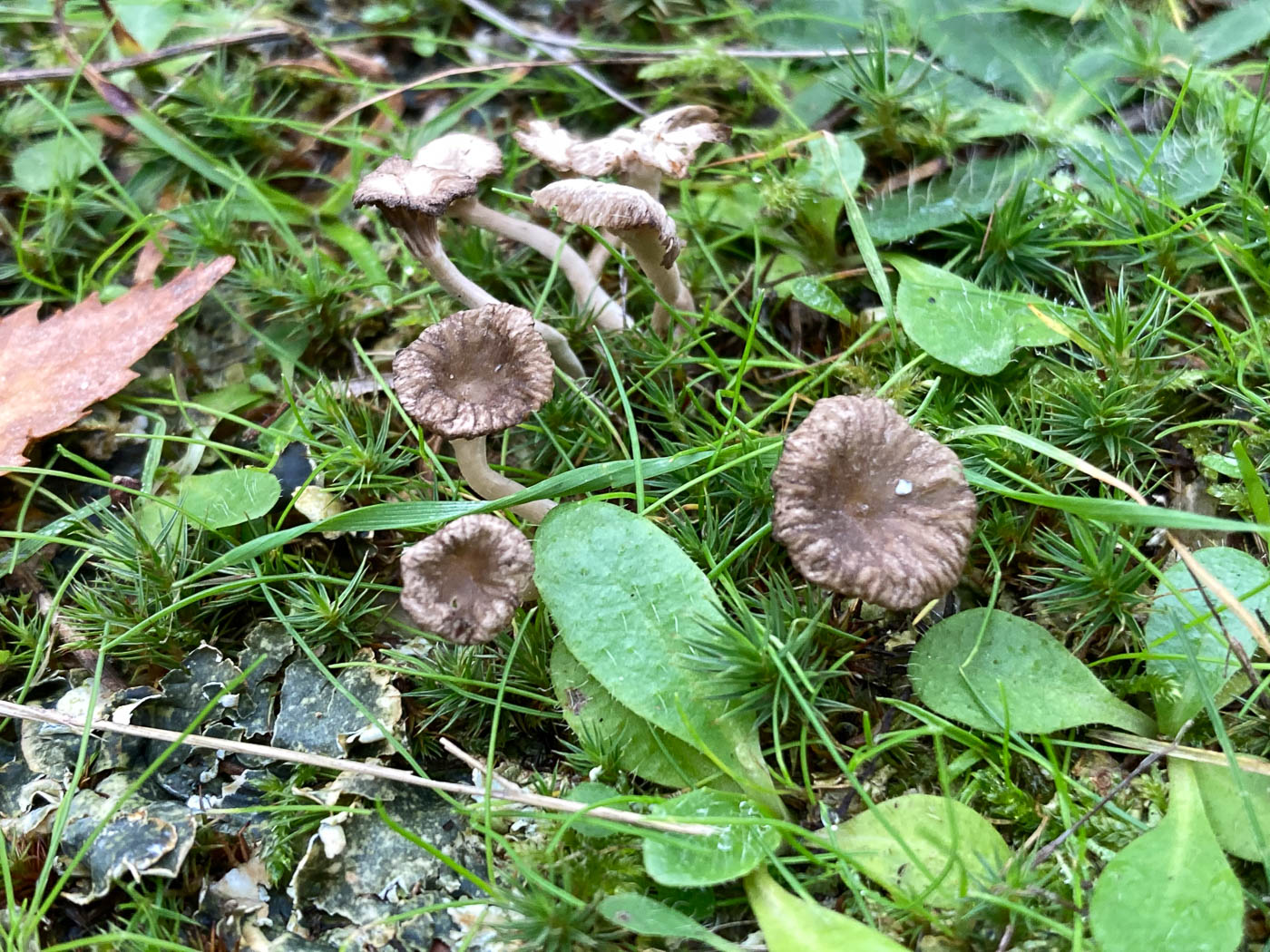 |
November 26th Arrhenia peltigerina (a species of Navel with no common name) 
At Stoke Poges Memorial Gardens Russell Ness found this unusual and seldom recorded species which is associated with the lichen Peltigera - visible in his photos. Our only previous county record is Russell's from Cliveden (see Finds 2021 November 6th). We hope to get a sample from today's collection sequenced to confirm his ID.
|
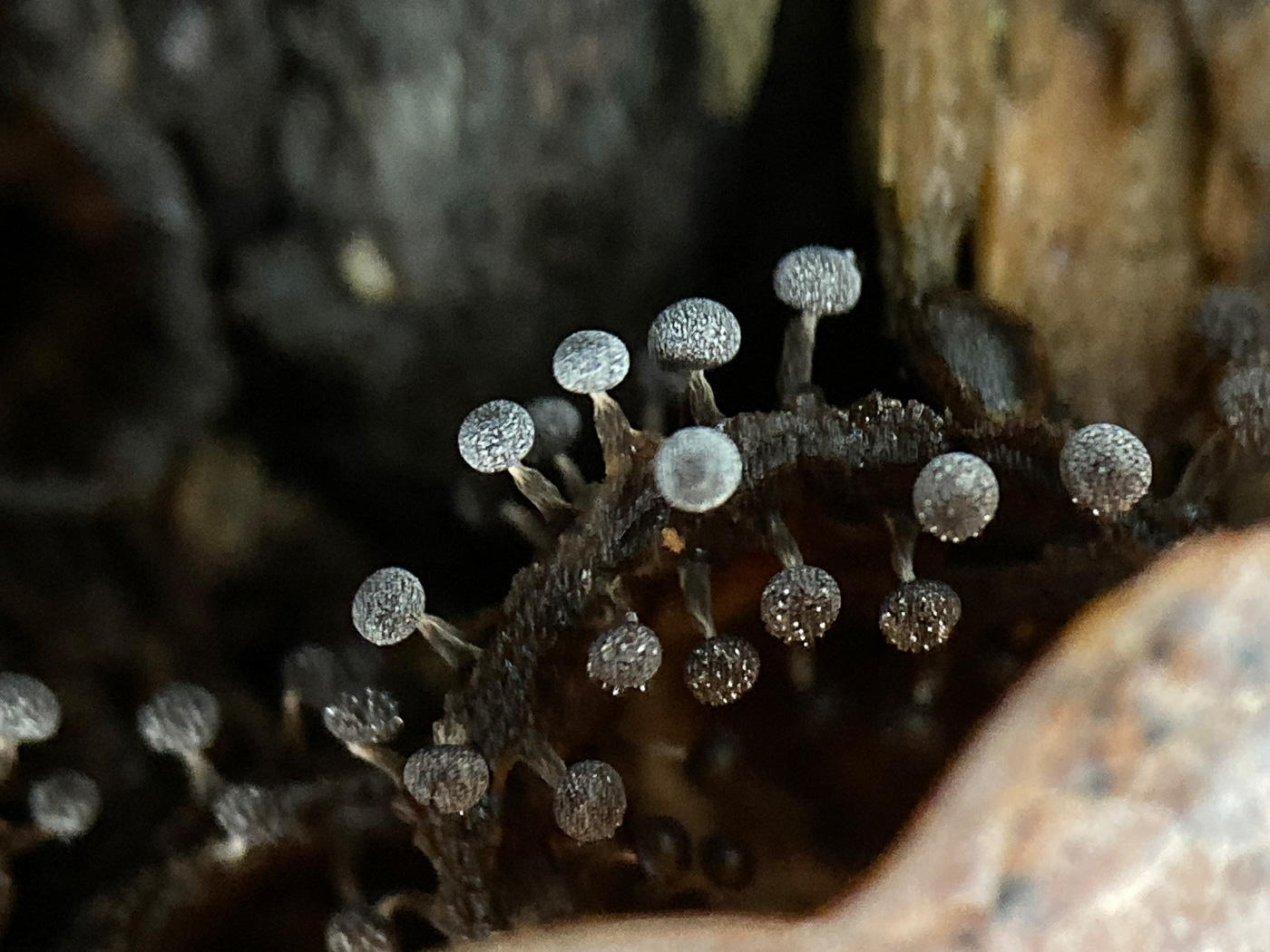 |
November 26th Physarum leucophaeum ( a Slime Mould with no common name)
At Stoke Poges Memorial Gardens Russell Ness found not only the tiny Cyathus striatus (Fluted Bird's Nest) in the woodchip, but growing on it he noticed this slime mould. His photo has been identified for us by Barry Webb. We have just one previous entry in Finds: 2020 October 16th.
|
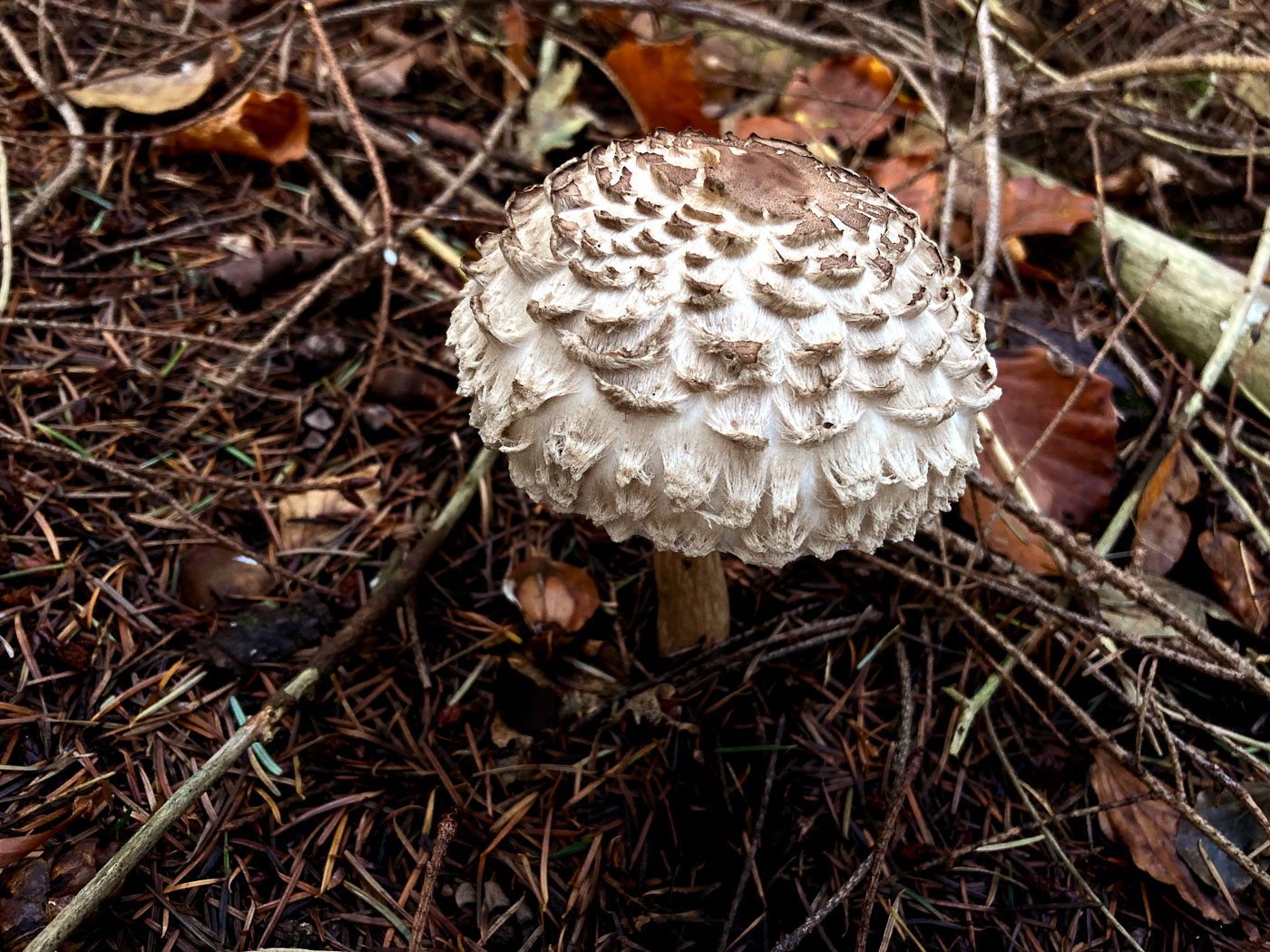
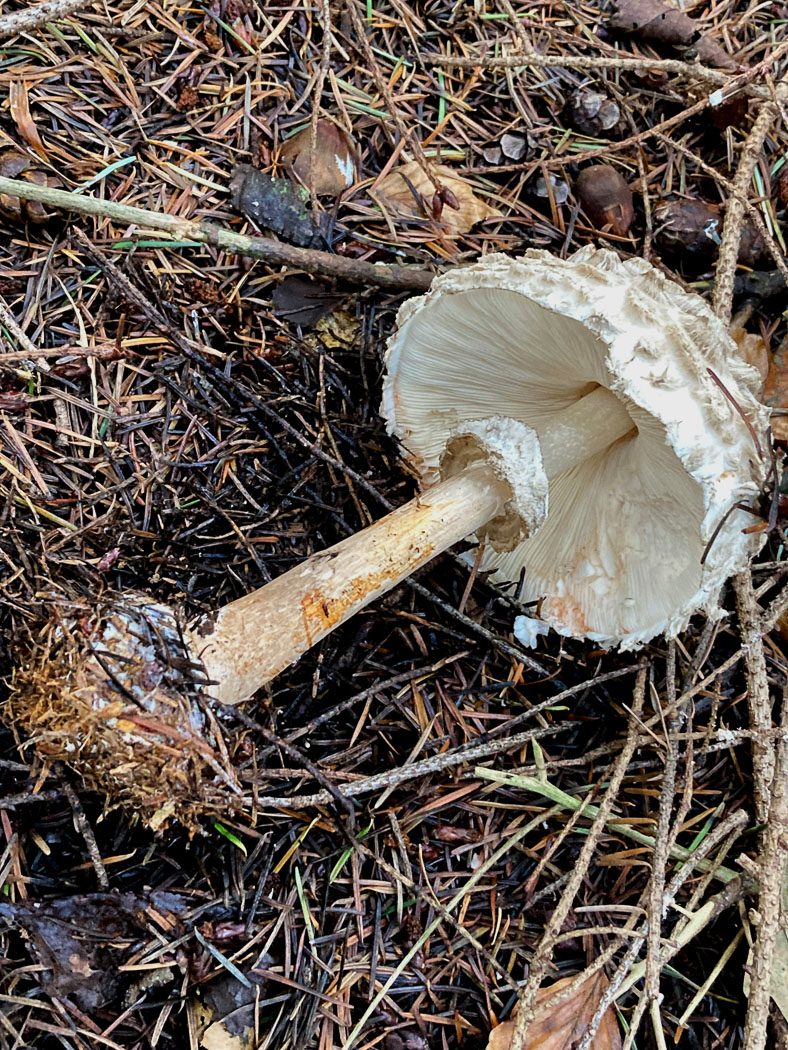 |
November 26th Chlorophyllum brunneum (Brown Parasol)
In Hunts Wood near Taplow Russell Ness found just a singleton of this species - one which is very similar in appearance and characteristics to the more familiar C. rhacodes (Shaggy Parasol), but differs in having more contrast between the brown scales and white flesh, also brown flecks on the underside of the ring and a distinct marginate bulb. Unlike the commoner species it favours conifer debris as here. We have just one previous Finds entry: 2021 October 19th.
|
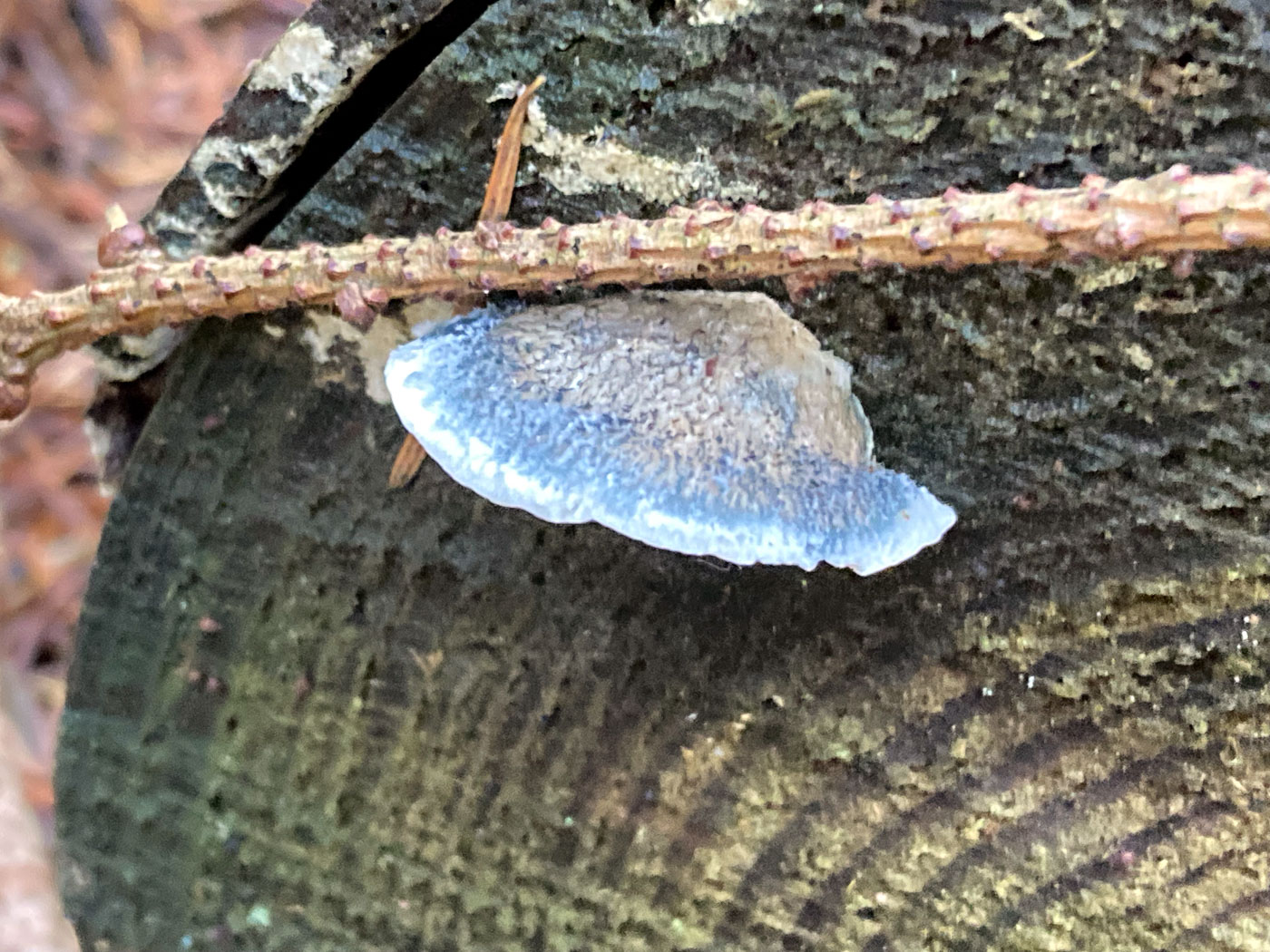
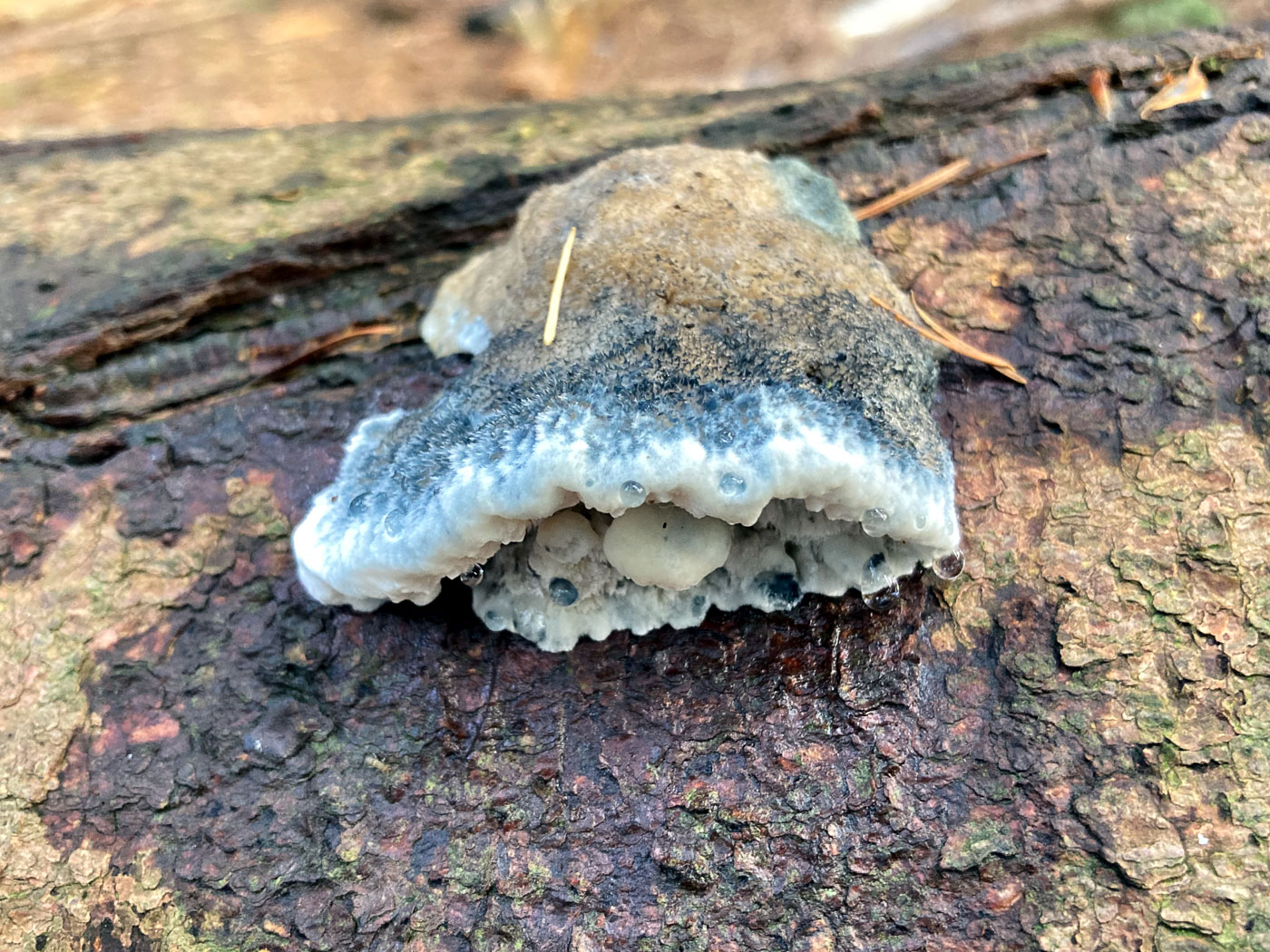 |
November 26th Postia caesia (Blueing Conifer Bracket)
In Hunts Wood near Taplow Russell Ness found these nice examples on fallen conifer. Many fungi are looking pretty bedraggled and well past their sell-by date at the moment - end of season and a lot of rain too - so anything looking reasonable, as do these brackets, tends to catch the eye and prompt the camera out of the pocket. We have just one previous entry in Finds: 2020 October 10th.
|
November 25th 2022
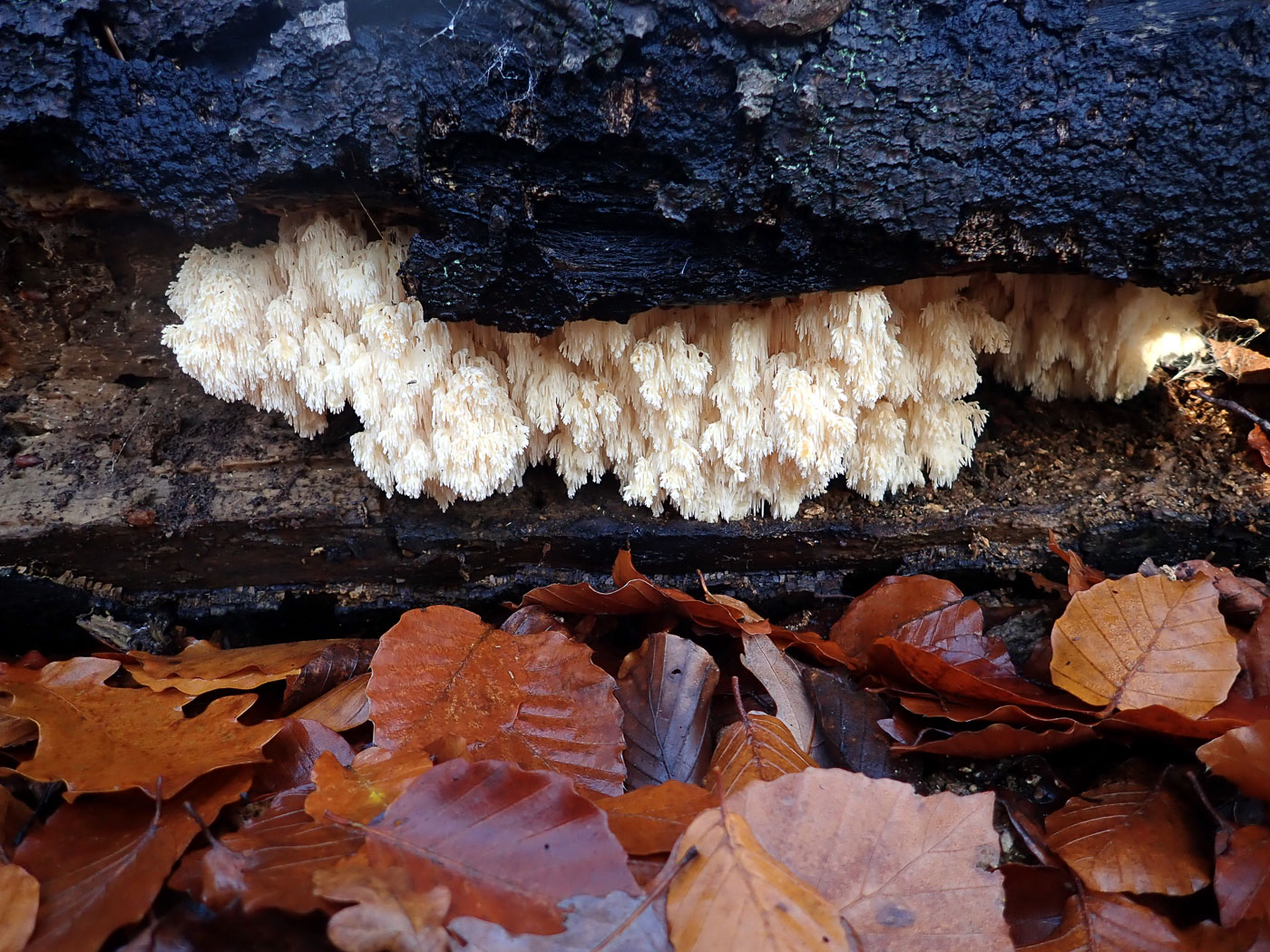
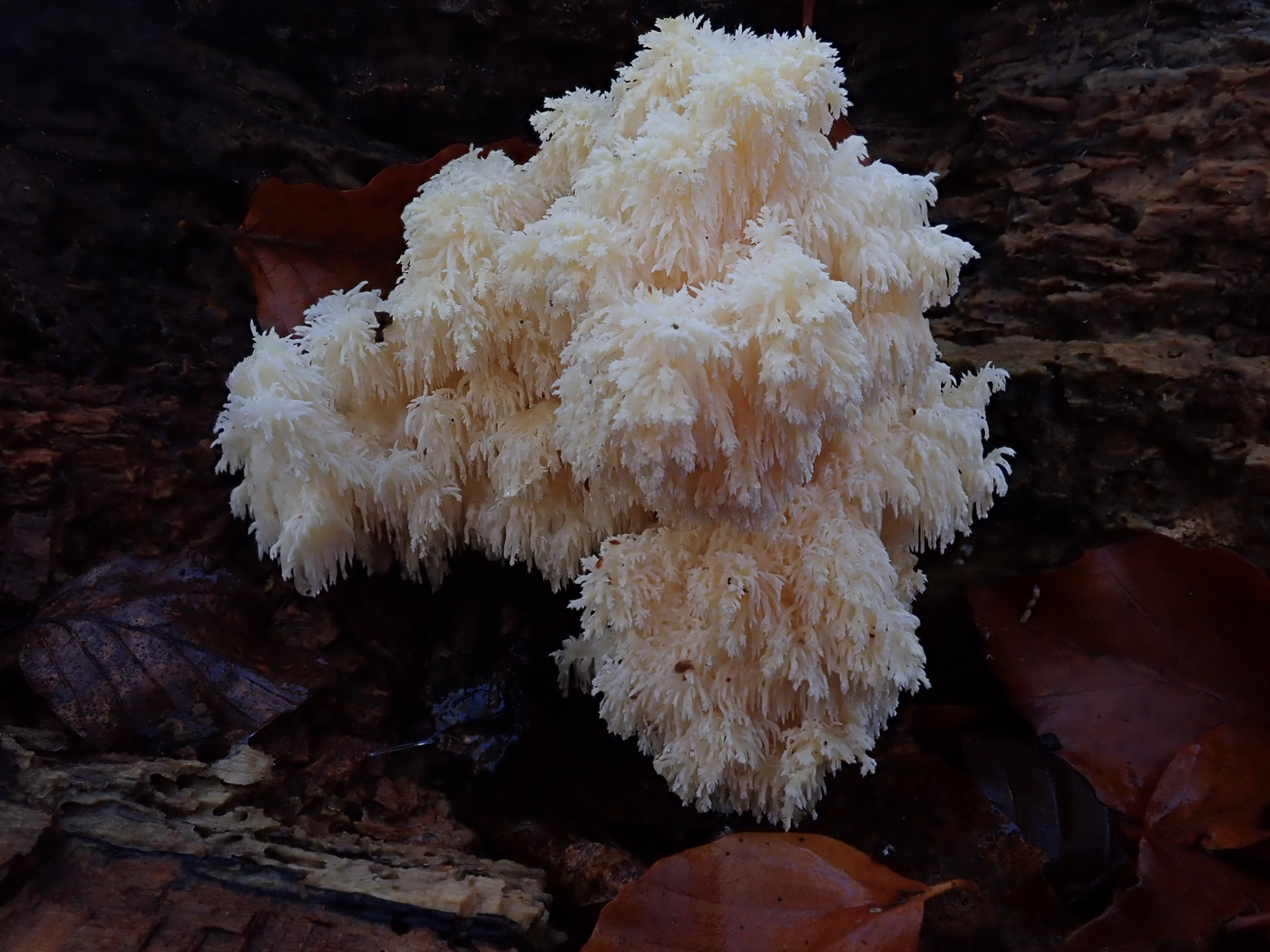
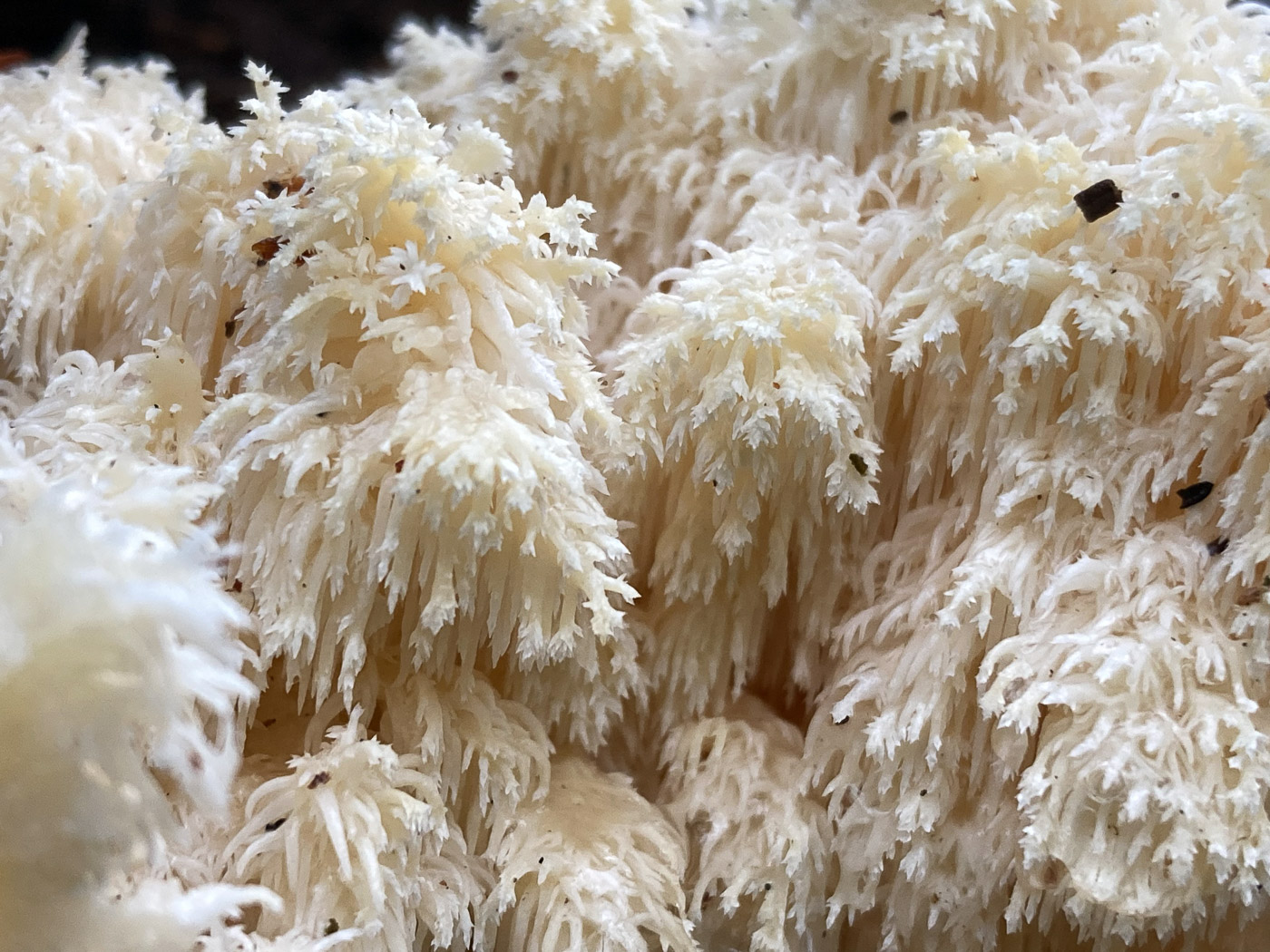 |
November 25th Hericium coralloides (Coral Tooth)
After a tip-off that this rare and special species had been found fruiting in Egypt Woods, Penny and Sarah Ebdon went in search and were successful! They found several fruiting bodies on an old rotting Beech trunk and in reasonable condition considering the recent weather. Though not quite as showy as the even rarer H. erinaceus, this is a stunning toothed fungus, categorised as Endangered in the 2015 Red Data List. This century our county records are restricted to two sites, one from Langley Park and two from nearby Burnham Beeches, with no records since 2009. Clearly this is a new entry for Find. Photo 1 is Penny's, photo 2 is Sarah's, and photo 3, taken the following day, is Russell Ness's when he also went to find the species.
|
 |
November 25th Mycena inclinata (Clustered Bonnet) 
On an Oak stump in Egypt Woods Penny and Sarah spotted this little group and were very unsure which Bonnet it might be until one was collected and smelt! The give-away smell, described officially as 'soapy, farinaceous, rancid' (but to Penny clearly of Lupins!), left Penny in no doubt despite the fact that it completely lacked the darker orange lower stem - usually another useful clue. This late in the season such clues - including smells - can be fickle so it was essential to confirm here with a scope. The slightly frilly edge to the cap seen here is a feature which does often seem to present with this species, however. See also 2020 October 16th and November 6th. The photo is Sarah's.
|
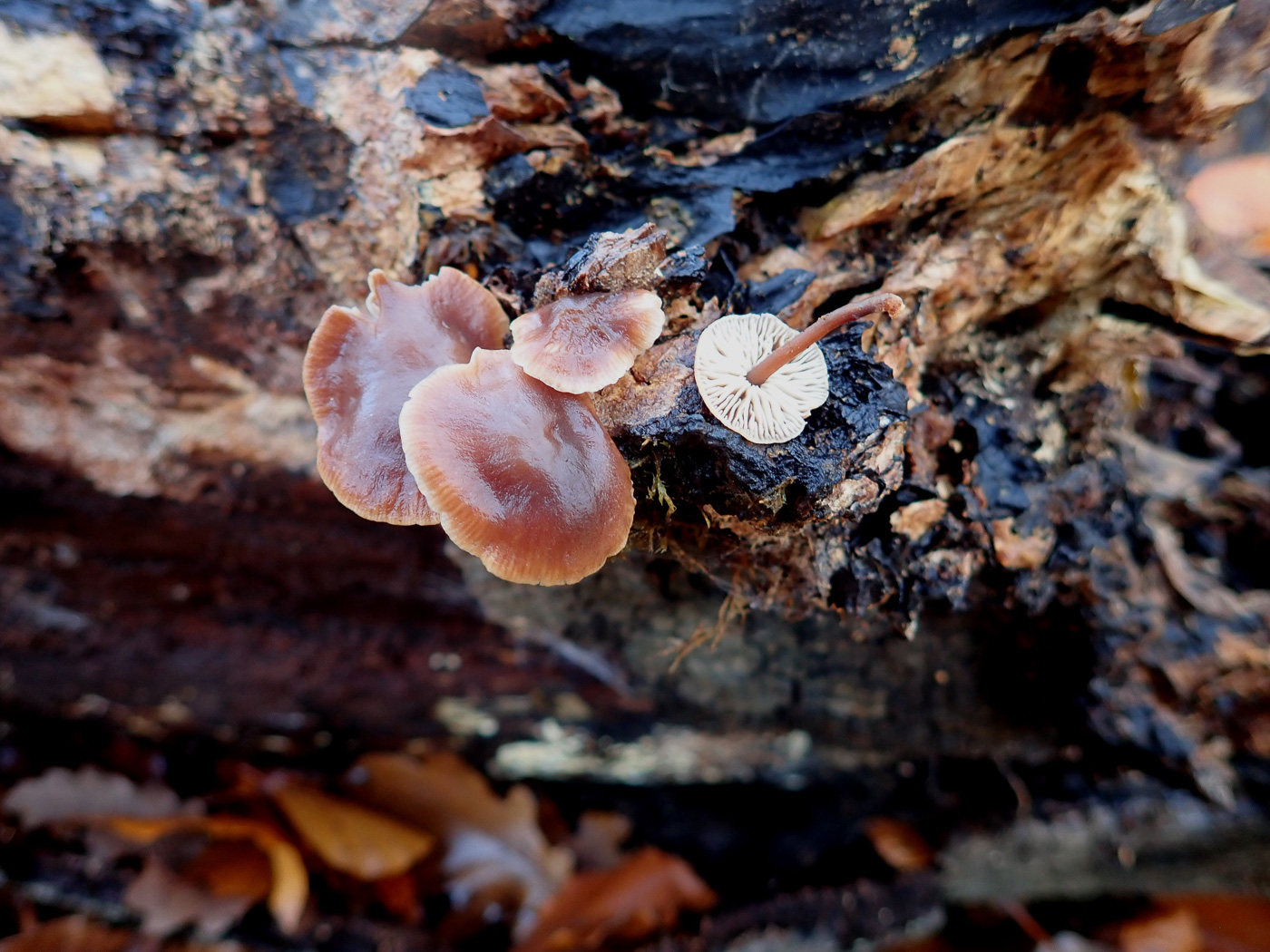
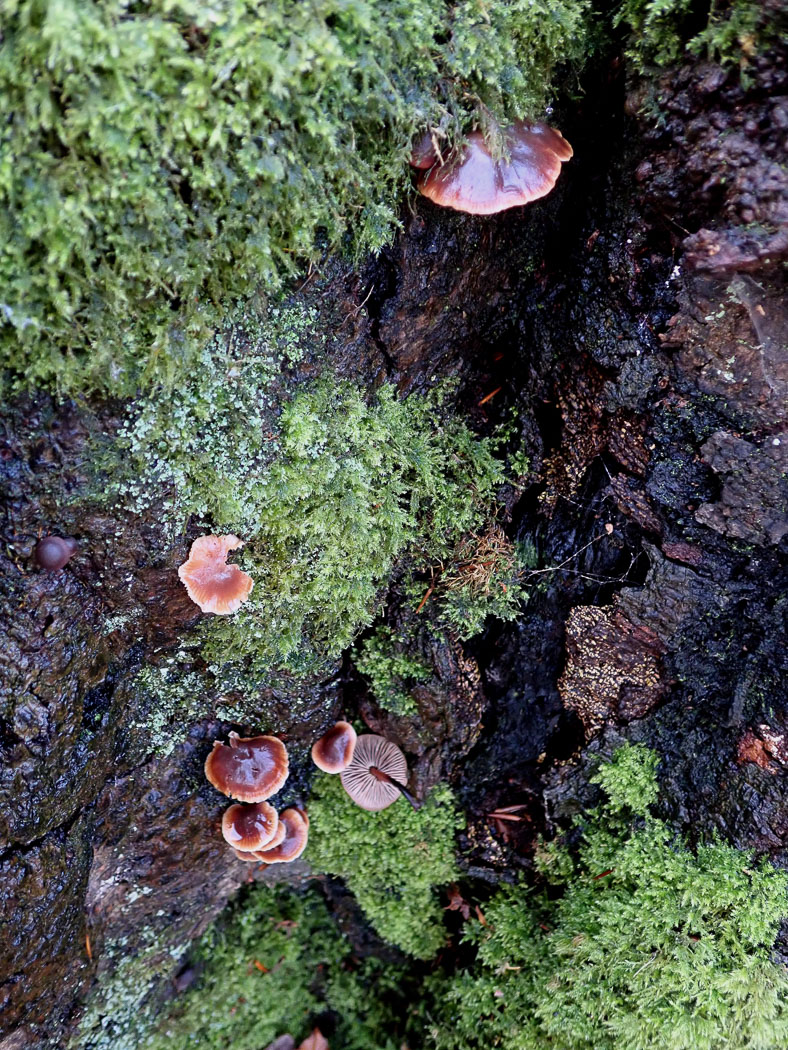
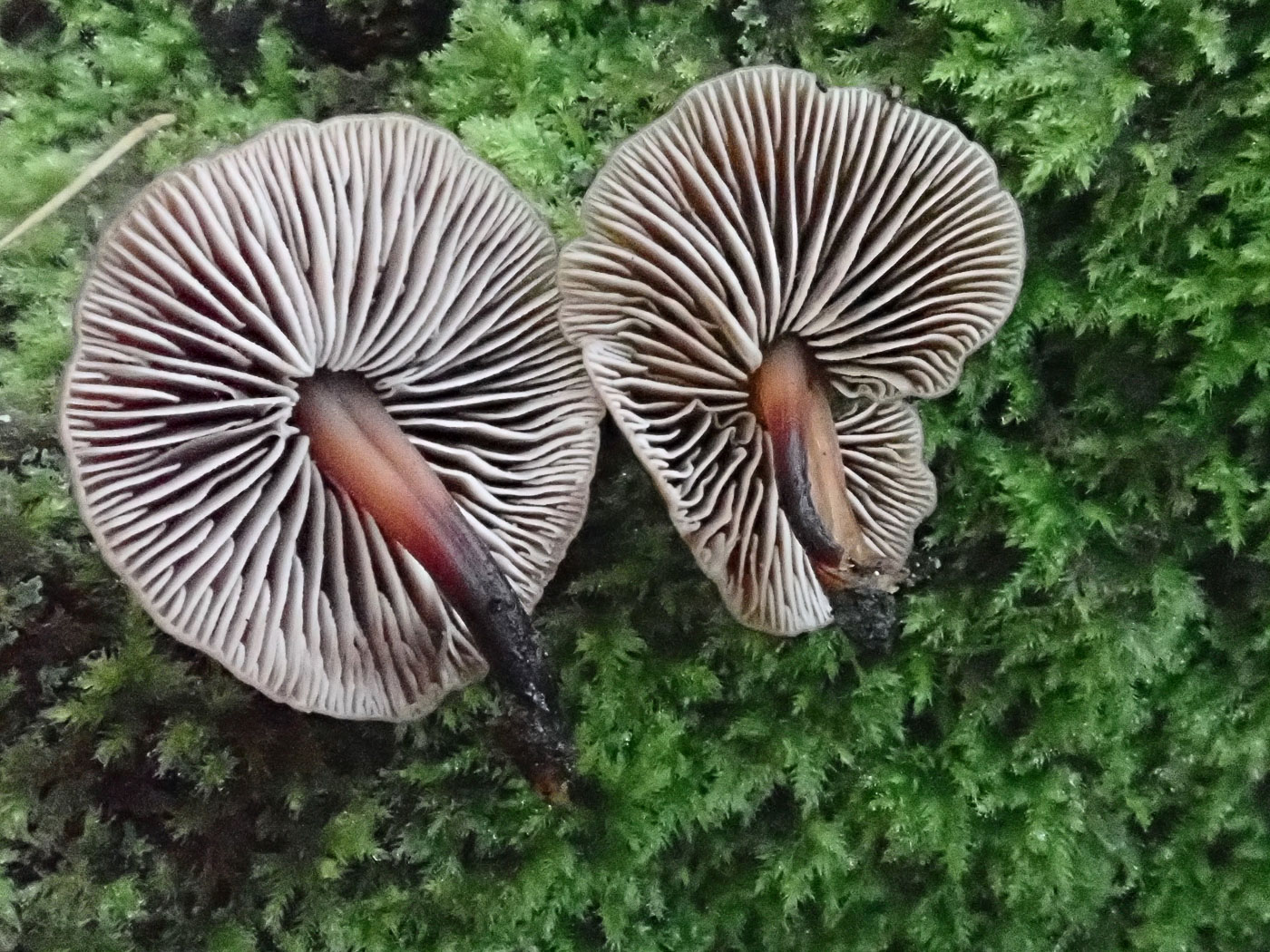 |
November 25th Gymnopus brassicolens (Cabbage Parachute) 
In Egypt Woods on a fallen Beech stump Penny and Sarah Ebdon found two separate collections of this quite unusual and very smelly species! First impressions before picking one were that it was a Mycena, maybe M. haematopus, but on turning one over and putting it to her nose, Penny immediately knew it had to be one of two extremely similar species which have this very unpleasant pervasive smell of overcooked cabbage mixed with garlic! Both previously in genus Micromphale, the two are now placed in separate genera but remain a challenge to distinguish between. The other species, now Marasmiellus foetidus, luckily has larger spores and a spore print therefore was taken and confirmed Penny's ID today. However, both species look and smell much the same and can be found on sticks, twigs, woody litter, or actually on a stump as here. See also in Finds 2020 October 14th.
|
November 24th 2022
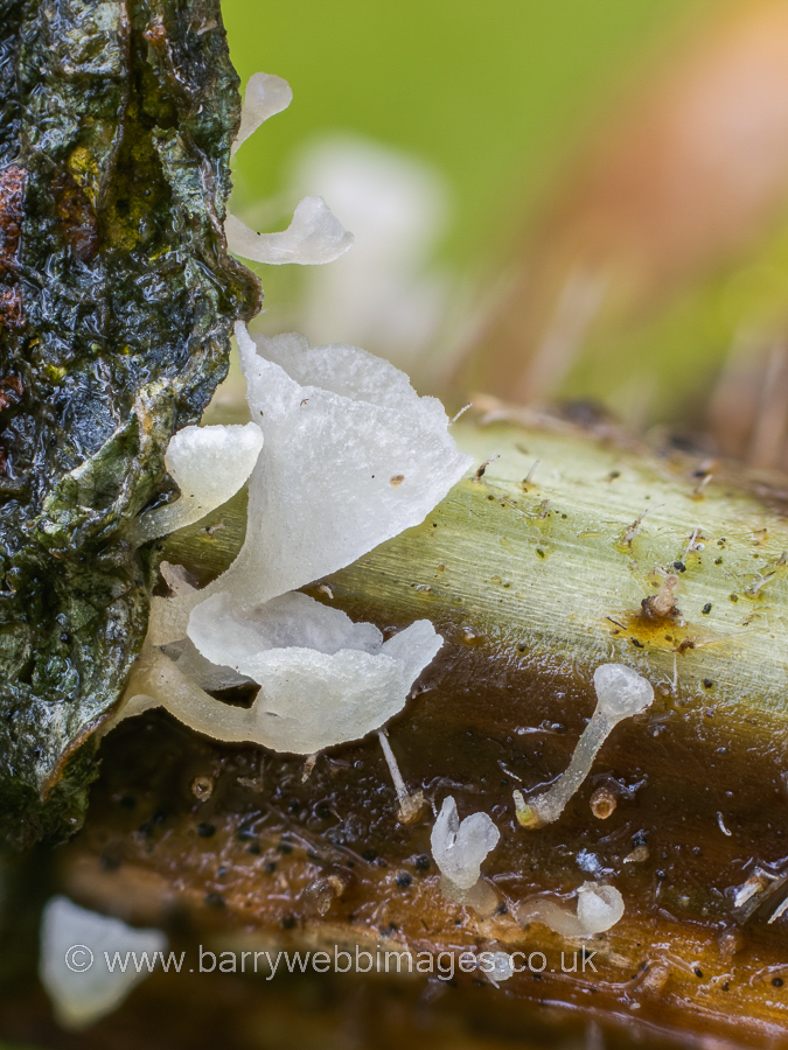
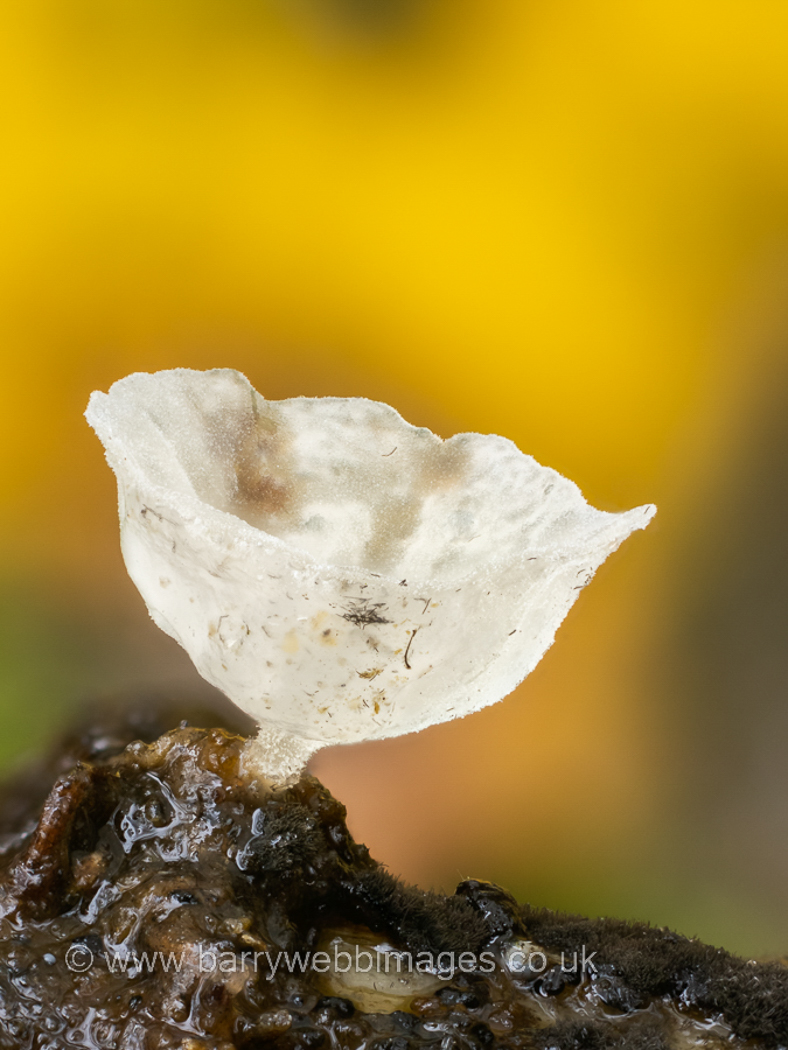 |
November 24th Calyptella capula (Bowl Hoodie)
At Burnham Beeches Barry Webb found this unusual species which at first glance looks like a tiny stalked Ascomycete, perhaps Hymenoscyphus, but is in fact a Bsidiomycete. It grows on decomposing stems of vegetation and here was on old nettle stems, and we have several sites where it's been recorded though only one in recent years when Derek found it at Ivinghoe Common this September. This is a new entry for Finds.
|
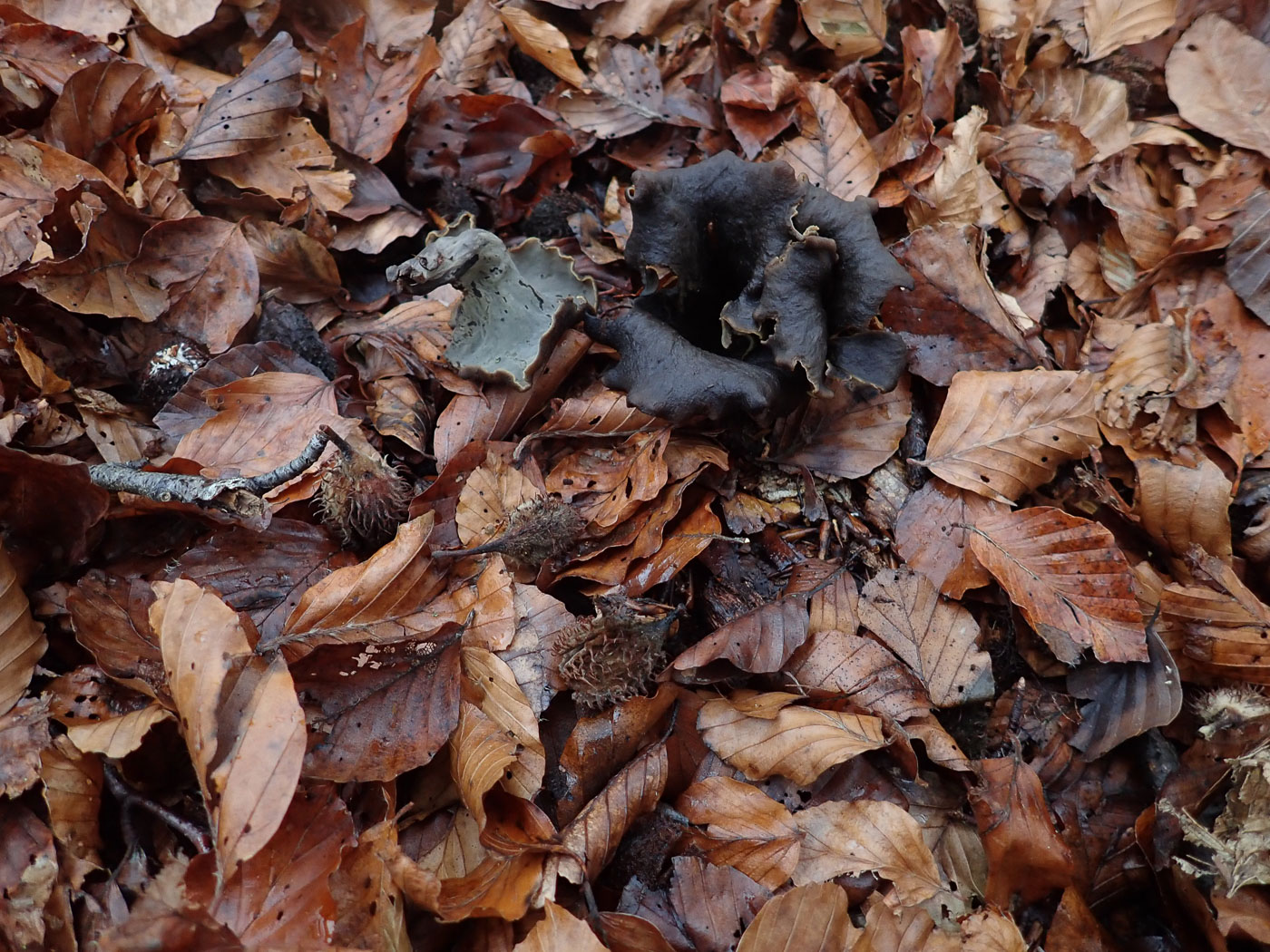
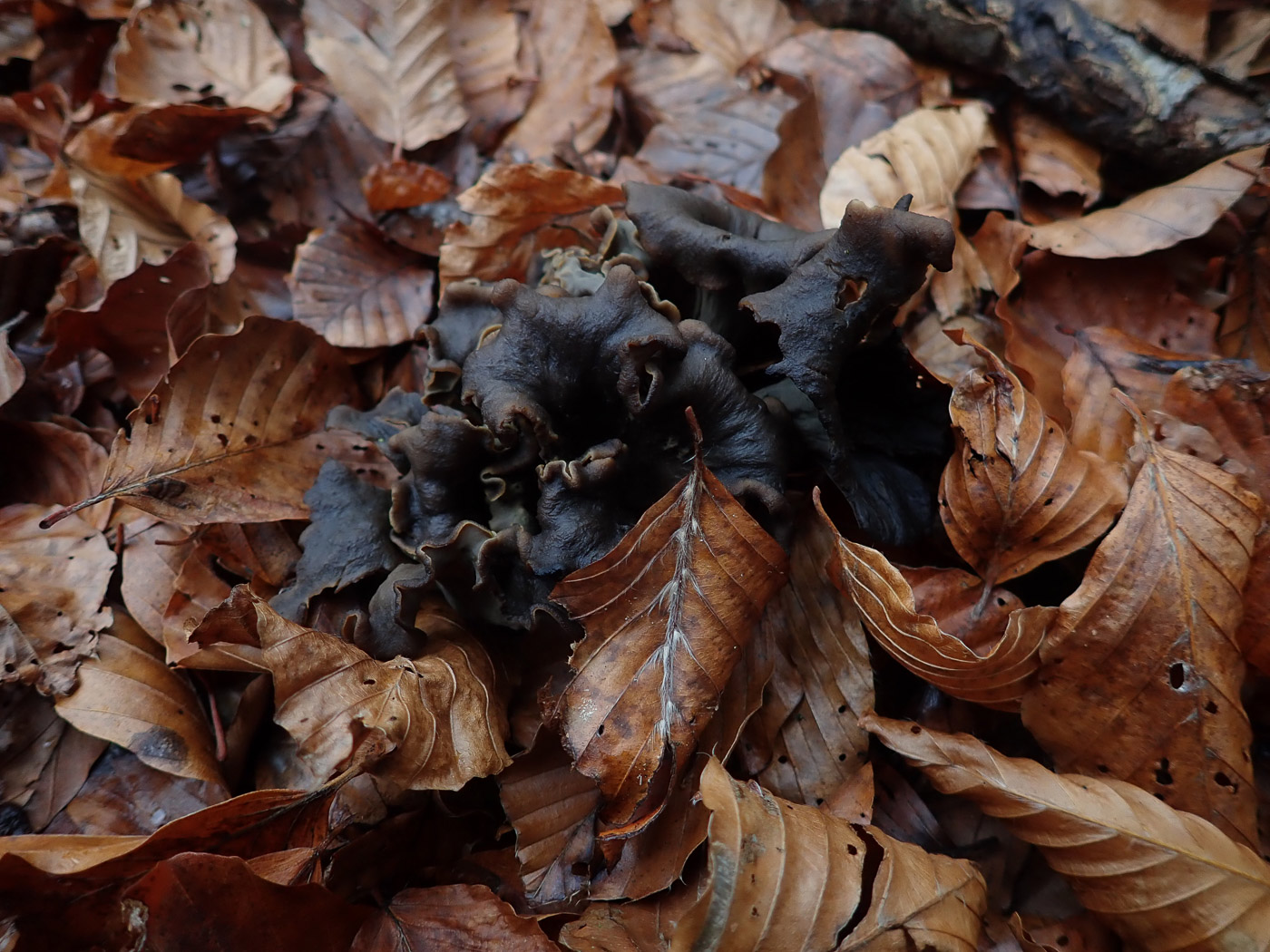
 |
November 24th Craterellus cornucopioides (Horn of Plenty)
In Bradenham Woods Penny was surprised to uncover good numbers of this species still fruiting though they were well hidden amongst the thick leaf litter. Once you find one it's always worth hunting around for more, and this was the case today. See the Masterlist for several other entries.
|
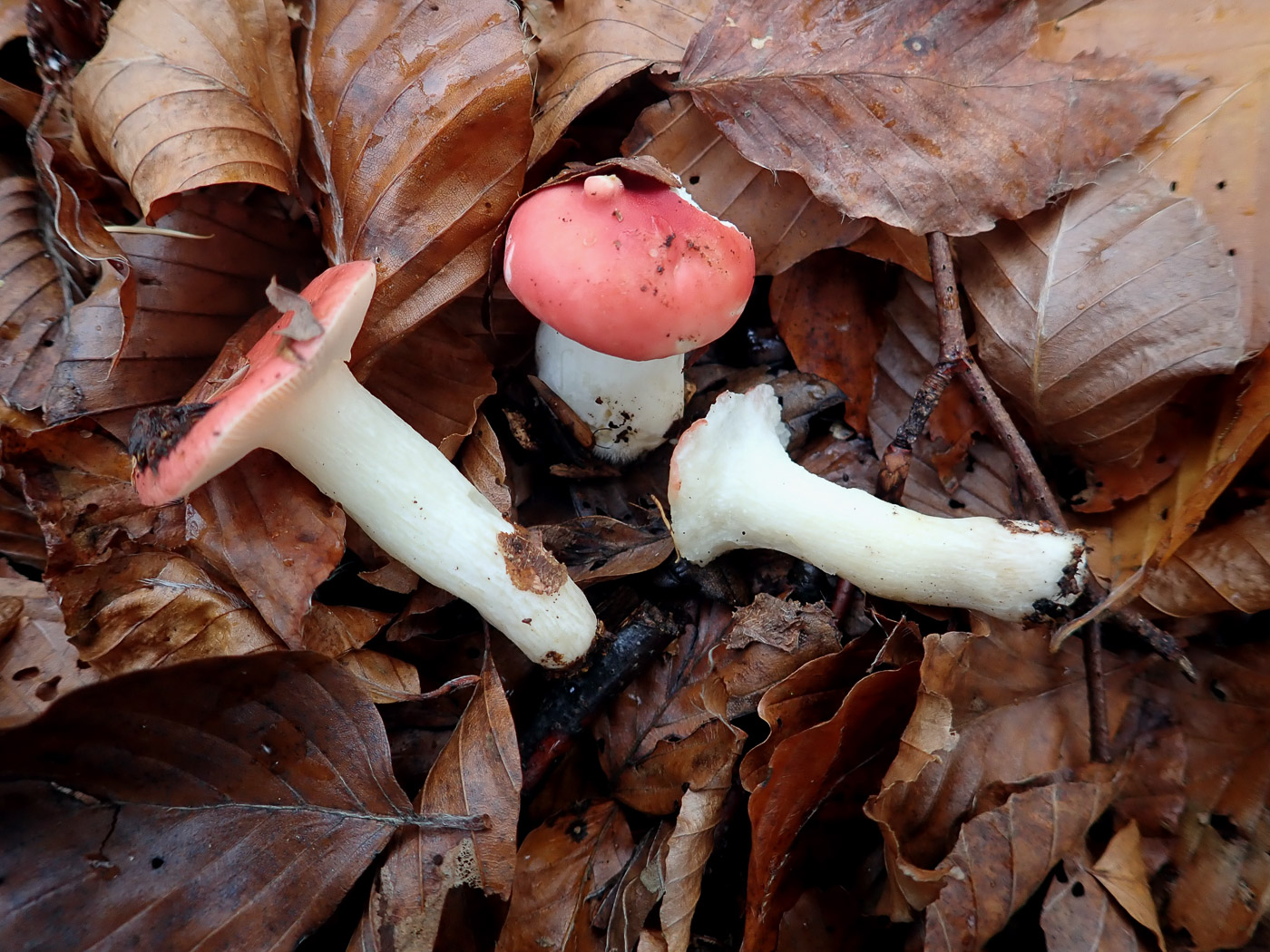
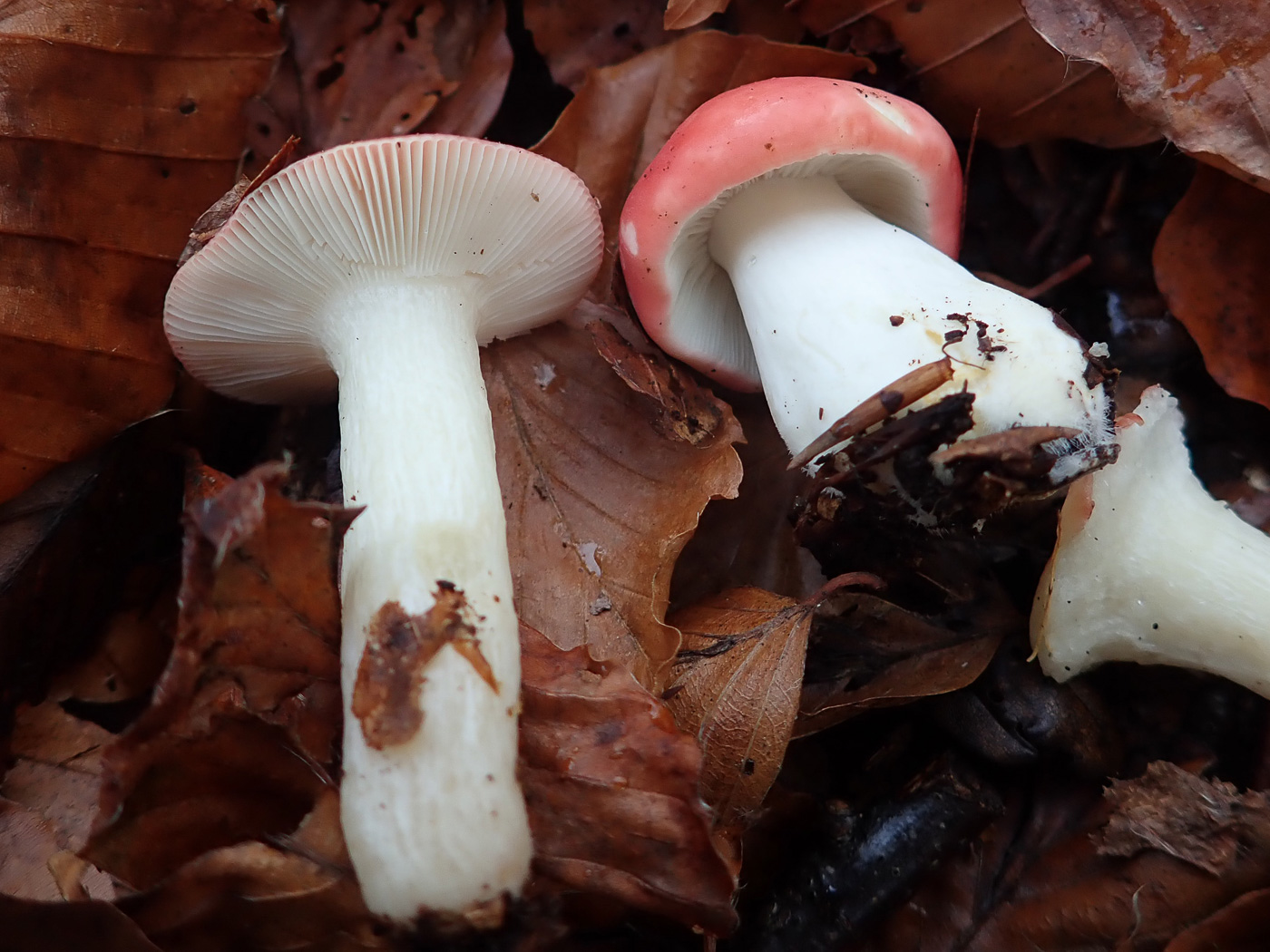 |
November 24th Russula nobilis (Beechwood Sickener)
In Bradenham Woods Penny uncovered a few of these bright red caps which were lurking in the thick leaf cover. Often one of our commonest Brittlegills under Beech, the species has been remarkably infrequent this season and made little appearance until well into October. As is often the way, many specimens are well eaten when you find them and are favourites with small mammals etc which obviously aren't detrimentally affected as we are by this species. See the Masterlist for several other entries.
|
 |
November 24th Pleurotus ostreatus (Oyster Mushroom)
In Bradenham Woods Penny was surprised to see this impressive display on a Beech trunk. We have many Finds entries of this species but she felt it was worth showing that there are fungi out there still fruiting away prolifically.
|
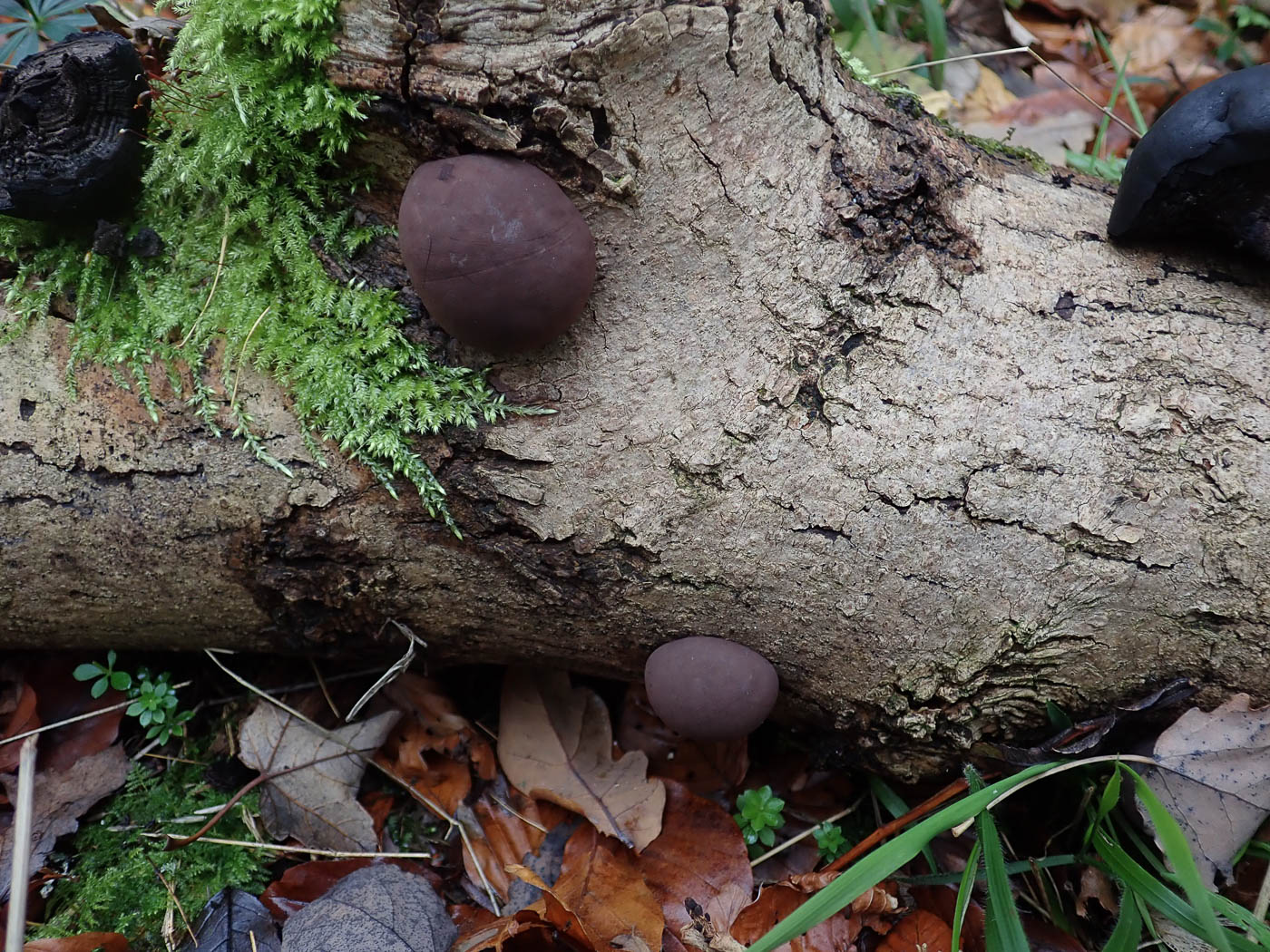

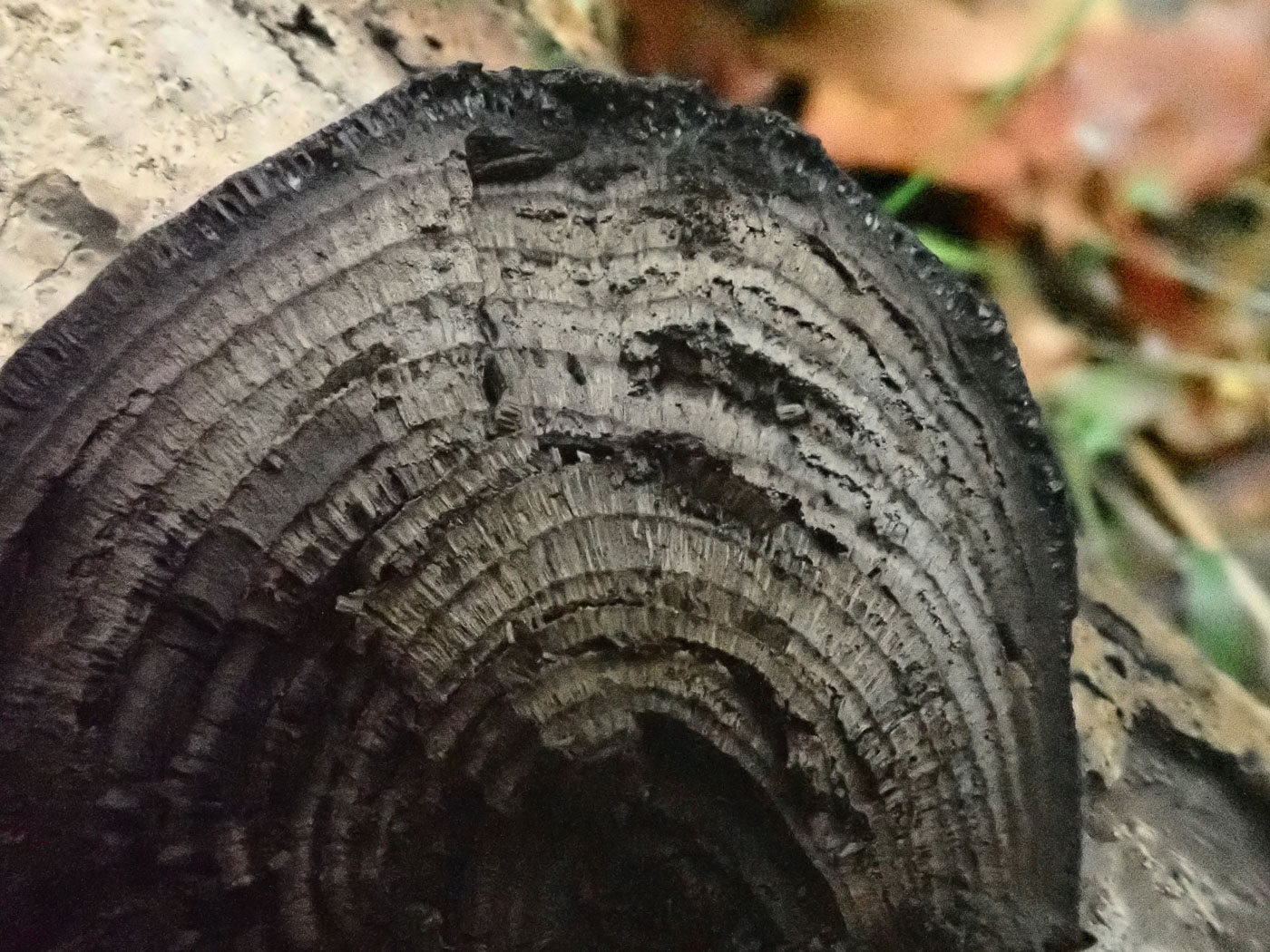 |
November 24th Daldinia concentrica (King Alfred's Cakes)
On fallen Ash in Bradenham Woods Penny found suitable examples of this common species to show the main features. As with other Pyrenomycete Ascos, the fruitbodies are cocoa brown at first but black when mature and can get to 6 or 7 cms across. They are easy when mature to break open to reveal the concentric rings within. See also in Finds 2020 October 10th, 2021 April 4th, 2022 April 12th.
|
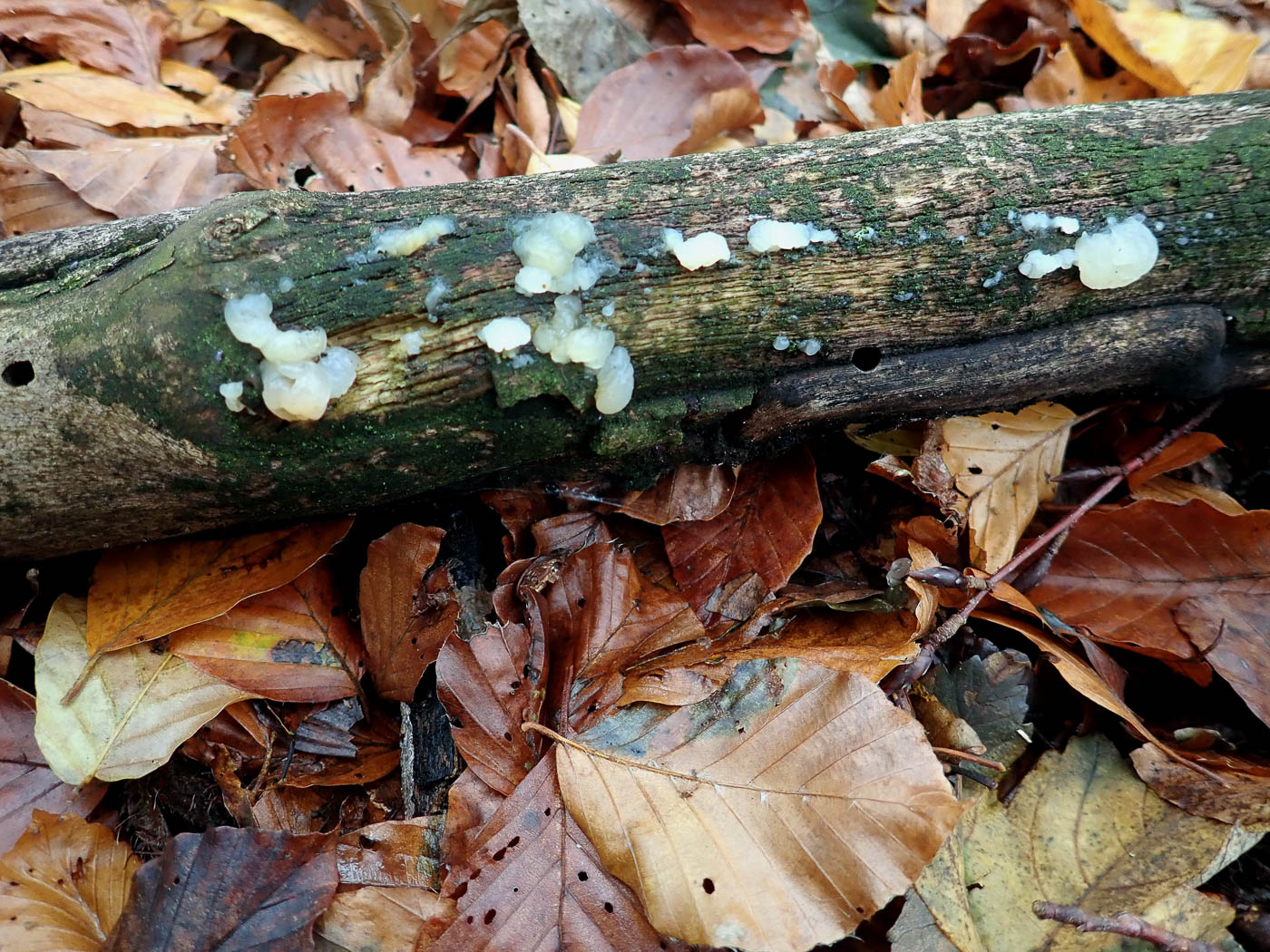
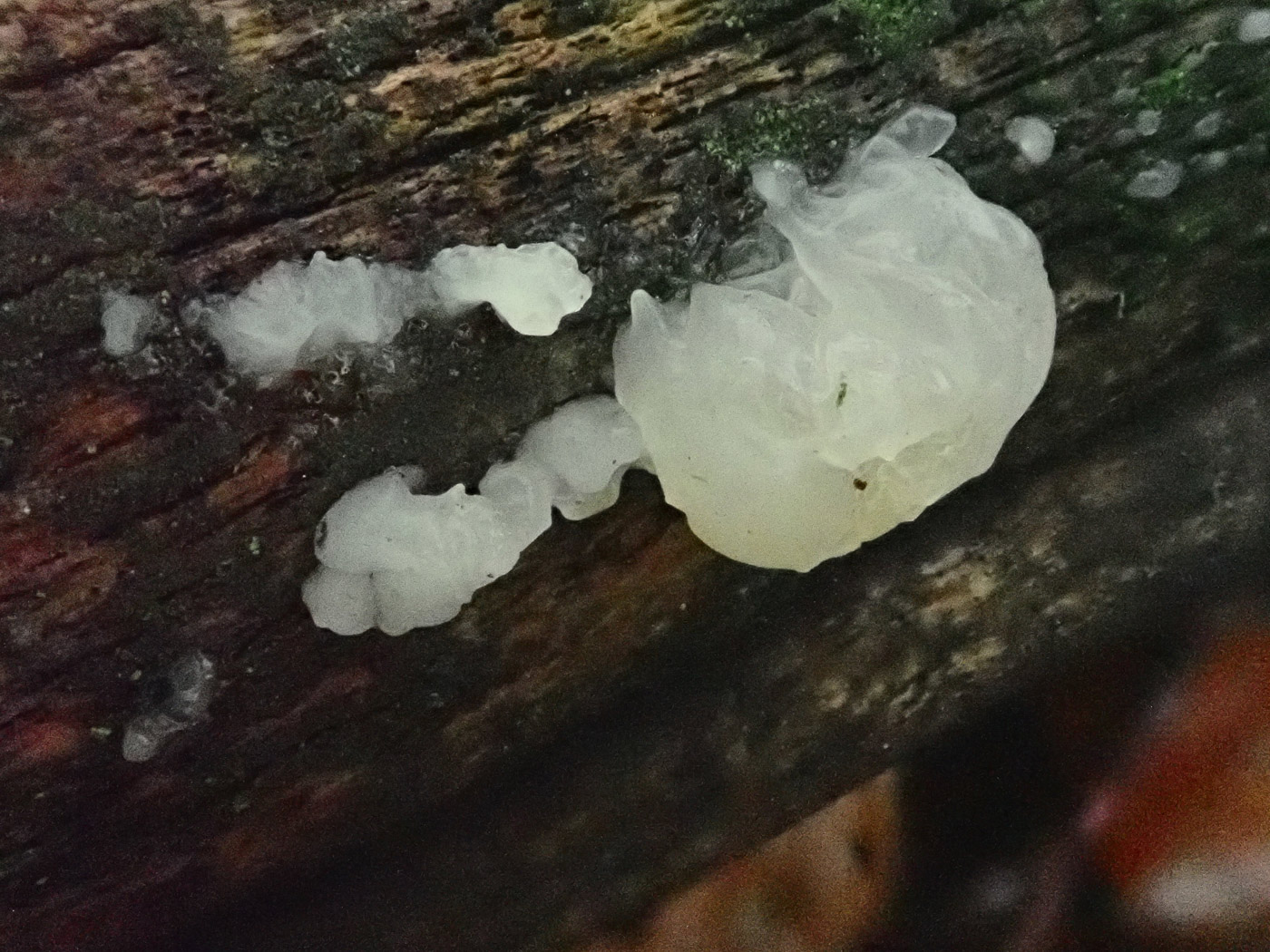 |
November 24th Exidia nucleata (Crystal Brain)
On a bare stick in Bradenham Woods Penny noticed these small lumps of white jelly dotted about - a fairly common jelly fungus (the genus is not an Ascomycete, however), recognisable by its colour, translucence and small size, often with a visible central solid 'core'. This surprisingly is a new entry for Finds.
|
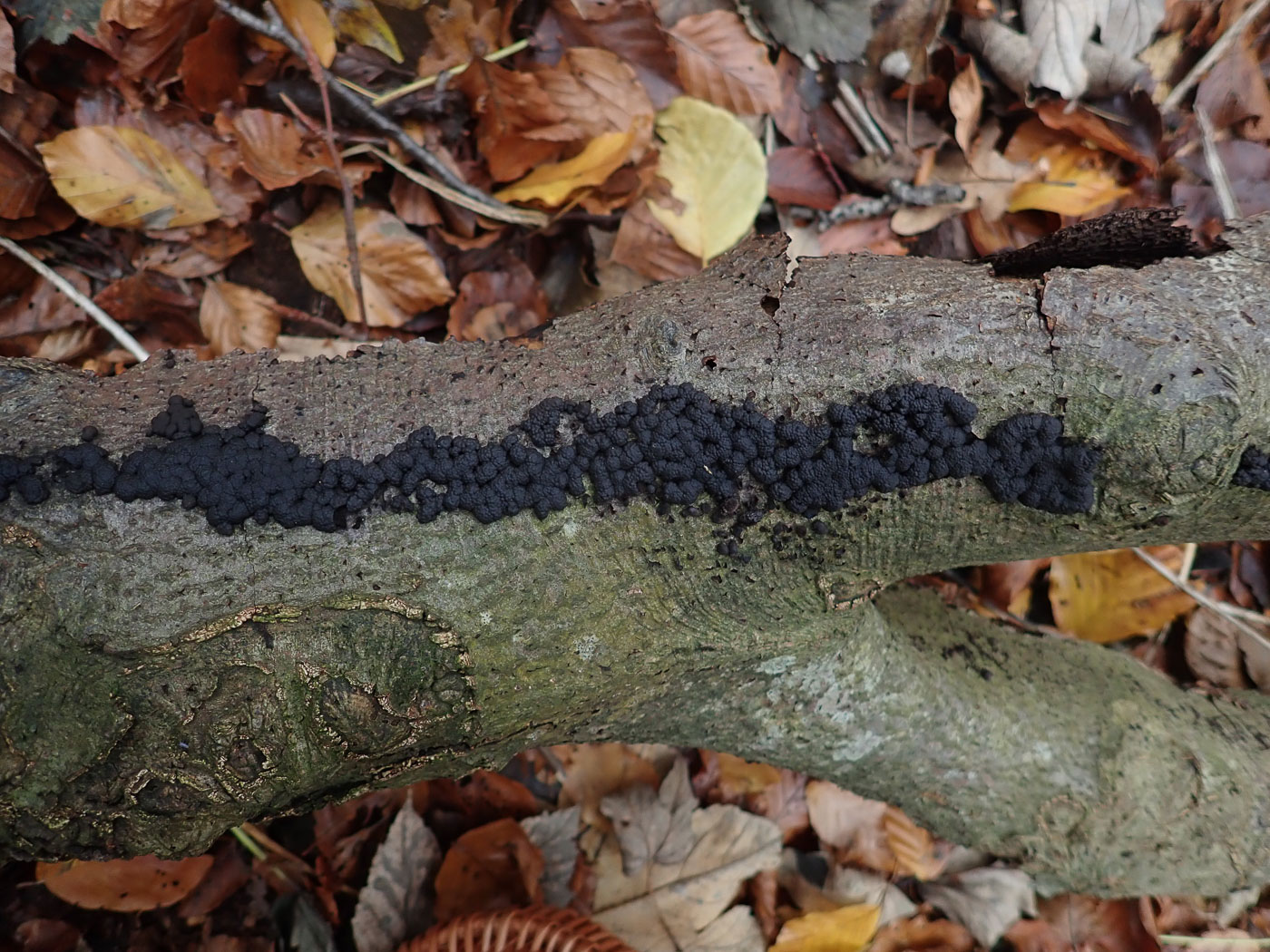
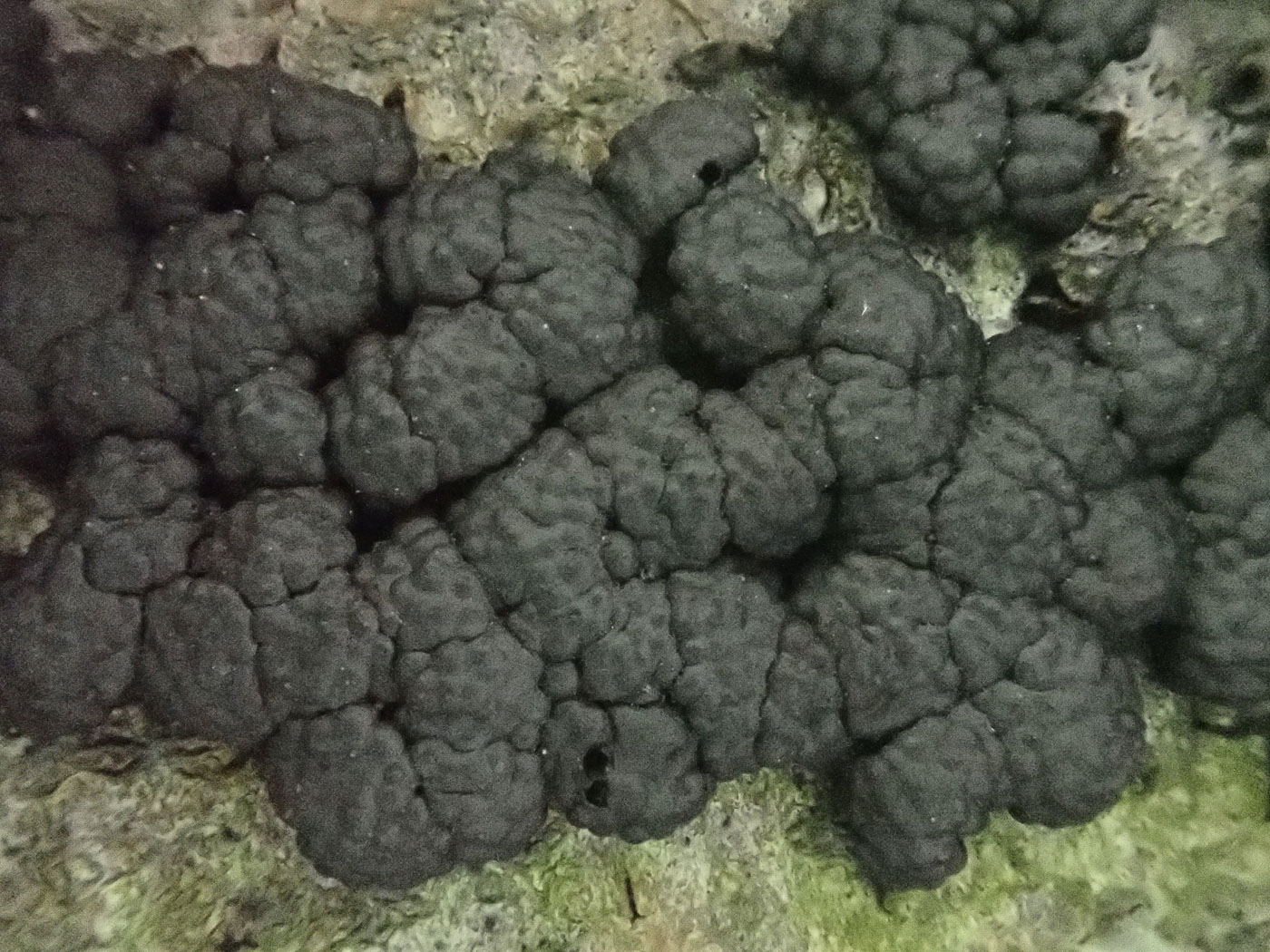
 |
November 24th Hypoxylon fragiforme (Beech Woodwart)
On fallen Beech in Bradenham Woods Penny found this common Pyrenomycete (hard crusty Ascomycete) which was showing both mature black fruit bodies as well as the paler cocoa brown younger ones, seen in photo 3. Photo 2 elucidates the reference to strawberries in the Latin species name, ie the bumpy surface with tiny 'ostioles' (holes) from which the spores are shot out when mature. See also in Finds 2020 September 22nd and 2021 August 19th.
|

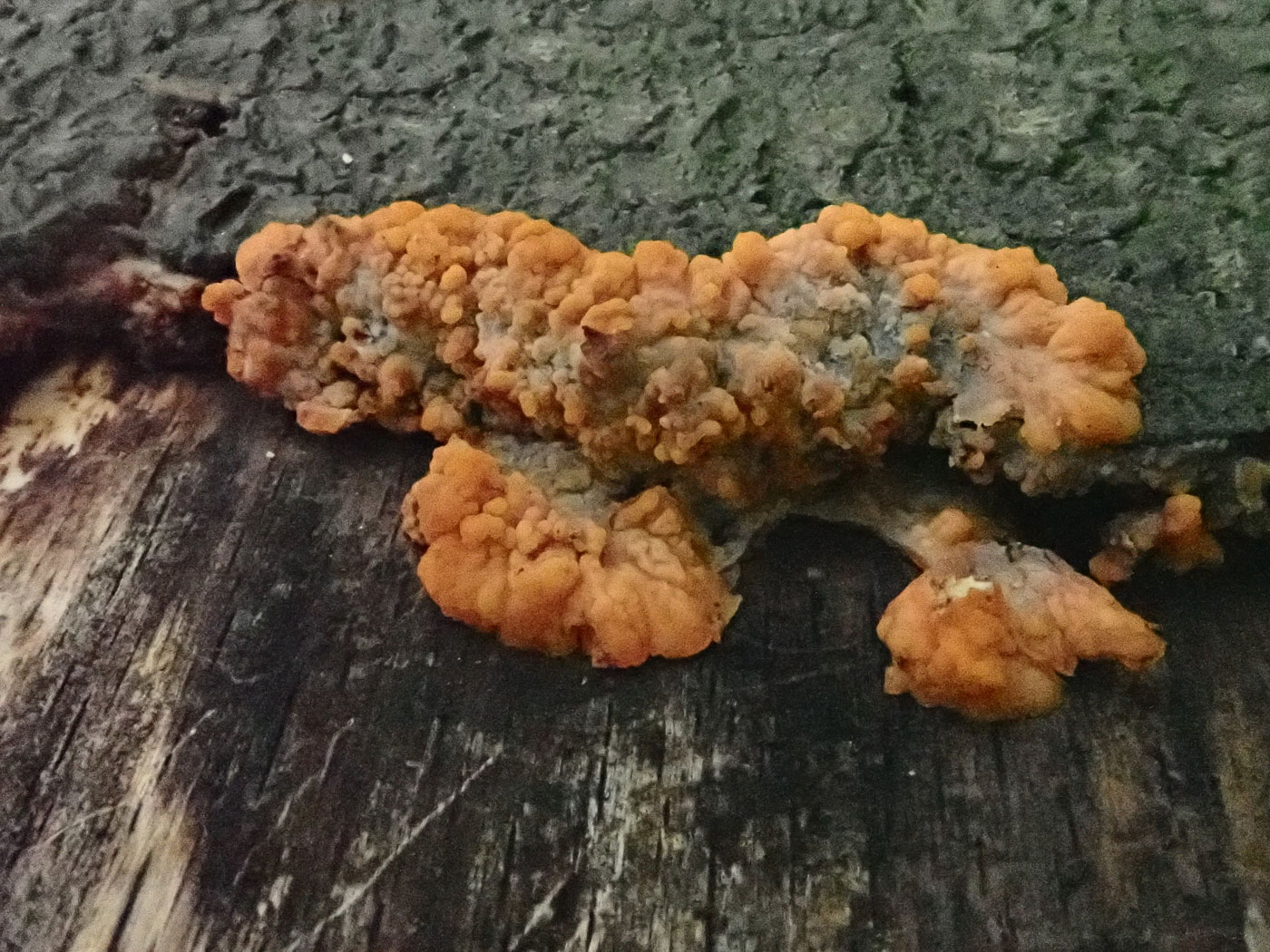 |
November 24th Phlebia radiata (Wrinkled Crust)
On fallen Beech in Bradenham Woods Penny found this common and distinctive resupinate species often found forming spreading patches on the bark of deciduous trees, most commonly Beech. Fresh growth is bright orange around the edges (photo 2) then as it expands it become wrinkled and darker in the centre. See also in Finds 2020 October 12th and 2021 November 25th.
|
November 23rd 2022

 |
November 23rd Pholiotina rugosa (a Conecap with no common name) 
At Turville Heath in woody litter Penny found several of these LBJs, and noticing the distinctive ring on the stem she knew it would be reasonably straightforward to key it out. (The relatively few members of the somewhat Mycenoid genus Conocybe which have a ring or ringzone on the stem are now moved to genus Pholiotina.) The microscopic characters together with the large ring and the rather wrinkled cap surface (which became much more obvious later as it dried out) were conclusive. We have two previous Finds entries (as Conocybe): 2020 October 8th and 2021 July 12th.
|
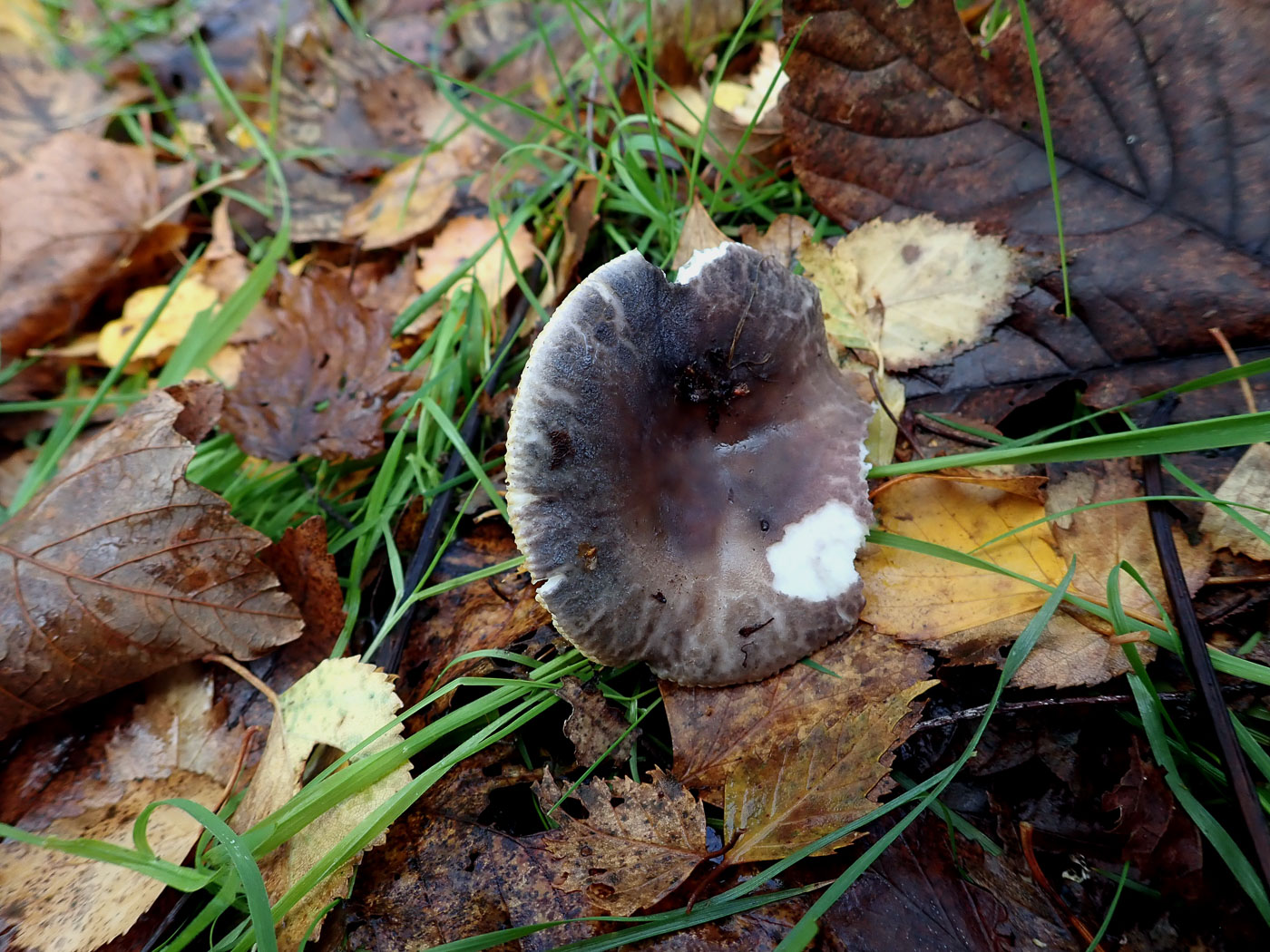
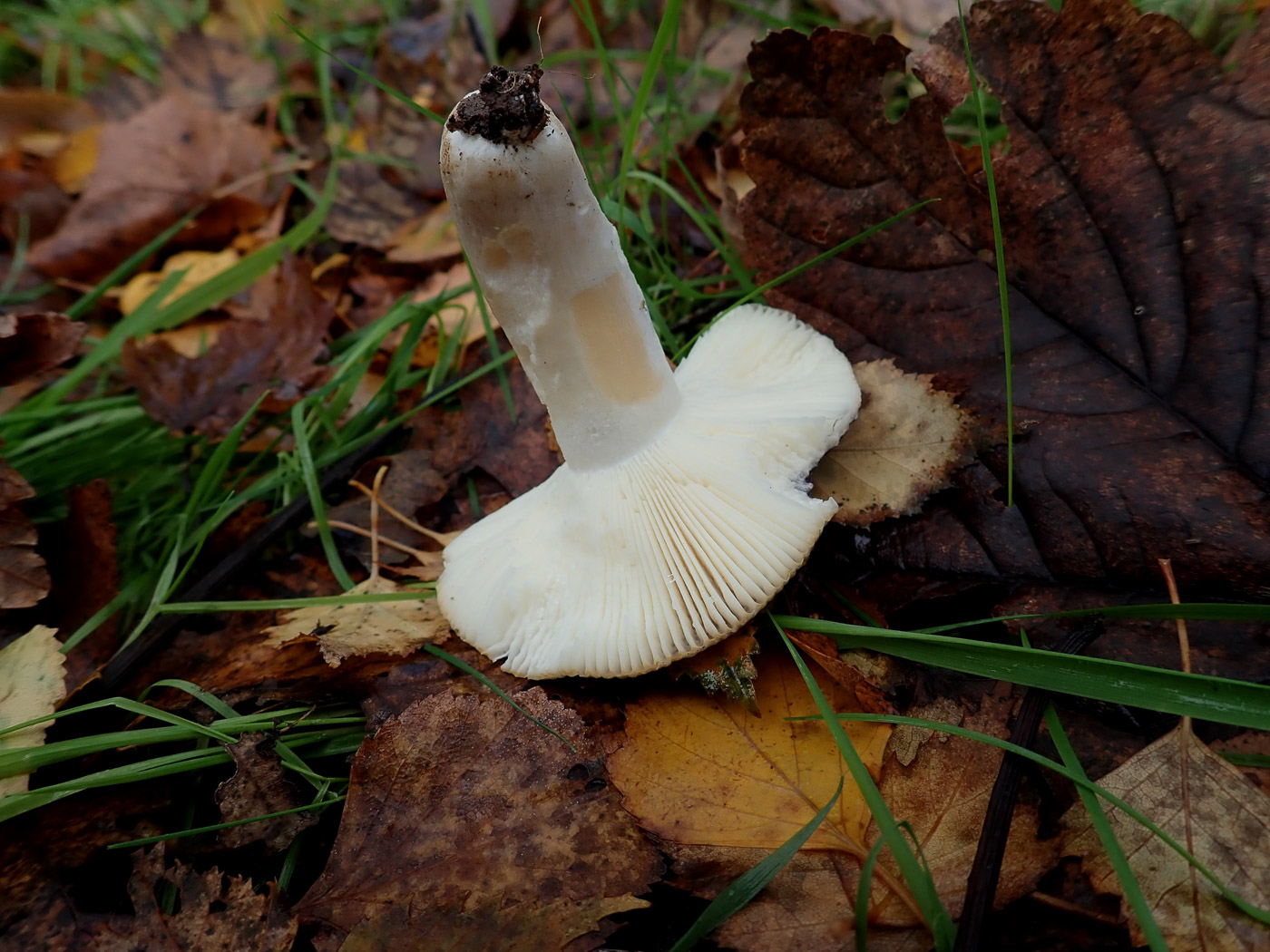
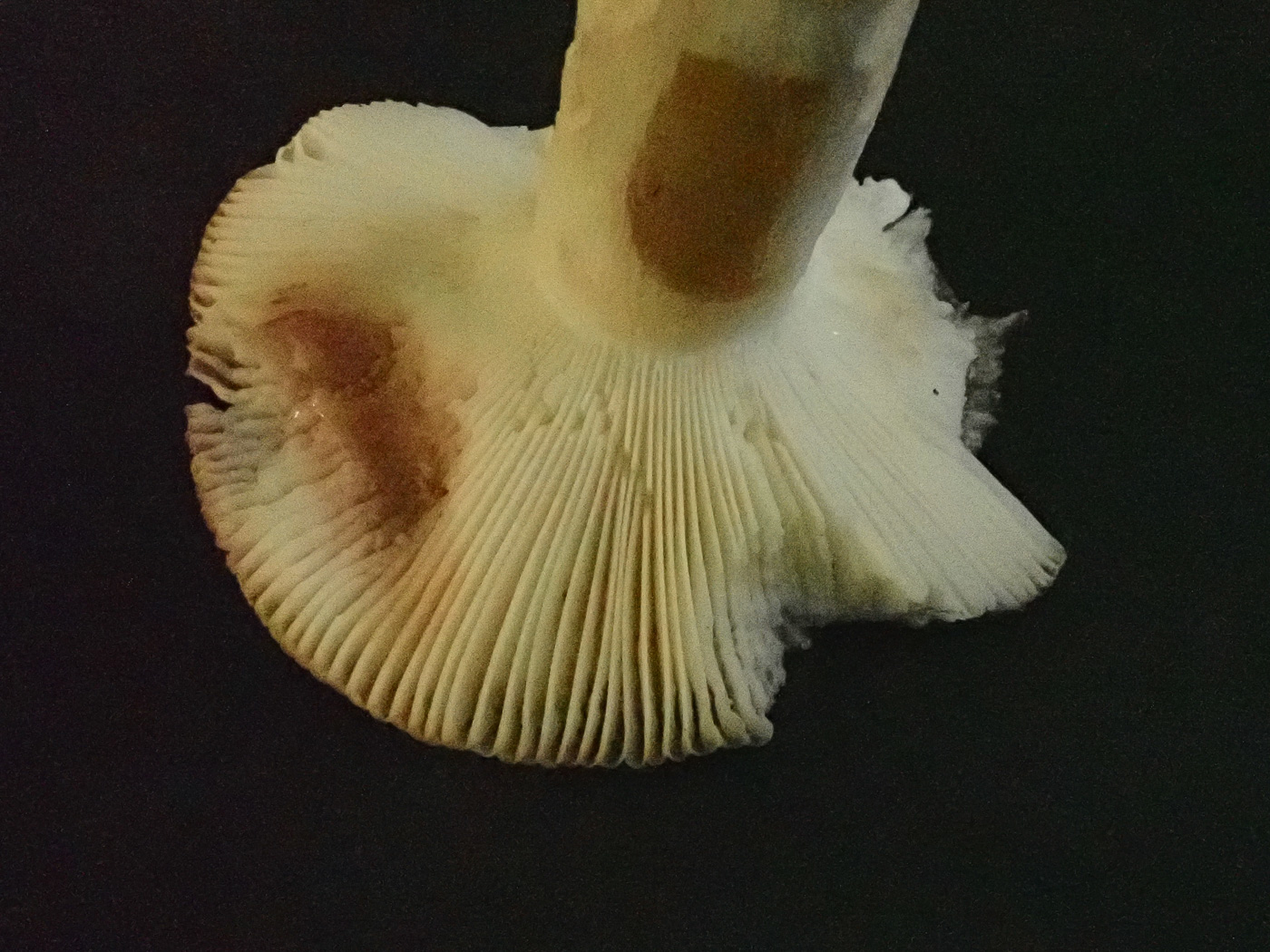 |
November 23rd Russula heterophylla (Greasy Green Brittlegill) 
Under Birch and hiding in thick leaf litter at Turville Heath Penny noticed this strange looking Brittlegill, the odd disrupting cap surface of which rang a bell with her because something very similar turned up at Naphill Common several weeks ago. That collection turned out to be (very surprisingly) atypical R. heterophylla - normally with a green smooth cap but with a distinctive reaction when both gills and stem are rubbed with a crystal of Ferrous Sulphate: they turn quickly deep salmon orange. The reaction to the crystal on the stem here can be seen in photo 2 and was not particularly remarkable, so she didn't bother to try it on the stem till later at home when the stem had now turned suitably salmon. Clearly the specimen was very wet and consequently didn't react till it started drying out. Photo 3 shows both stem and gills reacting typically for this species. This is a first entry for Finds; see Penny's Naphill report for images of that collection. Both collections will be sequenced because it is very unusual to find the species looking like this. Is there maybe another species lurking here?
|
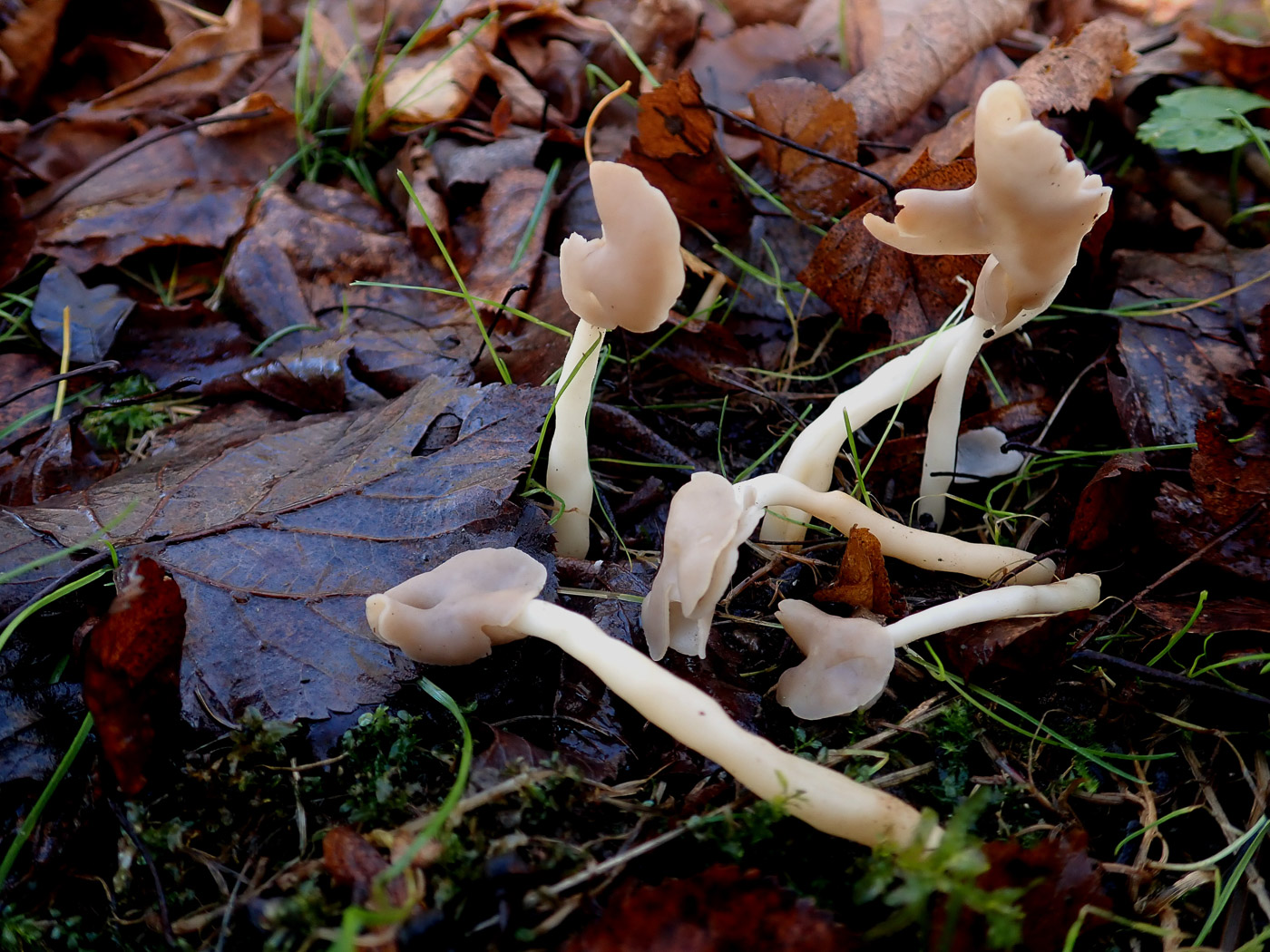 |
November 23rd Helvella elastica (Elastic Saddle)
In grassy litter under Lime Penny found this nice little cluster of Saddles. This ascomycete species has a smooth stem in contrast to the markedly ridged stems of both H. crispa (White Saddle) and H. lacunosa (Elfin Saddle), both of which are taller and generally much more common. Though not rare - we've seen it several times this autumn - it is a new entry for Finds.
|
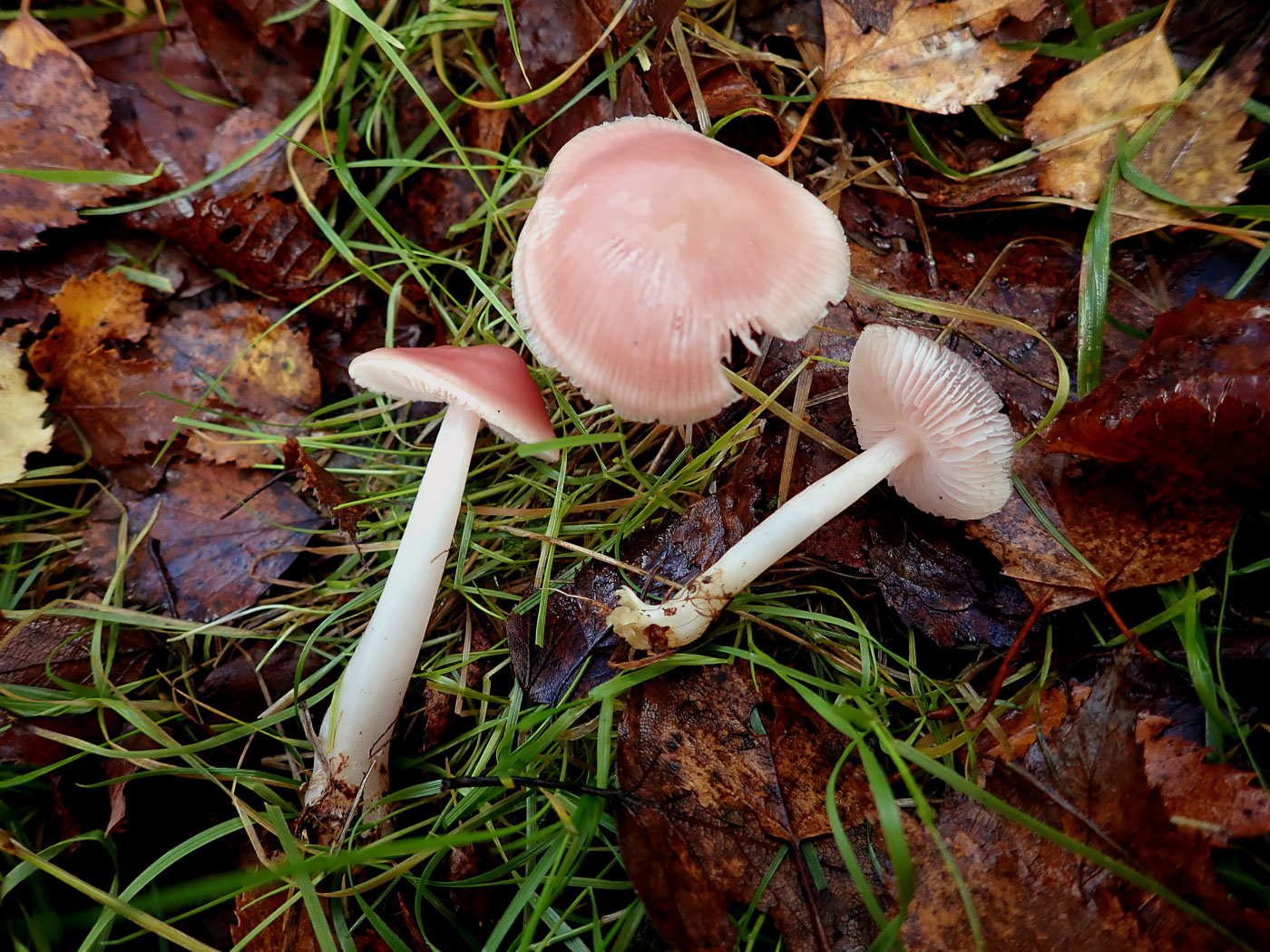 |
November 23rd Mycena rosea (Rosy Bonnet)
In grassy Birch litter at Turville Heath Penny found these three specimens in relatively good condition despite the recent rain etc. It is a large but common Bonnet of the woodland floor, readily recognised by its rosy pink smooth cap, pale gills and a pale pink to white stem which tapers upwards. It also has a sharp smell of radish. See the Masterlist for further examples.
|

 |
November 23rd Gymnopus confluens (Clustered Toughshank)
At Turville Heath Penny at first found very little amongst the longish grass and thick rather soggy leaf deposit, but eventually was rewarded with a few bits and pieces. The larger specimen seen here was found first separately and not instantly recognised until the cluster and also the immature sspecimens were spotted nearby (seen in photo 2). In dry conditions when the species can be found in large clusters and the stems are obviously finely furry-hairy it is quite easy to recognise with its very crowded gills, but not so when growing singly as can happen (despite its common name) and when the wet stems look somewhat smooth as here. See the Masterlist for further examples.
|
November 20th 2022
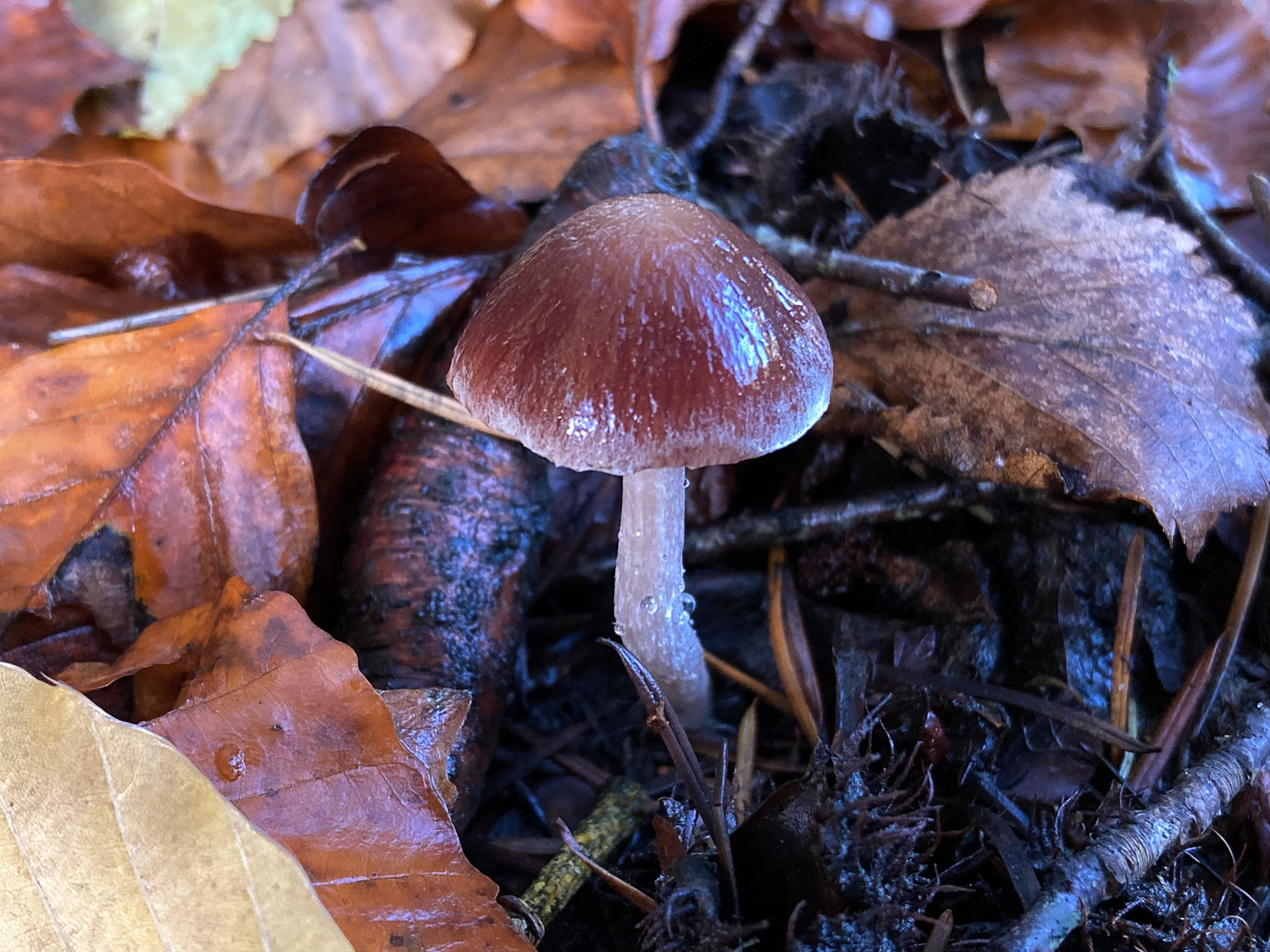
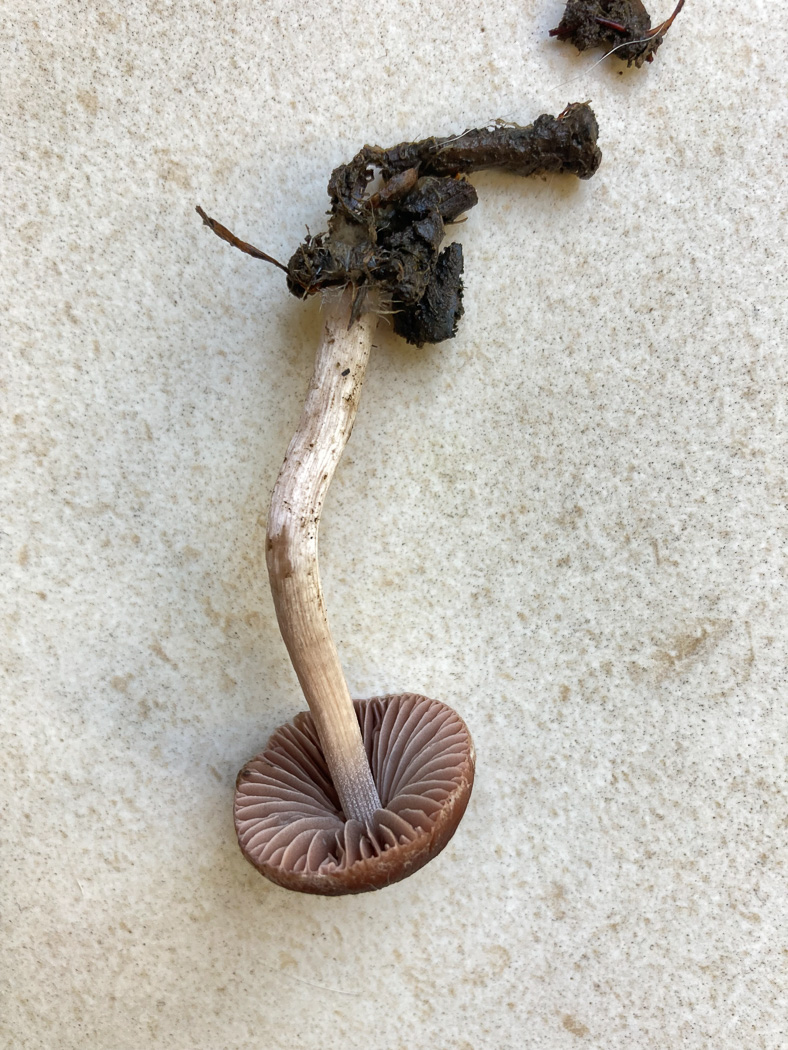 |
November 20th Psathyrella bipellis (a Brittlestem with no common name) 
At Cliveden Russell Ness found this singleton and was stuck for a genus until a sporeprint at home revealed large dark spores and the cap started to dry out, become paler and develop the typical wrinkling of this unusual species. Apparently there was also a notably strange smell reminiscent of cat urine which helped to confirm his ID together with the distinctive microscopic features he found. See also Finds 2020 October 11th.
|
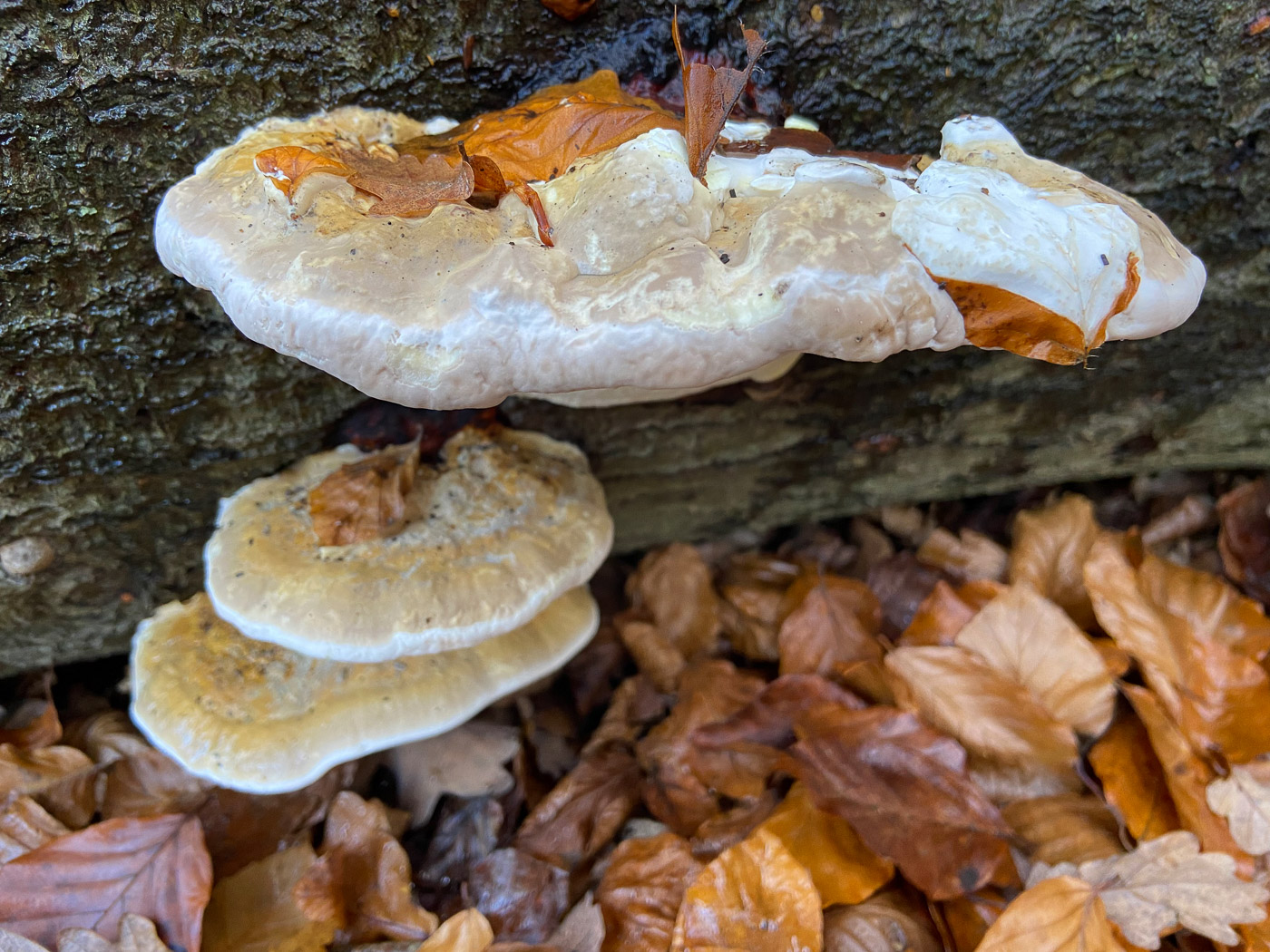
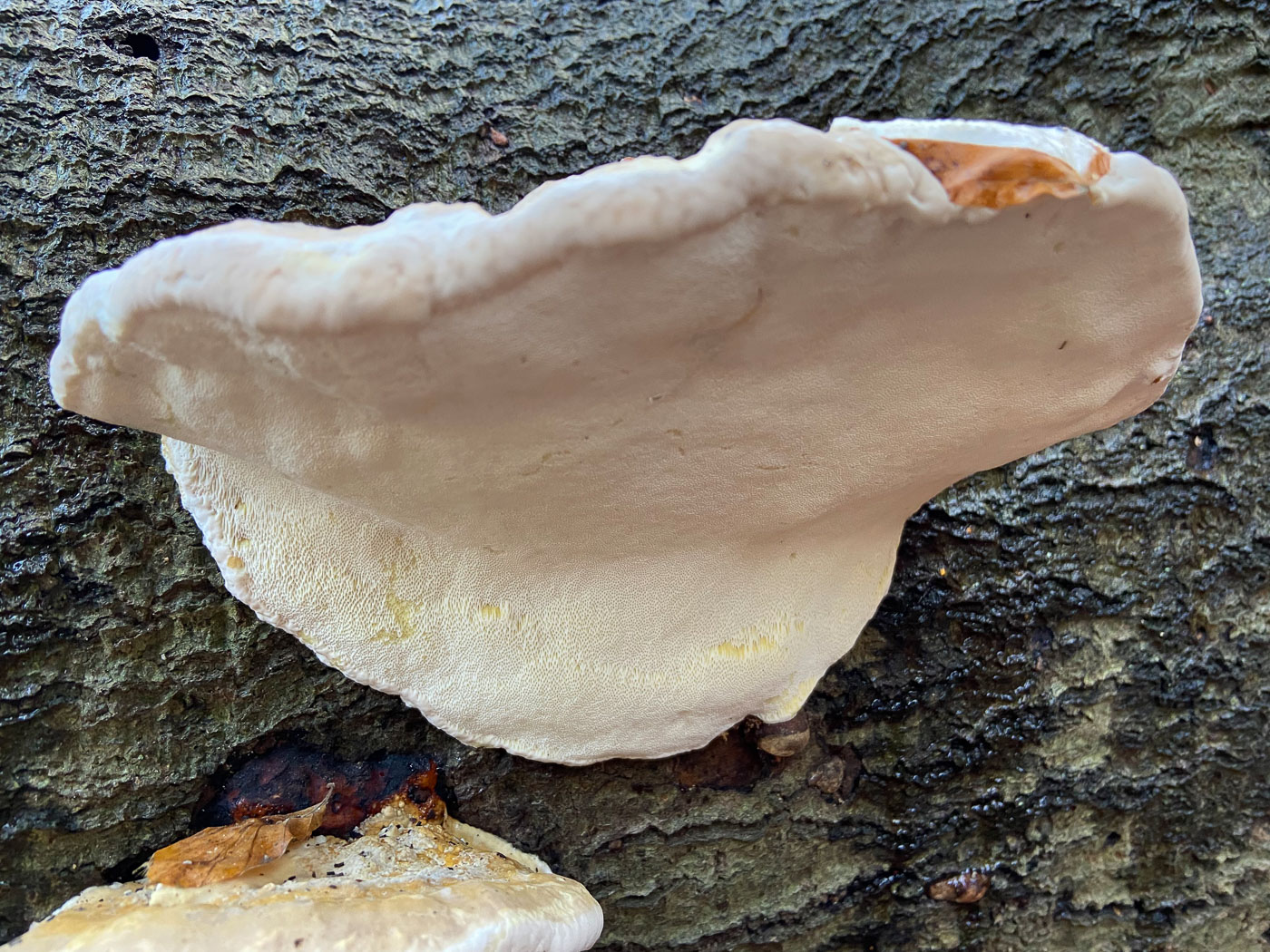
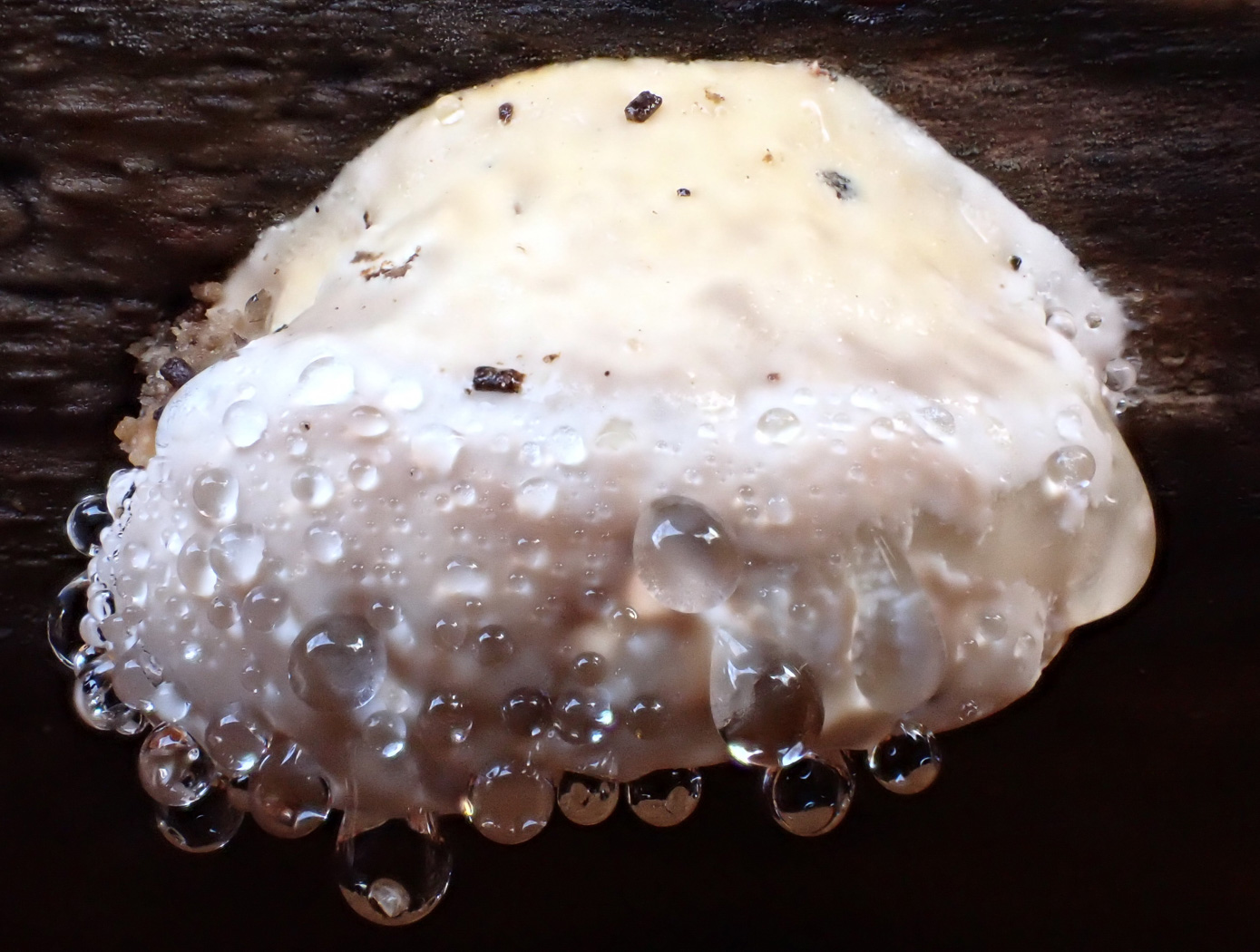 |
November 20th Fomitopsis pinicola (Red-belted Bracket) 
At Burnham Beeches our small group spotted a series of fresh brackets on a fallen Beech trunk which caused some confusion and questioning as to its identity. The brackets were thick and very solid but pale except for some dark red where attached to the substrate (seen in photo 2), the pores were fine as in Ganoderma but were also pale to cream and failed to darken where damaged - hence eliminating that genus. The immature smaller bracket (photo 3) was oozing droplets - also not a feature seen in Ganoderma even in wet weather. Both Derek and Jim Wills took samples to work on and between them solved the problem: this was F. pinicola but exceptionally pale and entirely lacking it distinctive red 'belt' which presumably develops as the species matures. Though a common species on Pine in much or Europe it was considered rare here but is now clearly on the increase and more frequently if found occuring on various deciduous woods. It was new to the county in 2019, then subsequently recorded at Ashridge and Egypt Woods (adjacent to Burnham Beeches) on Birch earlier this year, so today's find was a significant one on Beech. Compare with our Egypt Woods entry in Finds 2022 April 9th where the same dark red attachment to the substrate is visible but the red 'belt' is missing. The collection will be sequenced and we'll hope to return to the same trunk to further images when it matures.
|

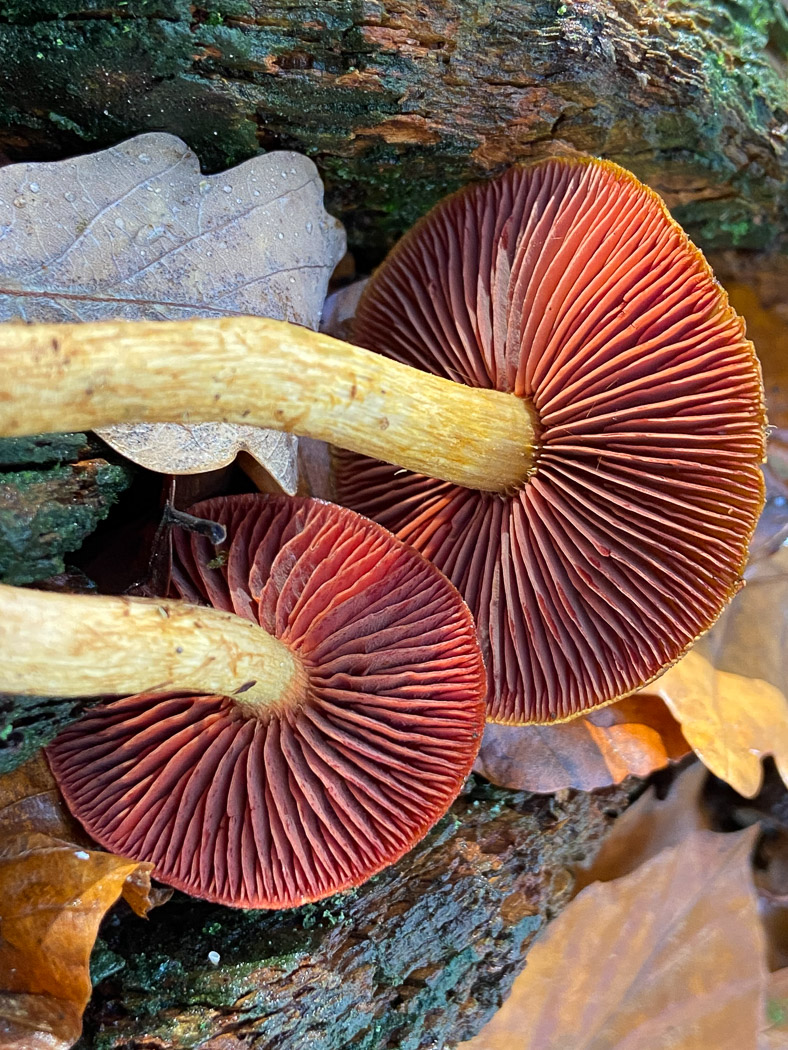
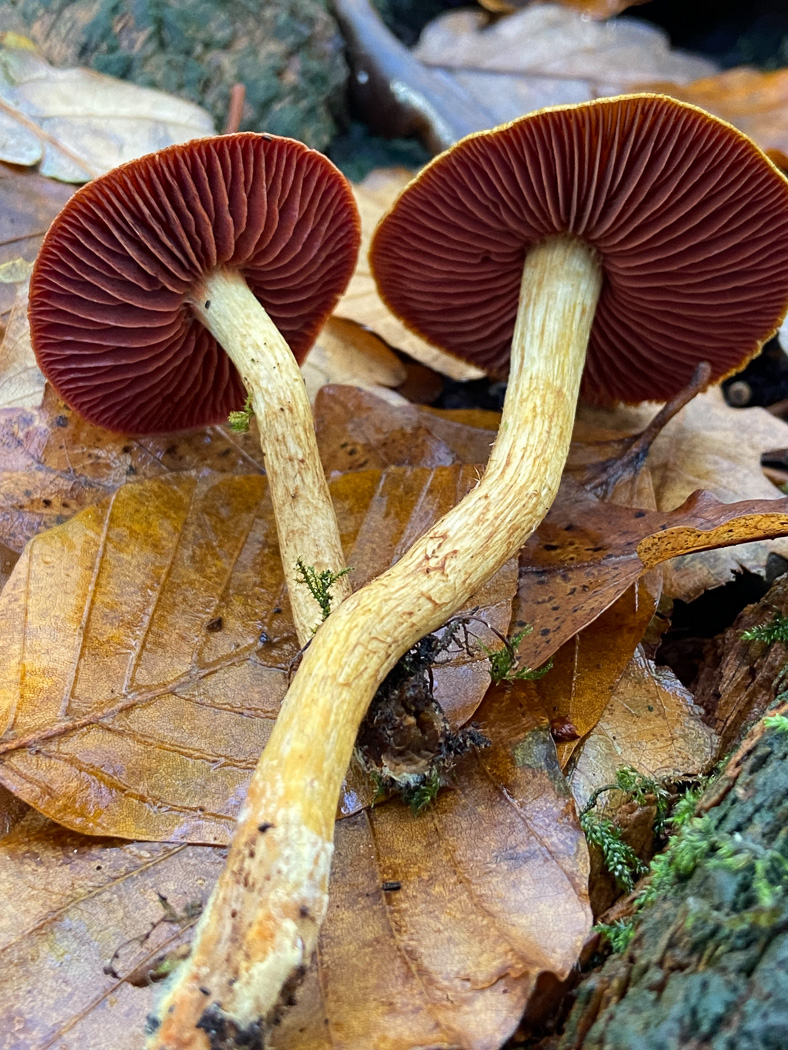 |
November 20th Cortinarius semisanguineus (Surprise Webcap)
At Burnham Beeches our small group was indeed surprised to see several example of this striking Webcap - one of few which can be named in the field thanks to its unique combination of cinnamon brown cap but contrasting vivid red gills. It's always a delight to turn this species over and admire the underside, but the surprise was not just this feature but the fact that it was still fruiting and in good condition so late in the season. It is not rare and occurs under Beech and Oak as here but also under Pine. See the Masterlist for three previous entries . The photos here are Stephen Plummer's.
|
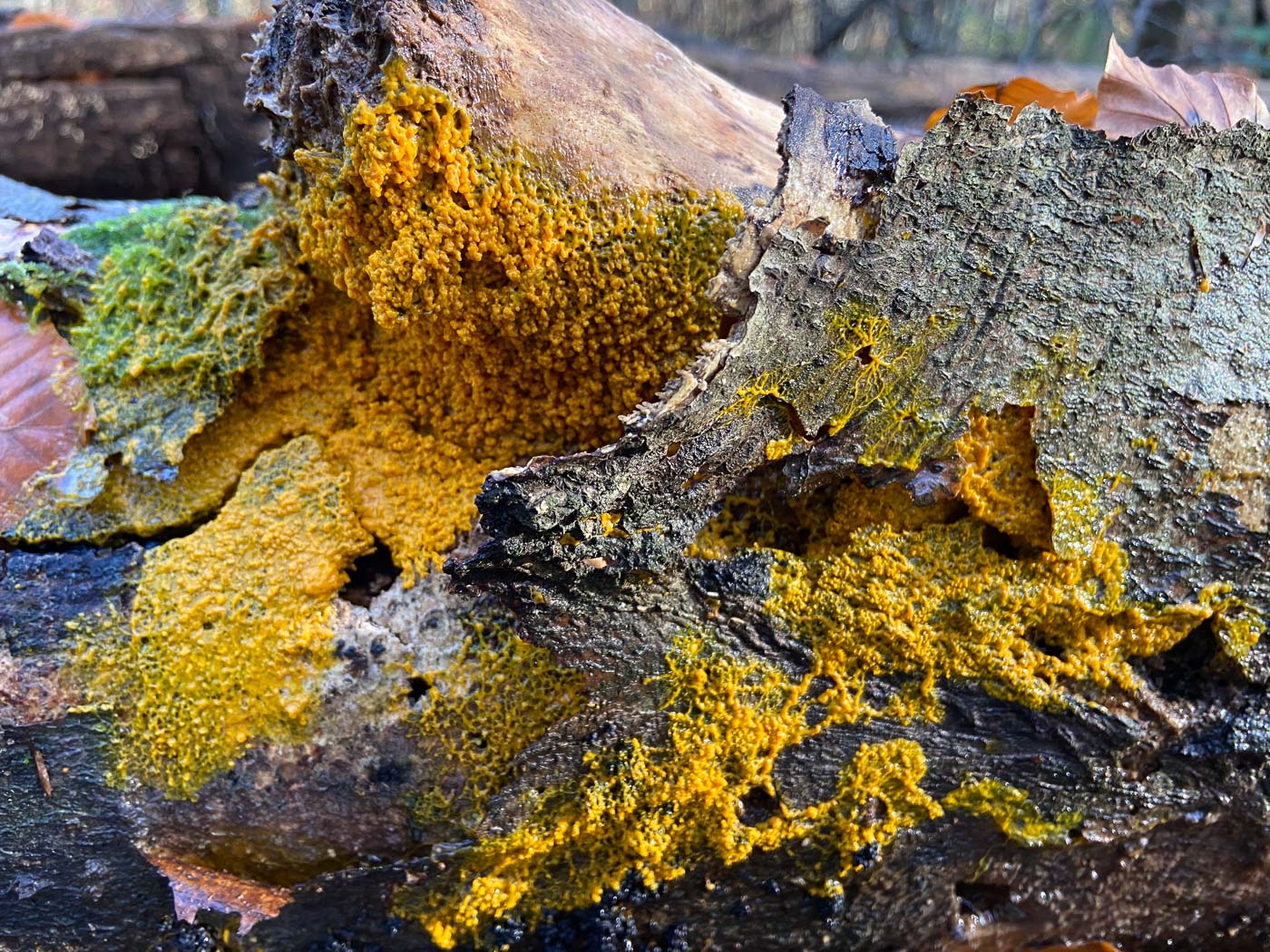 |
November 20th Badhamia utricularis (a slime mould with no common name)
At Burnham Beeches our small group came across a fallen Beech trunk which sported various different fungi as well as a generous patch of this distinctive mustard yellow slime mould which was still on the move and not yet settled down. (For more mature examples see Finds 2020 December 30th and 2021 January 15th.) The species has not been recorded here since 2002 and we have just a handful of records from elsewhere in the county. The photo is Stephen Plummer's.
|
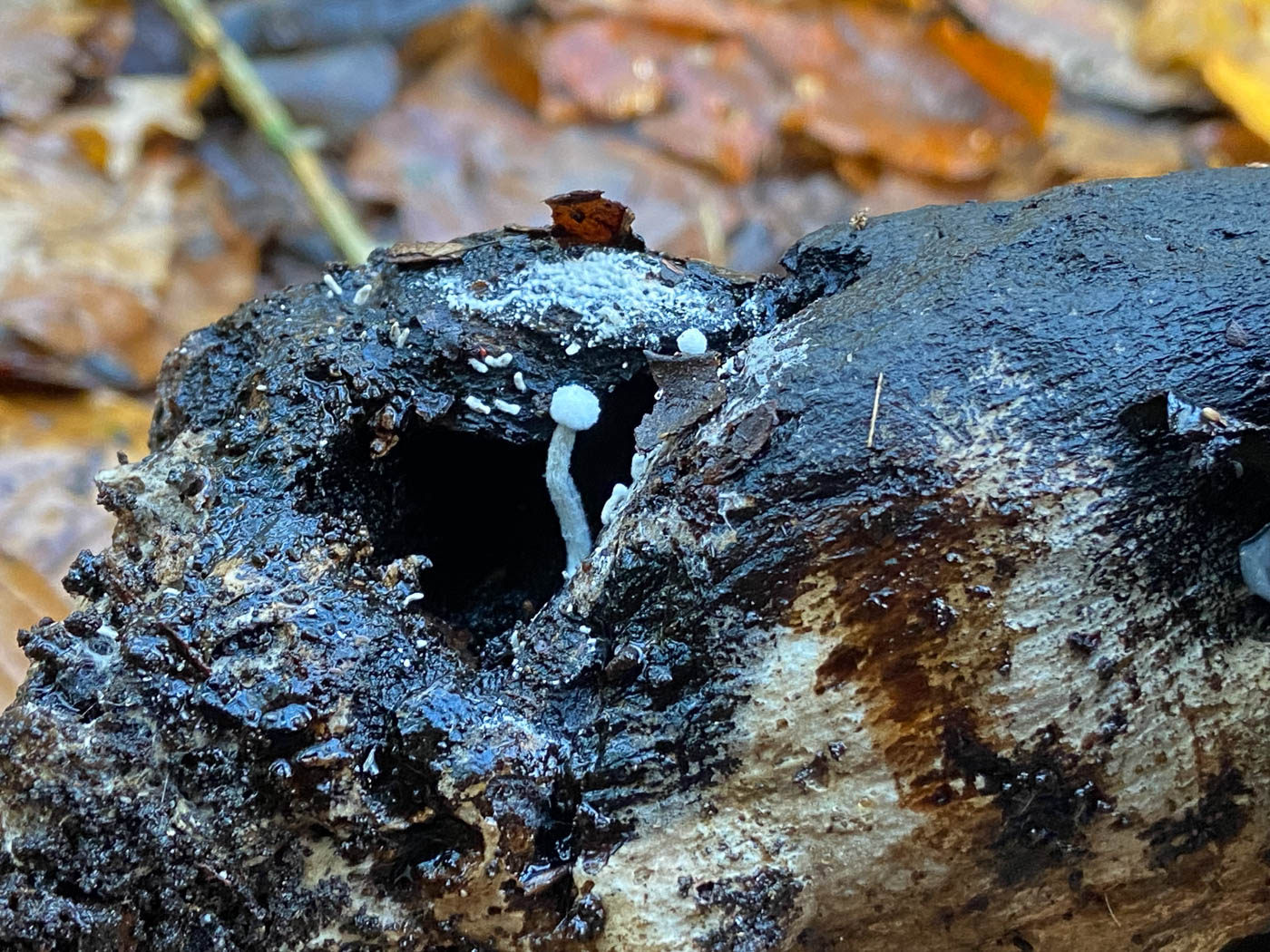
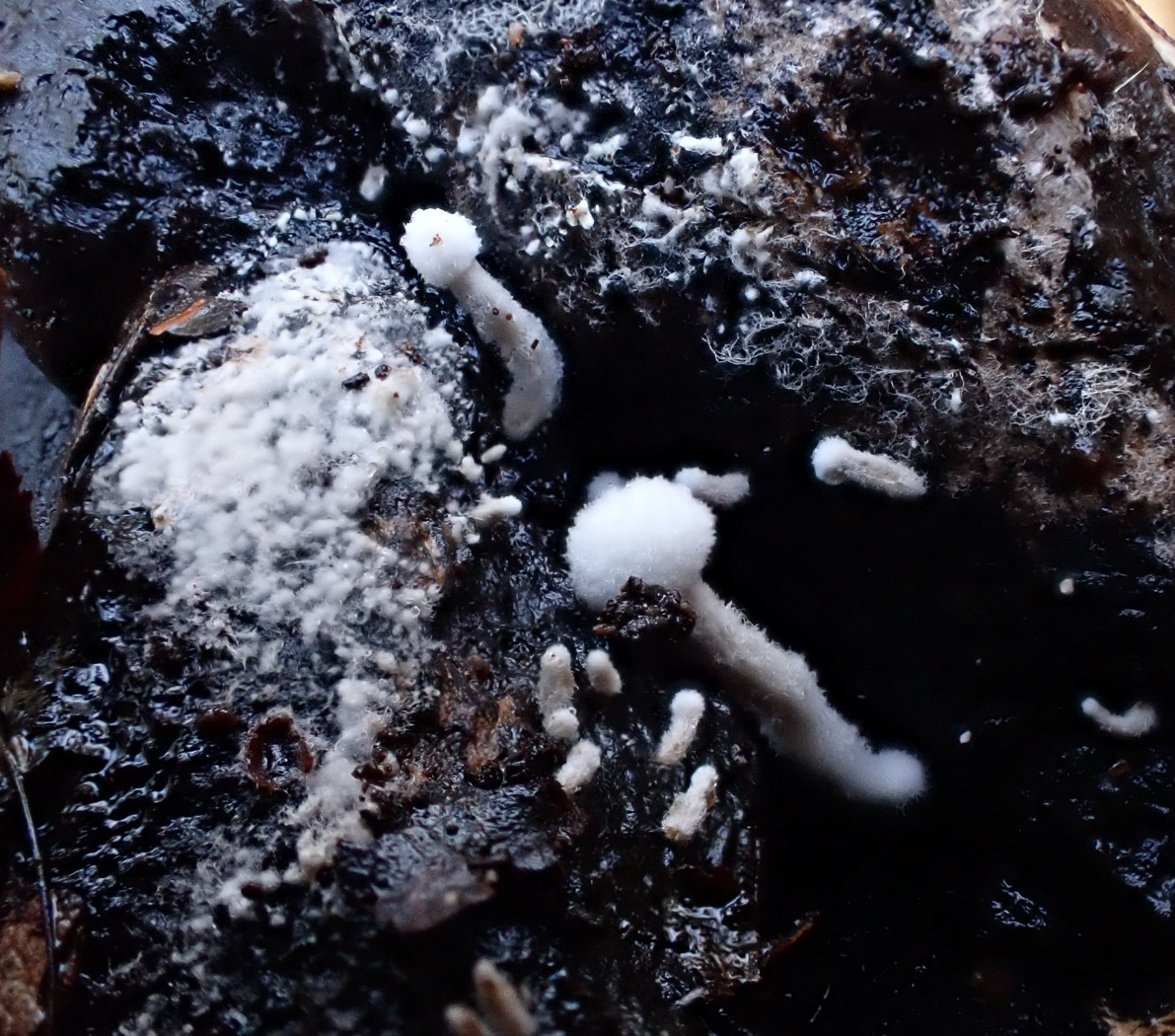 |
November 20th Asterophora lycoperdoides (Powdery Piggyback)
At Burnham Beeches our small group found a large black rotting mushroom with widely spaced gills, nameable even in this state as Russula nigricans (Blackening Brittlegill). What's more, on closer inspection and with delight two tiny white mushrooms were spotted growing on it! This particular Russula species is well known as the best host (when old and really rotten) to find two similar species of 'fungi growing on other fungi'; in some years they are hard to find, in others they're quite common - in fact we found both species today so maybe 2022 will be a 'good year'. The cap surface of this particular species is covered in tiny star-shaped 'chlamidophores' which give it a distinctly dusty appearance (similar to that found on a Puffball - hence the reference to Lycoperdon in its Latin species name) and visible in photo 2. (The photos are Stephen Plummer's.) The species was new for the site and is also a new entry for Finds.
|
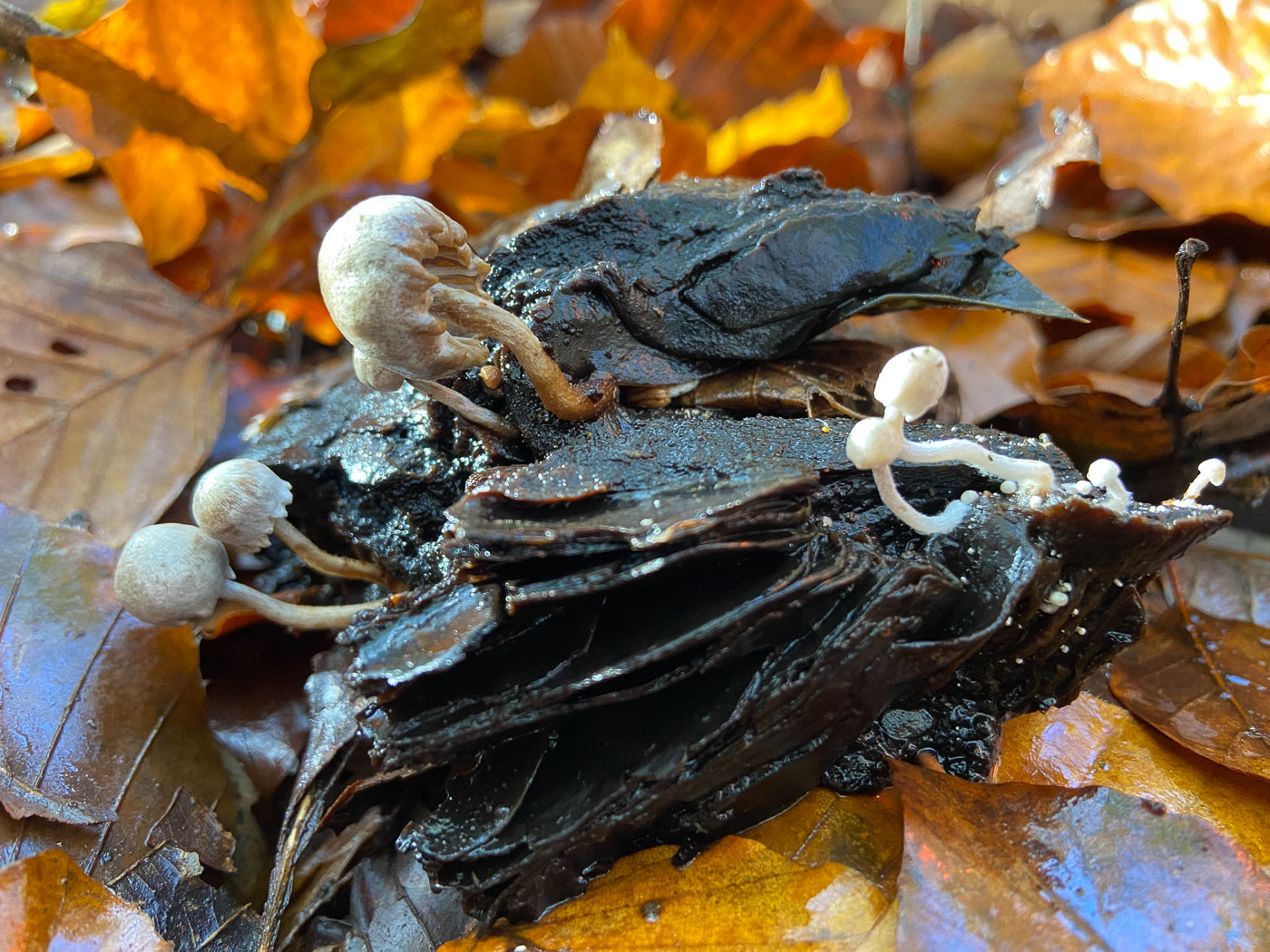
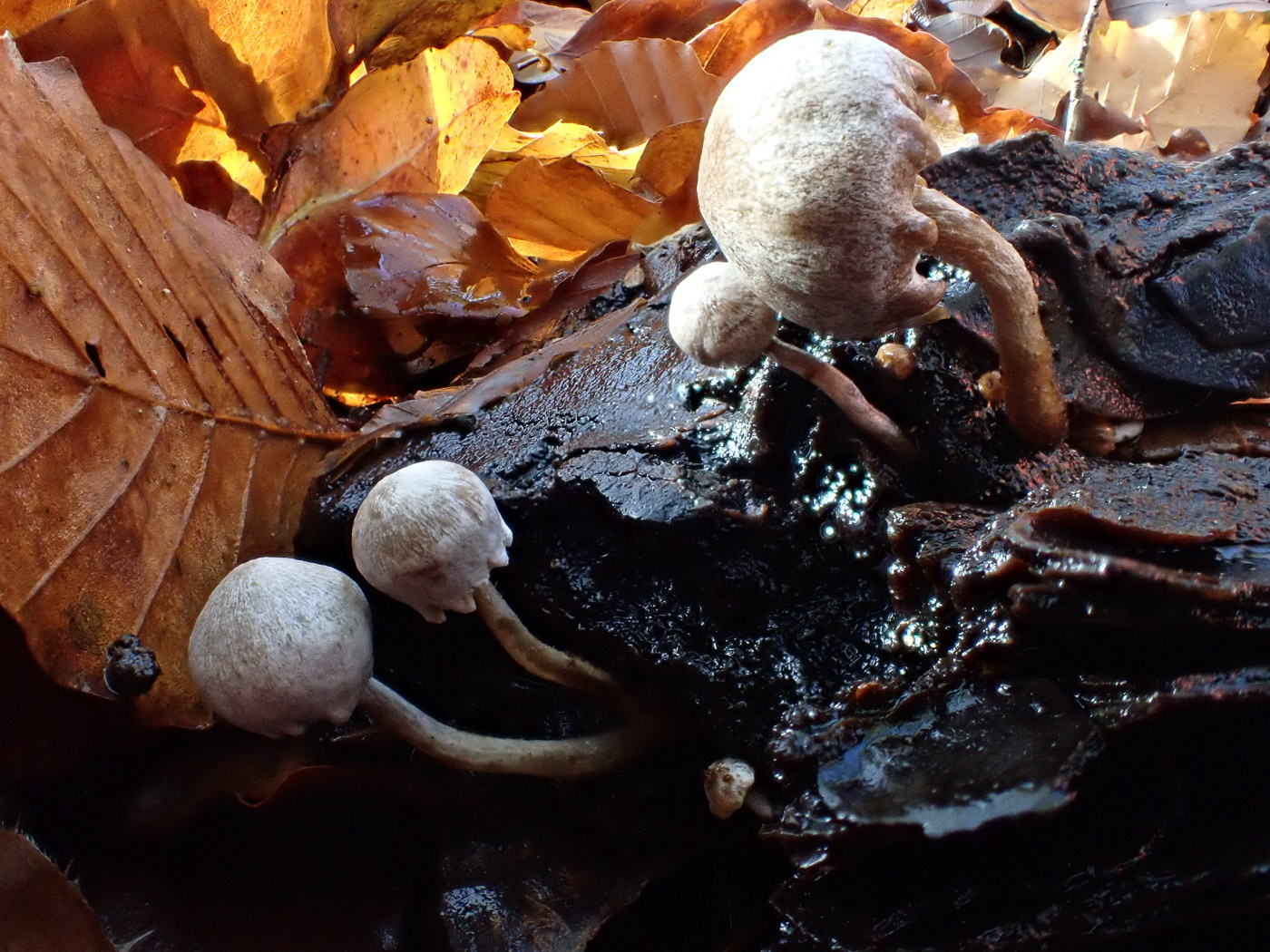 |
November 20th Asterophora parasitica (Silky Piggyback)
At Burnham Beeches our small group found a second rotting specimen of Russula nigricans (see the entry above also) and quickly noticed that this time we also had growing on it the second Piggyback species which frequents this Russula when old and decaying. The fruitbodies were bigger and more developed than the find above (though still pretty tiny) but one can see clearly that the dusty cap covering is missing and replaced by the silky fibrous coating typical of this particular species. (The photos are Stephen Plummer's.) We have two previous Finds entries, both from November 2020.
|
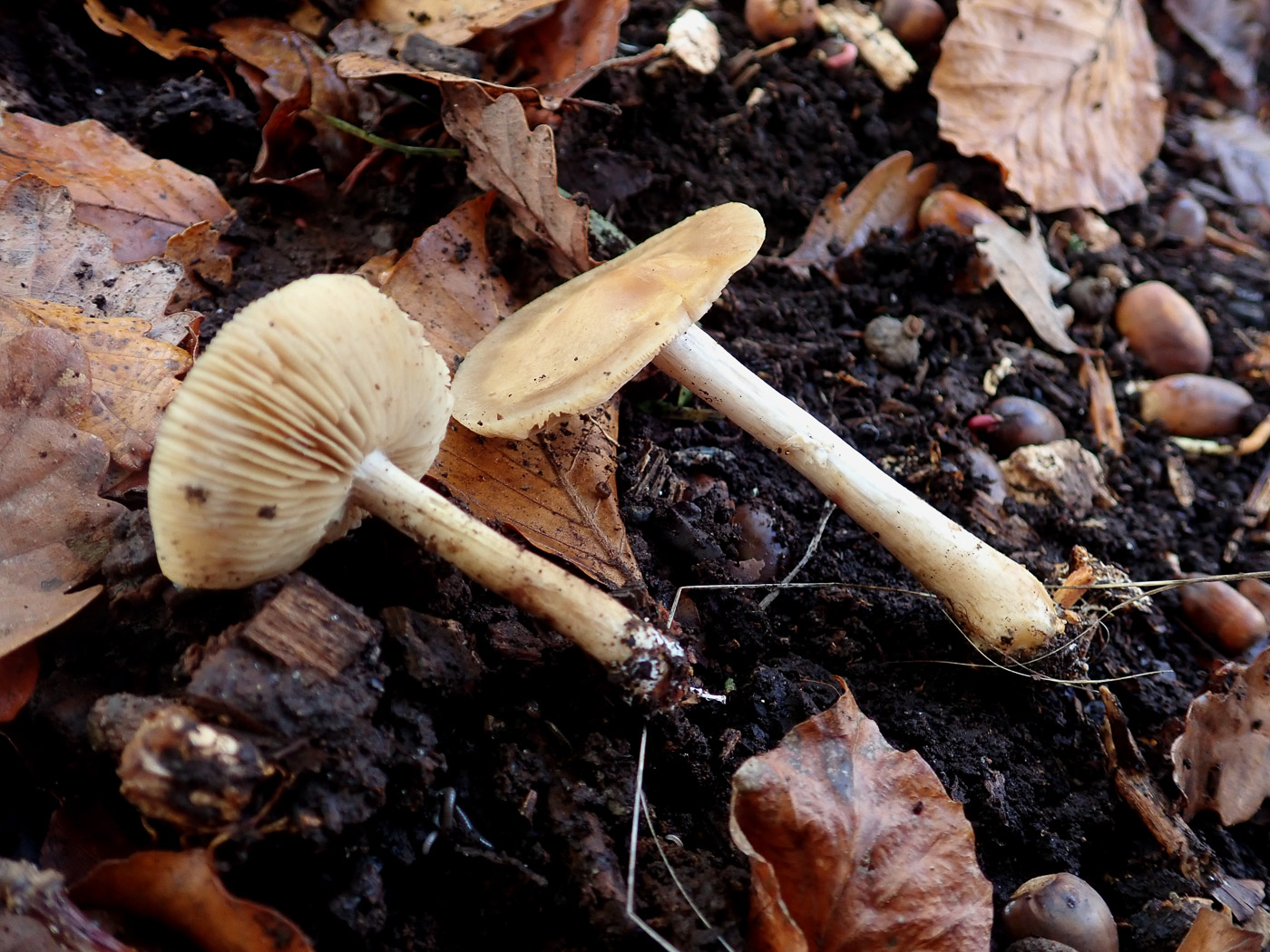 |
November 20th Homophron spadiceum (Chestnut Brittlestem) 
On a rotting woodchip pile in Burnham Beeches our small group found a couple of mushrooms which at the time Penny guessed (incorrectly!) might be a species of Inocybe (Fibrecap). This is known to be a somewhat deceptive species and not a typical Brittlestem (having now been moved from genus Psathyrella) and has several features both macro- and microscopically similar to Inocybe, and it took Penny several hours of puzzling to work out its identity. There still remains some doubt as not all features were a perfect match and a specimen will be sequenced to confirm. It is not that rare but certainly not common and was new to the site today. We have one previous Finds entry: 2021 December 12th. (The photo is Penny's.)
|
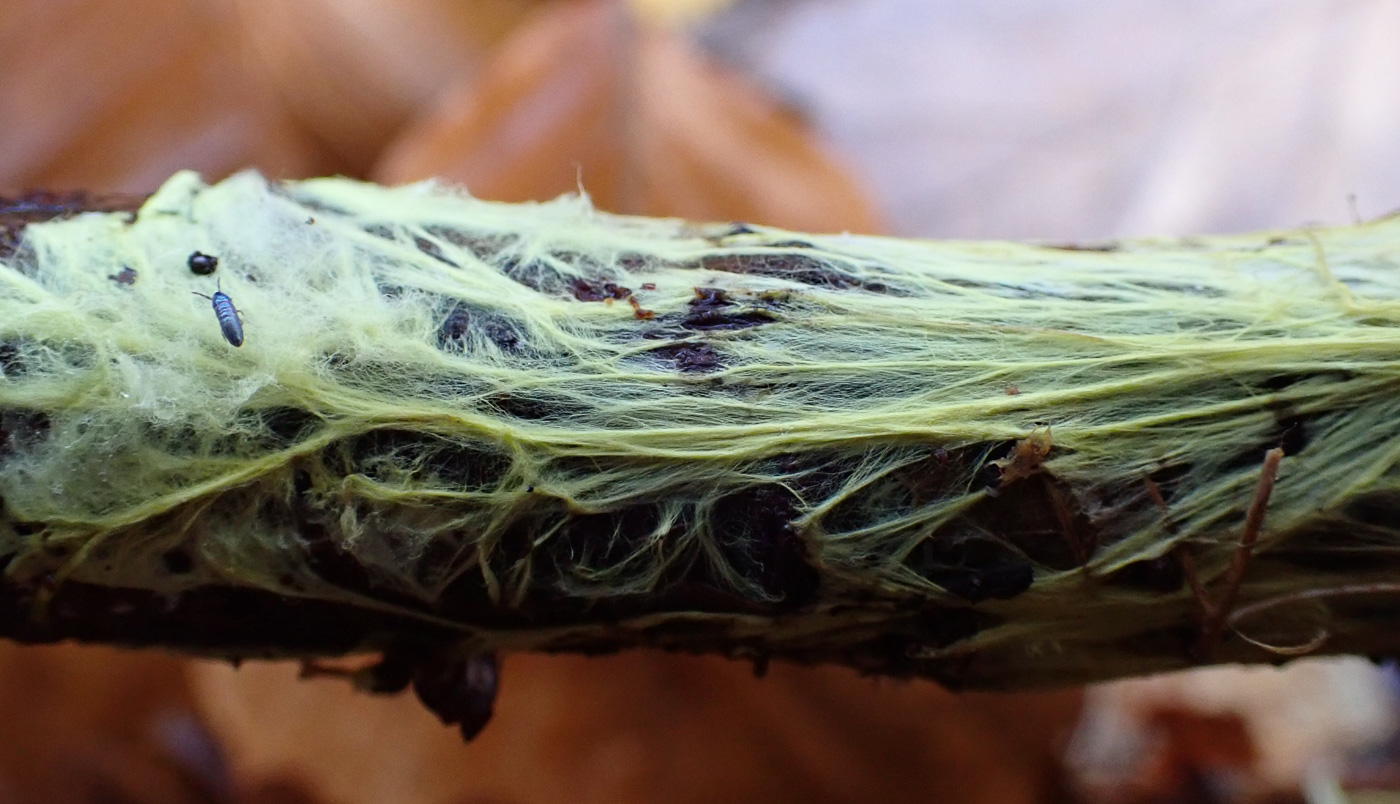 |
November 20th Xenasmatella vaga (Yellow Cobweb)
At Burnham Beeches our small group found a fallen Beech branch with a nice coating of this distinctive corticioid species which in fact appears more like the spreading mycelium of a fungus than the species itself. The common name describes it well and it was previously in genus Phlebiella. (The photo here is Stephen Plummer's.) We have one previous Finds entry: 2021 November 17th.
|
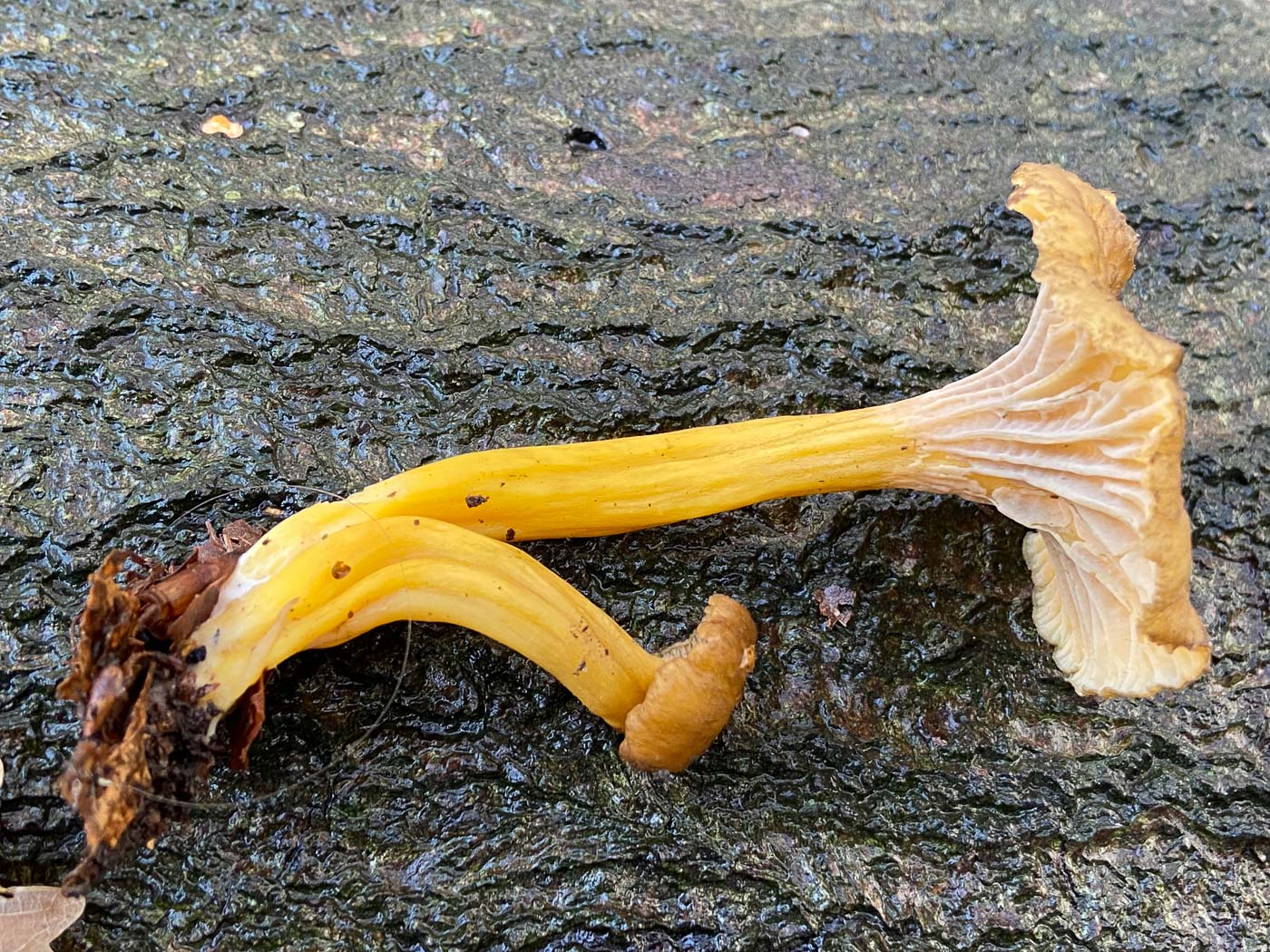
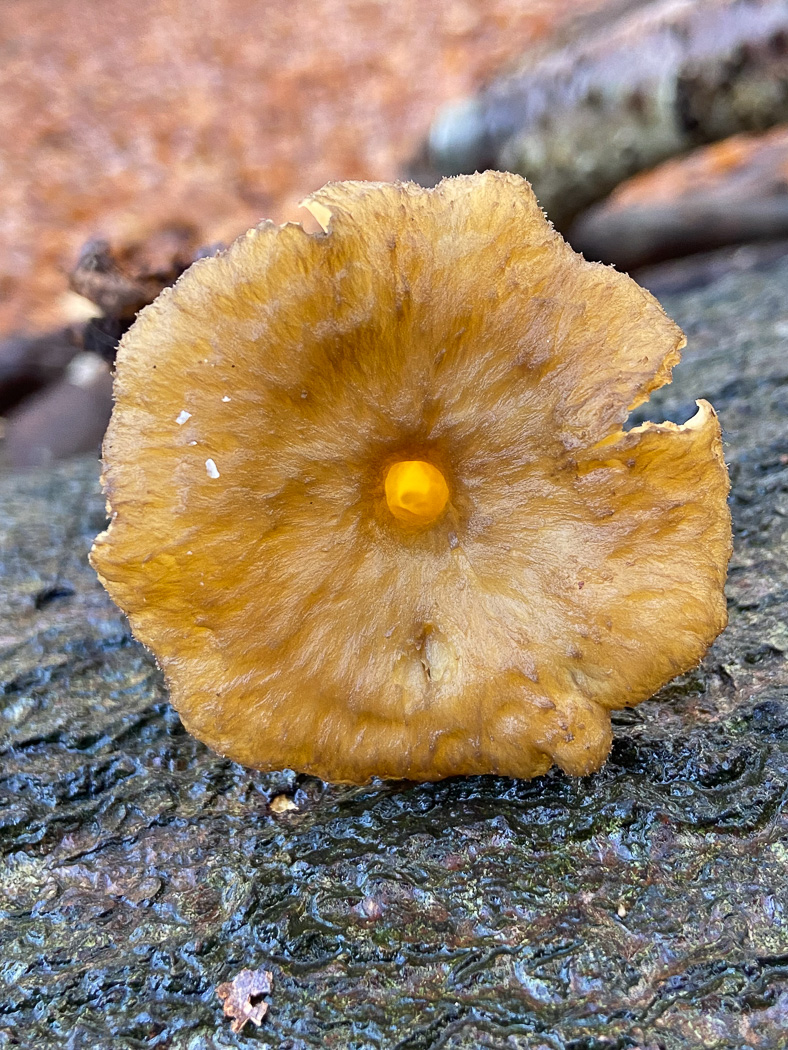 |
November 20th Cantharellus tubaeformis (Trumpet Chanterelle)
At Burnham Beeches our small group found several collections of this late season fruiter (other common names are Winter Chanterelle, also Yellowlegs) which is an easy one to recognise. The very shallow decurrent greyish folds under the cap - hardly gills - together with the hollow yellow stems - often flattened as here - are quite distinctive. It occurs commonly in deciduous litter but blends in with its surroundings very well. Once you spot one and get your eye in it's always worth a good look for more. (The photos here are Stephen Plummer's.) We have one previous Finds entry: 2020 October 16th.
|
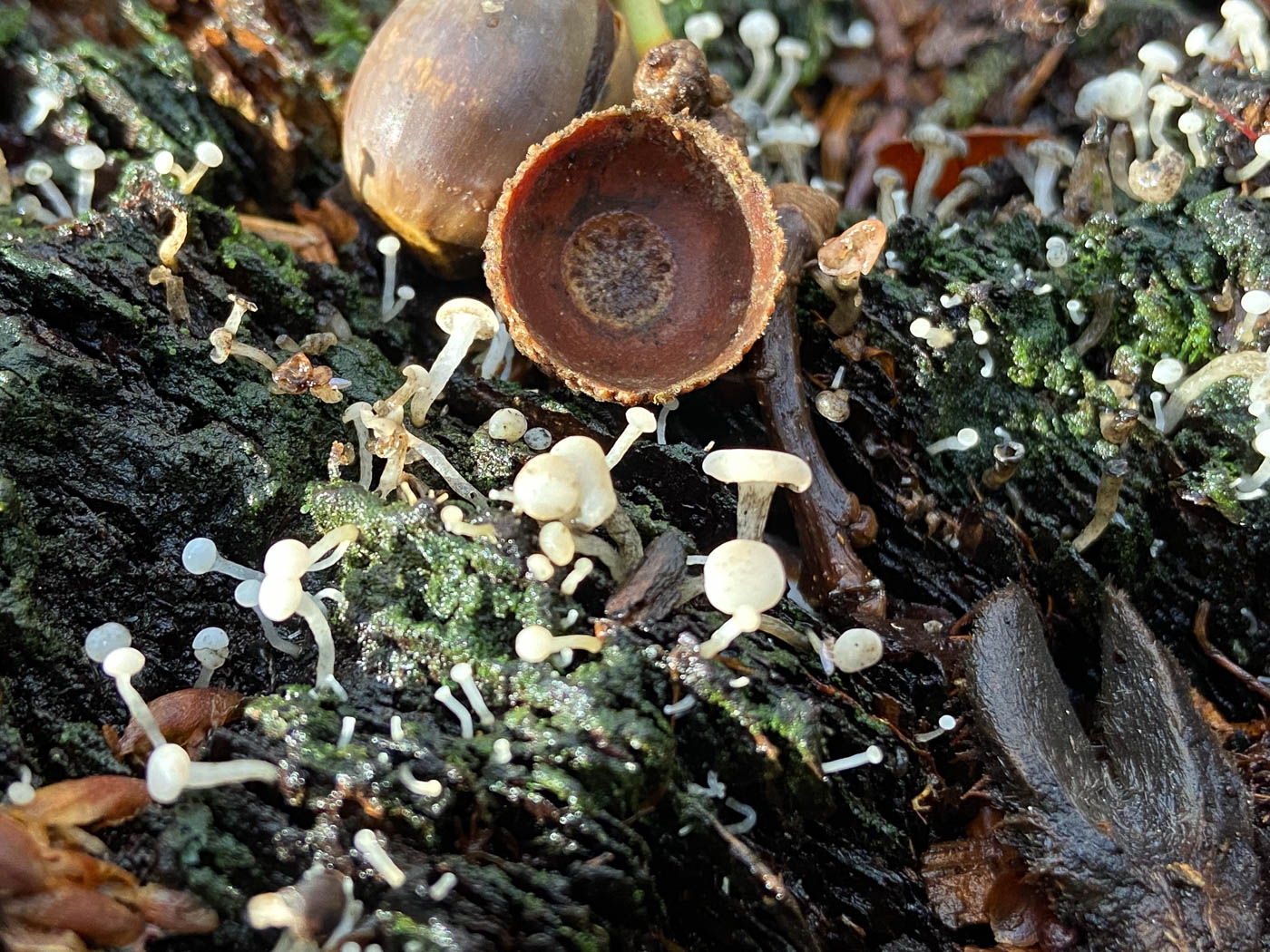 |
November 20th Cudoniella acicularis (Oak Pin)
At Burnham Beeches our small group found several Oak stumps with good numbers of this small ascomycete - one that looks just like a small white Mycena (Bonnet) until you look underneath with a handlens and find no gills! It frequents damp rotting Oak stumps and is reasonably common. (The photo here is Stephen Plummer's.) We have two previous Finds entries: 2020 October 22nd and 2021 February 1st.
|
November 17th 2022
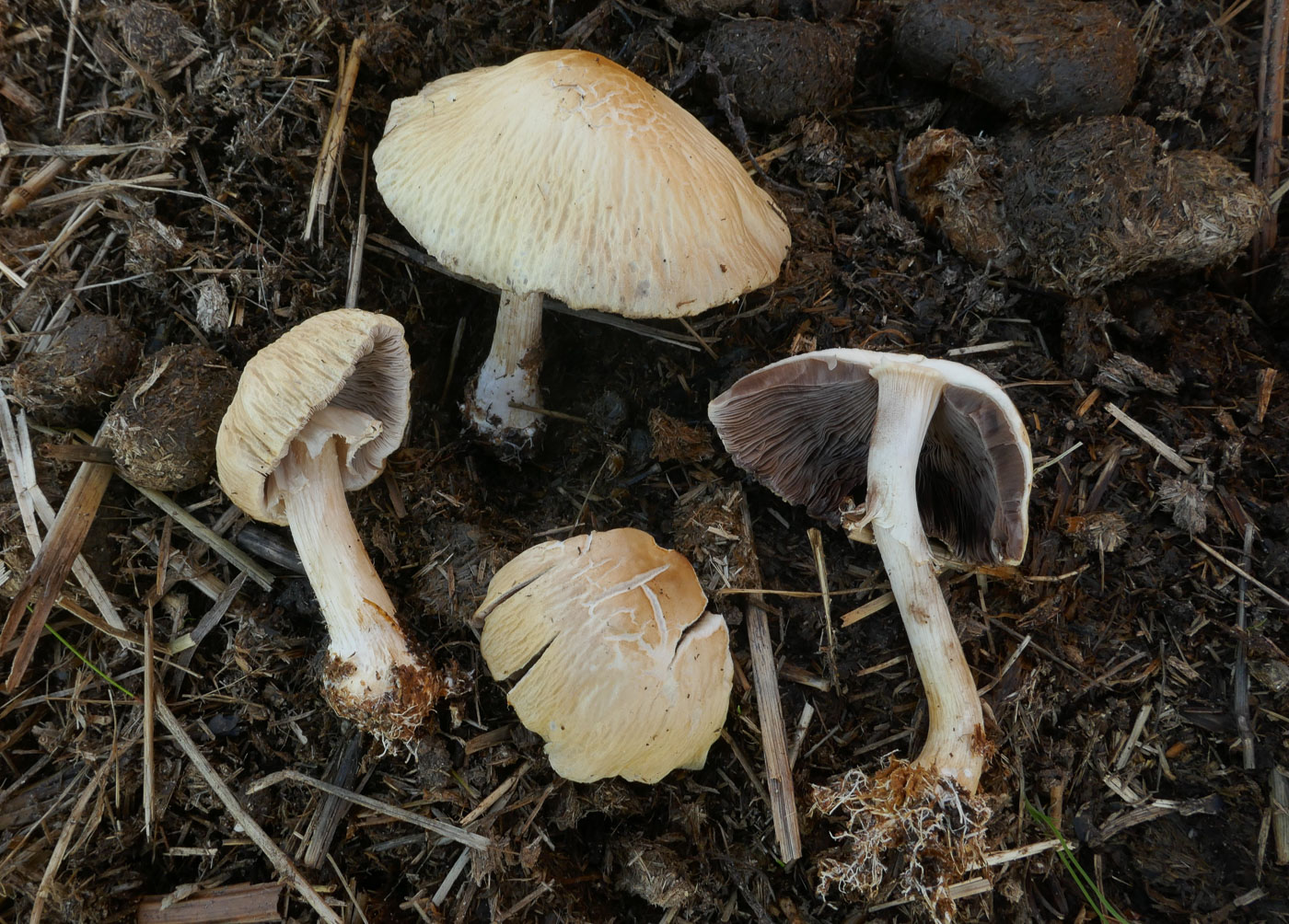
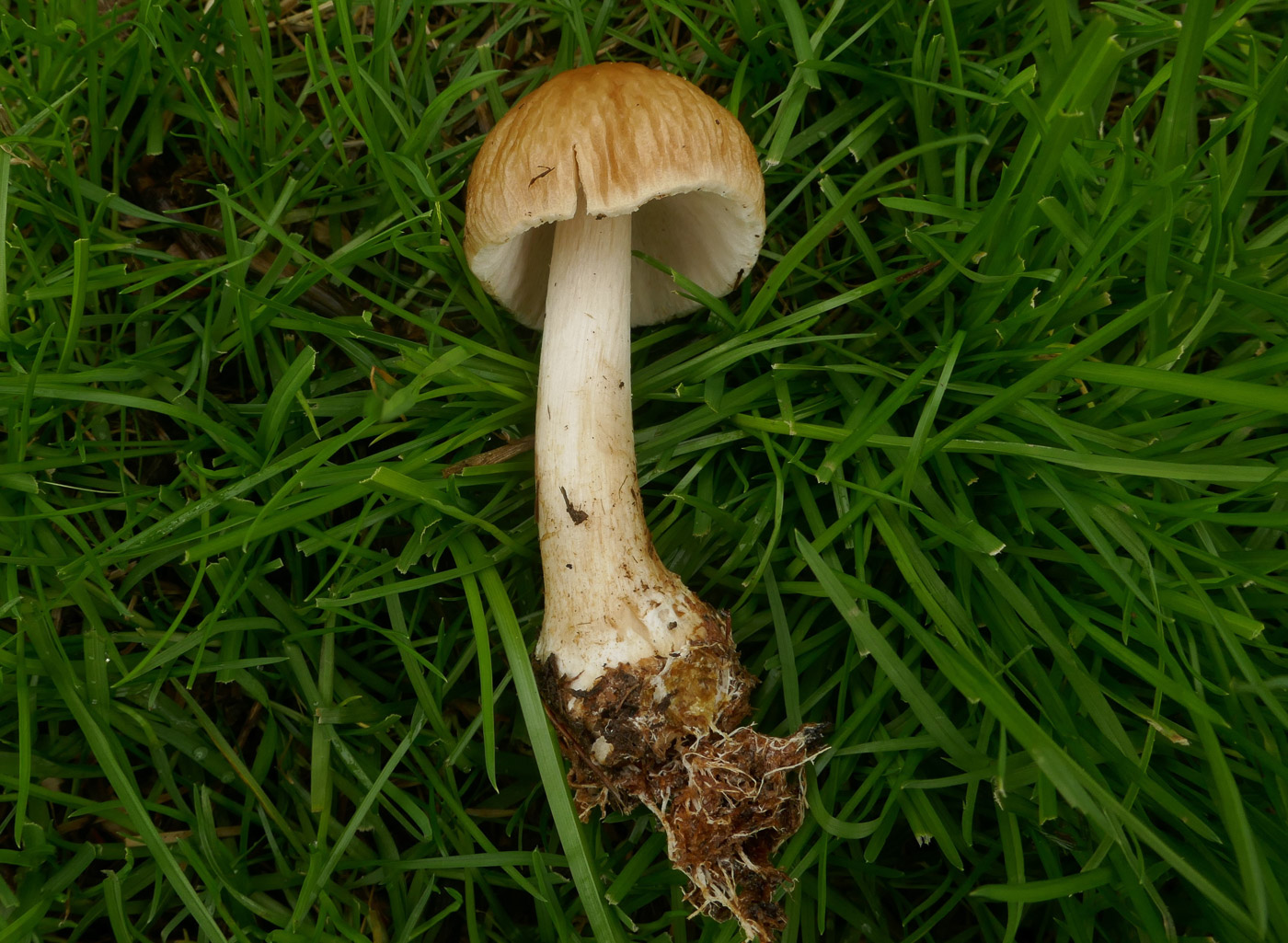 |
November 17th Agrocybe rivulosa (Wrinkled Fieldcap)
In a dung heap at Stampwell Farm Jackie Ewan noticed these 'Mushroom' - like mushrooms coming up a few days earlier and was at first perplexed by them. However, when they became more mature and developed the typical wrinkled, also cracked surface she realised it was genus Agrocybe and not Agaricus and worked out the species using microscopic characters as well. It normally occurs on rotting woodchip piles rather than dung, being one of several species now spreading rapidly with the use of that medium for mulch, so maybe there was woody remains in this heap as well? This is a first for Finds.
|
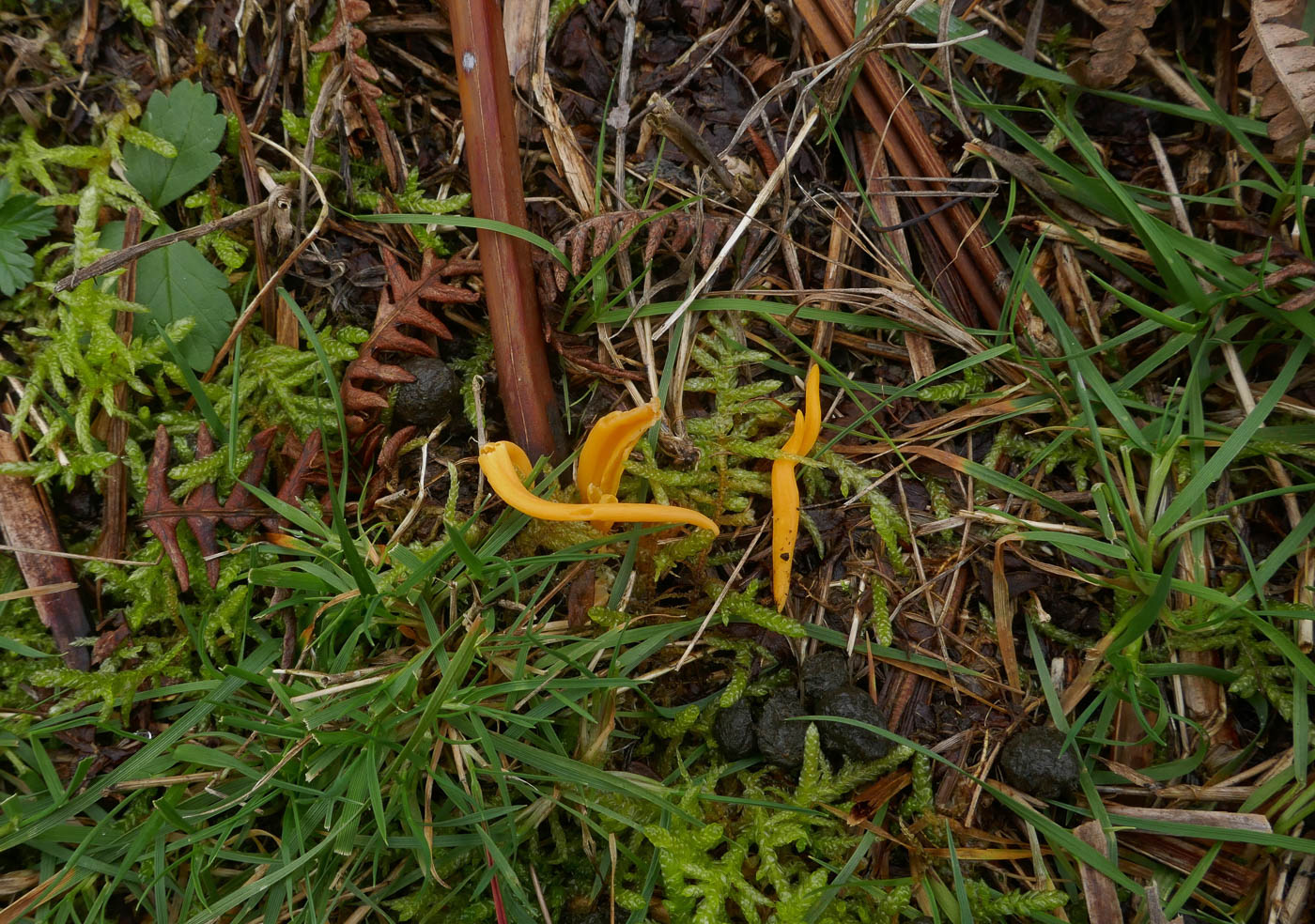 |
November 17th Clavulinopsis luteoalba (Orange Club) 
At Stampwell Farm in shortish grass Jackie Ewan found this species and despite it appearing quite orange rather than yellow she checked the spores to make sure it was not the much commoner and normally yellower C. helvola (see below, found on the same day at Prestwood Churchyard). It is worth comparing these two collections plus others in Finds via the Masterlist in order to appreciate quite how similar these yellow Clubs are.
|
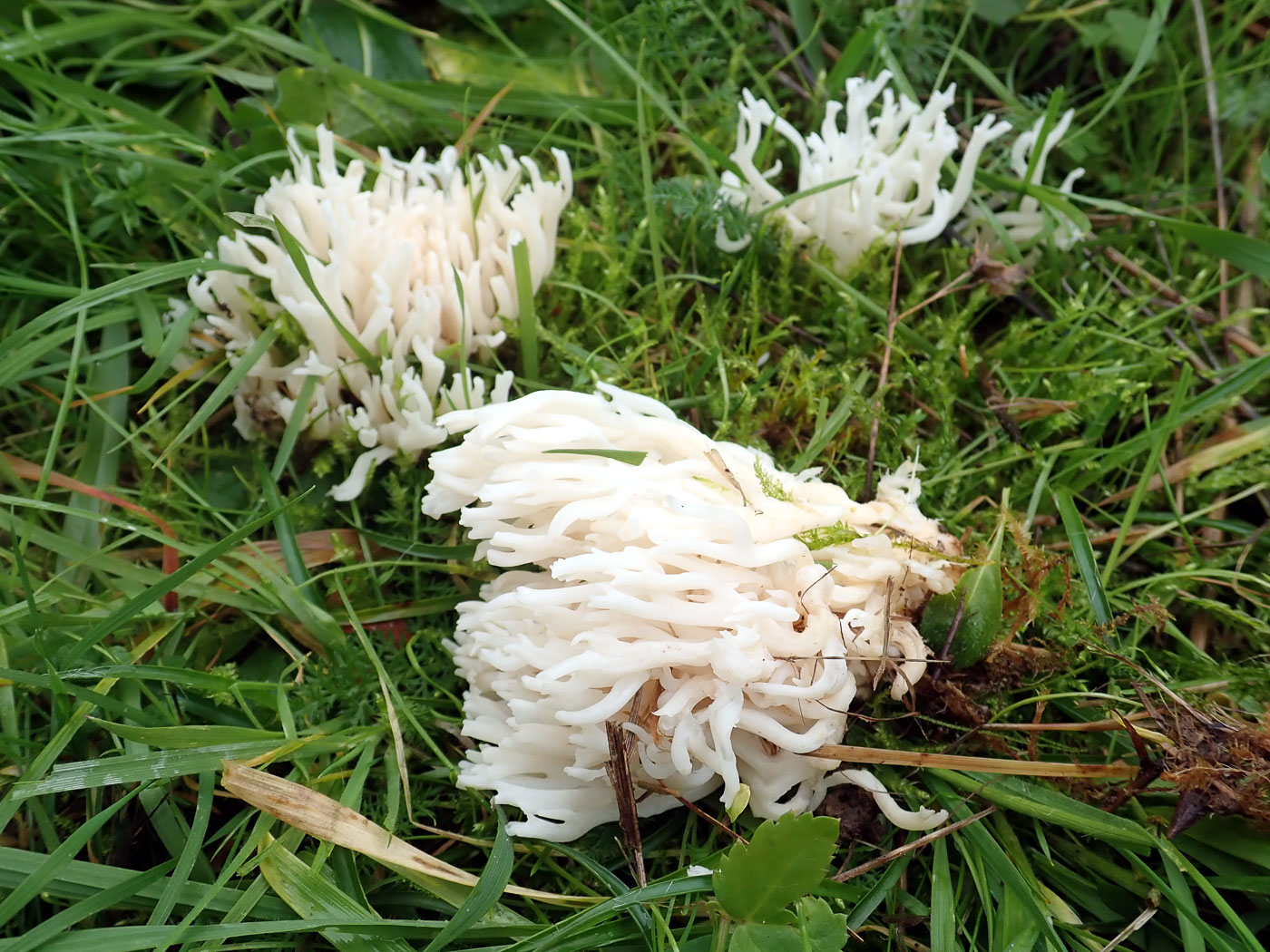 |
November 17th Ramariopsis kunzii (Ivory Coral)
In Prestwood Churchyard Penny found three nice clumps of this unusual white grassland coral species. It is one which needs a scope to check as there are other possibilities, but the colour, the branching tips, the stems arising from a single thick base together with subglobose finely ornamented spores distinguish it. The clumps were about 6 cm high. We have just a handful of previous records, this being the third from here. See also 2021 December 1st when I found it here previously.
|
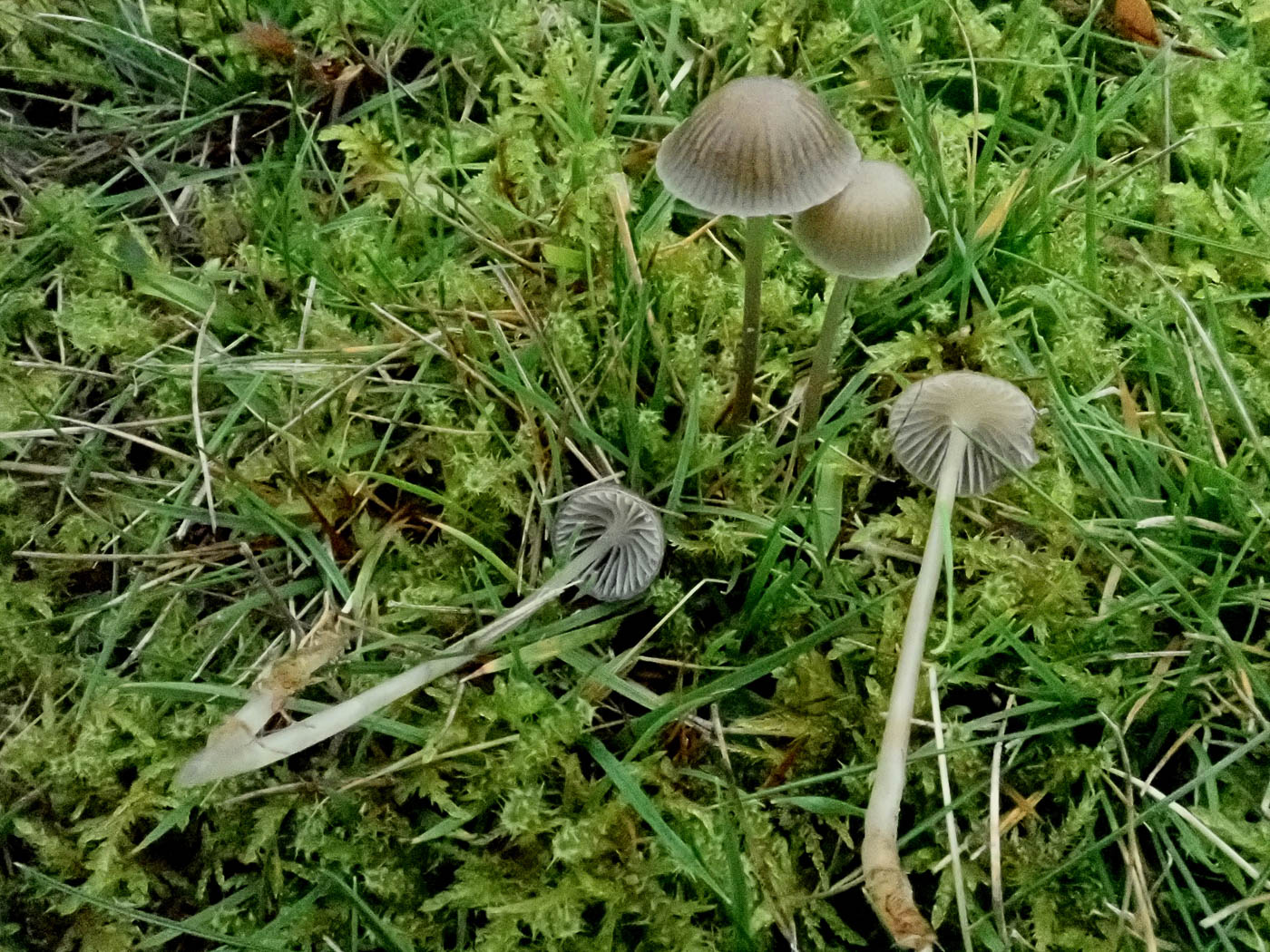
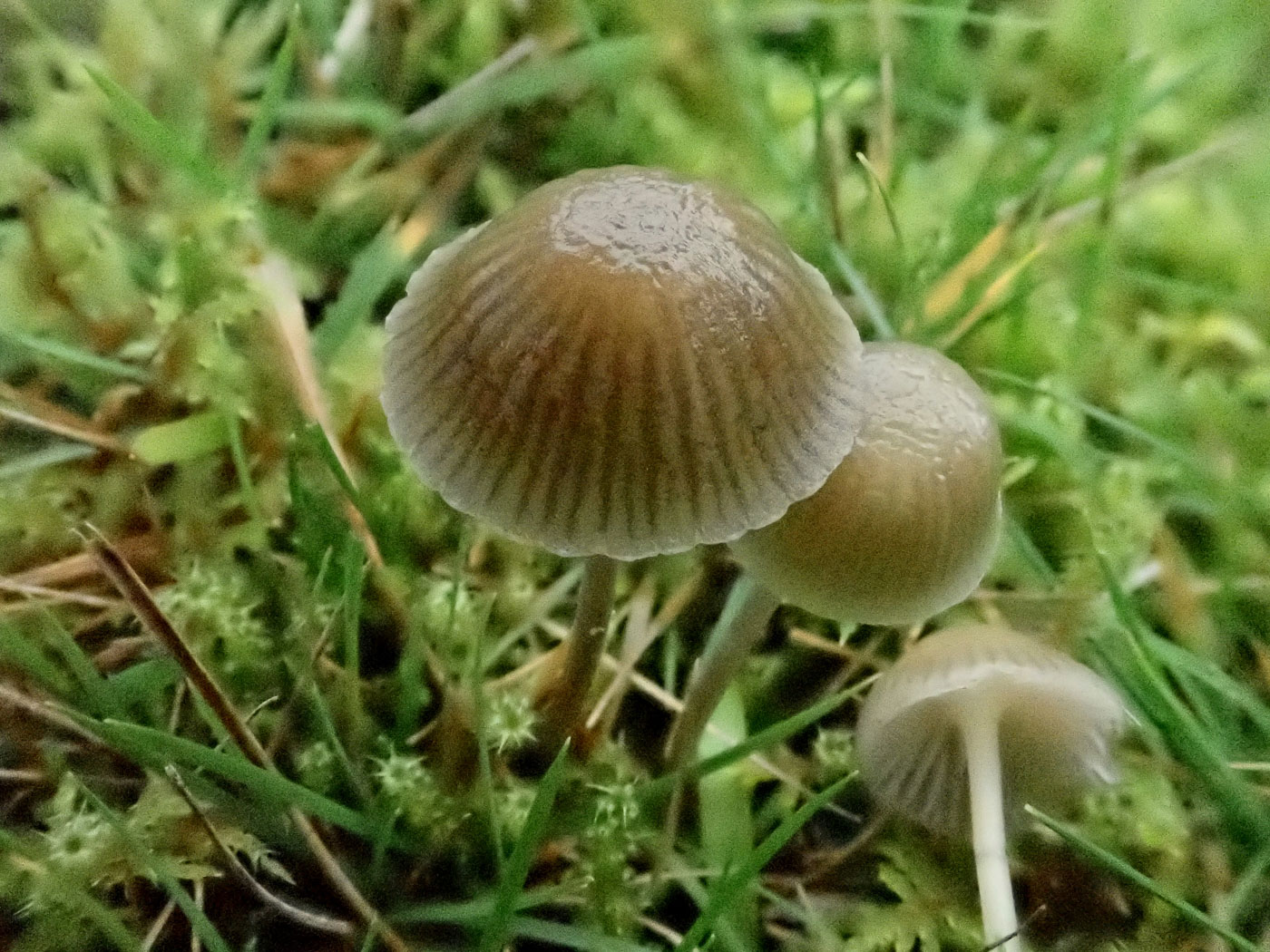
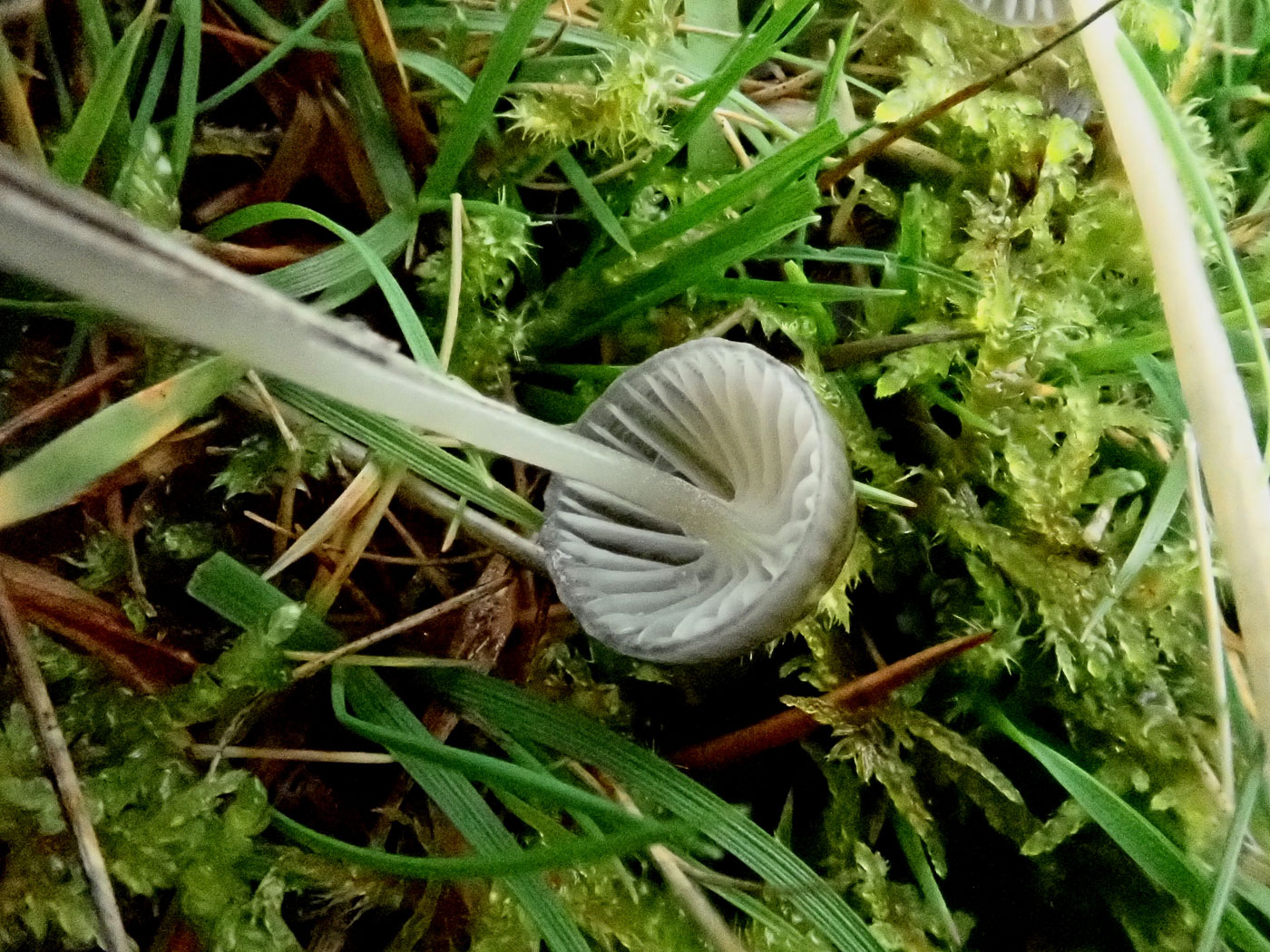 |
November 17th Mycena vulgaris (Vulgar Bonnet) 
Prestwood Churchyard is the only site Penny knows for this unusual Bonnet, found in Pine needle litter, and she was pleased to see it here for the third year running. It is like a drab Mycena epipterygia (Yellowleg Bonnet), sharing with that species its very sticky cap and stem and a cap cuticle which with care peels off like stretchy clingfilm. It differs in being entirely grey (no sign of yellow in the stem) and having obvious decurrent gills. We have a very few records from the 1980s, then none till I started to find it here. See the Masterlist for my other entries.
|
 |
November 17th Clavulinopsis helvola (Yellow Club) 
In Prestwood Churchyard Penny found just a very few of this normally abundant Club - by far the commonest of three very similar species. This is also the easiest to identify with a scope as it has round spores which have isolated warts dotted about on them, the other two have smooth ellipsoid spores. When bright yellow as here rather than orange one can almost name it in the field but today's specimens were large and also rather flattened (one was shaped like a Geoglossum (Earthtongue) only yellow but sadly my photo turned out too blurred!) so they definitely needed checking. We have just two previous Finds entries: 2020 October 3rd and 28th.
|
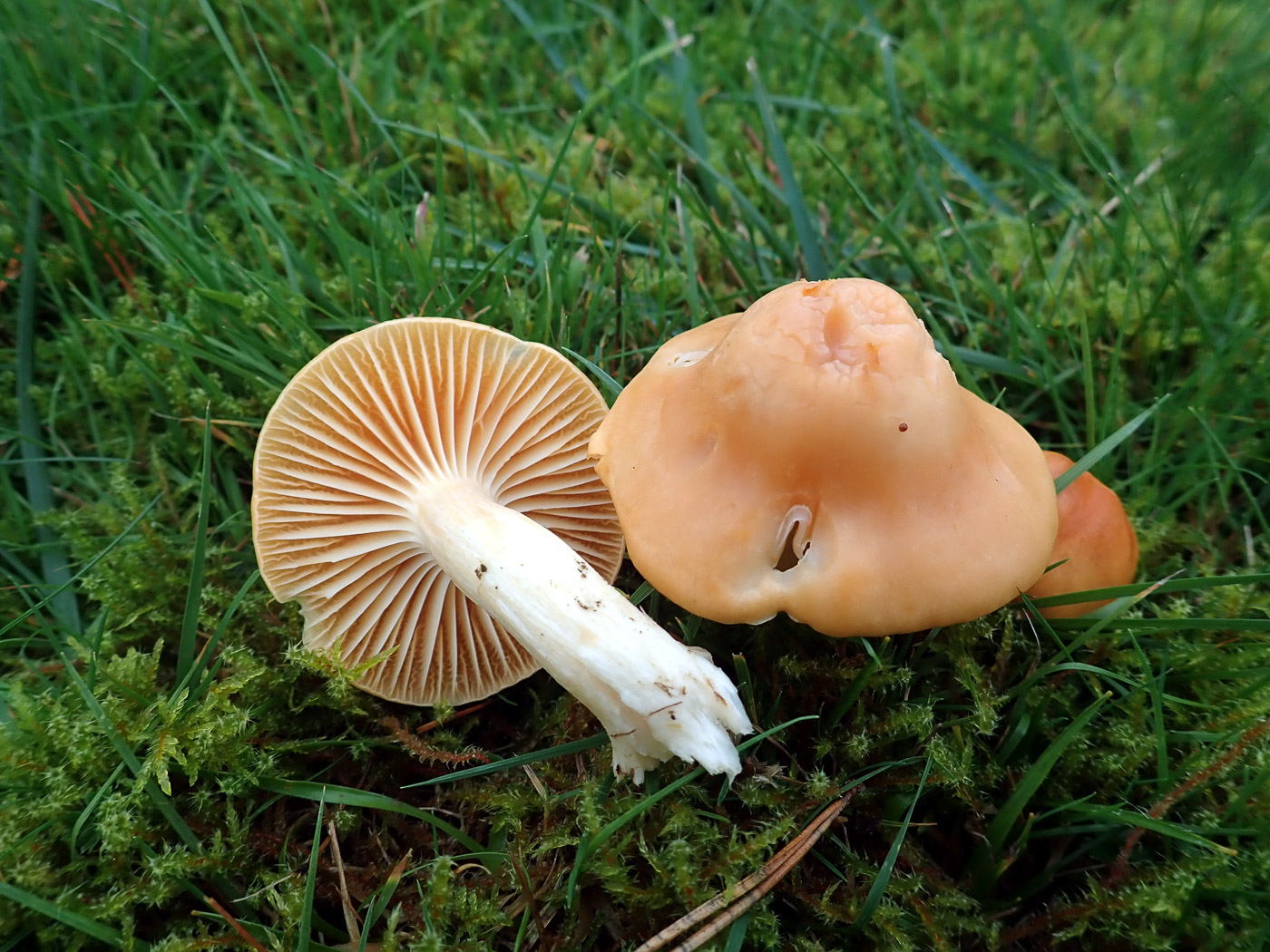 |
November 17th Cuphophyllus pratensis (Meadow Waxcap)
In Prestwood Churchyard - usually ablaze with Waxcaps at this time - Penny found extremely few. Just a singleton Parrot, a singleton Blackening, a few Snowies and this nice clump of Meadows. Previously in genus Hygrocybe. this species together with other dry capped Waxcaps (including Snowy) are now moved to Cuphophyllus, whereas the slimy capped species like Parrots are moved to genus Gliophorus. Today's species is one of the larger and most common Waxcaps and easily recognised by its warm colours and distinctive widely spaced decurrent gills. See the Masterlist for several more examples.
|
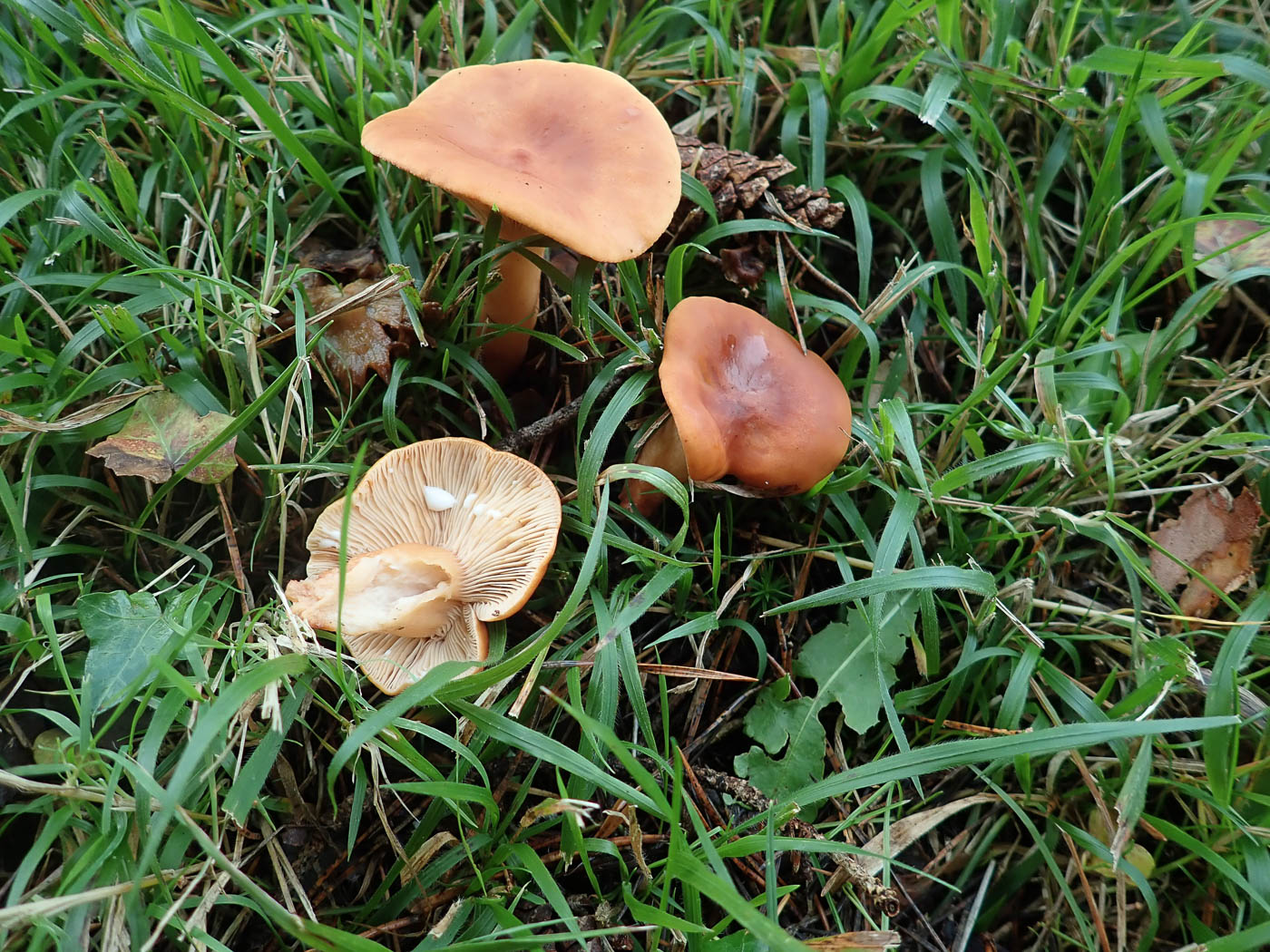

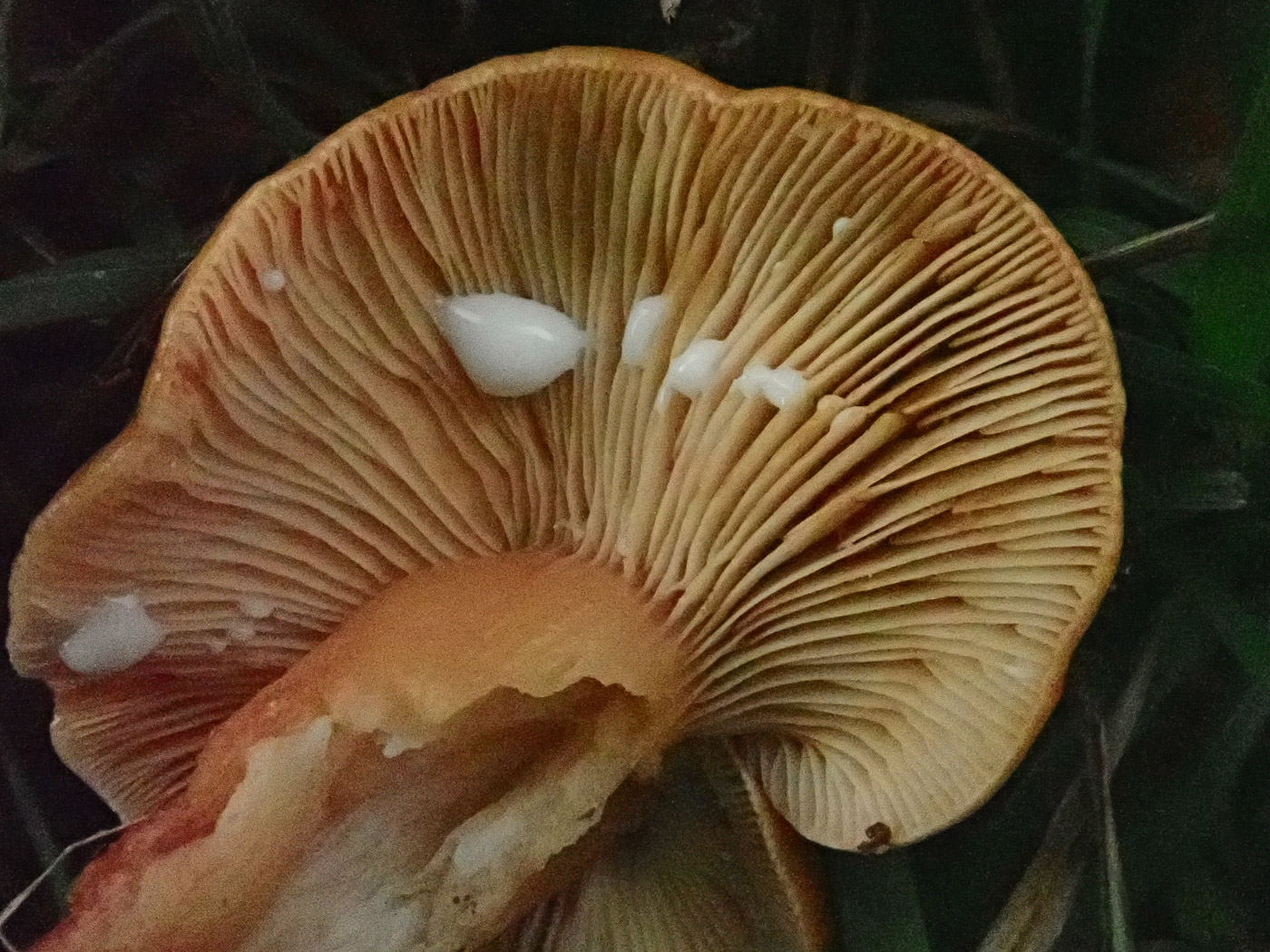 |
November 17th Lactarius aurantiacus (Orange Milkcap)
Under Pine just outside Prestwood Churchyard Penny found several really brightly coloured Milkcaps and checked out which they might be at home. L. fulvissimus is a similar colour, also L. brittanicus and possibly L. lacunarum but she found that the only one likely under Pine was this species, backed up by the fact that the milk did not turn yellow on the gills after time as happens with both L. lacunarum and L. brittanicus. Furthermore L. fulvissimus is associated solely with deciduous trees. This is a new entry for Finds.
|
 |
November 17th Rickenella swartzii (Collared Mosscap)
In Bradenham Churchyard Penny found both species of Mosscap and though the very common Orange Mosscaps were so faded as to make them not worth a photo, she thought these were definitely worth it. Much less common than the other species, this one is quite distinctive with its dark purple to black sunken centre with this colour also at the top of the stem. Both species have these distinctive decurrent gills which should prevent confusion with similar small grassland Mycena species, and both are always in moss. See also in Finds 2020 November 2nd and 2021 June 30th.
|
November 15th 2022
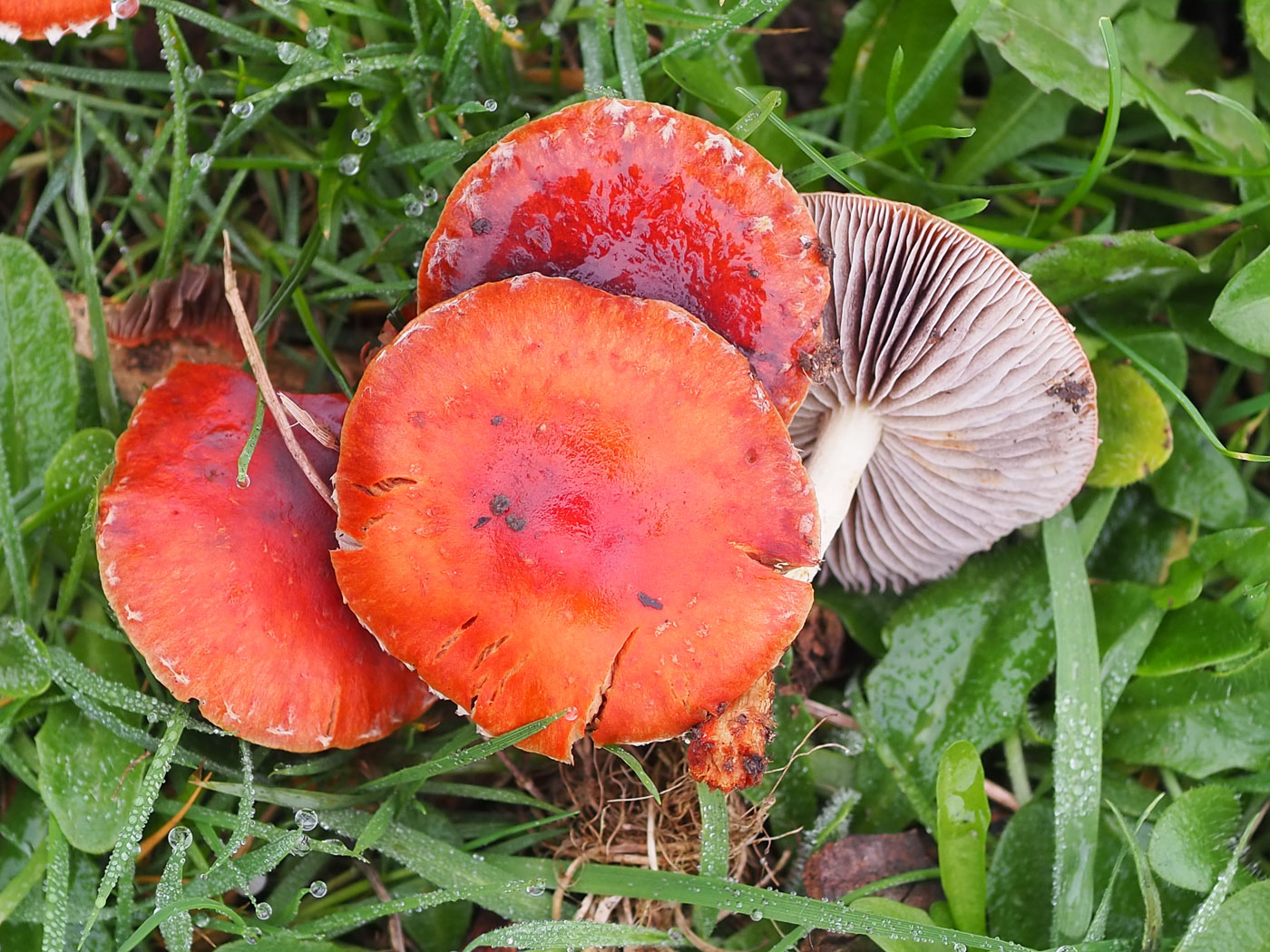 |
November 15th Leratiomyces ceres (Redlead Roundhead)
In Hughenden Park John Catterson came across about 30 of these fruiting abundantly on old wood chippings. Given its woodchip substrate this species, previously known as Stropharia aurantiaca, is now often found in good numbers and is one of several species which have spread rapidly with the popular use of woodchip for mulch. See also in Finds 2020 October 28th and 2021 August 2nd.
|
November 14th 2022
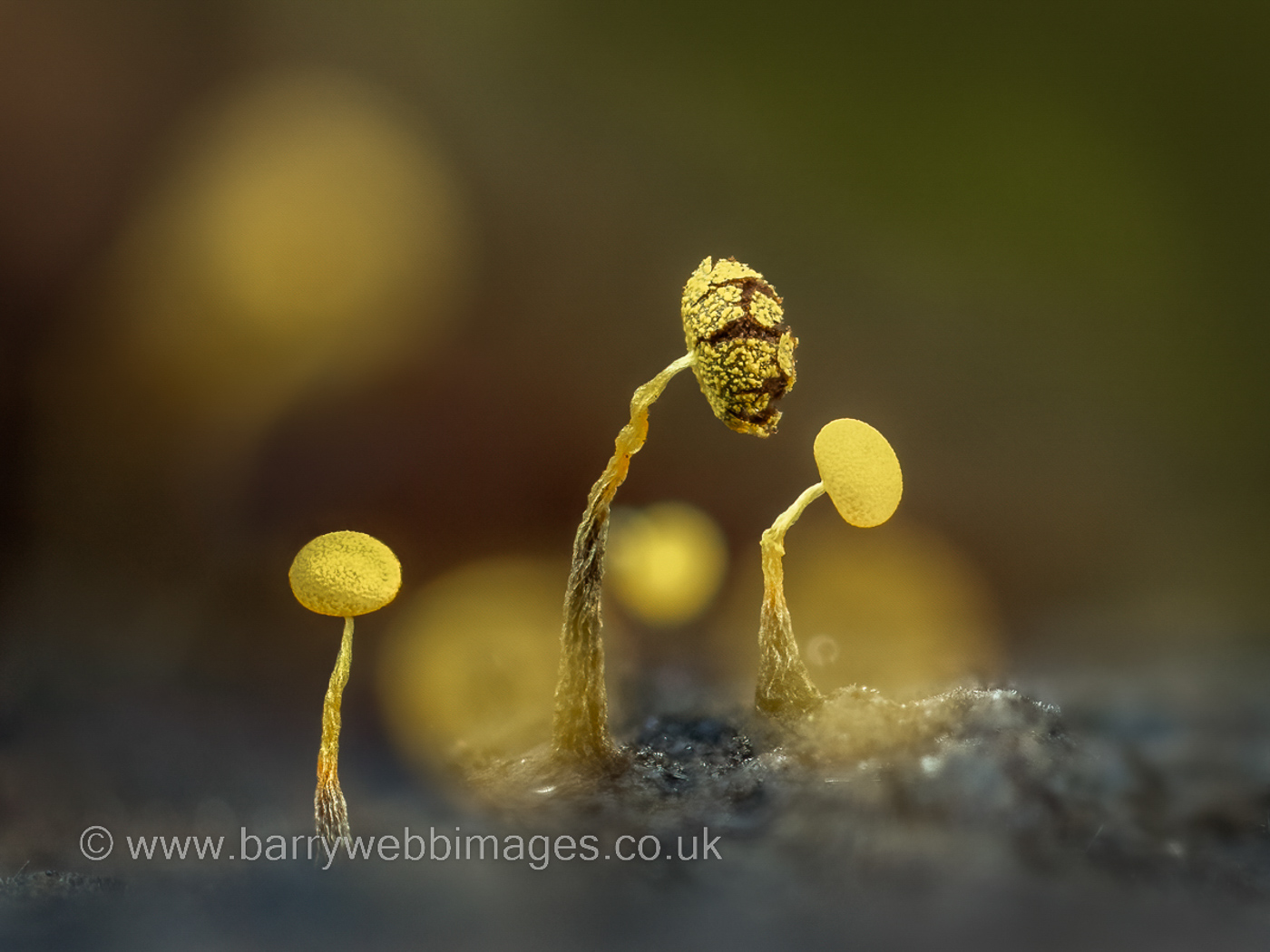 |
November 14th Physarum viride (an unusual Slime Mould with no common name)
At Burnham Beeches Barry Webb found this stunning little species on a rotten Oak log - one he'd not seen before but easily recognised by its distinctive greenish yellow colour. As the only county record for the species (apparently from Burnham Beeches) was in 1923, ID anon, we'll count this as new to the county!
|
November 13th 2022
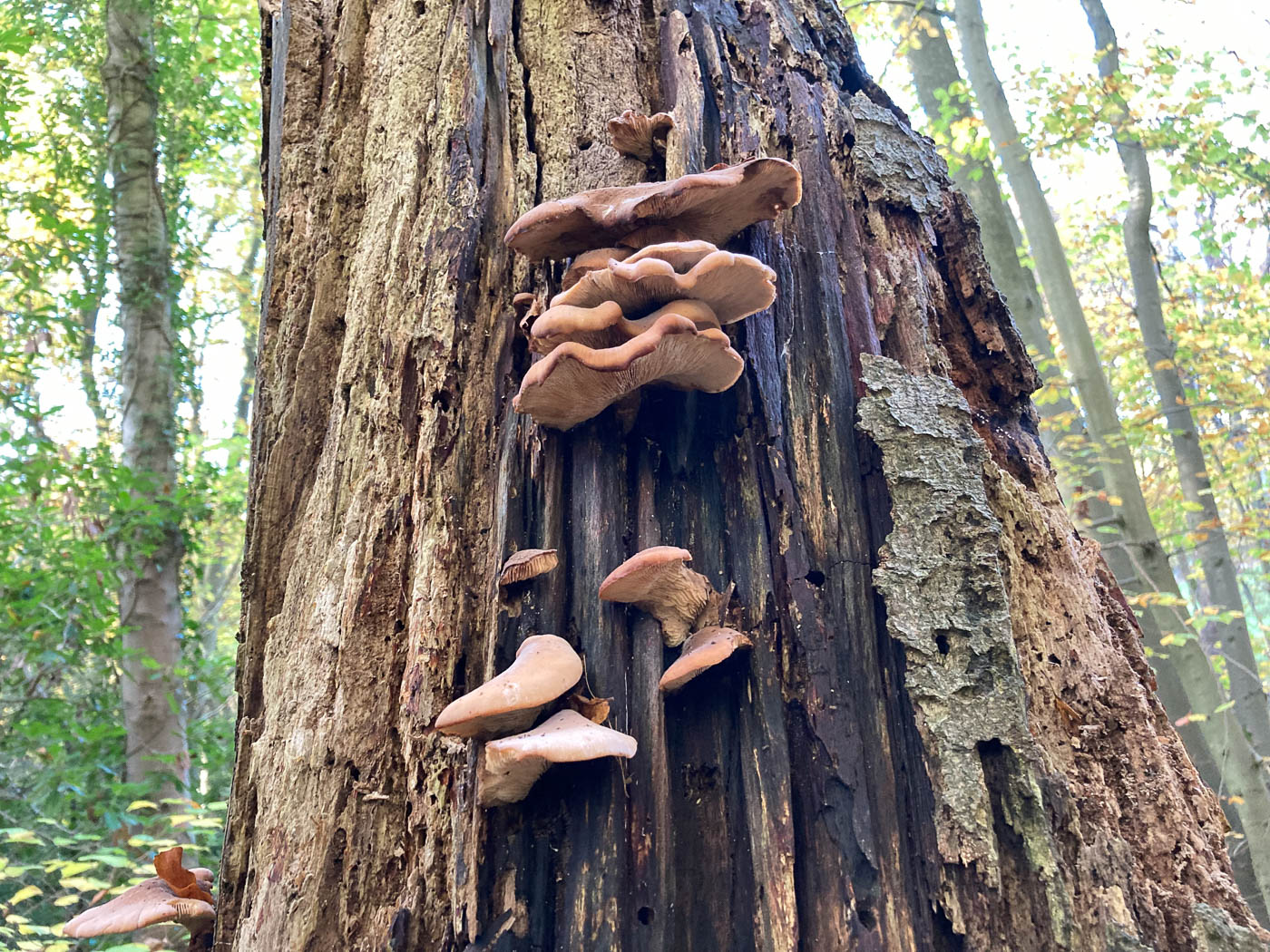
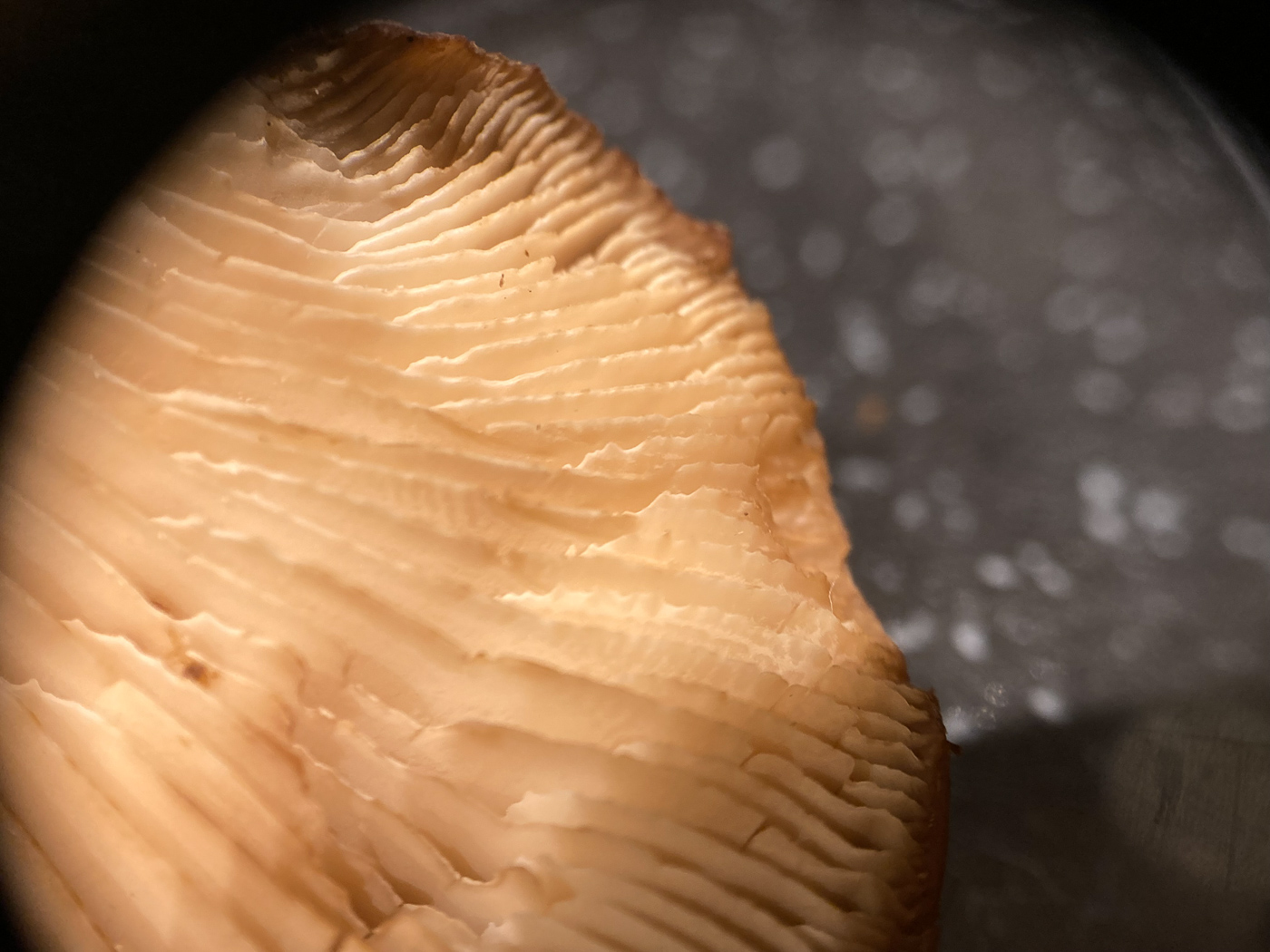 |
November 13th Lentinellus ursinus (a Sawgill with no common name) 
In Littleworth Common on an old Beech trunk Russell Ness managed to reach up far enough to collect and photo this unusual species, one for which we have only two previous records, both from Brill Common in Horse Chestnut. There are several closely related species which are difficult to separate (see also in Finds L. vulpinus dated 2022 October 24th) and all have the typical uneven finely serrated gill edge of this genus seen in photo 2, hence its common name. However, Russell read that the flesh of today's species is strongly amyloid and a drop of Melzers reagent duly turned instantly black which helped to confirm his ID. This is anew entry for Finds.
|

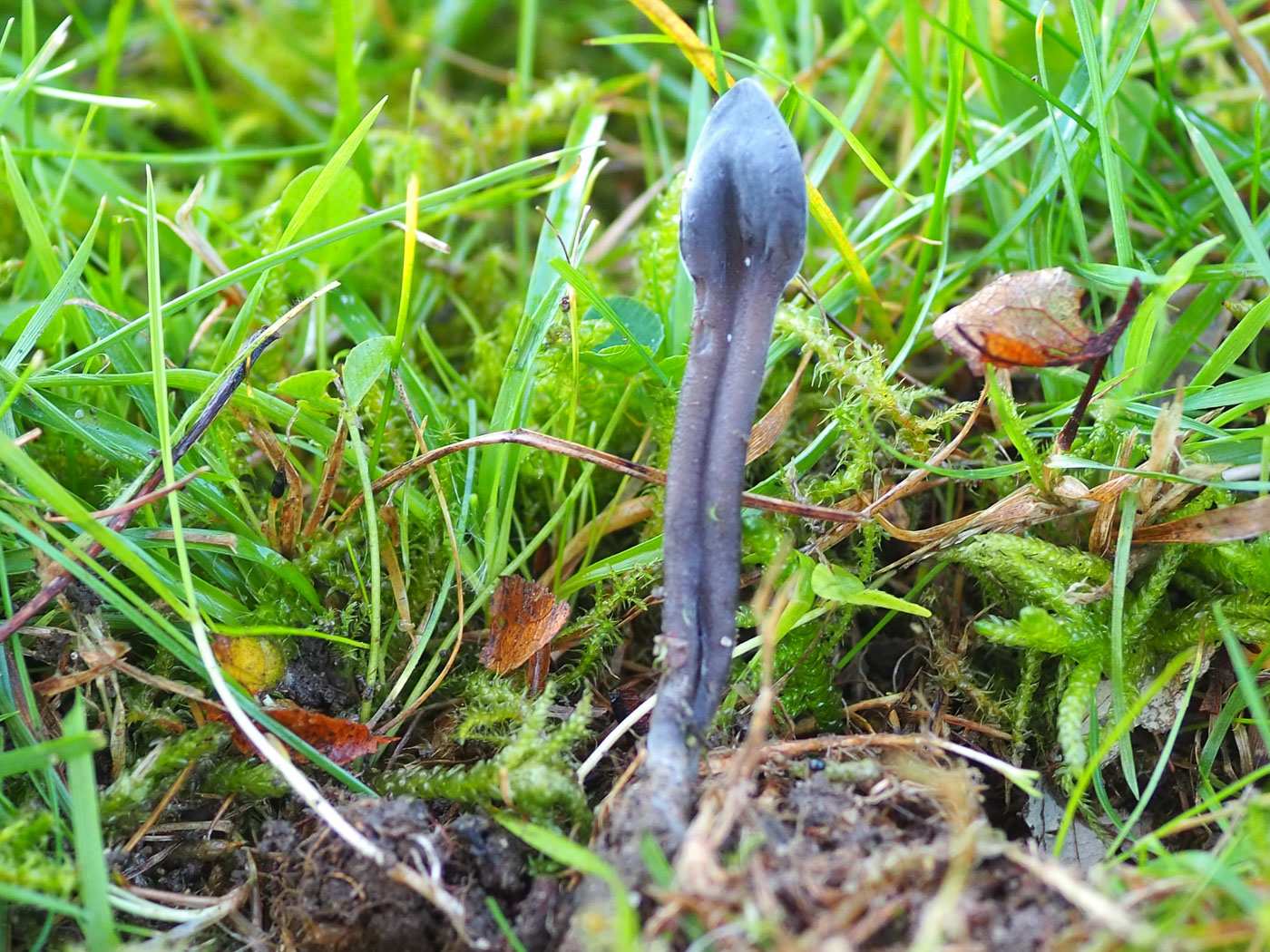 |
November 13th Trichoglossum hirsutum (Hairy Earthtongue) 
In Lane End churchyard John Catterson spotted just one of these grassland beauties - a black needle in a green haystack! Though we don't often find Earthtongues this is one of the commoner species (others mostly from the genus Geoglossum) and with a handlens can be recognised by the hairy surface of the stem which is clearly differentiated from the fertile head. It tends to grow singly rather than clustered, and our two other Finds entries are also from late November: 2020 November 20th and 2021 November 18th.
|
November 12th 2022
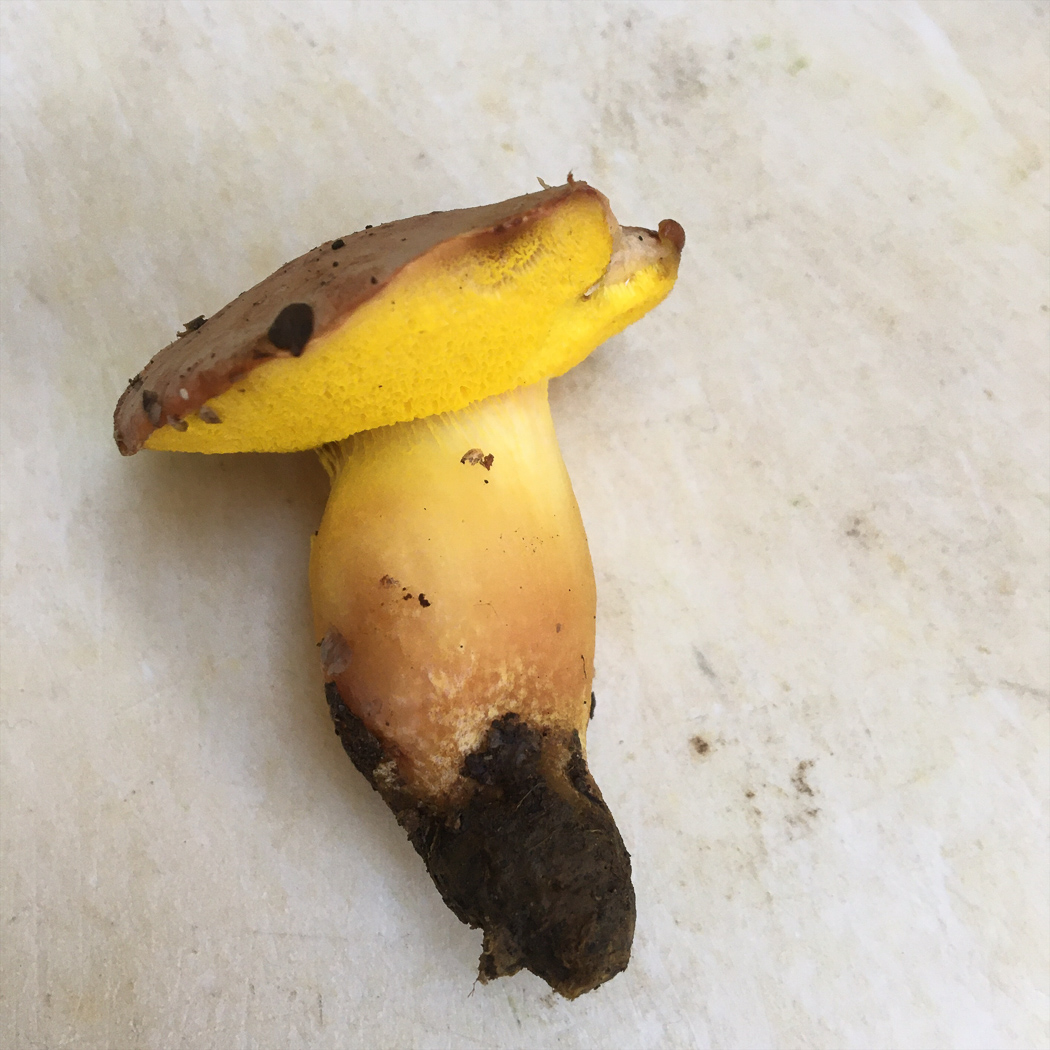
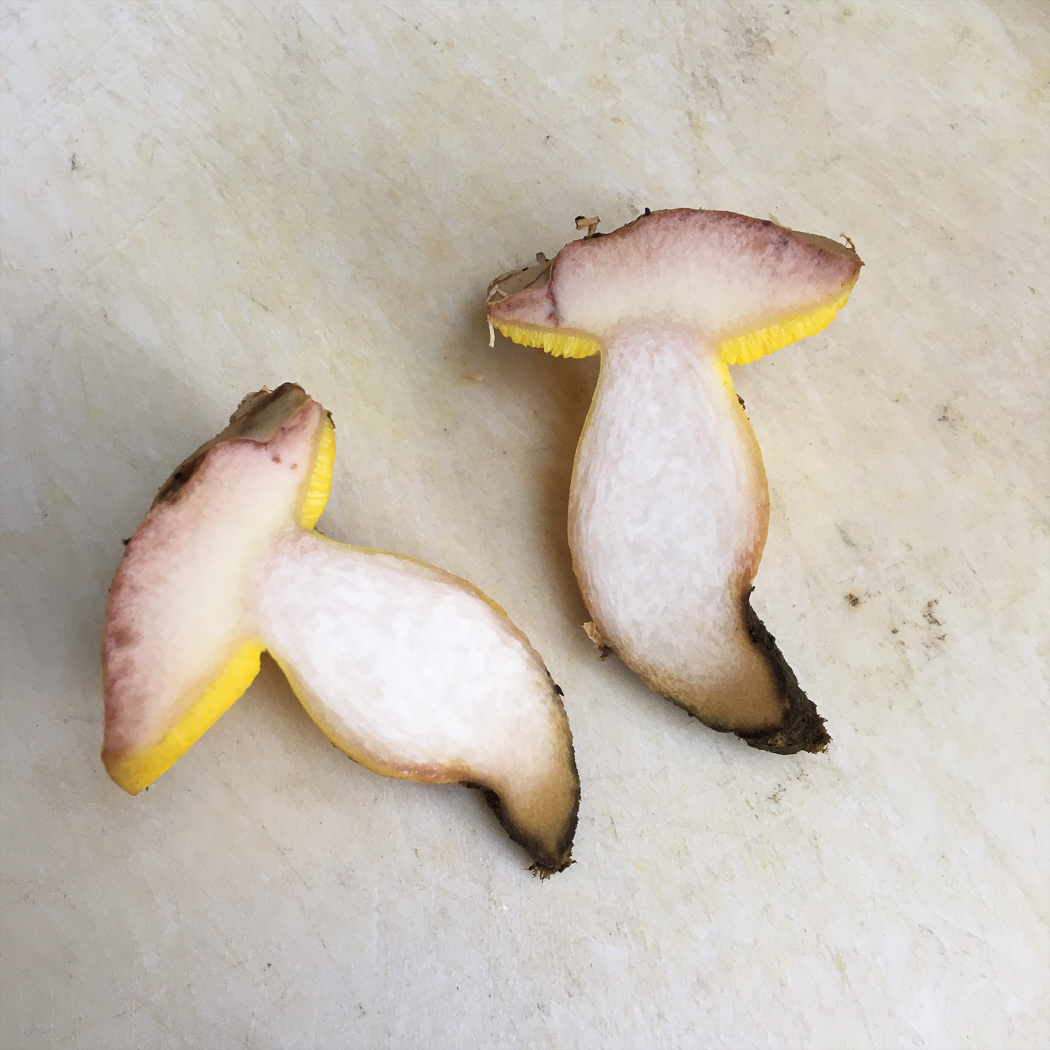 |
November 12th Aureoboletus gentilis (Gilded Bolete)
In Bernwood Forest Chris Grimbly found and identified this unusual and eye-catching species for which we have just a handful of records since 2000. It has a slightly sticky cap surface with pink tones, brilliant yellow pores and no part of the fruitbody stains blue when damaged - all features which help to identify it in the field.
|
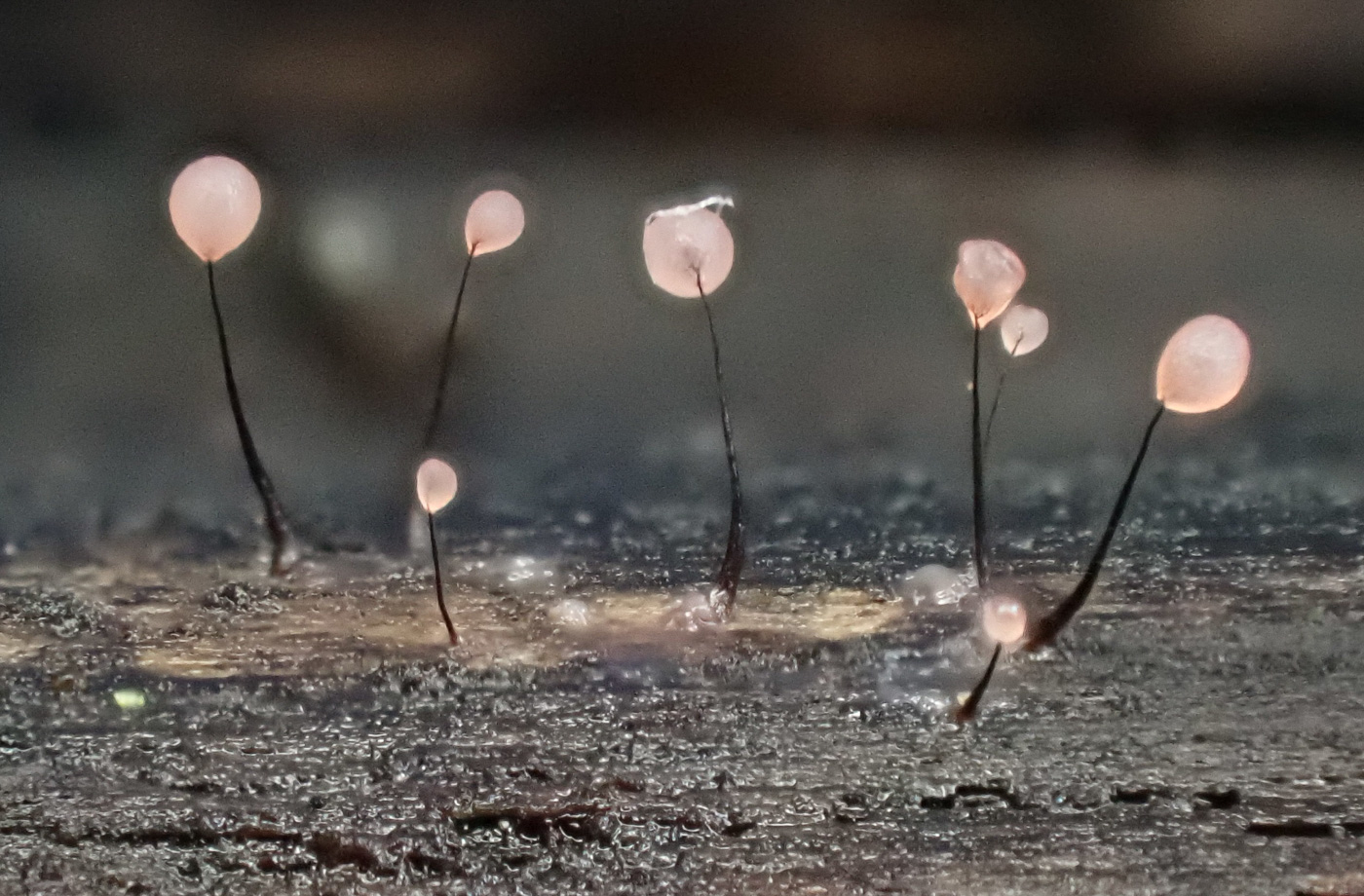
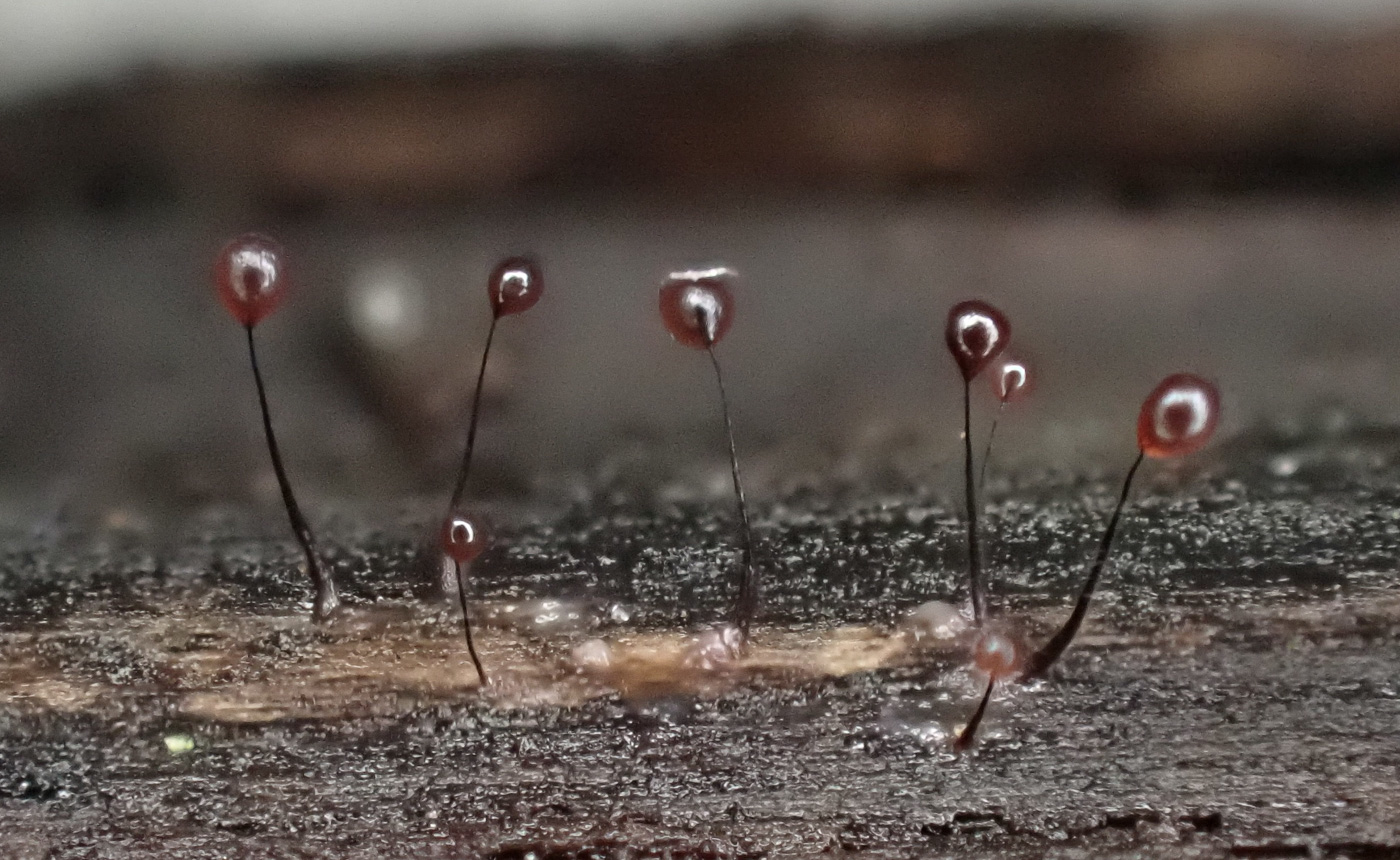
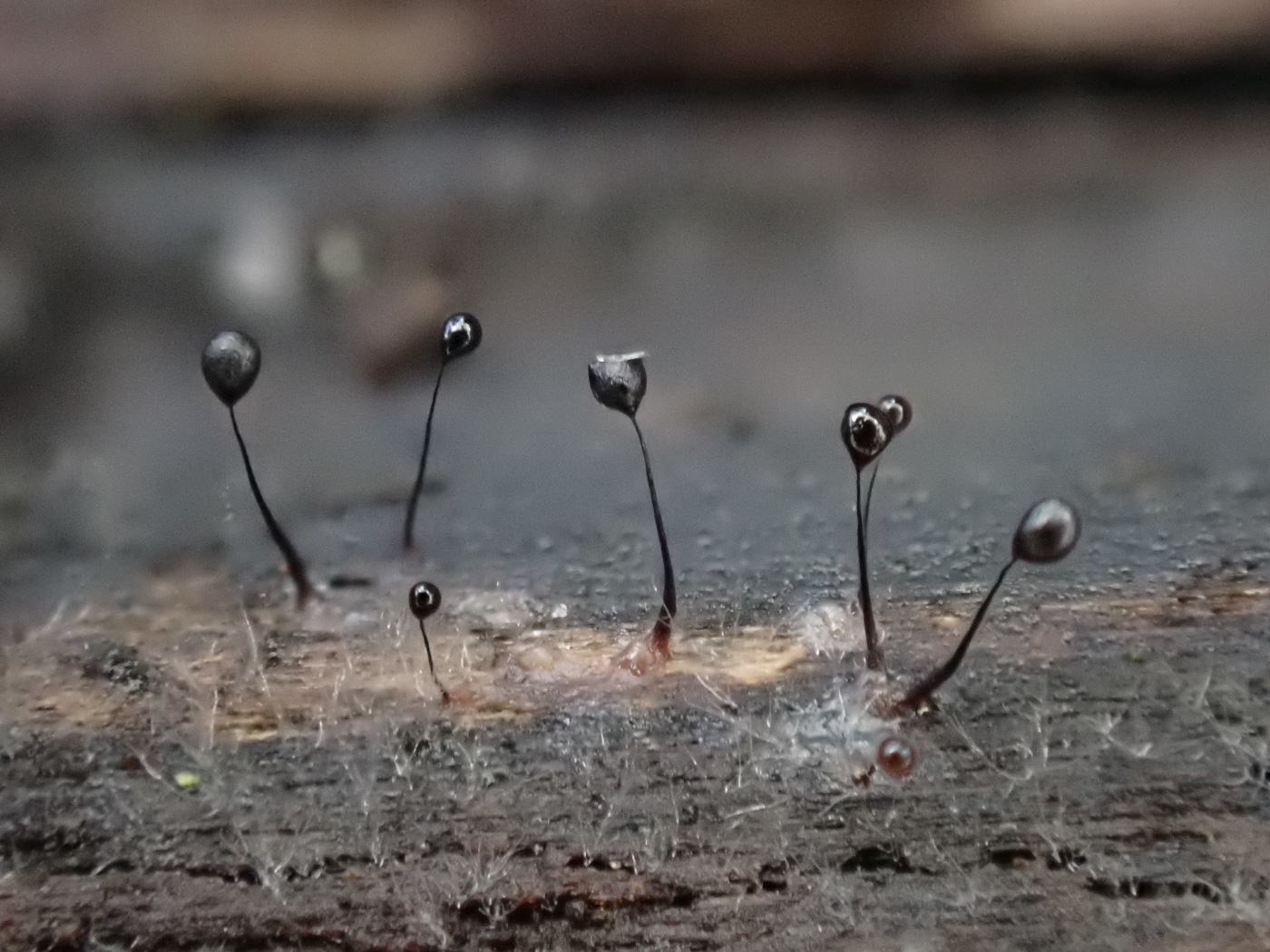 |
November 12th Comatricha nigra (a slime mould with no common name)
In Rushbeds Wood on our BFG Walk Stephen Plummer spied this tiny slime mould on a damp bare stick. It was still at the immature pink-headed stage, so he took it home taking a shot straight away, another that evening, then a third the following morning when the tiny heads had matured to black, hence images of all three colour stages seen here. This is a first for Finds though there is a superb image of the pink stage on Barry's separate slime moulds page on Finds.
|
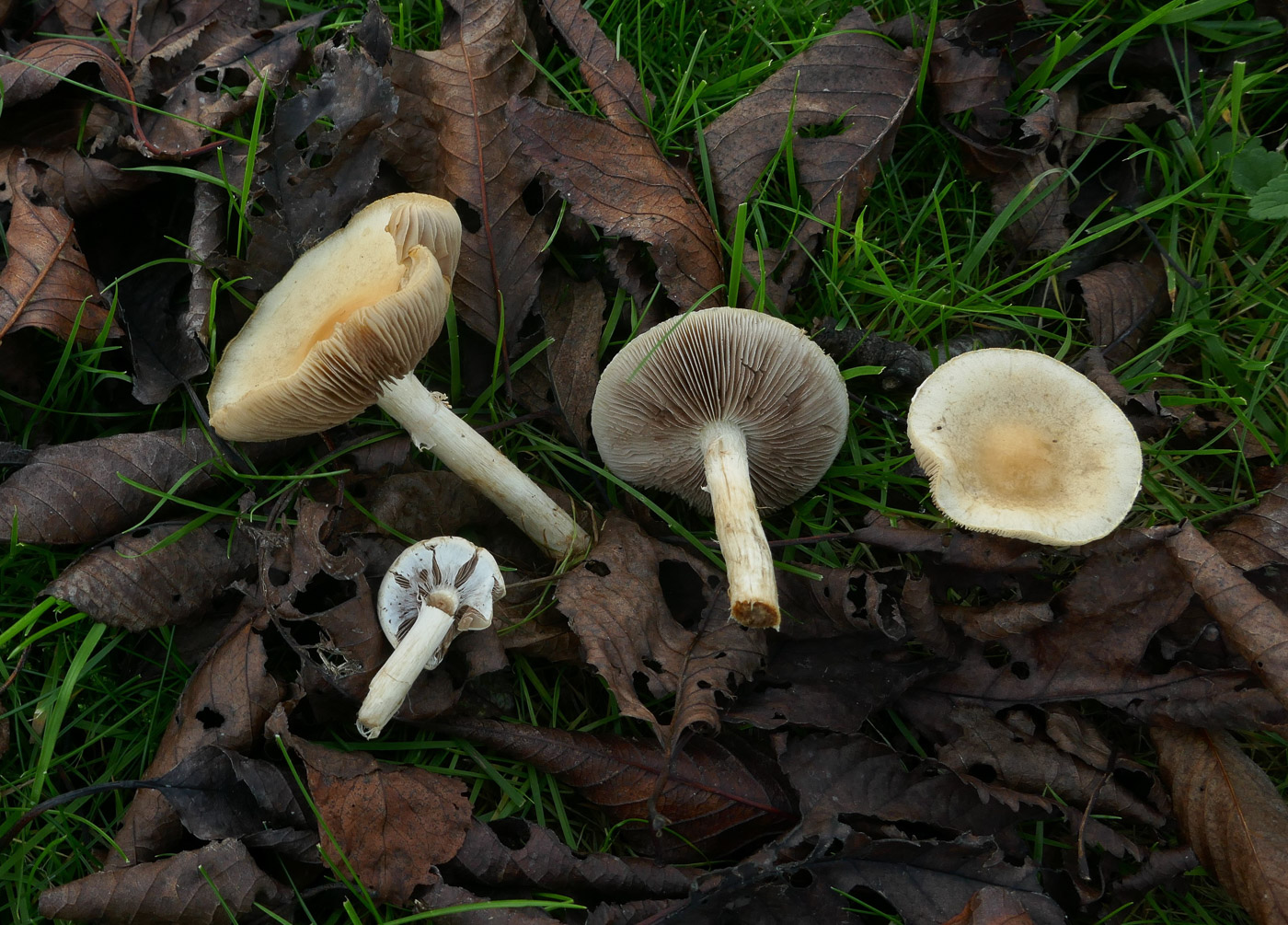 |
November 12th Agrocybe praecox (Spring Fieldcap) 
In an orchard at Stampwell Farm Jackie Ewan was a bit surprised to find this species which is a regular at this site during late Spring / early Summer. Presumably the mild conditions prevalent at the moment have persuaded it that it should be making an appearance now. The majority of our county records fall between May and July with just a couple in October, but this is a first for November. See the Masterlist for more images.
|
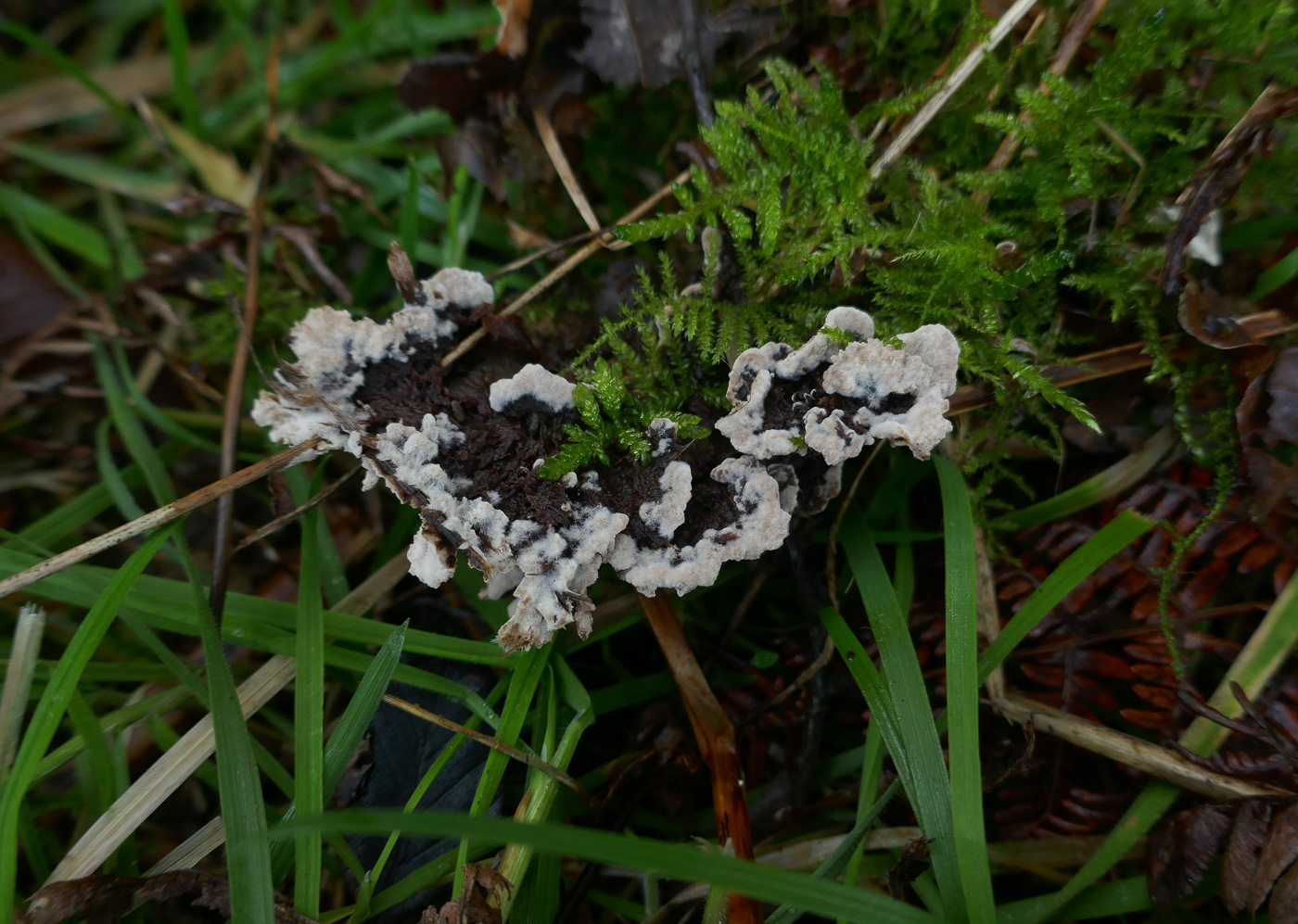
 |
November 12th Thelephora terrestris (Earth Fan) 
At Stampwell Farm Jackie Ewan spotted this quite unusual species amongst rotting stems on the ground. It forms flattish patches and when actively growing as here it has a white rim which also shows on the underside (photo 2). We have just one previous Finds entry: 2020 October 11th.
|
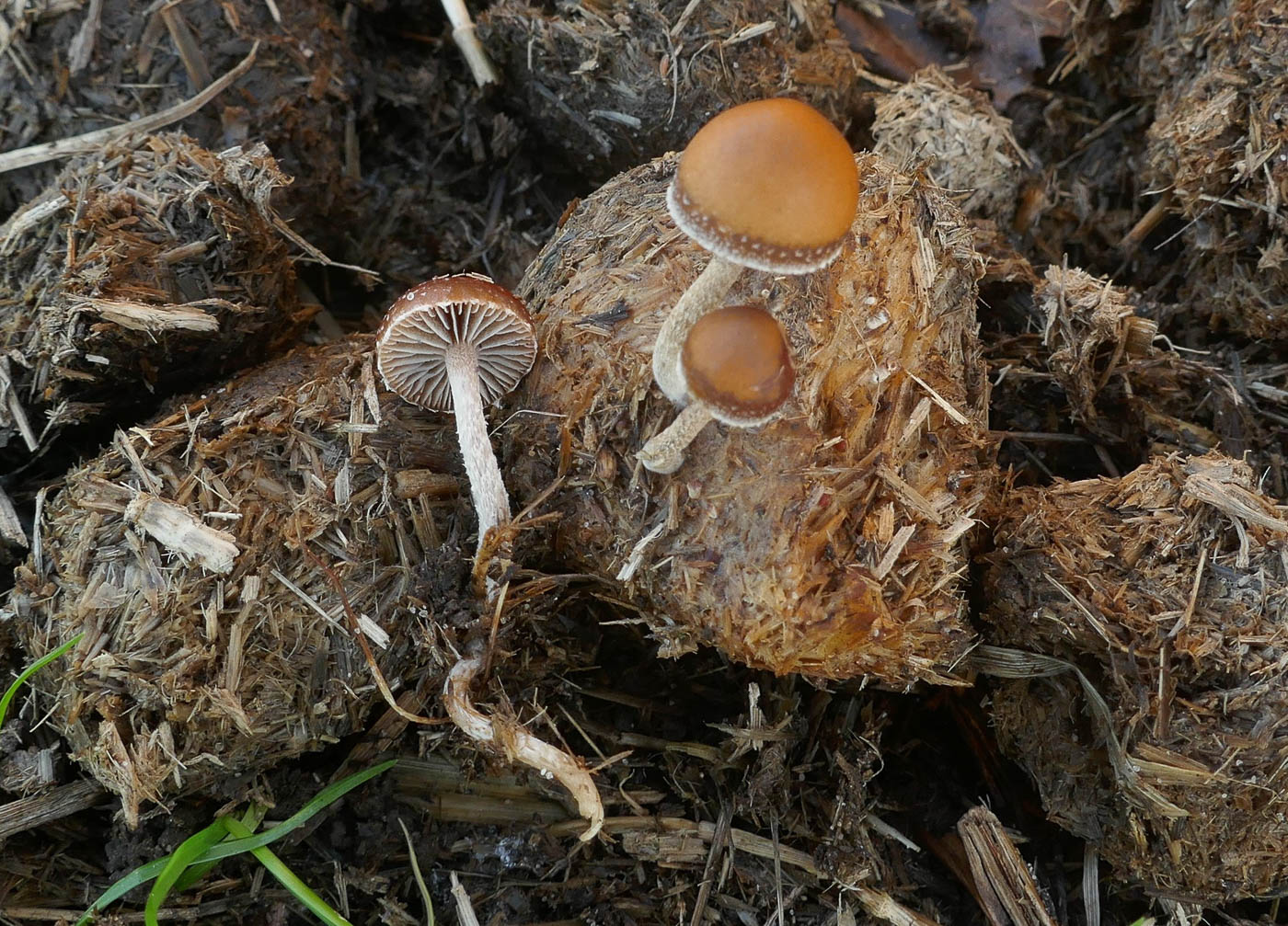 |
November 12th Deconica coprophila Dung Demon 
On a dung heat at Stampwell Farm Jackie Ewan found this little crop of attractive LBJs, previously in genus Psilocybe. (Incidentally the common name used here is not on the official English list and I suspect is the American name which may well be adopted onto our list at some stage.) Not rare, though exploring dung heaps and cowpats is not everyone's cup of tea so it probably goes unnoticed, this is a first for Finds.
|
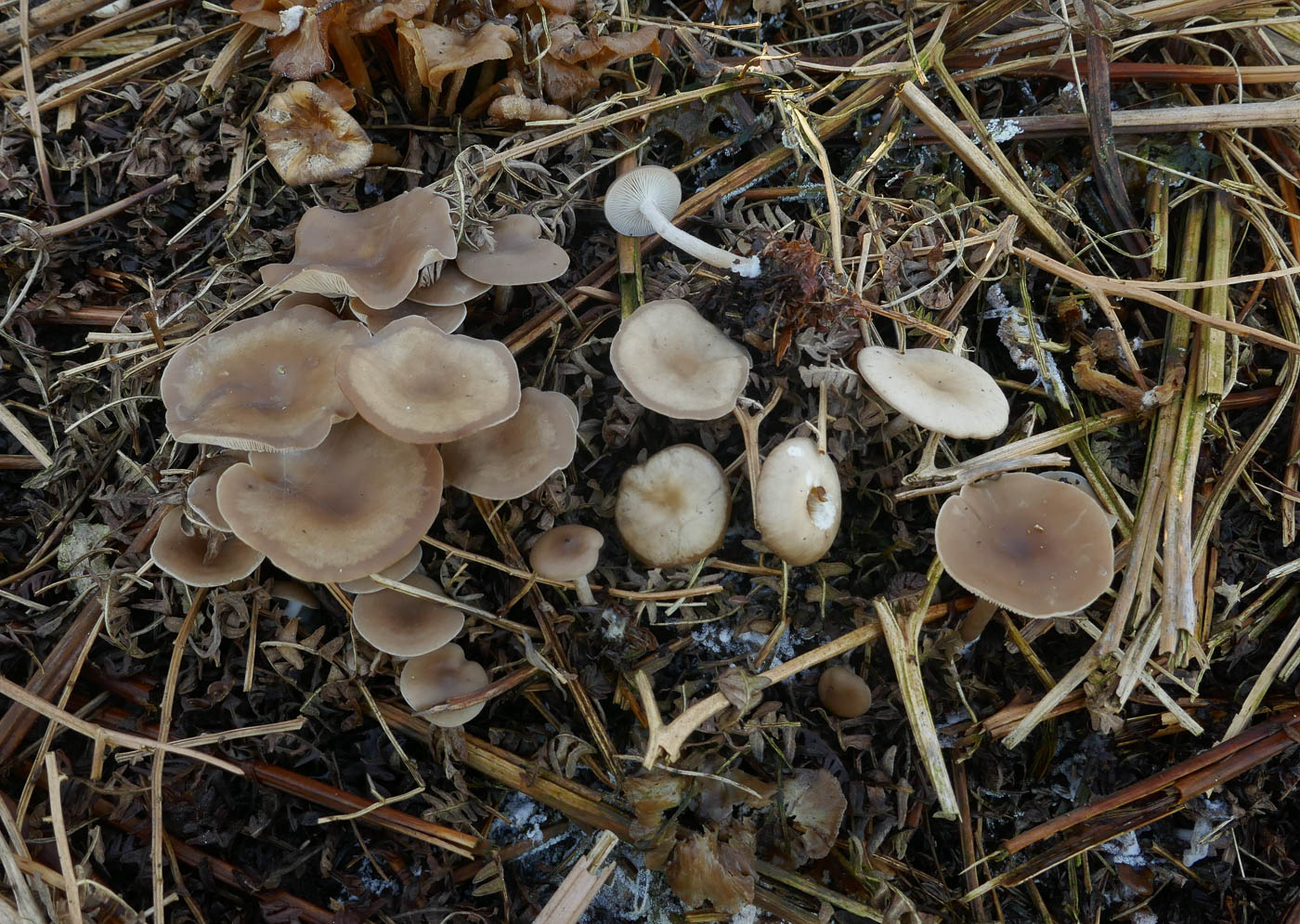 |
November 12th Clitocybe vibecina (Mealy Funnel) 
At Stampwell Farm on an old Bracken heap Jackie Ewan found this clump of Funnels, noticed their mealy smell and the sunken darker centre to the cap, then later checked the spore size to confirm their ID. There are several very similar Funnels which tend to fruit late in the season though only two with a distinct mealy smell, C. ditopus having smaller spores than Jackie found here. The species is a new entry for Finds.
|
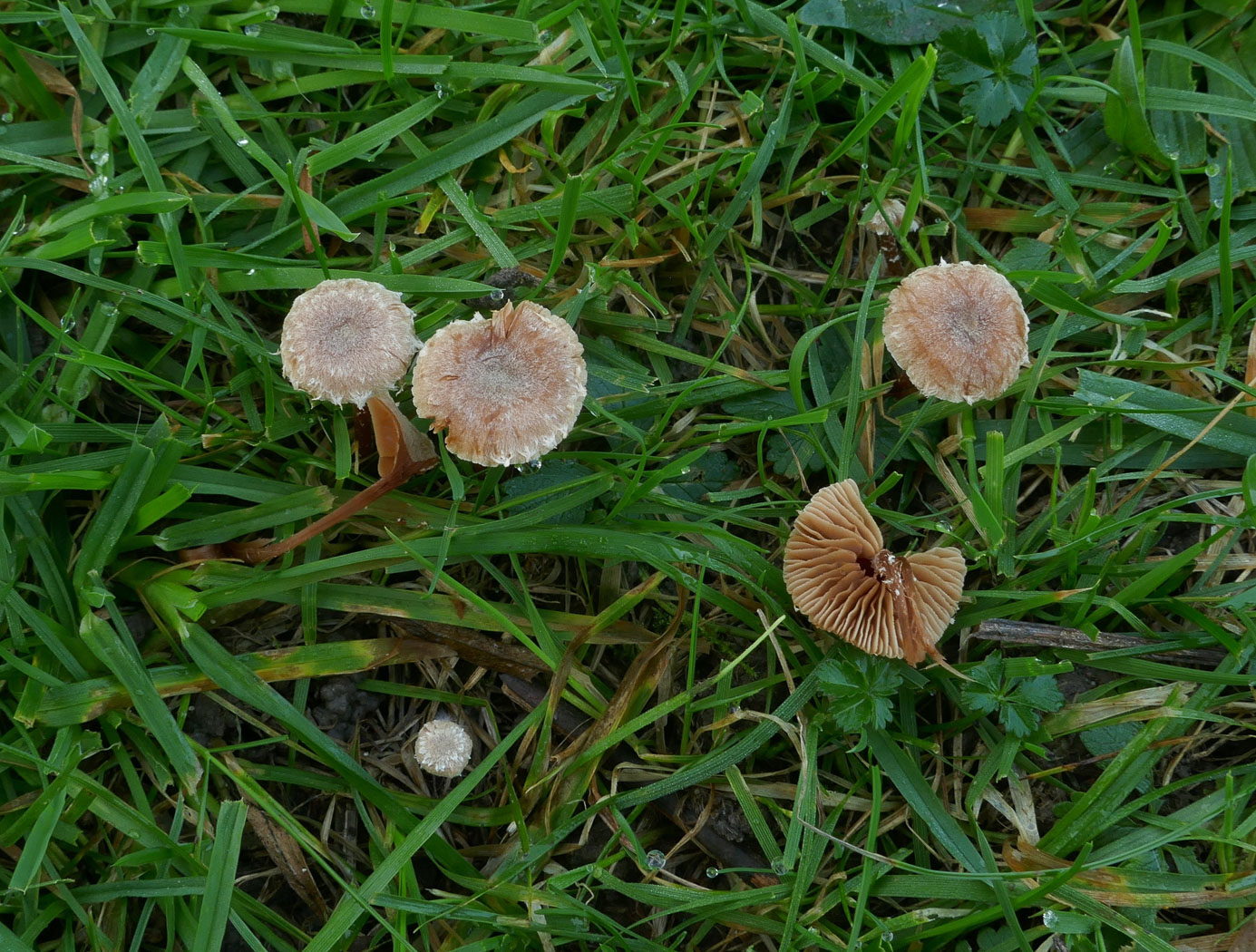
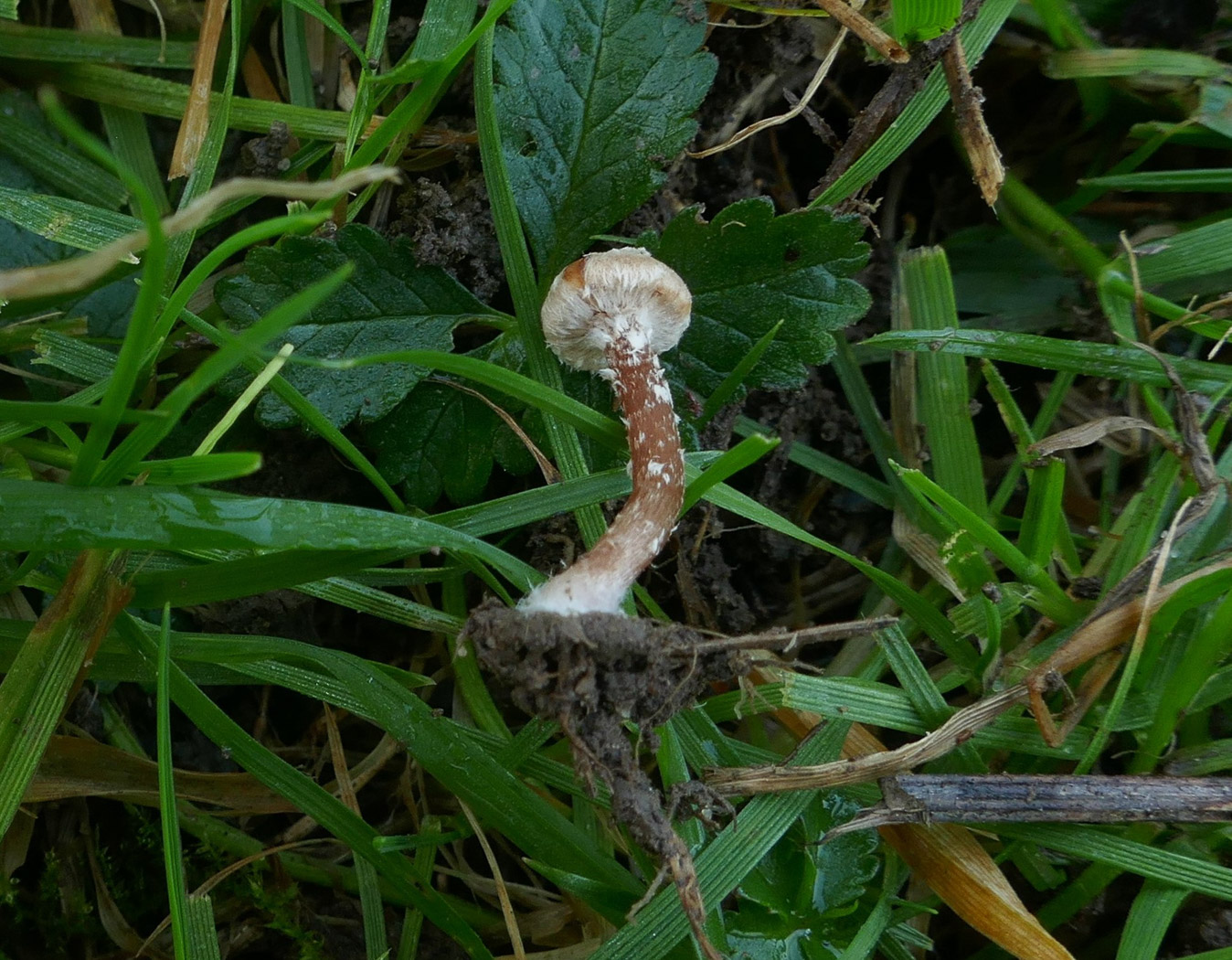 |
November 12th Tubaria conspersa (Felted Twiglet) 
At Stampwell Farm Jackie Ewan found this little group of Twiglets and suspected they were different from the very common T. furfuracea (Scurfy Twiglet) which we record very regularly. In that species the white scurfy bits are confined to the cap edge and it lacks the scaly stem of T. conspersa seen in photo 2. There are also microscopic differences. This is also common but may quite possibly be mistaken for T. furfuracea when we don't take enough care to observe it properly. it is new to Finds.
|
November 11th 2022
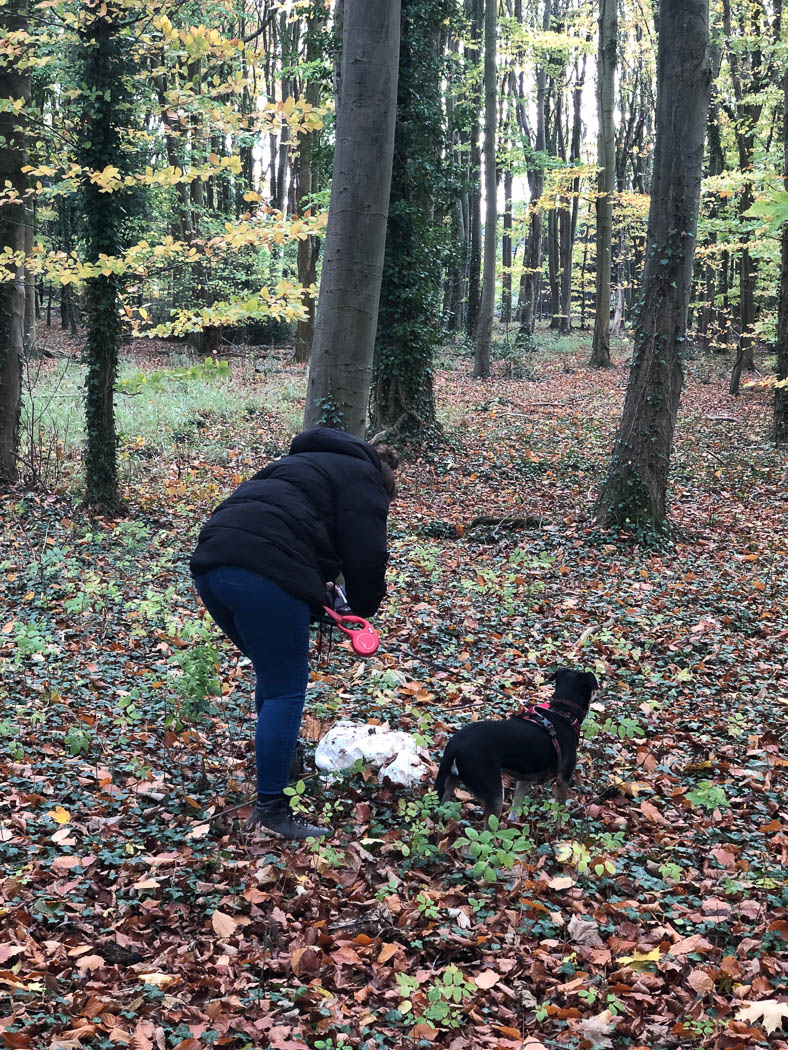 |
November 11th Calvatia gigantea (Giant Puffball)
Whilst walking in Halton Woods Paul Goby spotted this 'lump of polystyrene' over the fence and persuaded his daughter to clamber over and investigate! The mushroomy smell, white skin and context, also the spongy texture left little doubt that this was a Giant Puffball, about 30 cm across - the dog in his photo giving an idea of scale. Usually fruiting early in the season and in grassy places rather than woodland litter, this was an interesting find possibly reflecting the rather odd autumn fungal season so far this year. The species is by far the largest puffball, reaching anything up to twice this size if left to its own devices though the boots of small boys tend to find it irresistible! See also in Finds 2021 July 22nd.
|
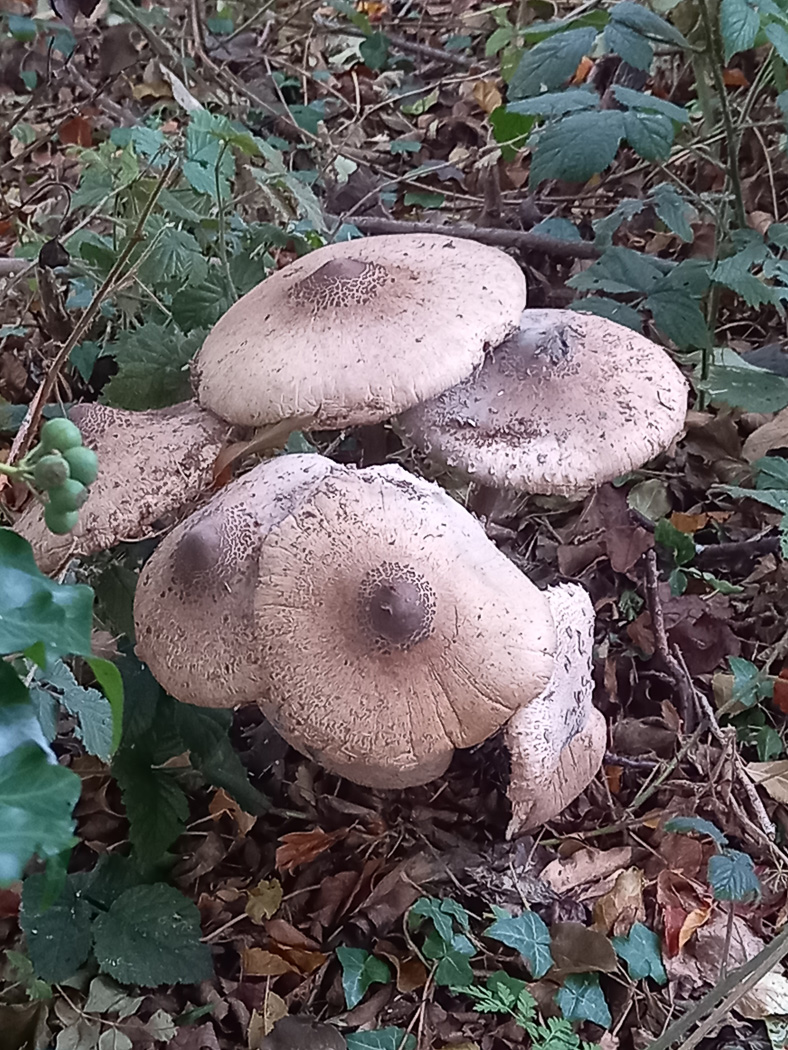
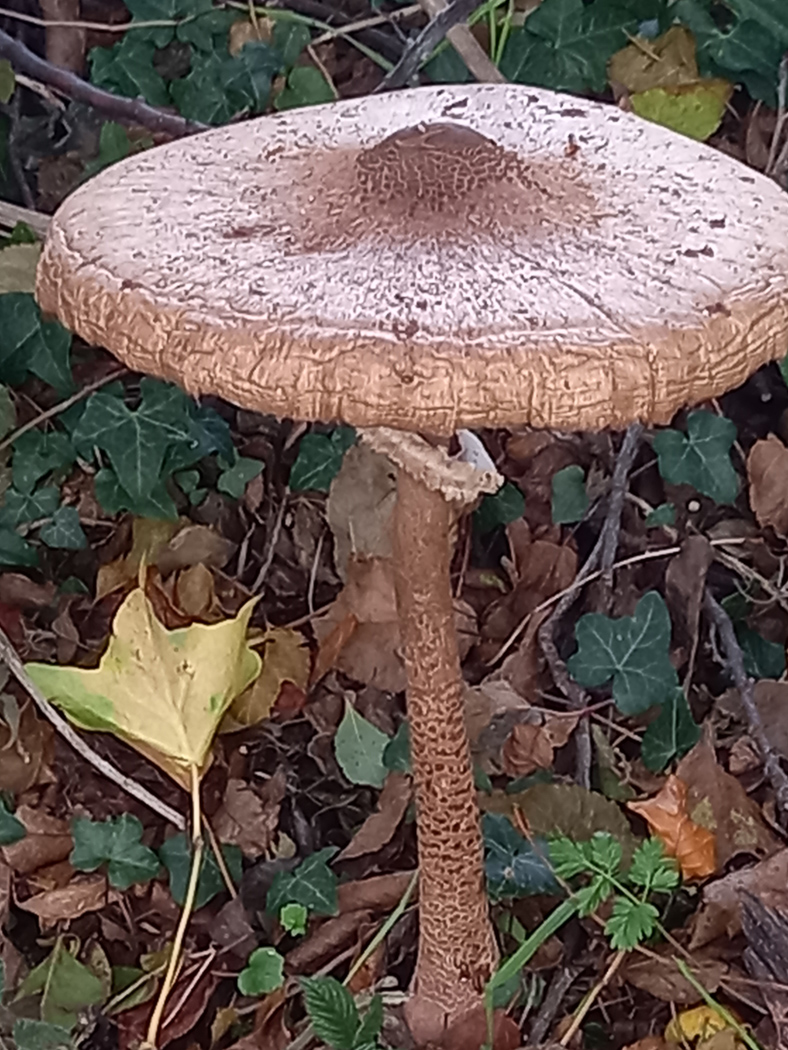 |
November 11th Macroleopiota mastoidea (Slender Parasol)
Adjacent to Captain's Wood near Chesham Greg Douglas found this group of Parasols, noted the snakeskin stem markings which eliminated Chlorophyllum rhacodes (Shaggy Parasol) and also noted the distinct central umbo which separates this species from other similar Parasols. Though these are rather dried-up specimens it is possible to see that the cap surface is considerably less scaly than in M. procera, and the clear raised umbo separates if from the otherwise quite similar M. konradii (though for many authors these two species are synonymised.) It is well worth comparing the various images on Finds of all three species - see the Masterlist for details.
|
November 10th 2022
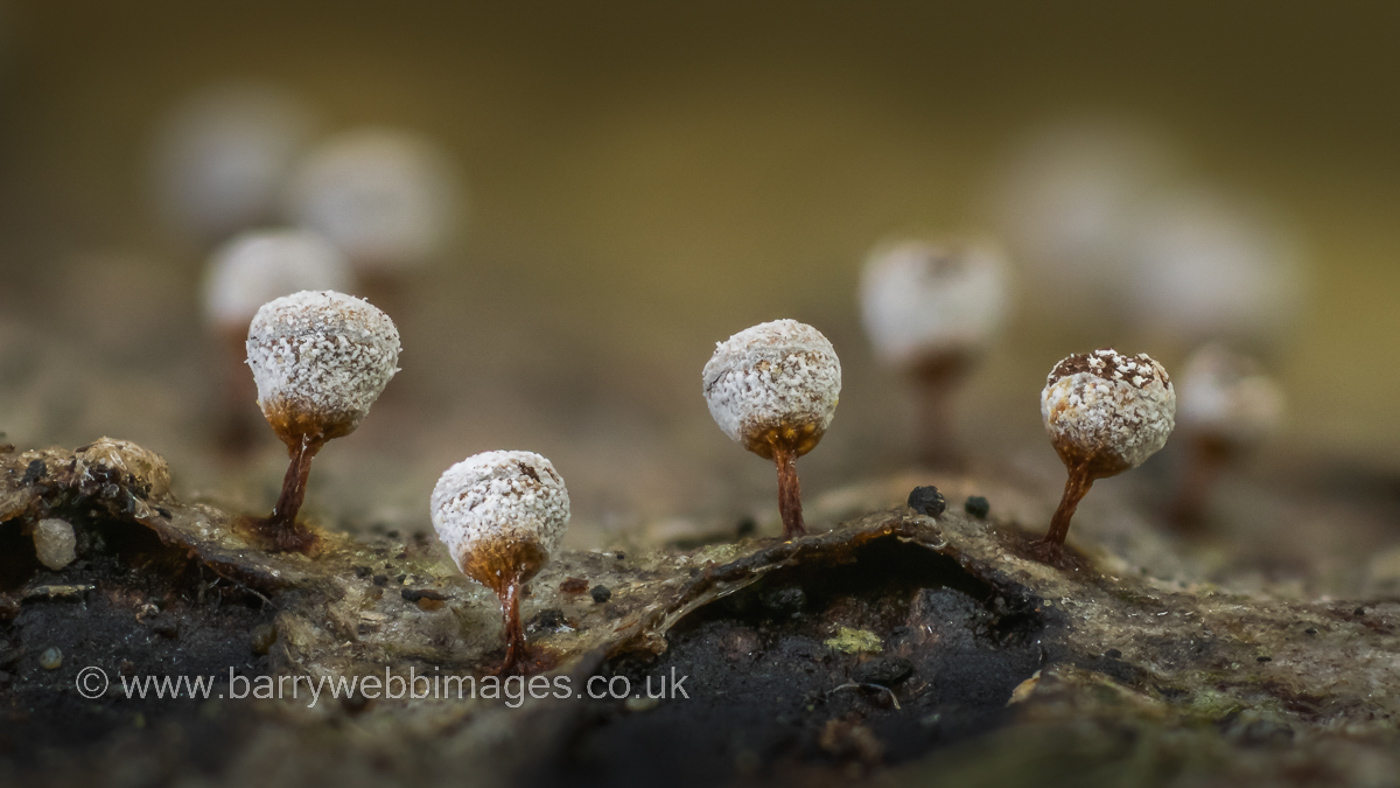 |
November 10th Craterium leucocephalum (a Slime Mould with no common name)
In Round Spring Wood, Dancersend, Barry Webb was delighted when Stephen Plummer found these tiny forms on wood because it was a species he'd never encountered before. The species is relatively rare and we have just one previous county record made by Myxomycete guru Bruce Ing in 1991 from Salcey Forest. As most of that area is in fact in Northants it is tempting to count this a a first for the county! It is certainly a first for Finds. The photo is, of course, Barry's.
|
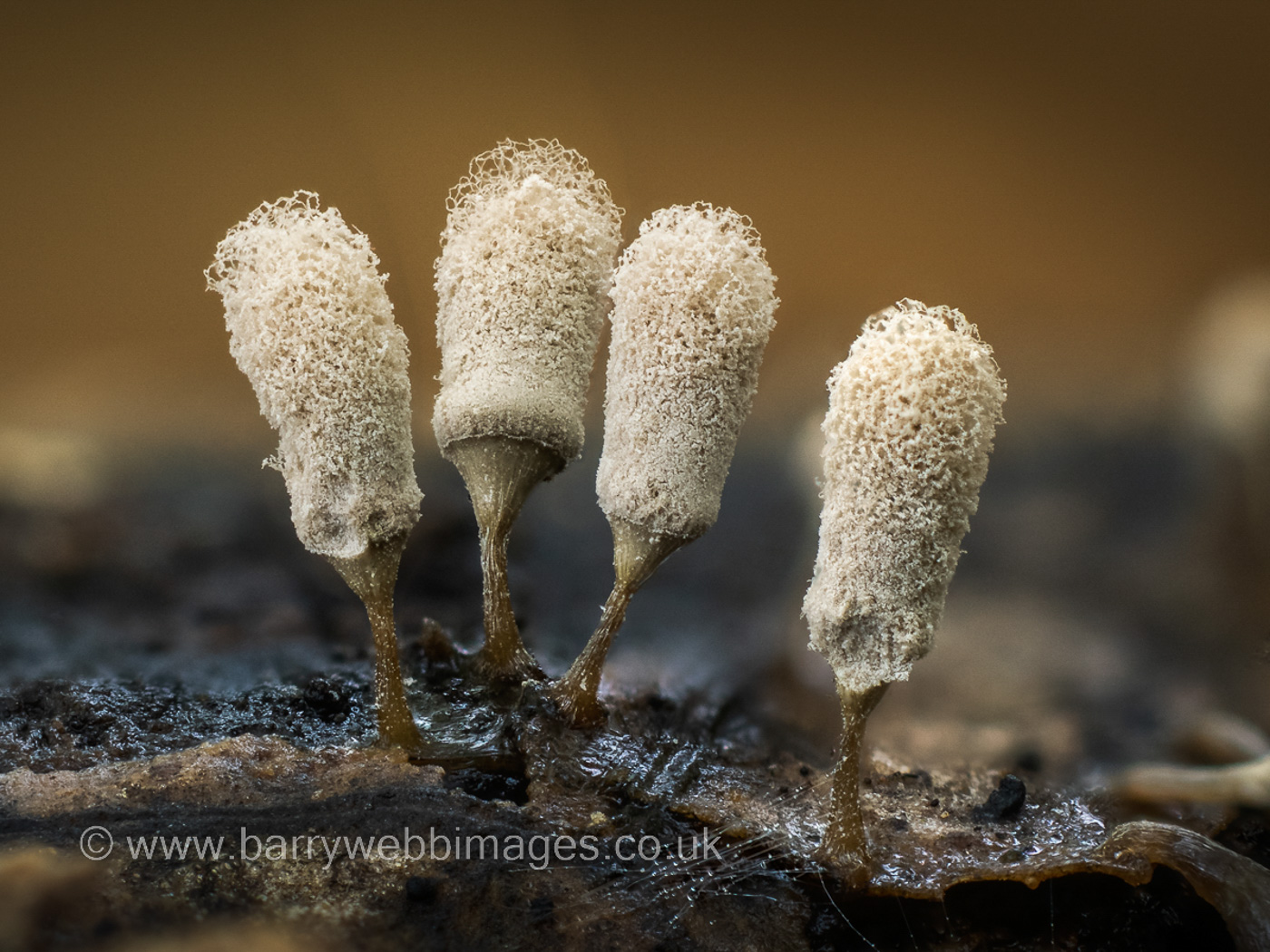 |
November 10th Arcyria cinerea (a Slime Mould with no common name)
In Round Spring Wood, Dancersend, Barry Webb found several Slime Moulds, this being one particularly photogenic little group. These are fully mature, past the slimy stage and like minature loofahs sitting on tiny cups, the whole probably less than 5 mm tall. There are many different species of Arcyria, this one being recognisable from its shape and colour. It appears to be a first for Finds though Barry's separate page has further examples.
|
 |
November 10th Auriscalpium vulgare (Earpick Fungus)
As we moved into an area of conifers at Round Spring Wood, Dancersend, warden Mick Jones handed Penny this exquisite little collection growing on an old mossy Pine cone. She'd never seen more than one specimen on a cone before so to find a cluster was quite special. The species is always a crowd pleaser with its tiny cap having fine teeth underneath in place of gills or pores. It is not uncommon given its specific host - old Pine cones - and we have just two previous entries in Finds: 2020 October 30th and 2021 May 10th. The photo here is Barry Webb's.
|
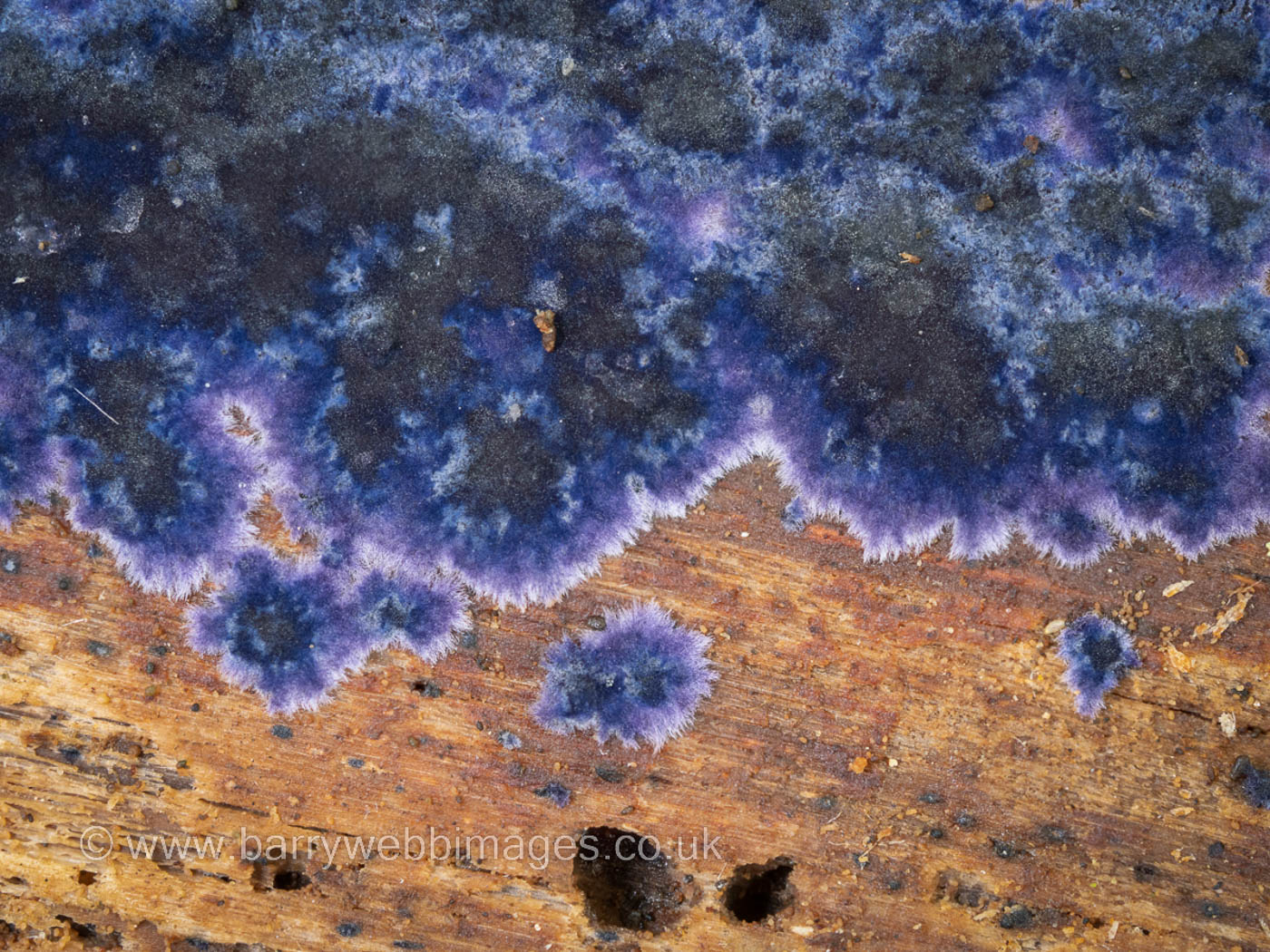 |
November 10th Terana caerulea (Cobalt Crust)
As we entered Round Spring Wood, Dancersend, one of the first things found was this beautiful and striking corticioid species with its unique deep blue colour. It occurs of various different deciduous woods, here probably on Beech, and is considered quite rare. We have a handful of sites where it has been recorded previously, Dancersend being one of them, but it is always a treat to see. For several today it was their first experience of it. We have just one previous entry on Finds, earlier this year on January 28th. The close-up photo today is Barry Webb's.
|
 |
November 10th Henningsomyces candidus (White Tubelet)
On the underside of a fallen branch at Round Spring Wood, Dancersend, a swarm of these tiny white tubes was spotted. A handlens is needed to be able to see their perfect shape because each tube is less than 1mm tall. Though easily overlooked it is not common but is clearly actively growing at the moment because we also found it on our Rushbeds walk a couple of days later. The photo is Neil Fletcher's. See also Finds 2020 October 7th.
|
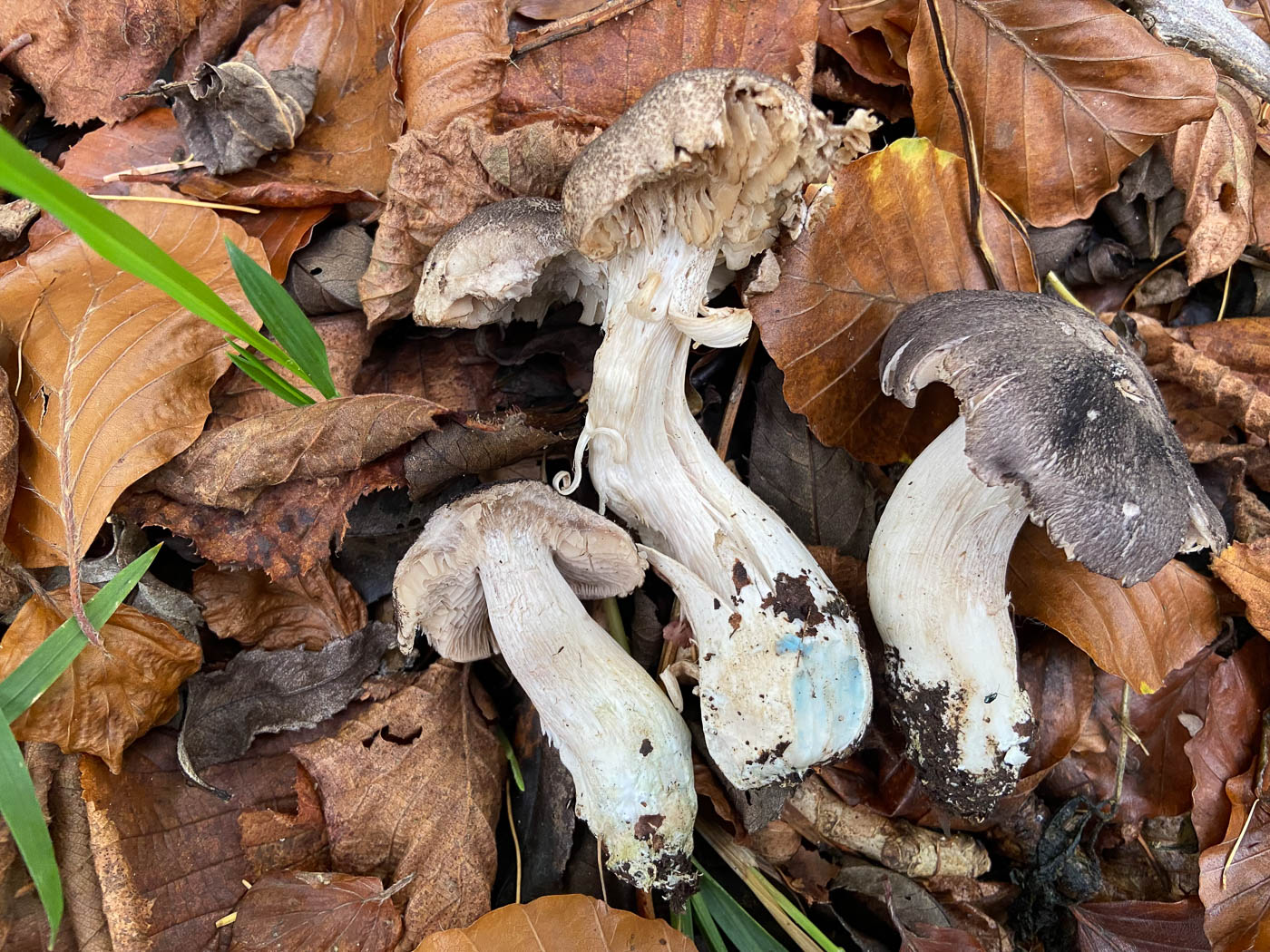 |
November 10th Tricholoma orirubens (a Knight with no common name)
In Round Spring Wood, Dancersend, warden Mick Jones was keen to show us this species which he'd found here recently amongst the Beeches and wanted identified. On collection we scratched the stem and waited for a few minutes before the telltale blue staining appeared towards the base, a clear sign of T. orirubens which otherwise is almost identical to T. atrosquamosum, one of the many grey species of Knight which can be tricky to name to species. The species is not that common and is a new one for Finds, the photo being Sarah Ebdon's.
|

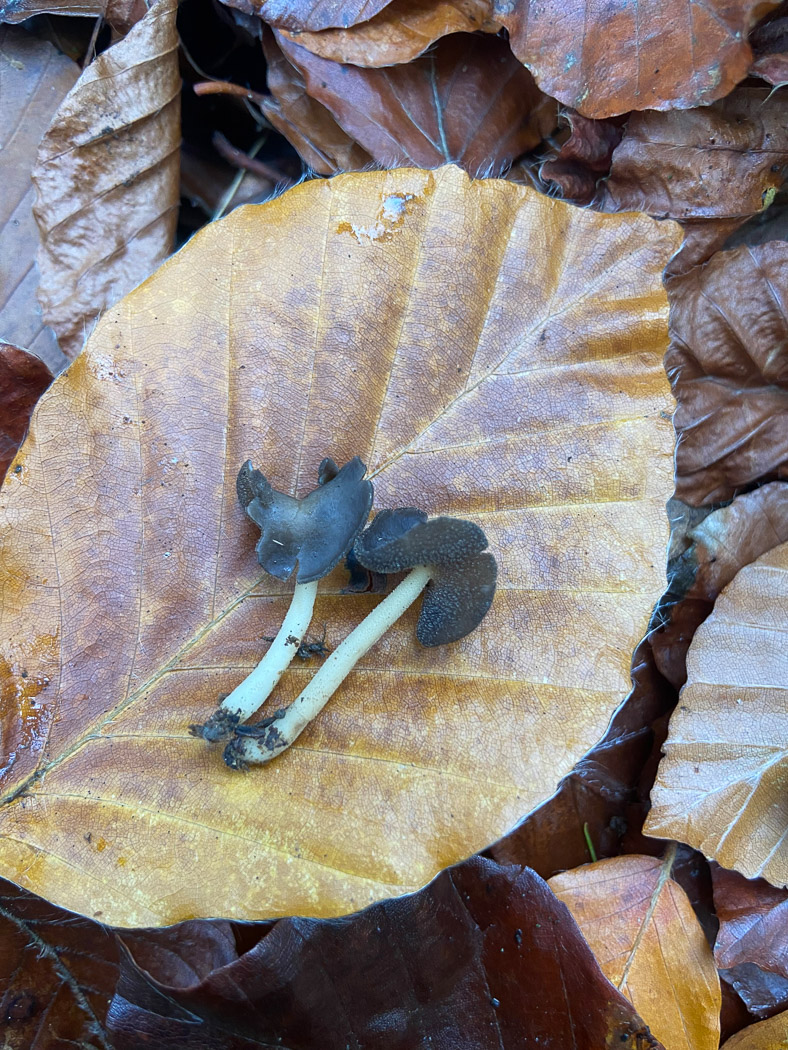 |
November 10th Helvella cf ephippium/sublicia (a species of Saddle) 
In Round Spring Wood, Dancersend, in the Beech litter we found this small Saddle, clearly different from the two much more common Saddles which both have a strikingly ridged stem. The specimens stood less than 3 cms tall (this can be gauged by the Beech leaf on which they were placed for photo 1 - taken by Neil Fletcher), the stems were smooth and the underside was finely downy / hairy. After sequencing showed it to have no close matches and only a 95% match to the rare Helvella ephippium (hence the 'cf' in the title, sublicia being the latest name for the species) the specimen was sent first to Kerry Robinson, then to Paul Cannon for expert help, and is now in the Kew Fungarium. More material is needed to take this further but it could possibly be an undescribed cryptic species. Photo 2 is Sarah Ebdon's.
|
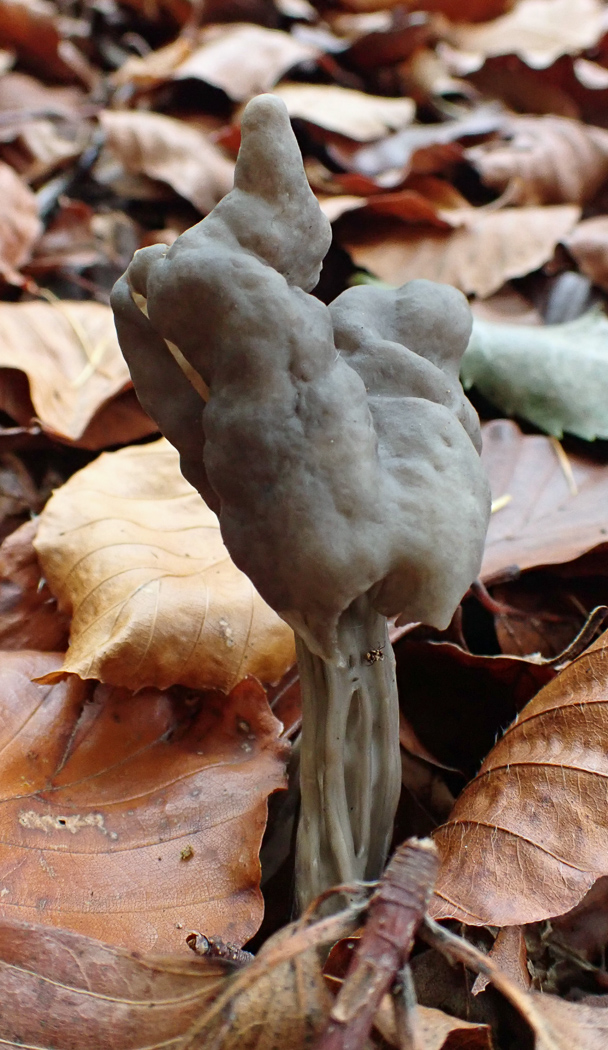
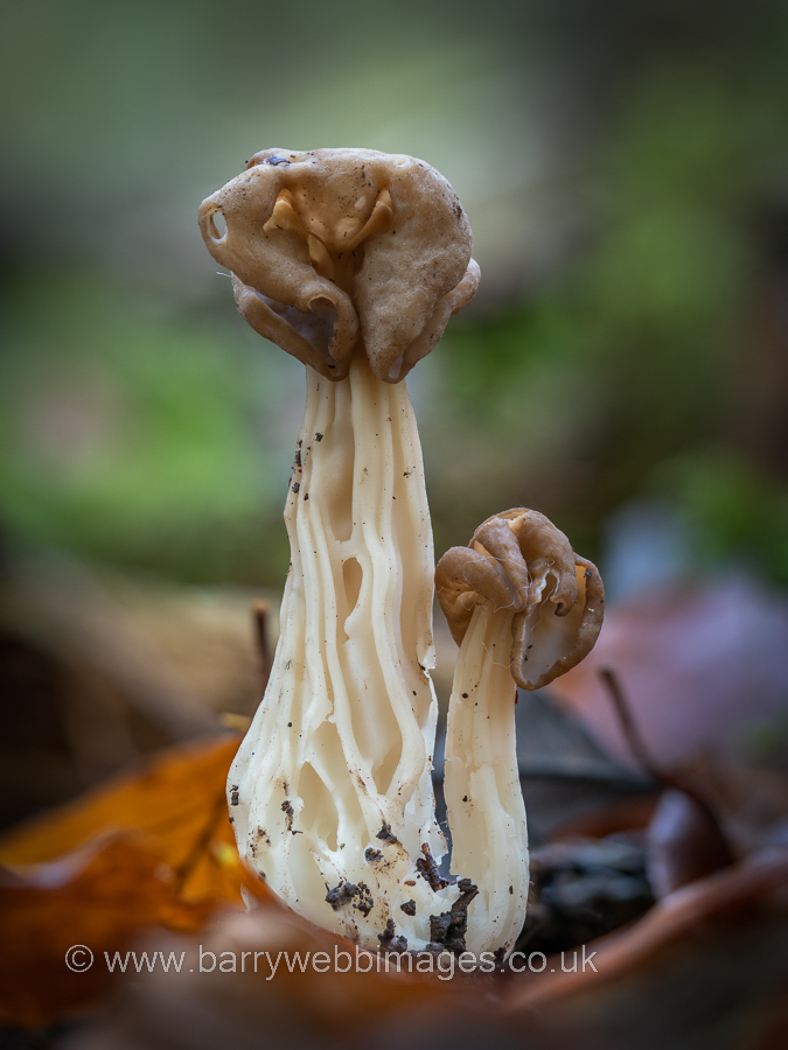 |
November 10th Helvella lacunosa (Elfin Saddle)
In Round Spring Wood, Dancersend, in the Beech litter we found several examples of this fairly common species which were typically dark grey with the strongly ridged stem (as in photo 1 taken by Neil Fletcher), but then came across a pale brown specimen with a white ridged stem (photo 2 by Barry Webb) which it was hard to accept was the same species and will therefore be sequenced on the offchance that it might be something much less common. See the Masterlist for various other images of the species, none of which display the features of our photo 2.
|
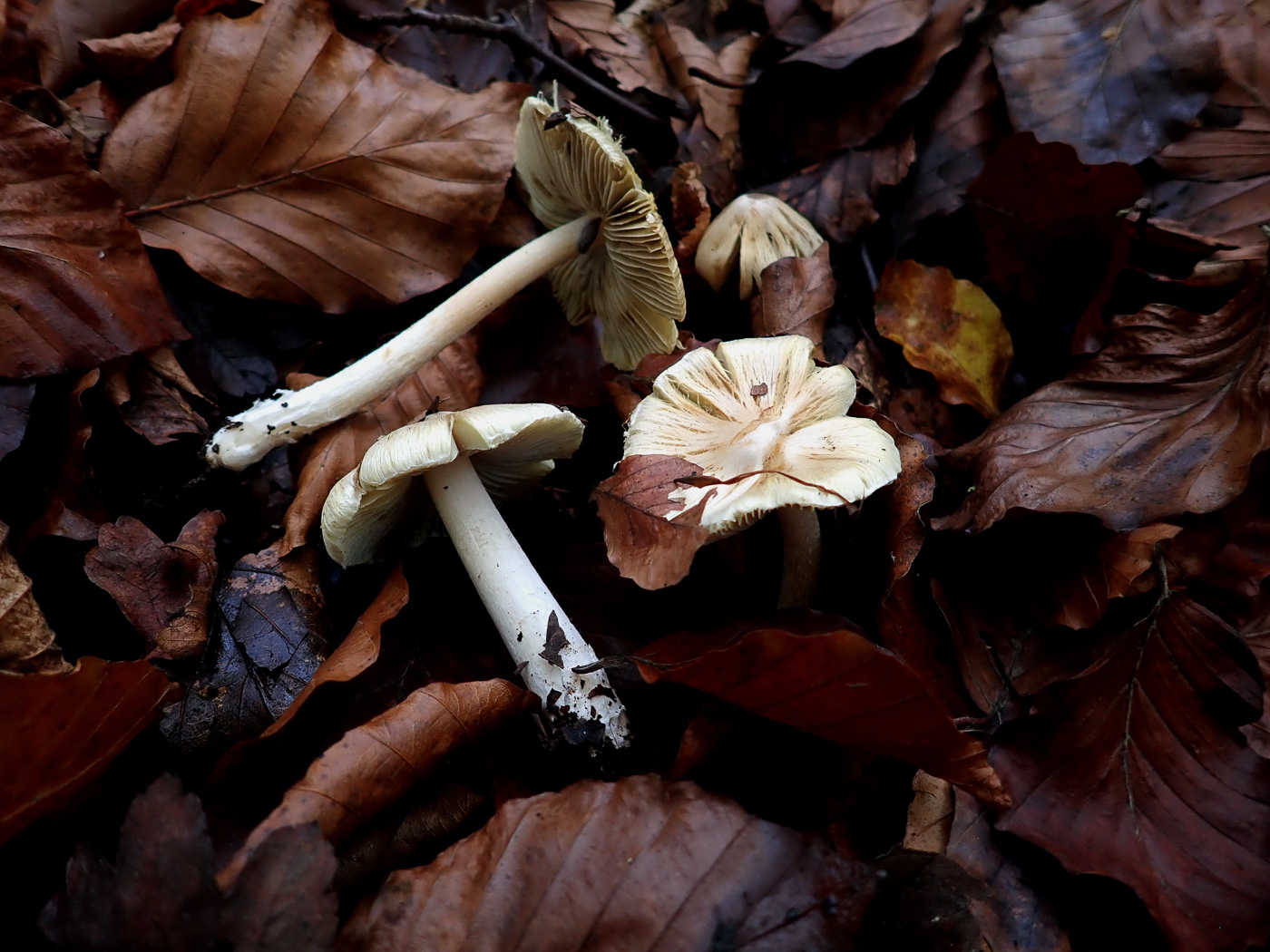 |
November 10th Pseudosperma rimosum (Split Fibrecap) 
In Round Spring Wood, Dancersend, we found this group of a species previously known as Inocybe rimosa (the ID and photo is Penny's). It is one of the commoner Fibrecaps and is usually pale with a distinct umbo, the typical acidic to spermatic smell associated with many Fibrecaps, and a cap which often splits near the edge as can be seen here. It occurs under many different trees but nearly always needs checking microscopically to be sure of its identity. It is new to Finds though we do have an image of the very closely related P. umbrinellum which has a darker cap. See Finds 2022 September 27th for comparison.
|
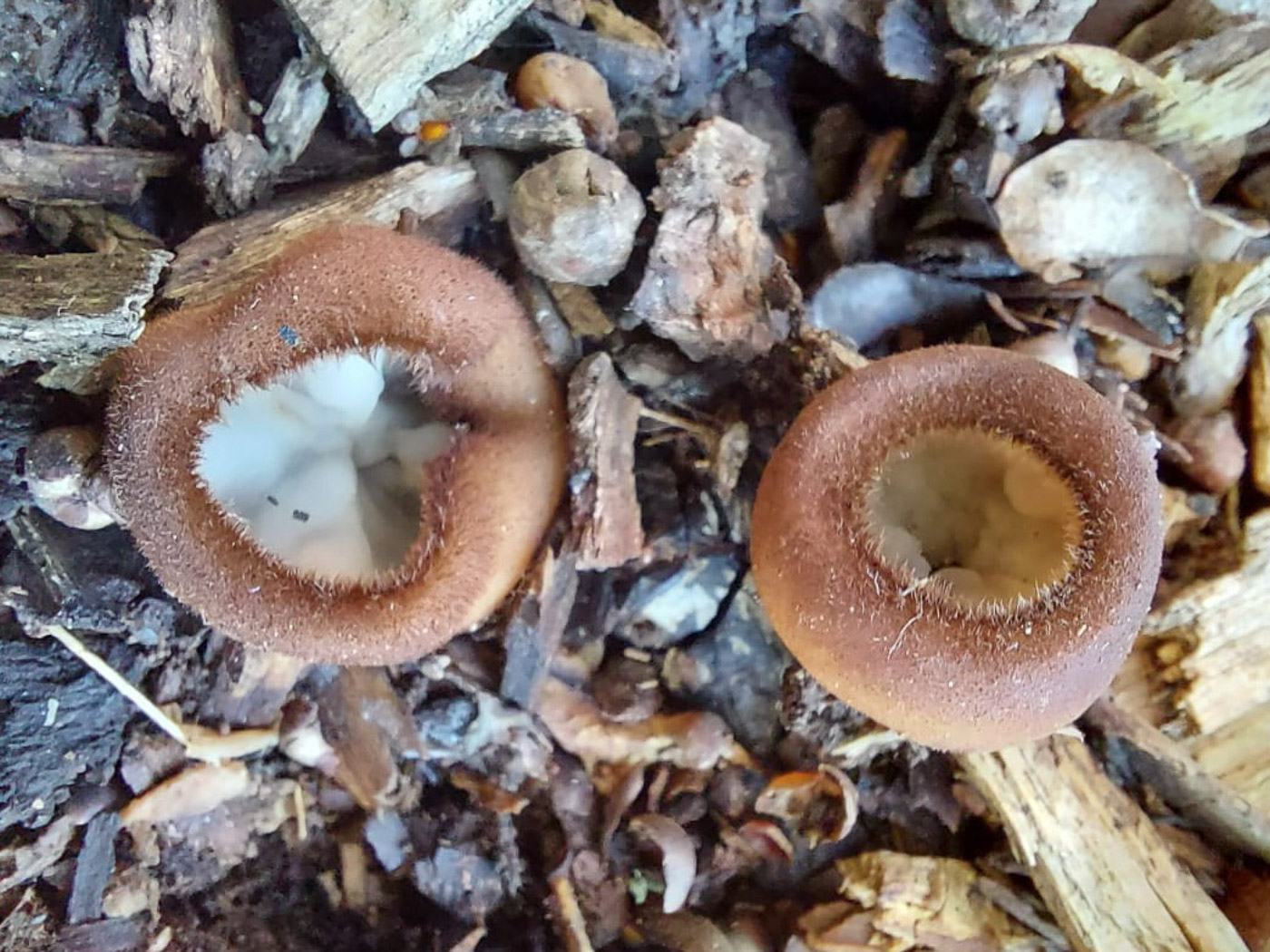
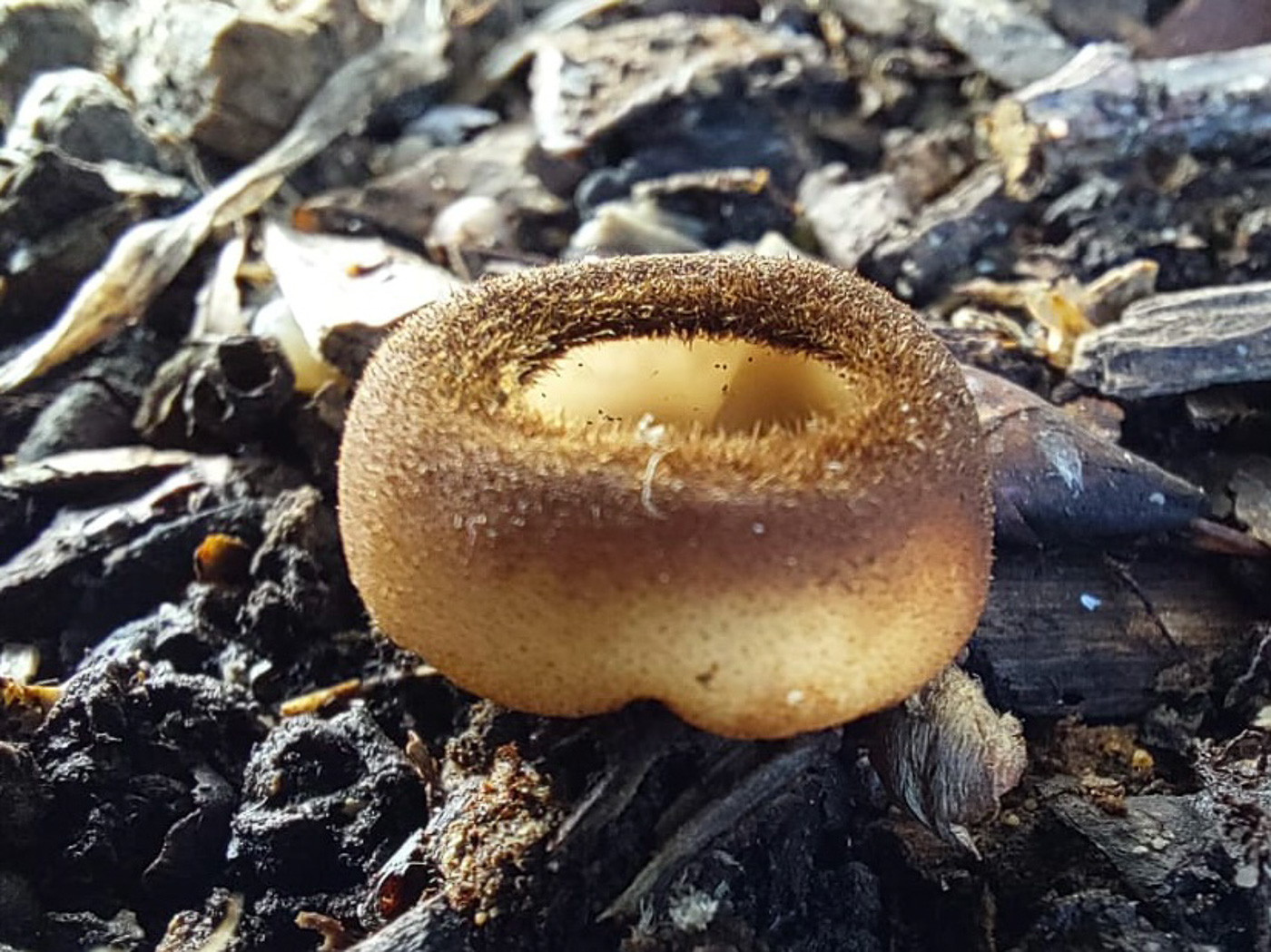 |
November 10th Humaria hemisphaerica (Glazed Cup) 
At Stoke Poges Memorial Gardens Sarah Ebdon found this attractive Ascomycete in woodchippings under Oak. Having found another of this genus new to the UK at Dancersend a few weeks earlier (see on October 12th) she was pleased to be able to compare the two species including their microscopy. Today's species is not rare though we don't find it that often, but it's quite an easy one to recognise because the dark brown coating of hairs on the outer surface mark it out as different from other similar cups and are also feature in H. solisequia just mentioned though that species is a very different colour. We have two previous Finds entries: 2020 September 11th and November 21st.
|
November 8th 2022

 |
November 8th Hemimycena tortuosa (Dewdrop Bonnet) 
On a log pile of fallen Pear in his garden in Burnham Russell Ness found several specimens of this minute white Mycenoid species which favours damp deciduous logs. The first indication that you have this species rather than any other (there are many such to be found on wood) are the moisture droplets which tend to get trapped by the cells on the surface of the mushroom, some of which form unique miniscule corkscrews which Russell managed to locate with a scope. The species is not rare but easily overlooked or mistaken for some other white Mycenoid. We have one previous entry in Finds: 2020 December 23rd.
|
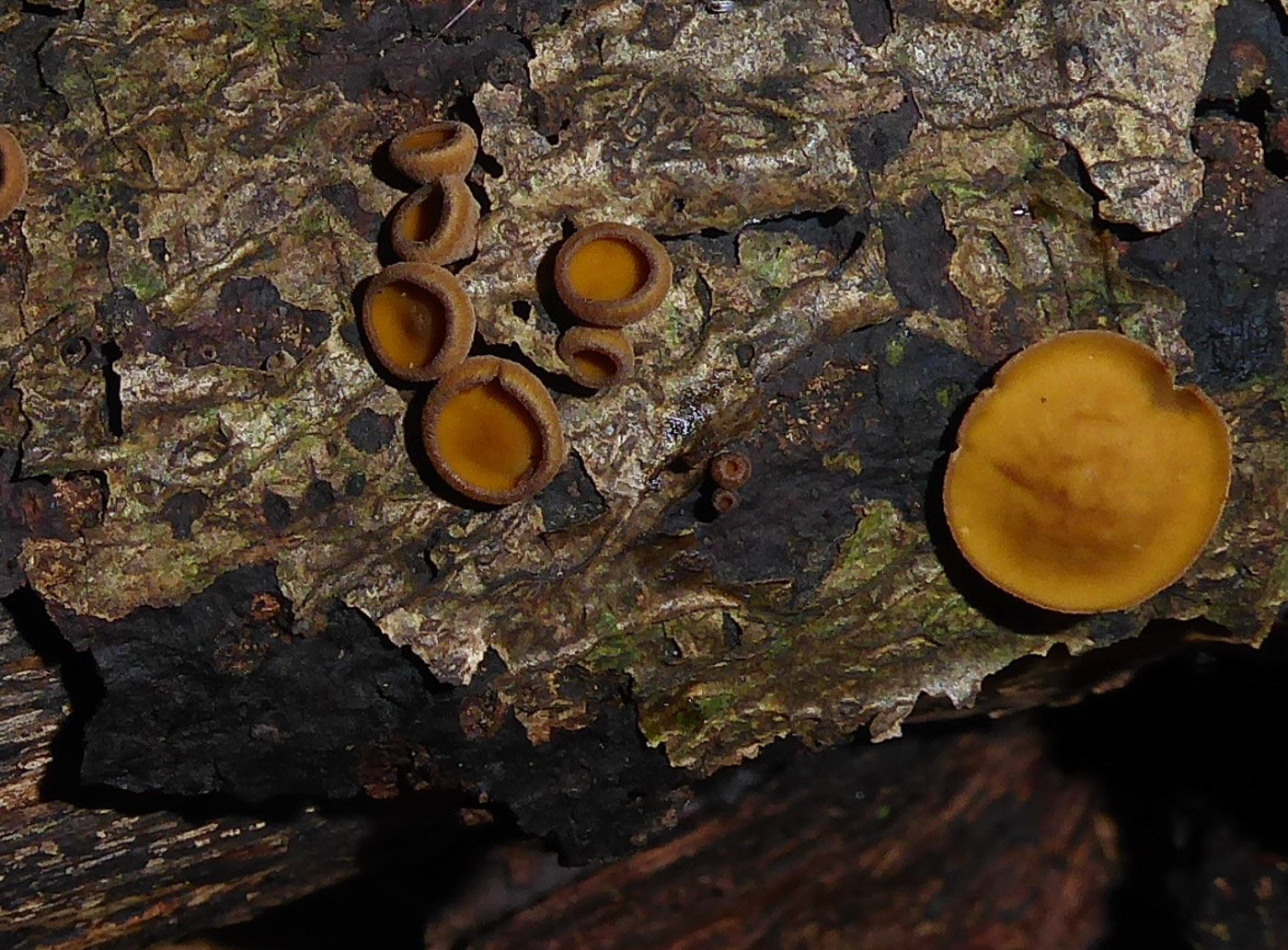
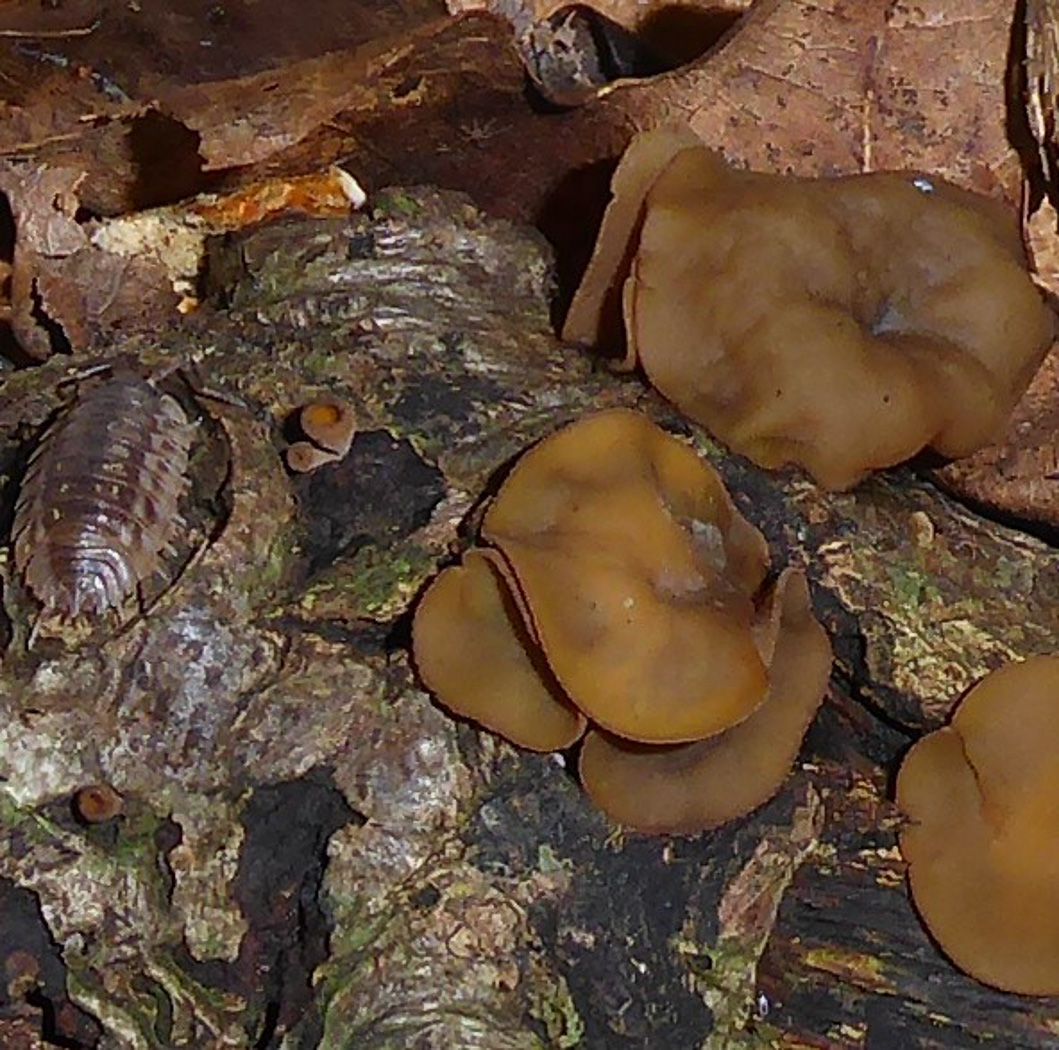
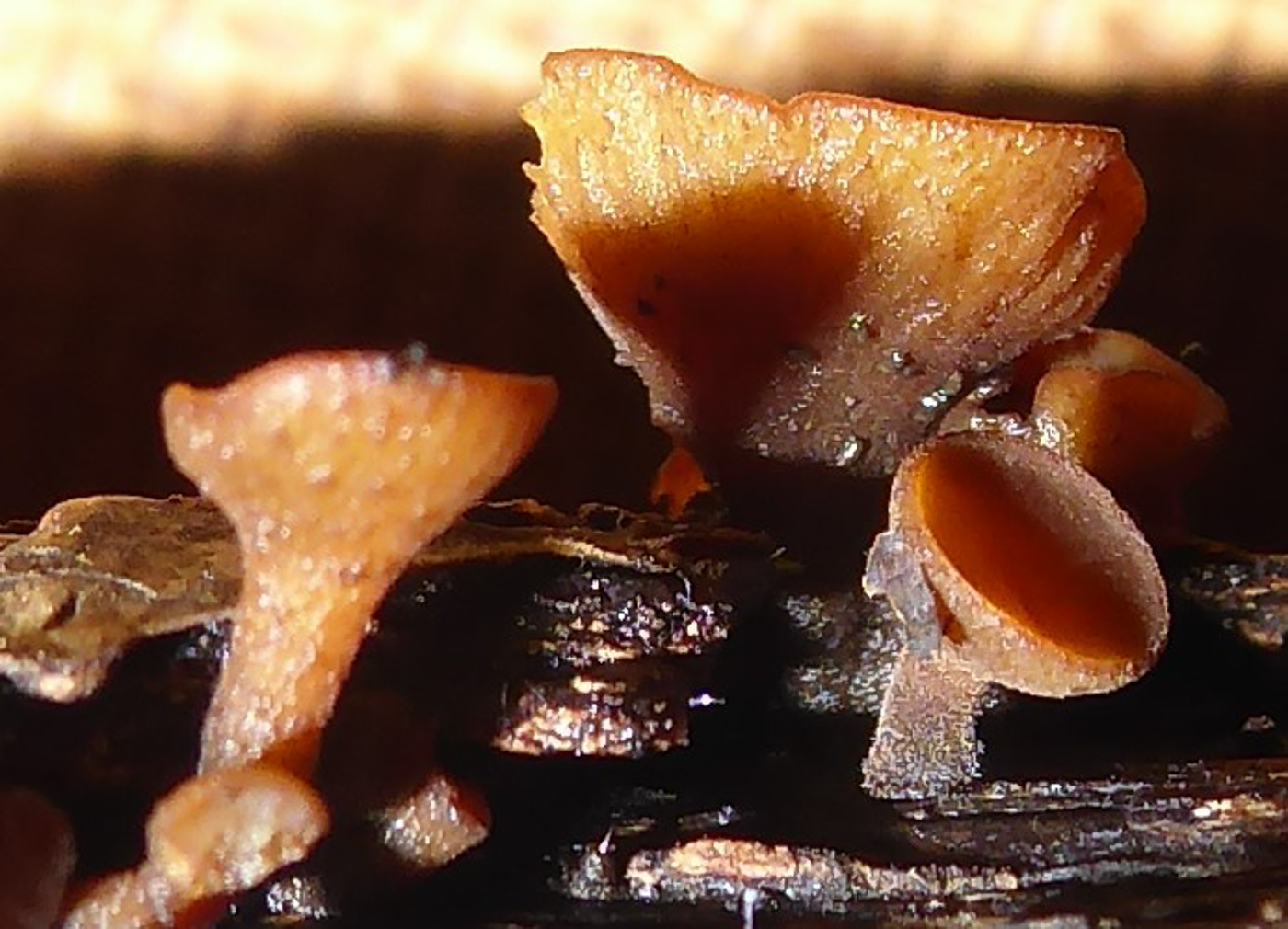 |
November 8th Rutstroemia firma (Brown Cup) 
In Austenwood Common Jim Wills came across these small cups fruiting in various stages of development on fallen Hazel. He thought to begin with that there must be more than one species here because they seemed to vary so much, but microscopy confirmed they were all the same - it just is a very varied species, sometimes with a stem, sometimes not. This is new for Finds though is not rare, just easily overlooked, and can occur on Oak and Alder as well as Hazel, often on branches still attached.
|
November 7th 2022
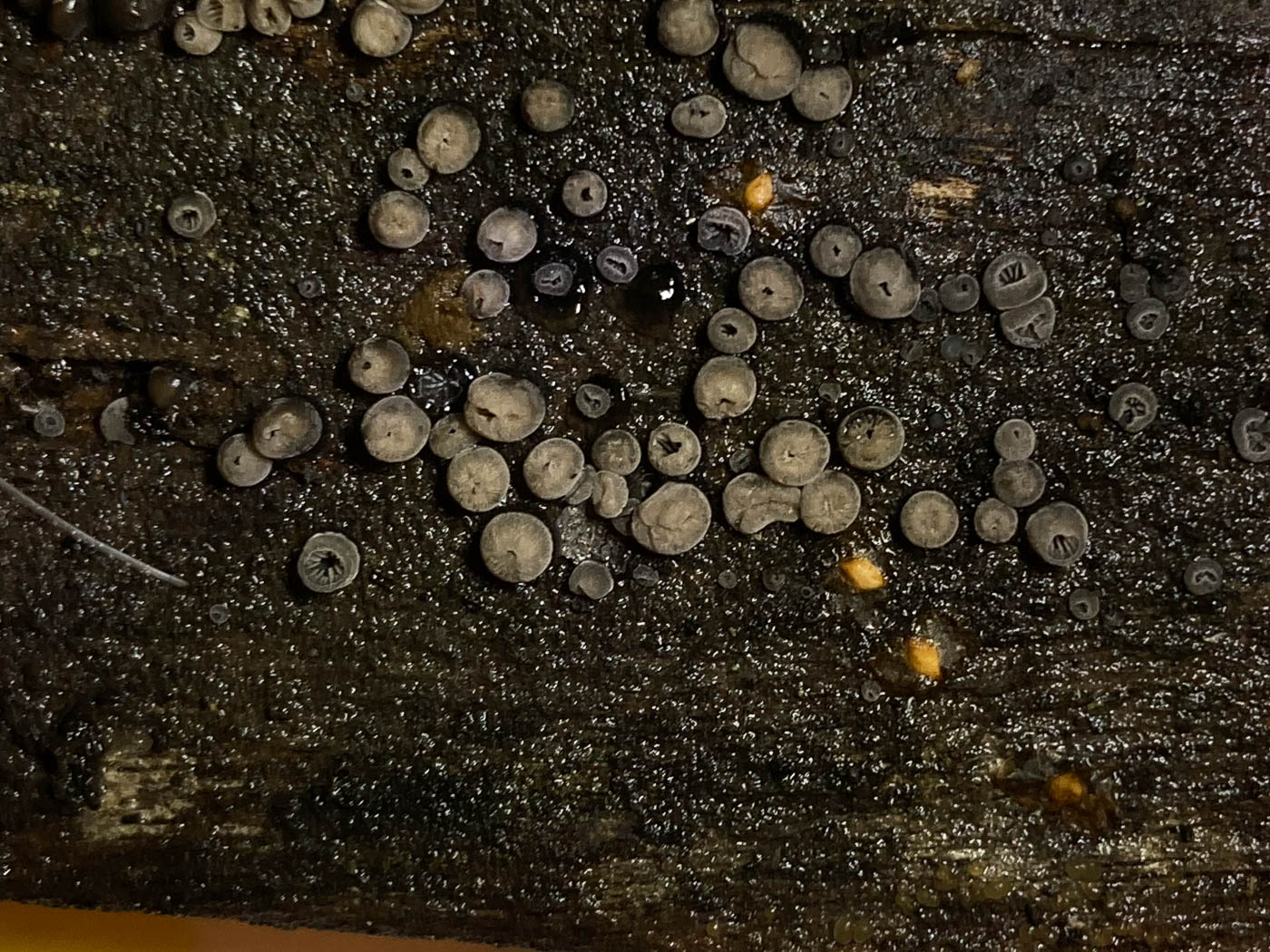
 |
November 7th Resupinatus applicatus (Smoked Oysterling) 
In his garden on some broken bits of garden chair left under a hedge, Russell Ness noticed what looked initially like a swarm of tiny grey cups, but on closer inspection once they started to open up they had gills. A scope revealed small round spores and from there he was able to key out this species, one for which we have a smattering of county records but it is a new entry for Finds.
|
November 5th 2022
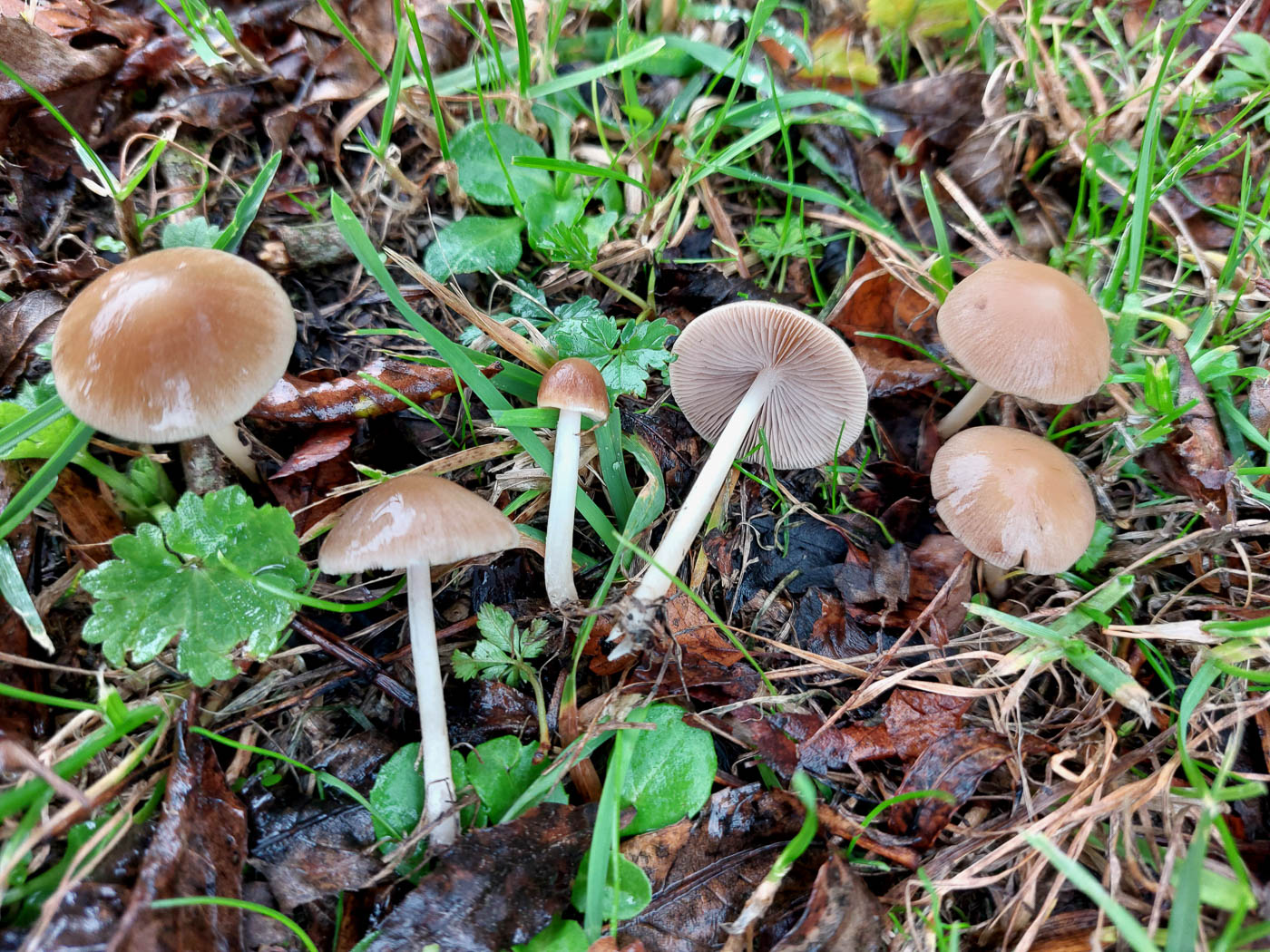
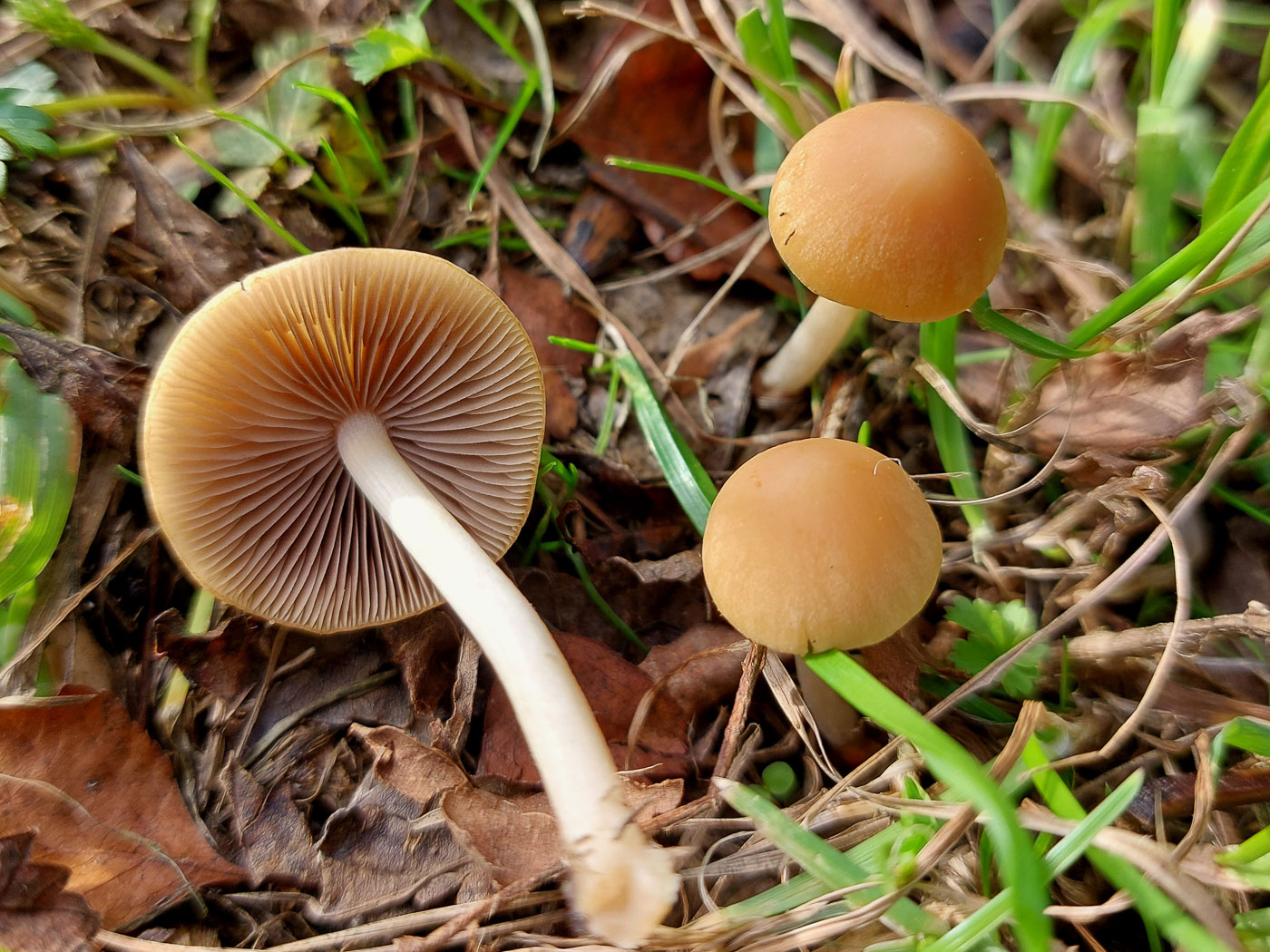 |
November 5th Psathyrella obtusata (an unusual Brittlestem with no common name) 
In Green End near Granborough Jesper Launder came across this Psathyrella a week earlier in a grassy roadside verge, then noticed it again in the same spot today when he collected it and managed to key it out satisfactorily using its microscopic characters - vital in this genus recognised as difficult. These are young specimens, hence the pale colours to both caps and gills. We have a small handful of previous county records and this is a new entry for Members' Finds.
|
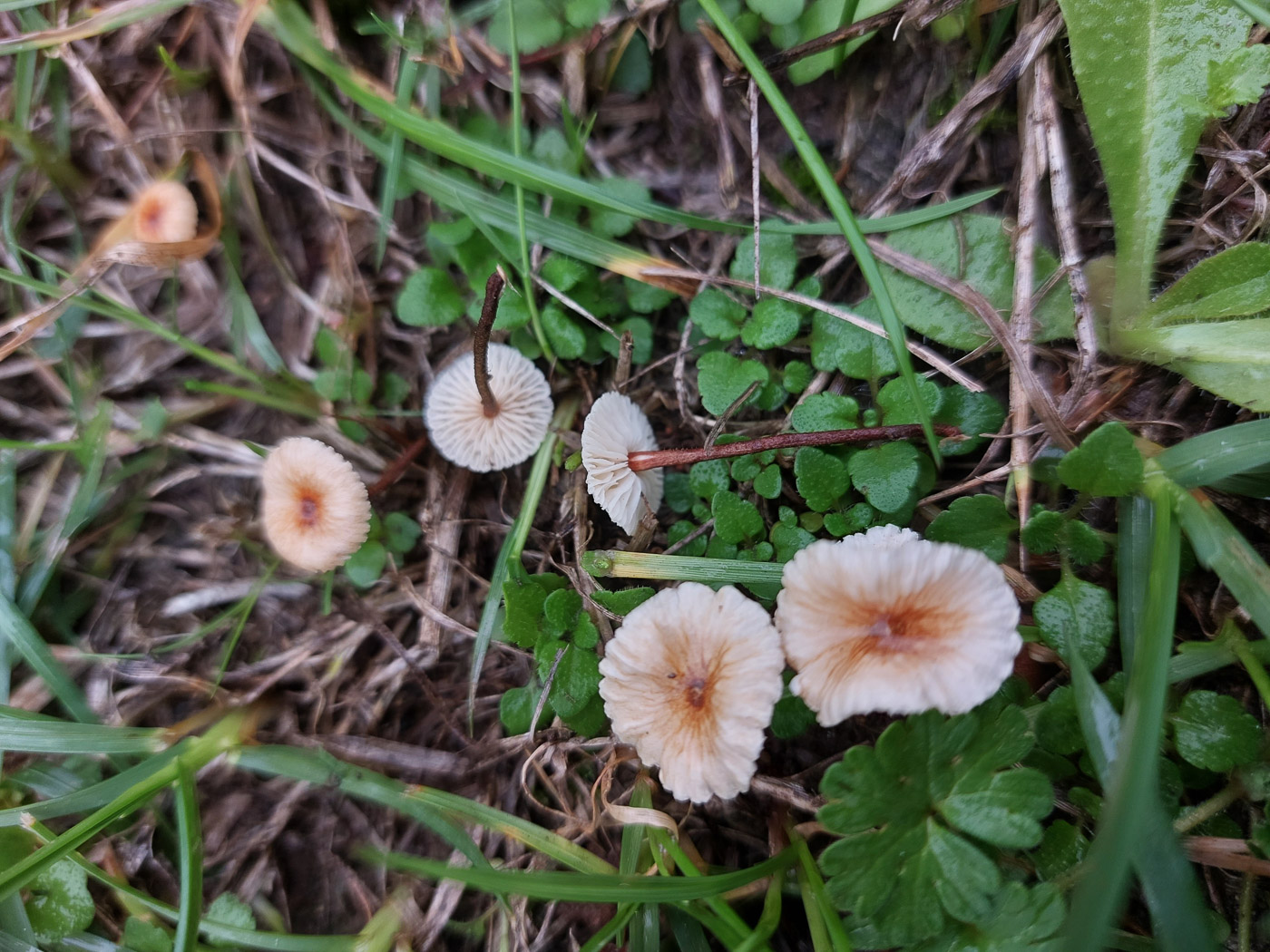 |
November 5th Crinipellis scabella (Hairy Parachute) 
In Green End near Granborough Jesper Launder found this unusual small grassland species in a grassy roadside verge. Its common name is a touch misleading as it has no connection with the genus Marasmius (Parachute) other than being small and hairy - both cap and stem - as a few true Parachutes are. It grows on dying grass stems, and we have just a small handful of previous county records. This is a new entry for Members' Finds.
|
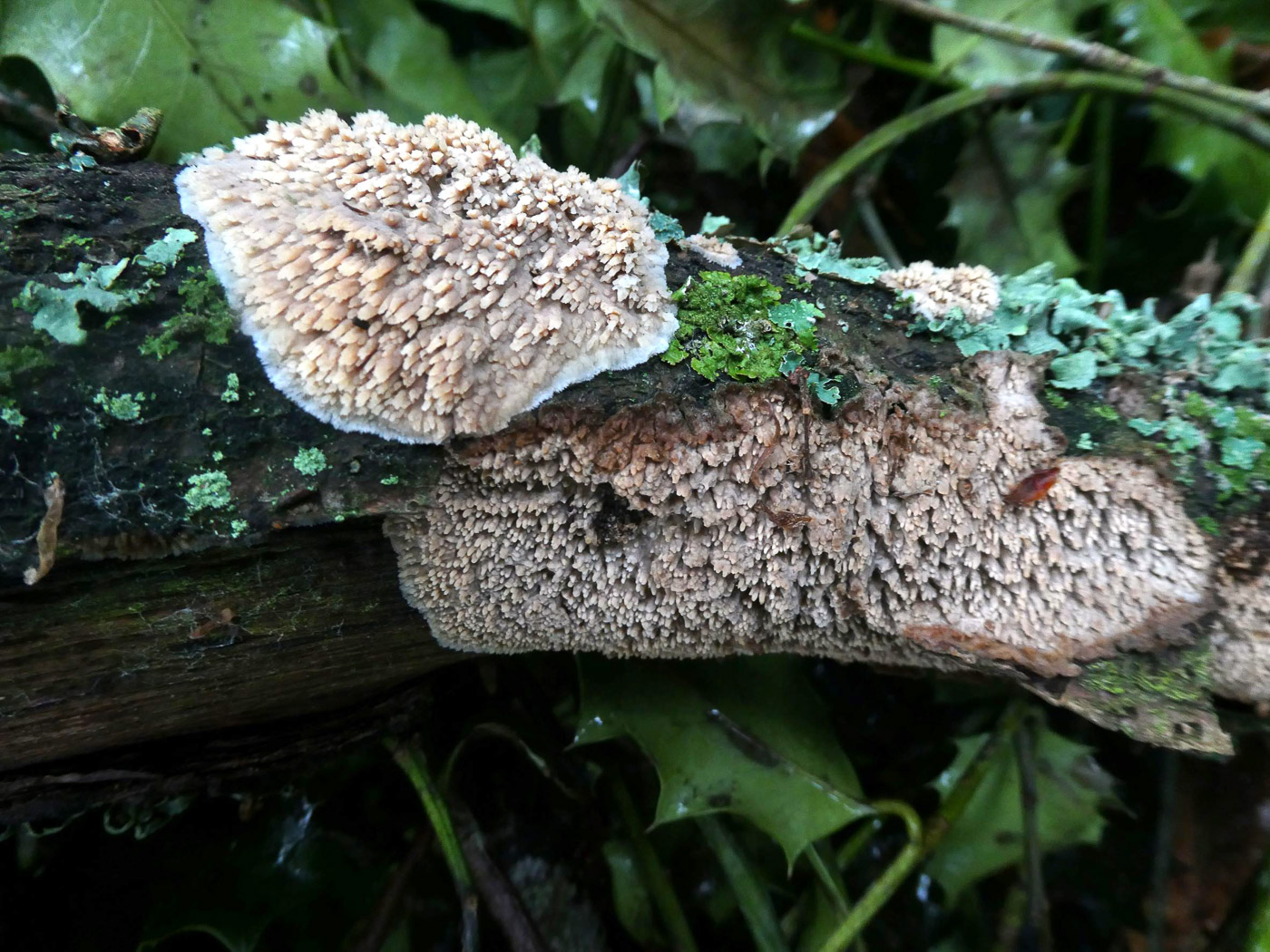 |
November 5th Radulomyces molaris (Oak Tooth Crust) 
In Austenwood Common near Chalfont St. Peter Jim Wills found this corticioid species on a fallen Oak branch. The species is often found after strong winds and favours Oak branches high up in the canopy which then end up on the ground. See also Finds 2022 February 25th.
|
November 4th 2022
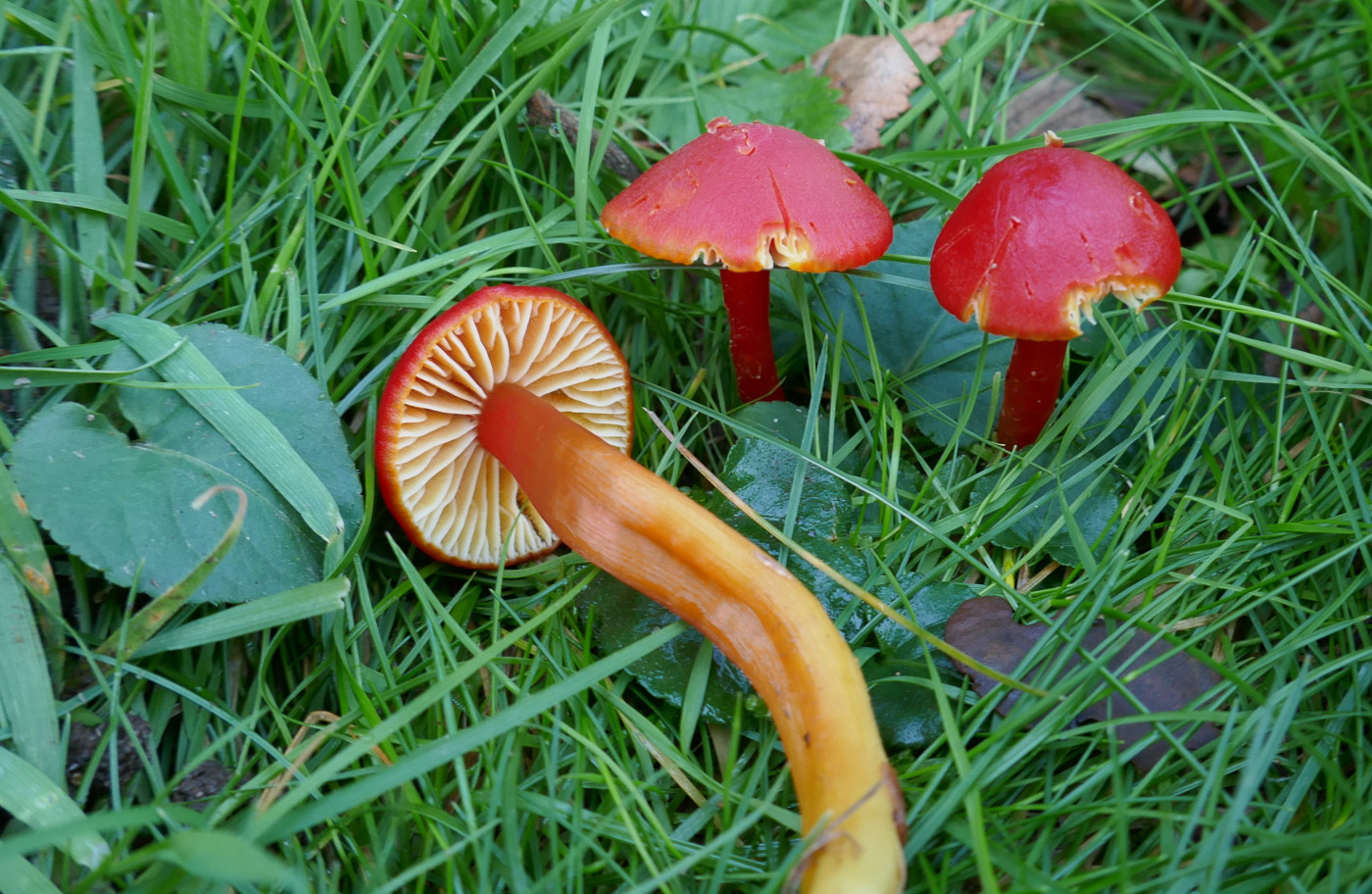 |
November 4th Hygrocybe coccinea (Scarlet Waxcap)
At Stampwell Farm Jackie Ewan found the first fruiting of this common Waxcap alongside a grassy path. This is our first report of it this year though we have three images for 2020 and two for 2021 in Finds. See the Masterlist for details.
|
November 3rd 2022
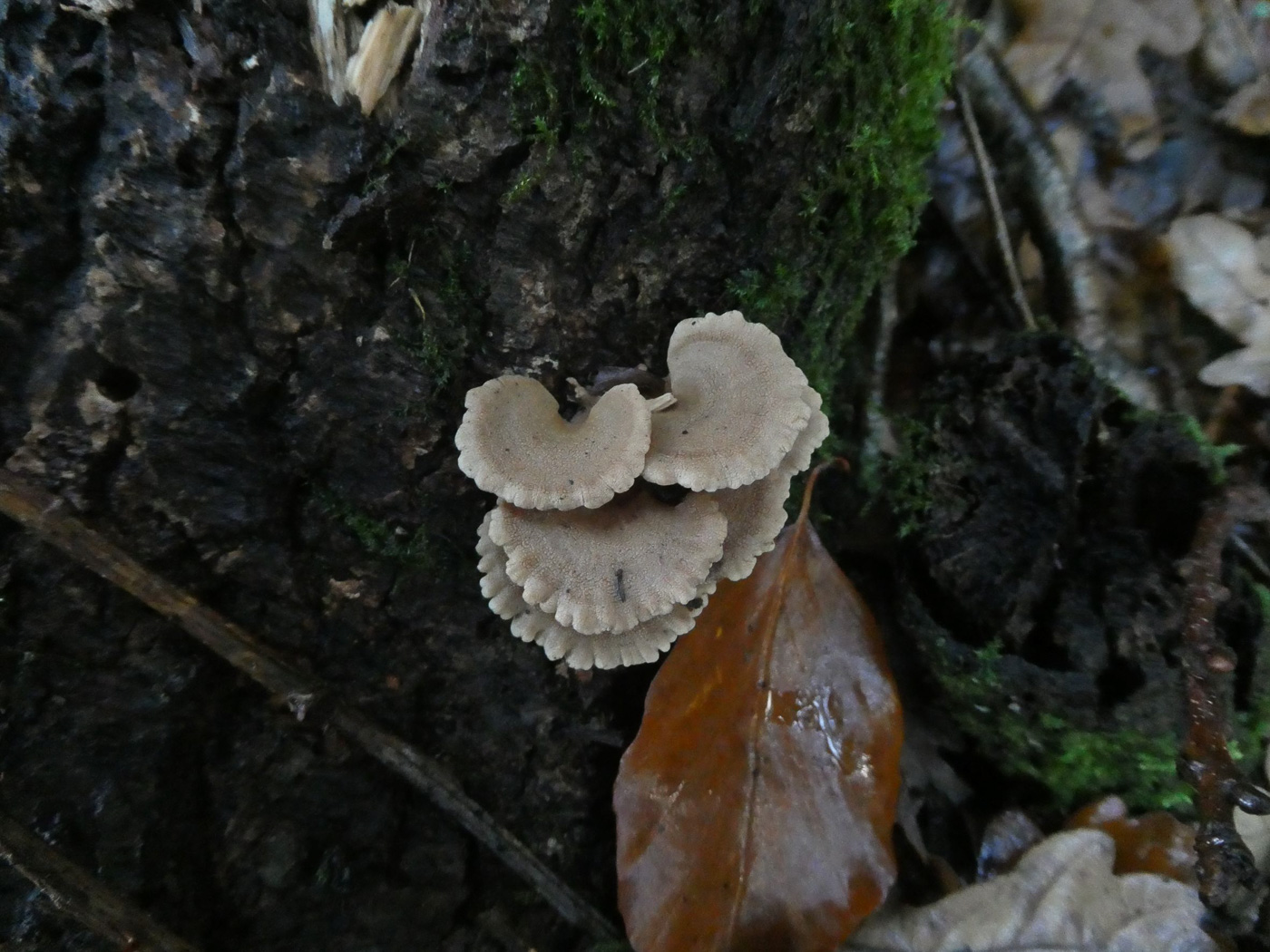
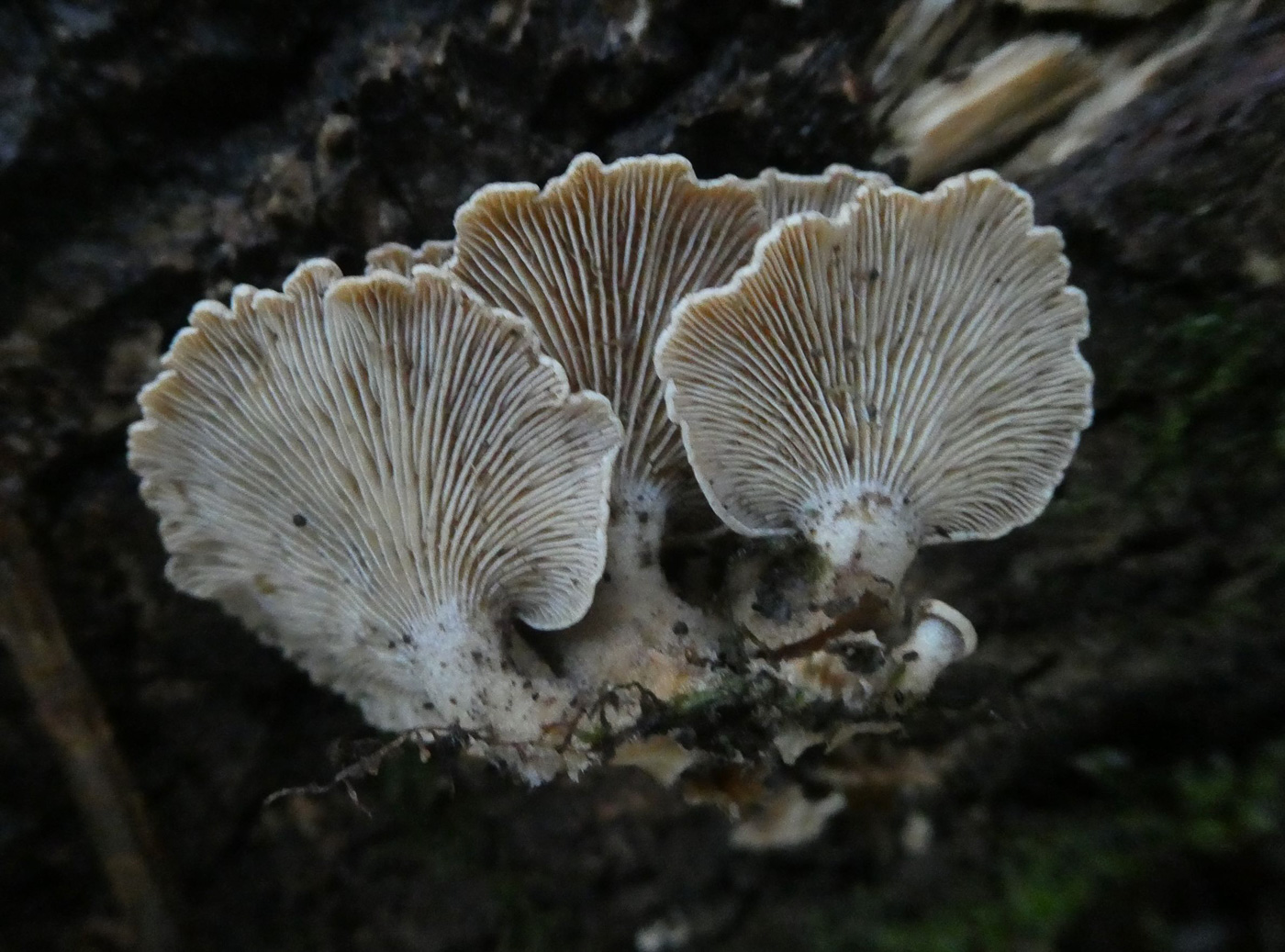 |
November 3rd Panellus stipticus (Bitter Oysterling) 
In Austenwood Commmon, Chalfont St. Peter, Jim Wills found these small shell-like mushrooms on a fallen Oak branch. See Finds 2020 October 3rd, also 2021 January 8th and November 17th for further images and notes of the species.
|
November 2nd 2022
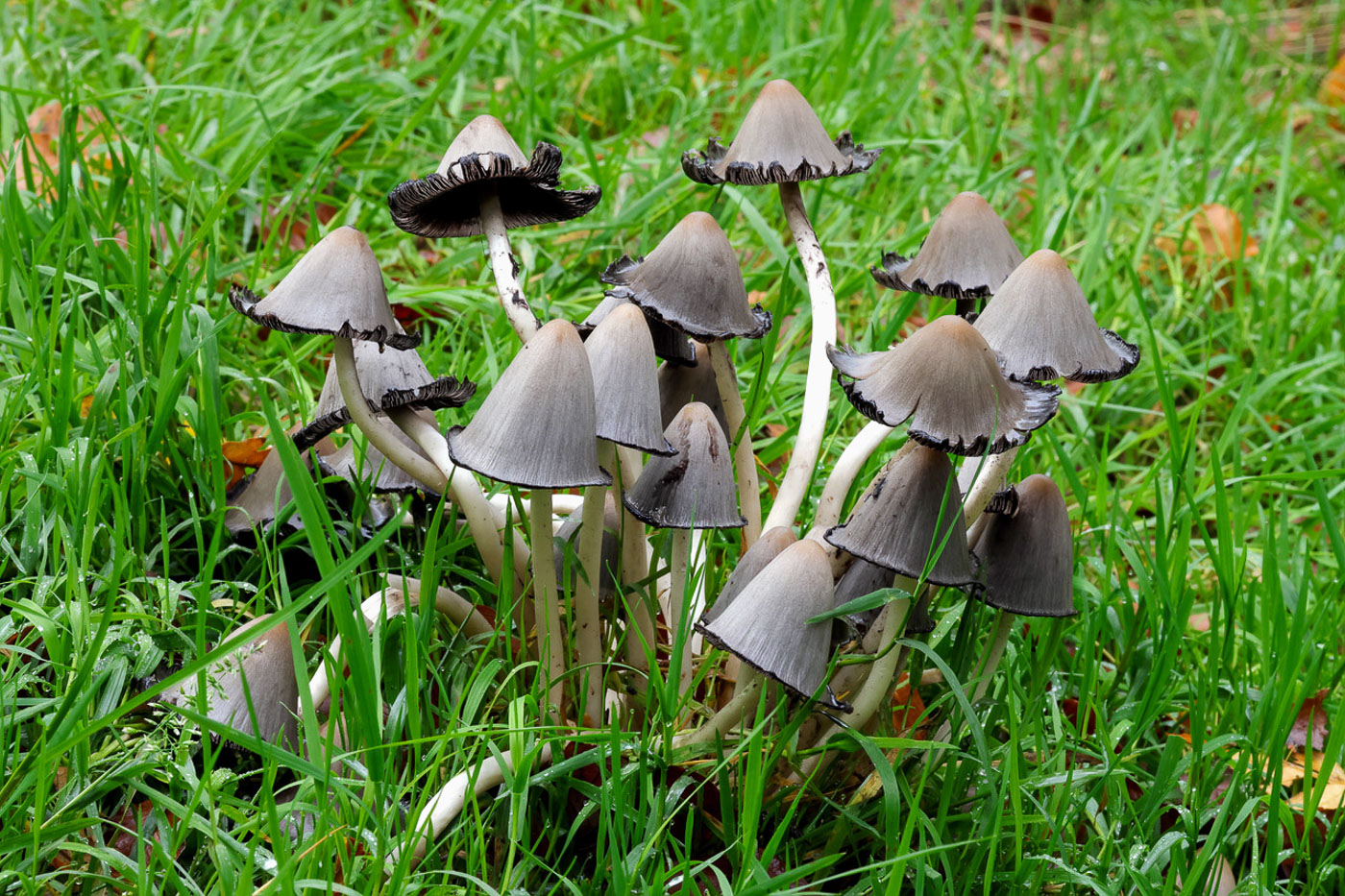 |
November 2nd Coprinopsis acuminata (Humpback Inkcap)
In Naphill Common Paul Goby came across this rather pictureque clump of inkcaps, looking like miniature cowboy hats or even pixie hats! The species is extremely similar to C. atramentaria (Common Inkcap) and no doubt often mistaken for it, the only visible difference being the rather more elongated and pointed, less rounded caps. The spores of the two species are also slightly different but these were not able to be checked today. This happens to be a first for Finds though C. atramentaria can be found via the Masterlist for comparison with today's photo.
|
November 1st 2022
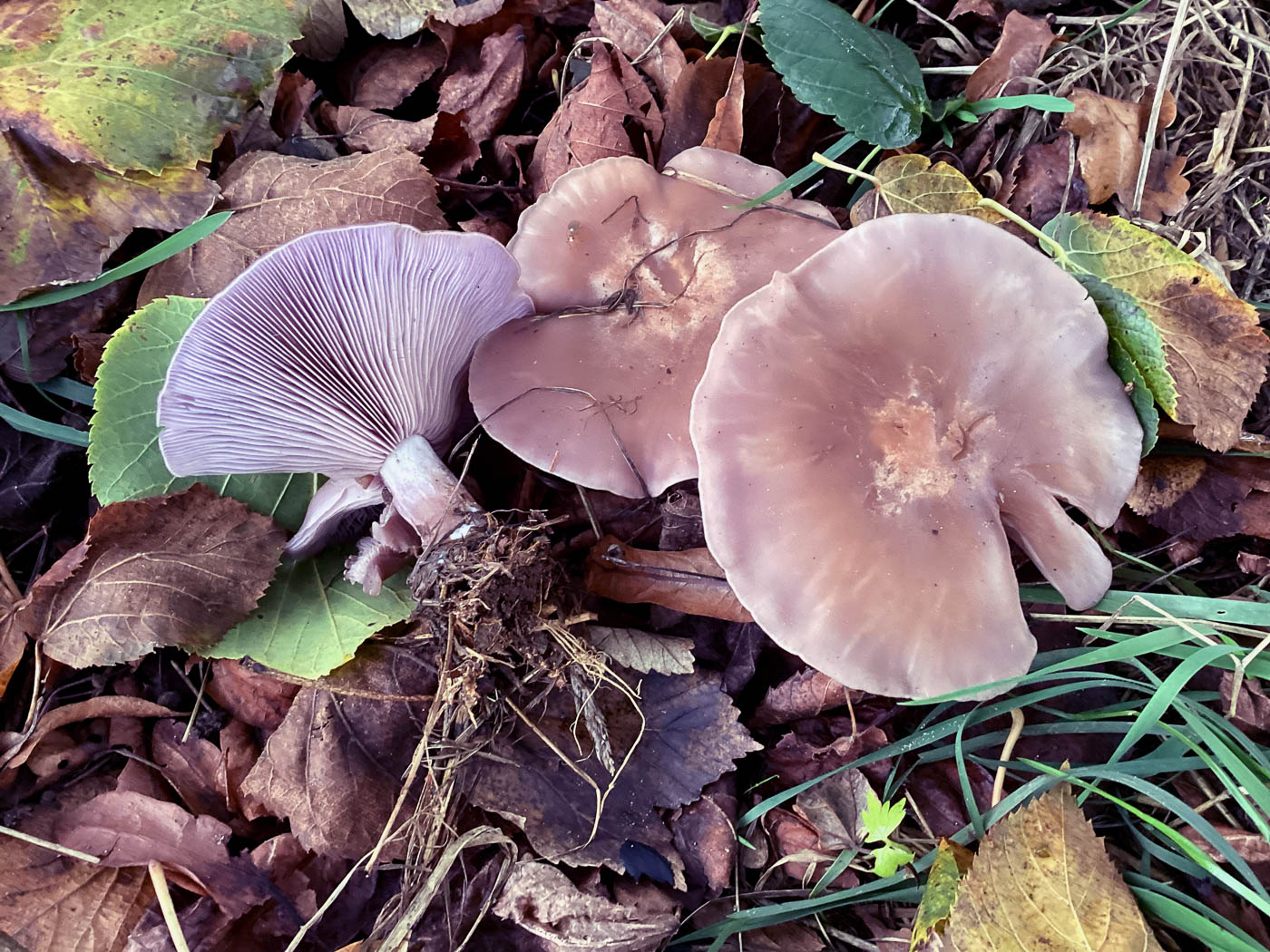 |
November 1st Lepista nuda (Wood Blewit)
In leaf litter in Brill Common Joanna Dodsworth found these nice specimens. This is a common late autumn species of the woodland floor with beautiful lilac colours both above and below to start with, though the caps turn pale brown at they mature. Beware of confusing this with the many Cortinarius species (Webcaps) which can have similar colours though Webcap gills will turn rusty brown with age and their sporeprint is also that colour in contrast to genus Lepista which has a white sporeprint. See the Masterlist for further examples.
|
October 31st 2022
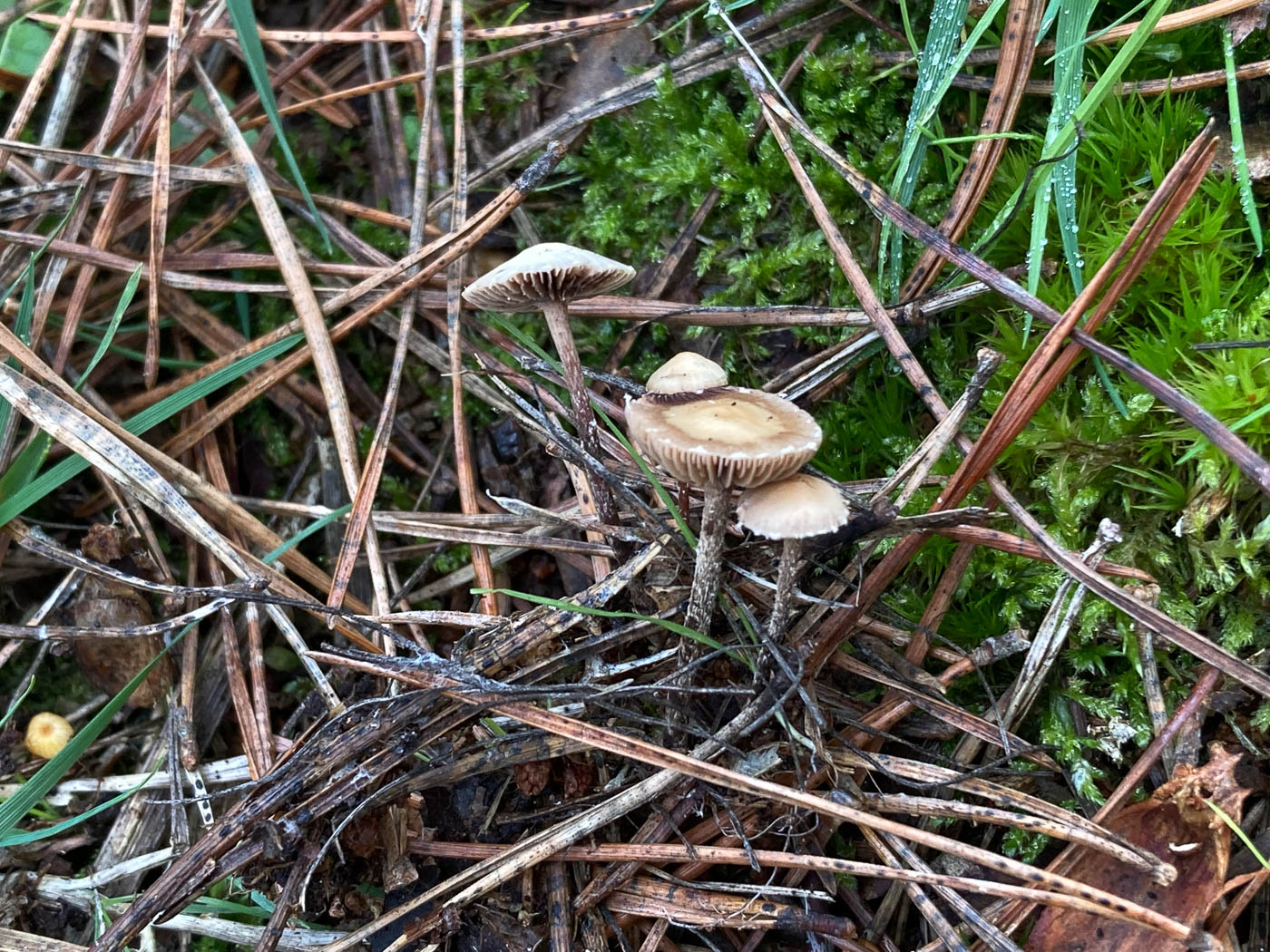 |
October 31st Deconica crobula (a Brownie with no common name) 
At Burnham Beeches in damp mossy vegetation Russell Ness found this unusual LBJ which he thought at first glance could be a species of Tubaria (Twiglet). However, the 'jizz' wasn't quite right and the microscopy soon proved it was not that genus but in fact Psilocybe (though many of that genus including today's species are now moved to Deconica - yet another new name to accept!). We have a just handful of previous county records and this is a new entry for Finds.
|
 |
October 31st Galerina lacustris (a rare species of Bell with no common name) 
On woody debris of Willow in a boggy area at Stampwell Farm Jackie Ewan found this cluster and, having collected it from this spot last year when it was subsequently identified through sequencing, she realised what it might be and checked the microscopy. So this is the second county record. See also the first entry in Finds 2021 November 9th.
|
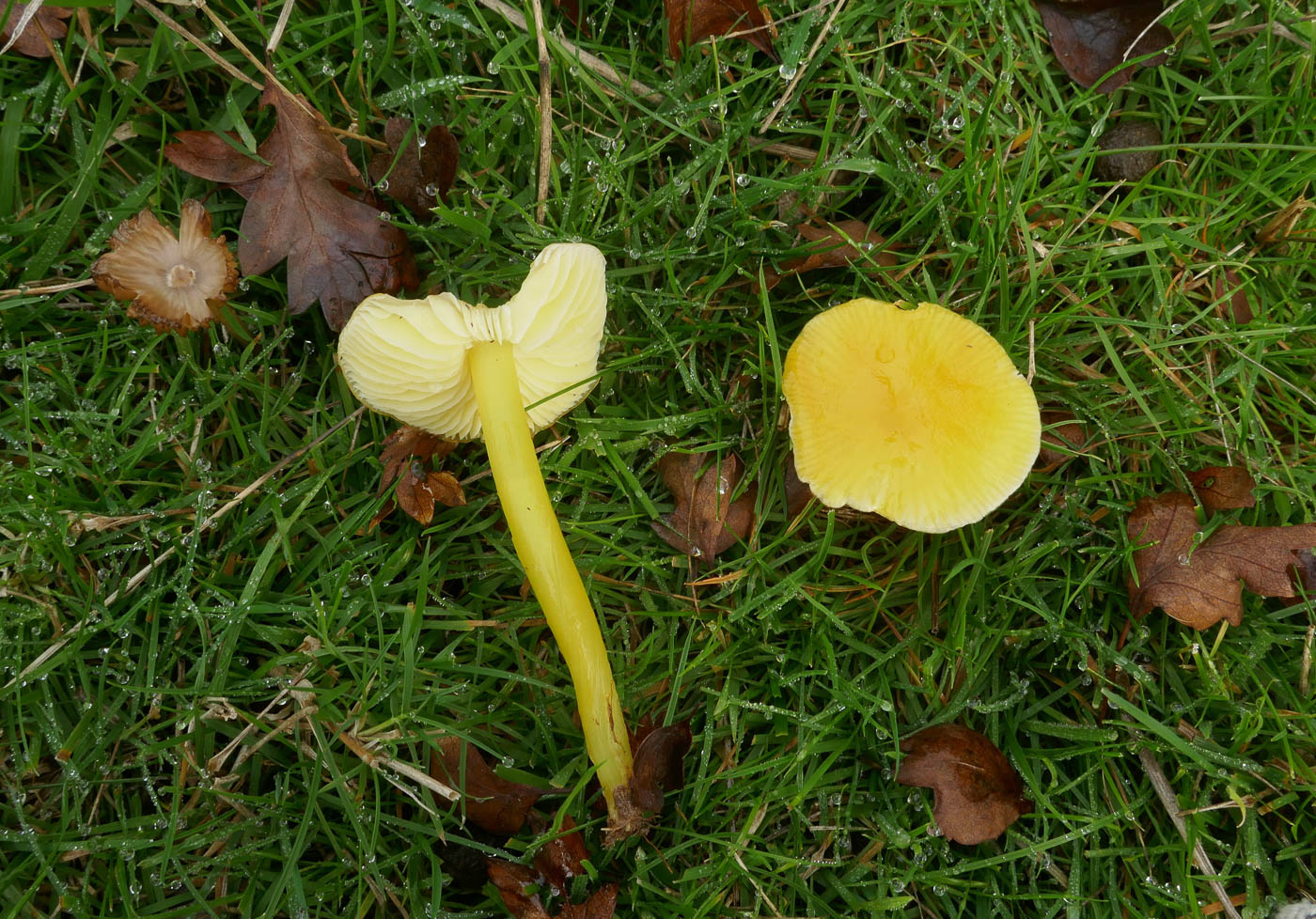 |
October 31st Hygrocybe chlorophana (Golden Waxcap)
At Stampwell Farm Jackie Ewan found this common Waxcap, a medium to large species having a moist to sticky cap, usually contrasting white gills and a moist to sticky stem which is often flattened / grooved (though not in these particular specimens!). When still small it is easily confused with H. ceracea, a smaller bright yellow species which, however, lacks the sticky cap and stem of today's species. Further examples of both species can be found via the Masterlist.
|
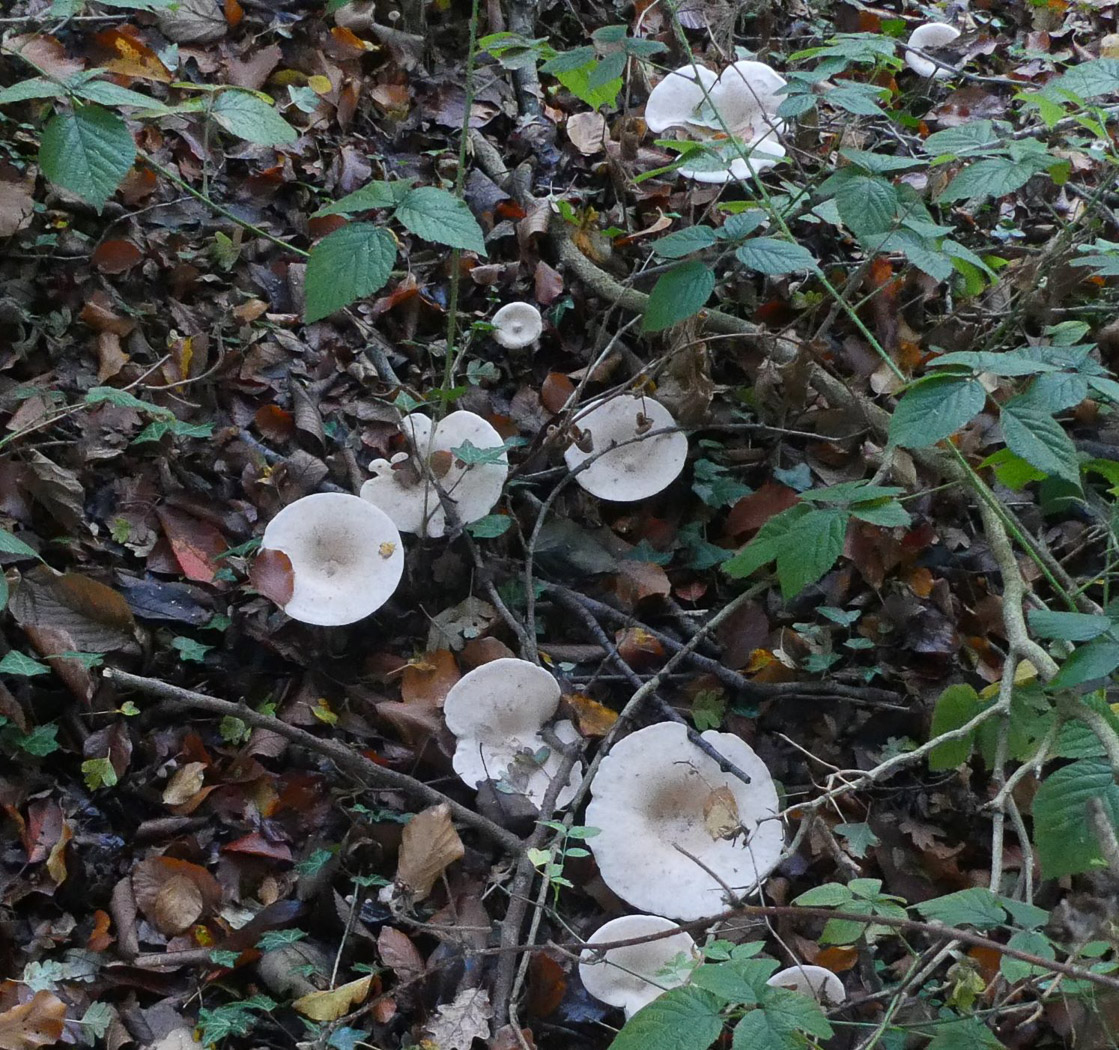
 |
October 31st Infundibulicybe geotropa (Trooping Funnel)
Near Chalfont St. Peter at a woodland edge Jim Wills found this group of a normally very common species which seems to have been pretty scarce so far this autumn. It is quite easily mistaken for Clitocybe nebularis (Clouded Agaric) - another large Funnel found in troops, but the small firm 'pompom' in the centre of the cap helps to separate them - present in Trooping Funnel but absent in Clouded Agaric. In photo 1 this can just be seen, particularly in the smallest cap here. Another difference: Clouded Agaric has a notably pleasant fruity smell (to Penny of apricot!). See the Masterlist for images of both these two species for comparison.
|
October 29th 2022
 |
October 29th Entoloma lampropus (a rare species of Pinkgill with no common name 
At Stampwell Farm Jackie Ewan has been on the lookout for the many attractive small Entoloma species which have blue colours either on the cap, the gills or the stem - sometimes on all three - to start fruiting. This is the first of them she's found this autumn and happens to be a new species for the county. A rare grassland species - sometimes occurring in forests as well - it has a bright blue fibrillose stem but a brown fibrillose cap which is not translucent, also pale gills with no blue edge which turn pinkish as they mature - one of the diagnostic characters of this large and difficult genus. The collection has been confirmed with DNA sequencing and the material will be sent to the Kew Fungarium.
|
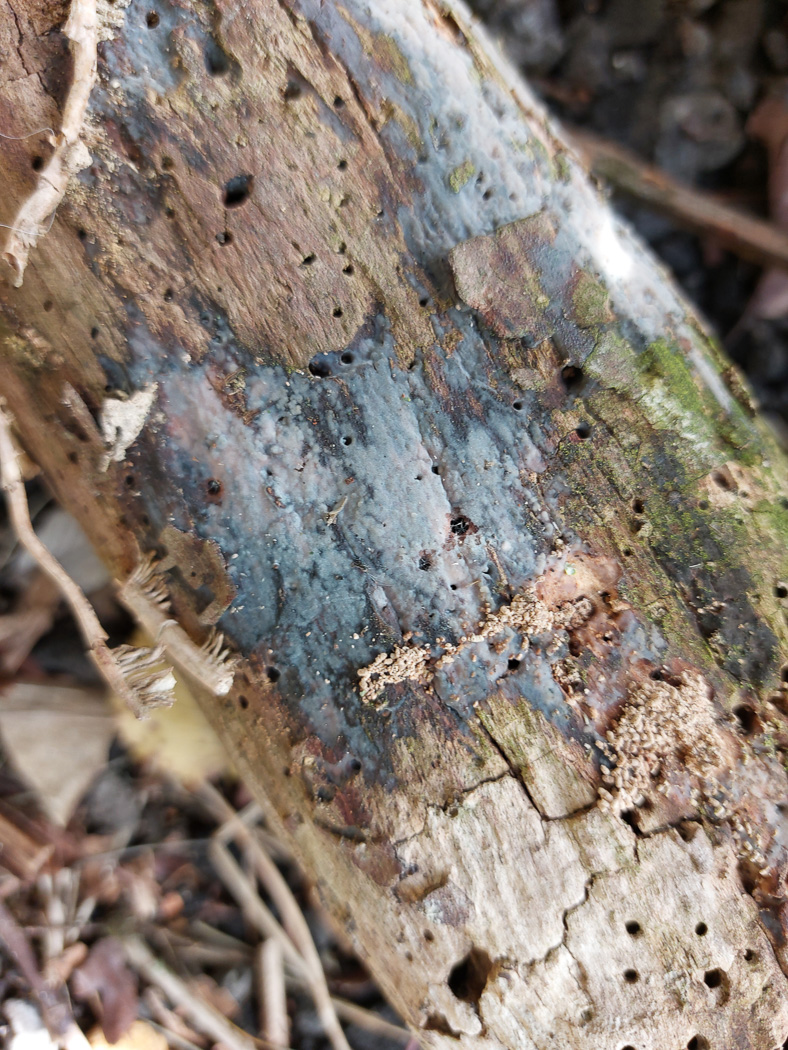 |
October 29th Exidiopsis grisea (a rarely recorded Corticioid species with no common name) 
On a decaying fence post in Granborough Jesper Launder spotted this greyish fungal patch and took it home to work on, the microscopic features leading him to this determination. It is new to the county and there appear to be few UK records though it is easy to see how it could be overlooked.
|
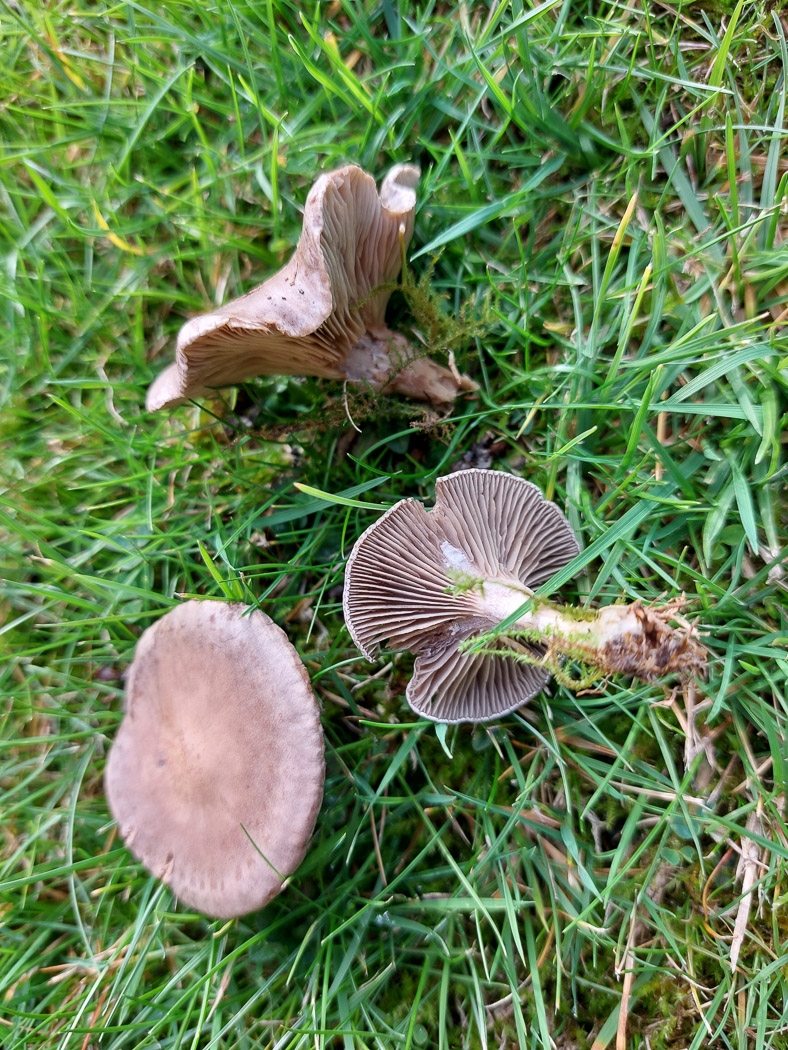 |
October 29th Clitocella popinalis (a rare mushroom with no common name) 
In a mossy grass verge in Granborough (nr Waddesdon) Jesper Launder found these three mushrooms which puzzled him somewhat. Though similar to a greyish Clitocybe (Funnel) the spores were entirely wrong. Penny suggested maybe Ripartites tricholoma - a Clitocybioid species having round ornamented spores and a better fit but still not correct. It was Geoffrey Kibby who suggested that Jesper looked at the genus Rhodocybe, some of which are now moved to a new genus Clitocella. This proved to be the answer, and it keyed straight to C. popinalis confirmed even further when Jesper noticed that the cap was developing blackish patches - apparently typical of the species. This is new to the county and was a nice find.
|
October 28th 2022
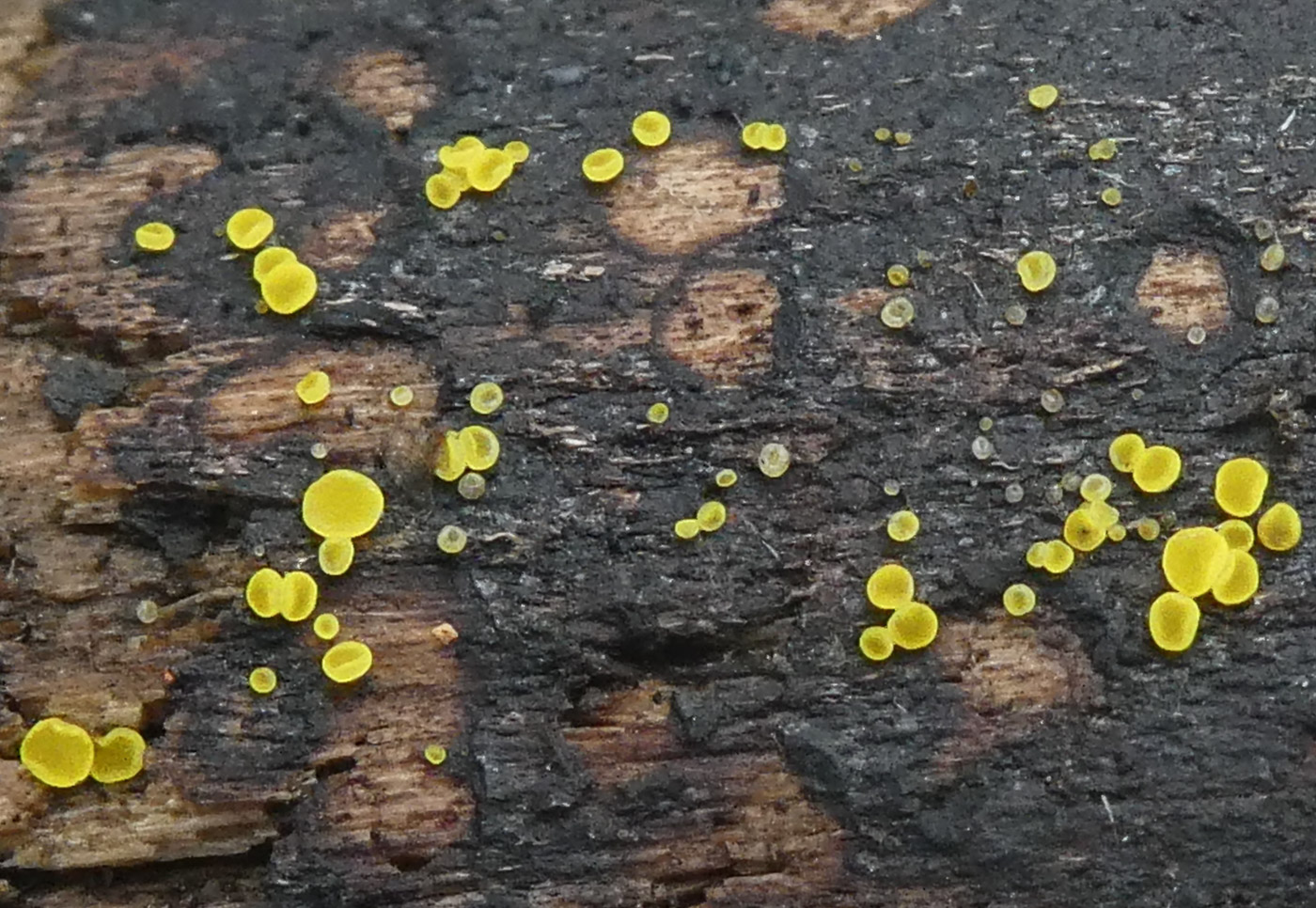 |
October 28th Bisporella sulfurina (Sulphur Disco) 
On a hardwood log in Austenwood Common, Chalfont St. Peter, Jim Wills spotted a swarm of tiny greenish yellow discs and noticed they were growing on the black remnants of some (unidentifiable) black Pyrenomycete species. This pointed to it being B. sulfurina rather than the even more common B. citrina (Lemon Disco) and the spores, checked at home later, confirmed this. (See also in Finds 2020 December 2nd.) He also noticed, however, that adjacent to this species were some very similar but white discs. See the entry immediately below this for more.
|
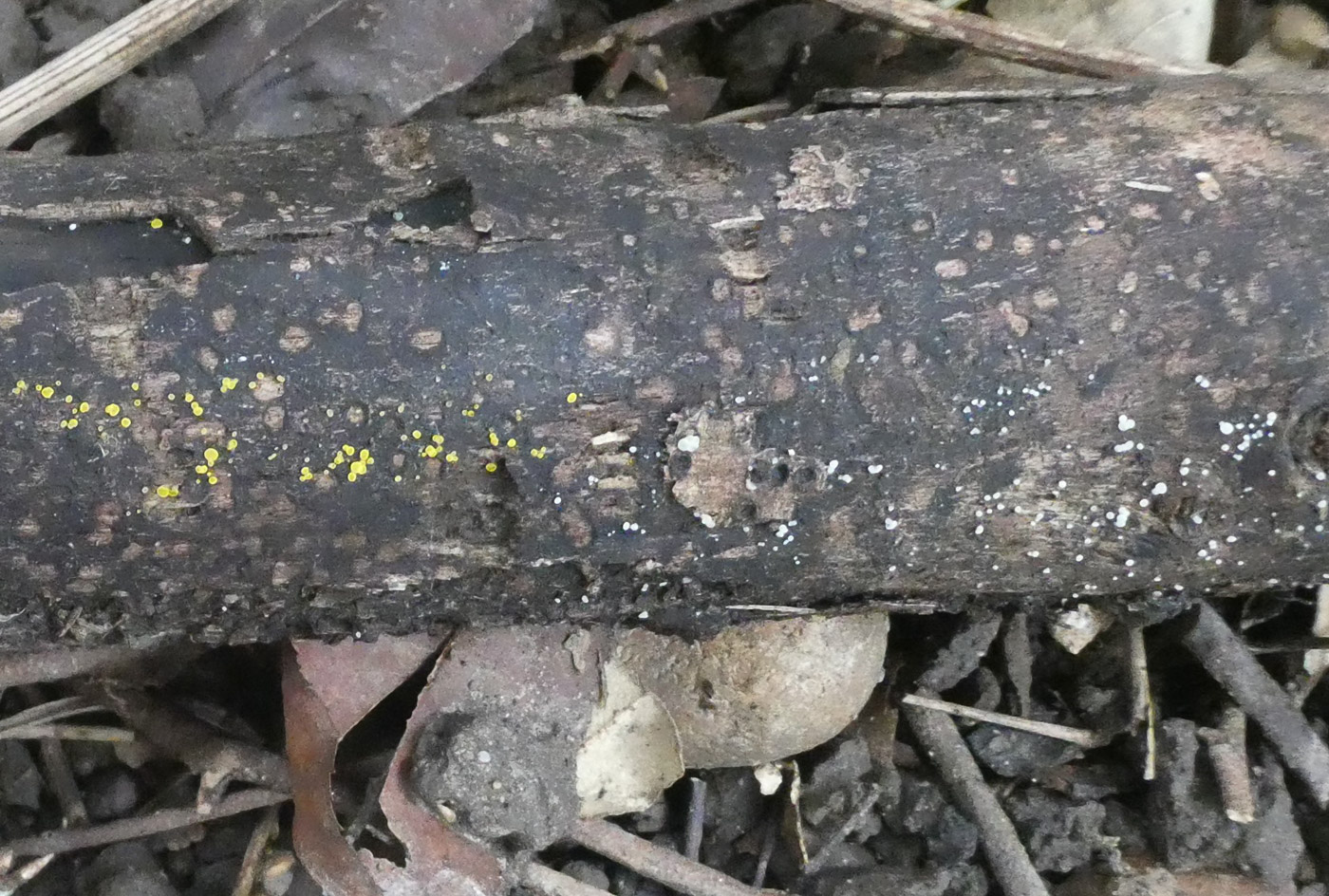
 |
October 28th Bisporella pallescens (no common name)
On a hardwood log in Austenwood Common, Chalfont St. Peter, Jim Wills found two species of Bisporella growing together - photo 1 (see also the entry immediately above). The white discs were clearly not B. sulfurina and at home he discovered it must be the much less common B. pallescens, one which also grows on old black Pyrenomycetes. Unfortunately spores could not be found so the ID has to remain unconfirmed, but many images of this species online show both the white and sulphur yellow species adjacent as here. The species appears to be new to the county.
|
October 27th 2022
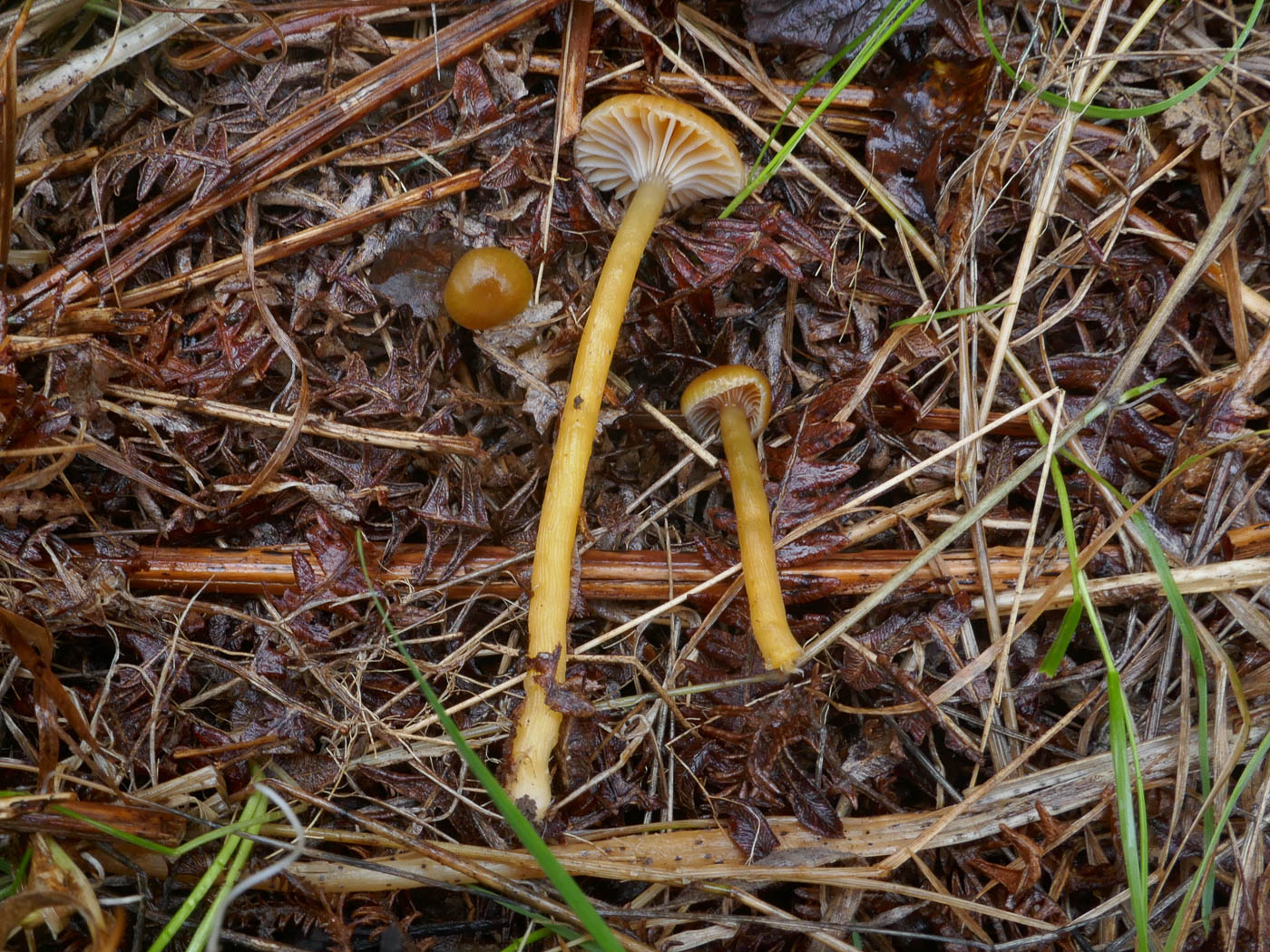 |
October 27th Gliophorus laetus (Heath Waxcap)
At Stampwell Farm - though we missed this species on our walk there the week before - this quite unusual grassland species is now just beginning to appear, found by Jackie Ewan. We only have a few sites where it is known, this being one of them where it seems to be a regular now. See the Masterlist for more images.
|
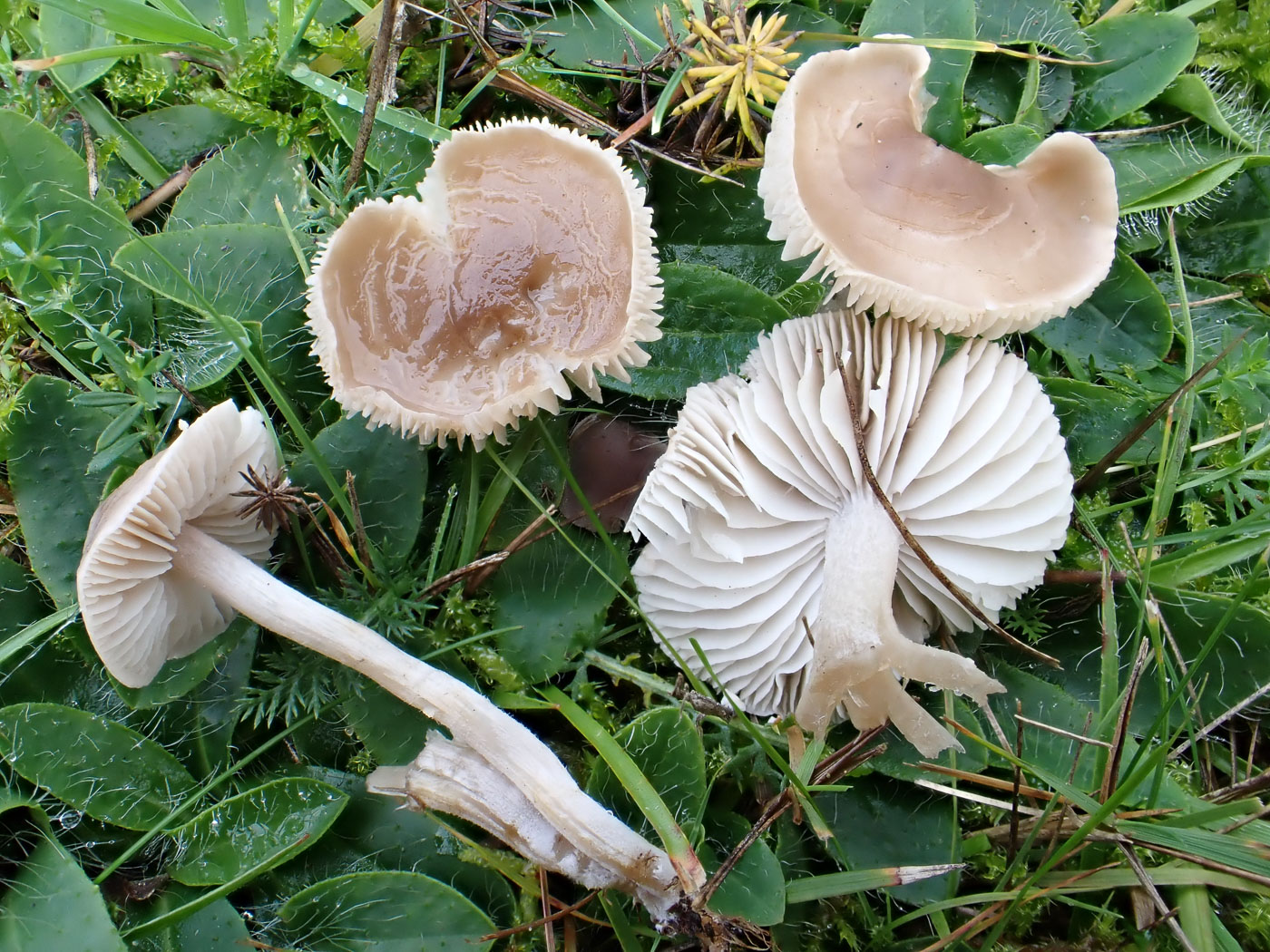 |
October 27th Dermoloma cuneifolium (Crazed Cap)
In St Giles Churchyard (adjacent to Stoke Poges Memorial Gardens) our group found rather disappointingly few grassland species but this one was showing nicely. It is a fairly common small grassland nondescript dry brown-capped mushroom but the contrasting white gills and strong mealy smell are the diagnostic features. See the Masterlist for more images.
|
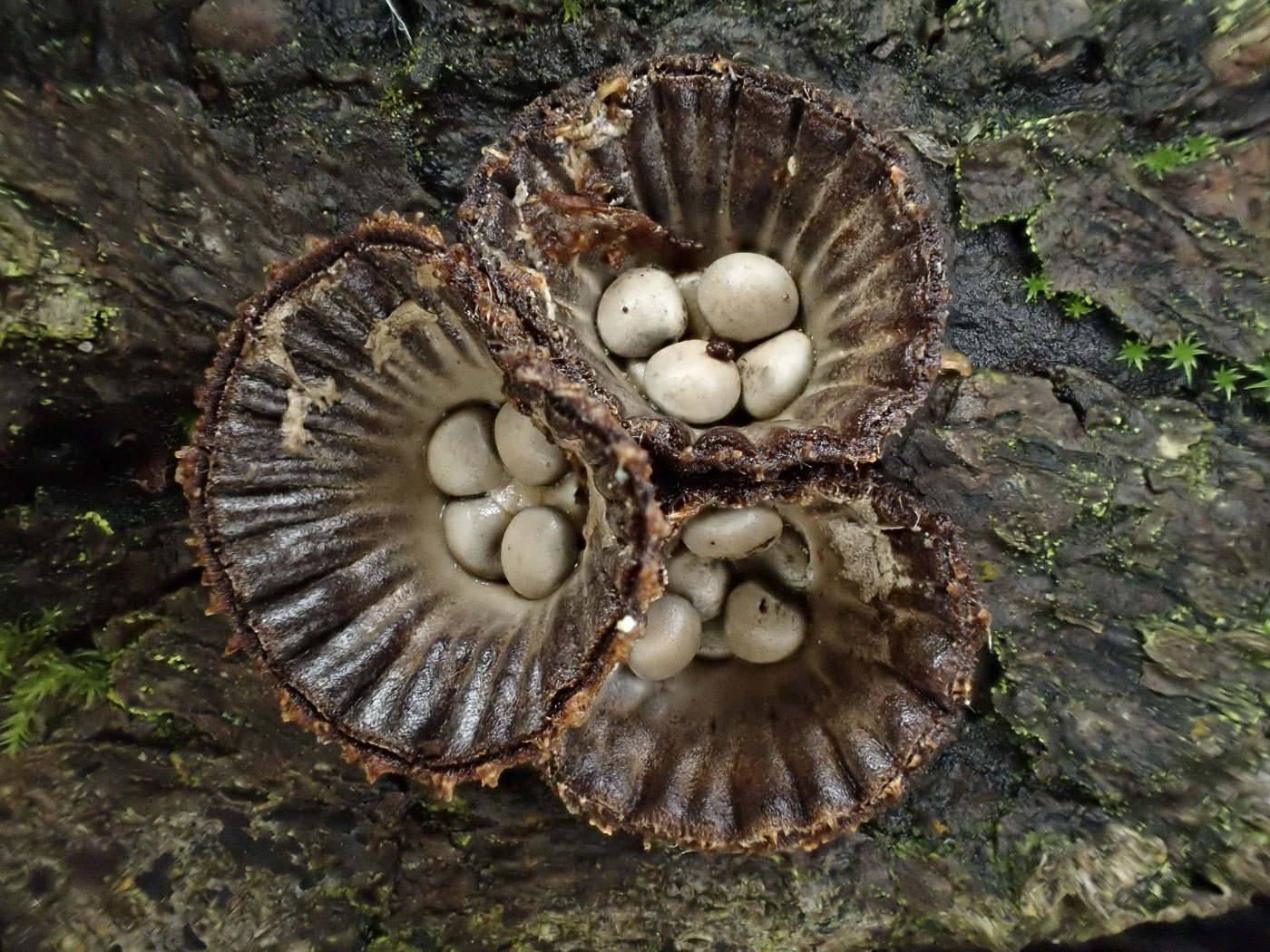
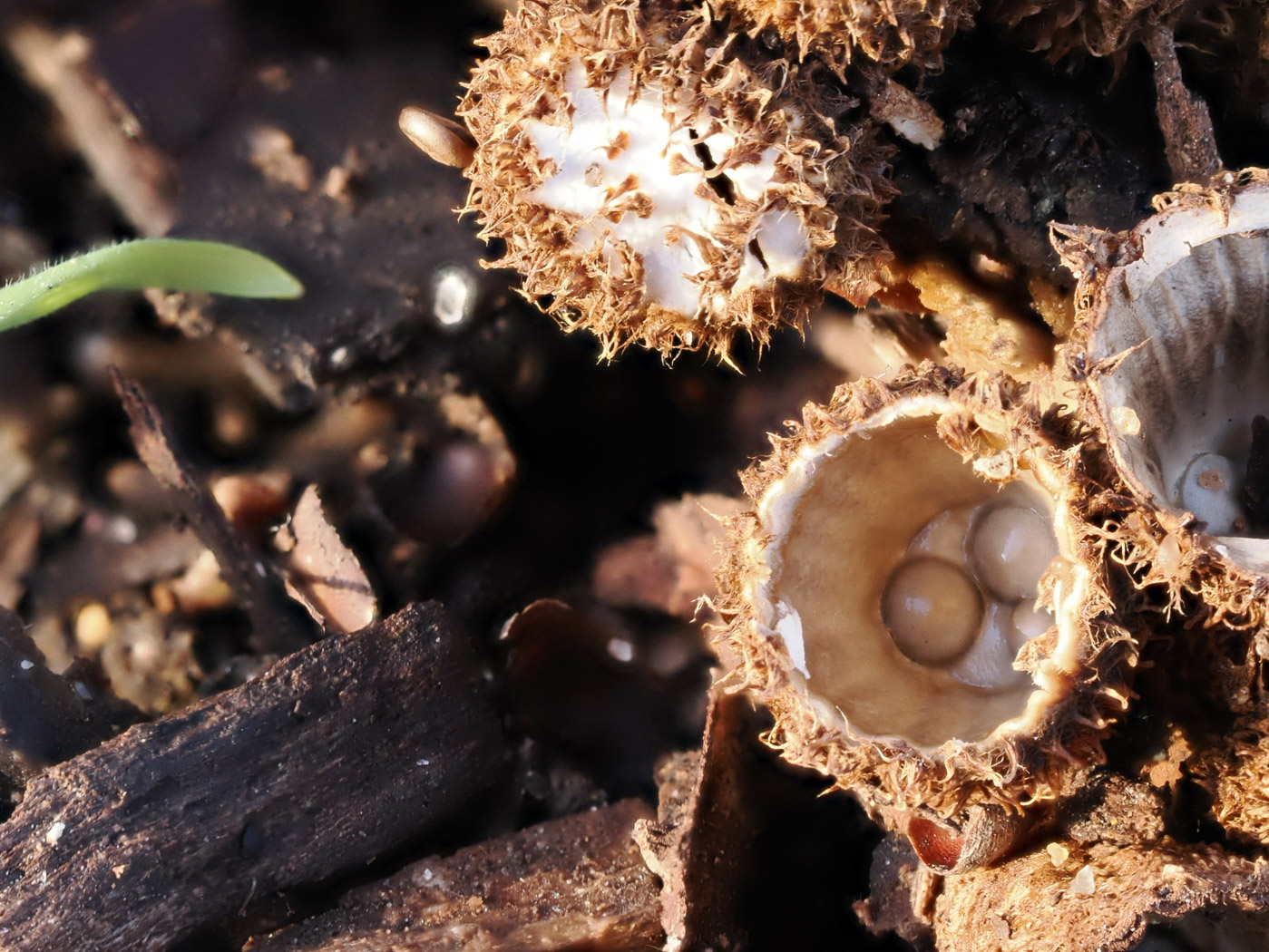
 |
October 27th Cyathus striatus (Fluted Bird's Nest)
At Stoke Poges Memorial Gardens we were amazed to find quantities of two species of Bird's Nest - both in different genera - in the many substantial patches of woodchips. Both are fairly common but tiny so easily missed, and this particular species is distinctive with its striated inner surface, hence its common name. Photo 1 is Stephen Plummer's. Photos 2 and 3 (taken by Claire Williams) show the species still fruiting in the same spot on Dec 6th, found by Penny and Claire. See the Masterlist for further images of both Bird's Nest species, seen here and below.
|
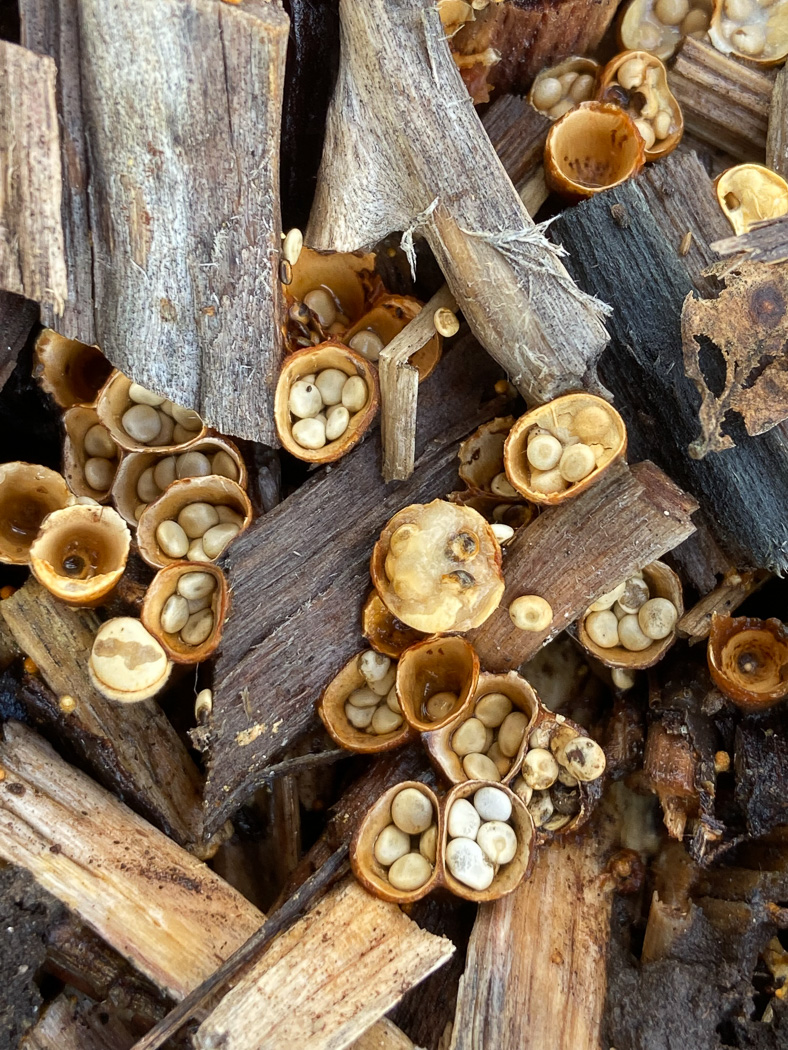
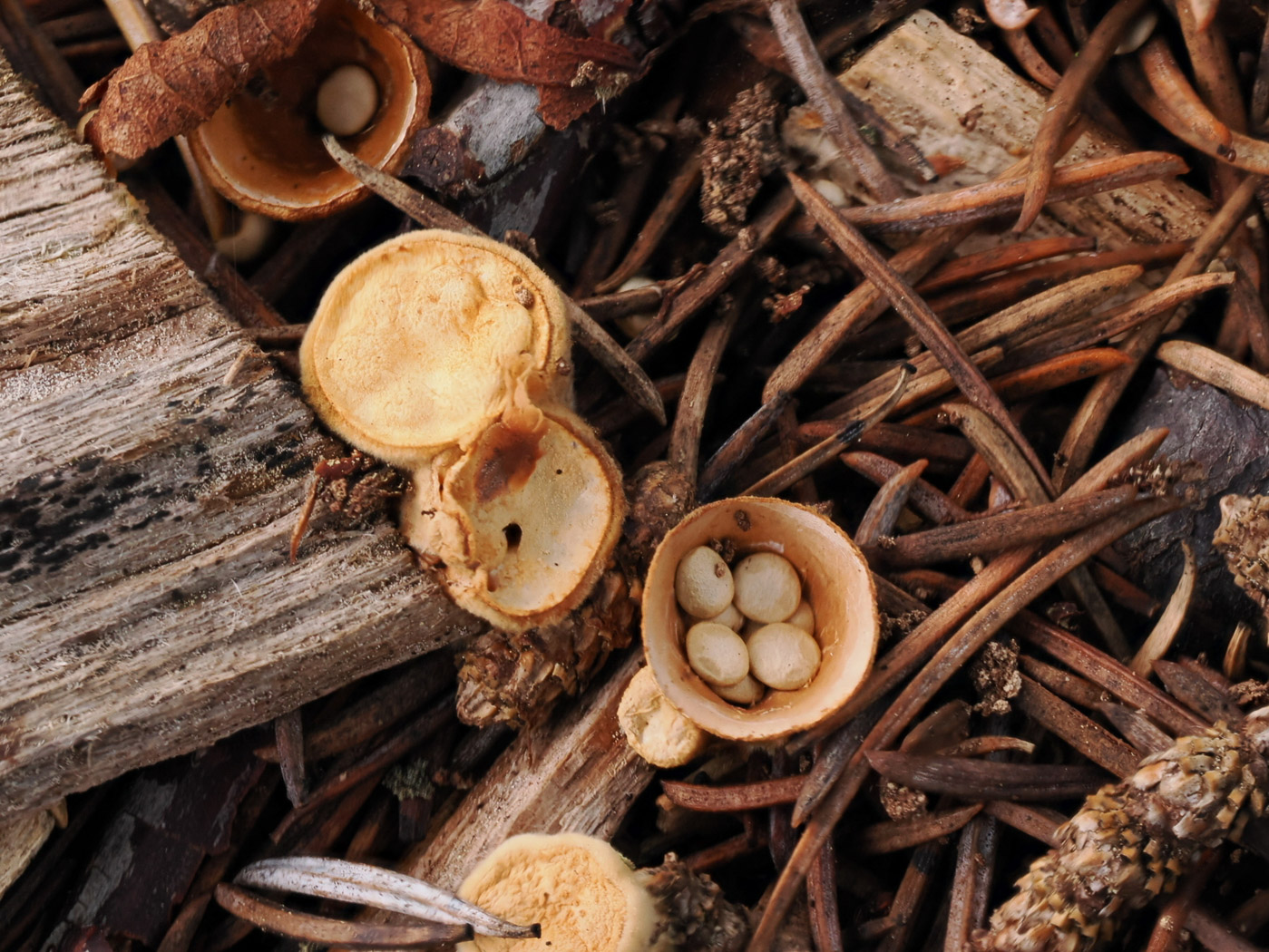
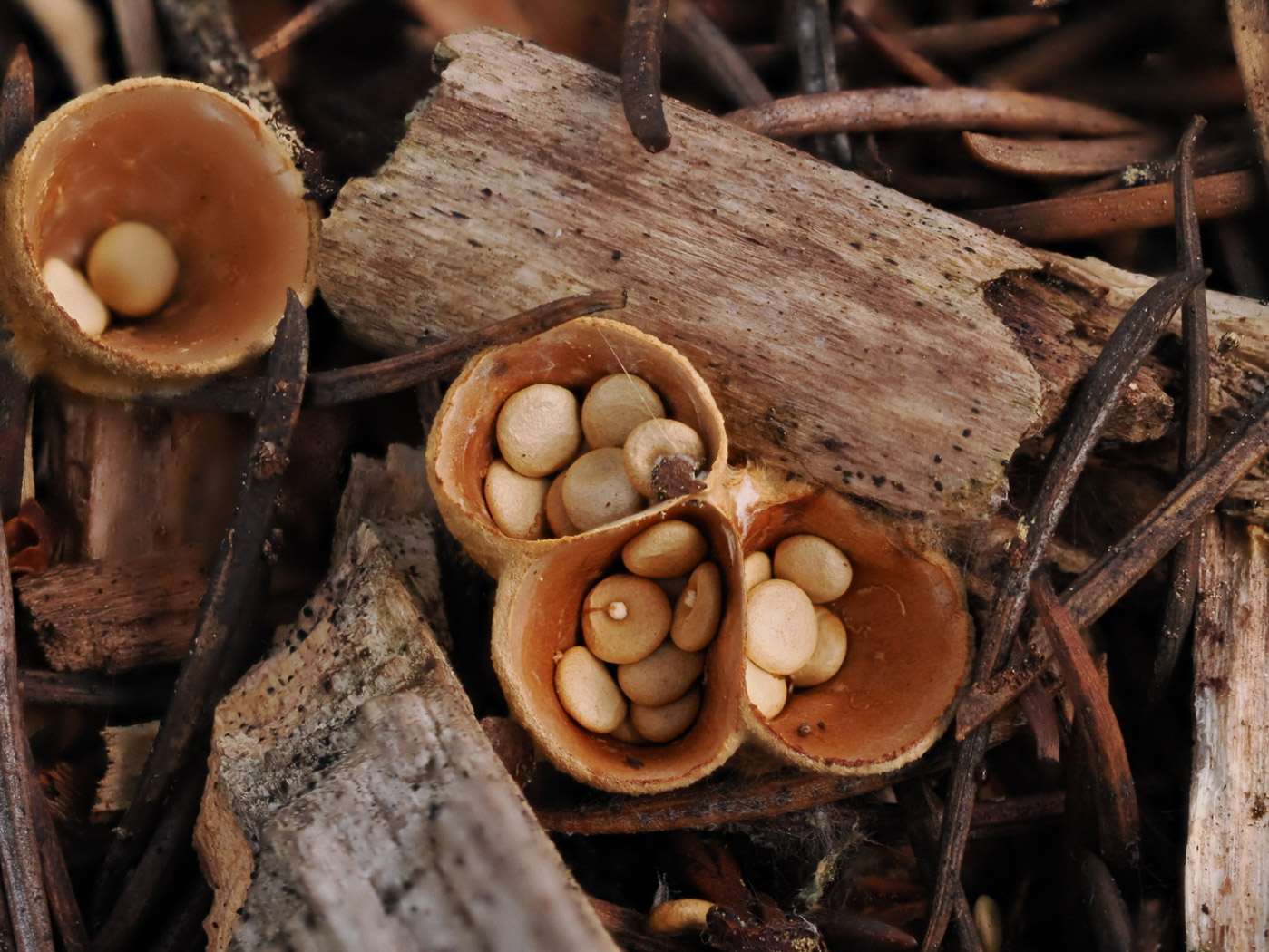 |
October 27th Crucibulum laeve (Common Bird's Nest)
At Stoke Poges Memorial Gardens we were amazed to find quantities of two species of Bird's Nest in the many substantial patches of woodchips. See also Cyathus striatus (Fluted Bird's Nest) just above for comparison. The tiny packets of spores (the 'eggs' within each 'nest') are dispersed by rain droplets, and each nest is less than 5mm across. Photo 1 is Stephen Plummer's. Penny and Claire Williams found both Birds' Nest species still in good numbers here on December 6th - photos 2 and 3 are Claire's.
|

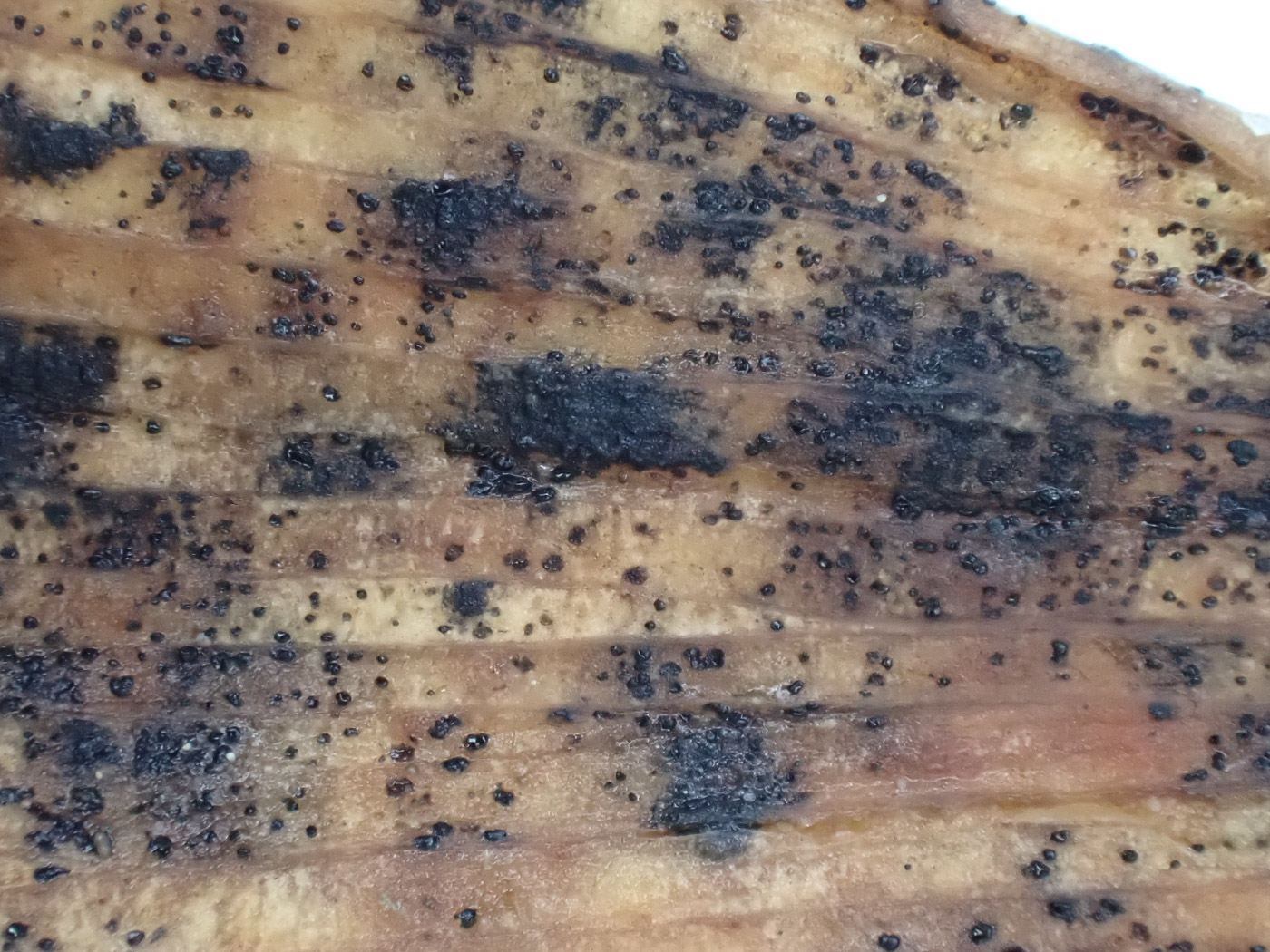 |
October 27th Bartheletia paradoxa (a rare Ascomycete with no common name) 
At Stoke Poges Memorial Gardens, when Stephen Plummer learnt that there was a Ginkgo biloba tree here, he recalled reading about a rare Asco which only occurs on the leaves of this particular tree, so went searching for the tree and found the fungus! Not surprisingly there are only a very few British records of this species which is new to the county, so all credit to Stephen for knowing about it.
|
 chrysostigma 1b.jpg) |
October 27th Psilachnum chrysostigma (an Ascomycete with no common name) 
At Stoke Poges Memorial Gardens Stephen Plummer found these tiny cups on a dead Fern stem and took them home to identify. Though not at all rare, the species has only been recorded in the county once before, no doubt because not many people study such species which are obviously easily missed. Their size can be assessed by the relative thickness of the stem here. This is a new entry for Finds.
|
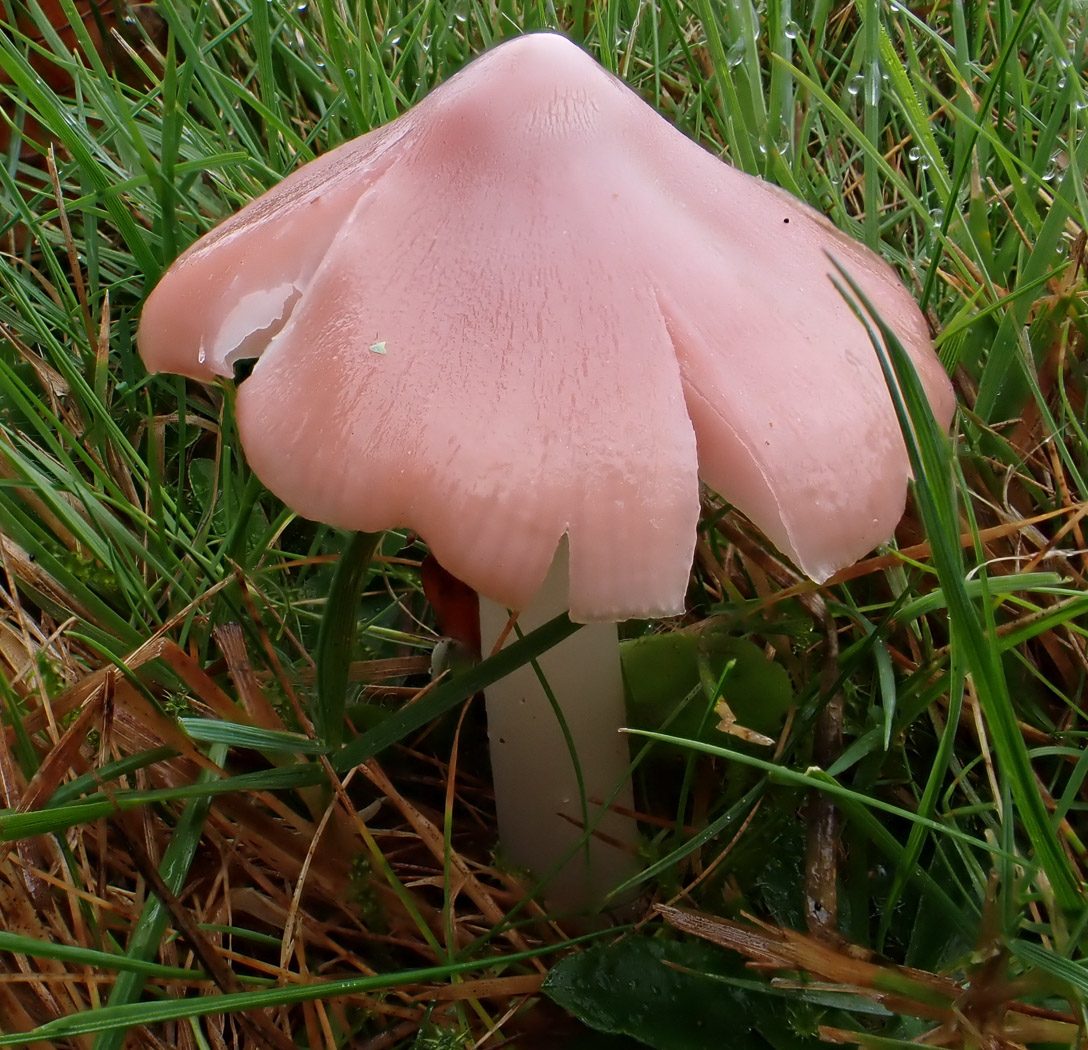 |
October 27th Porpolomopsis calyptriformis (Pink Waxcap)
At Stoke Poges Memorial Gardens in an area of lawn Penny was relieved and delighted to find just three specimens of this rare and beautiful Waxcap fruiting in the same spot where it has now been found for well over 10 years, hardly ever failing. Previously in genus Hygrocybe and also known as the Ballerina Waxcap - in Penny's opinion a better name by far - it is always a pleasure to find. See also in Finds 2020 October 28th and 2021 October 30th - both also from this site.
|
 |
October 27th Cuphophyllus pratensis (Meadow Waxcap)
At Stoke Poges Memorial Gardens in an area of lawn Penny found this cluster of Waxcaps (previously in genus Hygrocybe). This is one of our commoner Waxcaps, quite a large chunky species with a dry cap and stem and distinctive widely species decurrent gills. See the Finds Masterlist for further images.
|
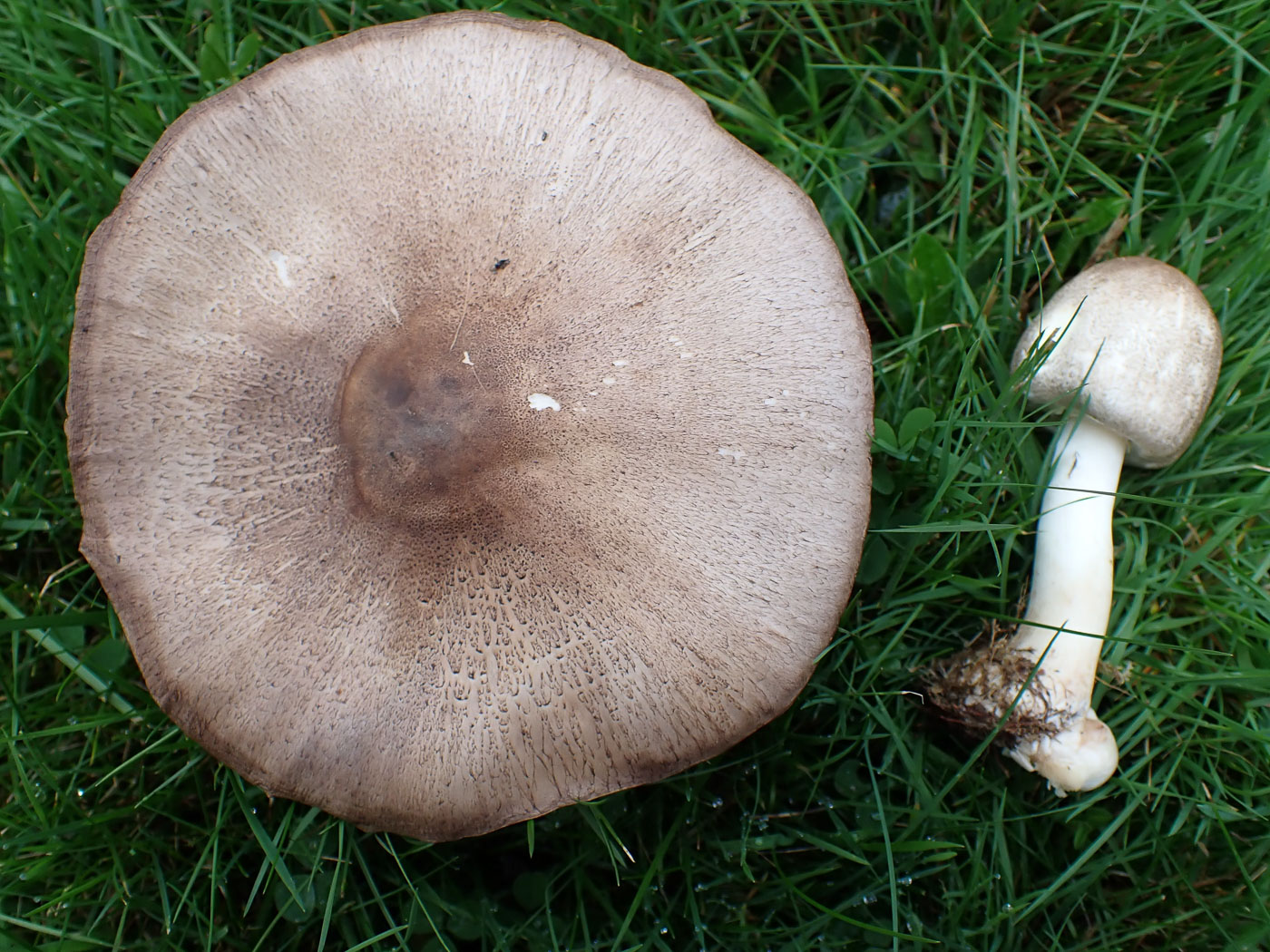
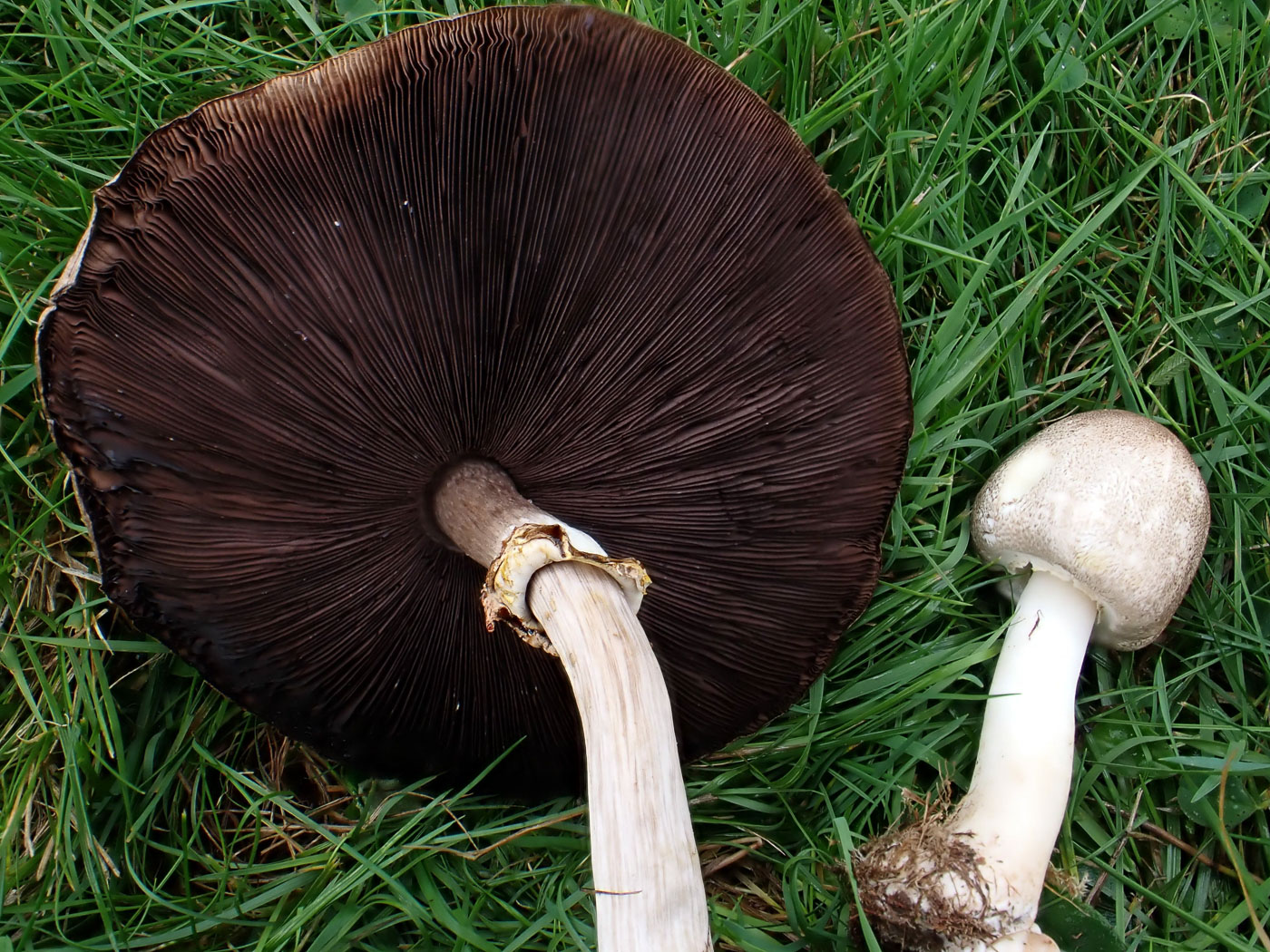 |
October 27th Agaricus moelleri (Inky Mushroom) 
At Stoke Poges Memorial Gardens Penny found a couple of specimens of this quite unusual species, one that is related to A. xanthoderma (Yellow Stainer). It shares the same rather unpleasant inky smell of Phenol with that species but differs in having a coating of very fine blackish scales over the cap and less marked yellow staining at the stem base though all parts will show signs of yellowing where damaged. The photos are Stephen Plummer's and this is a first for Finds.
|
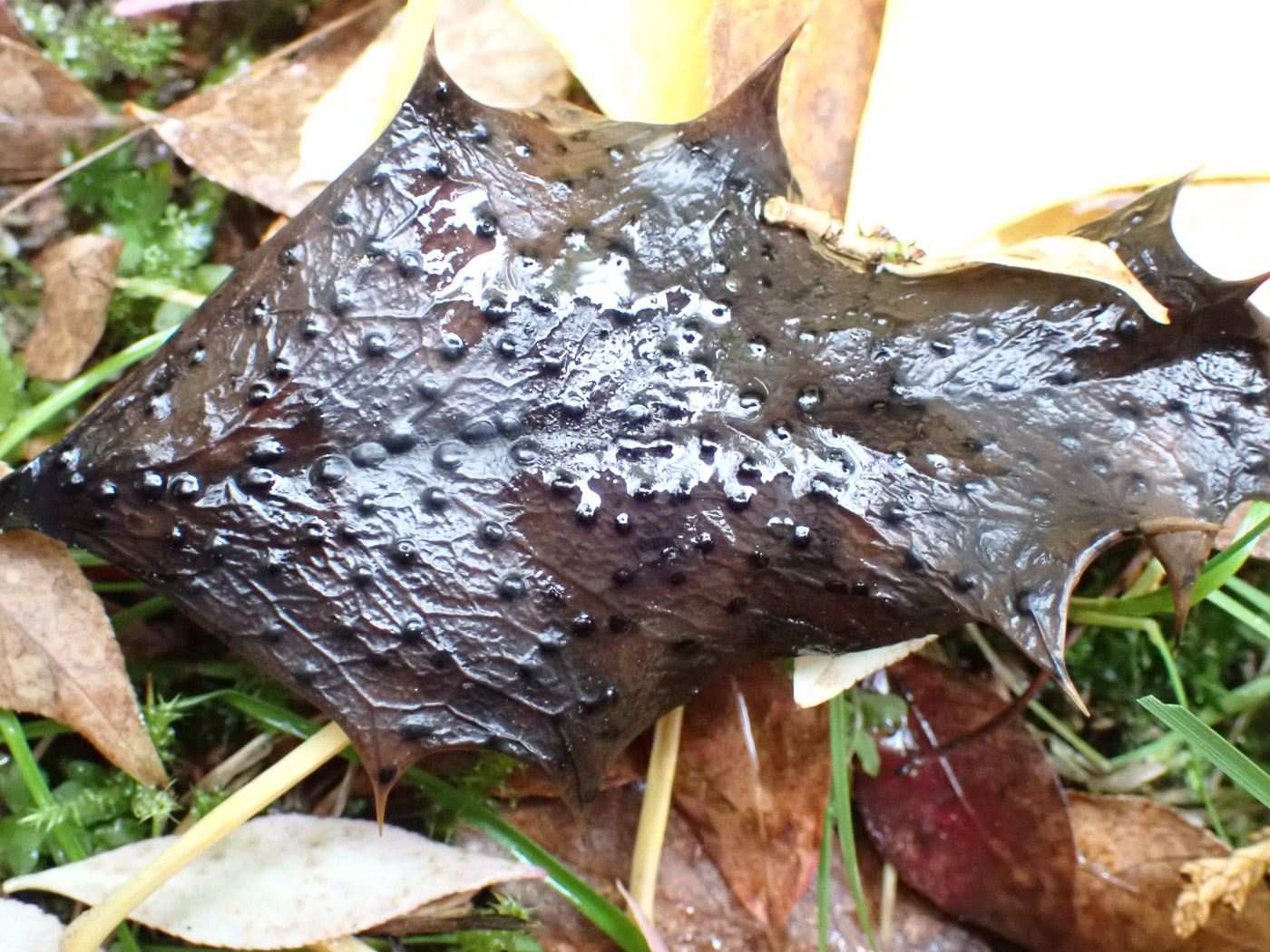 |
October 27th Phacidium multivalve (an Ascomycete with no common name)
On a dead Holly leaf in Stoke Poges Memorial Gardens Stephen Plummer found this very common species though one which is easily overlooked. There are two very similar 'black dots' which occur on this particular host, both equally common and sometimes both on the same leaf, the smaller species being Trochila ilicina (Holly Speckle) and the larger today's species. See in Finds 2020 December 15th for the smaller species - today's image is the first for Finds' however.
|
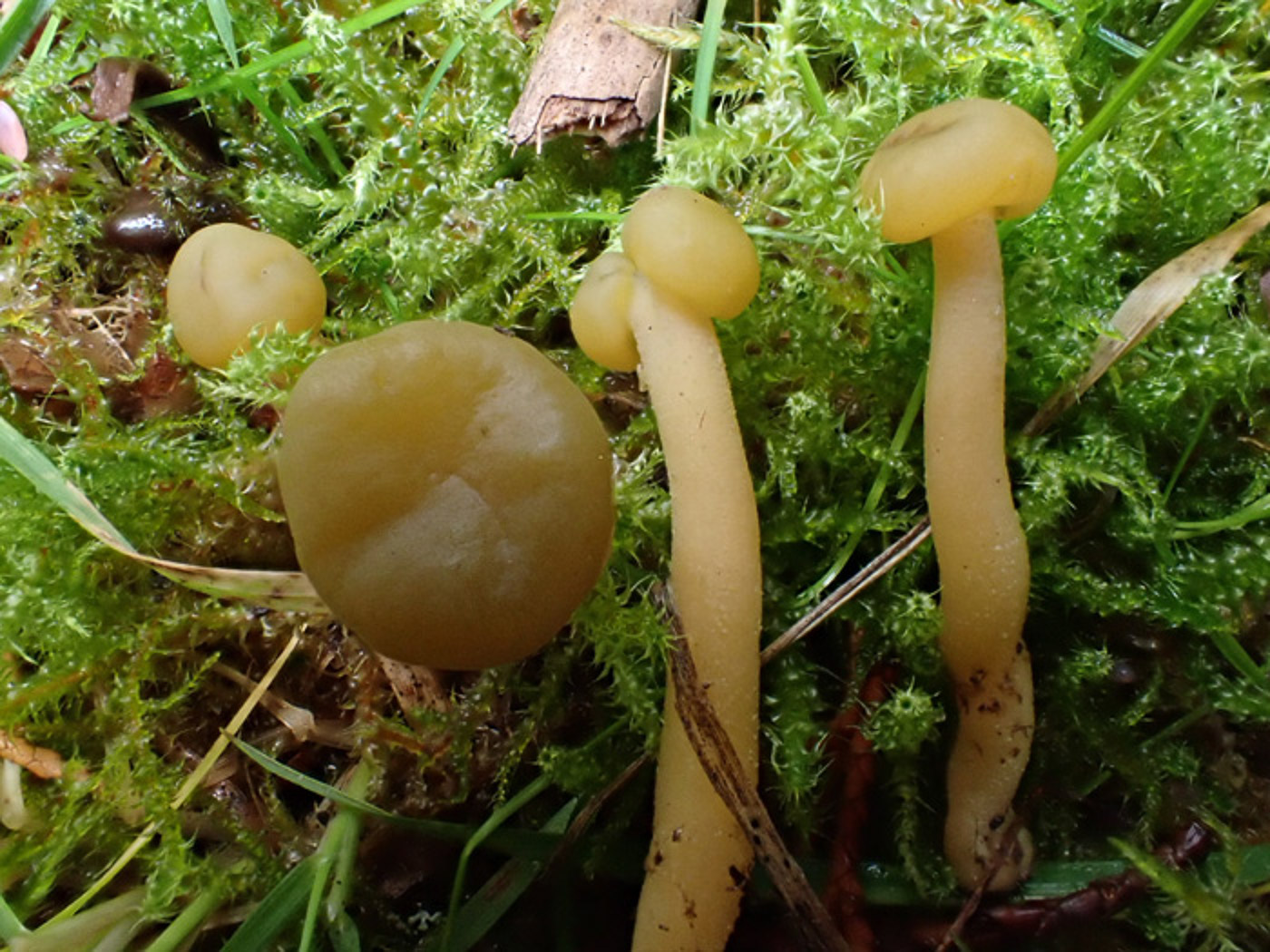 |
October 27th Leotia lubrica (Jellybaby)
At Stoke Poges Memorial Gardens Stephen Plummer found a few of these long stemmed Ascomycetes which appear initially to be mushrooms but there are no gills underneath the caps which are soft and gelatinous as their common name suggests. They are not at all rare but occasional fruiters in mossy places, banks in wooded areas and grassland. We have one other entry on Finds, 2020 November 1st.
|
 |
October 27th Macrocystidia cucumis (Cucumber Cap)
At Stoke Poges Memorial Gardens Penny found good numbers of this species fruiting in woody debris along a rather dark path. Its cone-shaped rich brown cap with paler margin together with the crowded pale gills and contrasting dark stem make it quite distinctive, but add to that it's remarkable smell of cod-liver-oil / salmon and cucumber sandwiches (it's a matter of opinion!) and huge pointed cystidia on the gill edge, and the species should be an easy one to identify. The photo is Stephen Plummer's We have two other images in Finds - see the Masterlist for details.
|
October 26th 2022
 |
October 26th Amanita echinocephala (Solitary Amanita)
Under Beech at Ragpits Reserve, Aston Clinton, Jesper Launder found this quite unusual Amanita - one which likes really chalky soil. The cap veil cells are raised and prominently scale-like and are also found below the ring on the stem, making this species quite distinctive. See also in Finds 2020 September 23rd.
|
October 25th 2022

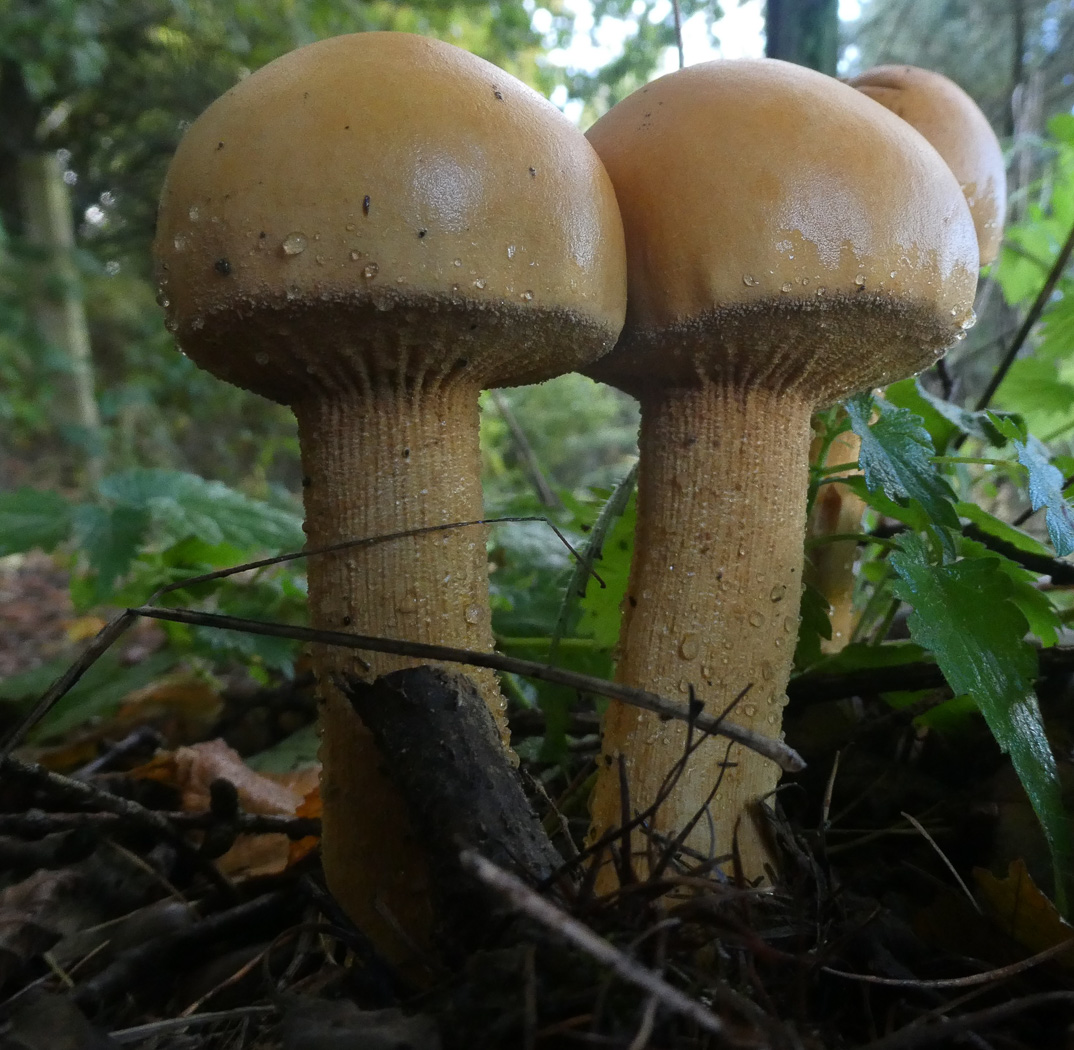
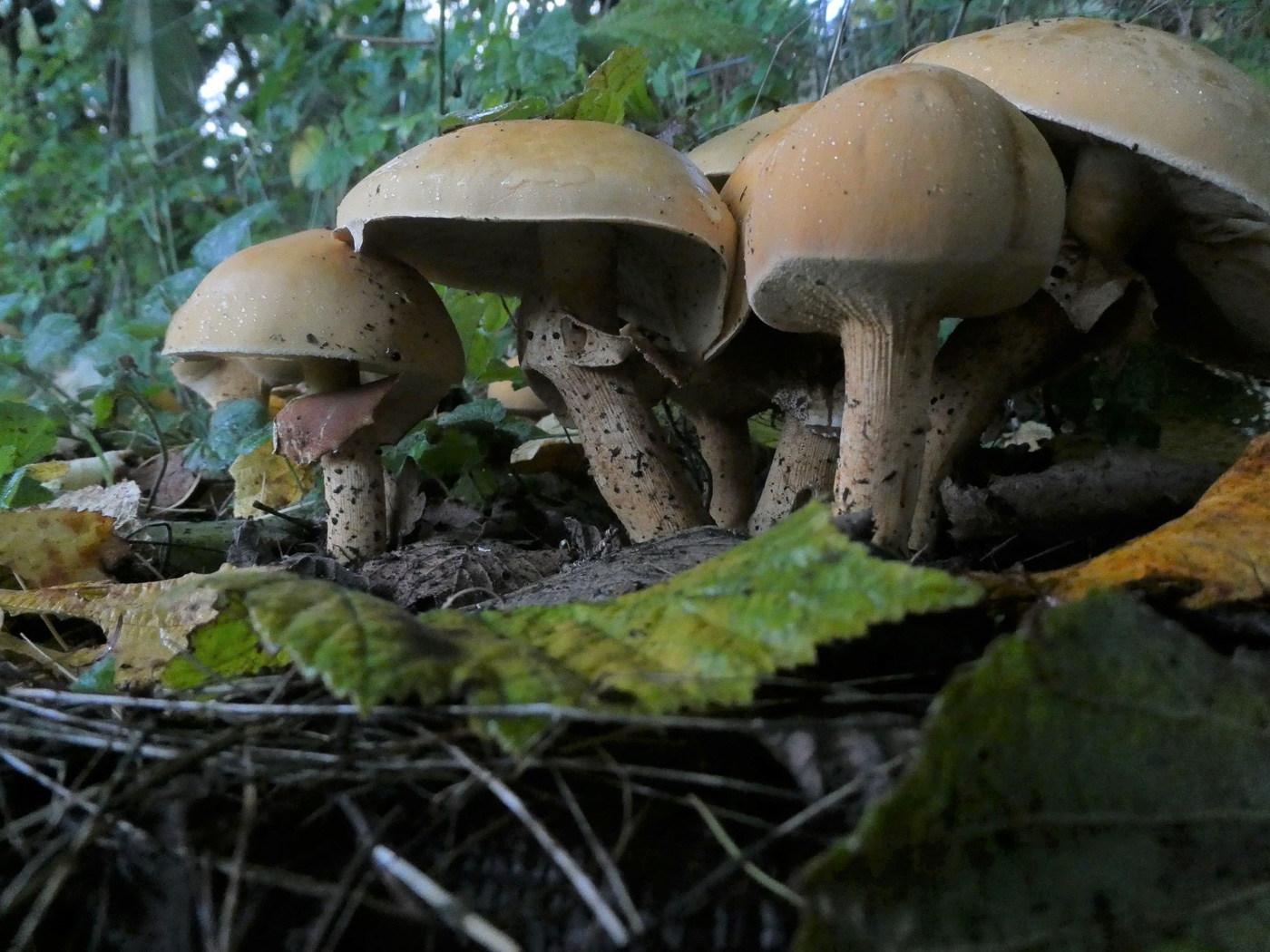
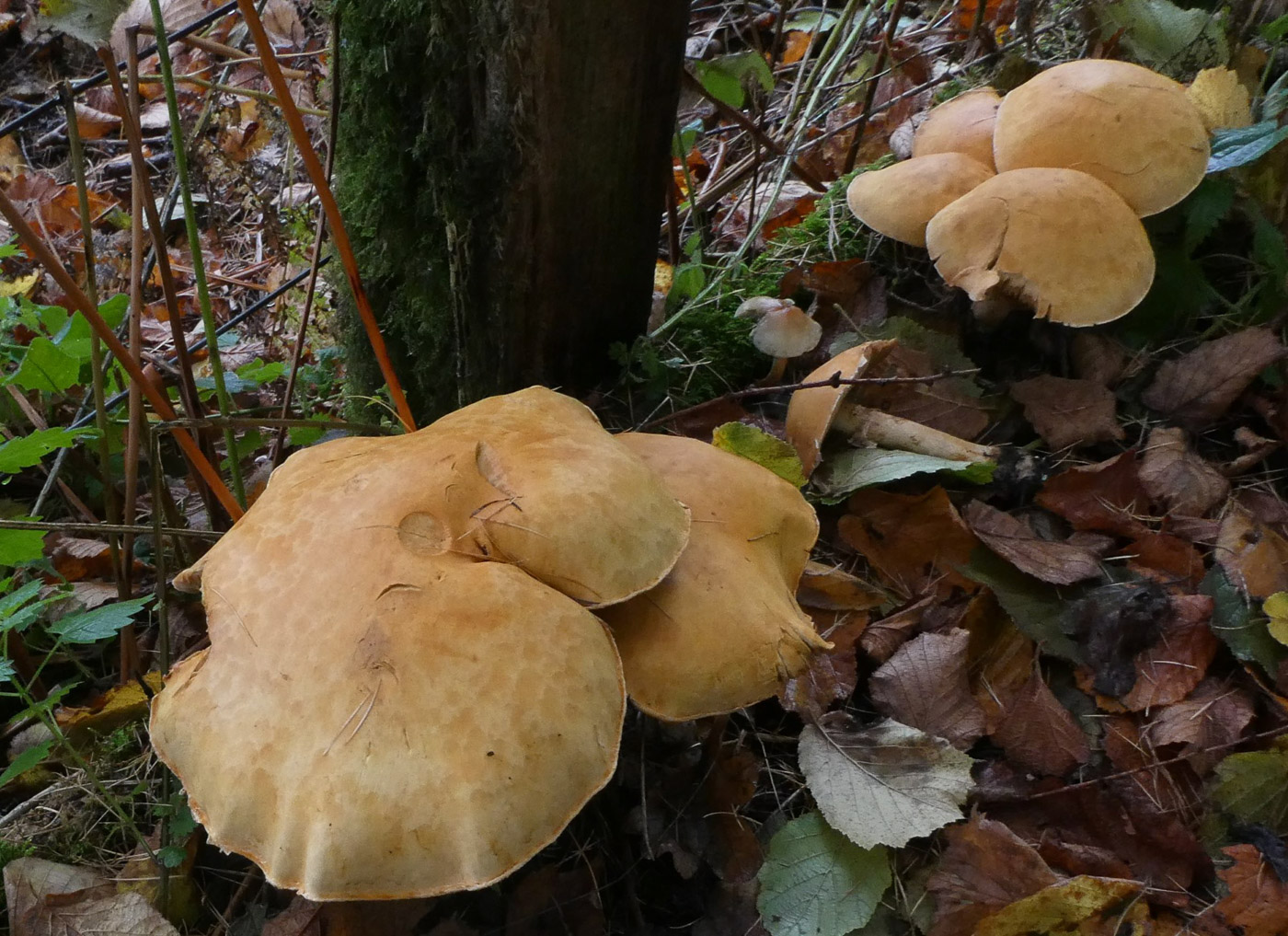
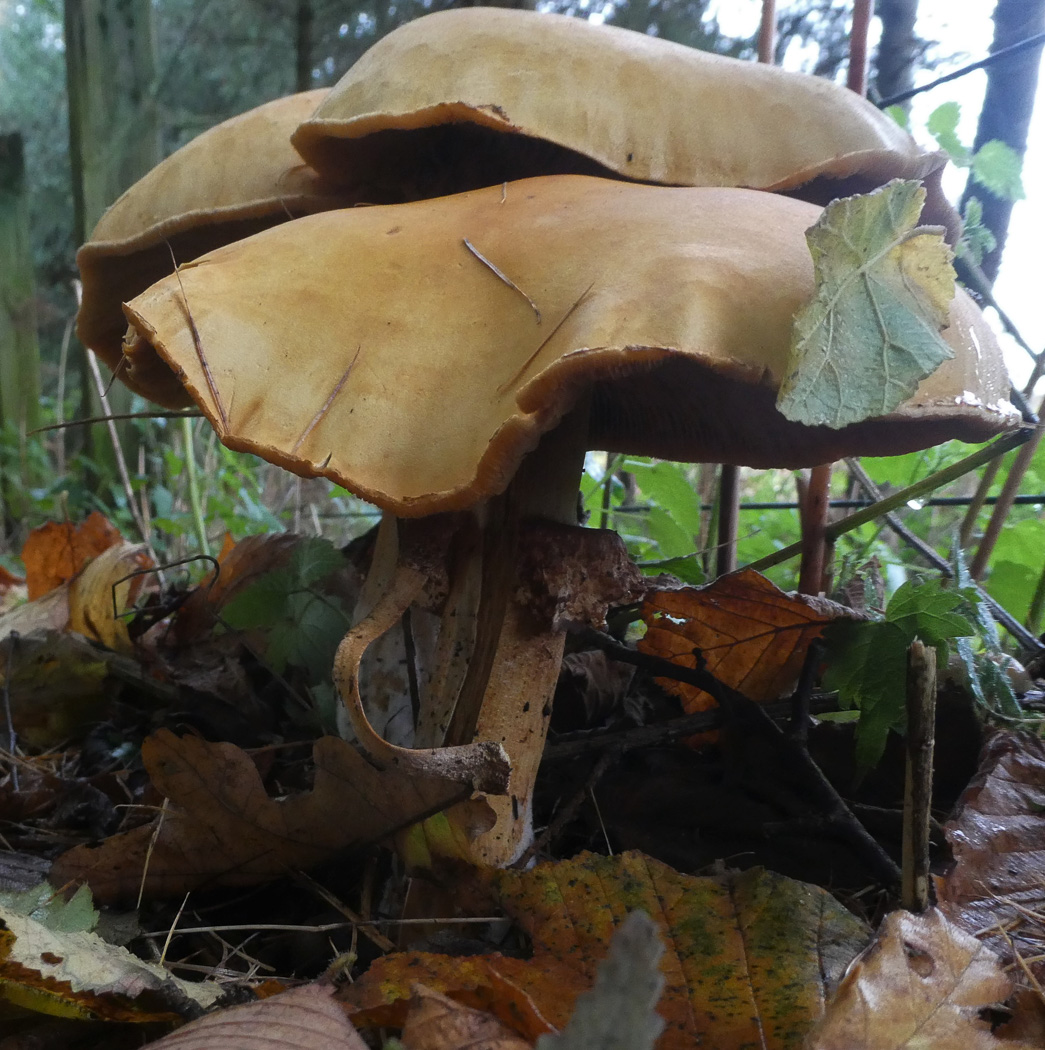 |
October 25th Phaeolepiota aurea (Golden Bootleg) 
A week previously Jim Wills sent Penny photo 1, suggesting this might possibly be young specimens of this rare and seldom seen fungus coming up in litter on a path in Chalfont St Peter. 'Yes' she said, 'and please keep your eye on it as it develops!'.She was then delighted to get today's photos showing the further developed specimens though still with some way to go but very obviously correctly identified by Jim. This is a large mushroom in some ways reminiscent of the genus Lepiota, but it has pale brown gills which are not free, a powdery cap surface and a thick membranous ring which, once detached from the cap edge, hangs down like a skirt - just visible on the LH specimen in photo 3. Jim returned and took photos 4 and 5 five days later when they were fully developed but sadly rather battered and bashed by weather and their rather exposed position in a public path! Nevertheless their size can be assessed by the Poplar leaf attached to one cap and the somewhat bedraggled brown ring is visible underneath. We have just two previous county records, both from Penn Wood in 2016 and 2020, so this was a significant find.
|
October 24th 2022
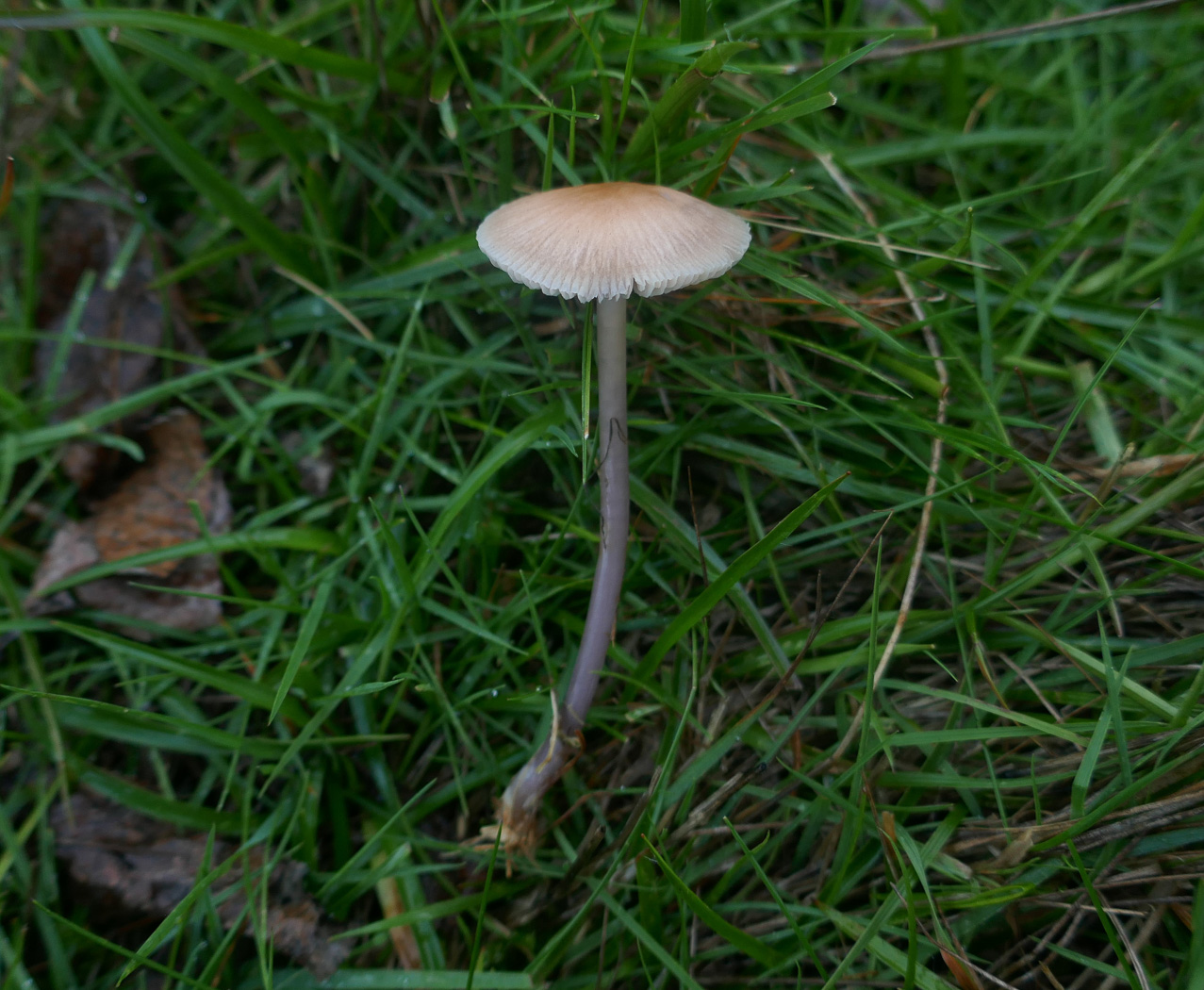
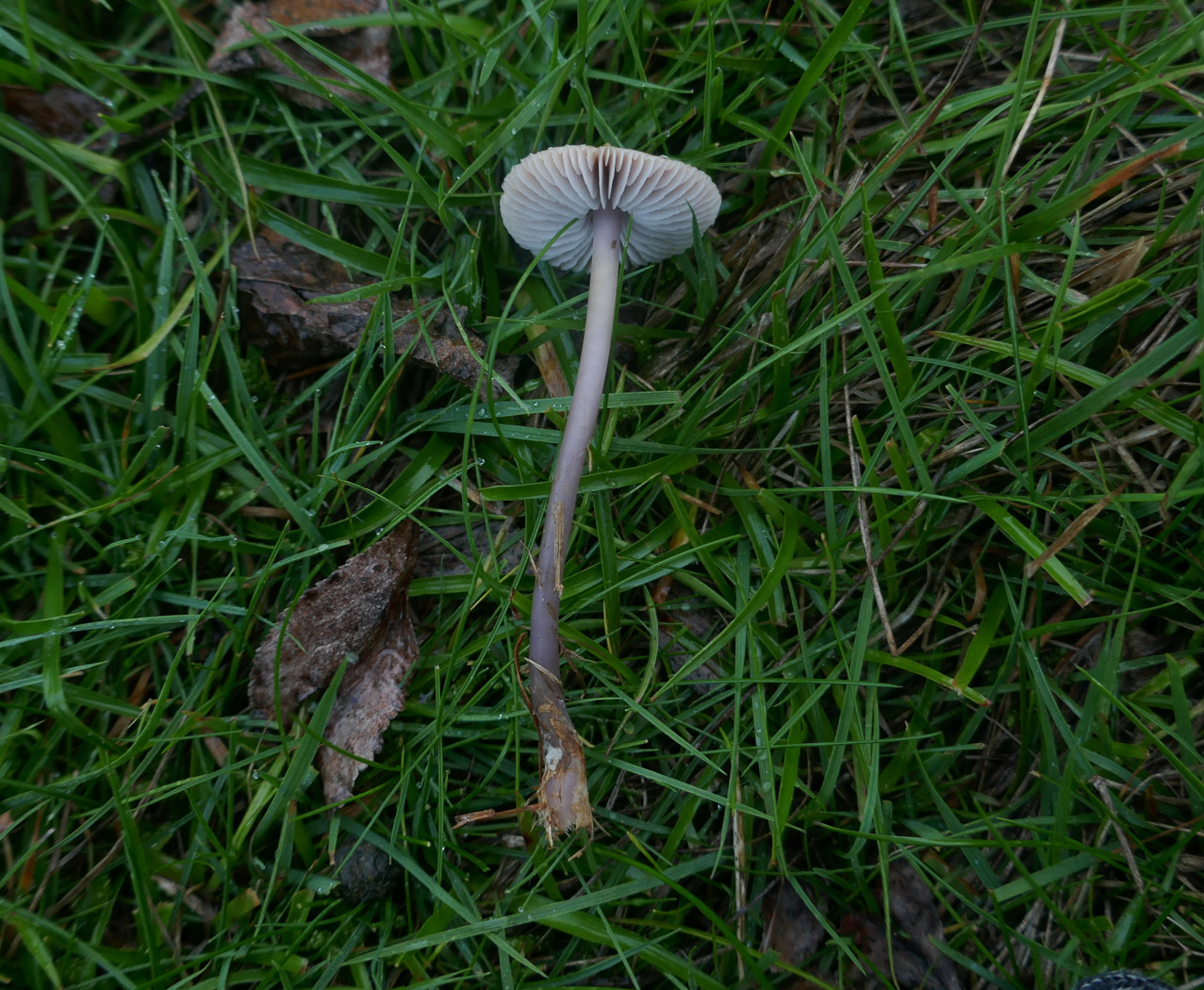 |
October 24th Mycena luteovariegata (a Bonnet with no common name)
At Stampwell Farm Jackie Ewan found this species - previously described as a variety of M. pura (Lilac Bonnet) in a grassy area. Yellow forms of M. pura are found in grassland not that uncommon, and as this variety has now been elevated to species level it counts as new to the county as this is the first time we've recorded it under this name! It has the same radishy smell as others in the 'pura' group and the lilac tint is often present - here seen at the top of the stem. it is a new entry for Finds.
|
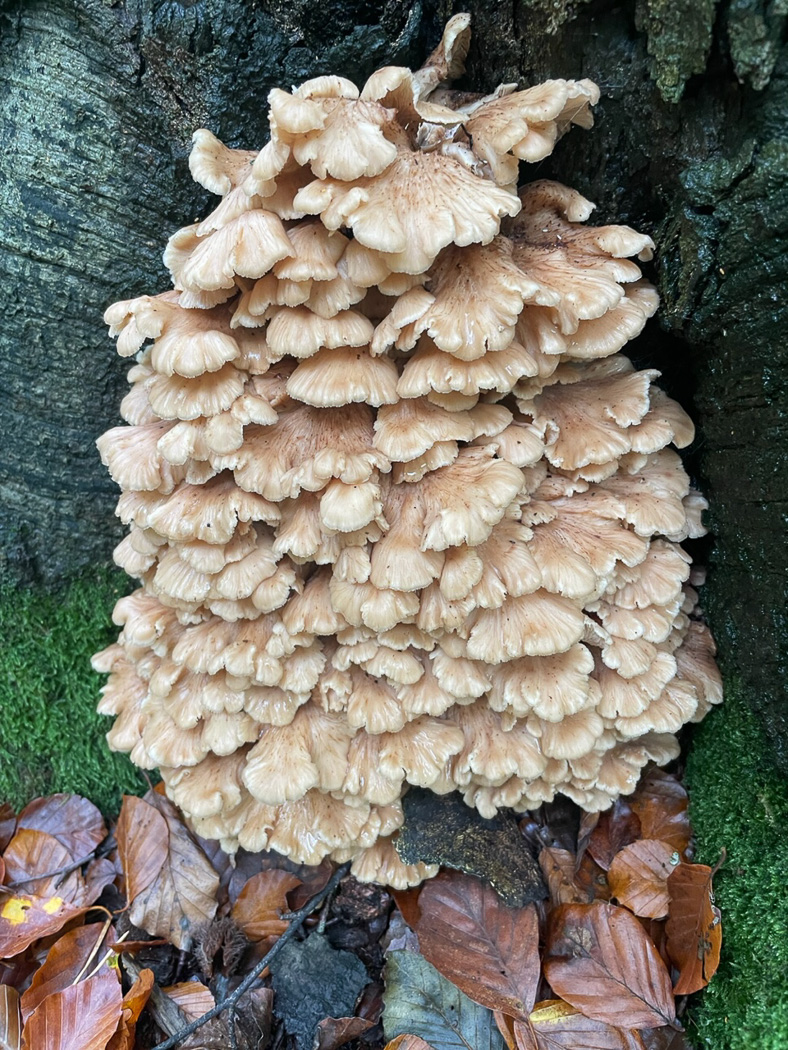
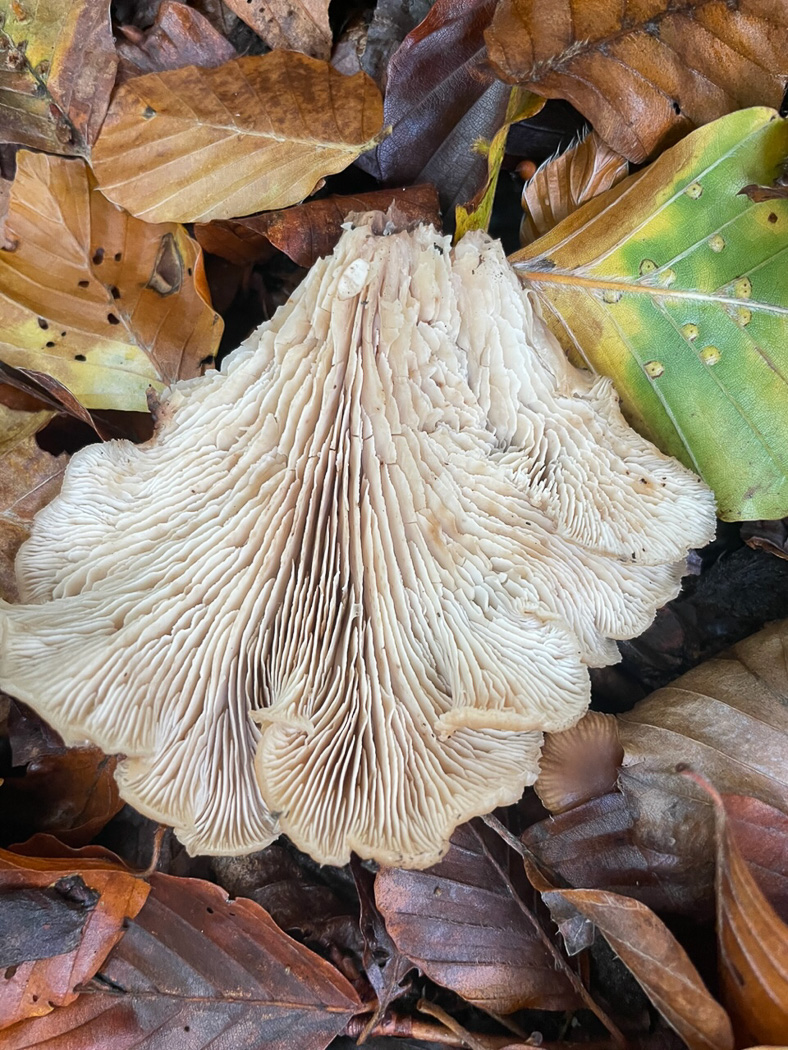 |
October 24th Lentinellus vulpinus (Fox Lentinellus) 
In Great Wood, Culden Faw Estate near Henley, Richard Fortey was excited to find this large spread of a rare species fruiting so prolifically on an old Beech trunk. Similar in growth habit to the Oyster species, it differs in entirely lacking a stem and having rather thin crowded fan-like gills which have a distinctly serrate edge (like a saw). This is a rare species with few national records with just one from the county in 1999 from the Cliveden Estate made by Kew mycologist Martyn Ainsworth. The photos were taken by Caroline Lawrence and this is a first for Finds.
|
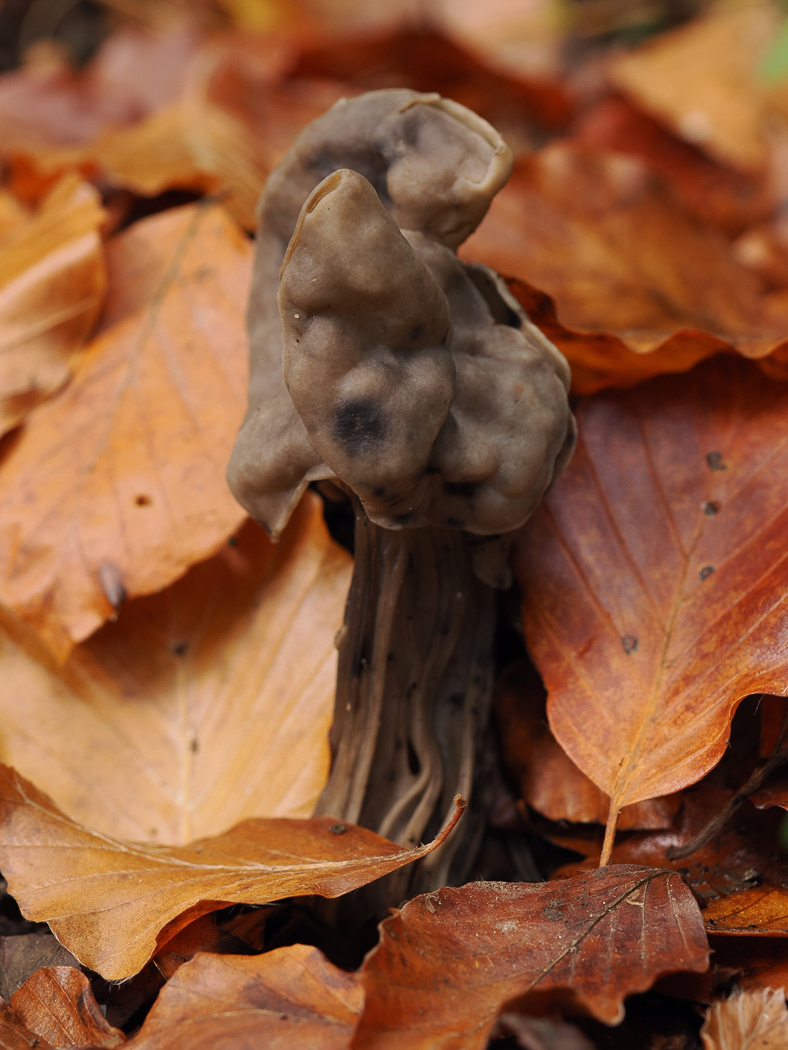 |
October 24th Helvella lacunosa (Elfin Saddle)
In Lott Wood Claire Williams found this Ascomycete in Beech litter. It is usually a bit squatter - also less frequent - than White Saddle (see just below) and its dark colours often make it hard to spot. See the Finds Masterlist for several more examples.
|
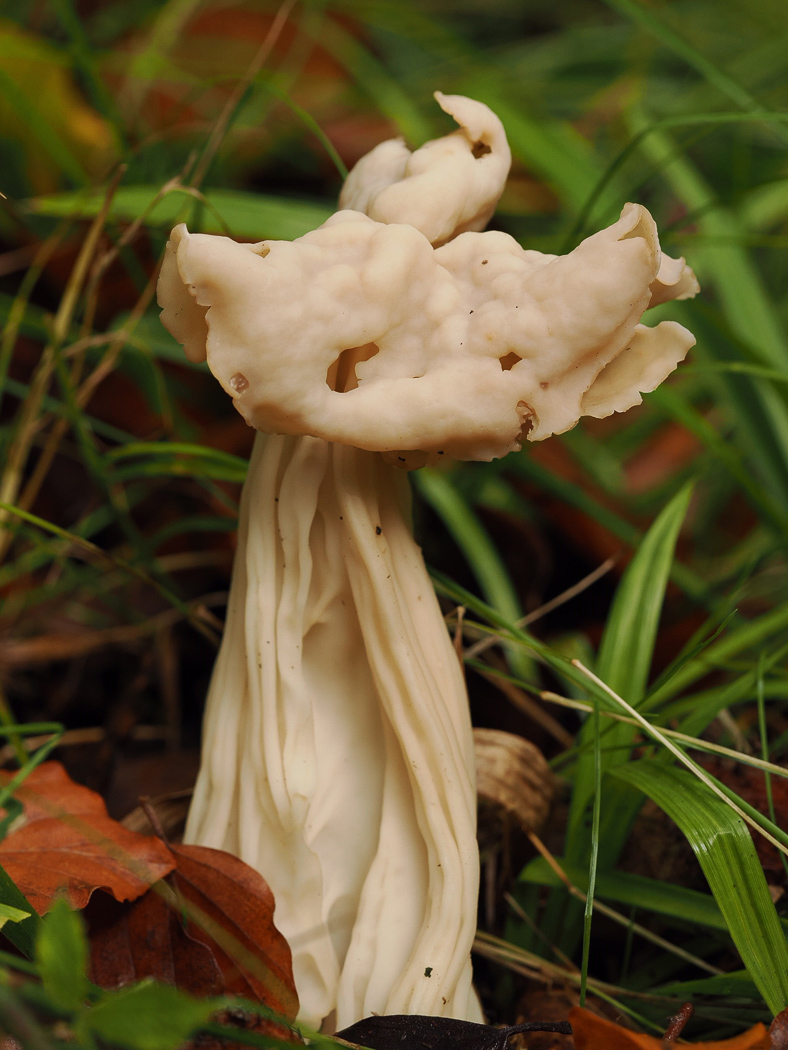 |
October 24th Helvella crispa (White Saddle)
In Lott Wood Claire Williams found this normally quite common Ascomycete though so far this autumn it seems to have been very scarce. For an Asco it is a good size, standing often about 12 cms tall or even more, the ribbed stem being distinctive. See also in Finds 2020 October 5th and 2021 November 16th.
|
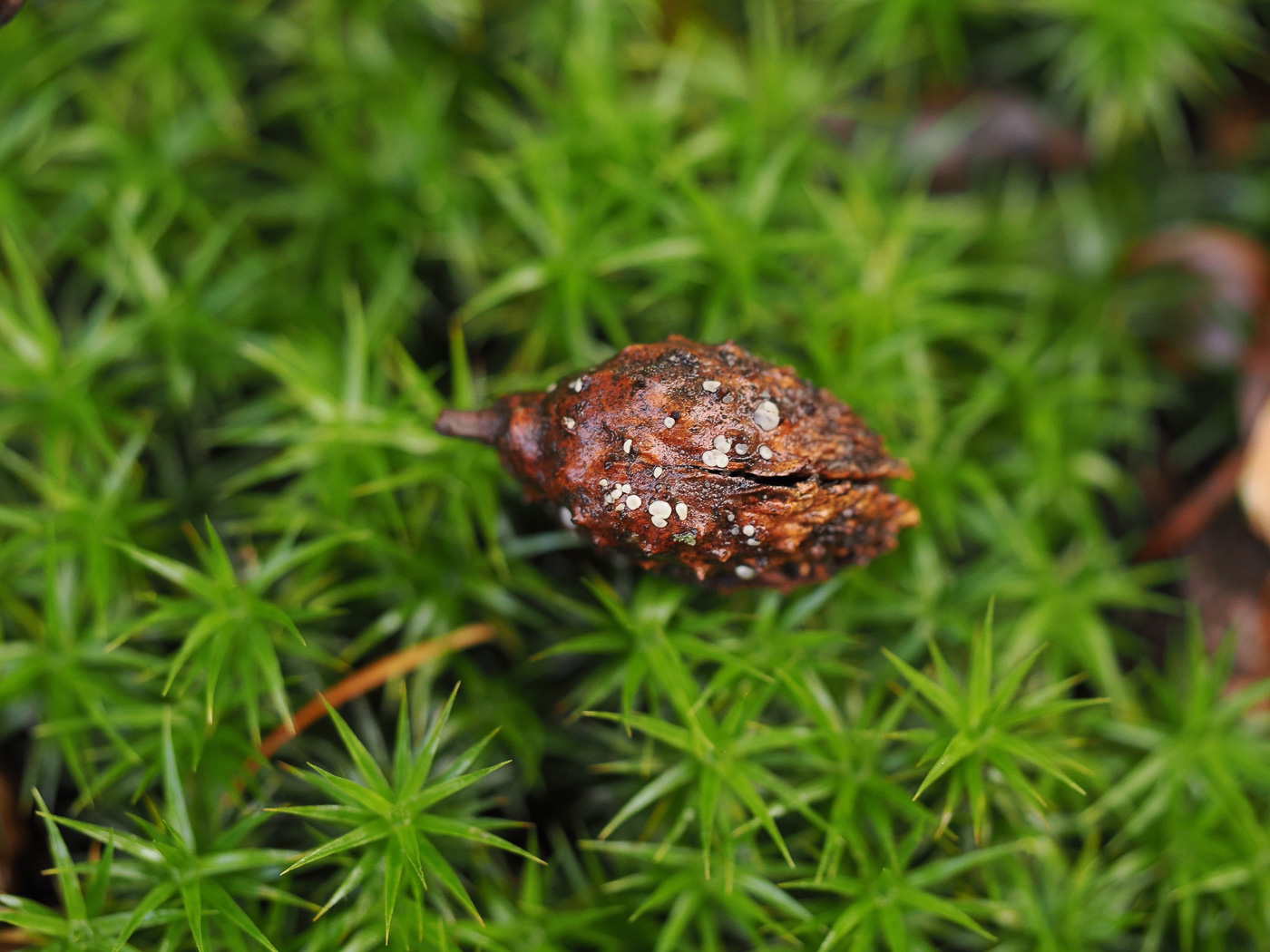
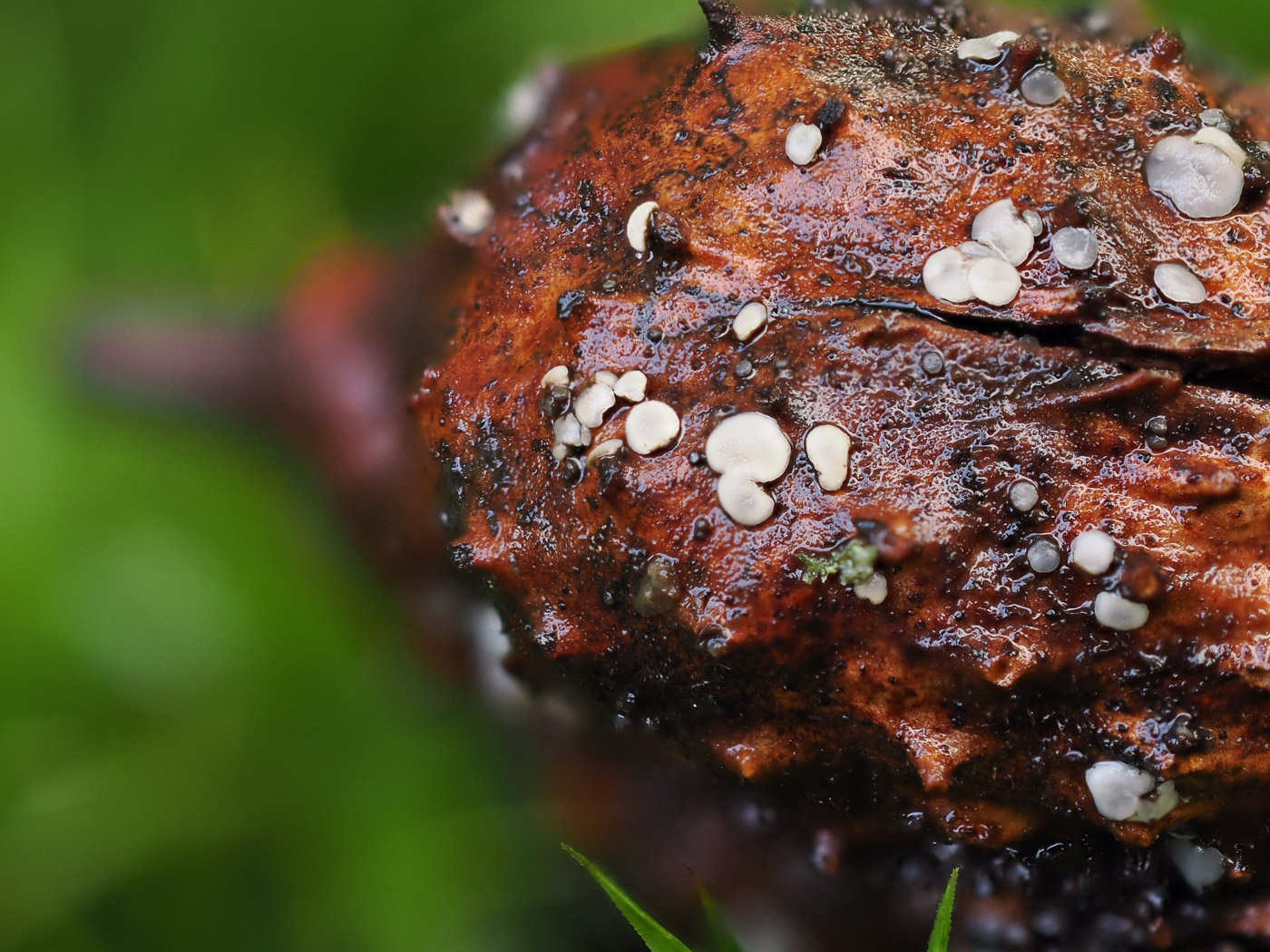 |
October 24th Hymenoscyphus fructigenus (Nut Disco)
In Lott Wood (after successfully finding the Dendrocollybia racemosa) Claire Williams noticed these tiny short stemmed cups which are common on fallen Beech cupules. We have one other image on Finds dated 2021 October 4th.
|
October 23rd 2022
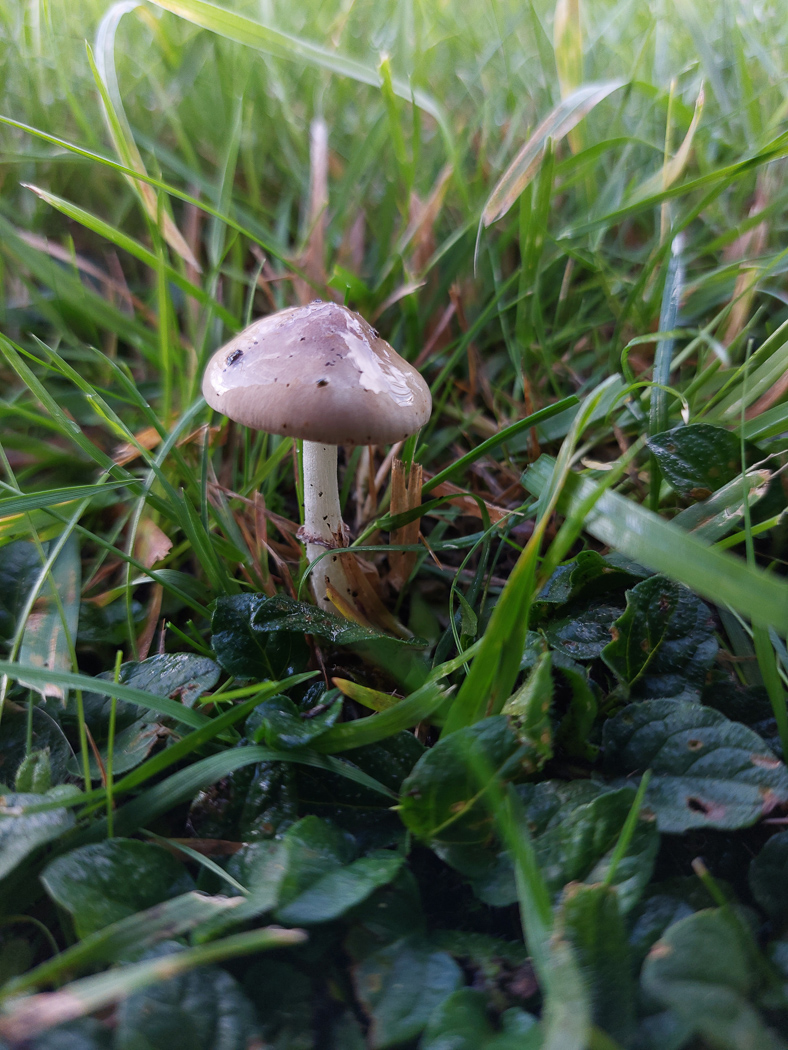 |
October 23rd Stropharia inuncta (Smoky Roundhead)
In Granborough churchyard Jesper Launder found this singleton in a grassy area. For this genus it is a somewhat small and dull-coloured species - several are brightly coloured - and for that reason it often evades recognition in the field, but it has the typical slimy cap and grey gills with a ring on the stem. It is an occasional species of grassy patches and we have one previous Finds entry: 2020 October 27th.
|

 |
October 23rd Hygrophoropsis rufa (an unusual species of False Chanterelle)
In Granborough churchyard Jesper Launder noticed this False Chanterelle which had a dark roughened and finely hairy cap centre, making it this relatively recently described but quite distinctive species. We have a couple of previous county records, one of them in Finds 2020 October 28th.
|
October 21st 2022
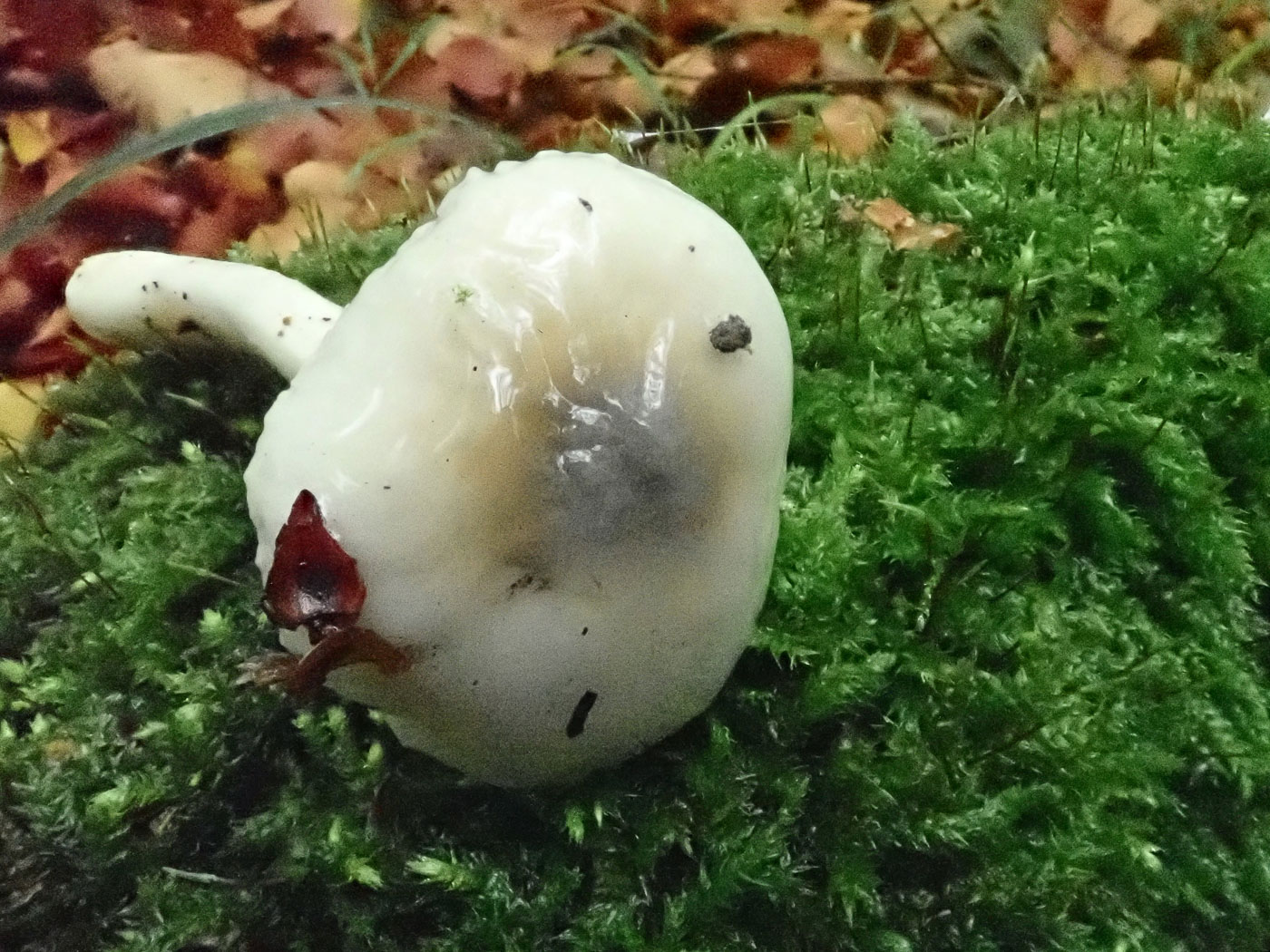
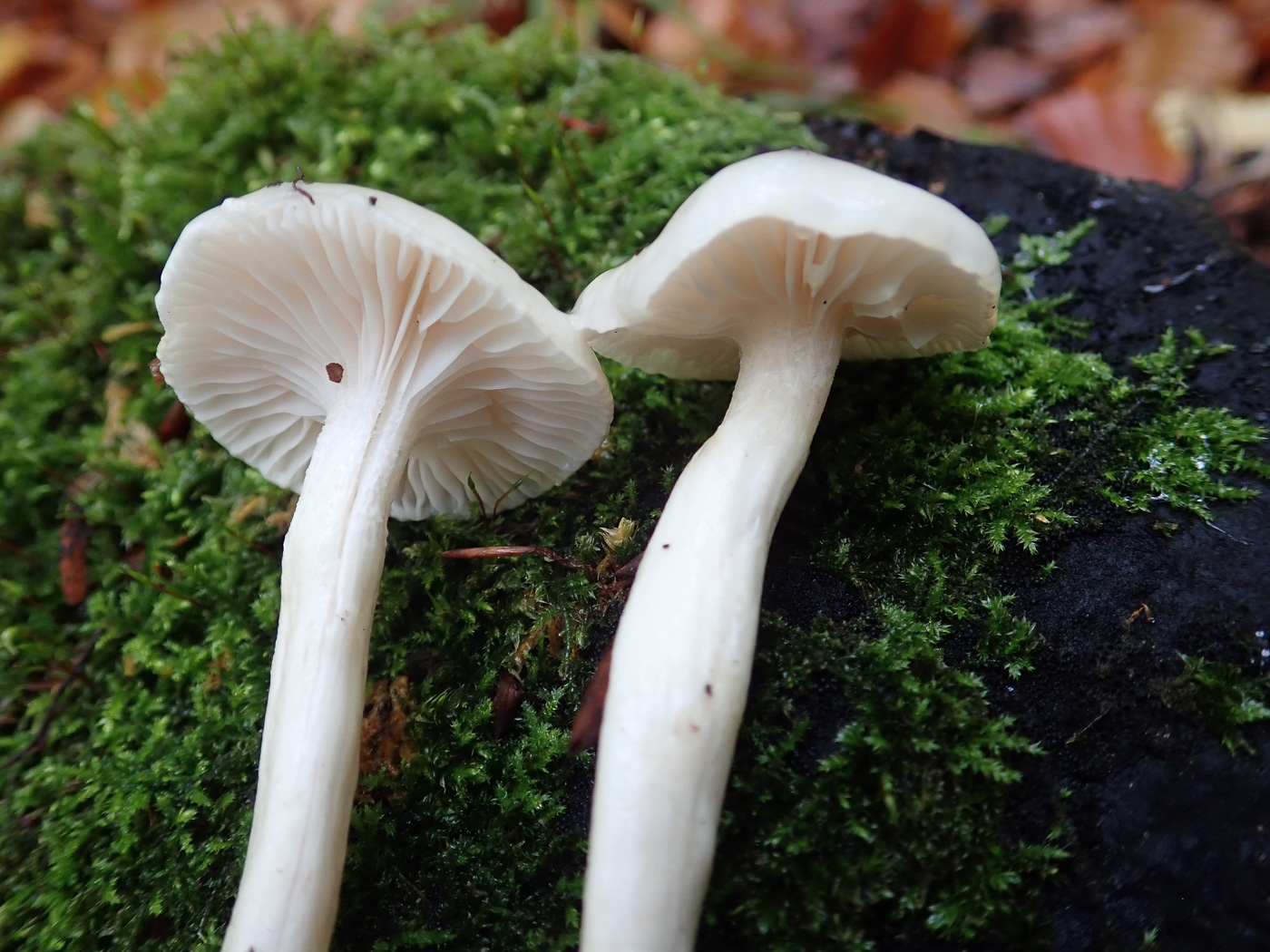 |
October 21st Hygrophorus mesotephrus (a rare Woodwax with no common name) 
Under Beech in Gussett's Wood Penny found just these two specimens thickly coated in slime and knew she’d found something interesting. Unlike the other white-capped sticky Woodwaxes these had a greyish look to then with distinctly darker grey centres, also the proportions appeared different: longer stems and smaller slightly umbonate caps. At home she checked and found H. mesotephrus fitted like a glove, even to having the very top of the stem dry and slightly narrower - visible here. We have just a couple of previous county records of this species which is new to Finds.
|
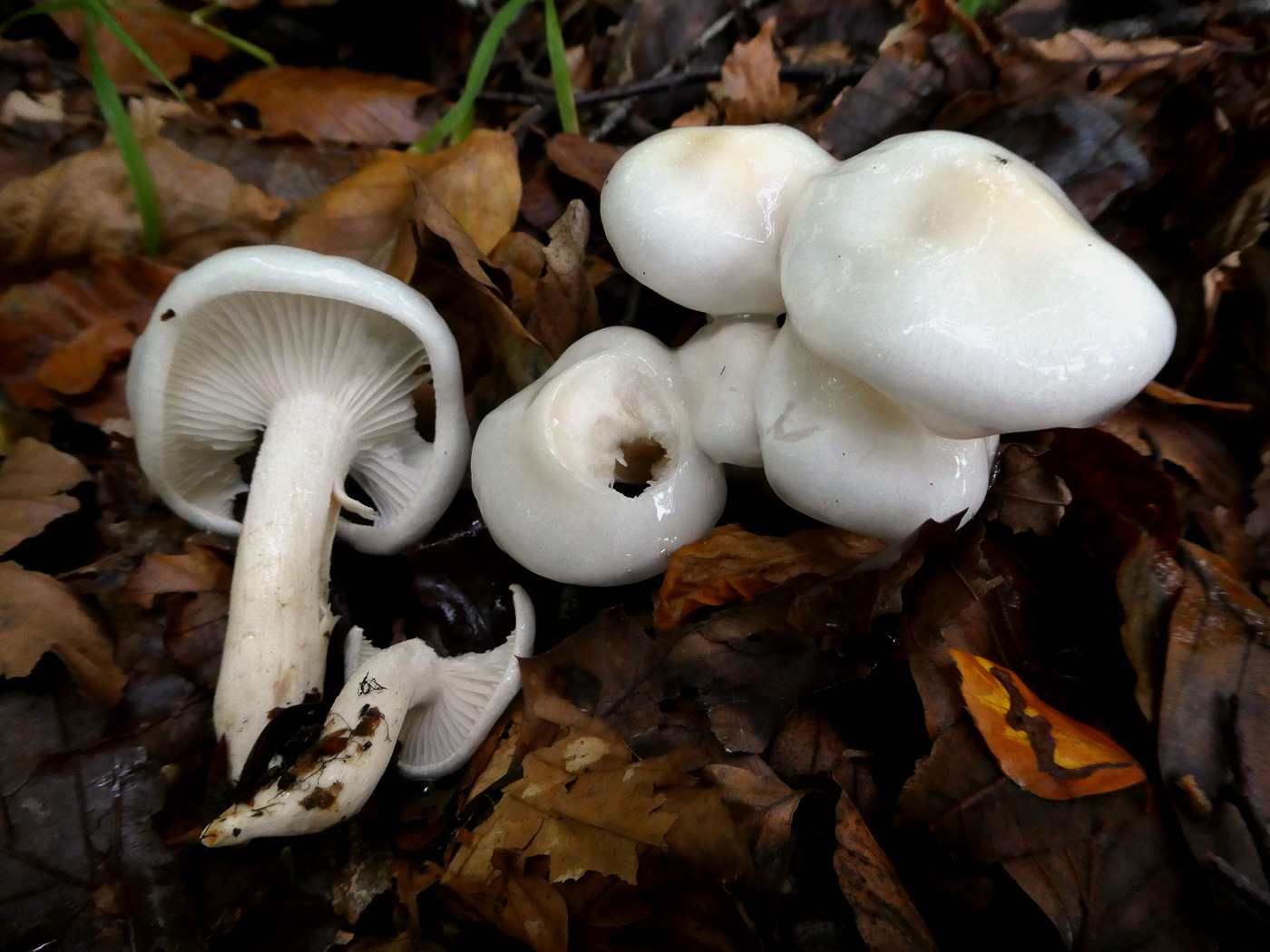 |
October 21st Hygrophorus eburneus Hygrophorus eburneus
Under Beech in Gussett's Wood Penny found good numbers of this small but very slimy white Waxcap, one of several very similar species. Two of these - including this one - are common under Beech and they can easily be split with a drop or two of KOH: both go bright rusty brown with a drop on the base of the stem but only H. discoxanthus goes this colour with a drop on the cap as well. (Neither of the two rarer species react to KOH in this way.) The KOH test at home showed this collection was H. eburneus. See also in Finds 2020 October 10th and 2021 October 20th.
|
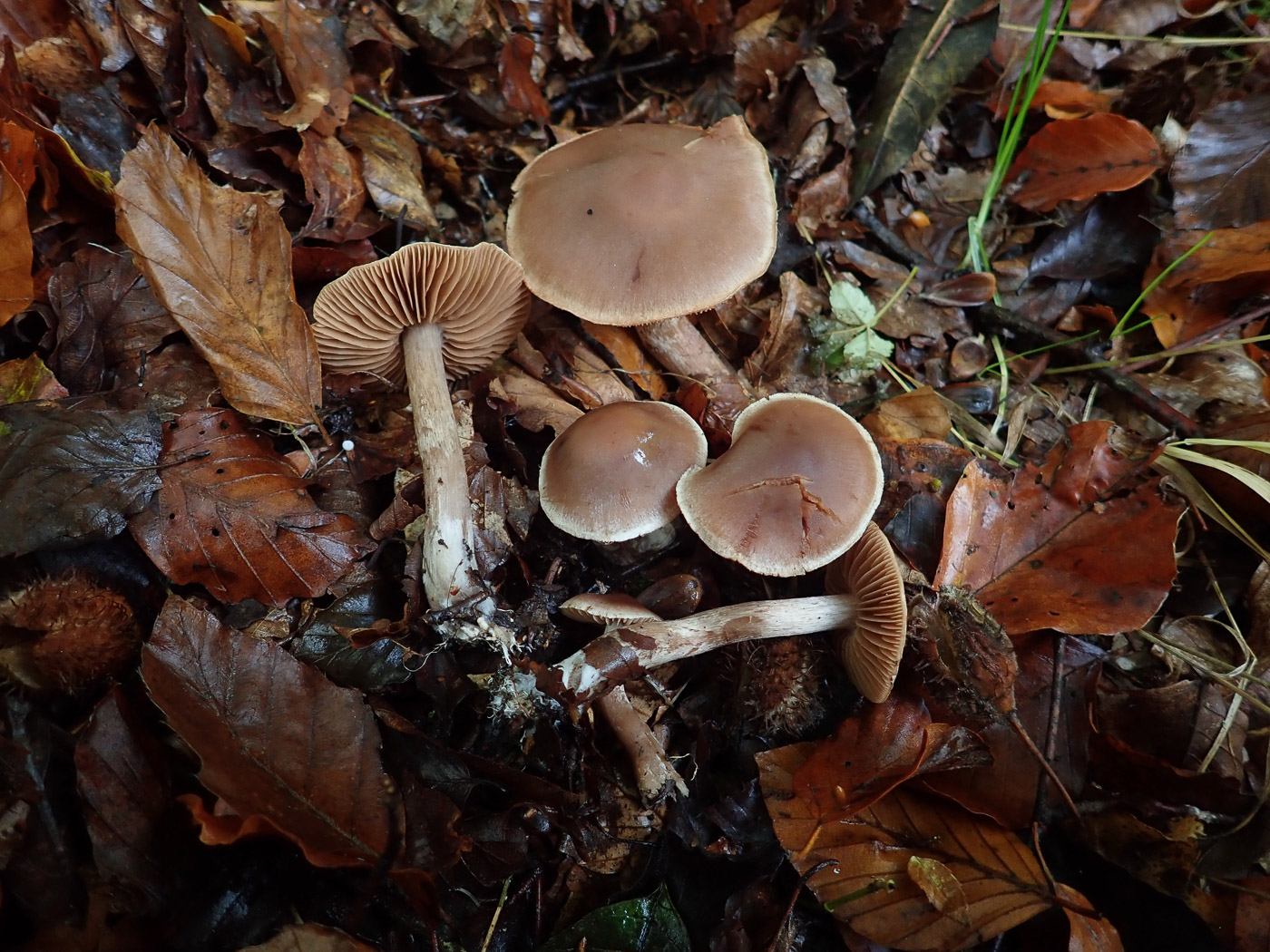 |
October 21st Cortinarius geniculatus (a Webcap with no common nameand new to the UK)  
In Gussett's Wood under Beech Penny found an attractive group of chestnut brown capped Webcaps belonging to the difficult group of the genus known as Telamonia (with dry caps and stems). Knowing she was meeting up with Cortinarius guru Geoffrey Kibby in the next few days, she sent him her photo and kept the collection to show him. He tentatively named it C. leiocastaneus but was not certain as this was a species only recently added to the British list through DNA sequencing. Penny then sent a sample for sequencing and results (confirmed independently by DNA experts Eric Janke and Kare Liimatainen) show that this is yet another species new to Britain. The material and photo will be sent to the Kew Fungarium.
|
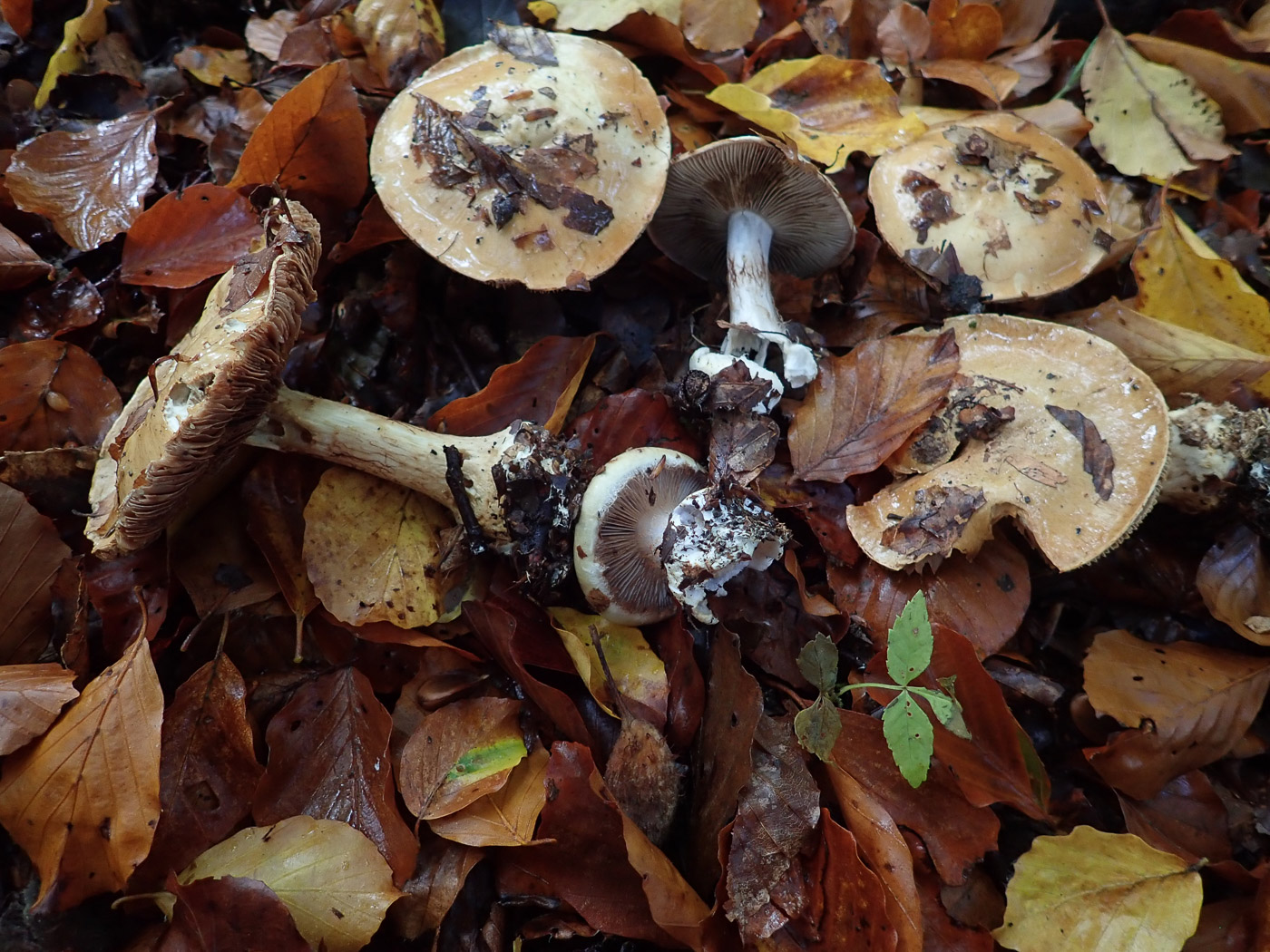 |
October 21st Cortinarius amoenolens (Blueleg Webcap)
Under Beech in Gussett's Wood Penny found this nice collection of what seems to be one of our commonest Webcaps in the Chilterns, one of the sticky-capped but dry-stemmed Phlegmaceum group. Many of these favour our calcareous Beechwoods ad the pale brown cap and violacous gills and stem flesh are distinctive in this particular species. See also in Finds 2020 September 24th.
|
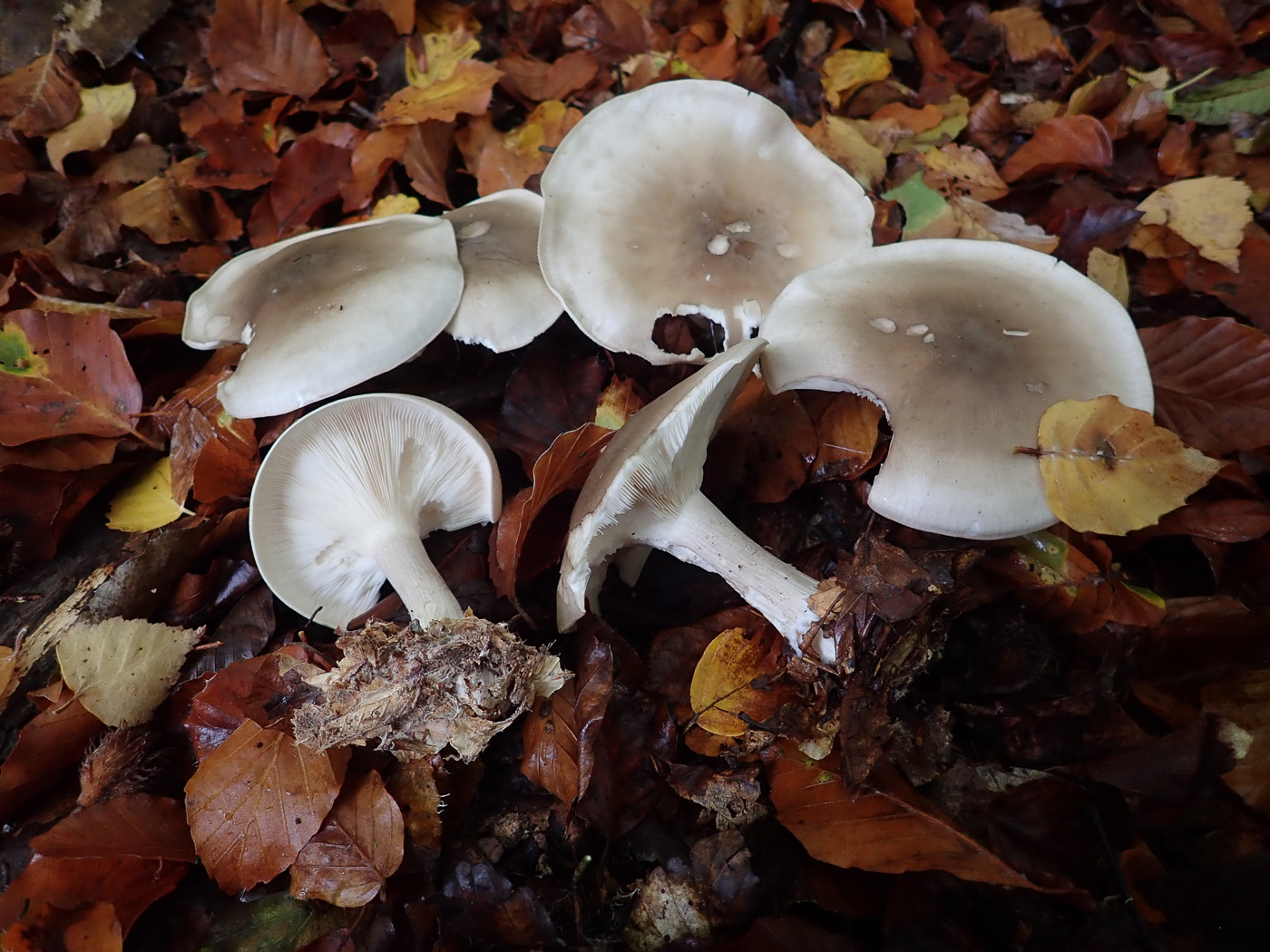 |
October 21st Clitocybe nebularis (Clouded Funnel)
In the Beech litter in Gussett's Wood this species was beginning to make its presence felt, found by Penny. One of our commonest mushrooms in deciduous litter, it tends to be a late season fruiter and often grows in large numbers forming rings around a tree. Despite its fruity smell - of apricots to Penny - this is a poisonous species. See also in Finds 2020 October 22nd and 2021 November 17th.
|
 |
October 21st Mycena pelianthina (Bleckedge Bonnet)
In the Beech litter in Gussett's Wood Penny noticed these impressively pristine examples of what is often rather a drab Bonnet. Closely related to M. pura and rosea (Lilac and Rosey Bonnets) it shares their radishy smell but has a much duller cap colour and sports a dark purple gill edge which often needs a hand lens to see clearly. See the Finds Masterlist for several other images to compare.
|
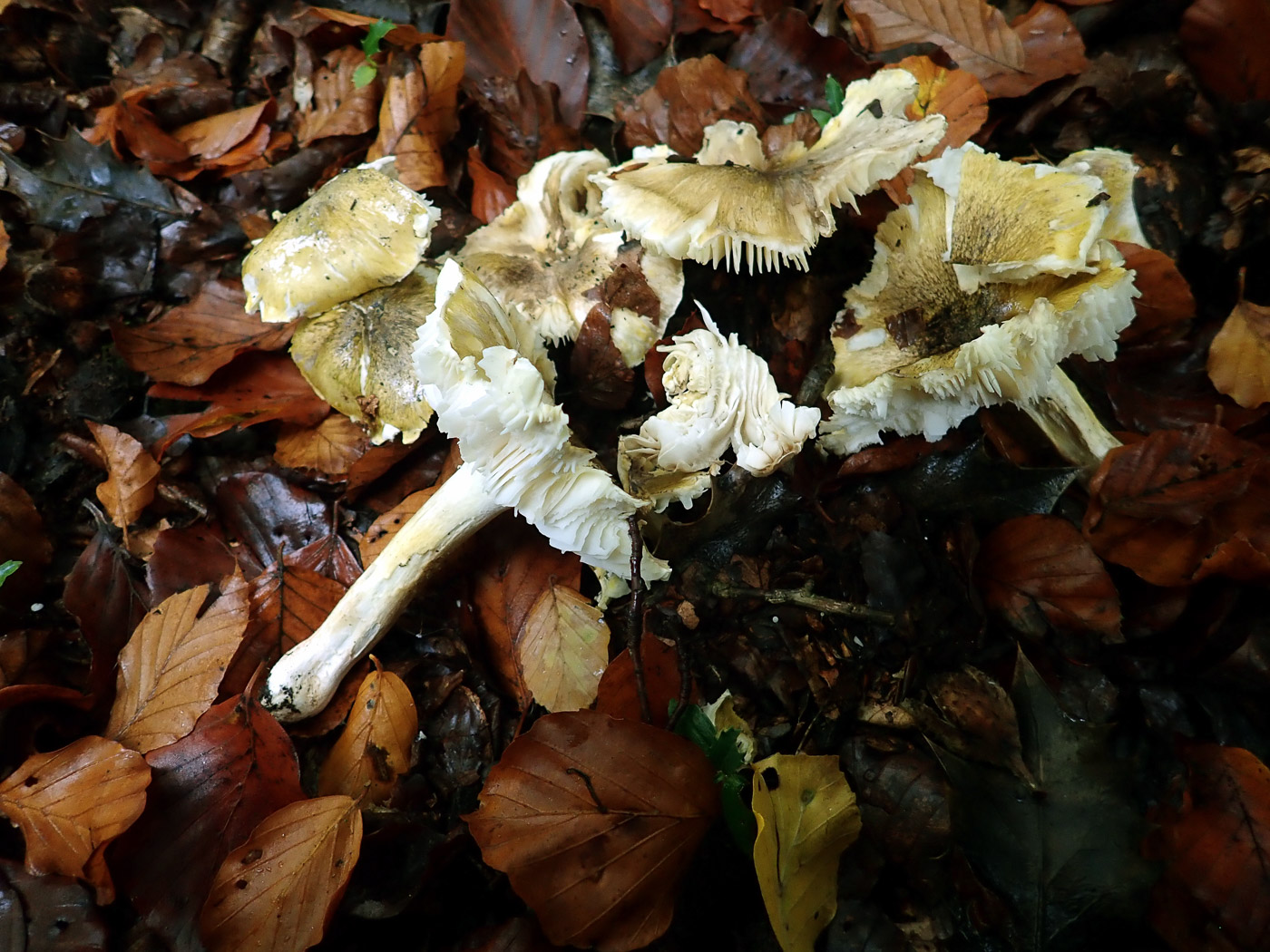 |
October 21st Tricholoma sejunctum (Deceiving Knight)
Under Beech in Gussett's Wood Penny found just one place with a few of this unusual species of Knight fruiting, though sadly all were rather damaged and past their best. The greenish yellow cap colour with darker fibrillose streaks is quite distinctive amongst members of the genus. This is a first entry for Finds.
|
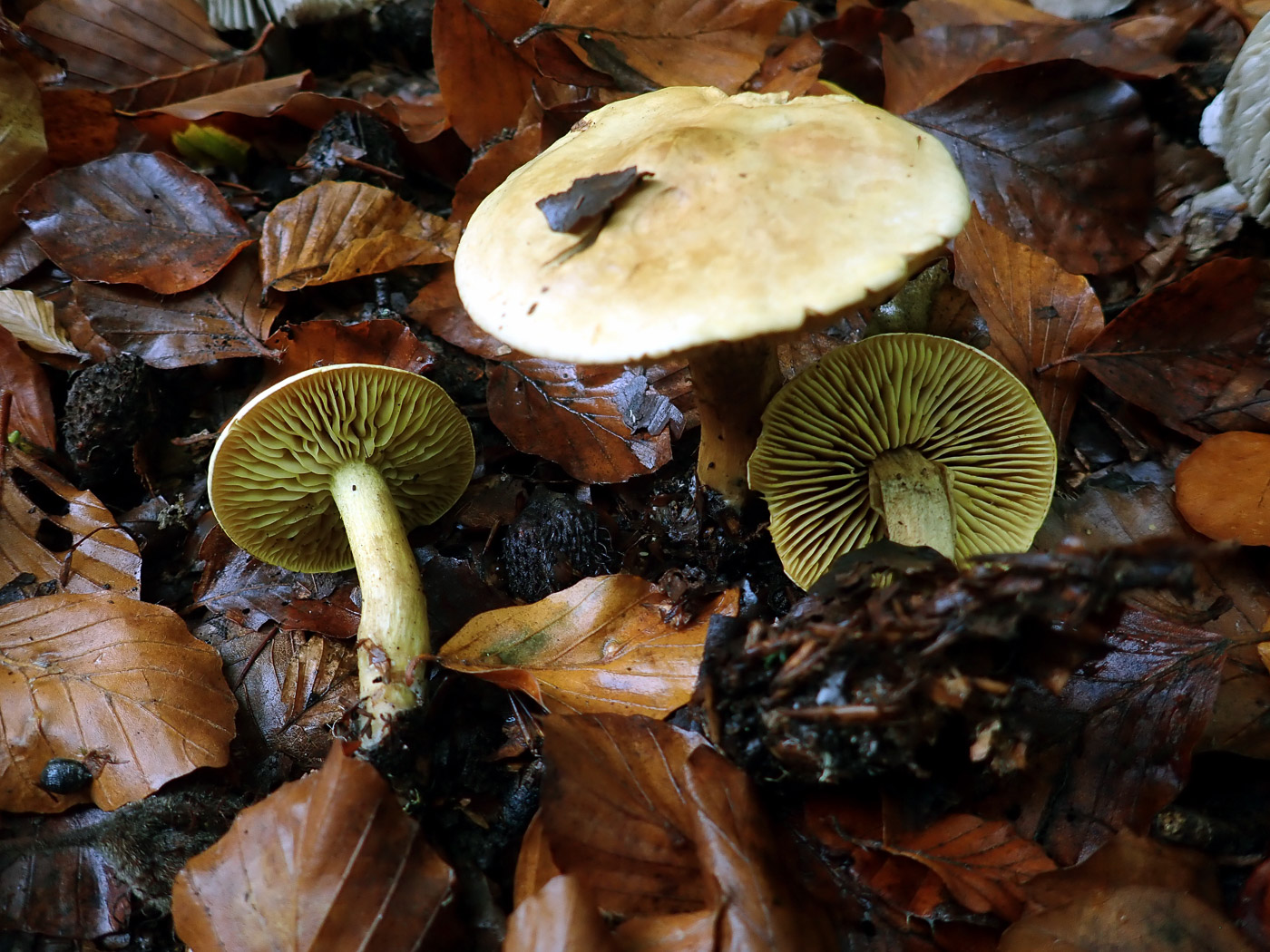 |
October 21st Tricholoma sulphureum (Sulphur Knight)
In Gussett's Wood Penny found just one little cluster of this normally very common Knight which is happy under both Beech and Oak, less commonly also under Pine. Its distinctive colour (cap, gills and stem) together with its strong sulphurous smell (bad eggs!) make it one of the easiest to recognise. See also in Finds 2020 October 16th and 2021 October 6th.
|
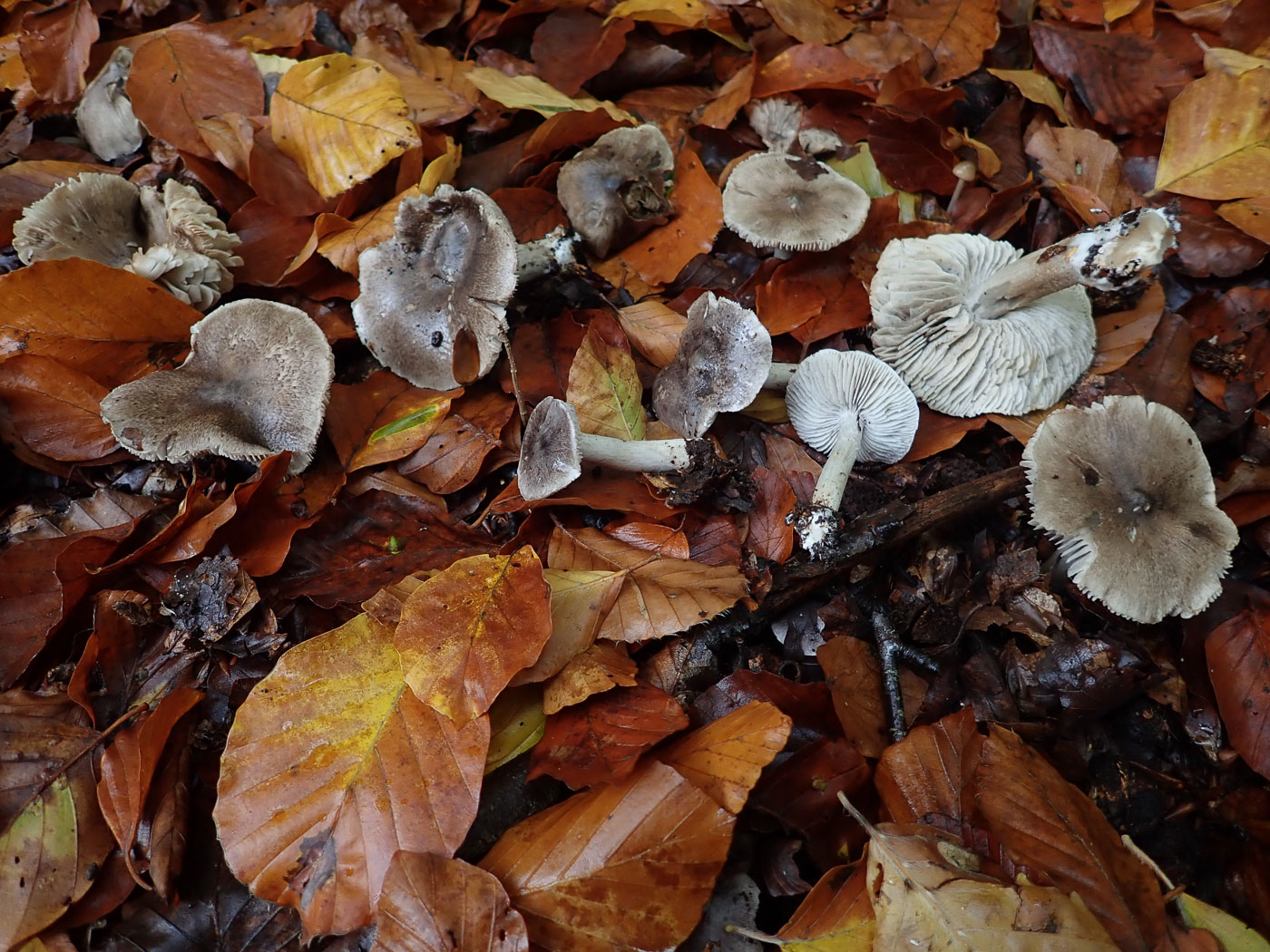 |
October 21st Tricholoma sciodes (Beech Knight)
In Gussett's Wood under Beech there were plenty of these Knights which are host specific to this tree, found by Penny. There are many grey capped Knights which can be confused, but this species has a smooth quite pale cap, often with a small umbo, and has an earthy slightly raphanoid smell.
See also in Finds 2020 September 24th.
|
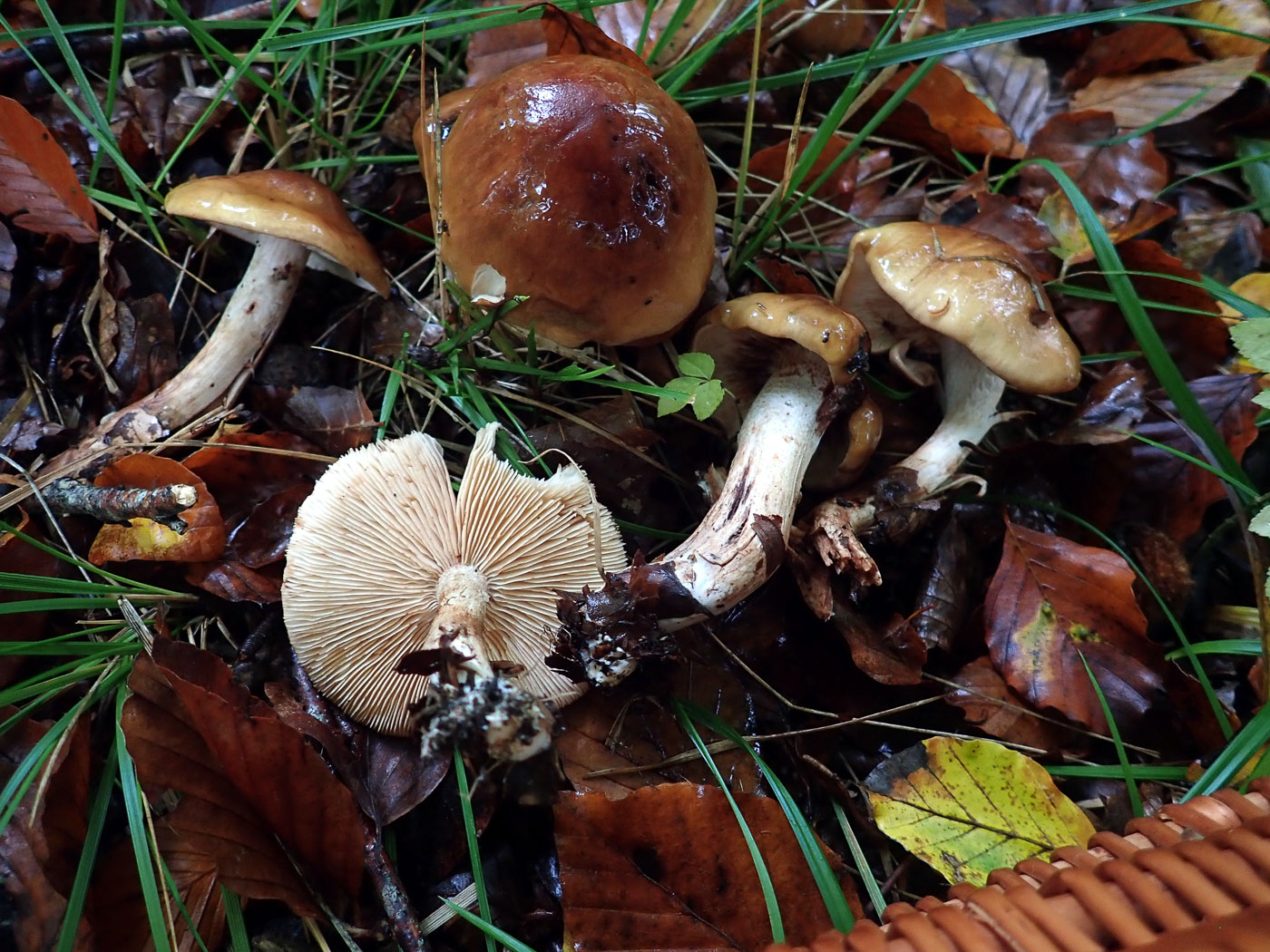 |
October 21st Tricholoma ustale (Burnt Knight)
In Gussett's Wood under Beech Penny found just a few of these Knights which are common given their host tree which is abundant here. Their bright brown rounded caps were typically slimy in the rainy conditions today. See also in Finds 2020 October 3rd.
|
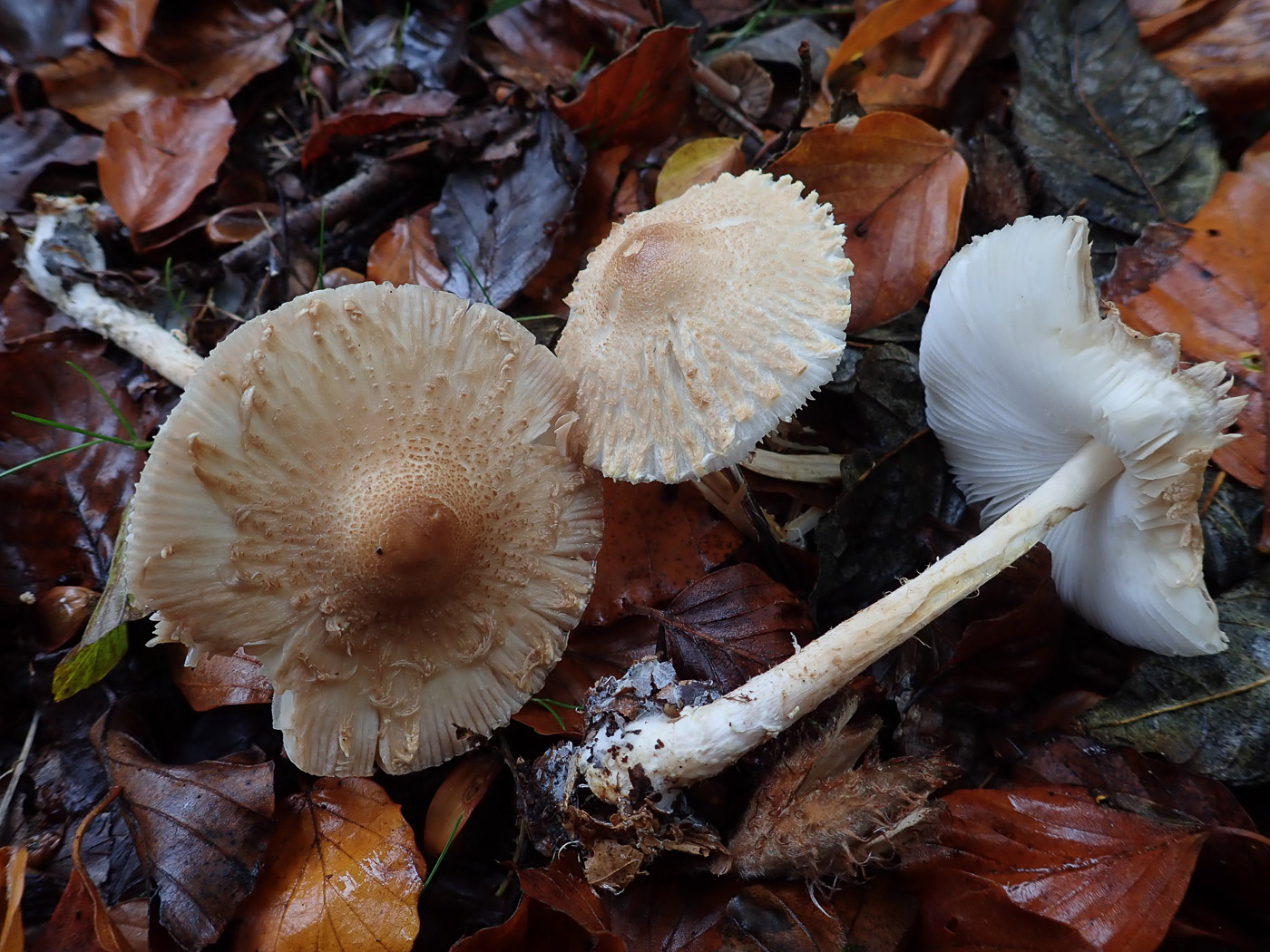 |
October 21st Lepiota ignivolvata (a Dapperling with no common name) 
In Gussett's Wood under Beech Penny came across just a few fruitbodies of this uncommon species dotted about, placed them together for the shot then identified them later at home. We have just two previous county records, one of which is in Finds dated 2020 September 26th.
|
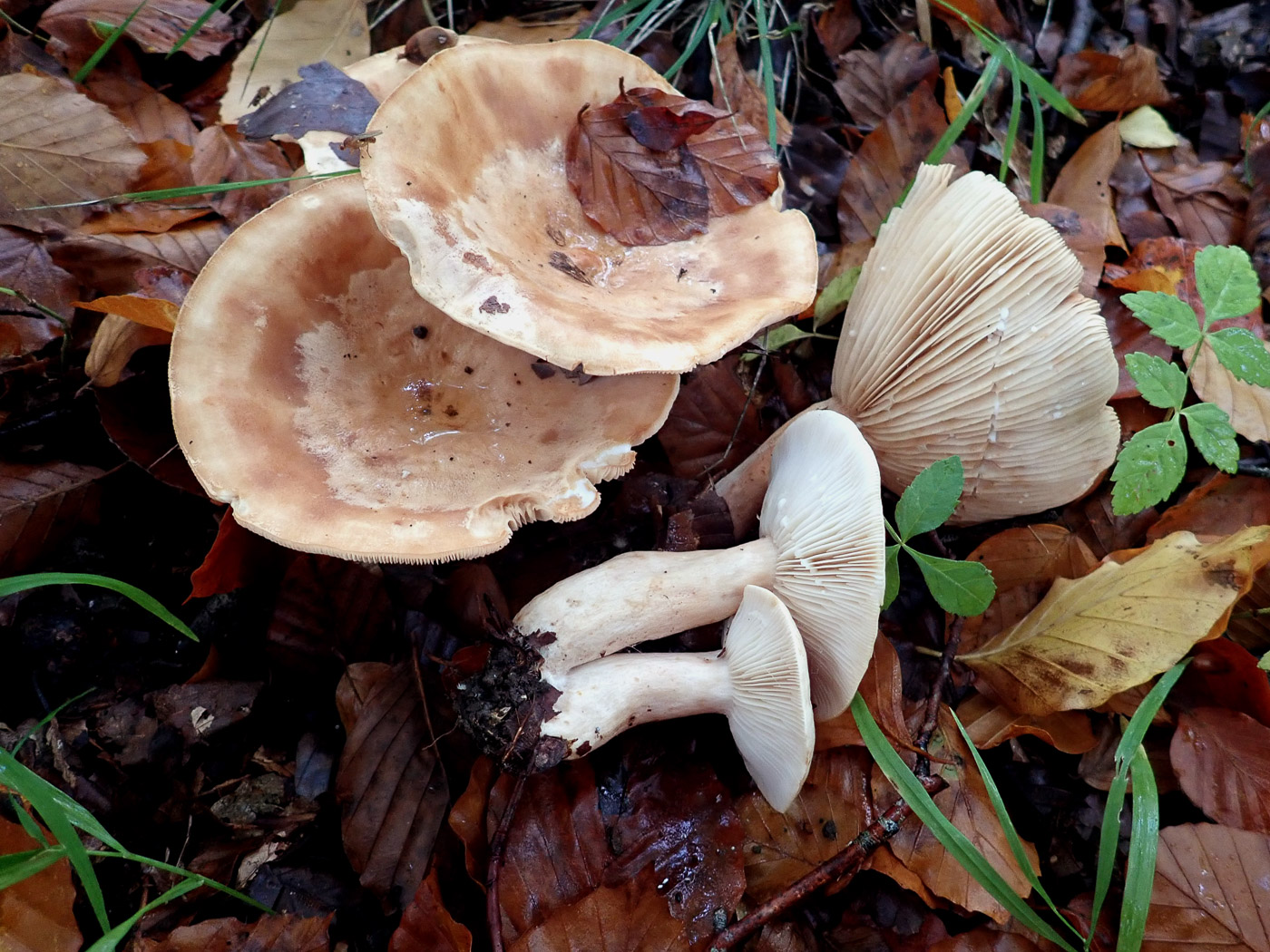 |
October 21st Lactarius pallidus (Pale Milkcap)
In Gussett's Wood under Beech Penny found many fruitbodies of this Milkcap which is host specific to Beech therefore not that unusual in our Chiltern woodlands. The pale smooth caps were were the biggest she'd seen and up to 12 cm across or more (the leaf on one cap in the photo gives an idea of their size here. See also Finds 2021 October 19th.
|
 |
October 21st Russula faginea (a Brittlegill with no common name)
In Gussett's Wood under Beech Penny found several fruitbodies of this rare species - one of the Xerampelina group of Brittlegills which have a smell of crab as they mature and also when rubbed with a crystal of Ferrous Sulphate the stem turns dirty green in about 10 seconds (seen on the lower left stem here). This is a chunky rather pale species with a pinkish tinge and only found under mature Beech. We have just one previous Finds entry: 2020 September 27th.
|
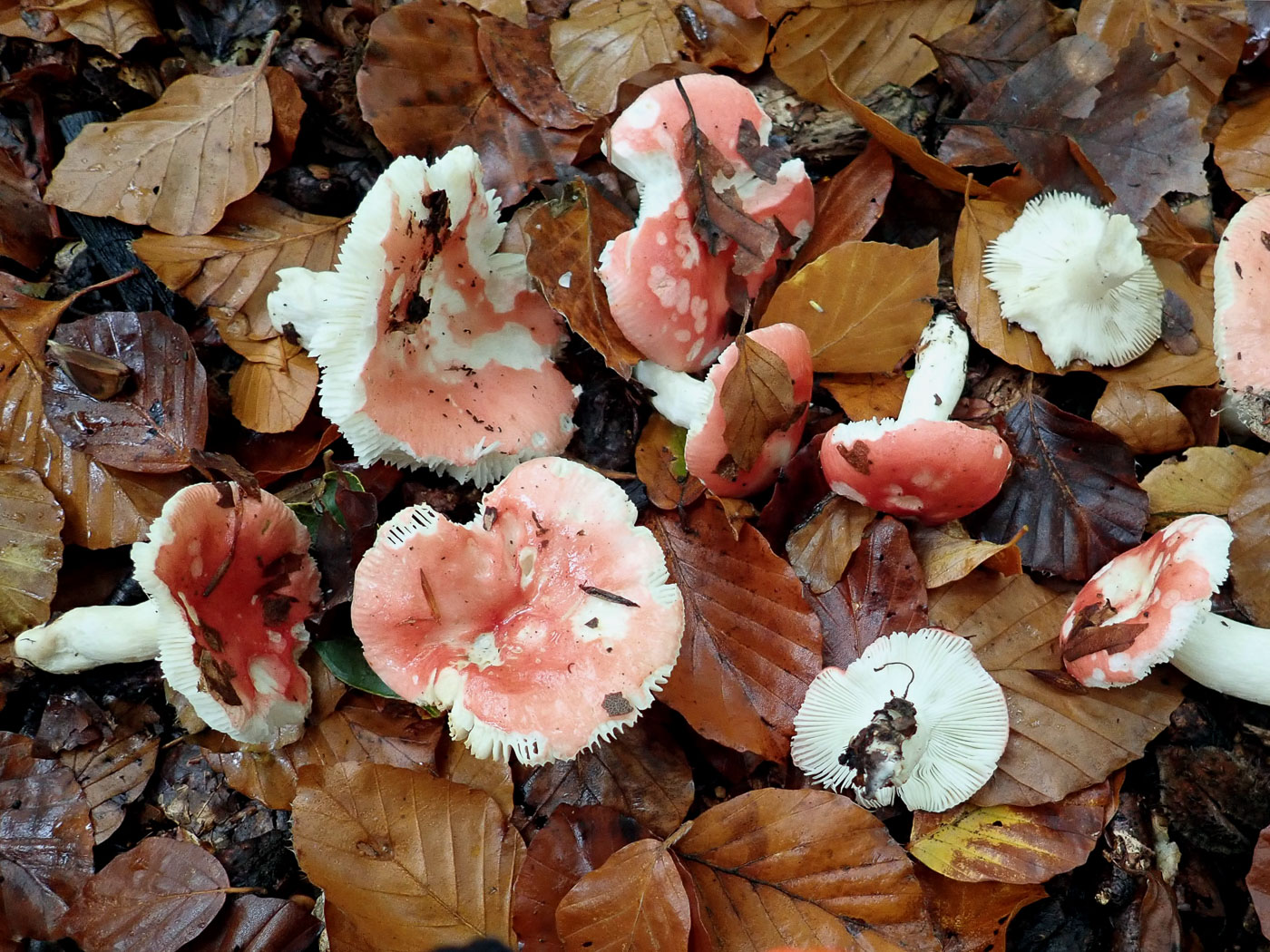 |
October 21st Russula nobilis (Beechwood Sickener)
In Gussett's Wood under Beech Penny found a good selection of this Brittlegill though many caps were somewhat nibbled. Normally one of our commonest Brittlegills,it has been slow to get started this autumn. See the Finds Masterlist for further examples
|
October 20th 2022
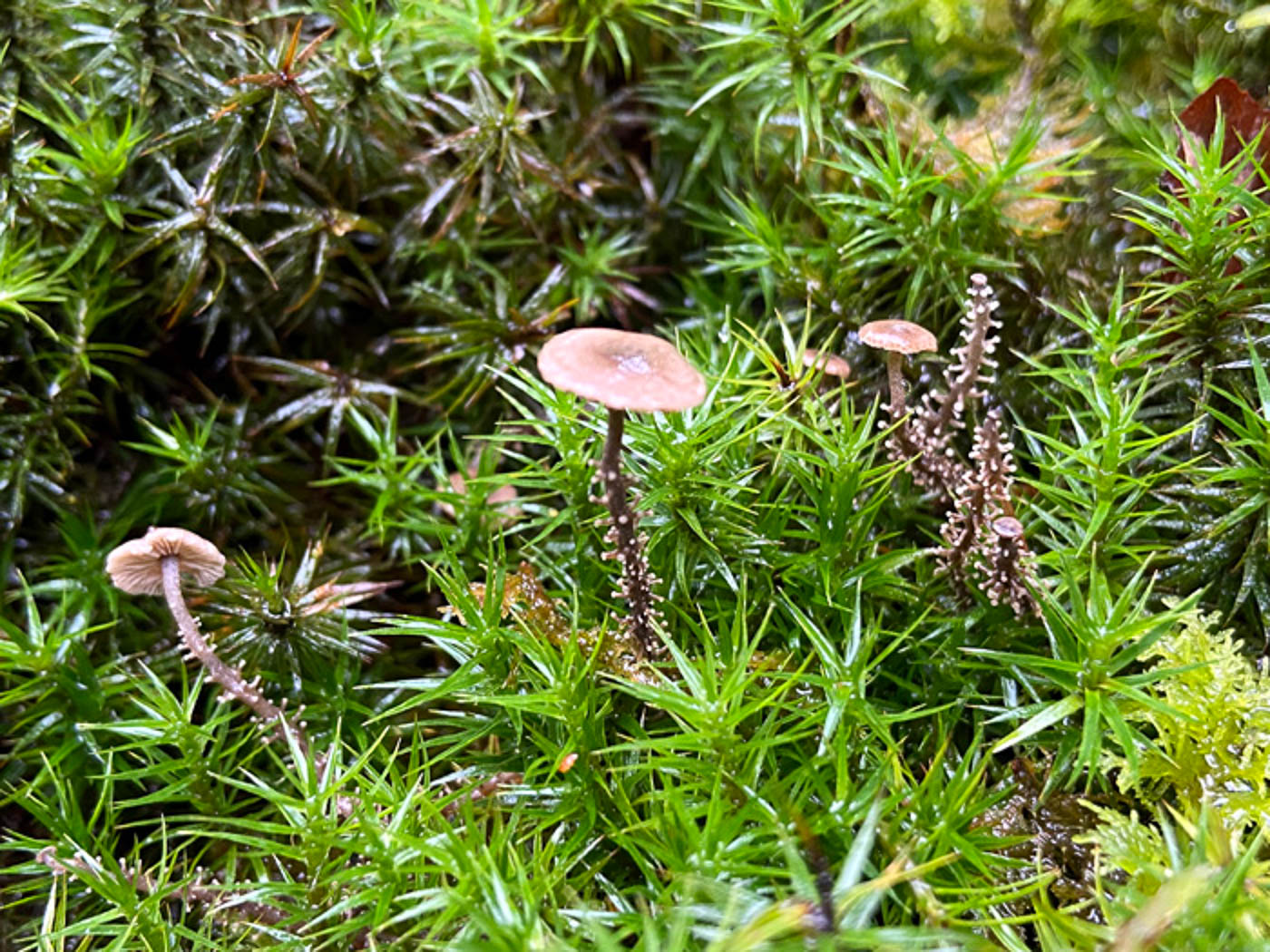
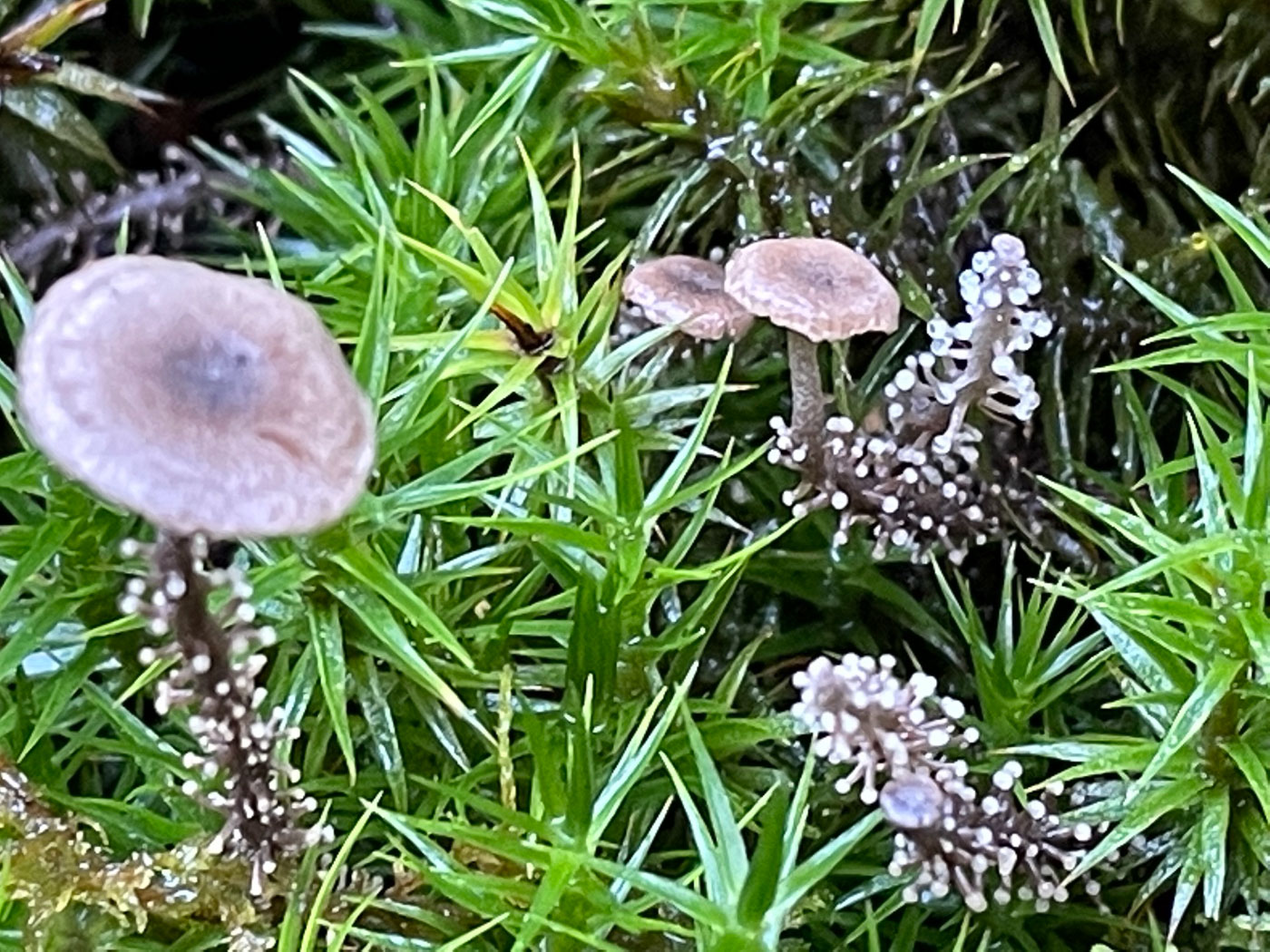
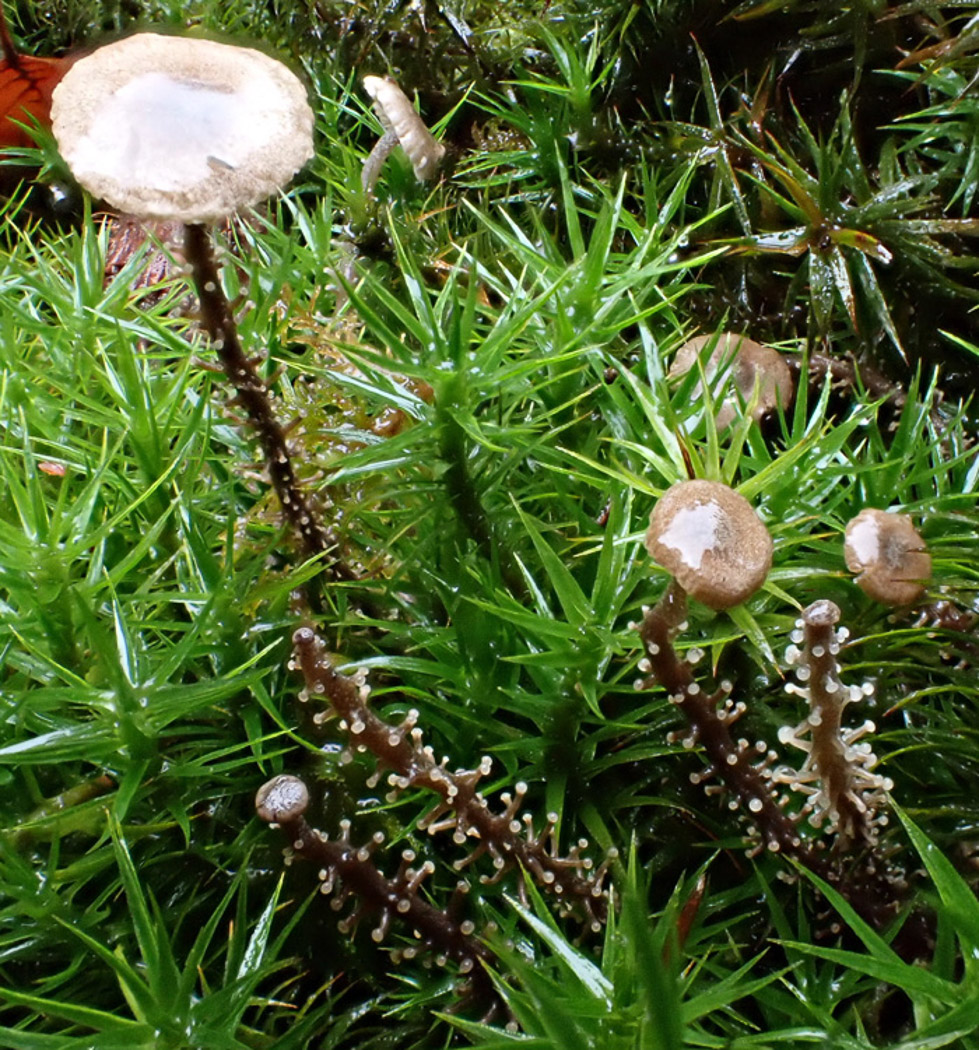
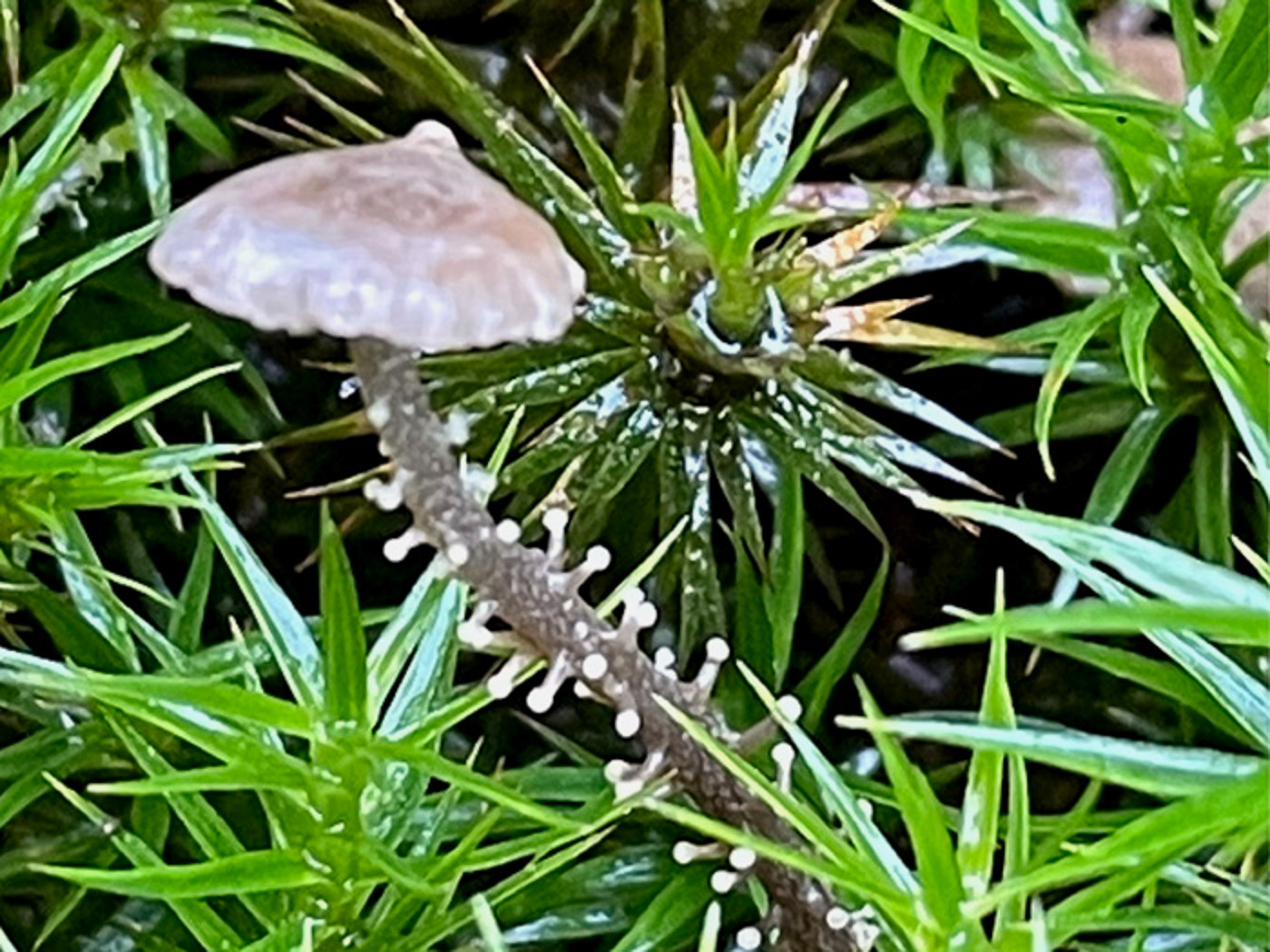 |
October 20th Dendrocollybia racemosa (Branched Shanklet)
Penny could hardly believe her eyes when she received photos of this exceptionally rare fungus found in Lott Wood near Stokenchurch by Jackie Newcombe. Jackie then took her and Stephen Plummer to see it the next day - what a thrill! This is a species that Derek (also Geoffrey Kibby) has never seen and Penny only once when she found it in the New Forest in 2000. Once seen never forgotten: though tiny its amazing stem covered in tiny branches is utterly unique in the fungal world. It grows on the rotting remains of old fungi, reportedly Lactarius but here possibly Russula nigricans which was fruiting all around, and if you'd like to read more about it try the following link for an article published in Field Mycology in April 2006 click here. Clearly new to the county, this is definitely the find of the season! Photos 1 and 3 are Stephen's; photos 2 and 4 are Jackie's.
|
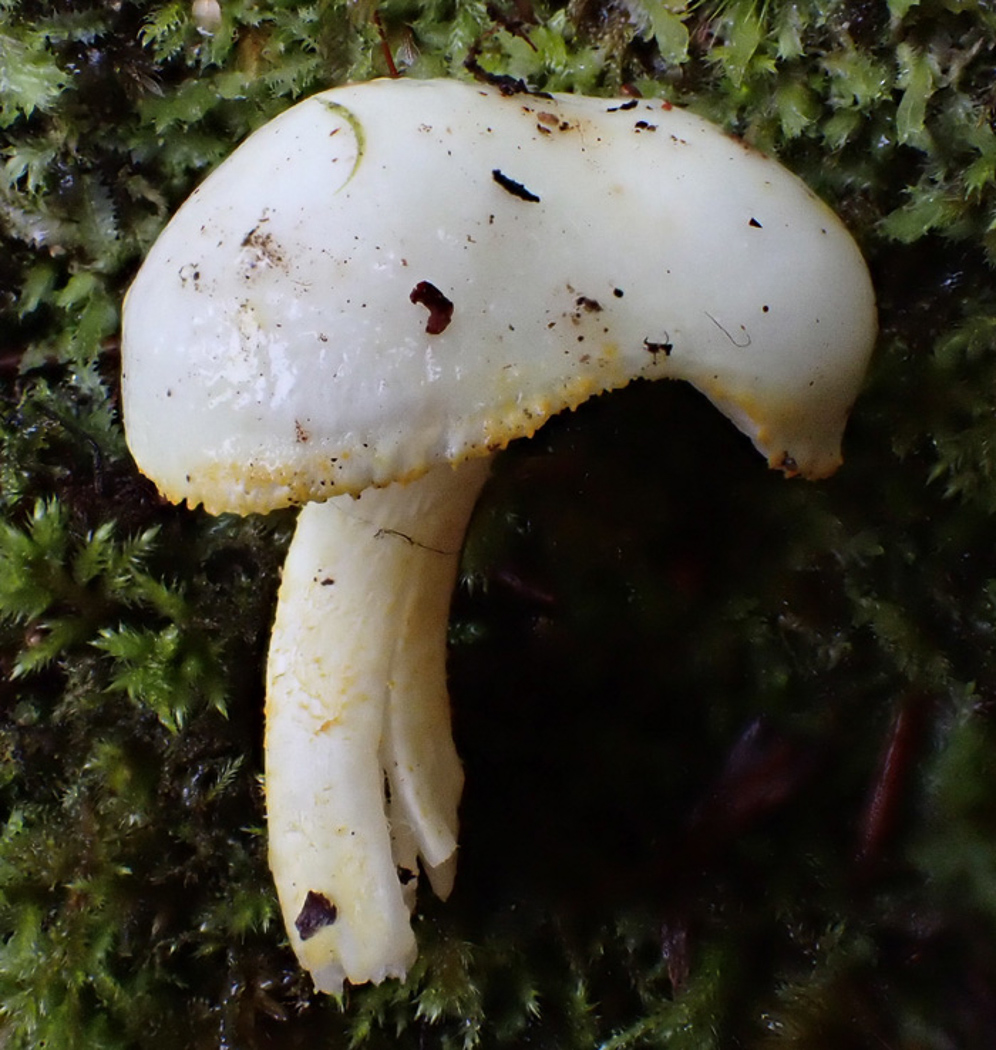
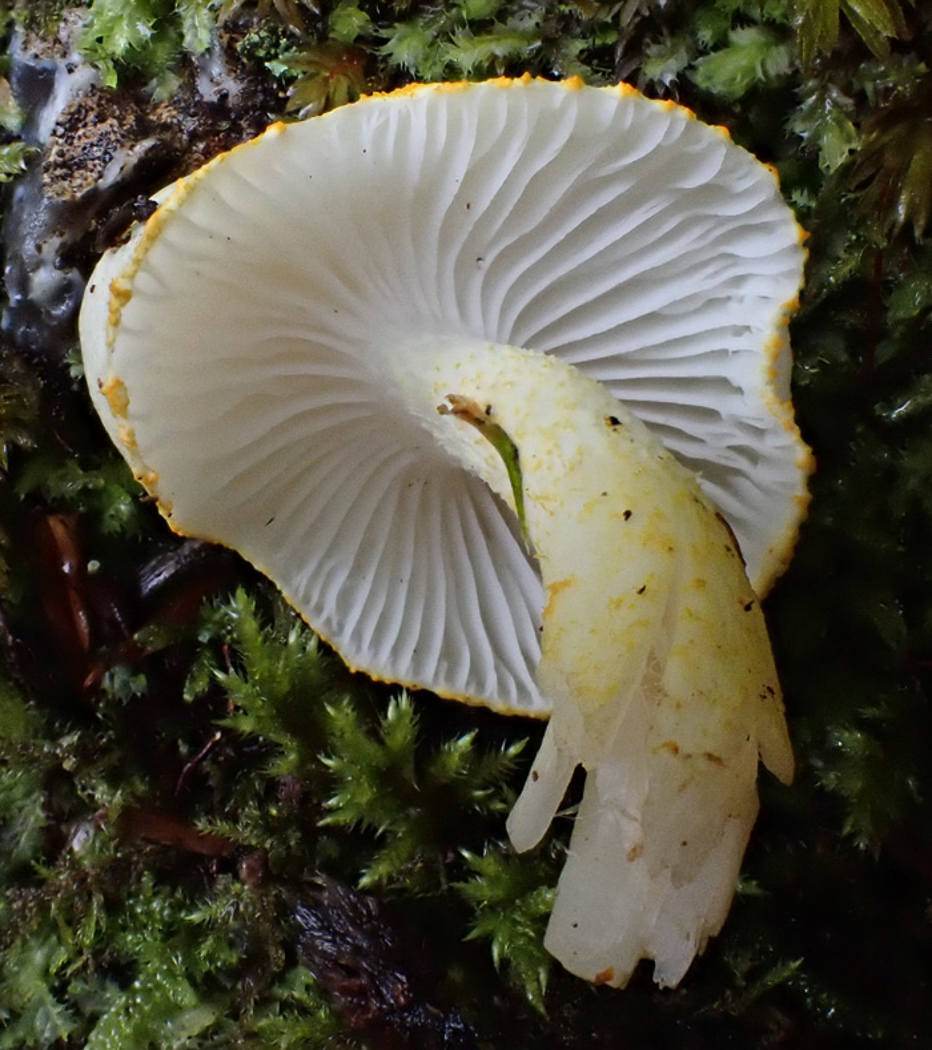 |
October 20th Hygrophorus chrysodon (Gold Flecked Woodwax)
In Lott Wood near Stokenchurch on a mossy bank near Beech there were several sticky white Woodwaxes dotted about, and one caught Penny’s eye having a distinct but broken bright yellow edge. This is a rare species - we have just 4 previous records all pre 2000 - and was one Penny'd never seen though has been on the lookout for. It seemed less glutinous than its neighbours (probably either H. eburneus or discoxanthus - both very common and fruiting at the moment) and lacked any reaction to KOH - a useful test for the many sticky white species of the genus. This is a first for Finds, both photos are Stephen Plummer's.
|
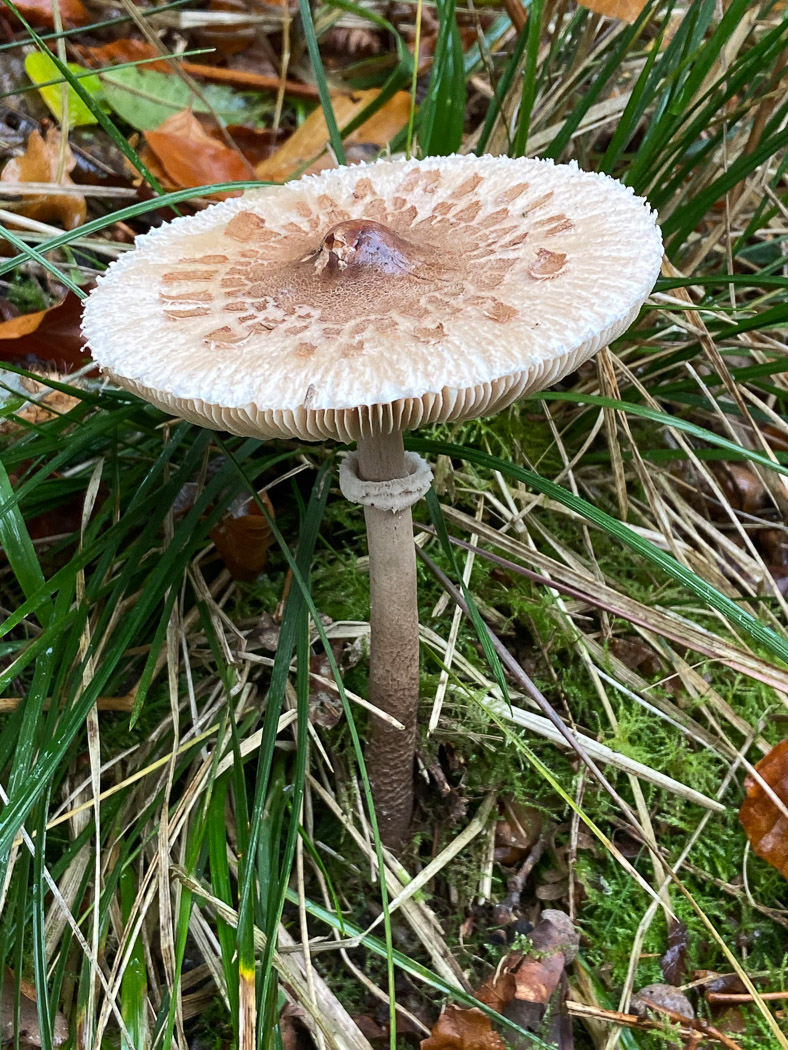
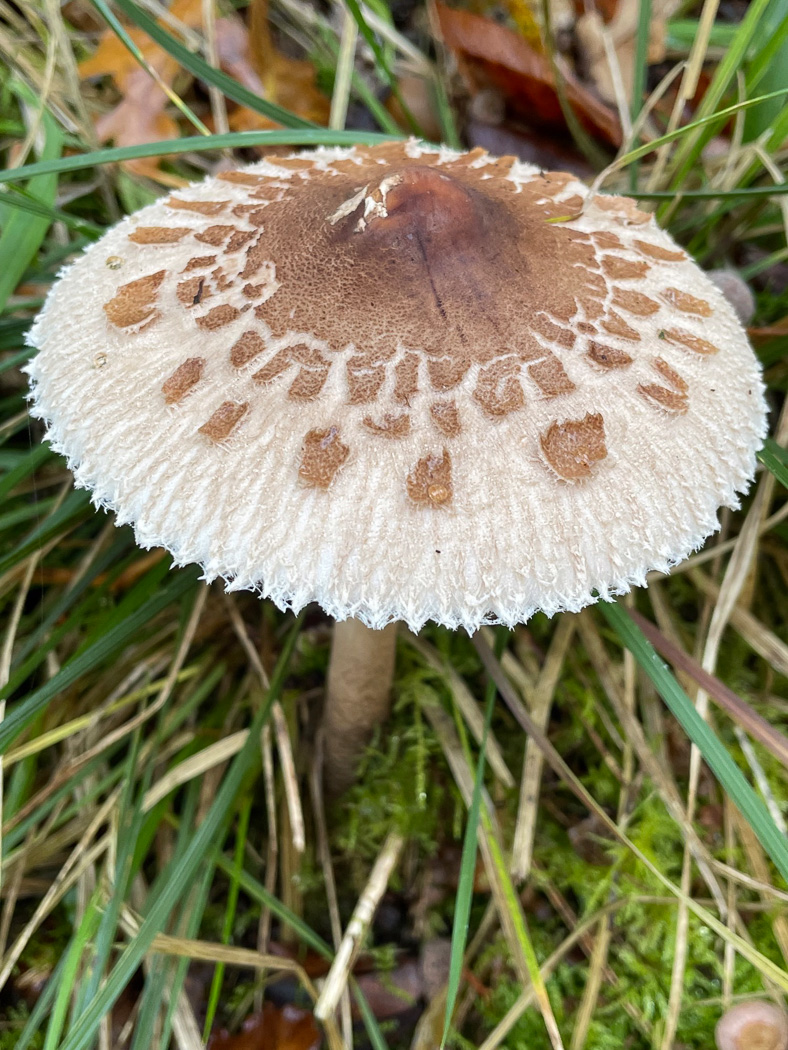 |
October 20th Macrolepiota konradii (a Parasol with no common name)
In Lott Wood near Stokenchurch we spotted this singleton with a beautifully marked cap worth sharing here. Note also the snakeskin stem markings and double ring. See the Masterlist for more images and information on the species. Photo 1 is Stephen Plummer's; photo 2 is Jackie Newcombe's.
|
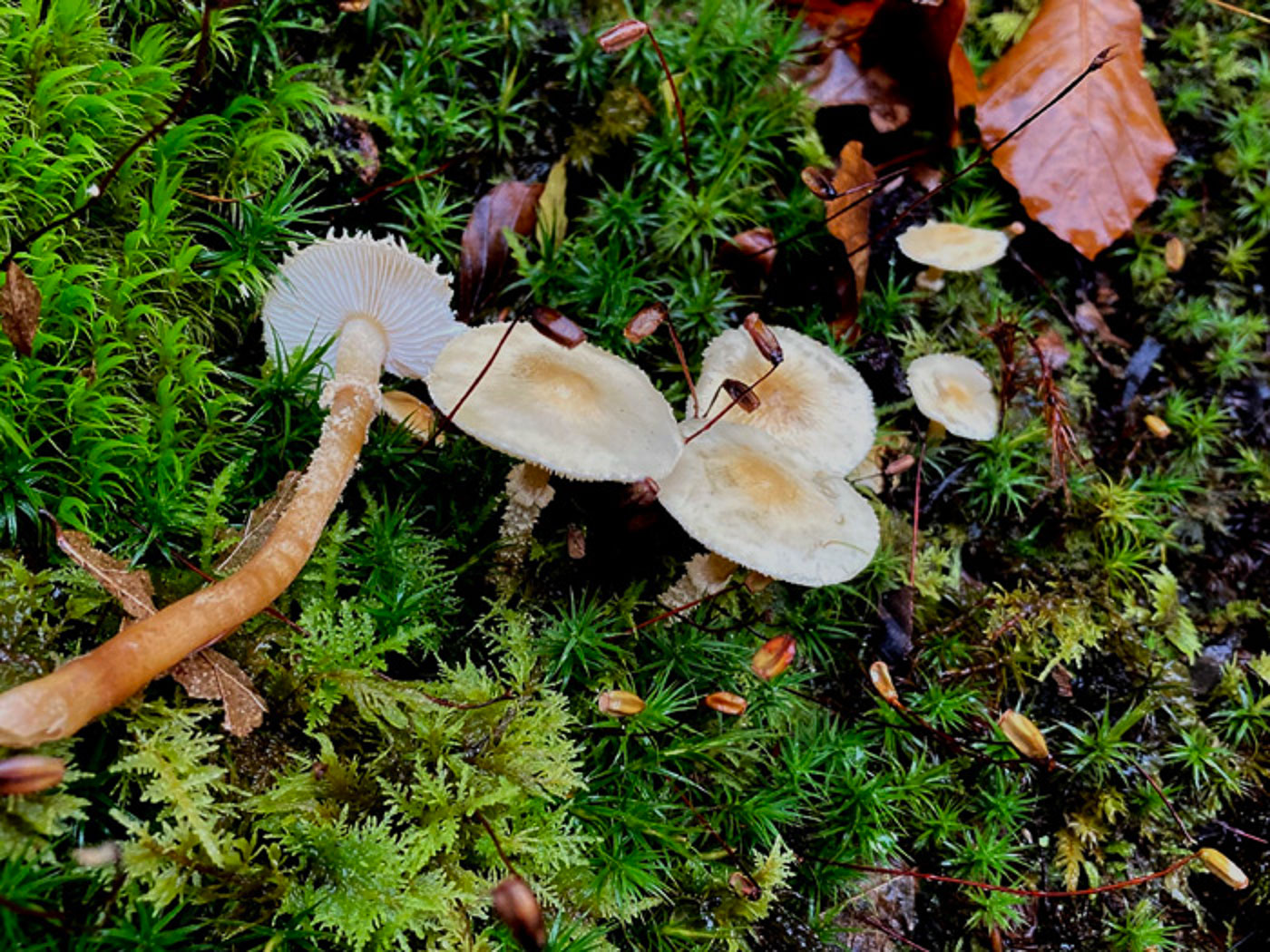
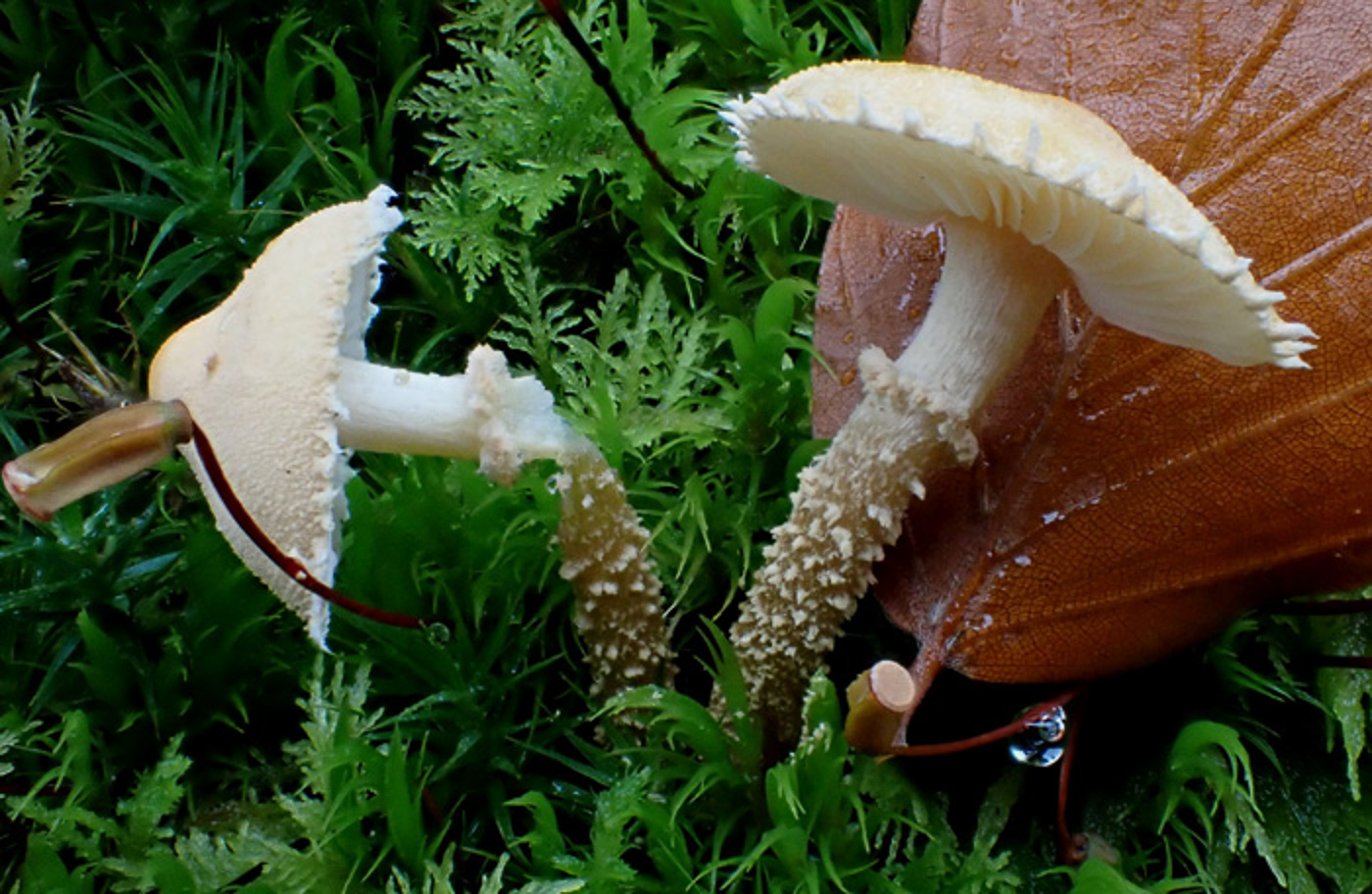 |
October 20th Cystoderma amianthinum (Earthy Powdercap)
In Lott Wood near Stokenchurch Penny found this cluster of pretty fruitbodies in a moss bank. The species is related to Lepiota, having similar free white gills, and the frilly edge to the cap and stem markings seen here are typical. It is quite common and favours grassy mossy habitats, the cap getting no larger than about 25mm across. Photo 1 is Jackie Newcombe's; photo 2 is Stephen Plummer's. See the Masterlist for more images.
|
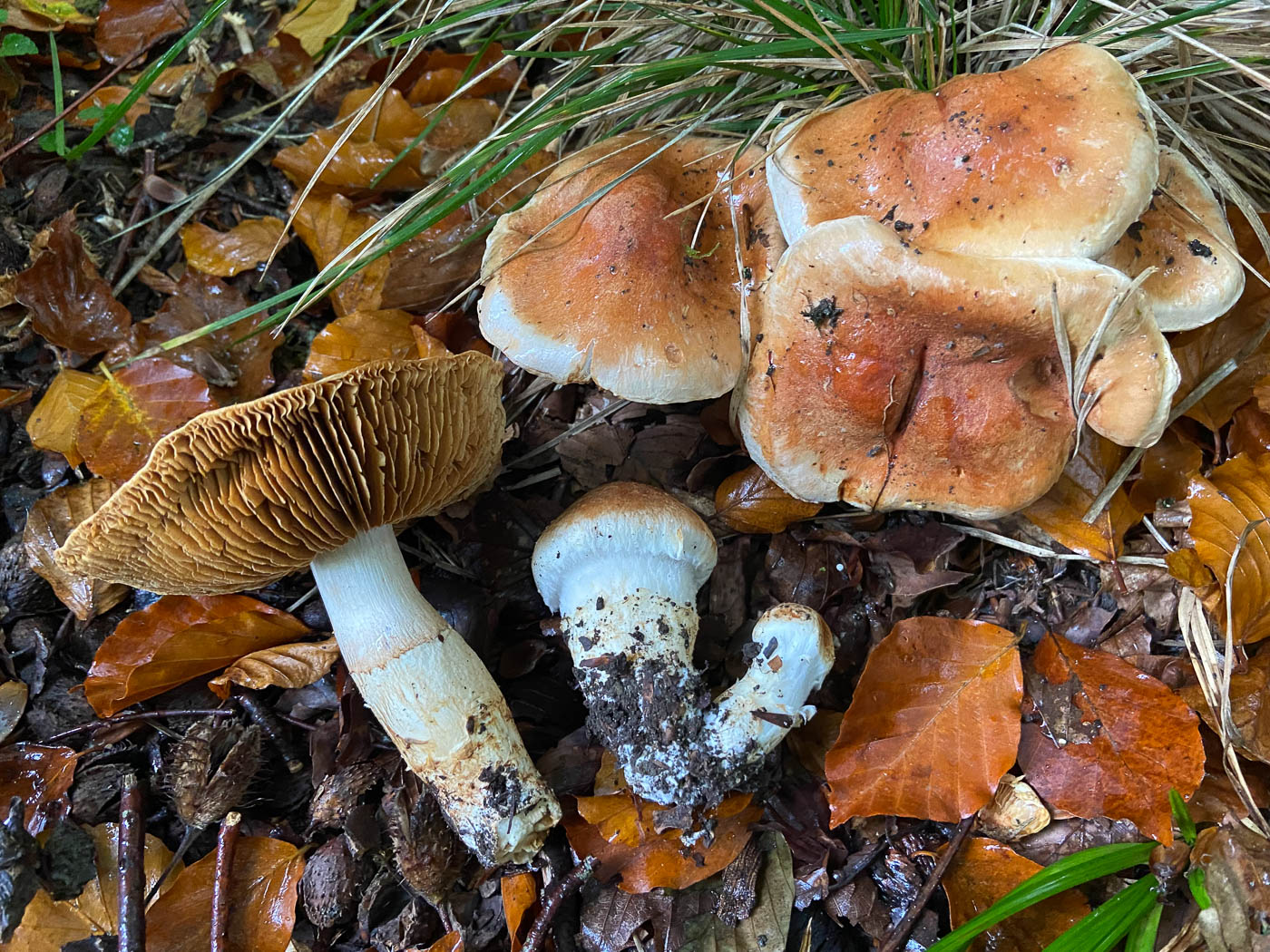

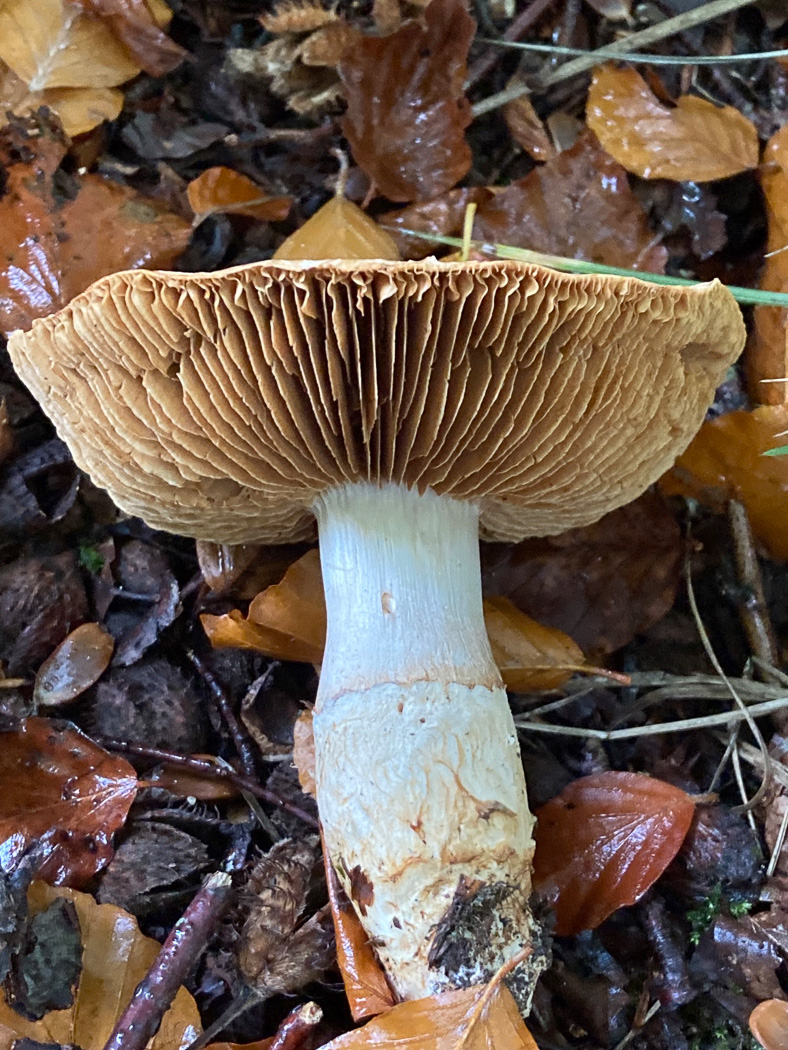
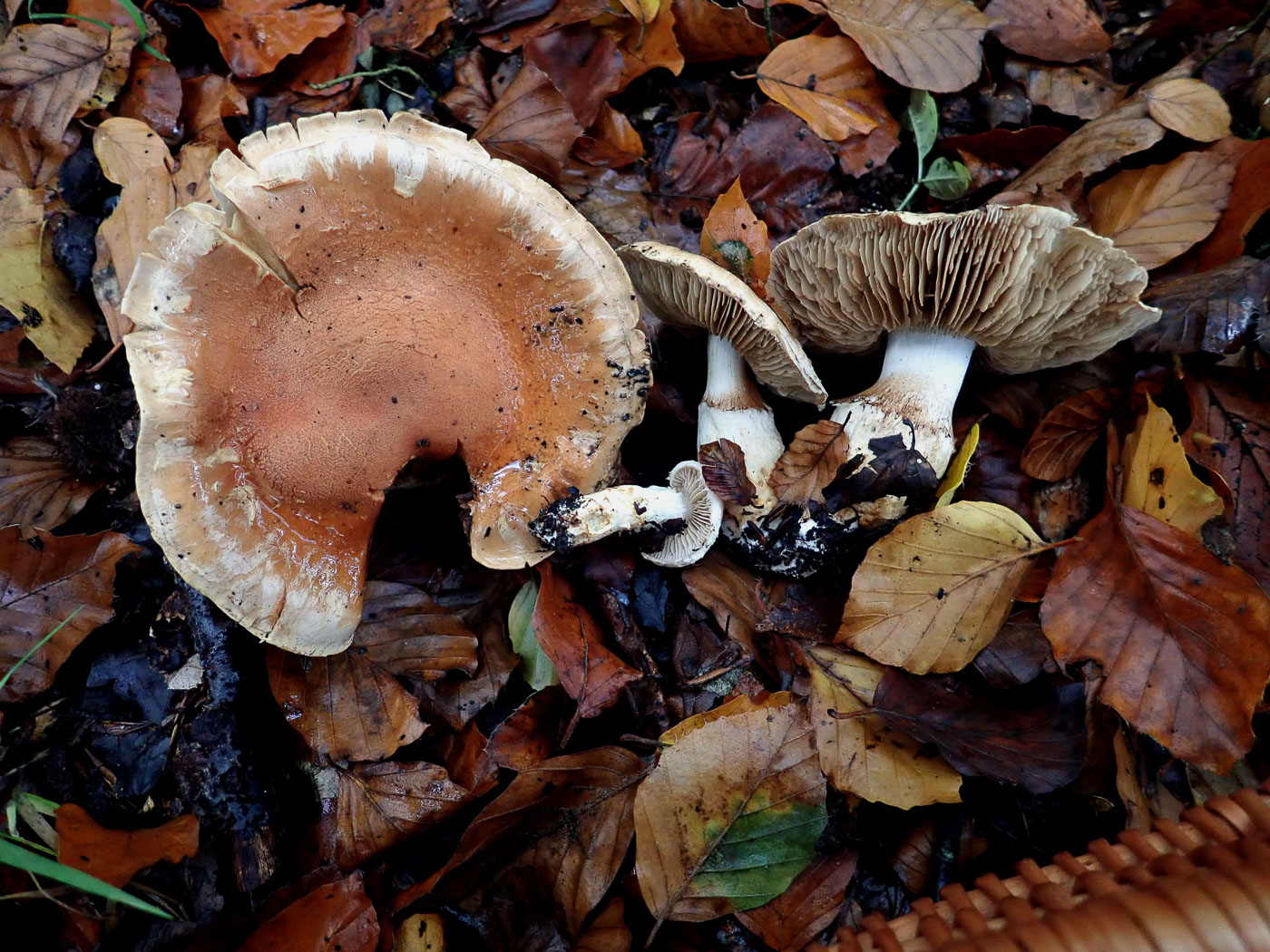 |
October 20th Cortinarius vulpinus (Foxy Webcap) 
In Loft Wood (near Stokenchurch) Jackie Newcombe had found this impressive group of Webcaps under Beech and took a couple of us to see it. Identified by Penny (and confirmed by G. Kibby), it is one of the many showy members of the Phlegmacium group of Webcaps (with slimy caps but dry stems) which favour this particular habitat. Recognised by its foxy brown cap which is paler at the margin and its thick clavate stem, the young gills are pale beige with a violet tinge (not visible here) but soon become rusty brown. Note also the cortina still intact on the young specimen but left as a ring zone when mature. We have a handful of county records and this is new to Finds. The group photo is Stephen Plummer's, photos 2 and 3 are Jackie's. Photo 4 is of another collection made the following day from Gussett's Wood by Penny.
|
October 19th 2022
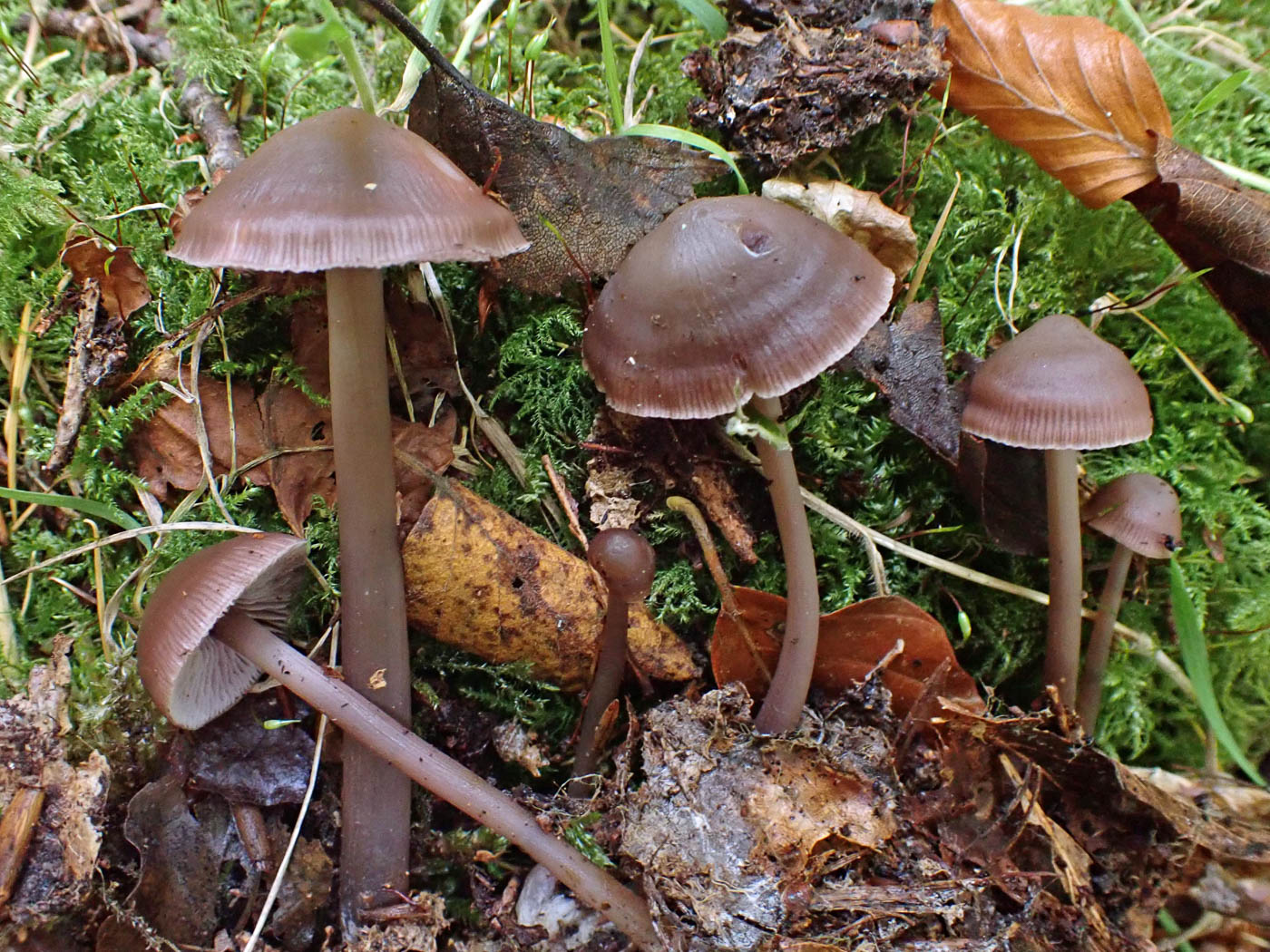 |
October 19th Mycena diosma (a Bonnet with no common name) 
Under mixed deciduous trees at Bittam's Wood, Dancersend, our small group found a nice collection of this rather unusual Bonnet - one of the litter-loving 'pura' group with the typical radishy smell though a bit more spicy and fragrant than in the much more common species, ie M. pura, rosea and pelianthina. It is much less variable in colour than M. pura which has a wide range of lilaceous shades (and can even be yellow or white on occasion) but differs from it by having some zoning on the cap. It was new to the site today and is also new for Finds.
|
 |
October 19th Agaricus dulcidulus (Rosy Wood Mushroom) 
Under mixed deciduous trees at Bittam's Wood, Dancersend our small group found a nice collection of this quite unusual Mushroom, recognisable from its small stature and cream cap with a darker slightly vinaceous centre. It also tends to yellow when handled and has extremely small spores. Checking our records Penny found that we also recorded it in this area last year. It's a new name for Finds.
|
 |
October 19th Amanita muscaria (Fly Agaric)
At Dancersend our small group found a few of these beauties when we were under Birch, though it was the only species of Amanita we saw - they've generally been really scarce so far this autumn. the photo is Claire Williams's. See also in Finds earlier this year on September 24th, also for previous years via the Masterlist.
|
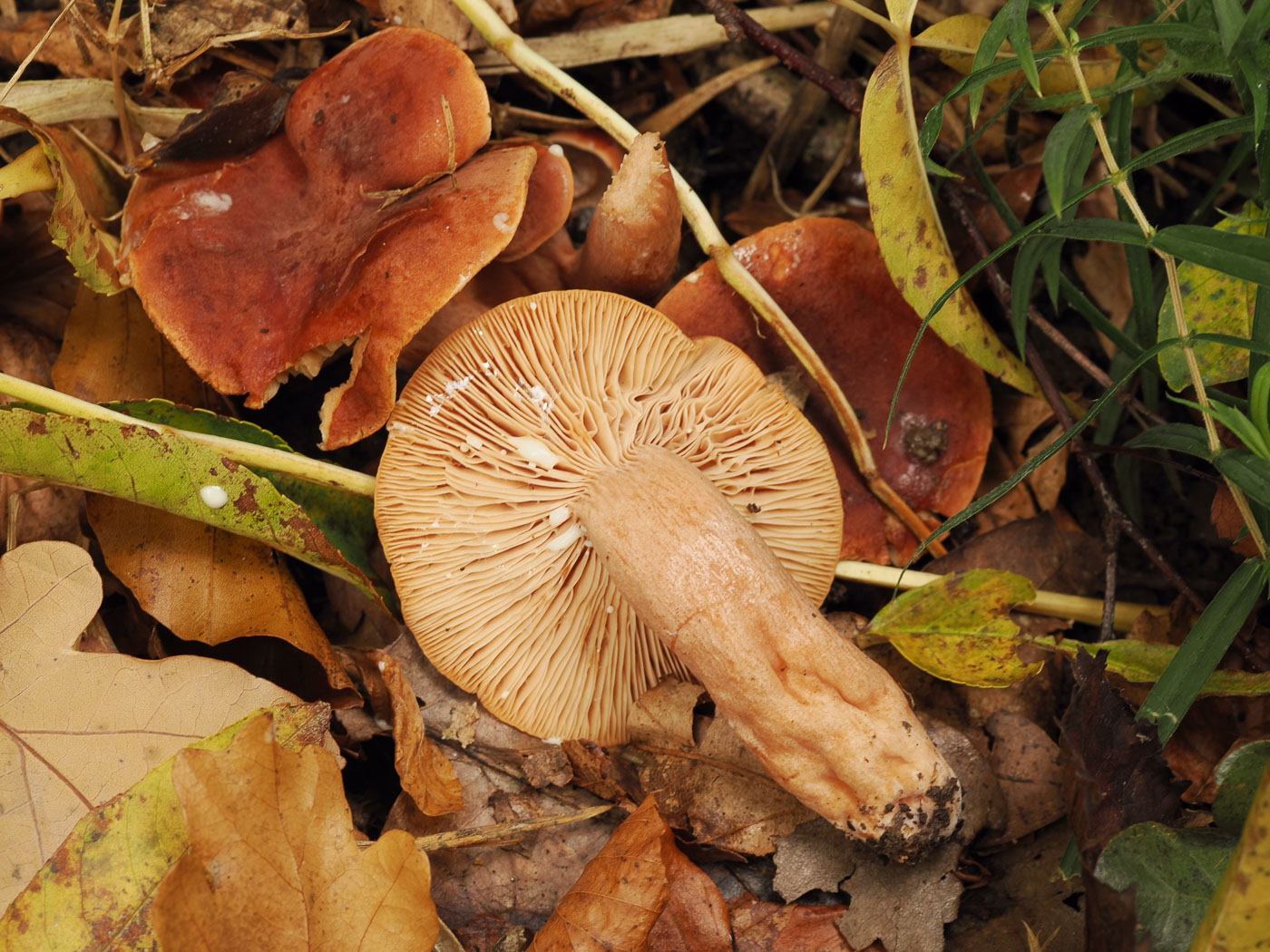 |
October 19th Lactarius fulvissimus (Tawny Milkcap)
At Bittam's Wood, Dancersend, a small group of us found several specimens of this species - a brightly coloured smooth-capped Milkcap with firm flesh and a smell similar to L. quietus. Like the following species it occurs under a mix of deciduous trees but is less common and a much more intense reddish brown in both cap and stem. The milk is unchanging both on the gills or on a hankie. The photo is Claire Williams's. This is our first entry for Finds.
|
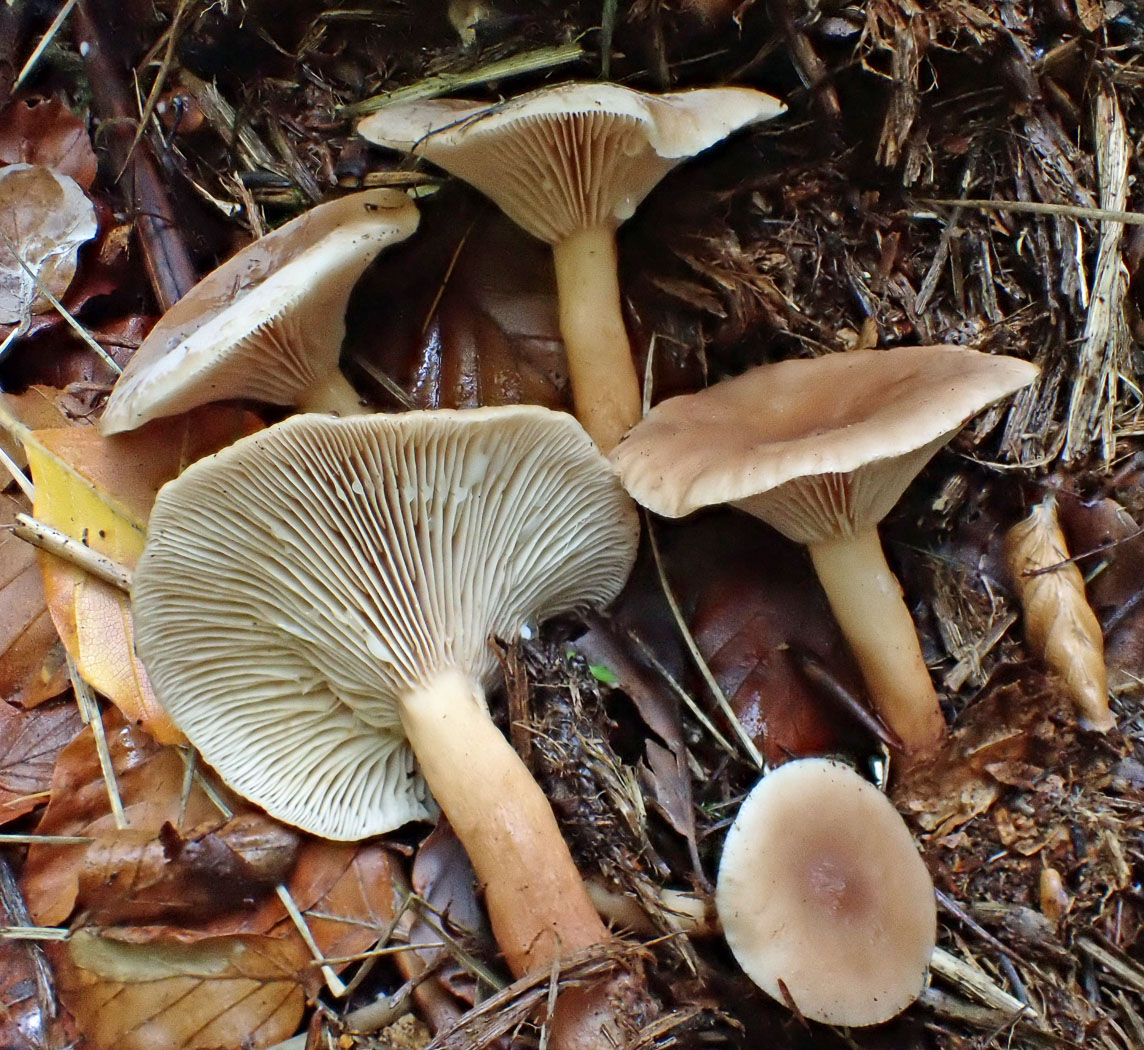 |
October 19th Lactarius subdulcis (Mild Milkcap)
At Bittam's Wood, Dancersend, a small group of us found several specimens of this species - one common under a mix of deciduous trees. It has quite thin flesh, a dry mid brown cap often with a tiny umbo (seen here in the lowest cap) and gills which are decurrent when young. It is very similar to L. tabidus (Birch Milkcap) but separable from it by the milk unchanging on a hankie (yellowing in L. tabidus), also a smell similar to L. quietus but sweeter, also its catholic preference for trees - not host specific unlike both the other two mentioned here. The photo is Neil Fletcher's. See also 2020 October 1st.
|
October 18th 2022
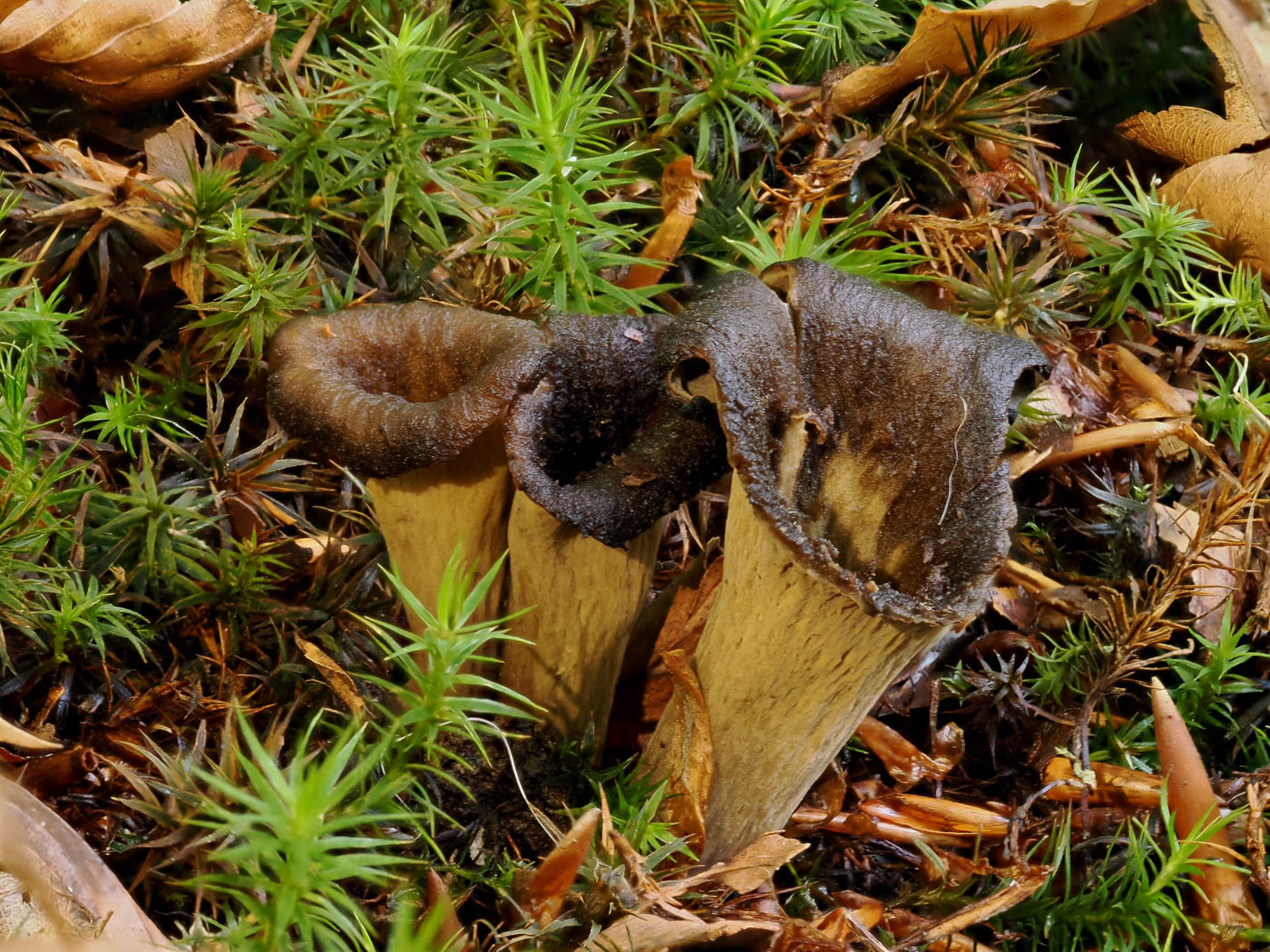 |
October 18th Craterellus cornucopioides (Horn of Plenty)
In Downley Wood Claire Williams spotted these trumpets in mossy Beech litter. The species is quite common but easily missed as the dark colour blends in with the leaf litter and soil (and they are normally much blacker than they appear here). Once you spot one it's always worth checking the area more closely because there's usually more around. The seem to favour sloping mossy sites under Beech. See also in Finds 2020 September 11th and 2021 October 10th.
|
October 15th 2022

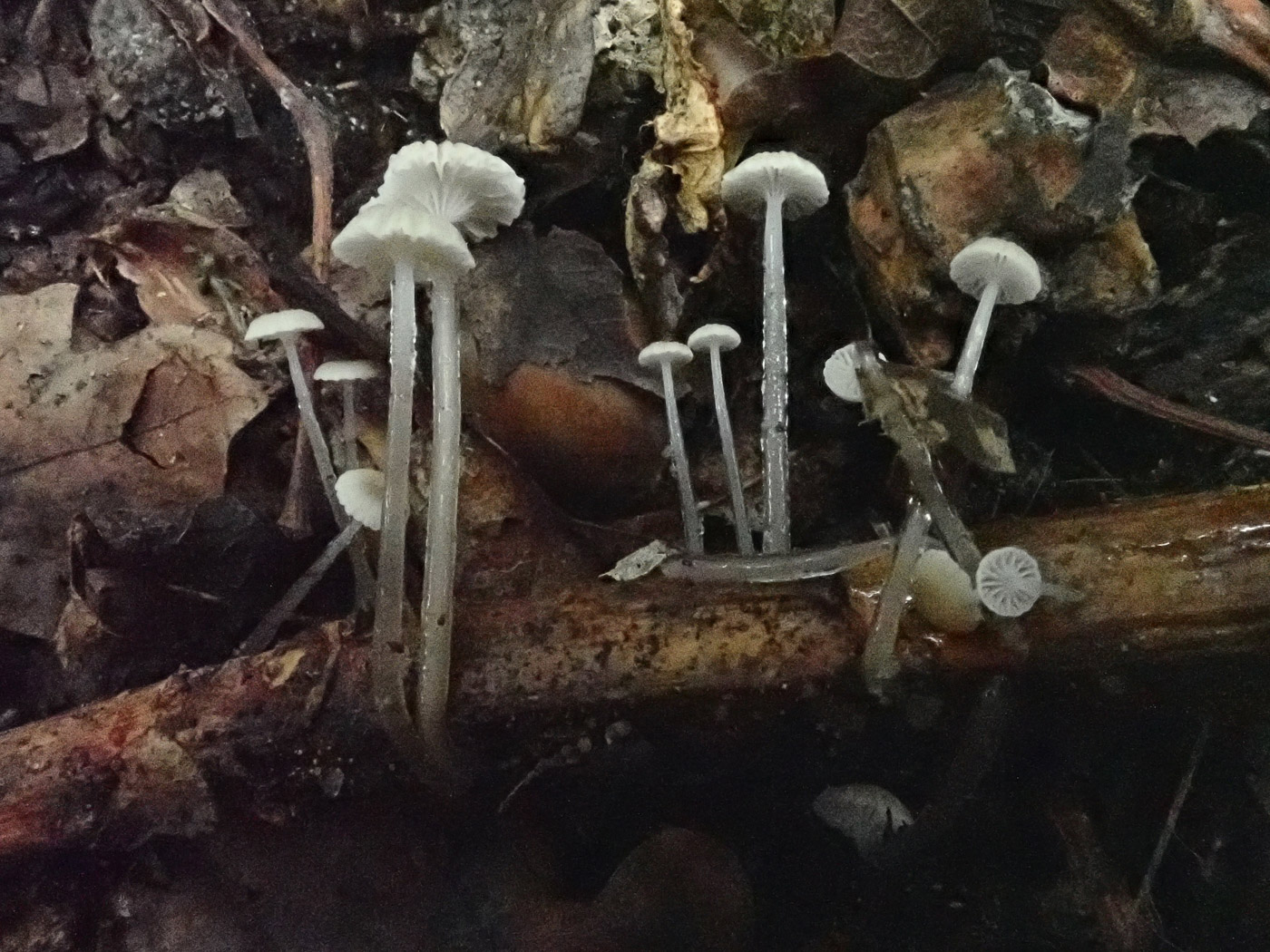
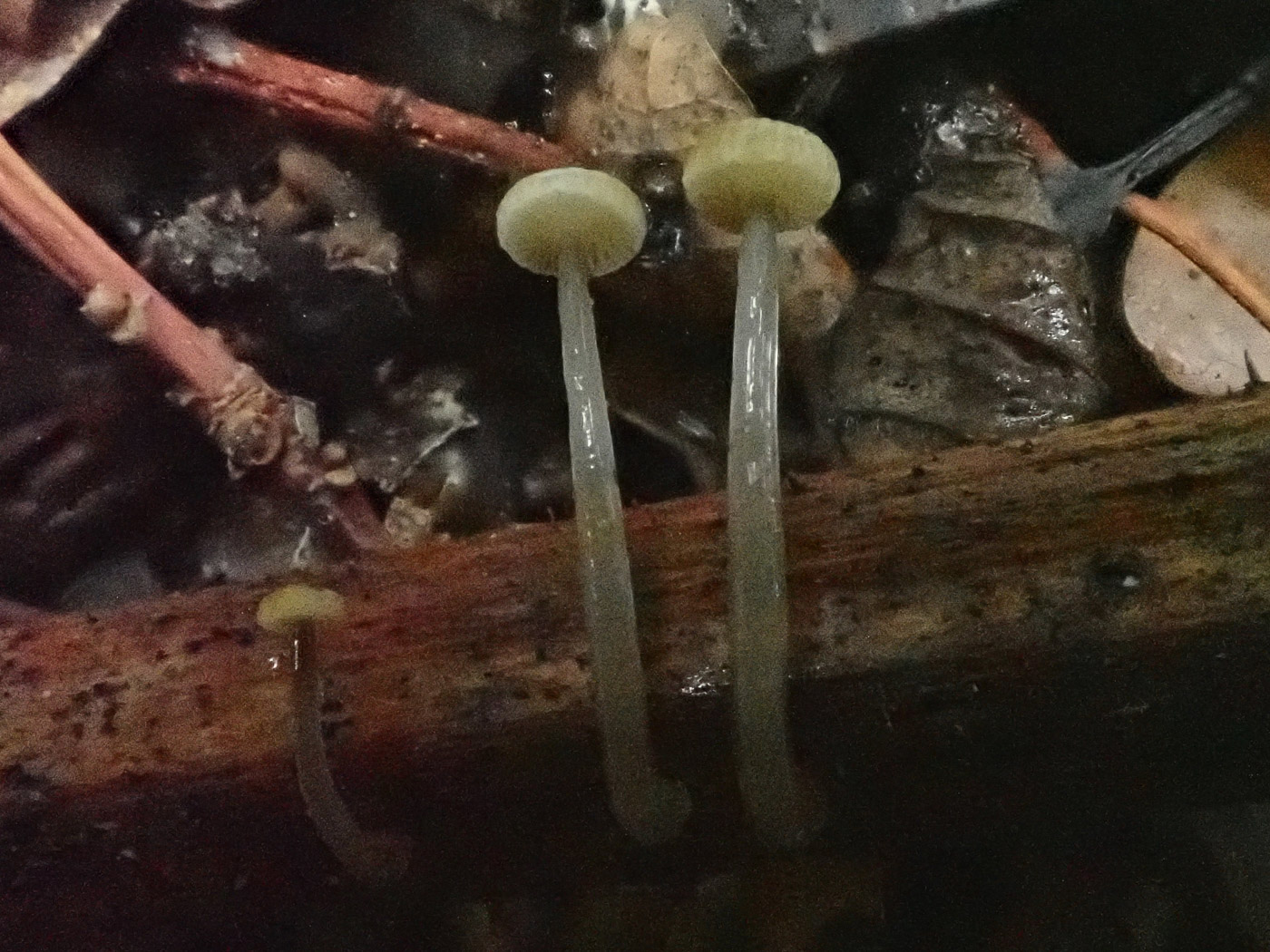 |
October 15th Roridomyces roridus (Dripping Bonnet)
On a dead Bramble stem at Holtspur Bank Penny found these small whitish Bonnets and at first glance thought they were Mycena speirea, then noting the prickly host stem she wondered if it just might be this Roridomyces (until recently in Mycena), for which the diagnostic characters are the decurrent gills and layer of thick slime all over the stem. Sure enough, with a hand lens the slime was obvious, confirming its ID. The species is not rare but is one that is easily overlooked if one doesn't notice the glistening slimy stem, and it often seems to be found on Bramble as here. This is new for Finds, and apologies for the quality of the photos - not Penny's best!
|
October 14th 2022
 |
October 14th Mycoacia nothofagi (a Corticioid with no common name) 
On a large fallen rotting Beech branch in Naphill Common Sarah Ebdon found an expansive patch of this somewhat unusual Corticioid, took a piece home and correctly identified it, then sent the image to Claudi Soler who confirmed it. We were also shown it on our BFG Walk there a few days later. The finely toothed surface and rather greyish colour are typical of the species, also its has a distinctive smell of soap! We have two other species of the genus on Finds which make interesting comparison (see the Masterlist for details) but this is our first of this species for which we have a good handful of previous records.
|
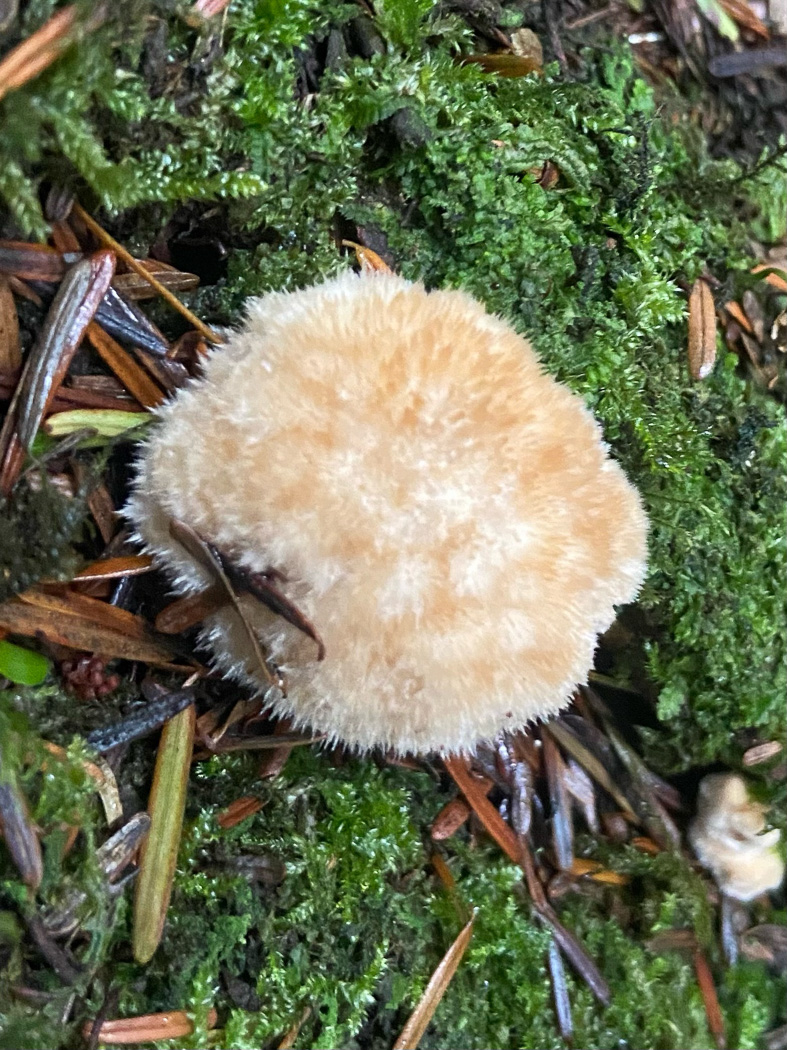 |
October 14th Postia ptychogaster (Powderpuff Bracket)
In a conifer plantation near Gt. Hampden Sarah Ebdon noticed and identified this unusual fungus which is only found on fallen conifer. Aptly named, the fruitbodies are about 2 inches across, have a pinkish glint and are covered in copious silky hairy spikes. If found there is little doubt over its identity - nothing else looks quite like it. (The Latin species name is pronounced Tie-co-gaster!) We have one previous entry in Finds: 2020 October 27th.
|
October 12th 2022

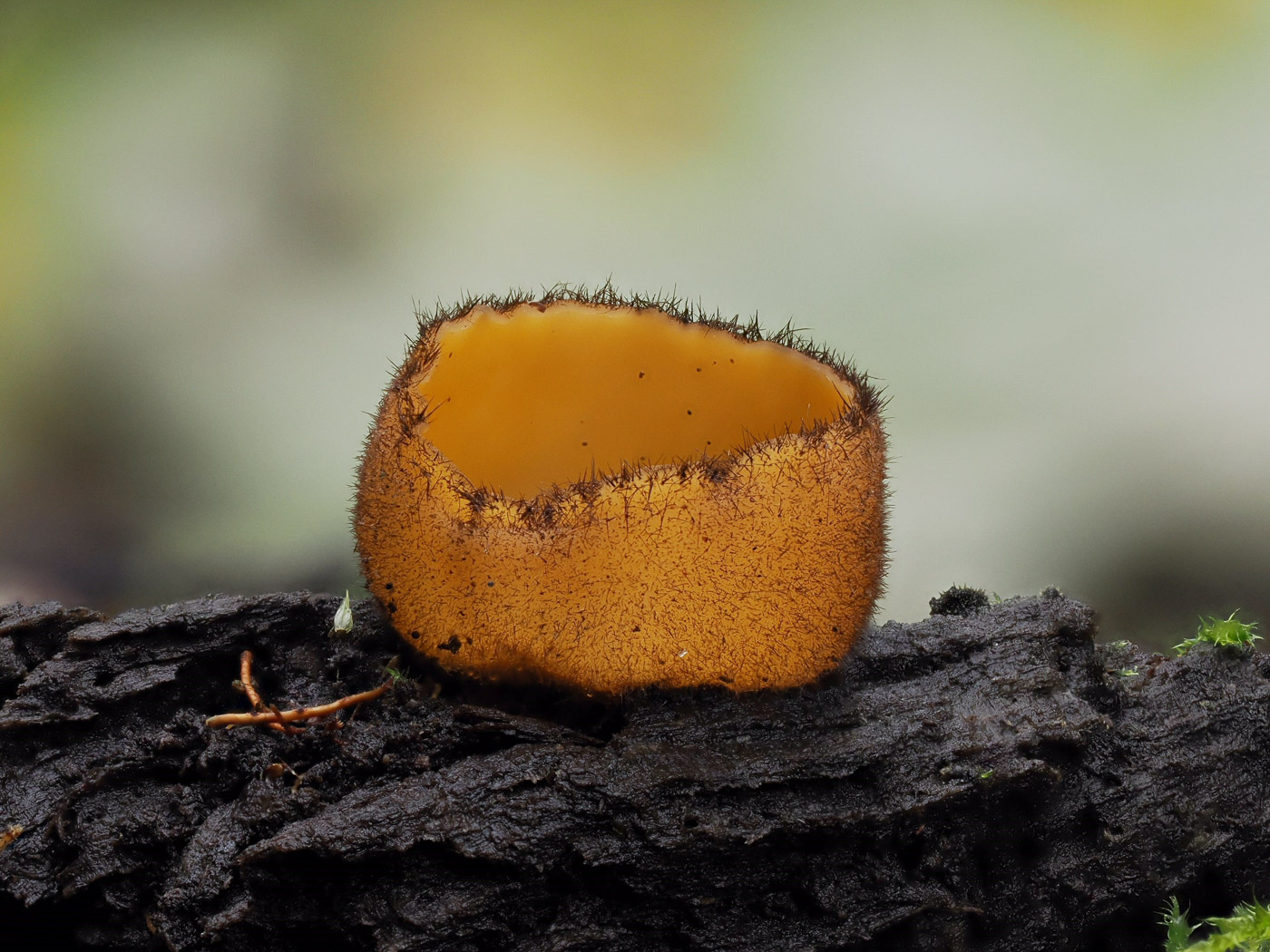
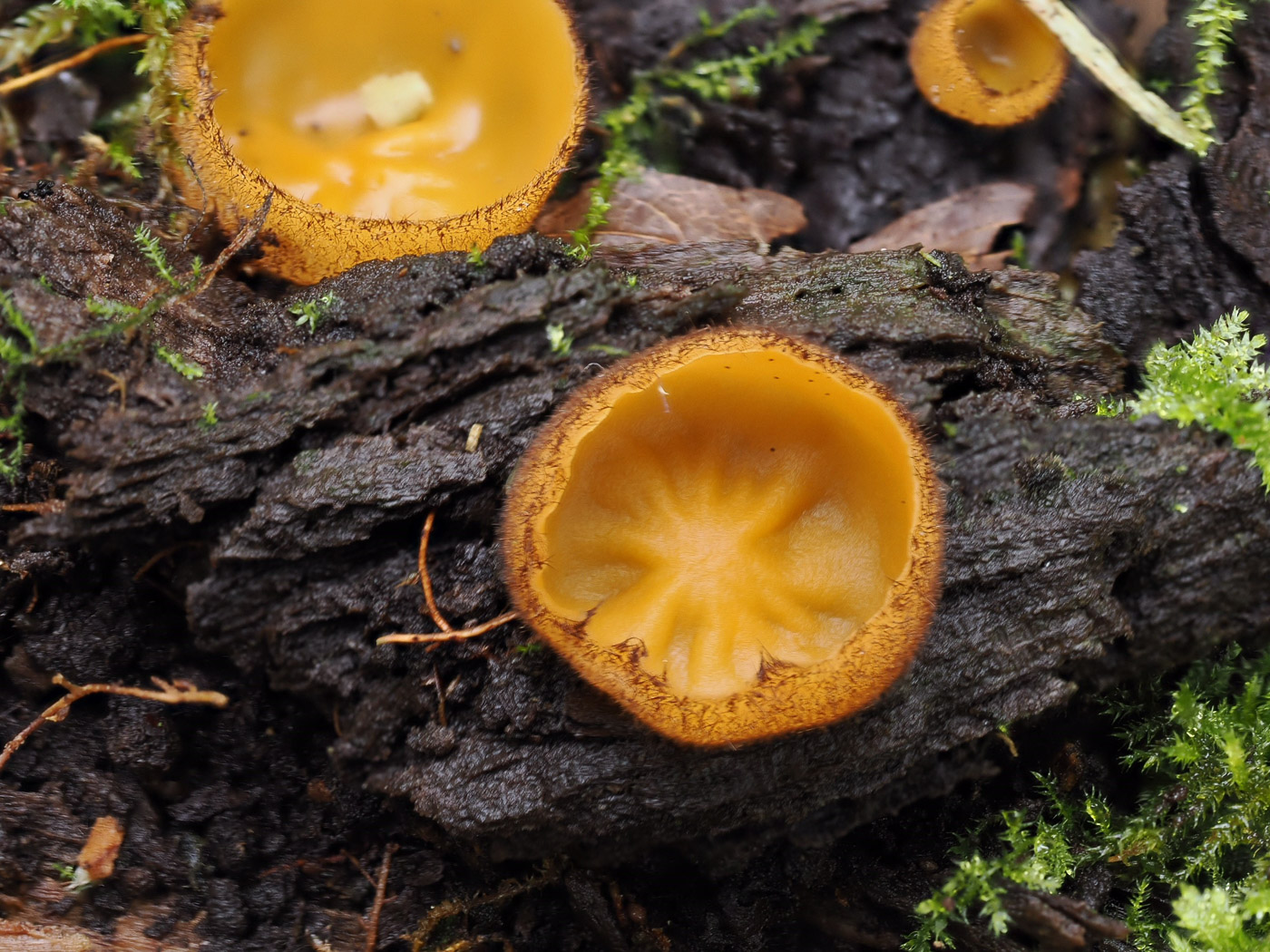 |
October 12th Humaria solisequia (a cup fungus with no common name and new to the UK) 
On a wooded bank at Dancersend Sarah Ebdon noticed these unfamiliar orange cups which were growing on both soil and woody debris in good numbers. Closer inspection revealed they were coated in fine dark hairs, and to Derek and Penny they were somewhat reminiscent of the genus Humaria though both known British species of that genus are pale beige. At home later both Sarah and Derek independently located a likely candidate in a reference book, compared notes and Derek was able to confirm that this must be our species, so far known in southern and eastern Europe but rare. This was an exciting find and will be dried and sent to RBG Kew for sequencing to confirm it as officially British. Photo 1 is Barry Webb's; photos 2 and 3 are Claire Williams's.
|
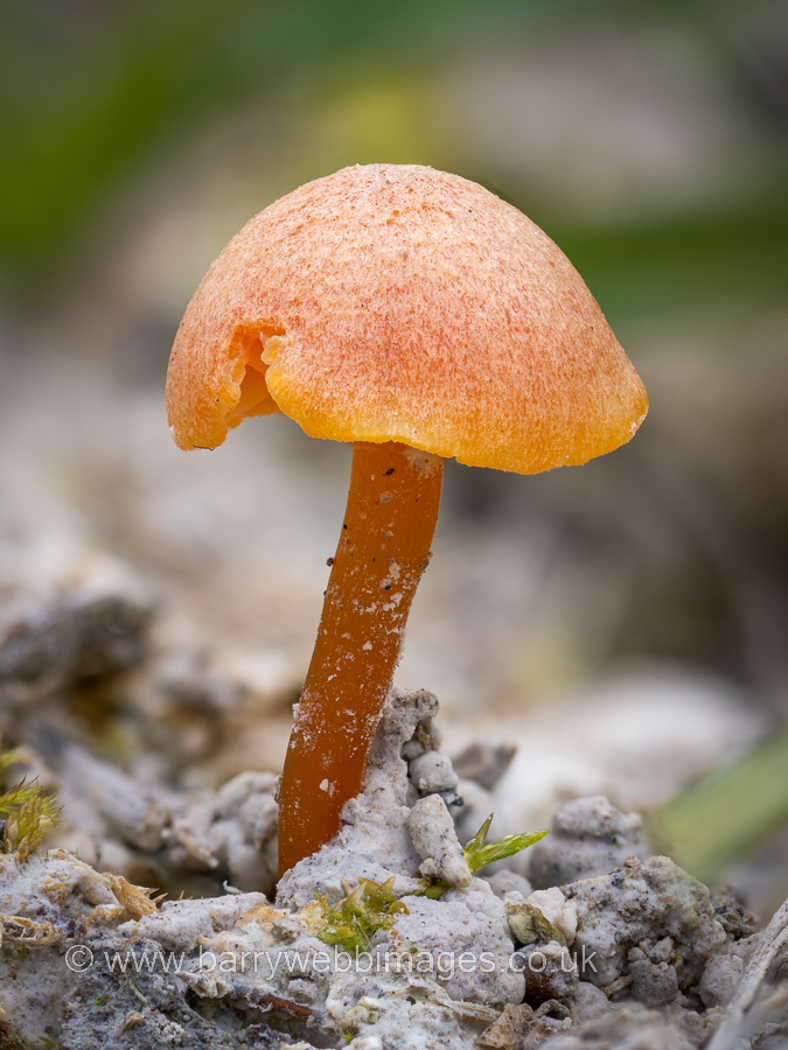
 |
October 12th Hygrocybe calciphila (Limestone Waxcap) 
In a grassy very chalky area of Dancersend several small reddish to orange or yellow Waxcaps were found and thought at the time to be H. miniata (Vermillion Waxcap) on account of their scurfy dry cap surface and small size. However, on checking the spores later Derek found them incorrect for that species and recalled a collection back in 1997 from this same spot which he'd taken to a Waxcap workshop tutored by David Boertmann who'd identified it as the very similar H. calciphila. We have a handful of previous county records (including Derek's) though it is new for Finds. The photos are Barry Webb's.
|
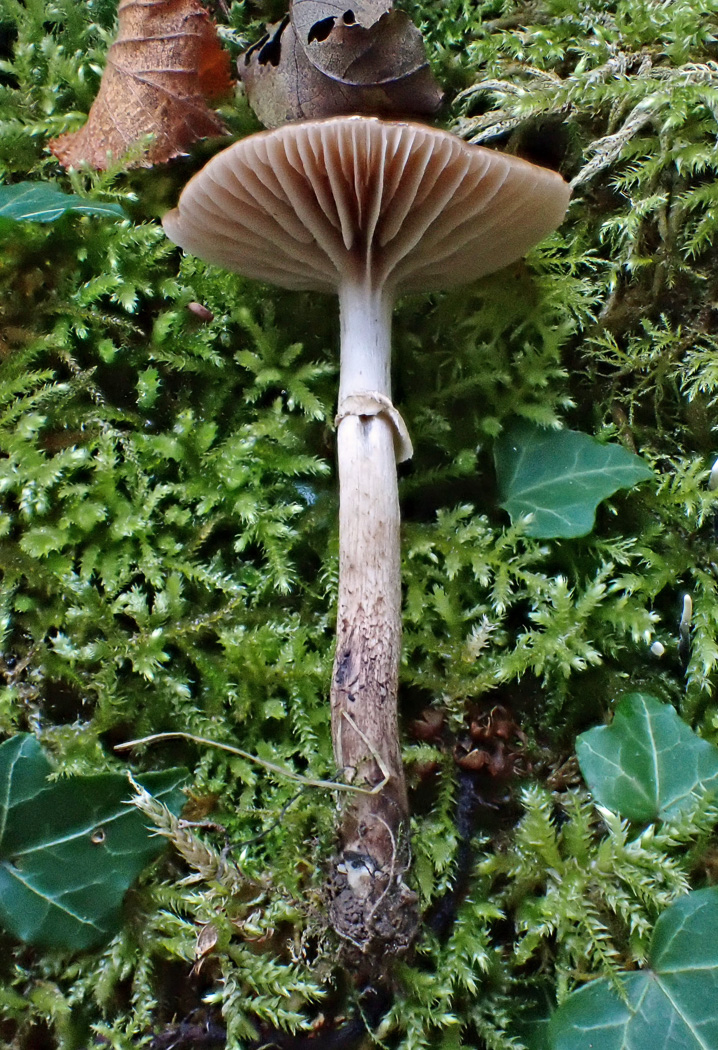
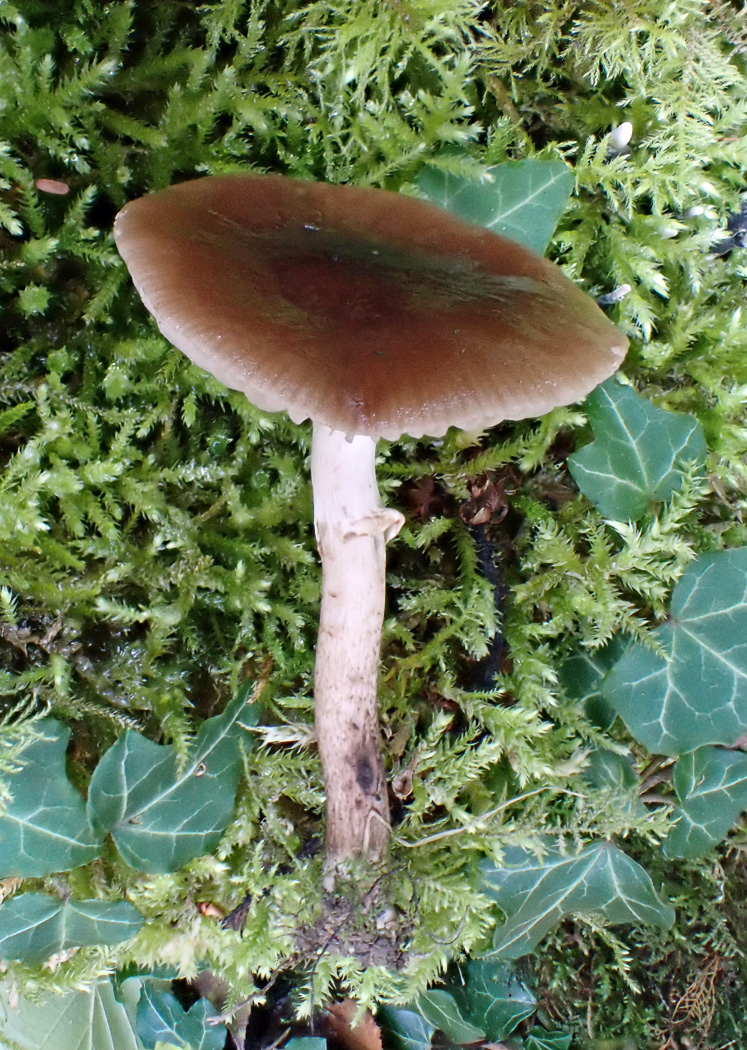 |
October 12th Cyclocybe erebia (Dark Fieldcap) 
In woody debris at Dancersend Gill Ferguson found this unusual species which is new to the site, this being only the third record in the county in the last 15 years. Previously and better known in genus Agrocybe, it has a dark reddish brown cap which today was somewhat viscid after rain, brownish gills and a pale stem having a distinct membranous pendant white ring, below this becoming gradually darker. This was a nice record and is a new entry for Finds. The photos are Neil Fletcher's.
|
 |
October 12th Exidiopsis galzinii (a Corticioid-like species with no common name) 
This somewhat rarely recorded species - found at Dancersend on bare rotten deciduous wood - was photographed and identified by Claudi Soler. The genus has features in common with Exidia - ie having a jellylike texture and also similarly shaped unusual basidia having pronglike extensions - though remains flattish on its substrate rather than forming gelatinous lumps. We have just one previous county record and it was new to the site and to Finds today. A sample will be sequenced to check the identity is correct.
|
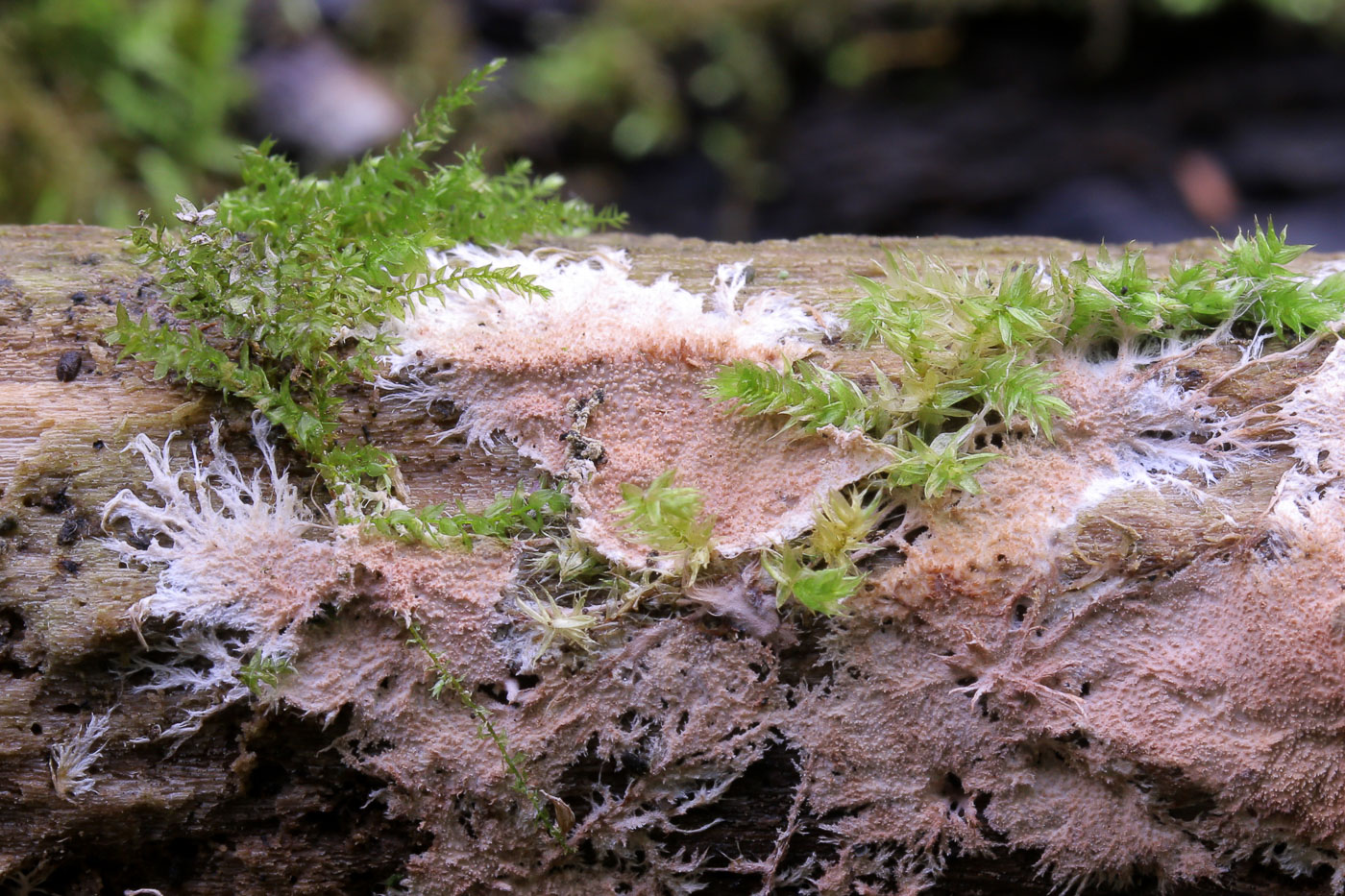 |
October 12th Steccherinum fimbriatum (a Corticioid species with no common name) 
On a deciduous stick at Dancersend this distinctive and colourful Corticioid species was found, then handed to Claudi Soler to photograph and identify later. We have just three previous records (though the species is not considered rare) and it was new to the site today.
|
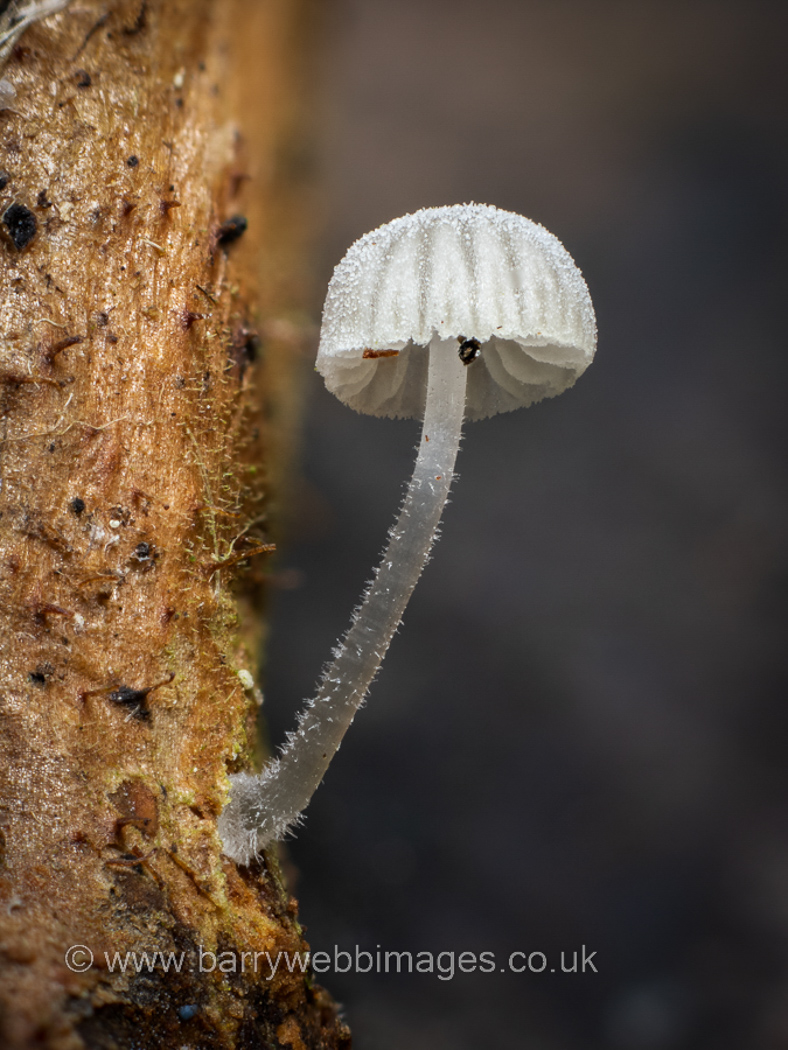 |
October 12th Mycena tenerrima (Frosty Bonnet)
On a tiny twig at Dancersend Sarah Ebdon spotted this miniscule Bonnet which with a x10 handlens can be identified in the field by its occurrence on wood, its pruinose cap and stem (as if dusted with icing sugar) and the small disc at the stem base. It is a common species though often overlooked for obvious reasons. The photo here is Barry Webb's. See the Finds Masterlist for further images.
|
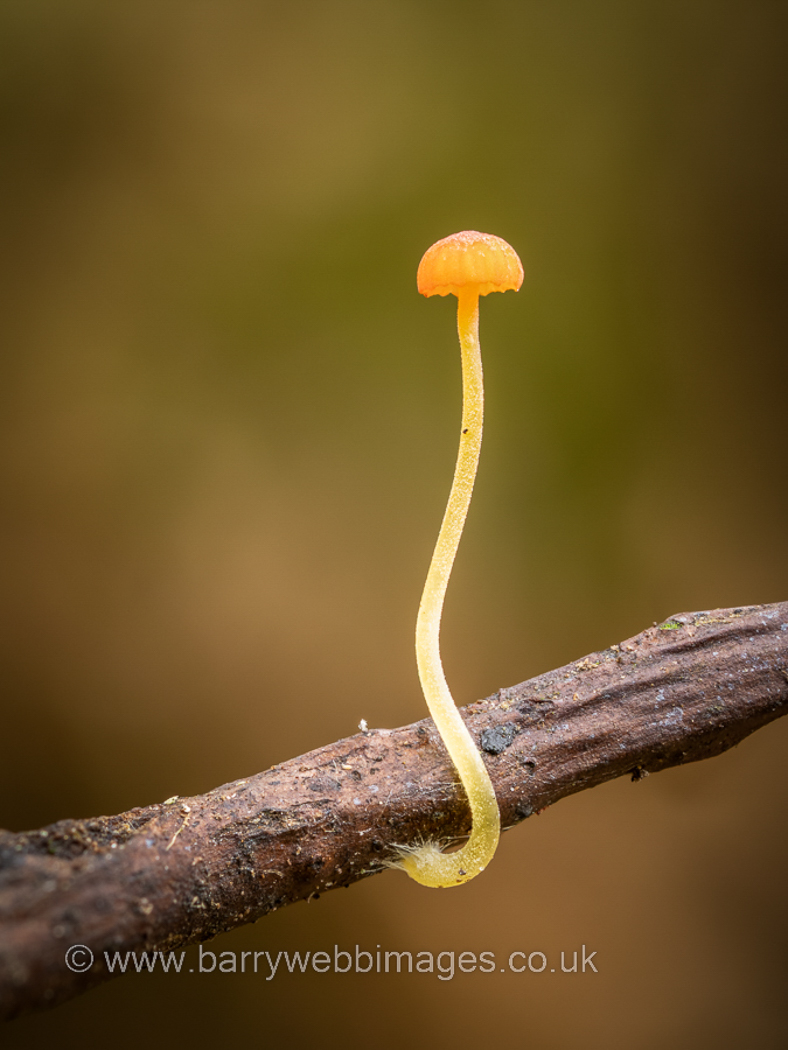 |
October 12th Mycena acicula (Orange Bonnet)
On a deciduous stick at Dancersend this tiny but vividly coloured Bonnet was found by Barry Webb. The species is quite common on woody mossy litter but easily overlooked. The contrasting tiny orange cap and yellow stem make it easy to identify as long as one checks that the gills are not deeply decurrent and the stem also orange which would point to the equally tiny Rickenella fibula (Orange Mosscap). See the Finds Masterlist for further images.
|
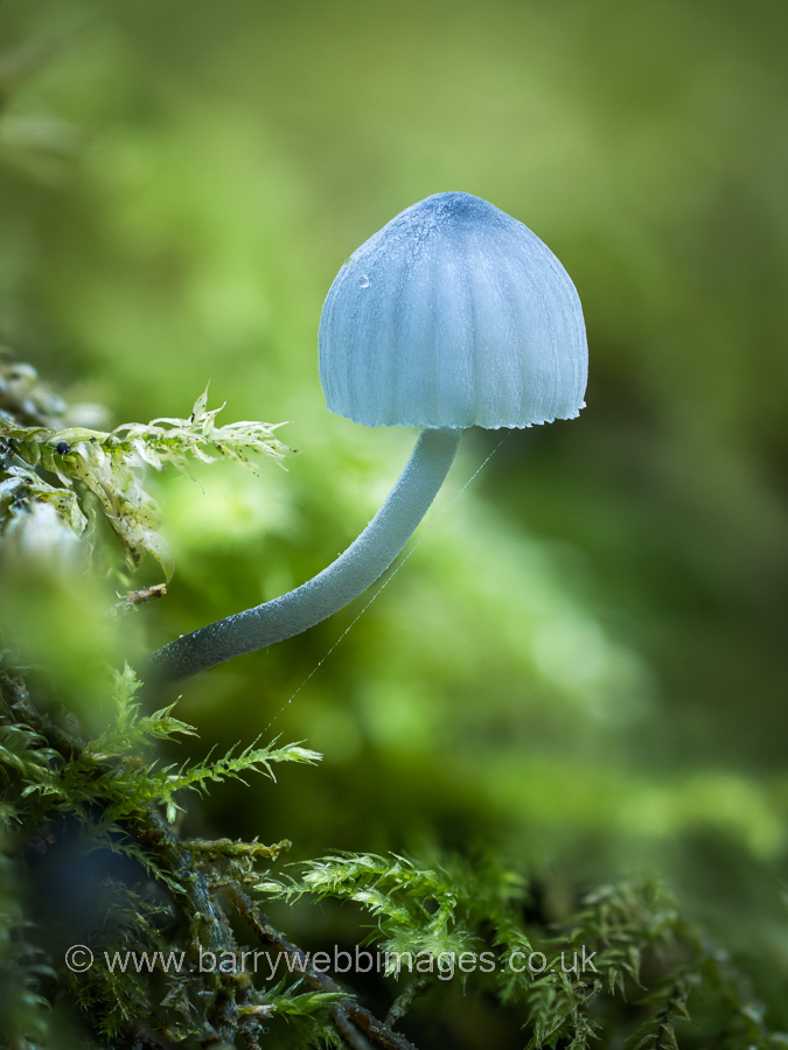 |
October 12th Mycena pseudocorticola (a Bonnet with no common name)
On a fallen mossy Willow trunk at Dancersend Barry Webb found several fruitbodies of this beautiful little species just emerging. There is always something of the 'Wow' factor about this Bonnet which is not rare but easily overlooked. It was new to the site here today. See also in Finds 2020 November 30th.
|
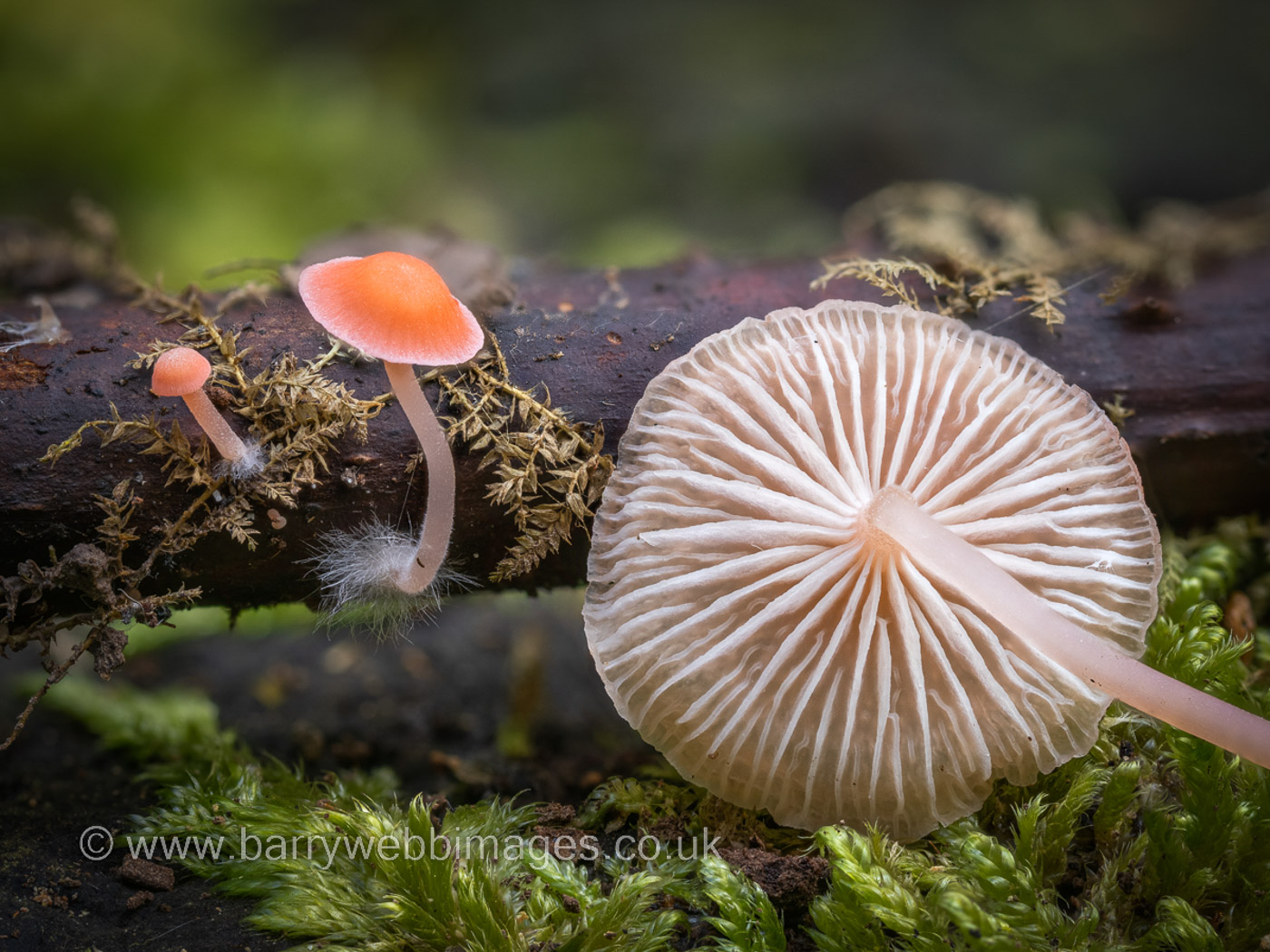
 |
October 12th Mycena adonis (Scarlet Bonnet) 
At Dancersend Lisa Dodd spotted these little beauties lurking in a patch of thick rotting woody debris behind a fence, the bright pink caps instantly attracting attention. After carefully extracting the bramble stem to which they were attached we were able to set them up for photos. Photo 1 is Barry Webb's and photo 2 Neil Fletcher's. The species is not really rare but we don't have many county records, most of them from this site though dating back to the previous century.
|
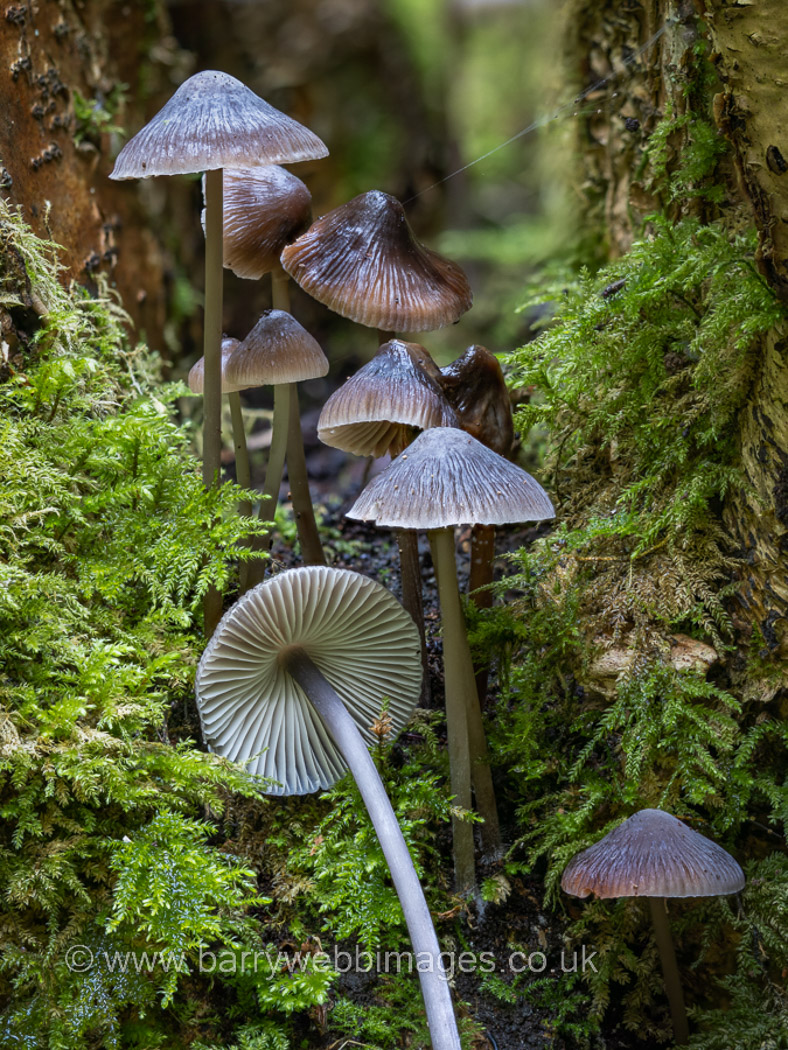
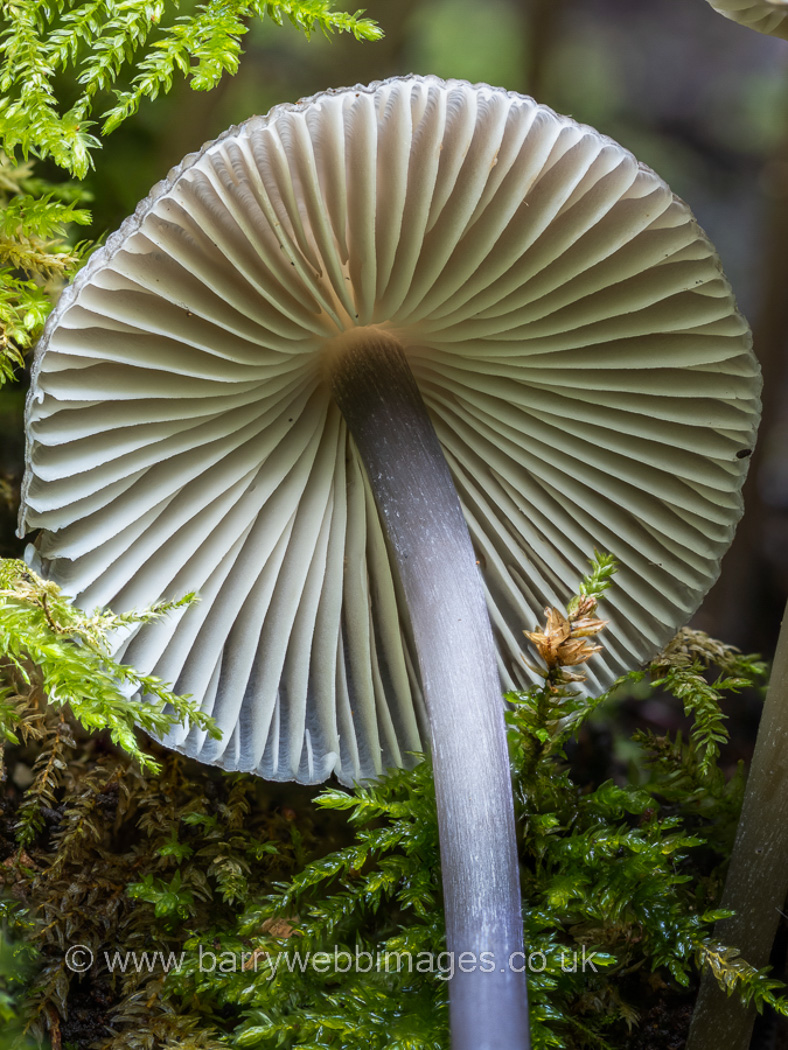 |
October 12th Mycena polygramma (Grooved Bonnet)
On a Hazel stump at Dancersend Claire Williams found this cluster of greyish Bonnets which were somewhat similar to the many examples of M. galericulata (Common Bonnet) on display on the fallen wood - this site often boasts many different Bonnet species. Penny suspected this might be M. polygramma which is a regular here, so checked the stem for the telltale longditudinal grooves - not always obvious or even present, but diagnostic when they are. These are just visible in photo 2 especially just under the apex. See two further examples on Finds 2020 October 18th and 2021 October 7th. (The photos here are Barry Webb's.)
|
 |
October 12th Coprinopsis stercorea (an Inkcap with no common name) 
At Dancersend Barry Webb spotted these tiny little furry caps which were growing on unidentified old dung and took the photo. Later Derek was able to identify them, and this is a new species for the site and for Finds images with just three previous county records.
|
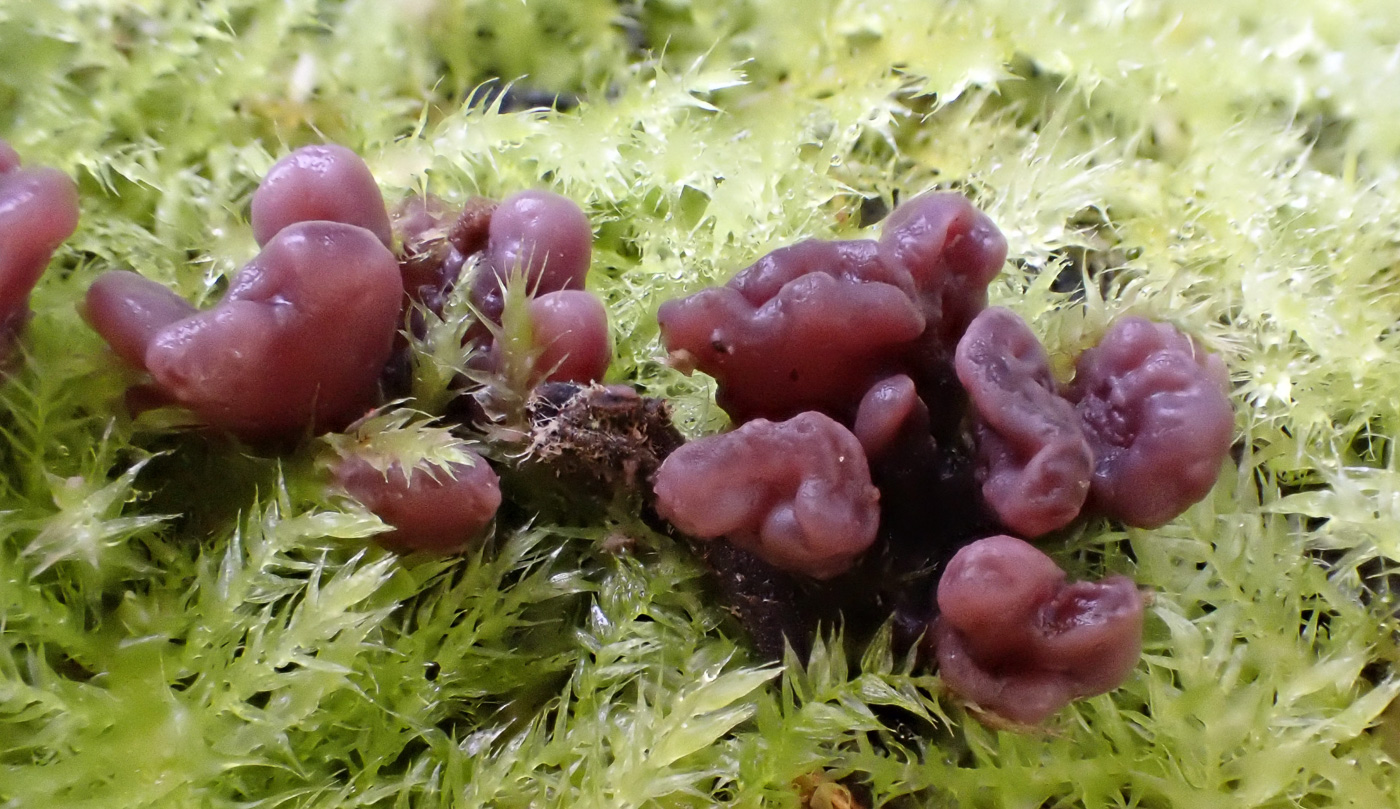 |
October 12th Ascocoryne sarcoides (Purple Jellydisc)
On a mossy sawn off end of Hazel at Dancersend Claire Williams spotted these very small specimens. This is a common and distinctive Ascomycete often though not exclusively found on fallen Beech. When on that substrate one needs to take care not to confuse it with the larger and paler Neobulgaria pura (Beech Jellydisc). See the Finds Masterlist fo examples of both species to compare. (The photo is Neil Fletcher's.)
|
 |
October 12th Ganoderma applanatum (Artist's Bracket)
At Dancersend warden Mick Jones showed a group of us a fallen Beech trunk with several of these brackets. It is only when one finds an example with the little hillocks underneath (seen here) caused by the Yellow Flat-footed Fly that one can separate this species from the much more common but almost identical G. australe in the field. Obviously the fly can do what we can't because it only resides in today's species - us mere humans need to use a scope to compare spore sizes to split the two species! This is our first image for Finds, taken by Sarah Ebdon.
|
 |
October 12th Hymenoscyphus fraxineus (Ash Dieback Disco)
On an old Ash leaf petiole at Dancersend Barry Webb found these tiny pale cream discs which are smooth and have a short stem. Despite the small size of the fruitbodies, this is the fungus now devastating so many Ash trees both here and all over Europe. Hopefully in time some Ash saplings will evolve which have a natural resistance to the disease this fungus causes, and thus allow this tree species to regenerate. See also Finds 2021 August 13th.
|
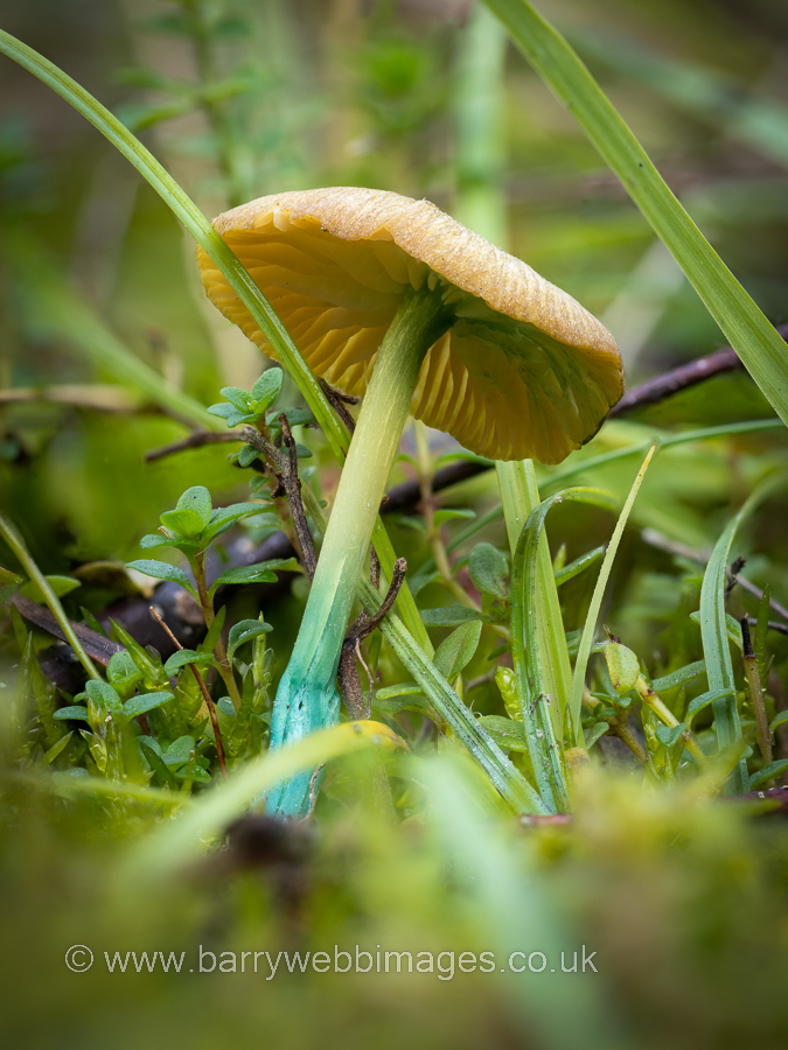 |
October 12th Entoloma incanum (Mousepee Pinkgill)
In a grassy area at Dancersend Lisa Dodd found this small but very distinctive Pinkgill which is instantly recognisable in the field on two counts: the unusual greenish tints in the cap and stem, also its extraordinary smell which reminds of a mouse's cage which needs cleaning out! The smell was only faint today, but the green stem which bruises turquoise when handled left us in no doubt as to its identity. This is one of extremely few Pinkgills safely nameable without the need for a scope. See also in Finds 2020 October 25th. (The photo is Barry Webb's.)
|

 |
October 12th Pluteus chrysophaeus (Yellow Shield) 
On a Beech log at Dancersend Penny noticed this small singleton Shield, the cap colour denoting it as one of just two yellow-capped species in the genus. Checking the cap cuticle later confirmed it at this species which is by far the commoner of the two, the other being P. leoninus (Lion Shield) which we've not yet recorded in the county. See also in Finds 2020 September 21st. (The photos are Sarah Ebdon's.)
|
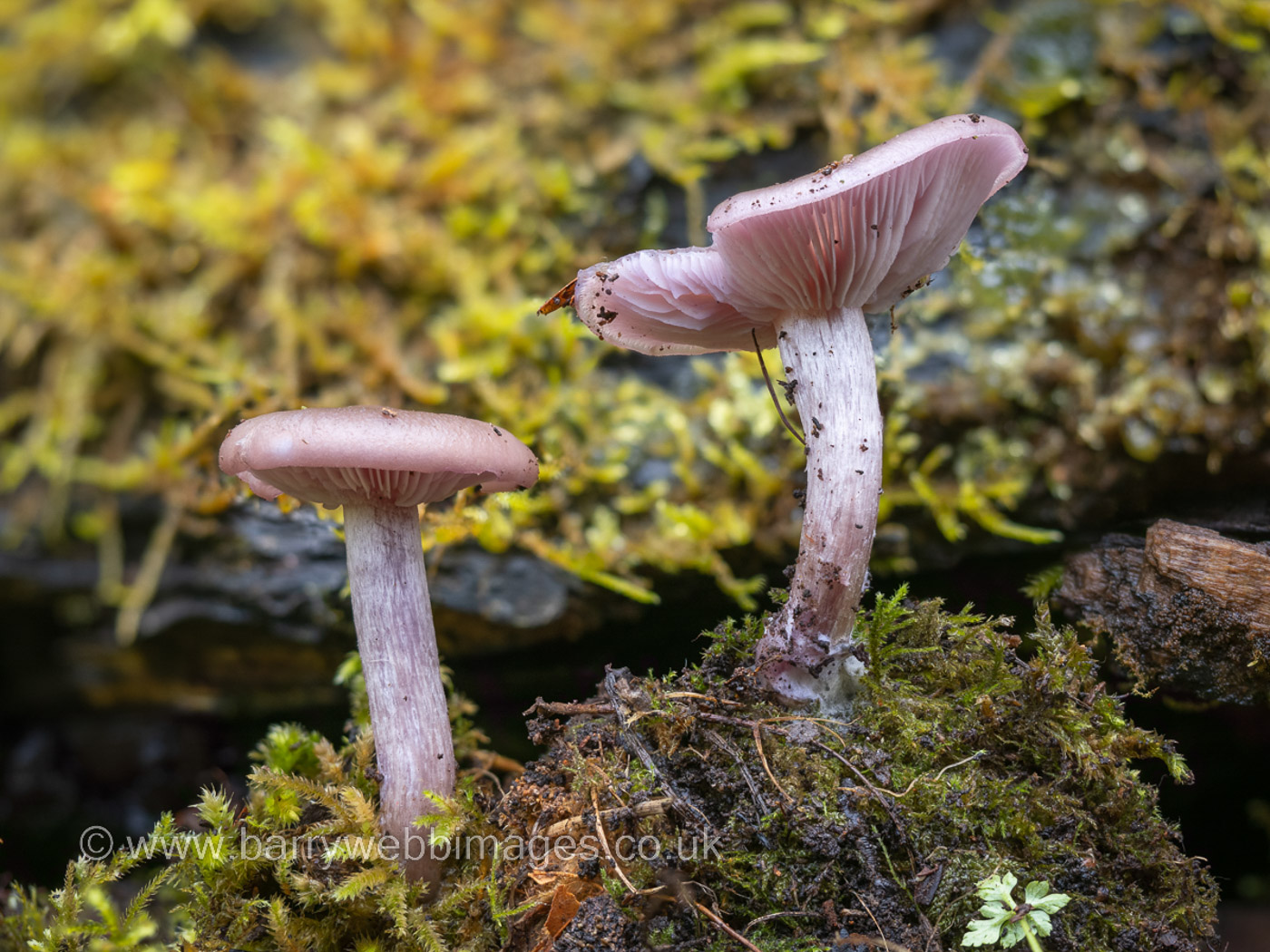 |
October 12th Lepista sordida (Sordid Blewit)
On a mossy bank at Dancersend Claudi Soler found these two Blewits and recognised them as too small and thin-fleshed for L. nuda (Wood Blewit) which is quite a chunky species, also much more common. Both species are similarly violaceous both above and below when young though todays tends to have more pink in its colour. See also Finds 2020 October 25th and 2021 November 18th. (The photo is Barry Webb's.)
|
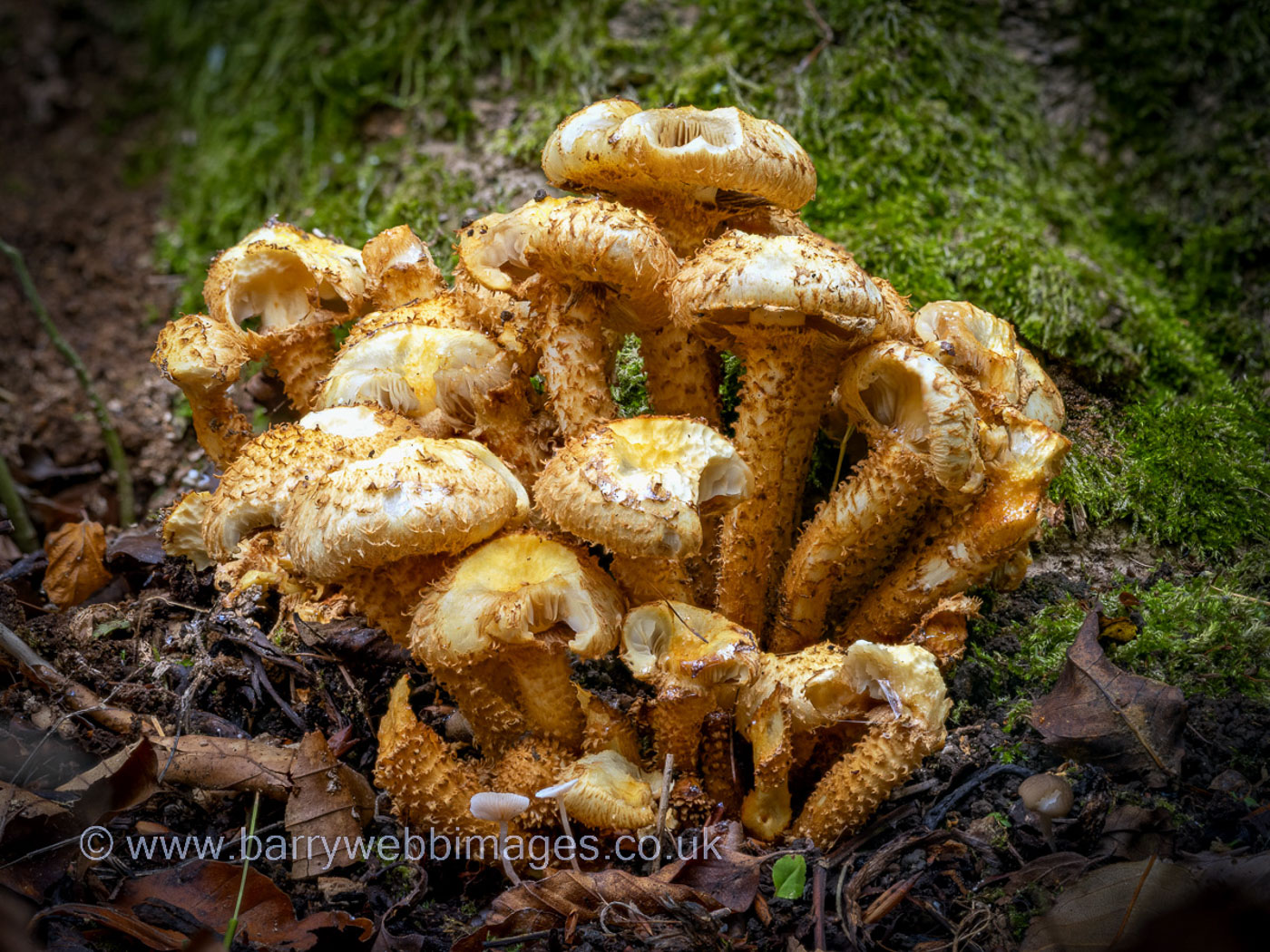 |
October 12th Pholiota squarrosa (Shaggy Scalycap) with Collybia cirrhata (Piggyback Shanklet) 
At Dancersend Lisa Dodd found this nice cluster at the base of a Beech trunk (the photo is Barry Webb's). Clearly the local mammal population had been enjoying the caps which are somewhat nibbled, and the sharp-eyed amongst you will spot the tiny white mushrooms in the foreground: these were Collybia cirrhata growing on the rotting remains of some other fungus and not something we find very often. The Pholiota is relatively common, however, though has been in short supply so far this autumn. See Finds 2020 November 3rd for another image of the Collybia, and 2020 October 10th, November 17th, also 2020 October 14th for the Pholiota.
|
October 10th 2022
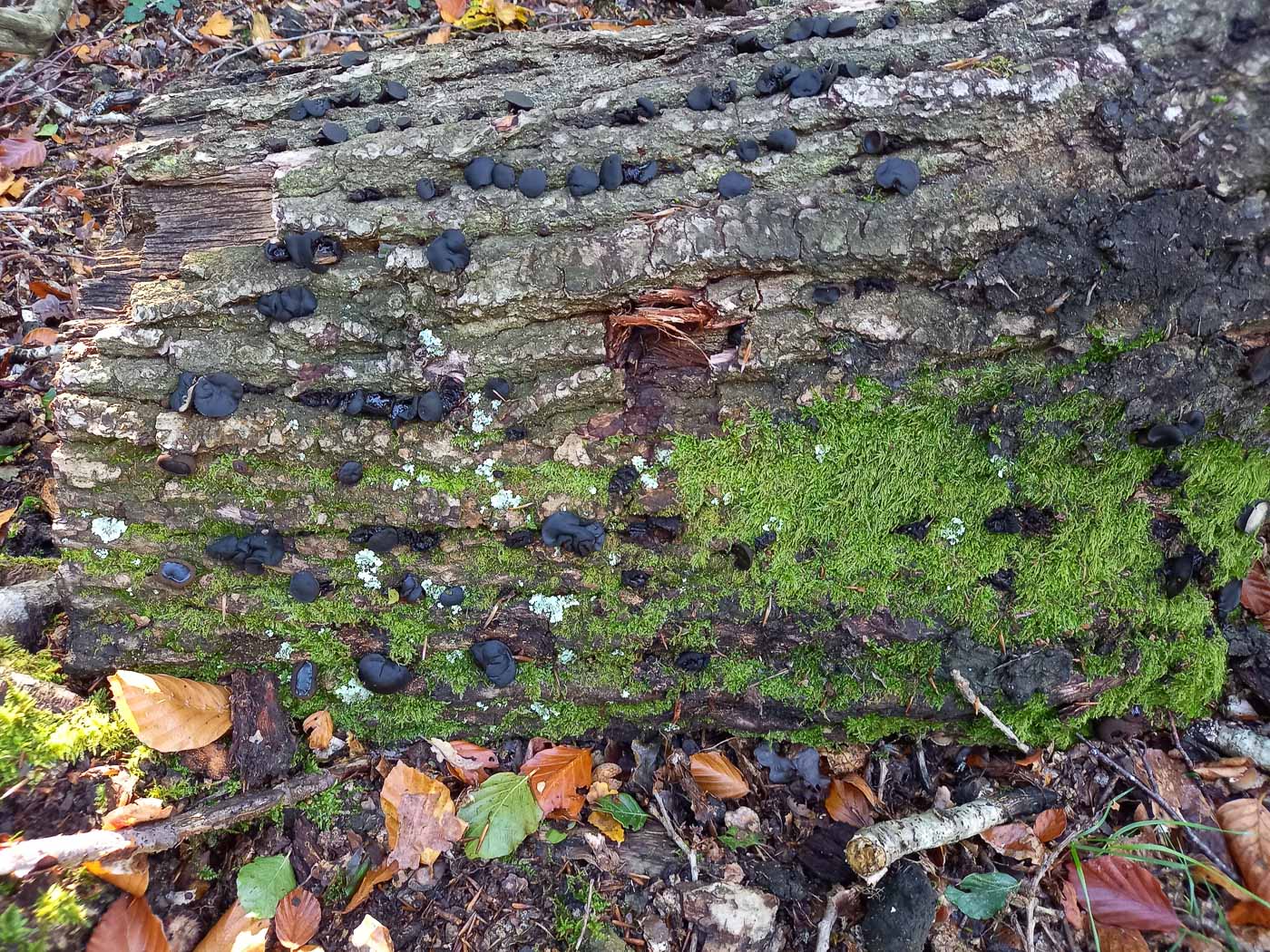
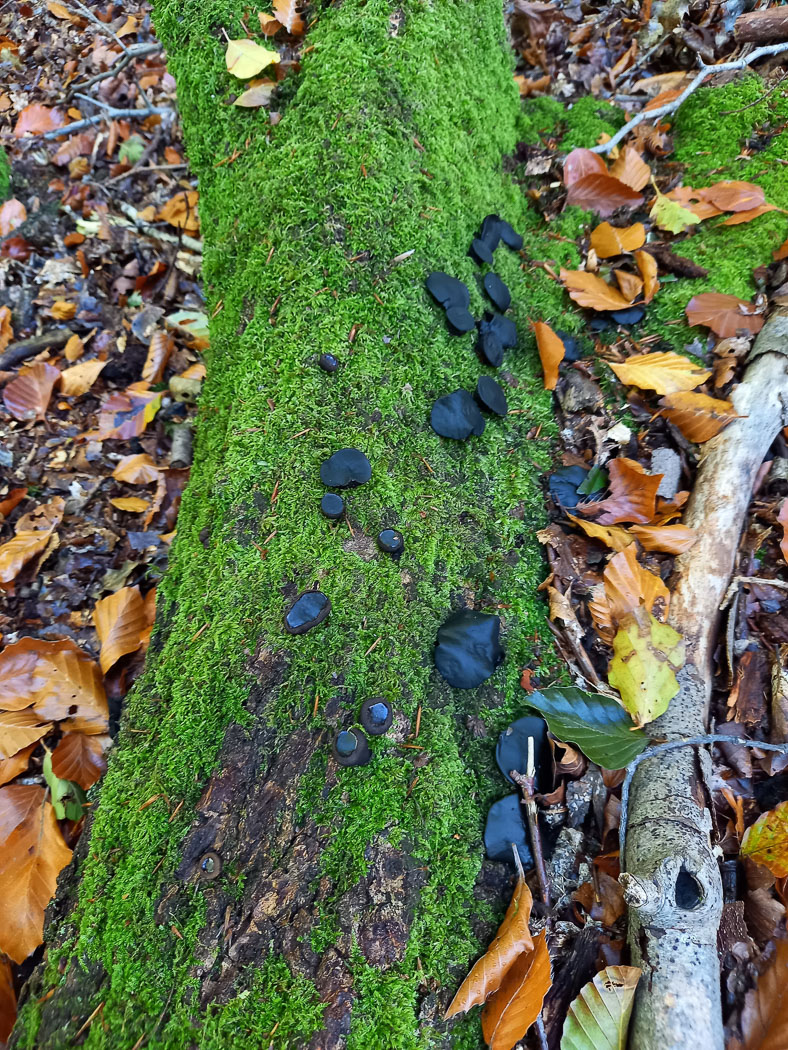 |
October 10th Bulgaria inquinans (Black Bulgar)
In Naphill Common Toni Standing found these distinctive jelly-like ascomycetes on fallen Oak. They can be mistaken for one of the black Exidia species which do not, however, stain your finger black as today's species does if you wipe your finger across the top. See also in Finds 2020 October 11th and 2022 September 15th
|
October 7th 2022
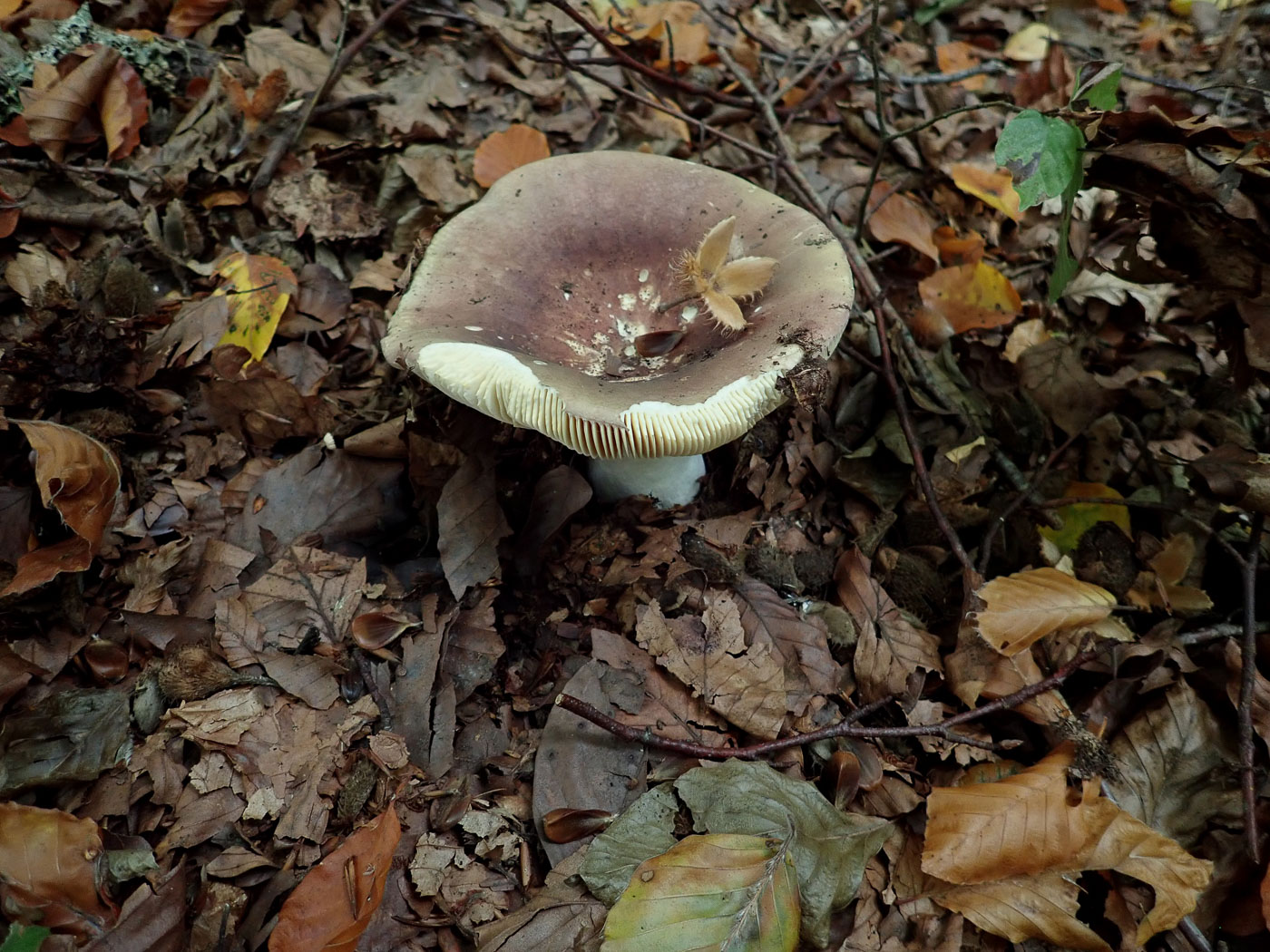
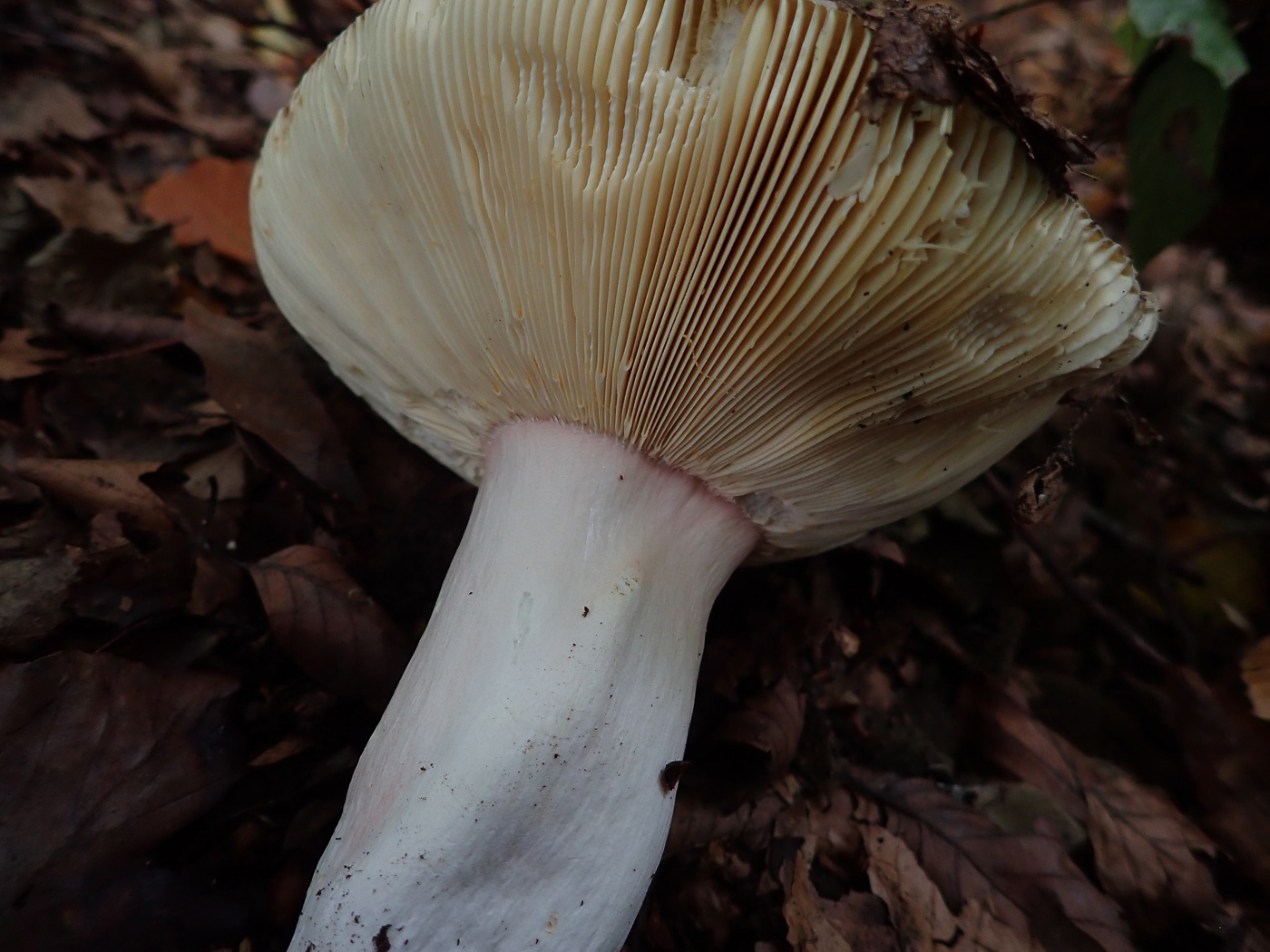 |
October 7th Russula olivacea (Olive Brittlegill)
At Pullingshill Wood Penny found just this one large specimen of a beautiful and quite uncommon species which associates with Beech - the nut cupule which had landed on the cap gives a sense of scale. The cap colour is quite similar to some other species but the subtle pale pink blush on the upper stem is a unique feature of this species, and here it was surprisingly clear at the apex. See also in Finds 2020 October 27th.
|
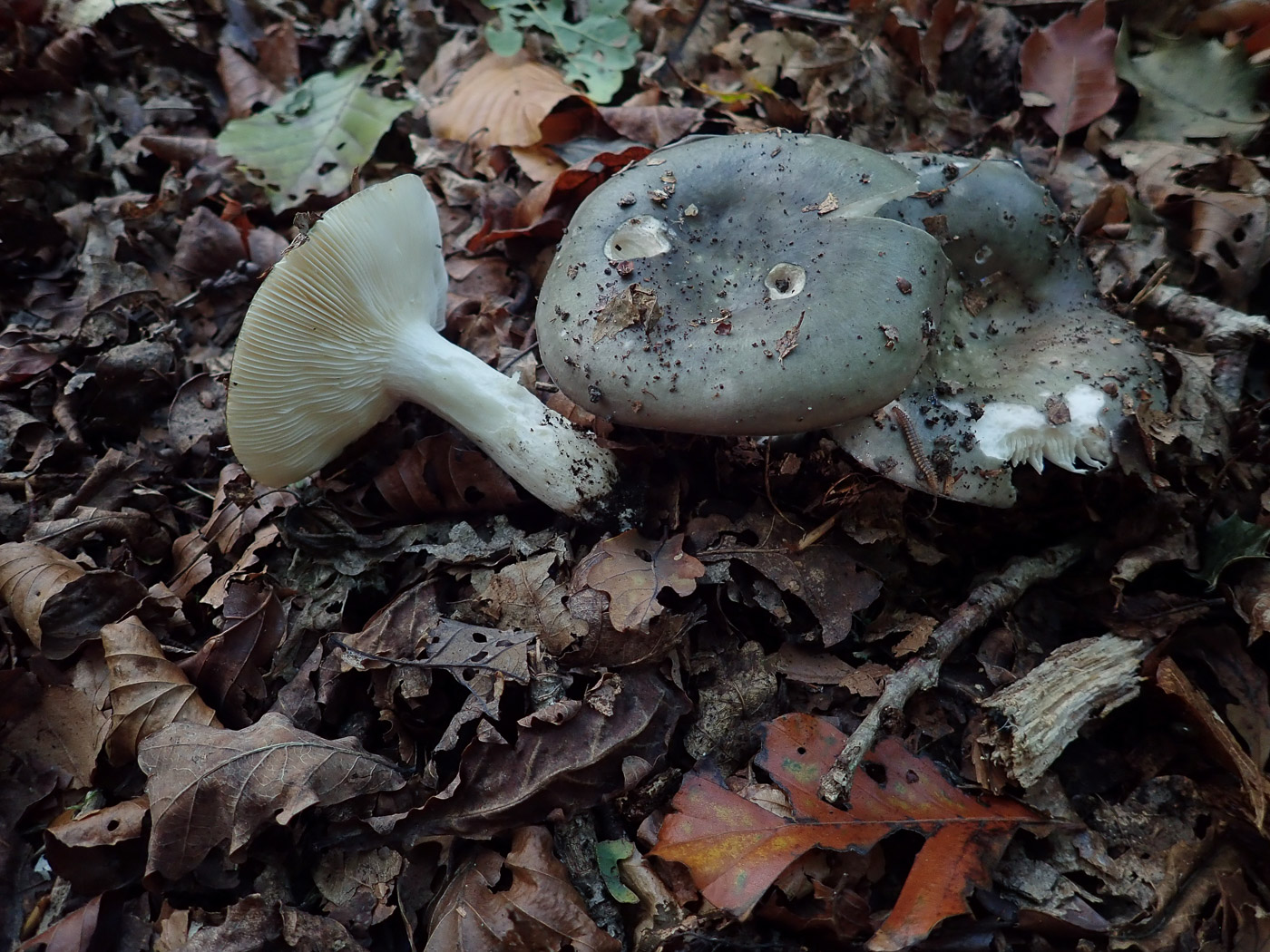 |
October 7th Russula cyanoxantha (Charcoal Burner)
In Marlow Common Penny found a group of these greeny capped Brittlegills and instantly took out her FE crystal to rub on the stem. Most of this large genus quickly turn dirty rust where rubbed with this useful ID tool, but today's species eventually turns very slightly greenish grey, if anything. The patch on the stem where it was rubbed is hardly visible here. This is one of our commonest Brittlegills. See also Finds 2021 July 28th.
|
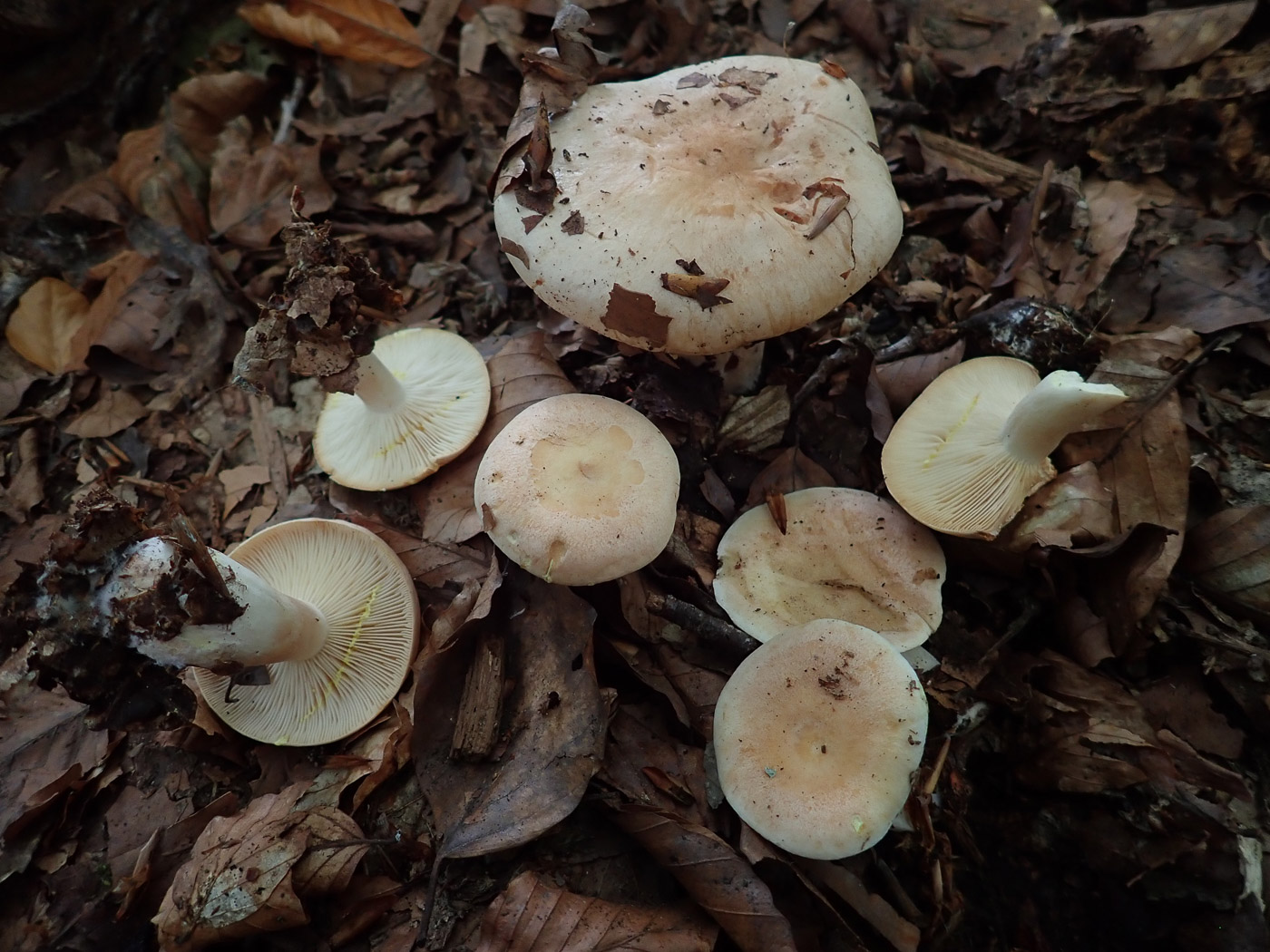 |
October 7th Lactarius chrysorrheus (Yellowdrop Milkcap)
Under Oak at Pullingshill Wood Penny found this attractive Milkcap - not one of our commoner species but with a lovely peachy pink cap, often with zoned darker areas but these were not present today. This made her wonder if it might be the similarly coloured L. pallidus (Pale Milkcap) - a Beech associate rather than Oak but also nearby today. She watched for the telltale change of milk colour to bright yellow where she'd damaged it - no need for a hankie here, it changes on the gill in this species usually within half a minute or so, but there was no sign of it. A while later, having picked up a much larger specimen elsewhere, she then returned to the original collection to find that there was now a yellow line across the gills where she'd sliced it, confirming her ID. See also Finds 2020 September 21st and 2021 November 3rd.
|
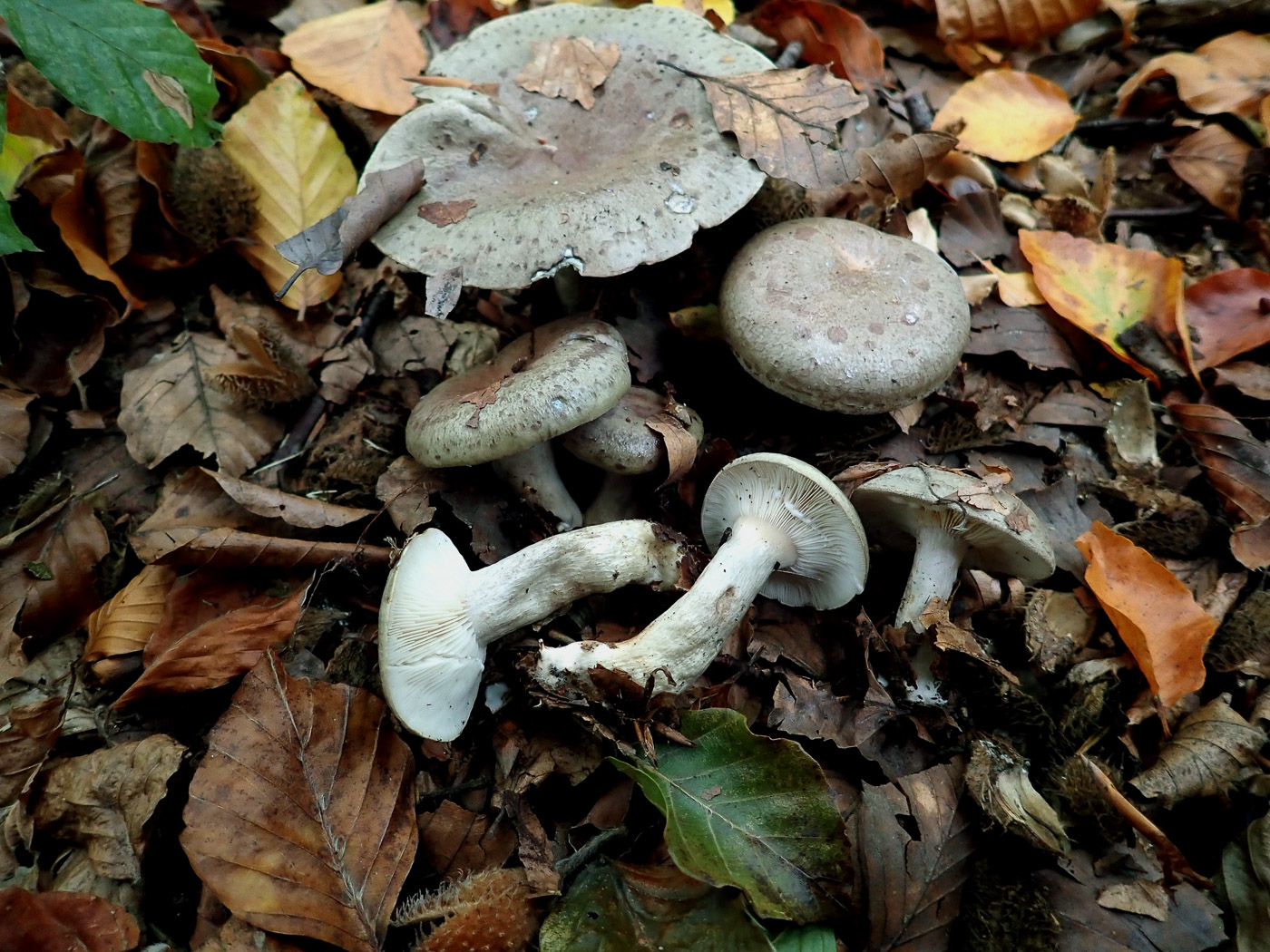 |
October 7th Lactarius blennius (Beech Milkcap)
At Pullingshill Wood Penny found good numbers of this distinctive Milkcap - common wherever there's Beech. It has a sticky quite shiny cap (often having debris attached as here) and its greenish olive tinge with darker droplet-like markings mark it out as different from others in the genus. The milk is usually copious and turns grey as it dries on the gills. See also Finds 2020 Sept 13th and 2021 November 3rd.
|
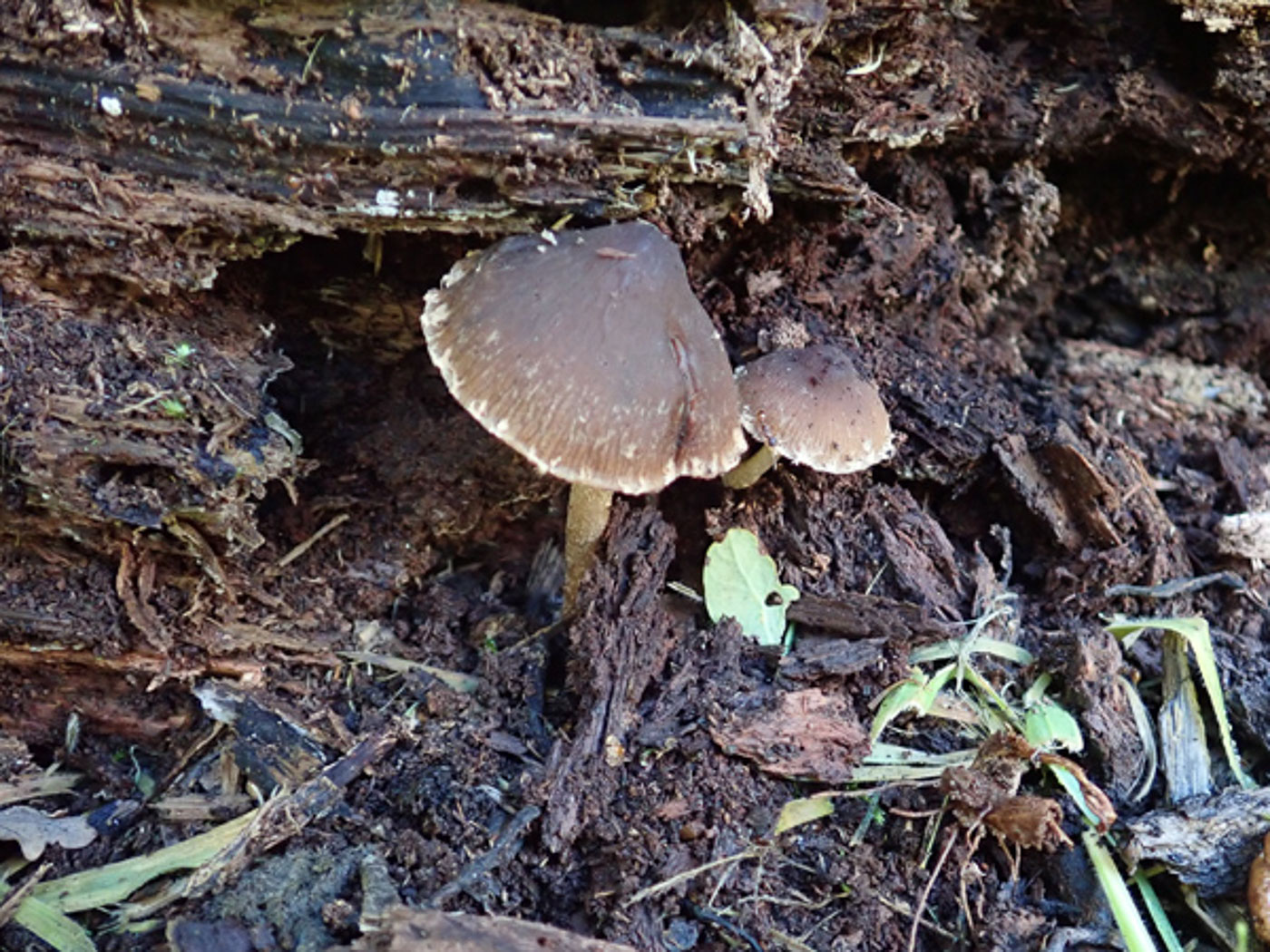
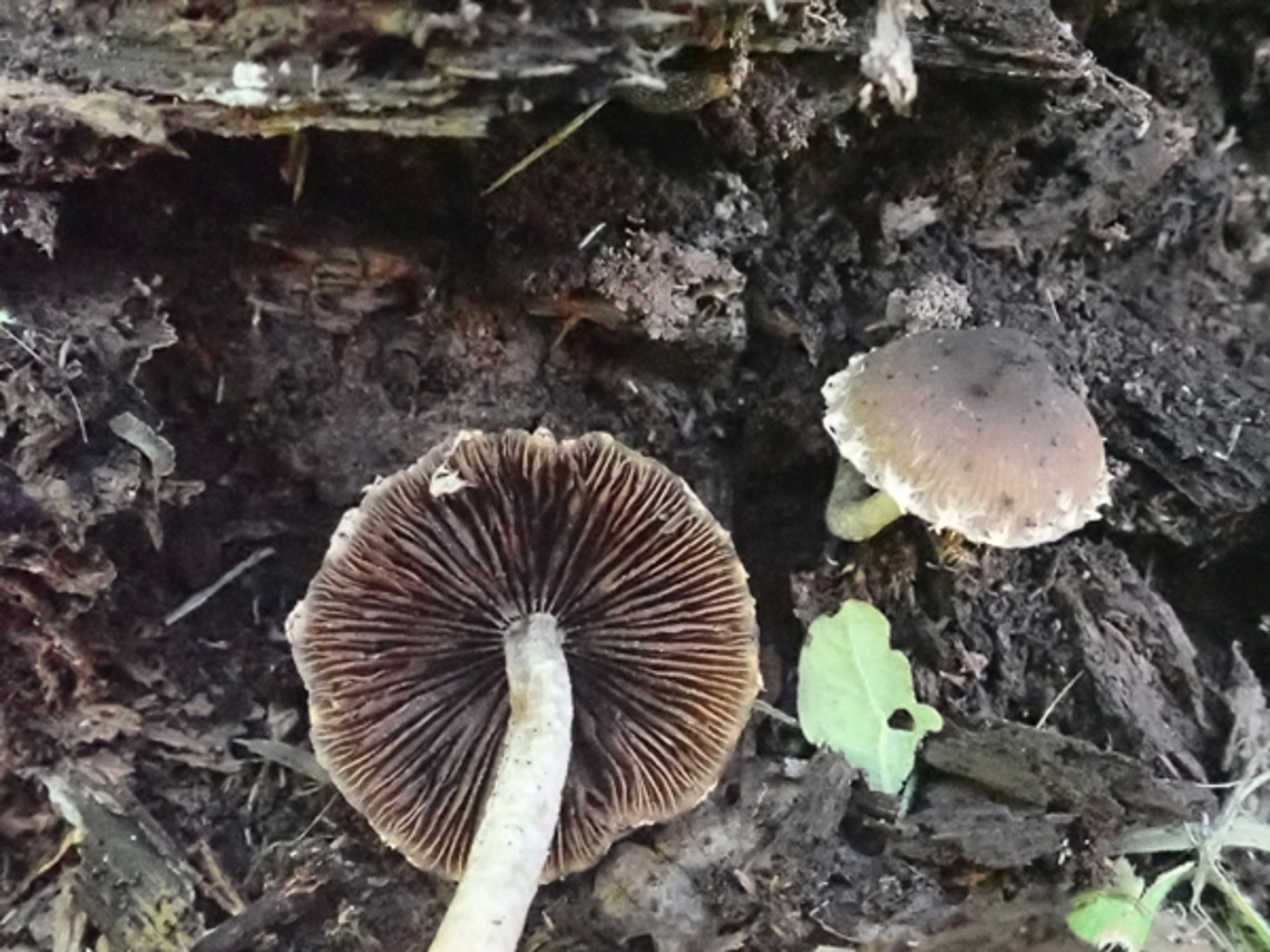
 |
October 7th Psathyrella piluliformis (Common Stump Brittlestem) 
On a deciduous log in Marlow Common Penny noticed this common LBJ - one which tends to confuse at times as it is quite varied in appearance. Photos 1 and 2 were of a pair well away from exposure to much light - hence darker and not faded as in the cluster nearby in photo 3. See the Masterlist for more examples.
|
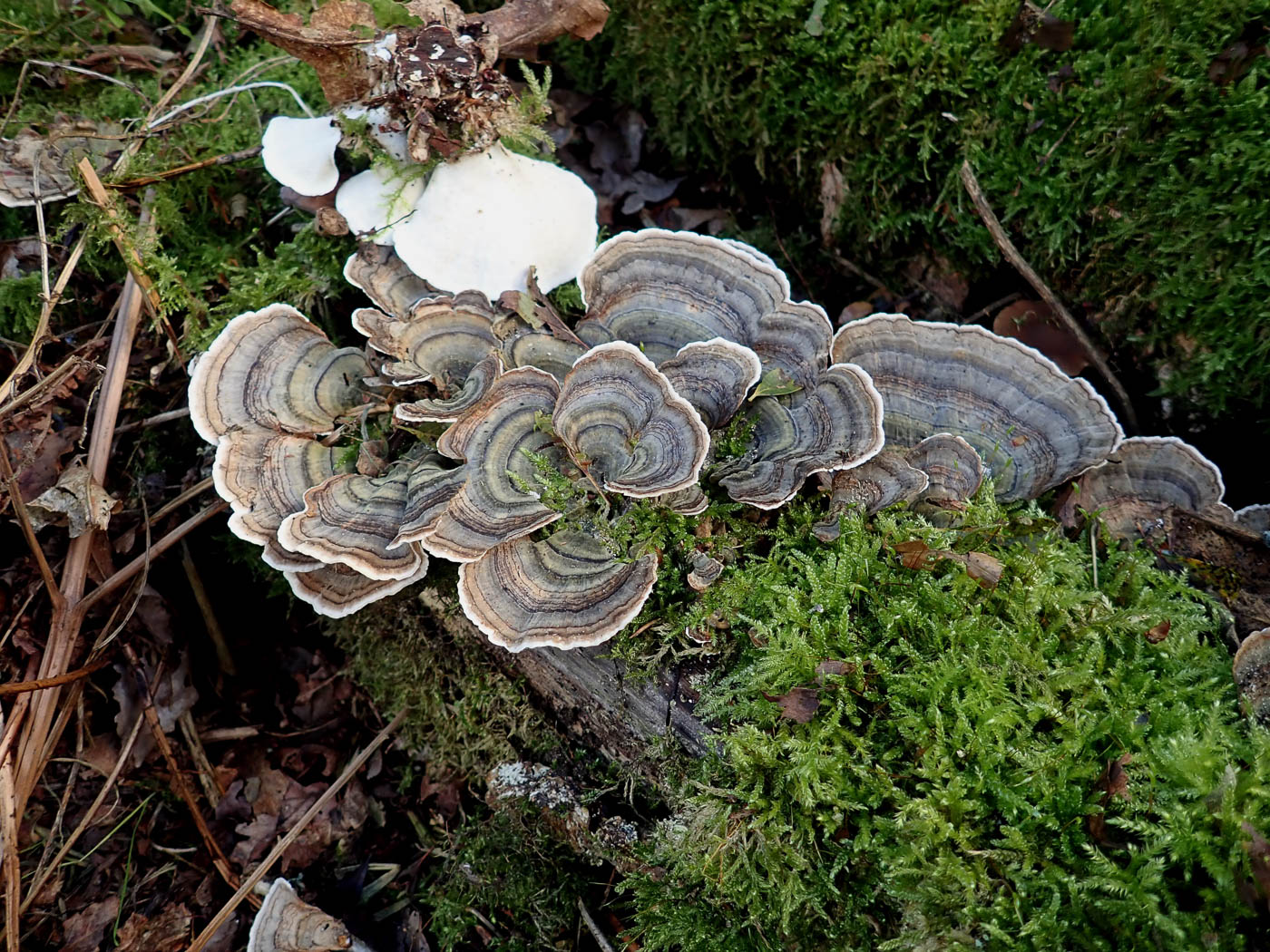 |
October 7th Trametes versicolor (Turkeytail)
Despite having plenty of entries of this very common bracket in Finds, Penny couldn't resist taking a snap of this beautifully marked collection she came across in Marlow Common on a deciduous log. The colour of its zones are indeed so varied that it can be confused with other things - that's her excuse anyway! See the Masterlist for more examples.
|
October 6th 2022
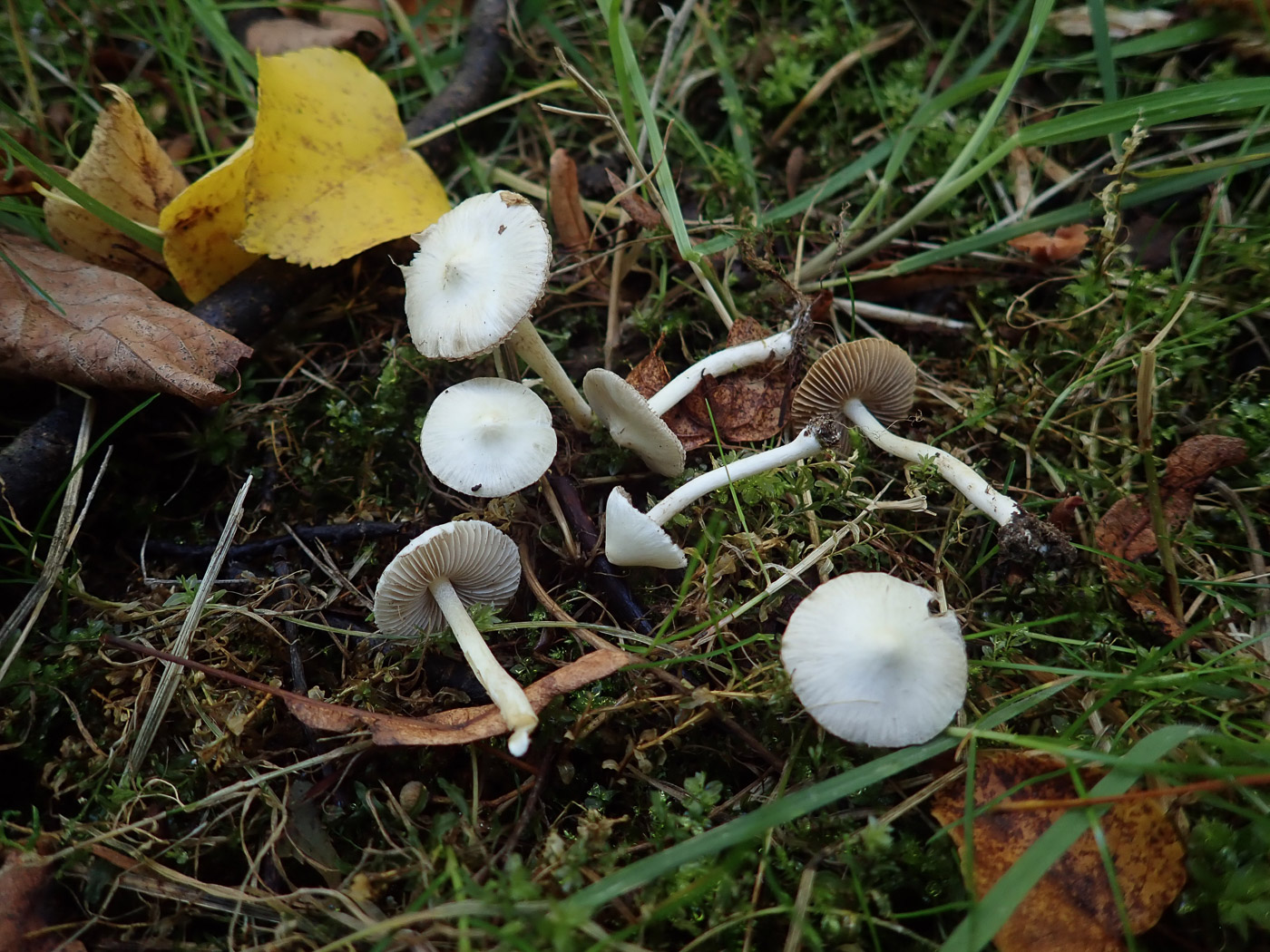 |
October 6th Inocybe miranda (a recently described Fibrecap) 
In soil in the Lime avenue at Turville Heath Penny collected this white Fibrecap which appears to all intents and purposes identical (both macro- and microscopically) to the very common I. geophylla (White Fibrecap). However, knowing of the existence of several white look-alike Fibrecap species recently described from Europe, she sent today's collection for sequencing which then confirmed it as not I. geophylla but I. miranda and as such new to the county with only one previous UK record. With the knowledge available so far about this species she defies anyone to recognise it as different from I. geophylla without recourse to sequencing!
|

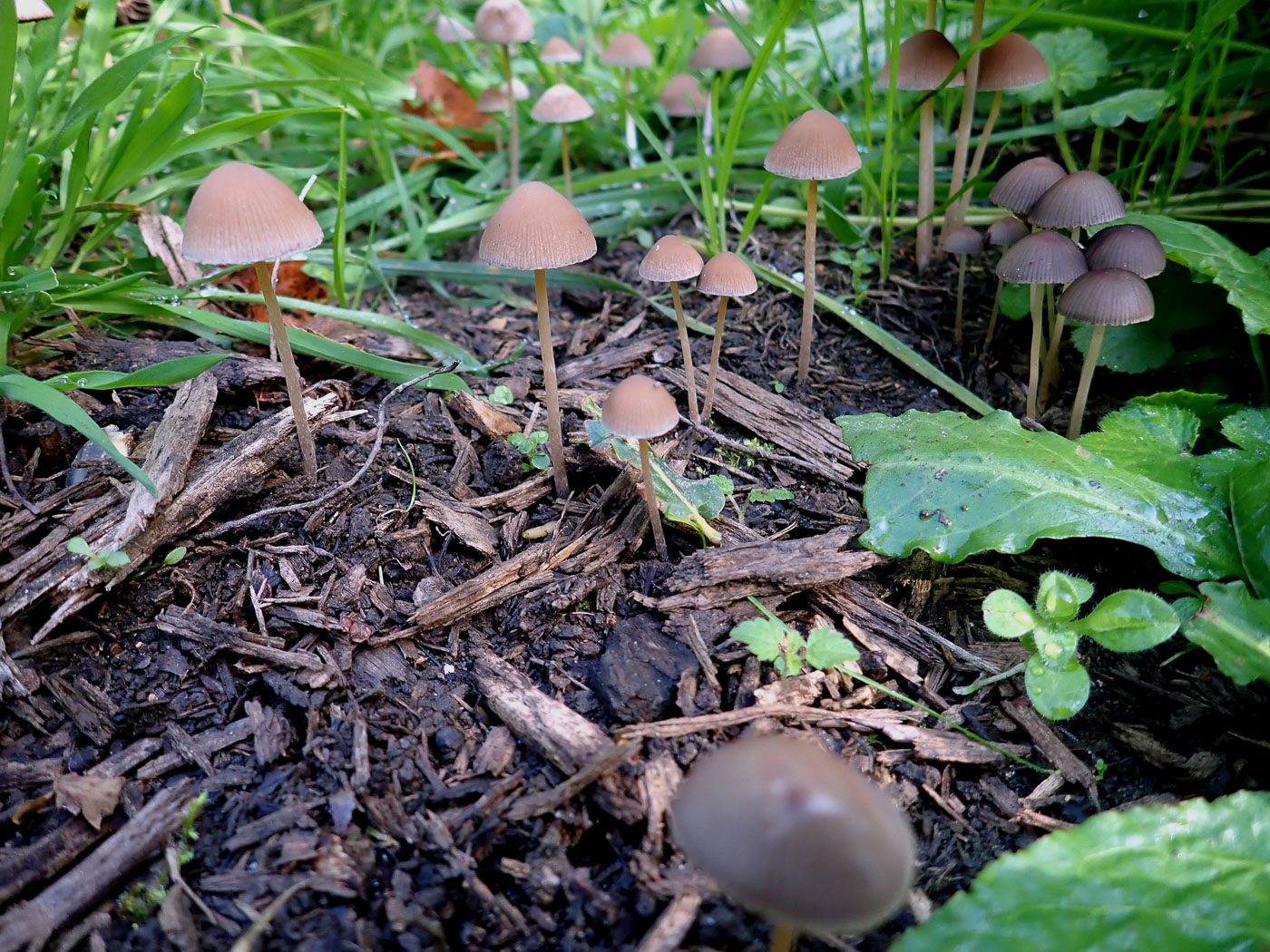
 |
October 6th Psathyrella corrugis (Red Edge Brittlestem) 
At Turville Heath in disturbed soil with woody debris a large troop of these Brittlestems was putting on an impressive display, enjoyed by Penny. The caps showed a good mix of pale brown (when young), darker grey (when old) and faded to almost pinkish white (where exposed to the sun) - all typical features of the species and many of the genus. The common name refers to its gill edge which can often (though not always) be red in contrast to the dark spore-covered gill when mature. The species is common though this appears to be new for Finds.
|
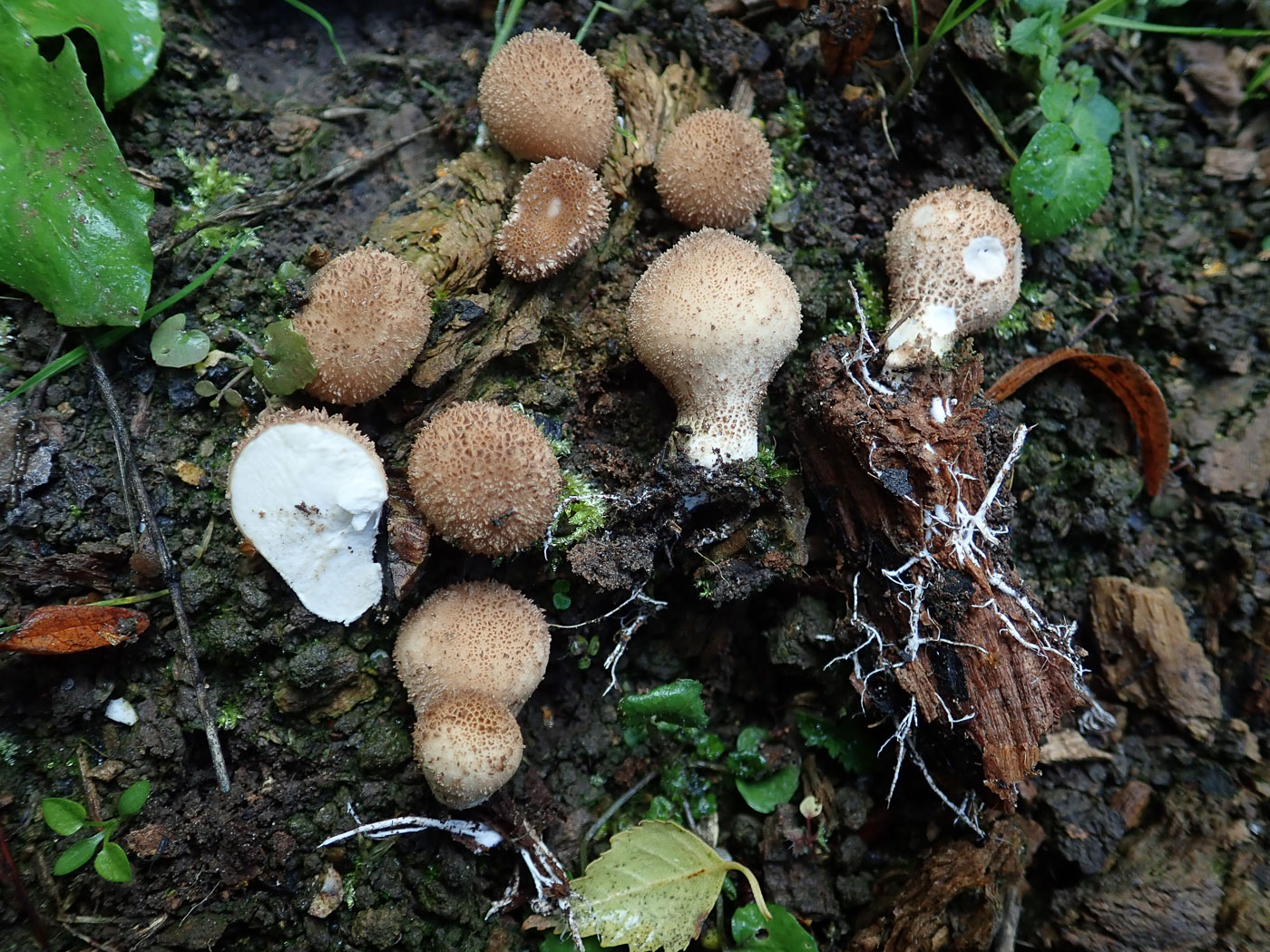
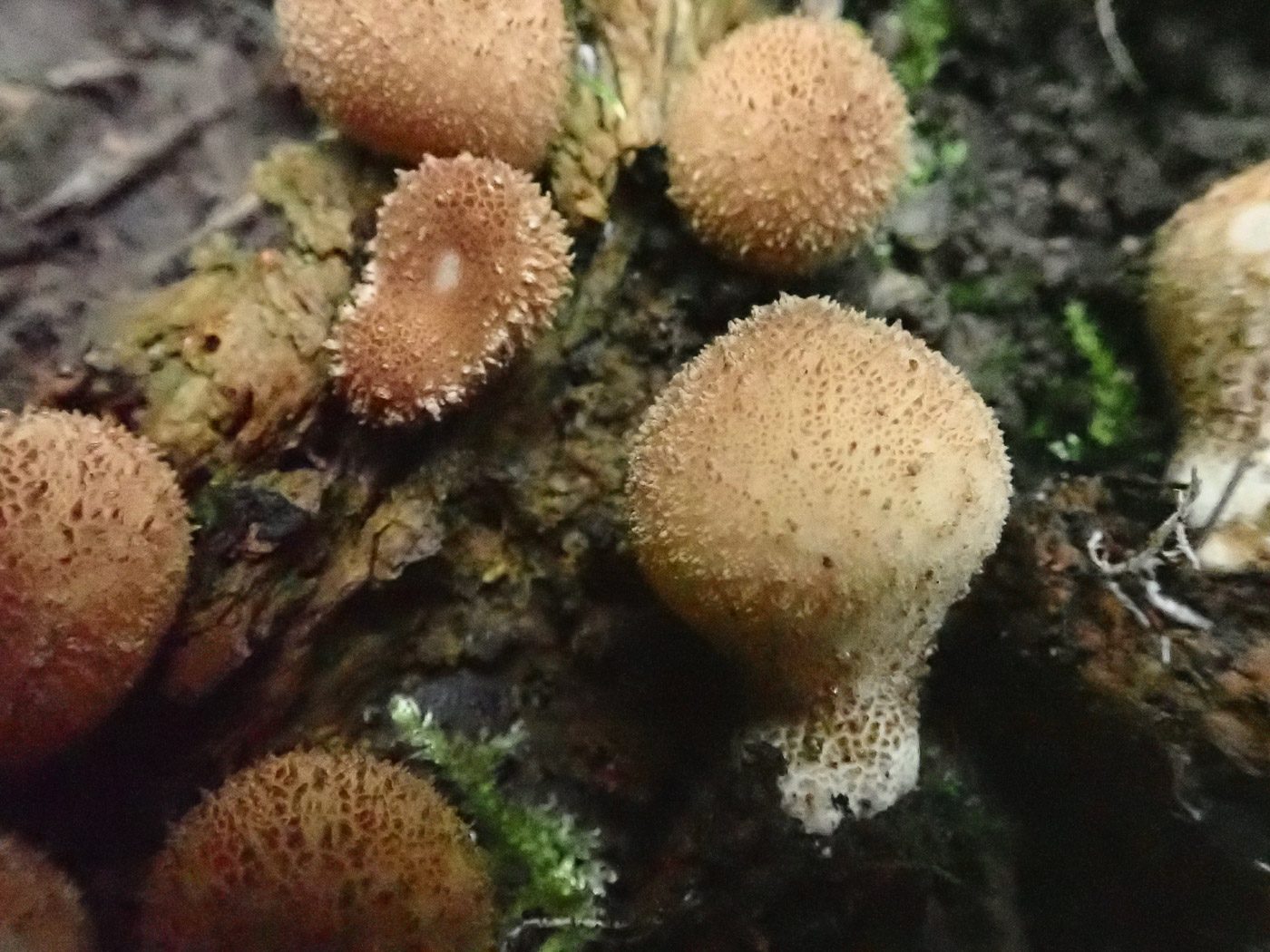 |
October 6th Lycoperdon nigrescens (Dusky Puffball)
Amongst nettles in a patch of disturbed soil and woody remains at Turville Heath Penny spotted these immature Puffballs. The genus has been notable by its absence so far this autumn and the two more common woodland species (L. pyriforme and L. perlatum) still seem reluctant to make an appearance. This species was clearly too covered in warts to be the first, also the warts did not rub off as they would in the second, hence its determination. No spore check was possible as they were pure white inside when cut open - too immature to have any. Note the white strands of mycelium visible on several fruitbodies here. We have one previous entry on Finds: 2020 October 11th.
|
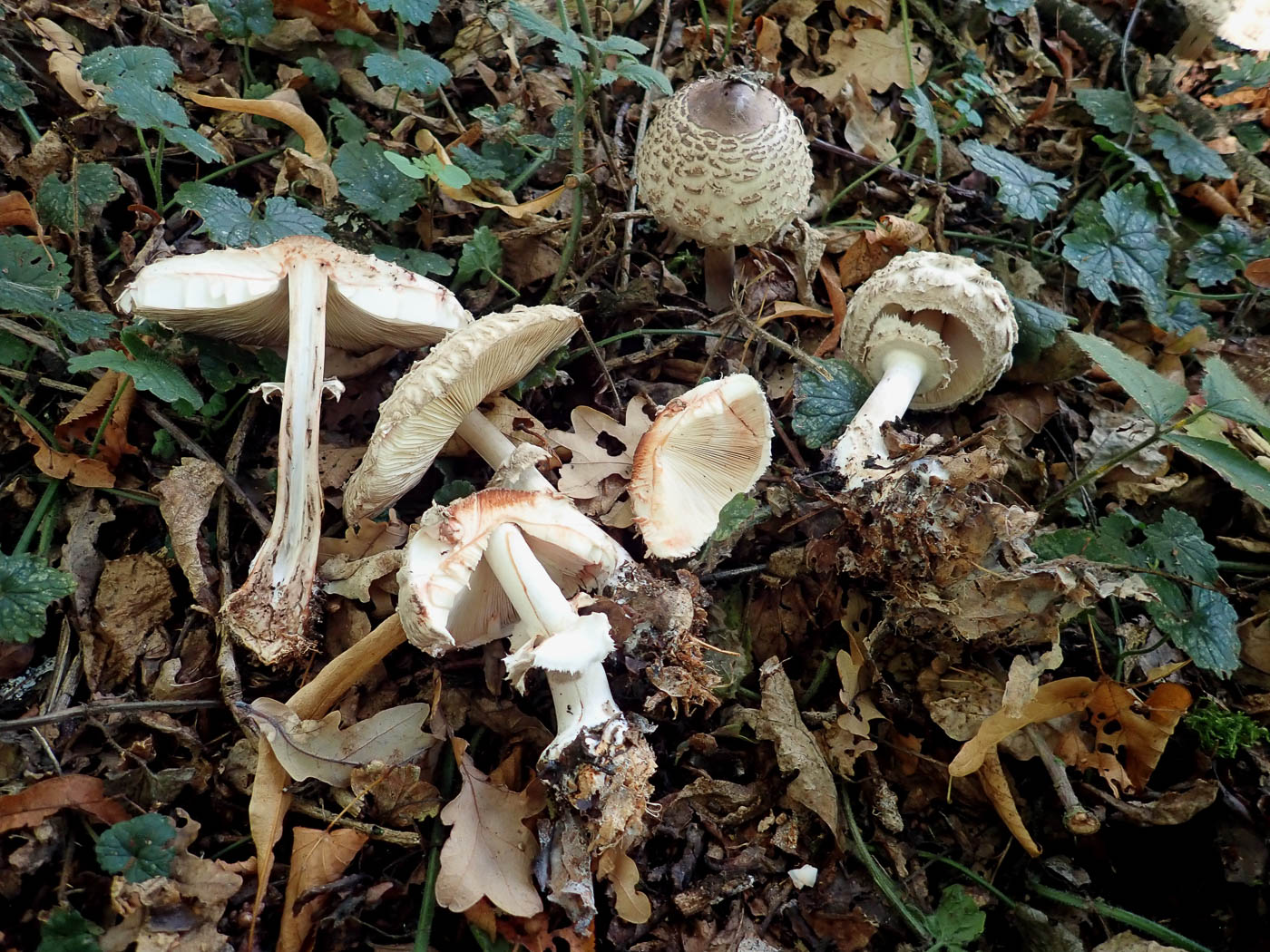 |
October 6th Chlorophyllum rhacodes (Shaggy Parasol)
Though we have quite a few Finds entries for this species, the collection under the Limes at Turville Heath found by Penny was in good condition, showed different staged of its development, and the diagnostic orange staining when exposing the flesh to the air was very distinct. Hence its inclusion here.
|
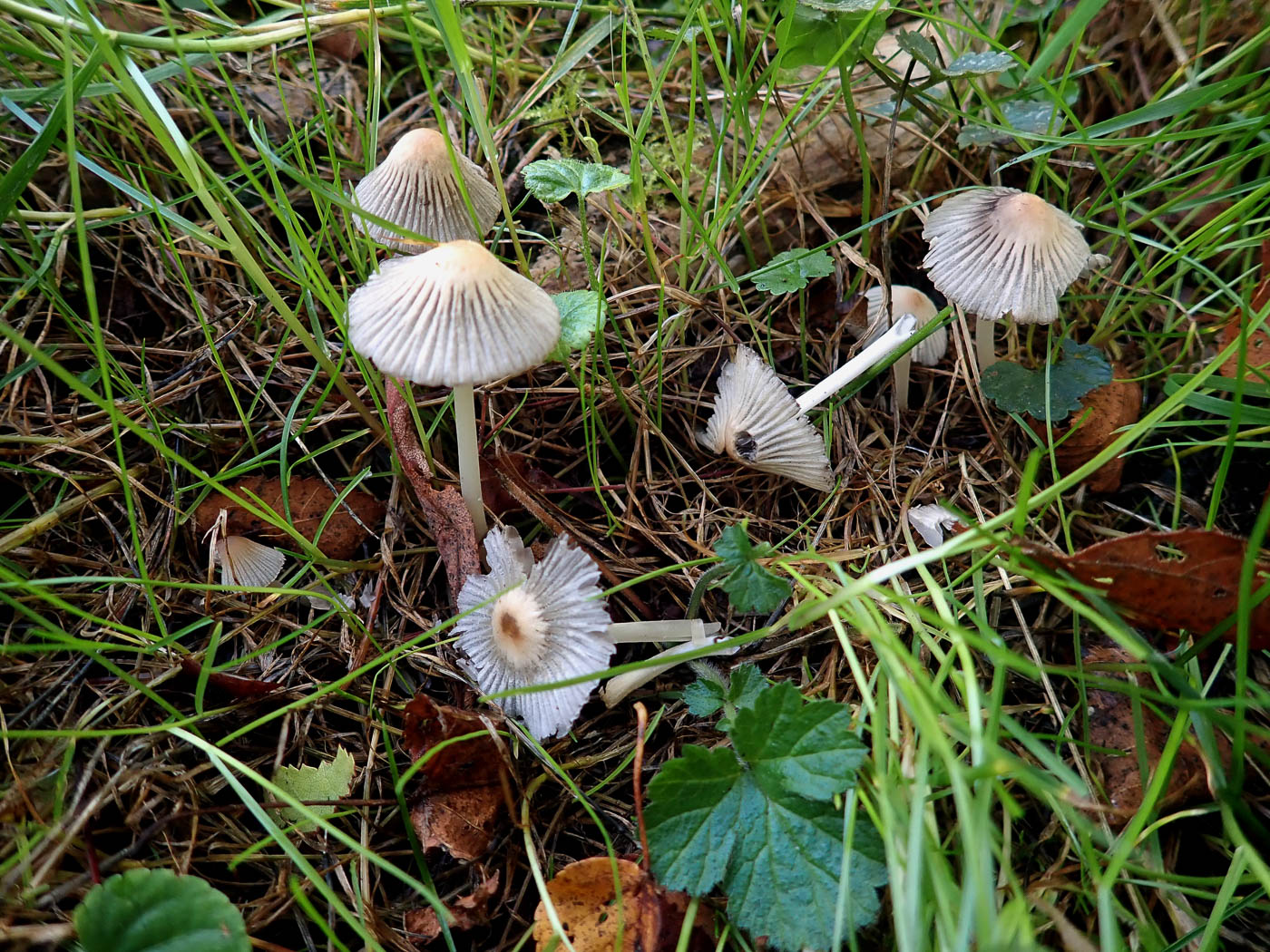
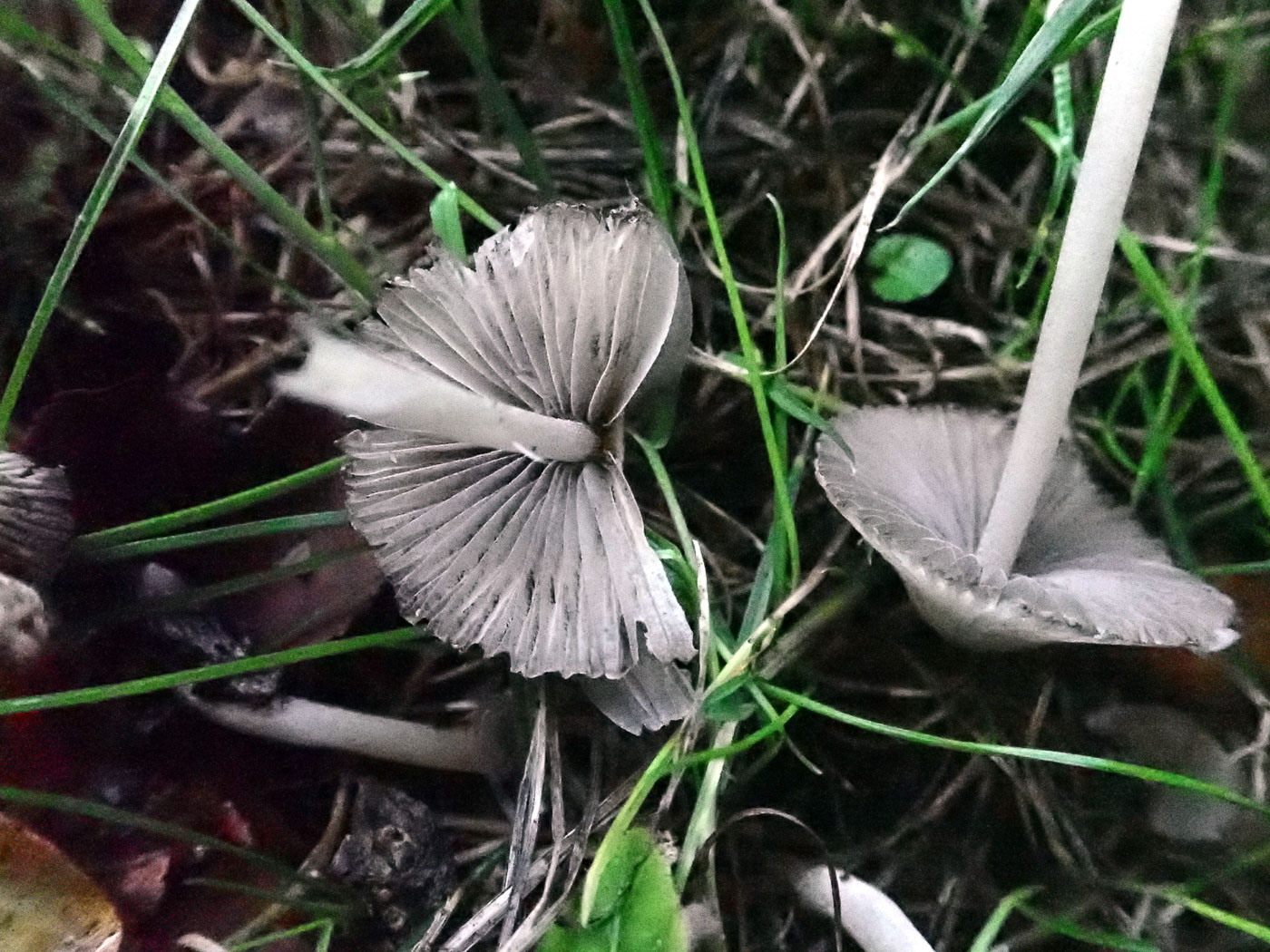 |
October 6th Coprinellus impatiens (an Inkcap with no common name) 
In grassy litter under the Limes at Turville Heath Penny first spotted just a couple of these and then a whole load more nearby. She suspected it was this species, recalling Derek likening the caps to piano keys, but made a careful check at home as there are several other quite similar species. It is quite common, and we have one previous image on Finds: 2020 November 6th.
|
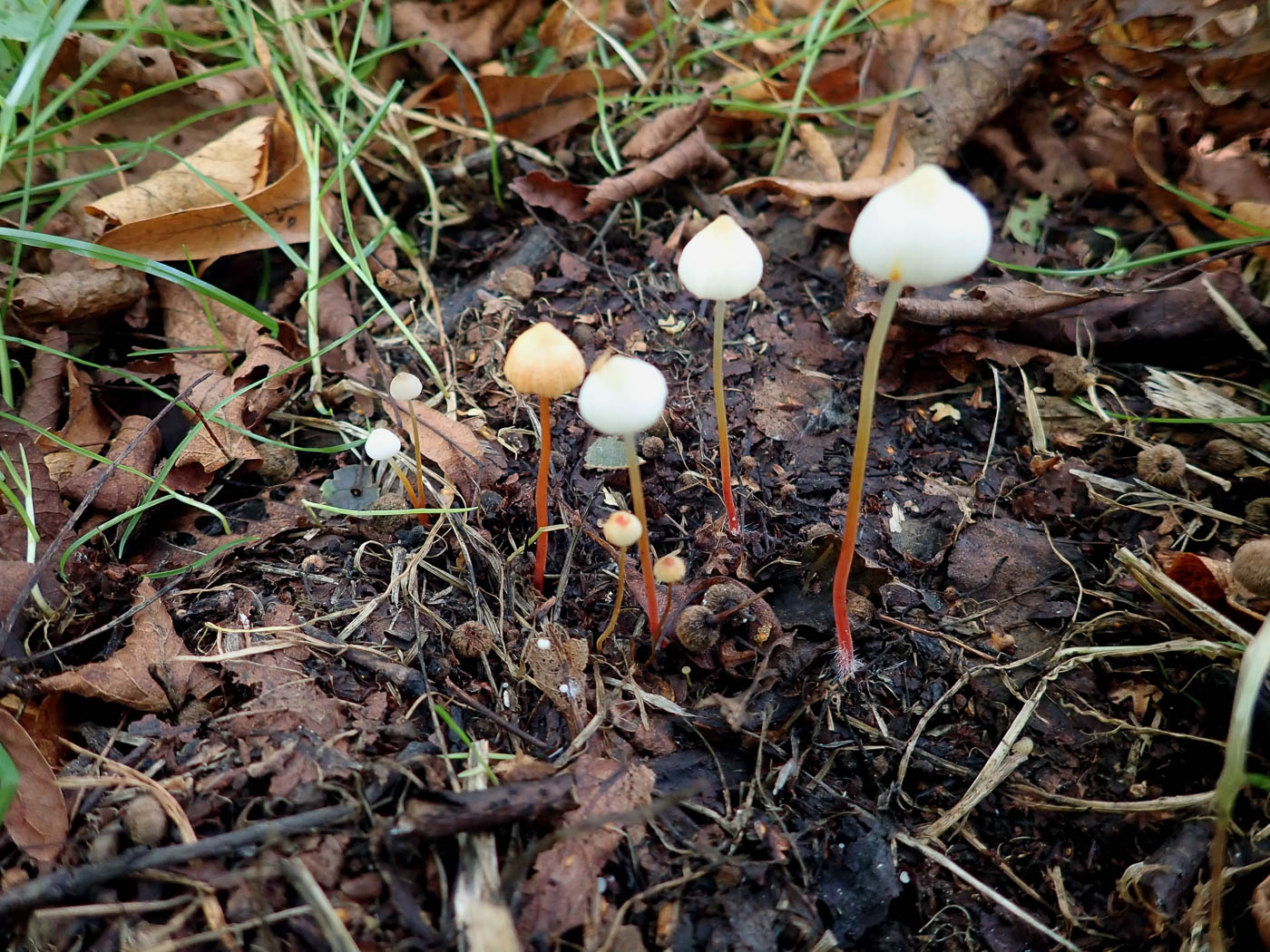
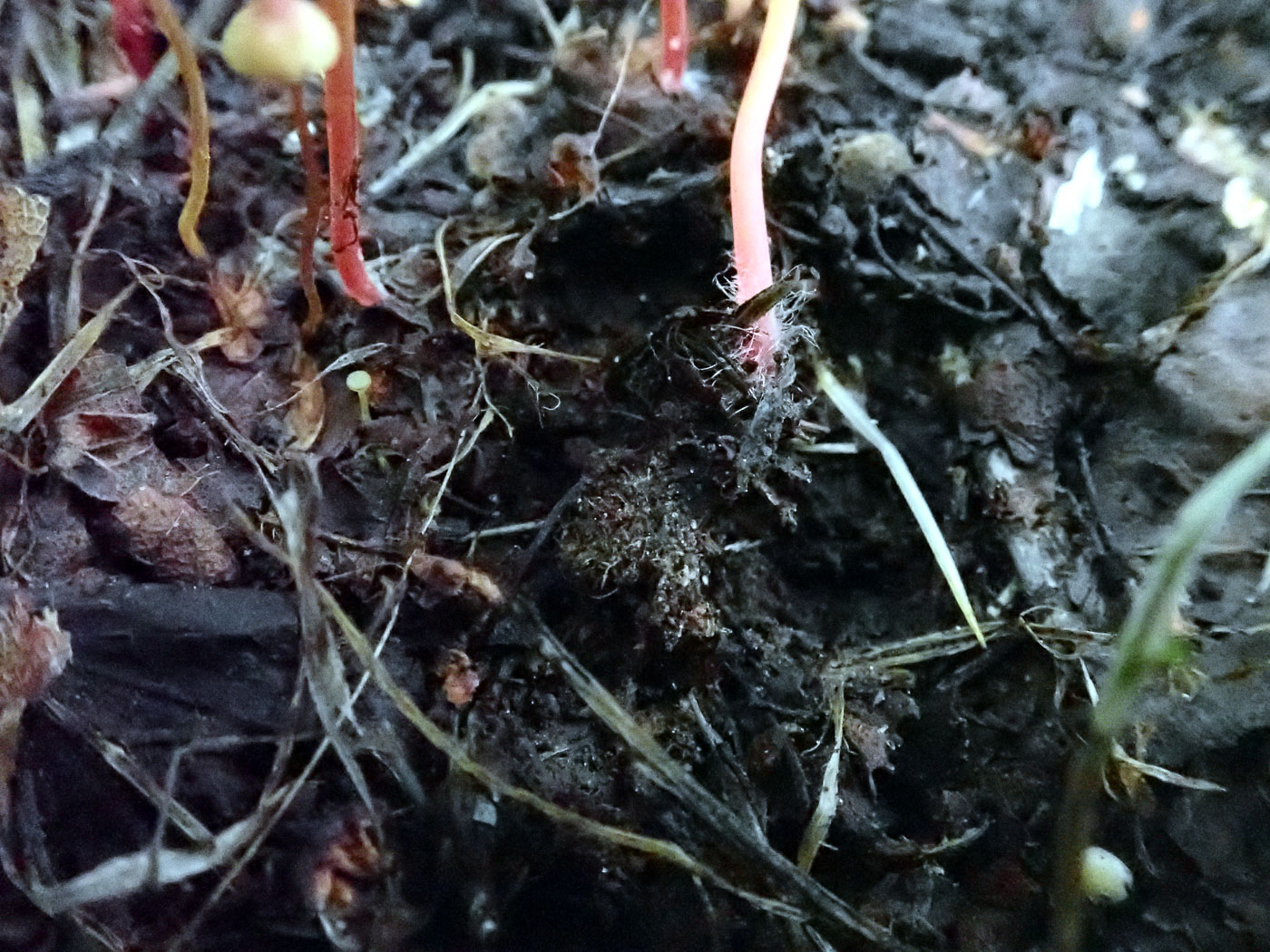 |
October 6th Mycena crocata (Saffrondrop Bonnet)
This species - common in the Chilterns - was nevertheless a surprise to Penny under the Limes at Turville Heath today. Known to fruit abundantly on fallen Beech (and by some considered to occur only on that substrate), here there are no Beeches anywhere near, furthermore it was not on fallen wood or even on submerged roots but on soil / litter under Lime - Penny made a careful examination with her knife! The caps were all either pure white or saffron tinted, not some shade of brown as one would expect, hence this collection is being dried for sequencing. See also on Finds 2020 October 7th and 2021 October 6th.
|
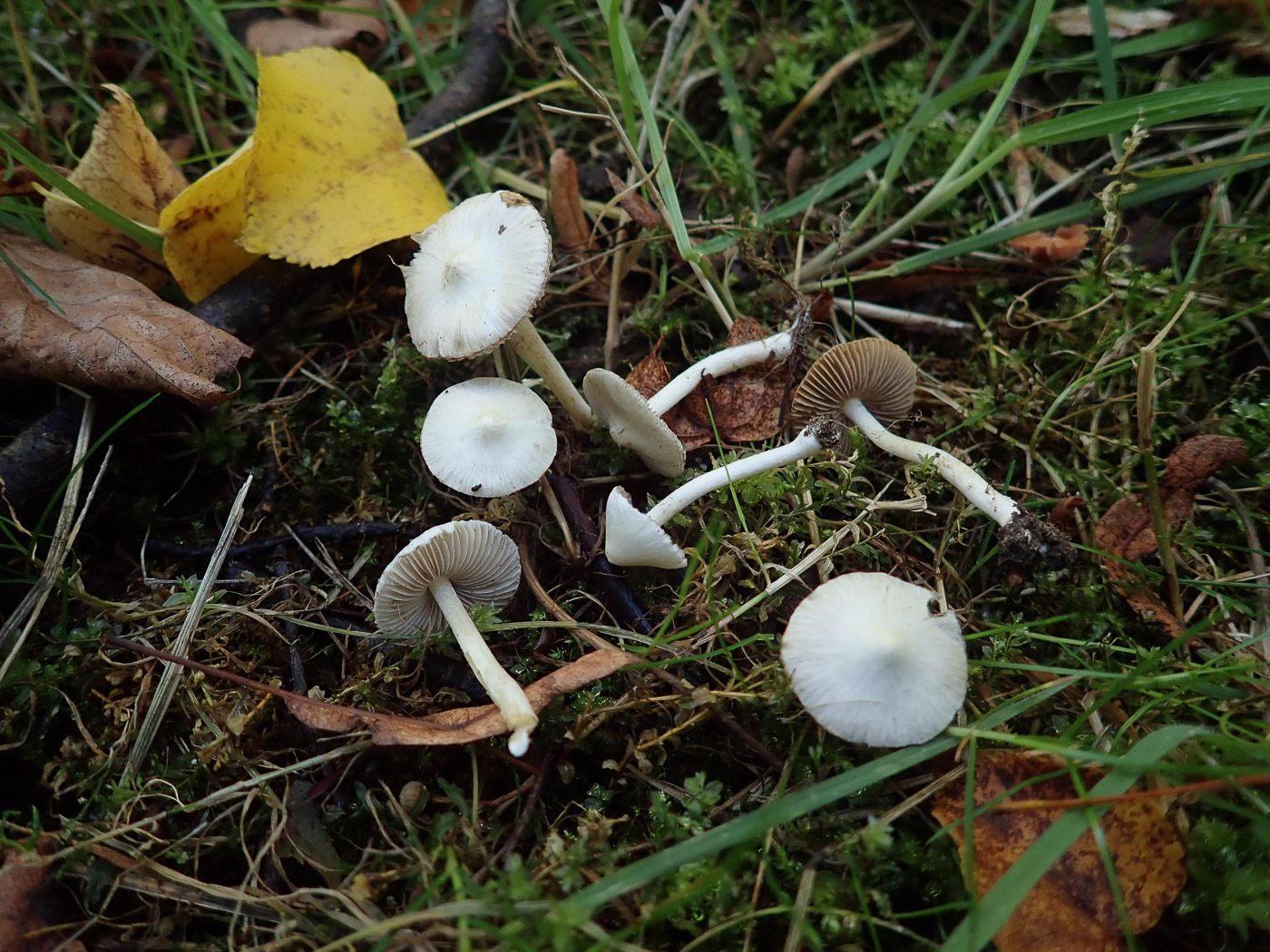 |
October 6th Inocybe geophylla (White Fibrecap) 
In the Lime avenue at Turville Heath the list of Fibrecap species is growing - every time Penny visits something different turns up but this common white species is often present in good numbers. It associates with a many different trees, including conifers, but both this and the closely related I. lilacina (Lilac Fibrecap) seem to fruit abundantly under Lime. See also on Finds 2020 October 1st and 2021 October 5th.
|
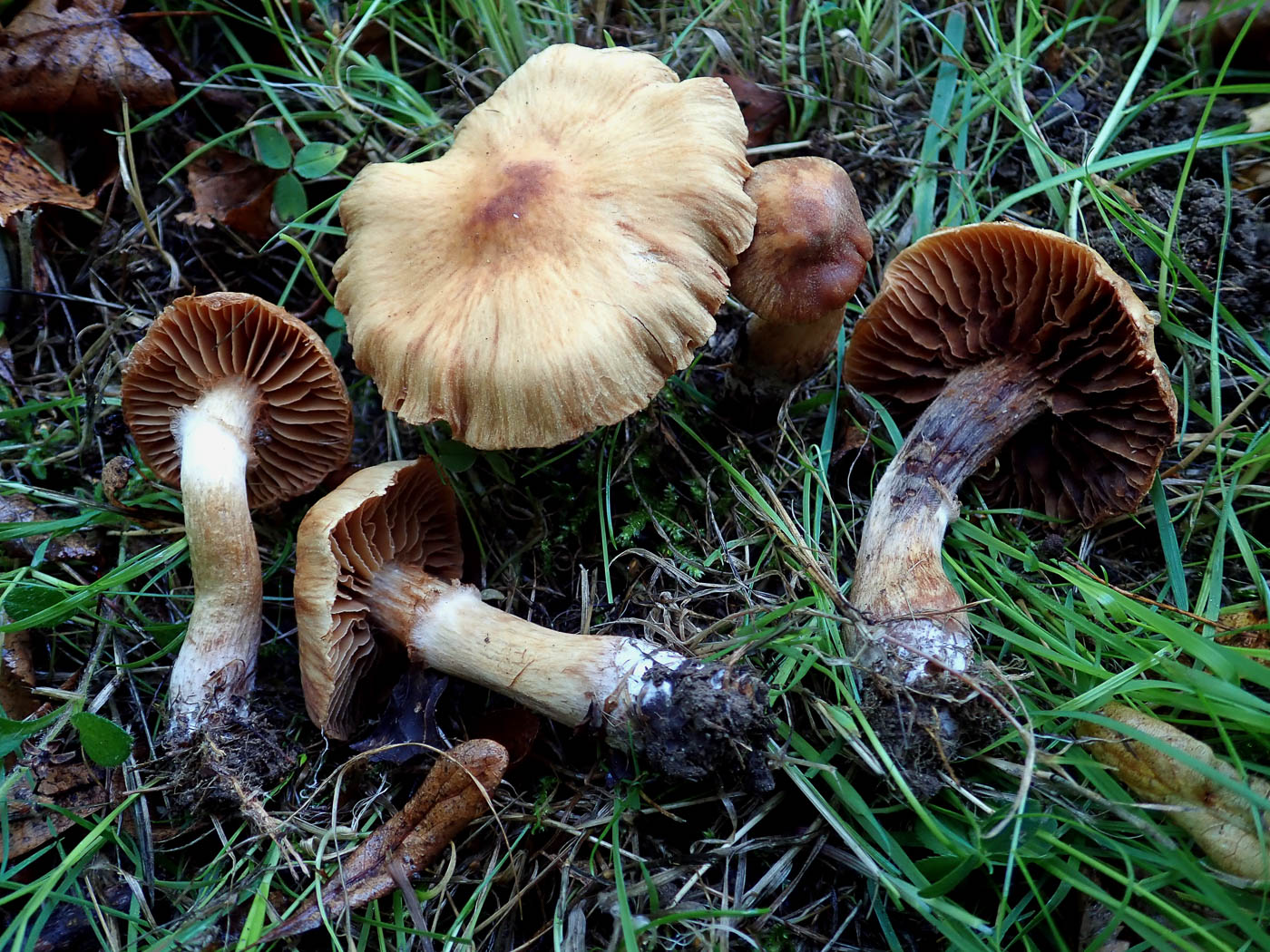
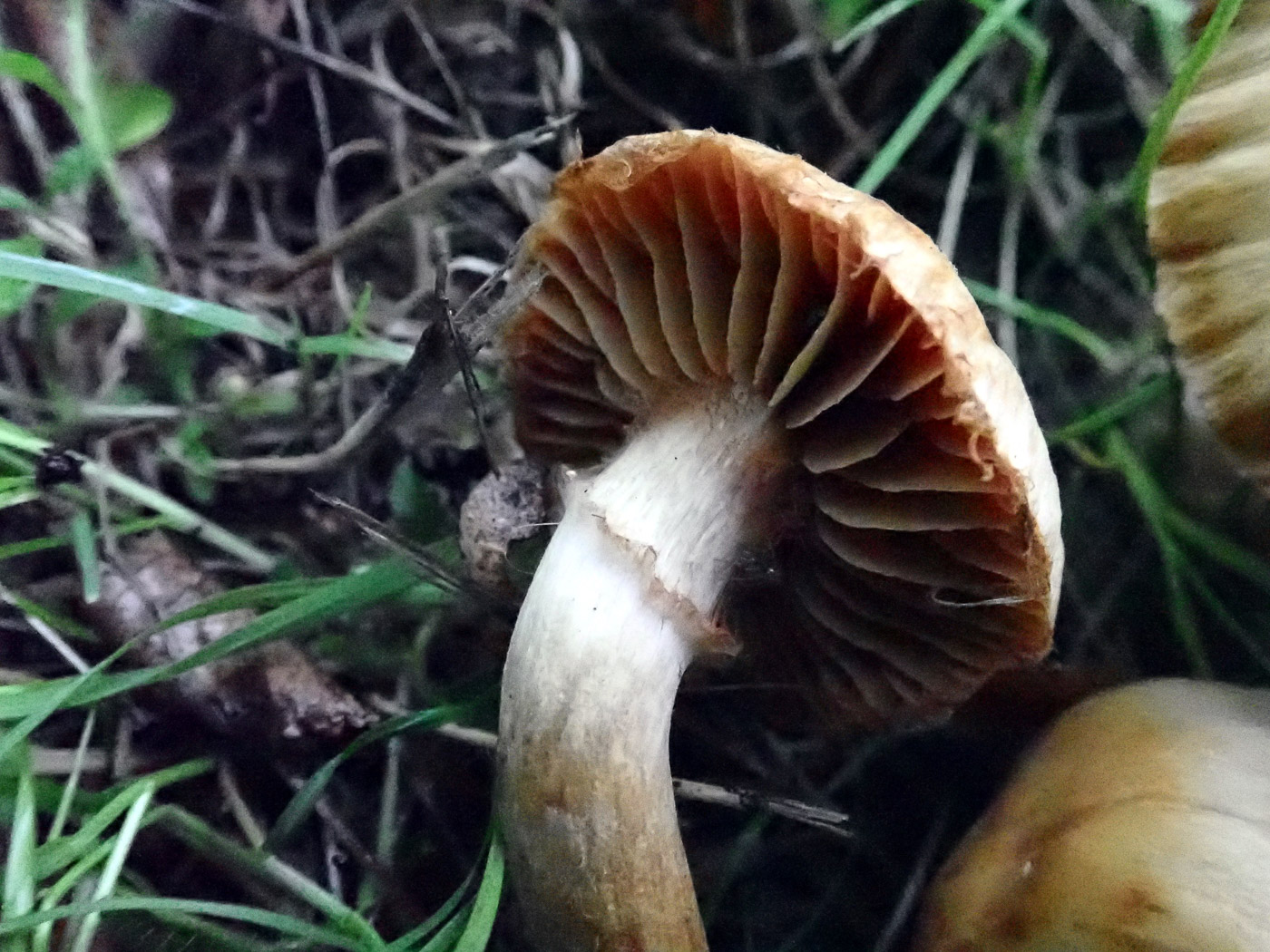 |
October 6th Cortinarius hinnuleus (Earthy Webcap) 
Under Lime at Turville Heath Penny was pleased to find a few of these appearing where she's found them for the last 2 years. The species has notably widely spaced gills, a dry rather wrinkled umbonate tawny brown cap and a dry stem with a distinct whitish cortina. It also has a rather unpleasant earthy pungent smell (somewhat similar to several white-capped species of Tricholoma) which develops strongly when a collection is placed in a pot. Though considered uncommon, we have two previous images on Finds: 2020 September 30th and 2021 October 12th.
|
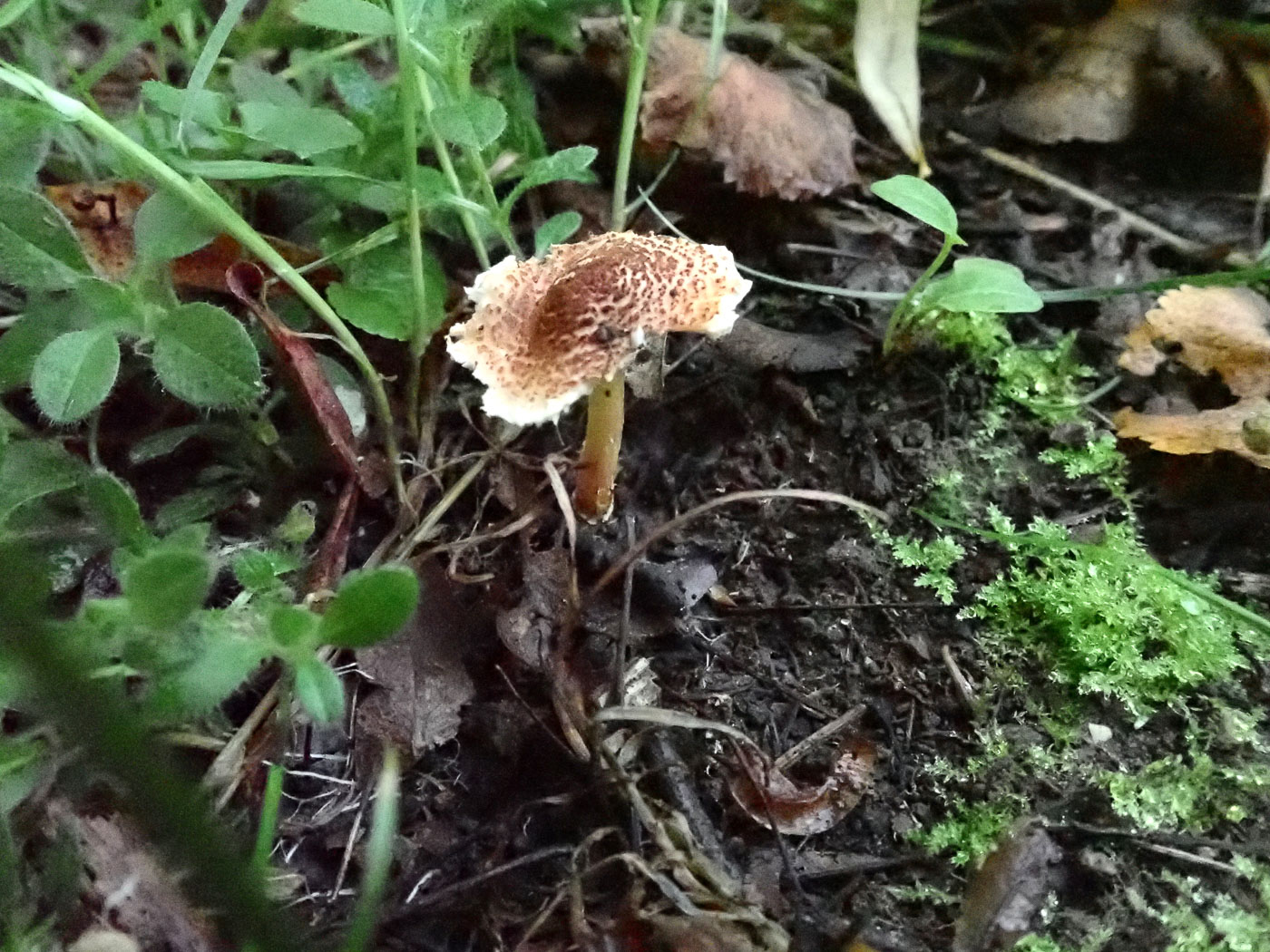
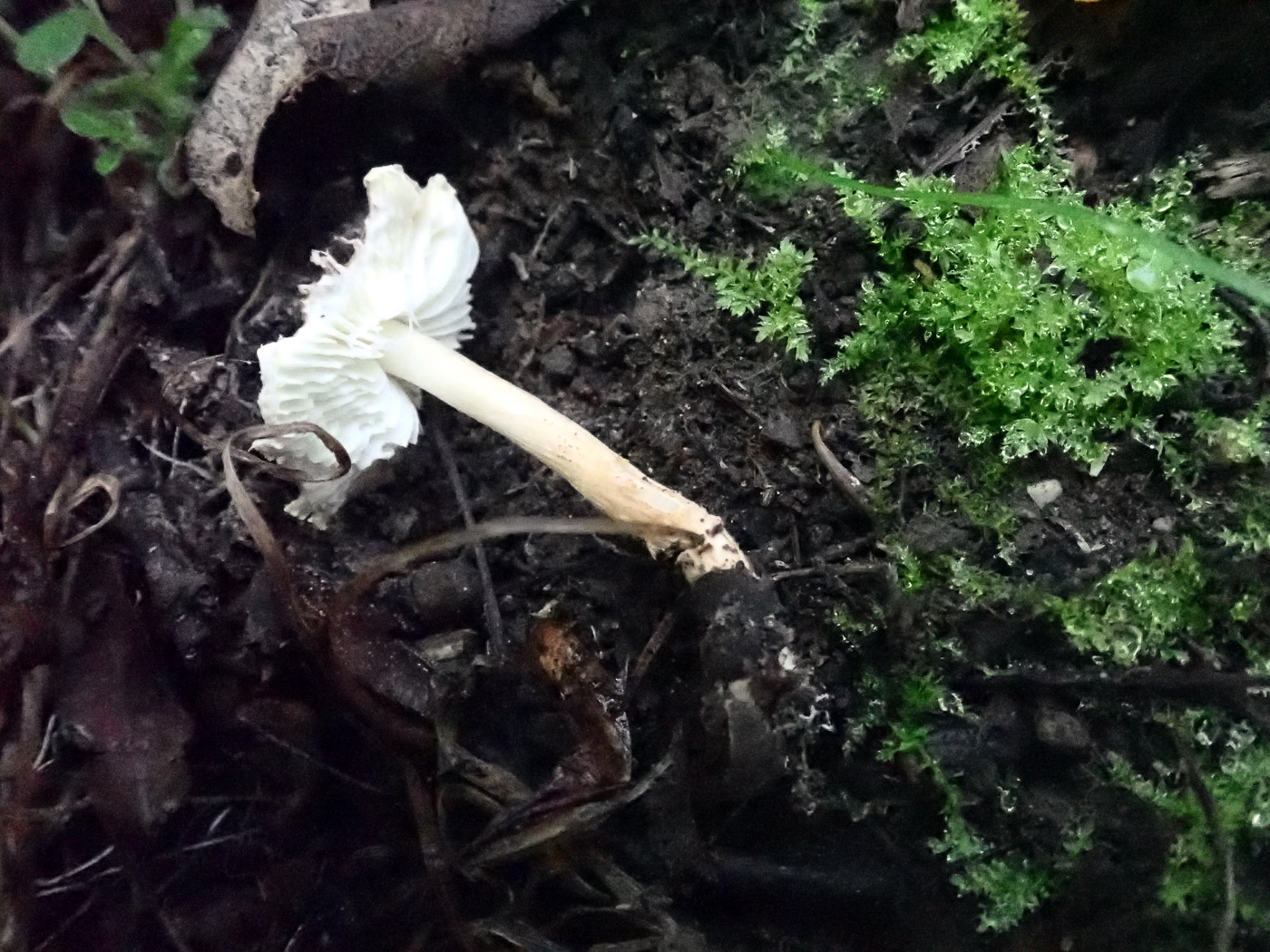 |
October 6th Lepiota castanea (Chestnut Dapperling) 
Under the Limes at Turville Heath Penny spotted just one slightly damaged cap belonging to this species amongst the thick leaf litter, but it was instantly recognisable from its small size and rich chestnut scaly cap. The white 'free' gills of the genus help to confirm the ID, as does the lack of unpleasant smell associated with the much more common and paler capped L. cristata (Stinking Dapperling). Surprisingly the species seems to be new for Finds.
|
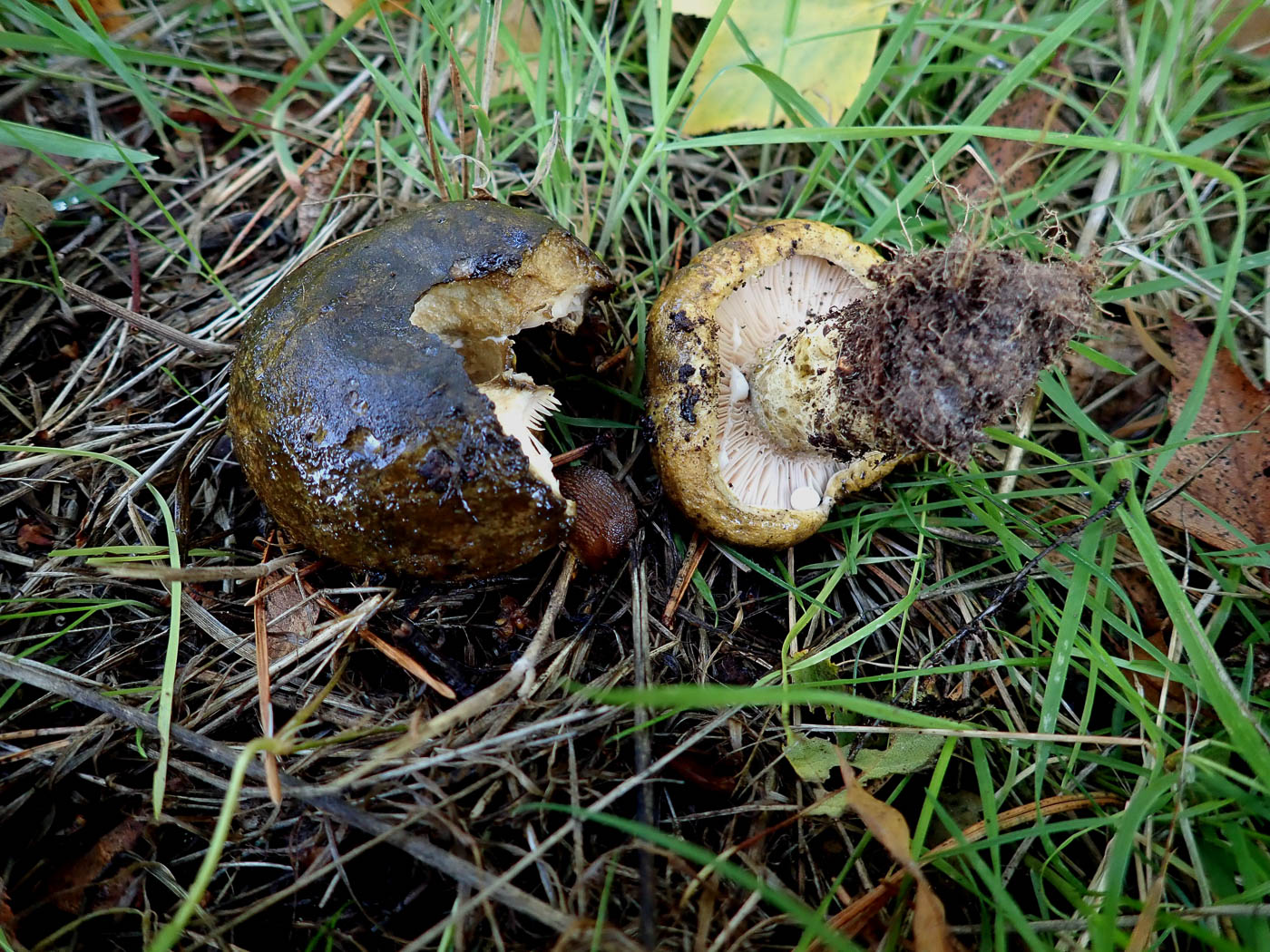
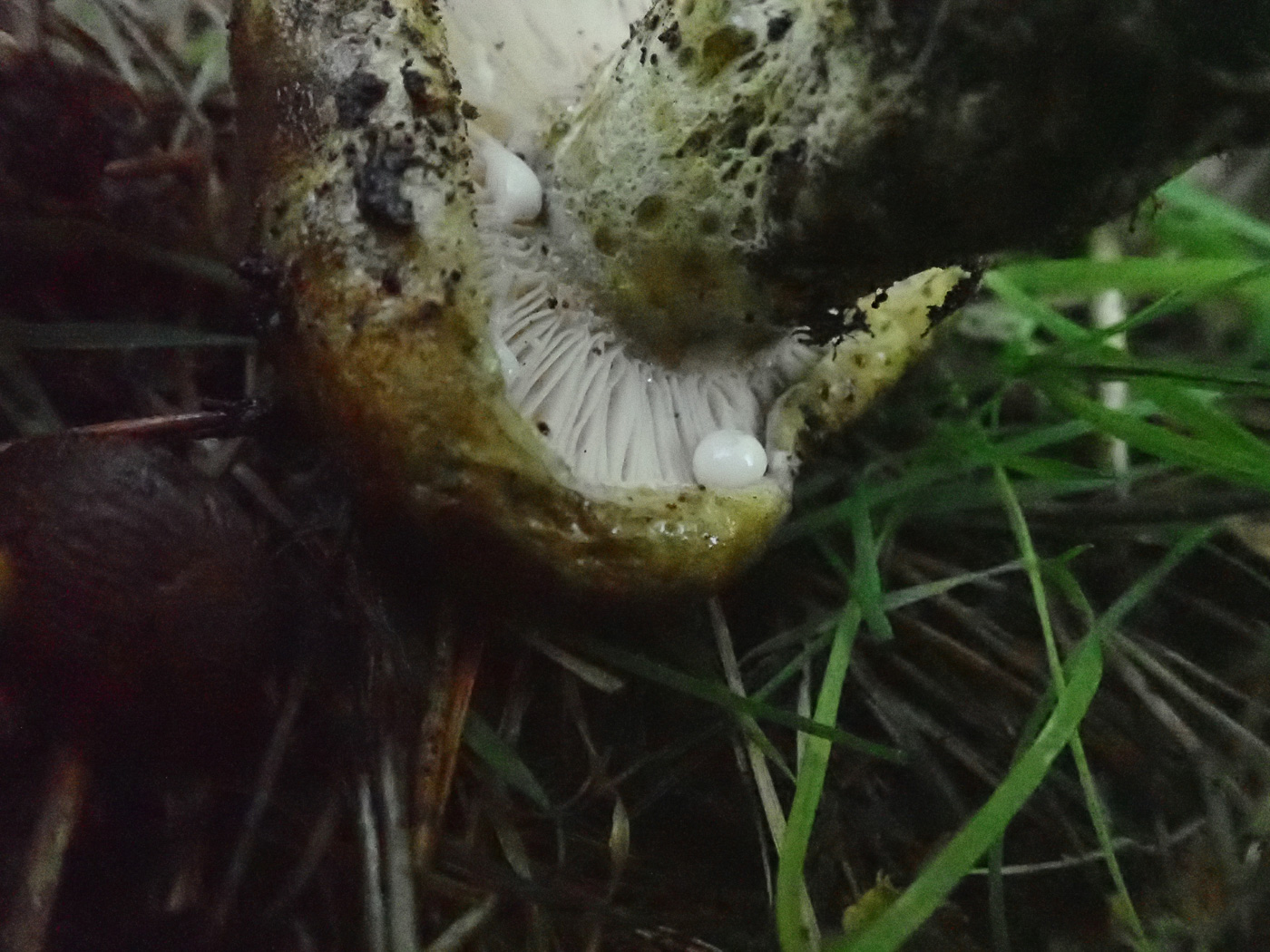 |
October 6th Lactarius turpis (Ugly Milkcap)
Under Birch at Turville Heath Penny found just two young examples of this species, in some years extremely common. The dark dirty greenish brown inrolled cap (when young as here) with very short stem are good characters, also the copious milk which drips from damaged gills. It is one of our largest milkcaps, getting to 10 cms across or more. See also in Finds 2020 September 20th.
|
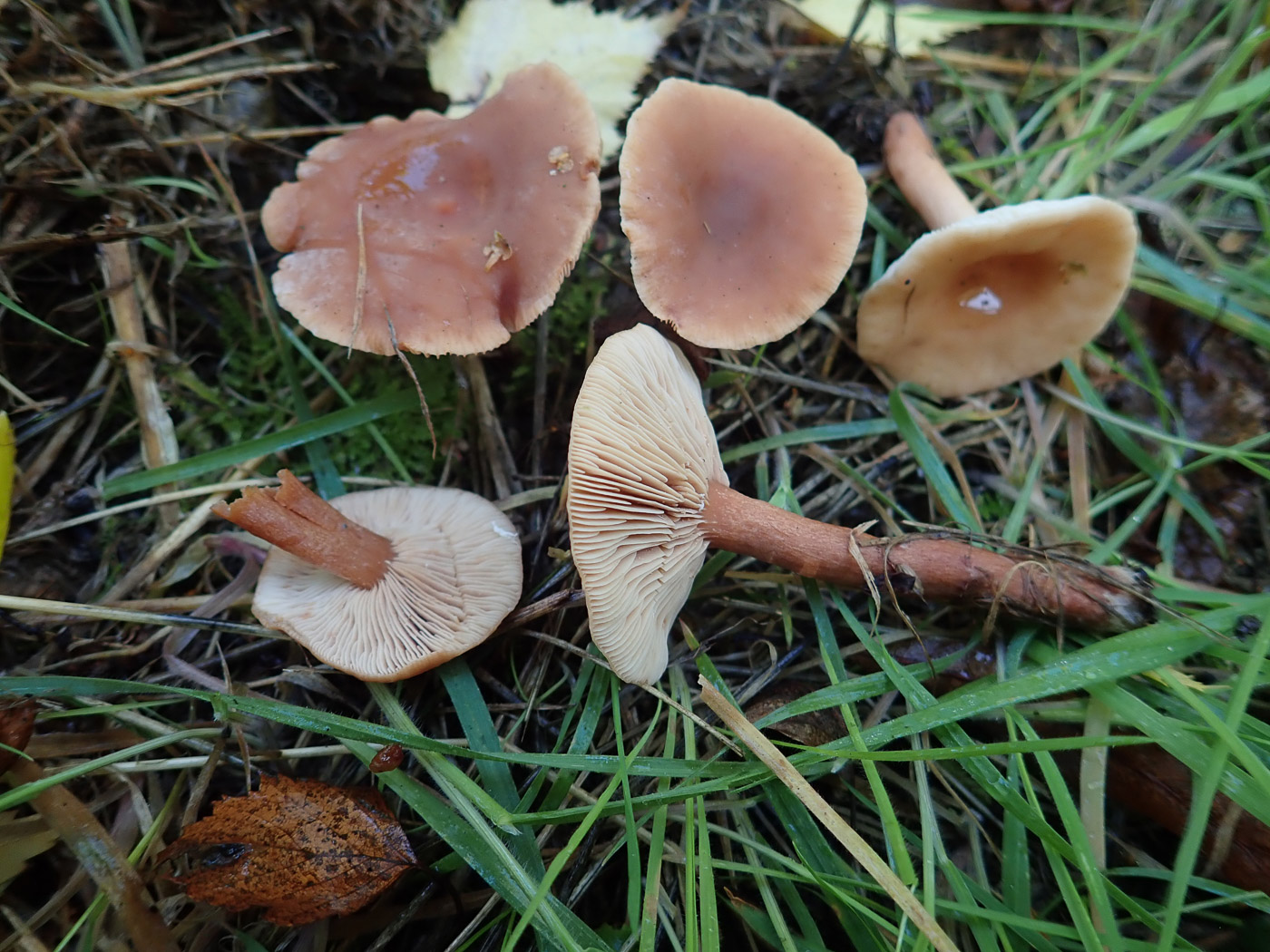
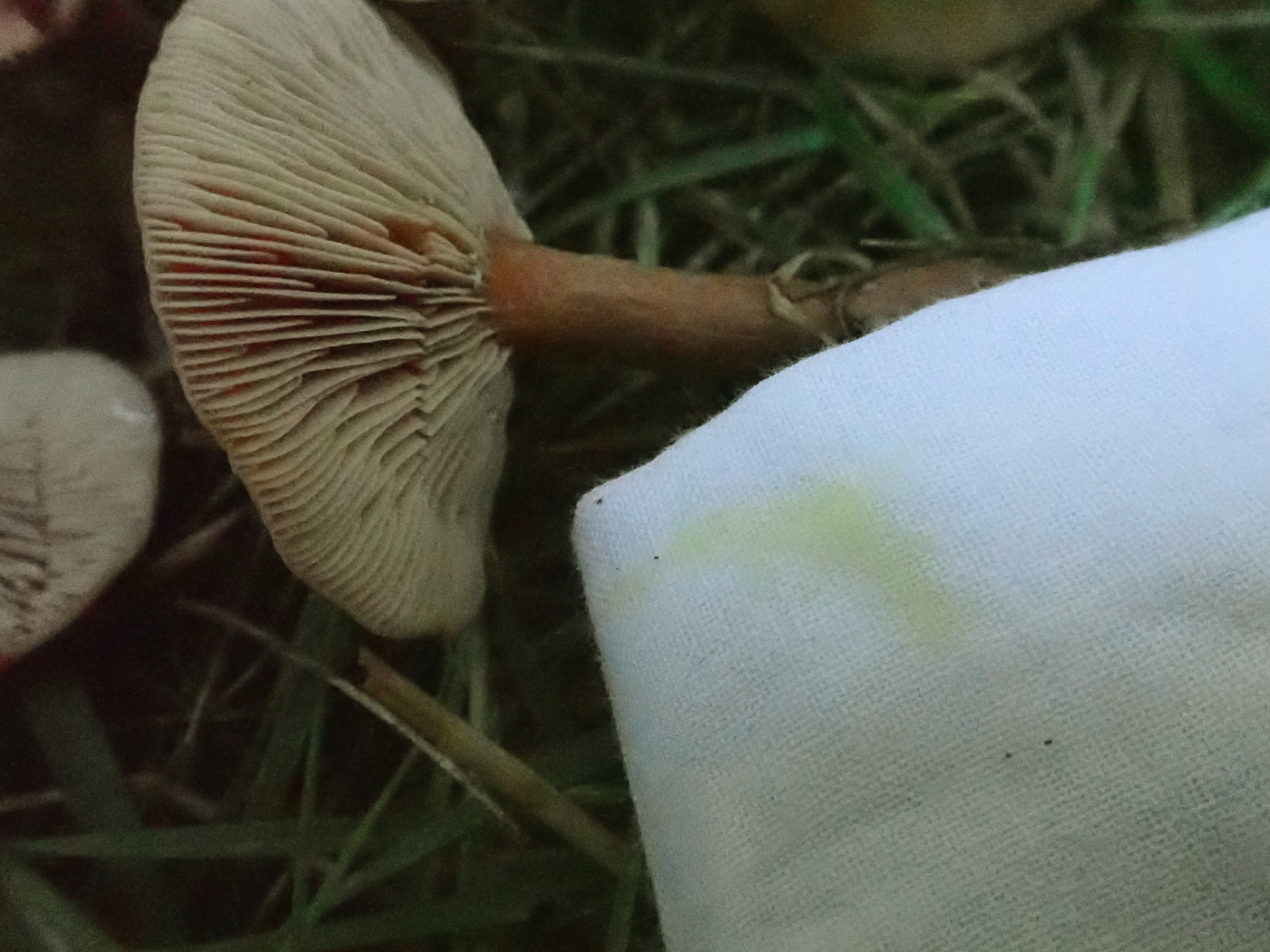 |
October 6th Lactarius tabidus (Birch Milkcap)
At Turville Heath under Birch Penny found quite a few of these very common Milkcaps, though the species is easy to confuse with L. subdulcis (Mild Milkcap) - another very common rather soft fleshed rusty brown Milkcap which, however, favours Beech rather than Birch. The two are not exclusively host specific, though, furthermore when a mix of trees are nearby one can't be sure what is associating with which! The hanky test is a useful way to split them: milk from the damaged gills turning yellow (as seen here) indicates L. tabidus; milk showing no change indicates L. subdulcis. If no milk is forthcoming (as can happen), find another specimen and try again!. See also Finds 2020 November 5th and 2021 November 9th.
|
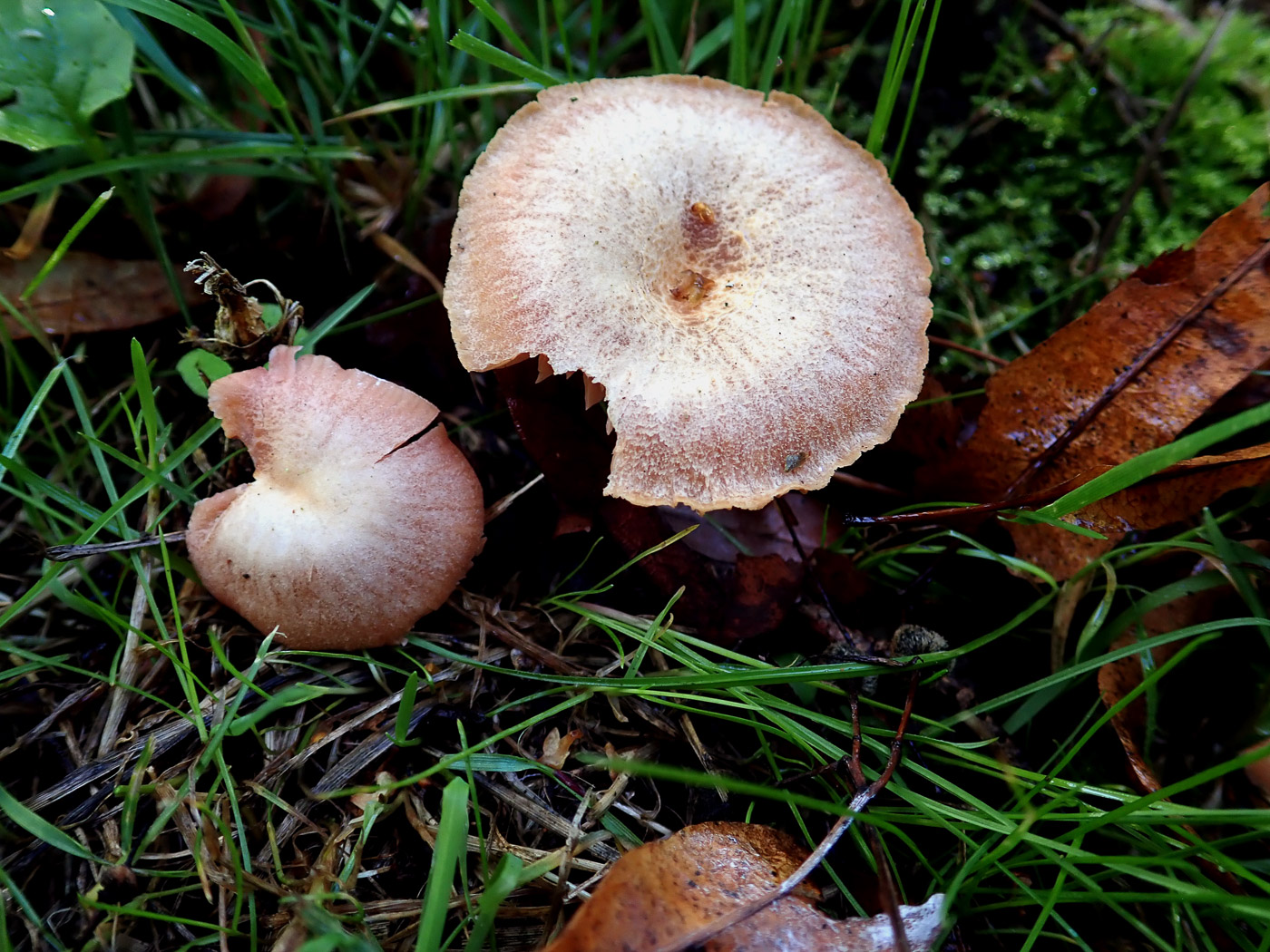
 |
October 6th Laccaria laccata (Deceiver)
At Turville Heath in a grassy area Penny saw this normally very common species but one which often lives up to its common name. Here the caps were already losing their rusty tan colour and fading to pinkish off-white, but if the ID is in doubt the widely spaced pink gills always help. See the Finds Masterlist for a few more examples.
|
October 5th 2022
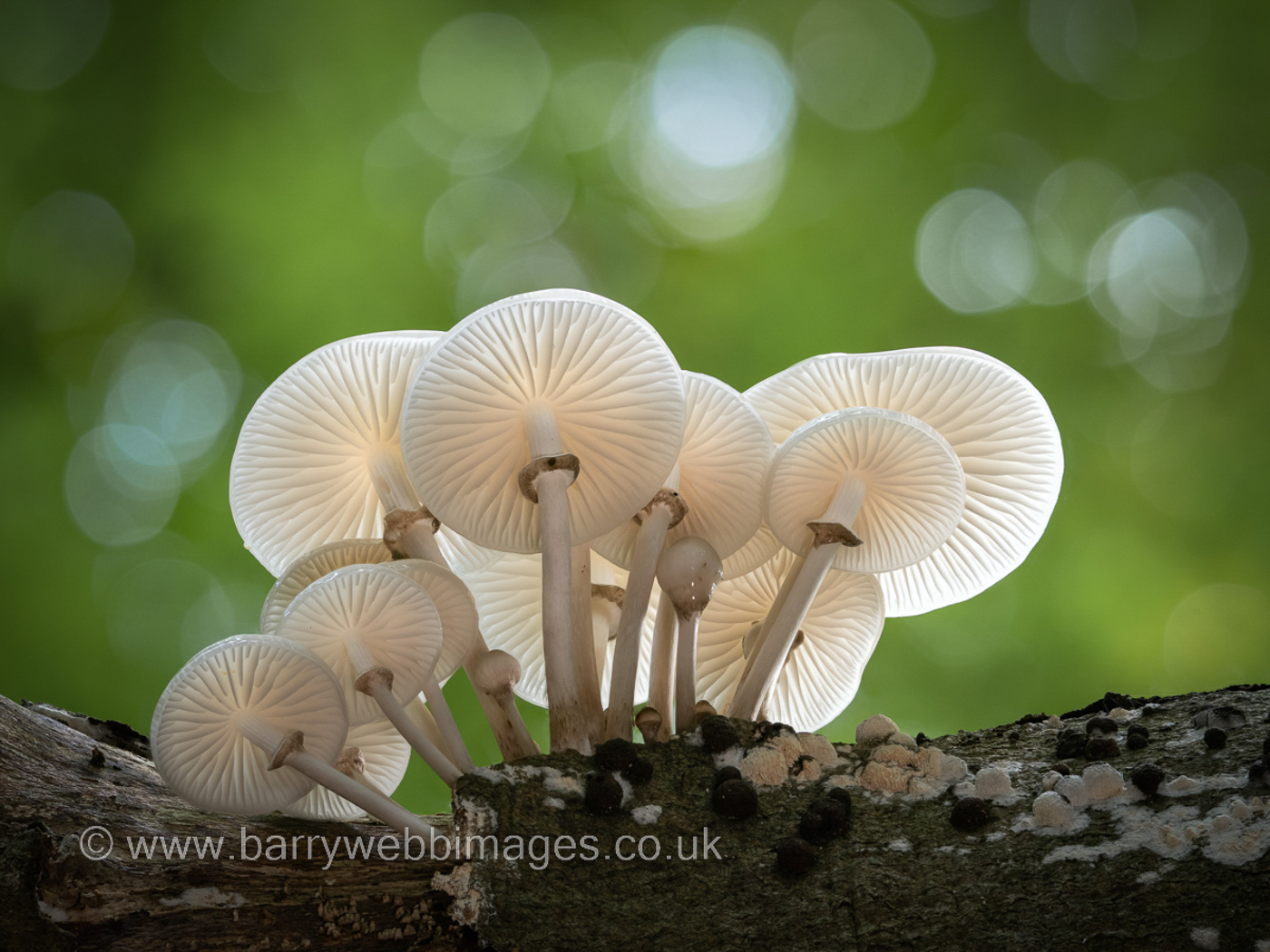 |
October 5th Mucidula mucida (Porcelain Fungus)
At Burnham Beeches Barry Webb was spoilt for choice over which example of this beautiful and very slimy species to photograph. It only occurs on Beech - both standing and fallen - and, as can clearly be seen here, with the light behind it the mature caps are virtually translucent, hence its common name. Note also the greyish ring on the stem and the two tiny immature unopened specimens lurking underneath the cluster. What a stunning photograph! We have other images on Finds but none to compare with this one.
|
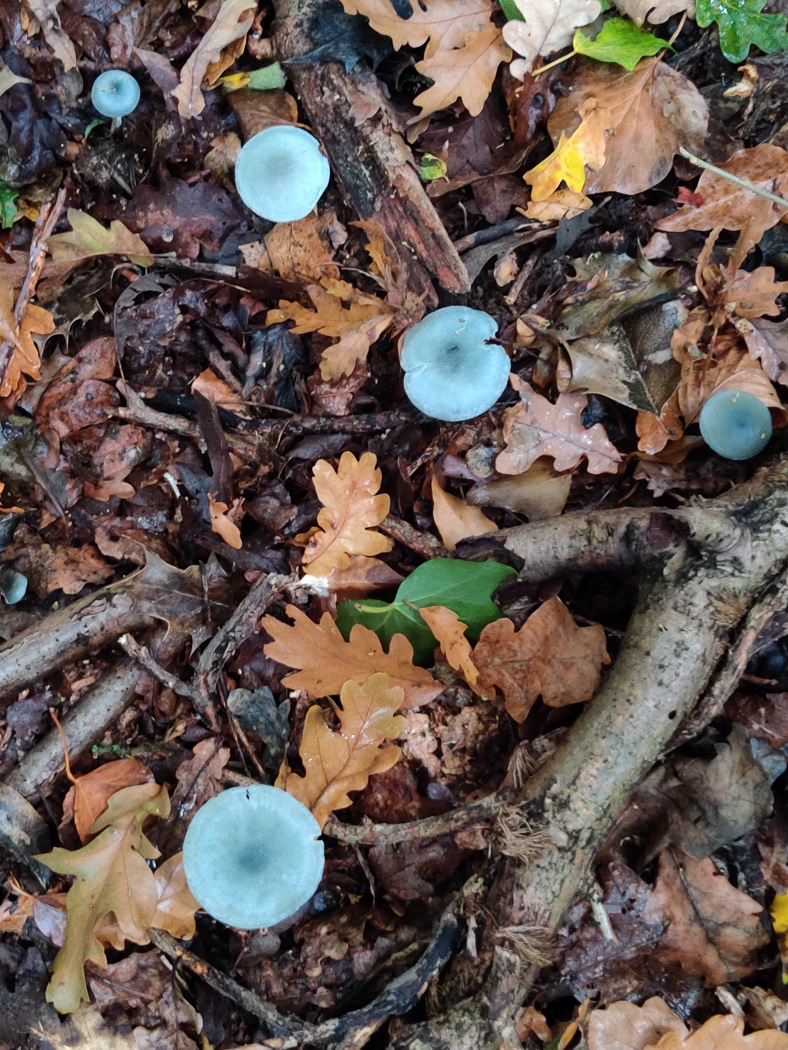
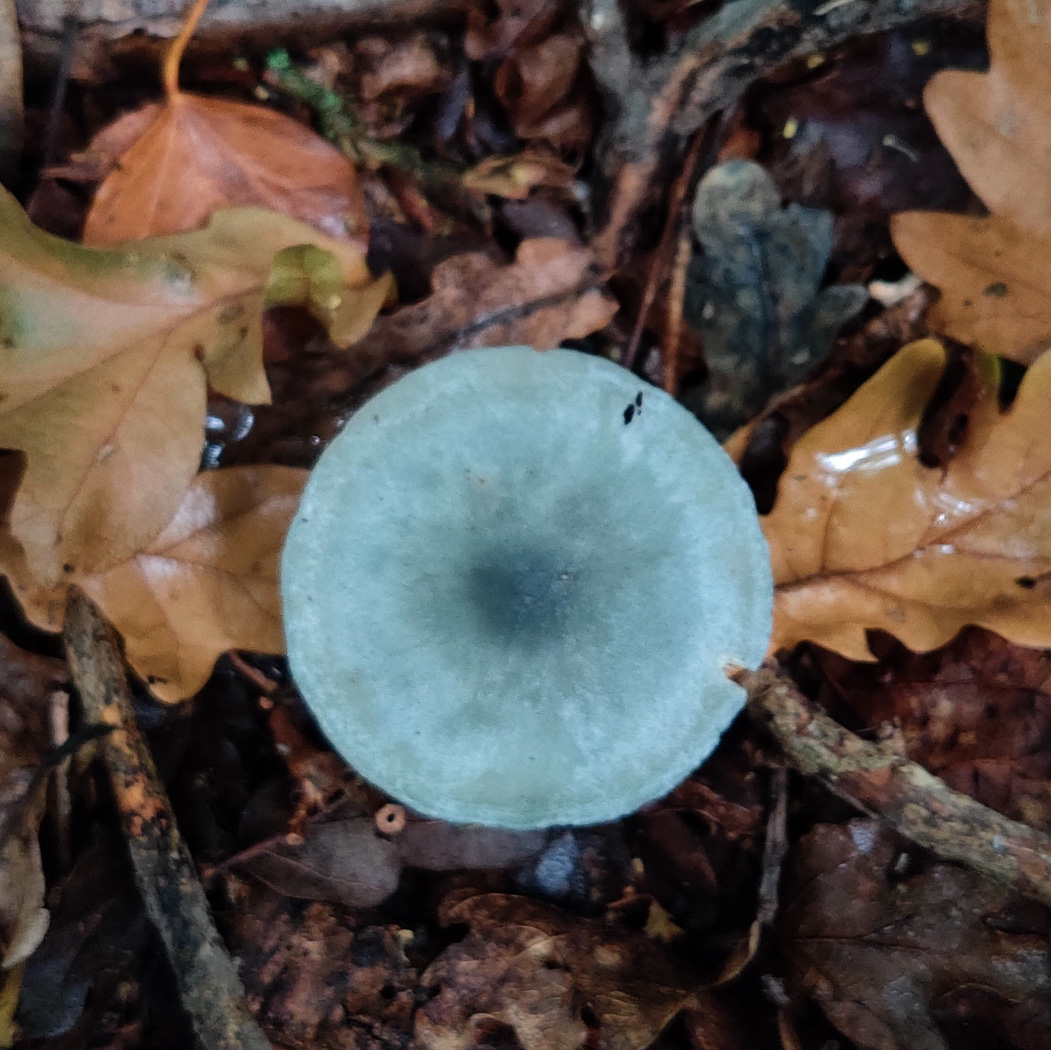
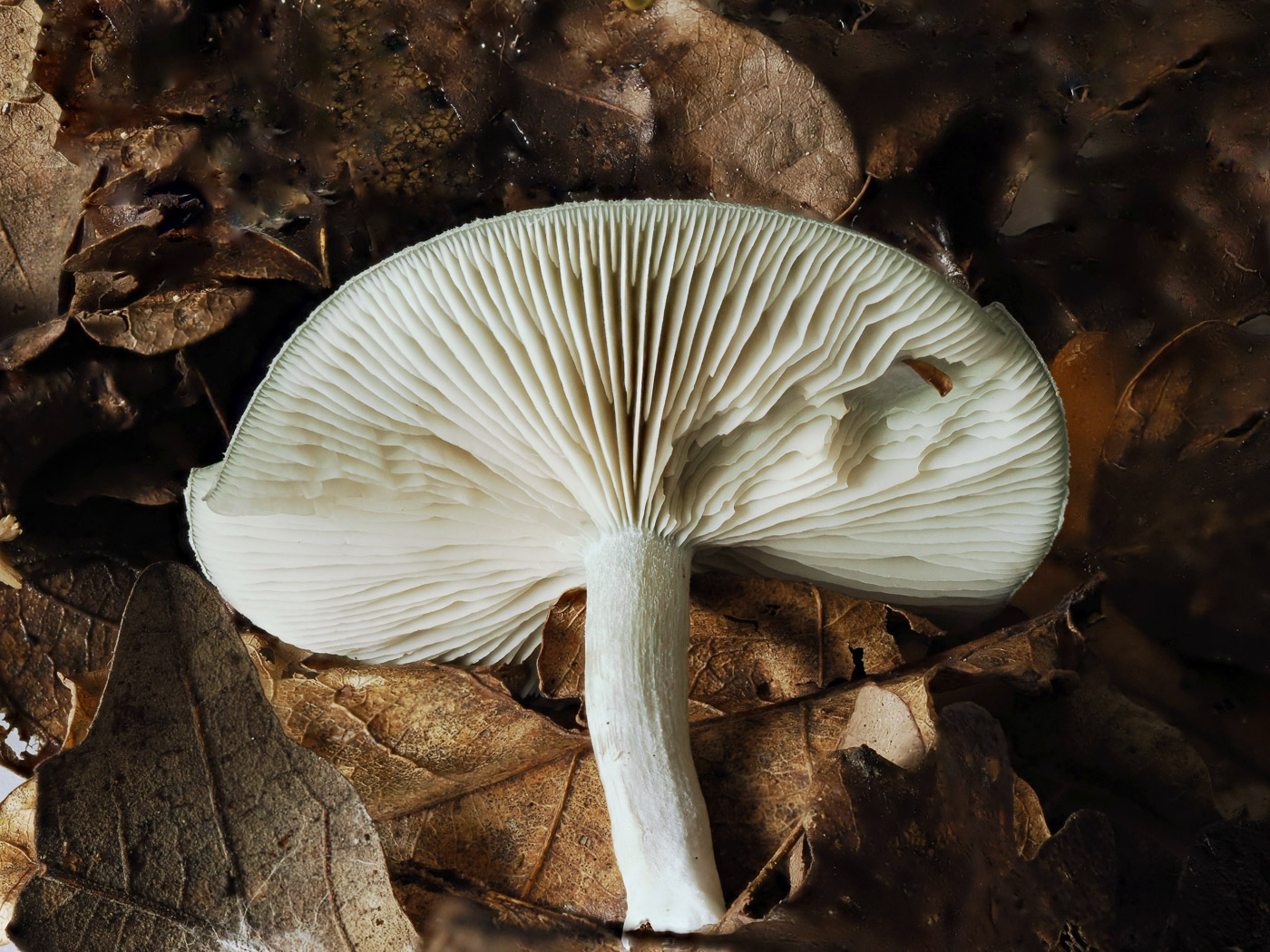 |
October 5th Clitocybe odora (Aniseed Funnel)
In Downley Common Claire Williams came across some stunning specimens of this quite common species - always a delight to find it because both the cap colour and the smell are amazing. We've seen a few specimens in recent weeks but none as intensely blue-green as these - sometimes the caps can be so pale that unless picked to test for the strong sweet smell it is easily overlooked as just another Funnel. See also in Finds 2020 October 5th and 2021 October 18th.
|
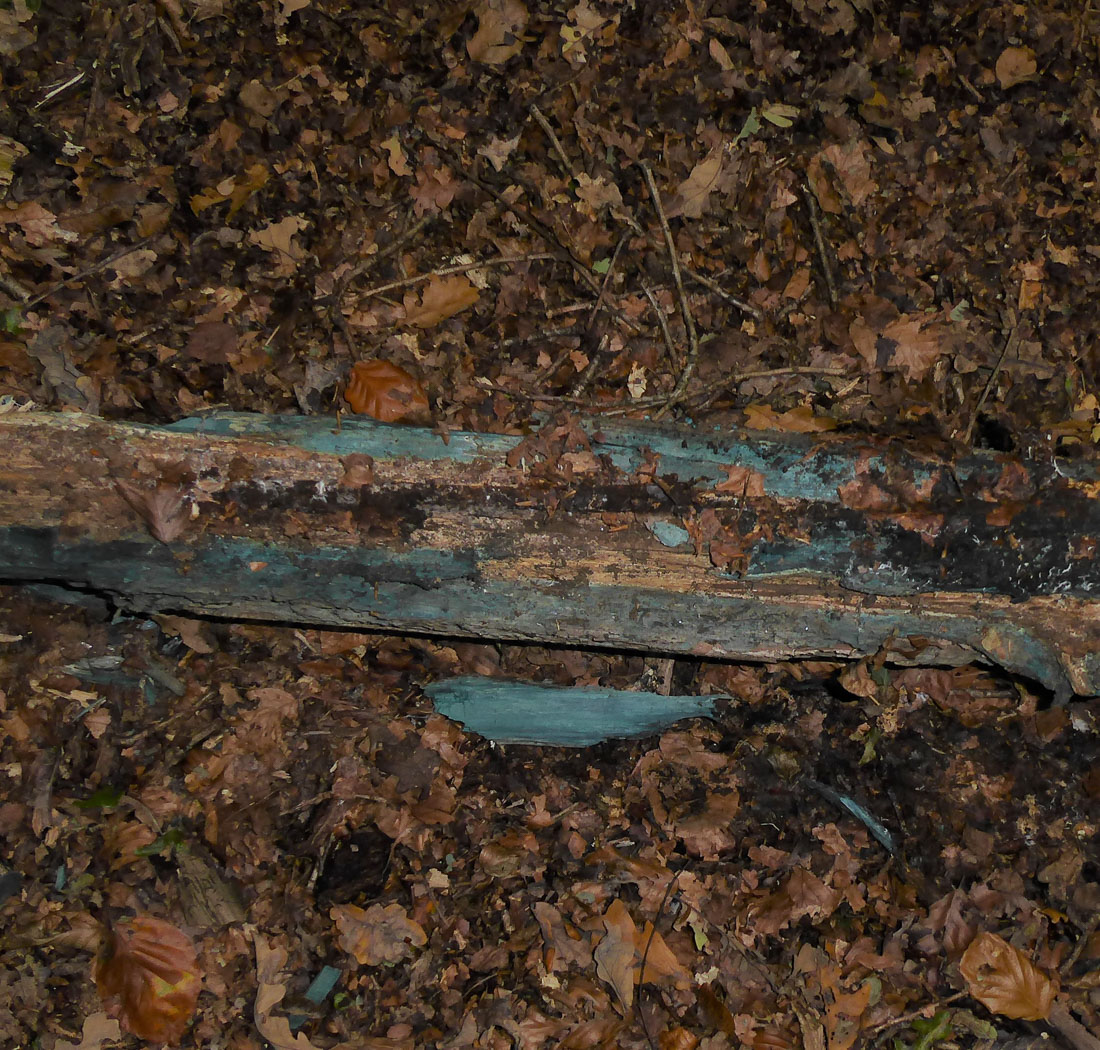
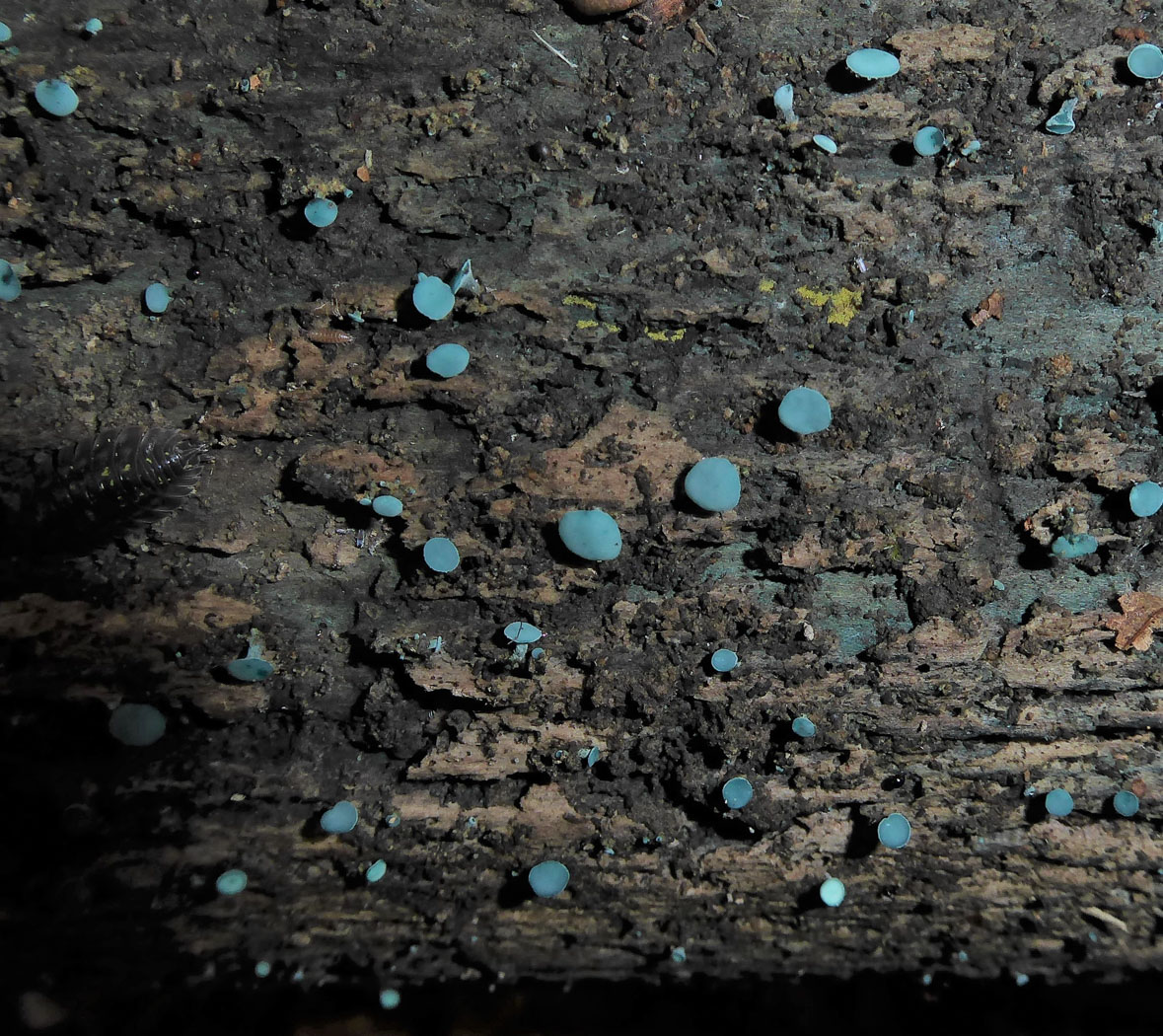
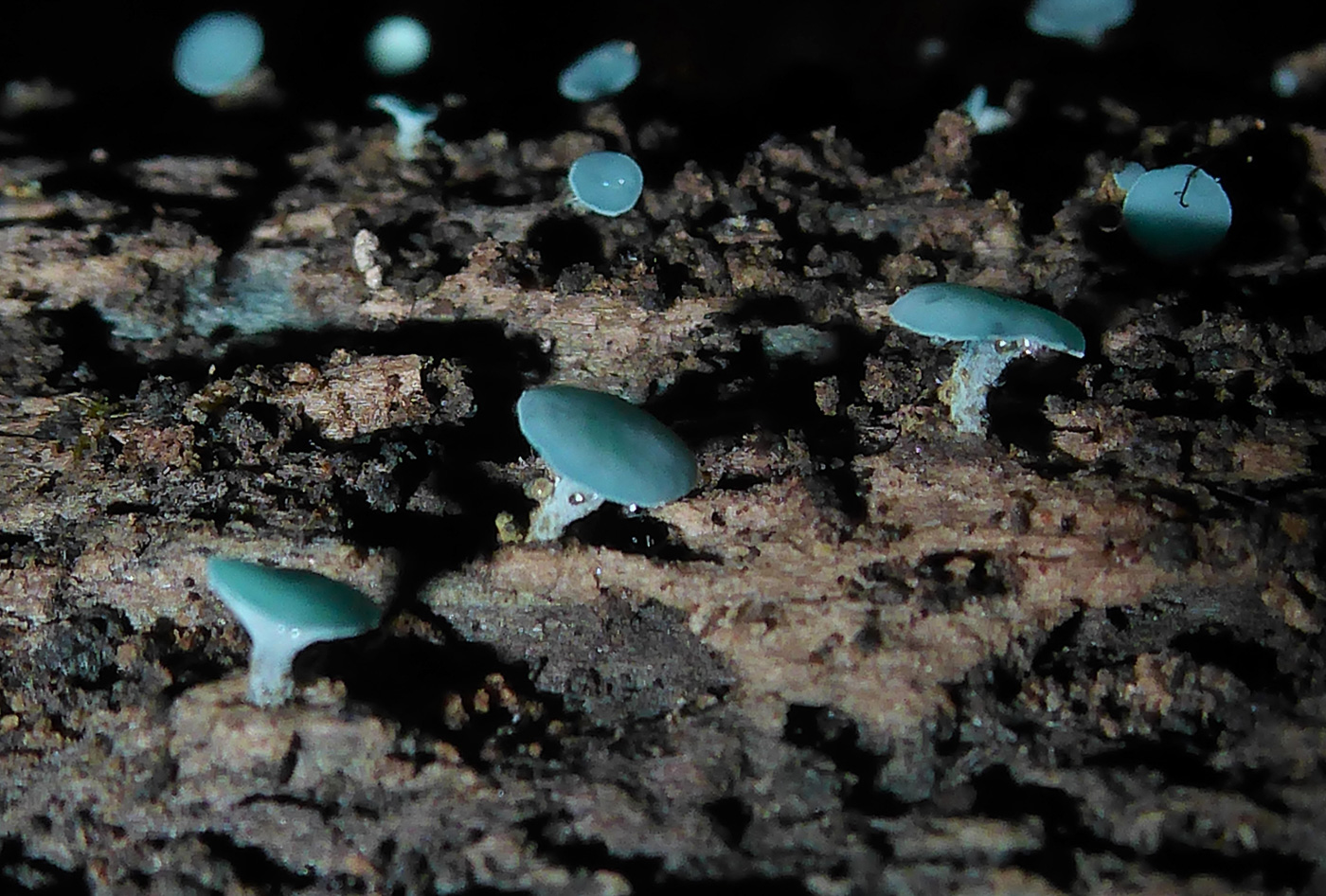 |
October 5th Chlorociboria aeruginascens (Green Elfcup)
On Gerrards Cross Common Jim Wills spotted some fallen bare deciduous wood with patches of blue green staining - a sure sign of the presence of this fungus within the wood even if the delectable fruit bodies are not showing. We've checked several such bits of wood recently with no success, but Jim struck lucky, as can be seen! Turning the log over revealed these tiny little beauties which were no more than 2mm across. See the Finds Masterlist for several other images, also for further information about the species.
|
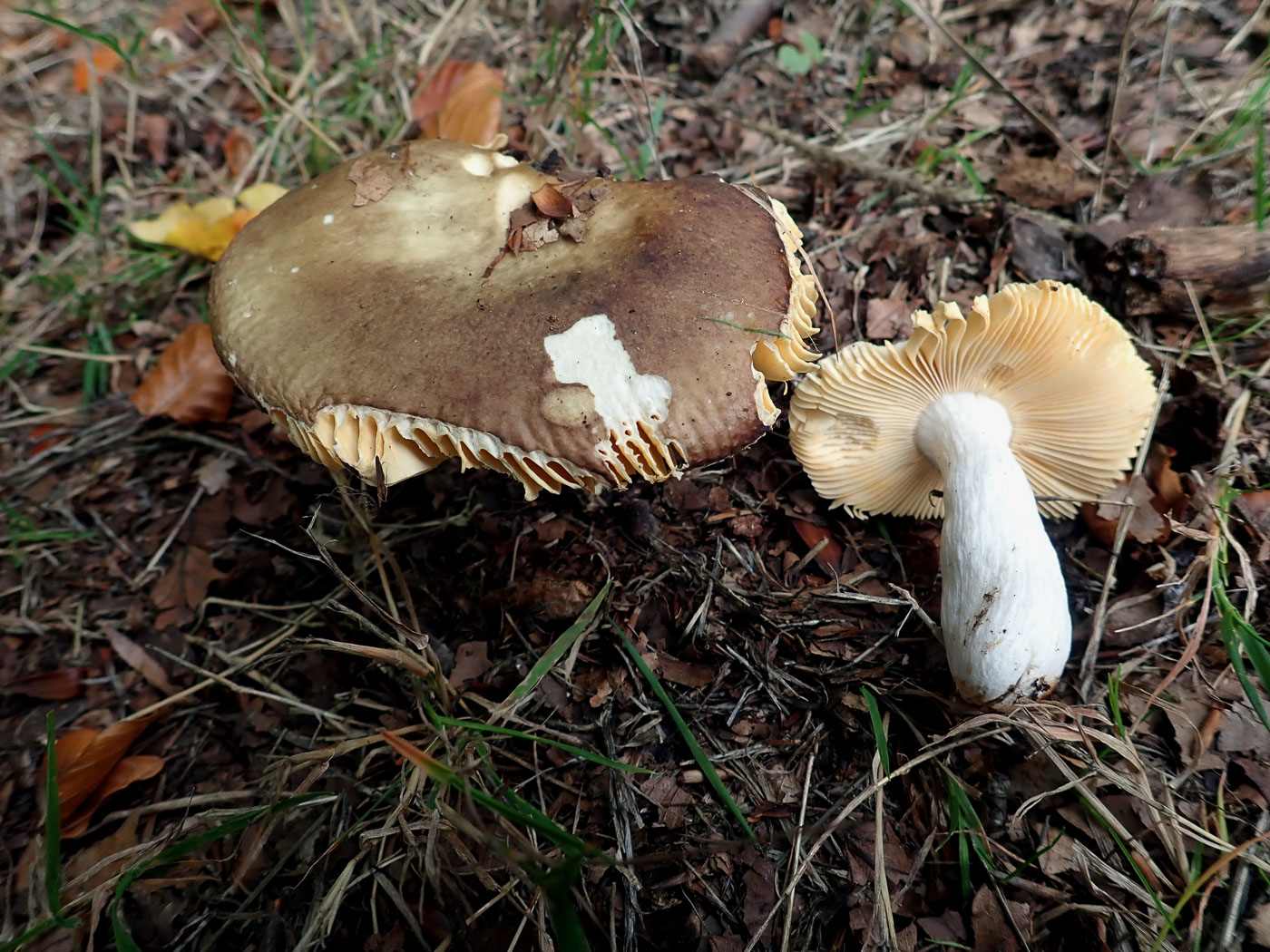 |
October 5th Russula romellii (a Brittlegill with no common name) 
Under Beech at Whiteleaf Cross Penny was pleased to find this large and showy Brittlegill and even more pleased to turn it over and see the amazing dark orange gills. The species has one of the darkest spores prints in the genus and is not that common. We have just a handful of previous county records, the last in 2017, hence this is a new species for Members' Finds.
|
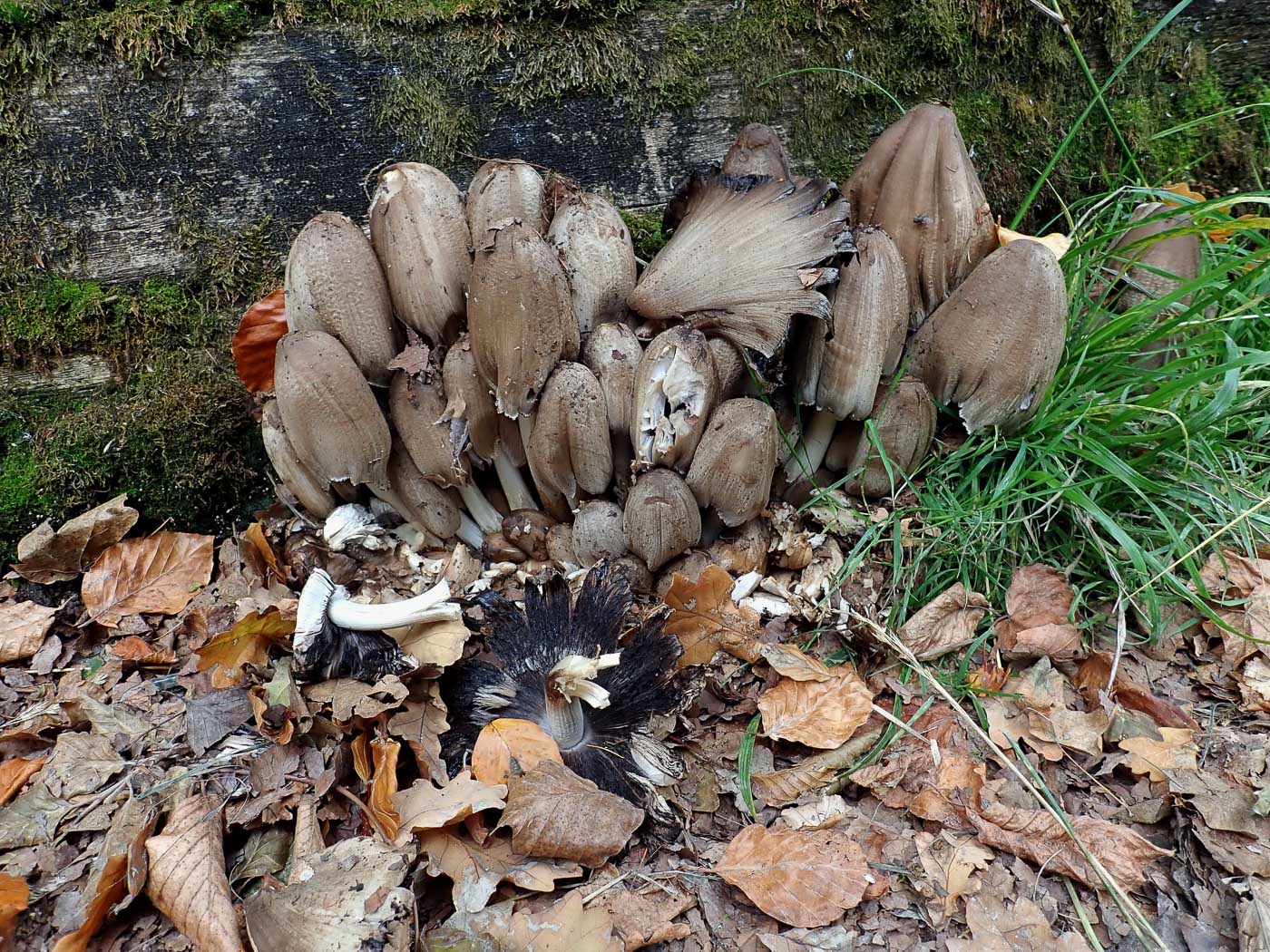 |
October 5th Coprinopsis atramentaria (Common inkcap)
At Whiteleaf Cross Penny checked the rotting sleepers around the edge of the car park and was not surprised to find there quantities of this large Inkcap in various stages of development. See the Masterlist for more examples, one being of this same spot last year.
|
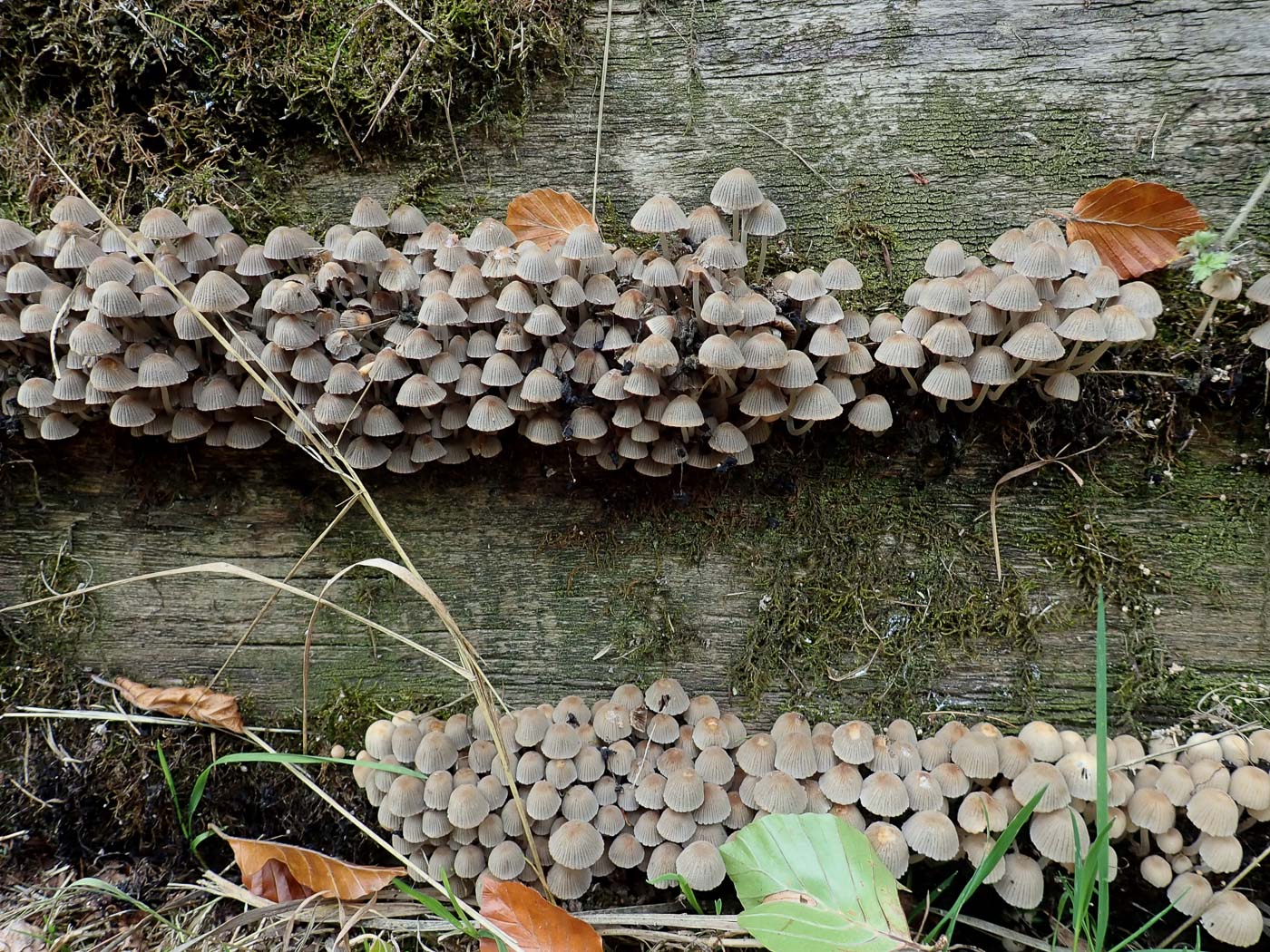
 |
October 5th Coprinellus disseminatus (Fairy Inkcap)
At Whiteleaf Cross Penny found a large swarm of tiny Inkcaps growing out of the rotting wooden sleepers surrounding the car park and displaying their pale beige colour when young in contrast to the typical grey when mature. See the Masterlist for more examples, one being of this same spot last year.
|
October 3rd 2022
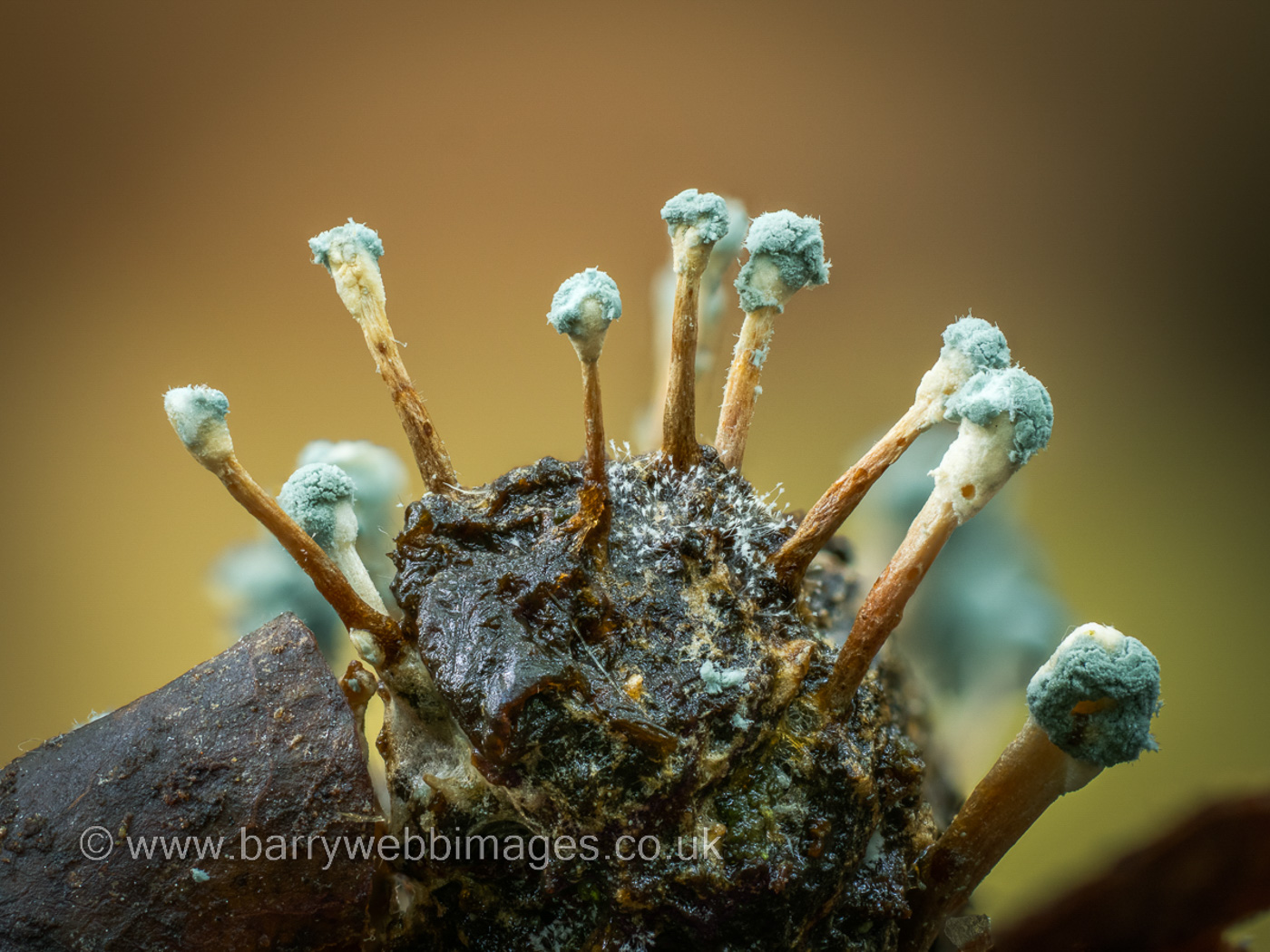 |
October 3rd
Penicillium vulpinum (Matchstick Mould)
On some unidentified droppings / dung at Burnham Beeches Barry Webb found this strange-looking and tiny fungus and posted his photo on the Facebook site he uses. It was quickly identified for him, and checking other images online there can be little doubt that the ID is correct and the common name very apt. There are numerous species of Penicillium though this is one of the most distinctive and is new to the county.
|
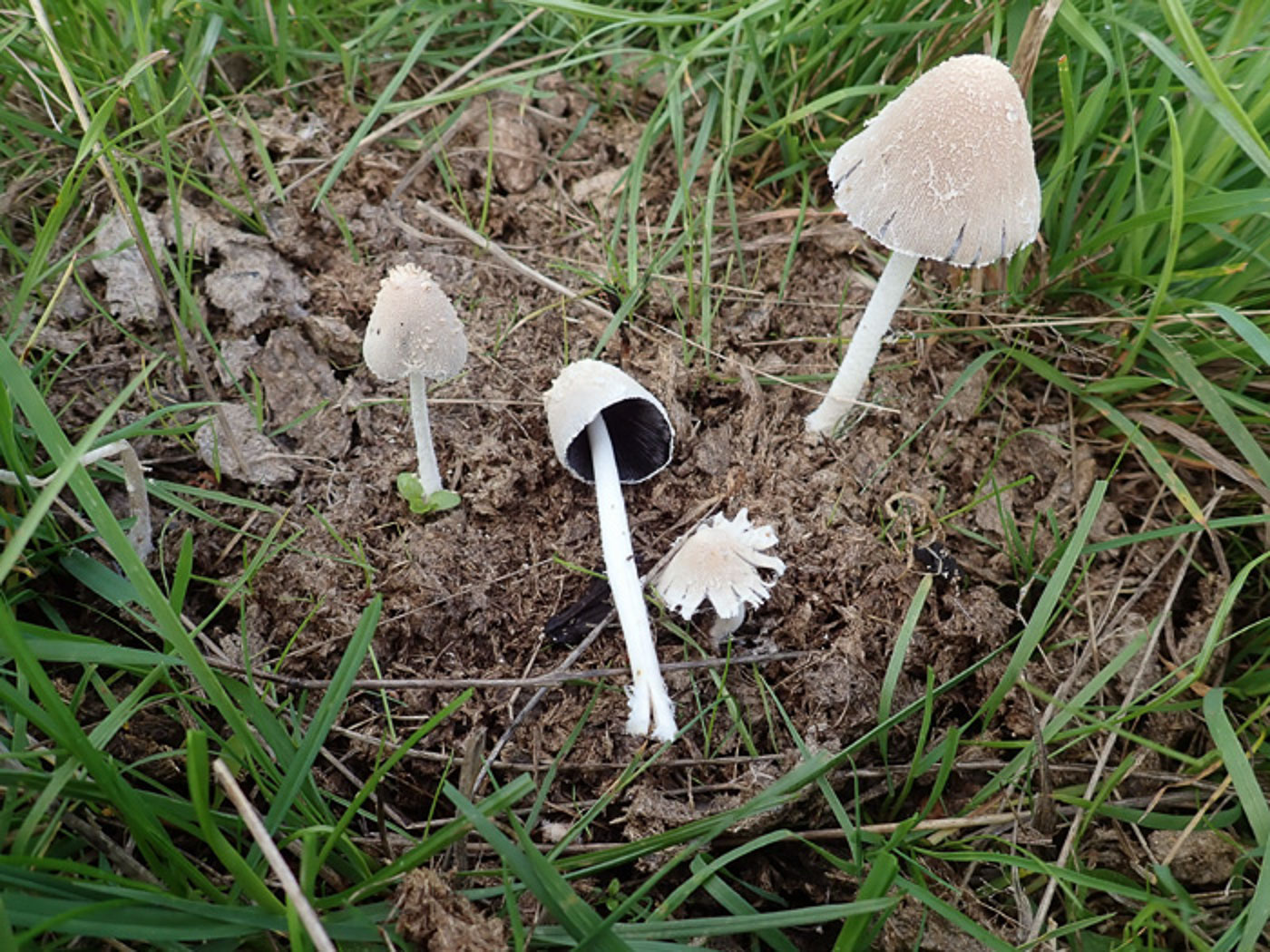
 |
October 3rd Coprinopsis pseudonivea (an Inkcap with no common name)
In the open grassy area near the car park in Burnham Beeches Penny noticed a couple of cowpats adorned with this distinctive Inkcap. Much more common on this substrate is the very similar but pure white capped C. nivea (Snowy Inkcap), however today's species has a definite pink tinge especially when immature and was first recorded in the UK from Pulpit Hill in 2007. Since then it appears to be on the increase and we have several records from various other Bucks sites. See also Finds 2020 December 2nd.
|

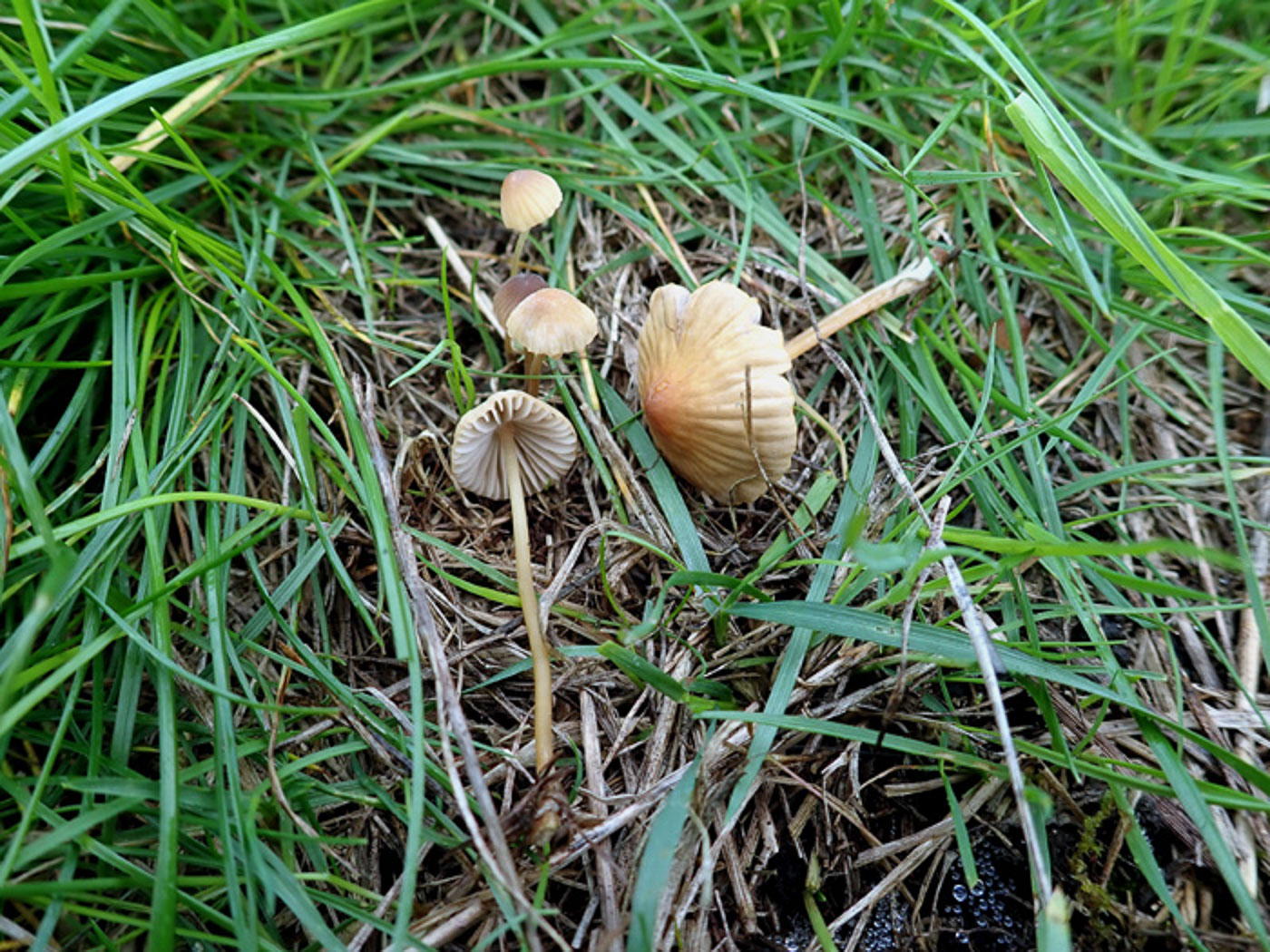 |
October 3rd Mycena olivaceomarginata (Brownedge Bonnet) 
In the open grassy area near the car park in Burnham Beeches Penny found several different groups of this grassland Bonnet, though some were somewhat bigger than usual and fooled her even to genus until she got them home to examine in more detail. Bonnet gills are normally white with a concolorous edge, also often rather crowded, but these were not only quite widely spaced but also rather dingy, and until she had the gills under a disecting scope she didn't pick up on the fact that the gill edges were faintly pale brown (not visible in these images, sorry). Then all fell into place! See also Finds 2020 October 5th and December 1st.
|
September 30th 2022
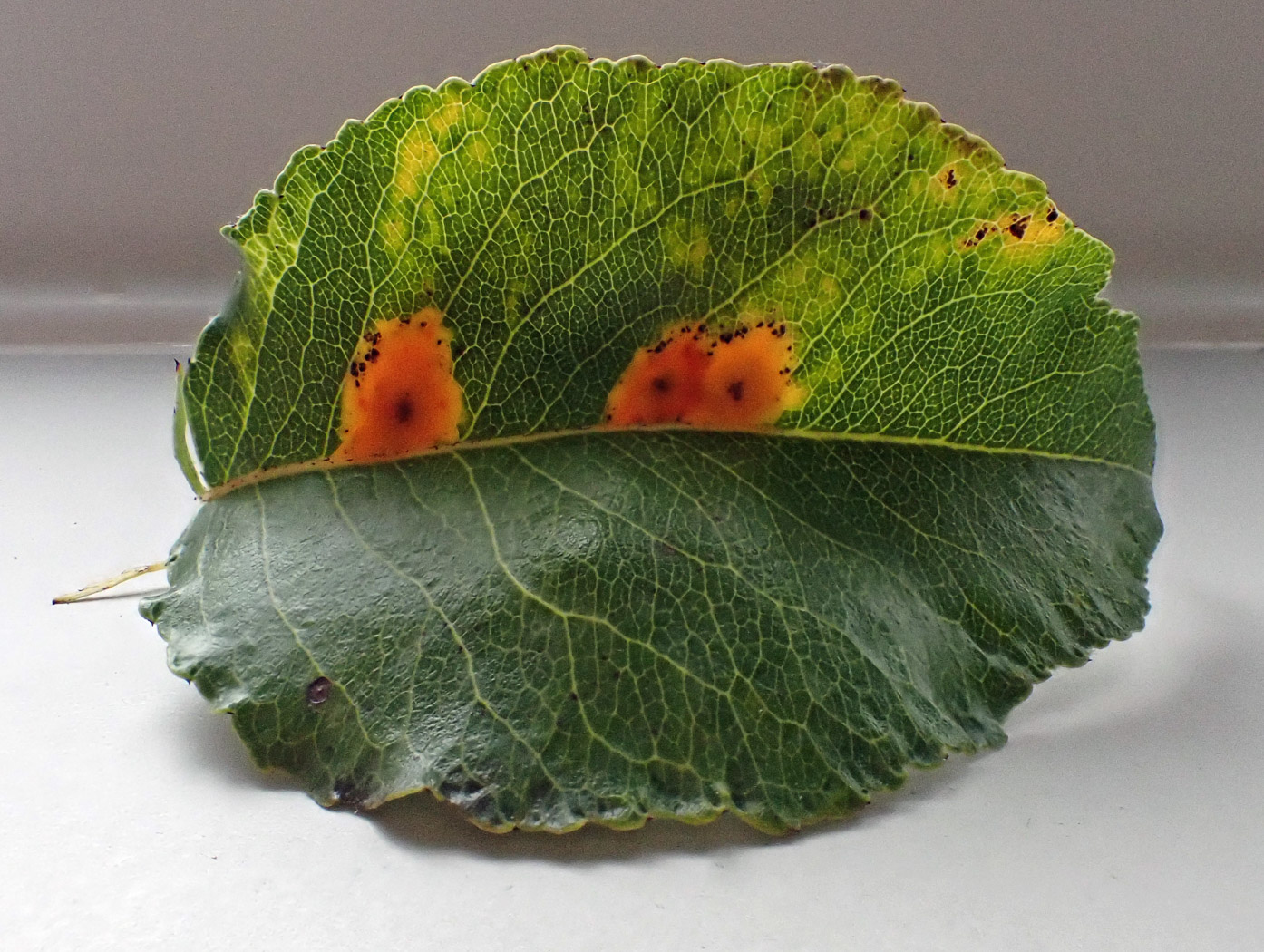
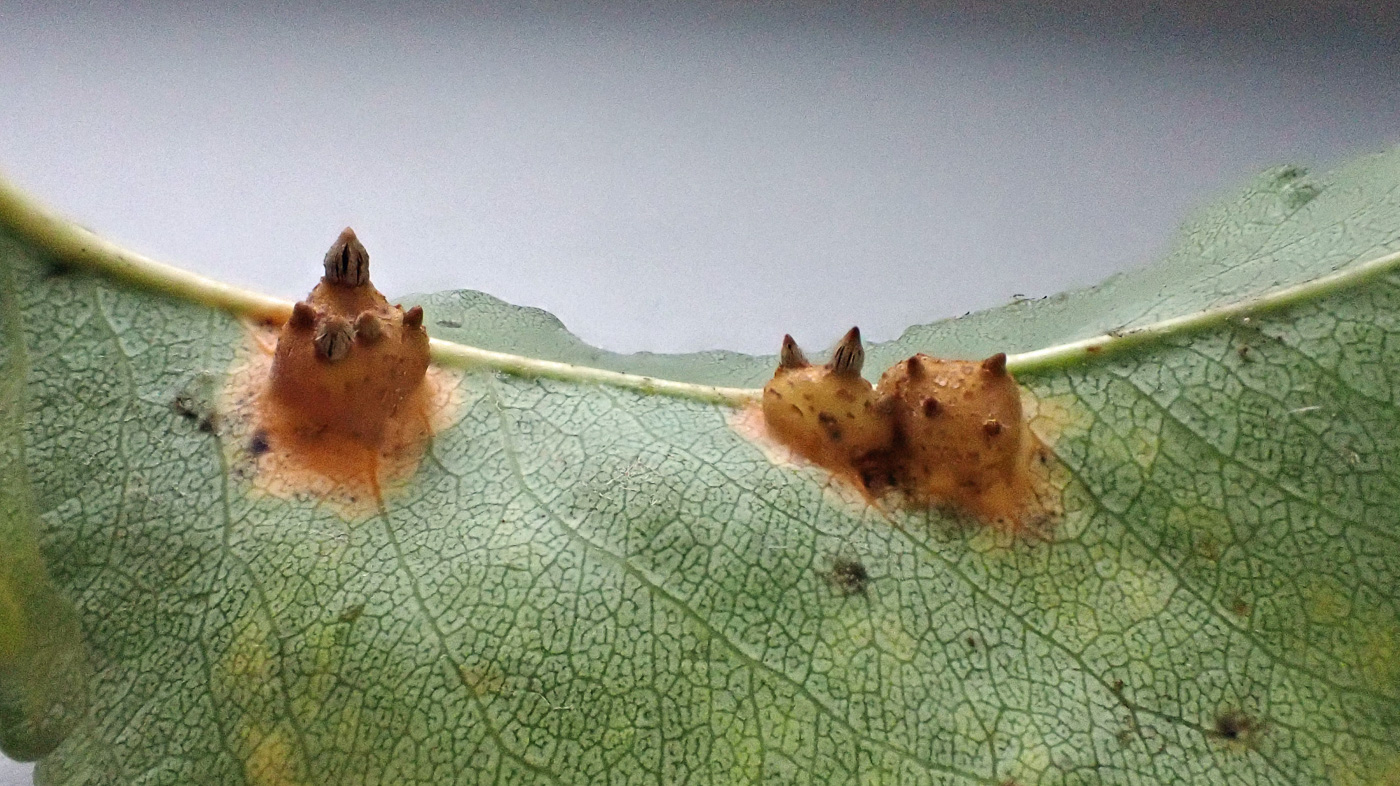 |
September 30th Gymnosporangium sabinae (Pear Rust)
On the Pear tree in his garden in Walters Ash Neil Fletcher identified this rust - not rare but with only one previous county record, hence the green box here. Neil tells me that this rust fungus - in common with many others - has two hosts, the primary (telial) host is Juniperus (wild and cultivated junipers) and the secondary (aecial) host is Pyrus (wild and cultivated pears). So if you know of a local Pear tree now is the time to check the leaves before they fall and you may also find this interesting rust.
|
September 29th 2022
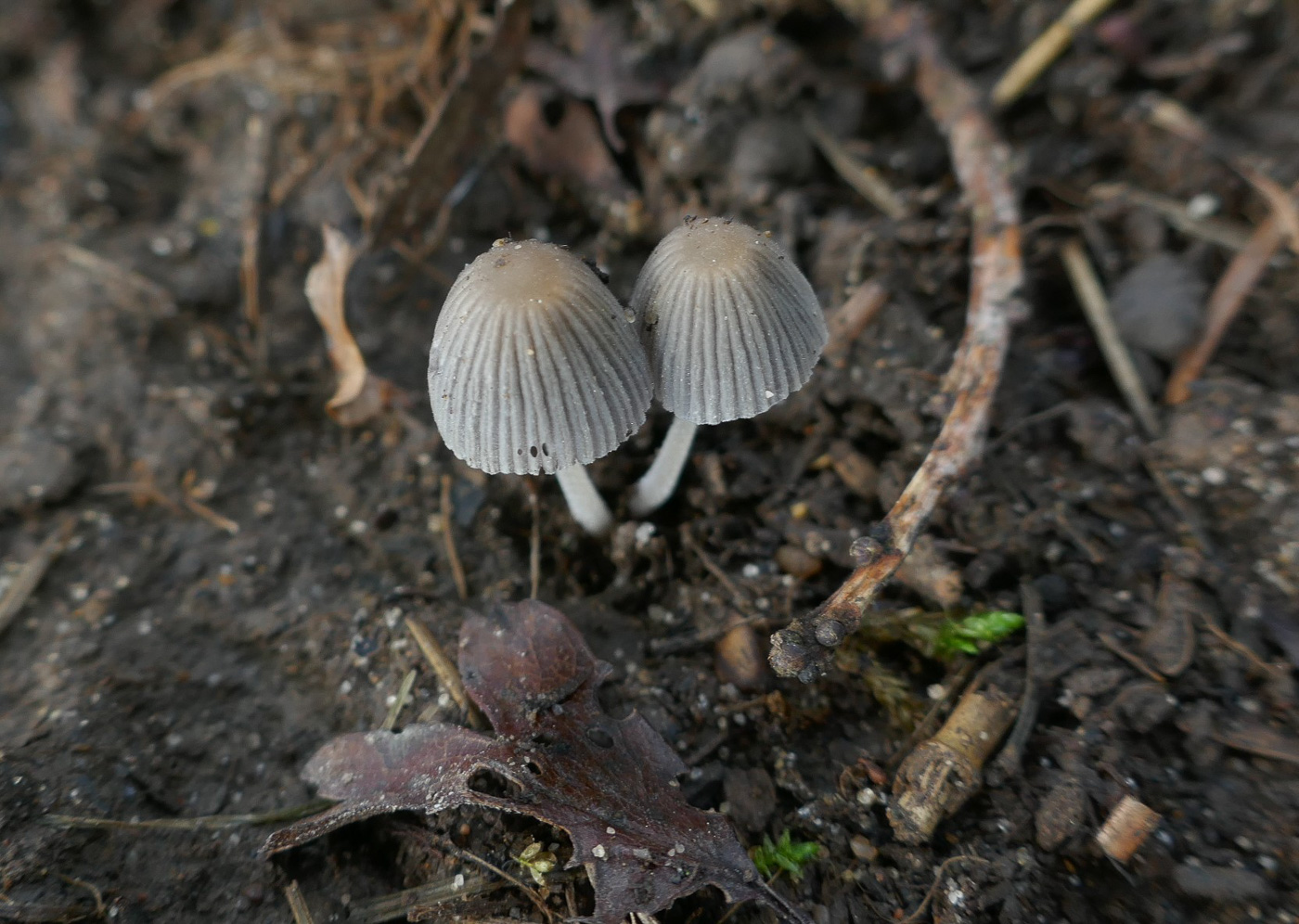 |
September 29th Coprinellus hiascens (an Inkcap with no common name) 
In an old pig pen at Stampwell Farm Jackie Ewan noticed this pair of small Inkcaps growing in soil. She identified the species at home using microscopic characters as well as the fact that both stem and cap were finely hairy. Penny showed her photo to Derek, passing on Jackie's various observations, and he was happy that it was indeed this species. It occurs occasionally and we have records from several Bucks sites with one previous image on Finds from 2020 October 8th.
|
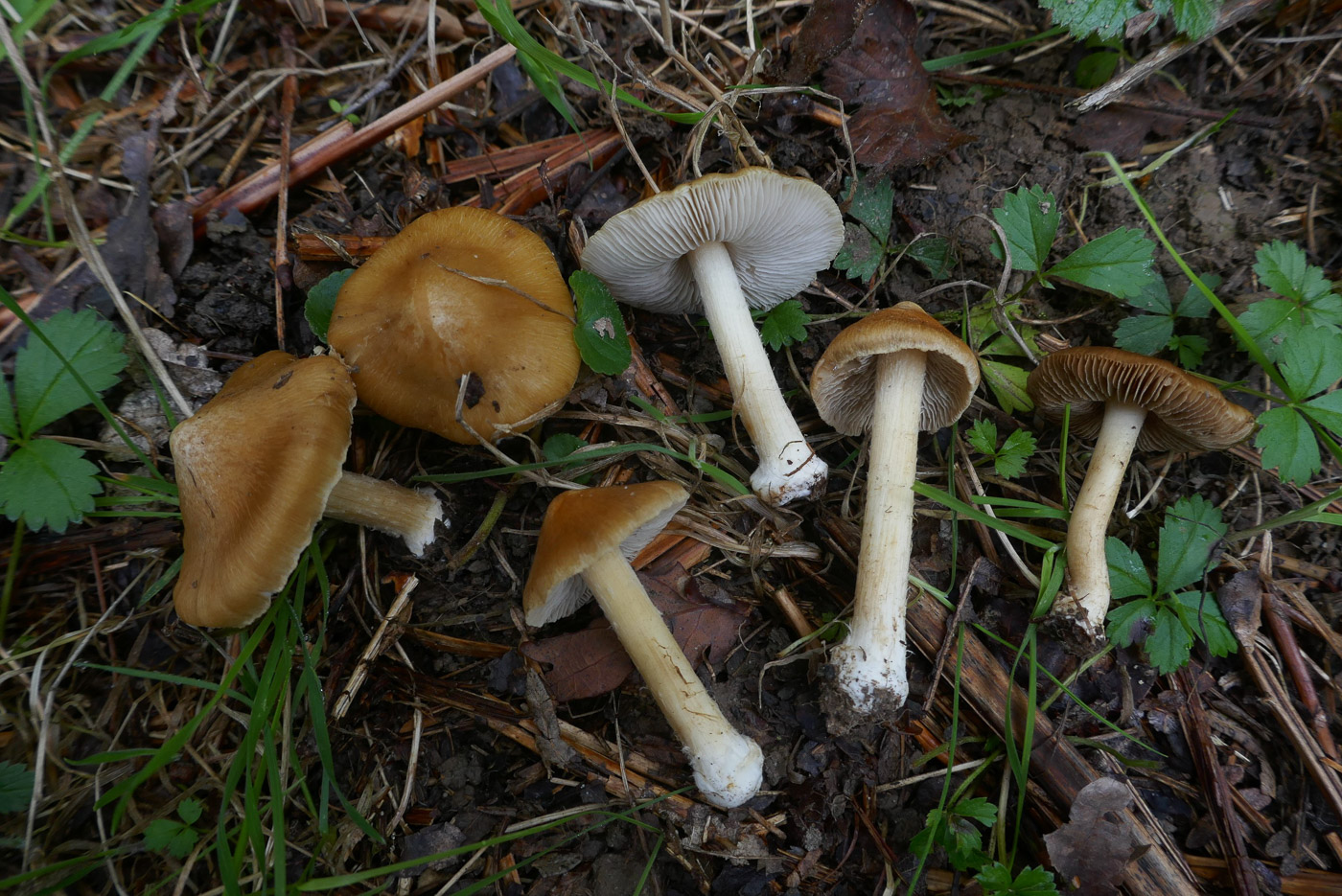 |
September 29th Inosperma cookei (Straw Fibrecap) 
At Stampwell Farm in a woodland path under Oak and Birch Jackie Ewan found this group of mushrooms, thought they were Fibrecaps from the general shape and texture, the beige gill colour and the bulbous stem base, then took them home to identify. As Fibrecaps go, this is quite an individual looking species and also has an interesting smell (though it takes experience to recognise it). Many Fibrecaps have an acidic spermatic smell, but this species has a slightly bitter honey component to it. Once detected, it is then quite easy to check the microscopic features to confirm your ID. The species is relatively common and was previously in genus Inocybe. We have one previous entry: 2020 September 7th (when the genus name was still Inocybe!).
|
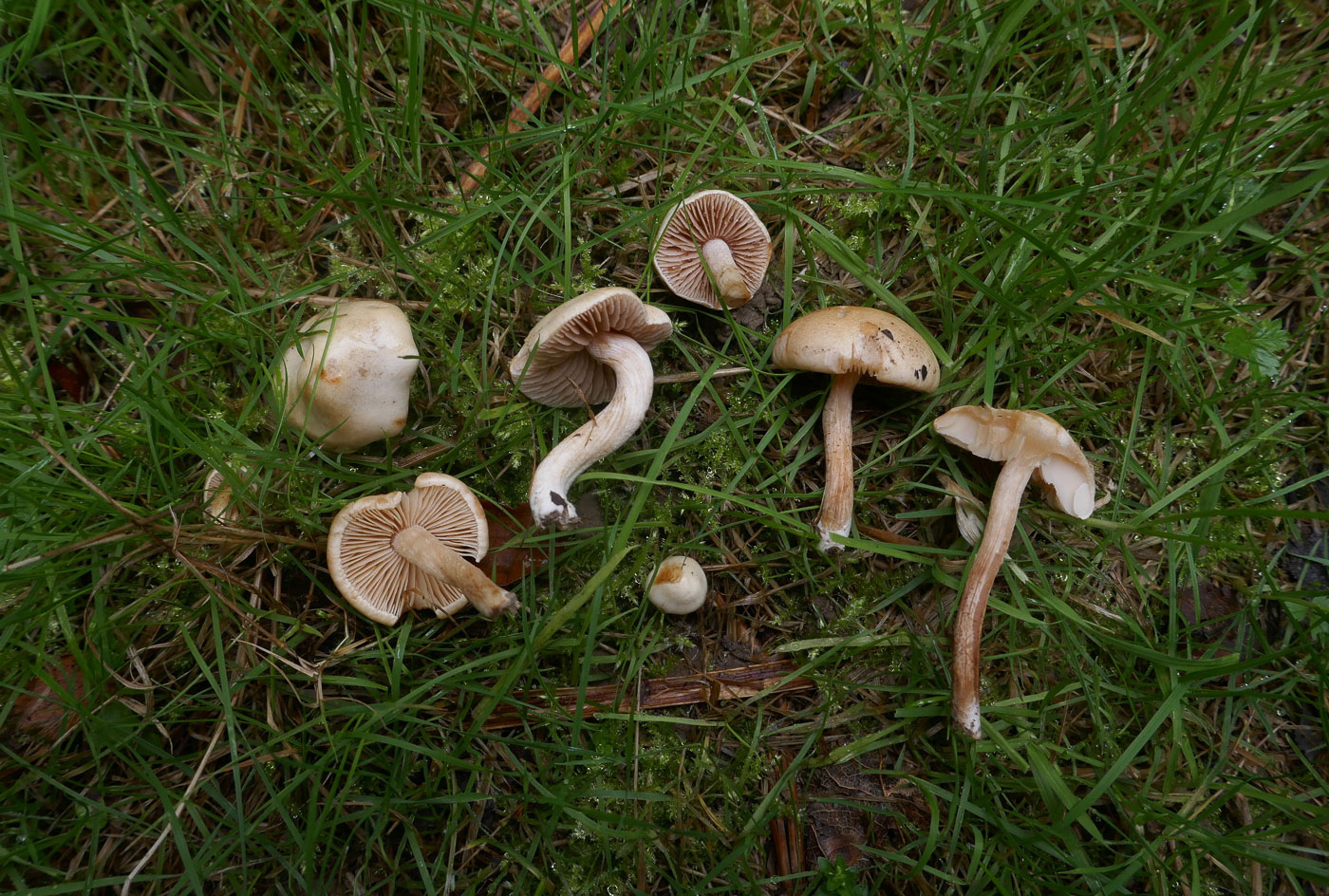 |
September 29th Hebeloma sacchariolens (Sweet Poisonpie) 
At Stampwell Farm in a woodland path under Oak and Birch Jackie Ewan found this group of mushrooms and recognised the genus from their sticky caps and general appearance, then tested for the typical radish smell present in many members of the genus. A few species, however, have a remarkable and distinctive smell of burnt sugar which was present here. She checked the microscopic characters later to confirm her ID made using her nose! The species is not rare though this is a first for Members' Finds.
|
 |
September 29th Mycena pelianthina (Black Edge Bonnet) 
Under Oak at Stampwell Farm Jackie Ewan found this trio of a Bonnet species with rather drab cap colours but two redeeming features: it has a sharp smell of radish (as in the closely related and equally common M. rosea and M. pura) but differs from both those two in having a distinctly dark gill edge - actually deep purple, not black). We have two previous 2020 entries and one 2021 - see Masterlist for details.
|
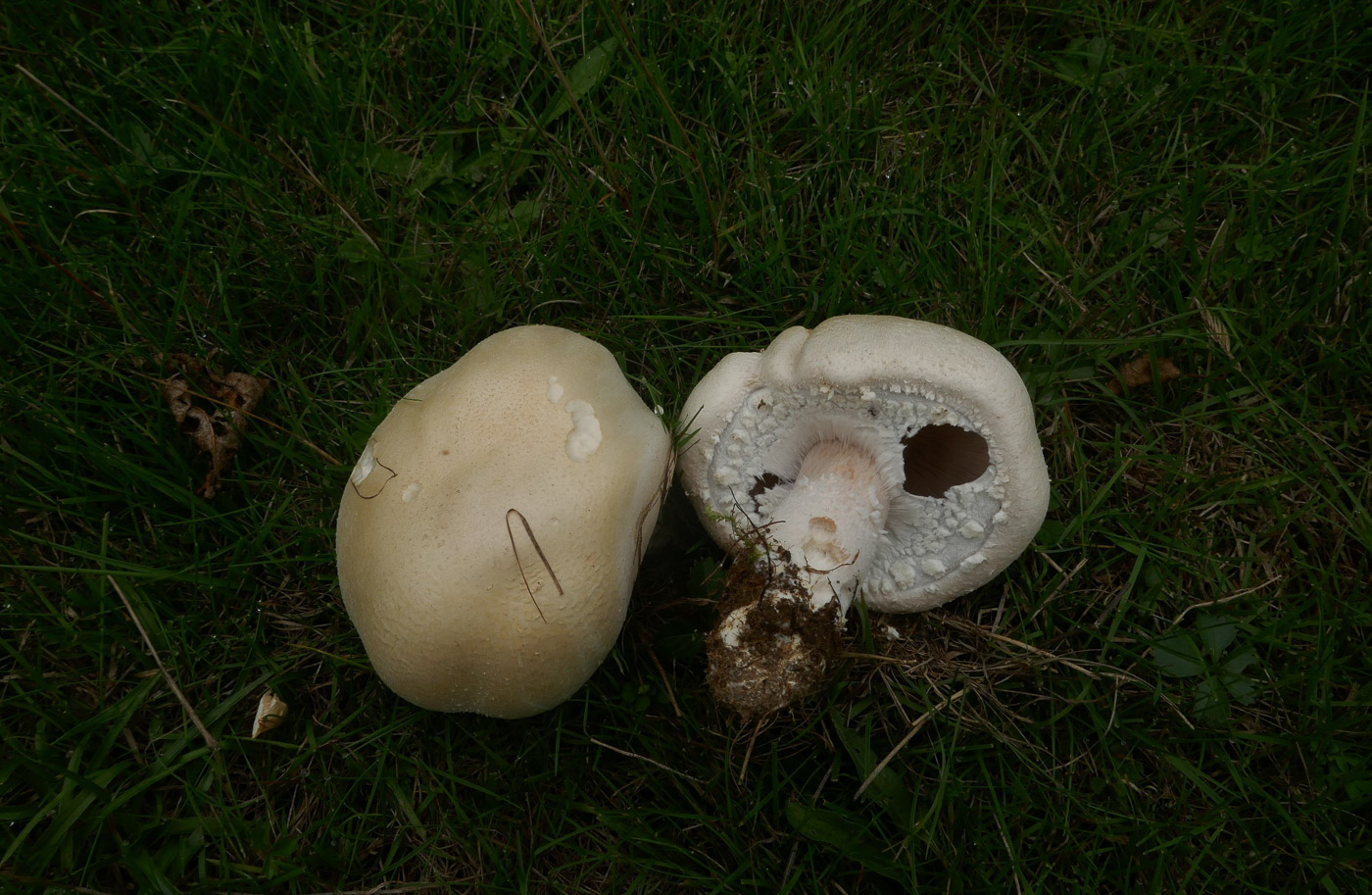 |
September 29th Agaricus urinascens (Macro Mushroom) 
In an orchard at Stampwell Farm Jackie Ewan licked her lips when she found this pair growing in the same spot where they appeared last year. Better known by its previous name A. macrosporus, it is not only our largest Agaricus but does indeed also have the largest spores for the genus - checked by Jackie - though there is another name change in the offing here: it could soon be A. crocadilinus! This seems to be a first for Finds though the species is by no means rare.
|
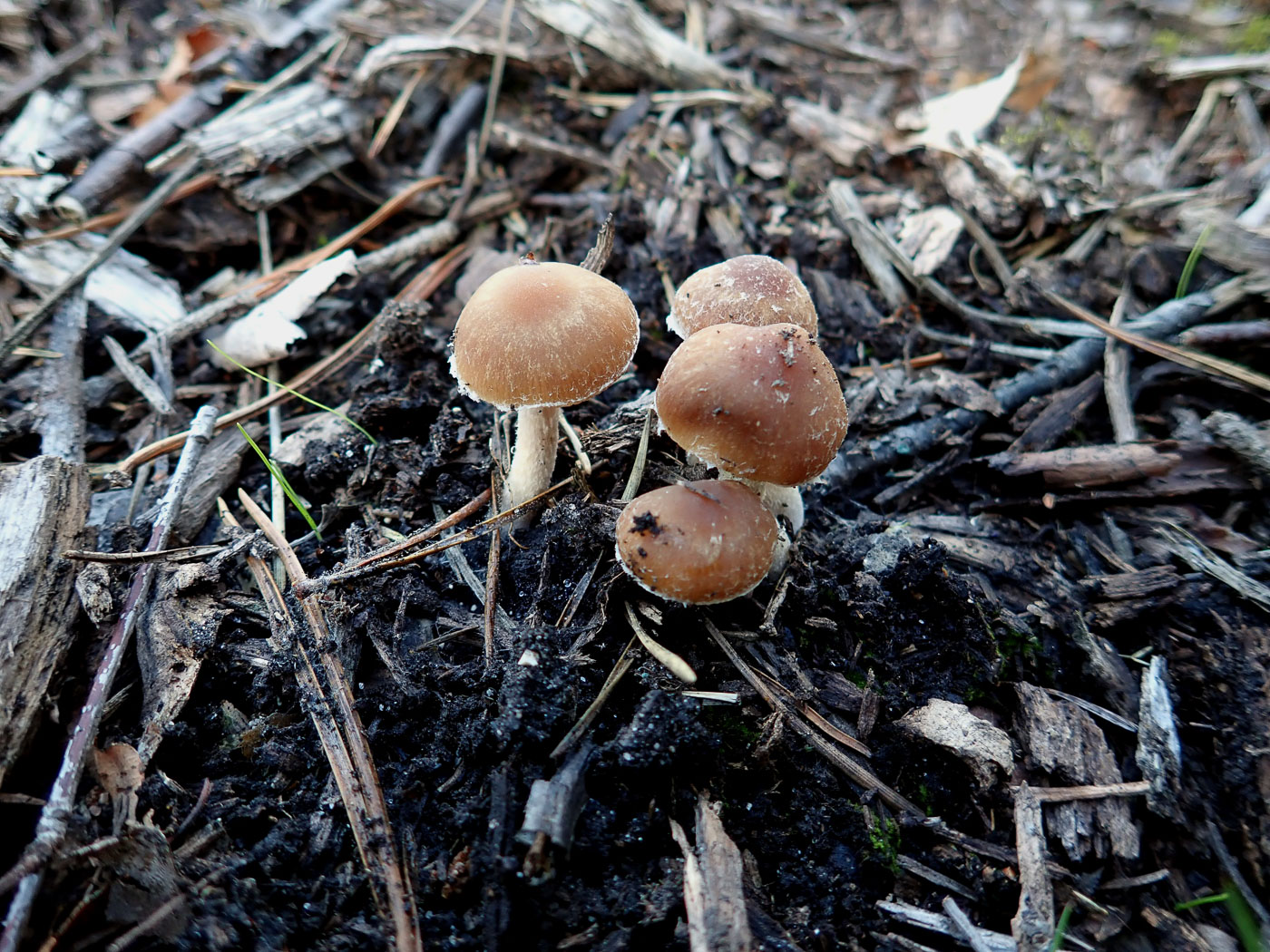
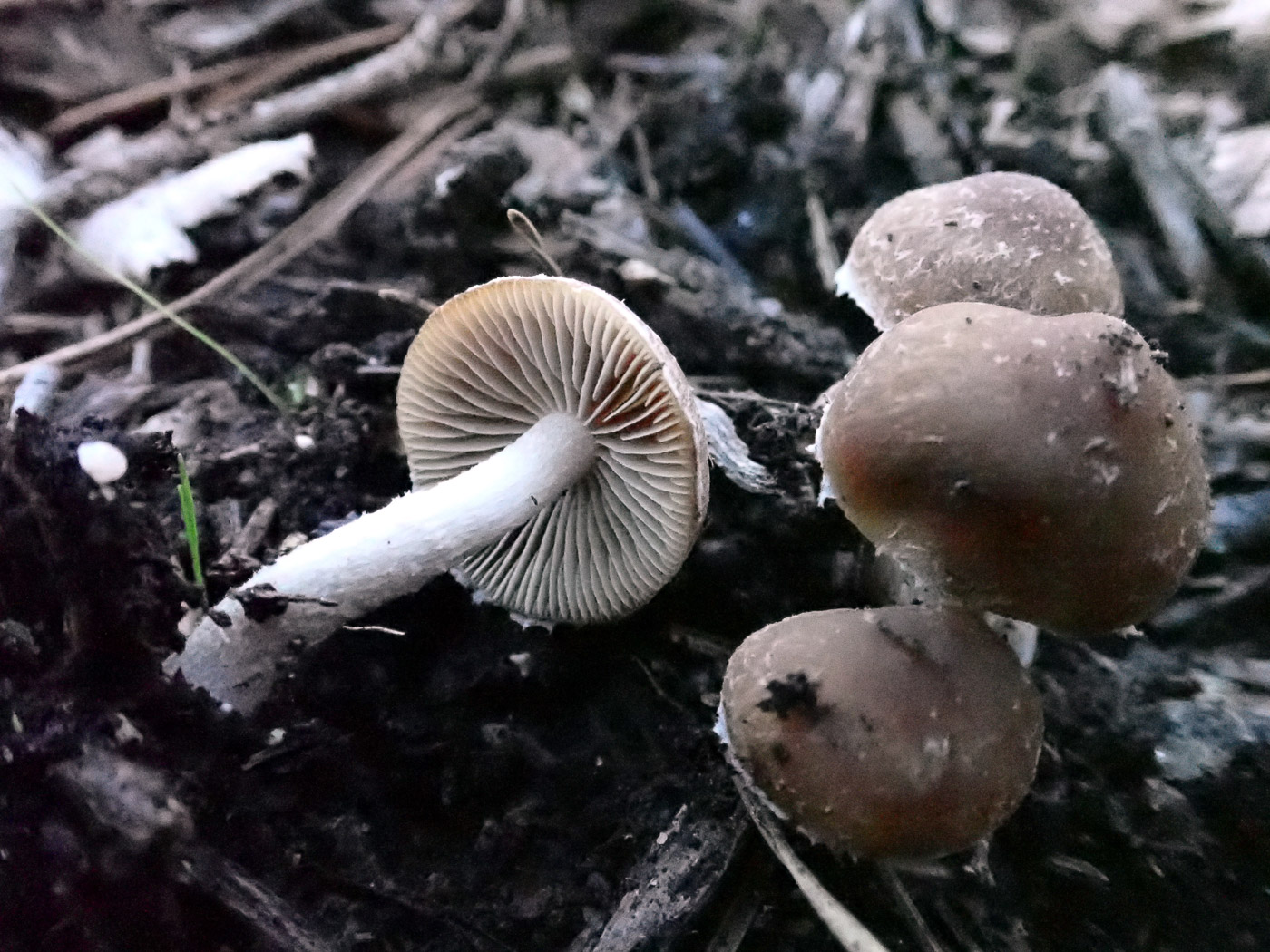 |
September 29th Psathyrella sphagnicola  (a Brittlestem with no common name) (a Brittlestem with no common name)
At Stoke Common in a mossy clearing amongst woody debris where a tree - possibly Pine - had been removed, Penny noticed these three small LBJs, and spent quite some time working on their identification at home. Though Brittlestems are usually quite easy to name to genus, having gills which gradually darken with age and white stems which snap easily, that's where the easy bit ends! Microscopic study with specialised keys and books is nearly always essential, and even then as often as not one ends up with no conclusive result. This collection, if named correctly, is a rare species, new to the county and will certainly need sequencing to confirm. Despite its name, Penny learnt that the species is not exclusively a species of Sphagnum but also occurs with other mosses, often in conifer forests.
|
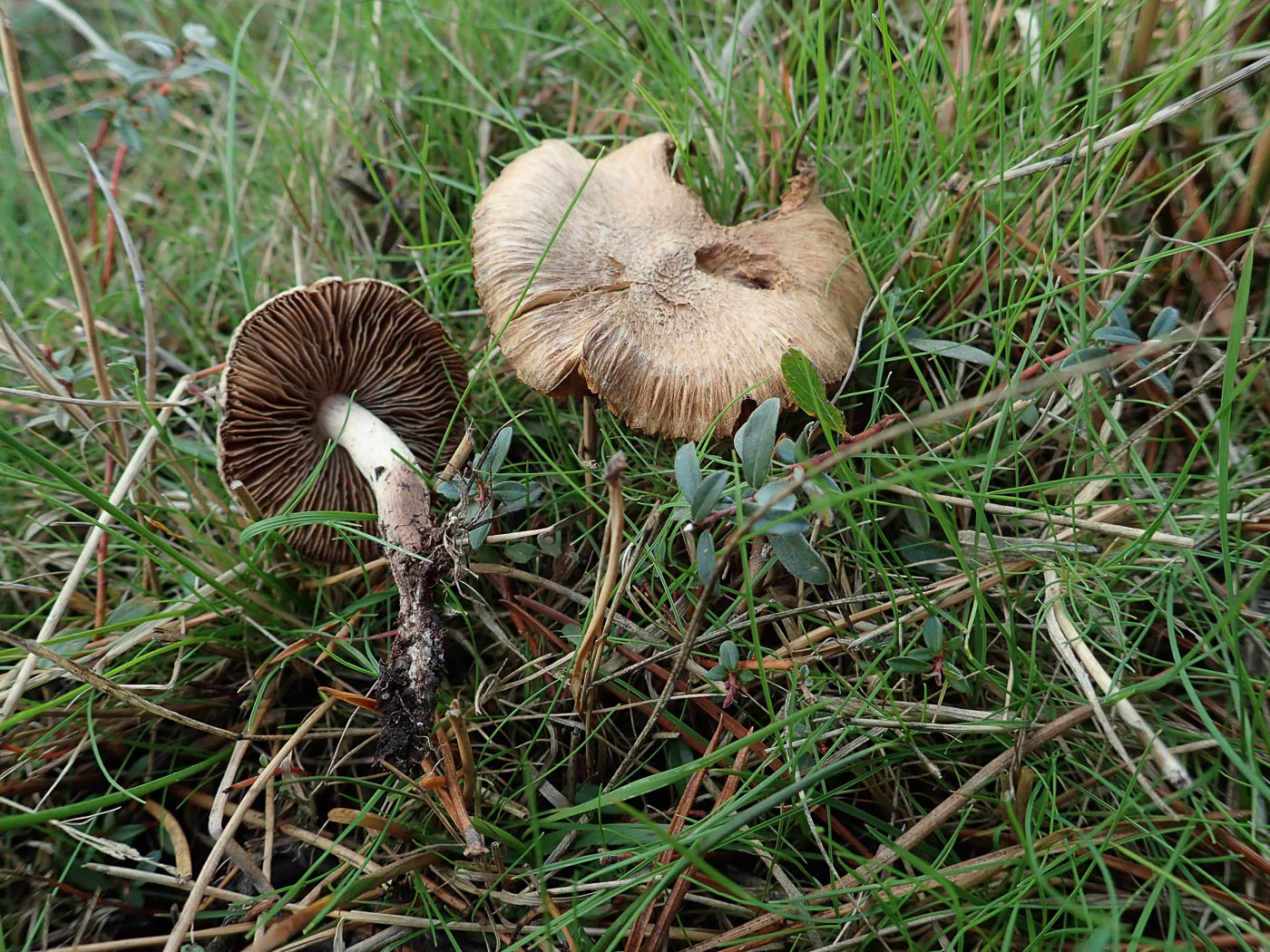

 |
September 29th Inocybe lacera (Torn Fibrecap) 
At Stoke Common Penny was very pleased to see this particular Fibrecap species - one which occurs in few Bucks sites but can be really prolific here. It favours acidic soil and associates with Birch, Pine or Willow, here with the plentiful Prostrate Willow - an unusual plant in the county and seen in photo 1. The two photos show two separate collections which, though looking pretty similar, appear to have rather differently shaped spores, and as I. lacera is a known complex of species it will be interesting to get them sequenced. (We already have one found here new to the UK.) A useful field character of this complex is its stem which stains dark brown when rubbed (see photo 3). The species is a new entry for Finds.
|
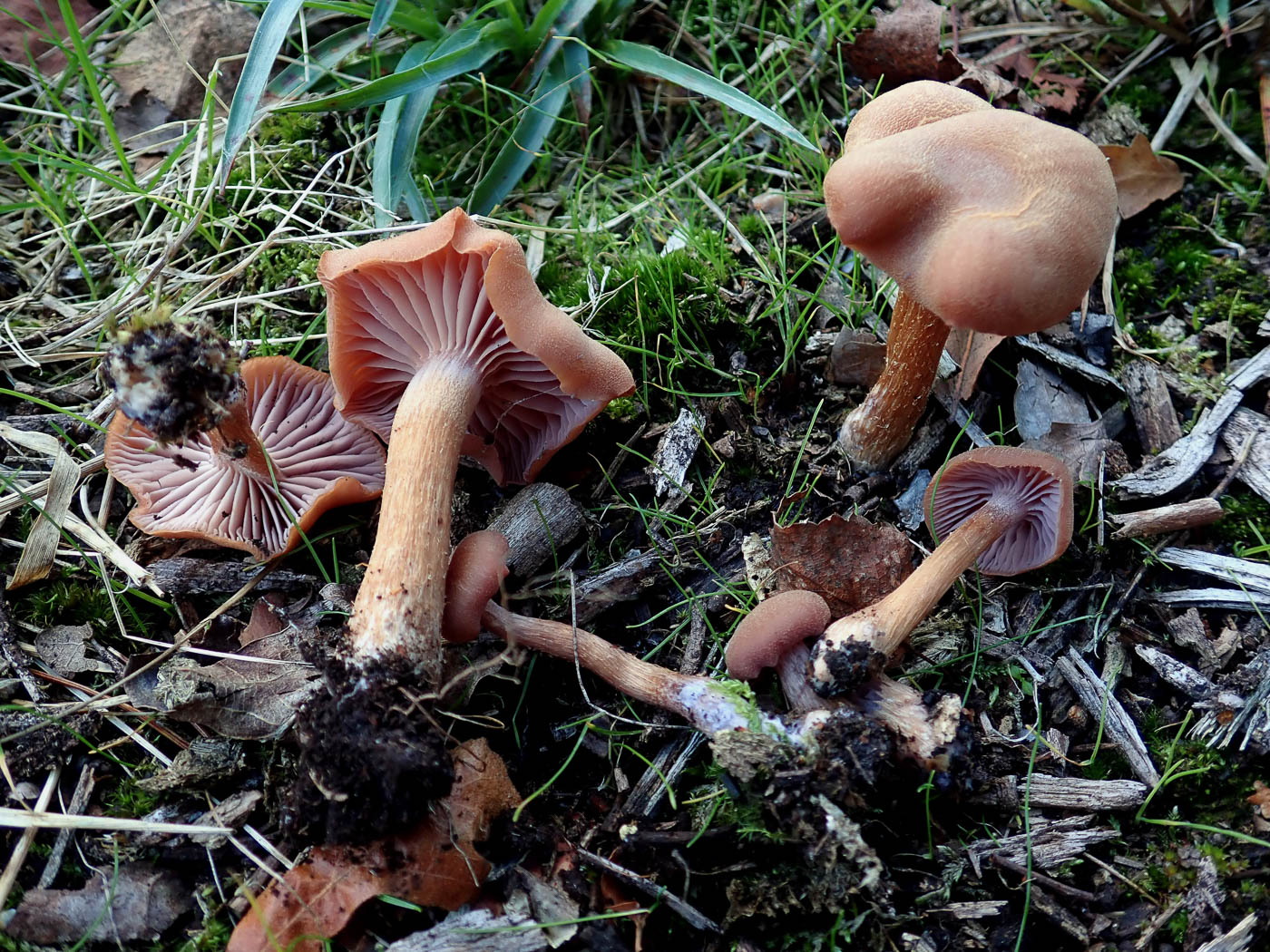
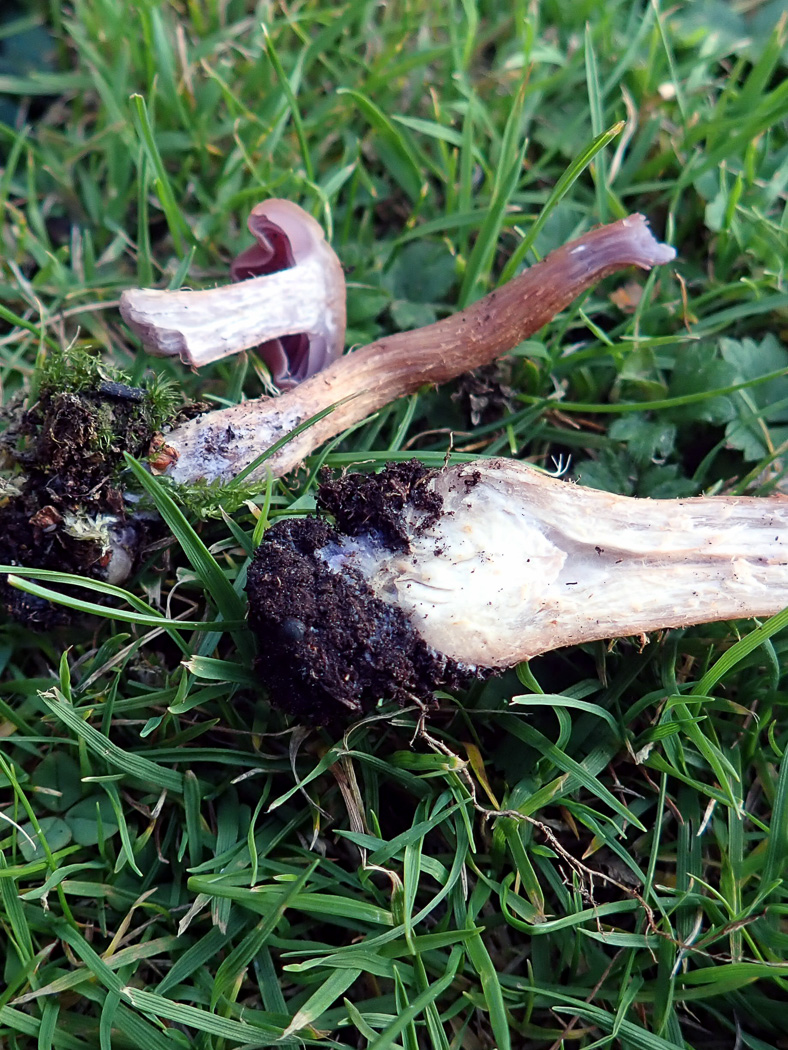 |
September 29th Laccaria bicolor (Bicoloured Deceiver) 
At Stoke Common and only a foot or so from the collection of Deceivers in the entry immediately below this one, Penny spotted some larger Deceivers which looked very different: the caps were duller and also more matt in appearance and the gills had a decidedly lilac-pink tinge. Penny immediately checked for the telltale lilac staining at the stem base of this much rarer species and at first was disappointed as several stems appeared to show no outward sign of it. She was rewarded with one that did, however, then investigated further by cutting a few stems open which revealed this colour in their flesh, especially at the base. At home the oval spores were correct for the species: just a bit smaller than in L. proxima, it being fortunate to have the two species handy to compare. We have just two previous county records of L. bicolor, from Burnham Beeches and rather surprisingly Naphill Common: it favours acidic soil under Pines, provided by both Stoke Common and Burnham Beeches, but Naphill Common?! See also Finds 2020 October 16th.
|
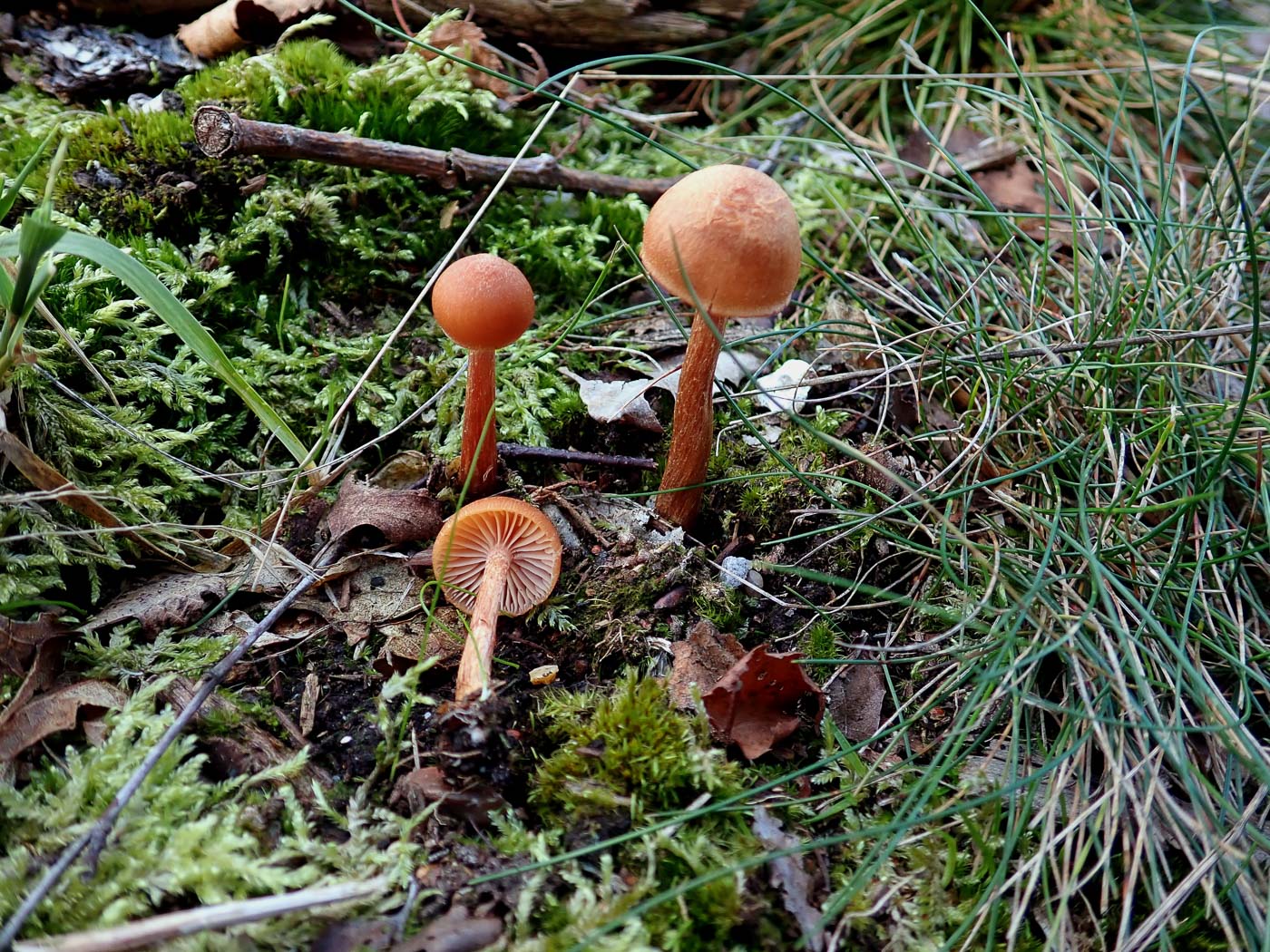 |
September 29th Laccaria proxima (Scurfy Deceiver) 
At Stoke Common in a mossy clearing Penny noticed this small clump of Deceivers just emerging and made the assumption from their small size and smoothish caps that these were the normally very common Laccaria laccata (Deceiver) - though we've hardly seen it yet this autumn. However, this heathland site is just the type of habitat where L. proxima might occur, so the collection went in a pot and later the distinctly oval spores showed it to be that species. Though still young, the fibrous stem seen on the largest specimen here points to this species rather than the commoner one. See also in Finds 2020 October 18th and 2021 October 27th.
|
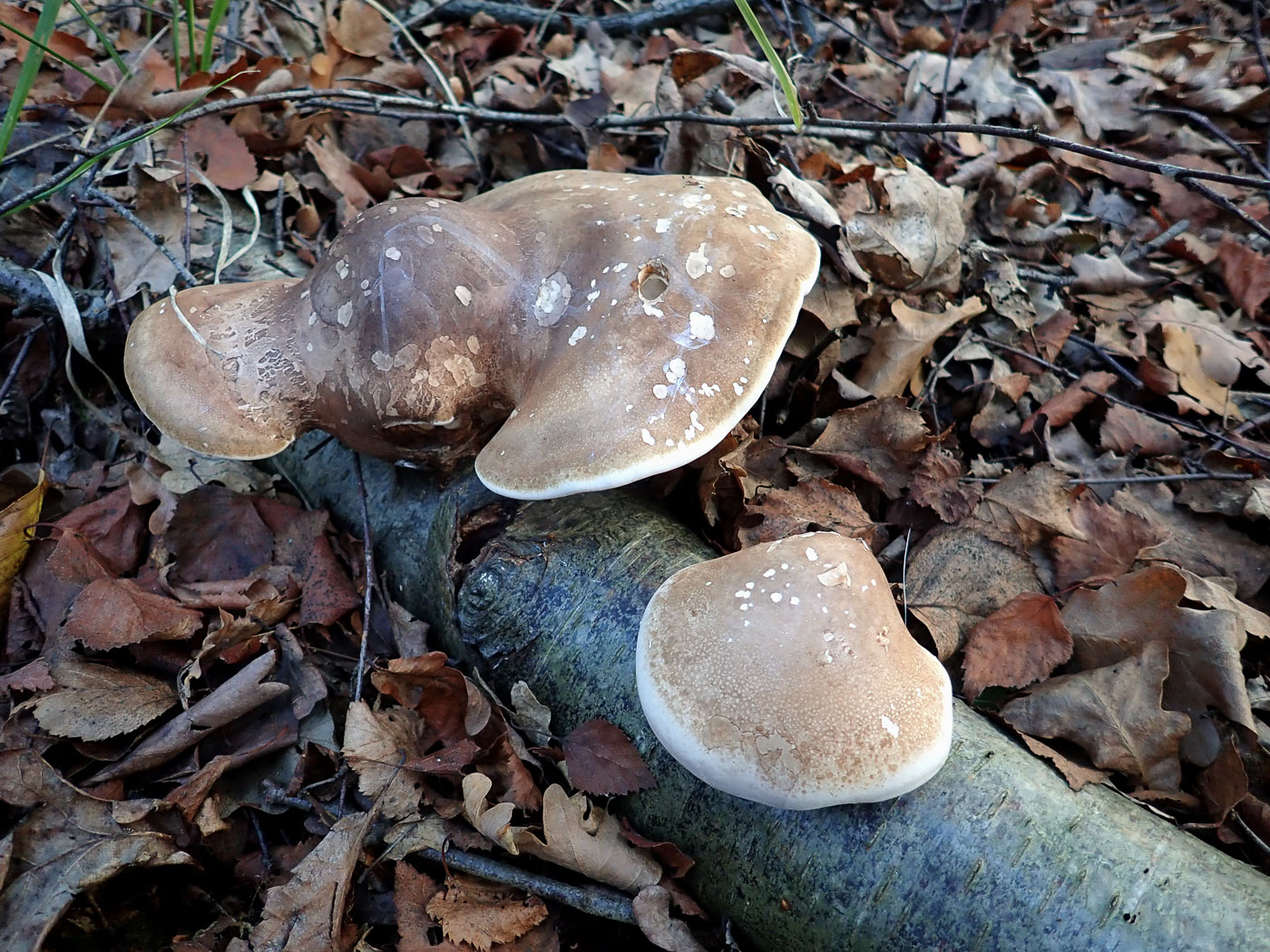
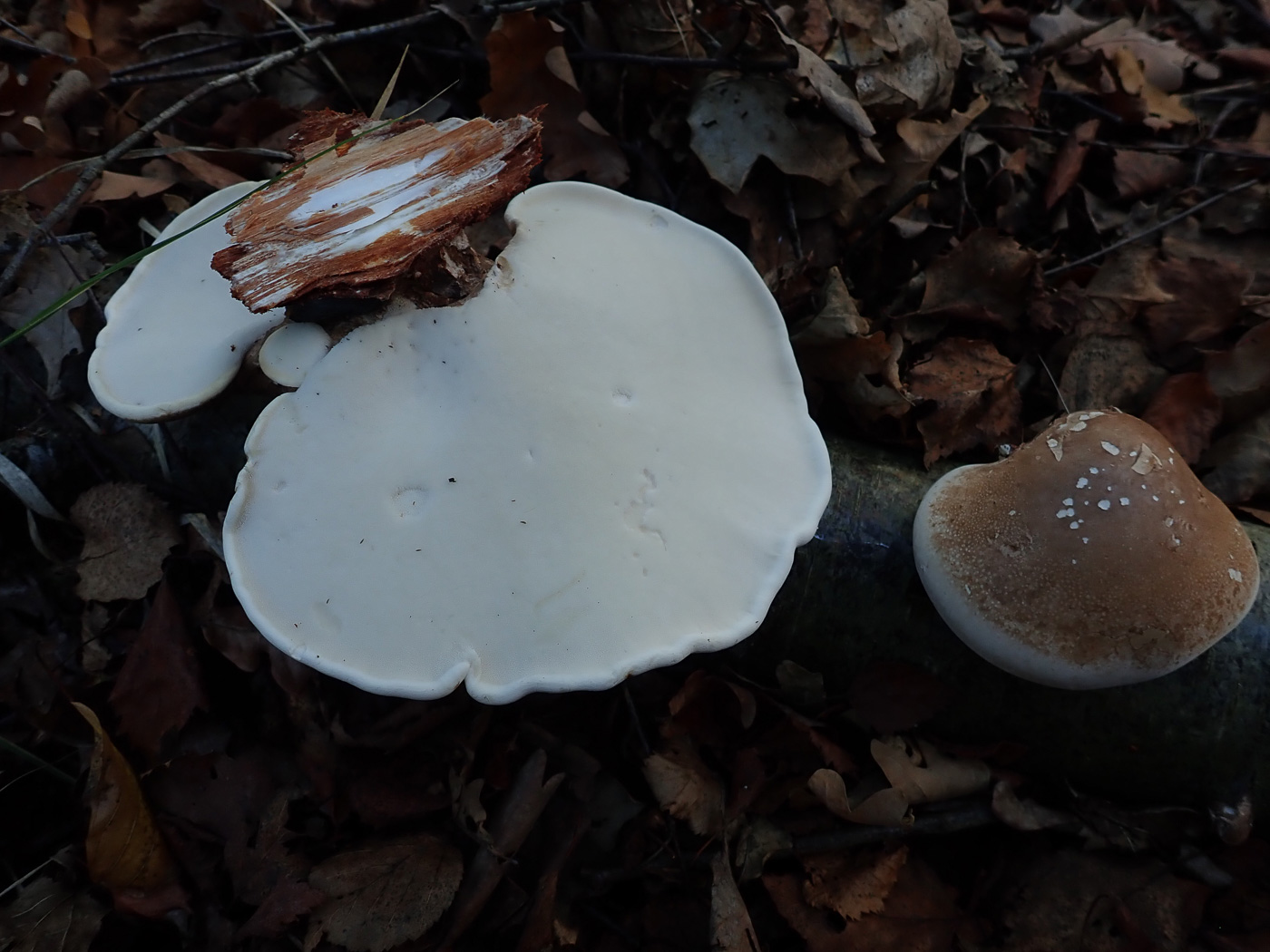 |
September 29th Fomitopsis betulina (Birch Polypore)
This is a species which abounds on the many Birches at Stoke Common, found today by Penny. Previously, and more familiar, in genus Piptoporus, the brackets are easily recognisable when well developed as here, but often seem to catch people out when young, pure white and looking more like a puffball! See also in Finds 2020 September 18th and 2022 January 17th.
|
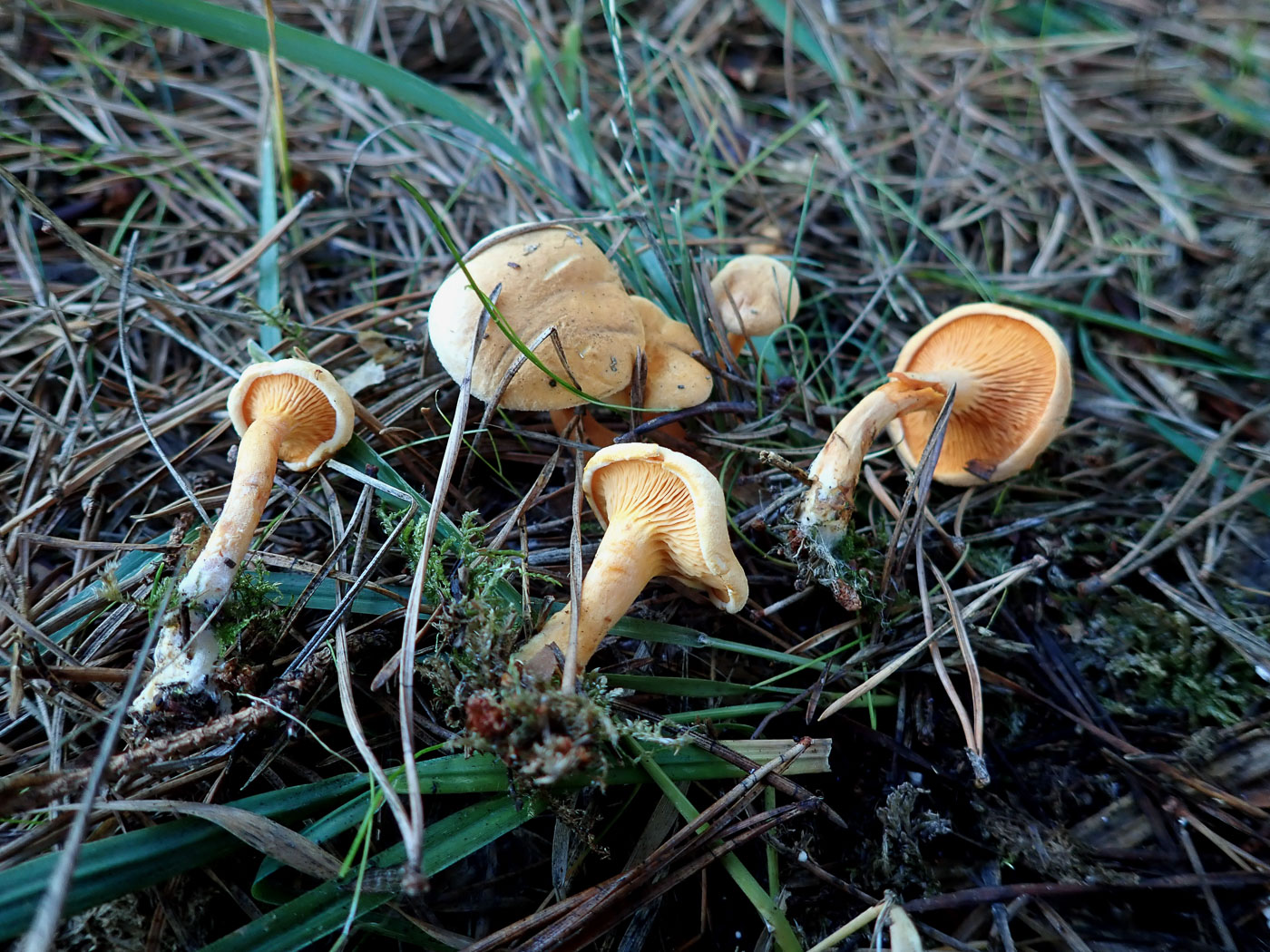
 |
September 29th Hygrophoropsis aurantiaca (False Chanterelle)
In the areas with Pine this was the more prolific species at Stoke Common found by Penny, though all were small and young as seen here. See in Finds October 27th and November 7th for more information about the species.
|
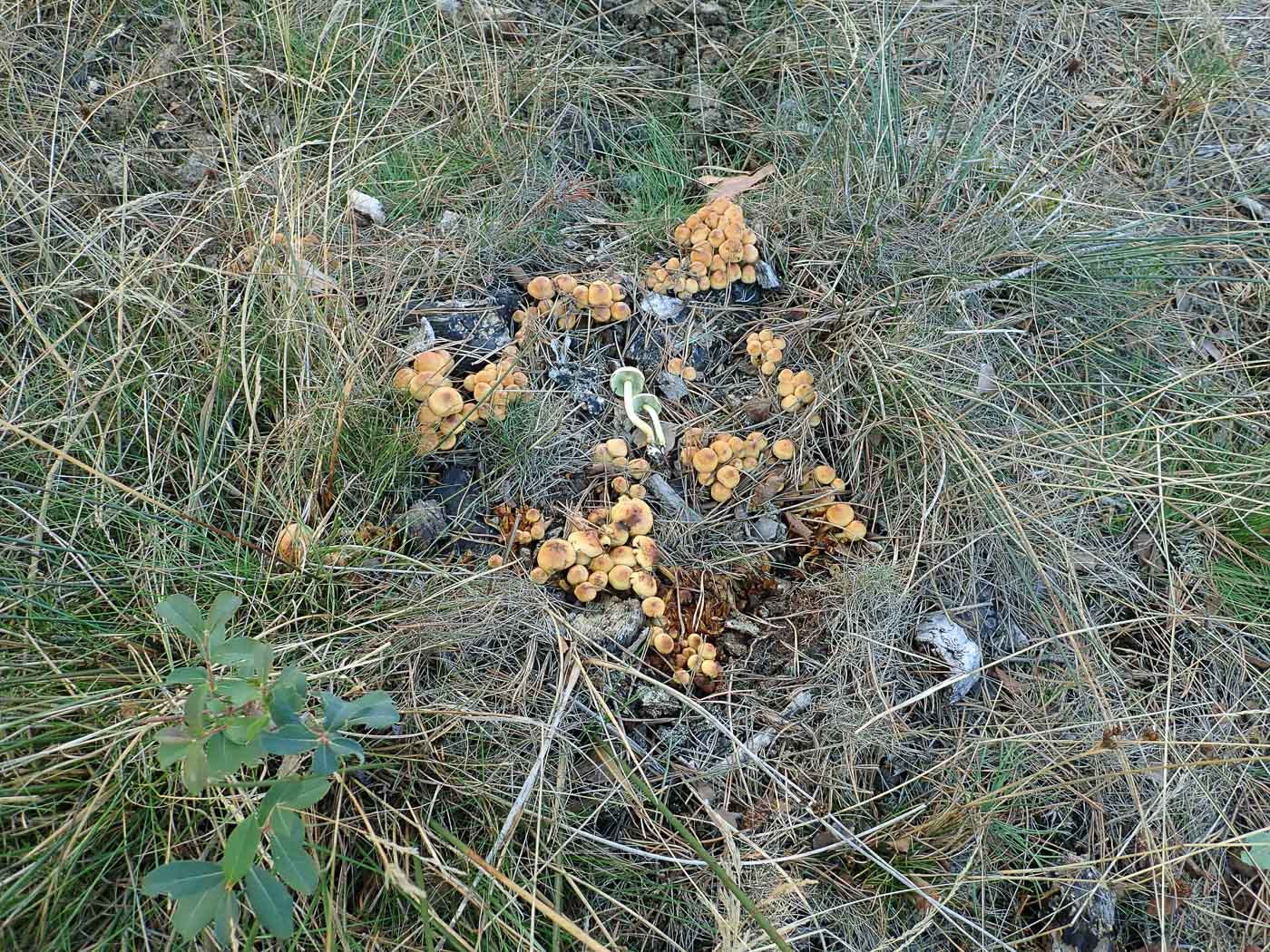
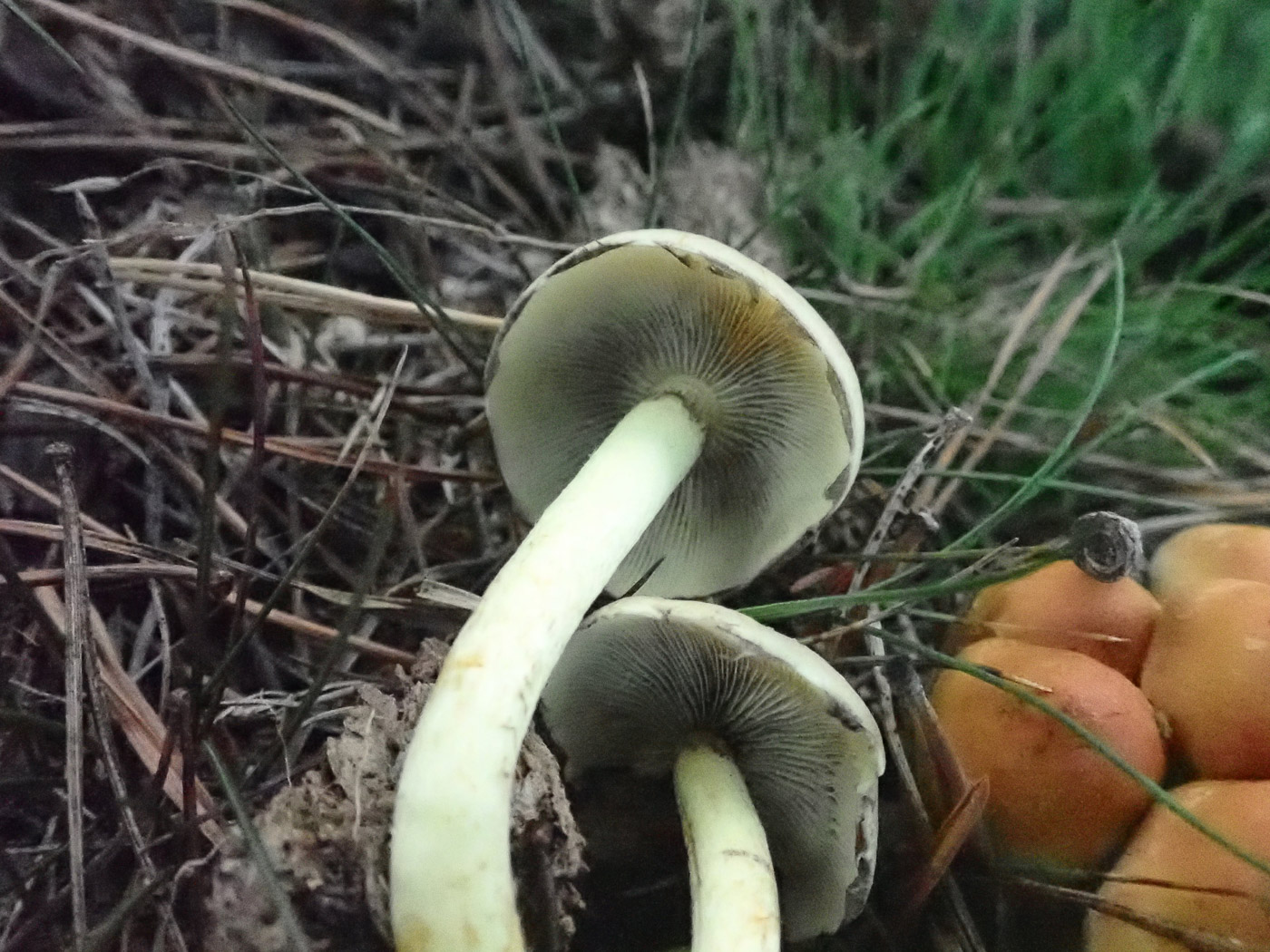 |
September 29th Hypholoma fasciculare (Sulphur Tuft)
At Stoke Common on a Pine stump Penny was pleased to find a decent sized fresh clump of this very common species which has been conspicuous by its absence recently. In photo 2 note the grey-black remnants on the cap margin, also how the pale sulphur gills are already darkening as the black spores mature and colour them. Not surprisingly we have quite a few entries in Finds - see the Masterlist for details.
|

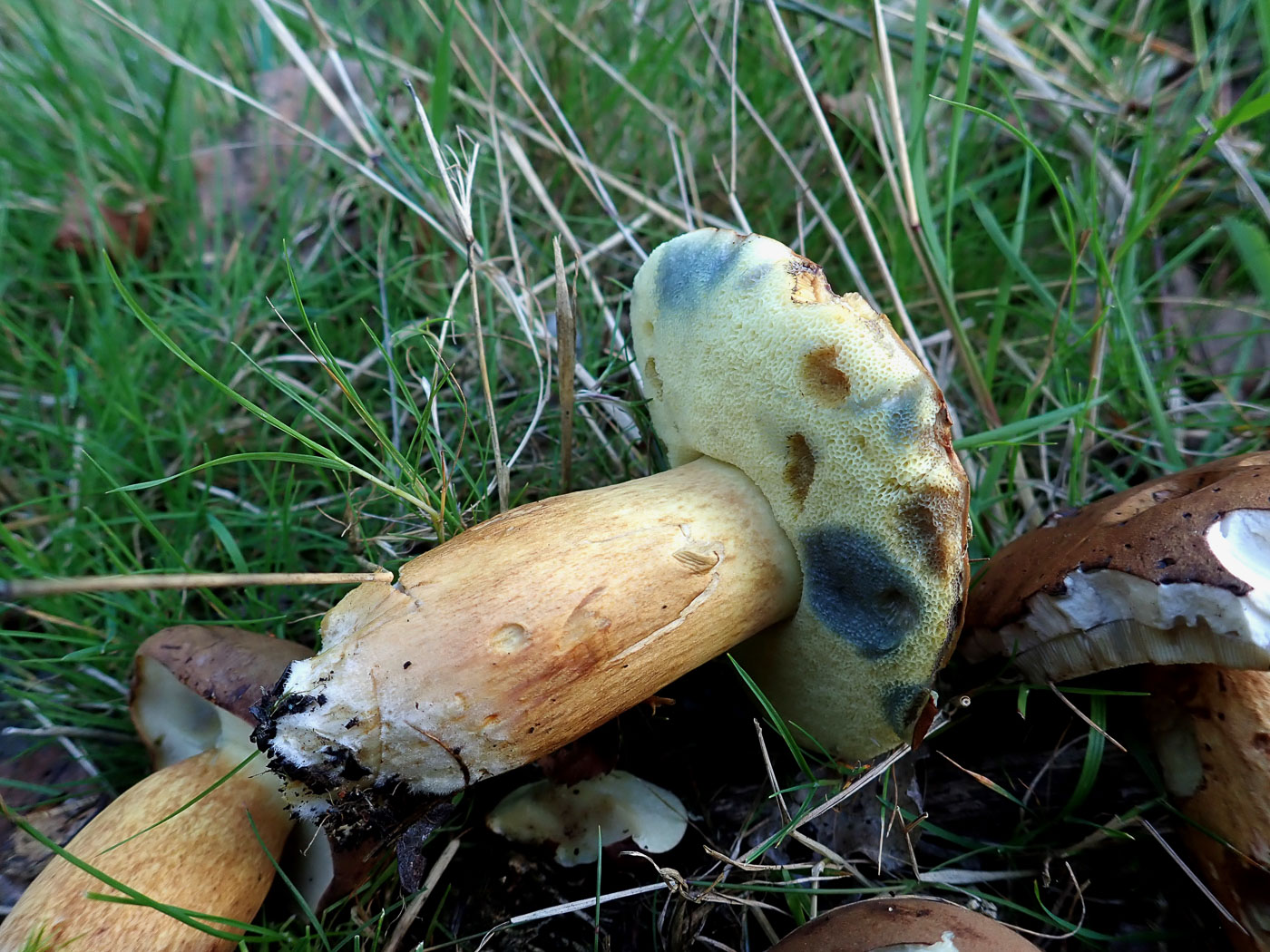 |
September 29th Imleria badia (Bay Bolete)
Under a mix of Pine and Birch at Stoke Common Penny found these few Boletes - the only examples she saw. This is one of the easier Boletes to recognise, having a smooth firm bay brown cap, a stem which is also brown though paler, and pale yellow pores which readily bruise greenish blue (though the younger examples today seemed reluctant to do so). Note how one of the caps is spmewhat nibbled - not surprising as there are so few fungi about for the small mammals to enjoy at the moment. See other entries in Finds: 2020 September 15th and 2021 October 27th.
|
September 28th 2022

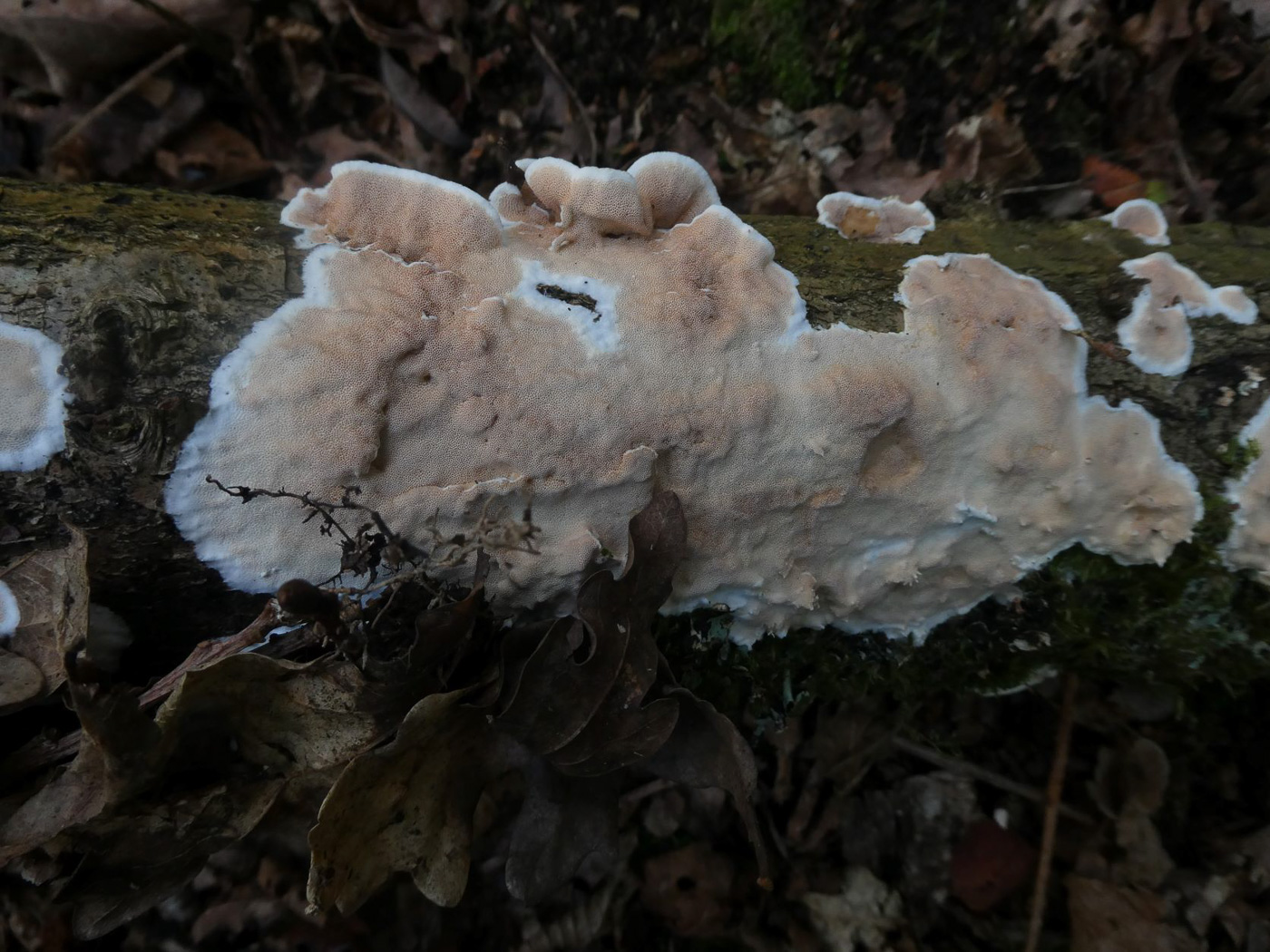
 |
September 28th Gloeoporus dichrous (Bicoloured Bracket) 
On a fallen deciduous branch in Gerrards Cross Common Jim Wills noticed this distinctive 'semicorticioid' species, and having just acquired a specialist book which covers such fungi he took it home to work on. The spores of this rare species are quite distinctive as well as the pink finely pored surface which has a white border, and Penny is happy to accept his determination. We have just 5 previous county records, so this is a nice find and a sample will be retained for sequencing.
|
September 27th 2022
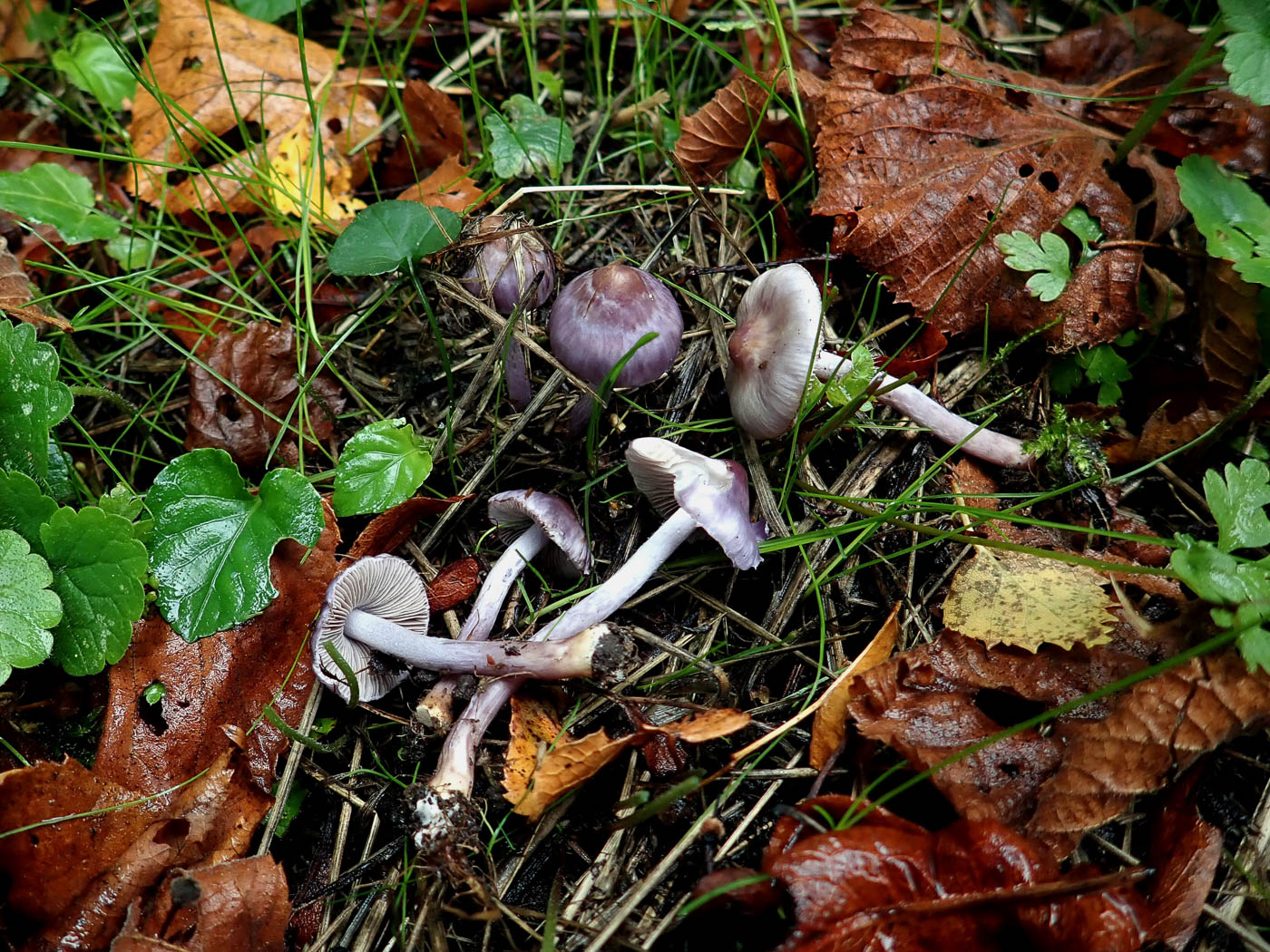 |
September 27th Inocybe tyrii (a recently described Fibrecap) 
In soil in the Lime avenue at Turville Heath Penny collected this lilac Fibrecap which appears to all intents and purposes identical (both macro - and microscopically) to the very common I. lilacina (Lilac Fibrecap). However, knowing of the existence of several lilac look-alike Fibrecap species recently described from Europe, she sent today's collection for sequencing which then confirmed it as not I. lilacina but I. tyrii and as such the first UK record. With the knowledge available so far about this species she defies anyone to recognise it as different from I. lilacina without recourse to sequencing!
|
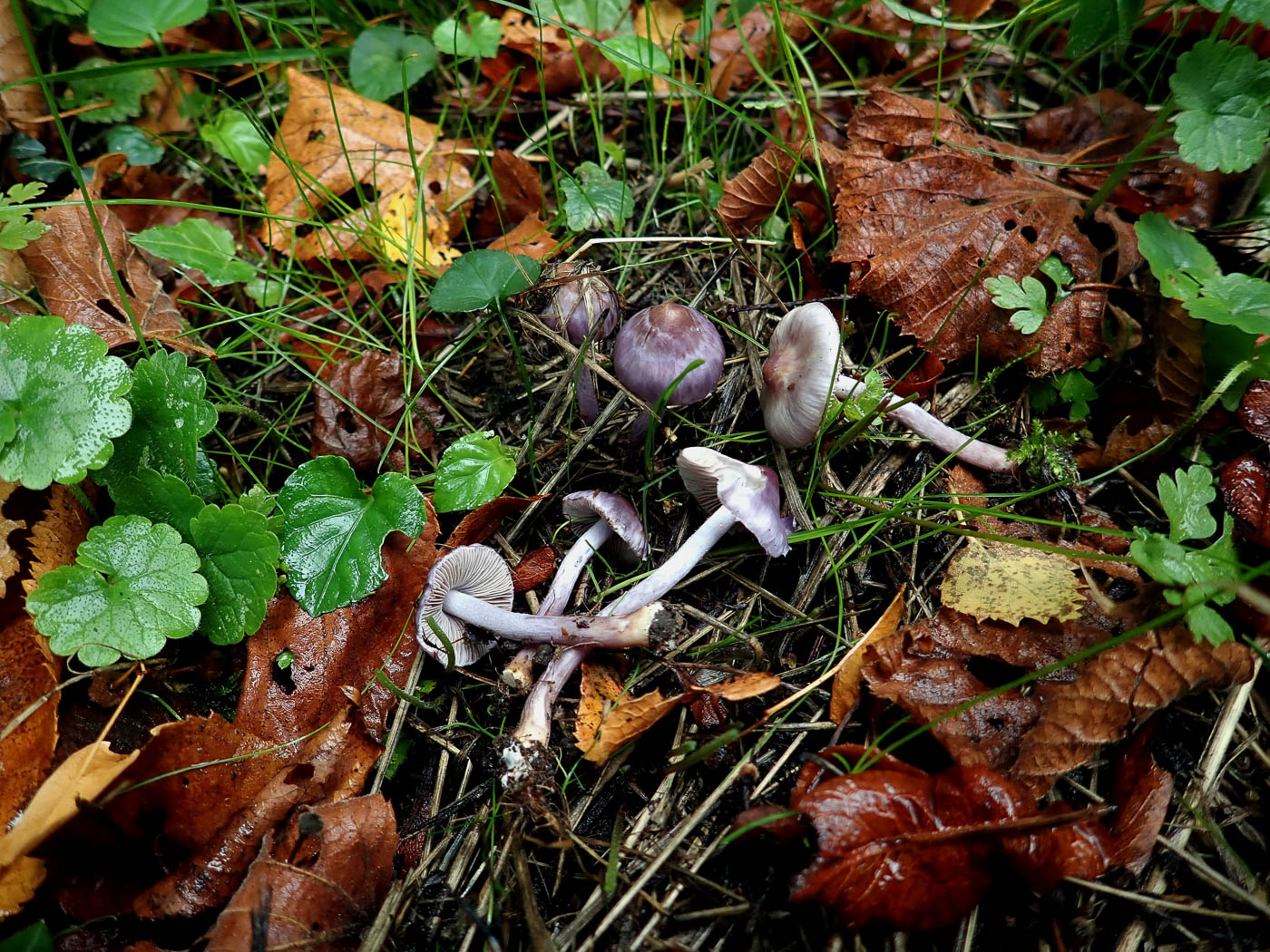 |
September 27th Inocybe lilacina (Lilac Fibrecap) 
At Turville Heath in the avenue of Limes Penny was delighted to find several species of her favourite genera, the Fibrecaps, at last making an appearance this autumn. At the moment the distinctive Lilac Fibrecap is one of the very few one can fairly safely name in the field, though it is likely that when more DNA research is done this won't be the case: we probably have several cryptic species lurking under this name in Europe. We have two other entries in Finds: 2020 September 22nd and 2021 October 5th.
|
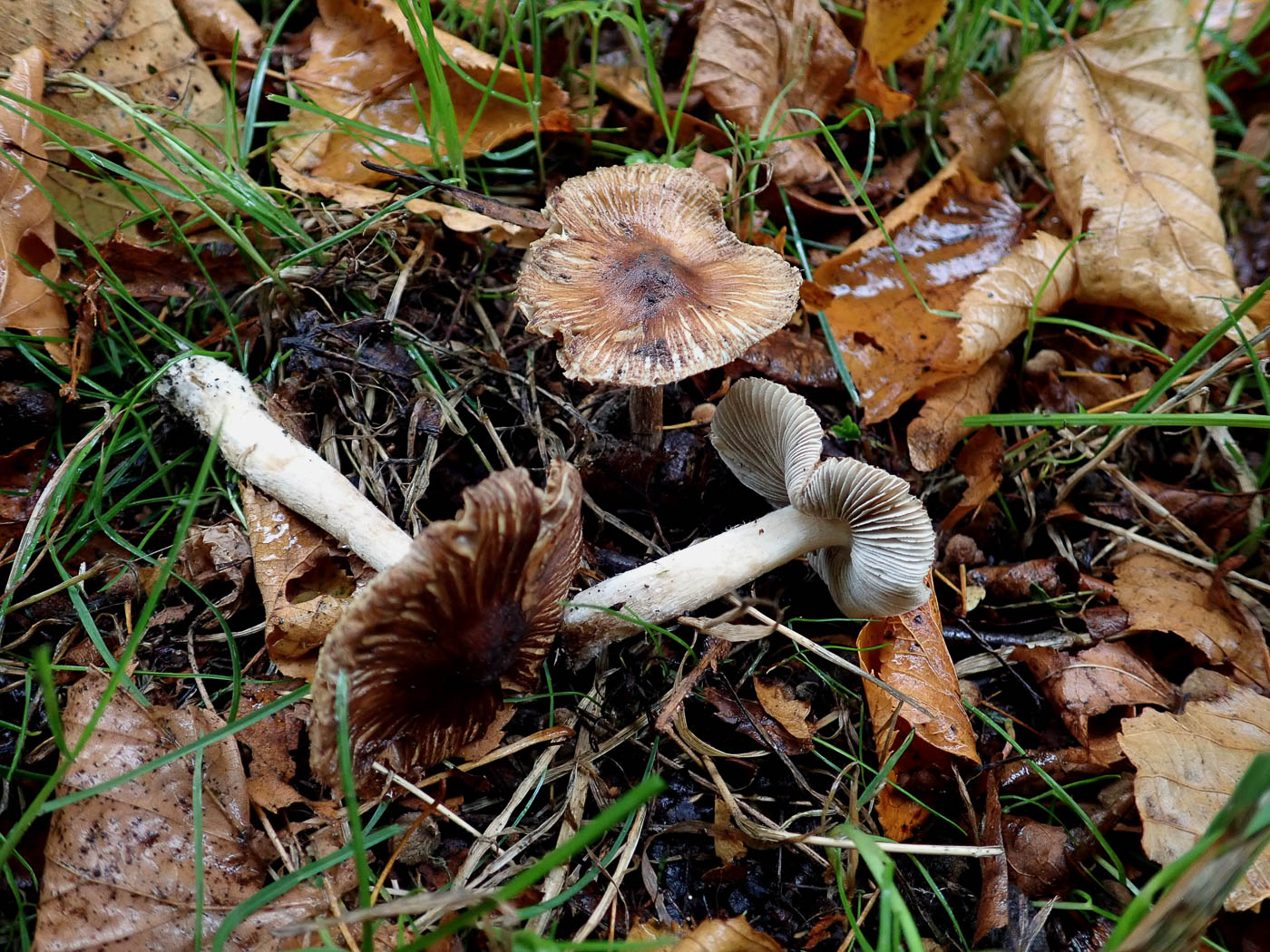 |
September 27th Pseudosperma umbrinellum (a Fibrecap with no common name) 
Under the Limes at Turville Heath Penny found this rare Fibrecap - previously in genus Inocybe and only in recent years split from the much more coomon Pseudosperma (previously Inocybe) rimosum. It's typically radially splitting cap showing contrast between the brown fibres and pale flesh beneath is a feature of many Fibrecaps though by no means all, and this large group of species virtually always needs identifying with a scope. Penny has found this species just once before in the county though wouldn't like to guarantee it was correct: today's collection is certainly one for sequencing.
|
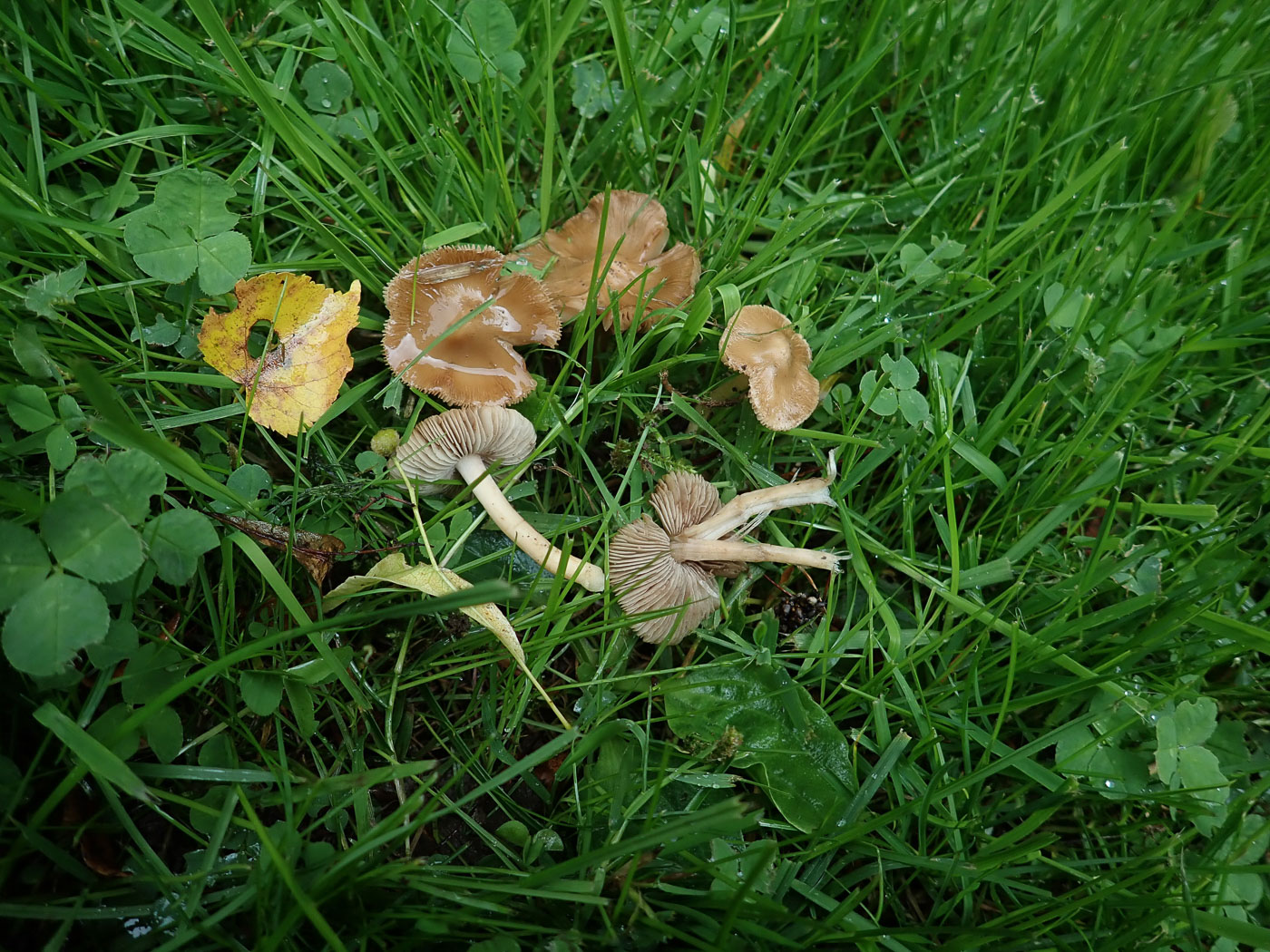 |
September 27th Inocybe putilla (a Fibrecap with no common name) 
Under the Limes at Turville Heath Penny found this rare Fibrecap, one which, as with the previous species, she's identified just once previously in the county but wouldn't like to guarantee it was correct. Though its shape and gill colour are typical of the genus, the fibrous cap surface remains more or less intact rather than radially splitting compared with the species above, and the microscopic characters are completely different. This is another collection to be dried for sequencing.
|
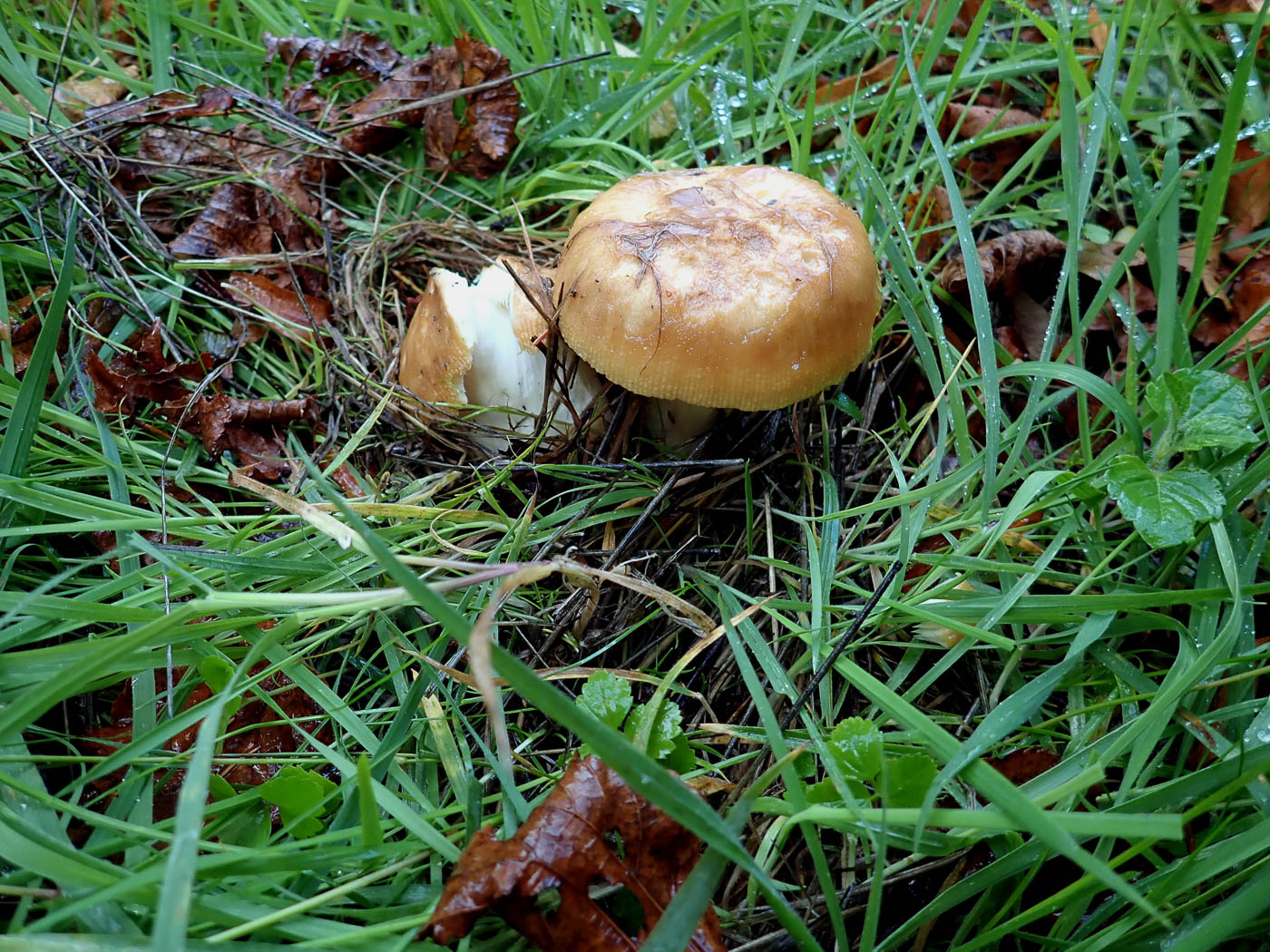
 |
September 27th Russula foetens (Stinking Brittlegill)
Under Oak at Turville Heath Penny found just these two fruitbodies pushing up close together through the wet grass. The broken specimen on the left was then extracted to show the underside (photo 2). Though commonly recorded, the species is less common in the south than the (just as unpleasantly smelly) R. subfoetens (Least Stinking Brittlegill). The chunky size, golden brown and slightly striate sticky cap especially in damp weather and unpleasant rancid oily smell are common to both species, making them pretty well inseparable in the field unless you have a bottle of KOH to hand. At home Penny added a drop to the stem flesh which failed to turn golden yellow (an indication of R. subfoetens) and instead turned dirty brown, confirming this as R. foetens - a first for Finds. No doubt our many county records of this species are in fact a mix of the two. See the Masterlist to compare with entries of R. subfoetens.
|
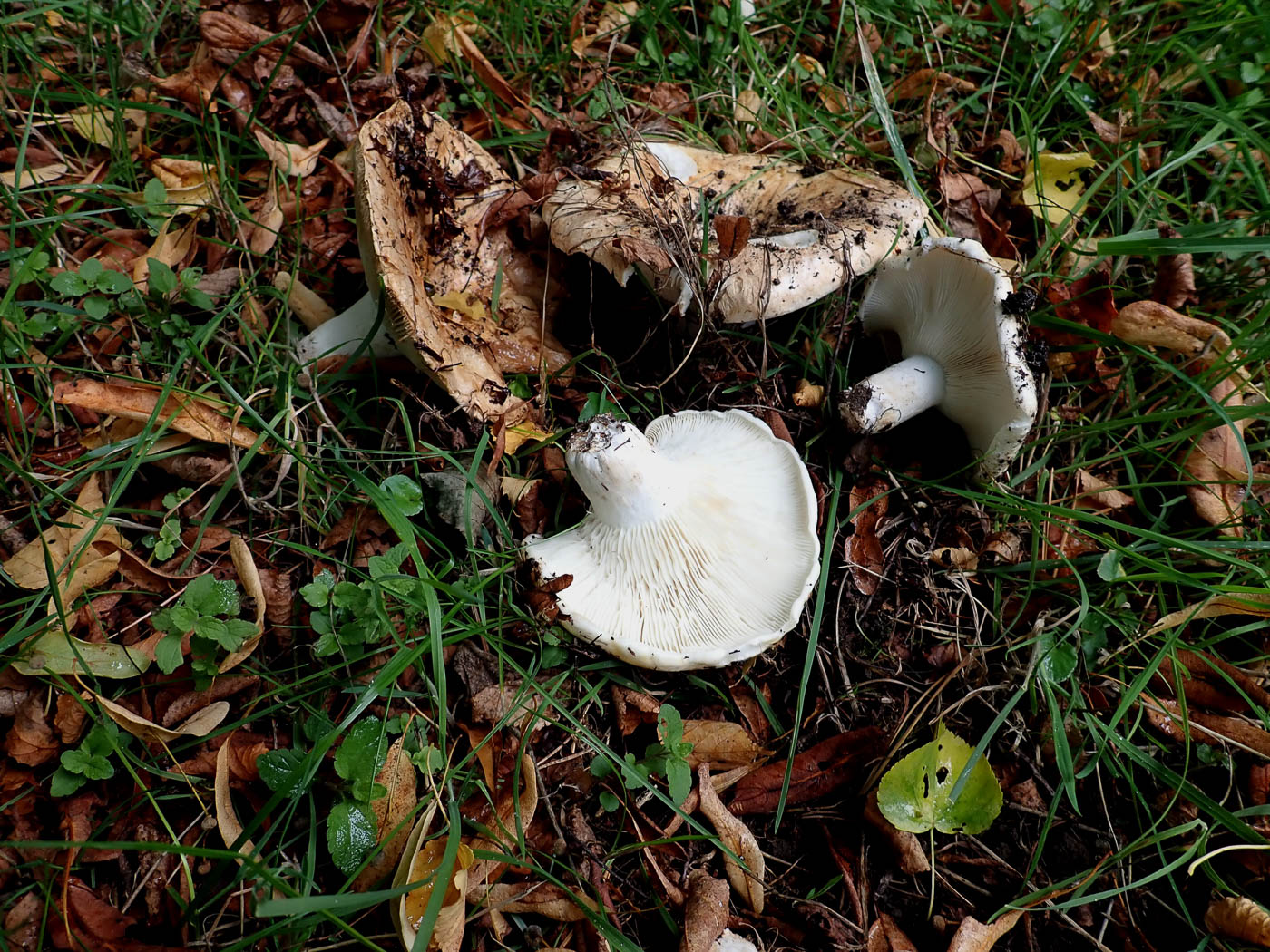
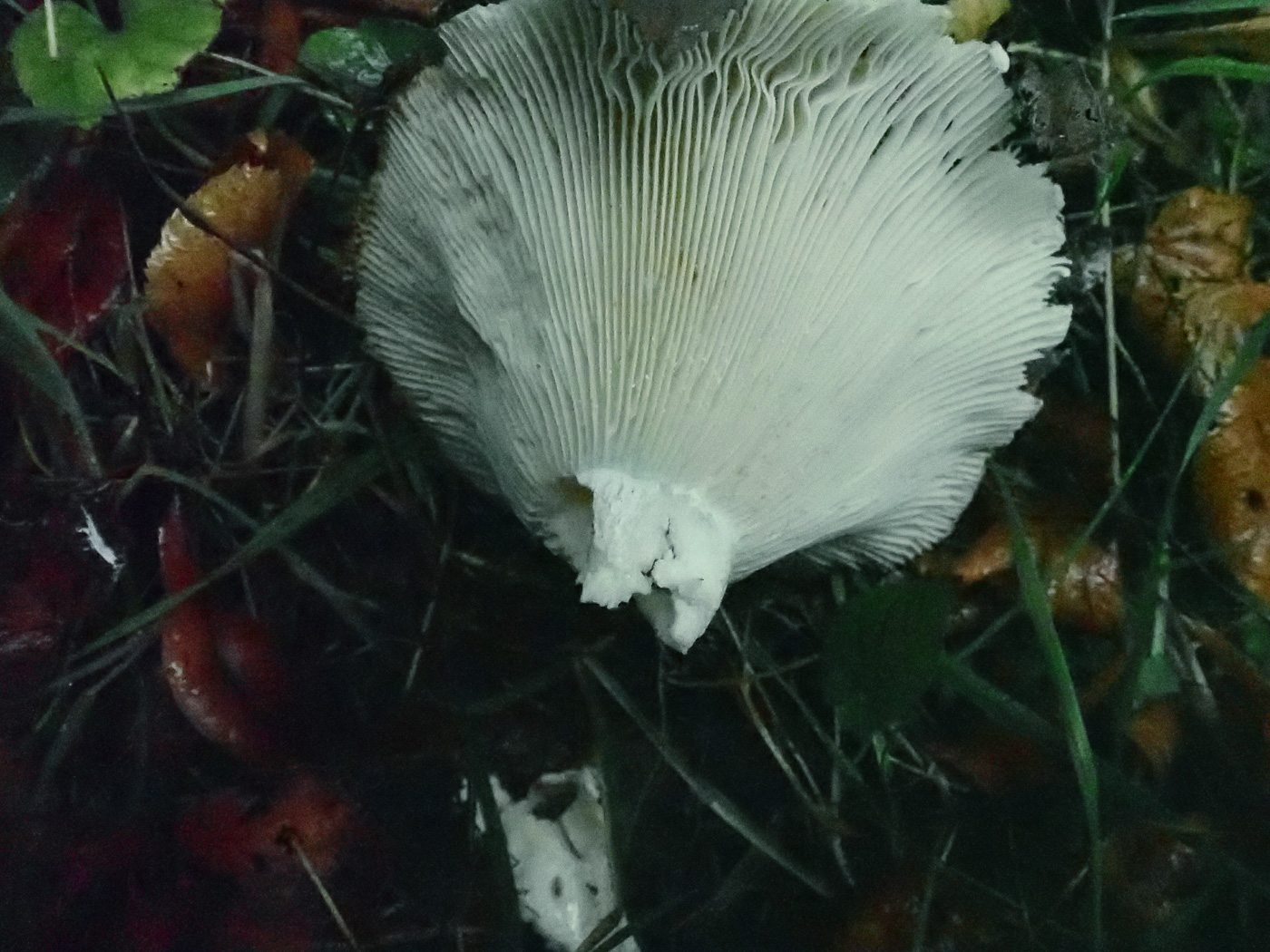 |
September 27th Russula chloroides (Blue Band Brittlegill)
Under the limes at Turville Heath Penny found at least 7 or 8 specimens is this occasional species dotted about, the caps mostly covered with bits of soil and grass remnants. A chunky solid species having a very short stem and crowded gills, it is often pure white both above and below - though here the caps were mostly pale beige - and if you're lucky you find one displaying the blue-green band at the stem apex which separates it from the very similar R. delica (Milk White Brittlegill). Photo 2 is of an example Penny eventually found showing a faint greenish band though sadly her camera refused to detect it very convincingly! Our other example on Finds shows it nicely though: see 2020 Sept 21st.
|
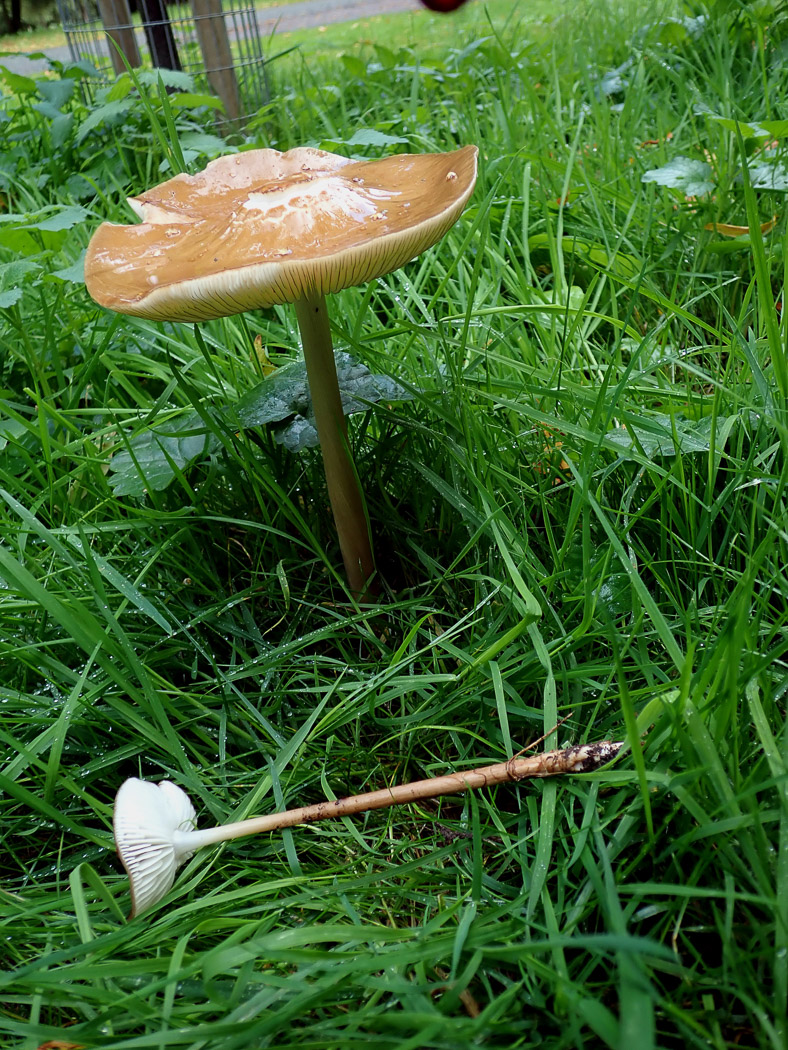
 |
September 27th Hymenopellis radicata (Rooting Toughshank)
In longish grass near a recently planted Lime at Turville Heath Penny found the biggest specimen of this species she'd ever seen! Much more familiar by its previous genus name Xerula, it was standing proud imitating a fully grown Parasol, the cap probably 15 cm across and stem even more than that - amazing. Nearby were two others of normal proportions, and one she dug up to confirm it had the typical long straight root and wide-spaced white gills of the species. Even at this size, the cap is showing the telltale radial wrinkles and slimy coating when wet as seen here. This is a common species which grows on deciduous roots, very often on Beech. See also on Finds: 2020 Sept 22nd and 2021 July 28th.
|
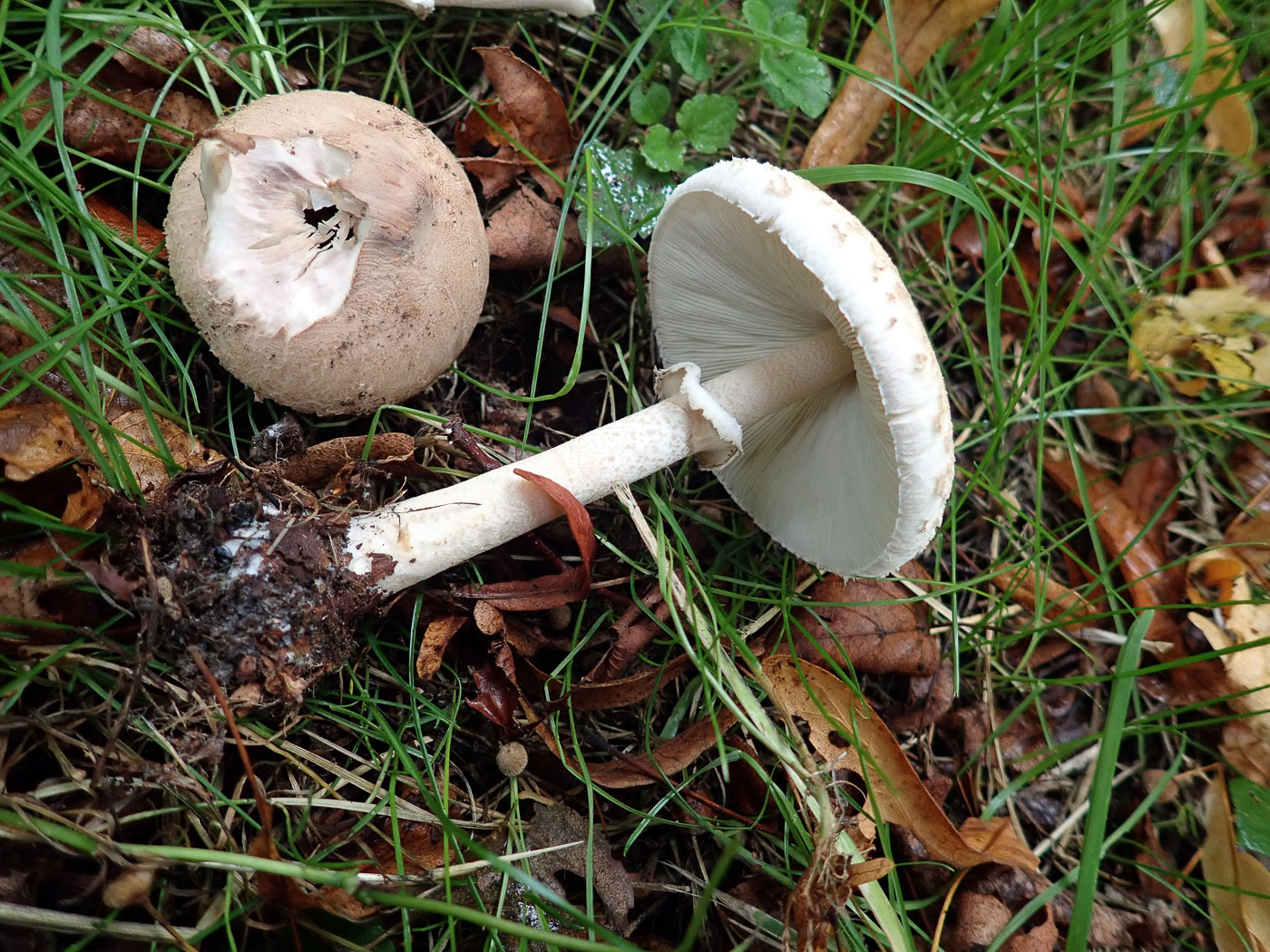
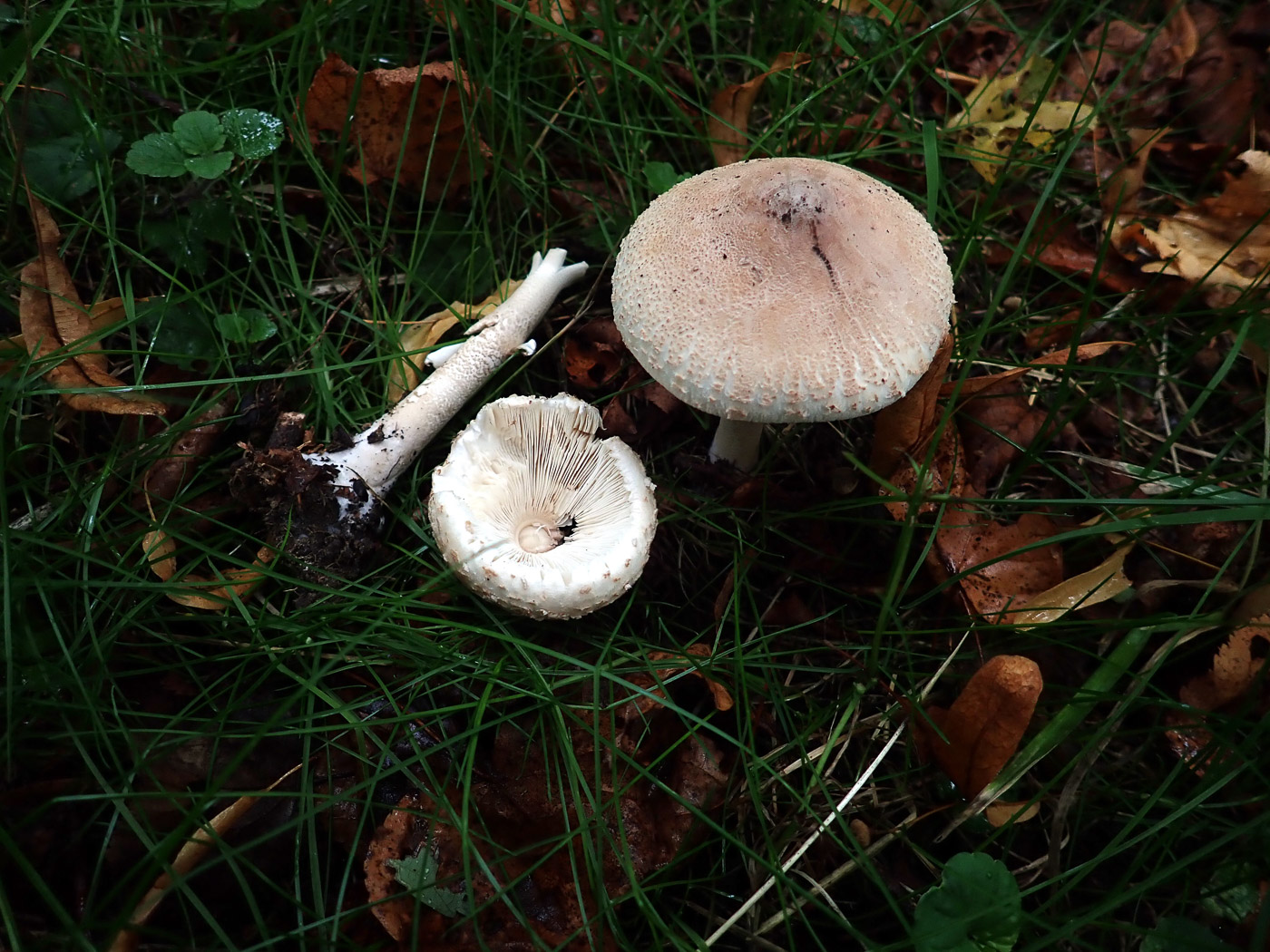 |
September 27th Macrolepiota mastoidea (Slender Parasol)
Under the Limes at Turville Heath Penny spotted a broken specimen of this species, then a standing specimen, and though both were on the small side for a Parasol - the larger cap probably 6-7 cm across - and not fully developed, the pale cap markings with a subtle hint of pink flesh colour, also the bulb, the ring and the pale snakeskin markings on the stem, left her sure of its identity. When mature the cap has a distinct central 'nipple', not yet developed here. The species is less common than our familiar Parasol and Shaggy Parasol. See also on Finds: 2020 Sept 10th and 2021 October 8th.
|
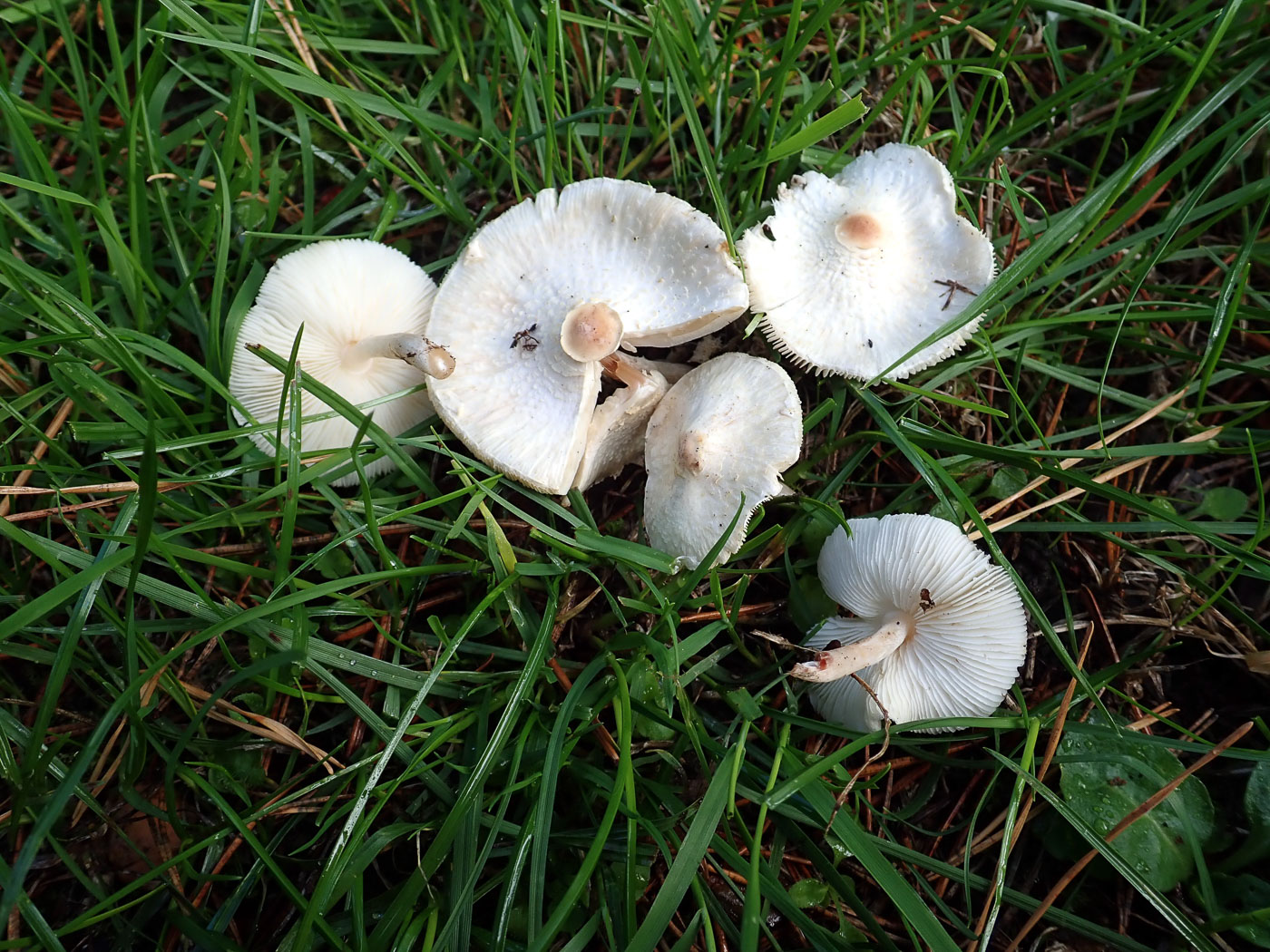
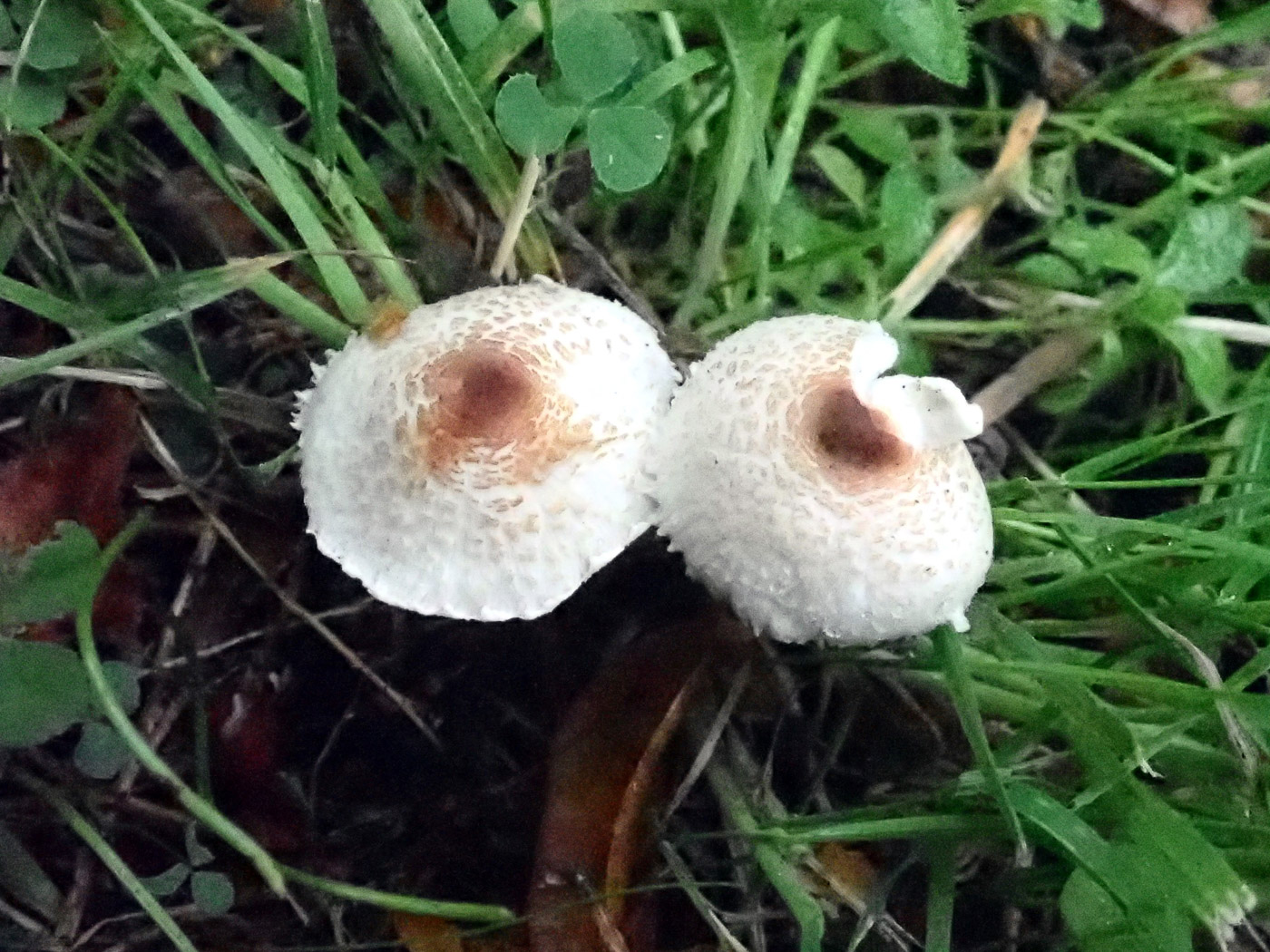 |
September 27th Lepiota cristata (Stinking Dapperling) 
In the middle of a grassy track at Turville Heath Penny spotted this cluster of small very pale Dapperlings which to her appeared extemely pale for L. cristata (photo1). On collection, however, the unmistakeable smell of that species was present though she knew that a few others in this genus also share that smell. Later on in a less exposed spot she found two more (photo 2) which looked exactly right for the species, having the brown centre gradually splitting up in decreasing patches over the cap surface, also a ring on the stem. At home both collections revealed the same spores and gill cells, proving yet again how one species can vary from collection to collection. See the Masterlist for further examples.
|
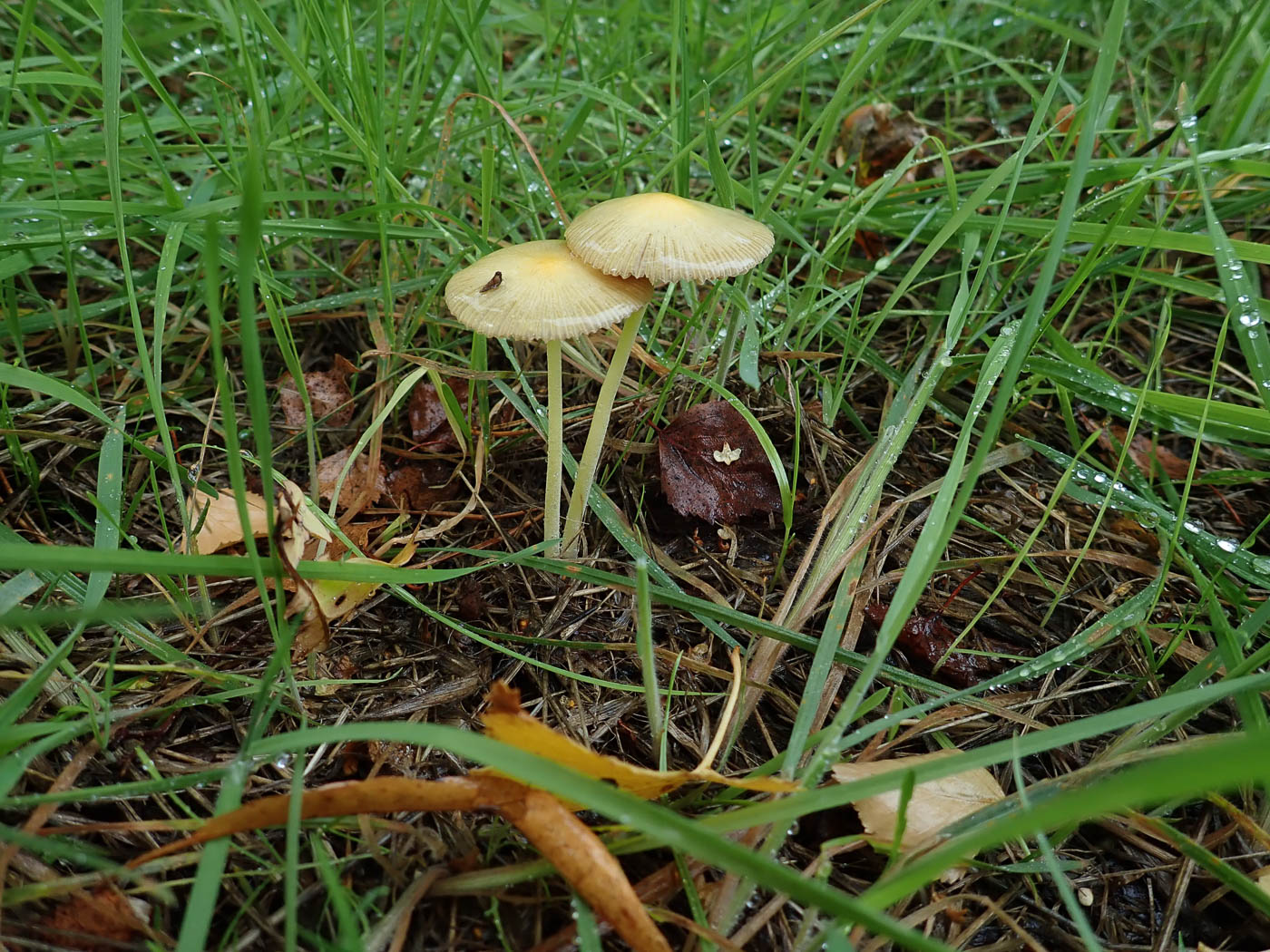
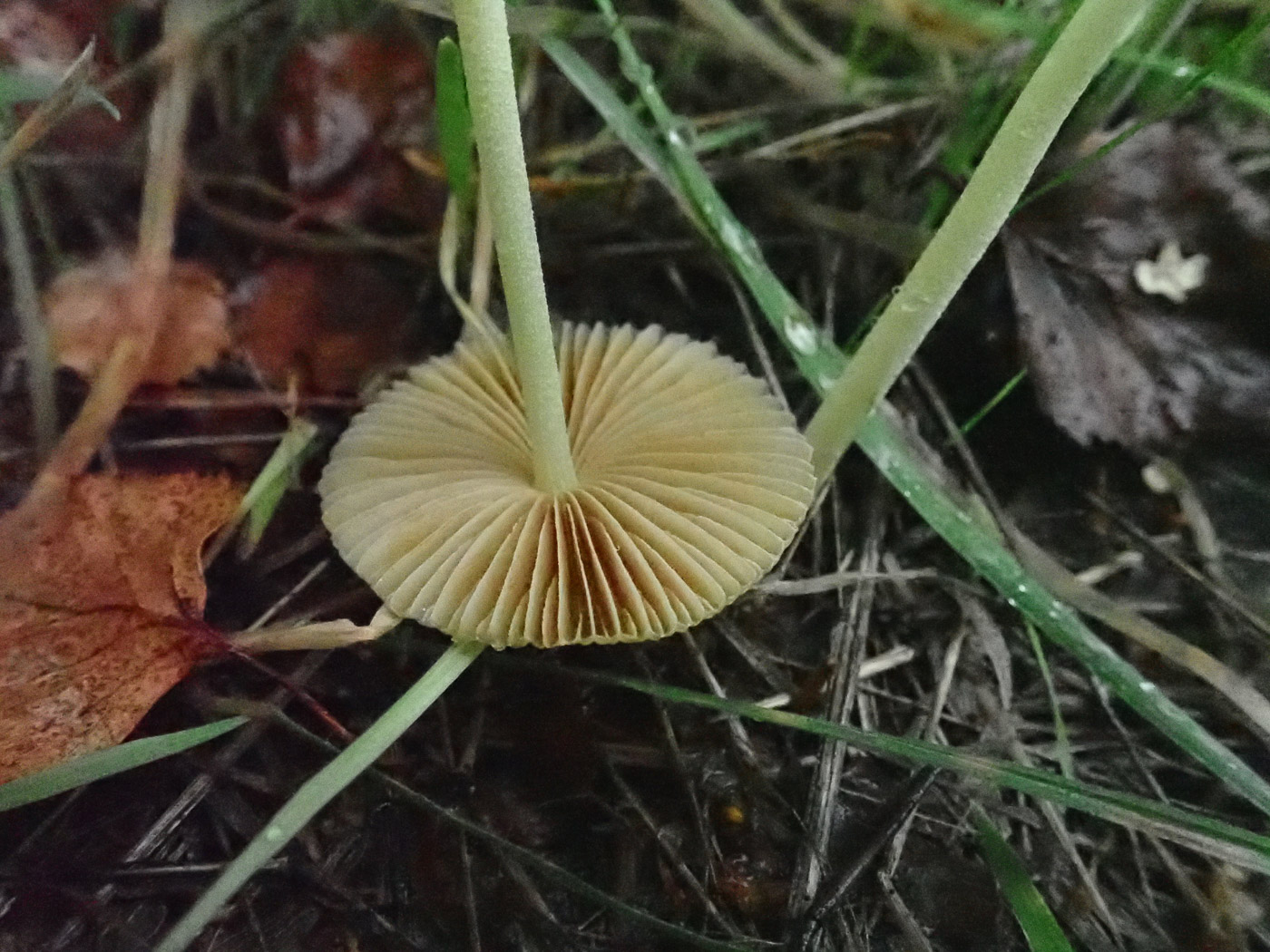 |
September 27th Bolbitius titubans (Yellow Fieldcap)
In longish grass at Turville Heath Penny found this nice pair glistening in the light rain and couldn't resist the photo. When mature as here only the centre of the cap remains egg yolk yellow, when its thin flesh and well spaced gills help to confirm its identity. We have quite a few other images in Finds, available via the Masterlist.
|
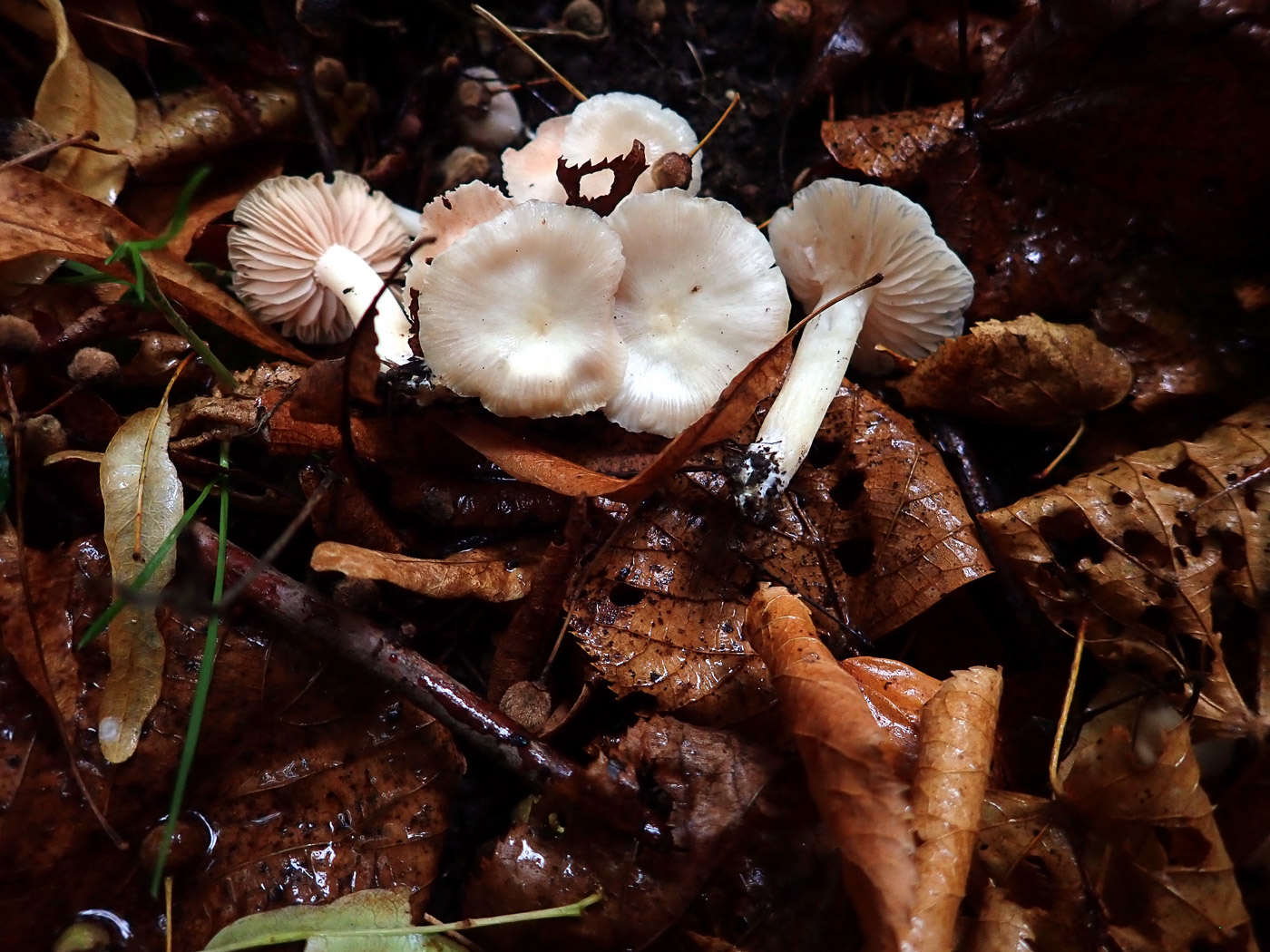
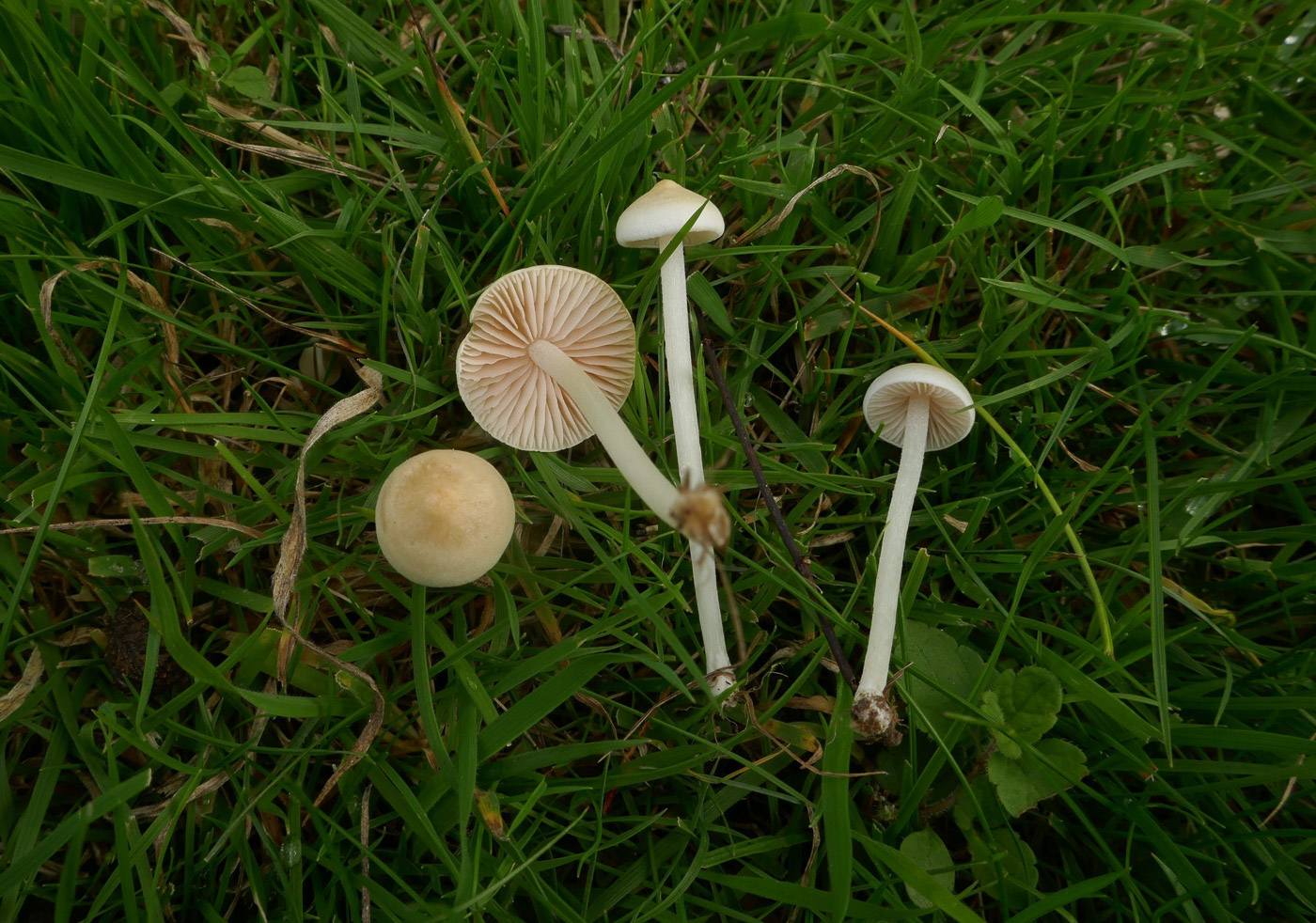 |
September 27th Entoloma sericellum (Cream Pinkgill) 
In the litter in the avenue of Limes at Turville Heath Penny noticed this group of small pale-capped mushrooms which had distinctly pink gills. At home the genus was confirmed by the spore shape - unique to Entoloma - and other microscopic features also confirmed the species, one of several having white to cream caps. Not rare, it can be found in grassland as well as woodland and this is its first entry for Finds. Photo 2 is of another collection found by Jackie Ewan at Stampwell Farm the day before Penny's. The number of times that happens ..............
|
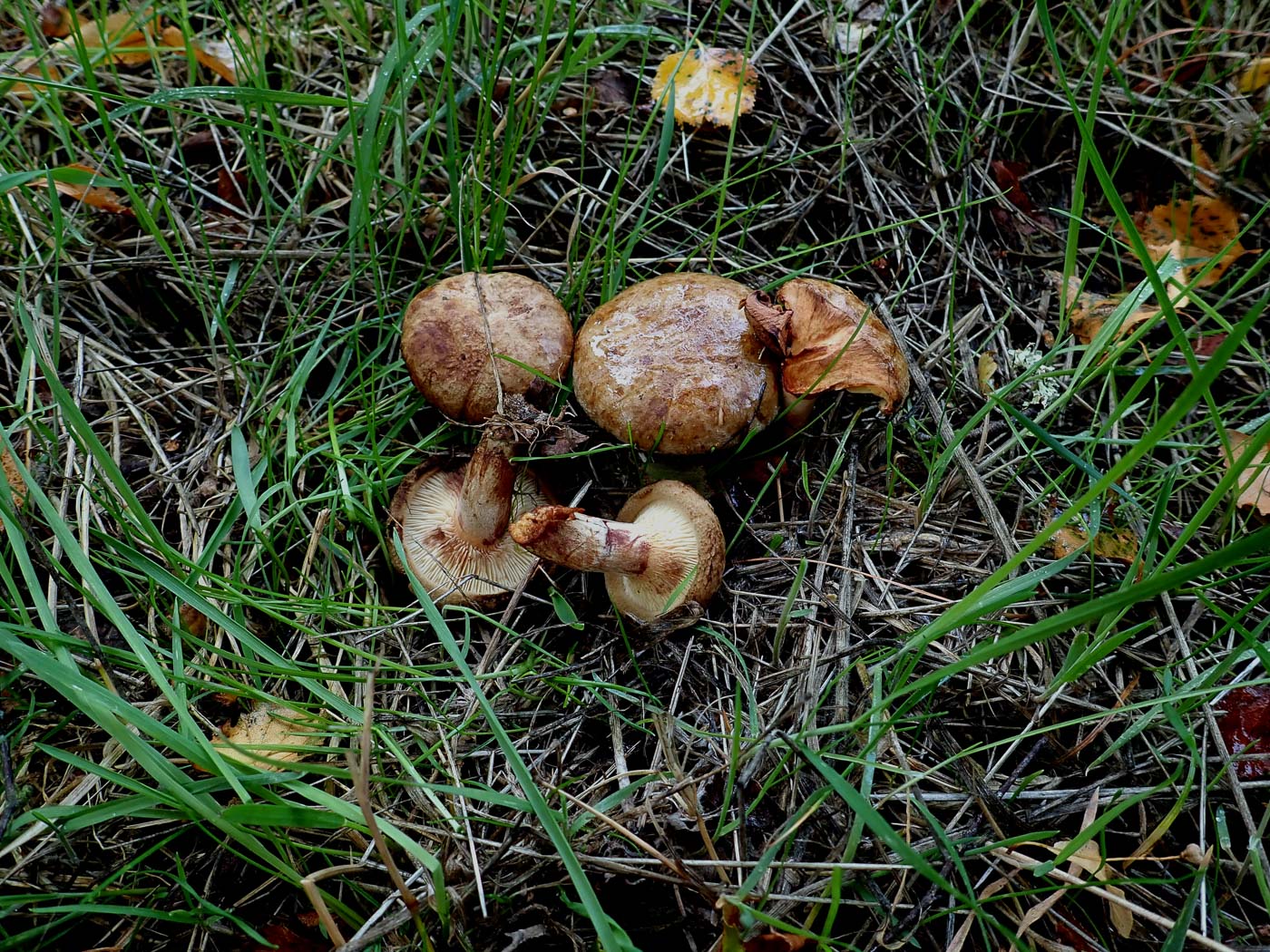
 |
September 27th Paxillus involutus (Brown Rollrim)
Under Birch at Turville Heath Penny found a few of these just emerging, and at this early stage of development showing their typical distinctive inrolled margin. The larger caps here were only 4 cm across, but when mature this common species can be impressively large with caps up to 15 cm across when no sign of the inrolled edge remains, making identification much less obvious. Photo 3 shows a more mature specimen found at Stoke Common by Penny a couple of days later. See Finds 2020 Sept 15th and 2021 October 27th for other examples.
|
September 25th 2022
 |
September 25th Agaricus impudicus (Tufted Wood Mushroom)
In Jordans village Jesper Launder found a couple of this Mushroom species just emerging. Very similar to A. silvaticus (Wood Mushroom) - and no doubt often mistaken for it, hence far less often recorded though equally as common - it tends to be bigger with more contrast between the white flesh and brown scales, also the flat brown central disc is usually pronounced as seen here. An important difference, however, is that the cap and stem when scratched turn neither red - as in A. silvaticus and many Mushrooms - nor yellow - also a feature of many species.
|



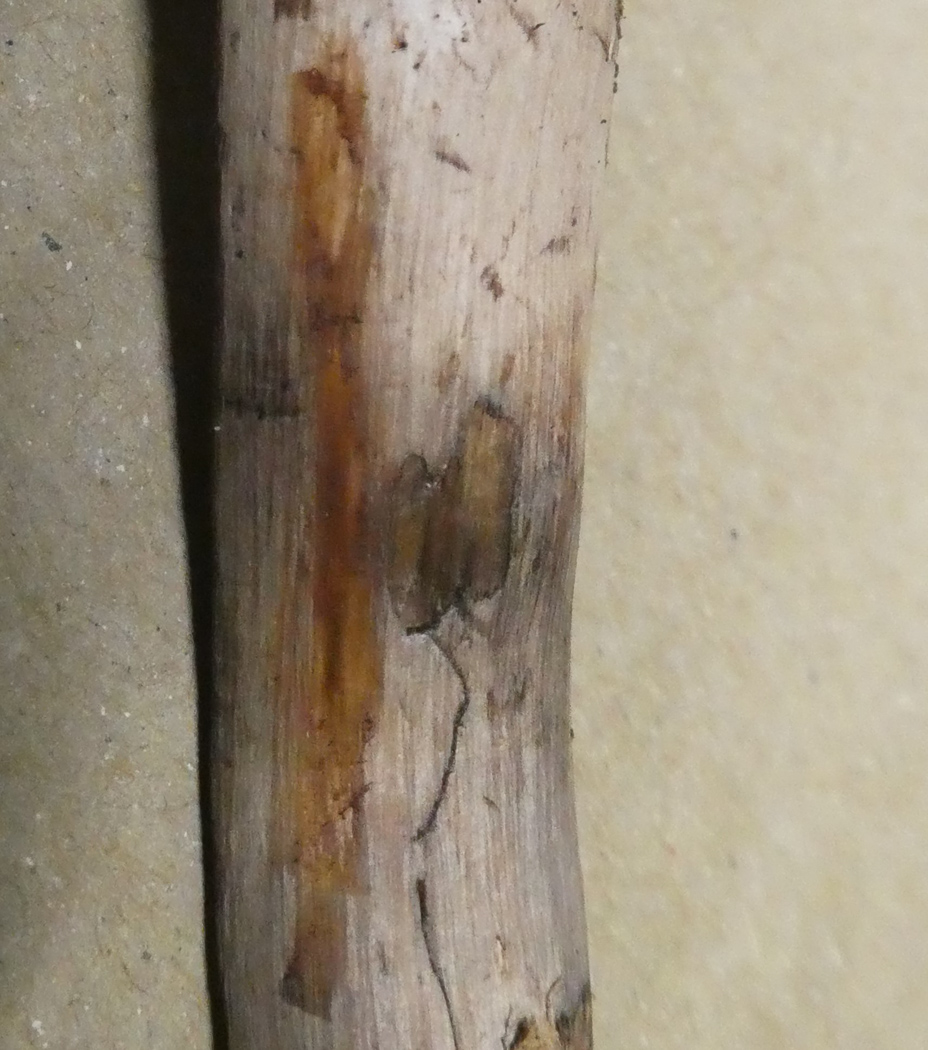 |
September 25th Chlorophyllum rhacodes (Shaggy Parasol)
In Austenwood Common nr Chalfont St. Peter Jim Wills found this Parasol and knew to watch for the telltale orange staining where damaged - seen on the stem here - to confirm that it was not the very similar Macrolepiota procera (Parasol). Both species are very common and often striking in appearance and though we've been seeing the Parasol quite a bit in recent weeks, it appears that this Shaggy Parasol has only just started fruiting. See the Masterlist for images of both these species for comparison.
|
September 24th 2022
 |
September 24th Russula sororia forma pseudoaffinis (a very rare form of Sepia Brittlegill) 
In Denham village under Lime Jesper Launder found this very unusual Brittlegill - one not recorded previously in the county. Very similar to R. sororia (which in turn is very similar to common R. amoenolens - found also today by Penny) it has a darker cap and the surface is not smooth but distinctly disrupted as seen here. Both forms of R. sororia are considered rare and can be separated from R. amoenolens by the Guaiac test: instant dark blue in R. amoenolens (see Penny's photo) but with a very slow negative colour change in both R. sororia and today's forma. The ID of today's find has been confirmed with DNA sequencing, also by Danish Russula expert Felix Hampe and will be sent to the Kew Fungarium.
|

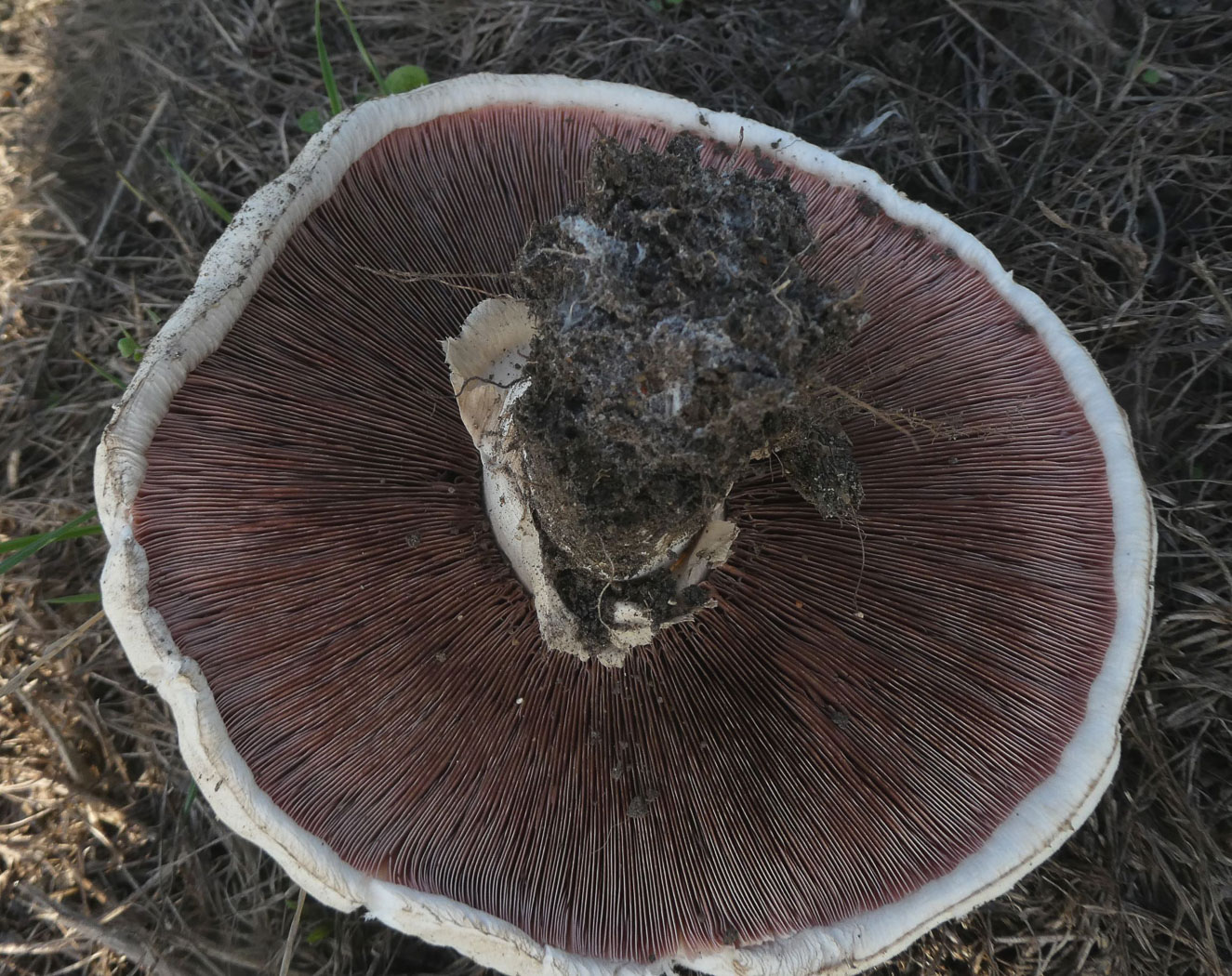
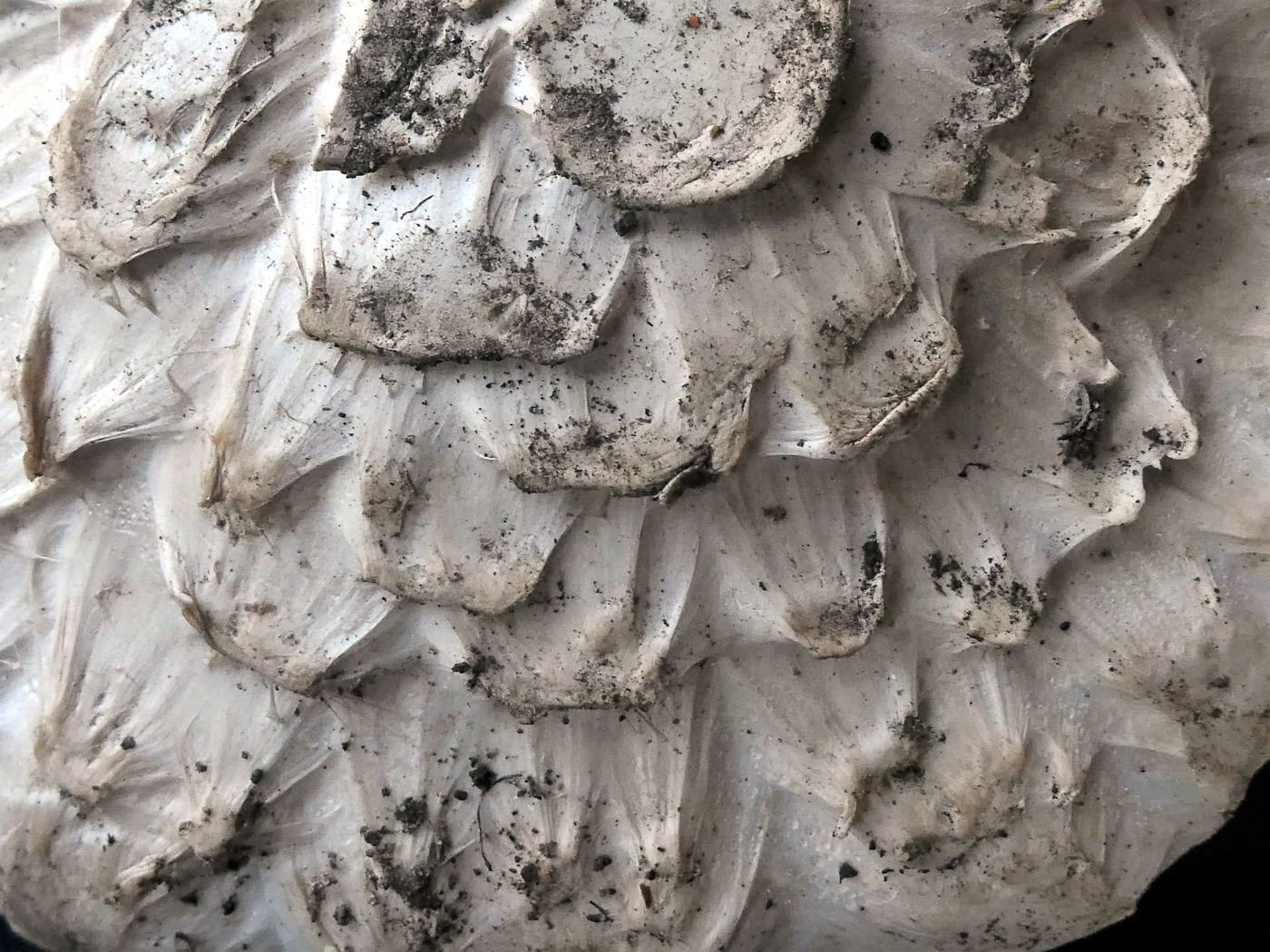
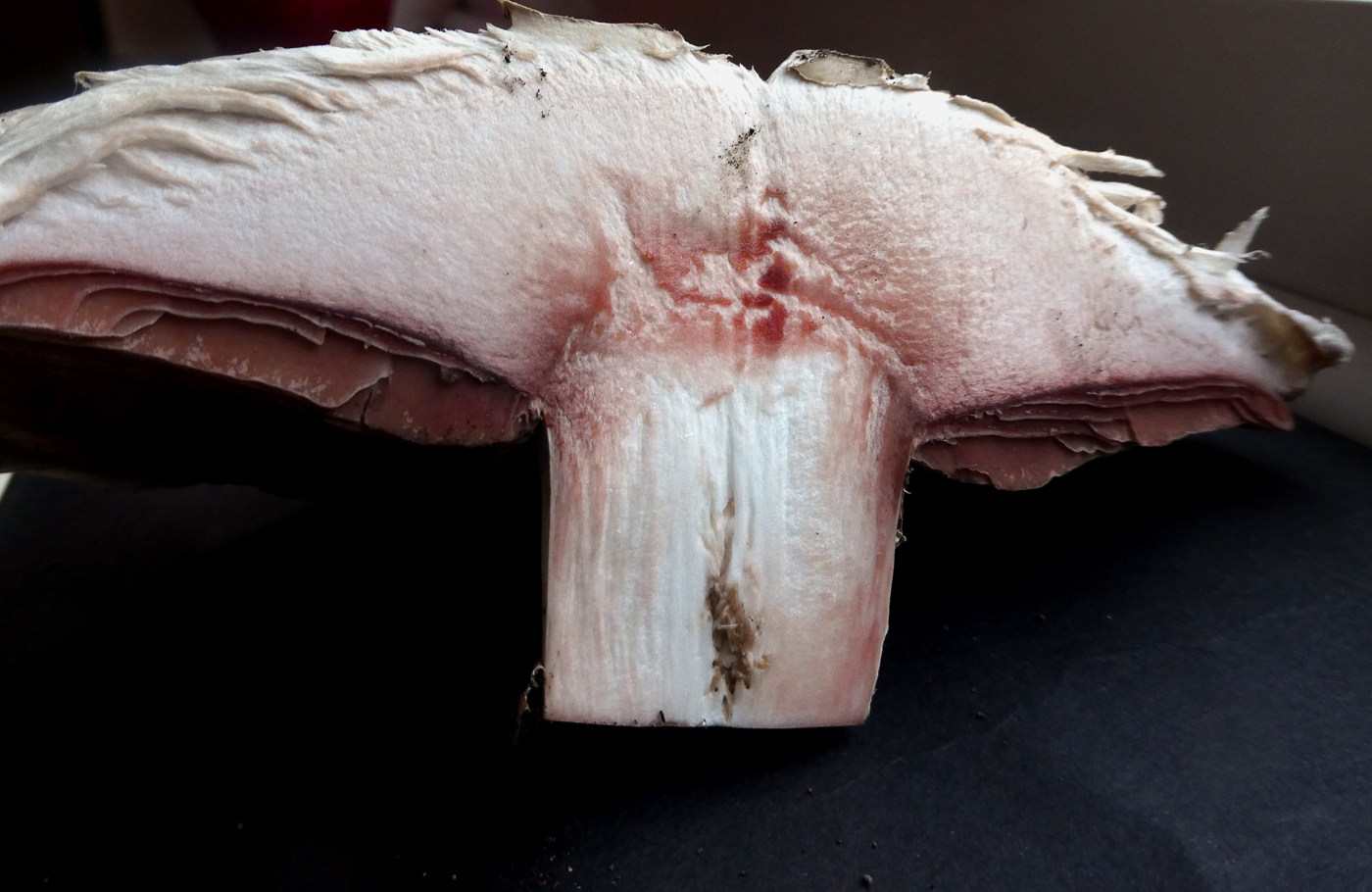 |
September 24th Agaricus bernardii (Salty Mushroom)
In a grassy verge near the road on Goldhill Common, Chalfont St. Peter, Jim Wills found a small group of Mushrooms and took some detailed photos to help with identification. Noting also that the seaside plant Lesser Sea Spurrey was growing nearby he realised that this was likely to be this seaside loving mushroom - both plant and fungus having followed the salt inland where used in wintertime on roads. The reddening flesh, the large scales and squat growth habit all confirm this species. We have an earlier entry (September 15th) but of immature specimens, hence this addition to complete the picture.
|
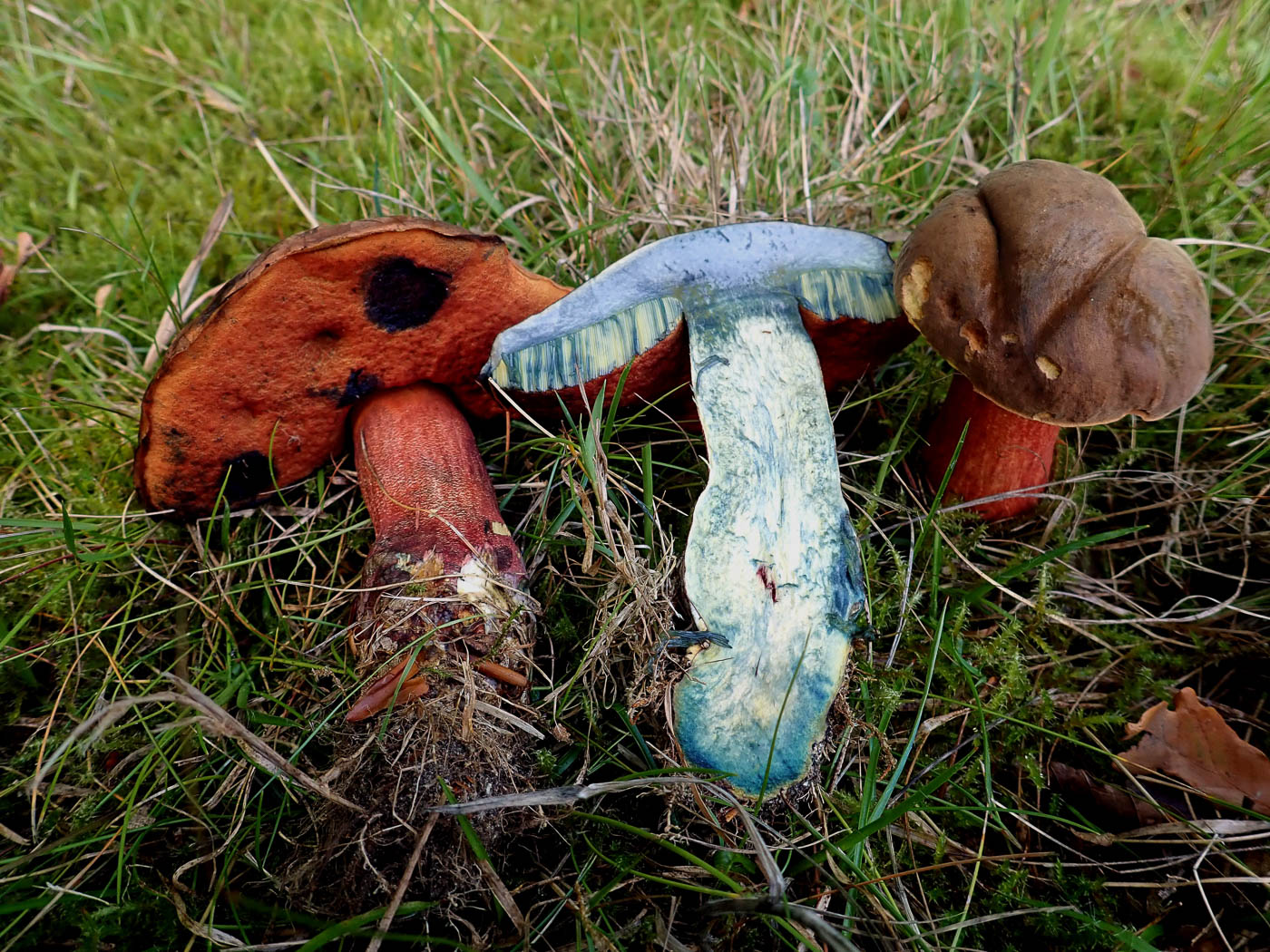 |
September 24th Neoboletus luridiformis (Scarletina Bolete)
Though we have an earlier image of this striking Bolete on Finds (September 12th) when Penny found these fresh specimens at Cadmore Ends under Oak she couldn't resist setting up this photo to show the impressive colour change when the flesh is exposed to air. Similar to both Suillellus luridus and S. queletii which also have orange red pores and blueing flesh, today's species has brighter red pores and a stronger blue reaction than either of them and is also by far the commonest of the three. We have images for comparison on Finds but some collections are very hard to identify and separate with certainty.
|
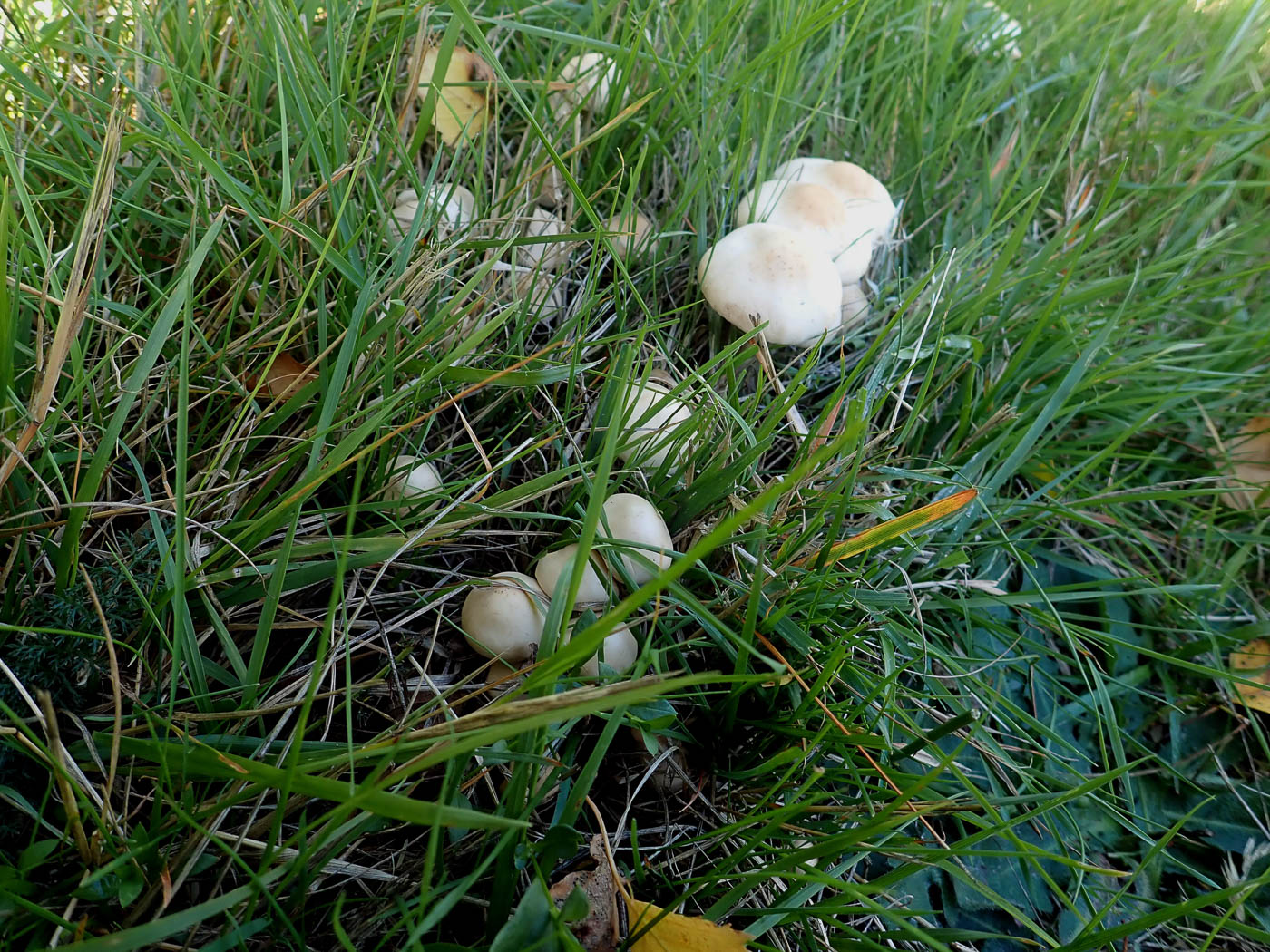
 |
September 24th Marasmius oreades (Fairy Ring Champignon)
In thick longish grass at Cadmore Ends Penny spotted several clusters of this common grassland species, one often found growing in large rings on short mown lawns, cricket pitches etc. From above (photo 2) it looks remarkably like other grassland species, but turning one over (photo2) reveals the widely spaced rather thick cream gills. It also has a rather strange smell, said to be of bitter almonds. See the Masterlist for other examples.
|
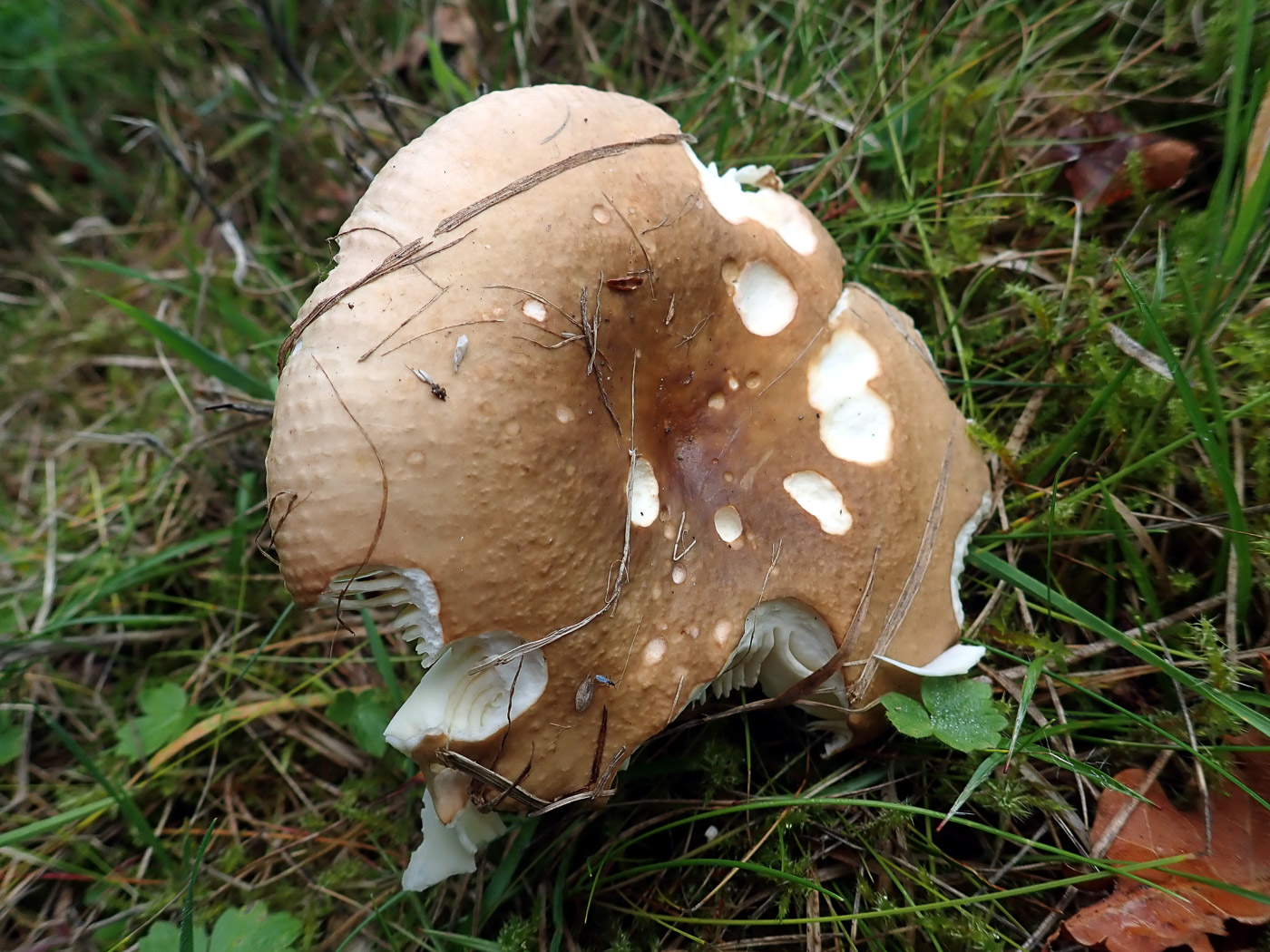
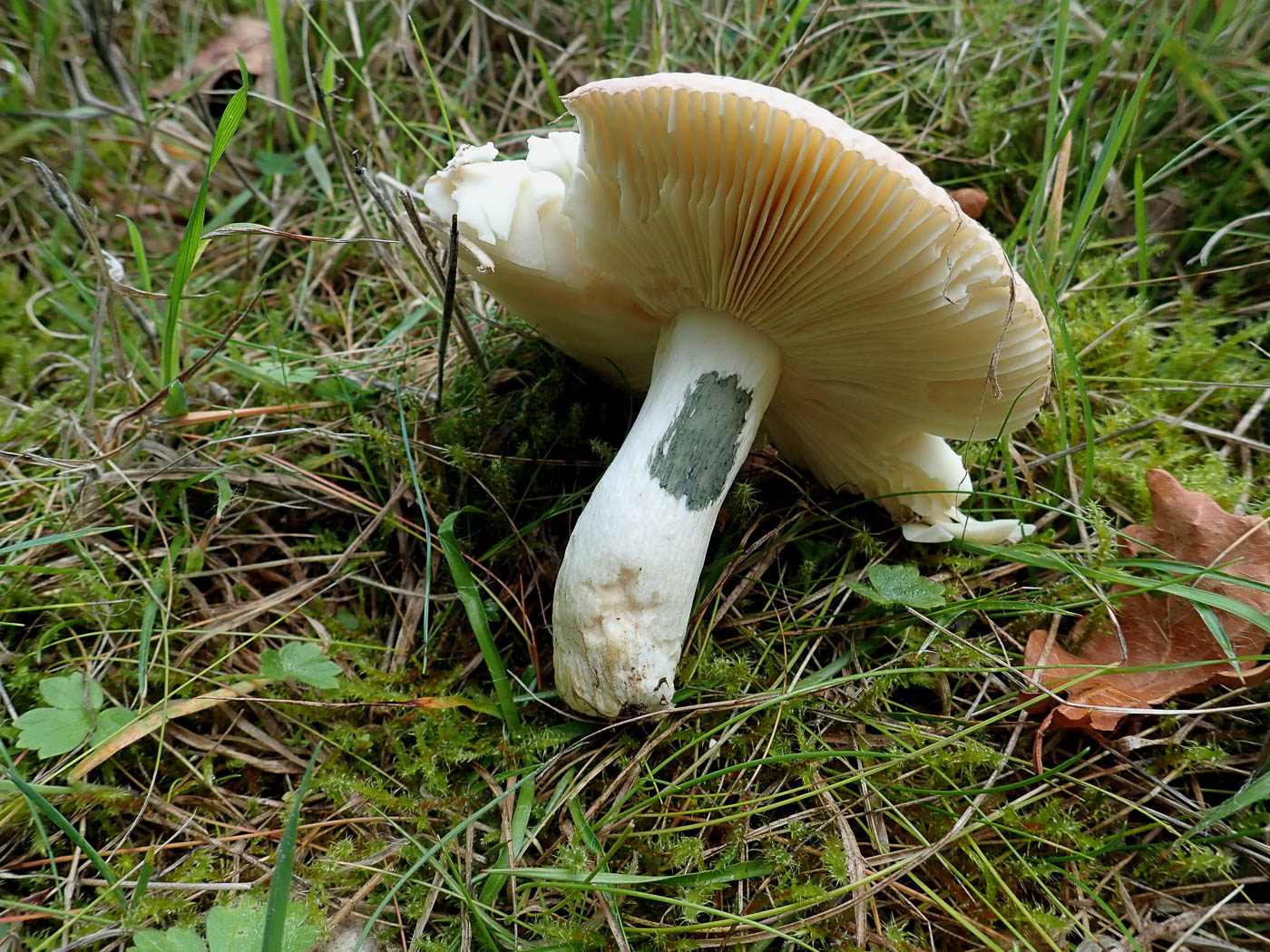 |
September 24th Russula cicatricata (a Brittlegill with no common name)
Under the Oaks at Cadmore Ends was this singleton Brittegill found by Penny, who recognising it knew to rub her crystal of Ferrous Sulphate on the stem! This is one of the 'xerampelina' group of Brittlegills which not only develop a strong smell of crabmeat but also turn dark green on the stem when rubbed with this crystal - most species turn dirty orange rust. Another of this group and much more common is R. graveolens (also no common name) which has pinker cap colours - see Finds 2021 August 17 - but today's species is a first for Finds.
|
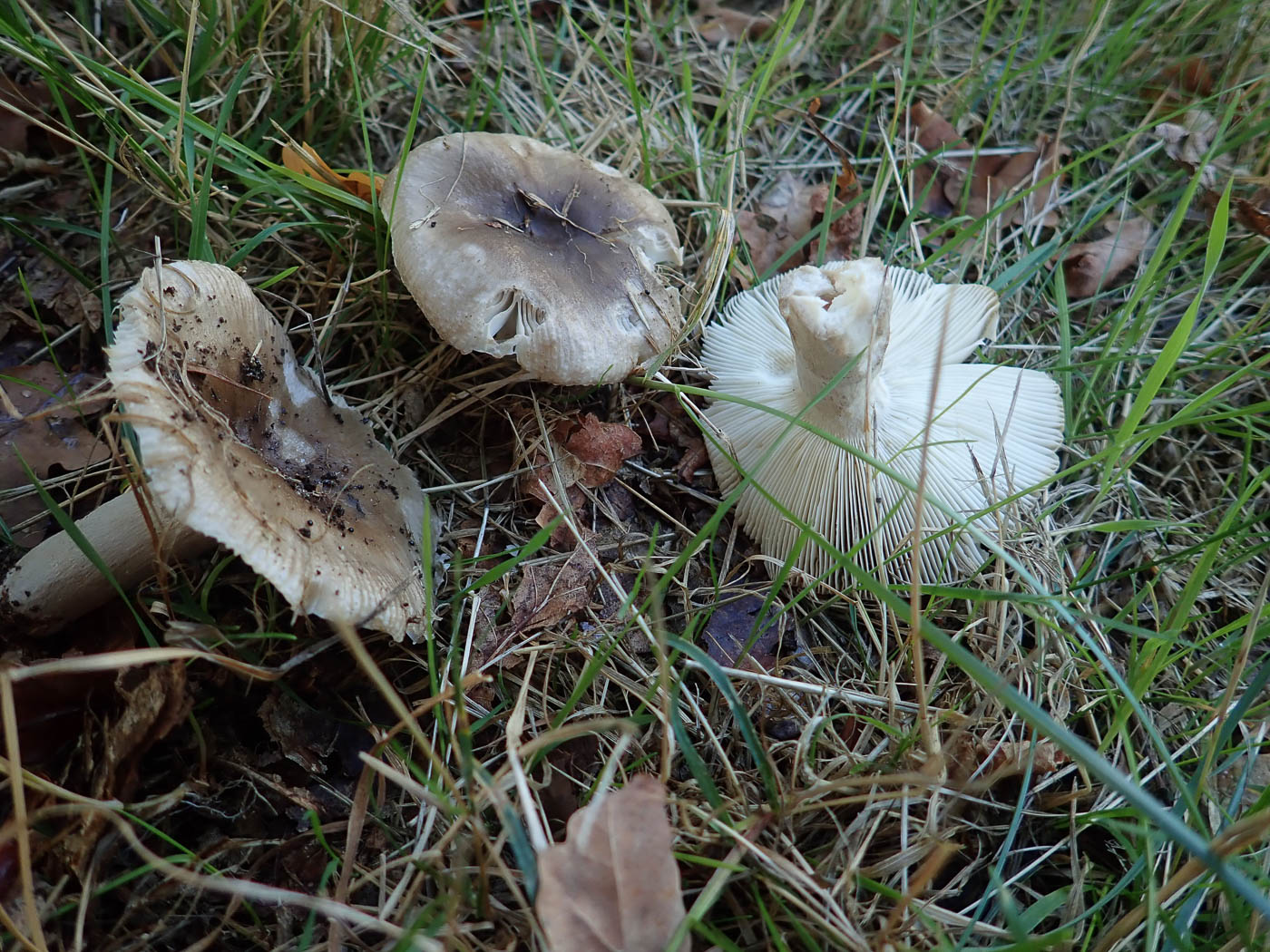
 |
September 24th Russula amoenolens (Camembert Brittlegill)
Under a large Oak at Cadmore Ends Penny found several different species including this rather dull grey coloured Brittlegill which (as its common name suggests) has an unpleasant cheesy smell. There are several very similar Brittlegills which favour Oak and often they are hard to separate. However, a drop of Guaiac on the stem makes this task much easier. Photo 2 shows the strong dark blue reaction - pretty well instant - to Guaiac seen in today's species whereas the lookalike R. sororia (Sepia Brittlegill) reacts hardly at all. See Finds 2021 July 16th and August 1st to compare the two species.
|
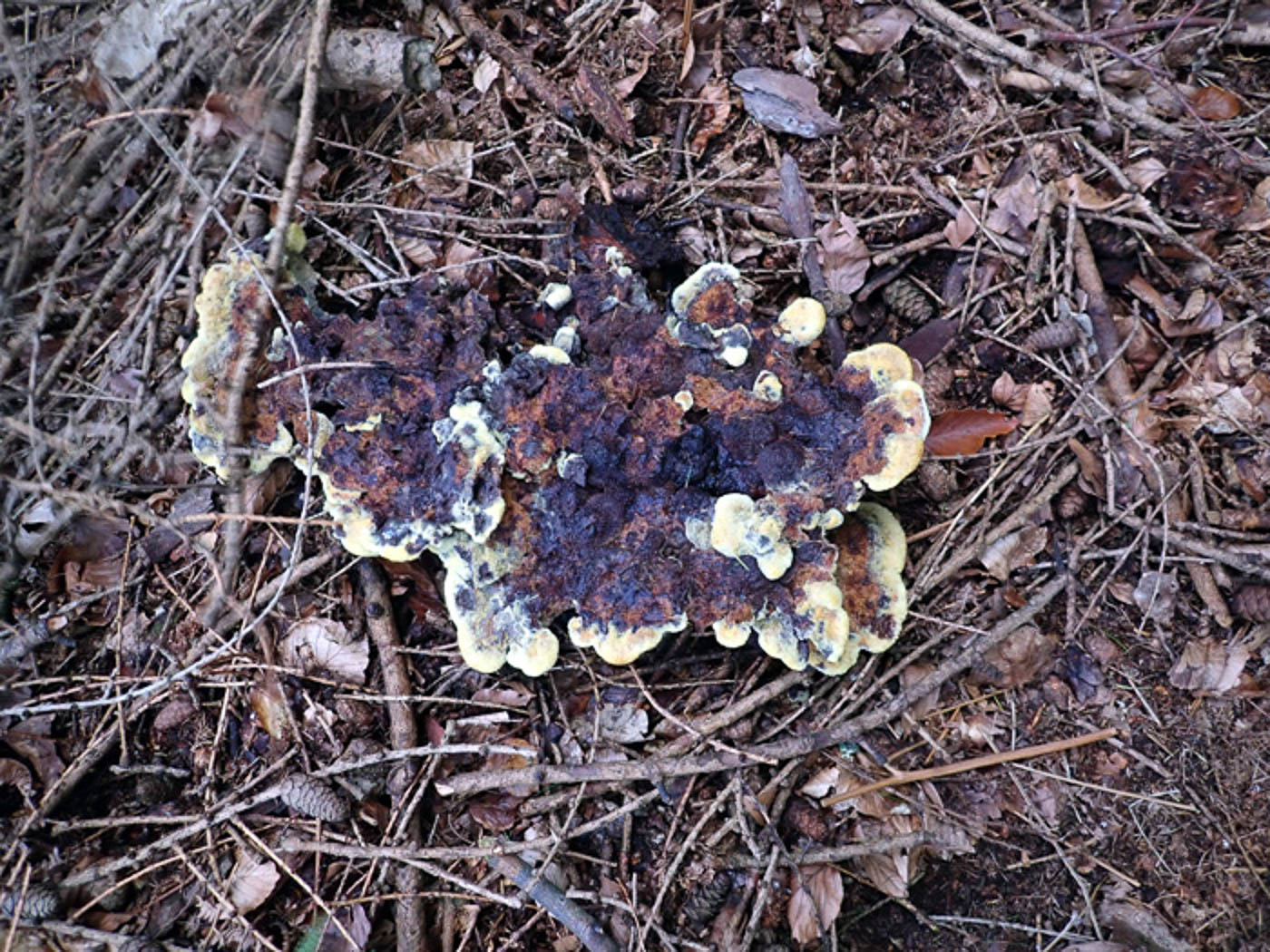
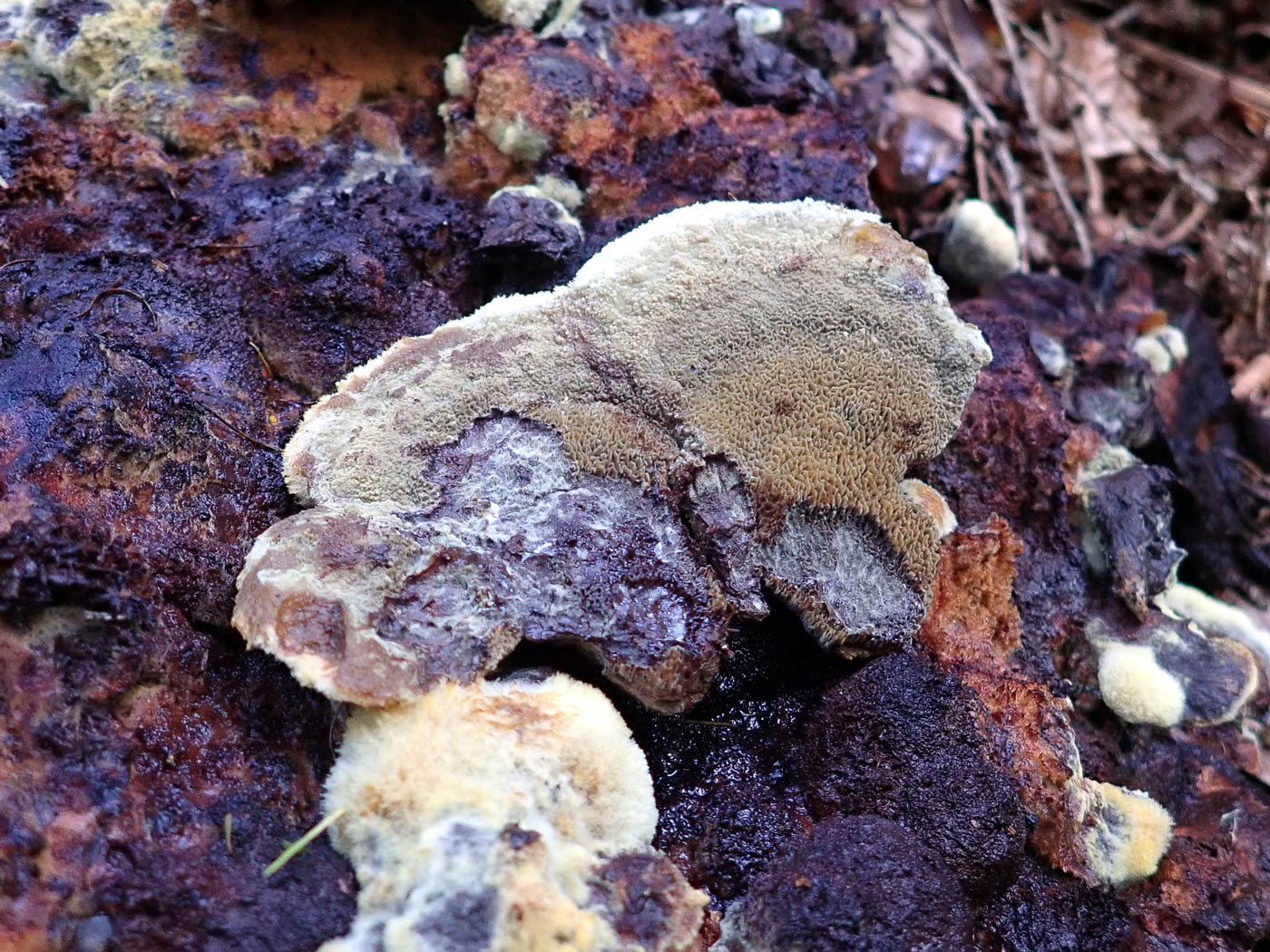 |
September 24th Phaeolus schweinitzii (Dyer's Mazegill)
Under the larches at Pullingshill Wood Penny located the stump where this species regularly fruits and was pleased to find it doing just that. The specimen was probably 1ft long but can get considerably bigger - certainly dinner plate size. Photo 2 shows a piece broken off and turned up-side-down to reveal its undersurface. Finds 2020 Sept 27th shows the species fruiting at the identical spot here, and 2021 October 27th shows a young specimen looking very different at Stoke Common.
|
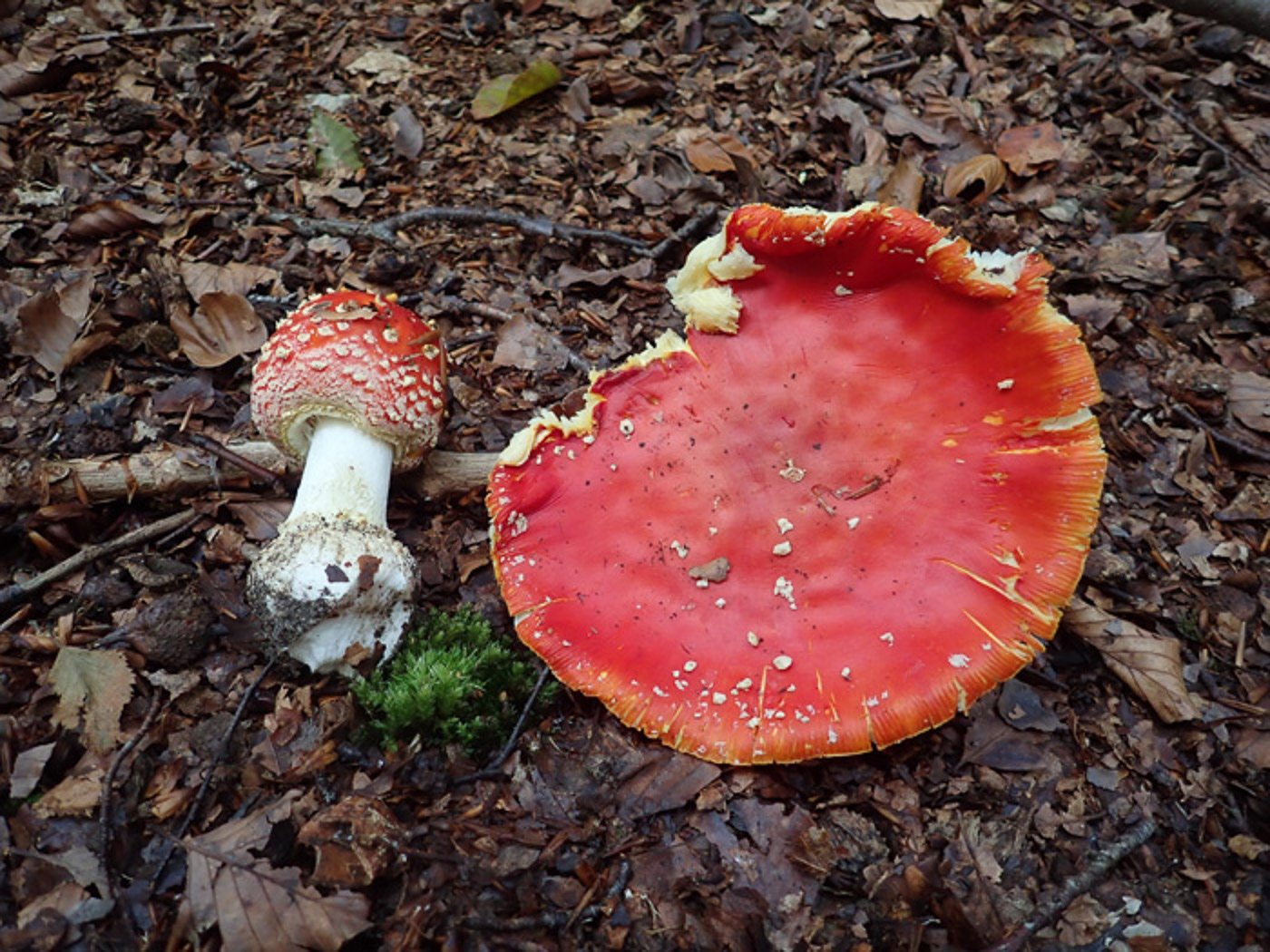 |
September 24th Amanita muscaria (Fly Agaric)
Under the Birches in Pullingshill Wood Penny found several undeveloped 'buttons' of this species and eventually a couple of more mature specimens. Though not the greatest image here, it serves to show that this - together with several other Amanitas - is now beginning to fruit.
|
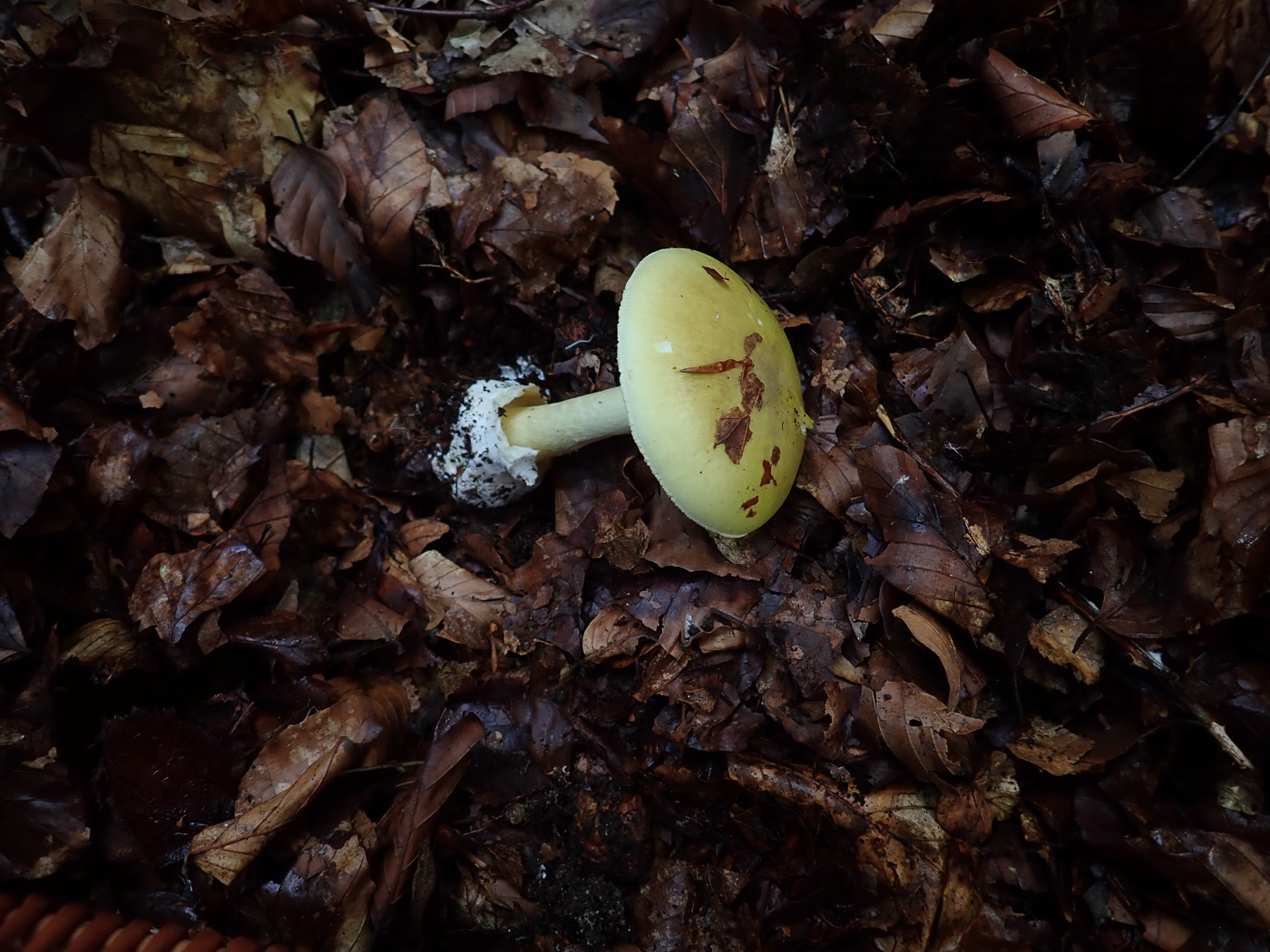
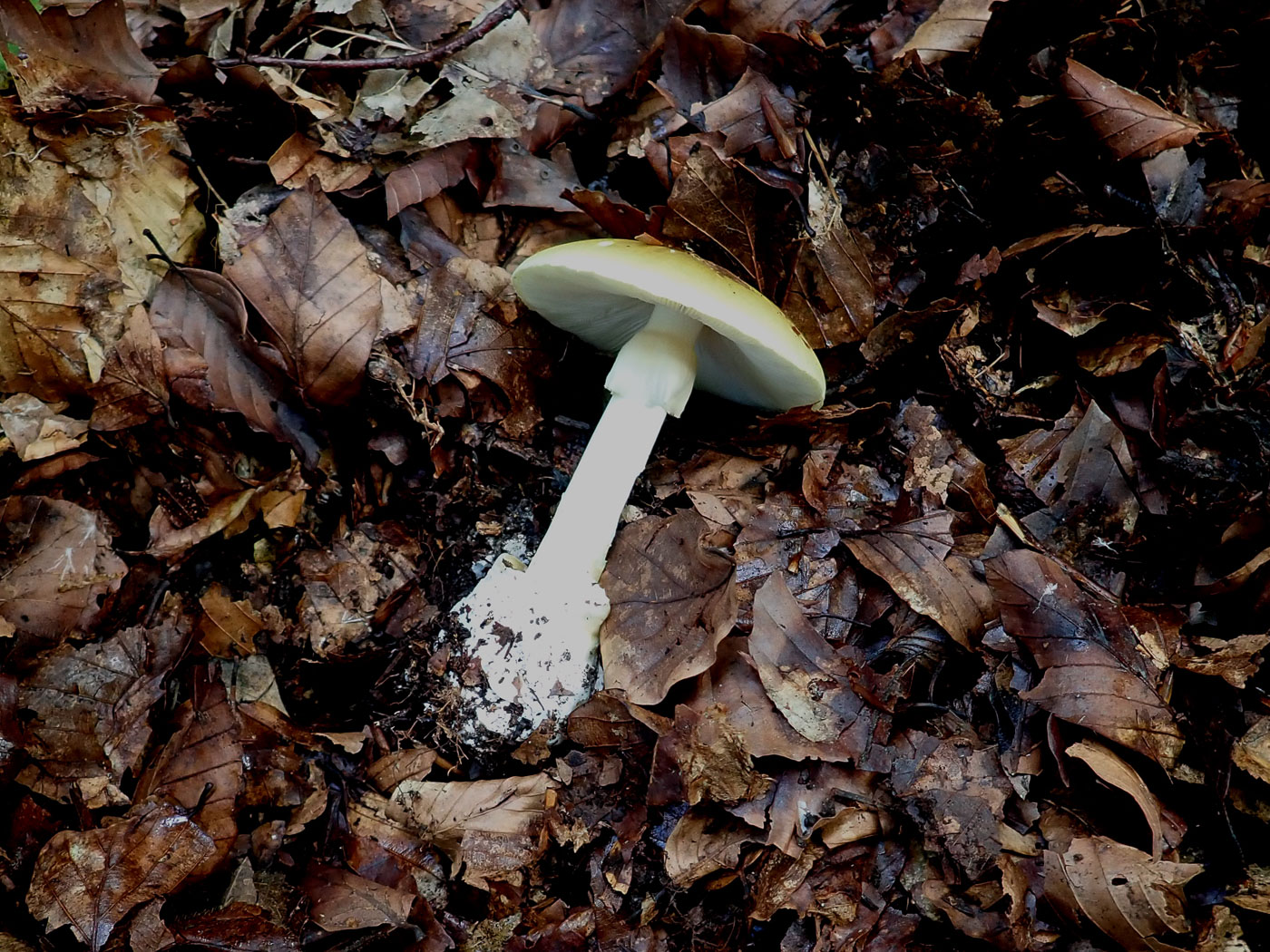 |
September 24th Amanita phalloides (Deathcap)
Pullingshill Wood regularly produces good numbers of this common but deadly poisonous Amanita, and Penny found just one specimen today under Birch and Beech. Thought the cap colour is quite variable which can be confusing, the large envelope-like volva at the stem base with a loose rim should separate it from other pale capped species, particularly A. citrina (False Deathcap). The smells of these two species are also quite different: sharp and of potato peelings in A. citrina but sickly sweet in A. phalloides. We have quite a few imagesin Finds, located from the Masterlist.
|
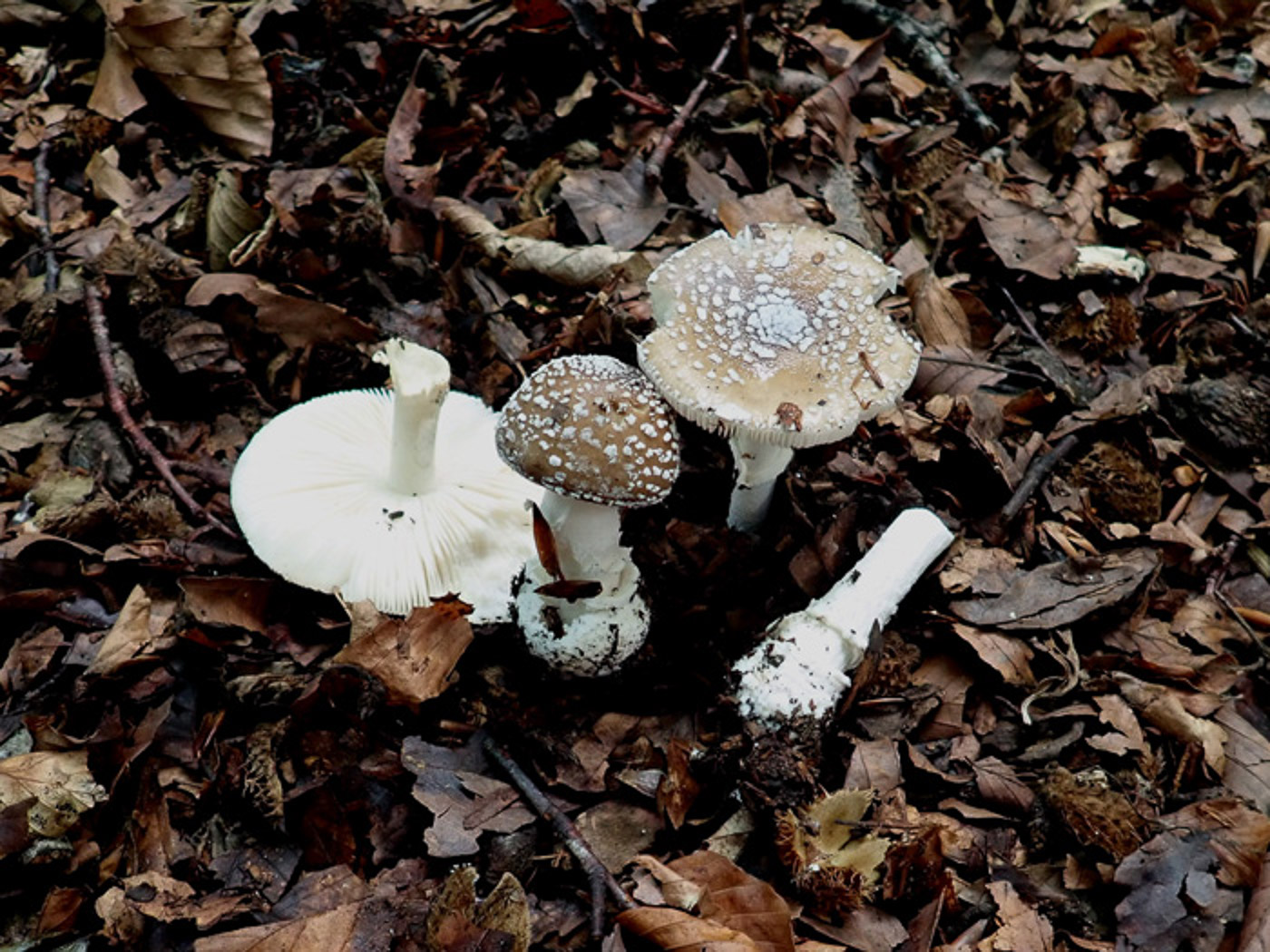 |
September 24th Amanita pantherina (Panthercap)
In Pullingshill Wood Penny found this cluster just emerging under Beech. Though quite similar to the much more common A. excelsa (Grey Spotted Amanita) today's species has small bright white 'spots' which form a fairly symetrical pattern on the cap, in contrast the the grey larger rather erratic patches of veil found on A. excelsa – though the two are often confused. As with all members of this genus, the veil spots rub off easily (hence are sometimes absent especially after rain). A. pantherina is one of the most poisonous in the genus. See images of both species on Finds to compare, using the Masterlist.
|
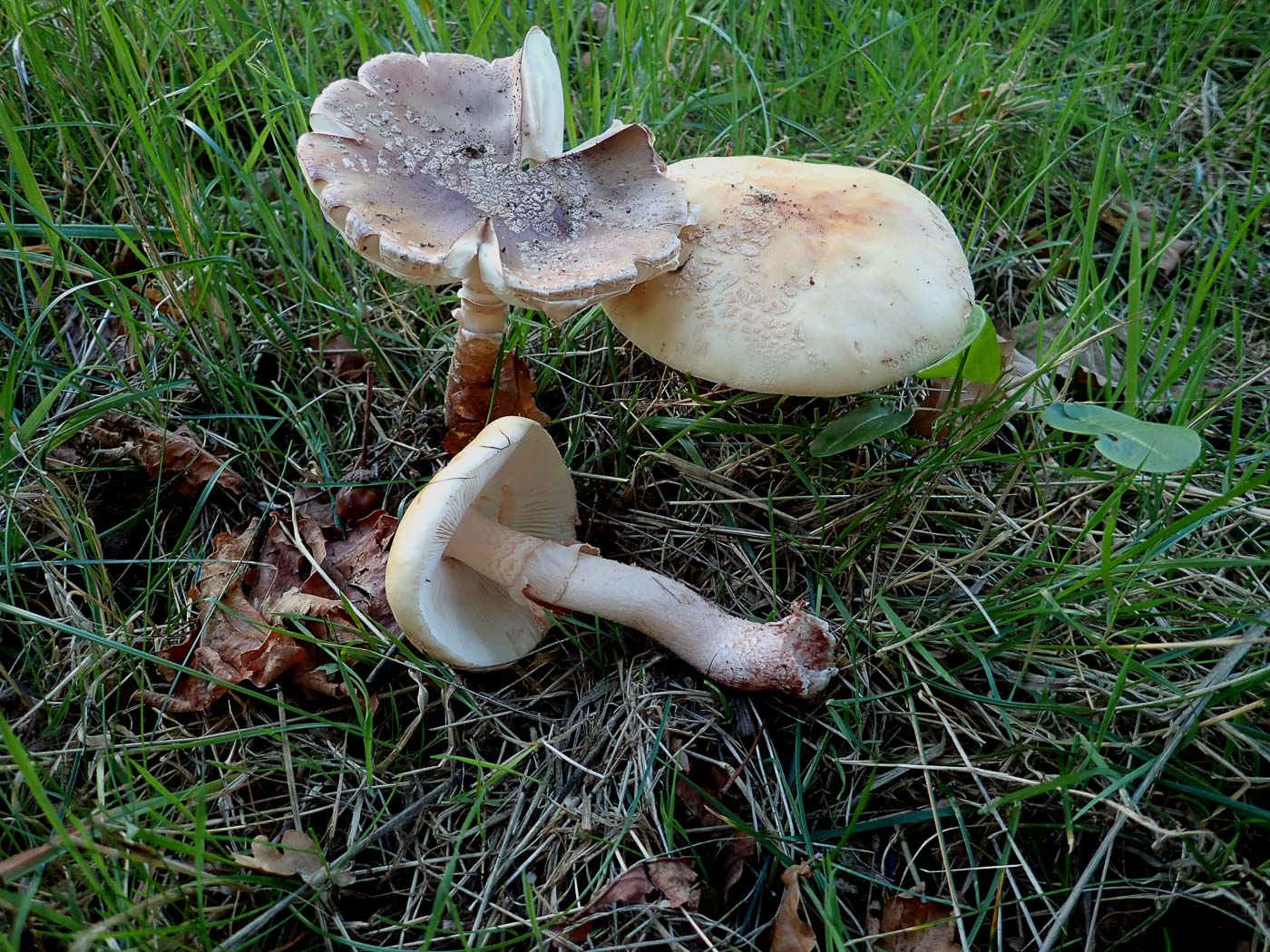
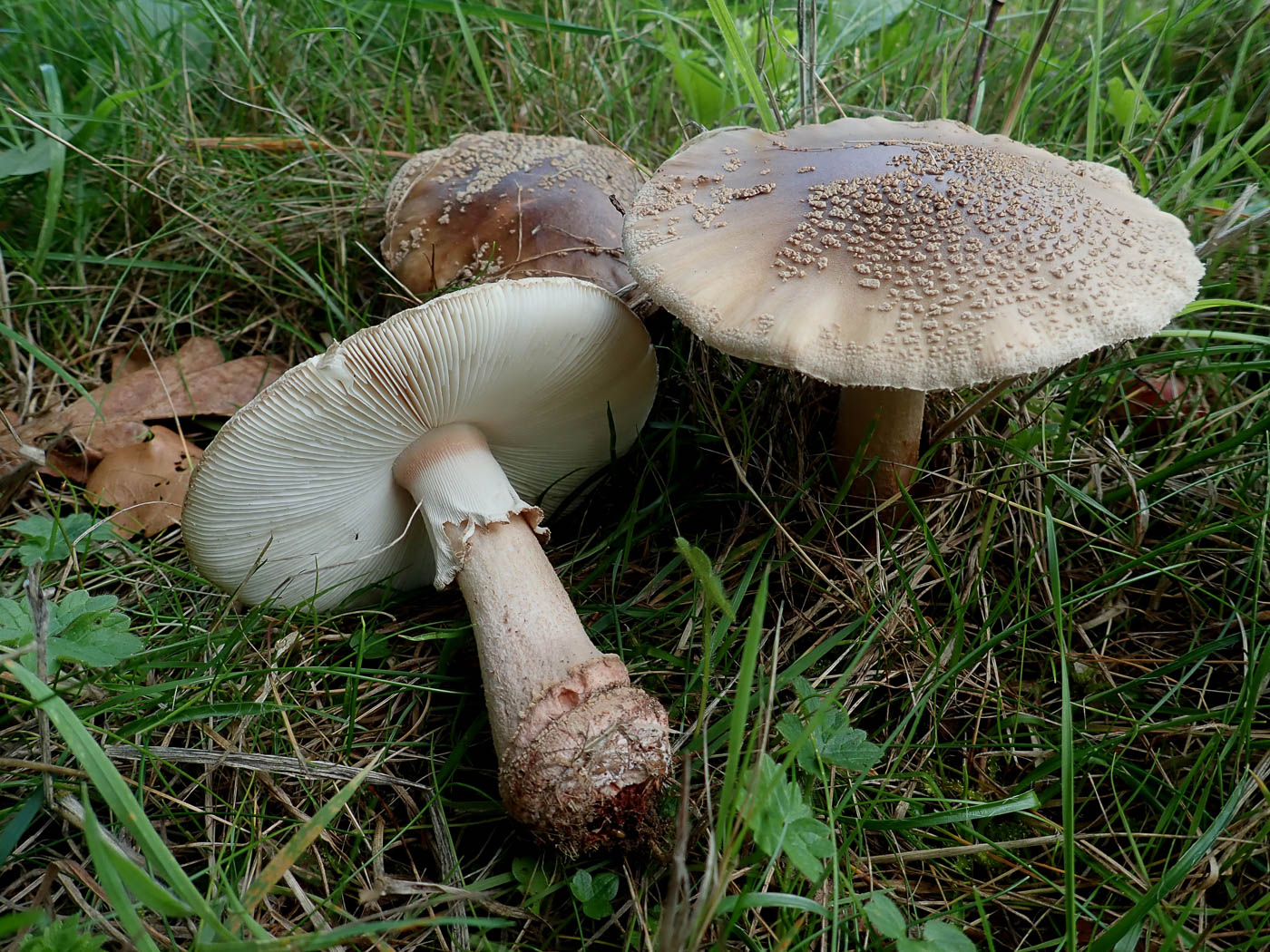 |
September 24th Amanita rubescens (Blusher)
At Cadmore End Penny found several patches of this species under the Oaks, one which is at last beginning to fruit in good numbers. The two images are an attempt to show how much variation in cap colour there can be, depending on whether they are exposed to sunlight or not. The more light they get, the paler the caps can be but the pink stem bases are a sure indication of the species. We have several other Finds examples: see the Masterlist for details.
|
September 23rd 2022
 |
September 23rd Calocybe ionides (a Domecap with no common name)
In Jordans village on a woodland edge, Jesper Launder spotted this very unusual yet distinctive species. Known to favour deciduous woodland on calcareous soil, its white gills contrasting strongly with the lilac cap and stem, together with the strong mealy smell, make it recognisable in the field. We have only three previous records and this is a first for members' Finds.
|
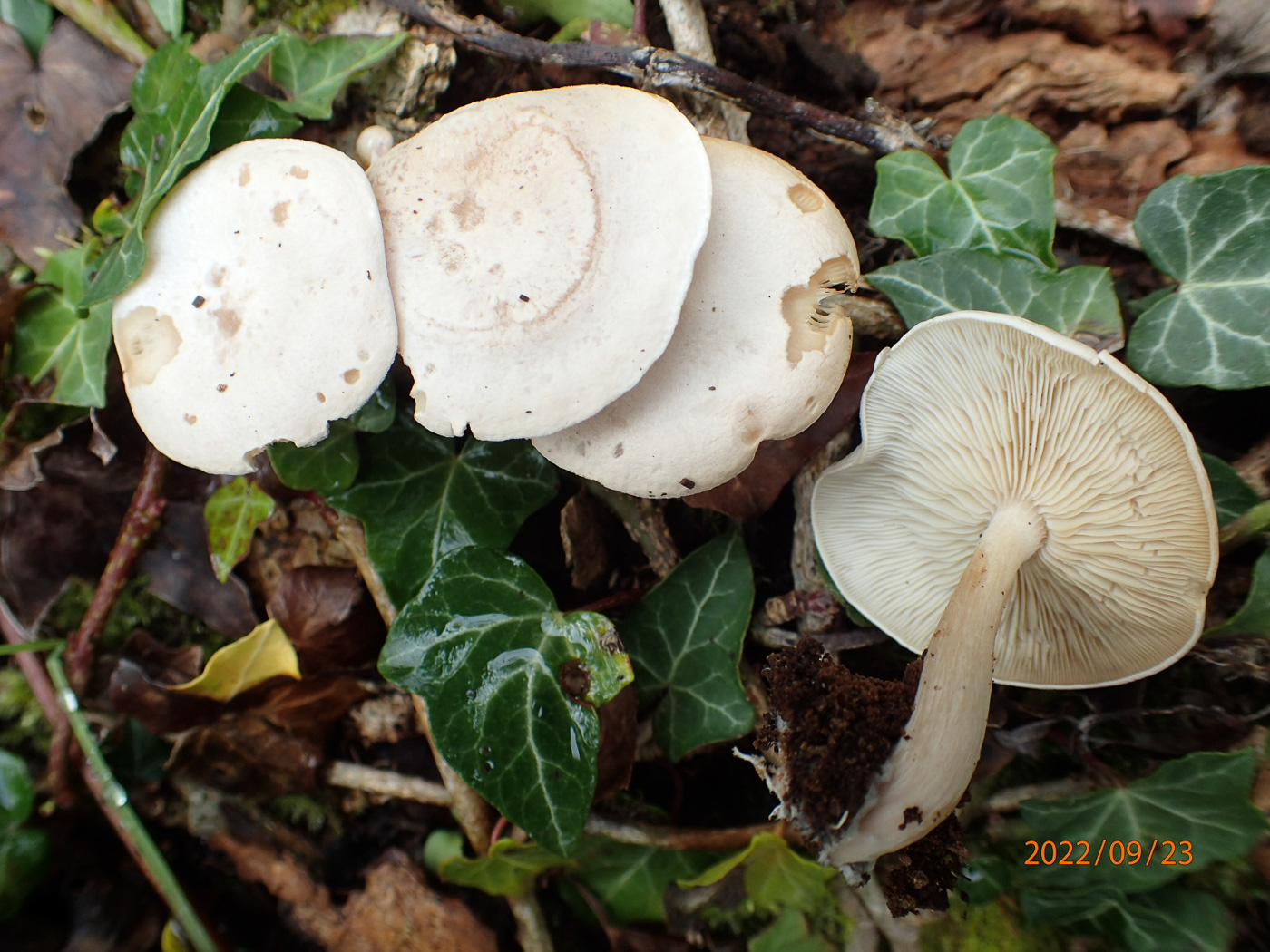 |
September 23rd Ossicaulis lignatilis (Mealy Oyster)
In a friend's garden in Jordans village Jesper Launder found this quite rare species fruiting on decaying Ash. Not related to the Oysters, it occurs on rotting deciduous wood - often inside the bole of a trunk - and though the stem is often eccentric (not central or at right angles to the cap) the gills are much less decurrent than in true Oysters. Another difference: it has a strong mealy smell. We have just a handful of previous records and
just one previous entry in Finds: 2020 November 8th.
|
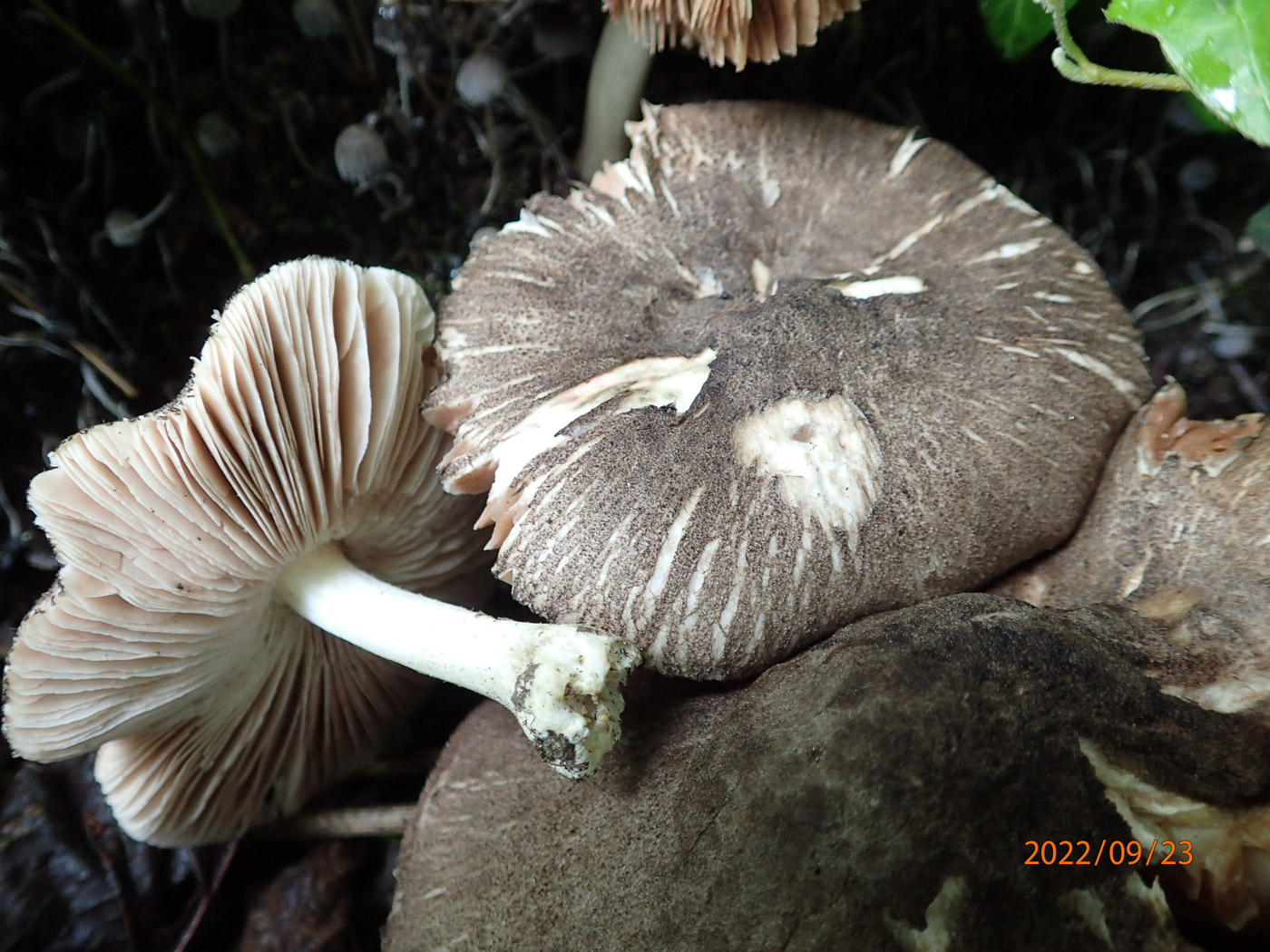 |
September 23rd Pluteus ephebeus (Sooty Shield) 
On the same decaying Ash in Jordans as the previous entry Jesper Launder noticed this group of Shields. This species is not one we find that often but has a darker greyer cap than most and the cap surface often splits as can be seen here. When found on the ground (on submerged wood / roots as can happen with this particular species) the free pinkish tinged gills are a helpful clue to its identity.
|
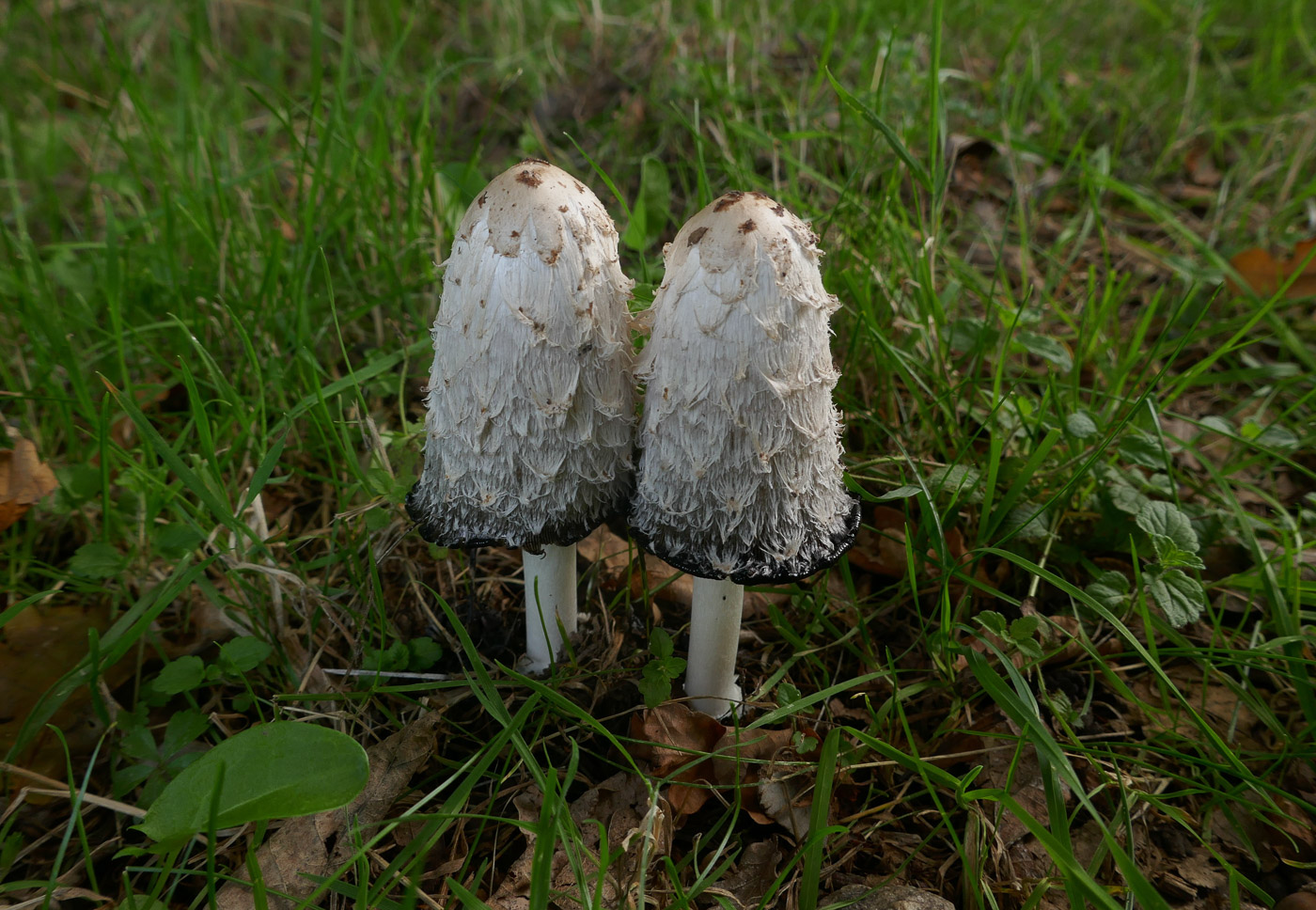 |
September 23rd Coprinus comatus (Lawyer's Wig / Shaggy Inkcap)
At Stampwell Farm alongside a wooded path Jackie Ewan spotted this nice pair - one of very few Inkcaps still remaining in the genus Coprinus! When fully developed as it is here this is one of the most recogniseable species and the telltale deliquescing (dissolving into an inky mess) can be seen just starting at the cap base. We have several other Finds examples: see the Masterlist for details.
|
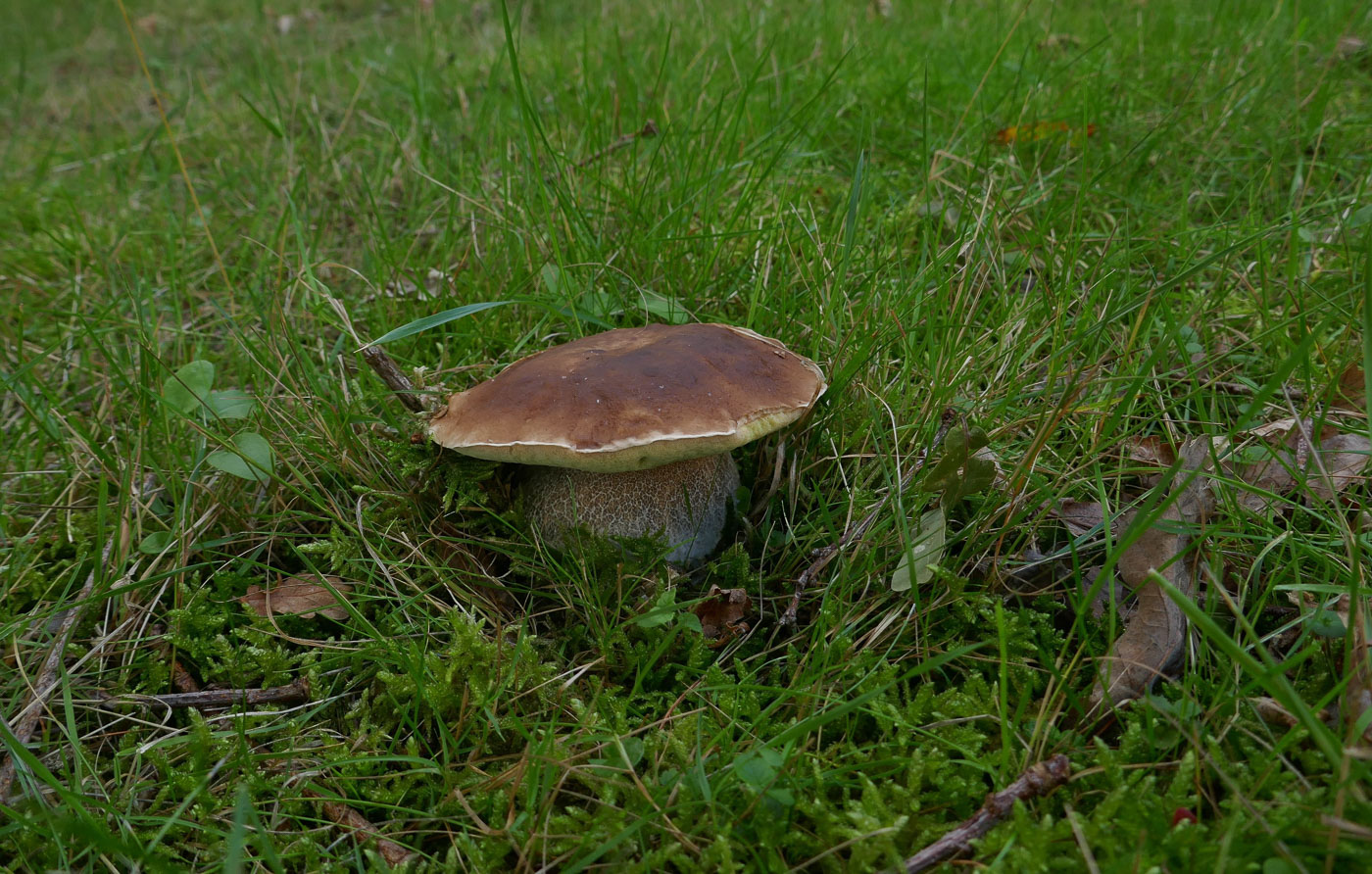 |
September 23rd Boletus edulis (Penny Bun / Cep / Porcini)
At Stampwell Farm under Oak Jackie Ewan found this Bolete - one of very few still remaining in the genus Boletus! - fruiting despite the continuing dry conditions. Boletes generally seem to be the only group of mycorrhizal mushrooms doing OK at the moment, particularly those which thrive in grassy rather than purely woodland habitats - this reflected on Members Finds in the remarkable number of species found by Jesper Launder around Jordans village in recent weeks. See also Finds 2020 September 11th.
|
September 20th 2022
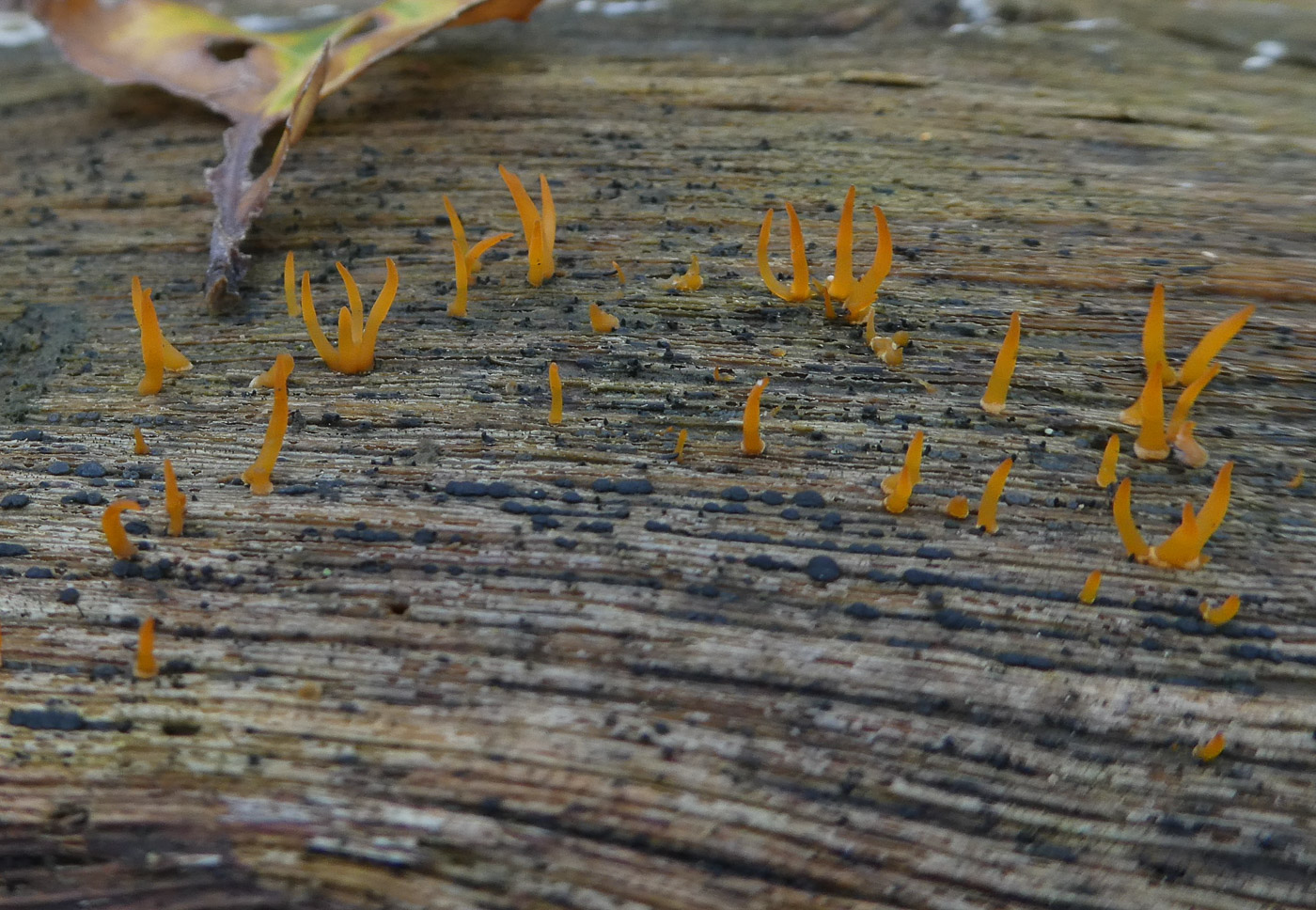
 |
September 20th Calocera cornea (Small Stagshorn)
On Gerrards Cross Common Jim Wills noticed these small orange slightly curved spikes on a bare hardwood trunk. There are several species of Stagshorn, all some shade of yellow-orange (though occasionally C. viscosa - found only on conifer - can be pure white) and today's species is much more spike-like, likened to a cow's horn rather than a stag, than other species. In some years it is seldom found but this year it seems to be quite common. We have two other species represented on Finds for comparison - check the Masterlist for details.
|

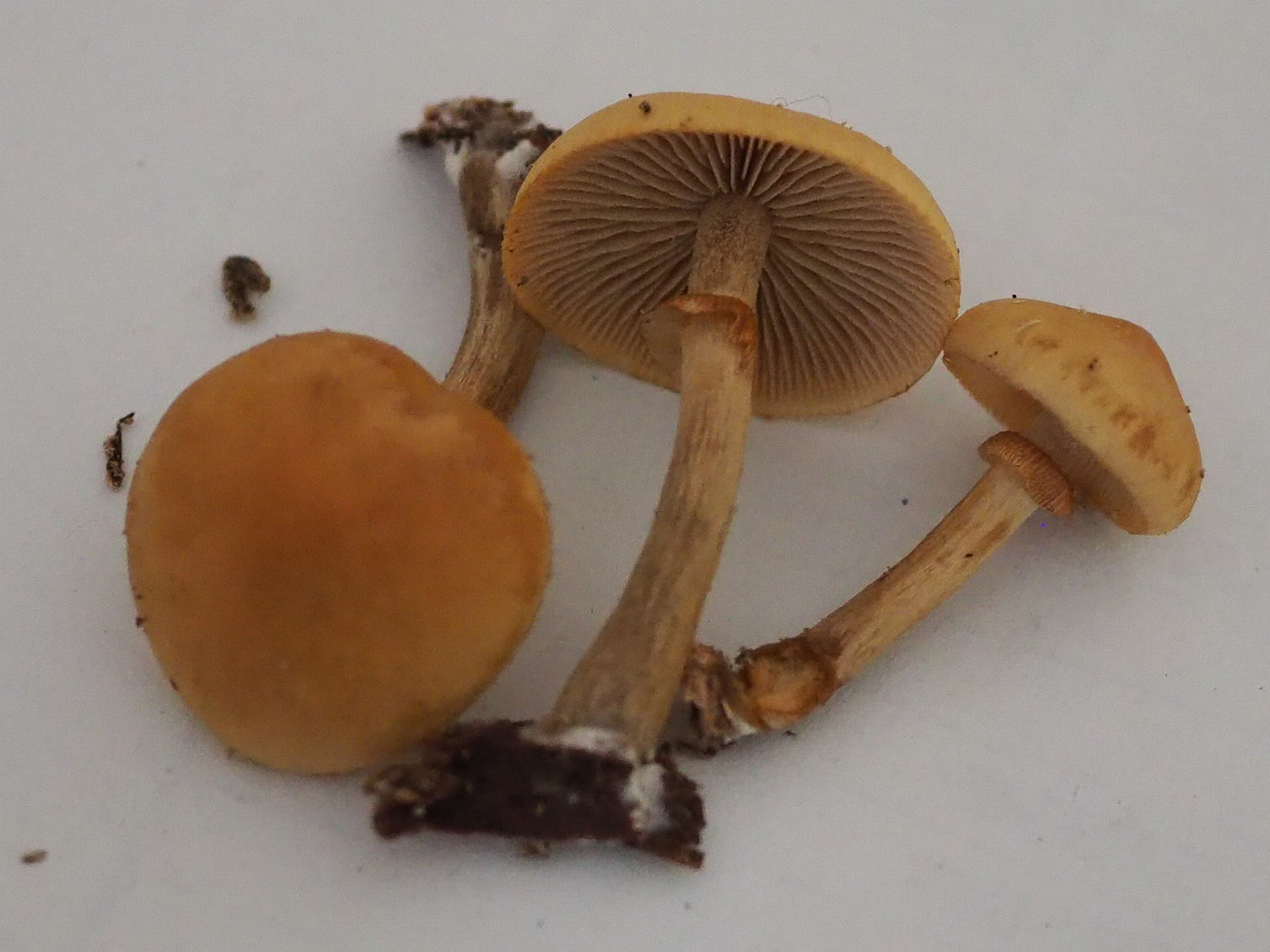 |
September 20th Galerina marginata (Funeral Bell)
At Coombe Hill on fallen deciduous wood John and Lesley Catterson came across this typical cluster of fruitbodies - appropriately found the day after the funeral of Queen Elizabeth II. This is a large Galerina - most species are more Mycena-like, and fruits mainly later in the season - an older name for it was G. autumnalis, its common name refers to the fact that it is extremely poisonous. It can easily be mistaken for Kuehneromyces mutabilis (Sheathed Woodtuft and apparently edible but don't try it!) which also has a ring and grows clustered on fallen wood, though that species tends to develop a two-toned cap, fading to yellow in the centre. We have examples of both on Finds: check the Masterlist for details.
|
September 19th 2022
 |
September 19th Inocybe calospora (a Fibrecap with no common name) 
Under Lime, Beech and Oak in his garden Jesper Launder found this small LBJ which he recognised as a Fibrecap and, knowing Penny's special interest and knowledge of the genus, he dried it to send to her. One swift glance under the microscope was all she needed to make the ID! The stunning spores of this species are unique, like small maritime mines, and even at low power she knew instantly what it must be. Though familiar with this rare species from other parts of the country, she has never found it in Bucks, so this was an exciting find.
|
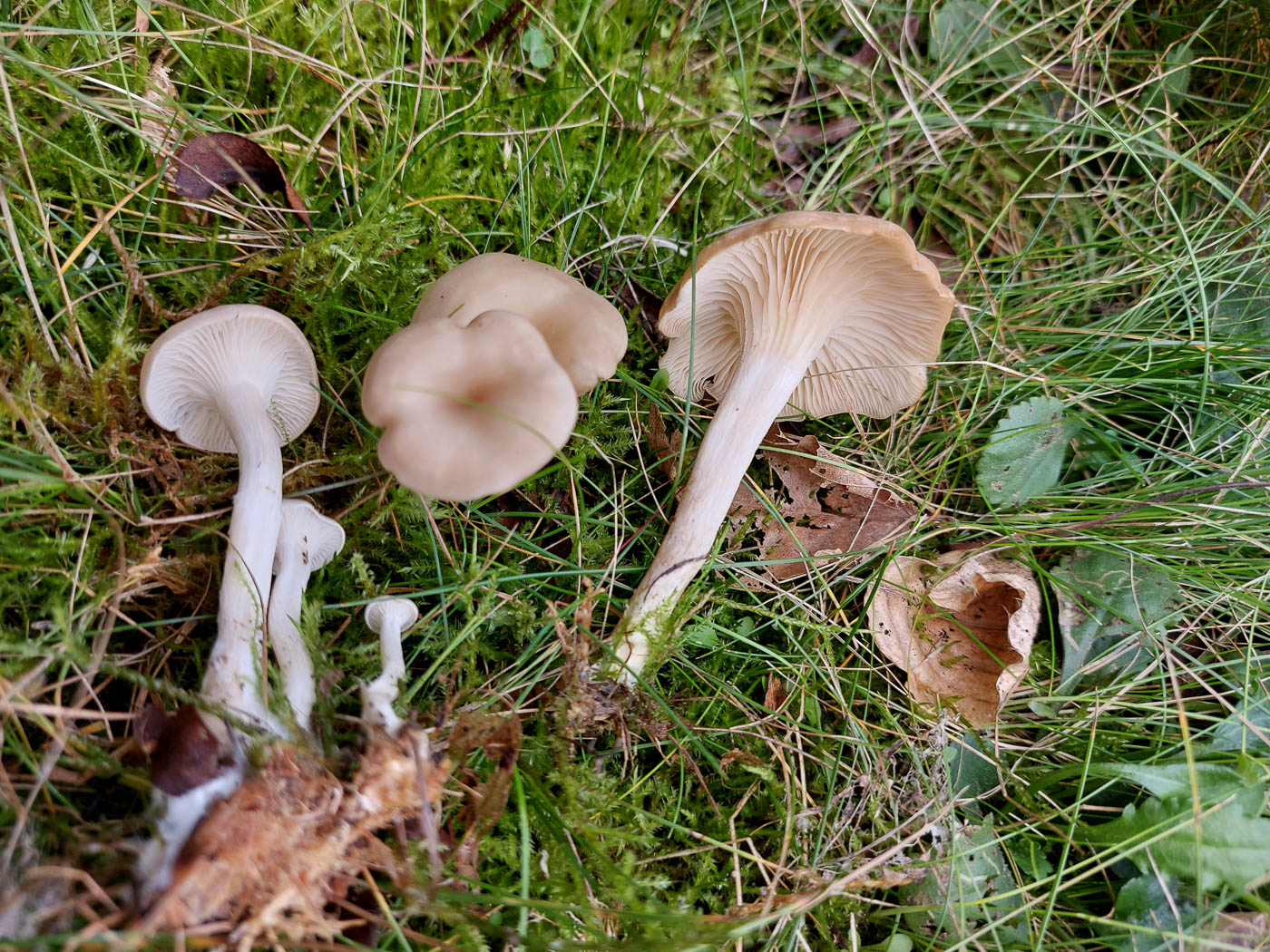 |
September 19th Singerocybe phaeophthalma (Chicken Run Funnel)
In a grassy area in his garden Jesper Launder noticed these pale Funnels, and collecting one to test for its smell - often a vital clue with Funnels - he recognised the rather unpleasant smell of wet feathers / wet dog in back of car! Many Funnels are not easy to identify because they give very little help under the microscope compared to other genera, therefore getting to know their individual smells can be really useful. This particular species was previously in genus Clitocybe. See also in Finds 2020 October 14th.
|
September 18th 2022
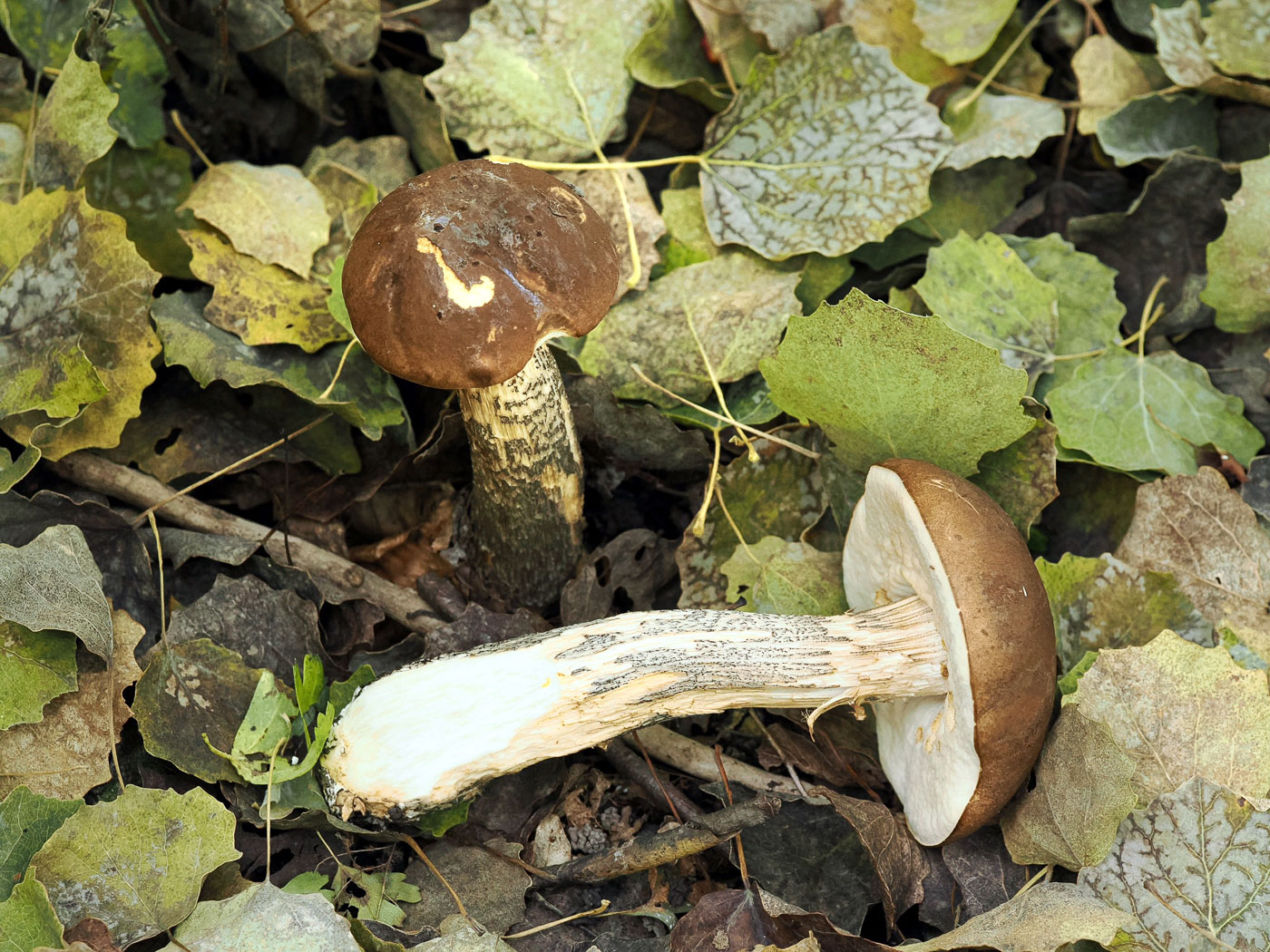 |
September 18th Leccinum scabrum (Brown Birch Bolete)
On our BFG Walk at Hodgemoor Woods we found this smart pair under Birch and Aspen, the photo taken by Claire Williams. Due to space issues in Penny's report this photo didn't make it, hence its inclusion here as it is a nice example. If under Aspen you find a Leccinum having an almost white stem and a foxy orange cap, you may have the rare L. albostiptatum, but today's find - though near Aspen - was clearly not that species with the dull brown cap, black 'scabers' on the stem and no blue/green stains in the flesh at the stem base: all indicators of this Bolete, common where ever Birch is present.
|
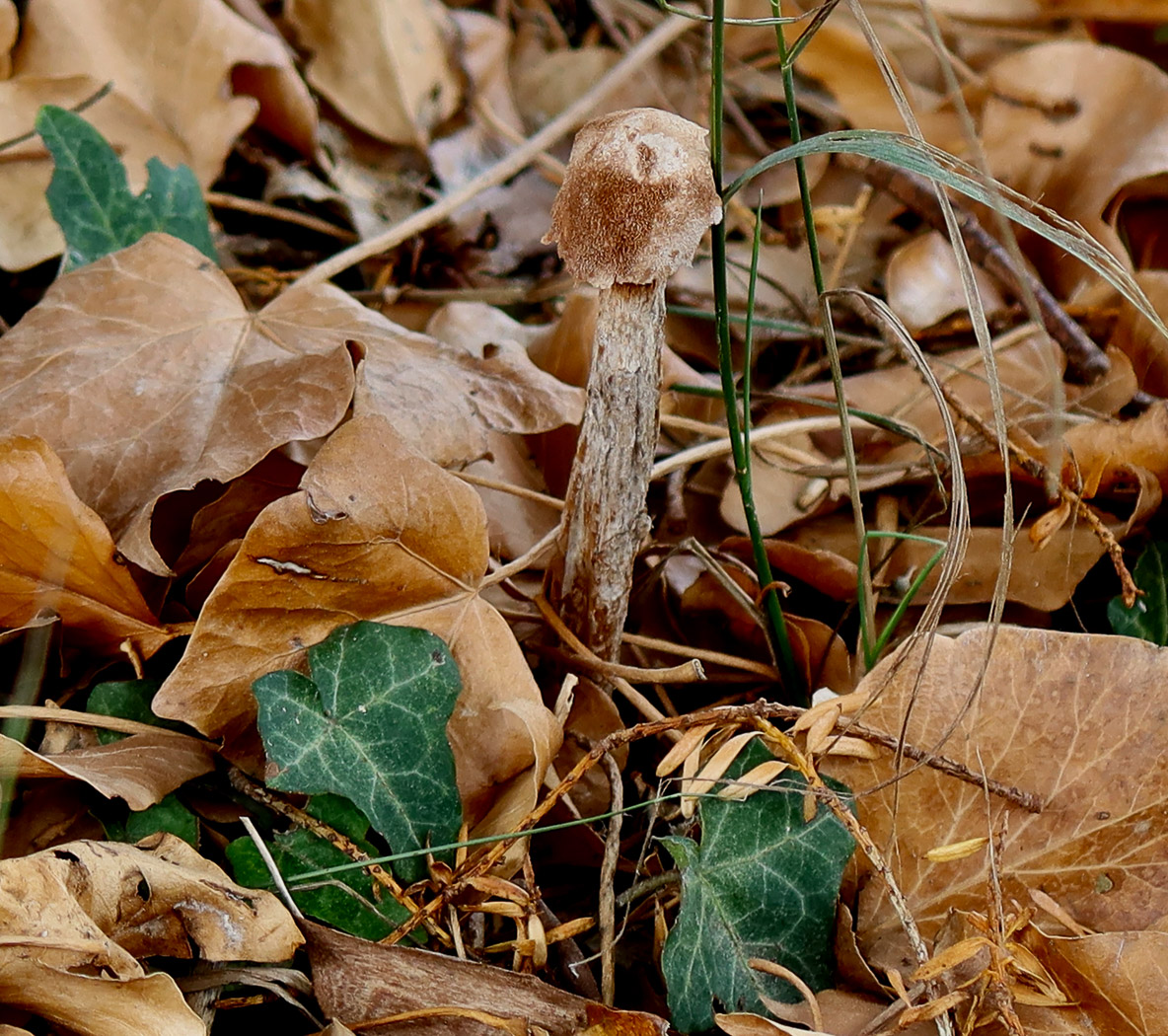 |
September 18th Battarrea phalloides (Sandy Stiltball)
On the offchance of finding this strange and rare species, Richard Fortey and Linda Seward called in at the (unrevealed) spot where it has now been fruiting for the last few years, first discovered here by Richard. Not only was last year's specimen still there but Linda's photo shows this year's specimen nearby. The species is related to puffballs, earthballs and the like but is unique in having this tall almost woody stem - anything up to 25 cm high. See also in Finds 2020 October 5th and 2021 Sept 14th. If you find this species anywhere please report it to Penny.
|
September 16th 2022
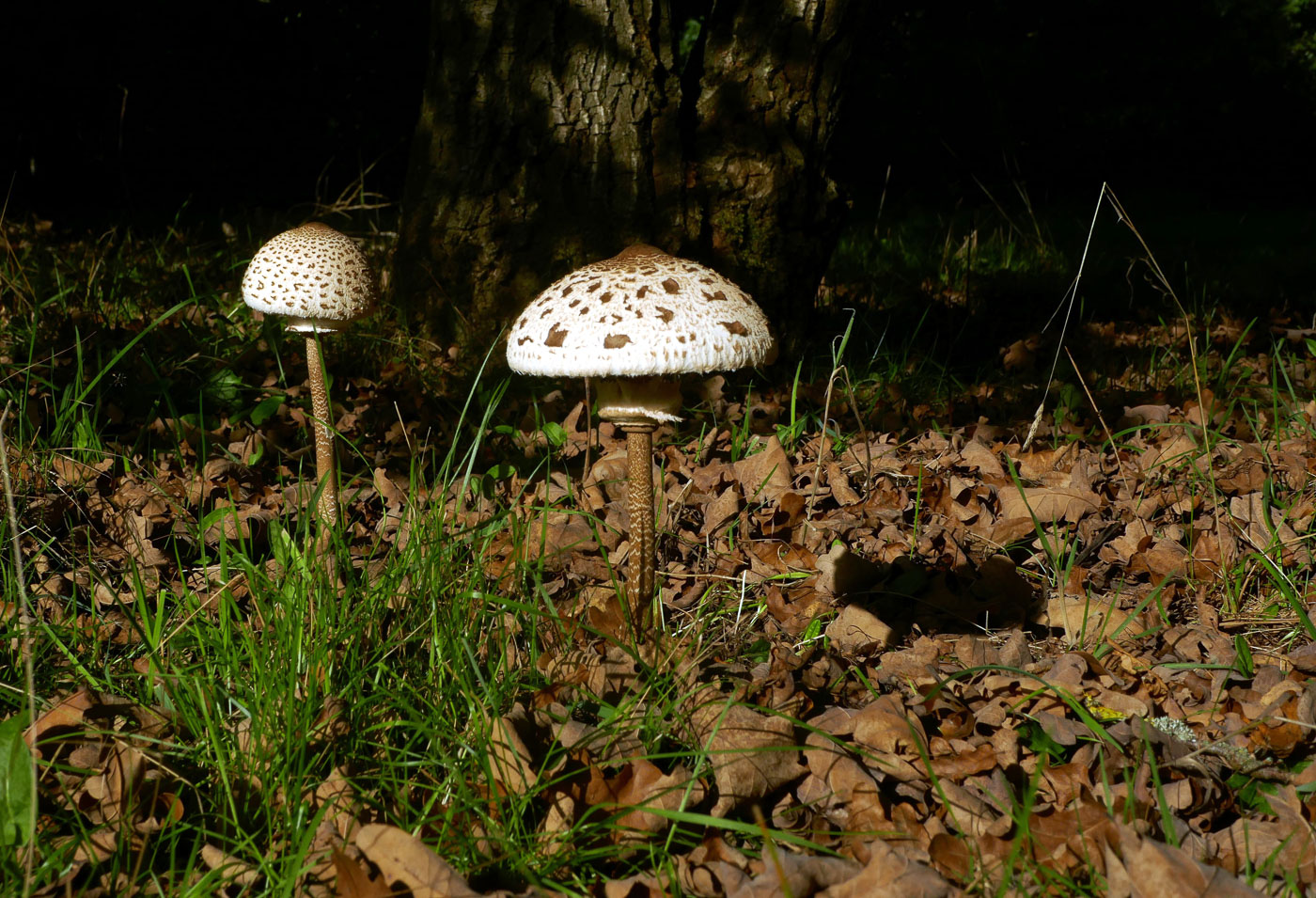 |
September 16th Macrolepiota procera (Parasol)
At Stampwell Farm under an Oak Jackie Ewan found this pair, one immature and one maturing nicely and both displaying the snakeskin markings of the species on the stem. She then counted 42 more fruitbodies in a bramble patch under a plum tree! Check the Masterlist for several more examples of this common but beautiful mushroom.
|
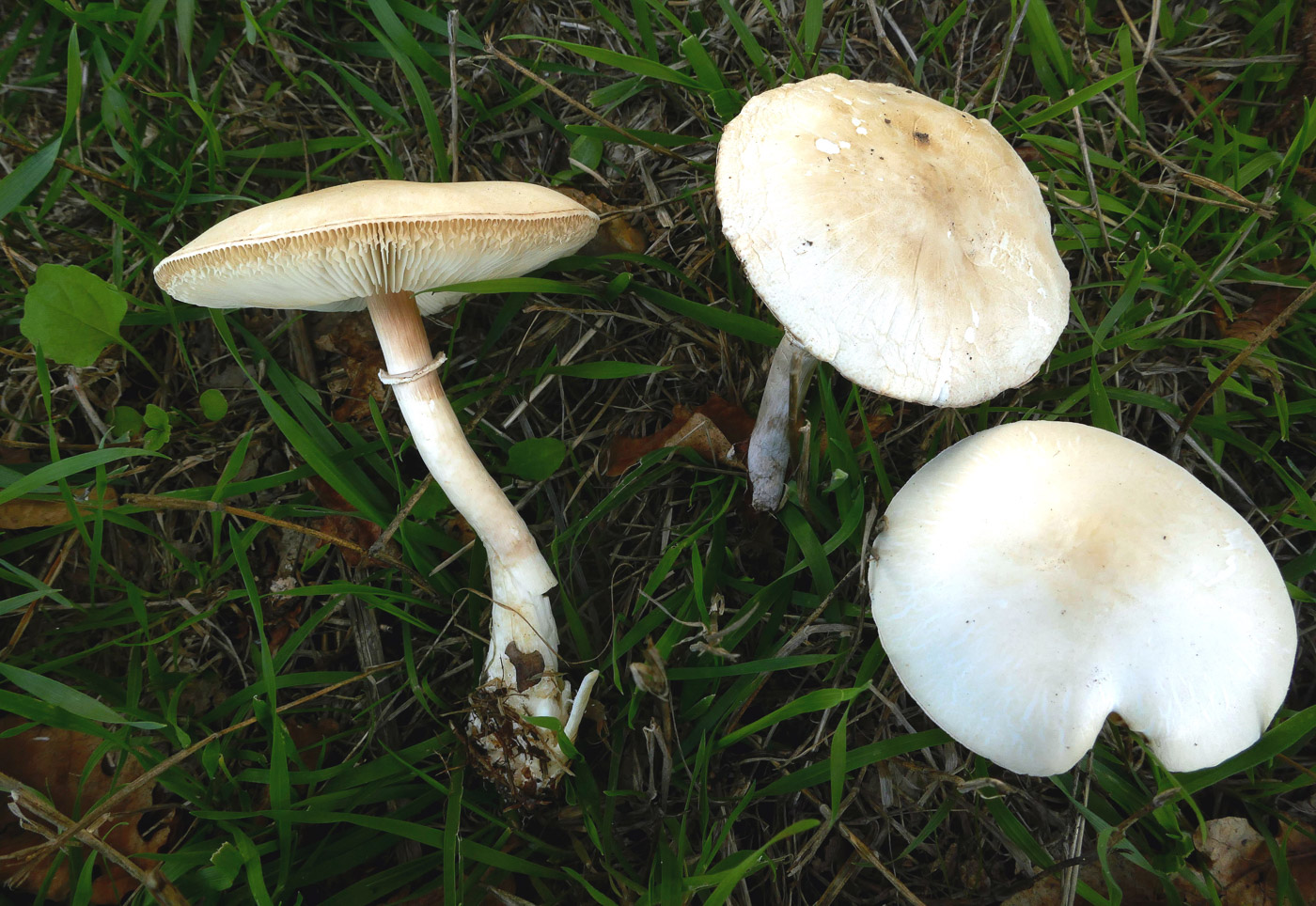 |
September 16th Leucoagaricus leucothites (White Dapperling)
At Stampwell Farm in a grassy path edge, Jackie Ewan spotted this trio. On first seeing this species it's difficult to believe, judging from the cap, that it's not an Agaricus and that the white gills will eventually not darken through pink to the black of that genus when mature. They won't! They remain white, as are the spores. See also in Finds 2020 September 11th and 2021 October 19th.
|
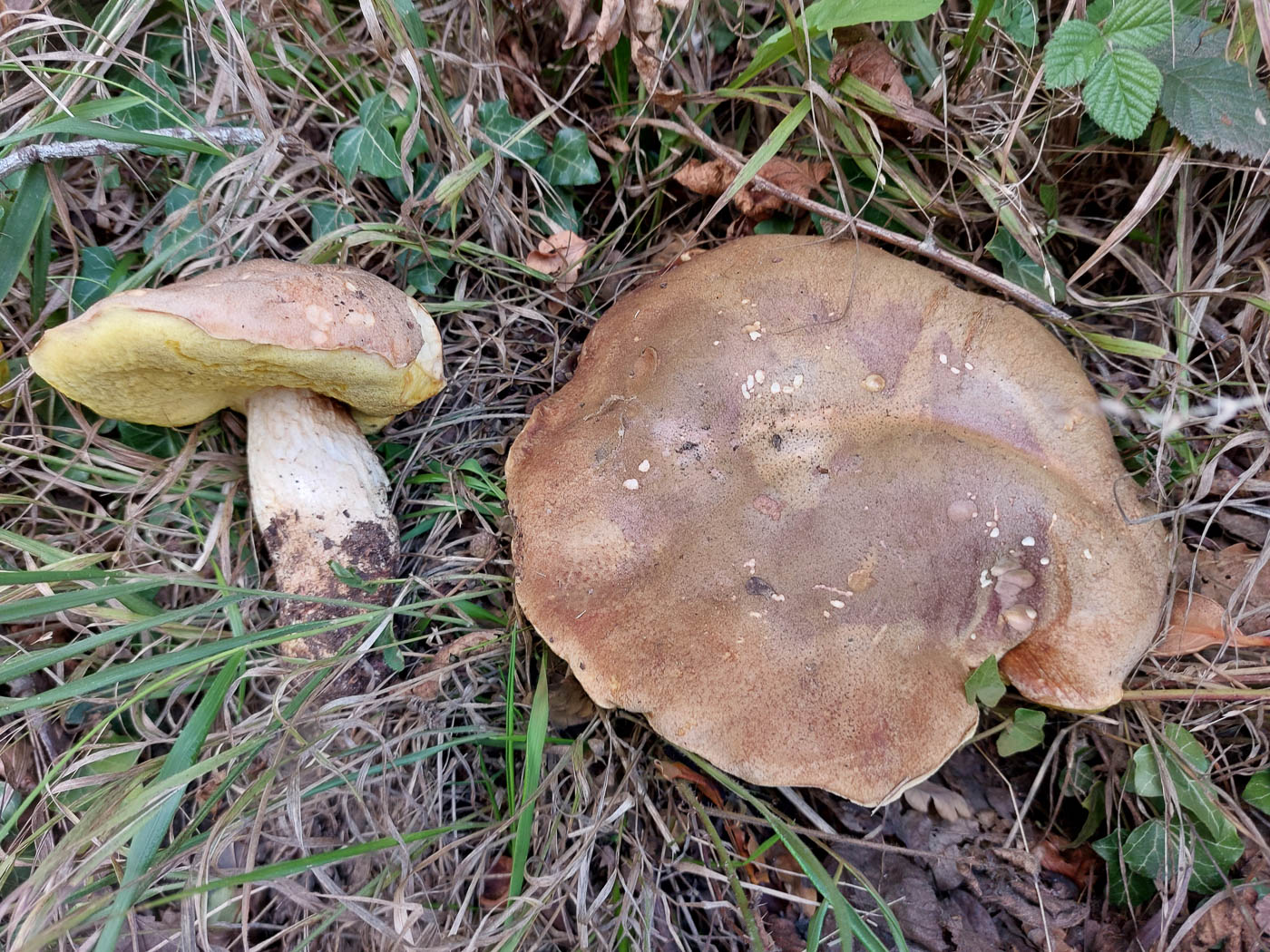 |
September 16th Hemileccinum impolitum (Iodine Bolete)
In Seer Green under Oak Jesper Launder spotted this pair. This is a substantial species (previously in Boletus) with a palish cap and yellow pores and stem. Two features to note which separate it from the possibly similar B. radicans (see the entry from yesterday for comparison): the pores and flesh are unchanging when pressed and the cut flesh at the stem base reportedly has a smell of iodoform. It occurs usually under Oak in parks, grassy places rather than woodland and is considered an occasional fruiter - we have a handful of records and two previous Finds entries: 2020 September 21st and 2021 August 15th.
|
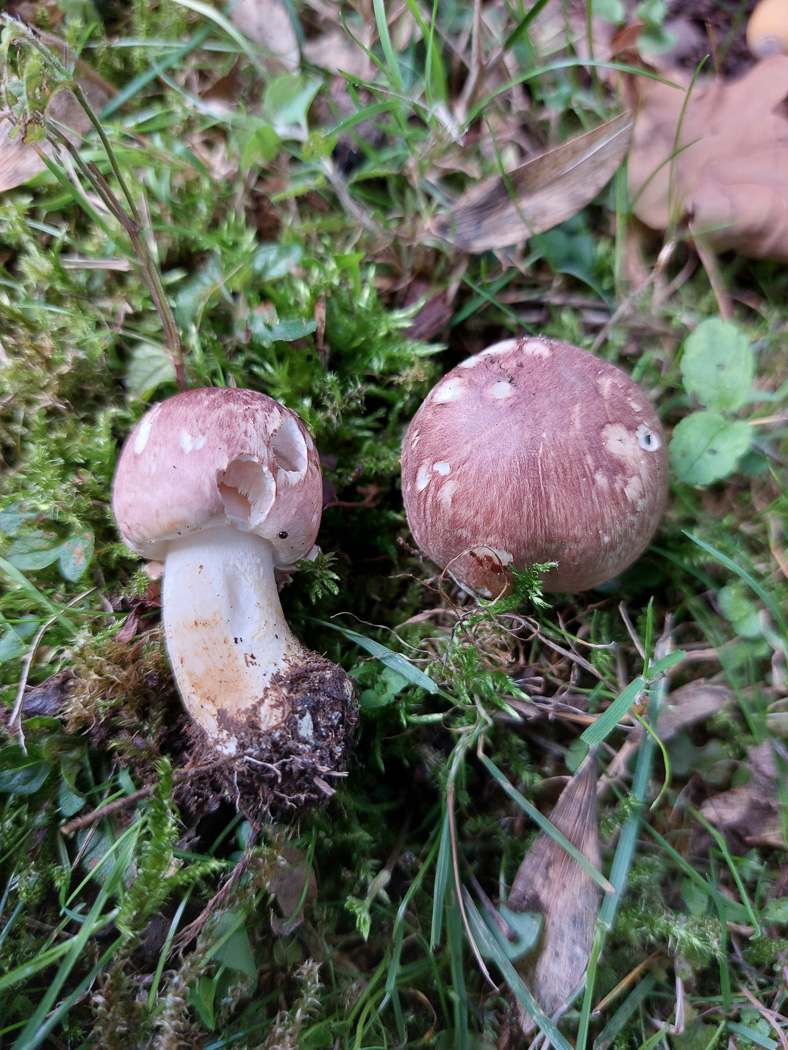 |
September 16th Agaricus porphyrizon (Lilac Mushroom) 
In Seer Green cemetery Jesper Launder found this rare species of Mushroom, one that appears from our records to be new to the county. The young specimens here show the distinctive lilac-brown tinged cap and clavate to slightly bulbous stem of the species, though the thin pendant ring and gills which lack much pink are not yet visible as the ring is still intact under the cap. Though it reportedly has the sweet 'mushroomy' smell associated with Field Mushrooms and the like, the stem base reacts as in the inky smelling A. xanthoderma (Yellow Stainer), turning instantly brassy yellow.
|
September 15th 2022
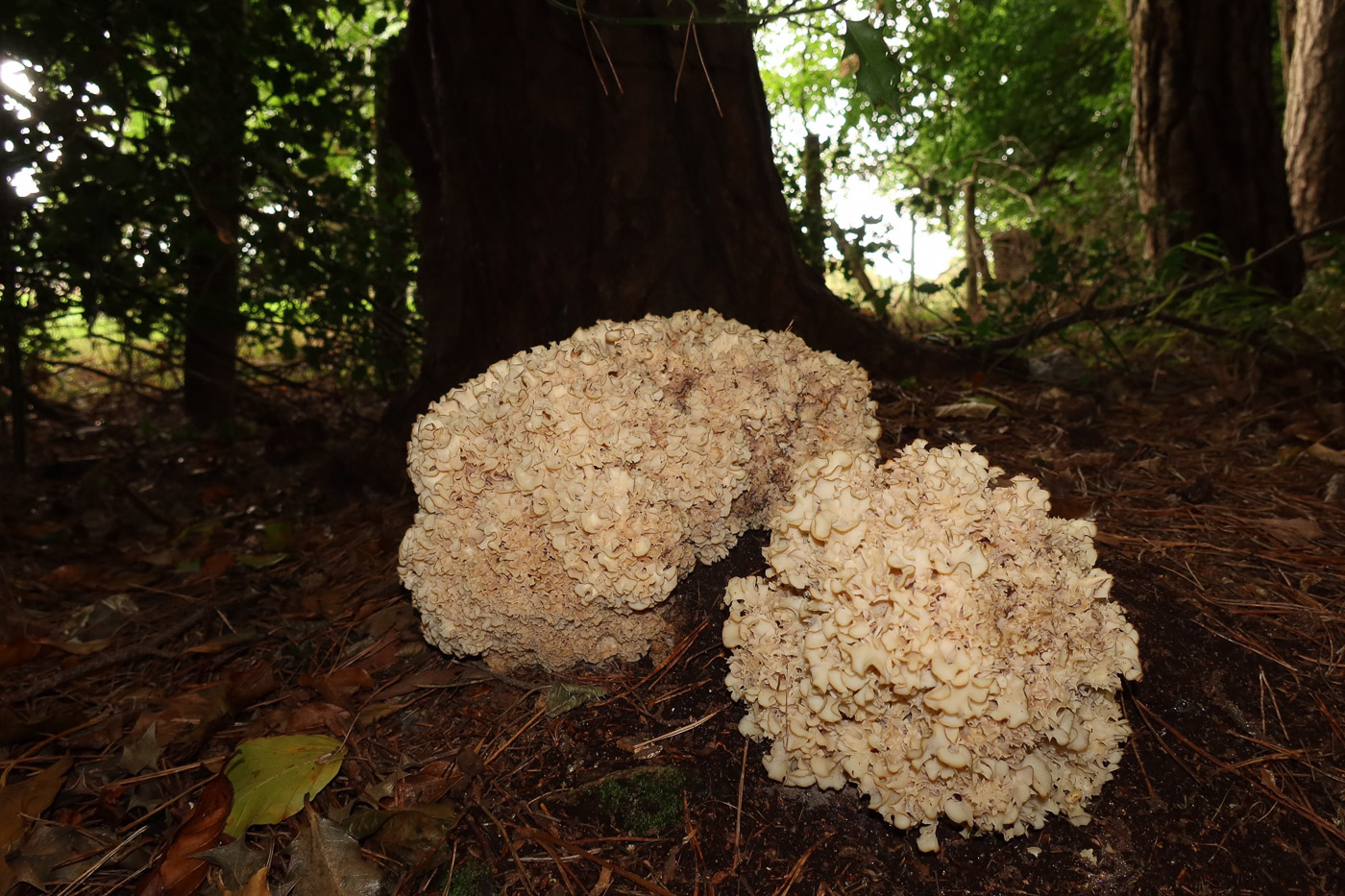
 |
September 15th Sparasssis crispa (Wood Cauliflower)
In Downley Woods (presumably at the base of conifer) Claire Williams was delighted to see this beautiful species, one which she'd not found in this area before. This large and eye-catching basidiomycete can get to anything up to 1ft 6in across - far bigger than any cauliflower- and the species is always associated with conifer, usually Pine, growing on roots or at the trunk base. If you find one on or near a deciduous tree please let Penny know!
|
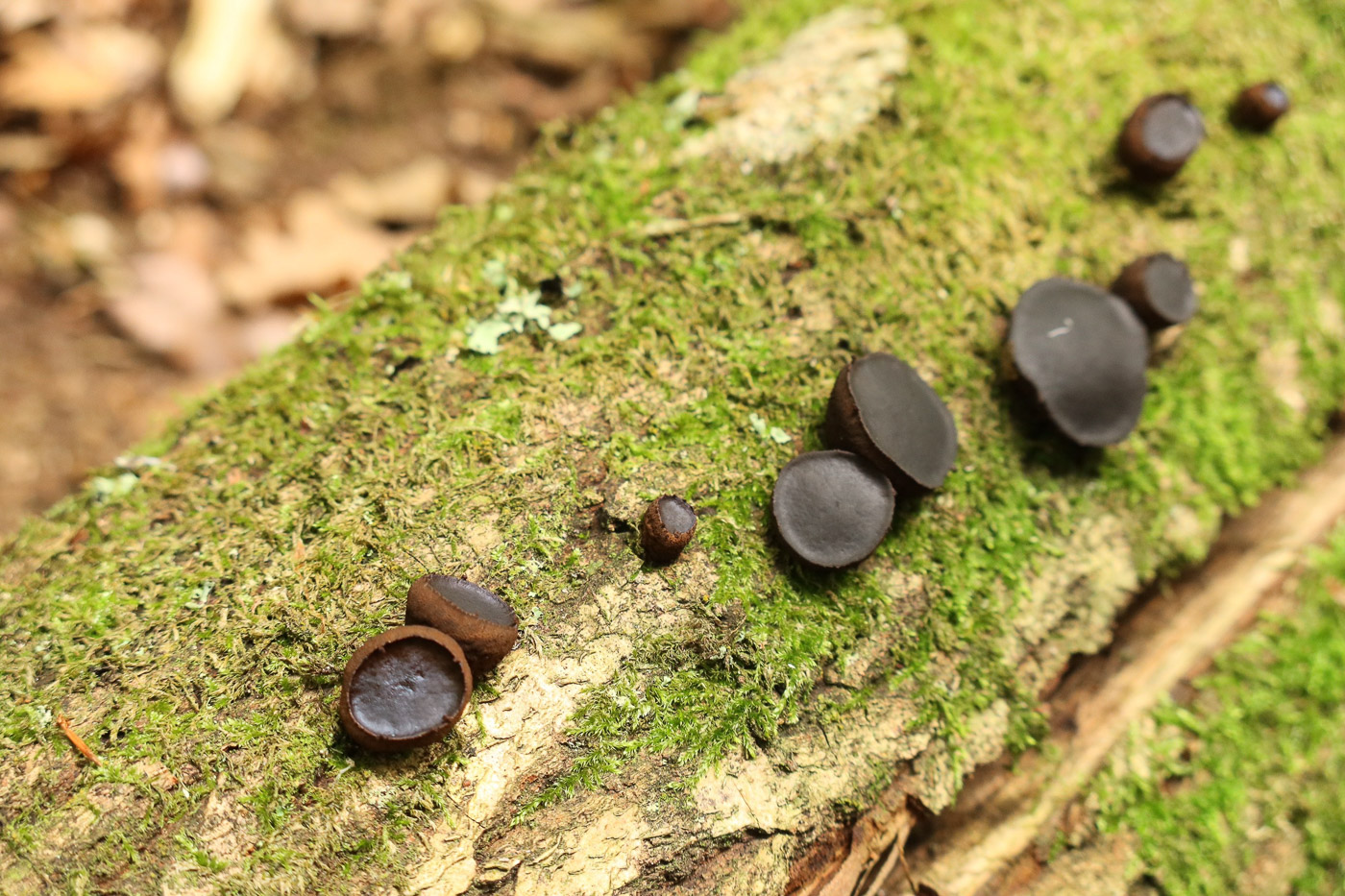
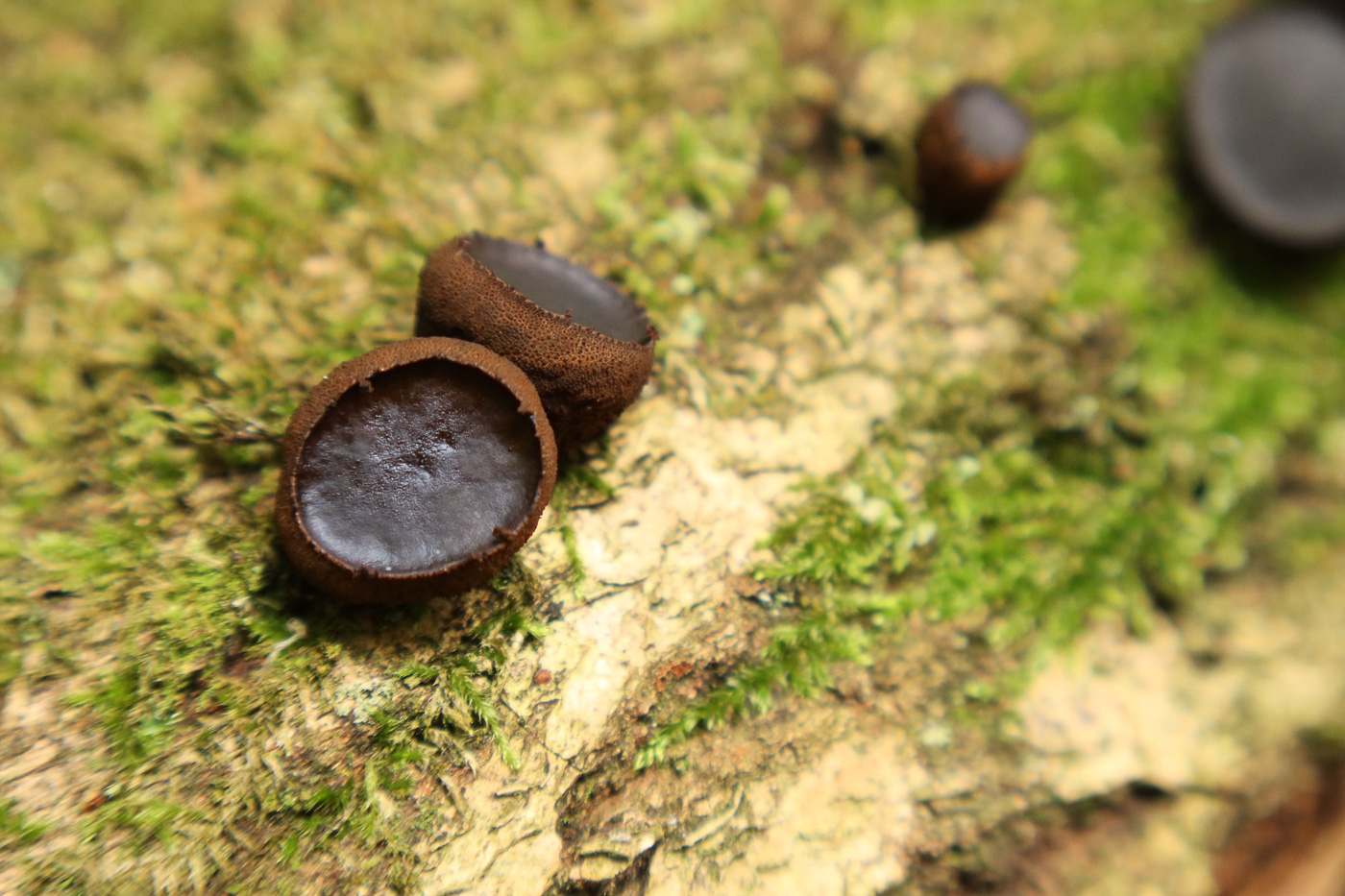 |
September 15th Bulgaria inquinans (Black Bulgar)
In Downley Woods Claire Williams noticed these dark brown soft discs on fallen Oak, up to about 2 cm across. This is an ascomycete and when mature the button-like discs turn completely black - in fact if you wipe a finger across the top the black spore mass will stain your finger. This is a useful diagnostic feature, separating the species from the quite similar genus Exidia (which is a Basidiomycete). See also in Finds 2020 October 11th.
|
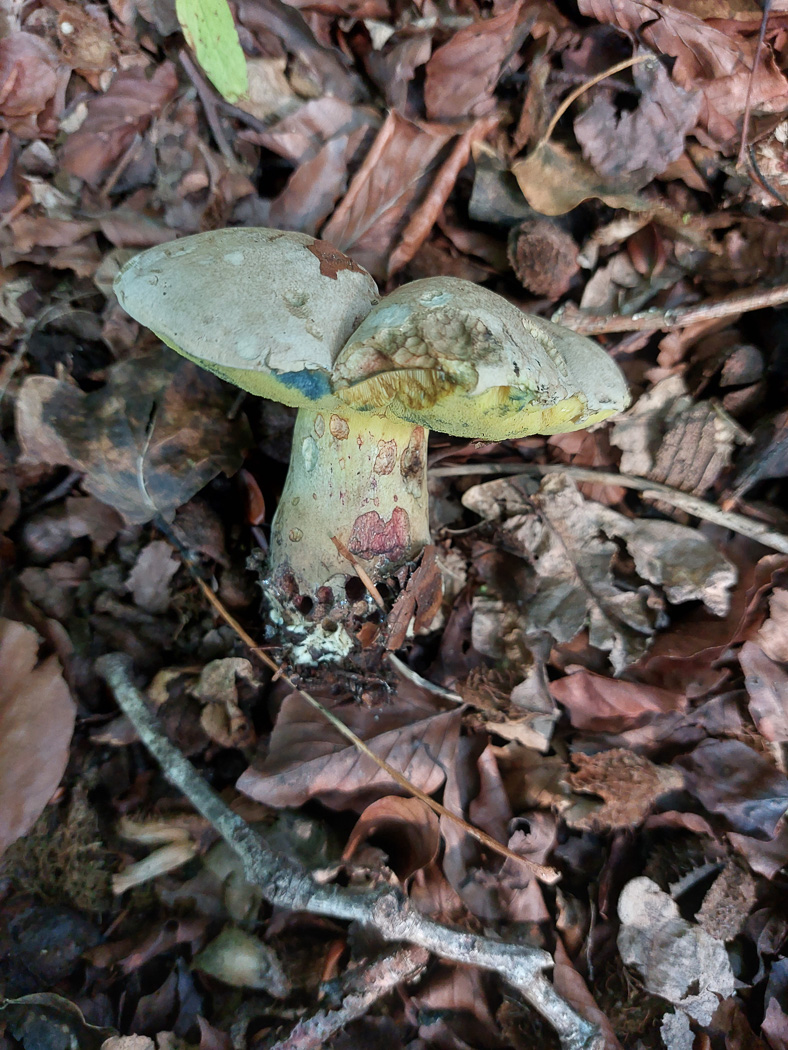
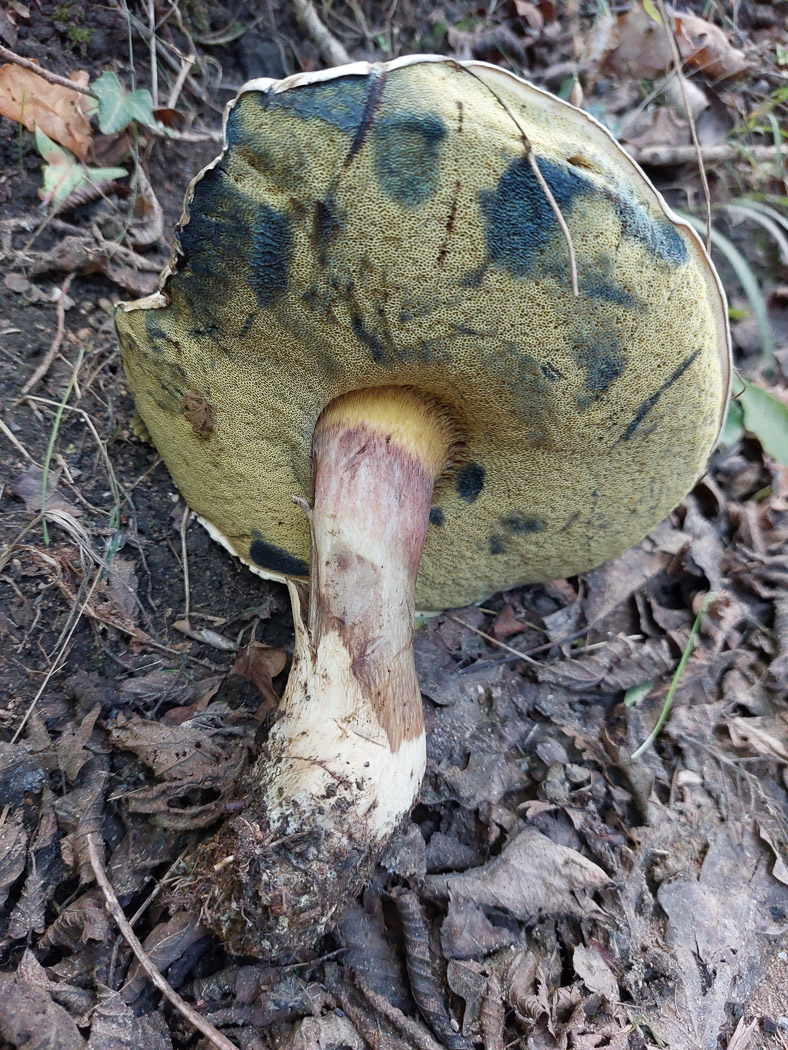 |
September 15th Caloboletus kluzakii (a recently described Bolete with no common name) 
In Jordans village Jesper Launder found this substantial bolete and recognised it as of possible interest. The pale cap, solid flesh and yellow fine pores which quickly blue when pressed recalled Caloboletus radicans (previously in genus Boletus as are many of the following species below also found today). He knew, however, that recent DNA sequencing had revealed the presence of another extremely similar species, Caloboletus klusakii, and that a few collections from the national fungarium at RBG Kew named C. radicans had proven with sequencing to be this new species. The differences are yet to be firmed up but traces of pink in either cap or stem are likely to be pointers to separate C. klusakii from C. radicans. With this in mind we sent two samples (of photo 1 and photo 2, found the following day by Jesper in nearby Seer Green) for sequencing. The first unfortunately failed (not an uncommon occurrence) but the second from Seer Green was confirmed as C. klusakii together with a further sample from our walk at Ivinghoe Common last weekend (see Penny's report for more images) making the Ivinghoe Common collection the first record for Bucks and photo 2 here (and in all likelihood photo 1 as well) the second and third.
|
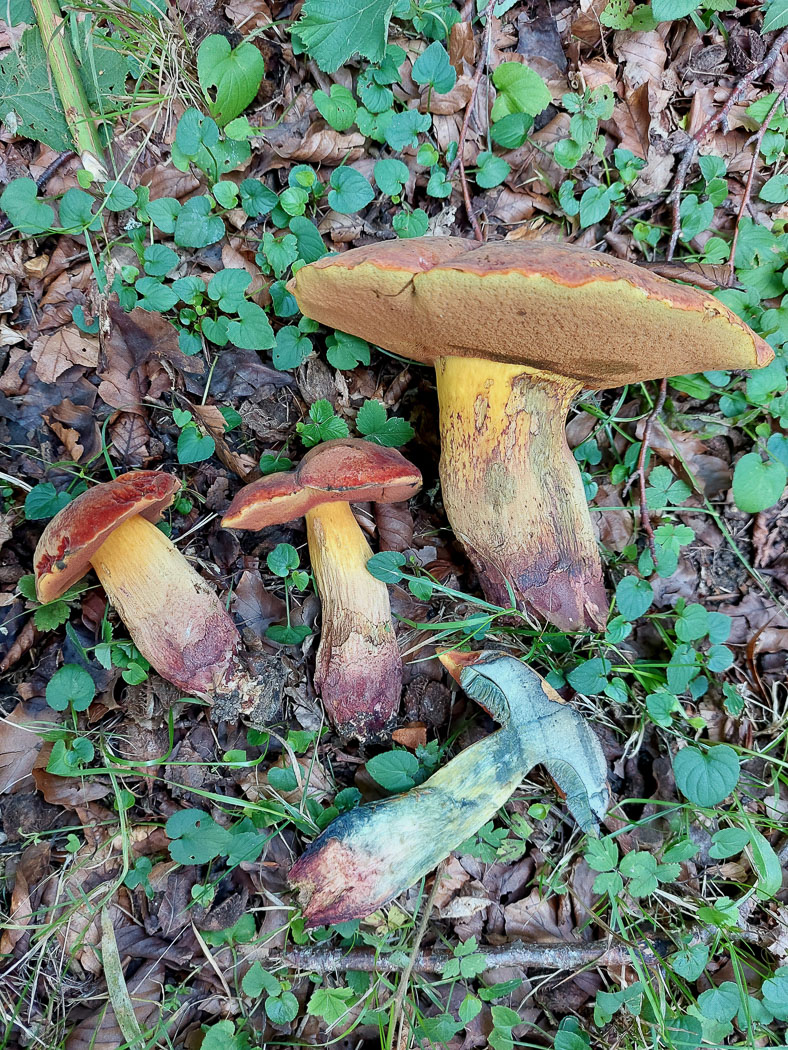 |
September 15th Suillellus queletii (Deceiving Bolete)
In Jordans village Jesper Launder came across this group under Beech and was able to recognise the pointers which separate this species from two other lookalikes: S. luridus and Neoboletus luridiformis. All three are sizeable chunky species, have orange to red pores rather than yellow and have flesh which when exposed to air quickly turns bright blue. The stem base of S. queletii, however, differs in having bright beetroot red flesh and also tapers, often rooting into soil. It is probably the least common of the three species, usually found under beech or Oak. We have one previous entry in Finds: 2021 November 6th also found and identified by Jesper.
|
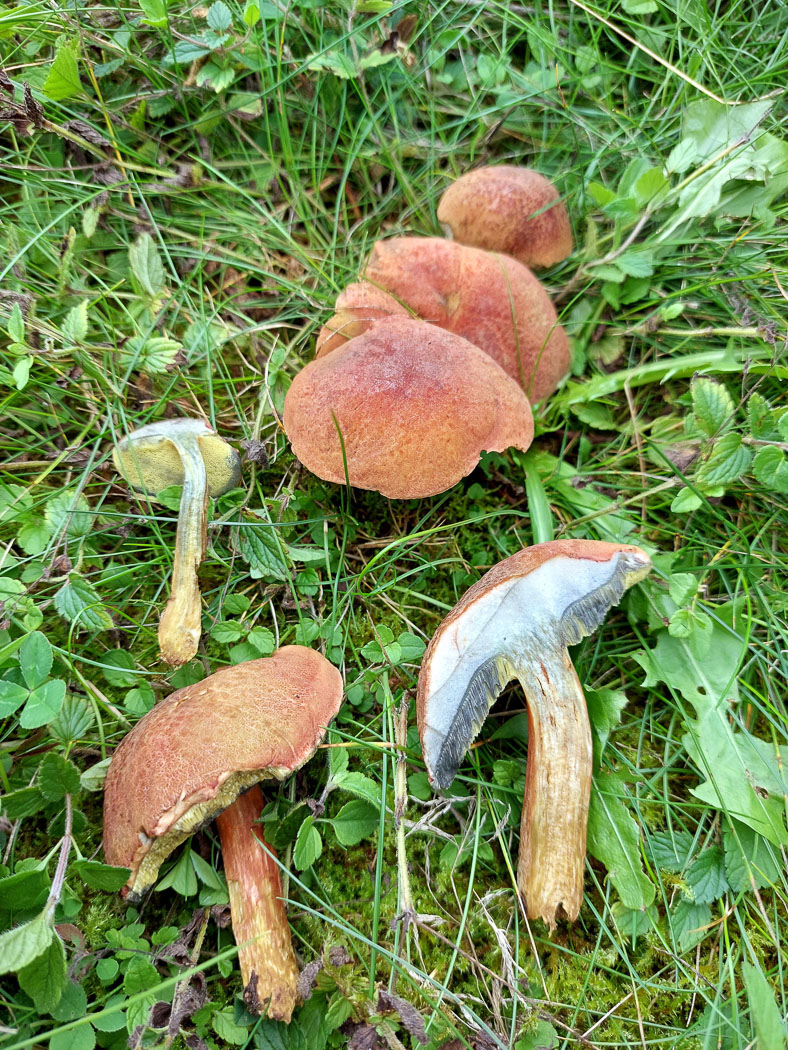 |
September 15th Hortiboletus bubalinus (Ascot Hat) 
In his garden in Jordans village Jesper Launder found this lovely collection of boletes under Lime. This is a species very close to H. rubellus (compare with a collection found two days earlier) and has a subtle cinnamon to pinkish cap though the colour is variable, and when cut open the cap (also sometimes the stem) flesh stains pale blue, often with a pink zone just under the cap cuticle. The yellow pores also stain blue when pressed. It lacks the orange dots in the stem base seen in H. engelii (also in Finds today) and the cap is not the intense red seen in young fresh H. rubellus (though this colour fades in maturity). It occurs un Oak, Lime and Poplar though often on open parkland / gardens rather than woodland. This is a first for Bucks, though the species is not really rare but probably mistaken for other more familiar Boletes. Jesper's ID of this collection has now been confirmed with DNA sequencing and asample will be sent to Kew Fungarium.
|
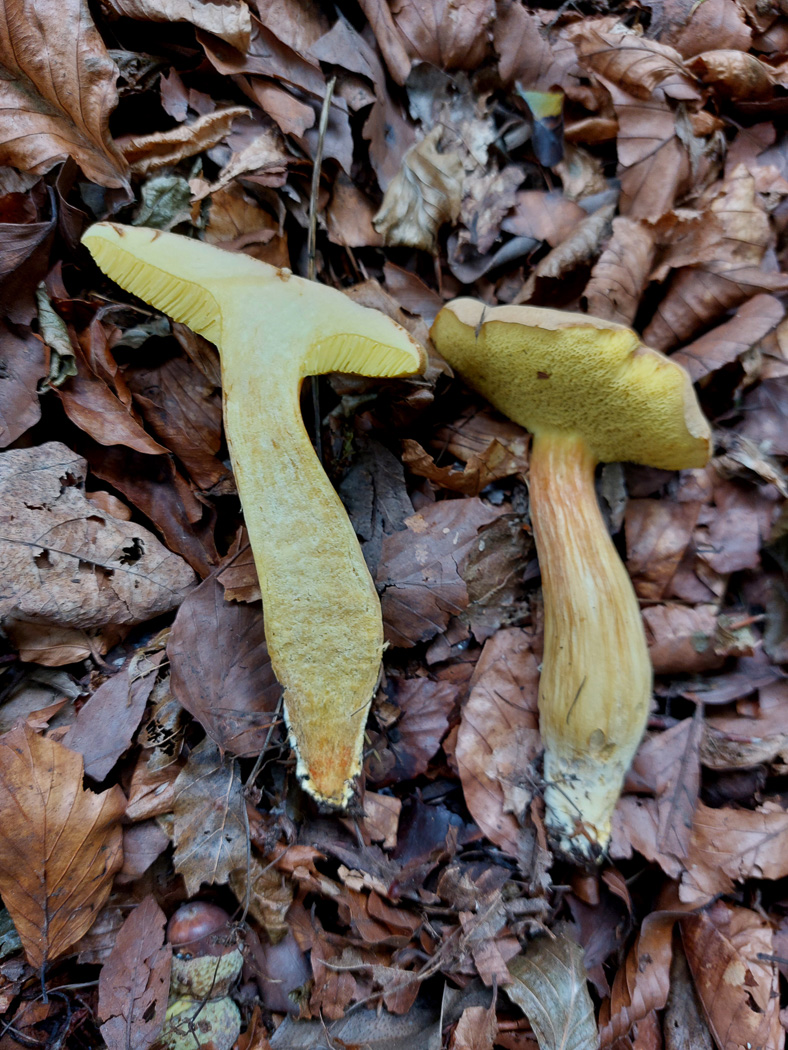
 |
September 15th Hortiboletus engelii (a Bolete with no common name)
Whilst around Jordans village Jesper Launder found this common bolete - better known as Boletus or Xerocomellus communis. This is yet another lookalike soft yellow-pored bolete but distinguished in the field - if split lengthways - by the orange 'dots' usually visible at the stem base (seen her in photo 2). it is common under Oak. We have several Finds entries - see Masterlist for details.
|
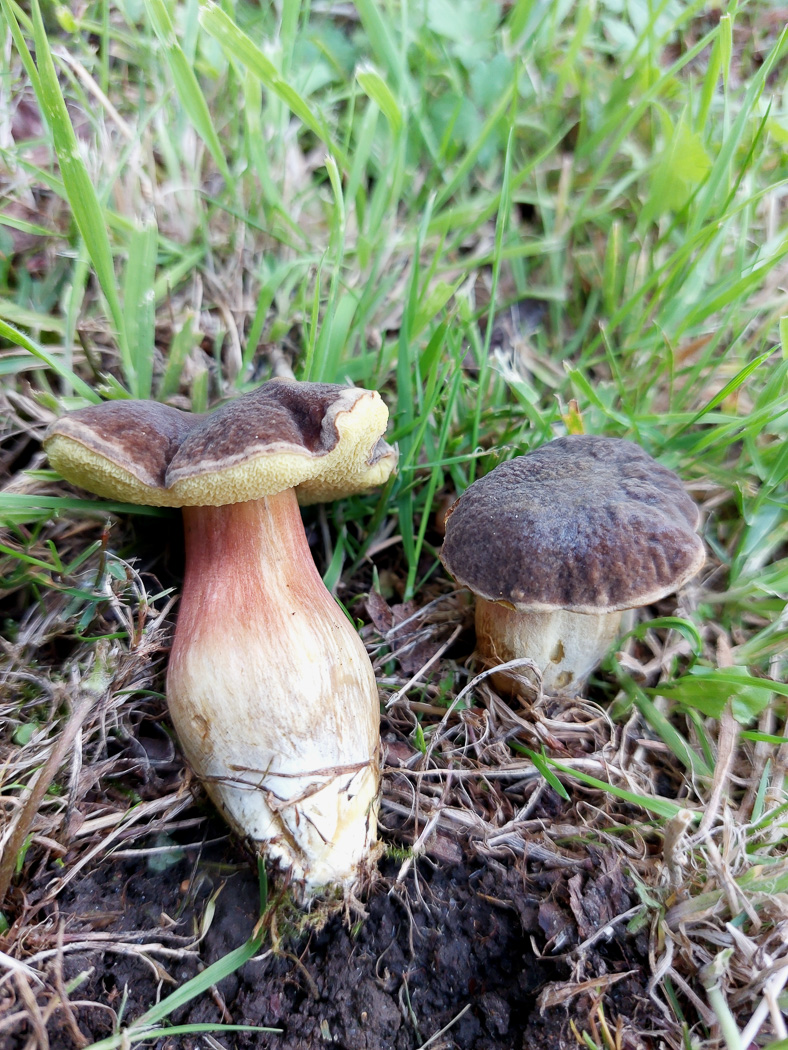 |
September 15th Xerocomellus pruinatus (Matt Bolete)
Whilst around Jordans village Jesper Launder found this nice pair of boletes - a very common species in the Chilterns and one which, with experience, can be recognised from its rich brown velvety cap when young. However when mature it can easily be - and no doubt is often - confused with other similar species. Here Jesper found both young and mature near together which helps! The flesh throughout is bright yellow especially when young, showing a clear pink line just under the cap cuticle, the pores and stem usually blue fairly slowly in comparison with the similar X. cisalpinus, and it can have bright yellow mycelium. We have just one previous Finds entry (2020 October 19th), not due to its rarity but to the difficulty and doubts over making definitive determinations.
|
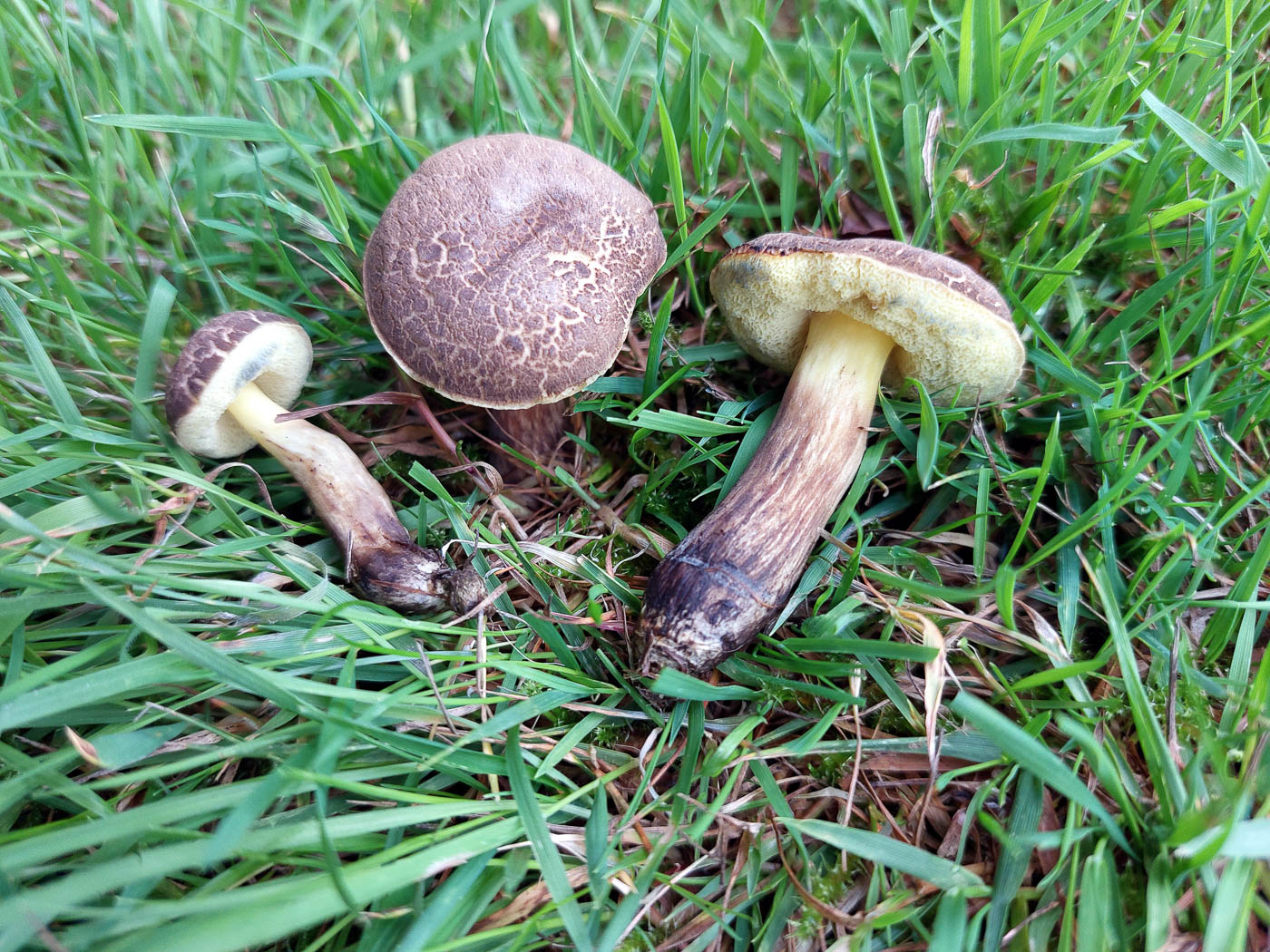
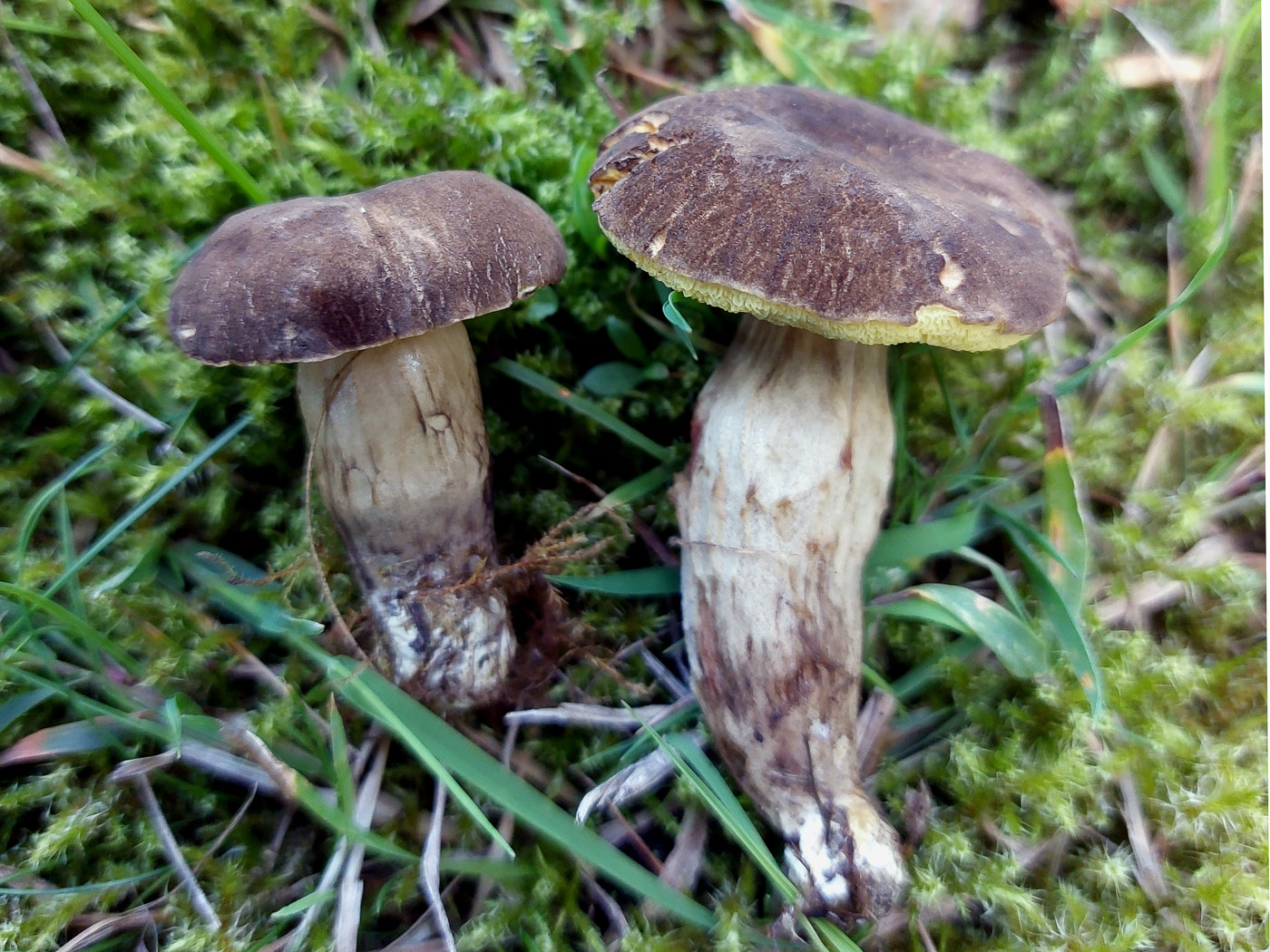 |
September 15th Xerocomellus porosporus (Sepia Bolete)
Whilst around Jordans village Jesper Launder found several of these common boletes which, with experience, can be named to species in the field but are easily mistaken for others in the genus. The main features to note in the field are the stem - yellow at the apex then gradually reddish then sepia to black at the tapered base, the cap - dull to dirty sepia brown, soon cracking, and the pores - soft and pale yellow with hardly any blueing. It often occurs under Oak. With a scope the species has a unique feature: the majority of the spores are 'truncate', flattened at one end as if snipped off. Though we have many records, this is our first entry for Finds.
|
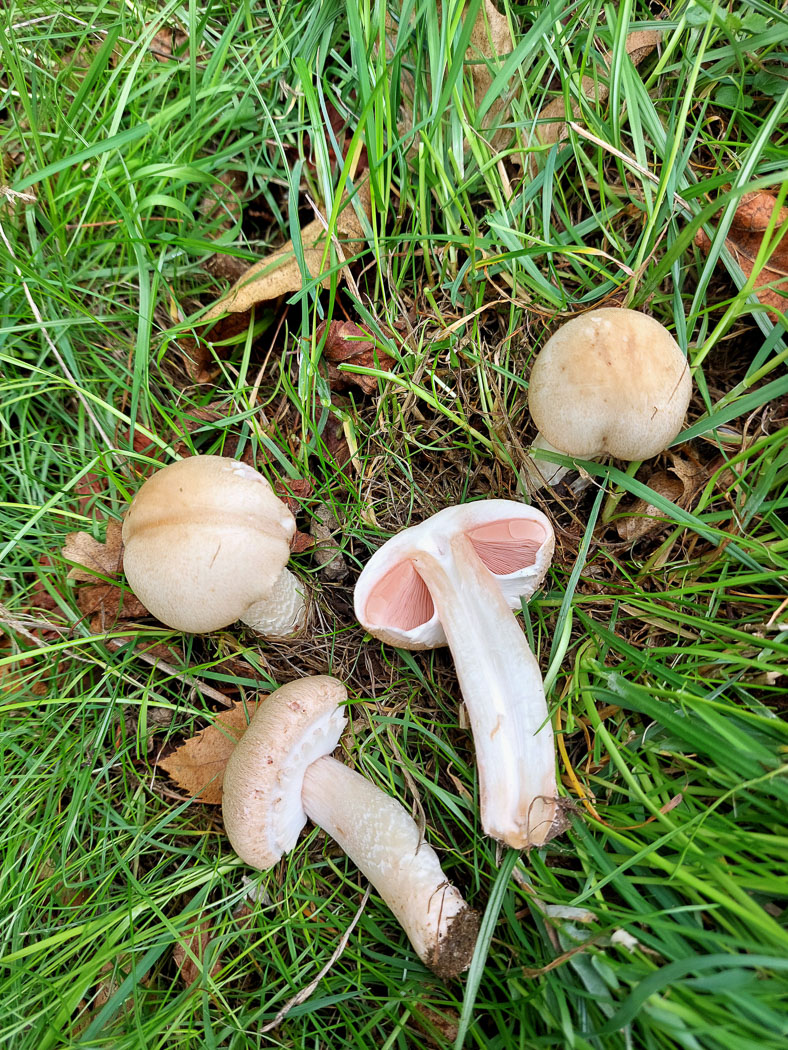
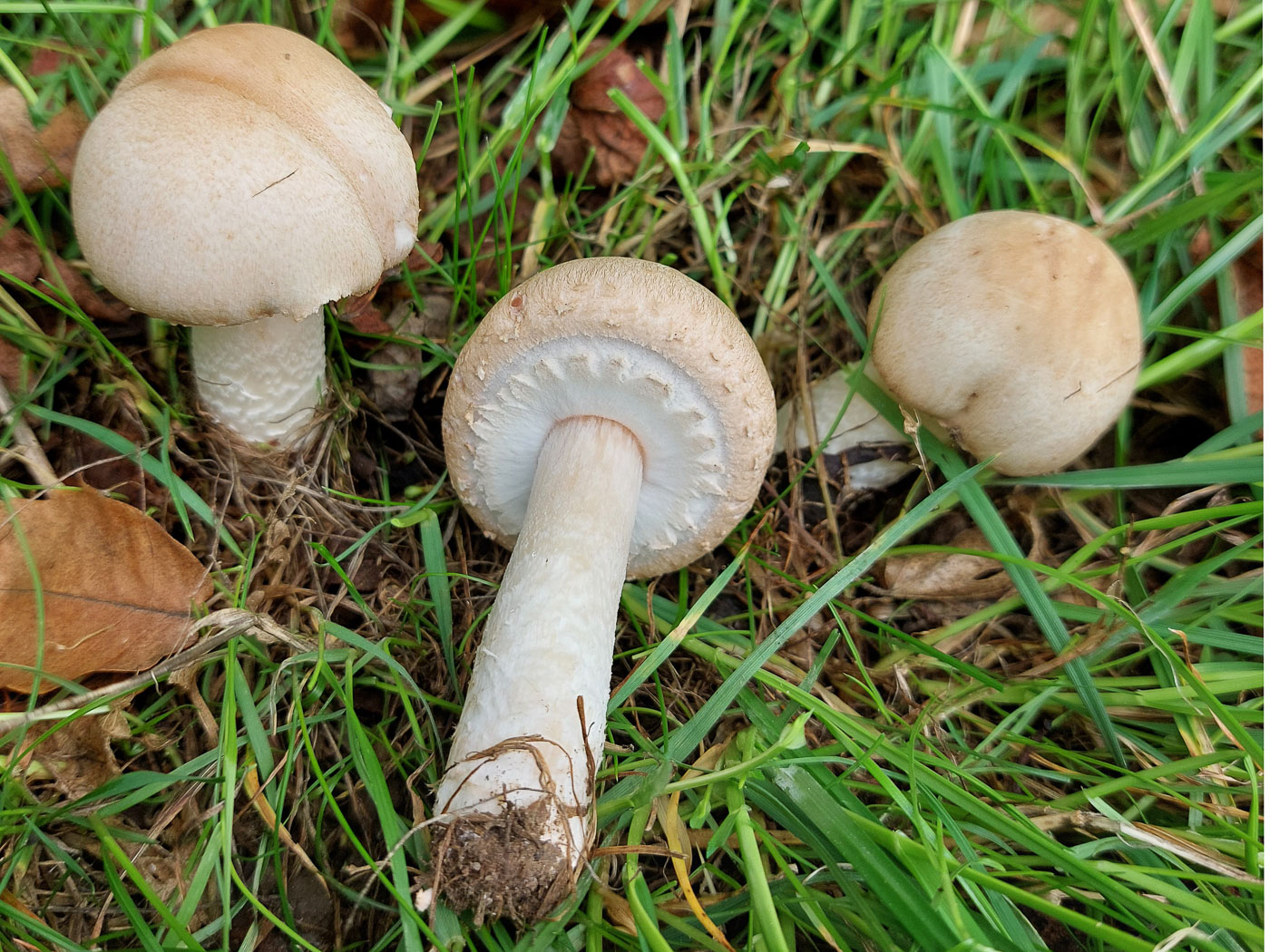 |
September 15th Agaricus depauperatus (a Mushroom with no common name)
Near Jordans village Jesper Launder found this rare Mushroom species - a new record for the county. The genus Agaricus is basically an easy one to recognise but in fact one of the hardest to then identify to species, of which there are many which look extremely similar. A. depauperatus seems to be characterised by its pale flesh coloured cap which becomes faintly scaly with age, the thick 'cogwheel' like ring which then hangs down on the stem with a tattered edge, the stem is slightly tapered at the base and both stem and cap flesh stain pinkish orange. This collection will be dried for sequencing.
|
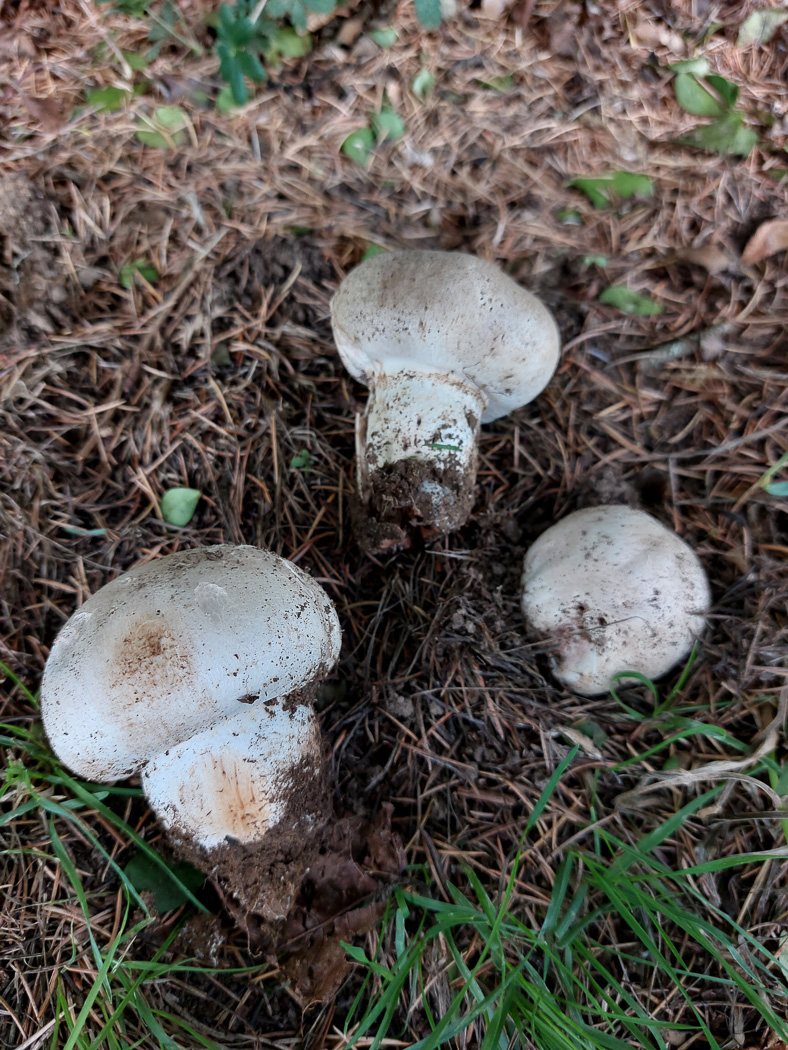 |
September 15th Agaricus bernardii (Salty Mushroom)
Near Jordans village Jesper Launder found this occasional Mushroom species, one which favours dunes and coastal grassland but is now often found inland near roadside verges where salt in wintertime has been spread. The species is is squat and stocky for the genus, has an unpleasant urine-like smell and flesh which tends to turn faintly reddish orange. We have just three previous records, this being the first for Finds.
|
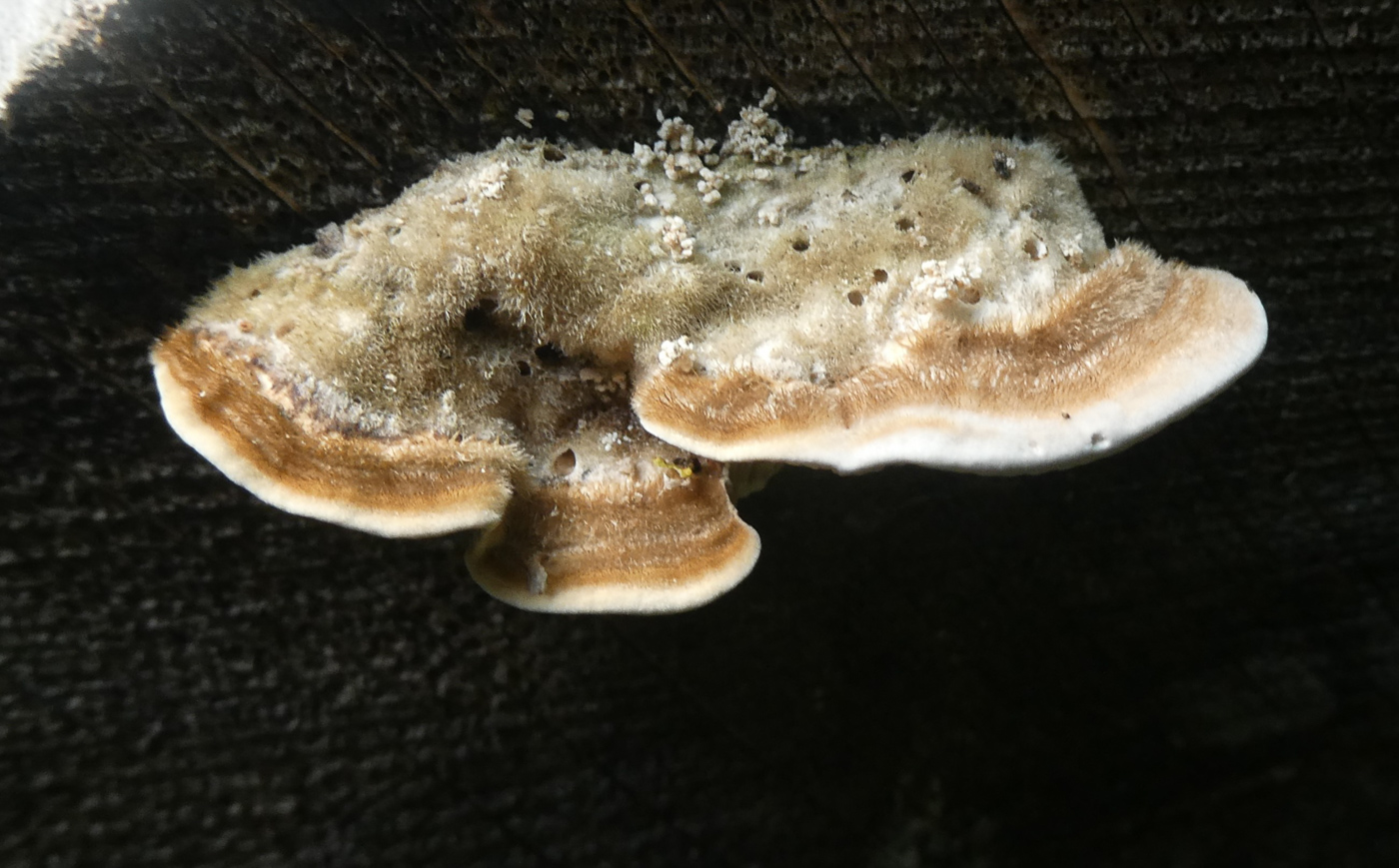
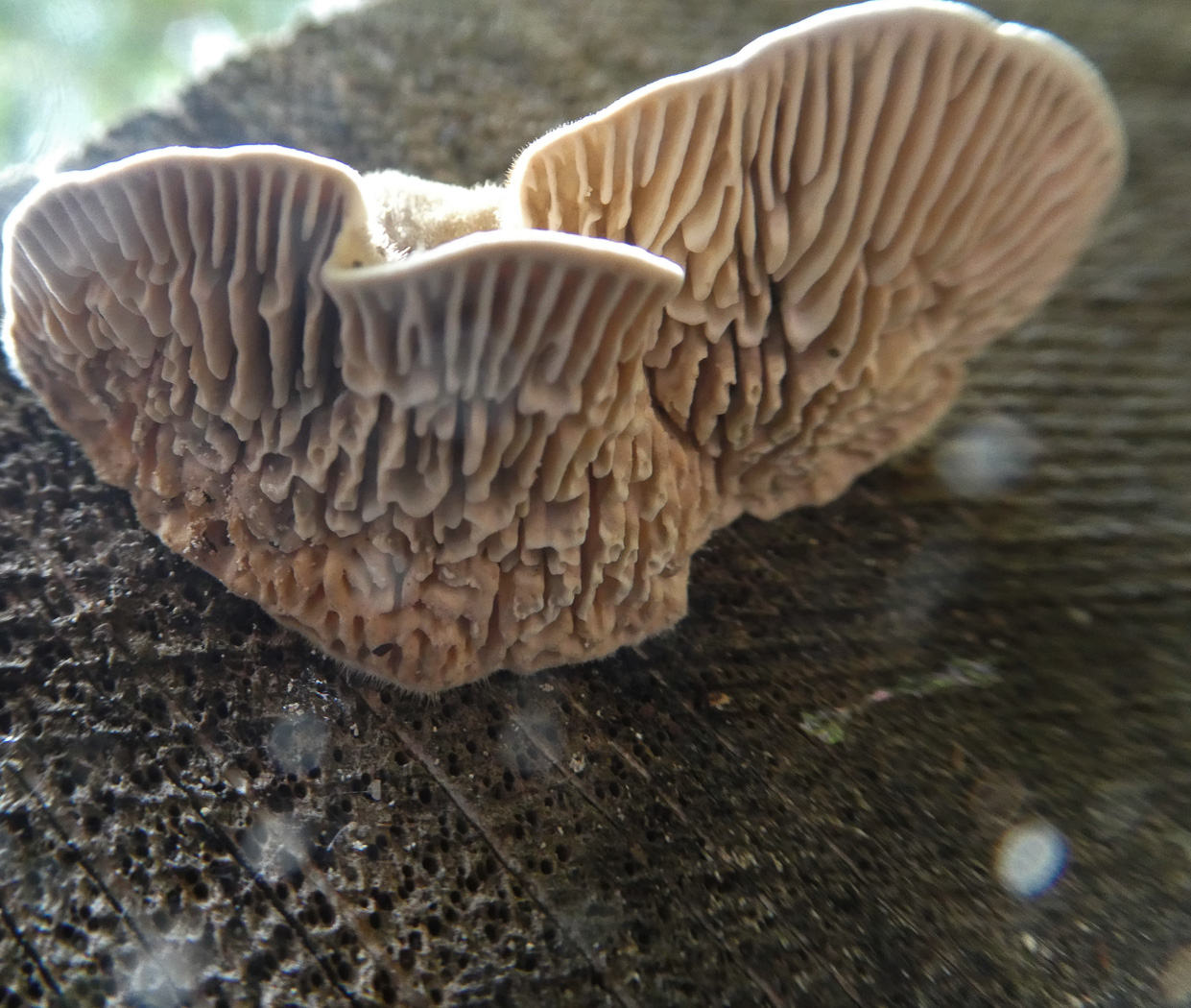 |
September 15th Daedalea quercina (Oak Mazegill) 
In Chalfont St Peter on a fallen log Jim Wills found this fresh bracket. Though the upper surface can be confused with other similar brackets, the deeply grooved pale mazelike undersurface is unmistakable. Jim also took the trouble to check the spores. The species occurs quite commonly on Oak and just occasionally on Sweet Chestnut. We have just one other Finds entry, 2020 August 14th.
|
September 13th 2022
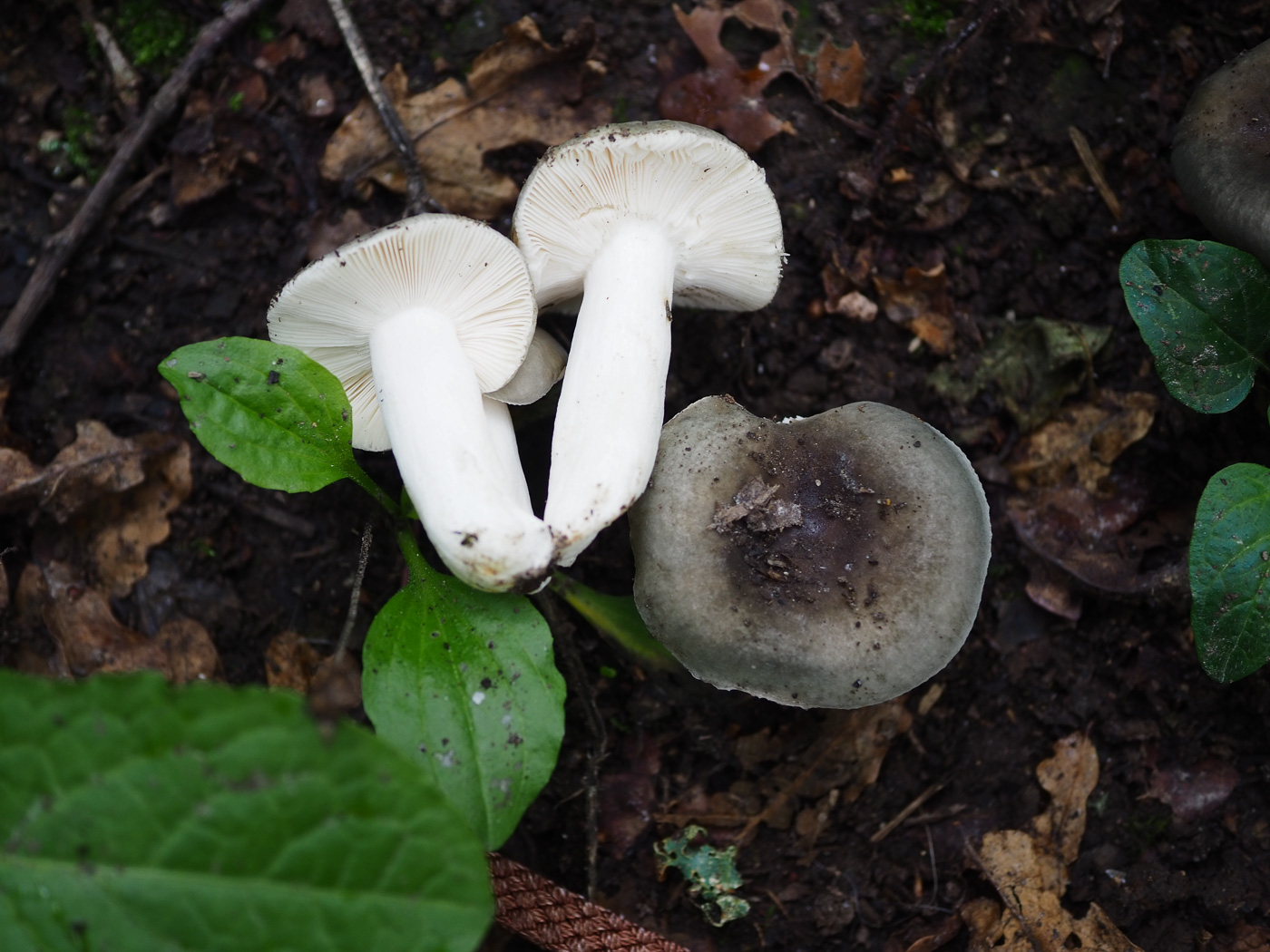 |
September 13th Russula parazurea (Powdery Brittlegill)
Under Oak in Naphill Common John and Leslie Catterson found several of these greyish capped Brittlegills. The cap colour of this particular species is quite variable, sometimes with a blue green tinge, sometimes yellow-green or even brownish green. The cap surface is dull and matt, often with a 'bloom', hence its common name, and it has pale cream gills and favours Oak - one of our commonest Brittlegills though not always readily recognised. See the Masterlist for more examples.
|
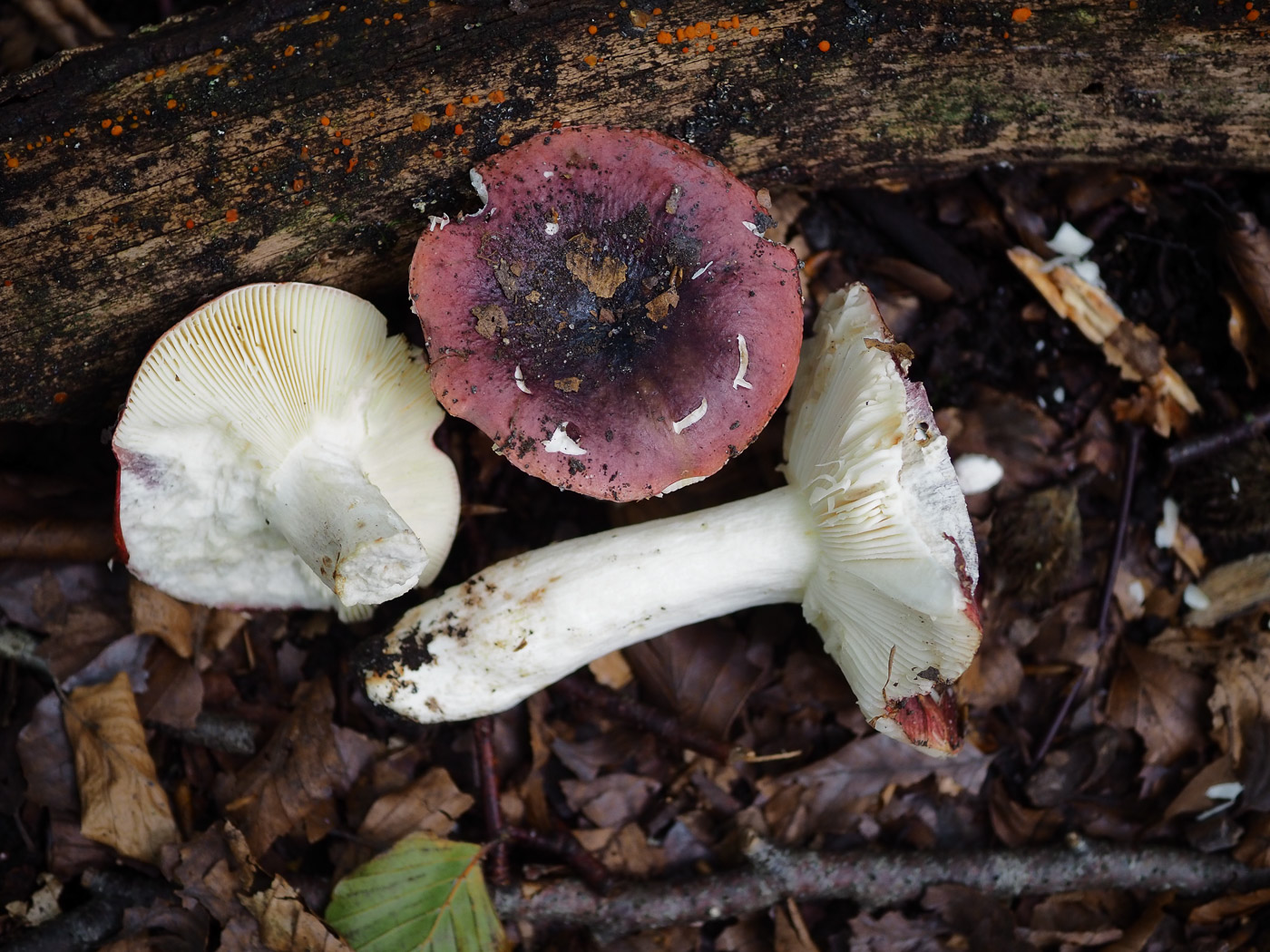 |
September 13th Russula atropurpurea (Purple Brittlegill)
Under Beech in Downley Common John and Leslie Catterson found a few purply red Brittlegills with darker almost black centres. The combination of these features together with very pale cream gills make this, one of our commonest Brittlegills, quite an easy one to recognise if under deciduous trees. See the Masterlist for more examples.
|
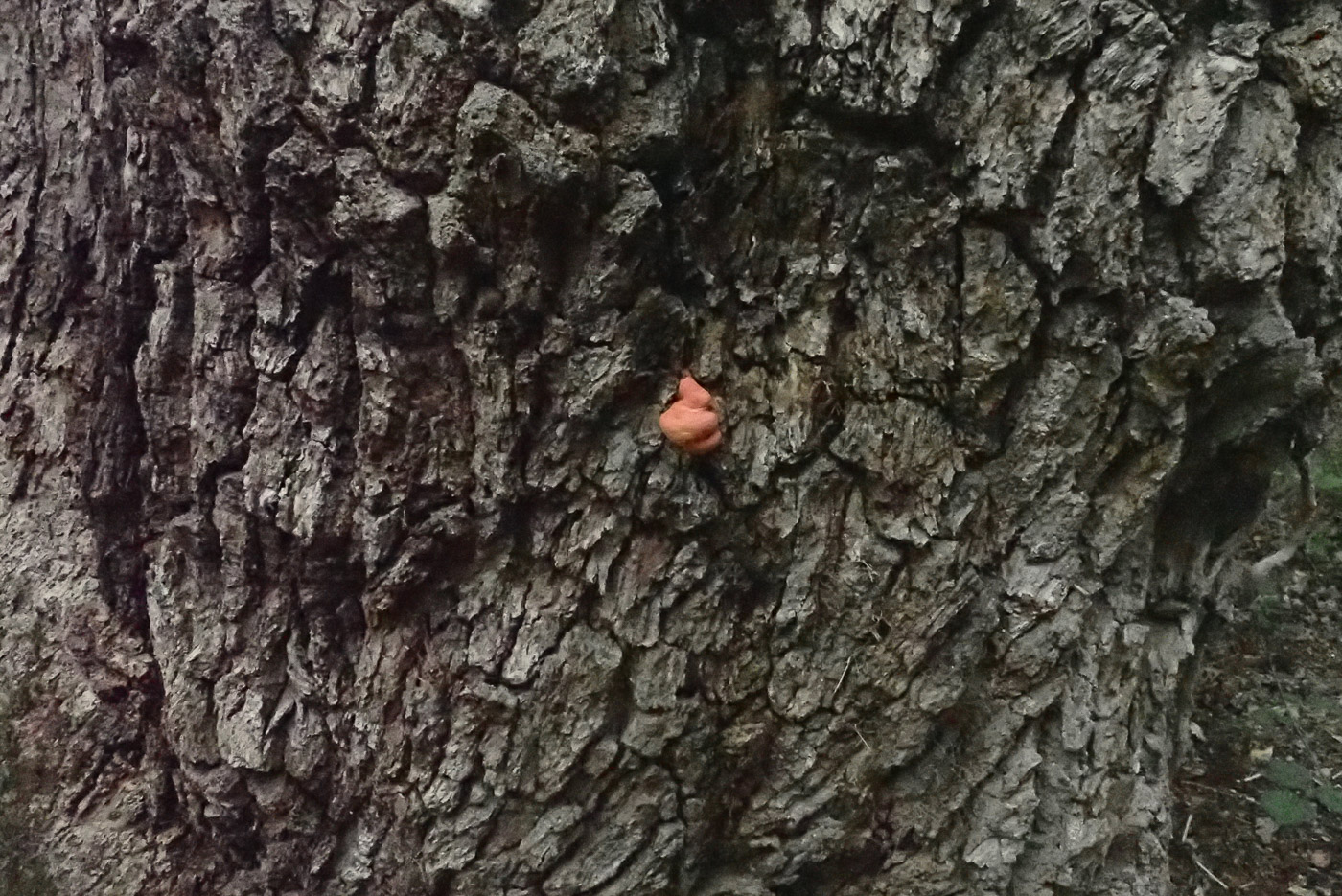
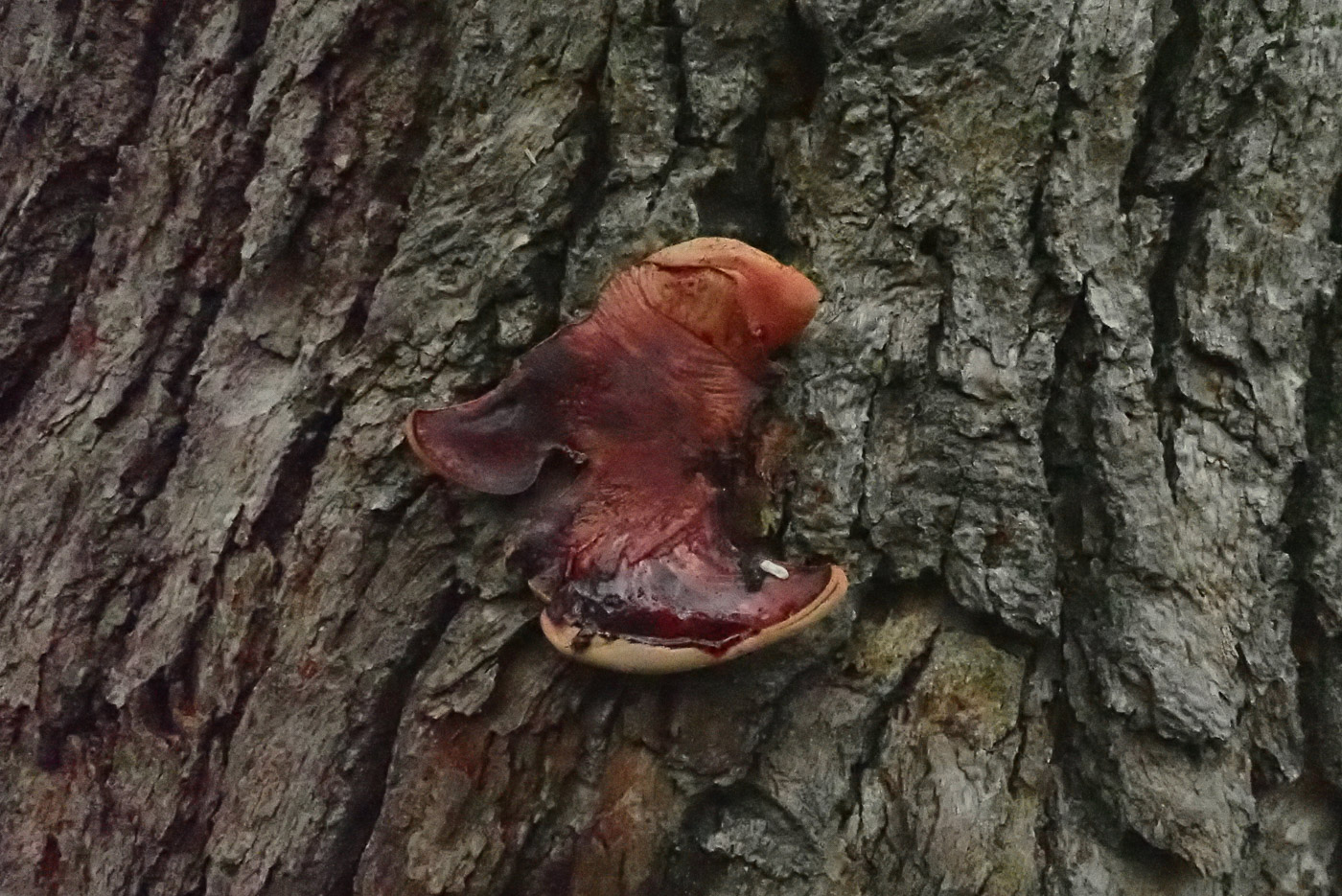 |
September 13th Fistulina hepatica (Beefsteak Fungus)
On a large Oak in Burnham Beeches Penny spotted a tiny bright red patch from a distance, and on closer inspection found it was as she suspected: the beginning stage of this species, only an inch or so across. Further round the same trunk she found a somewhat malformed larger example which was oozing the typical 'bloody' liquid after which the species is named. See also Finds 2020 September 12th and October 11th, also 2022 August 27th.
|
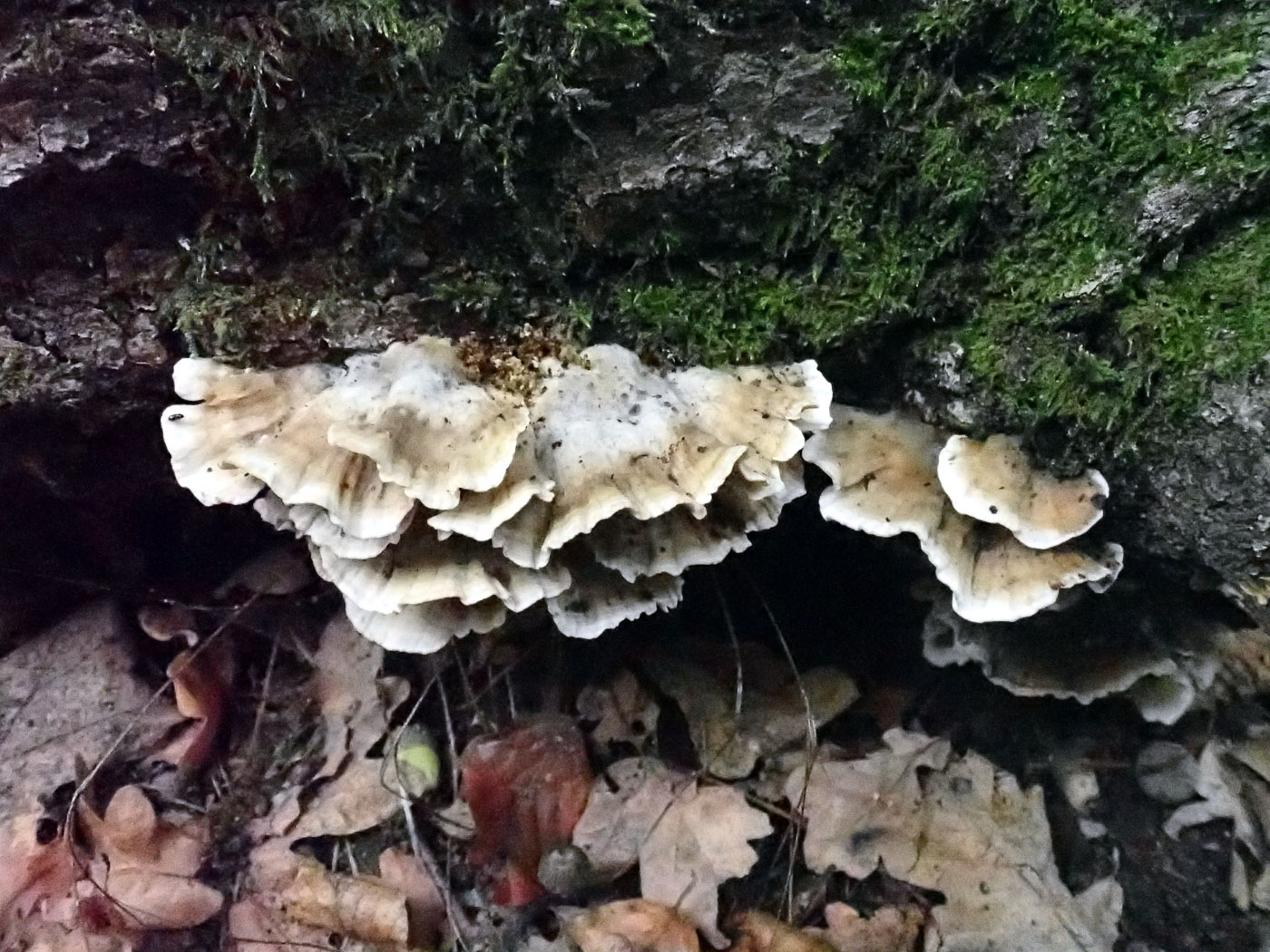
 |
September 13th Bjerkandera adusta (Smoky Bracket)
In Burnham Beeches Penny found good examples of some smallish soft fleshed brackets on fallen Beech, all common but different species which tend to get confused. Hence this attempt to show the obvious differences. Smokey Bracket is so-named because of its smooth smokey grey undersurface which separates it from the even more common Trametes versicolor (Turkeytail) which is obviously pored and entirely creamy white underneath. Note also its white rim and dark staining where rubbed - visible on the right in photo 2. We have probably better images elsewhere on Finds (apologies for Penny's here which are somewhat blurred). See the Masterlist for details.
|
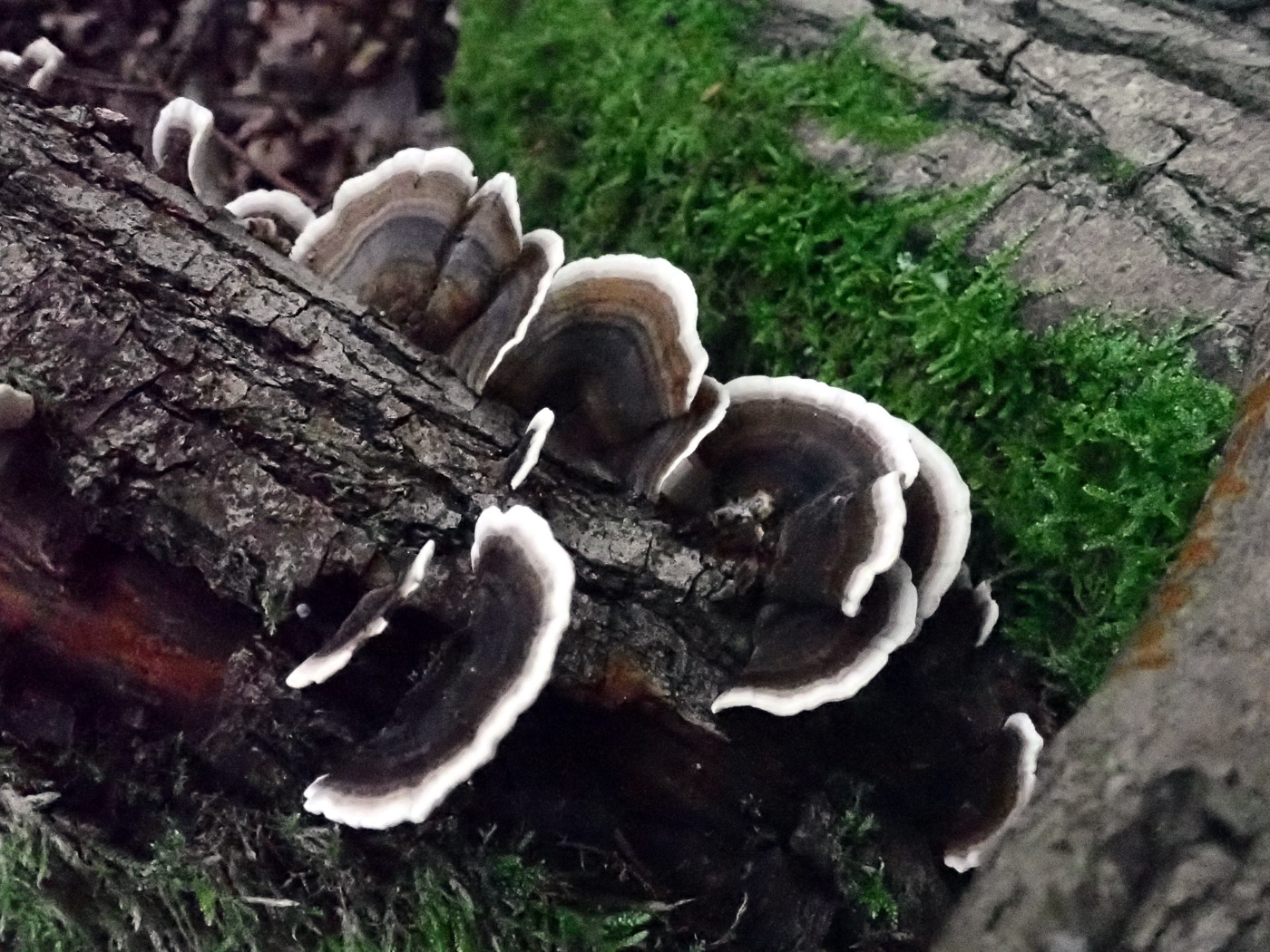
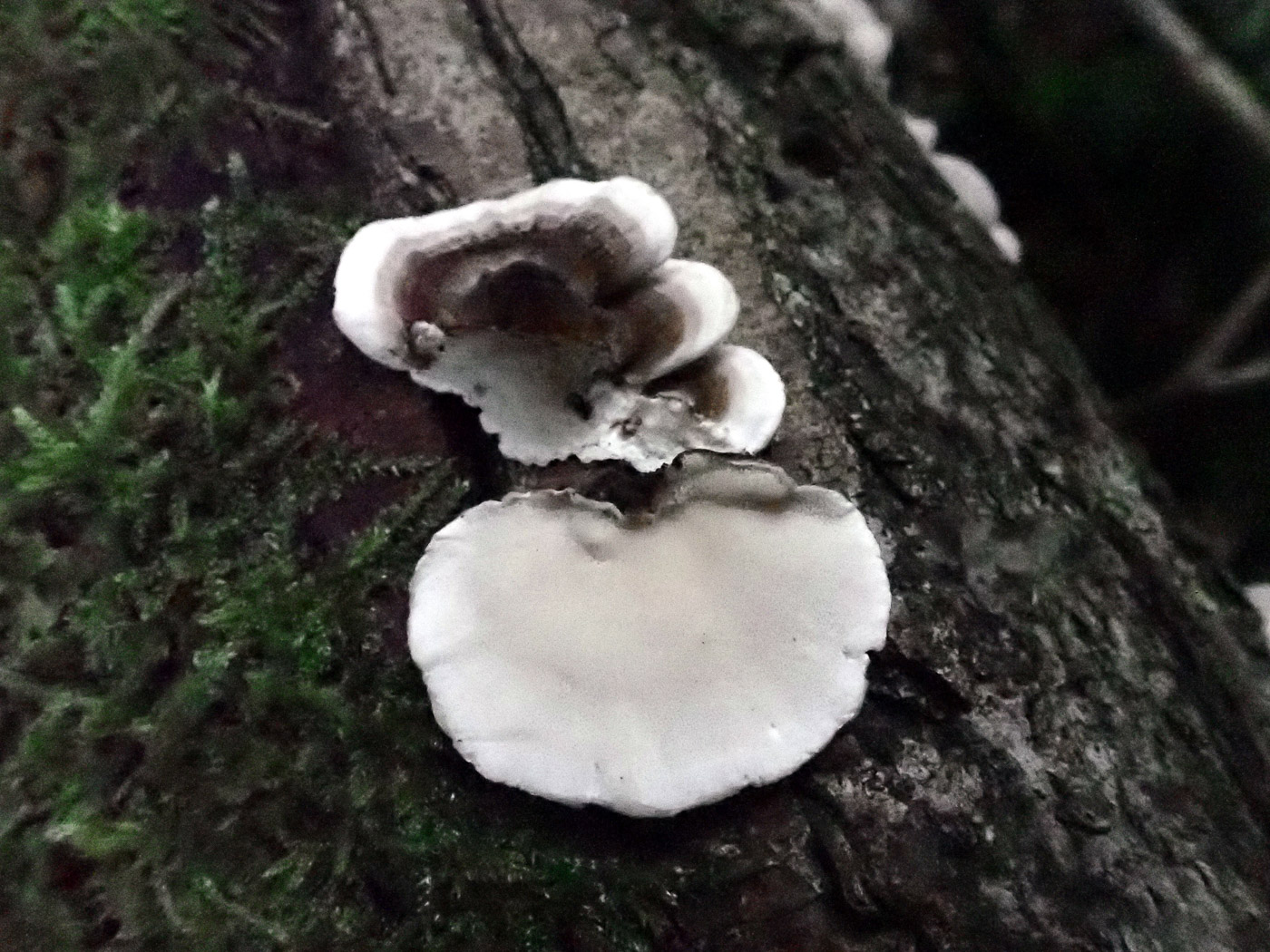 |
September 13th Trametes versicolor (Turkeytails)
Continuing Penny's soft fleshed bracket theme above, here for comparison (and also from Burnham Beeches) is a rather dark example of Turkeytails showing the typical zoning above - though this can also be a feature in Smokey Bracket and also the species following this one! Other examples in Finds show the creamy white pored undersurface far better than Penny's poor photo 2 here.
|

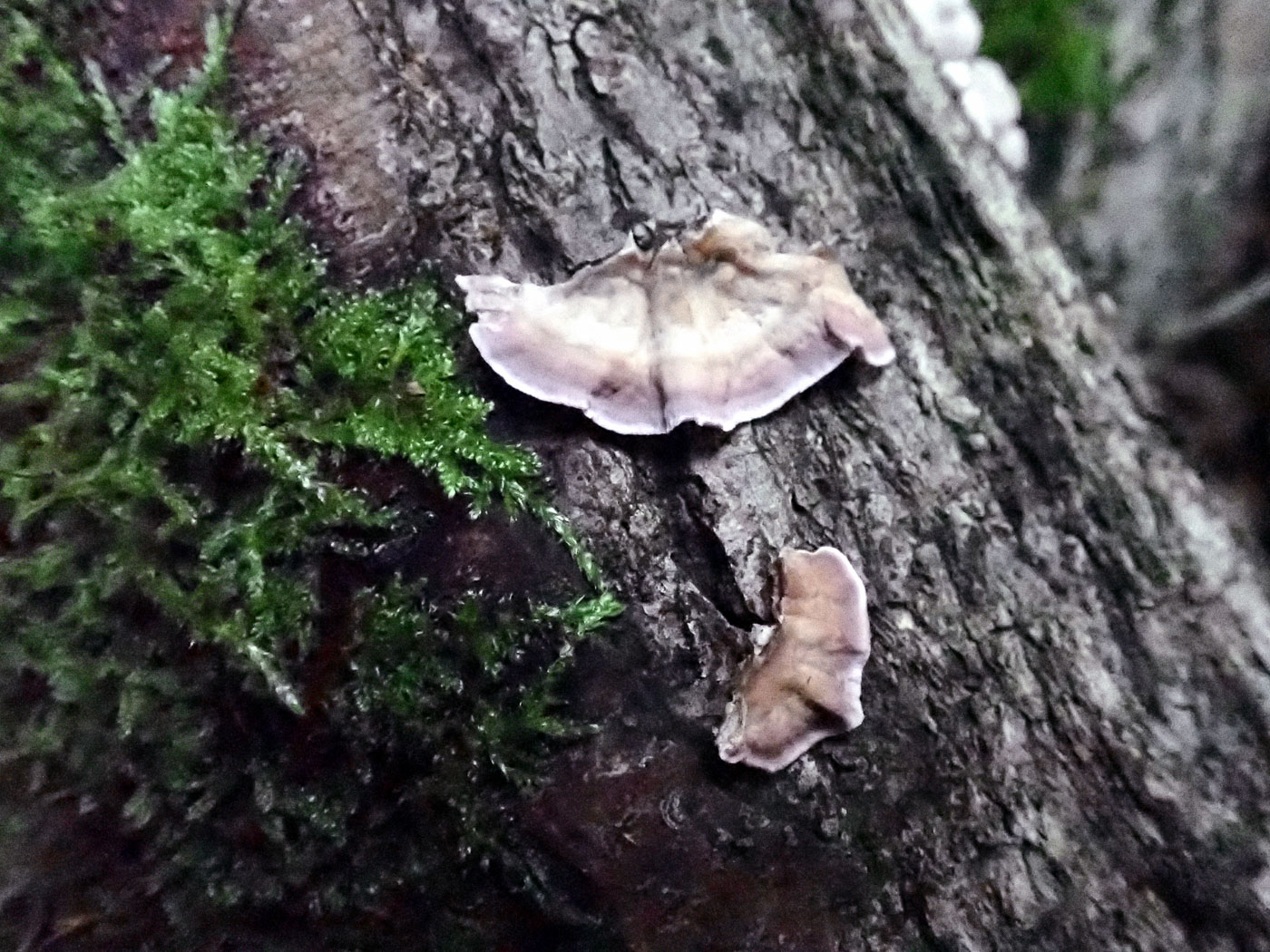 |
September 13th Chondrostereum purpureum (Silverleaf Fungus)
Continuing on from the bracket above, this collection from Burnham Beeches shows just how similar these bracket species can look unless one checks underneath. This very fresh material was zoned very like the Turkeytails above, but the smooth to wrinkly undersurface was just beginning to develop its telltale lilac / violet hue (photo 2). It occurs on many different deciduous trees, its common name reflecting the disease the fungus causes in many fruit trees. We have two previous images in Finds for comparison: 2020 November 6th and 7th.
|
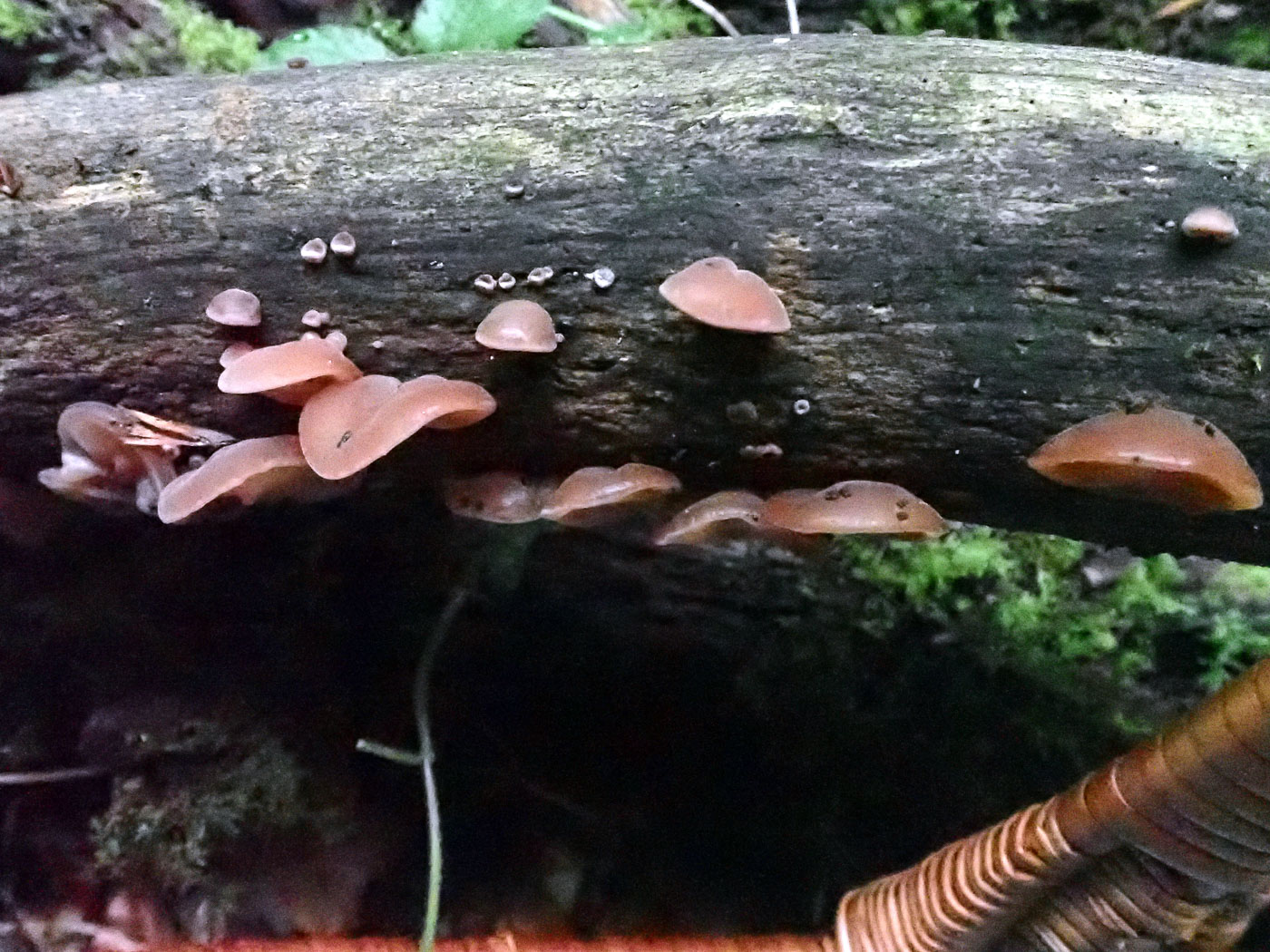
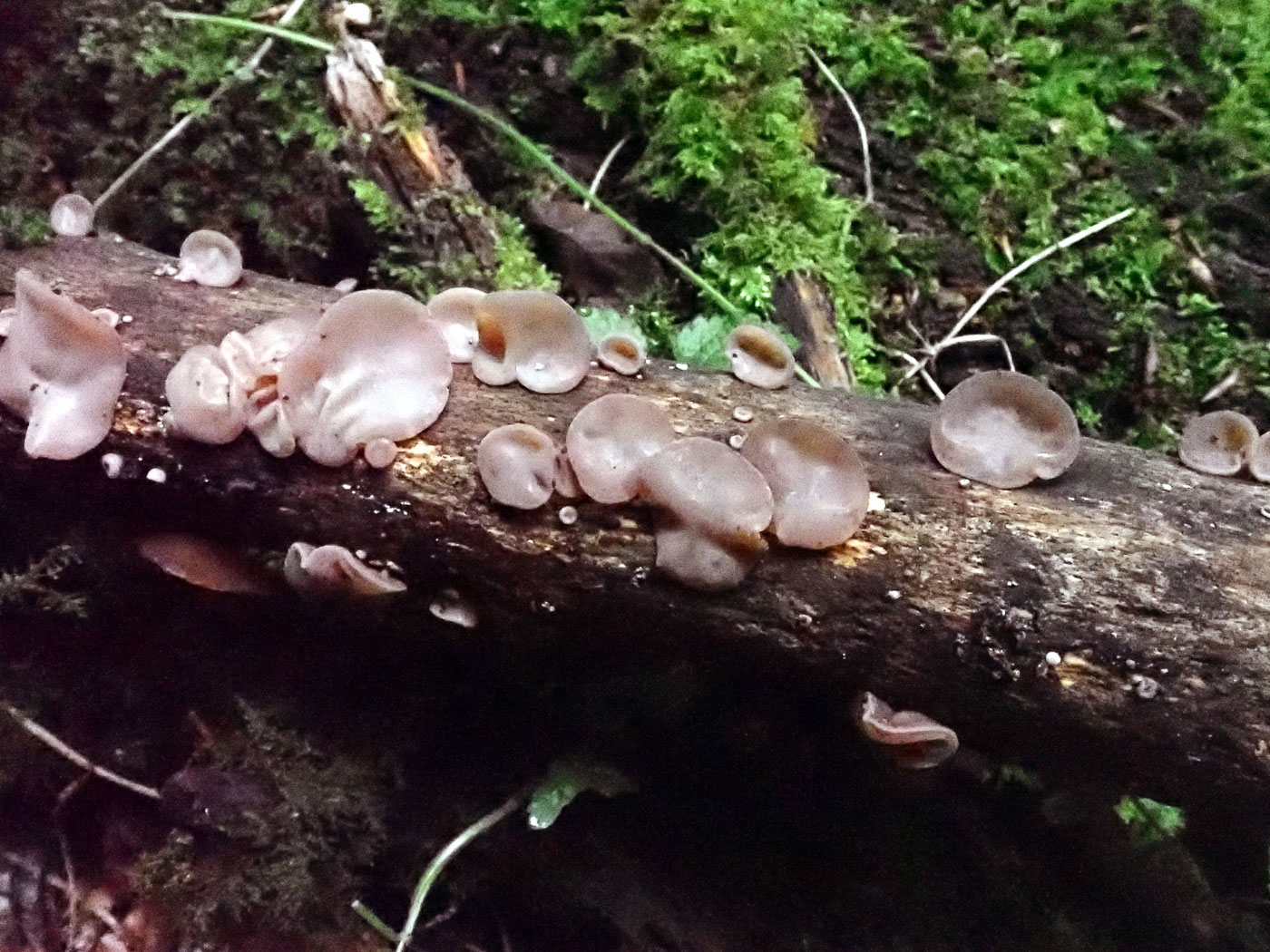 |
September 13th Auricularia auricula-judae (Wood Ear)
On fallen Beech in Burnham Beeches Penny found these fresh distinctively ear-like jelly fungi. Most commonly found on standing and fallen Elder (hence the reference to Judas in the Latin species name) it is not that unusual on Beech, though it was also reported today growing on Sycamore near Chesham - that is a much more unusual host. We have many images on Finds - see the Masterlist for details, and if you find this species in its pure white form (see Finds 2021 February 5th) we'd like to know!
|
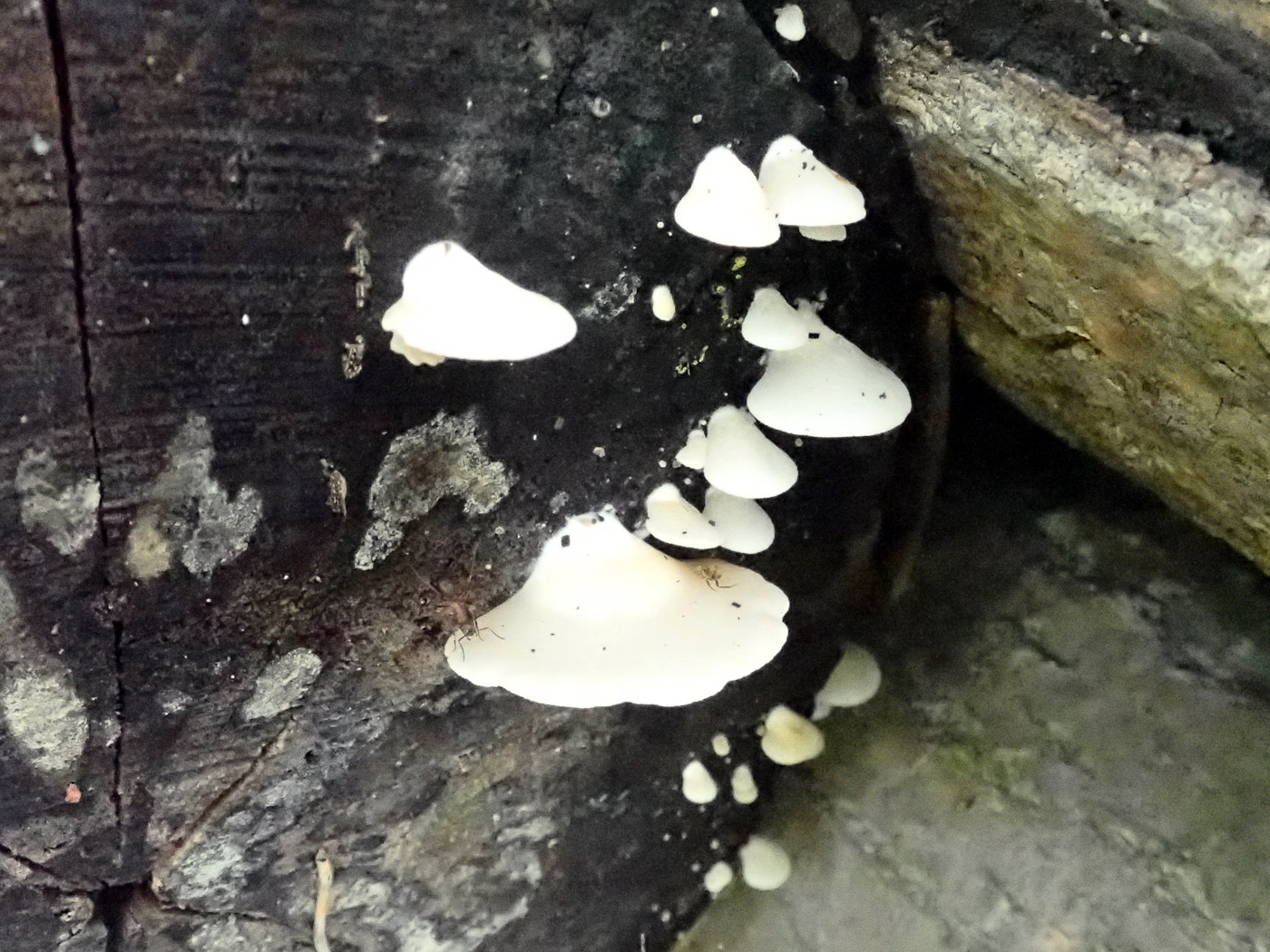
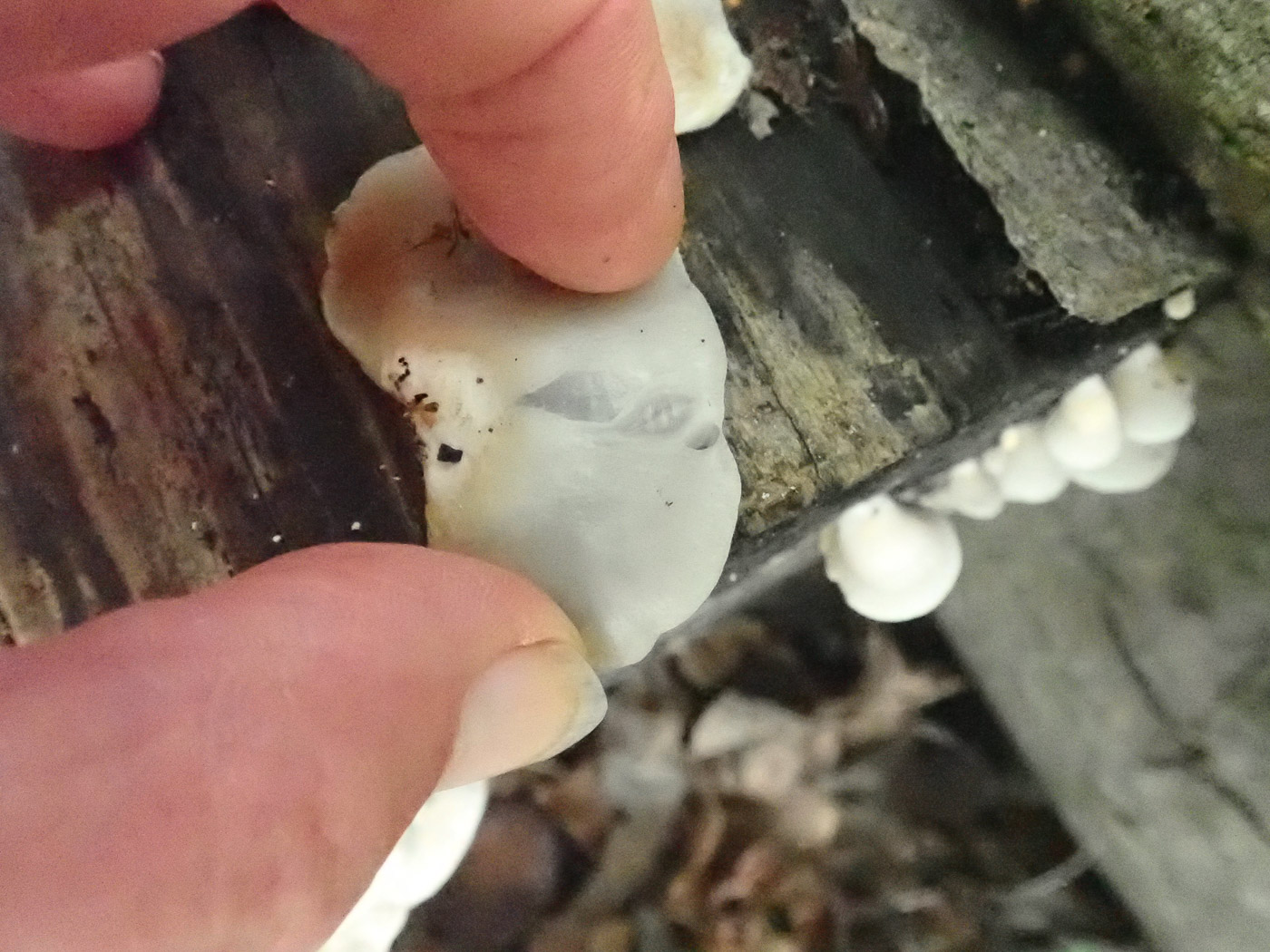 |
September 13th Crepidotus mollis (Peeling Oysterling)
In Burnham Beeches on the end of a deciduous log Penny noticed these Oysterlings and from their larger size and general jizz she suspected it was this species. Photo 2 reveals the feature which makes this possibly the only Oysterling safely nameable without recourse to a scope. When stretched sideways the cap cuticle is remarkably elastic and also translucent - a unique feature. See also Finds 2020 October 6th.
|
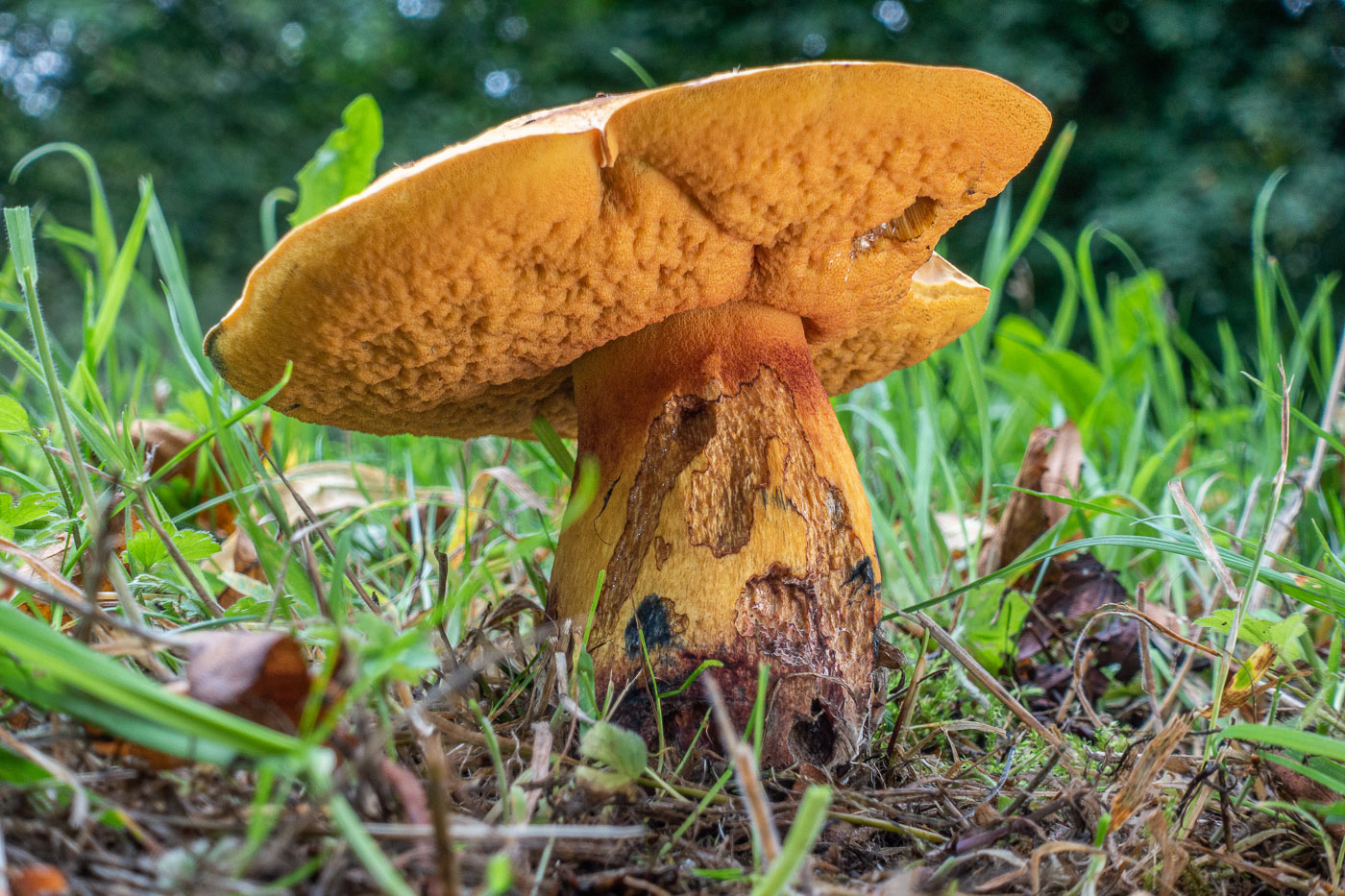
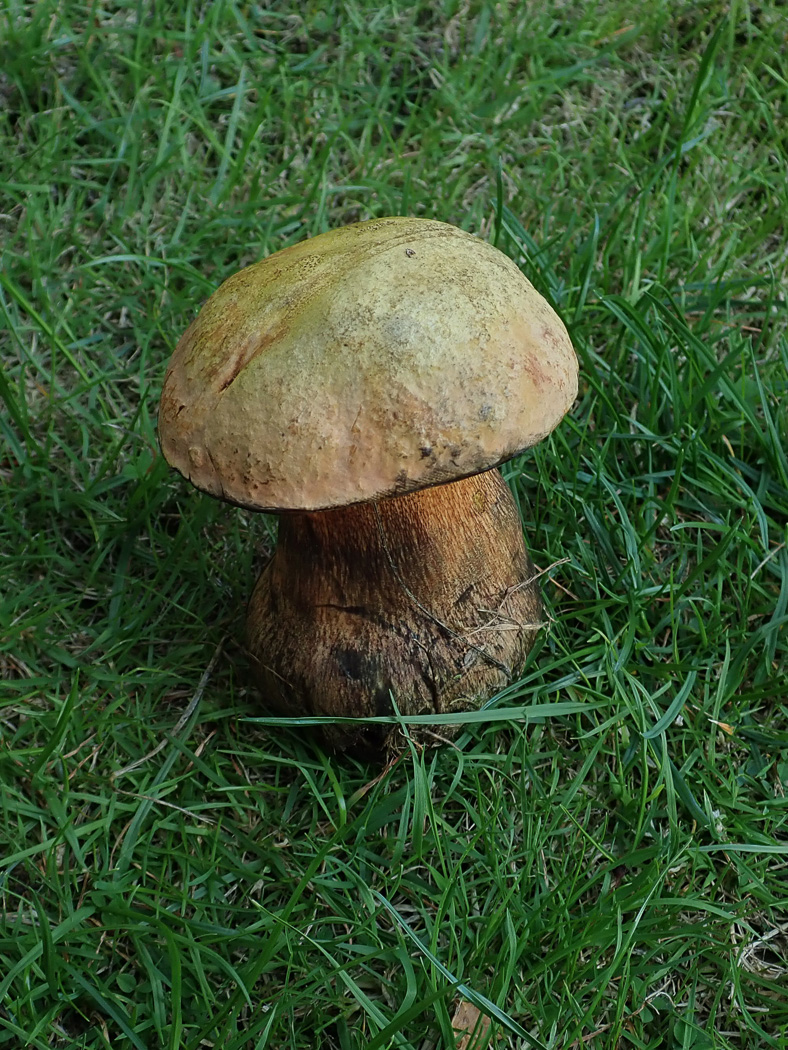
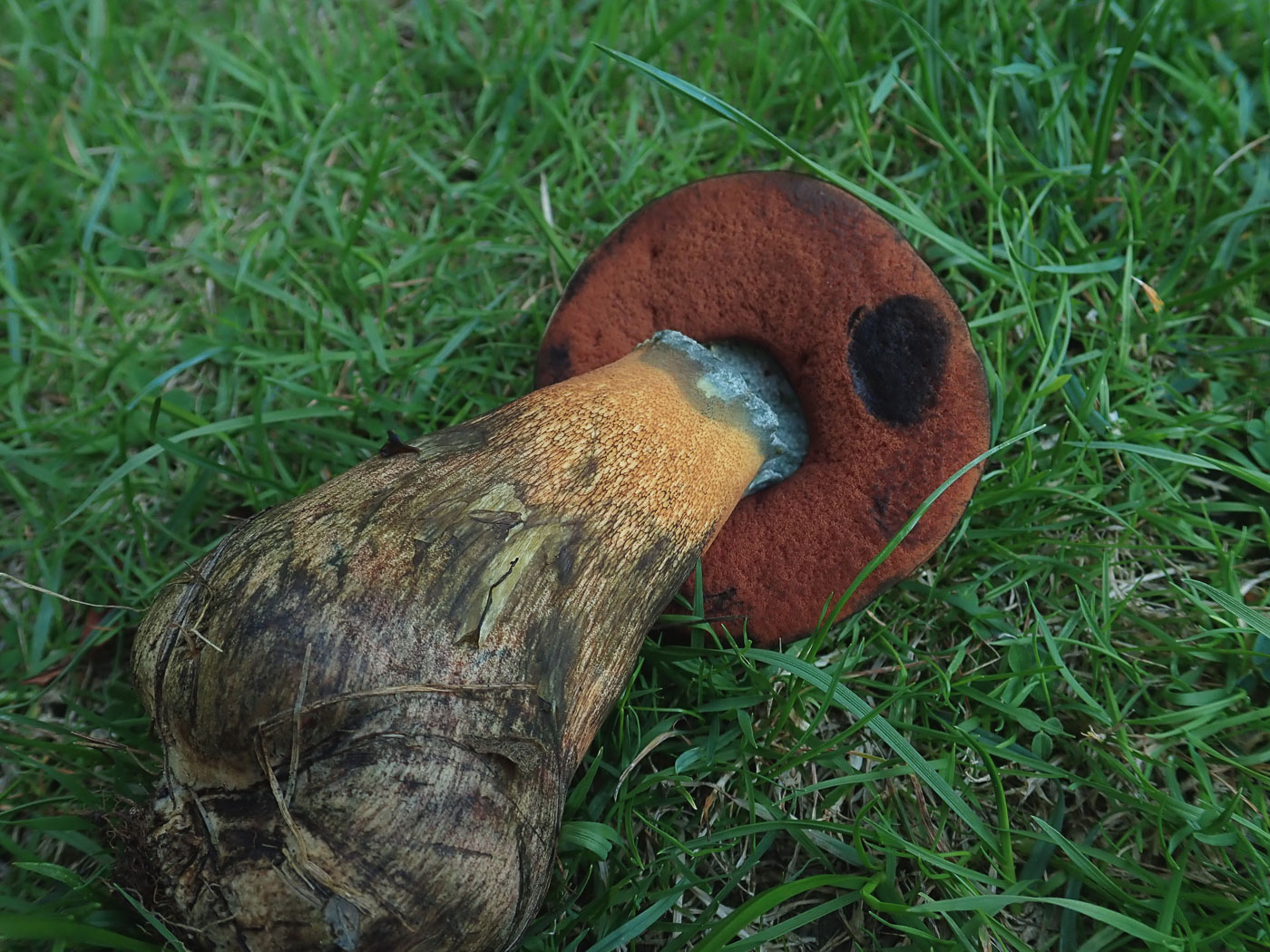
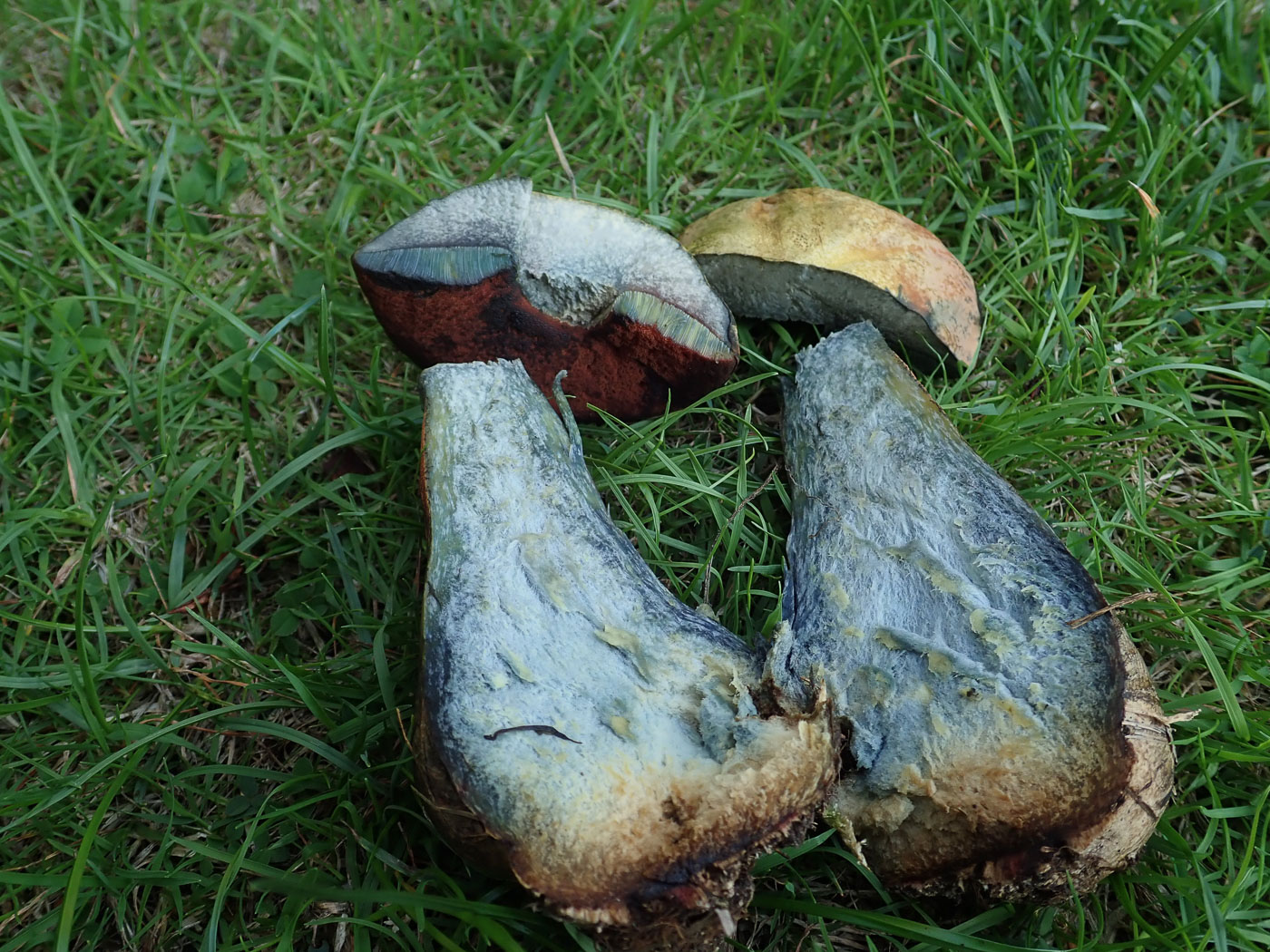 |
September 13th Suillellus luridus (Lurid Bolete)
In Turville Heath in the avenue of Limes Rob Corran found this unusual bolete (previously in genus Boletus) - one that Penny's not found here though she visits quite regularly. The species has similarities with the much more common Neoboletus luridiformis (Scarletina Bolete) - hence its Latin species name (though Penny hears rumours this is about to change!) but the pores are more orange than red and the cap colour, though very variable, is generally paler. If in doubt, a drop of Melzers Iodine on the stem flesh turn blue-black in today's species but remains brown in N. luridiformis. Many of our records for S. luridus are with Helianthemum where it is sometimes fruits in abundance wherever that plant grows. In such habitat it is easy to identify with no likely lookalikes to confuse, but when in deciduous woodland more care is needed. In fact Penny's husband Paul brought back a sample collected with Helianthemum the following day, hence the additional photos 2-4 which show more features.
|
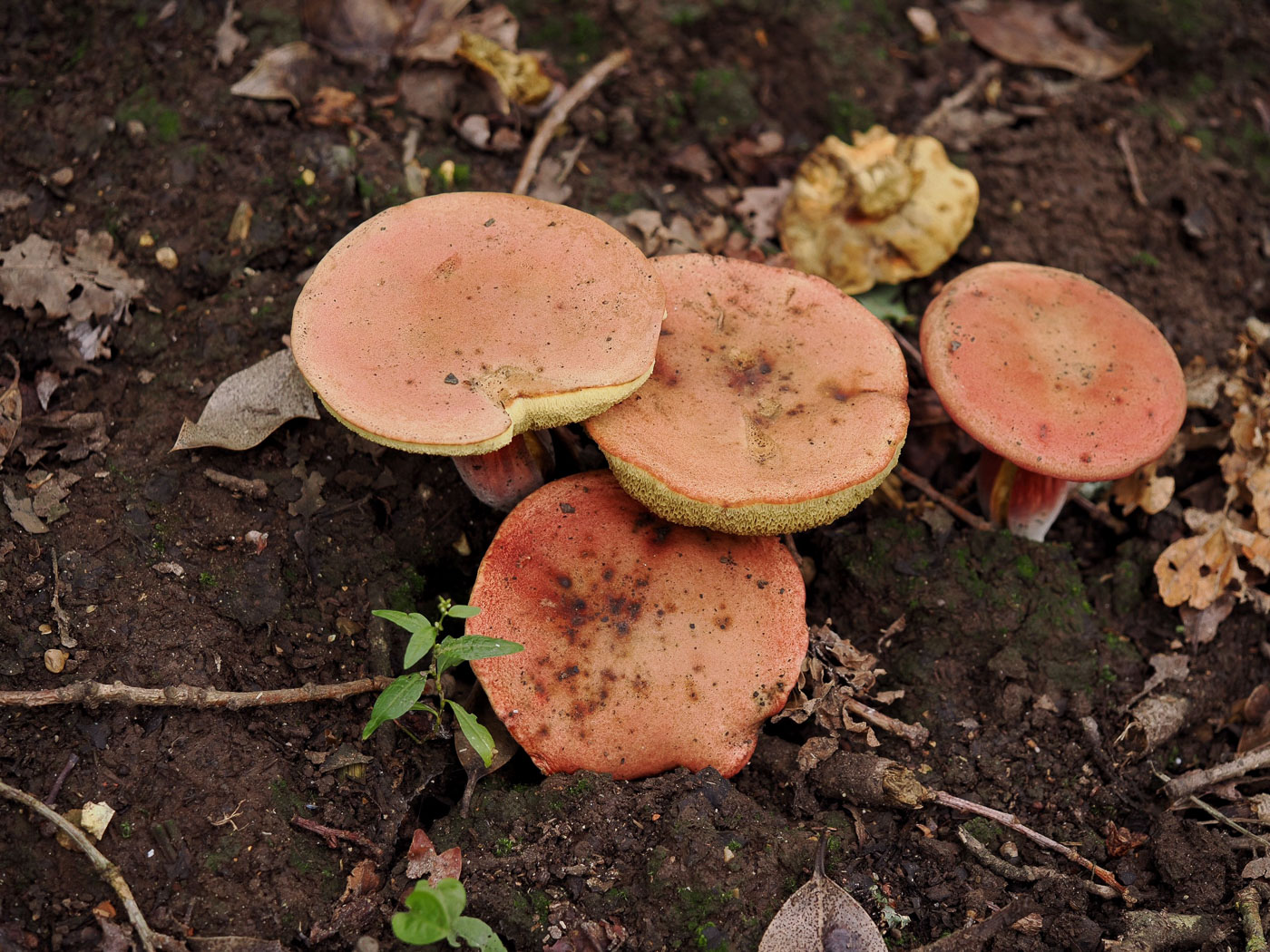
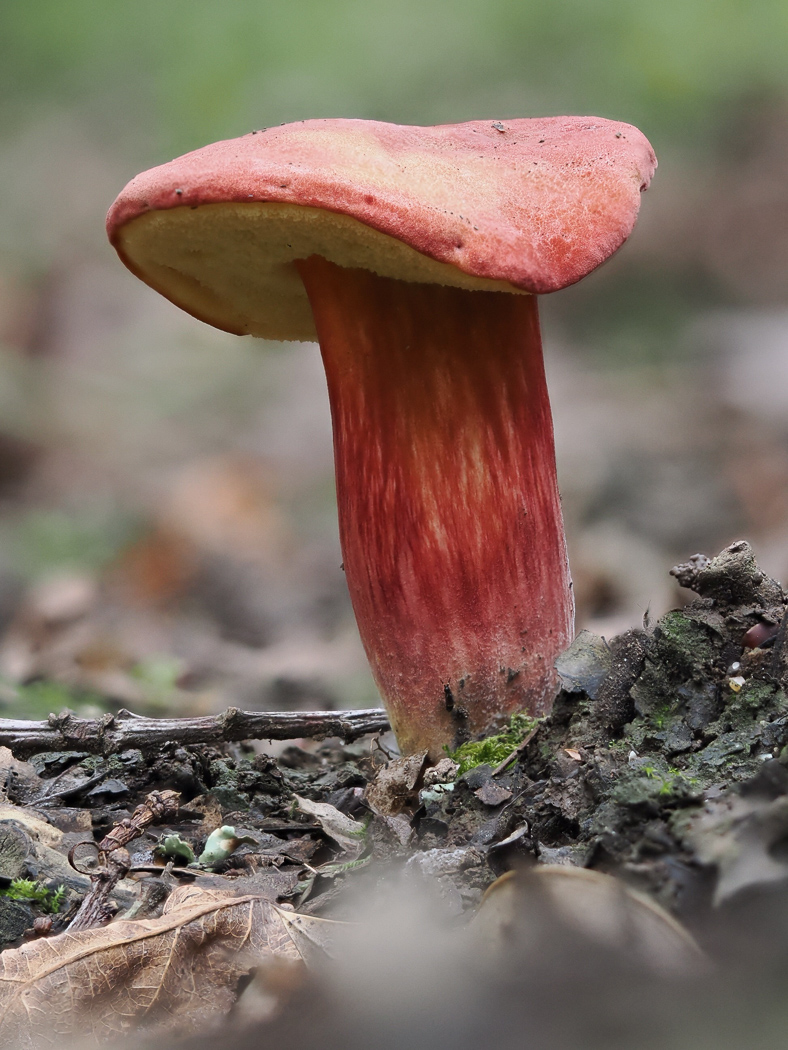
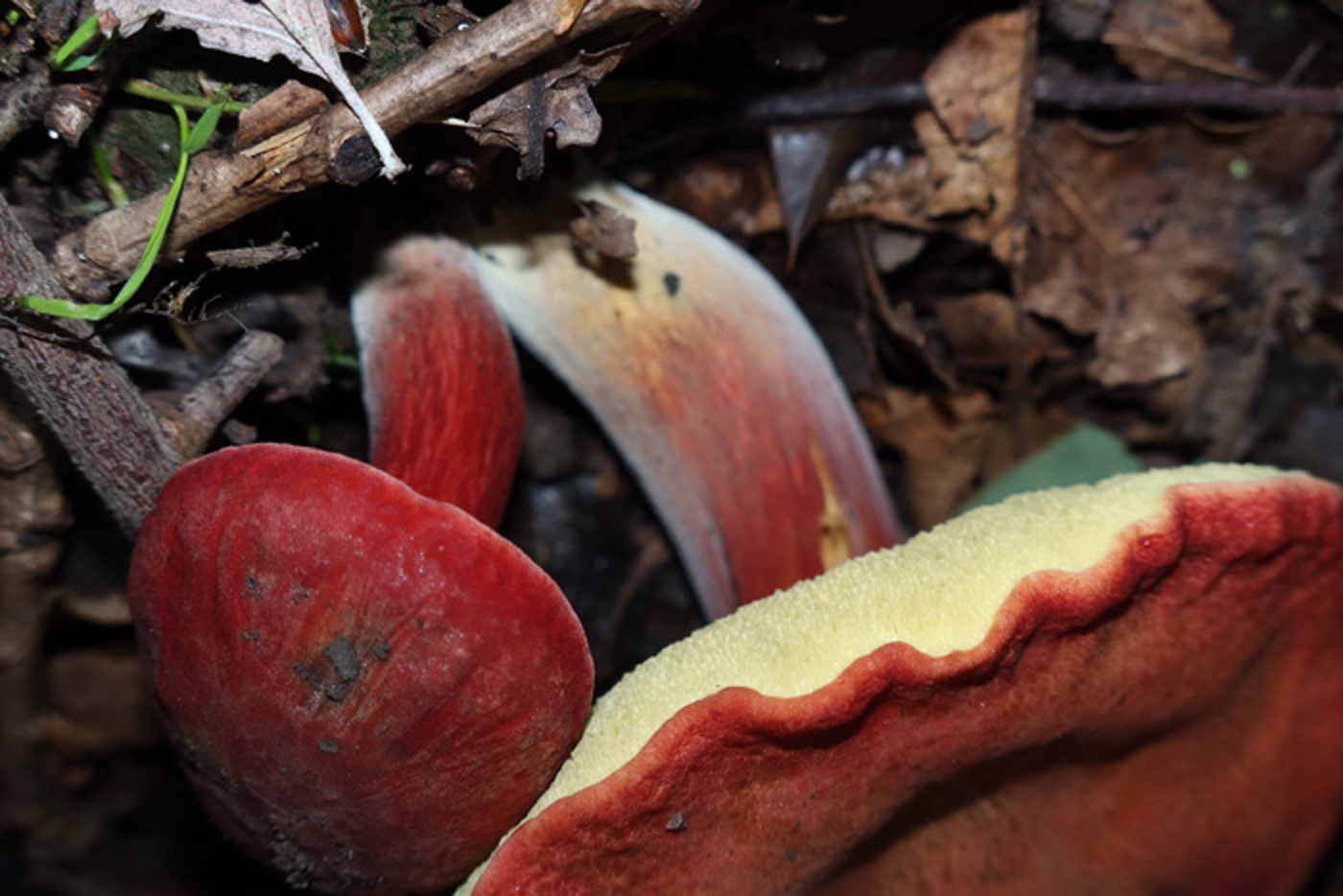 |
September 13th Hortiboletus rubellus (Ruby Bolete)
In Naphill Common Claire Williams found this lovely collection of boletes which we're fairly confident in naming H. rubellus (previously in genus Boletus). The combination of this distinctive bright red cap, yellow pores which only slowing and faintly stain blue when pressed, and red stem are pretty well diagnostic, but DNA has shown that there are other species in the UK which can appear very similar. Cutting one open when fresh to view the flesh colour can reveal significant differences. We have just a handful of previous county records of this species though all pre the DNA era so it will be useful to have Claire's collection sequenced (using our Science Fund). This is a first for Finds.
|
September 12th 2022
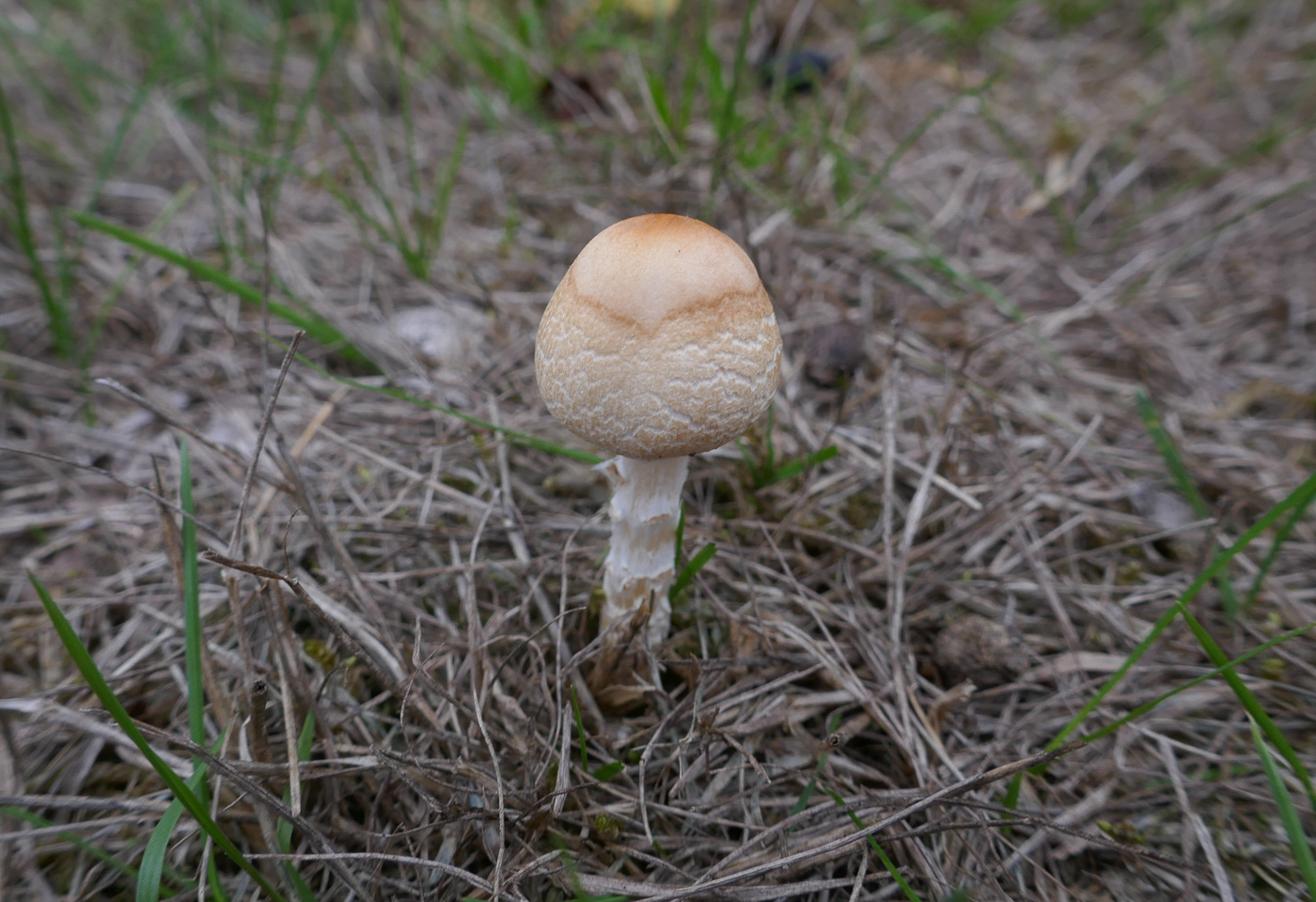
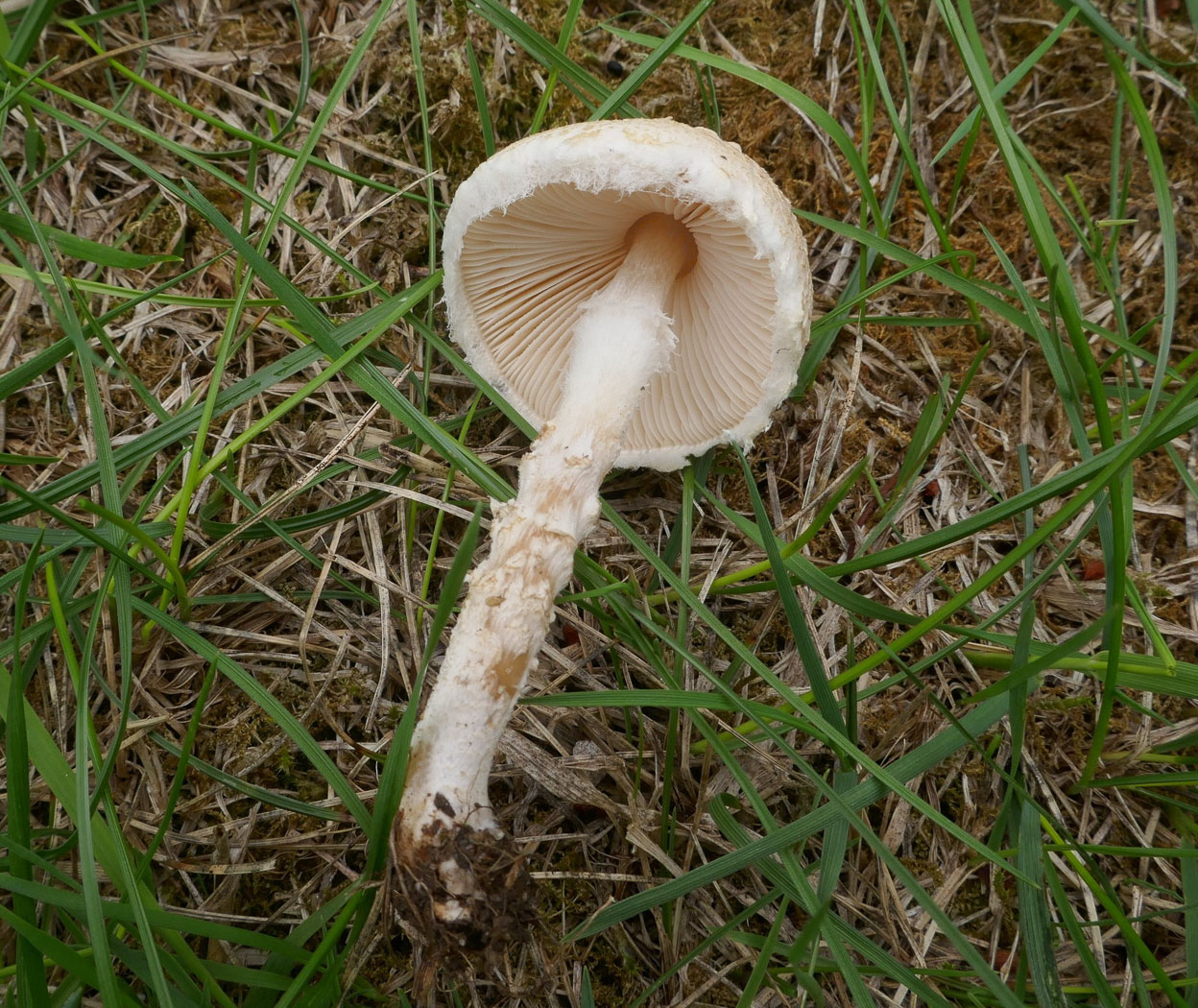
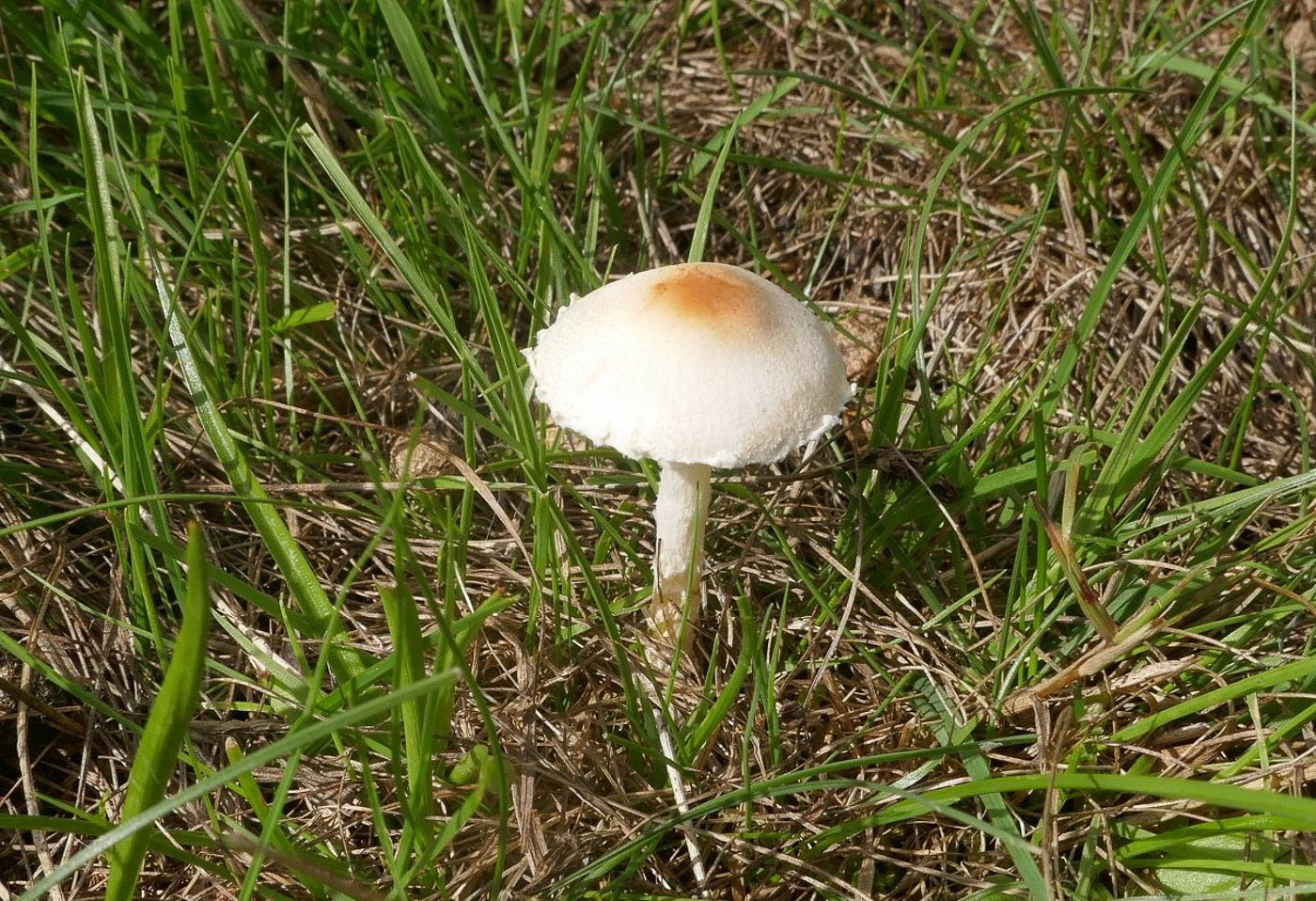 |
September 12th Lepiota oreadiformis (a Dapplering with no common name)
At Stampwell Farm in an orchard Jackie Ewan found this attractive medium sized Dapperling, said to have a resemblance to Marasmius oreades (Fairy Ring champignon), hence its species name. This is not a woodland species, favouring more open grassy areas or hedgerows, but is typical of the genus with its creamy white crowded free gills, a flocculose stem with a ring zone and a cap with pale flesh colours. See also in Finds 2020 October 24th.
|
 |
September 12th Neoboletus luridiformis (Scarletina Bolete)
In Bow Brickhill Justin Long found this neatly positioned pair of boletes growing on a perilously steep slope (and requiring some dangerous acrobatics to get his photo!). The substantial size, brown cap, red pores and strongly bluing stem (with Justin's thumbprint) make the species instantly recognisable, but if in doubt, cutting one open reveals the yellow flesh instantly turning bright blue. See also Finds 2020 September 5th and 2021 June 24th, but just two days before Justin's find in Penny's report on our Ivinghoe Common Walk when the blue flesh is in evidence.
|
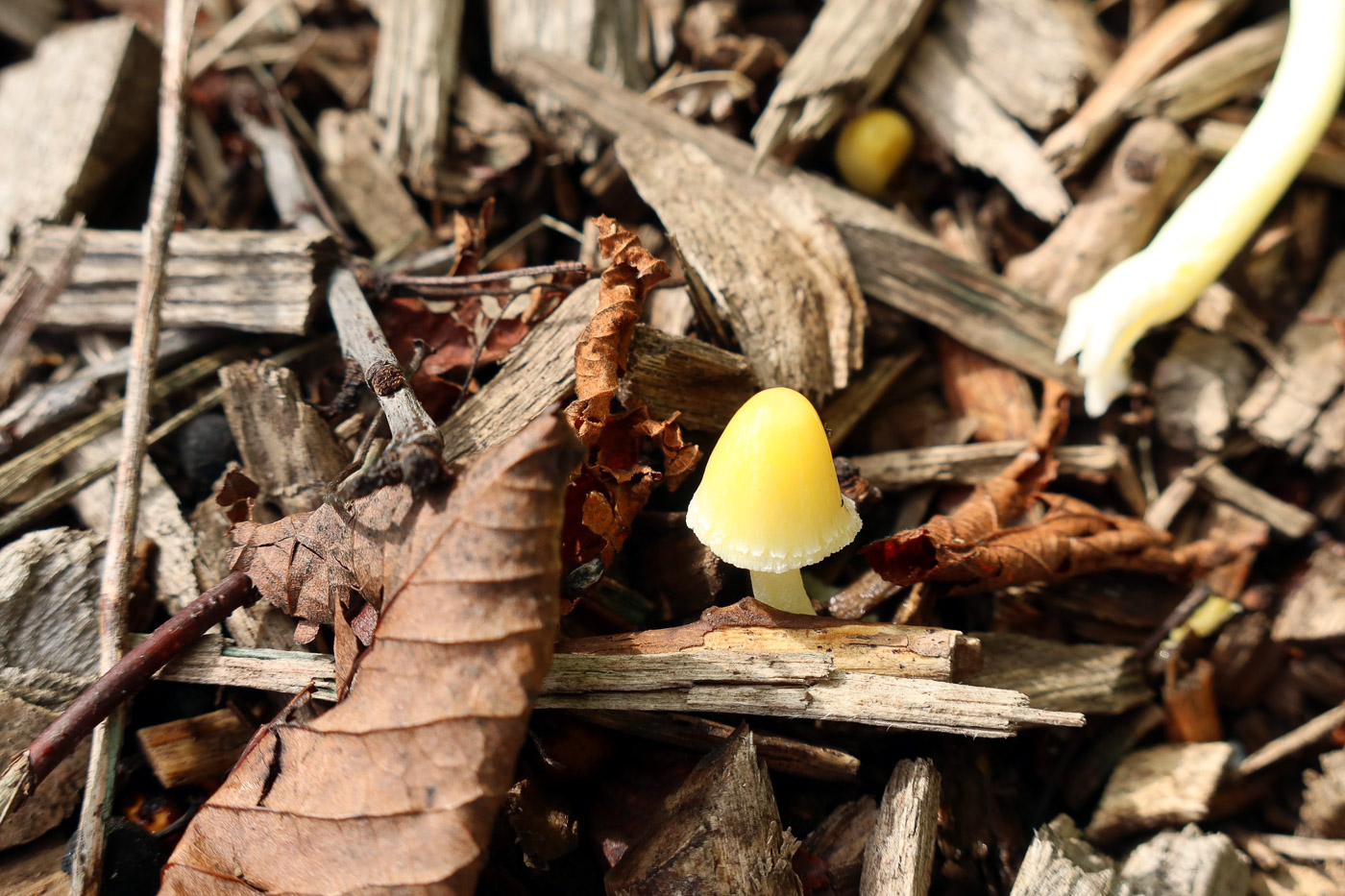
 |
September 12th Bolbitius titubans ( (Yellow Fieldcap)
In Bradenham Woods Claire Williams noticed these small bright yellow caps emerging though a pile of deciduous woodchips. More often recorded from soil in grassy path edges, this common species seems just as happy in this medium. We have quite a few images in Finds over the last three years - see the Masterlist for details.
|
September 11th 2022
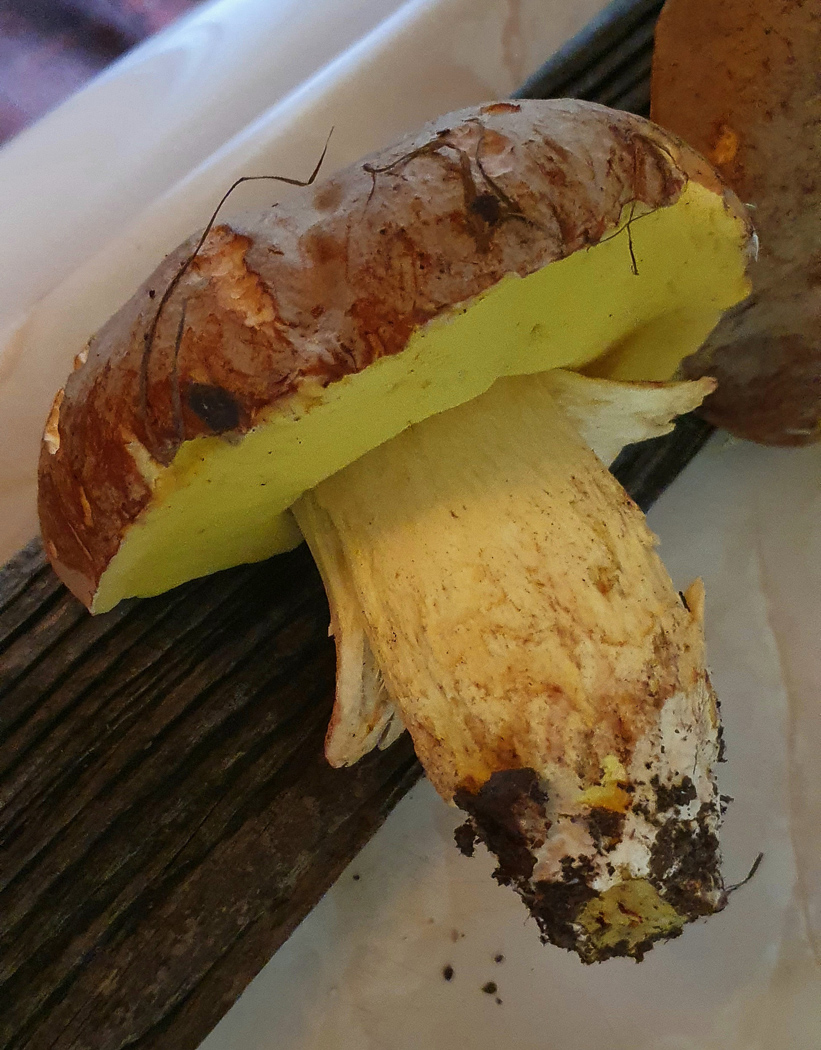 |
September 11th Butyriboletus appendiculatus (Oak Bolete)
Under Oak in Bradenham Woods Wendy Nicholson found this unusual bolete - more familiar by its previous name when in genus Boletus.This is one of our larger boletes - very solid fleshed like B. edulis though the pores are yellow even when young, bluing slightly when pressed, and the cap is a more cinnamon brown. The stem has fine concolorous network markings, and another feature which helps to confirm identification is its overlapping cuticle at the margin - hence its species name. It occurs under Beech and Oak and, though described as common in some texts, we have only a handful of previous county records and it's new for Finds.
|
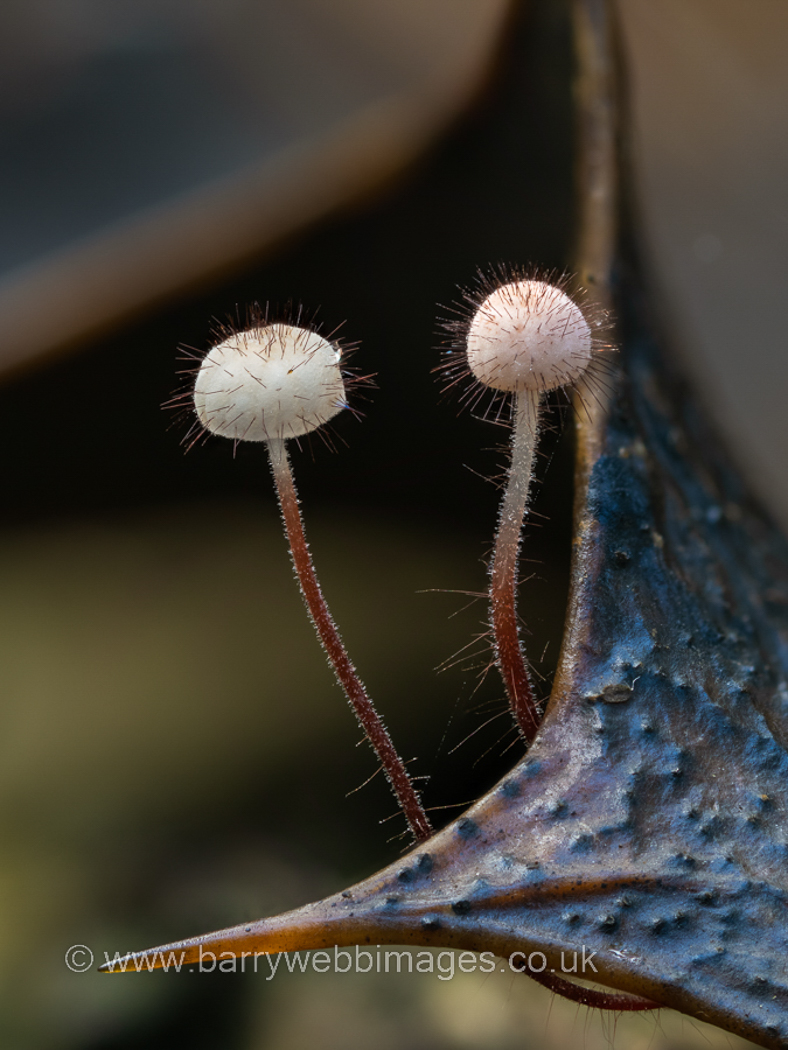 |
September 11th Marasmius hudsonii (Holly Parachute)
In Hodgemoor Woods Gill Ferguson was delighted to spot good numbers of these tiny little beauties under a Holly bush growing on last year's leaves. The species was new to the county in 2015, since when it's turned up a few times now so may be gradually spreading and becoming more common. It is one of the easiest to identify if you have a handlens (or very astute eyesight!). No other little mushroom has a cap covered in these reddish 'whiskers' which, as can be seen in Barry's exquisite photo, are also on the stem. See the Finds Masterlist for more stunning images.
|
September 10th 2022
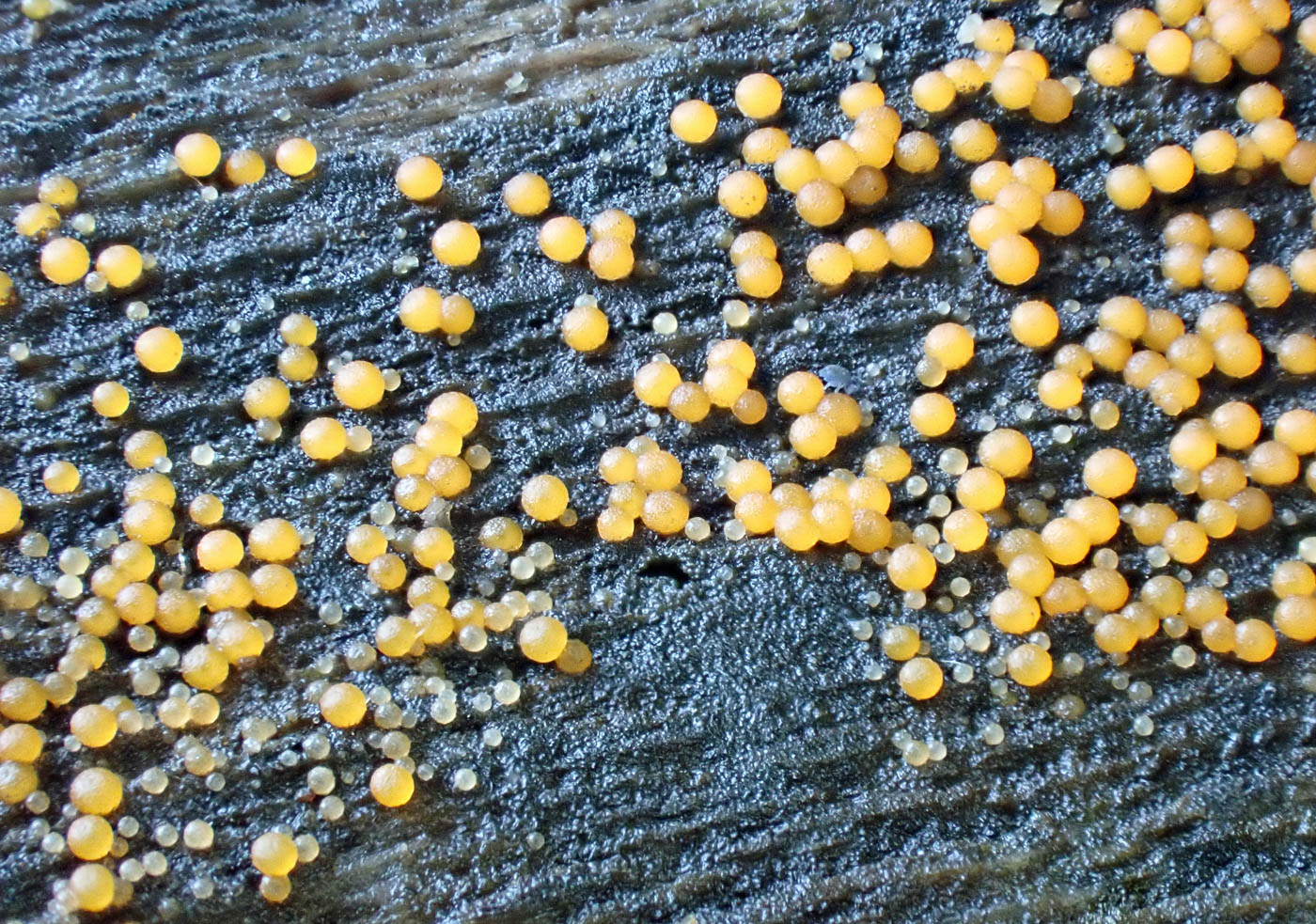 |
September 10th Hydropisphaera peziza (Yellow Spot) 
On our BFG Walk at Ivinghoe Common a large colony of tiny bright pale orange cushions was found on a fallen Beech trunk by Barry Webb. Penny collected some to attempt an ID and got as far as the genus Nectria (as in the common Coral Spot) but was then defeated so sent a dried sample to expert Kerry Robinson. Previously in Nectria, the species is not particularly rare but appears to be new to the county, and Kerry commented that when received the dried 'cushions' had collapsed and were looking more disc-like - a characteristic of the species, hence its species name. The photo is Neil Fletcher's.
|
 |
September 10th Rubroboletus satanas (Devil's Bolete)
In Marlow Common Andrew Padmore came across this somewhat uncommon but beautiful and distinctive species - one of the first Boletes to appear in late summer. The combination of its large size with very stocky stem, ivory white cap and intensely red pores and stem make it instantly recognisable. It apparently develops a repulsive smell of rotting garlic at is ages and is also very poisonous. We have only three previous county sites, one being Wotton Park Estate - the main reason why we arrange to visit that site in late Aug / early Sept. Sadly the drought conditions this year caused us to cancel, however. Today's entry is the first for Members' Finds.
|

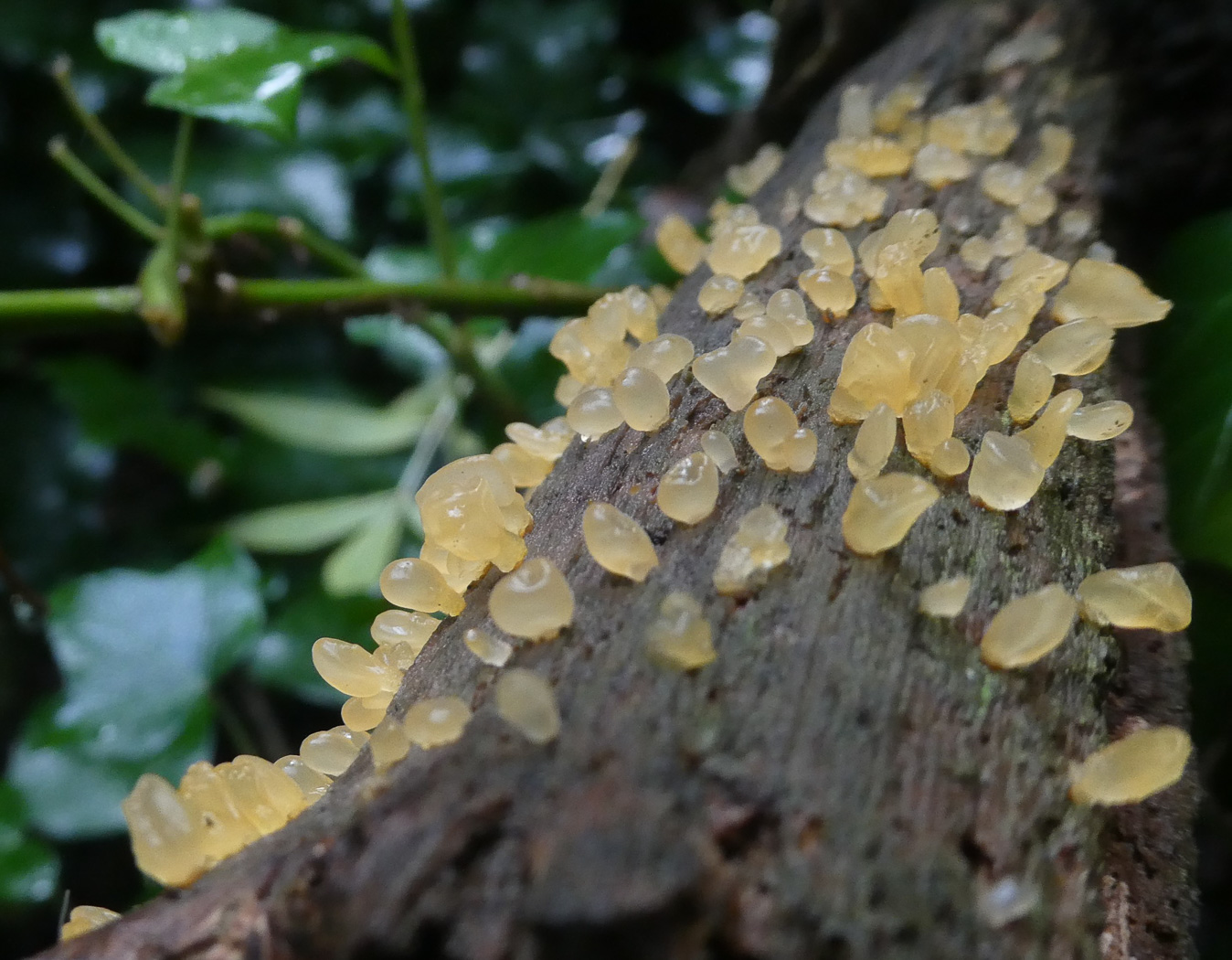 |
September 10th Dacrymyces capitatus (a species of Jelly Spot) 
On a fallen deciduous log in Chalfont St. Peter Jim Wills had been watching these small orange blobs for a few days to see if they developed into the quite similar Calocera pallidospathulata (Pale Stagshorn), but they stayed as seen in his photo - more like the bright orange blobs of Dacrymyces stillatus (Common Jelly Spot) though clearly paler and also with a very short stalk, looking a bit like a small Exidia species. Penny suggested it might be the much less frequently recorded D. capitatus and when Jim then checked the spore size - differing from those of D. stillatus, he was able to confirm the ID. Interestingly we found nice material of this species the same day at Ivinghoe Common as well, so it's one to look out for now. This is our first image for Finds.
|
September 7th 2022
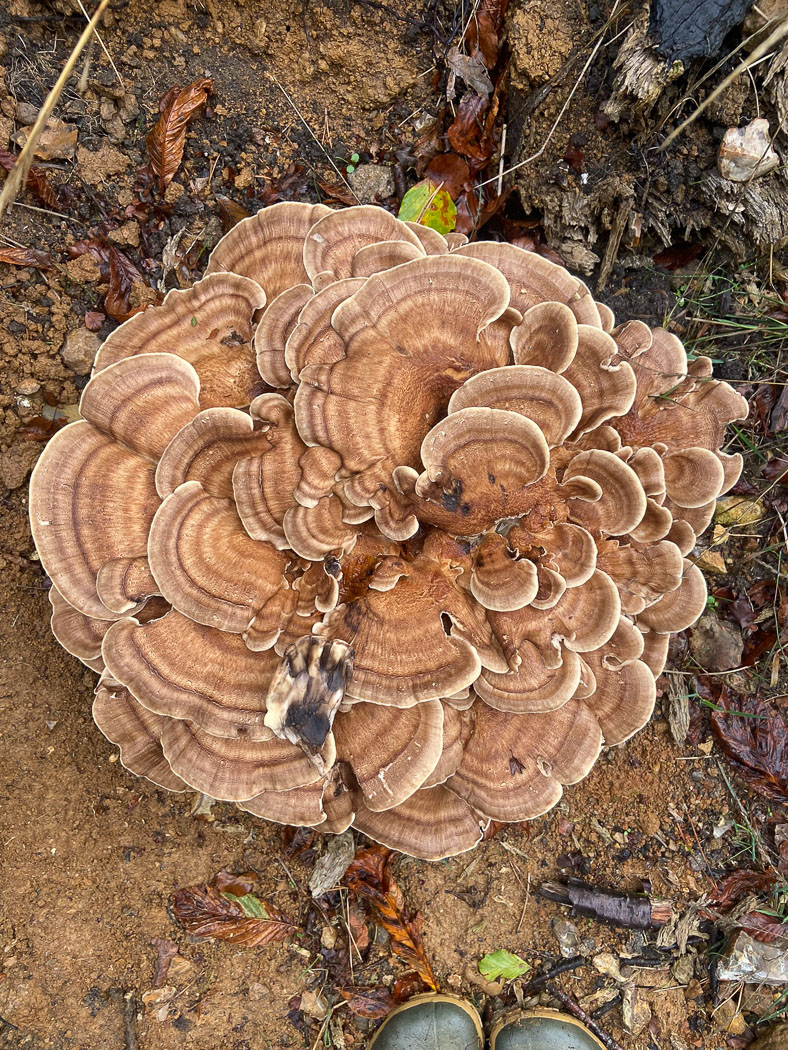
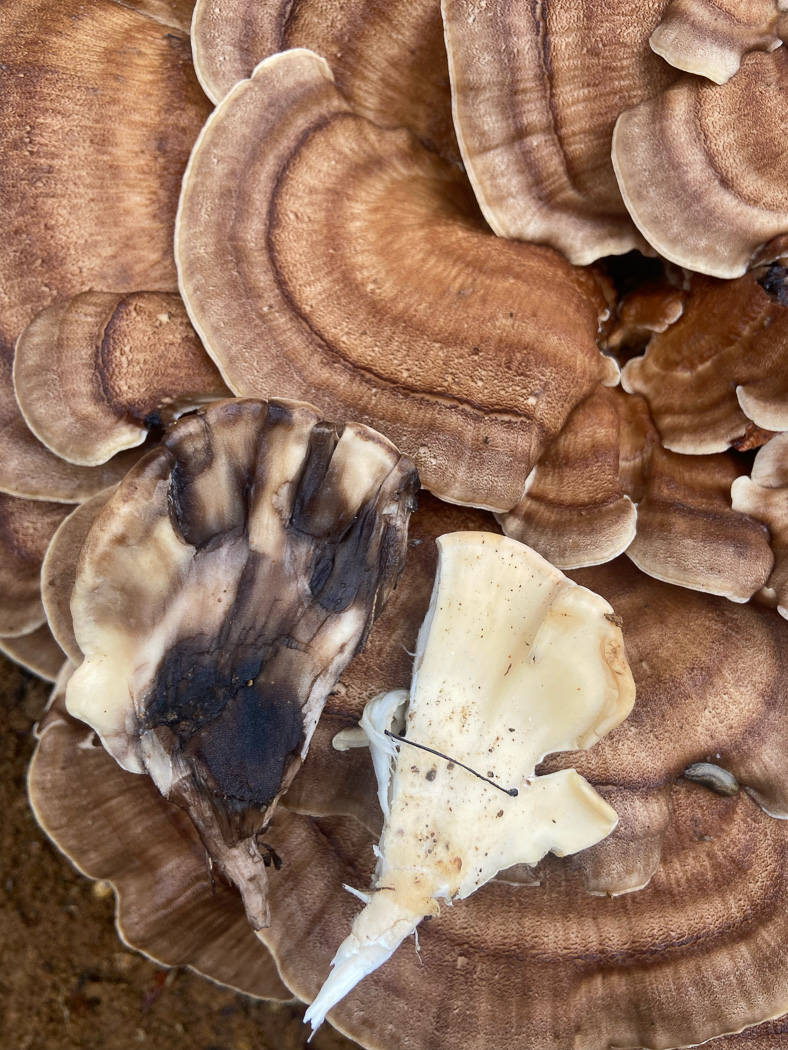
 |
September 7th Meripilus giganteus (Giant Polypore)
These super photos were sent in by Sarah Ebdon from Lacey Green at a spot where this species regularly fruits. Though its Beech host has now fallen the fungus is as yet unaffected and clearly fruiting profusely. Note the close-up shot showing a fresh sample torn off and upturned, and next to it an older sample which a few hours later had turned blackish - this being a useful diagnostic character: once enormous there's little doubt over its identity but when just starting to appear, as in photo 3, the species can look remarkably like several other brackets. See the Masterlist for more examples.
|
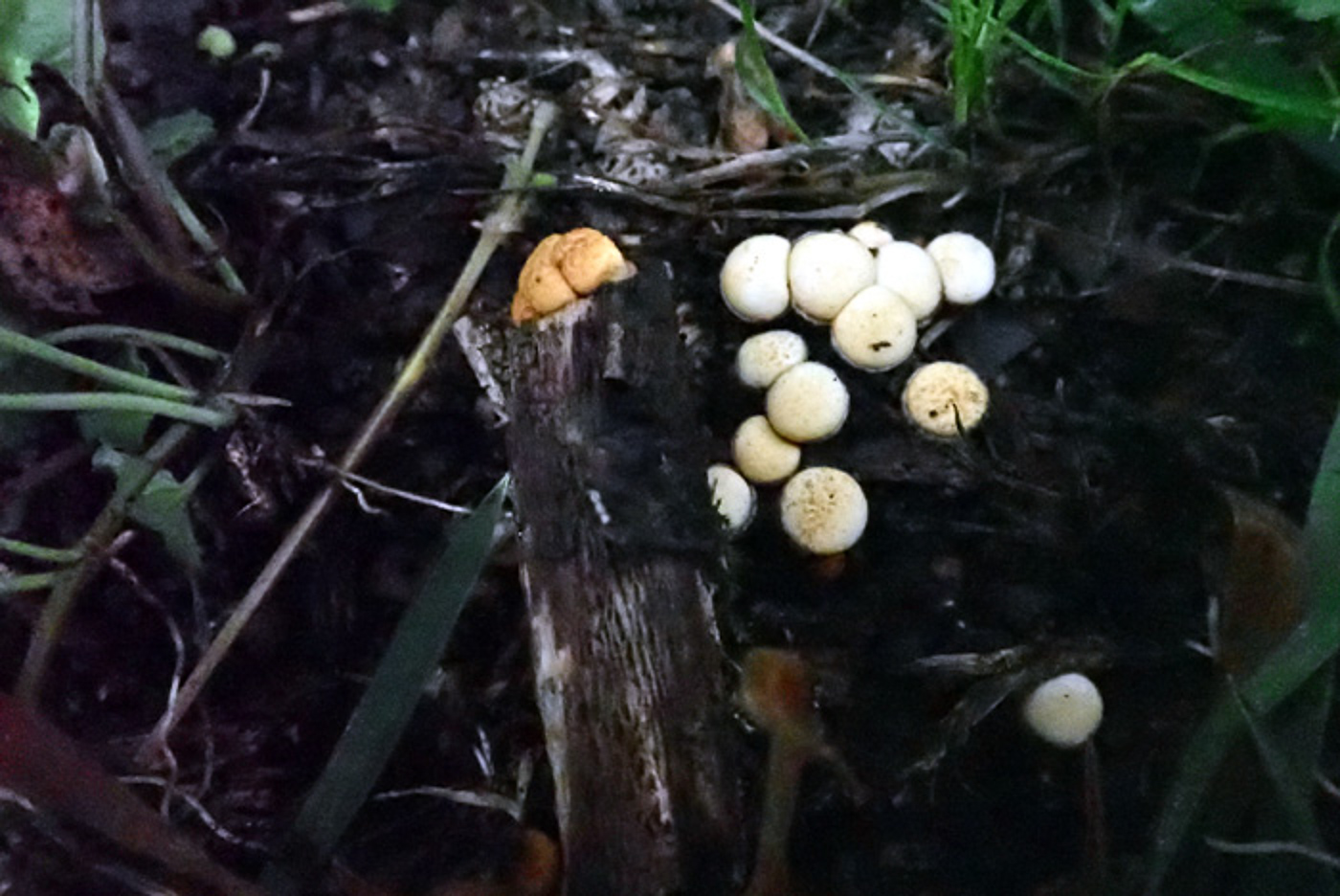

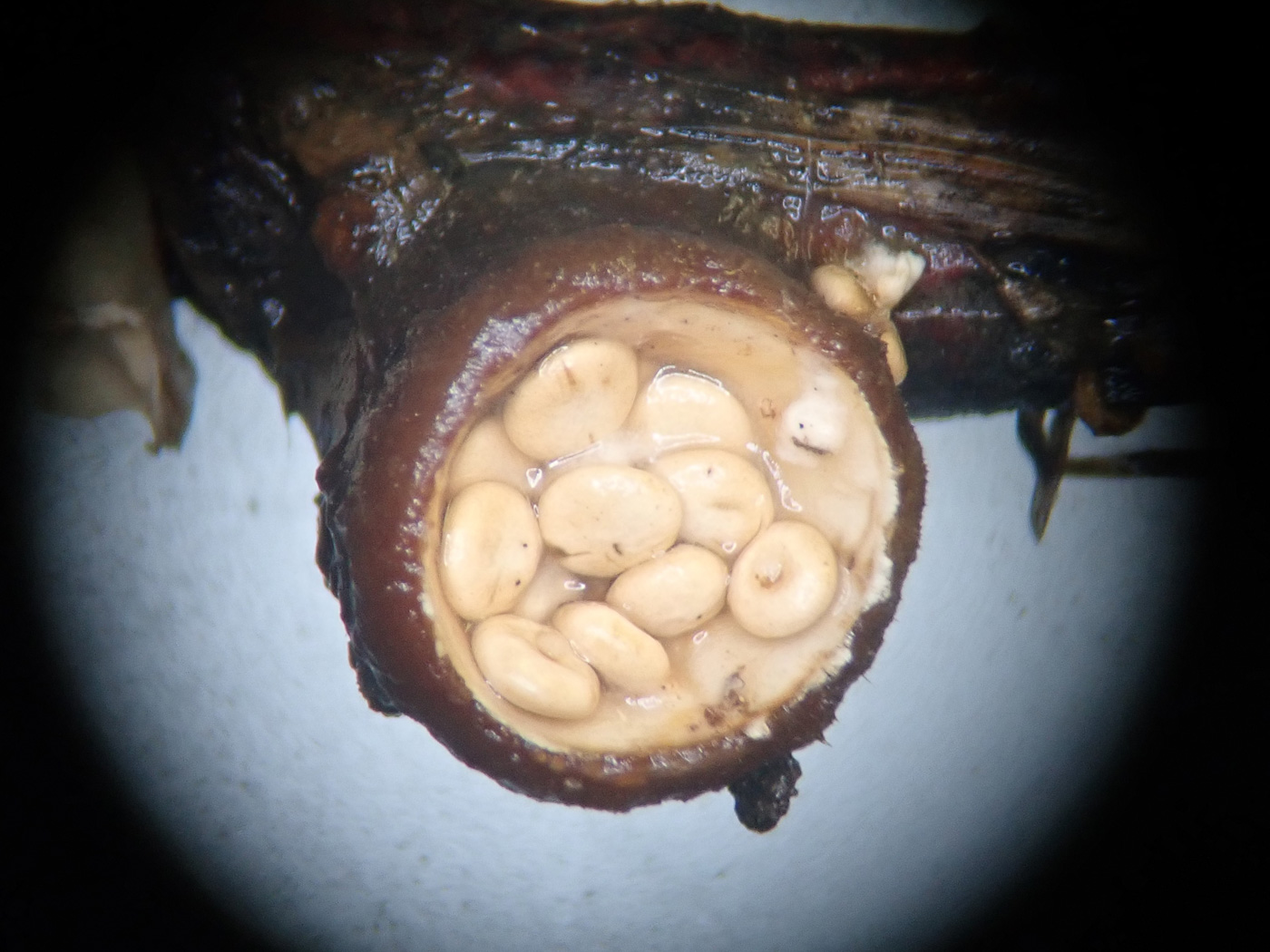 |
September 7th Crucibulum laeve (Common Bird's Nest)
At Turville Heath In a patch of disturbed soil with many rotting woody fragments Penny's eye was caught by these tiny bright orange blobs. On closer inspection she suspected these were a species of Bird's Nest though still immature and not yet revealing their amazing contents. All were arising from wood fragments and she collected several to take home and nurture in the hope that the tops would eventually lift off showing the miniscule bird's nest full of eggs within. She had to wait a full week but was eventually rewarded - photos 2 and 3 being the result. The species is not rare - we have a few records from 5 other county sites but this is our first Finds entry.
|
 |
September 7th Lycoperdon pratense (Meadow Puffball)
In soil in the Lime avenue at Turville Heath Penny noticed just a few of these Puffballs which looked initially like the very common L. pyriforme (Stump Puffball). However, though smooth they were clearly on soil and not wood, also lacked the typical pear shape of that species and when cut in half showed no signs of stem, just some wrinkles where they attach to the substrate. The species - previously in genus Vascellum - appears in summer to early autumn in open grassy areas, fields, less often in woodland clearings. We have just a few previous Finds entries - see the Masterlist for details.
|
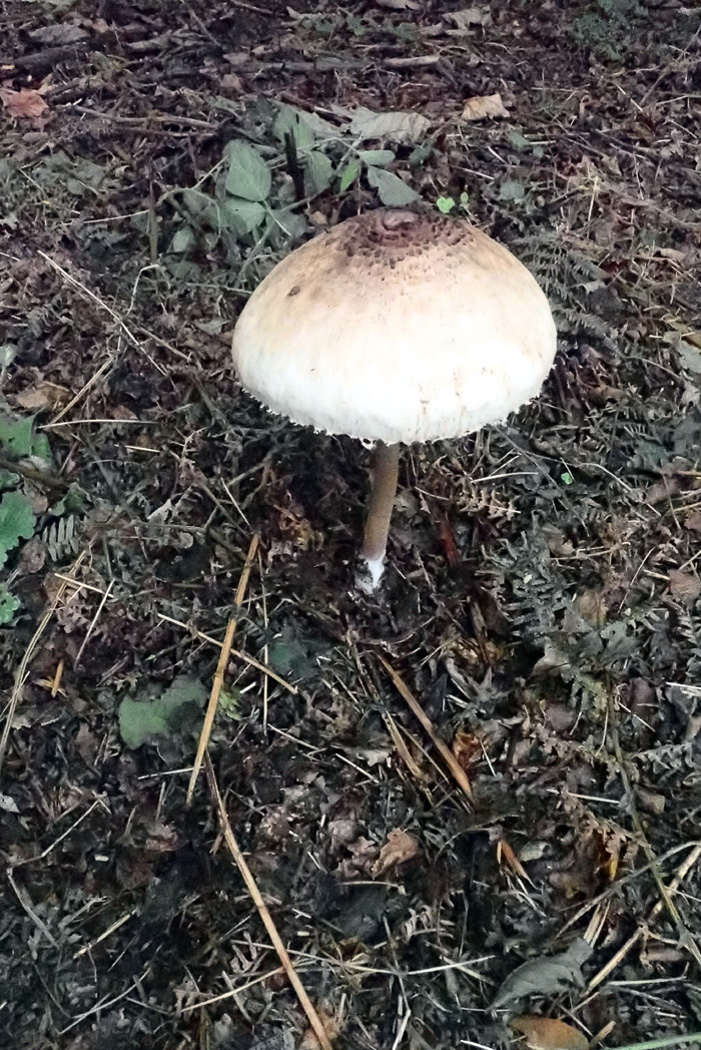
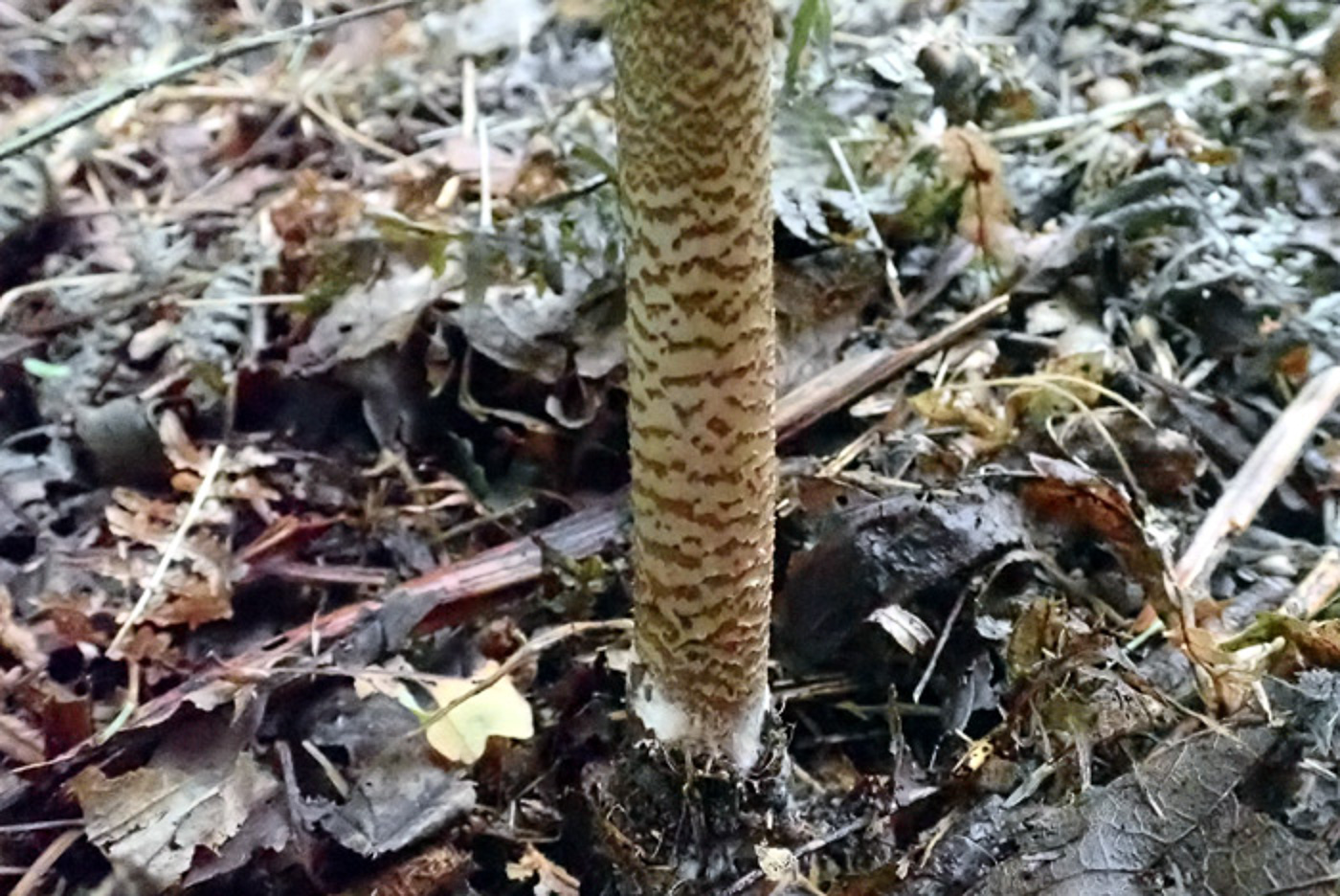 |
September 7th Macrolepiota procera (Parasol)
In an open grassy patch at Turville Heath Penny was on the lookout for this species which is normally very common here. From quite a distance away she saw this singleton, about 20 cm tall x 12 or so across. Clearly the recent welcome rain had removed some of the scaly cap surface but the snakeskin markings on the stem left no doubt as to its identity. Greg Douglas also reported finding this species today - the number of times that happens .............! See the Masterlist for previous Finds
|
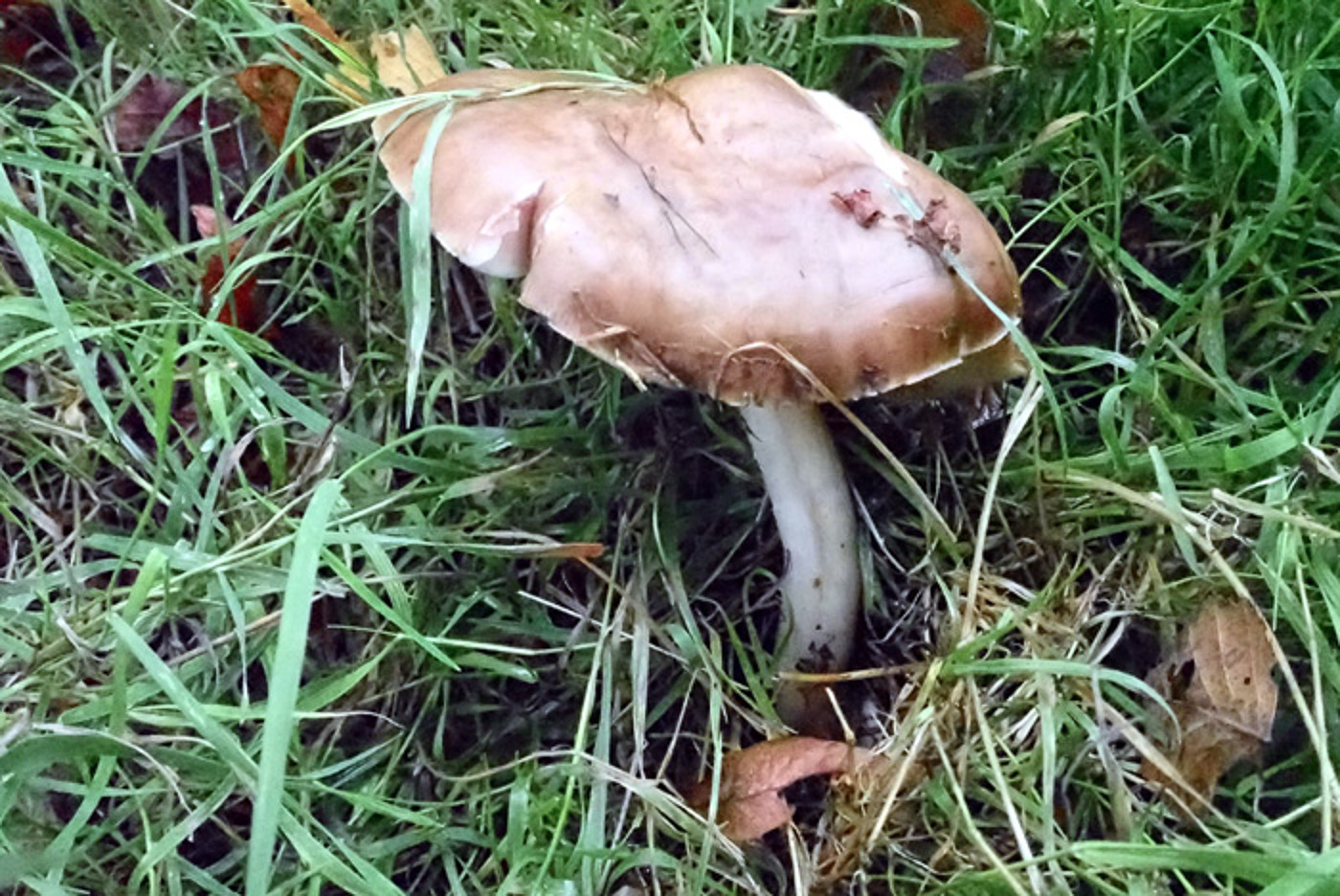
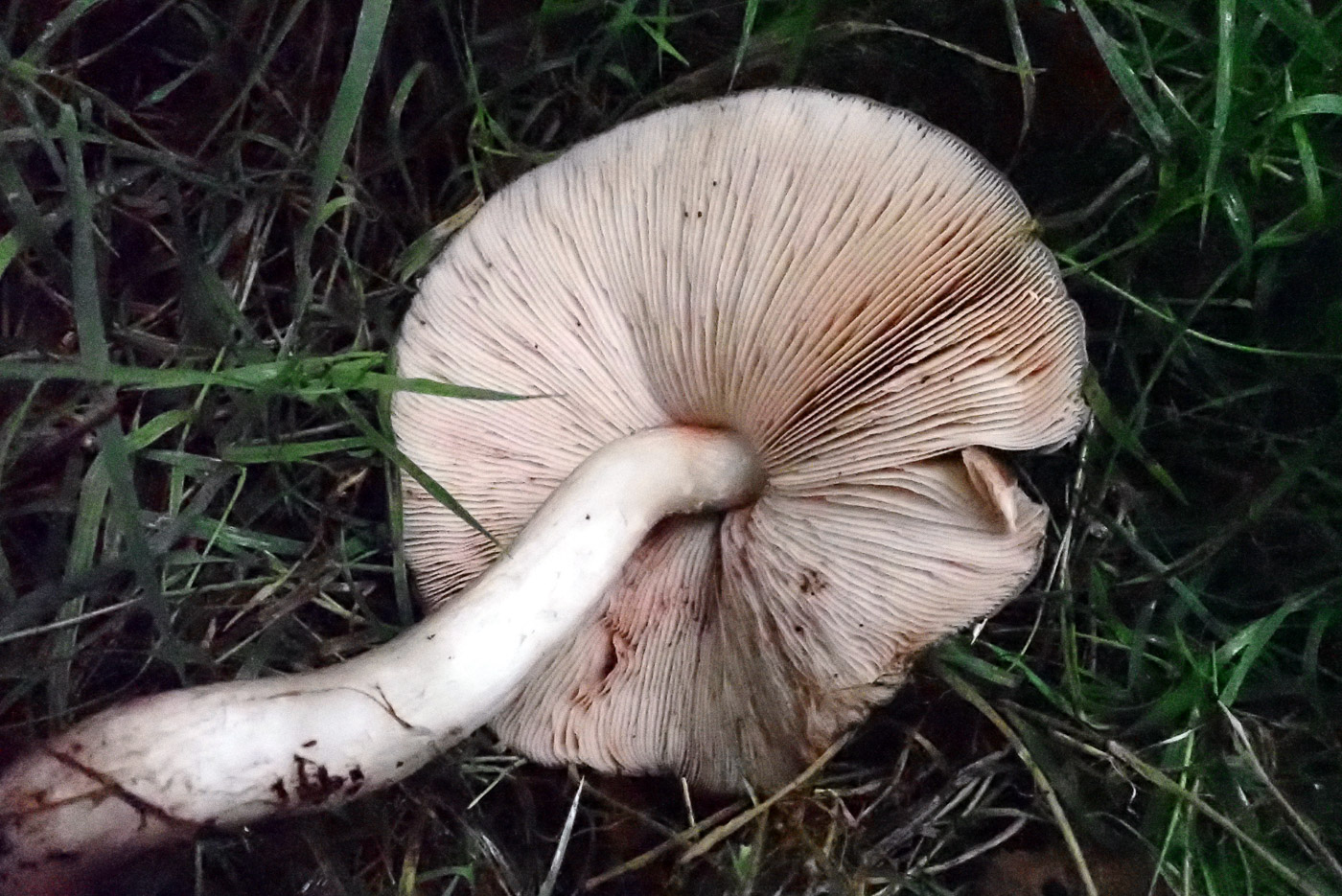 |
September 7th Pluteus cervinus / hongoi (Deer Shield) 
In a well rotted woodchip pile at Turville Heath Penny found this large singleton, and having recently discovered about a lookalike species to P. cervinus - one of our commonest species growing on fallen wood - she took a piece of cap home to check. P. hongoi has gill cells with branching hooklike tips, many of which split into two, whereas in P. cervinus the hooklike tips remain single. Sure enough Penny found good numbers of dividing hooks present but will send the sample for sequencing to make sure as we have only county record of P. hongoi, not confirmed with sequencing. These notes will be updated as appropriate when the results are through.
|
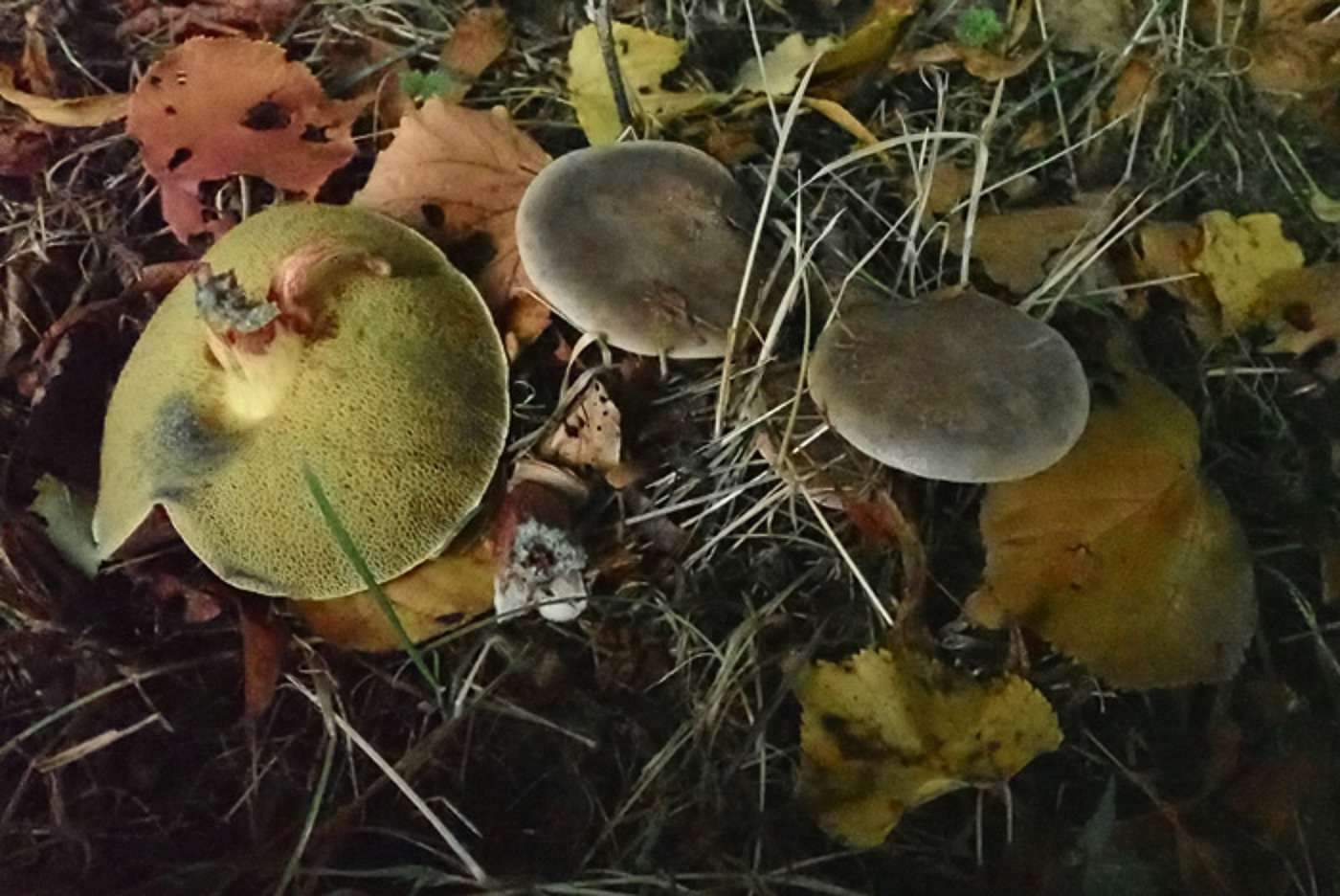
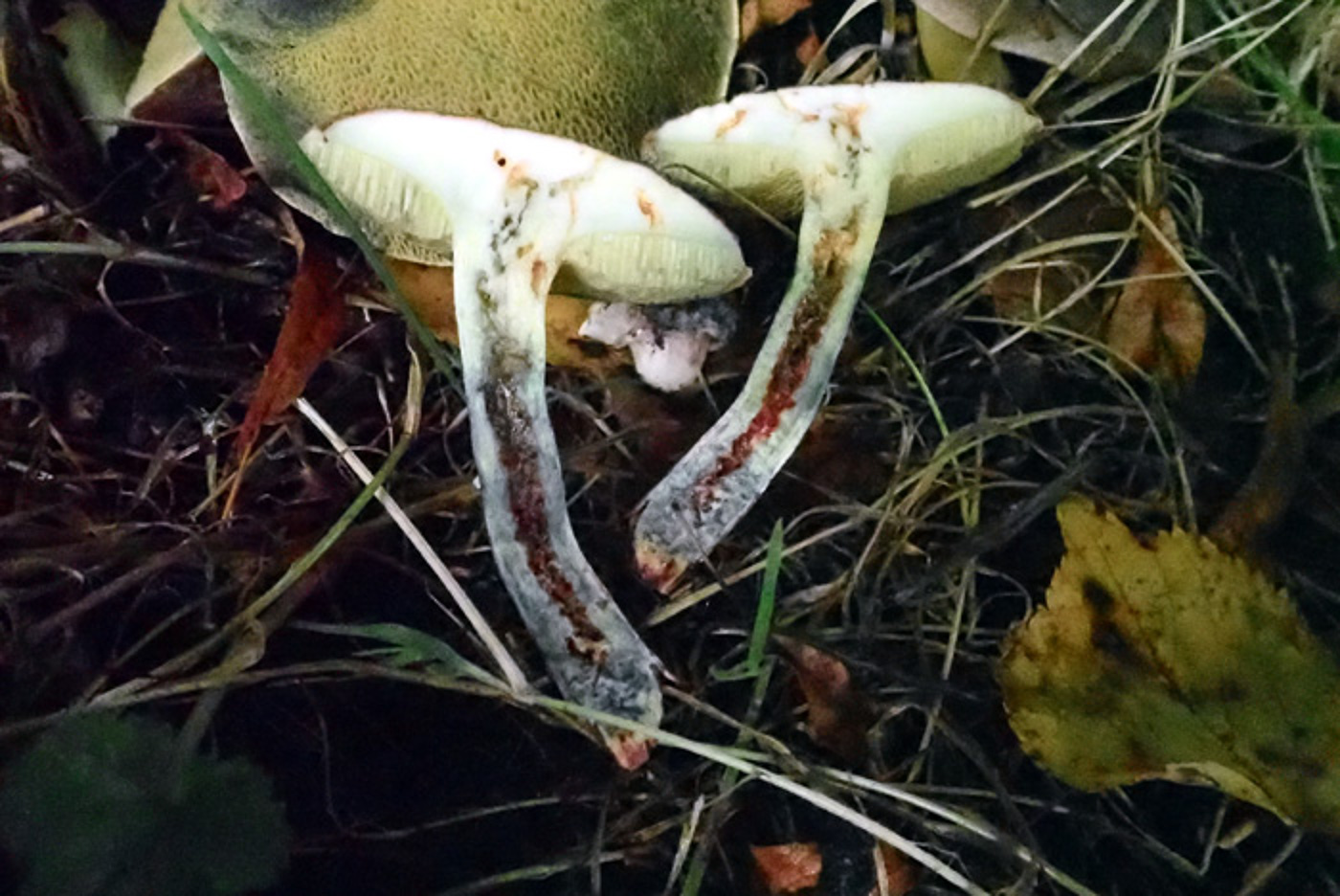
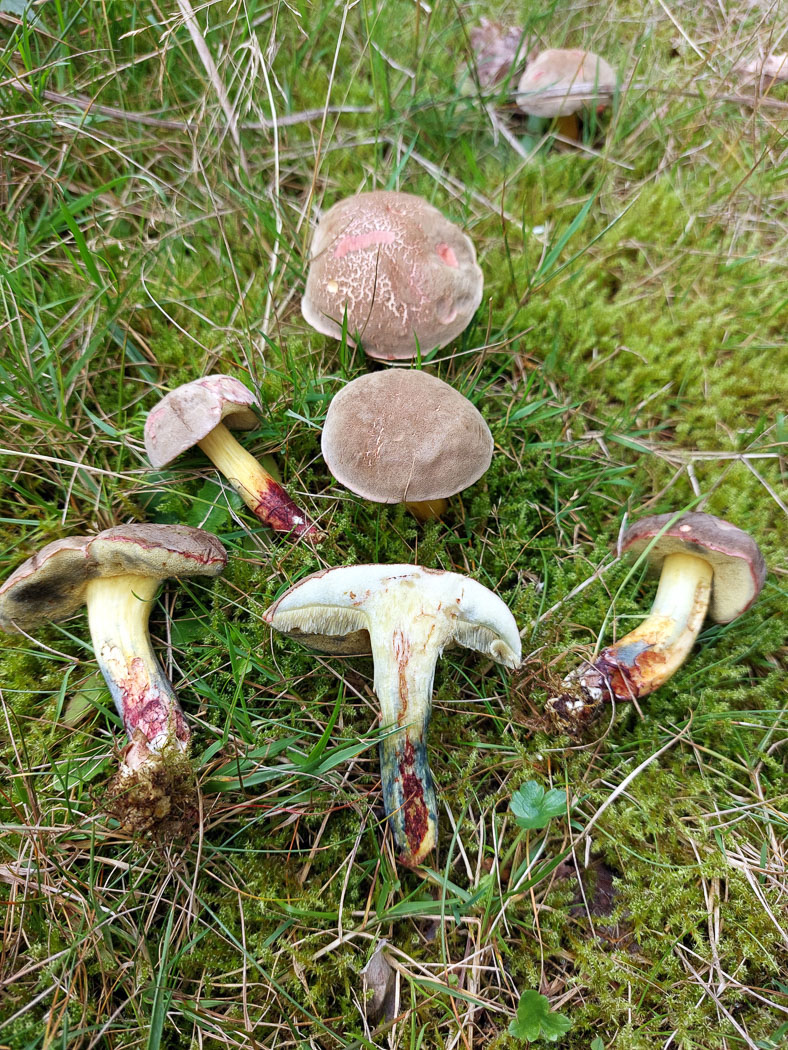 |
September 7th Xerocomellus cisalpinus (Bluefoot Bolete)
In soil under Lime at Turville Heath Penny was pleased to see this group of Boletes - in short supply so far this autumn - and on splitting the stem in half was even more pleased to see it turning very rapidly blue, starting within 10 seconds, this the safest way of splitting it from the several other lookalikes. This group of boletes are not easy to identify, their microcharacters not being particularly definitive or helpful and if there is little colour change to pores, stems or flesh - this can happen in dry conditions or in older specimens - one has little to go on. Hence Penny's relief when there was a positive blue change today and also why this is our first entry of a very common species in Finds. More commonly recorded under Oak or Beech, neither were present nearby today. Photo 3 is of a collection made by Jesper Launder a week later in Jordans village.
|
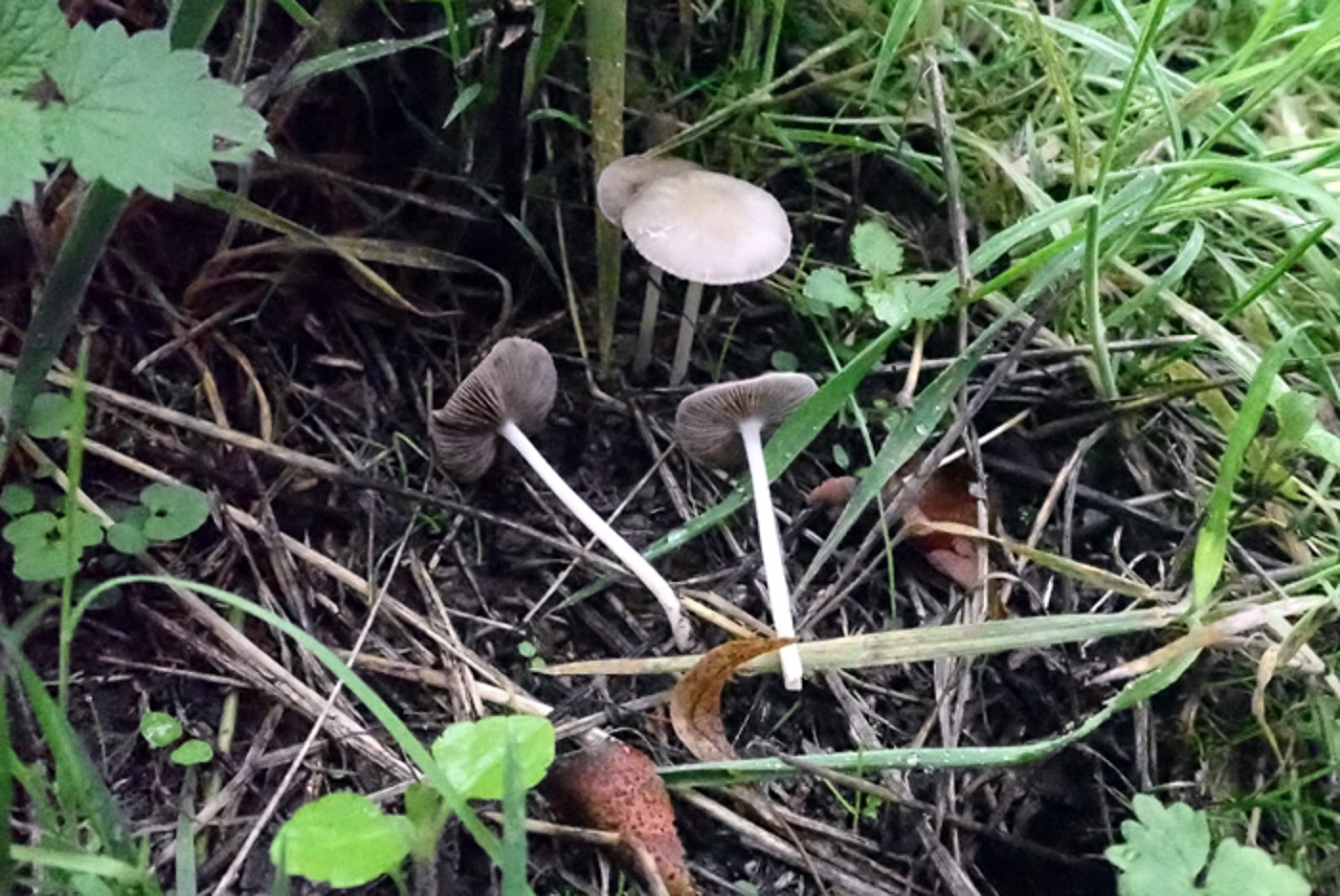 |
September 7th Psathyrella spadiceogrisea (Spring Brittlestem) 
Lurking in a nettle patch in bare soil was this cluster of Brittlestems at Turville Heath, found by Penny. Despite its common name this species fruits at this time though much less frequently than it does earlier in the year. It's typical of its genus in general appearance and lacks the pale cap with frilly edge seen in the very common P. candolleana (Pale Brittlestem) - a regular in grassy path edges at this time. It's microscopic features need to be checked, however, to be securely identified. Our only other entry is in Finds 2021 May 12th.
|
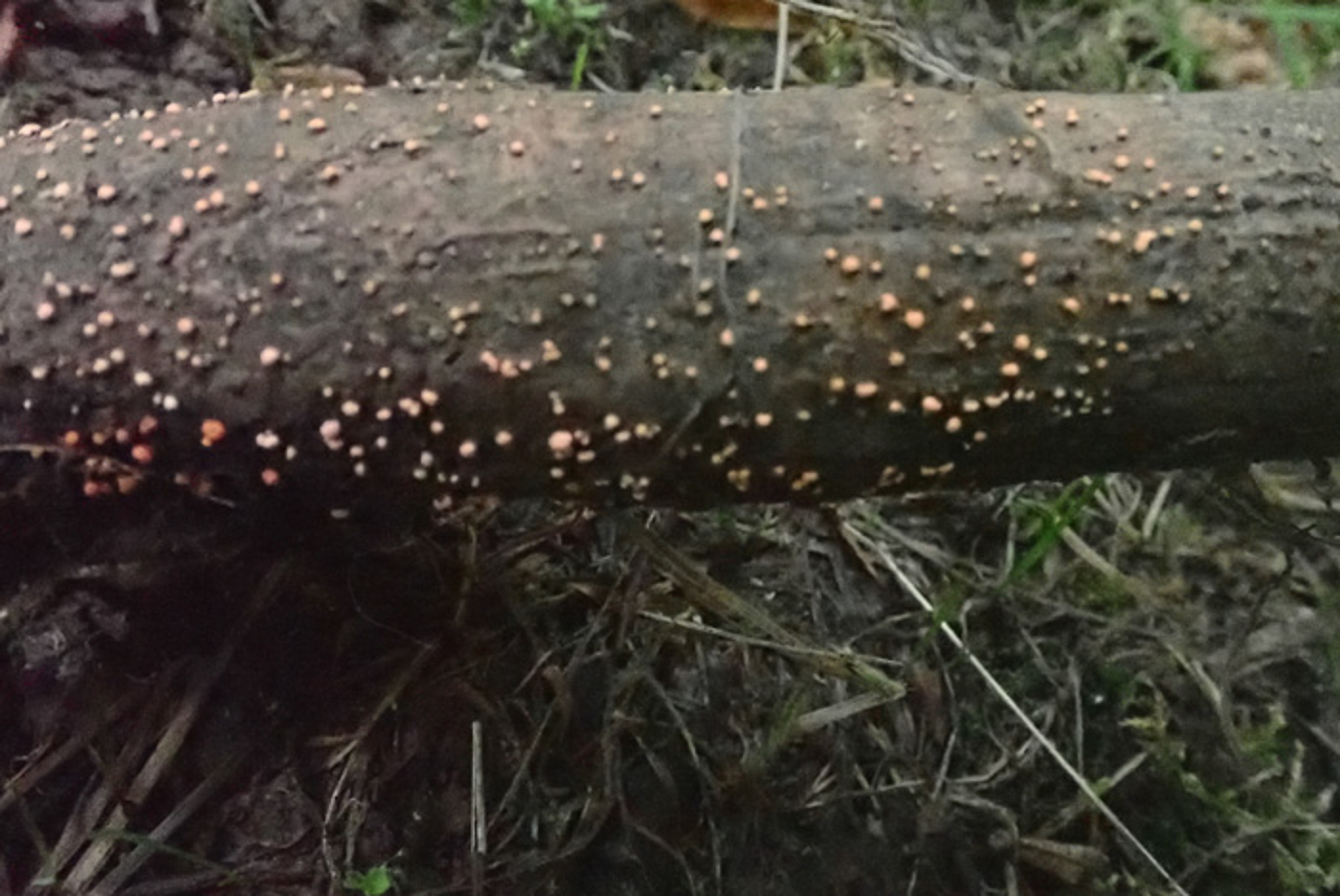 |
September 7th Nectria cinnabarina (Coral spot)
On a deciduous stick in Turville Heath Penny found this rash of orange spots easily recognisable as this common species. (Not my greatest photo, sorry!) We appear to have only one previous entry, however, from Finds 2020 October 8th.
|
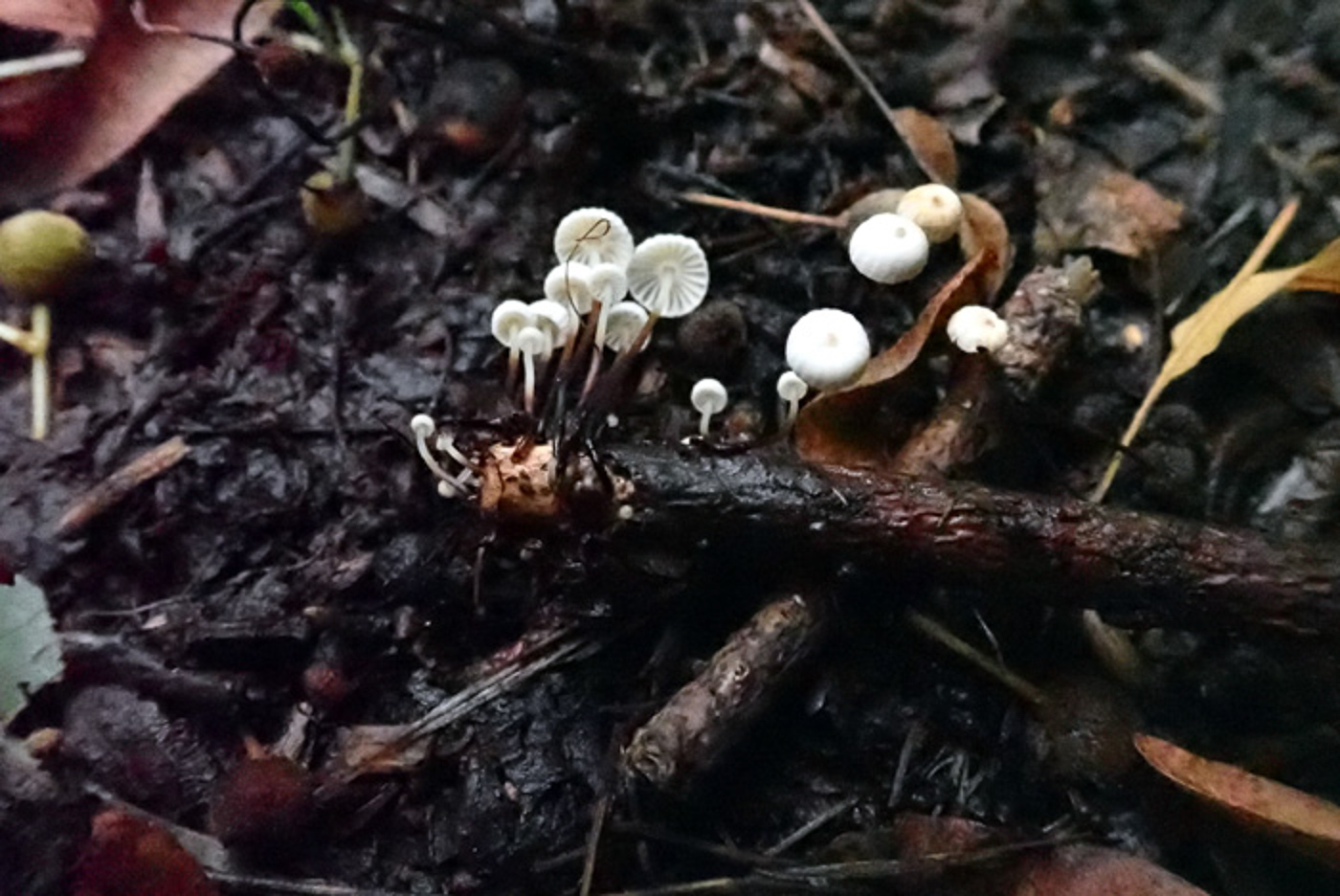
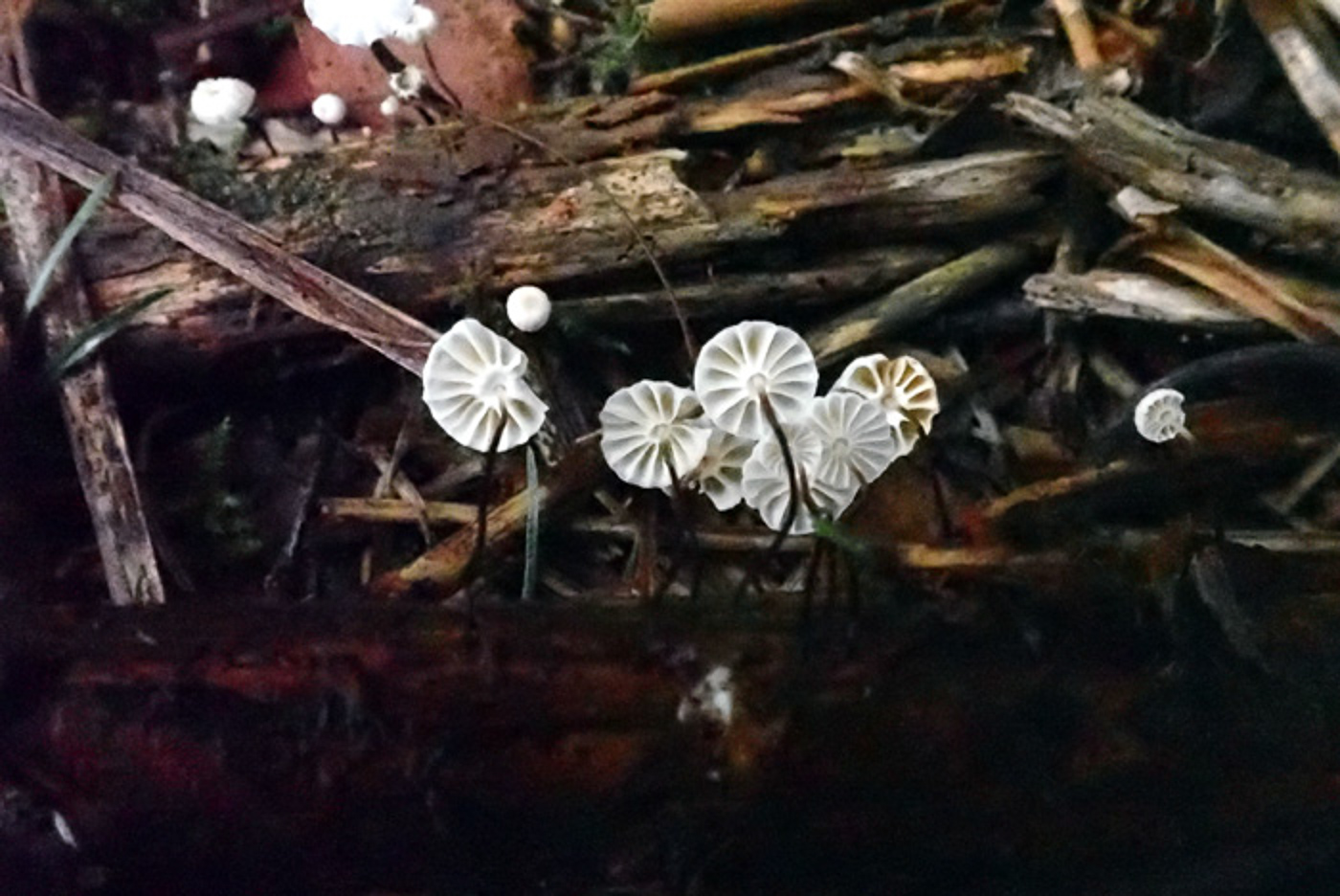 |
September 7th Marasmius rotula (Collared Parachute)
At Turville Heath Penny found good numbers of this very common small white mushroom popping up attached to woody fragments. This is one of quite a few Marasmius species having a thin almost horse-hair like stem, black though changing to orange then white at the top. However, only one other species has this distinctive cogwheel-like collar where the gills attach to the stem - one which is half the size, is found only on fallen beech leaves and has a tiny black dot in the centre of the cap: the much rarer M. bulliardii. To compare these two species see Finds 2020 October 13th for M. bulliardii versus Oct 1st for M. rotula, also 2021 June 30th & July 31st for the latter.
|
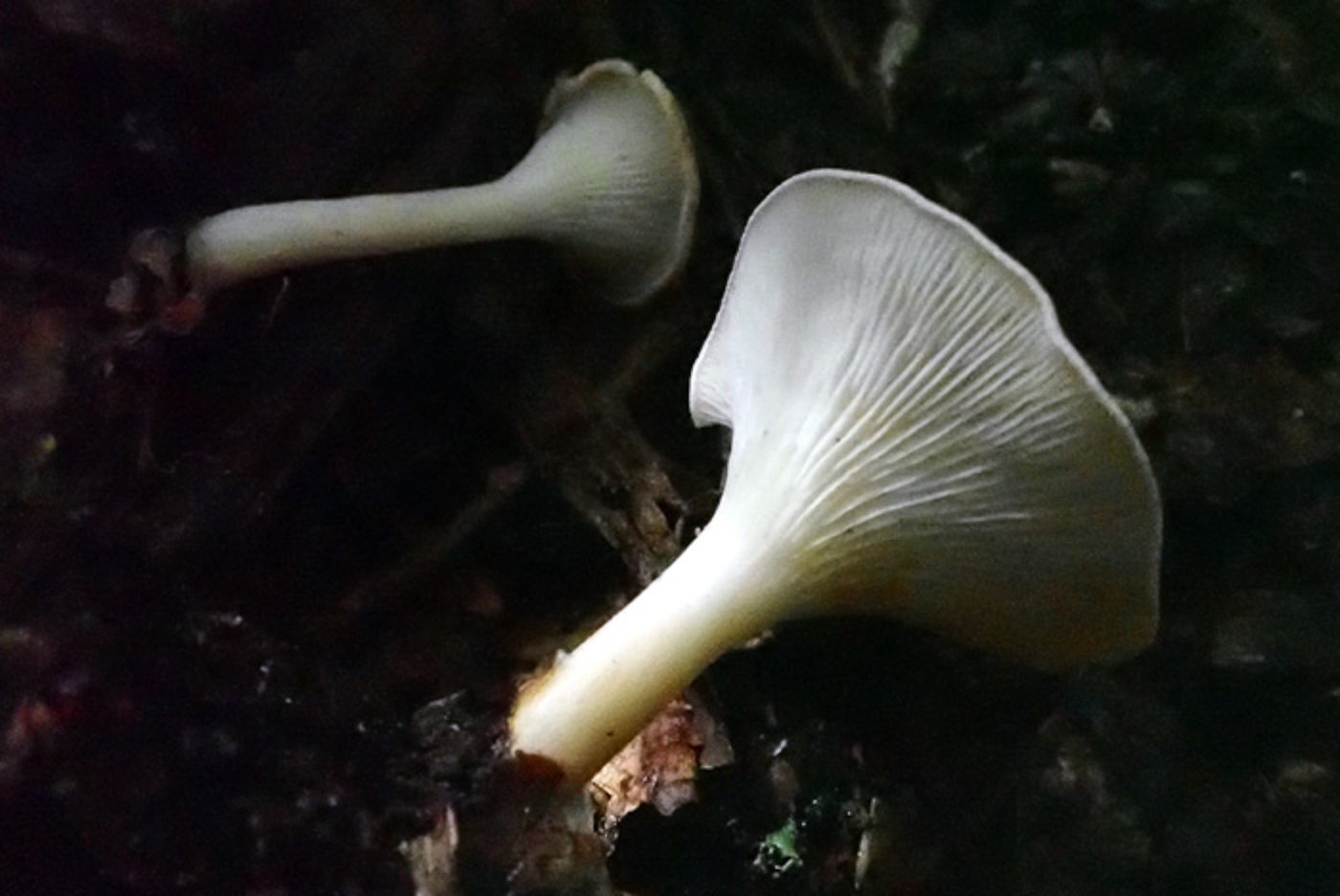
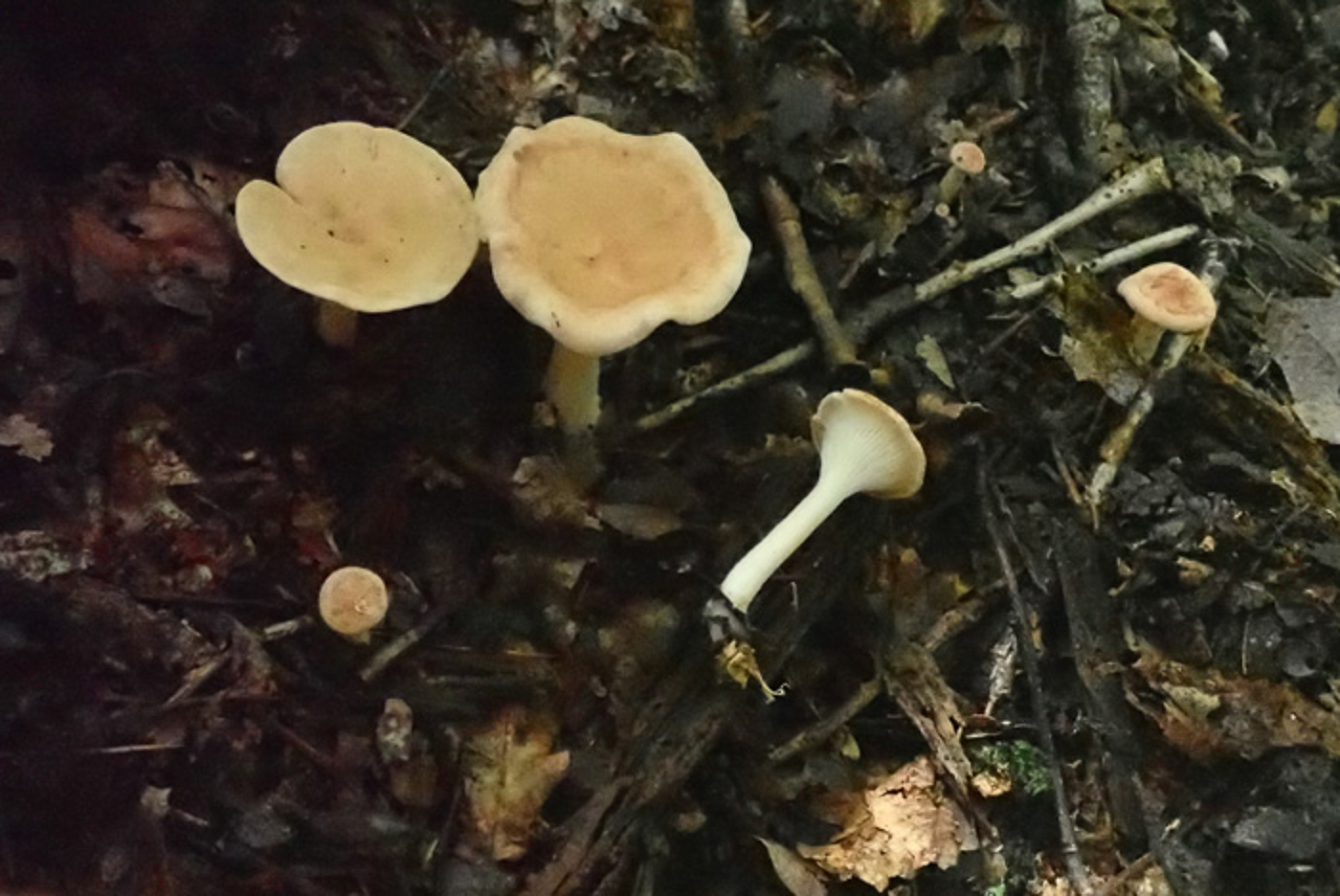 |
September 7th Infundibulicybe gibba (Common Funnel)
At Turville Heath Penny found a few examples of this early species (though not so early this year) coming up in woodland litter. As its common name suggests, it was until recently in the genus Clitocybe (Funnel) though several species which are truly 'infundibuliform' (funnel-like) as this one are now moved to this new genus - a bit of a mouthful but descriptive! (See the Masterlist for various previous entries.)
|
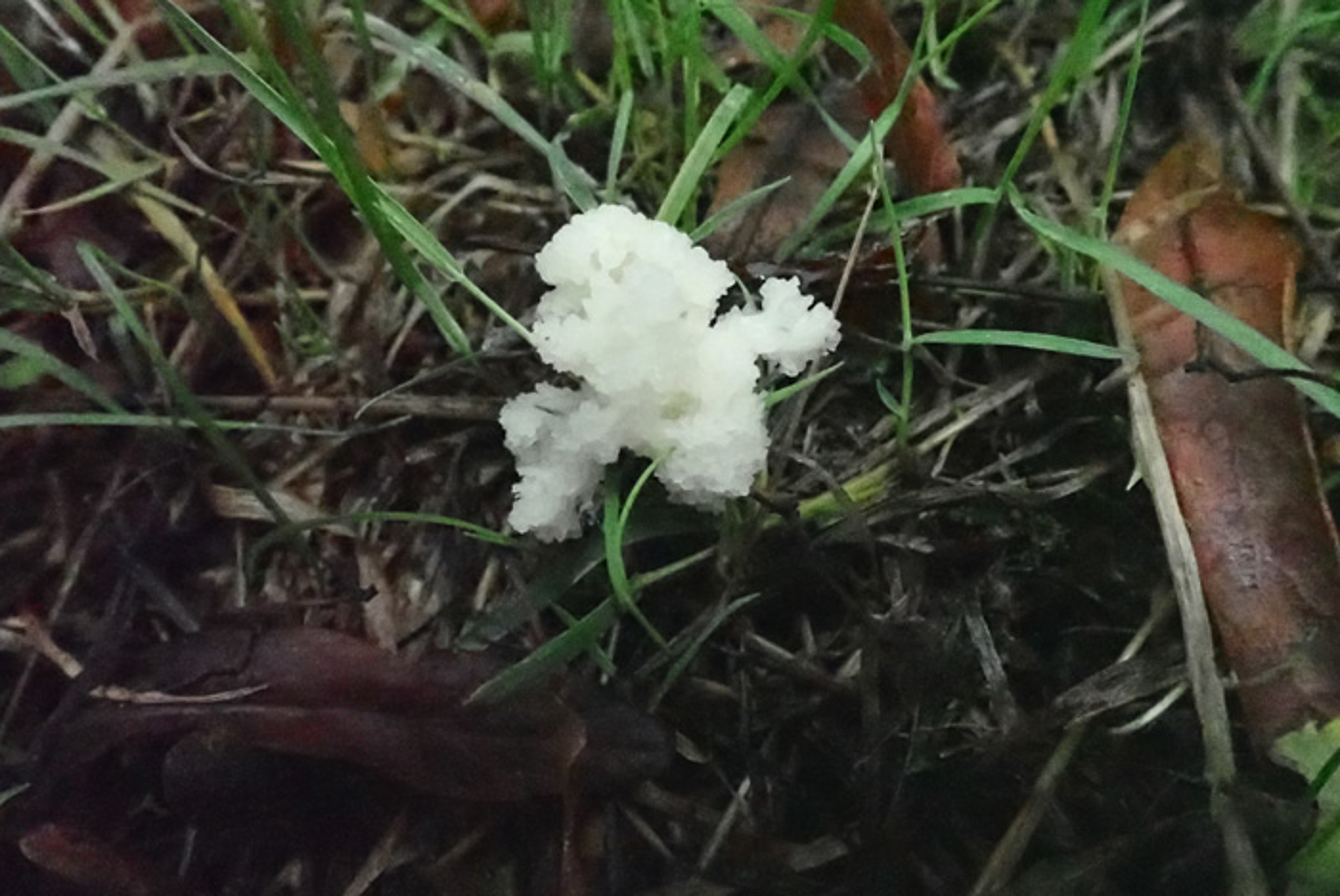 |
September 7th Mucilago crustacea (Dog's Vomit Slime Mould)
At Turville Heath Penny noticed this small pure white patch - still at an early very slimy stage and 'on the move' - clinging to some vegetation debris as it does. Recently its descriptive though not official common name has confusingly also been applied to the bright yellow and very common slime mould Fuligo septica var. flava - in my opinion better named as Scrambled Egg! We have another Finds entry for comparison: 2020 October 30th.
|
September 5th 2022

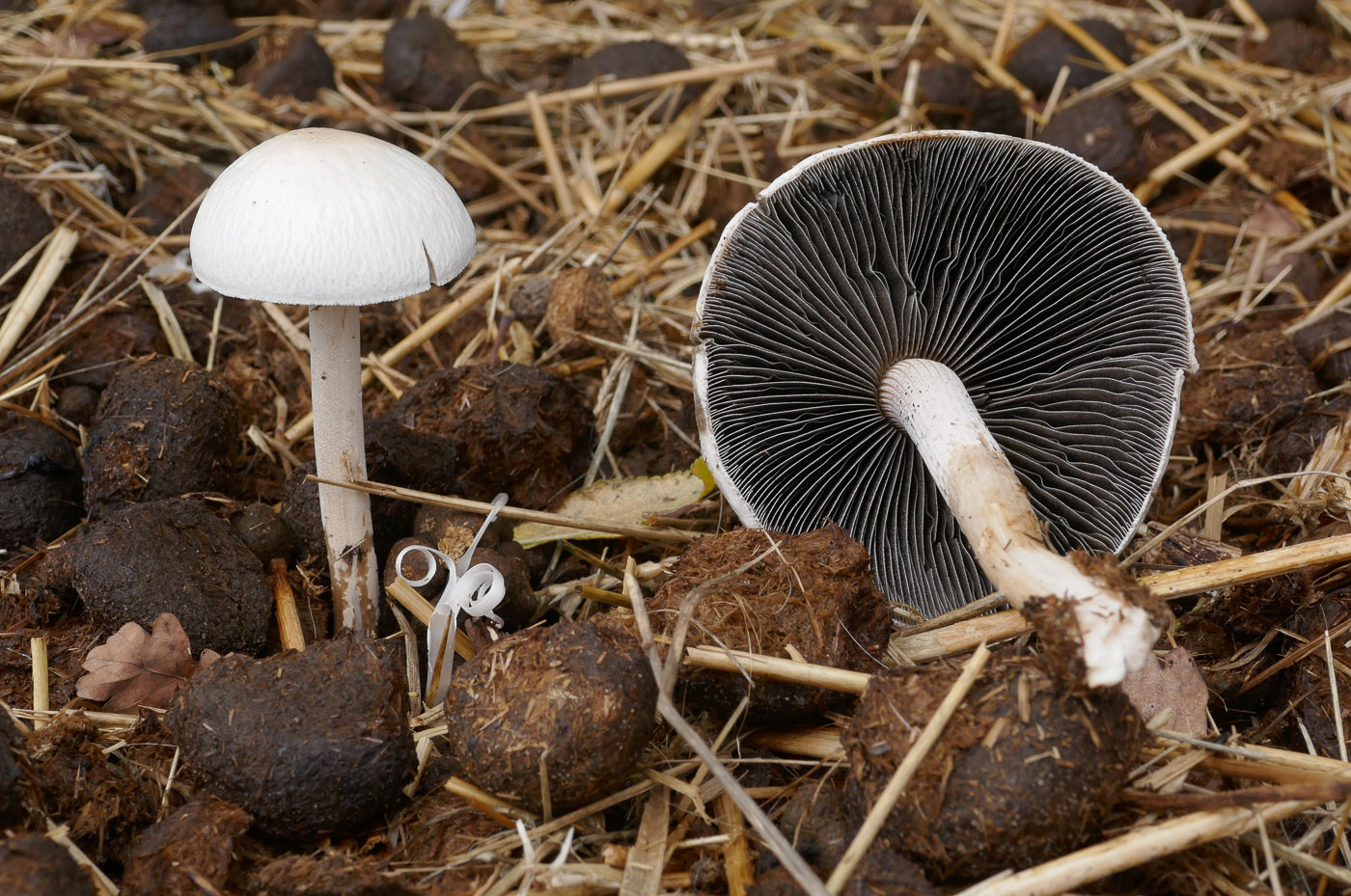 |
September 5th Panaeolus antillarum (a rare Mottlegill with no common name) 
At Stampwell Farm Jackie Ewan found these white rather wrinkled mushrooms on donkey dung heap. A scope revealed unusually large spores which led her to P. antillarum – a species known to occur on horse and cow dung (and now donkey too!) but very rare and with only three previous UK records (2006 from Edinburgh and two in 2018 from Hants and W. Sussex). Hence her collection was dried and sequenced and has now been confirmed. The material has been sent to the RBG Kew fungarium and Jackie reported the species again from the same dung heap exactly a year later (though had no camera at the time!)
|

 |
September 5th Gymnopus ocior (Spring toughshank)
At Stampwell Farm Jackie Ewan found a patch under oak with several fruitbodies dotted about - all clearly similar but some much paler, some with distinctly darker tones. Having found G. ocior at this site previously Penny feels fairly confident (but is not positive!) that these darker specimens are they, it also being a species we found the day before at King's Wood Tyler's Green when one example clearly had the give-away yellow gills (though this is not a constant feature). This is one for sequencing and these notes will be updated once confirmed (or otherwise!).
|
September 4th 2022
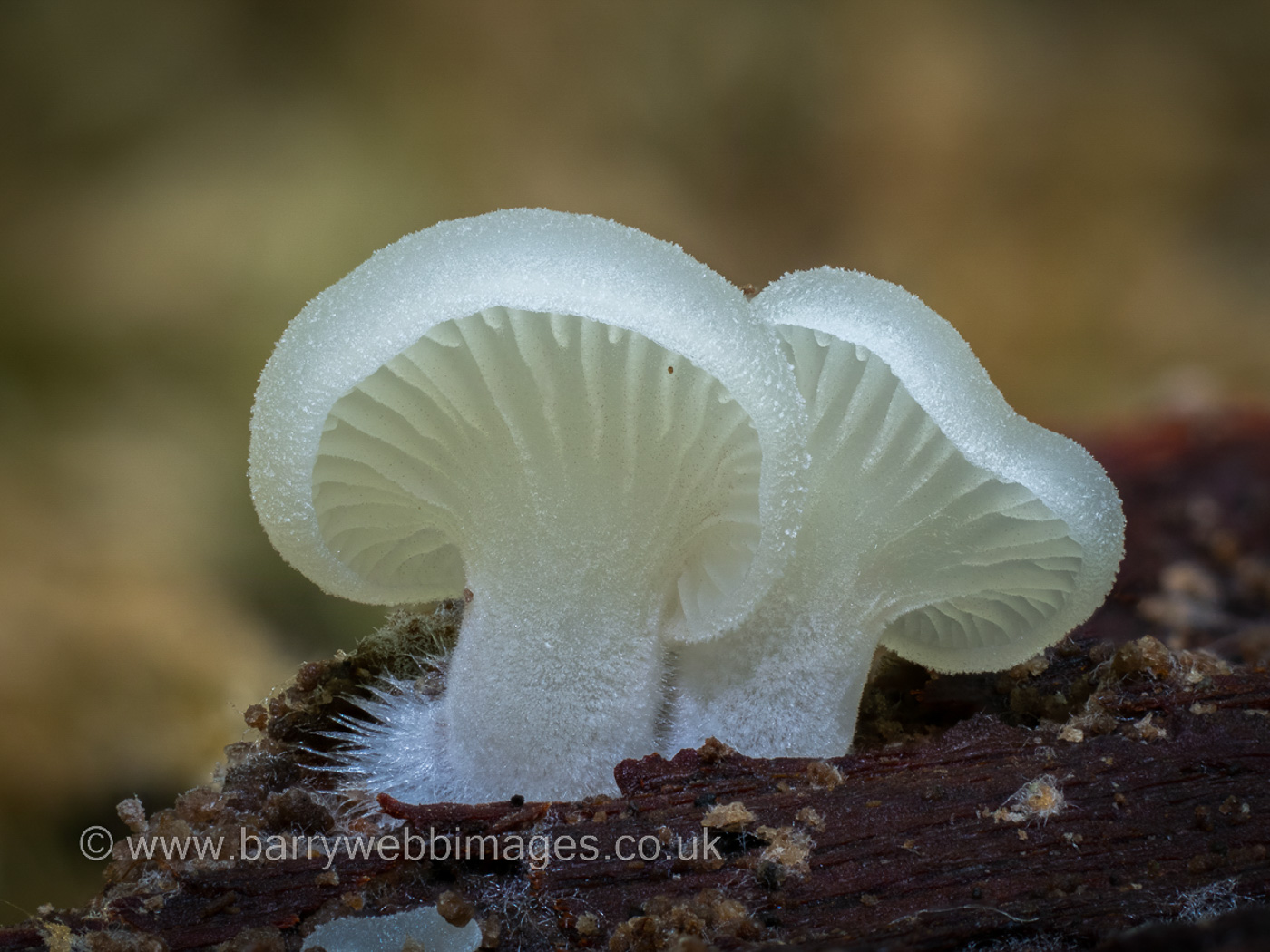 |
September 4th Clitopilus hobsonii (Miller's Oysterling) 
These tiny little beauties - only a few mm across - were found by Barry Webb on our Walk at Kings Wood Tyler's Green but not included in Penny's report though this was one of several collections of the species she checked at home later. An occasional species, it is like a pure white Crepidotus (Oysterling) but with very different microscopic features and eventually only faintly pinkish brown gills (from the spore colour) whereas Crepidotus gills start to turn beige brown much sooner - hence today's species is only identifiable with certainty using a scope. (See also Finds 2020 November 30th and 2021 June 30th.)
|
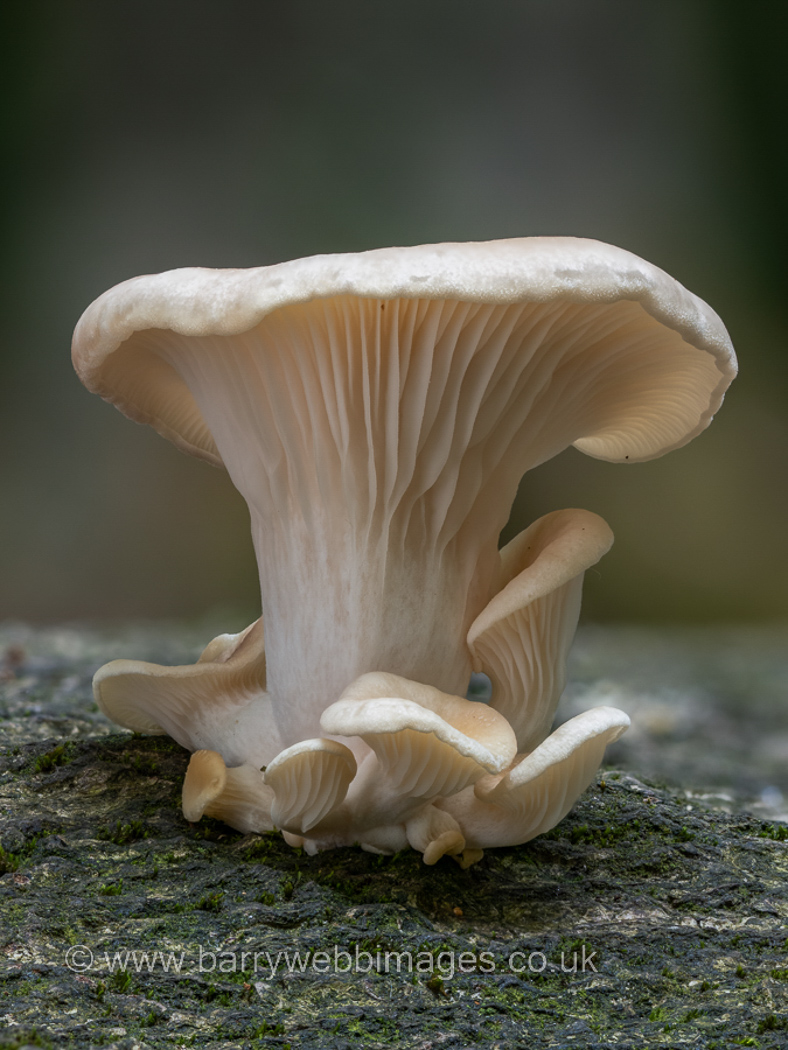 |
September 4th Pleurotus ostreatus (Oyster Mushroom)
Though we have quite a few previous entries of this common species (see the Masterlist for more) Barry's image here, taken on our Walk at Kings Wood Tyler's Green but not included in Penny's report, is too good not to be shared!
|
September 1st 2022
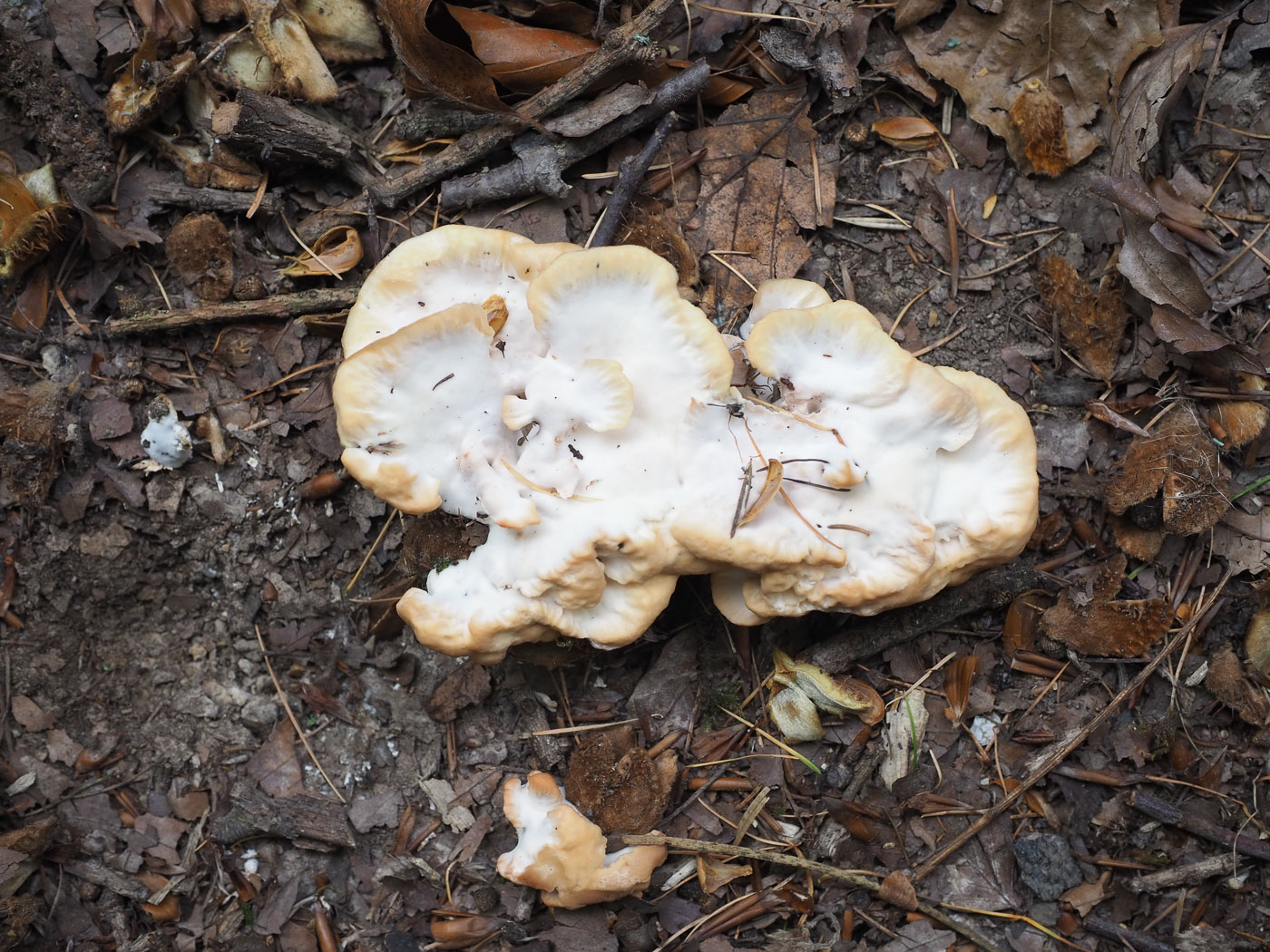
 |
September 1st Abortiporus biennis (Blushing Rosette)
At Penn Wood in a clearing John Catterson noticed this fungus growing apparently on the ground and was stumped as to its identity. This is a species which quite often confuses people and seems to come up in a variety of different guises. It likes to grow on fallen deciduous wood or submerged roots, commonly Beech, and when fresh has a distinct pink tinge and mazelike pores underneath. We have two previous photos from 2020, also two from 2021 - check the Masterlist for details.
|
August 30th 2022
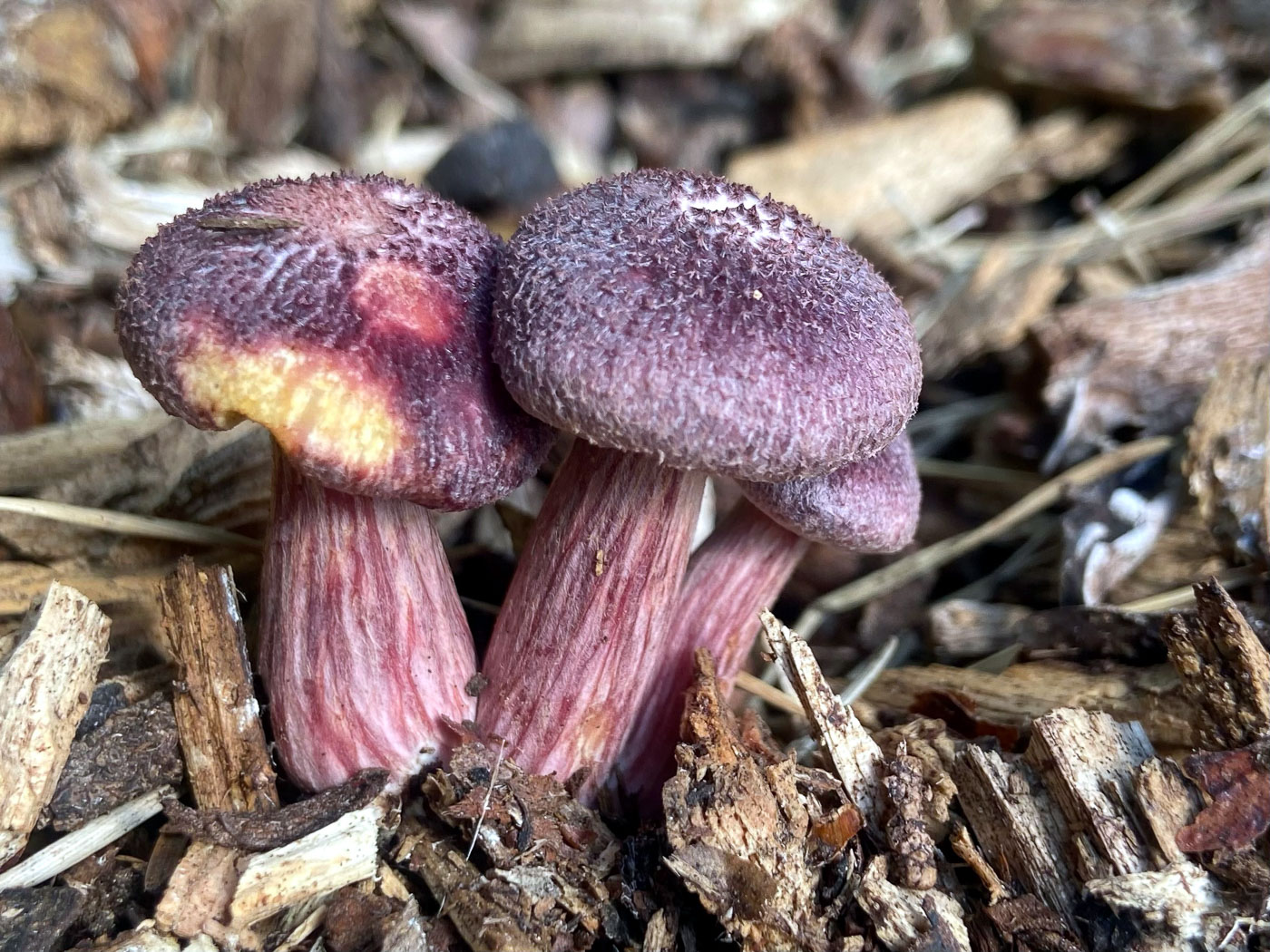
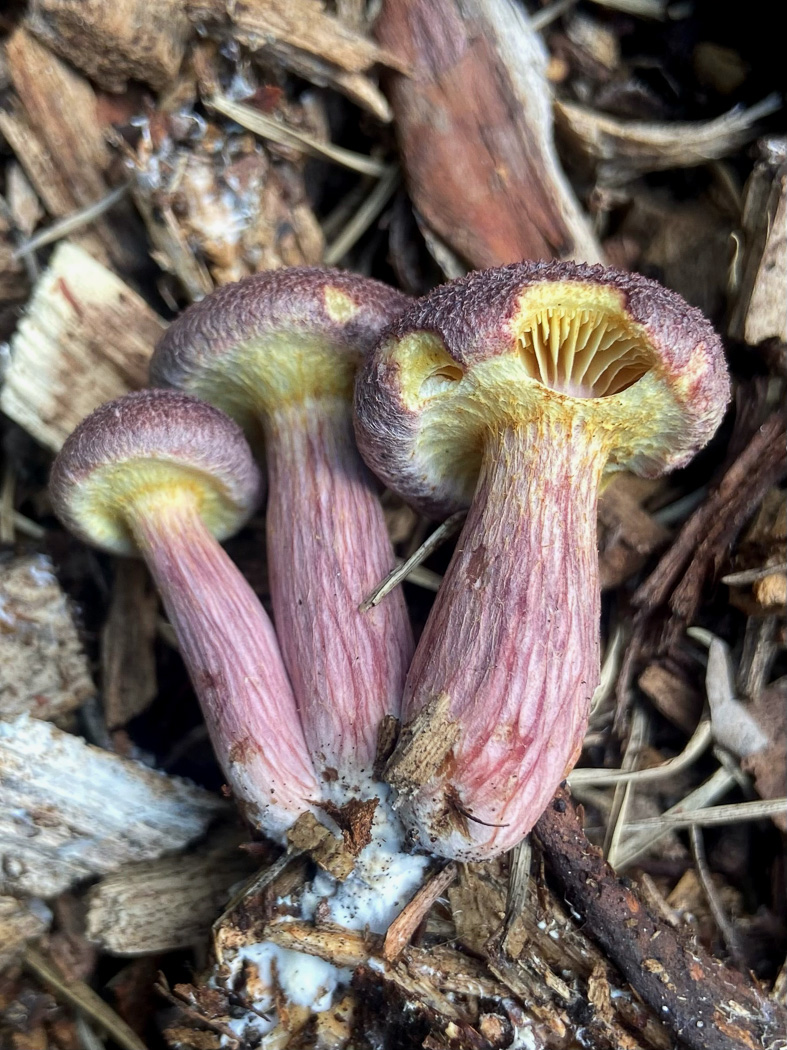
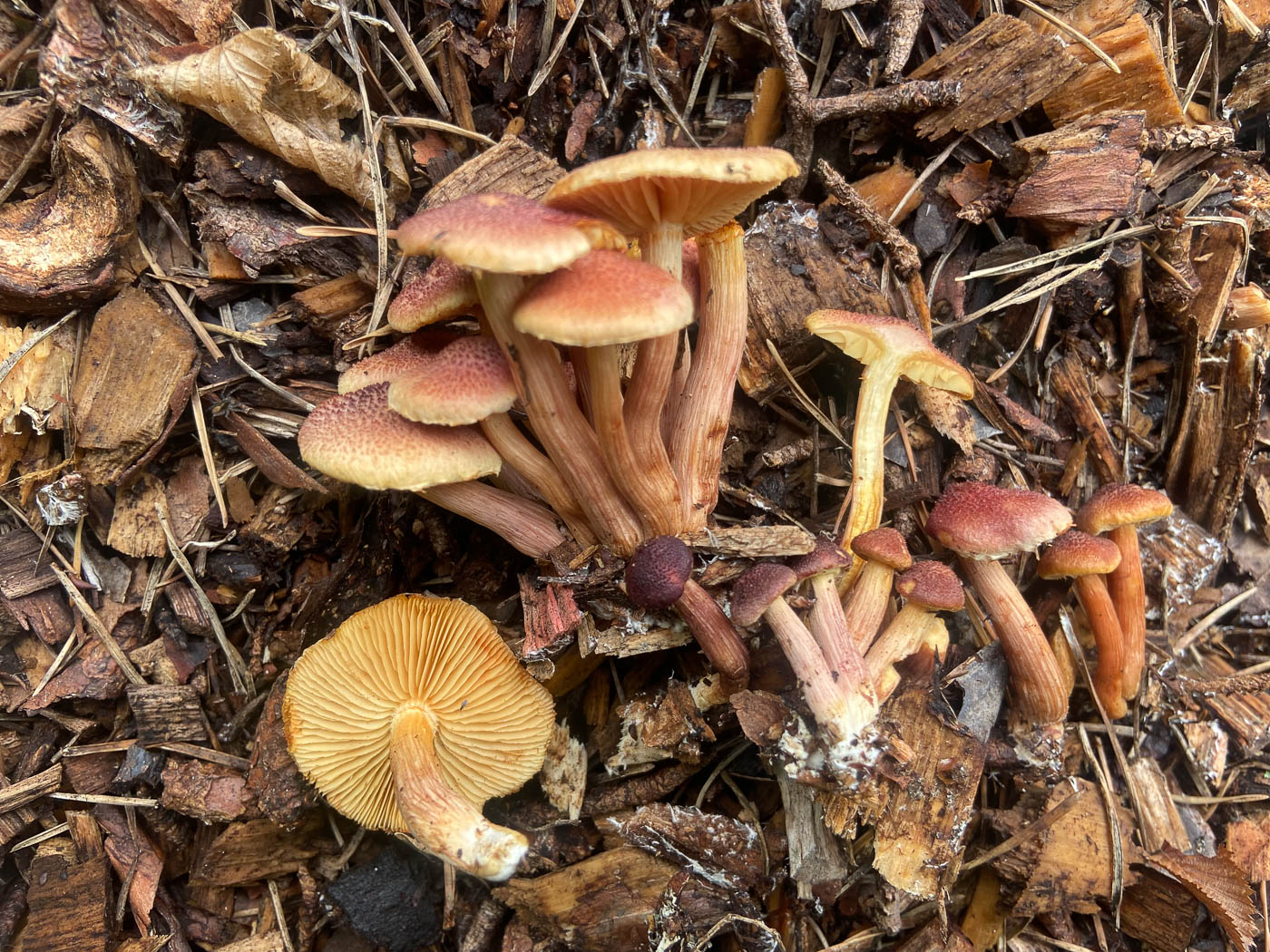 |
August 30th Gymnopilus dilepis (Magenta Rustgill) 
On a large Pine woodchip pile in Naphill Common Sarah Ebdon was amazed to see some small brightly coloured mushrooms just emerging despite the drought. Identifying them, however, was not at all easy and she suspected they belonged to genus Cortinarius - one with quite a few species having purple colours and also yellowish gills as seen here. Penny suspected not, however, when hearing that the substrate was woodchip - Cortinarius being mycorrhizal and therefore emerging from submerged roots / soil. On seeing the photos she recognised it as this unusual and distinctive species of Gymnopilus, recalling her similar struggle to identify it when it appeared on Pine woodchip in Stoke Common back in 2010 when new to the county. Sarah returned two days later and took photo 3 showing the now larger and slightly fading specimens, looking less Cortinarius-like and more Gymnopilus-like. The species is an alien, one of several fungi introduced into the country (probably on imported woodchip) and first recorded here in 1995; though gradually spreading on this medium it is still somewhat uncommon and Sarah's find is only our second county record. It appears to thrive on well fermenting conifer chips so the conditions here were perfect!
|
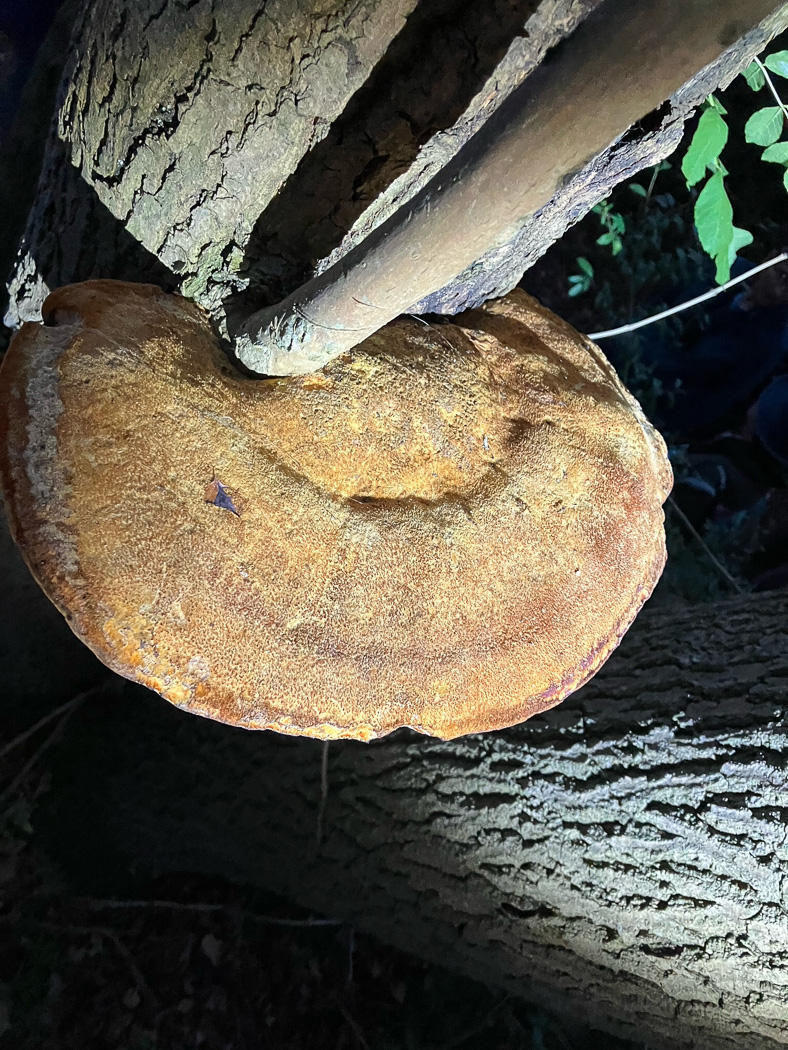
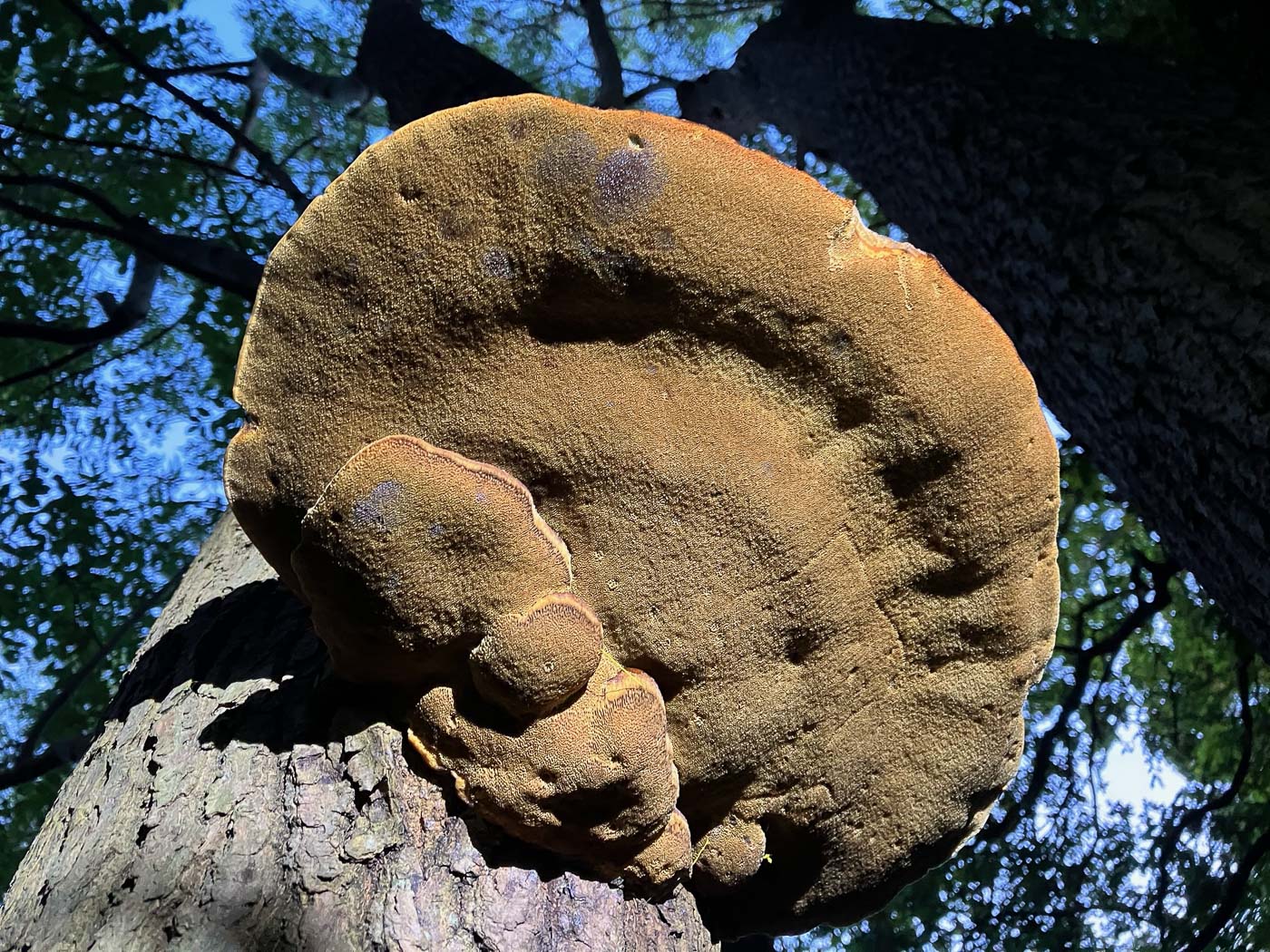 |
August 30th Inonotus hispidus (Shaggy Bracket)
In Elfield Park near Milton Keynes Justin Long found this quite common bracket on standing Ash. Surprisingly this seems to be a first for Finds though we have many records - it's one which favours Ash and also Apple, is often high up on living trunks and when young as here has a finely hairy surface. We most commonly find it old and blackened lying on the ground.
|
August 27th 2022
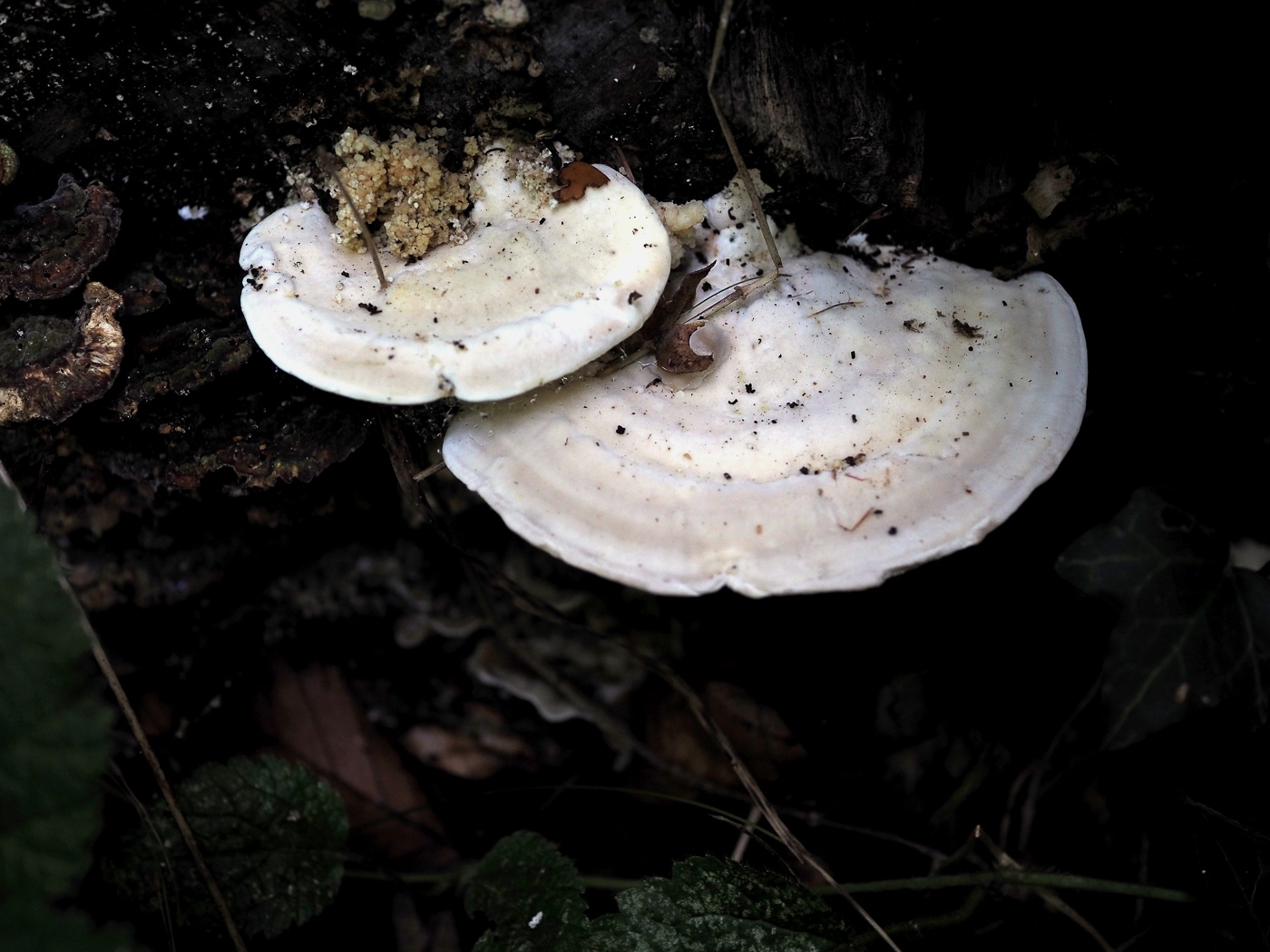 |
August 27th Trametes gibbosa (Lumpy Bracket)
In Tinkers Wood John Catterson noticed this pair of brackets on a deciduous log. This solid and tough species is often to be found with green algi on its upper surface - a useful confirmation of its identity but missing here, possibly reflecting the dry hot conditions? See also the Finds Masterlist for several previous examples.
|
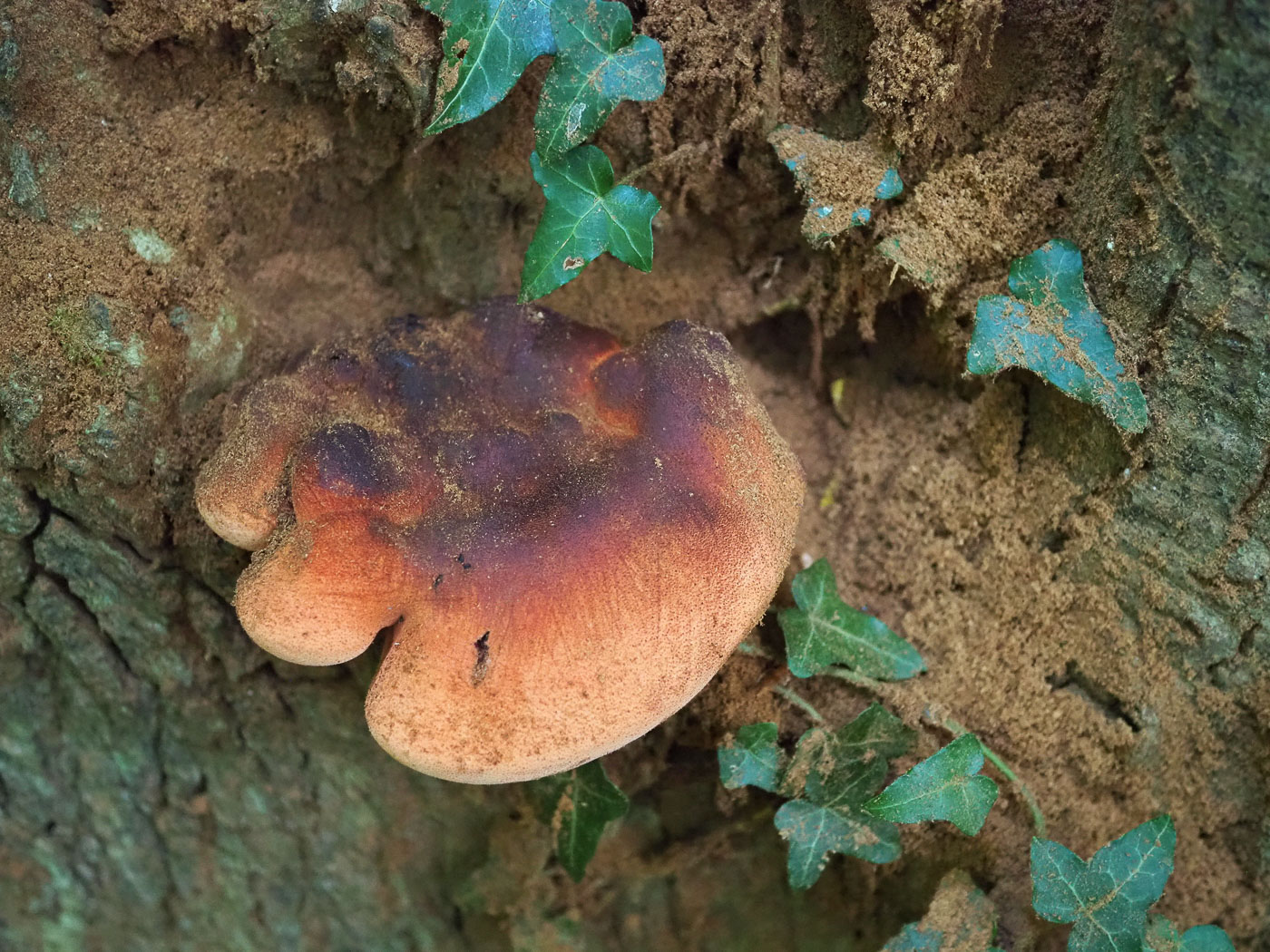 |
August 27th Fistulina hepatica (Beefsteak Fungus)
In Tinkers Wood John Catterson noticed this young bracket in a fissure in an Oak trunk. This species is often an early season fruiter and favours Oak as well, so one to look out for now even in these drought conditions. (See also in Fnds 2020, Sept 12th and Oct 11th.
|
August 19th 2022
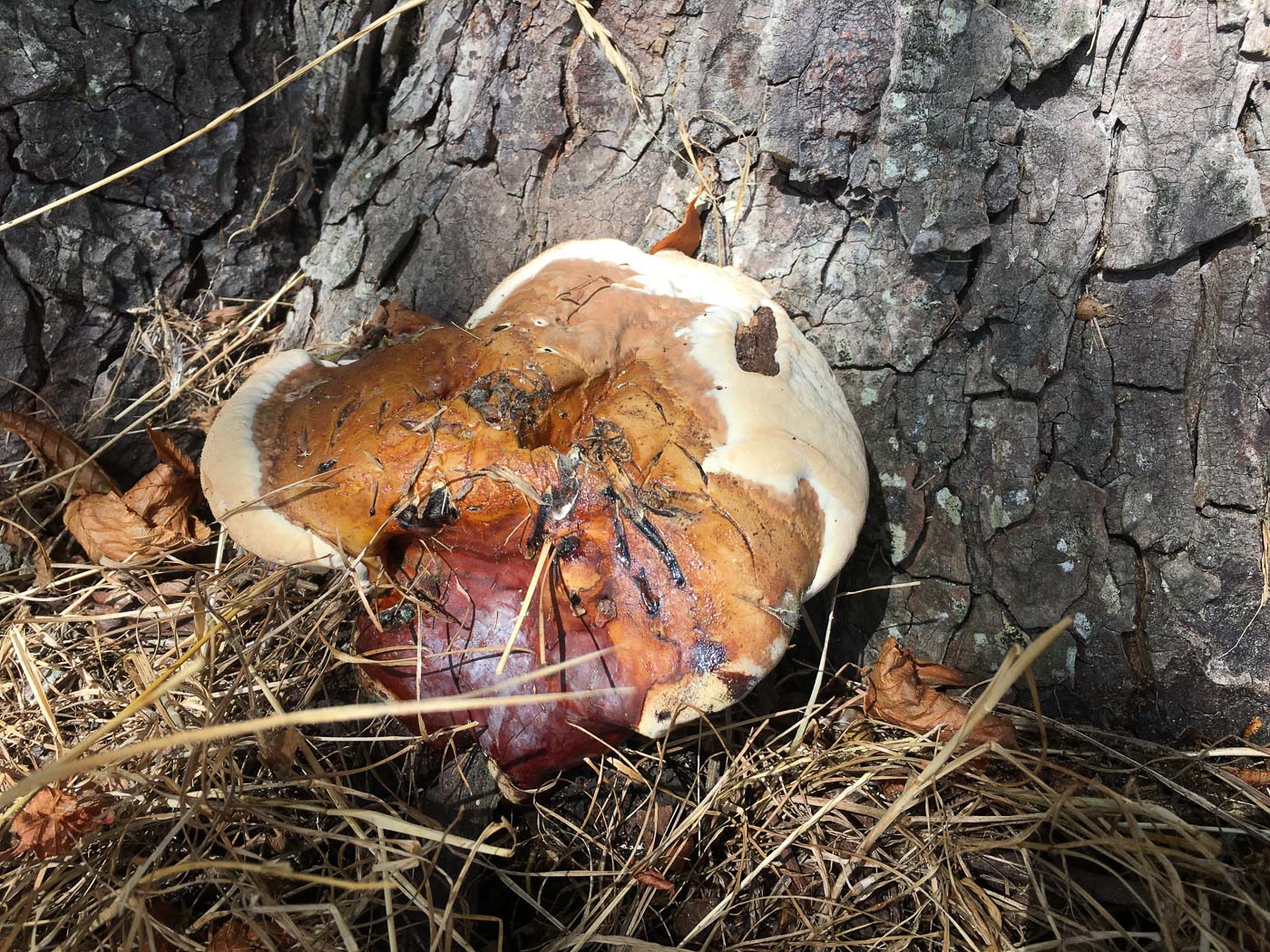 |
August 19th Ganoderma resinaceum (an unusual bracket with no common name)
In Wotton Park Estate Joanna Dodsworth found this bracket fruiting at the base of a particular Horse Chestnut trunk where we've recorded the species on and off for the last 14 years, first identified by Martyn Ainsworth (Kew) - hence the certainty of its determination from a photo. Both this species and the somewhat similar G. lucidum (Lacquered Bracket) differ from the much more common pair, G. australe and G. applanatum, in having a shiny upper surface but share the same fine pale pore surface underneath which marks indelibly dark brown when scratched (hence the name Artist's Bracket for G. applanatum). They all occur on deciduous wood, most commonly Oak and Beech. See also on Finds 2021 July 28th.
|
August 17th 2022
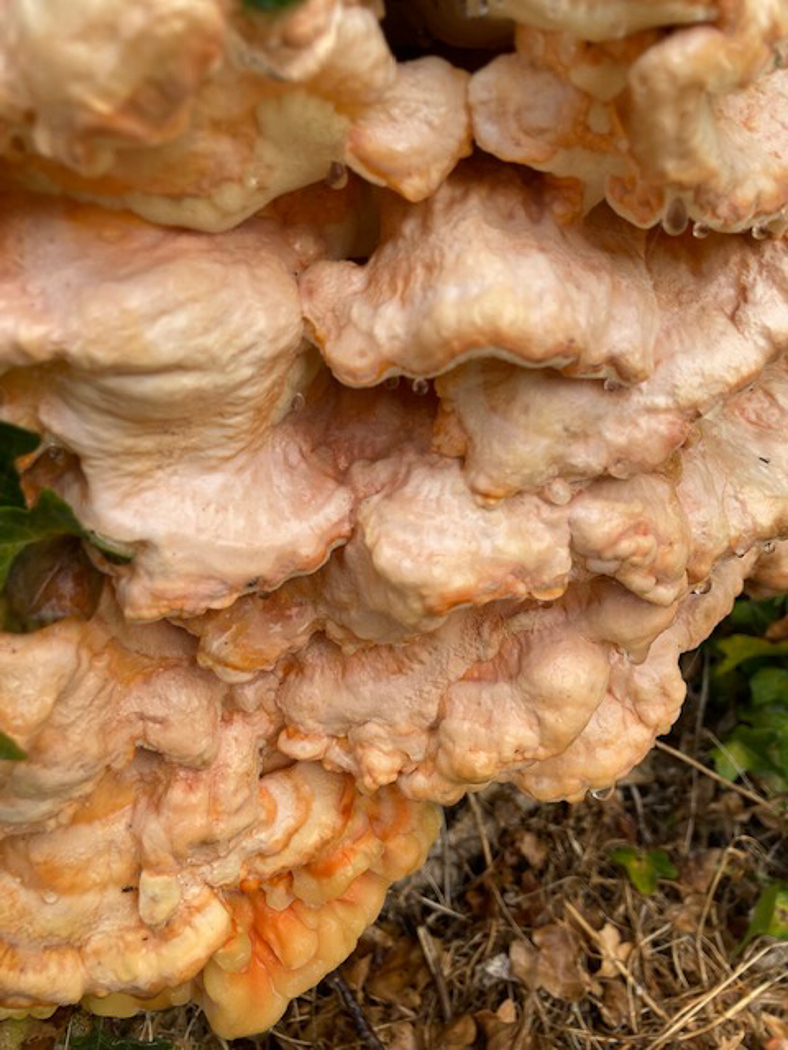
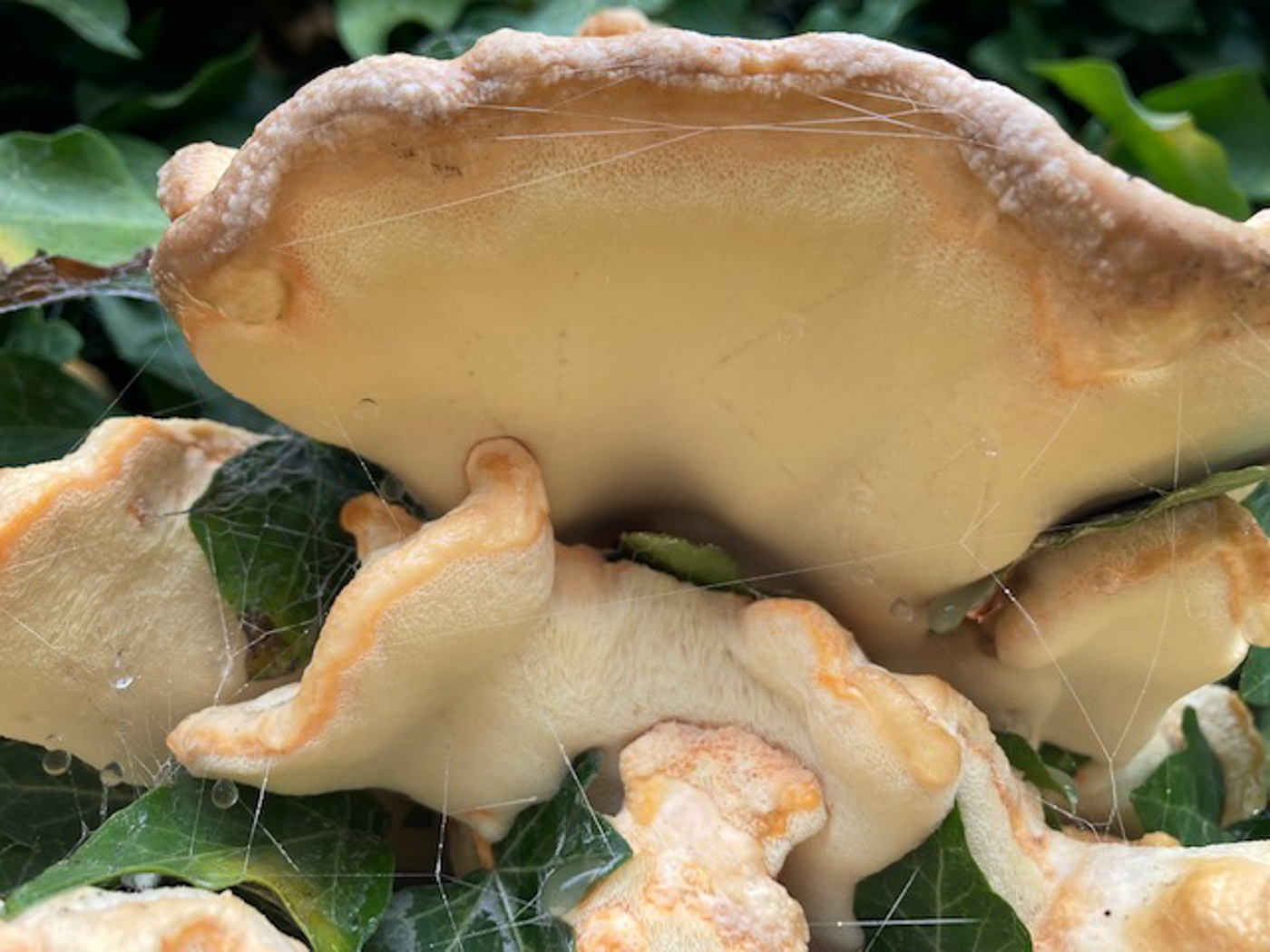 |
August 17th Laetiporus sulphureus (Chicken of the Woods)
On an Ivy covered deciduous log on Stanley Hill, Amersham, Paul Allen noticed this large bracket managing to fruit despite the drought - another example of fungi on wood doing better than those on soil etc in such conditions. The distinctive yellow of this tiered bracket makes it an easy one to recognise - we have many images in Finds: see the Masterlist for details.
|
August 13th 2022
 |
August 13th Pleurotus ostreatus (Oyster Mushroom )
On a log in Captain's Wood, Chesham, Greg Douglas was pleased to see this species freshly fruiting despite the drought conditions over the last month or more. Species on wood are going to be less affected by these conditions than those in soil which clearly are having a tough time at the moment. The caps are very pale in today's example and can often be grey-brown or even darker grey. See the Masterlist for the many other examples of this common species on Finds.
|
August 9th 2022
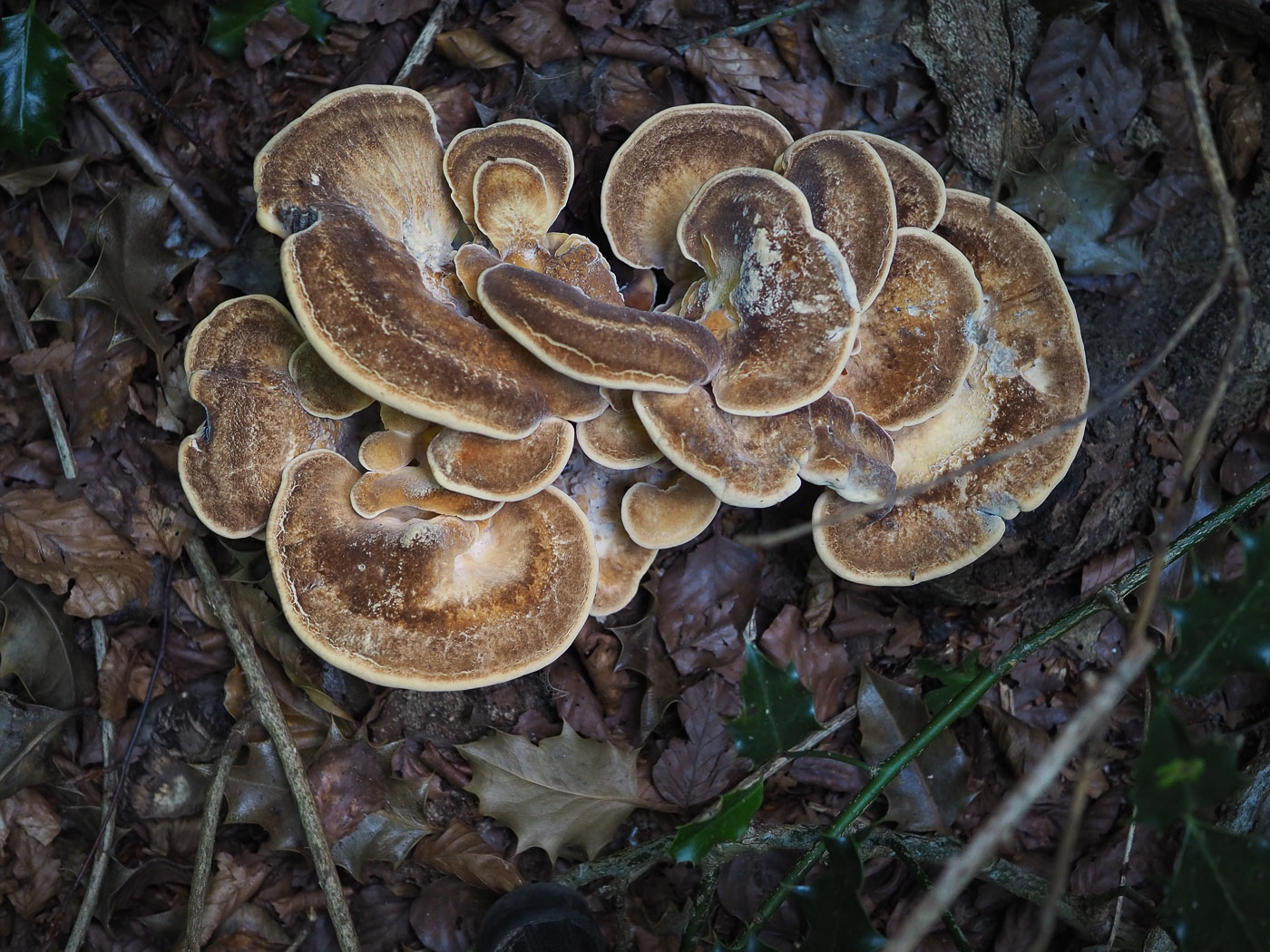 |
August 9th Meripilus giganteus (Giant Polypore)
This lovely specimen, probably adjacent to a Beech trunk - it's most common host, was found by John Catterson in Tinkers Wood. When fruiting well this common species is indeed a giant - often completely surrounding the trunk with a spread of 6ft or more. When this size there is little difficulty over its identity, but if in doubt if you break a piece off and keep it for a bit the flesh where injured turns black. We have two previous Finds entries: 2020 October 7th and 2021 August 25th.
|
August 5th 2022
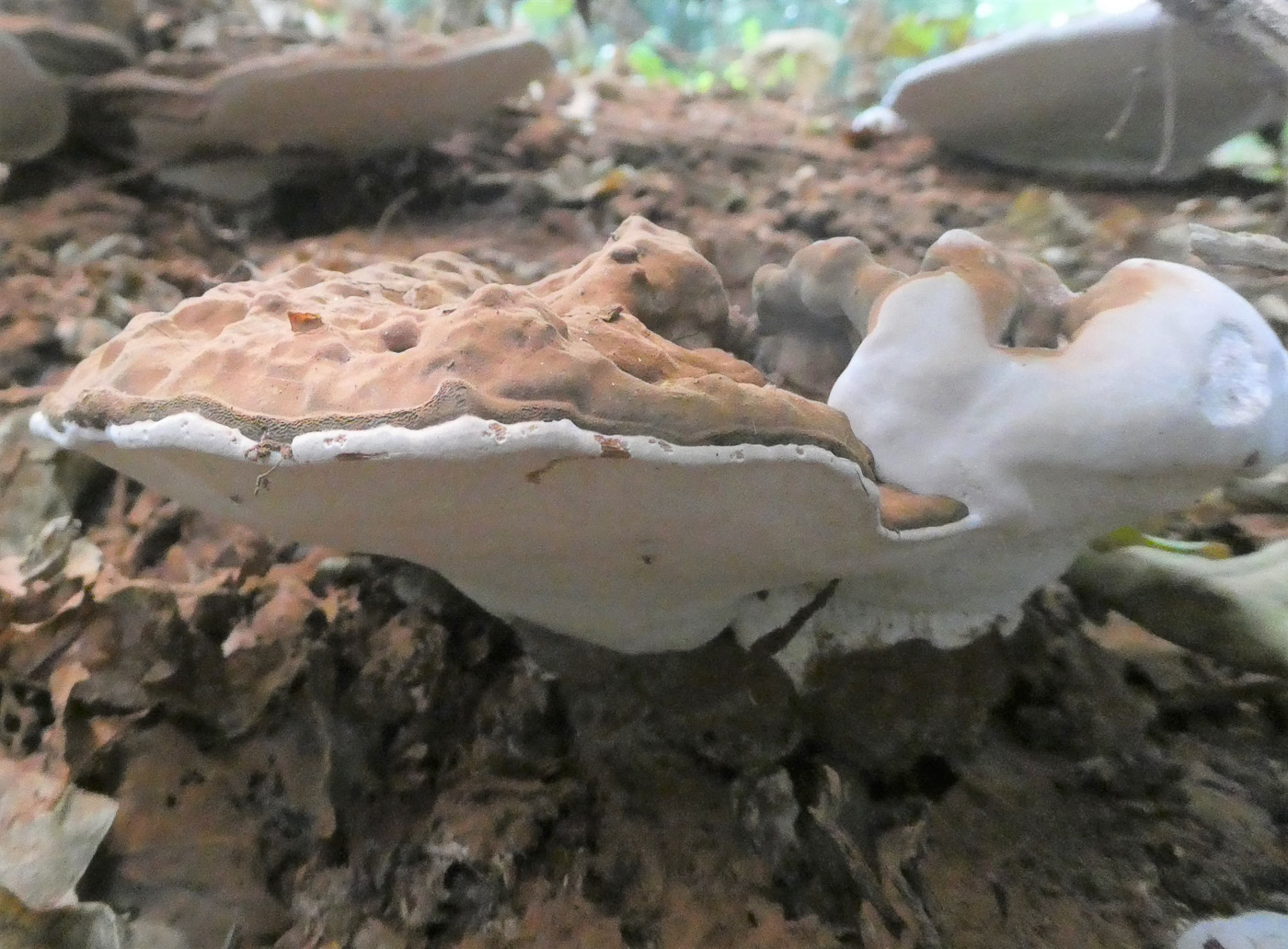 |
August 5th Ganoderma australe (Southern Bracket)
In Austenwood Common, Chalfont St. Peter, Jim Wills noticed this bracket on an old Birch stump, recognised it as Ganoderma, then checked the spores (with his newly acquired microscope!) to determine whether it was G. australe or C. applanatum. The two are extremely similar and very difficult to split in the field, especially if the telltale signs of fly galls (which often occur on the underside of G. applanatum) are absent as they are here.
|
July 31st 2022
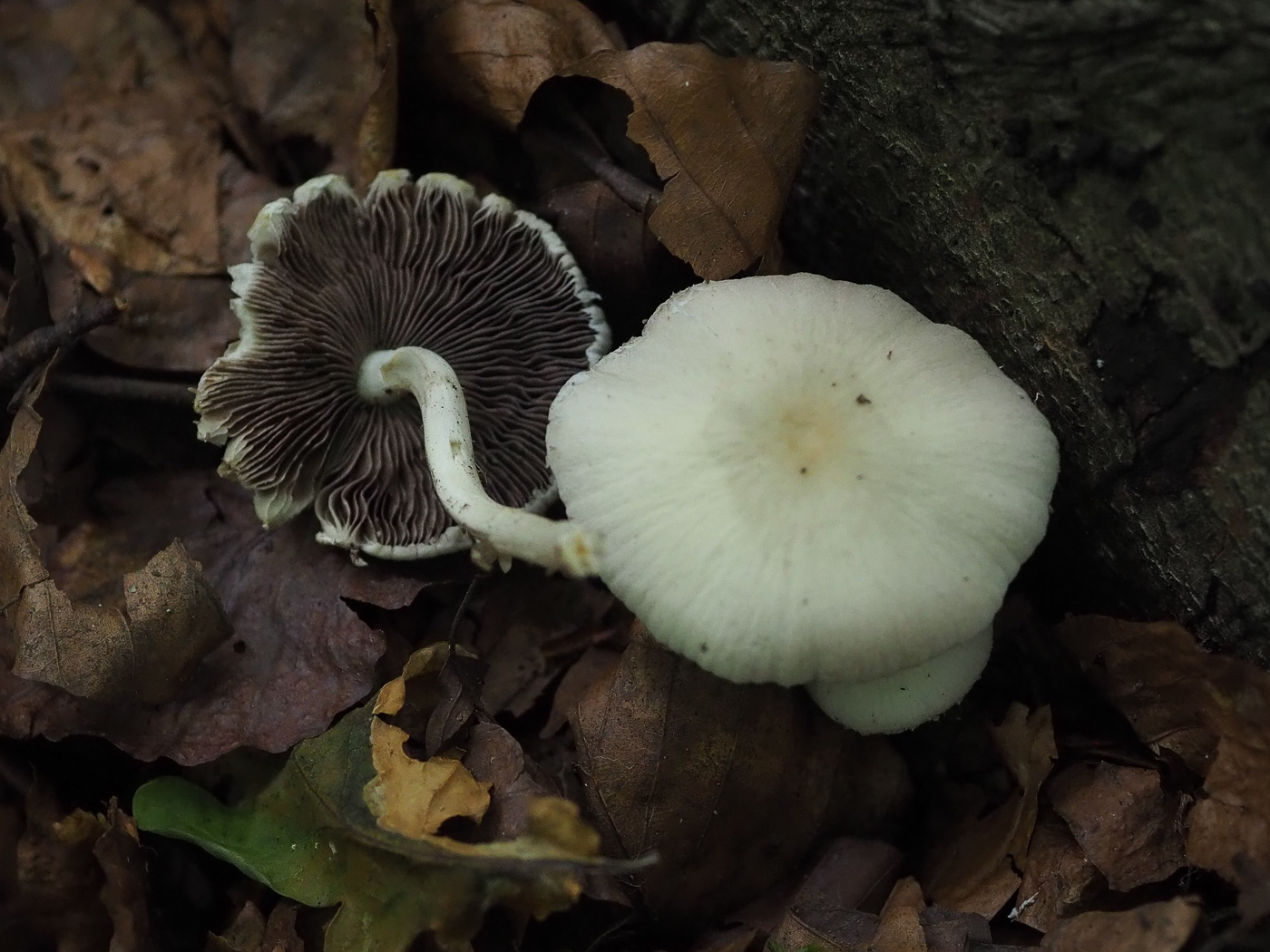 |
July 31st Psathyrella candolleana (Pale Brittlestem) 
In Tinkers Wood in woody litter John Catterson found this pair - quite a common species but it's nice to see anything fruiting at the moment! The gills are fully mature here, so suitably dark, but when younger they can be almost white. There are four previous entries in Finds for comparison: see the Masterlist for details.
|
July 21st 2022
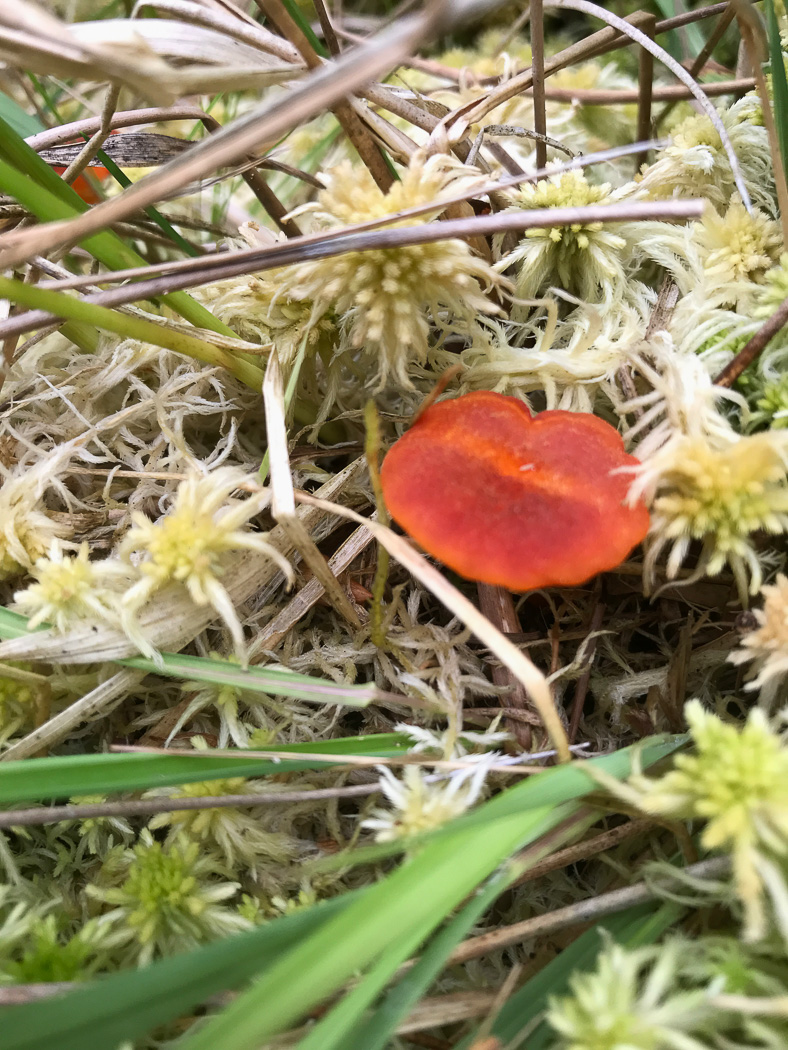
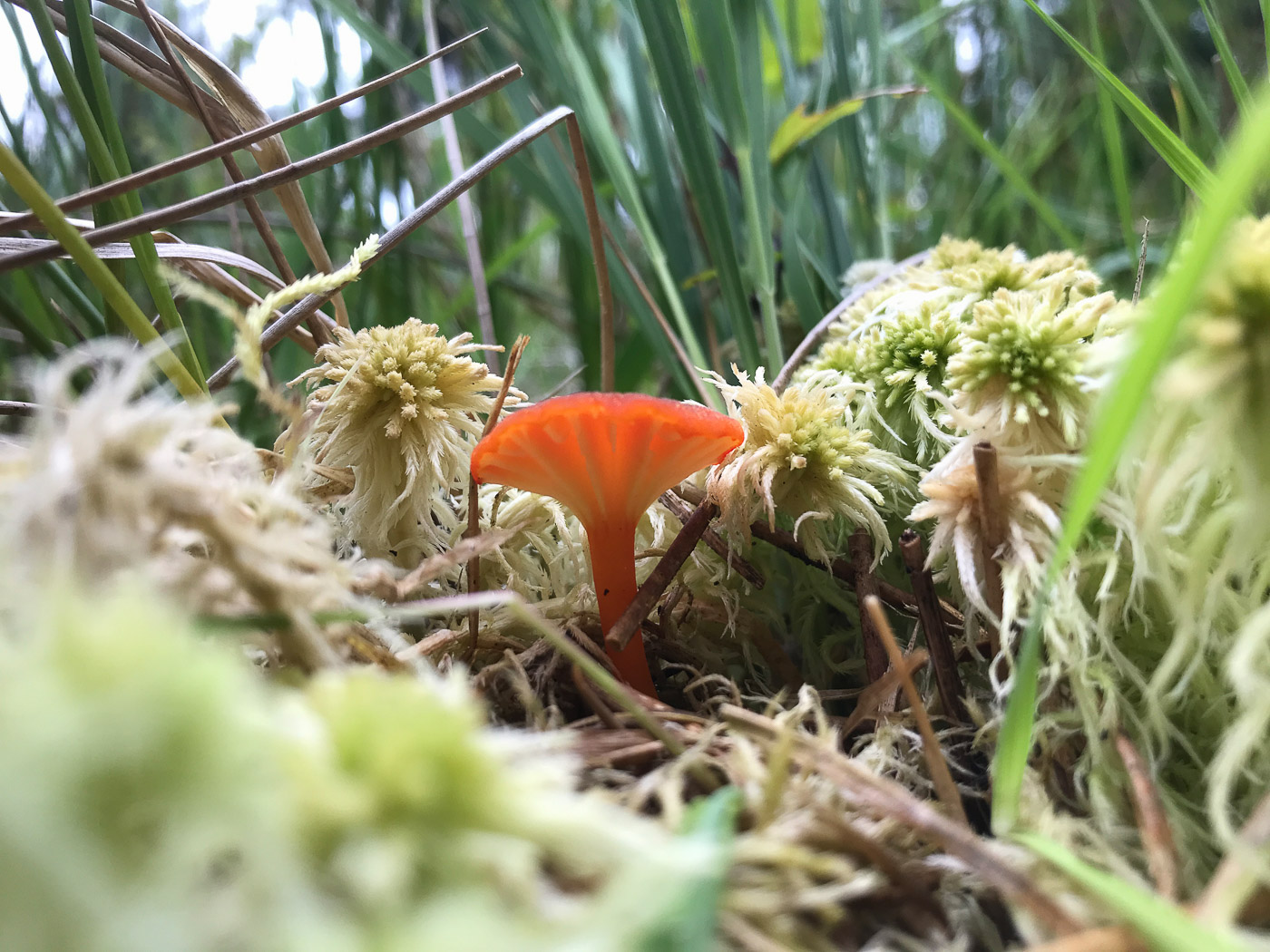
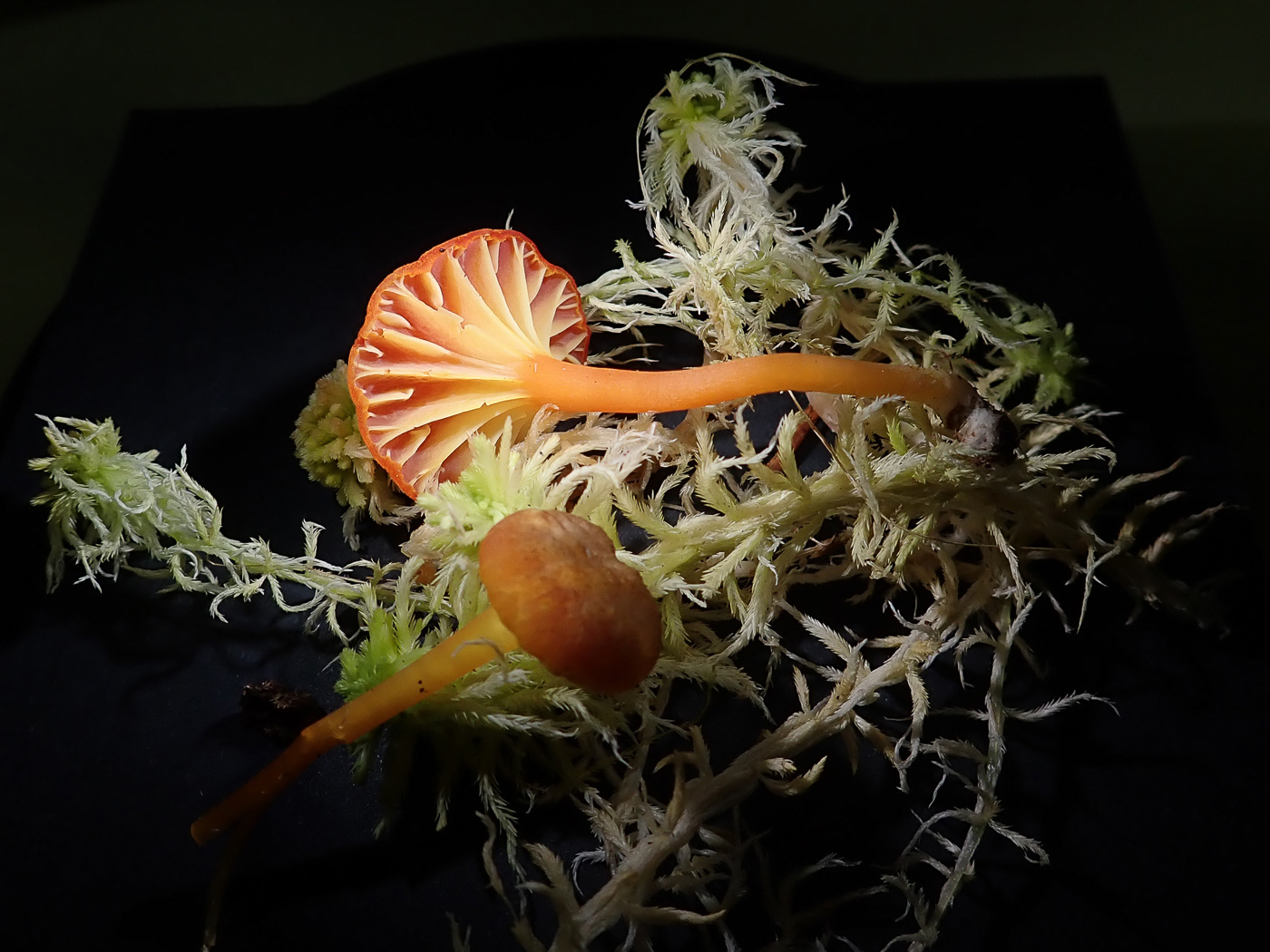
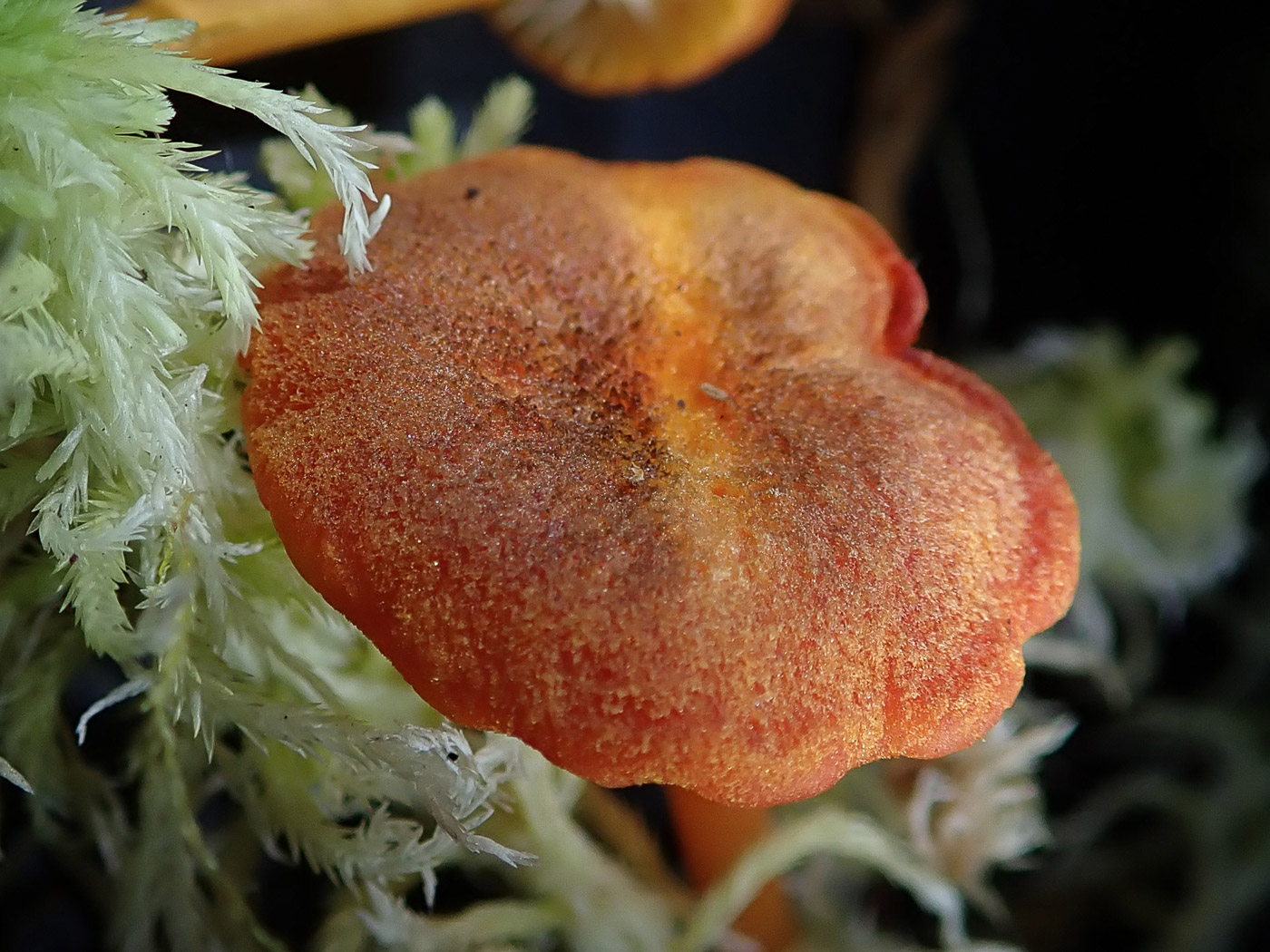 |
July 21st Hygrocybe coccineocrenata (A rare Waxcap with no common name)
In the Mire at Burnham Beeches amongst thick Sphagnum Andy McVeigh noticed this singleton, the photos of which were taken by Helen Read and sent to Penny asking if it might be anything interesting. On Penny's reply to the affirmative they returned and found a second fruitbody, and the collection was then conveyed by Barry and Gill Webb to Penny and Derek at the BFG microscope workshop the next day. The specimens were dead ringers for the image in Boertman's Hygrocybe book, the habitat being spot on too, the species having been seen over 20 years ago by Penny and Derek in Scotland. This is a nice find, new to the county and with extremely few records south of Scotland. Photos 3 and 4 are Derek's, taken once we'd realised its identity and showing the characteristic decurrent gills and scurfy cap surface.
|
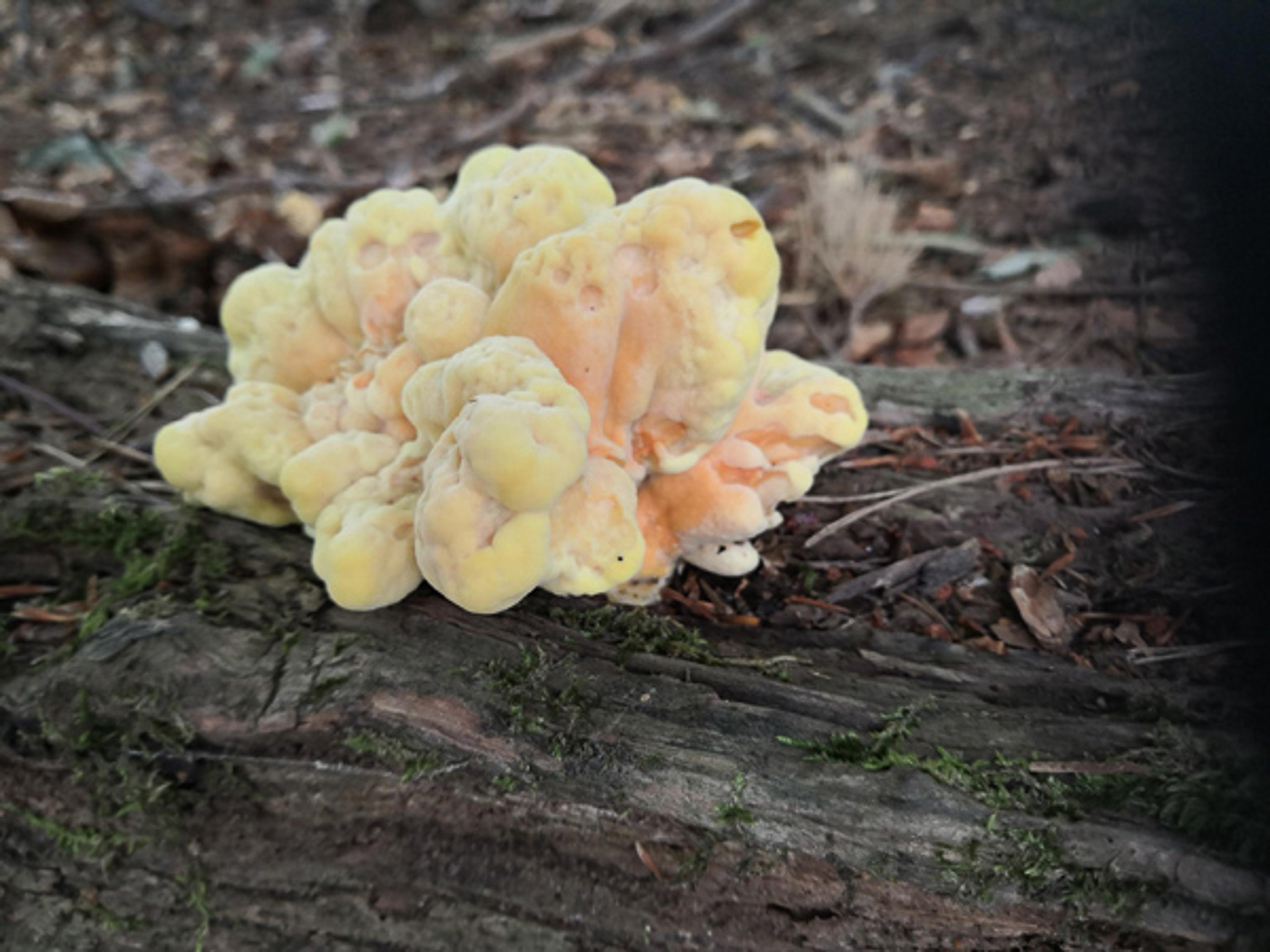 |
July 21st Laetiporus sulphureus (Chicken of the Woods)
In Burnham Beeches Gill Ferguson noticed this pristine immature cluster on a fallen deciduous log. This bracket often fruits in early summer so it's no surprise to be finding it now, in fact of our four previous entries in Finds we have one for May in 2021, also one for June in 2020. (See our new Masterlist for details.)
|
July 16th 2022
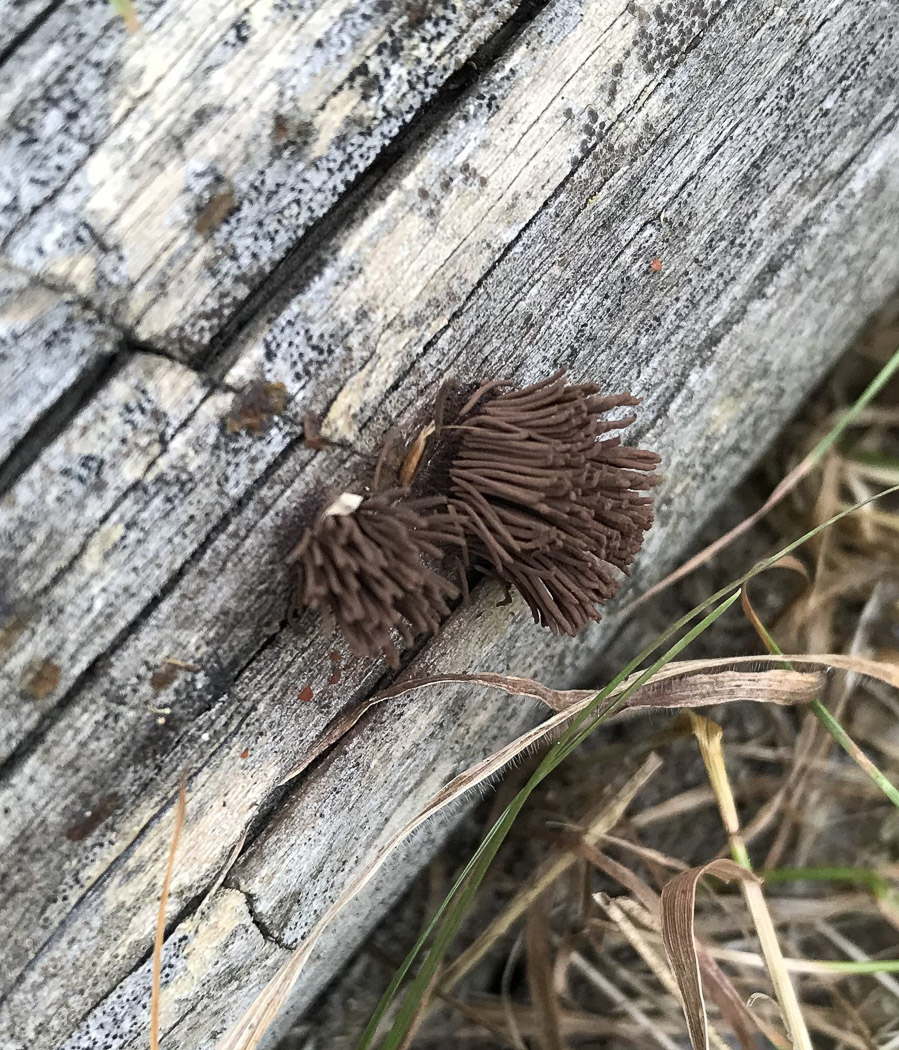
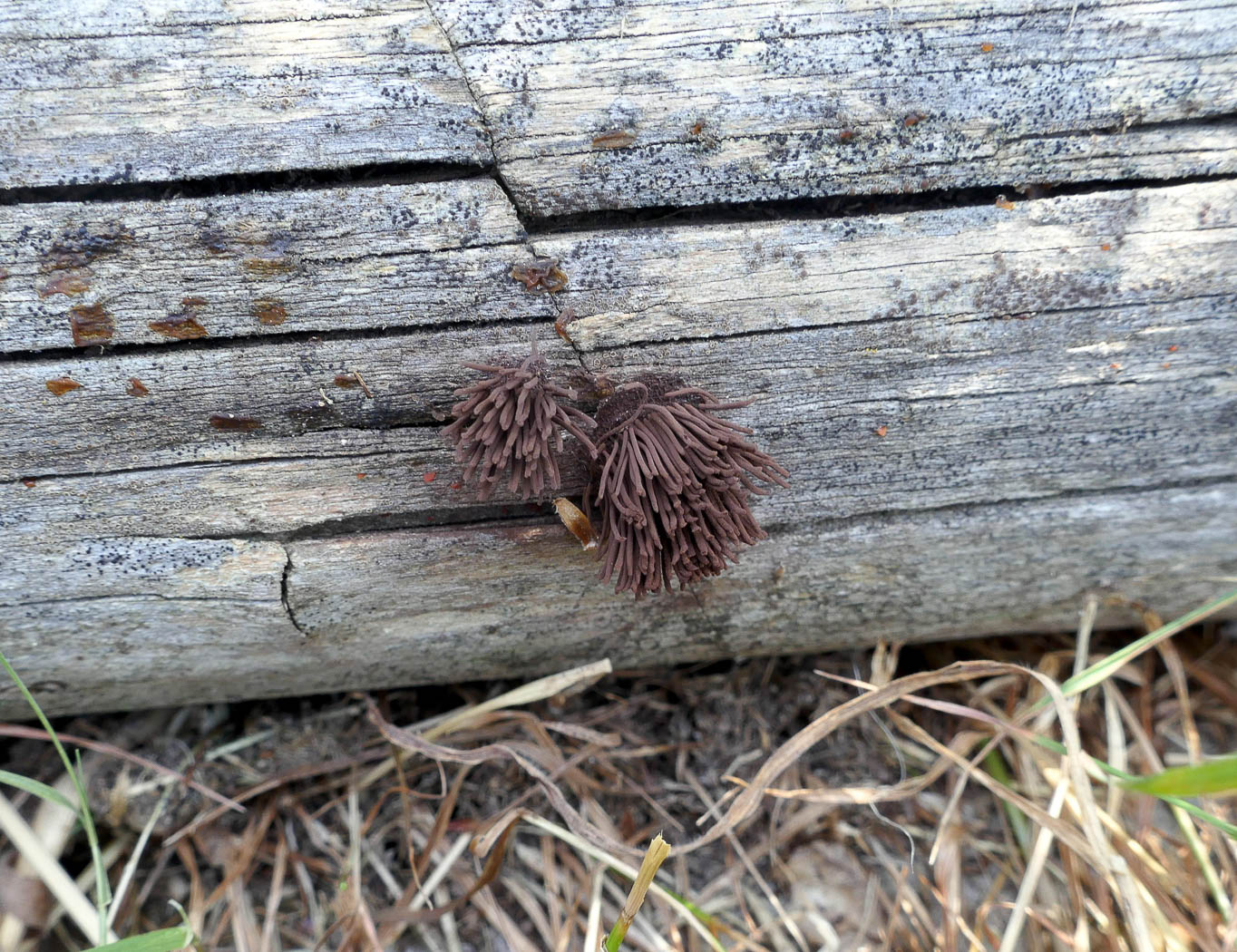 |
July 16th Stemonitis flavogenita ( a slime mould with no common name) 
On an old Oak fence post in a veg patch at Stampwell Farm Jackie Ewan's daughter noticed this tiny tuft of brown clustered stems. She took the photo to show to Jackie who, two days later found the tuft still there, noted the very short stalks in relation to their total height (10mm) and checked the spore size which were suitably small, thus confirming the species. This is not as common as S. fusca which is darker brown, has a stalk about half the total height (up to 20mm) and larger spores. See also in Finds 2021 June 6th.
|
July 15th 2022
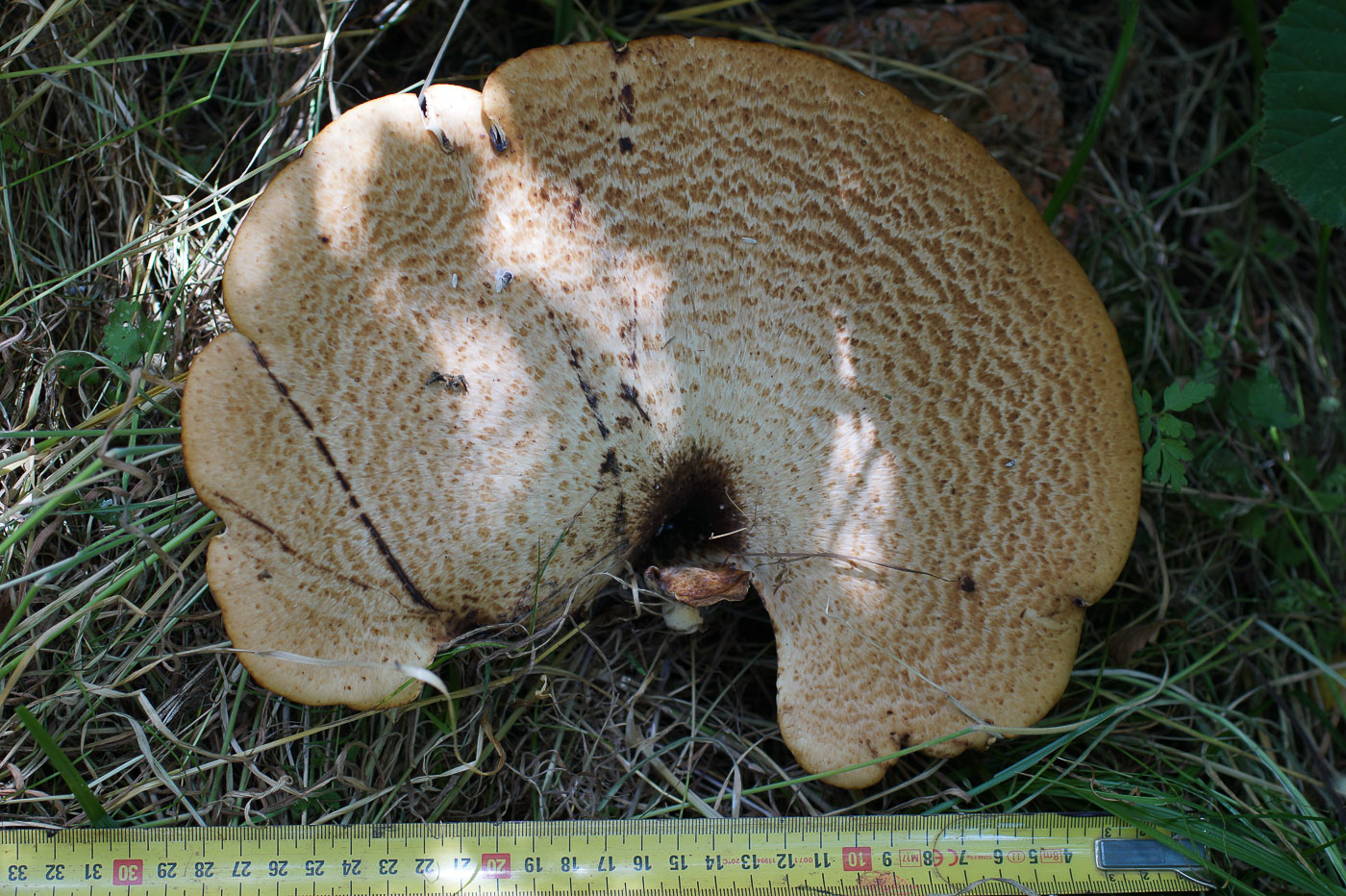
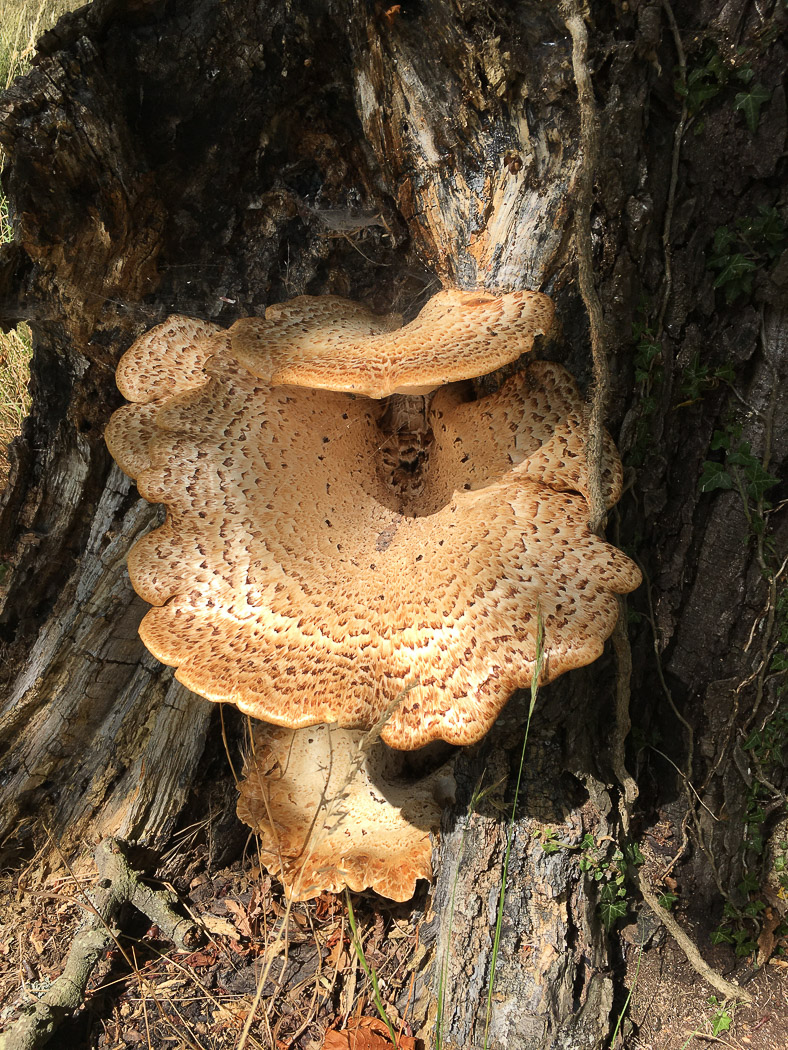 |
July 15th Cerioporus squamosus (Dryad's Saddle)
Adjacent to an old Ash stump in Salden Wood, Bob Simpson found this enormous Polypore which, from the ruler in his photo, looks to be about 25 cms across, so big enough to sit on! Previously known and familiar to many as Polyporus squamosus, here is another new name we need to get used to but at least the common name stays unchanged. Photo 2 was found a week later by Joanna Dodsworth at Wotton Park Estate. We have 4 other photos of this eye-catching but common bracket in Finds, easily found by checking our new Latin Masterlist (under Cerioporus, of course!)
|
July 11th 2022
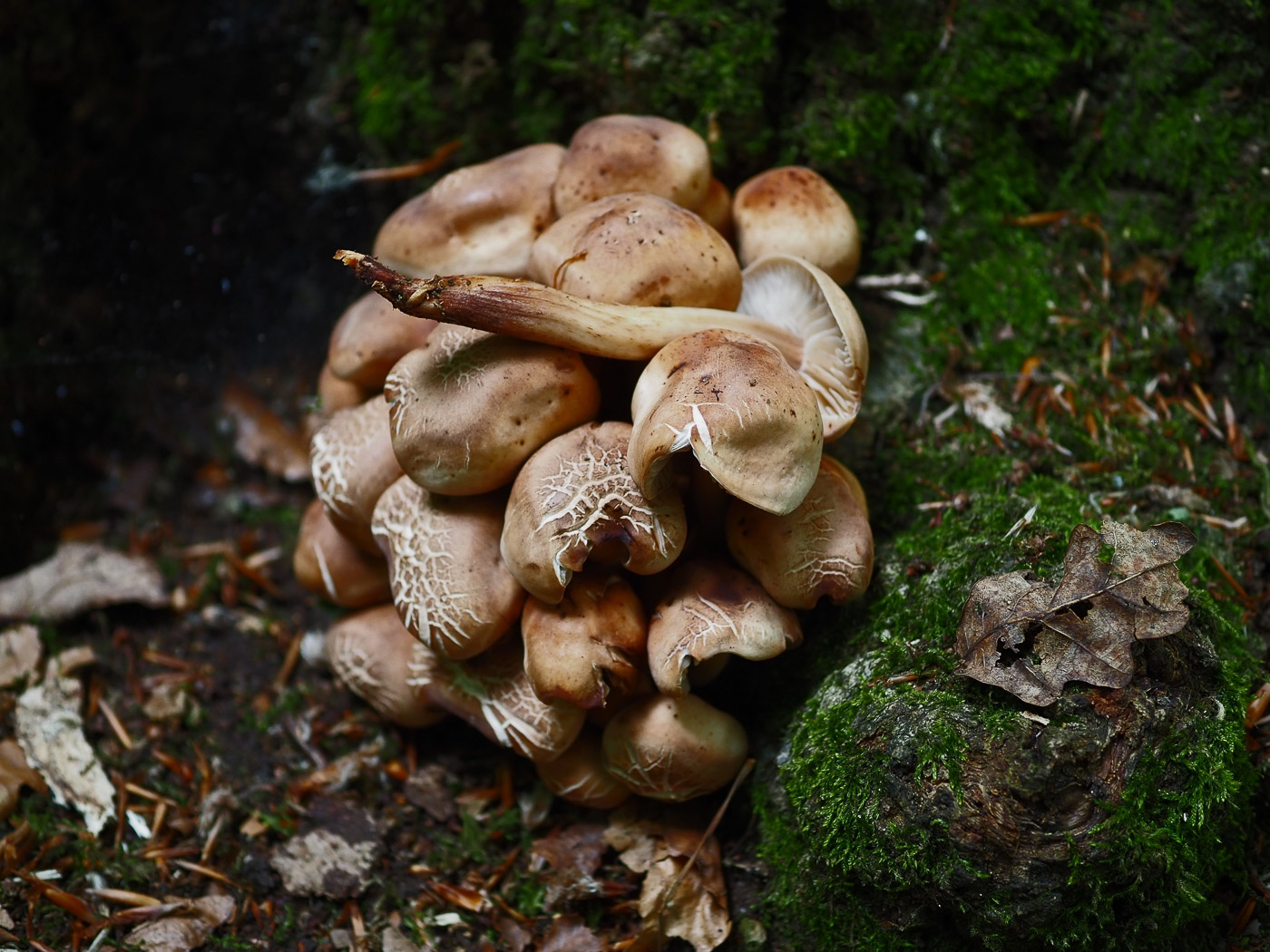 |
July 11th Gymnopus fusipes (Spindle Toughshank)
At the base of a large Oak in Tinkers Wood John and Lesley Catterson noticed this typically tightly clustered clump. The species is not uncommon growing like this near to the base of mature Oak or Beech and often quite early in the season, and John has shown nicely here the white widely spaced gills and tapered rooting stem which fuses with its neighbours. Not so typical is the crazed cap surface caused no doubt by the recent warm dry conditions. See also Finds 2020 Sept 18th and 2021 July 9th.
|
July 7th 2022
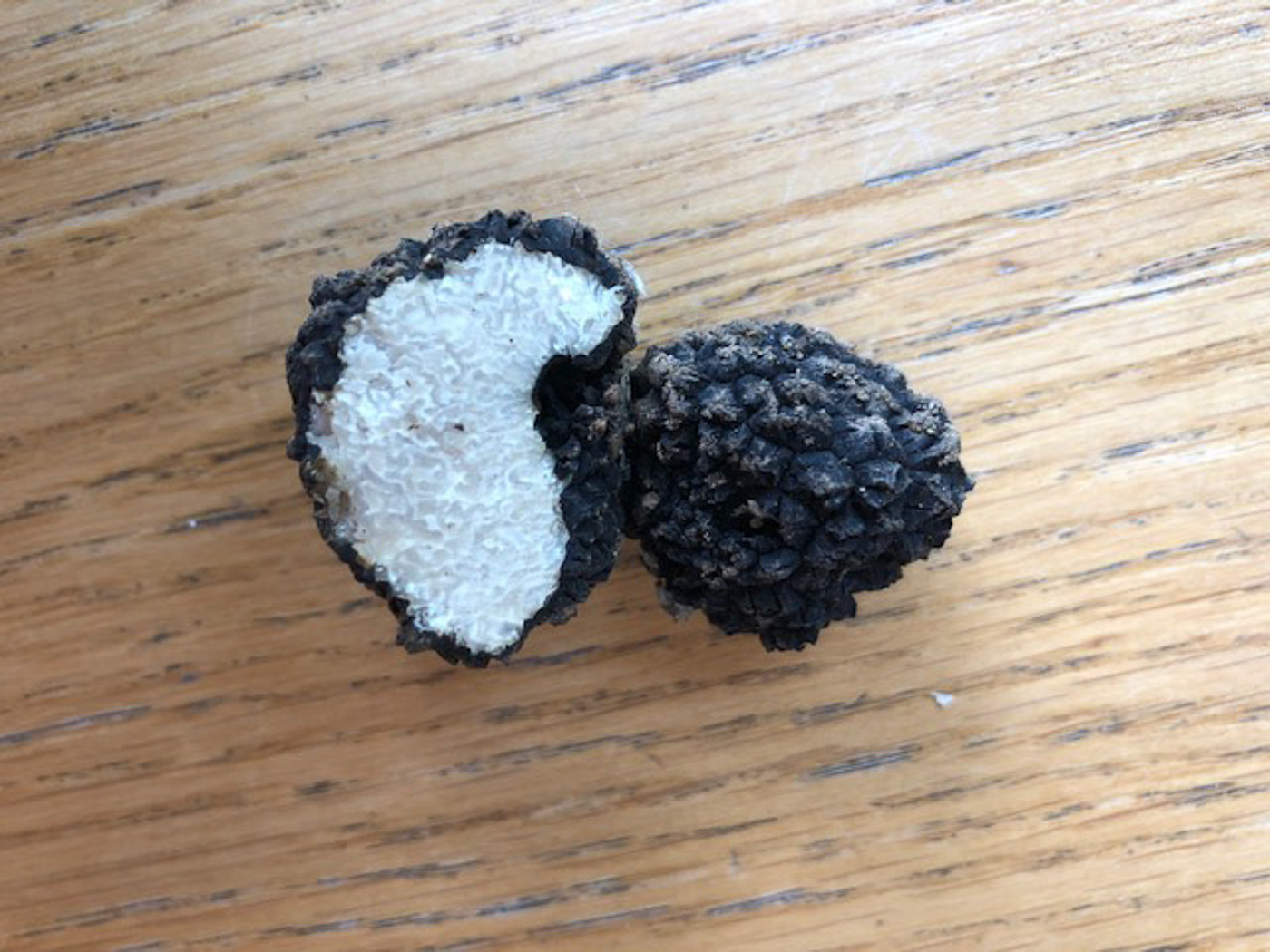 |
July 7th Tuber aestivum (Summer Truffle) 
Following a report of this species from Jordans on June 24th (see Finds for that date), Sally Knight found two specimens in her garden in Long Crendon under shrubs and a nearby Birch. She and Tony were unsure which Truffle it was so checked the microscopy, finding the strange ovoid asci of the species having just a few spiny spores within. A nice find. (See also Finds 2021 Aug 17th.)
|
July 1st 2022
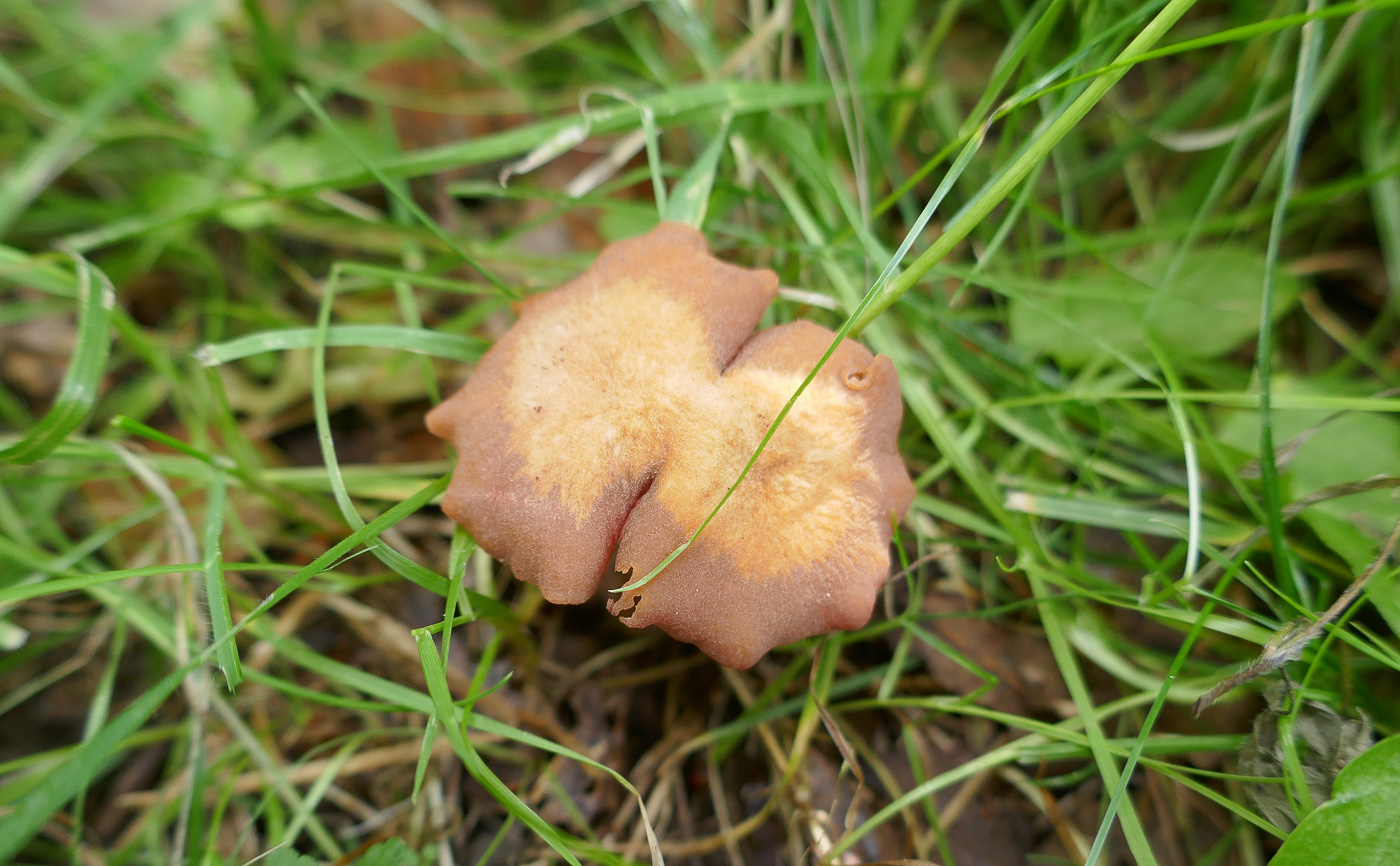
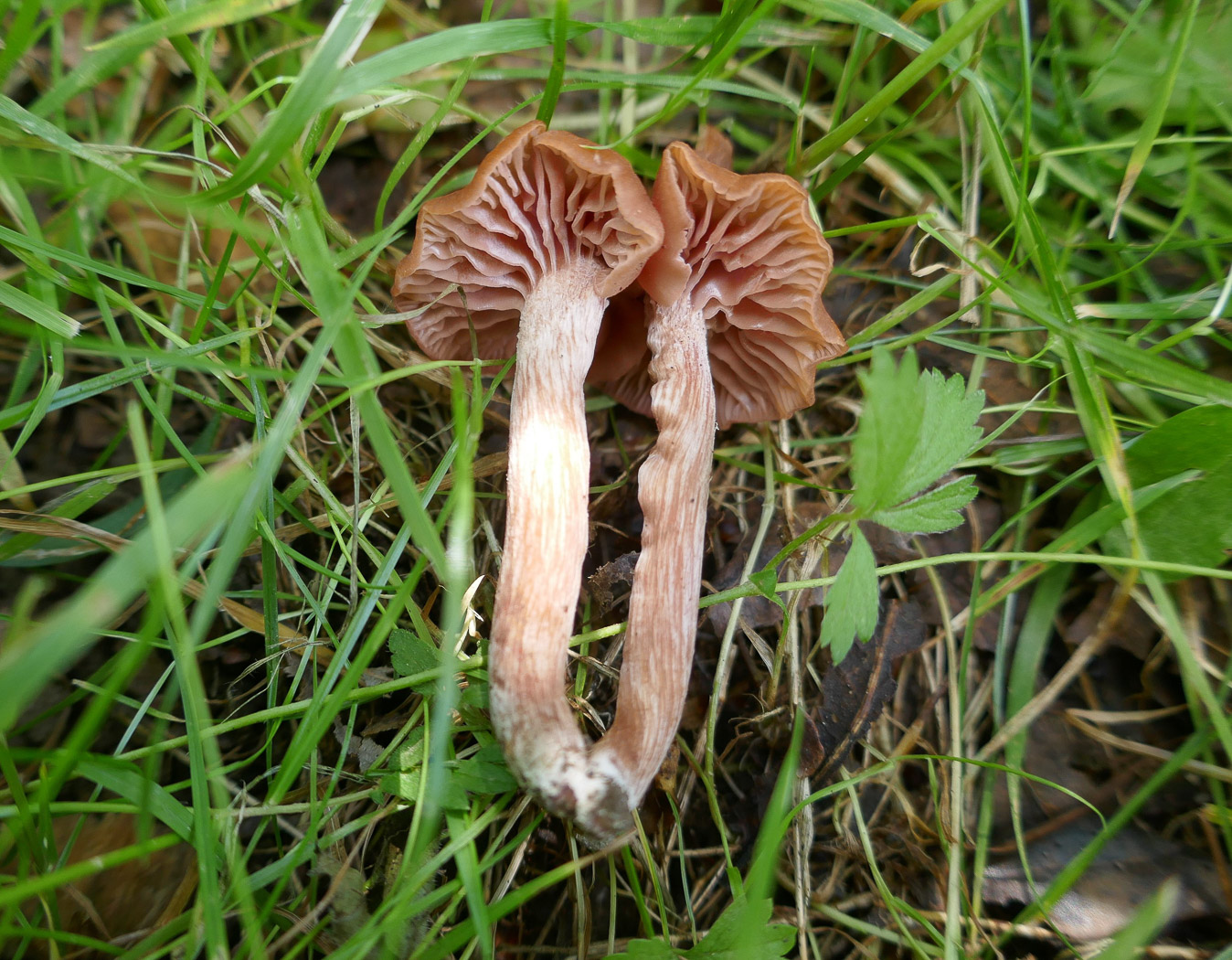 |
July 1st Laccaria laccata (Deceiver)
Jackie Ewan found this common species at Stampwell Farm fruiting early after recent rain, in grassy soil under Oak. Typically for this species the slightly strangely formed cap is already well on the way to fading. Amongst our approx. 750 records we have 4 for May, 1 for June, then today's find. So bearing in mind we've already found Boletes and an Amanita during May and June maybe with sufficient rain we're now about to see an early start to the autumn season. See also Finds 2020 Oct 1st and 2021 Sept 3rd.
|
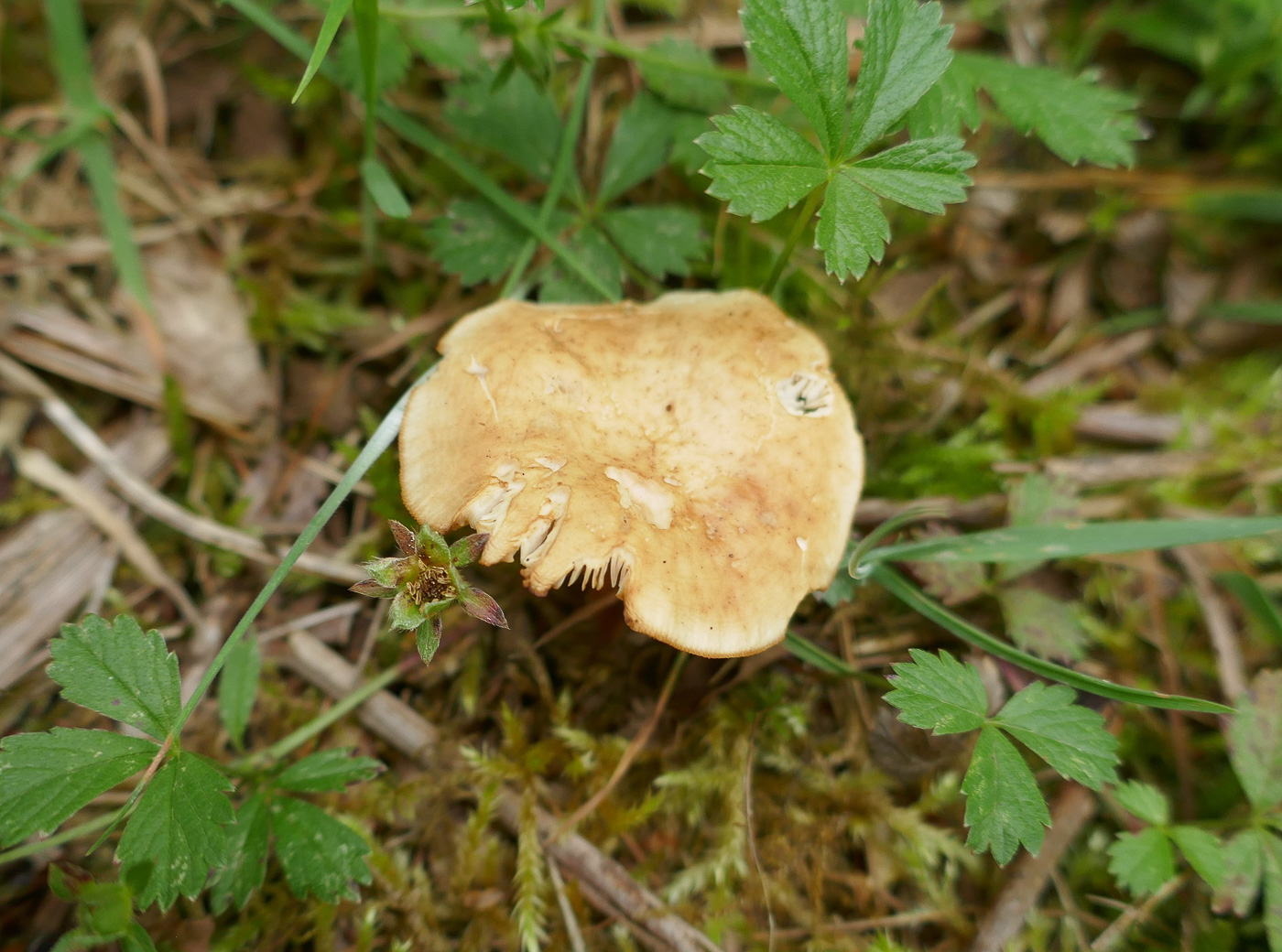
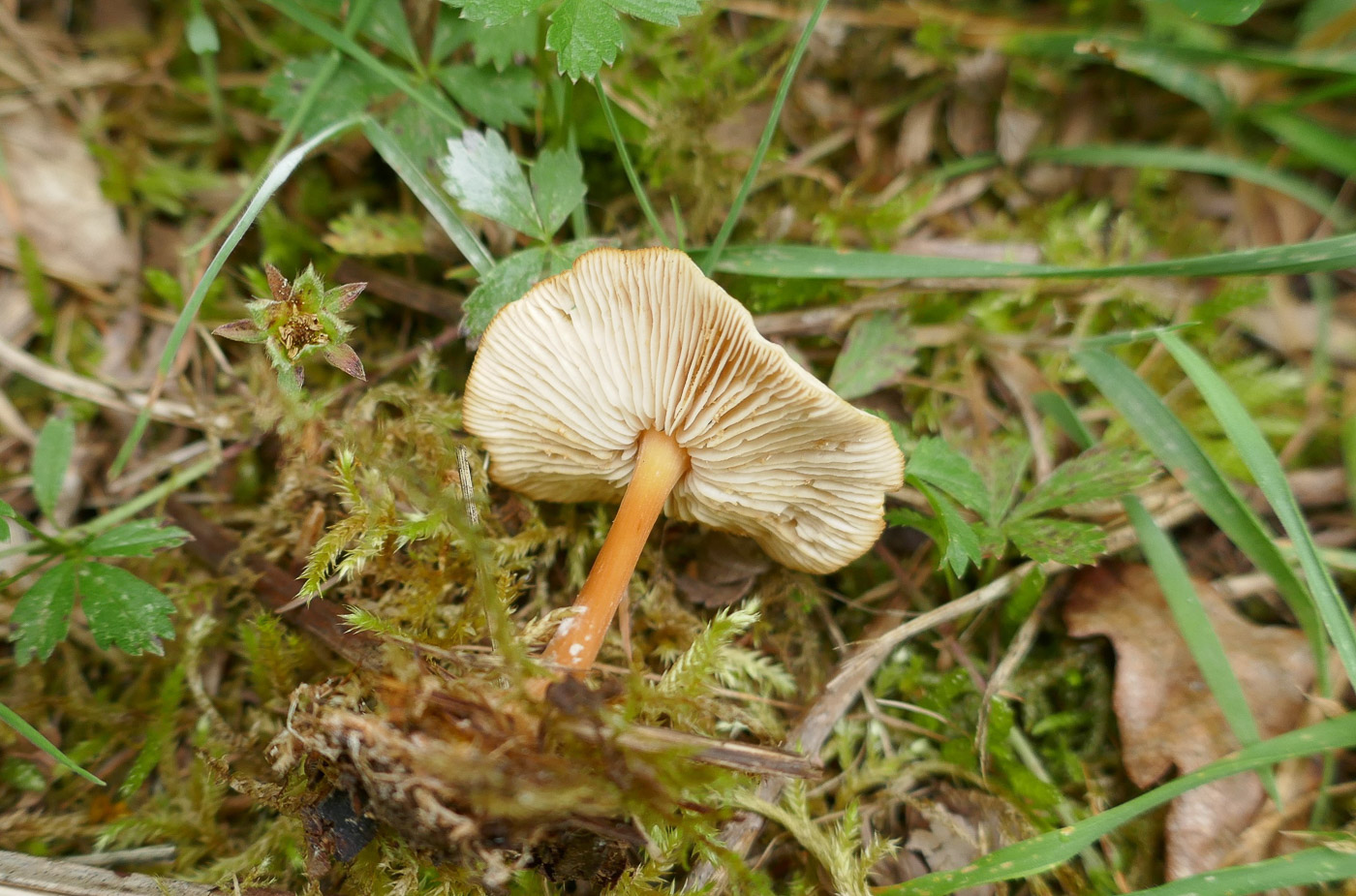 |
July 1st Gymnopus dryophilus (Russet Toughshank)
This was one of two common species Jackie Ewan found at Stampwell Farm fruiting early after recent rain, in grassy soil under Oak. It is often one of the first mushrooms to appear in early autumn and a sign that things are moving. Looking through our 550 odd records we have one for May, one for June, then today's find. See also Finds 2020 Sept 24th, and 2021 Aug 13th & Oct 5th.
|
![]() have been fully examined in order to make a determination. No guarantee can therefore be given on any identifications which don't show this symbol though all photos are checked and selected by Penny to the best of her ability. Basic accompanying notes are also Penny's. When a species has already been covered on a previous Members' Finds page a reference to that entry will be given rather than duplicating the identification tips.
have been fully examined in order to make a determination. No guarantee can therefore be given on any identifications which don't show this symbol though all photos are checked and selected by Penny to the best of her ability. Basic accompanying notes are also Penny's. When a species has already been covered on a previous Members' Finds page a reference to that entry will be given rather than duplicating the identification tips.![]() Only entries marked with this symbol have been microscopically examined. There is no guarantee on identifications made of entries lacking this symbol though all photos are checked and selected by Penny to the best of her ability. Basic accompanying notes are also Penny's.
Only entries marked with this symbol have been microscopically examined. There is no guarantee on identifications made of entries lacking this symbol though all photos are checked and selected by Penny to the best of her ability. Basic accompanying notes are also Penny's. ![]() Entries marked with this symbol have been confirmed or identified using DNA sequencing.
Entries marked with this symbol have been confirmed or identified using DNA sequencing. 














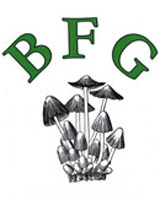


















































































































































































































































































 chrysostigma 1b.jpg)
































































































































































































































































































































